The Double Blue International
Wesley College Colombo - Sri Lanka
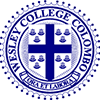
Our Reminiscences
From the 125th Anniversary souvenir
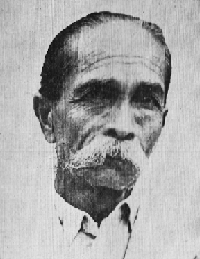 |
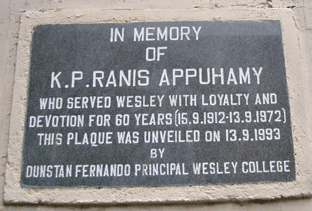 |
When the Double Blue flapped in the breeze, and the College Bell pealed on the 2nd of March 1974, in celebration of the Centenary, there was one whom we missed and that was K.P Ranis Appuhamy, who died on September 13th 1972 at the grand age of 88, and just two days less for sixty years at Wesley. Of more than average height for a Sinhalese, his dignified mien was emphasised by his ramrod straight carriage, stern visage, magnificent bristling walrus moustache, framing aristocratic high-boned cheeks.
A neat tight knot held his greying hair in position. Ranis belonged to that rare breed of men almost extinct today-who, without preaching, exemplified in their life and work the very highest of moral and ethical standards. His character became clear in the very first days of his service at Wesley. On September 15th 1912. He was engaged by the Rev. Henry Highfield as a "School servant" at a monthly salary of Rs. 8/-. On his first pay- day Ranis went up to Rev. Highfield and said that there had been an error in calculating his pay. "Error?" demanded Highfield. "You were taken on for Rs. 8/- a month and you have received Rs. 8/- not one cent less. Where is the error?" Ranis pointed out that, since he had worked for only half the month he was actually entitled to only half a month's pay Rs. 4/- instead of Rs. 8/-. Such a man was Ranis.
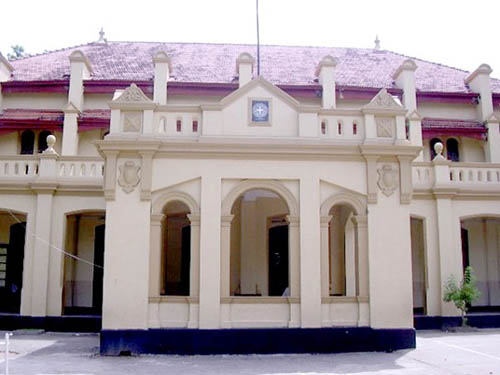
In fact so devoted to Wesley was he that in all his nearly 60 years of service, he was absent from his duties for only 60 days an average of one day's leave a year for well over half a century! That included the time he took off to get married! In 1962 Ranis celebrated his Golden Jubilee at Wesley. Or rather Wesley celebrated the event for, despite his proud and aristocratic bearing. Ranis was the most modest of men. Wesley really outdid itself on that occasion. Ranis was feted as no "domestic servant" of a major educational institution has been before or since. A prominent article in the Ceylon Observer of October 15th 1962 recorded the event in banner headlines "RANIS OF WESLEY GOES ON." The "Observer' story noted that when Ranis Joined Wesley, among others on the teaching staff of the School were, O.E.G., S. J. V. Chelvanayakam. F. J. Labrooy and Lionel Fonseka. Among the thousands of small boys who scurried along the corridors of Wesley every morning in a desperate effort to beat the inexorable peal of Rani's bell.
Were the future physician, Dr. J. R. Wilson the future theologian, the Rev. Dr. D. T. Niles, M. H. Mohamed, a future Mayor of Colombo, and Sam Silva, Chairman Air Ceylon and Chairman of the Petroleum Corporation. The article added ; "Ranis was Guest of Honour at a garden party given by the Staff Guild of Wesley and friends and Old Boys. School closed half a day for the occasion, and Ranis was given a purse." Old Boys bringing their sons for admission to Wesley treated Ranis with the deference due more to a former teacher than to a school servant-with good reason.
There was always the fear that, if not handled with care, the old man with the phenomenal memory would spill the beans to the son about some embarrassing prank that the father would sooner forget! For what father could dismiss his son's pleas for more pocket money or criticise his table manners when reminded by Ranis of the day he ate 75 hoppers on a bet! The here of this particular gastronomic feat avouched for by Ranis-was an elastic stomach-ache, boy called Francis Jayawardena; and the incident took place somewhere during the time of the First World War. Jayawardena went on to become one of Wesley's most outstanding sportsmen in the pre 1920 years. Many years ago, when I was a little boy in the College Hostel, about the year 1949 or 50 Ranis took me to the rear door of the boarders' dining hall and pointed to something carved on it. Puzzled, I bent down and read the crudely carved inscription "K. P. R. - 1912". Gordon Tytler
Memories of Ranis Appuhamy by Dr Nihal D Amerasekera
I saw Ranis on my first day at school in January 1950 and also on my last day at Wesley in April 1962. Ranis was seen in his trademark spotless sarong worn tightly with a belt at his waist. His ubiquitous presence was a part of every Wesleyite's life until he retired from his long service. He was always a man of few words. He ‘spoke’ to us with the school bell which he rang with a characteristic rhythm which I will never forget despite the passage of years. The school bell was Ranis’ domain which he guarded with his life. Any students messing with the bell experienced his wrath. Amazingly he rang the bell sharp on time never delaying and never forgetting in all the years I was at Wesley. The bell rang at 8.15am and then every 40 minutes to change the period. The bell also broadcast the two breaks we enjoyed.
His son too attended Wesley and was a few years my senior.
Marshall and Ranis were the peons of our days. The word peon is derived from Spanish. The English used the term colloquially to mean a person with little authority, often assigned unskilled or drudgerous tasks; an underling. But this was never the case with Ranis or Marshall. They weilded some power over the students and commanded much respect from the staff. Ranis and Marshall worked tirelessly for the school and many of their chores overlapped except the important function of tugging the rope to ring the school bell. For that there was a rhythm , a rate and a style unique to Ranis. When others rang it was never the same and he never gave those secrets away. When the bell rang it spoke to us and all Wesleyites received the message. It was indeed a remarkable and unique experience. This unlikely pair trudging daily across the school from Block to Block along the long corridors must surely be one of the enduring images of of our schooldays.
Being a veteran worker at Wesley since the Highfield era Ranis was enormously respected by teachers and students alike. He didn’t tolerate any nonsense from the boys but he treated us all with kindness. I vaguely recall he chewed beetle surreptitiously away from the glare of the teachers. Wesley and all Wesleyites owe a great debt of gratitude to Ranis who has given outstanding service to the school. He was so much a part of Wesley for over 60 years. In recognition of his exceptional service a plaque was unveiled in his memory. His dedication to duty is a beacon to us all. Ranis passed away on September 13th 1972 at the grand age of 88. We remember him with great affection and his place in the history of Wesley College is assured.
Links to further reading
Sixty Eight Years of Dedication to Wesley
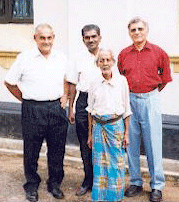 |
 |
 Marshall Perera is known to several generations of Wesleyites and like his colleague Ranis Appuhamy remained a school Icon. He joined Wesley in the 1930's soon after the Highfield era and the exact date of his arrival seems to be lost in the mist of time.
Marshall Perera is known to several generations of Wesleyites and like his colleague Ranis Appuhamy remained a school Icon. He joined Wesley in the 1930's soon after the Highfield era and the exact date of his arrival seems to be lost in the mist of time.
At Wesley, he was the Man Friday, the character from Daniel Defoe's Robinson Crusoe. He was the personal assistant to the Bursar who was competent and fiercely loyal to the establishment. He worked the Gestetner Cyclostyle appliance and generated the paperwork that oiled the machine that ran the school. He was a close associate of Mr Eric De Silva, the Bursar, who was the backbone of the school for over 30 years. In addition to all his duties Marshall made the tea for the office staff to satisfy even the most discerning palate. He looked after school property as if it were his own.
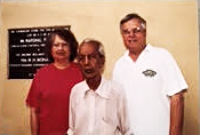 Marshall served 12 Principals 10 of whom were British Missionaries, a record that cannot be surpassed or even equalled. One can only guess at the totality of the events Marshall witnessed in his years at the school - the growing pains of a fledgling school, the challenges of World War II and independence from British rule. Three of the Principals he served, Lou Adhihetty NAB Fernando and MAP Fernando, were students during his time. He has seen boys join the kindergarten as kids and leave as adults in the 6th Form.
Marshall served 12 Principals 10 of whom were British Missionaries, a record that cannot be surpassed or even equalled. One can only guess at the totality of the events Marshall witnessed in his years at the school - the growing pains of a fledgling school, the challenges of World War II and independence from British rule. Three of the Principals he served, Lou Adhihetty NAB Fernando and MAP Fernando, were students during his time. He has seen boys join the kindergarten as kids and leave as adults in the 6th Form.
Some students have proceeded to enter the professions and others went on to become responsible politicians. Some have even managed to be incarcerated in the institution in front of the school whilst others have joined that same organisation as officials to maintain law and order. During his years many Principals, Vice Principals and Headmasters have come and gone and also witnessed numerous teachers who have graced the school and retired. Sir OE Goonetilleke, the first Ceylonese Governor General and the Hon MH Mohammed the respected politician, both of whom were distinguished old boys respected Marshall for his loyalty and long service.
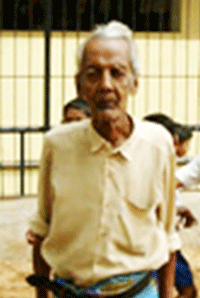 When I was in the boarding I saw much of what happened after school hours. In the evenings and at weekends the school went to sleep. Everyday after the final bell Marshall went to every classroom to shut the windows to prevent the rain from damaging the furniture. The so called "minor staff" remained in the premises and were available at all hours. At weekends I have often seen Marshall seated in a long wooden bench by the entrance to the school office engrossed in his own world and deep in thought.
When I was in the boarding I saw much of what happened after school hours. In the evenings and at weekends the school went to sleep. Everyday after the final bell Marshall went to every classroom to shut the windows to prevent the rain from damaging the furniture. The so called "minor staff" remained in the premises and were available at all hours. At weekends I have often seen Marshall seated in a long wooden bench by the entrance to the school office engrossed in his own world and deep in thought.
I had often wondered if he ever went home. The school was his second home. Although he knew the tittle tattle and the school gossip he rarely entered into prolonged conversations with students. He remained a man of few words. There was nothing that his large beady eyes didn't see. No one was allowed to damage school furniture or disfigure the walls . He sometimes threatened to report to the Principal but never did. There were times he put on a stern exterior but always remained a kind man. To him devotion to duty was paramount.
During the week he was busy ferrying documents from the office to the staff room and to the various teachers in their classrooms. He wore his characteristic toothy smile which never changed despite the passage of years. His light grey shirt and striped three quarter sarong was held together by an inelegant knot and a shabby black belt that has seen better days. This was his trade mark. He must have walked miles along those long corridors of the school, doing his duty. Marshall warned us if the Principal was about to appear to avoid any face to face contact. This was a sensible tactic in those days.
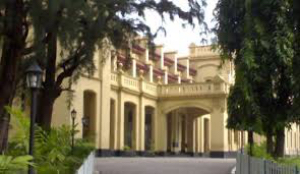 Marshall and Ranis were the peons of our days. The word peon is derived from Spanish. The English used the term colloquially to mean a person with little authority, often assigned unskilled or drudgerous tasks; an underling. But this was never the case with Ranis or Marshall. They weilded some power over the students and commanded much respect from the staff. Ranis and Marshall worked tirelessly for the school and many of their chores overlapped except the important function of tugging the rope to ring the school bell. For that there was a rhythm , a rate and a style unique to Ranis. When others rang it was never the same and he never gave those secrets away. When the bell rang it spoke to us and all Wesleyites received the message. It was indeed a remarkable and unique experience. This unlikely pair trudging daily across the school from Block to Block along the long corridors must surely be one of the enduring images of of our schooldays.
Marshall and Ranis were the peons of our days. The word peon is derived from Spanish. The English used the term colloquially to mean a person with little authority, often assigned unskilled or drudgerous tasks; an underling. But this was never the case with Ranis or Marshall. They weilded some power over the students and commanded much respect from the staff. Ranis and Marshall worked tirelessly for the school and many of their chores overlapped except the important function of tugging the rope to ring the school bell. For that there was a rhythm , a rate and a style unique to Ranis. When others rang it was never the same and he never gave those secrets away. When the bell rang it spoke to us and all Wesleyites received the message. It was indeed a remarkable and unique experience. This unlikely pair trudging daily across the school from Block to Block along the long corridors must surely be one of the enduring images of of our schooldays.
He conducted his many duties with dignity and honesty. Marshall is the last of a long line of dedicated workers who have provided such a fine service to the school over many decades. Ranis the Great, Chemistry Rodrigo, Physics Silva, Biology Harris and Marshall formed a quintet of dedication to the school. Their lives were closely interwoven with the fabric of the school. Their combined years of service would amount to an incredible 200 years. They were an integral part of the school community and will all be remembered for their dedication by the many generations of school boys who have passed through the gates of Wesley College.
Even in the twilight of his life Marshall never failed to accompany old boys on conducted tours of the school. He had a remarkable memory. His encyclopaedic knowledge of the school, staff and students past and present will be sorely missed by the returning hordes of past students. When I returned to Wesley after nearly 15 years the gates were padlocked and the guard refused me in and it was after Marshall's intervention I was allowed into the premises. He will be hugely respected and mostly remembered for his unfailing loyalty to the school.
His love for the school stood out. Even during the dark days of the 30 year decline and turmoil at Wesley College he remained largely optimistic of better times. When I asked him "will Wesley ever return to those Golden Years of the 1950's" he looked away. Although this period of uncertainty and hardship caused him much worry and despair, as an employee Marshall preferred to be an observer than a critic.
His long years of exemplary service came to a close when Marshall retired in 2002 after 68 years. At Wesley his void could never be filled. He went to live in his house in Kekirawa, built for him through the generosity of Old Boys. Most deservedly, he was sustained and well-looked after by the school and the past students.
He sadly passed away in September 2006. Marshall's years of dedication and service will be long remembered by Wesley College and the old boys. His shadow must still remain at school and his voice must echo in the ether around Karlsruhe Hill.
May he attain the Ultimate Bliss of Nirvana
Links to further reading
Transcribed from the 125th Anniversary souvenir
It was an idyllic time in the history of our island. The Second World War had ended and Independence from British rule has just begun. Tolerance, compassion and kindness were present in abundance. Terrorism, television, AIDS and computers were not in our vocabulary. As for the future we took it all for granted.
I remember as if it were yesterday walking up the hill between the tall Casuarina trees into the main building of Wesley College. The year was 1950 and I was 8 years old. My uncle, Neville Weerasekera , who was a sixth former showed me the classroom which was to be the centre of my universe for a year. The bespectacled M.T.Rajapaksa introduced me to the school rules and the rest of the " scallywags" of Std-2. There I met my friend Daya Perera and many others who were to play a major role in my school life. Daya was an excellent host when I Stayed with him in Los Angeles, where he is an Anaestherist. MT Rajapaksa subsequently left to join the Teachers training school Maharagama. I met him many years later when I was a doctor at Kurunegala and his nephew was admitted to my ward.
CJ Oorloff was the Principal and Kenneth de Lanerolle, the Vice-Principal. The Headmaster JLF De Mel was a kind and pious man. In the early 1970's he was admitted to my ward at the General Hospital, Colombo with a heart attack. Even when he had only hours to live JLF recognised me and asked, "aren't you an old Wesleyite". Life seemed an endless game of cricket before and after school and in the intervals. The matches were held in the "small park" a mainly gravel field with sparse patches of grass. It is now a large housing complex behind the school adjacent to Karlsruhe gardens. Years seem to pass quickly and schoolwork was a mere nuisance and got in the way of the endless fun and laughter. Mr. Wilfred Wickremasinghe (padlock) was in charge of Std 4 and a fierce disciplinarian. I still remember the many times he had pinched my tummy black and blue for failing to remember the homework. Being an eligible bachelor he was courting a pretty music teacher. He never failed to escort us to the music lessons. Later the school choir sang at his wedding at the Maradana Methodist Church. I was saddened to hear he died in the 1980's.
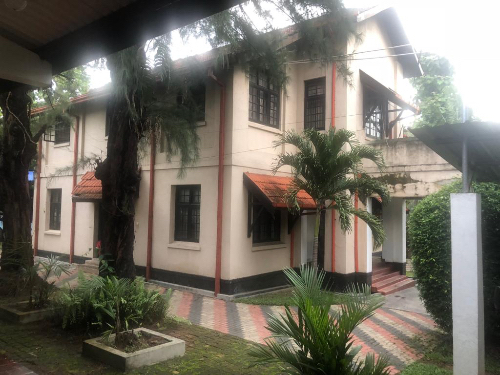
Meanwhile in 1952 my father decided to send me to the school boarding. It was like a prison in those days confined to the College boundary. Our lives were orderly and regimented by the bell.The six years in the hostel were good and bad in parts. Ivor De Silva was the Senior Hostel master. He is now leading a happy retired life in the USA. The next was LA Fernando, a charismatic figure full of life. I have never:seen him at a loss for words. He was the cheer leader at the inter school cricket matches and sang the limericks and baila with fire and gusto. I owe him a great debt of gratitude for instilling in me the will to succeed in life. After being the Vice-Principal of the school his life and career sadly slipped away.
Then came Maxwell De Alwis who introduced an active choir to the school and was responsible for the Operetta "Alad -in-and -Out".The show was a sellout and a great success at school. It was staged at Kingswood College, Kandy to a large appreciative audience. I was deeply upset to hear he died in the early 1970's in the General Hospital, Colombo in a ward just next to the Blood Bank where I worked. I remember Rev.R.W.Pile, the Chaplain, with great affection. Once I was bitten by Mr.Eric Gunasekera's Bull Terrier while returning from a cricket match at Campbell Park. I felt a piece of my inner thigh disappear into its mouth. Rev.Pile took me in his arms and transported me to the casualty department at the General hospital. He has retired to live in rural England. In the boarding we were forever hungry. We stuck bubble gum on our bedposts at night to be chewed again the next day.
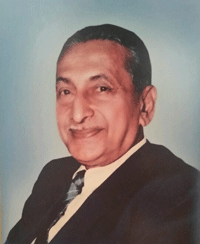 The hostel food was pretty appalling. The Tuck shop was our haven. It was a wooden shed with a tin roof next to the kitchen. Wijemanne and Jinadasa sold us the best fish buns in the world or so they seemed at the time. At the intervals there were the quick nibbles, orange barley and other goodies. The "achcharu" ladies with big bosoms at the back of the school and the Toffee man with a withered hand at the front gate provided tasty alternatives. They gave us instant credit to be returned when we received our pocket money on Friday. There was a man who sang a song to sell his delicious sweets " come on buy baby nice pineapple and pol toffee".
The hostel food was pretty appalling. The Tuck shop was our haven. It was a wooden shed with a tin roof next to the kitchen. Wijemanne and Jinadasa sold us the best fish buns in the world or so they seemed at the time. At the intervals there were the quick nibbles, orange barley and other goodies. The "achcharu" ladies with big bosoms at the back of the school and the Toffee man with a withered hand at the front gate provided tasty alternatives. They gave us instant credit to be returned when we received our pocket money on Friday. There was a man who sang a song to sell his delicious sweets " come on buy baby nice pineapple and pol toffee".
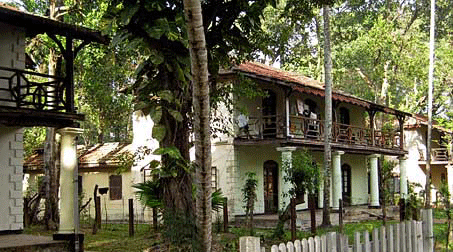 Being deprived of female company the boarders were terribly sex starved. Girls were always in their dreams and conversations. Many thought they were deeply in love 'with girls from the Mount Mary Housing Estate without ever having spoken to them. Afterbeing taken to see the film "War and Peace" at the Savoy at least a dozen of us fell in love with Audrey Hepburn. Living in dormitories surrounded by friends was a wonderful experience. Mrs.Hindle our Matron was larger than life but kind and gentle. I finally left the boarding to enjoy my freedom once again in 1958.
Being deprived of female company the boarders were terribly sex starved. Girls were always in their dreams and conversations. Many thought they were deeply in love 'with girls from the Mount Mary Housing Estate without ever having spoken to them. Afterbeing taken to see the film "War and Peace" at the Savoy at least a dozen of us fell in love with Audrey Hepburn. Living in dormitories surrounded by friends was a wonderful experience. Mrs.Hindle our Matron was larger than life but kind and gentle. I finally left the boarding to enjoy my freedom once again in 1958.
Discipline at school was paramount. The teachers, Principal and the prefects maintained law and order and the school rules. Good manners and firm discipline are what holds society together and we had them taught and also firmly instilled in our souls. These stuck with us for life. The students are a cross section of society. There are saints and sinners. Unfortunately for all of us, good behaviour and fine manners come to be taken less seriously than they should be in the 21st Century. People feel they can say anything and cause any amount of pain or damage, with impunity. To be fair, many of the old boys whom I have met after many decades seem to have benefitted from the strict rules and discipline they have been taught at school.
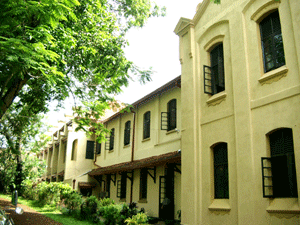 No doubt we have one of the best assembly halls in the schools. The tall wooden ceiling, stained glass windows, semicircular stage and the balcony gave it the character it deserved. There were several creaky, wobbly, aging fans painted dark brown that hung from the ceiling. I often wondered what mayhem it would cause if one came off its moorings. Black and white portraits of past principals and teachers adorned the walls on both sides. I distinctly remember a bronze plaque at the back of the hall dedicated to an old boy who died in action in Syria. There was a panel full of names of past Principals hanging on the wall to one side of the stage opposite which stood the old piano.
No doubt we have one of the best assembly halls in the schools. The tall wooden ceiling, stained glass windows, semicircular stage and the balcony gave it the character it deserved. There were several creaky, wobbly, aging fans painted dark brown that hung from the ceiling. I often wondered what mayhem it would cause if one came off its moorings. Black and white portraits of past principals and teachers adorned the walls on both sides. I distinctly remember a bronze plaque at the back of the hall dedicated to an old boy who died in action in Syria. There was a panel full of names of past Principals hanging on the wall to one side of the stage opposite which stood the old piano.
For the morning assembly, Mr.CJ Oorloff made a dramatic entry with all his black regalia and head gear. He never failed to read out loud and clear the names for Saturday detention. The prefects and sub- prefects stood to attention round the hall to stop the tittle-tattle and whispers. P.H.Nonis who took over from CJ Oorloff introduced his own relaxed style. With the end of the primary school, maths, history geography and science began to play a more important role in our lives. Edmund Dissanayake taught maths and several other subjects. He never raised his arm to punish students and seemed to have earned the respect of the class. Who can forget the Premawardenes Felix and Cyril? The former had a well-trimmed moustache, taught Sinhala and the latter had difficulty turning his neck and was called "bella". He taught Scripture. Lionel Jayasuriya affectionately called "Kabaraya" was our Class teacher in Form 2. He had a keen sense of smell and was eternally sending us out of the class for allegedly breaking wind with many of us protesting our innocence.
Fourth form divided our class of 30 into the Sciences, Arts and Commerce, friends were separated for the first time and gave us a taste of things to come. The Senior School Certificate was the first goal and it came upon us like a ton of bricks. I remember with affection Sethukavalar who taught us Physics. He made a characteristic hiss at the end of every sentence. Sethu left us to join Union College, Tellipalai. "Mishter" Dabrera took over physics and taught physics and rugby at the same time. We weren't sure whether to try or convert. DP George and Hensman were our Chemistry gurus and Yesudian the Biology tutor.
NEH Fonseka wore the Ariya Sinhala dress taught Sinhala and NSJ Fonseka alias "Homba" taught scripture. We thought he wept when he related the story of the suffering of St Francis of Assisi. Fred Abeysekera was a fine teacher of English and helped us in essay writing and appreciating poetry. Being a distinguished old boy and having the right academic pedigree it defies logic why he did not become the Principal of the school. We met at Queens Hotel Kandy in 1970. I was with some inebriated medics and was ducking and weaving to escape his attention when he tapped me on the shoulder. We chatted warmly about mutual friends and times past. Later, I bade farewell and saw him disappear into the night.
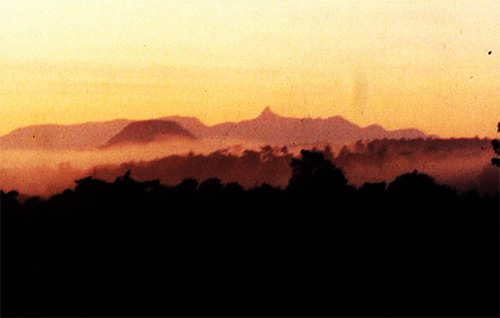
The school had the most beautiful gardens. When the many flamboyant trees were in full bloom in April with their deep red colour it seemed as if the trees were on fire. On chilly December mornings at sunrise we could see the silhouette of Adam's Peak and its mountain range against an orange background. This was a breathtaking sight indeed. The tall tamarind tree in front of the school provided the hungry boarders with some sustenance. Raman, the gardener from Cochin looked after the estate with great care. Ringing the school bell was an art and only Ranis knew how. It had its own characteristic rhythm. Ranis with his long hair tied at the back and a grey bushy moustache was even at the time a man from a different era.
Rodrigo cared for the Chemistry lab and knew many tricks with chemicals, which surprised and amused us all. Silva with a short temper and a strange gait walked as if he had a football between his legs. He had thick rimmed spectacles and was in charge of the Physics lab. No story is complete without Wilbert with a foul temper who was our chief groundsman at Campbell Park. Marshall was the peon and when I saw him last, 4 years ago, it was as if time had stood still for him. His toothy smile remained unchanged in 40 years.

The dreaded school report never failed to arrive at the end of term. They are masterpieces of laconic English, a true record of ones performance and admonitions where necessary. "Could do better" or "there is room for improvement" were common "complaints". I did not like some of the comments but all in all felt no animosity.
No memoir of school is complete without mention of matrons. Mrs. Ruth Hindle was a large lady and loved the boarders. She was a mother figure to us all. Cared for us when we were sick, rubbed Vicks on our chests , cleaned our wounds and berated us when we misbehaved. Her son Waldo was a fellow boarder with us. She broke down and cried on her last day at school. Everybody felt sad and embarassed. Without her the boarding was never the same. Mrs.Gomes took over from her.
The Welikada prison opposite the school reminded us of the big bad world outside. There were punishments within the school too. They often didn't match the crime and excesses were rare. We were made to standup in class for the minor offences and to standup on the form for repeated minor offences. For slightly more serious misdemeanor we were sent out of class. On the spur of the moment punishment was a thundering slap which often left the finger marks. Various implements were used too. The ruler was used with its sharp edge or the flat side depending on the severity of the crime. The cane was the ultimate punishment in class.
After school or Saturday detention was mostly for homework related crime. For crimes akin to murder we were sent to CJ Oorloff, R.A Honter or Lanerolle which always ended in floods of tears and six of the best. The ultimate punishment was suspension or expulsion. Very few were bad enough for this. Smoking received such harsh punishments those days. A brave student would have quick puff during an interval in the dark alleys of Mount Mary and chew a mint to get rid of the smell.
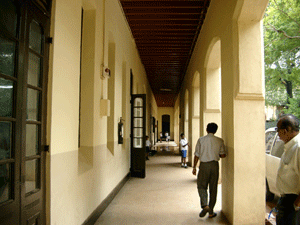 In the sixth form we had come to the top of the ladder. We could go in and out of the school at will. Some of us became prefects. This gave added freedom though it alienated us from the school proletariat. Yesudian continued teaching Zoology. An excellent Zoologist, he had a genuine interest in our welfare. He left to retire in his hometown in Cape Cormarin, South India. Suntharalingam was a dedicated teacher too and taught Botany. His mispronunciations provided endless ammunition for jokes and laughter in class. "Laffa" taught us Chemistry. Chandrasekeran, a quaint, gaunt, saint, was the Physics teacher par excellence. Mr. Chandrasekaran went to Canada from Africa and was a very popular teacher in a Scarborough High School in Toronto. There was a great write-up in the Toronto Star after his untimely death. He was a soft spoken and an outstanding physics/applied maths teacher. Daya Perera, Lucky Jayasinghe, Sarath Ranasinghe and yours truly entered the Medical Faculty. Many others found places in Engineering- Yogan Sathyanathan and Gnanakrishnan, Biological Sciences and Agriculture- Sarath Wickramaratne and Harold De Alwis Jayasinghe.
In the sixth form we had come to the top of the ladder. We could go in and out of the school at will. Some of us became prefects. This gave added freedom though it alienated us from the school proletariat. Yesudian continued teaching Zoology. An excellent Zoologist, he had a genuine interest in our welfare. He left to retire in his hometown in Cape Cormarin, South India. Suntharalingam was a dedicated teacher too and taught Botany. His mispronunciations provided endless ammunition for jokes and laughter in class. "Laffa" taught us Chemistry. Chandrasekeran, a quaint, gaunt, saint, was the Physics teacher par excellence. Mr. Chandrasekaran went to Canada from Africa and was a very popular teacher in a Scarborough High School in Toronto. There was a great write-up in the Toronto Star after his untimely death. He was a soft spoken and an outstanding physics/applied maths teacher. Daya Perera, Lucky Jayasinghe, Sarath Ranasinghe and yours truly entered the Medical Faculty. Many others found places in Engineering- Yogan Sathyanathan and Gnanakrishnan, Biological Sciences and Agriculture- Sarath Wickramaratne and Harold De Alwis Jayasinghe.
The results were the best in the school for many years thanks to the dedication of our teachers. Jayasinghe is now a Consultant Radiologist in Brisbane, Australia. I met Ranasinghe briefly in 1973 when he returned from the UK after qualifying as a Paediatrician. By March 1962 the University Entrance results were made public I finalized my plans to leave school with mixed emotions. The last day at school was for me the saddest day of my life. It was as if my life had suddenly caved in. As I moved from room to room to say goodbye to my teachers, it dawned on me that I would never see some of my school friends ever again. Shaking their bands to say good-bye was the hardest act of all. When I left the school gates for the last time it left a void which has never been filled. The final image of the school as I looked back from Baseline Road has remained with me since. Education is what survives when what has been learned has been forgotten. "Go West young man" said Rudyard Kipling and I took his advice and came over to London in the summer of 1974. Dr.C.S.Chen, Consultant Orthopaedic Surgeon, who was an old Wesleyite gave me the encouragement to climb the ladder, when I needed it most. Sadly, he died 3 years ago.
 After burning the midnight oil for further examinations I finally settled in semi-rural Hertfordshire about 50 miles North of London. On long summer evenings as I sit in my garden my mind often wanders to those carefree days at Wesley College. Internet edition of the Ceylon Daily news is my only source of home news. It depresses me to read in the obituary column the names of school friends. I still remember them, as I saw them last, with their young impish faces and mischievous smiles. They are gone forever. Man is a history-making creature who can neither repeat his past nor leave it behind
After burning the midnight oil for further examinations I finally settled in semi-rural Hertfordshire about 50 miles North of London. On long summer evenings as I sit in my garden my mind often wanders to those carefree days at Wesley College. Internet edition of the Ceylon Daily news is my only source of home news. It depresses me to read in the obituary column the names of school friends. I still remember them, as I saw them last, with their young impish faces and mischievous smiles. They are gone forever. Man is a history-making creature who can neither repeat his past nor leave it behind
I dedicate these memoirs firstly to my parents, who provided the encouragement and paid the bills, secondly to my teachers who educated me beyond the call of duty and thirdly to my schoolmates who by their friendship enriched my life. May God bless them all.

............................................................
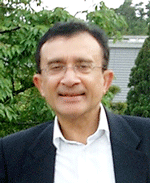
Memories of school are ever present. Certainly, dwelling on happier former days is synonymous with getting older.
There was peace in our country although the dark storm clouds of discontent were gathering in the horizon. My father was in Government Service and had to move from town to town every 3 years, what was then euphemistically called "transfers". In their wisdom my parents decided to send me to the hostel, at great cost to themselves. It was to give me a stable life and teach me the social skills and discipline. I achieved their goals only to lose them in the rough and tumble of University life. By the time I left, however, the famous Old Wesley College smoothness had rubbed off. The most important thing I learnt was ... just to be more confident about being myself. My social skills blossomed too, to everyones surprise!!
I wish to include some words of wisdom by an old Trinitian and a Wesleyite- the late Sharm De Alwis: As we grew in limb and stature we learned that boarders owned the College. Day scholars were only visitors. It has been said of boarders that the "school was their school, their home, their club and their family. The close bond that existed between boarders was impossible to break. This has been the cornerstone of any brotherhood of boarding life. How very true as I look back with nostalgia.
We were lucky kids; we spent a happy childhood living in Karlsruhe Gardens. It was long before the advent of political correctness and health and safety. Climbing trees and creeping fences became second nature to us. Memories of life in the boarding can fill a book. I will only select a few that stand out and I can recall with clarity. I was lucky to belong to a generation inspired contemporaneously by great teachers and principals. They gave us lofty ideas, great inspiration, self respect , firm discipline and anchorage. It was a sublime experience.
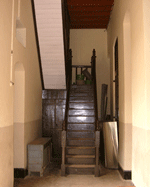 Overnight we had gone from the luxury of homelife to almost total captivity. The first day at the boarding was full of tears specially when wishing the misty eyed parents good-bye. For many families, if childhood has a final moment, this is it. As the car doors close parents and children go their separate ways. We then emerge from school as adults.
Overnight we had gone from the luxury of homelife to almost total captivity. The first day at the boarding was full of tears specially when wishing the misty eyed parents good-bye. For many families, if childhood has a final moment, this is it. As the car doors close parents and children go their separate ways. We then emerge from school as adults.
I was ten years old and was virtually just off nappies. Nothing could have prepared me adequately for this trauma. It was the large frame of Mrs. Hindle, the Matron, who welcomed us. The first night is the stuff of myth. The early weeks were tricky. The loneliness and bewilderment was overpowering at times. There were times I wanted to run away to my aunt in Dematagoda. All our worldly possessions were crammed into a large metal trunk and the clothes had our name tags. In the first term they all called me "new boy", a strict reminder of the pecking order. In the beginning we all had to endure an arduous time. In such 'incarceration' some behaved well, others less so. We saw the best and worst of human nature. Humour was invaluable in the darker moments. As a group the boarders were self reliant, resourceful and developed amazing skills of leadership and survival.
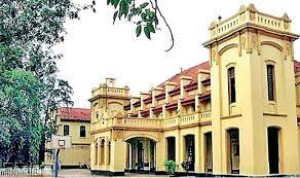 The Matron was the Queen of the boarding. She was a fair skinned woman with a big bosom, called Mrs. Ruth Hindle. She lived in a room by the Junior Dorm with her son Waldo who was my age. Mrs. Hindle ruled supreme in the Junior section and occasionally would call out- WHO DID THIS? But She was a kindly lady and looked after us well. She was a good pianist and played the music for the Choir and also at special occasions at Assembly.
The Matron was the Queen of the boarding. She was a fair skinned woman with a big bosom, called Mrs. Ruth Hindle. She lived in a room by the Junior Dorm with her son Waldo who was my age. Mrs. Hindle ruled supreme in the Junior section and occasionally would call out- WHO DID THIS? But She was a kindly lady and looked after us well. She was a good pianist and played the music for the Choir and also at special occasions at Assembly.
There is no place like the boarding to get to know the fellow students. There are people you meet and then spend rest of the years avoiding them. There are others you meet on a corridor and then become friends for the rest of your life. The Saints, sinners and the scholars reveal themselves in the fullness of time and there is no better preparation for the life outside. The teachers fall into those categories too. Overall the sinners were very few like the Saints. The majority belong to some category in between.
Our lives were controlled by the the large golden bell rung by "Tarzan" or Thasan who certainly looked liked the real thing. In the boarding we were confined to the school boundary. I was in the junior dorm which had a small wooden cubicle for the prefect in charge (Herbert Gunaratne and later L.C.Rodrigo). Then there was the Intermediate dorms A and B and the Senior dormitory. In the dorms there were two rows of beds covered with the double blue bedspreads which was our trade mark. I clearly recall we were not allowed to sit on the bedspread. Life began at 6am with the bell. Wash and ablutions were done in the communal bathrooms where Kolynos chlorophyll toothpaste and purple Lifebuoy soap comes to mind instantly. Chlorophyll was said to remove the odour from the mouth. Interestingly, some years late I recall seeing in a journal:
"The goat that stinks on yonder hill. Grazes all day on chlorophyll" (Chlorophyll, as you know is the green pigment found in leaves of plants)
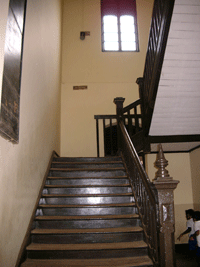 There was a large concrete tub full of water where some brave lads had an early morning bath. We had PE at 5.45 am taken by a monitor (usually a masochist) for about 10 minutes. Prep started at 6.45 finishing at 7.35 when we all assembled in the dining room for breakfast. Bread jam and tea was served sometimes hoppers like flying saucers and string hoppers hard enough to kill a man. These were served with mouth watering seeni sambol packed with a stick of dynamite.
There was a large concrete tub full of water where some brave lads had an early morning bath. We had PE at 5.45 am taken by a monitor (usually a masochist) for about 10 minutes. Prep started at 6.45 finishing at 7.35 when we all assembled in the dining room for breakfast. Bread jam and tea was served sometimes hoppers like flying saucers and string hoppers hard enough to kill a man. These were served with mouth watering seeni sambol packed with a stick of dynamite.
The school bell rang at 8.15am. From 4 -6pm all boarders were expected to indulge in sports which most of us enjoyed. Prep was done in 2 prep rooms on either side of the common room. We had our own desks securely padlocked. Many of those padlocks were called "Master" made in Milwaukee USA. The desks had broad sloping tops that opened. We kept our books pens and pencils in those and also a few of our priceless possessions.
There was a hostel master or a prefect on "guard" to make sure there was no chit chat during prep. It was a serious business and no nonsense was tolerated. After doing our homework we prepared for tests and examinations. Reading story books was strictly forbidden. I have received the regulation slap from EL Rodrigo for breaking the rules at prep. 6.30pm prep began until 7.45 when we met in a small room called the chapel- with a well polished wooden floor where we had prayers taken by a teacher. We sat or squatted on the floor. On one wall was a famous painting of the 'Praying Hands' by Albrecht Durer. There was a tall pulpit for the short sermon. I remember singing those famous hymns and praying leaning against a wall.
Dinner was served at 8pm and prep started again at 8.30 until 9.15. We retired to bed at 9.30pm when it was "lights out". Two large buckets were kept at either end of the long corridor upstairs for us to empty our bladders at night. Being semi awake some missed the target making a mess on the floor. I recall someone saying "Don't flatter yourself"- stand nearer. The barber came every Wednesday, being a half day. Cutting was done in the open air in front of the primary block. I often feared that flying crows will provide the Brylcream. We wrote our names in the barber's book and that was the "batting order". We had to be motionless during the procedure to avoid cutting the ears.
The clothes washing was done by a "dhoby" who visited the hostel once a fortnight in his bullock cart. He was called "mynah" as his long hair was knotted at the back. We had a "dhoby" book and this was filled in duplicate and a copy was placed in the bundle of dirty clothes. "Thou shalt not steal" said the rule book but petty stealing was rampant and difficult to eradicate. Any food or money left unattended, just disappeared. Some developed ingenious techniques of opening padlocks with master keys etc. There was a hard core of small time crooks who were on the lookout for goodies. They were mainly in search of food. Some broke into trunks and others into desks. We owned so little that anything stolen did not amount to much.
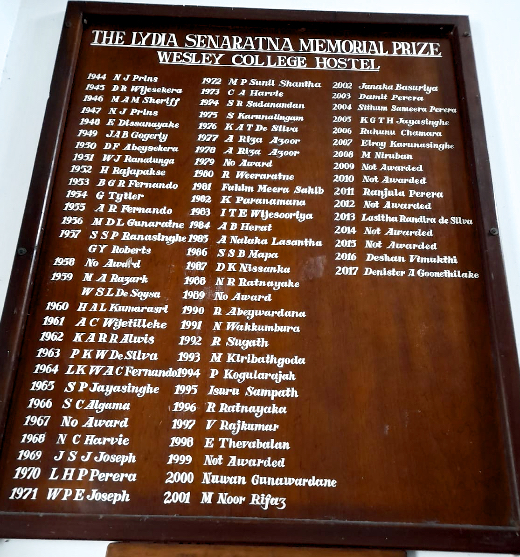
LA Fernando was the Senior Hostel Master and there was Yesudian, Vethanayagam (balli) and EL Rodrigo (Peththa) who helped to maintain law and order. Subsequently Ivor De Silva, Maxwell De Alwis, Ben Jayasighe, Henry Rajapakse and DB Welikala joined the staff. Thursday dinner was special called ,"State dinner". Mr. and Mrs. Oorloff joined us and the food was marginally better than usual with a dessert. The Principal always said Grace in Latin. Saturdays we played sports the whole day and in the evening there was a film show. The 16mm films borrowed from the embassies showed life in other countries and items of "Pathe" news.
Needless to say there was no television, no computers, and no mobile phones. We made our own entertainment and amused ourselves. Mr. LA Fernando took large groups of us to see films at the big Cinema halls. I remember seeing Demitrius and the Gladiators, The Robe and Samson and Delilah. During the marble season we were all at it playing "bunkings". Hector Bernard Dareeju was the uncrowned king of marbles and I have lost many a round to his wily ways. Indoor games like carrom and table tennis were popular too. These were played in the Common Room which had a Rediffusion set to listen to BBC News, Elvis Presley Or Bill Haley.
There was also a game called " Thachchi" which was played in the Badminton courts in the front of the school. "I spy" and "hide and seek" were popular too. In the hostel we had 3 houses Yodhayas, Vikings and Spartans. There was great rivalry between them. The matches were keenly contested and took place in the "small park". The small park was a patch of gravel. Trips and falls here resulted in numerous grazes and peeled skin. All these running repairs were done by Mrs. Hindle with iodine and spirits sending us skipping in pain. We wore tennis shoes for games. As we never bothered to keep our feet clean constant usage created "toe jam" (An offensive paste of dirt and sweat). We all had our heads full of lice or dandruff and faces full of pimples giving us a Dickensian look.
On Sundays there was no salvation for the Christians and the non-Christians had it easy. The rest had to walk to the Maradana Methodist church in the morning for Sunday school and in the evening for Evensong. It was a long trudge on narrow roads with trams, cyclists and motorists whizzing past our toes. Certainly the path to heaven wasn't easy! We all hated the journey and wished we were non-Christians.
It is perhaps this forced religion that made me drift away from Christianity. The highlight of the evening service was the singing of the octogenarian Mr.Blacker, an old boy of Wesley, who was very deaf and sang a different hymn to the rest of us. On the Sabbath Christians were not allowed to play any sports. We tried hard to reconcile the strictures of our faith with our youthful exuberance and love of cricket.
There was intense loyalty to the hostel. All the Hostellers were in Moscrop House which brought a great degree of unity amongst the boarders. These surfaced at inter-house matches. There were little groups or gangs who stuck together and occasionally violence erupted ending up with "Laffa" who applied the wisdom of Solomon. The victim, assailant, witnesses and bystanders were all caned. Those who "sneaked" got punished by the peer group as well. There were times when I raged at the injustice of punishments. In the main the boarders were a united bunch. The friendships were strong and lasting and the day scholars feared the camaraderie that existed.
The Muslims, Tamils, Sinhalese and Burghers formed one large brotherhood which we carried to the wider world in later years. Most boarders had nicknames depending on their infirmities, habits and names. Like "Homba" for a protruding jaw and "Kabaraya" for scaly skin, "Goofy" for protruding teeth and Nabiya for NAB. A chap with a goitre became "gedi Vetha" There were two blind students in the senior dorm who were greatly liked by us all. One of them , Cornelius, was an excellent pianist and the other was William (thanks to BCRN (Ranjit) Fernando for jogging my memory) I met William many years later when he was in charge of a School for the Blind in Seeduwa. He didn't recognise my voice but recalled my name and the connections instantly. He spoke most warmly of LA Fernando for his help and kindness.
For many years we had bed bugs in the hostel. The white sheets were covered with blood stains. It kept some of us awake at night when the infestation was at its peak. There were debugging sessions on Saturdays which the boarders undertook without any input from the management. Some used lighted candles to burn the bugs from the iron beds. How we didn't set fire to the coir mattresses and to the wooden floor remains a mystery. Perhaps going to church on Sundays had its benefits after all. The more affluent ones used various kinds of insecticide sprays.
Finally it dawned on the Hostel masters that something had to be done for the whole hostel to prevent re- infestation and hired a company to do the work. That was the end of the problem. When sickness struck we were put in a small house by the rear entrance of the school called the Sick room. It was mostly the 'flu but occasionally the childhood infections like chicken pox and measles. It had a toilet and a single large room. Mr.Eric De Silva who lived in the same building visited us to give advice about matters medical and spiritual. Sickness often resulted in a visit to Dr.Lucien Gunasekera in Borella who was an old boy and also the hostel doctor. He spoke little but with authority and always prescribed a pink liquid and a bottle full of tablets. In those days we knew our place and asked no questions. The matron visited us twice a day and the food was sent to us.
 It would be fair to say I enjoyed the mealtimes more than the meals. As I recall the hostel food was appalling and we were eternally hungry. The boarding added lifelong glamour to Dhal, string hoppers and lunumiris. Wijemanne's Tuck shop was our only hope for sustenance and was the centre of our lives. Without it there would have been little to live for. But it had a drawback - it cost money, something which we never had enough. Trips from folks at home brought food and extra cash but never enough. There were times when I was flat broke.
It would be fair to say I enjoyed the mealtimes more than the meals. As I recall the hostel food was appalling and we were eternally hungry. The boarding added lifelong glamour to Dhal, string hoppers and lunumiris. Wijemanne's Tuck shop was our only hope for sustenance and was the centre of our lives. Without it there would have been little to live for. But it had a drawback - it cost money, something which we never had enough. Trips from folks at home brought food and extra cash but never enough. There were times when I was flat broke.
Friday was the day we got our pocket money. Often the rupee we got was used to pay our debts to Wijemanne, the achcharu ladies or the Toffee man. When the money ran out some ate toothpaste Marmite, Bovril and Horlicks and others used their ingenuity to make "invisible" hooks to pluck papaws from the neighbours. The large Tamarind tree provided a sour mouthful when the hunger was pretty desperate.
The small park was surrounded by "andara" trees which had green pods with the seeds covered by some edible white stuff. We just ate that too. Being cheap, tasty and filling a "thosai feed" was the ultimate luxury we dreamed of. Raman the gardener brought the stuff from Purasanda Café next door. I vaguely recall the boarders going on strike because of the poor quality of food in the hostel. I would be grateful if someone can expand on this incident.

I joined the boarding as a child and left as an adult. In that process I noticed my voice go husky and the hairs appearing in my body. The Mount Mary girls whom I have ignored for many years became attractive and even sensuous and beautiful.. I went to Church and Sunday school to to see the girls and speak to them. It was a phase that remained well into our teens and beyond. A time in our youth when we saw the world in vivid technicolor. Youth is a blunder, Manhood a struggle, old age a regret said Benjamin Disraeli. We often used the road through Karlsruhe gardens to go to Campbell park for sports. This was the road used by the Mount Mary girls which gave us a lot of pleasure. Mr.Eric Gunasekera used to stand at the gate of his house to ask us the cricket scores on Fridays and Saturdays. He was blind then but his love for the school remained strong. The famous Nalanda cricketer Sarath Silva used to live down that road too and of course Ajitha Wijesinghe (old boy) at the top of the road and Dr.Jayasundera and his daughters next to the "small park".
The school cricket season made the hardships all worthwhile. Fridays and Saturdays all the boarders were at Campbell Park. Mr.LA Fernando led the cheering and the bailas. Even the College song was given a swing. Wesley had many unbeaten teams in the early fifties. The Claessens, Adihettys and the Fuards dominated the game from start to finish. There was good support for the away matches in Colombo as we were taken by a teacher or a senior boy. Having Neil Gallagher, and A.R.Chapman in the team both being boarders the support was intense and very worthwhile. I still believe 1952-53 were the finest years of cricket at Wesley. We were allowed out of the boarding one weekend a month, in the mid term and in the holidays. The process of getting off for these weekend breaks needed careful planning like obtaining a visa. We had a little blue book called the "Exeat" which had to be duly signed by a teacher.
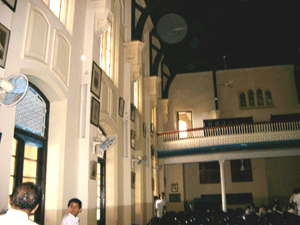 There were annual hostel trips which took place in the mid term holidays or on a long weekend. Often they stayed in the homes of old boys or present boarders who lived in the upcountry. We often stayed at the d'with Barbuts (Cecil and Arthur) in the Survey Camp at Diyatalawa. End of term exams were a serious business and a many of us worked extra to get the good grades. We helped each other a great deal to achieve our goals. On the last day of school the leavers said their goodbyes and those who had the courage made a short speech after dinner. Let the truth be told, life in the boarding was never a bed of roses. The years between the ages of 10 and 13 were the worst. As we became more senior life was tolerable. Often I felt the teachers could have been a bit more kind to the boys who were far from home and at the mercy of those in charge. In those days values were different and the belief was that the boys had to be toughened up in preparation for the rigors of life ahead. Perhaps there is some truth in that too.
There were annual hostel trips which took place in the mid term holidays or on a long weekend. Often they stayed in the homes of old boys or present boarders who lived in the upcountry. We often stayed at the d'with Barbuts (Cecil and Arthur) in the Survey Camp at Diyatalawa. End of term exams were a serious business and a many of us worked extra to get the good grades. We helped each other a great deal to achieve our goals. On the last day of school the leavers said their goodbyes and those who had the courage made a short speech after dinner. Let the truth be told, life in the boarding was never a bed of roses. The years between the ages of 10 and 13 were the worst. As we became more senior life was tolerable. Often I felt the teachers could have been a bit more kind to the boys who were far from home and at the mercy of those in charge. In those days values were different and the belief was that the boys had to be toughened up in preparation for the rigors of life ahead. Perhaps there is some truth in that too.
I think we had a premonition of the mass dispersal that would take place as we finished schooling. Many of us maintained autograph books, little rectangular books of about a hundred pages where we got our close friends to write a short note. The contents varied from canny limericks to Shakespeare. At the end of our stay in the hostel it became a vast collection of memories which I guarded with my life only to be a casualty of time and lack of space later on. Prof.R.Somanathan who now lives in San Diego, found his book recently and read out a verse I had written. I was embarrassed by my trivial trash nevertheless it remains a frozen frame from the film of life. S.R.N.Perera from Panadura wrote thus in my book:
We meet strange companions and unexpected friends
Who walk with us a little way and move out of our sight
Then find some fellow traveller whom you can love and trust
A poignant story of the life ahead. He is now Fr. Ranjit Perera who looks after his flock in Padukka.
I was an only child and relished the “friends on tap” atmosphere at school. Despite the hustle and bustle of life and the regimentation we had time to put our arms round our pals and share in their joys and sorrows. We shared our secrets and exchanged stories about our parents, brothers and sisters. There was a certain closeness which was rarely seen in friendships later on in life. We talked about our dreams and aspirations for the future and assumed we will always be friends. It fills my heart with sadness to think many of us will never meet again. It is a horrible reminder of your own mortality when you read or hear of the death of boarders who played, laughed, sang and fought with us all those years ago. For me they will always remain fifteen, healthy and smiling. It is hard to believe they will not be playing those elegant cover drives ever again or be ready for a pillow fight. Boarding school was a happy and rewarding environment.
Where would they be now?
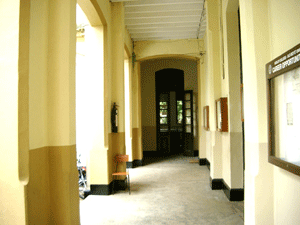 Nimal Sureweere-Vancouver, R.Somanathan-San Diego USA,Chandra Weeraratne-SL,Kenneth De Silva -SL, I .Muttu-UK, The strong contingent from Sammanathurai MAM Razak-Mohideen, Amir Ismail-SL and Hakeem Ismail-UK. Then there was HCU Peiris? NAB Fernando - deceased,BCRN Fernando-Denmark, BGR Fernando-SL, A.R.Fernando who went on a scholarship to study medicine in Japan lives in London and I met him in a bookshop in London. His brothers NGA and Cecil-deceased , Brian (deceased) his brother Damien Gunetilleke? Asoka Rodrigo? There is a strong group in Australia-Cecil and Arthur Barbut, MNG(deceased) and Upali Perera-Melbourne, Kenneth Anthonisz-Sydney,Michael Christoffelsz-Sydney, S.D.Fallil alias Sheran De Alwis- Planter in East Malaysia (deceased 2017), Harold Juriansz-Australia, Goofy Wright (Perth) . Milroy Bulner- deceased, Boris Schrader -deceased, Schranguivel, S.Soundravel, R.Ratnavel-deceased, Crutchley, Upali Siriwardene-SL, HAL Kumarasiri deceased ,AC Wijetilleke- deceased, Mynah Wickramaratne-Deceased, H.B.Dareeju, Henry Rajapakse, Lionel Rajapakse-deceased, Ronald Asirwatham-Kandy SL, Dr.Lakshman Gunaratne-SL, Weeraperumal- Brian., Maurice Weeraperumal deceased Kenneth De Silva-Prefect of Games at Wesley and his brother Geoffrey. Asoka and Shirley Ranasighe- both deceased
Nimal Sureweere-Vancouver, R.Somanathan-San Diego USA,Chandra Weeraratne-SL,Kenneth De Silva -SL, I .Muttu-UK, The strong contingent from Sammanathurai MAM Razak-Mohideen, Amir Ismail-SL and Hakeem Ismail-UK. Then there was HCU Peiris? NAB Fernando - deceased,BCRN Fernando-Denmark, BGR Fernando-SL, A.R.Fernando who went on a scholarship to study medicine in Japan lives in London and I met him in a bookshop in London. His brothers NGA and Cecil-deceased , Brian (deceased) his brother Damien Gunetilleke? Asoka Rodrigo? There is a strong group in Australia-Cecil and Arthur Barbut, MNG(deceased) and Upali Perera-Melbourne, Kenneth Anthonisz-Sydney,Michael Christoffelsz-Sydney, S.D.Fallil alias Sheran De Alwis- Planter in East Malaysia (deceased 2017), Harold Juriansz-Australia, Goofy Wright (Perth) . Milroy Bulner- deceased, Boris Schrader -deceased, Schranguivel, S.Soundravel, R.Ratnavel-deceased, Crutchley, Upali Siriwardene-SL, HAL Kumarasiri deceased ,AC Wijetilleke- deceased, Mynah Wickramaratne-Deceased, H.B.Dareeju, Henry Rajapakse, Lionel Rajapakse-deceased, Ronald Asirwatham-Kandy SL, Dr.Lakshman Gunaratne-SL, Weeraperumal- Brian., Maurice Weeraperumal deceased Kenneth De Silva-Prefect of Games at Wesley and his brother Geoffrey. Asoka and Shirley Ranasighe- both deceased
By 1958 my father had moved to Colombo and it was time to leave the boarding. I left with mixed feelings. Sad to leave my friends with whom I shared six long years but glad to regain my independence and some good food of my own choice. I maintained strong links with the hostel and with my numerous friends in the boarding until I left school in 1962.
I often look back to the days in the boarding. The sands of time have moved on as I have progressed from youth to middle age. After many years, I visited the hostel in 1998 and walked the long corridors once again. The nostalgia was overwhelming but the magic of the place had gone without the friends who made it so special. Fifty years on Wesley continues to make immense contributions to education.
I often look back to the days in the boarding. It has created an Aladdin's cave of wondrous memories. The sands of time have moved on as I have progressed from youth to middle age and beyond. After many years, I visited the hostel in 2012 and walked the long corridors once again. The nostalgia was overwhelming but the magic of the place had gone without my friends who made it so special. One Hundred and Fifty years on Wesley continues to make immense contributions to education.
As the boarding is costly to maintain and rather expensive for the parents, there was a gradual decline in the number of boarders over several years. The school management realised it was not an economically viable proposition to provide a boarding service. The school Boarding was first established in 1907 with 100 resident students when the new Wesley College was opened in Karlsruhe Gardens. After 112 years of its existence, the boarding finally ceased to exist in 2019.
I feel incredibly lucky to have enjoyed the company of such wonderful friends while receiving an excellent education.
Photos taken on a hostel trip
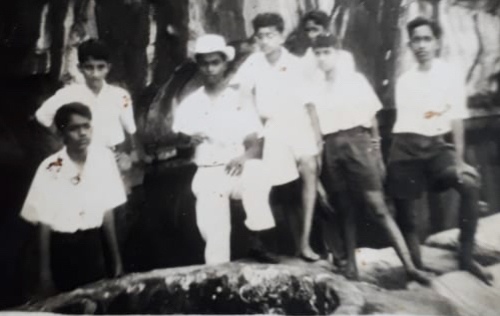
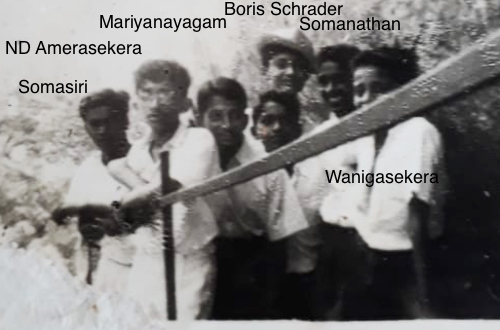
I dedicate these memoirs to my classmates, Dayaprasad Peiris and C. Amaradasa Fernando, who endured the pain and pleasures of boarding life with me. They were sons of Methodist Clergymen. Daya, I remember him as a chorister singing with his angelic voice "Once in Royal David's City" and CAF as a grumpy chap with a gravel voice and a poker face. He often threatened violence but in reality did not harm anyone in all the years I knew him. Daya became a successful Journalist and CAF, a Superintendent of Police. They served society and their communities with distinction. Both lost their battle for life in their early fifties. May their Souls Rest in Peace.
I feel incredibly lucky to have enjoyed the company of such wonderful friends while receiving an excellent education.
Ah ! those were the days. How time has flown.

Well, doesn't time fly !!!! It was with a mixture of awe and pride that I passed through the gates of Wesley College for the first time in 1950. It seems like only yesterday that I was walking up the school driveway on that eventful first morning. The place was imposing to say the least. Those were glorious years I recall with pin sharp clarity. Now, here I am retired after an enormously satisfying 40 year career in Medicine. All those years have gone swiftly as the blink of an eye. There are a few advantages to getting old - still people tend to give you some respect. The perks outnumber the downsides. But the main problem is that your body never allows you to forget the passage of years.
Much has changed in the world around us since those halcyon days. Good manners are on the decline. Political leaders are cynical, careless and blinded to the realities of the outside world. To some there has been a moral decline. The digital revolution has taken over our lives.
I was at Wesley from 1950-62 and was in the boarding from 1952-58. They were very happy times indeed. Those who recognise me from the old days will note the changes due to the ravages of time. I owe so much to so many in the school, Students teachers and Principals. This is my thank you to them all and Wesley. I would be delighted to hear from you.
My father Douglas Bertram Amerasekera was a student at Wesley and remembered teachers Eric Gunasekera, Percy T Cash,C.M. Fonseka and HJVI Ekanayake and students O.E Goonetilleke and PH Nonis. He was at Richmond College Galle during the Principalship of Rev. WJT Small, much loved and great Principal of that school.
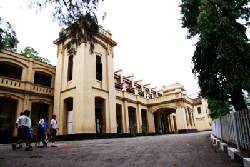
Since our Independence from Britain there have been rapid changes to the policy on education. With the benefit of hindsight some of it has been detrimental to education, schools and the country. Successive Principals had to steer the school through difficult times. The Old Boys Union and the Methodist Church rallied valiantly to keep the school afloat and maintain financial viability. Without the help of those organisations Wesley would not have survived in its present form. The OBU has always been a tower of strength to the school. We must specially remember some of the old boys for their selfless service to the school over many years. Their names are too numerous to mention but special mention has to be made of Sir O.E.Goonetilleke, Hon., M.H. Mohammed and Terence De Zylvafor their outstanding contribution over many decades. If anyone feels that other names need to be mentioned, here is your chance. You are free to write about those old boys, teachers or Principals to this website. Many old boys have donated prizes in memory of the staff and students which is a most generous gesture to remember them every year on Prize Giving day.
When I was a kid, children had no rights at home and none at school. We were only to be seen and not heard. At Wesley in my day life was not a bed of roses. It was worst in the Primary school where there was an aura of fear that pervaded the classrooms and the corridors. Discipline was administered with an iron fist and the school rules were to be respected at all times and at any cost. This climate of fear eased as we moved into the middle school. In the sixth form we were treated as adults and given responsibilities as Prefects to uphold the rule of law and discipline. On looking back I cannot find fault with the manner in which discipline was administered and the school was run. Those who were in school with me have turned out to be useful and respected citizens of this world. The old boys too form a cross section of society with its complement of saints and sinners. Whilst some became politicians, lawyers and doctors, a few may not have kept to the straight and narrow.
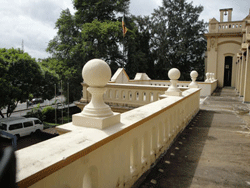 I have a head full of memories of things that happened at school. They must have made a tremendous impression on my young mind. Some of these recollections are happy ones but a few are unpleasant, even painful. There were times I hated school.. There was too much home work and too many rules and punishments. But somehow good times finally shone through.
I have a head full of memories of things that happened at school. They must have made a tremendous impression on my young mind. Some of these recollections are happy ones but a few are unpleasant, even painful. There were times I hated school.. There was too much home work and too many rules and punishments. But somehow good times finally shone through.
It amazes me still how the school managed to balance the demands of high academic standards with the time demands of extra activities like sports, art, music and drama. The balance was achieved satisfactorily and without undue pressure. For this we have to thank the skill of the teachers and the Principal. Situation has changed since my time as my article shows - Growing up in the 21st Century
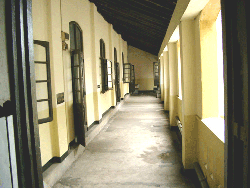 We owe a great debt to our schoolmasters. One measure of a school is the way teachers and students interact. We remember with much gratitude the interest they took in our develoment and welfare. The teachers at Wesley, what great characters some of them were! I hope they still are. My memory of them extend to their physical features, their anger, smile and even the smell. Some had tempers that would terrify even the boldest. What distinguished them all, large or small in stature was their apparent venerability. They seem to belong to the school like its own furniture and walls. None seemed more than 50 but so much a part of Wesley. These characters seemed indestructible.
We owe a great debt to our schoolmasters. One measure of a school is the way teachers and students interact. We remember with much gratitude the interest they took in our develoment and welfare. The teachers at Wesley, what great characters some of them were! I hope they still are. My memory of them extend to their physical features, their anger, smile and even the smell. Some had tempers that would terrify even the boldest. What distinguished them all, large or small in stature was their apparent venerability. They seem to belong to the school like its own furniture and walls. None seemed more than 50 but so much a part of Wesley. These characters seemed indestructible.
Even now after 50+ years it gives me a shock and a pang to read of the death of an old master. The teachers at Wesley seem permanent and the majority stayed on until retirement. Many had served for well over 25 years. Although their salaries were probably just adequate, they had a loyalty to the school, and did not use a teaching post as an ambitious transient stepping stone to a bigger and a better paid teaching job elsewhere, as many young teachers do now. I often feel that many of our older teachers, some of them though eccentric, may turn in their graves at the disloyalty and opportunism of our modern teachers. For them, the joy of knowing of the success of their students was payment enough.
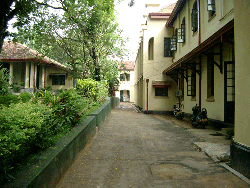
When I now look at some of the old school photos and even see the names of those masters, their faces, mannerisms and voices come easily to mind. Mr N.E.H.Fonseka who chewed betel always spat from an upstairs window without looking to avoid passers by below. On many occasions I have prayed the spray would fall on the Principal but had no such luck. C.E De Pinto, Eric Gunasekera, W.E Mack, C.P Dias, C.V Honter before my time and L.A Fernando, J.L.F De Mel, C.J.T Thamotheram, Iris Blacker, Joyce Leembrugen, Wilfred Wickramasinghe, Lionel Jayasuriya, Charles Yesudian, Raju Hensman, E.L Rodrigo during my time were an integral part of the institution that moulded our lives. I fear, I give the impression that these teachers were virtuous and without fault. They were human and in one way or another difficult, egotistical, strong minded and demanding. They loved the school and their profession. They made good friends. I wouldn't want them as enemies. Having said this I have the greatest respect for many of them. I still feel guilty to this day for not going round the school from the primary school upwards to say goodbye to every teacher many of whom I never saw again.
Wesley College attracted pupils from all over Ceylon. During my years there were many from Jaffna, Batticaloa, Puttalam, Nuwara Eliya, Kandy, Amparai, Sammanthurai, Galle, Matara and Hambantota to mention but a few. The school had the busy and bustling town of Borella to the south, the distinctly middle class Dematagoda to the north, the grinding poverty of Wanathamulla to the east and the opulence of Cinnamon Gardens to the west.
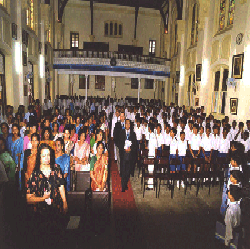
Thus amidst the rich and affluent there were many poor students from all classes and backgrounds. This enriched us all. Historically Wesley competed with Zahira College to attract many Muslims. They have played a key role both as students and generous old boys. Being a Christian school it catered for all religions and there were more Buddhists than Christians . With a thriving Tamil stream the Hindu religion was well represented too. Many from the Mount Mary Railway community sent their kids to Wesley College. The Burghers brought a fourth dimension to our lives at school by there excellence in sports and their easy going attitude to life. Those who took their school work seriously went on to represent the foreign service, the medical and legal professions.
The Chinese community was well represented too with the likes of C.S.Chen who became a leading Orthopaedic Surgeon in London. There were two blind students in the boarding during my years at school. They showed us how talented and bright they were despite their disability. During my 12 years at school I do not recall any unsavoury incidents of a racial, ethnic or religious kind. Rev.Highfield and the many Principals who followed him by their dynamism and integrity have succeeded in providing an all round education to Wesleyites to disregard all these artificial barriers which have become a hindrance to peace in our country. The dedicated teachers over the years and the OBU's have provided the glue that have bonded all Wesleyites together wherever they may be.
Photo- The Vice Principal's Bungalow

The image I carry with me of the school is still the view of Wesley College I saw on my first day in January 1950. I was mesmerised by the elegant sweep of the majestic buildings. Now as I reflect it is impossible to forget its history and the sacrifice of those who founded the school. I can picture Rev Highfield, looking vigorous and fit, pacing the Great Hall and the endless corridors as his dream of a new school in Karlsruhe Gardens was fulfilled. Time has not diminished its splendour. The family of 1200 students and teachers have made me what I am today. Growing up in such surroundings was a privilege. What I learnt on and off the classrooms has helped me in my long and tortuous journey through life. Despite its ups and down Wesley remains, at least in my thoughts, as one of the finest schools in the country.
 In this fractured and troubled world, what we seek more than anything is a sense of belonging, a feeling that we are part of a community of like-minded souls. Despite this it is ironic how many of the rising generation of students after having received a fine education at Wesley leave the school never to set foot on those hallowed grounds ever again. It amazes me that even those old boys who live in Sri Lanka and some of them living in Colombo have never been to the school premises as past students. Does that seem fair, to you? In the endless whirr of 24/7 life of the 21st Century it is perhaps easy to forget our formative years. Some must have good reasons to do so. I am sure they can find in some corner of their hearts forgiveness and to realise no institution is perfect. It warms my heart that some of the old boys in Sri Lanka and also those who live abroad still have the passion to visit the school. If you want to steal a bit of your old life back, OWSC is the place to wine and dine and also to meet and greet old Wesleyites.
In this fractured and troubled world, what we seek more than anything is a sense of belonging, a feeling that we are part of a community of like-minded souls. Despite this it is ironic how many of the rising generation of students after having received a fine education at Wesley leave the school never to set foot on those hallowed grounds ever again. It amazes me that even those old boys who live in Sri Lanka and some of them living in Colombo have never been to the school premises as past students. Does that seem fair, to you? In the endless whirr of 24/7 life of the 21st Century it is perhaps easy to forget our formative years. Some must have good reasons to do so. I am sure they can find in some corner of their hearts forgiveness and to realise no institution is perfect. It warms my heart that some of the old boys in Sri Lanka and also those who live abroad still have the passion to visit the school. If you want to steal a bit of your old life back, OWSC is the place to wine and dine and also to meet and greet old Wesleyites.
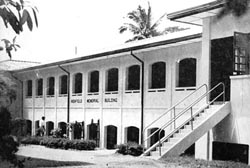
When old boys come together they move into recollection mode recalling those beautiful, quirky moments of their youth. There is never a dull moment. Voices will be imitated, mannerism mimicked, idiosyncracies enhanced and long since dormant episodes of school life will suddenly spring to mind bringing hilarity, sadness, affection or even a wry smile. As the wine and conversation flows we get transported back many decades. There will be a glow and a shared warm feeling of times past. The last to leave often provide a lusty rendition of the old school song.
Saying goodbye to Wesley which was my home for over a decade was one of the hardest things I have had to do. I still think about it. Late at night and at quiet moments in the day, those memories makes me proud of being part of Wesley. Sometimes this deep sense of longing can be overwhelming. The friends I made have remained friends for life even though I never saw many of them again. We lived our lives in the Wesley Village in Karlsruhe Gardens. It is impossible to recreate that life again. The Old Boys Unions are just a poor substitute but an essential one to keep in touch. I hope very much the readers of this website will be transported back to their schooldays. I wish this journey will encourage them to contribute to this website to keep those memories alive.
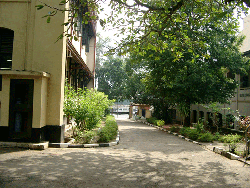
The bee-like buzzing of a thousand schoolboys that was ever present throughout my stay at school, went silent as I stepped on to Baseline Road for the last time in April 1962. And of course, I had left behind a part of myself at Wesley that was my home for so many years. Life was never the same ever again. As the sunset on my schooldays there was a new dawn of a career in medicine.
But I shall forever cherish my time at Wesley.
May the wind be always at your back
May the sun shine warm upon your face
May the rain fall soft upon your field
And until we meet again
May God hold you in the palm of his hand
Dr Nihal D Amerasekera MBBS, FRCP(UK), FRCR(London)
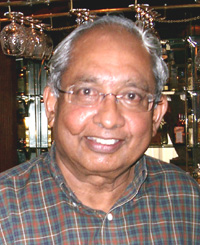
The Old Boys of Wesley College from many generations join those of the present generation in celebrating the 125th Anniversary of the founding of our great school. We do so with great joy and justifiable pride. Wesley has been one of the leading educational institutions in Sri Lanka and proudly takes it place along with other leading Boys schools such as St. Thomas Royal, Trinity, St Joseph's, Ananda, Zahira and St. John's (Jaffna) Those responsible for the publication of this 125th Anniversary Souvenir are providing an opportunity to the present generation of Wesleyites, to understand why Wesley has such a remarkable hold on the thoughts and affections of those who have been fortunate to pass through its portals. It is my intention to share my reminiscences of our beloved school with Wesleyites, both past and present.
It is my humble offering to thank my Alma Mater Wesley for what it has done for me and my three younger brothers Joseph, Paul, Charles. Each one of us owes Wesley a debt that can never be repaid. Many '": Of my contemporaries will endorse these -sentiments. My association with Wesley began in January 1952, when I entered Form I A of the school as an 11 year old. My father, decided to send me to Wesley despite his being an Anglican and an old Josephian. It was perhaps due to my mother being a Methodist. The Principal was the retired civil servant Mr. C. J. Oorloff. The teachers who thought me in form IA and helped me to adjust to my new environment included Mrs. Rachel Lembruggen, Mr. Lional Jayasuriya, Mr. Gunaratnam (Bullet) Mr. Edmund Dissanayake and Mr. Derrick (D.B.C) Mack.
Chief peon Ranis was held in great awe and respect by all the students. Marshall Perera, who still serves the school, was also among the minor staff. He is indeed a link with the Wesley of the Fifties. My entry in to Wesley coincided with the early years of Sri Lanka's Independence from British colonial rule. It was a period which former Prime Minister S.W. R. D. Bandaranayake described as "a period of transition". The changes in our national life also meant that Wesley which was an "assisted school" in the early Fifties became a non-fee levying private school in the Sixties. This status still continues and has perhaps changed the egalitarian character of the school in the fifties.The Wesley of the Fifties produced "men of grit and industry" from all communities who served independent Sri Lanka in different capacities. There wore also Wesleyites of a earlier generation who were prominent national leaders like Sir Baron Jayatilleke, Sir Oliver Goonetileke.
The first diplomatic envoys sent out by the newly Independent country included Wesleyites. The public service and other professions at the time of Independence had many Wesleyites who were Sinhala, Tamil, Muslim and Burgher. It is important to remember that Wesley was founded by the Methodist Church in colonial Ceylon as a Christian school. Highly dedicated Methodist missionaries like Rev. Henry Highfield, who were its Principals until the early Fifties, were Missionaries who practiced what they preached. It was a Methodist minister Rev.Gogerly who in the mid 19th century, first proposed the idea of education in the Swabasha medium, long before our national leaders thought of it Wesley continues to provide an education based on Christian values and today it has adapted to changing national needs and priorities.
Wesley also continues to be a school which caters to Muslims, Buddhists and Hindus in addition to the Sinhala and Tamil Christians. In our time in the Fifties, there was no chapel and morning prayers were held in the school hall. Today, Wesley has its own chapel within the school premises, largely due to the efforts of Old Boys like Lou Adhihetty and Lasantha Fernando During my student days, Wesley succeeded in inculcating in me and most of my contemporaries, the concept of "Mens Sana in Corpore Sano" while we also adhered to the college motto "Ora et labora". For someone who entered the school as a mere 11 year old, one of Wesley's particular attractions was the sports facilities. I remember playing cricket (without protective gear) in the "Small Park" in Karlsrhue Gardens during my Form I and Form 2 days. Mr. A. D. D'Abrera (our general science teacher) regularly admonished us and warned us of the danger of getting "sun stroke" while playing in the hot sun. Ironically, "Dabbie" became the rugger master when Wesley started playing rugger in 1955 and it was his incessant persuasion that was responsible for me finally playing rugger for the school in 1958. By a strange coincidence, I took over his duties in 1963, when I began teaching at Wesley.
Apart from indulging ourselves in sports, we were even more enthusiastic spectators when Wesley played cricket matches. We had cheering squads led by persons like B. C. R. N. Fernando (the Principal N. A. B. Fernando's younger brother). We used to cheer Wesley with mighty shouts of "Zam Zam Zaki, Zam Zam Zay.." Our cheering was a great source of strength to our cricketing stalwarts like Brian Claessen, M. N. Samsudeen, Lou Adihetty, Abu Fuard and Herman Claessen. It certainly helped them to win matches regularly. Another feature of those days was the friendly camaraderie among rival cheering squads. We used to get on particularly well with the Josephian cheering squad, both at Campbell Park and at Darley Road.
This brief report on Wesley in the Fifties would not be complete if there is no reference to the religious activities in the school during my time. Like the Wesley College boarders, I attended the Maradana Methodist Sunday School since my father was concerned about my religious education. It was my connection with the Student Christian Movement (SCM) at Wesley and not any church influence, that led to my becoming a committed Christian. For this, I must thank Lou Adihetty who was then President of the SCM in addition to being the Senior Prefect and cricket captain.
God certainly moves in a mysterious way his wonders to perform. My association with the SCM at Wesley, helped to enrich my life as an undergraduate at the University of Ceylon in Peradeniya. There I came under the influence of the Campus Chaplain Rev. Lakshman Wickremasinghe, who later became the Bishop of Kurunegala. I remember that prominent old Wesleyite and Wesley teacher Mr. Maxwell de Alwis (later an Anglican priest), who was the General Secretary of the SCM in 1959, commending me to Rev. Wickremasinghe as a "useful" SCM, man prior to my arrival in Peradeniya. Among the prominent SCM personalities that Wesley produced in my time, apart from Rev. Maxwell de Alwis, Mr. C. S Ponnudurai and my wife's uncle Dr. Archie Singham. In later years my student Mr. Marshall Fernando went on to become the President of the World Student Christian Federation (WSCF) based in Geneva.
I recall persuading Marshall to participate in a WSCF consultative Meeting at Jaffna College in December 1965. I was then the Acting General Secretary of the National SCM. Soon after I joined the Sri Lanka Overseas Service.
 Returning to sports activities in school, I captained the school athletics team and participated in some of the events in the Public School Athletics Championships in 1958. I also played in the rugger team as left wing three quarter and contributed towards some of the victories. It appears that at present, there is less interest in sports among die current generation of Wesleyites, particularly those who pursue higher studies. As I mentioned before, the early Fifties was the "golden era" of Wesley's cricket. It produced two outstanding National players, Brian Claessen and Abu Fuard, both top class spin bowlers. Among the great victories achieved by Wesley was against St. Joseph's in 1952, St. Thomas in 1953 and St. Peter's in 1954. The win against St. Thomas was largely due to the last wicket partnership of 19 runs between Vincent Adhihetty and Herman Claessen, despite the brilliant bowling of Zaki Cader. M. N. Samsudeen was largely responsible for the other two victories.
Returning to sports activities in school, I captained the school athletics team and participated in some of the events in the Public School Athletics Championships in 1958. I also played in the rugger team as left wing three quarter and contributed towards some of the victories. It appears that at present, there is less interest in sports among die current generation of Wesleyites, particularly those who pursue higher studies. As I mentioned before, the early Fifties was the "golden era" of Wesley's cricket. It produced two outstanding National players, Brian Claessen and Abu Fuard, both top class spin bowlers. Among the great victories achieved by Wesley was against St. Joseph's in 1952, St. Thomas in 1953 and St. Peter's in 1954. The win against St. Thomas was largely due to the last wicket partnership of 19 runs between Vincent Adhihetty and Herman Claessen, despite the brilliant bowling of Zaki Cader. M. N. Samsudeen was largely responsible for the other two victories.
Wesley also maintained a fairly high standard in hockey during my time, due to the support of the Old Wesleyites led by Mr. Walter Jayasuriya. Wesley also produced National champions in table tennis and badminton. My wife's cousin Rishi Singham was the National Men's champion. The irony was that the school did not award colours for Badminton at that time despite the presence of reputed National players in the school. When I carried the Wesley College flag, as the Captain during the march past at the Public School Athletics Meet of 1958. I had to wear an ordinary blue blazer and not the College blazer. The "golden era" of athletics was in the late Forties and early Fifties, prior to my entry to Wesley when there were athletes of the calibre of M. A. M. Sheriff and T. Van Rooyen. They were National Champions while in school. Sheriff proceeded to the USA along with my wife's uncle Archie Singham and won a Harvard blue in athletics. He later joined the Sri Lanka Overseas Service and served for a few years as a Diplomat. He was the first Wesleyite who was a Diplomat. He was the first Wesleyite who was a career diplomat. Despite a keen interest in sports, our generation of students did not neglect our studies. In 1958 we had very good University entrance results. Six out of the twelve students who sat for the examination, gained entry to the Arts Faculty of the University.
We also had good results that year among the Science students with Douglas Raymond, winning the coveted Hill Medal that year and beating me in the process. I had to be satisfied with the Moscrop Award for the best all-rounder in the school. My younger brother Paul David won the Hill Medal in 1962. I won the Mary Highfield Essay Prize twice, first as a Fifth former in 1956 and later when I in the Upper Sixth in 1958. The essay written in 1958 was perhaps the best piece of writing I have ever produced in my life.- "The Brotherhood of man" my life.- "The Brotherhood of man" One of my regrets when I look back on my school life, was that I did not participate in the drama and activities in the school, except in the inter-house competitions. In the First half of the Fifties, Wesley e a reputation for producing good operettas like "Alad-in- and out". I remember Ronald Asirwatham, who turned out to be a good athlete performing in the role of a beautiful and coy bride. During those years Wesley also very good choir that was trained by Mr. Ivor de and our Annual Carol Services matched those Thomas' College and Trinity College.
The standards in Drama and Music at Wesley improved further in the Sixties under the guidance of Mr. Haig Karunaratne, when he introduced certain innovations of an indigenous nature.
In this brief survey of the time that I spent at Wesley in the Fifties, I also wish to touch on the lessons the school taught me. It was not just the English, History and the other subjects that I learnt which turned out to be useful, I can honestly say that Wesley helped me to cope with the whole business of important questions in life such as the following:- Who am I and what am I doing on this universe ? How do I relate to other people ? What is my destiny and where am I going? The fact that I became a committed Christian in school, due to the influence of the SCM, helped me to find some answers to these questions.
In this context, I cannot help recalling that the Vice - Principal Mr. L. A. Fernando ("LAFA") chose the book "Why I am not a Christian ?" by Bertrand Russell as my 6th Form Christianity Prize. The teachers at Wesley in my time were very broad - minded persons. Wesley also helped me to develop and assert my individuality, while ensuring that due respect was shown to other persons. Wesley also taught me and my contemporaries how to cope with the competitive world to set one's own goals. Wesley in the Fifties reflected communal harmony at its best, something which is sadly lacking in our country today. Another lesson that Wesley taught us, was our responsibility to the community around us, particularly the under privileged ones. Those who passed through the portals of Wesley during the past 125 years have been regularly, made conscious of what they have to do for their poor and needy neighbours.
It is now time for me to pay tribute to the staff of Wesley all of whom were responsible for the school maintaining such high standard. I wish to single out one person who made a tremendous contribution to the school in my time. I refer to Mr. L. A. Fernando, whom we affectionately referred to as "LAFA". He was a father to most of the students of my generation. Apart from this time he spent in the classroom, he spent many hours on the playing field encouraging Cricketers, Athletes and Hockey players. The year I spent in form 3A during 1954 with Mr, Felix Premawardena, as class master, was the happiest one during my school life. The students in the class learnt a lot but not just from text books. We had our own class Parliament, a Weekly Newspaper, and also produced a class magazine at the end of the year. Most of my contemporaries like Upali Samararatne, developed certain skills during that memorable year.
Then again we had our school boy pranks. I recall getting six cuts form Mr. C. J. Oorloff for plucking mangoes as I did not reveal the names of the other culprits ! Years later when I narrated this, Mr. Oorloff responded by saying that be knew that I was a gentlemen who was protecting his friends ! Teachers at Wesley in the Fifties were not only devoted to the school but also had a consuming passion for its welfare. Wesley is what it is today, due to their dedicated and loyal service. The present generation of teachers and students have the responsibility of carrying on their good work. May God bless our school and all those associated with it. I am confident that Wesley will in spirit of "Ora et Labora' face the challenges of the new Millennium, in the same way that it coped with those of the 20th century. Let us all wave our for colours high and free and take Wesley to the fore steadily.
Links to further reading
- The History of Wesley College (1874 to 2007)by Alfred K. David
- In Memoriam - Alfred Kulendran David Inserted 17th July 2018
From Dr Nihal D Amerasekera (Editor Double Blue International.)
Alfred was a brilliant student at Wesley College and a talented all round sportsman during the 1950's. My sincere thanks go to Alfred David for this most comprehensive and complete account of the history of the school written with such great accuracy, panache and style. When it comes to writing about the school no one does it better than Alfred. On behalf of the brotherhood of Wesleyites spread all over the world I wish him a long and happy retirement. God Bless -
By Revd J S B Manakulasuriya Moratuwa. 1998
My reminiscences go as far back as 1920, when my father, a Methodist Minister, - attached to the Colombo City Mission took me to the Principal, the Revd. Henry Highfield who personally knew my father. Earlier he had baptised a sister of mine on Christmas Day at the Methodist Church, Maradana. After admission I was handed over to the master-in-charge of the Hostel , Mr.P.Harold Nonis.I enjoyed my days at Wesley and was a frequent visitor to the Principal's Bungalow to see Mrs. Highfield who had endeared herself to us small boys. On Sunday afternoon she used to tell us stories from the Bible and elsewhere, to teach us how to pray, and above all she would sing the lovely Hymns , some of which like " Tell me the Old, Old Story..", " Jesus friend of little Children', she used to teach us. We found the Principal and his wife truly helpful and kind to children.
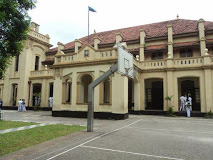 Incident at the Classroom upstairs: One afternoon the Principal clad as usual in his clerical garb, cum gown and cap, walks towards the Class Room upstairs. I follow him and by the time I reached him I heard a CRASH. He kicked at the closed door to open it. But alas! His foot goes right into the glass pane of the door. He pulled his foot back and it comes out bleeding. The door is opened from within . I peep into the classroon and I see one of the students, I think it was Walter......' escape through the window and down the drain pipe to the outside. The students became panicky. I ran back, crying to the Principal's Bungalow and told Mrs.Highfield that the Principal's foot is bleeding. Then a few students entered carrying the Principal in an armchair. I ran back to the hostel to tell the boys what I had seen. Still I remember this and incident as though it had happened only yesterday!
Incident at the Classroom upstairs: One afternoon the Principal clad as usual in his clerical garb, cum gown and cap, walks towards the Class Room upstairs. I follow him and by the time I reached him I heard a CRASH. He kicked at the closed door to open it. But alas! His foot goes right into the glass pane of the door. He pulled his foot back and it comes out bleeding. The door is opened from within . I peep into the classroon and I see one of the students, I think it was Walter......' escape through the window and down the drain pipe to the outside. The students became panicky. I ran back, crying to the Principal's Bungalow and told Mrs.Highfield that the Principal's foot is bleeding. Then a few students entered carrying the Principal in an armchair. I ran back to the hostel to tell the boys what I had seen. Still I remember this and incident as though it had happened only yesterday!
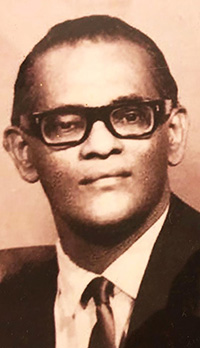 Back at Wesley in 1950 as its resident Chaplain, Mr. C J Oorloff was the new Principal, Messrs K M de Lanerolle and Fred De Mel, the new Vice Principal and new Head Master, respectively, and Mr Shelton Peiris the Master- in - Charge of the Hostel The college S.C.M. was flourishing , with the late Maxwell de Alwis who later joined the Anglican Ministry and Others. A room adjoining the Hostel Dormitory was the Hostel and Staff Prayer Room. After daily morning devotions, a Prayer cell was used to meet regularly and among the boys who joined I remember Herbert Gunaratne, (and his brother) The late Hugh De Silva, Robert Coburn, Ranjith Fernando and N.A.B Fernando - the present Principal. A few senior Hostellers and members of Staff, Henry Rajapakse, D. W. Wilfred and Eric De Silva were the nucleus of a new Wesley Guild formed at Maradana with Ronald Gomes, an old Wesleyite, as general Secretary. The monthly Epilogue over Radio Ceylon continued with the cooperation of a few Senior Hostellers and members .of staff viz. Ivor de Silva and LA Fernando, with Hostel patron Mrs. Hindle, at the Piano. Ranis, if I remember right, was a young man employee of the College even when I was a child in the Hostel. He was a kind sort of person. I found him so , even when I met him in 1950. He was a very honest and faithful employee who loved the College as any one of us. The following Methodist Ministers : Revd. M.S.Fernando, Lynn A. de Silva, and Dr. David K.Wilson served Wesley from time to time. I am now in my 83rd year and will complete it in March 1999. I am so glad to send this little piece and thank the Editor -in-Chief , Mr Shelton Peiris for writing to me to do so. May Wesley proceed in prayer and labour- ORA ET LABORA
Back at Wesley in 1950 as its resident Chaplain, Mr. C J Oorloff was the new Principal, Messrs K M de Lanerolle and Fred De Mel, the new Vice Principal and new Head Master, respectively, and Mr Shelton Peiris the Master- in - Charge of the Hostel The college S.C.M. was flourishing , with the late Maxwell de Alwis who later joined the Anglican Ministry and Others. A room adjoining the Hostel Dormitory was the Hostel and Staff Prayer Room. After daily morning devotions, a Prayer cell was used to meet regularly and among the boys who joined I remember Herbert Gunaratne, (and his brother) The late Hugh De Silva, Robert Coburn, Ranjith Fernando and N.A.B Fernando - the present Principal. A few senior Hostellers and members of Staff, Henry Rajapakse, D. W. Wilfred and Eric De Silva were the nucleus of a new Wesley Guild formed at Maradana with Ronald Gomes, an old Wesleyite, as general Secretary. The monthly Epilogue over Radio Ceylon continued with the cooperation of a few Senior Hostellers and members .of staff viz. Ivor de Silva and LA Fernando, with Hostel patron Mrs. Hindle, at the Piano. Ranis, if I remember right, was a young man employee of the College even when I was a child in the Hostel. He was a kind sort of person. I found him so , even when I met him in 1950. He was a very honest and faithful employee who loved the College as any one of us. The following Methodist Ministers : Revd. M.S.Fernando, Lynn A. de Silva, and Dr. David K.Wilson served Wesley from time to time. I am now in my 83rd year and will complete it in March 1999. I am so glad to send this little piece and thank the Editor -in-Chief , Mr Shelton Peiris for writing to me to do so. May Wesley proceed in prayer and labour- ORA ET LABORA
In recent years something like a revolution has taken place. Informed opinion about the care of children between the age of 2 and 5. Nursery schools has laid a new emphasis upon this period of infancy. A. Gessell, in his book "The Preschool Child" says, "Never again, will the child's mind, character, and spirit advance as in this formative period of growth." Ceylon in the Nineteen Twenties had not shared that measure of concern for nursery children. At any rate the number of schools provided for them were few and far between. I came to know Wesley at the age of eight and entered the lowest grade in the school. Henry Highfield was its Principal, my class teacher was Miss Ludowyke and the Cricket Captain was Vanden Driesen.
Two years later both Miss Ludowyke and I moved over to Royal and she became my class teacher again in that school. The assembly each morning still lingers in my mind. Men like Highfield and Horlar, C. P. Dias, Mack and Honter read short passages from the scriptures and commented on than briefly. The boys sang the hymns lustily to the music played by senior students like Lyn Ludowyke and Victor Abraham. Right from the beginning of school life, the daily prayers reminded us that it was the vital centre of moral strength which was able to maintain life and to perform its mission without imposing standardized beliefs on society. Socrates was not able to define justice without making some assumptions about the gods, and Highfield thought it proper to train the citizens stronger than political or social expediency for rejecting injustice.
In my early years of school life, what impressed me a lot was the general atmosphere of the school and the personal example of teachers. The atmosphere of a school is difficult to define but it was made up of countless acts and incidents and controlled by subtle forces of personalities from the past and the present. Their lives and ideals were mirrored in the school community and by their attitude to the values and personalities dealt with in lessons, and to the problems of conduct thrown up by school life. Incidentally, it was here that I received my first caning from Horlar the disciplinarian for noisy conduct at school assembly. The opportunity of living with other people outside the family circle was team by me first at Wesley, and it furnished type roots from which social life was to grow. The need to be clean and tidy, to respect the order and routine that made the class room a joy and comfort to me and others, was the gentle art taught us by the lady teacher.
Learning to do things for ourselves with Card board, brown paper, light wood, scissors and paste was born out of the rich experience in the Hand Work classes of Earle Schokman. The Intellectual and imaginative exercises that were administered to us in small and large doses by Herman Labrooy and B.C. Perera. Labrooy is no more but B. C. Perera is still with us as a lawyer and is also a member of the choir at St. Michael's and All Angels' Church, Polwatte. Having left Wesley at the age often, my knowledge of Wesley's deeds are vague, but for the lively encounters at Cricket against Royal. The most memorable one was when Wesley lost badly to Royal and Royal totalled one of the highest scores (430) for schools in 1930 on the Reid Avenue grounds. My next association with the school was when I came back to Wesley as Chaplain of the school during the two years 1949 and 1950.
The year 1949 marked the seventy fifth anniversary of the school. At the school celebrations on that occasion, the Rt. Hon. Mr. D.S. Senanayake, (Prime Minister) said : "I stand here to acknowledge my gratitude to such men as Highfield, who infused into me some of those qualities which I hope I possess. " As a Chaplain residing in the school hostel, I began to see Wesley at its best and its influence on the life of the school community, and also its weaknesses. There were spacious building, better furniture, bigger staff, and excellent equipment. But often on reflection the question that cropped up in my mind was, "Has the school progressed?" There was James Cartman, succeeded by Cedric Orloof, and Kenneth de Lanerolle and an able team of staff members, guiding the destinies of the school. There was improvement in the outward paraphernalia, and in many other there was development.
 But was that progress? Over and over there was unredeemable human nature which kept coming in at the junior end of the school and gathering momentum through the years and later pouring out into the larger life outside the school walls into the later pouring out into this was counter- balanced by the forward looking minds of the teaching staff that were ready to reinterpret the old and simple virtues of humility, service, restraint and respect for personality. In this regard, Wesley was in a sense fulfilling the conditions necessary to build a healthy democratic society. It was Lord Lothian who once said in a public address that, "Democracy is a, system that can only succeed where it produces a race of aristocrats. " After a significant pause he said, "An Aristocrat I define as any person who habitually gives more than he receives. " This is the Centenary year of Wesley, and I have returned to it after twenty four years, once again as Chaplain of the school. This time many of the old familial faces are gone. C.M. Fonseka, Eric Gunasekere, Fred de Mel, Eric de Silva and Ranis have passed beyond the veil.
But was that progress? Over and over there was unredeemable human nature which kept coming in at the junior end of the school and gathering momentum through the years and later pouring out into the larger life outside the school walls into the later pouring out into this was counter- balanced by the forward looking minds of the teaching staff that were ready to reinterpret the old and simple virtues of humility, service, restraint and respect for personality. In this regard, Wesley was in a sense fulfilling the conditions necessary to build a healthy democratic society. It was Lord Lothian who once said in a public address that, "Democracy is a, system that can only succeed where it produces a race of aristocrats. " After a significant pause he said, "An Aristocrat I define as any person who habitually gives more than he receives. " This is the Centenary year of Wesley, and I have returned to it after twenty four years, once again as Chaplain of the school. This time many of the old familial faces are gone. C.M. Fonseka, Eric Gunasekere, Fred de Mel, Eric de Silva and Ranis have passed beyond the veil.
The school is under the safe leadership of Shelton Wirasinghe and Dunstan Fernando (both of whom I have known for over a quarter century) along with an able band of teachers. But this time the food and energy crisis is upon us. It is time to pause and think. It is not sufficient for us review the pathway we have travelled through a hundred years, nor is it enough to remind ourselves of the intention of the founders and the builders of Wesley and its traditions. At a time such as this, we ought to be able to read the writing on the wall and note that the present crisis speaks in terms of warning and hope. The human race is so clever, and can plan and predict for the future, or so it thought. But now man is the victim of his own selfishness and arrogance.
Christian schools and institutions, tokens of education and social welfare are no substitutes for what must be the eventual sharing of this world's goods, and the creation of an international life style with the the budget of the world's resources which God has provided. This is a hard and painful lesson to be learnt in terms of cooperation, trust and mutual support. The Christian schools must infuse their life into the world in this gigantic task. They must help to create the cultural and intellectual climate in which nations can realize this sense of humanity. They must raise up men, who share this sense of humanity. They must raise up men, who share this concern, and who can be appointed, to act for the future. This is the significant contribution that Wesley can take for mankind's responsibility, because future history will be decisive. Pray therefore and labour on.
Editor's Note
David Wilson 's early schooling was at Wesley' He Joined Royal College Colombo where he proved to be a brilliant scholar and an athlete of outstanding performance and singular permit. He was Wesley's Chaplain from 1949 - 1950 and again in 1974. The Cartman-Wilson combination resulted in a spiritual regeneration of Christian life of the School. He revitalised the SCM to be a vital shaft and a very sustaining influence. His rapport with students had no gust, yet his leadership was outstanding.
Sago Pudding, ... how I detest the stuff. I positively absolutely loathe the stuff.! Anyone with any intention of trying to force me to eat the stuff will need reinforcements. Now don't get me wrong. I 've got nothing against the lowly Sago whose merits have been extolled by various nutritionists over the ages. My reasons are historical; they go back to the days of World War II . I was in my teens and in the College Boarding at Wesley. Life had been reasonably normal as long as the War was fought in Europe, but once it entered the Asian scene, with the entry of the Japanese into the conflict, things began to turn grim.
It meant the War was on our doorstep and rationing of nearly every commodity came into force. It also meant that hordes of troops of various nationalities - Anzacs, Africans, Gurkhas, British, & Americans were all about the place, getting first preference for whatever was available. If life was grim outside , it was worse inside the school hostel. The major area of dissatisfaction to us growing boys was food. On no account could food be refused, even on a rare occasion. A bad stomach meant an even more detestable dose of castor oil ! Then one day began an extraordinary regime of Sago Pudding and it continued unabated day after day. It meant Sago pudding at lunchtime, at dinnertime and even at late night supper.
 This situation degenerated even further and we were served Sago Pudding even for Breakfast, which was the unkindest cut of all. We had to counter this Sago offensive and called a War council, before we were drowned in Sago Pudding. We then discovered the reasons for this Sago Pudding onslaught. The Boarding Kitchen was in the charge of the Major who conducted and directed all food operations. As mentioned earlier it was a time of dire shortages, and the "Major" was hard put to get his sugar ration on time, and was forced to enter into a nefarious deal which . appeared to be a bargain. When the so-called bags of sugar arrived it was all Sago! and six bags for the price of three ! And mind you a bag was one hundred weight (112 lbs) of sago. At the normal rate of consumption at perhaps twice a week of sago pudding it would have been sufficient for 6 months.
This situation degenerated even further and we were served Sago Pudding even for Breakfast, which was the unkindest cut of all. We had to counter this Sago offensive and called a War council, before we were drowned in Sago Pudding. We then discovered the reasons for this Sago Pudding onslaught. The Boarding Kitchen was in the charge of the Major who conducted and directed all food operations. As mentioned earlier it was a time of dire shortages, and the "Major" was hard put to get his sugar ration on time, and was forced to enter into a nefarious deal which . appeared to be a bargain. When the so-called bags of sugar arrived it was all Sago! and six bags for the price of three ! And mind you a bag was one hundred weight (112 lbs) of sago. At the normal rate of consumption at perhaps twice a week of sago pudding it would have been sufficient for 6 months.
The "Major" reckoned this was far too long to keep the stuff and decided on the Sago Saga. Various methods of combatting this huge dose of Sago was debated which included a protest march to the Headmaster, but were eventually abandoned due to lack of takers. Finally the bright idea of actually "kidnapping" the Sago emerged, and with the connivance of a Hosteller's father's transport, the offending last three bags of Sago were ditched. There was a hue and cry about the sudden disappearance of three bags of Sago, but after a brief inquiry the matter was dropped as it was not uncommon to have break-ins during this time. Thus the Sago Pudding deluge came to an end, and even now the mention of Sago pudding brings out the rebellious side of me !
From Dr Nihal D Amerasekera
Ernest Visvasam was a student at Wesley in the 1945/50 period. He won the Dr Solomon Fernando Prize for Mathematics, Mary Highfield Essay Prize , and passed the SSC in the 1st Division. He then joined the Colombo Commercial Co as an Engineering Apprentice, and was awarded a Scholarship to the UK, to undergo a graduate apprenticeship shop floor training with the Hawker Siddeley Group lasting for two years.This tour included visits to several Manufacturers who were represented by CCC in Colombo. Visvasam is a Chartered Mechanical Engineer, and obtained his full Membership of the Institute of Mechanical Engneers in early 1960. Whilst in Colombo, professionally he rose to become a Director of the Colombo Commercial Company. Ernest was a Vice President of the Wesley OBU. He worked as a Director and Senior Engineer at Colombo Commercial Co and emigrated to Australia in 1974. He worked as an Engineer there until he retired in 1995 after 36 years in the Engineering Profession. He now spends his retirement in New South Wales.
Links to further reading
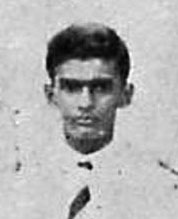 |
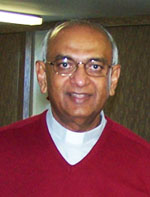 |
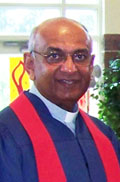 |
I would like to share with you some memories I have of Wesley College in a lighter vein. These off-line events played a significant part in preparing me and perhaps many others for life as only Wesley College could do. These are the gaps in our school careers. These gaps are as significant as things that took place in the normal scheme of things while I was at Wesley College. So, I share them with you.
I joined Wesley College in Standard 2, a few days after the school year had begun. With a monitors exercise book and pencil my father took me to the class where Miss Iris Blacker was teaching English. She set some work for us, and I did my exercise in the monitors book. Soon after submitting it, I heard her ask who submitted the monitors book. I owned up and went forward. She slapped me across my face with it and said that I should have followed her instructions and bought a regular exercise book! That was my initiation! However, about 10 years later I became a Prefect of the College. One day I had to take some Office Notice to the Primary School classes and I walked in to Miss Iris Blacker's class. Seeing me she stopped what she was doing and introduced me to the students: "This is a Prefect, and a Prefect is perfect..." and she went on to give a glorified speech about how much Prefects were an example to the school. Believe me, it reminded me of humiliation I first felt when she slapped me across my face on my very first day in the school, nay, my very first class in school! Of course in later years she and I shared a mutual respect, and I think that she was a terrific lady.
Then when we were in Standard four, our class was in the Vice Principal's bungalow. Nihal Ameresekere (ND) and I shared the front double desk facing the class master's table. Our class master was Mr. Wilfred Wickramasinghe. Once during the short interval, Nihal gave me a playful punch to my face which I ducked and I returned the favour, but Nihal got my fist smack on his lips. That's the age when we had our front teeth shaking and about to fall! I think Nihal's tooth came off and his mouth was filling with blood. Just then the bell rang and Mr. Wilfred walked in. Nihal had no time to do anything, but a small trickle of blood began to pour out of his mouth. Mr. Wilfred feared the worst and thought that I was a thug and took the matter very seriously.
I was never asked to explain my conduct and Nihal was too upset to give an explanation. promptly the monitor, Nimal Sureweere, was asked to take the two of us to the headmaster, "Papa" de Mel. Perhaps he was about to start a class, or perhaps he recognized me. He asked us to meet him during the lunch interval. By this time, Sureweere was trying to point out that since Nihal and I were best friends, he should not have reported me. Nihal was saying that he did not report me, but that since his mouth was filled with blood he could not speak. Any way by the time the lunch interval came both Nihal and I had agreed that we will not meet the Head Master, even though Mr. Wilfred sent us marching to Mr. de Mel's Office. We managed to avoid the encounter and for the next few months we made sure that we came no where close to Mr. de Mel. Many years later when I left school Mr. de Mel was the Welfare Officer. I went over to his office to pay him my respects. He then reached down to his diaries and selected one. Then he opened it and found the place where it was written, that I should have had a caning when I was in standard 4. I grinned and so did he.
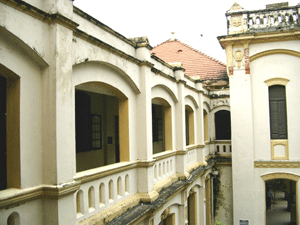
I hated Sinhala kavi. I was in standard five and Mr. S.T. Perera was our teacher. One day I could not recite a particular verse of a Sinhala Kavi. A few others too defaulted like me. Then Mr C.M. Fonseka, the new Head Master came along and we were caned. I took it very badly and I still think I should not have been caned! But such were the ethics of schools then!!
I had another blue day in Form 2. Mr. L.A. Fernando was teaching us and he asked me a question and I gave a silly answer. I was asked to keep standing. Twice more I was asked questions and I just did not get things right that day. Then he came to me and said that I am a G.B. I grinned. He asked me whether I knew what G.B. meant. I said , "Yes, Great bugger." That was too much and perhaps I crossed the line. So I got a good punch on my shoulder and LAFA said "G.B. means 'Gon bas."
Once when there were communal riots in the late '50s, school closed early and we were returning home upstairs in a double decker bus. Suddenly the bus was stopped and some thugs came upstairs looking for those they might assault or harass. Mr. Sethukavala was seated in the front row. One thug saw him and said "you are one of them." At which Mr. Sethukawala stood up thin and tall, removed his spectacles and defiantly said" gahapan." The thug got cold feet and quickly left the bus. We felt so proud of our Physics Master that day.We glowed with pride at the integrity of our Wesley leaders and teachers!
Mr. Lionel Jayasuriya, as I remember him was a fabulous teacher and more than teaching us English, he taught us manners, values and good behavour. He had a way of making learning fun. I came to know him very much as he was our Senior House (Passmore) Master. I believe he taught my father who studies at Carey College. I am happy to have been able to greet him on his 100th birthday this year.
 Mr. N.S.J Fonseka was an angel of mercy. At the 'O' Levels I did well in all subjects except Sinhals, which I failed. Without my asking he met me one day and said that it would be a shame if I could not get my 'O' Levels certificate because of my poor Sinhala grade. So he encouraged me to write a Sinhala essay each week and that he would correct and evaluate it for me. So it was that when I sat that subject the second time, I was able to obtain a Credit Pass. This opened the way for me to continue with my higher studies. I regret that I was not able to adequately express my gratitude to him later in life.
Mr. N.S.J Fonseka was an angel of mercy. At the 'O' Levels I did well in all subjects except Sinhals, which I failed. Without my asking he met me one day and said that it would be a shame if I could not get my 'O' Levels certificate because of my poor Sinhala grade. So he encouraged me to write a Sinhala essay each week and that he would correct and evaluate it for me. So it was that when I sat that subject the second time, I was able to obtain a Credit Pass. This opened the way for me to continue with my higher studies. I regret that I was not able to adequately express my gratitude to him later in life.
I took part in Athletics and Badminton. One year at the Colombo North group Meet, I was mistakenly entered for the 100 meter race, which was not one of my events. I was upset, but I can never forget the way "LAFA" kept on encouraging me to run the race for the College. I did so. I thought I ran a good race and that I breasted the ribbon first because I sustained a cut on my body by it. But when the results were announced I was not among the first three. Again LAFA was by my side saying how I ran a great race, but that in the last ten meters others caught up with me. He taught me to accept defeat with dignity. That was a lesson I learnt for life.
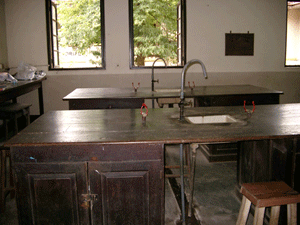
One day while watching a cricket match LAFA was with us and he and I were talking about Big matches. I complained that Wesley did not have a big match and that made us feel inferior. But LAFA immediately pointed out that he is grateful to the foresight of the founding fathers of the College for deliberately deciding not to have a Big match. He reminded me that Wesley College was for the average person and not meant to be elitist. By deliberately not having a big match we had made a significant statement and that is what makes us different and unique among the leading schools of Colombo. I had never looked at the matter in that way. To this day I am grateful to LAFA for giving me a solid reason to feel so proud to be a Wesleyite.
I travelled to school from Nugegoda by train. There would be a rare day when I might miss the train. When I was in Lower IV, once I missed the train and was late arriving in school. That day the prefects not only took down our names, but huddled us all late comers in a class room. Mr. Nonis, our Principal, visited the late comers in that class room. I distinctly felt that he was disappointed to see me, a Form VI student, among several students of much lower Forms. He said to me: "Wijesinghe, if Nugegoda is too far, leave school and join a school over there." I felt so ashamed. So the next day I made sure I was early at school, and I sat at Assembly in a place that Mr. Nonis would definitely notice. Then I was stunned when Mr. Nonis announced that the following boys have been appointed Sub Prefects of the school, and there included among others was my name too. Immediately I understood why Mr. Nonis felt so disappointed to find me in that class room among the later comers!
Usually we spent our small and big intervals in the Biology lab. But now that I was a sub prefect there was duty to be done. The Senior Prefect, Kodituwakku, assigned me and Daya Perera to check the back gate at the end of the lunch interval. The small park was filled with students and as the bell rang, everyone of them returned to their class rooms. Daya and I had never seen the back gate become so desolate so fast. Then Daya challenged me to go for a show to celebrate our appointments as Sub Prefects. I, not being so adventurous was reluctant, but went along with the scheme. We had to walk along Karlsruhe Gardens past the Principal's bungalow and the Vice Principal's bungalow to get to Campbell park and beyond. We managed to do all that and as we came out to the main road near the Children's Hospital, we breathed a sigh of relief. Just then, a car screeched its breaks and it was Mr. D'abrera. He has seen us, and as he went towards Wesley College we saw him ringing his finger at us. It was a disaster and we lost our appetite for a movie. So we went to our homes dejected. The next day, we had to face the music. Mr. D'abrera, our Class Teacher met us and said: "So, you were trying to celebrate. Well, I marked you present." What a break!
When I was appointed captain of the College Athletics team we had some very good athletes, like Morris Mortier, Sarath Wickremaratne, Panchacharam, Thanga Velu, Bashudeen Mohammed, Winslow, Shantha McClelland, Gihan(?) Fernando, Kenneth de Silva and some others whom I do not remember now. But our morale was down because those were difficult days for the College and the Athletics team was not given much support, no special college outfit, "not even a packet of glucose!" and we had to walk it to the Oval. We fared disastrously and at the march-past I carried the college flag. The Chief Guest was Sir Oliver Goonetilleke, Governor General of Ceylon and an Old boy of Wesley. He presented the trophies to the winning teams and then he took a step back to identify from among nearly a hundred flags, the flag of Wesley College. He spotted the flag I was carrying and started walking towards me. My knees buckled and my heart began to race. He asked: "Did not do well this time?" I said: "No, Sir." He smiled, shook my hand and said: "Better luck next time" and walked away. Sir Oliver, by that gesture taught me to hold my head high even in defeat!
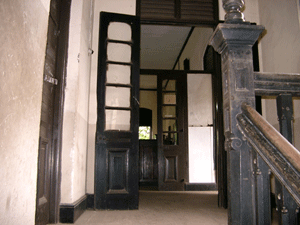 When it came to badminton, the college did not have any funding for this game, but My two brothers and I and P.S.Rodrigo were playing in various national tournaments and making an impact. There were times we used our private supply of shuttlecocks. We entered teams for the Inter-School Tournament for a few years. We had to move away the benches and chairs in the College Hall by ourselves, sweep and prepare the place for "Home" matches, and usually by the time the matches began wer were very tired. But Yet, we won quite a few of those matches. In 1958 I reached my best form and I had entered a national championship at the YMCA. Although I was unseeded I defeated all my opponents and reached the finals where I had to play against P.S. Rodrigo, my Captain at Wesley, For this all Wesley Finals Mr. Edmund Dissanayake, (Prefect of Games), Mr. Swaris (Athletics master) and Mr. Wilfred Wickramasinghe (Badminton master) were present. I felt so proud and I played my best game ever and in my heart I played for Wesley with pride! That was the pinnacle of success for me as a Badminton player.
When it came to badminton, the college did not have any funding for this game, but My two brothers and I and P.S.Rodrigo were playing in various national tournaments and making an impact. There were times we used our private supply of shuttlecocks. We entered teams for the Inter-School Tournament for a few years. We had to move away the benches and chairs in the College Hall by ourselves, sweep and prepare the place for "Home" matches, and usually by the time the matches began wer were very tired. But Yet, we won quite a few of those matches. In 1958 I reached my best form and I had entered a national championship at the YMCA. Although I was unseeded I defeated all my opponents and reached the finals where I had to play against P.S. Rodrigo, my Captain at Wesley, For this all Wesley Finals Mr. Edmund Dissanayake, (Prefect of Games), Mr. Swaris (Athletics master) and Mr. Wilfred Wickramasinghe (Badminton master) were present. I felt so proud and I played my best game ever and in my heart I played for Wesley with pride! That was the pinnacle of success for me as a Badminton player.
My Wesley Days would not be complete if I did not mention the College Choir. I sang mostly under the leadership of Mr. Haig Karunaratne whom we came to love and respect. He was so dedicated to the College and to the Choir. He treated us with respect and as his friends. We had so much fun. Every year we had our Choir Party and Haig would be forced to sing the "Donkey Serenade" and Nimal Sureweere would burst out with his rich tenor voice. In my final year I was unofficially the lead voice of the bass line, but I was convinced that Swan had a better voice. Besides, I could never sing a solo. One Christmas Carol Service at the Maradane Methodist Church Haig would not accept my excuses and insisted that I sang a prestigious bass solo. I was near panic and then used rank and ordered Swan to sing the solo instead. I still remember how stunned Haig was when he brought me in for the Solo and Swan sang instead! Oh, well!! Haig did forgive me.
Mr. Felix Premawardene was the Drama specialist. In my final year Passmore House could not take part in the Inter House Drama competition. Felix would not hear of it and he somehow chose a play and convinced Bashudeen Musafar, Nigel Baptist and I to present Anton Checov's "The Bear." Felix trained us and we performed and our presentation tied for third place with Mr. Premawardene's Hillard House play! But after playing the role of the bear, I got my only nickname in Wesley College: The bear! Actually I did not mind it.
Mr. Charles Yesudian was not only our Zoology Master, he was a father figure to us. I remember the first lecture we had with him. He got us to write two things on the inside front cover page. "All flesh is grass." and "Knowing the better, doing the worse." Having lost my father when I was only 11 years old, I soon leaned on Mr. Yesudian. Soon after leaving school, when I felt called to be a Christian Minister, Mr. Yesudian encouraged me saying that he had observed that I had the correct temperament to be a Minister. So here I am after more than 40 years still grateful to this gentle and patient saint of a teacher to whom I owe so much.
Such are my memories of Wesley College. We were one great family. The staff members were excellent, and went beyond the call of duty to see that we made it through school. No one glossed over discipline, but everyone set a good example and set high ideals for us to follow. Among us students, we were one student body and we were hardly aware of our religious, language and cultural differences: we were a strong brotherhood. And that will always be what Wesley College was to me, "Men of grit and industry."
In a reverie, often, one can catch a glimpse of the days that are no more, and recall no doubt with a tag of nostalgia, the gracious persons who had prayed and laboured in the vineyard of Wesley, perhaps under very trying circumstances In this exercise we recall with a measure of ease them whose names and deeds are fresh, even though many have crossed the bourn. We focus On some of Wesleys past teachers, men of the stature of Eric A. Gunasekera, Old Boy, a solid and sturdy bat just that kind of teacher with the many facets, skilled in English, Latin, Maths, Literature, not the "Specialist" variety R. A. Honter a man with a subtle humour, soft spoken, responsible in his unruffled way, to train many an Athlete, a Sportsman L. S DeS Weeragoda, a fine Maths teacher! N. Victor, a raconteur par excellence, and of Sinhala folklore Mrs. Netta Joseph, mother of Helen and Langston, was another formidable lady who seared the life of us, and infused discipline at our early age. Another group had men like J. L. F. De Mel (Pappa) J. E. De Silva and C. M. Fonseka.
The two "De' s" were always immaculately dressed J. E. De Silva was a rare and a wonderful teacher, he was our "Hand work Sir", modelling, leather work, painting, a hypnotist, a Scouter, who introduced us to the beauty of nature. His stories from Baron Munchausen thrilled us. Ranis fits into the rich rare niche of that period, with his staid stateliness. Another teacher was F. J. Seneratna, a fountain of knowledge mild in manner .
A disciplinarian who used a few sharp words to sour the most vociferous. He was an excellent cricket coach. Nor can we forget in recalling Kenneth De Lanerolle walking upright whistling. A rare gift of a teacher with so many facets, painstakingly planning SCM programmes, involved in Drama, music speech, with a keen and close eye on Wesley's fledgelings, a fine disciplinarian and Administrator. C. M. Fonseka, had a posture and style of his own. He had the habit of spurting saliva through the window - we called him "Spitto' to him went the credit of maintaining a beautiful landscape in and around the School campus, the like of which will never again be seen. Plump and comely Joyce Lembruggen and her name sake Rachel were angelic teachers, with peppery Iris Blacker forming a trio. These men and women including the Rev. James Cartman, and Rev (Dr.) David Wilson, carrying the burden of youth on their shoulders and moulding the crude, immature and soiled to be fit vessels on the very ocean of life. Time moves on.
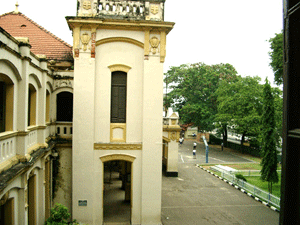 Another group of teachers, no doubt walked inspired in the footsteps of the preceding stalwarts, In some cases even with a deeper stress on sports. Edmund Dissanayaka, of the Cartmen School, stands out .A K.Suppiah was yet another sterling asset. A man of a fine blend of sports and teaching skills. His altruism was outstanding. John Vedanayagama former Batticaloa pupil of Rev. Cartman also made his mark at Wesley. Wesley had her first ever Buddhist (acting) Vice - Principal in no other than Charles Silva, a pint size gentleman who had at all times displayed loyalty and concern. Lionel Rodrigo was yet another example of devotion, who for two years running never availed himself to a single day's leave. One who gave a new image to Wesley's Music and Drama was that all time Maestro Haigh Karunaratna. His talents be sowed brought in a rich harvest drawing near not only students of Wesley but of other Schools as well. Haigh withstood the cascading encomiums because of his sheer humility. Wesley lost him... .L. A. Fernando was yet another rare versatile teacher, steeped in a sacrificial care and concern for his charges. He Certainly mapped out, as a pathfinder, directions, which were followed taking such to great heights, though tragedy hounded him. Yet another teacher of puckish humour was Bertie Van Sanden. Students recall that never a lesson passed without Bertie's Jokes. He often stayed after school with a weak student and helped the lad. A younger teacher was Dr. Frank Jayasinghe. At Wesley he gave of his best and his brawl scope him to be accepted by many International institutions.
Another group of teachers, no doubt walked inspired in the footsteps of the preceding stalwarts, In some cases even with a deeper stress on sports. Edmund Dissanayaka, of the Cartmen School, stands out .A K.Suppiah was yet another sterling asset. A man of a fine blend of sports and teaching skills. His altruism was outstanding. John Vedanayagama former Batticaloa pupil of Rev. Cartman also made his mark at Wesley. Wesley had her first ever Buddhist (acting) Vice - Principal in no other than Charles Silva, a pint size gentleman who had at all times displayed loyalty and concern. Lionel Rodrigo was yet another example of devotion, who for two years running never availed himself to a single day's leave. One who gave a new image to Wesley's Music and Drama was that all time Maestro Haigh Karunaratna. His talents be sowed brought in a rich harvest drawing near not only students of Wesley but of other Schools as well. Haigh withstood the cascading encomiums because of his sheer humility. Wesley lost him... .L. A. Fernando was yet another rare versatile teacher, steeped in a sacrificial care and concern for his charges. He Certainly mapped out, as a pathfinder, directions, which were followed taking such to great heights, though tragedy hounded him. Yet another teacher of puckish humour was Bertie Van Sanden. Students recall that never a lesson passed without Bertie's Jokes. He often stayed after school with a weak student and helped the lad. A younger teacher was Dr. Frank Jayasinghe. At Wesley he gave of his best and his brawl scope him to be accepted by many International institutions.
Three of Wesleys stalwart teachers were hugged into St. Thomas' sub- wardens Frank Jayasinghe and the recent third that fine teacher and counselor Daniel Pakianathan, who was on the staff of -Wesley for 31 years, is now the St. Thomas "Paki' as he is responsible for a resurrection of rugger at Wesley. On the frequency of Sports one cannot forget Old boy Nimal W. DeSilva who joined the staff in 1970, he endeared himself to the students. As a teacher his work was exemplary. Nimal, as the Master -in -Charge of Cricket, has always displayed tact and efficiency in matters of complexity He was always the last to leave the Pavilion, though he, travels from distant Gonawela. Well done Nimal! Bandula Waranapura that staunch Nalandian is another great asset in Wesley 's cricket. Be certainly is a dynamo generating much enthusiasm. In buttonholing a few of that vast company of loyal Old Boys you will be mindful that the limitations of space fences us.
Taking our mind back to the Centenary year we attempt to recall men of the' fibre of B.J. Karunatiileke. He gave of his best the resounding success of the Centenary Banquet, the 100 Diners lay out, won modest Karu a big hand of applause. Nor can we forget Wesley's source of perennial help Lou Adihetty, certainly a gracious and constant help in need. Lou's interest in Wesley was long before he even thought of Principal ship-long long, before! His concern perennial. God bless you Lou!. The 125th Celebrations has in display a conglomeration of Old Boys of different age groups. No doubt the various committees are drawing from these vital group; We are mindful of the Overseas members and their. unhedged Support. In this exercise of Button - holing, an older group and a not so old group register their activities J. C. P. Wickramanayake, taking the cue from Mrs. Mary F. Highfleld (nee Ledger) who compiled the first ever Old Boys' Register, also compiled, with the assistance of Amara Dissanayaka (wife of Edmund) quite a volume, which now cannot be traced S. Sivaruban brought out a Directory Shimal Thaha, functioning as Coordinator OBU directory is busy on a new Directory.
 Its no fun keeping the Secretarial functions moving with a rapidly growing membership. Here outspends burly and robust Tyrone Maye, with cherub, face and robot mind! Well done Tyronne. Kadir Ishak a certainly an able lieutanant. Another group falls into the Dr.Kalinga Mudali category - P. Jeyaratnam, Ranjit Cooray Eric Gauder, Sam Soundravel, Parakrama Wijemanne. and none can forget either unobtrusive Wilhlem Vandort a veritable sheet anchor. Tracing backwards we record the deeds of Rajah Sinnathuray, particularly in the grim early eighties, keeping the funding pipe - line of the Welfare Society trickling. Of Rajah's stature was another conscientious OBU President P. B. (Cuiya) Herat. His term of office was fraught with much judicious Sense. Our next trio is certainly men of stature. Ranjit Abeyedeera is in a class by his own, though. Exposed to unwanted prejudice, in College he sprinted out, on leaving school to shine his best captaining the SLAF rugger team. Under his leader - the Airmen were a formidable side. With all the vicissitudes Ranjit always stood by his Old School. The next pair, is indeed a very helpful pair. Heard even before they are seen!. Vivian Jayaweera and Lasantha Fernando, rugged and robust, Characteristically transparent-outspoken and practical. To Lasantha's credit goes largely the planning of the College Chapel. This is but a cross -section of Old Boys with many others contributing their best often unseen and unsung. Rienzie.T Wijetilleka has quite deservingly been featured in this issue.
Its no fun keeping the Secretarial functions moving with a rapidly growing membership. Here outspends burly and robust Tyrone Maye, with cherub, face and robot mind! Well done Tyronne. Kadir Ishak a certainly an able lieutanant. Another group falls into the Dr.Kalinga Mudali category - P. Jeyaratnam, Ranjit Cooray Eric Gauder, Sam Soundravel, Parakrama Wijemanne. and none can forget either unobtrusive Wilhlem Vandort a veritable sheet anchor. Tracing backwards we record the deeds of Rajah Sinnathuray, particularly in the grim early eighties, keeping the funding pipe - line of the Welfare Society trickling. Of Rajah's stature was another conscientious OBU President P. B. (Cuiya) Herat. His term of office was fraught with much judicious Sense. Our next trio is certainly men of stature. Ranjit Abeyedeera is in a class by his own, though. Exposed to unwanted prejudice, in College he sprinted out, on leaving school to shine his best captaining the SLAF rugger team. Under his leader - the Airmen were a formidable side. With all the vicissitudes Ranjit always stood by his Old School. The next pair, is indeed a very helpful pair. Heard even before they are seen!. Vivian Jayaweera and Lasantha Fernando, rugged and robust, Characteristically transparent-outspoken and practical. To Lasantha's credit goes largely the planning of the College Chapel. This is but a cross -section of Old Boys with many others contributing their best often unseen and unsung. Rienzie.T Wijetilleka has quite deservingly been featured in this issue.
This brief process will be unbalance without his name, as well as that great Wesley gentleman Clive De Silva, whose time, energy, expertise and funding strategy are unsurpassed working with his dauntless staff. Then who in his senses could ever forget our dear friend S. Renganatha the burdened Hony OBU Treasurer. His methodical system, the load be bears stands out.! Nor can we forget the yeomen service rendered by no other than O. K. Hemachandra a keen sportsman, who by sheer dint of pervasion and honest hardwork has been elevated to the high rank of Deputy General Inspector Police and who functions also as Ombudsmen, We congratulate him. On the frequency of Old Boys attaining heights in the police, we also have in mind (Retd.) DIG. B. N. Juranpathy who is in the forefront of progressive thinking for the OBU's welfare. Jehan K. Cassiin, who had held many responsible positions in the State has never taken Wesley off his chest. He was a strong though silent arm who adroitly steered men and malters in the College playground project. Jehan's father M, K. Cassim Captained the invincible Cricket XI of 1910. We reproduce the facsimile of his school leaving certificate issued by the Rev. Highfield.
We change style in this exercise of button - holing, and offer a bouquet to plump and comely Cynthia Jamie not forgetting either all those wonderful people in the College office, including mere spirit than - flesh Marshall Perera Before we put down the shutters on this "here, there and everywhere" ramble, a few other names flit across. Richard Dwight with scroll and pen, those men of vision, well on the right track, as that unique refurbished railway carriage, have made history in establishing the OWSC to stand on solid ground. President Mahroof Ismail, Denzil Perera and now LRG have both the brains and brawn in this venture, not forgetting those painstaking old boys whose doughty deeds have gone on record. Then incumbent OBU President Halim Ishak stands out for his benevolence even to fault. DS Wijemanne was yet another gracious person. On this last stint we comment On yet another of Wesley's tycoons none other than that gracious man from his pharmaceutical empire Mervyn K Peries. He pioneered the now well established Christmas party. The Tea Party on the 2nd of March is another of his innovations.
Our Friends from The Republic of Maldives
April 26, 2001 Wesley College, Colombo - OBU branch, Republic of Maldives Wesley Hostel was home for a group of Maldivian students who featured prominently in most College activities. Those I remember during the period 1960 to 1968 were, Ahamed Imad, A. Nazeem, M. Shihab, S.Rasheed, M.Naieem, and A. Azeez . As they were in the college hostel, by default they were loyal to Moscrop House. All donned the double blue scarf as members of the (Wesley College) 14th Colombo Scout Troop. Imad was Troop Leader and earned the much coveted Queen Scout badge. On his return from his higher studies in Egypt, he was appointed as Scout Commissioner of Maldives, after serving many years as a Senior Scout Master. Now he is a prominent icon in the tourist industry, the country's biggest Industry. S. Rasheed continued his studies in Egypt and now a Director of Examinations in the Ministry of Education. Both Imad and Rasheed were excellent field hockey players and represented the School. Naieem who was a College Prefect and represented the school at soccer.
After completing his studies at Wesley he proceeded to Australia, where he qualified as a Pilot. He skill in the aviation industry earned him the prestigious and responsible position as Director of Civil Aviation in the Republic of Maldives. Nazeem, Azeez and Shihab were outstanding soccer players. After leaving Wesley they all completed higher studies in overseas and now hold key positions in the government. All of them were loyal and proud Wesleyites. Wesley would remember them as outstanding sportsman, great ambassadors of their country, exceptional students, well disciplined, absolutely courteous, supportive classmates, brothers in the hostel, congenial and loyal friends. We will expect more news directly from them in the near future. Wesley: As I remember by
Internationally renowned Hockey Umpires
Shanti McLelland - Article 2. April 26, 2001 (a) Wesleyites who excelled as Hockey Umpires in Sri Lanka. Mr. Walter P. Jayasuriya was the first International Hockey Umpire from Sri Lanka. Mr. Jayasuriya was instrumental in leading many Sri Lankan umpires to become International hockey umpires. Mr. Walter Jayasuriya's role in Sri Lanka's hockey for over 50 years is a feat that will never be matched by anyone else. His dedication to the game and the welfare of the players was invaluable. Wesley should be proud of Mr. Walter Jayasuriya for the contribution to Wesley Hockey. Mr. A. Mylvaganam former Wesley Captain and Sri Lankan Hockey player was the next. Mr. Mylvaganam was an outstanding hockey player would be always remembered as one of the best Sri Lankan players that could have matched any in the world for artistry, technique and power.
Mr. Sri Rohan Amarasinghe was the third International Hockey Umpire from Wesley. Mr. Amarasinghe captained Wesley in 1967 and represented Sri Lanka in 1975. Had the distinction of being nominated by the International Hockey Federation to umpire at the World Cup Tournament in Lahore, Pakistan. Rajah Jayasuriya, Donald de Silva, and Adrian Wickrameratne were Grade 1 National Umpires. Mr. M. Patrick Edema, and Mr. A. K. Suppiah, were Grade 1 umpires in the Sri Lanka Schools Hockey Umpires panel. Mr. Suppiah served as an umpire of the Colombo Schools Hockey Association for many years and was one of the most respected umpires of the Sri Lanka Schools Hockey Federation. (b) Guardians of Hockey at Wesley Messrs. T.N.M. Mahamooth, Mervyn Peiris, and Walter P. Jayasuriya were at the helm of Colombo Hockey Association, while Mr. Mylvaganam served in the Government Services h Hockey Association.
They inspired and spearheaded Colombo H.A. to become National champions many times. Mr. Jayasuriya was instrumental in negotiating Sir Lanka's participation internationally. All four were stalwarts and influential members of the Sri Lanka Hockey Federation. Mr. Walter Jayasuriya will be remembered as the father of Hockey in Sri Lanka. Also, he was a highly respected official in Asian Hockey. They inspired and contributed greatly to Wesley Hockey. Mr. Adrian Wickremaratne was Secretary of the Colombo Hockey Association for many years. Mr. Amarasinghe served as Chairman and Rajah Jayasuriya as a council member of the Sri Lanka Hockey Federation Umpires Committee. Mr. D.S.Wijemanne was a strong supporter of the champion OWSC hockey team during the glorious 1971 to 1974 period.
I would take this opportunity to place on record the services of Mr. T. G. Amith who coached school team for many years and was an honorary official of the Old Wesleyites Hockey Club. (c) Wesley Staff who guided the formidable Hockey Teams from 1960 to 1990. Messers. Fred Abeysekara, N.A.B.Fernando, L.A. Fernando, and A.K.Suppiah. · Wesley produced some excellent hockey players under Mr. Fred Abeysekara. Mr. N.A.B. Fernando took over to continue with the tradition. I still vividly remember 1965 when Mr.Fernando managed the Colombo North hockey team to become National Champions in both the senior and junior divisions. Rajah Jayasuriya captained the Senior team.
In 1966 Mr. L.A.Fernando took over the responsibility ensuring Wesley's dominance in school hockey. In 1966 we maintained an excellent record, while in 1967 under the captaincy of Rohan Amarasinghe Wesley maintained its champion status. After 1968 Mr. A.K.Suppiah held on to the reins of Wesley hockey for many years. Without exception all four served Wesley hockey with a passion and made it a point to instill all the qualities of sportsmanship while producing cohesive and formidable Under 19, 17, 15 and 13 teams over a period of 30 years. Wesley:
Judo Champions from Wesley
As I remember by Shanti McLelland - Article 3. April 26, 2001 Wesley College Judokas Wesley produced some of Sri Lanka's best in Judo. We were well represented in the YMCA and YMBA national teams. M.C.A. Cader, Asoka Jayawardane, Y. Chang, Basnayake, and Sextus Taylor were active participants at National Level. Chang, Asoka, and Cader were black belts. They were national champions in different weight classes and belt grades. A.M.Mohideen, Vijith Kuruppu, and Ranjit McLelland were the first to start off in 1960 from the Colombo YMCA Gymnasium. Vijith Kuruppu excelled at nationally, coached both locally and internationally.
Please accept this invitation to write in the: As I remember series. (All names appearing in the articles will be a source for the Wesley College OBU Register) Wesley:
3. As I remember series Wesley College Basket Ball
4. Wesley College Badminton
5. Wesley College Scouting
6. Wesley College Table Tennis
7. Wesley College Boxing
8. Wesley College Swimming
9. Wesley College Drama
10. Wesley College Debating Teams
11. Wesley College Choir
12. Wesley College Hostel
13. Wesley College Small Park
14. Wesley College Tennis
15. Wesley College Volley Ball
16. Wesley College Prefects Guild
17. Wesley College Physics Lab
18. Wesley College Chemistry Lab
19. Wesley College Botany & Zoology Lab
20. Wesley College Sick Room
21. Wesley College Tuck Shop
22. Wesley College Prize Day
23. Wesley College Sports Meet
24. Wesley College Colours Nite
25. Wesley College Double Blue Fate
26. Wesley College PTA
27. Wesley College Welfare Society
28. Wesley College Highfield Block (1960) 29. Wesley College Cartman Library
30. Wesley College Soccer (each age group)
31. Wesley College Cricket (each age group)
32. Wesley College Hockey (each age group)
33. Wesley College Track & Field
34. The Principal's Bungalow
35. The Vice Principal's Bungalow
36. Wesley College Tutorial Staff
37. Wesley College Support Staff
38. Wesley College Hostel Staff
39. Wesley College Office Staff
40. Wesley College Ground Staff
41. Wesley College Music, Art & Kandyan Dancing
42. Wesley College Double Blue Ball
43. Wesley College Social Service Club
44. Wesley College Photography Club
45. Wesley College Radio Club
46. Wesley College Hall & Balcony (High Teak Roof, Stained Glass panes)
47. Wesley College Flag & College Motto (Add more captions as you may remember)
WESLEY COLLEGE OBU PROJECT TEAMS We will use this information to invite Old Wesleyites to be group leader. Each group leader would form his team. Each team should come up with a specific idea or venture to help Wesley College. (Please fill in with your comments and ideas).
Project ideas:
1. College Computer assisted Essay Writing Competition
2. College Spelling Bee Competition
3. College Inter House Sports Meet
4. College Inter House Drama Competition
5. College Choir and Christmas/Wesak Carols
6. College task force to improve number of University entrants
7. College task force to improve A/L results
8. College task force to improve O/L results
9. College Sports Teams
10. College Buildings & Architecture

I was at Wesley 1950-62. Intervals were our respite from the sweat and toil of the classroom. Street vendors were an integral component of our school lives. As distributors of affordable goods , they provided us with cheap and delicious food and formed a vital part of the social and economic life in our neighbourhood. Street vending as an occupation has been around for hundreds of years .
There were 2 groups of tit-bit sellers who sold their delicious goods in the 'small' and lunch intervals. Some were at the back of the school and the others by the front entrance or sometimes lining the front driveway. At the back near the small park it was a mini food market, beneath the lush green canopy of "Andara" trees. With the vendors battling for custom the noise was deafening. It wasn’t elegant or pretty but was functional and useful. They had to compete with Wijemanne's official "Tuckshop" which sold traditional stuff like fish buns, patties and the ever popular milk tea. He had the backing of the establishment. Purasandha Cafe next door to the school, on Baseline Road, sold "Thosai and sambar " a more substantial meal popular amongst boarders on Sundays although strictly out of bounds. Thus the consumers had a good and varied choice. There was an oldish man at the back who sang a song "come on buy baby nice pineapple and pol toffee”. He had a large tin full of the best toffees which he balanced at the back of his bicycle. His sweets stuck to the teeth and were just delicious. I kept some in my pocket which often melted in the afternoon heat. The black Bulto's were boiled sweets which took an hour to suck and the boarders sucked half of it and kept the rest under the pillow for a 'rainy day'.
 Alerics Ice cream van often arrived on time to Karlsruhe Gardens and the deafening noise of its engines were an adequate advertisement of its presence. Ice creams were expensive and were for the rich kids and for special occasions.
Alerics Ice cream van often arrived on time to Karlsruhe Gardens and the deafening noise of its engines were an adequate advertisement of its presence. Ice creams were expensive and were for the rich kids and for special occasions.
Bombay mutai" seller was not a regular but had brisk business selling the beard like flowing strands of sugar often gorgeously coloured. A very popular favourite of the boys indeed. I was a hungry boarder then, always broke and scrounging from the day-boys.
Amidst the food fare was the ever-popular Stamp Tuan who sold first day covers and colourful stamps from the world over. The stamps didn’t come cheap and he gave no credit – strictly cash only. He had a pleasant manner and a brisk sale. He pulled his magnifying glass to check for any damaged edges. The bargain bucket of world stamps were the peoples favourite which got cheaper nearer the end of the interval. He smiled often to show his betel-stained teeth. I can still picture him handing over an absolute bargain of common stamps to an unwary kid. They all had to make a living!!
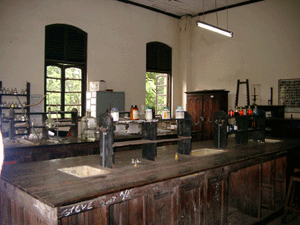 The achcharu ladies were mother and daughter duo. They had big bosoms which were well aired by the low neckline. Sometimes coins dropped into the deep gully never to be found again. Occasionally they sold their goods side by side but mostly one was in the front of the school. They had some lovely "veralu achcharu" or "pineapple achcharu" seasoned with a topping of chillies. They also sold seasonal fruits like pineapples, galsiyambala, mangoes, all kinds of berries (lovi) and custard apple and wood apple. The "Kadalay" man was popular too. He had "Bola Kadalay with fried coconut" and "taste Kadalay" sprinkled with salt and chillies. His peanuts were the best in the world and came wrapped in old Wesley College examination papers. Prawn "vadeys" and "Masala Vadeys" were a crowd puller and those unfortunate enough to bite the chilly inside went hopping to the water tank opposite the sick room to ease the pain.
The achcharu ladies were mother and daughter duo. They had big bosoms which were well aired by the low neckline. Sometimes coins dropped into the deep gully never to be found again. Occasionally they sold their goods side by side but mostly one was in the front of the school. They had some lovely "veralu achcharu" or "pineapple achcharu" seasoned with a topping of chillies. They also sold seasonal fruits like pineapples, galsiyambala, mangoes, all kinds of berries (lovi) and custard apple and wood apple. The "Kadalay" man was popular too. He had "Bola Kadalay with fried coconut" and "taste Kadalay" sprinkled with salt and chillies. His peanuts were the best in the world and came wrapped in old Wesley College examination papers. Prawn "vadeys" and "Masala Vadeys" were a crowd puller and those unfortunate enough to bite the chilly inside went hopping to the water tank opposite the sick room to ease the pain.
The old man at the front gate sold milk toffees with coconut aptly called the Toffee man or "Toppa". He was a tall dark figure with completely white hair. He had the biblical withered hand. I believe he had leprosy. Of course it is too late to complain about the health hazard. As there were many vendors at the back of the school, arguments and fights amongst them were not uncommon. The choicest language was used to gain the upper hand. Nevertheless they provided a service to the starving boarders and the hypoglycaemic day boys who wanted something different and cheap. Against all advice, both parental and school, we all ate these foods sold in the open shared by flies and bacteria.
I cannot recall any serious tummy trouble. The benefits were mutual and unknowingly we gave these vendors a livelihood. They sold their goods on credit to be settled on boarders pocket money day - Friday. The vendors were in full force at Campbell Park when the cricket was on. The long hours of hunger during matches put us seriously into debt. The tit-bit sellers were a part of our school community and a lavish part of our school memories. May God Bless them all who are now long gone to the vale beyond.
PSST!!! I didn’t mention we saw the seniors who went to the Thamby Kadey for a quick fag during the intervals – lest the prefects read this note.
Addendum by Shanti McLelland
The stamp Tuan was another icon. Nice, bombai muttai, and sanchol muscat were a few others. I liked the galsiyabala, ramubuttan, and mora days. The woodlands ice cream van used to compete with Alerics which was the better one. The boiled chick peas and Pineapple with chillie, salt, & pepper were just yummy. The cheap ones were peanuts, konda kadala, and parrippu gram. The prawn vadai was great. Yes I can remember all of the faces at the front and back-end of school. Probably a good x-ray may show all of the stuff that did not digest. On no cash days the Anadara trees at the edge of small park facing Nalanda supplied the bean cods. Golden memories & Silver tears
More recently taken from the Sri Lankan papers:
Wesley College, Colombo was well known for that elderly bucksome woman called "Thara Biju" who sold varieties of fruits achcharu and other tit bits outside the school gate. Thara Biju was her nickname given by the boys because of her personal looks. But if she heard that name being mentioned she would come out with her own vocabulary only for a few moments and quickly forget it and continue with her business. Her favourite customers were given credit facilities. Associated with Thara Biju on cricket match days at Campbell Park was a "dwarf old couple who were popularly known as the "Kurumitto Joduwa". They were a husband and wife combination both about almost four feet in height. The dwarf couple and Thara Biju enjoyed a flourishing business at Campbell Park on match days as they also catered to students of All Saints’ College, Borella.

My school life at Wesley began in January 1950 when I stayed with my Grandparents in Nugegoda. My uncle Neville Weerasekera (an old boy of the school) showed me the ropes how to buy the ticket and get to school. Some had season tickets but I preferred to buy them daily. Nugegoda was then a small town with a few vehicles on the road. The Railway station was painted grey and had a picket fence as they all do. It had a characteristic smell common to all stations in those days of steam trains.The Seth Thomas pendulum clock was the hallmark of all Railway Stations. At the station was the stationmaster with his white suit and cap. There was a constant tapping of morse code at the station. Coal dust was everywhere and got into the eyes, nose and mouth. The train puffed and hissed and came to a halt when we all got in. This was the 7.17 from Nugegoda reaching Baseline road at about 7.55 giving us 20 minutes to get to Wesley before school began. There was a crowd of students travelling. Rohan, Prasanna and Nimal Wijesinghe, W.A.K.Silva and his brother Ranjit. Ranjit and Vernon Kulatunga. Asoka De Silva from Udahamulla and N.M.perera and his brother.
There was great camaraderie between the travellers and we helped each other and chatted a lot. Once at Baseline road Station we went up Cattle Mart Road and then to Baseline road towards school. Often we met boys cycling to school and recall Ivan Bowen on his bike. The twins Yrol and Garreth Jayawardene walked passed us followed by their ayah. Its a long journey past the Mount Mary Railway Housing Estate. All those upstair houses were painted grey too and had the picket fence. The return trip was more leisurely as the train was at 3.56pm. We often stopped to watch cricket at the Railway cricket grounds or played marbles at the station compound. One cent coins were placed on the track to see them get flattened. Mr.Kanathigoda was the Stationmaster at Baseline Road for many years . Both his sons Neville and Ivan attended Wesley. W.A.K.Silva after an Engineering degree joined the CGR and rose to become its General Manager.
Many Wesleyites lived in the Mount Mary Estate and their dads worked in the Railway and I felt it would be a walk down memory lane to trace the history of the famous KV line, in brief.
From the daily papers:
The broad gauge Rail system built by the British, began operating in 1864, initially from Colombo, Henerathgodde (Gampaha) and to Ambepussa. Kandy was reached in 1867. 1925-40 was the peak of railway development. Most of the system is Broad Gauge at 5'6" with diminishing bits of Narrow Gauge at 2'6" (Dual Gauged since 1991). The system was known as the Ceylon Government Railway, as of late it is referred to as Sri Lanka Railways.
News 100 years ago: Sir Joseph West Ridgeway becomes the first Governor to "dare to beard all the lions of the Kelani Valley collectively assembled in their dens" when he accepts an invitation to be the chief guest at the Kelani Valley races and gymkhana. It is an annual event held at Talduwa where the planters gather for three days of fun and merriment. Replying to the toast proposed at the breakfast, the Governor has some interesting things to say about the planters. "I had heard so much of you gentlemen, of your pugnacious habits, of your inveterate hatred of all Governors and constituted authority. I was also told that you were misogynists, in other words, women haters.
Evidently that is a libel." Elaborating further on what he saw as features of the planters, he added: "The fact, gentlemen is that you do not seem to me to be lions at all. You seem to be lambs. However, if you are lions, you are not the savage famished lions ready to devour anybody who comes your way, but you are well-behaved, well-fed lions bursting your skins with hospitality." Having made his speech amidst roars of laughter, the Governor finally announces a gift to the planters - the Kelani Valley railway. The construction of the Kelani Valley railway has begun. The terminus of the line has been fixed on the left bank of the Kelani river opposite Yatiyantota.
Planning began in July 1897 when the cost was estimated at Rs 57,546 per mile or Rs 2,877,000 for the whole line from Colombo to Atulugama with an extension to Yatiyantota and a branch line to Ruwanwella. The branch line was abandoned later. The annual profits from the railway line is estimated at Rs 150,000. The Kelani Valley is a light line of 2 ft 6 in gauge (as against 5 ft 6 in on main track lines) and is for the benefit of the planters in the tea country directly east of the capital. (Note: The Kelani Valley line was opened to Avissawella, 36 3/4 miles in 1902 and completed to Yatiyantota, a further distance of 11 miles in the following year. Later it was extended up to Opanayake).
Technical matters:
Another popular alternative was almost any train on the mainly steam-hauled narrow guage Kelani Valley Line between Colombo and Opanayake..now sadly upgraded to broad guage.(1991)..with a section closed down. This railwayline employed some interesting locos from narrow guage coal-fired Beyer-Garratts to Hunslet diesels..! and ran through some of the busiest suburbs of the City of Colombo such as Baseline Road, Cotta Road, Narahenpita, Manning Town, Kirillapone and Nugegoda. A number of manually operated level crossings in and around Colombo considerably impeded the progress of trains on this line.The trains travelled at a leisurely 10 MPH. Purists would argue that the Kelani Valley line was THE Love Train. There were no toilets on the trains. Not surprising.. It has been said that if you are travelling in one of the front carriages, you could actually jump off the train, have a trackside pee and jump back on the last carriage! Well away from Colombo the gradient in some places was in the order of 1 in 22 thus explaining the need to employ Beyer-Garratts.
At Sri Lanka's Royal Colombo Golf Club, founded in 1879, the intrusion comes not so much from people as from passing trains. Four holes are traversed by the Kelani Valley steam railroad; golfers are advised to give way. A free drop is permitted if your drive lands on the tracks. Weekdays $27, weekends $38.
History of the Kelani Valley Railway By K. G. H. Munidasa
The Kelani Valley Railway, popularly known as the K.V. line, holds a unique place in the 139-year long history of the Sri Lanka Railways. As a safe and cheap means of transport the K.V. line played an important role in the socio-economic progress of the country. Sir Joseph West Ridgeway, British Governor of Ceylon (1896-1903) is best remembered for his progressive policy of developing the island's railway, introduced the K.V. line, 95 years ago, which he named the Kelani Valley Sabaragamuwa Light Railway. The European planters in the Kelani Valley and Sabaragamuwa have been agitating for a railway since the successful completion of the railway to Kandy, in 1867. Then in February 1894 a deputation from the K.V. Planters' Association (then entirely British) met the Governor Sir Arthur Havelock (1890-1895) and submitted a memorandum urging for a railway to the Kelani Valley. This resulted in the appointment of a commission to investigate and report on the feasibility of constructing a railway extension from Veyangoda to Dehiowita. The report, the commission submitted was favourable to the proposed railway.
However, the government soon found that a railway on the route was not possible due to jungle and the difficult terrain, and instructed the Chief Resident Engineer, F. J. Waring to inspect the country between Colombo and Karawanella and suggest a fresh route for the proposed railway extension. The report he submitted on February 18, 1895 proposed a route from Wellawatte via Mirihana, Pannipitiya, Pitipana, Padukka, Waga, Kosgama, Avissawella, Atulugama, Ruwanwella. After the survey was completed and estimates were ready, the Secretary of State approved the construction of the line on April 27, 1898. It was decided that Minhana (presently Nugegoda), Pannipitiya, Padukka, Waga, Kosgama, Avissawella, Dehiowita, Karawanella and Yatiyantota should be the stations on the line.
The construction commenced on March 22, 1900 and the first phase up to Avissawella was completed on September 15, 1902 and Avissawella to Yatiyantota section was opened for traffic on September 13, the following year. The distance covered was 48 miles 40 chains up to Yatiyantota and the total cost, including the rolling stock, was Rs. 54,33,679. On representations made by the planters and the inhabitants of Sabaragamuwa to the colonial government in 1900, the Governor Sir Henry McCallum (1907-1913) initiated steps to extend the railway to Ratnapura from Avissawella. Accordingly, construction of the Ratnapura extension was started in November 1908.
The line was opened for traffic up to Kuruwita on January 15, 1912 and to Ratnapura on April 17 the same year. It was further extended beyond Ratnapura to Opanayake via Dela, a distance of 86 miles, and the regular train services from the Colombo Fort railway station were formally commenced on May 2nd, 1919. At the beginning, the K.V. line locomotives and rolling stock were of entirely British make, which included steam-tank locomotives built at the Hanslet Engine Works in Leeds. These were in service to the last alongside the subsequently introduced German and Japanese diesel locomotives. The operational records of the CGR show that the K.V. railway had been very popular during the Sri Pada season and in view of the extra pilgrim traffic, there "Sentinell'' steam rail cars were introduced into service on July 18, 1927. One of them viz V2 331, built by Sentinell Steam Rail Car Manufactures of U.K. (the oldest in the world) is still preserved at the Dematagoda Engine Sheds. The Kelani Valley railway at the height of its glory hauled loads of freight, race horses to Avissawella for the Talduwa race meets on the weekends and a full complement of passengers.
One may still recollect the crowded day train on the K.V. line which left the Colombo Fort station at 9 each morning with goods and passenger coaches, reaching Ratnapura at 3.30 p.m. and Opanayake at 5.30 p.m. However, sometime after the 2nd World War the K.V. line began to decline and the government was forced to close the section from Avissawella to Yatiyantota from January 1942. The actual degeneration of the Kelani Valley railway came about in the late sixties due mainly to the growing competition from road haulage contractors who monopolised the tea, rubber and coconut trade. Meanwhile, passenger revenue too, decreased, resulting in lower investment by the state to improve and develop the line. Finally, in the mid - '70s the decision was taken to close the K.V. railway altogether. First the section from Ratnapura to Opanayake and then the Avissawella to Ratnapura section were dismantled. The last train of only three coaches ended its run at the Ratnapura station in July 1976.
Fortunately, further dismantling of the track was stalled in 1977 and two years later in response to public agitation train service was resumed between Colombo and Avissawella.
The broadgauging program of the K.V. line as a step towards improving and modernising the train service was launched by the Railway Department on February 15, 1991. A novel concept in engineering adopted in the design of the new track was the laying of a third rail so that narrow gauge as well as broadgauge traffic could be accommodated in the same track. Broadgauging the track was completed up to Kosgama last year and regular train service commenced from October 28. The final 12-mile lap to Avissawella including renovation of the station, is now ready and will be opened by the Minister of Transport and Highways, A. H. M. Fowzie Monday.
Memories of the KV Train journeys by Rohan Wijesinghe
Photo:
 |
 |
 |
Yes, the 6.55 and the 7.17 comes to mind. Those were the usual trains we took from Nugegoda to travel to school. If we missed them there was the 7.47 or the 8.20. But that would mean, we would be late to school and get detention from the Prefects. Usually these trains were very crowded. But there was Mr Thome (or Tom) who would be travelling from a point before Nugegoda and it was fun to travel with him. Several of us would jump into his compartment. There was also another gentleman who got in at Nugegoda. His name evades me just now. But he lived on Railway Avenue. Their yarns and stories helped build a sense of club among us and travelling to School was certainly fun. If for any reason any of us missed the train, then we were fined a bulto or some other thing. Returning home, we would catch the 3.45 from Base Line Road. As school was over at 3.15 p.m. we would often have time to watch a cricket match in the Railway Grounds near the station. What stands out is the white haired Mr Tissarachchi who was a good bowler. At his age he really bowled many overs. Getting into the train was often a scramble as groups of students from Wesley College, Ananda College and Nalanda College and some times St. John's Dematagoda would compete for corner seats. So we were in the habit of jumping on to the footboard before the train actually stopped Of course it was very rarely that students of two schools would be in the same compartment. Once Nihal de Silva, a fairly stout Wesleyite missed his footing and fell and his long hair was run over by the wheels of the train, but miraculously his head was safe. After that incident we were a little sober about jumping in to the train before it stopped.
 Once when coming to school, as the train was coming to a halt at Cotta Road, some people were in a hurry to get to the door. As the train was so crowded the doors were open and some were on the footboard. One of our students was standing on the open doorway, and he got pushed out. he fell and his feet went inwards under the compartment, and i believe he lost a few toes. He is now an Anglican priest and his elder brother is a Doctor!! But when passing through the golf links near Manning Town the train would slow down so much that some of us were in the habbit of jumping off and then again jumping on to the train. We were so oblivious to the danger of what we were doing as teenagers, because caught up with the thrill of being reckless. Once or twice groups of us would set off walking to Nugegoda on the railway tracks. When we had to cross a culvet (Bokkuwa) that was a challenge but it was fun. The most scary part was walking on the bridge at Narahenpitiya. At one time we were quite an interesting click. There was Asoka Gunesekera, W.A.K. Silva, Elroy, Lakshman Goonetilleke (Gunda), myself and a few others who would travel back home together. The yarns and stories we shared with one another were fantastic because everyone of us really stretched the truth and our imagination as far as it was possible!! Some of these were not worthy of print, but such were the our lives then.. Some girls from All Saints Girl schools would also travel with us. I remember one Wesleyite got interested in one of them, and a student from St John's also had his eyes on her. The competition was furious, but no blows were ever exchanged. I believe the Wesleyite did not keep up with the competition! So, the KV line was a source of much fun and adventure to us as we traveled to and fro to Wesley College from Nugegoda every day. Some of us travelled from Maharagama, Udahamulla and Navinna and even Pannipitiya. Some got off at Kirullapone.
Once when coming to school, as the train was coming to a halt at Cotta Road, some people were in a hurry to get to the door. As the train was so crowded the doors were open and some were on the footboard. One of our students was standing on the open doorway, and he got pushed out. he fell and his feet went inwards under the compartment, and i believe he lost a few toes. He is now an Anglican priest and his elder brother is a Doctor!! But when passing through the golf links near Manning Town the train would slow down so much that some of us were in the habbit of jumping off and then again jumping on to the train. We were so oblivious to the danger of what we were doing as teenagers, because caught up with the thrill of being reckless. Once or twice groups of us would set off walking to Nugegoda on the railway tracks. When we had to cross a culvet (Bokkuwa) that was a challenge but it was fun. The most scary part was walking on the bridge at Narahenpitiya. At one time we were quite an interesting click. There was Asoka Gunesekera, W.A.K. Silva, Elroy, Lakshman Goonetilleke (Gunda), myself and a few others who would travel back home together. The yarns and stories we shared with one another were fantastic because everyone of us really stretched the truth and our imagination as far as it was possible!! Some of these were not worthy of print, but such were the our lives then.. Some girls from All Saints Girl schools would also travel with us. I remember one Wesleyite got interested in one of them, and a student from St John's also had his eyes on her. The competition was furious, but no blows were ever exchanged. I believe the Wesleyite did not keep up with the competition! So, the KV line was a source of much fun and adventure to us as we traveled to and fro to Wesley College from Nugegoda every day. Some of us travelled from Maharagama, Udahamulla and Navinna and even Pannipitiya. Some got off at Kirullapone.
 'Punchi' Borella It is a small junction between Borella and Maradana but an important crossroad. To the south is Borella, to the north Maradana, to the west The General Hospital and the 'Aswattuwa' with the old colonial name, Lipton Circus, and to the east the Welikada Prison. At the centre of the junction is the Bo Tree never short of devotees. The Tramview Hotel overlooks the Bo Tree and serves those lovely Thosai and Sambar on a banana leaf and a cup-tea to wash it down. The sambar was rather dodgy as I recall with bits of previous days dahl and vegetables and last years tomatoes. But the taste was heavenly. Donald's Studio was just a stones throw away. The Maradana Methodist Church was the Hostellers regular place of worship beyond which was Ananda College, Wicks Bookshop, Moulanas, Maradana Railway Station and Buhary's- the best place for 'Gothamba Roti'
'Punchi' Borella It is a small junction between Borella and Maradana but an important crossroad. To the south is Borella, to the north Maradana, to the west The General Hospital and the 'Aswattuwa' with the old colonial name, Lipton Circus, and to the east the Welikada Prison. At the centre of the junction is the Bo Tree never short of devotees. The Tramview Hotel overlooks the Bo Tree and serves those lovely Thosai and Sambar on a banana leaf and a cup-tea to wash it down. The sambar was rather dodgy as I recall with bits of previous days dahl and vegetables and last years tomatoes. But the taste was heavenly. Donald's Studio was just a stones throw away. The Maradana Methodist Church was the Hostellers regular place of worship beyond which was Ananda College, Wicks Bookshop, Moulanas, Maradana Railway Station and Buhary's- the best place for 'Gothamba Roti'
During the week all the action is under the canopy of the sacred Bo Tree. Crowds gather to hear the Medicine man advertising his " Ko-Katath-Thailay". As its name implies it is the oil for all occasions and all ailments. A few drops of this precious liquid will cure anything from piles to nervous diseases and from epilepsy to gas in the belly. It is particularly effective for aches and pains (Athey-paye-ruthawa) a common symptom of the elderly. The sale is brisk and he moves on after a couple of hours of non stop advertising to save more lives elsewhere.
There was also a man who specialised in toothache. He knows he has hit upon a very common complaint and a positive money spinner. The medicine is in a very small bottle which contains only a few drops of fluid. He explains that only a single drop is needed into the tooth cavity and 'hey presto' the pain vanishes. As they say a sucker is born every minute and he makes a quick buck to getaway before he is found out.
The trainee barbers gather there too offering a free hair-cut to those who dare. You have to hold the mirror yourself and the crows overhead provide the Brylcream. The constant clicking of the scissors is their sign that action has begun. They haven't yet mastered the use of the scissors and the scalpel and you would have done well to get out with your ears intact.
PUNCHI BORELLA in the sixties... From a Sri Lankan daily
Punchi Borella (Lit: Small Borella) is technically just a small junction (fourways) in the city of Colombo...as opposed to the big junction of Borella (fiveways) nearby. There were no neon signs...just sodium vapour street lamps and oil lamps! There were of course the smells! Pleasant or otherwise!...In a society rapidly losing their olfactory skills perhaps it is best if I leave this aspect largely untouched...but do think of a combination of Sandlewood, hot coconut oil and blocked drains! The name Borella: Anyone with a basic knowledge of the Sinhala language would know the origin of the name (but remember that this page has an international readership!) BORA means "muddy" and ELLA means "stream". So, literally Muddy River! If you pronounce Borella with a pseudo-western accent it sounds almost posh! (i.e. with a stiff upper lip and slurring the words..sounds even better if you pronounce the the "LLA" as "YA" in Cockney style...my Colonial mum was.. and is.. good at that!) In fact, if my memory serves me right, BORELLA was so POSH that at least three Prime Ministers lived at Borella: Solomon Bandaranaike, his widow Sirimavo Bandaranaike and Dudley Senanayake (all in or around Rosmead Place)
I have been unable to identify the actual stream that gave its name to this area because Borella is (and was) a heavily built up area. "Punchi" of course means small (the U should have an umlaut by the way, but we Srilankans... with the possible exception of my mum don't need such aids to pronounce our own language correctly !) CROSSROADS Punchi Borella itself was just a crossroads at the centre of which stood a sacred Bo tree and a small shrine. The main attractions at first sight could said to be a rather seedy tavern, several rather unhygienic-but-low-budget roadside food establishments, medium budget restaurants and assorted roadside hawkers. In fact Punchi Borella was the sort of place where you could be born, baptised, grow up, go to school, go to the cinema or go to church. The cemetery was just about a mile or so away (Kanatte Cemetery) There were loads of Mara trees("Flamboyant Trees") with their bright red and yellow flowers ...now sadly cut down (hundreds of ominous-looking crows roosted in them at sundown).
There was of course the Saint Thomas Aquinas University College (or simply "Aquinas" or, affectionately "the Ack") through which most of us had entered Medical School. The Bishop's Palace (Palace! HA!They live in PALACES!) stood between Aquinas and the Medical School...both good refuges at times of adversity! Then there was Campbell's Park, a favourite haunt of young couples.... and the Church of All Saints...in case you were spiritually inclined!...(just before exams, perhaps!..when all else had failed perhaps.!) There were a couple of girl's schools as well but by this stage in our lives we were more into nurses than into schoolgirls. During "Rag" week most of the ragging took place around Punchi Borella. MALU PAAN P unchi Borella only really comes to life after seven o'clock at night and never really goes to sleep. There were no MacDonald's or Kentucky Fried Chicken....A good thing too! Roadside food vendors did brisk business. The fare ranged from boiled and stir-fried chick peas (Kadala) through roasted peanuts (Rata Kadju) and Vaddai to stringhoppers and hoppers. "Thosai" establishments (Saiva Kade) were there as well. In the relatively "hygienic" restaurants one could get filled rolls, the famous Malu Paan and a cup of tea or the famous Orange Barley Water bottled by Ceylon Cold Stores (the so called Elephant House.) A cup of tea cost 10 cents those days. Frequent bus services operated through Punchi Borella which cost all of 5 cents to Borella and 10 cents to the Pettah and the Fort.(eg Bus no 103 from Narahenpita to Pettah).
It was easy to travel short distances on the crowded buses without paying. The local cinemas screened overlong Hindi Bollywood films (three and a half hours) with doors opening as late as 9.30pm. TRAM CARS My earliest memories of Punchi Borella is from the fifties when trams used to operate through this junction between Borella and Maradana and points beyond. I must have been about five years old then.The trams were operated by the Colombo Municipal Council, were painted a vivid green and had open sides. They ran on steel tracks on steel wheels and most adults would complain about the uncomfortable ride. By the way, the seats were wooden. For a little boy however trams had a definite attraction. The motorman stood at the front end and vigorously jangled a bell which would mysteriously cause the tram to move forwards or so it seemed. The current was picked up from an overhead single cable and frequently produced blue flashes accompanied by a sharp crack and an acrid "electrical" smell. The wheels clattered. There was a single locomotive-style headlamp at either end and there was of course a conductor/brakeman.
Article 48 (a)
Maradana junction was the transportation hub for a lot of Weseyites. I recollect some of my contemporaries who may remember the grandeur of the Maradana station, which displayed the time in Roman numerical. The unforgettable Donald de Silva walked most of the time Forbes Lane opposite St.Joseph's College. Arnold, Sidney, Laksiri, and Anura his brothers were also at Wesley. Donald excelled and represented the school in Cricket, Rugger, Hockey, Soccer, and Athletics. He was an 'A' grade National Hockey umpire. A great team player and entertainer. Anura the youngest represented proved to be a outstanding cricketer and did well in hockey, athletics & scouting. Strolling past the Gamini cinema and before New Olympia lived my good friend & classmate Charles David. Brothers Alfie David excelled in Athletics winning college colours and was a prominent member of the SCM, but would be remembered along with his brother Paul for their excellence in Studies. Jo David carried his stature to the Police Service. Charles was a scout, a member of the SCM, and I found him helpful in my peer to peer studies. Whenever I visited him, his mother made sure we had a good treat. Charlie & Jo are in Sydney, Austarlia. Sometimes, I would hang around and wait for my friend Kosgahakumbura to arrive from Badulla. Kosgaha would not fail to bring me a few Avocado pears. Kosgaha was a hosteller and a great asset to the college Hockey team. He was a good soccer player and athlete for Moscrop House, his brother was also at Wesley, but concentrated on his studies more. A.L.George also traveled from Badulla. He was such a loyal member of the Old Wesleyites team that he would come by the night mail to be on time for any tournament match, or a seven-a-side, at 7 in the morning. George kept goals for the Sri Lanka Hockey team. Patrick Edema along with his brother Anton, and M.P.Fernando, traveled from Gampaha. Patrick excelled in Hockey and Athletics. He served best as hockey goalie for Wesley, the Old Wesleyites, and the Colombo Hockey Association teams.
 He was appointed Senior Prefect and was a member of the College tutorial staff before joining the Police. Both, Anton and Patrick easily made the College Athletic team. Anton was a public schools Long Jumper, while Patrick used his brawn to hurl the discus. Another of my classmates Narendran was from Hultsdorf where the Supreme Court and most of leading Lawyers & Notaries had their offices. Whenever I decided to walk back on the Maradana road to Borella, I had to go past all of the furniture shops. Ransiri de Silva from Moratuwa, or the Koddituwakku brothers would not be missed. Nihal Koddituwakku would sure be remembered as the College Senior Prefect, outstanding cricket captain, wicket-keeper, and batsman that did Wesley proud. Ransiri my friend would not fail to invite me in and talk about the old school days and give me a lesson on teak, stain, and polish. The turn off at Dematagoda Road was a good meeting place for M.C.A.Cader who lived in the Heart of Colombo Fort, in his Studio Loft. Sextus Taylor was from round the corner. The gram shop and the Pasgorasa kiri-pani would hold us longer before we went our own ways. Sextus and his brothers Carlo and Hillary 'Cucu' now live in Canada, Germany, and England respectively. Sextus was a great sportman, a public schools athlete (100, 200m), one great Judoka and Rugger player and ended up being molded into an actor by Mr. Haig Karunaratna (Propelled Wesley to the inter school drama finals, with Peter Swan & Asoka Jayawardane). Cassim and his brother Kum Cader were a few years junior to me. Kum's son Mohamed Ali attended Wesley in the 80's. Cassim was a Black belt Judoka, a tough Rugger player. Wilkin House could depend on him to bring in all the points from Putt Shot, Discus, 400m, and the relays. He was a public school athlete and later on trained to be a powerful hockey goalie. Just before turning into where I lived, were Fizal & Zuffer, Upali & Ranjit Samararatne, Hidya Tulla & Hanza Lateef.
He was appointed Senior Prefect and was a member of the College tutorial staff before joining the Police. Both, Anton and Patrick easily made the College Athletic team. Anton was a public schools Long Jumper, while Patrick used his brawn to hurl the discus. Another of my classmates Narendran was from Hultsdorf where the Supreme Court and most of leading Lawyers & Notaries had their offices. Whenever I decided to walk back on the Maradana road to Borella, I had to go past all of the furniture shops. Ransiri de Silva from Moratuwa, or the Koddituwakku brothers would not be missed. Nihal Koddituwakku would sure be remembered as the College Senior Prefect, outstanding cricket captain, wicket-keeper, and batsman that did Wesley proud. Ransiri my friend would not fail to invite me in and talk about the old school days and give me a lesson on teak, stain, and polish. The turn off at Dematagoda Road was a good meeting place for M.C.A.Cader who lived in the Heart of Colombo Fort, in his Studio Loft. Sextus Taylor was from round the corner. The gram shop and the Pasgorasa kiri-pani would hold us longer before we went our own ways. Sextus and his brothers Carlo and Hillary 'Cucu' now live in Canada, Germany, and England respectively. Sextus was a great sportman, a public schools athlete (100, 200m), one great Judoka and Rugger player and ended up being molded into an actor by Mr. Haig Karunaratna (Propelled Wesley to the inter school drama finals, with Peter Swan & Asoka Jayawardane). Cassim and his brother Kum Cader were a few years junior to me. Kum's son Mohamed Ali attended Wesley in the 80's. Cassim was a Black belt Judoka, a tough Rugger player. Wilkin House could depend on him to bring in all the points from Putt Shot, Discus, 400m, and the relays. He was a public school athlete and later on trained to be a powerful hockey goalie. Just before turning into where I lived, were Fizal & Zuffer, Upali & Ranjit Samararatne, Hidya Tulla & Hanza Lateef.
Article 48 (b)
Walking down memory lane from Kotahena to Borella: Gazzi Musafer, and Emir who came from Kotahena had to pass through Maradana to come to College. Gazzi started of as goalie, proved to be a goal scorer by the time he represented the Sri Lanka Schools team. When I write about Musafers, I should not forget Bashudeen, Shari, Rummy, Sandy, A.W. Musafer, & Akbar Musafer. Dr.Sandy Musafer a Sri Lanka Schools hockey player was an outstanding as a inside forward. Akbar Musafer was equally good as a spinner and middle order bastman: Akbar excelled in his studies. Rumy was more keen studies and was like all others a collge prefect. Bashu was an excellent athlete, cricketer, wore golden boots for rugger, soccer, and hockey. He was a college prefect. Bashu joined the Army, which helped him to continue with sports. Emir and Shari both gave their best in rugger, and could fit into any hockey team. Shari the rugger captain and Shari ended up in the Police. A.W. was a brilliant student, but if I remember right, he decided to join the Merchant Navy to see the world. Rumy was a prefect and was an 'A' student. I need to meet and record his accomplishments for my next article. I am sure I missed a few more Musafers who like the Mohameds were a legend at Wesley. Closer to Punchi- Borella lived Gamunu, Nihal, the youngest, and Vijaya Perera. Good boxers like the father and they all excelled in the Hospiatlity Industry. Nihal and Gamunu were the last of the Boxers coached by Mr. Nissanka before Wesley decided to give up boxing. Sarath Lewis would come from Temple road. He was so keen to play cricket for college. But he never got a chance, because Mr.Lionel Jayasuriya as junior cricket coach would never select anyone not up to his eye-level. Sarath also joined the Merchant Navy if I remember right. The Sivapakkiams at Norris Canal Road near the Colombo General Hospital lived within this area of vibrant activity. On Saturdays, a group of us would play softball cricket on the side roads. Rex Lawrence was another I remember joining us sometimes. Rex was a member of the 14th Colombo Scout troop.Both Sivapakkiams were excellent students. Siva Sr. an Engineer now lives in New Zealand. Nearer to Borella, were those who will always be remembered as great friends. Nimal, Malik,& Palita Suraweera, Rohan Amarasighe, and his brother, Chandralal de Silva and his brother, the Parasuraman brothers who ended up as doctors. The Wijemmanes; the whole dynasty, D.S., Jayantha, Parakrama & the rest along with Tissa Wijemmana lived and served Wesley well. Amarash and Dianesh Rajaratnam. Suresh the eldest served Wesley as a member of the staff. Both Dianesh and Suresh took to their famous father to become astute lawyers. Amaresh & Dianesh excelled in sports. Dianesh was versatile in cricket, hockey, soccer, and athletics. Amaresh will be remembered as School Boy Cricketer of the year. He also took part in drama and athletics. Both were college prefects. I should not forget to mention that the youngest also ended up as a lawyer.
Article 49 (a):
In the late 1950's and early 1960's during the period of transition from primary to middle school we looked forward to the Friday afternoon's in the first term of the school year. Especially, we were happy if had a social science class as the eighth period from 2.40 to 3.15 p.m. Mr.Edmund Dissanayake just could not resist letting us go a little early to cheer our cricketing hero's at Campbell Park. I certainly did not mind the early get away as I was never in frame of mind to memorize any of the boring people or events that was taught pathetically from some well bound book. Mr. Watson Wijewickrema hurriedly released us from the stereotype English by Ridout as soon we heard the All Saint's church bells chimed 12.00 noon. Both these teachers were encyclopedias of Wesley's cricket history. I certainly appreciated these teachers for their specially installed memory chips, which I wished I had, as they were be able to provide statistical information to such minute detail, that they refreshed our faint memories; the feats of our cricketing heroes: Rajasingams, Adihettys (100's and 'ducks', Classens, Abu & Haris Fuard, N. Abeysuriya, Juriansz, the classic 92 by Ebert, Neil Gallahar and the wicket keeping performances of Upali Samararatna & skipper Dharmaratne Kodituwakku. We certainly never got away to watch the start of a match at mid-day, from any of the classes just before lunch, if it was a Religion, Sinhalese, or Biology class that was taught by Mr. Wilfred Wickremasinhge, Mr.Felix Premawardane, or Mr. Suntharalingam respectively, they were just sticklers to time. It was worse at 1.15p.m., when were returned back from Campbell park after cheering our team; particularly if the class happened to be that of Miss. Iris Blacker, Mr. E.L.Rodrigo, or Mr. Lionel Jayasuriya. The first two would not spare the cane and spoil the young cricket fanatics if they were late or just could not answer with the throats dry from singing the college song or just cheering ourselves hoarse. The latter just would not have any of the sweaty and hyped up kids in the class (of-course this was one way of getting one off period). However, Mr. Jayasuriya as a cricketer and as the master in charge of junior cricket always encouraged us to go out watch the seniors play, and learn from them. Further more, he would not fail to dig into us the quotation from Samaranayake's English with a Smile, "try and try again boys, you will win at last". This was repeated over and over again, particularly when Wesley was not keeping to the expectations of the college song, "doing our best with bat or ball". Some relief to over come these issues was provided by the big galvanized tank with a brass tap that was bound with coir rope to prevent leaking. This tank 10 gallon 4x4 feet was situated at the back of the LKG class opposite the sick room. We would enter from the back gate, quickly buying and filling our pockets with some galsiyambala, or collectors bubble gum (had pictures of International cricketers) from the vendors at Karlsruhe Gardens, and gulping down some water, zinc, and rust straight from the tap (probably this was one way the Administrators at Wesley made sure the poor kids got all of the minerals at no cost). I think this was remedied with the upgrades that were done in the last 10 years.
Article 49 (b):
We faithfully followed the Mr. L.A.Fernando during lunch, after school to the grounds, with a six foot double blue flag. A whole lot of the Vice Principal's followers would sing, dance, applaud, cheer or give a standing ovation to our cricketers . If we won we would carry our heroes back to the pavilion. It is possible that on first term Fridays, most of the students would have been diagnosed with ADHD (attention deficit hyperactive disorder). The cricketing greats in the 1960's, as I remember are: Darrel Maye, the school boy cricketer of the year, athlete, and Hockey player. Darrel single handedly demolished the might of Royal College's array of stars and turn all of the Newspaper's to carry the Wesley's feat in their lead story in 72 font Times Roman bold letters. Our own Mr. Christie Seneviratne may have typed the final copy for the Daily News as lead Staff reporter at that time. Subsequently, Mr. Christie Seneviratne succeeded Mr. Carlon Seneviratne as Sport Editor at Daily News. (Mr. Seneviratne's son Nihal made a name as a medium pace bowler). L.C.R.Wijesinhe, Milroy Muthuvelu, Samsudeen, Mihlar, C.T.Rodrigo, Sarath Wikremaratne, Chandran Perera, Rodney Perera, Kenneth de Silva, S & H Jeganathans, Mervyn, Russell & Granville Harmer, Amaresh Rajaratnam. The period 1961 to 1963 was one of the memorable times, especially Wesley's team under the Captaincy of L.C.R. Wijesinghe, Everad Schoorman, & Milroy Muthuvelu. These cricketers made us proud. Probably eclipsed the performances at the time of Duckworth, Sathasivams, Edmund Dissanayake's, Adihetty's or Koddituwakku's. Possibly because we remember there accomplishments vividly. In the later years we had similar performances by Amaresh Rajaratnam, Navin de Silva, who were voted School boy cricketers of the year. Also, I should mention the names of other stalwarts good or bad, never the less, they brought glory to Wesley: Francis Schoorman, Omar Jayasekara, Donald Thurairatnam, William Deutrom, Peter Christie, Fahli Gouse, Milroy Jebarajah, Ananda Thevadason, and Haris Fuard. Donald Thurairatnam, William Deutrom, Peter Christie, Fahli Gouse, Milroy Jebarajah, Ananda Thevadason, and Haris Fuard. Donald Thurairatnam, William Deutrom, Peter Christie, Fahli Gouse, Milroy Jebarajah, Ananda Thevadason, and Haris Fuard.Diyanesh Rajaratnam, Delmar Achillies, Sunil Fernando, Derrick Shockman, Rex Devadason, Danesh & Mahendra Dissanayake Some other cricketer who will not forgive me for not carving their names in my memory list, as they were some of the best Wesleyites who I do not wish to forget: Brian Baston, Eric Gauder, Oscar Dissanayake, R.Sinnen, Bunty Dole, Donald de Silva, Nihal Seneviratna, Lal Jayasinghe, Darrrel Herft, Jayantha Wijemanne, Tyronne, Emile, Tarvice Jansz & Patrick Jansz.
Article 50(a)
Sometimes memories are only flashes of some exciting events that made us rave about them for days and read in the papers, which made us walk with our heads held high. But, with time the extraordinary detils are lost and the only hope to hear about them once again would be to meet the College Pavilion; sit around those the likes of Edmund Dissanayake, Watson Wijewickrema, Walter Jayasuriya, Shelton Peiris, Christie Seneveratne, Peter Christie etc. But then we let some of them slip off the circle, sometimes with very little care, a kind thought, or even a little time to drink some sweet water straight from a golden thambili at the edge of the west-end of the pavilion. Let us not therefore forget those with us now and make the best use of their wisdom and leadership to the benefit of Wesley.
Article 50(b)
:Some of the Wesleyites that held on to the reins of the OBU and Wesley during the difficult days particularly of Mr.A.S.Wirasingha a long 25 years were: Mr.J.C.P.Wickremanayake, Mr.Eric Silva, Ms. Christie, Mr.Sarem, who worked without too much of an appreciation at the College Office, Welfare Society, and the governing board. Long standing old boys who never failed to rally around in time of need and also stood out as exceptional role models were, Frank Samaraweera, B.J.Karunatillake, Shelton Peiris, Edmund Dissanayake, Nihal Wijetunga, Garath Jayawardane, Neville Perera, Prof. Maharoof, & P.B.Herath.
Article (51)
The Sri Lanka Schools Athletic Association introduced the Inter-School Junior Championships (U.13, 14 & 15) in 1967/68. Wesley, without a coach, a master-in-charge, or with funds allocated to this new activity normally would have been left out, if it were not for a few dedicated parents, athletes, and teachers who rallied around to build up a team within a short period of time. Mr.L.C.R.Wijesinghe sacrificed some of his cricketing time to help out the athletes as ad-hoc master-in-charge. Five up and coming athletes turned up faithfully to train each day. Richard Ebell, Jayantha Wickremaratne, Taric Bongso, Haris Lateef (all 100, 200 & 4x100 relay), and Leon Ingram (High Jump, 4x100relay). These young athletes excelled at the Colombo North Group Meet and went on to become Junior Public Schools Athletes. The championships were held at Asgiriya, Kandy. Sad to place on record that Wesley as usual did not provide the necessary support & motivation to the athletes. I cannot recollect any principal at Wesley giving any recognition to Athletics as an important sport. It appears to be the same now, but I do hope it will not continue to be the same in the future. Wesley's athletics survived due the efforts of a few dedicated athletes and efforts of some individual teachers. Mr. A. Swaris had the national long jump record to his credit, he was an outstanding athlete and A.A.A. referee; Mr. Kiruppurajah trained in the US was appointed as a Director of Physical Education, in the Ministry of Education; Rev. Rohan Wijesinghe assisted Wesley athletics for a short time. Rohan was one of Wesley's top Badminton players like his brother Prasan. He also excelled in Athletics (Discus & Javelin), who will be remembered as a scholar and sportsman. Mr. L. A.Fernando -Vice Principal, was one great supporter of Wesley's sport never failed to be at any of the meets or looked after the interest of the athletes. Mr. Fernando has to be credited with Wesley's success in sports during the 1960's; Mr. A.K.Suppiah, carried a heavy burden on his shoulders being master-in-charge of Hockey & Athletics, in addition to the responsibilities as a class teacher and hostel master. But I am glad the team of 1967/68 went on to excel in studies. Both Richard Ebell and Taric Bongso excelled in the senior 100, & 200m events and represented the school in rugby football and were exemplary scholars & college prefects. Both elected to pursue studies in accountancy. Richard completed both the Chartered Accounting and CIMA, now holds the position of Managing Director, in one of the public companies. Taric, the last I heard was that he is an accomplished Management Accountant. Jayantha Wickrameratne now serves as a Senior Manager for a leading Merchant Bank. Jayantha had many years of Consumer and Commercial Credit Management experience, and served a short period at Barclays bank in Toronto. Hansa continued his studies in Japan in electronics. Hansa's brother Hidaya Tulla served Air Lanka, and now has his own Law practice. Leon represented College in Rugger and made a name in Judo. Leon's brothers Derrick (outstanding cricketer and hockey player) and Russell (College boxer) were from Mt. Mary railway quarters. We often dropped by their place for a coffee after practice, and would remember the whole family affectionately.
Lamentations of loyal Wesleyites

Life in school was not always a bed of roses. Often we felt the rules were too strict and unfair and the punishments too harsh for the crime. We were no angels and these are common to all schools and institutions. Being at the receiving end at the time we were overwhelmed by the situation. Looking back after many decades the anger has vanished and those very incidents seem rather humerous to relate to friends in a conversation. Those who were expelled from school, I'm sure, won't be reading these pages. There were times when we thought a particular teacher had a grudge and mostly that was never the case. It was just a part of our childhood paranoia. Bullying was there but it was mostly of a psychological form and physical abuse in my opinion was drastically dealt with by the authorities and was rare. In those days the children had little or no voice. The parents and the teachers spoke for them. It was said children should be seen and not heard. As a result we were lost in an adult world. The pendulum seem to have swung the other way now and parents seem to despair.
There were times when the school got things wrong and I raged at the injustice of punishments. In the senior classes like University entrance some of the teaching was inadequate and the syllabuses were not covered. In particular there was a science subject that was poorly dealt with and students had to resort to private tuition. There were some teachers who never taught or did very little teaching. "He" merely discussed a particular sport in class and its strategy for the next game. This was bad news for the students who consistently produced poor results in that subject and no questions were asked why? Those who were clever survived . The ones who suffered were the students who needed that extra care to get through the exams. It is my hope with time these unlucky ones fulfilled their ambitions too.
I have been told about a sportsman who bears a lifelong grudge against the school for not being made the captain. I know of many who gave away their captaincy after a year to give others a chance. It takes all sorts to make this world. I do not wish to make any judgement about these situations but wish with the passage of time he decides to bury the hatchet. It has been alleged that a National Team Selector as long as he was in post never allowed an Old Wesleyite to be selected to play for his country. Such appalling behaviour is a disgrace, if the rumours are to be believed. Sadly, some of these habits are deeply entrenched and stubbornly refuses to go away.
At school some were really clever and others very good in sports. Both these groups gained prominence and were cared for by Wesley. There was also a large number who were not any good at either. I felt they were neglected and the pastoral care of the school failed them. This was a tragedy indeed for their future. Many of them with the Grace of God survived to do well. The school could indeed have done better for them. This again was a problem in most schools and not confined to Wesley.
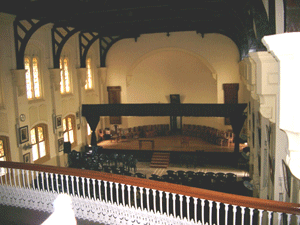 At Wesley in the 1950's we were fortunate to have many talented sportsmen. They brought us much fame. Unlike schools like St Thomas', St Josephs and Royal College very few of our sportsmen went to University. It was indeed sad to see many of our great sportsmen leave Wesley at GCE/SSC level to enter Stafford College or Pembroke Academy to complete their studies. As a school we failed to harness the academic ability of our sportsmen and give them the extra push and coaching to be successful in their public examinations. The school never took into account that the practices and matches took much time away from these students which made it difficult to compete at public examinations including University Entrance exam. Fortunately many of the sportsmen entered lucrative professions and became successful which proves my point that if given the extra push would have had much academic success at school. This I blame on the masters in Charge of sports for not taking the trouble to provide adequate resources for our sportsmen. There was a broader problem of poor teaching by many teachers who should have known better. As always for these faults the buck stops with the Principal and the School management. The general impression that sportsmen were only good in sports is totally false as I found out in University and in later life. I hope these issues have been addressed and changes have been made for the 21st century. Even God can't change the past.
At Wesley in the 1950's we were fortunate to have many talented sportsmen. They brought us much fame. Unlike schools like St Thomas', St Josephs and Royal College very few of our sportsmen went to University. It was indeed sad to see many of our great sportsmen leave Wesley at GCE/SSC level to enter Stafford College or Pembroke Academy to complete their studies. As a school we failed to harness the academic ability of our sportsmen and give them the extra push and coaching to be successful in their public examinations. The school never took into account that the practices and matches took much time away from these students which made it difficult to compete at public examinations including University Entrance exam. Fortunately many of the sportsmen entered lucrative professions and became successful which proves my point that if given the extra push would have had much academic success at school. This I blame on the masters in Charge of sports for not taking the trouble to provide adequate resources for our sportsmen. There was a broader problem of poor teaching by many teachers who should have known better. As always for these faults the buck stops with the Principal and the School management. The general impression that sportsmen were only good in sports is totally false as I found out in University and in later life. I hope these issues have been addressed and changes have been made for the 21st century. Even God can't change the past.
 In the 50's we had discipline with a capital D. It was administered through Dickensian rules in a climate of fear. I was sent to the Principal with a another boy for using bad language. I protested my innocence but we were both caned. I lost faith in the rule of law when a respected principal could not be bothered to question us to find out the truth. It was a miscarriage of justice and the principal set a bad example. The teacher could have sent us to Ranis or Marshall for the caning if it was too much of a bother for the Principal to question us. Throwing a tantrum how could he retain the respect and confidence of his students. I was just 8 years old but had a strong sense of right and wrong. Well that was the way I felt until I left school. The Principal cared for all of us. His great passion in life was the school. I suppose certain people thought he terrorised the place, but you've got to be man enough to accept punishments and move on. Corporal punisment has now been excluded from schools in the West. I hope it has disappeared from the 'menu' at Wesley!! At University and beyond I realised life was never fair. Whatever happened at school was never a personal vendetta. His enthusiasm for the cane has beeen vindicated over time.
In the 50's we had discipline with a capital D. It was administered through Dickensian rules in a climate of fear. I was sent to the Principal with a another boy for using bad language. I protested my innocence but we were both caned. I lost faith in the rule of law when a respected principal could not be bothered to question us to find out the truth. It was a miscarriage of justice and the principal set a bad example. The teacher could have sent us to Ranis or Marshall for the caning if it was too much of a bother for the Principal to question us. Throwing a tantrum how could he retain the respect and confidence of his students. I was just 8 years old but had a strong sense of right and wrong. Well that was the way I felt until I left school. The Principal cared for all of us. His great passion in life was the school. I suppose certain people thought he terrorised the place, but you've got to be man enough to accept punishments and move on. Corporal punisment has now been excluded from schools in the West. I hope it has disappeared from the 'menu' at Wesley!! At University and beyond I realised life was never fair. Whatever happened at school was never a personal vendetta. His enthusiasm for the cane has beeen vindicated over time.
Reading this if you think Wesleyites at school lived our boring and fearful lives always in the eye of a storm, you are wrong. It was a cross section and an overview of our total lives complete with highs and lows. We loved the applause and hated the brick-bats. For many of us school was the best preriod of our lives. Friends we made became friends for life. The lessons we learnt on and off the classrooms prepared us well for the wider world beyond. It was a sublime experience. We were less in control of our lives while at school than later on. But in our adult lives too, although it seemed we had more control destiny played its part and influenced and changed our lives greatly. Those whom we thought were "no hopers" at school became immensely successful and the ones whom we thought were destined for greatness, faded away into oblivion. This I would call the awesome force of destiny of which we have no control.
 Refusing to conform to the rules, regimentation and the doctrine of the establishment was then taken as a serious offence. On looking back at history, if one puts aside pure mischief, non-conformists were often intellectuals and free-thinkers whose actions formed the bedrock of the modern civil liberties. Throughout the ages non-conformists fought for a more tolerant society. They weren't afraid to be different or stand up for what they believed in. Like in most institutions nowadays there has to be a forum for dissent which acts as a safety valve. Sadly in those days the students' voice went unheard and occasionally youthful anger boiled over. This resulted in drastic action like expulsions from school which could have been avoided. Discontent like anger is a part of normal human behaviour. It is the duty of educationists to train students to deal with it appropriately. I do not think the world in the mid 20th Century was ready to hear students' problems. Student 'dissent forums' was then a luxury the teachers could not afford. They felt threatened and thought it would encroach on teachers powers and rights and their comfortable life style. I am certain the wisdom that comes with age will allow us to be gracious and understand the quirks of an era now long gone.
Refusing to conform to the rules, regimentation and the doctrine of the establishment was then taken as a serious offence. On looking back at history, if one puts aside pure mischief, non-conformists were often intellectuals and free-thinkers whose actions formed the bedrock of the modern civil liberties. Throughout the ages non-conformists fought for a more tolerant society. They weren't afraid to be different or stand up for what they believed in. Like in most institutions nowadays there has to be a forum for dissent which acts as a safety valve. Sadly in those days the students' voice went unheard and occasionally youthful anger boiled over. This resulted in drastic action like expulsions from school which could have been avoided. Discontent like anger is a part of normal human behaviour. It is the duty of educationists to train students to deal with it appropriately. I do not think the world in the mid 20th Century was ready to hear students' problems. Student 'dissent forums' was then a luxury the teachers could not afford. They felt threatened and thought it would encroach on teachers powers and rights and their comfortable life style. I am certain the wisdom that comes with age will allow us to be gracious and understand the quirks of an era now long gone.
Finally I must mention the sale of "small park". It was prime land, in an excellent position and this was the only way the school could have expanded adequately. With its sale went my childhood memories and the dreams of scores of old Wesleyites. Now it cannot be undone. The sad saga and the intrigue of the loss of small park is best described in the words of Winston Churchill " It is a riddle surrounded in mystery wrapped in an enigma" Its flames still smoulder even after 30 years. Was it a muddle or a fiddle? When one goes into the history of any school there are these skeletons in the cupboard and it is for us to forget the past and remember the good times and the wonderful friends who enriched our lives.
As for me Wesley occupies a special place in my heart. Without the encouragement and support that I received from the Principals and Staff I will not be where I am in life. Our boulevard of broken dreams needs to be revisited from time to time to get the correct perspective of life that is now just a distant memory..
The good the bad and the ugly experiences we have had are all part of the rich tapestry of life.
By Ranjit Aaron - New Zealand
 My happy school days out weighed the bitter one. Yet I cannot help but voicing one sad memory, which I bottled all these years.
My happy school days out weighed the bitter one. Yet I cannot help but voicing one sad memory, which I bottled all these years.
When I moved from my junior school studies to Form I. It was extremely difficult to follow my studies in Tamil. Although Tamil was my mother tongue, getting past the 5th Std was a big struggle. Neither my father nor my mother was educated in Tamil. We never ever conversed, even at home in Tamil. My father and mother could not read or write Tamil. At school, I mostly mingled with those who spoke English, because I felt comfortable with my fellow Sinhala and students who conversed in English. I conversed better in Sinhala than Tamil
In the light of the above facts, further studies in Tamil was a night mare.
My father and I made an appointment and presented my case to Mr.P.H.Nonis, who was the principal at that time. Pleading with my inadequacy, to continue my studies in Tamil. I requested, that I be granted an exemption to prove my competence by following my studies in English. I even challenged, if I did not prove my self, I was willing to leave school.
Mr.Nonis did not want to even listen to our plea. His body language from the very inception of my presenting my case. Gave us the indication that his mind was set, not to heed my request. I was lost in the wilderness, to fight alone battle. After an unsuccessful attempt at the GCE (Ord level) I forced my self out of college to continue my studies in a private instuition in the language of my choice and succeeded..
My elder daughter, who studied at HFC Bambalapitiya, when faced with a similar situation, was granted an exemption. She successfully passed the GCE (Ad. Level) with flying colours in English..
When I look back, its not anger, but saddened by the fact I could not continue my higher studies in the school I loved and cherised so much.
Addendum by Shanti McLelland
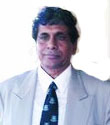 Mr.L.A.Fernando used to remind me that life is like colour grey. More white than black. Enjoy and appreciate the white than sulk with the black. The small park is where we got our practice in hockey with tree branches, soft ball cricket with our hard, box like 'Ford' school bags serving as wickets; playing soccer with only socks or white 'Sinva' or 'Bata' canvas tennis shoes; they looked more red or brown, the color of the gravel; or we enjoyed counting the rounds we ran around the rectangular edge of the 'small park' where the "nidikumba' grass grew beneath the large ancient looking trees, which served as shelter on heavy rainy days, and flowered red, white & yellow during the months of April, May, & June. Small Park was the training ground for most of Wesley's great sportsmen. This was because Campbell Park was too far and risky for the primary school students to go and play during lunchtime, before, or after school. I remember the hard gravel grounds, which left bruises with blood soaked skin peeled on our elbows or knees. The straight semi-circular drain that ran along side starting from Campbell place to the end near the 'thambi boutique' at Mt. Mary where Suranjan Range, Jayasinghes, Ahamaths, and Nazmi Ziard lived: just before the Railway flats where Patrick & Malcome Jansz stored there cricket and hockey gear. The supreme sacrifice to sell this desolate, highly dangerous park that bruised and skinned many of the best athletes was a necessity to keep the school without having to close down. As such the best brains of the Methodists that Wesley depended should never be questioned, although the princely sum of Rs.100,000 (to be verified) that may be valued at over 50 million now.
Mr.L.A.Fernando used to remind me that life is like colour grey. More white than black. Enjoy and appreciate the white than sulk with the black. The small park is where we got our practice in hockey with tree branches, soft ball cricket with our hard, box like 'Ford' school bags serving as wickets; playing soccer with only socks or white 'Sinva' or 'Bata' canvas tennis shoes; they looked more red or brown, the color of the gravel; or we enjoyed counting the rounds we ran around the rectangular edge of the 'small park' where the "nidikumba' grass grew beneath the large ancient looking trees, which served as shelter on heavy rainy days, and flowered red, white & yellow during the months of April, May, & June. Small Park was the training ground for most of Wesley's great sportsmen. This was because Campbell Park was too far and risky for the primary school students to go and play during lunchtime, before, or after school. I remember the hard gravel grounds, which left bruises with blood soaked skin peeled on our elbows or knees. The straight semi-circular drain that ran along side starting from Campbell place to the end near the 'thambi boutique' at Mt. Mary where Suranjan Range, Jayasinghes, Ahamaths, and Nazmi Ziard lived: just before the Railway flats where Patrick & Malcome Jansz stored there cricket and hockey gear. The supreme sacrifice to sell this desolate, highly dangerous park that bruised and skinned many of the best athletes was a necessity to keep the school without having to close down. As such the best brains of the Methodists that Wesley depended should never be questioned, although the princely sum of Rs.100,000 (to be verified) that may be valued at over 50 million now.
The Wesley Staff quarters and the Tennis courts were situated next to the Highfield Block. We used the side pathway to reach Campbell Park very quickly. As, 12 year old I remember staying over after school to play with Prem de Mel who lived at the ground level in one of the four units. Mr. Fred de Mel was the Head Master at that time. We use to watch the teachers play Tennis while we either climbed the cherry trees or enjoyed a cup of tea. Mr. Edmund Dissanayake currently live in the same unit. My friends Kuwera and Kuweni lived upstairs highly diciplined by their father Mr. Felix Premawardane, who was famous both for the 'King Rajasingha' moustache and the 'Kaluware Jaramare' drama, which he successfully directed and staged over 100 times. Mr. Wilfred Wickremasinghe occupied the other unit on the second floor. They all just were a whole big family and friends for all of the students at Wesley. But sad to say ' truth is stranger than fiction' for it turned to be colour grey for Wesley. Overwhelming opposition by Old Wesleyites, parents, and students and after very much emotional pleas, this beautiful and solid Wesley staff quarters met with the same fate as the Small Park. This had to be done, there was no choice, Wesley's strategic planners had no other alternative, or the vision like the Rev. Henry Highfield. The tall, the bald, the short, and the fat could not put the broken state of Wesley's coffer's, as it had opted to be a community serving non-fee levying assisted school rather than a private fee levying Methodist Missionary School. Fortunately, we are ever grateful these decision makers did not stay on to serve the Wesley's cause longer, as it saved the Tennis courts and the Wesley Pavilion which otherwise may have been sold off to meet the commitments of staff salaries, lab facilities, and all extra-curricular activities that was poorly provided to and continued to keep everyone 'unhappily' happy. But the color white was that without such a strategy of raising another 100K, Wesley, may now be just a name on the history books, with forty years of students names not on record. Without these last source of funds; the best brains and the great names I admirably read on the web articles, all of the Double Blue fates, the pin prick fund raisers, or the donations would not have been able to put all of the 12 shells back on the College Crest. Wesley College which opted remain a Non-Assisted private school could not have lasted to serve the Methodists and everyone else who clamoured to be part of "Ora et Labora". So, let me quote one more of my guru's famous cliché's, Mr. L.A.Fernando, "to those who understand no explanation is necessary to those who don't no explanation is possible."
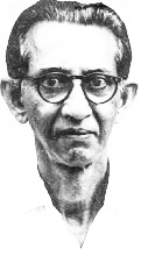
If you did not know Eric, you obviously had not been either to his home or to Wesley College. But if by chance you were traveling between Wesley and the Kanatte cemetery On Wednesday, November, 7th 1973, between 3.30 pm. and 4.30 pm. then you would Have witnessed a most memorable and Impressive sight. it was the final lap of a simple man who achieved greatness by simple living. A silent line of schoolboys, dressed in immaculate white, headed by a senior member of the teaching staff of Wesley, winding their way in hushed silence led the adults who walked behind a hearse that carried the remains of Eric, now in a coffin draped in 'Double Blue.' The total school community, comprising members of the Board of Governors, representatives of the Methodist Church, the tutorial and clerical staff, members of the Clergy of other denominations, the minor staff, past pupils and parents, friends and loved ones, were paying public homage to a humble man who lived a private life. For over 35 years, Eric had foiled behind a green-topped desk, day and night, almost everyday of the week, budgeting the finances of Wesley in a way he only knew. Eric, in his own inimitable and simple way redefined greatness. Humble he was, quiet unassuming and self-effacing, always concerned about the lowly and the underprivileged , loyal and devoted to his task as his superiors, forthright and outspoken righteous indignation on occasion, laughing and smiling in times of stress, digging deep into the reservoir of spiritual power by prayer and in faith, obedient to the Master he chose to serve.
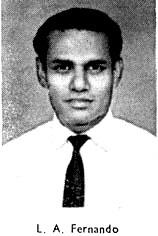
Eric served Wesley in almost unique manner. Tall and lean, he carried a big heart, almost too big for such a frail frame. He sang lustily in a loud voice, and spoke softly, infrequently and wisely. What mattered to Eric was not what others thought of him but what His Master thought. The only remunerative work he engaged in was as bursar of Wesley and the sole solid custodian of the school's finances for over 35 years. He worked within his own system accurate. The system demanded much labour and sweat. With Wesley opting to be a non-fee levying private school, his burden was made heavier but he wanted no assistance, for funds were too lean to take on another. However, he was not a mere bursar. He was a great educator. Everbody who came to Wesley, parents and pupils alike, had to meet him, had to know him. Once they knew him, he was irresistible. His influence was infectious and immediate. He taught more effectively than most classroom instructors, not 'examination subjects' but the 'stuff' that goes to make real men. Parent' came to see him even after their children had left school.
Past pupils never failed to greet him whenever they saw him. Wesleyites loved him for he always had time for them He was never so indecently busy as to irritate others who wanted to talk to him. He had no favourites, he wore no mask he had no guile. Words he did not much use to debate and to convince; his silence was too often most eloquent and more effective than words. His strength of character, integrity an uncompromising honesty, these were sufficient for him. When the tutorial staff once, elected him unanimously to be the President of their Guild, it was a silent acknowledgment of the high regard the teachers had for him. His last journey symbolised the true Eric we knew. What remained of his mortal self passed from hand to hand. The college servants, the tutorial staff, the prefects of the school, past pupils young and old, they carried him along. So he was left in that little plot of land had finally acquired for himself. Silently the mourners moved out, one could not help but ponder on Eric's concept of greatness.
the dawn beyond the night
He did the best that he could do
and then suddenly resigned
Links to further reading
I joined Wesley in the year 1905. A slip of a boy, timid to an extraordinary degree, I trembled before the enormous man, with a bulbous pose, who 'examined' me and another, dressed entirely in black and as self-possessed as I was nervous. This was my first contact with C.P. Dias, the great Headmaster of Wesley, In 1907 the school moved to Karlsruhe Gardens. What a contrast the new habitation was to the one we had vacated ! But, alas, our new master was even worse than the old; on the very slightest provocation out came his cane to punish us for errors, which were largely the result of his own inadequate teaching.
I walked to school each day with leaden feet; the last bell made the sweetest music in my ears. What the classroom failed to achieve the playing field at Campbell Park did. There we played soft-ball cricket with the chalked trunk of a mango tree as our wicket. As schoolboys all over the world did and still, do, we made heroes of the First Eleven, among whom were batsmen and bowlers as great, or even greater, than the best of today. C. A. Perera, R. E. S. Mendis, F. W. Dias and Sammy Gunasekera will all find a place in the best eleven that Wesley has produced in the long years of its existence. I made up my mind that one day I would skipper the school team and, if my good fortune permitted it, stake acclaim for myself among the elect of Wesley.
I cannot remember whether I was equally resolved to do well in the academic sphere I I began to like school in my third year E.W. Wickremasinghe, the master, was a stern disciplinarian yet a just and kind man. It was my good fortune to teach his three sons at Trinity many years later. School began at 10 in the morning and (went on till 4 in the afternoon, with a break of one hour for lunch. The boys of the Lower and Middle School came attire* Buttoned up to the neck and in trouser Which reached half-way between knee and ankle. On five cents one could do one self well on grain and veralu-achcharu; on fifteen he could dispense hospitality on a lavish scale.
Wesley, in my early years, were in the champions of School cricket. F.W.Dias led us to the top of the table in 1908 and 1909; and in 1910 M.K. Cassim kept us there. Memories crowd on me as I write this. Freddy Dias, that genial six-footer, drove with the power of a Walcott; R.E.S. Mendis and Sammy Gunasekera were left arm bowlers of great ability ; D.M. Rupasinghe C. S. Jayasinghe, S. Nagendra, M.Molligoda and T. Sathasivarn were better that the average, each in his own way. The present generation, accustomed to professional umpires, will be astonished and Even amused to hear that Highfield and Hardy, the Principals of Wesley and Royal, Were in control of this game. It was nothing unusual, for it had been the practice for Many years for the Principal of a school to extend his immediate authority to the more important extra-mural activities of his school. These men too intent on being fair to the other side, were, not infrequently, unfair to their own ; the benefit of any doubt always went to an opponent, hardly ever to one of their own! Their presence on the field had the added disadvantage of cramping our style.
 No one regretted the day, when they decided to make way for the coach, the master and the old boy. In 1917 I realised my ambition, when I was appointed captain of the 1st XI I hope I do not appear boastful, when I say that I am proud of the three centuries I made for the school. Eric Gunasekera, our coach, was a good batsman, and what he did not know of the theory of the game, was hardly worth knowing. Sixes punctuated his score sheet as he went his adventurous way to a big total He was respected and much liked by everyone of us. Highfield of Wesley Picture to yourselves a sturdy Englishman riding on his 'push' bicycle or walking long distances to the remotest parts of Ceylon in search of old boys" who would help him to shift Wesley to a site more worthy of so great a school. He had not the money to buy a car; I do not think he ever possessed one; buses had not made their appearance on our roads in his day; the train, his ancient bicycle and his sturdy legs were the only means of transport available to him !
No one regretted the day, when they decided to make way for the coach, the master and the old boy. In 1917 I realised my ambition, when I was appointed captain of the 1st XI I hope I do not appear boastful, when I say that I am proud of the three centuries I made for the school. Eric Gunasekera, our coach, was a good batsman, and what he did not know of the theory of the game, was hardly worth knowing. Sixes punctuated his score sheet as he went his adventurous way to a big total He was respected and much liked by everyone of us. Highfield of Wesley Picture to yourselves a sturdy Englishman riding on his 'push' bicycle or walking long distances to the remotest parts of Ceylon in search of old boys" who would help him to shift Wesley to a site more worthy of so great a school. He had not the money to buy a car; I do not think he ever possessed one; buses had not made their appearance on our roads in his day; the train, his ancient bicycle and his sturdy legs were the only means of transport available to him !
We, who knew , the old school, were delighted to find ourselves at Karishrue. C. P. Dias, affectionately known as 'Dia Pappa' was a colourful personality. Tall and well-proportioned, he walked the corridors of the school like a Colossus. W.E.Mack, l can still see him in my mind's eye walking up the school drive-his shoes a glossy black, his trousers smartly creased, his coat and vest well ironed, a bowler hat on his head and a neatly rolled-up umbrella in his right hand. He was an exceptionally able teacher,English and Latin were his subjects C.V.Honter was as able a teacher as Mack; but, while the latter was aloof in manner, Honter was always ready with a quip and crack to relieve the tedium of class routine.
P. T. Cash was shy and diffident in his early years at Wesley. His sensitive nature perhaps fed on the stories he had heard and, read of the Orient, made him either too strict or too indulgent in his dealings with us But, before he left us to become the Principe of a school in Jaffna, he had found his feet and had earned the respect-and affection. A.H.'Kukul' De Silva taught us Maths in the junior form. It was his belief that a stinging two-finger Slap accelerated the mental processes of the more slow-witted among us. We were forced 'to this conclusion by his frequent resort 'to this practice. Jimmy Ratnayake was one of the kindest men I have ever met: he was also one of the most excitable. O.E Goonetilleke an affable man generous almost to a fault was on our staff for a few years.
Writing in these reminiscences has helped me to capture the carefree abandon of my schooldays; for a brief hour I have walked hand in hand with old friends and shared their joys and sorrows. Of the Wesley of today I fear, I know very little. It has changed, it should have changed as all else around it has done. But in the essence, it is I believe the Wesley that I knew.
What memories of the past the above title conjures up! What visions of an era long past, those spacious days of long ago when life moved at a slower tempo and was not the hustle that it now is 'from the womb to the tomb' Here are a few thumb-nail sketches of some of my old teachers as I picture them after a lapse of fifty years and more. I studied at Wesley during the period 1915-1922 when Rev. Henry Highfield was our Principal. What a man he was short, stocky with a luxuriant moustache and an ever-ready smile, willing to help us boys with our troubles. Endowed with a fund of energy and almost inexhaustible stamina he used to set an example to the boys by himself helping to weed the grass on the old Wesley cricket grounds at Campbell Park.
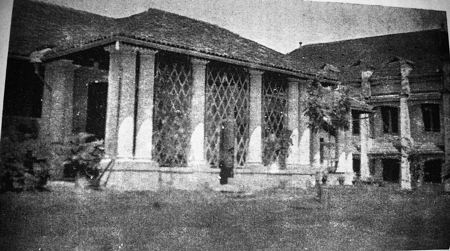 The older generation used to talk with pride of his legendary exploit when he went round a good bit of Ceylon on his bicycle collecting funds for building the College which had then recently moved in to its present location from the Pettah. His unfailing smile withal he was a strict disciplinarian and never hesitated to spare the rod when necessary, as so many of us found to our cost! In contrast to him was our Vice-Principal, Rev. Percy Cash, tall, soldierly he served in World War I remember right, and of a serious turn of mind. Sarcasm was his forte and we used to be at the receiving end of many a caustic remark when he took us in Geography. He was not such a popular figure as our Principal but he was a very good teacher.
The older generation used to talk with pride of his legendary exploit when he went round a good bit of Ceylon on his bicycle collecting funds for building the College which had then recently moved in to its present location from the Pettah. His unfailing smile withal he was a strict disciplinarian and never hesitated to spare the rod when necessary, as so many of us found to our cost! In contrast to him was our Vice-Principal, Rev. Percy Cash, tall, soldierly he served in World War I remember right, and of a serious turn of mind. Sarcasm was his forte and we used to be at the receiving end of many a caustic remark when he took us in Geography. He was not such a popular figure as our Principal but he was a very good teacher.
Now, the lay staff, chief of whom was C. P. Dias 'Papa Dias' as he was generally known) our Headmaster and also doyen of the Colombo Municipal Council, of which he was a Member. Grand old man he was loved and respected by all, his outbursts of temper, were looked on as a joke by us boys, though sometimes with dire consequences to us. Well do I remember one occasion when I had incurred his wrath by laughing or some such thing. He caught hold of me by my throat (nearly strangling me in the process), pushed me against the balustrade and tried to kick me, so making a ludicrous picture, as his efforts were hampered by the cloth he wore over his trousers. He then pointed out to me the Welikada Jail opposite and, said that I would some day be an inmate there!
The old mans prediction has so far not come true, although fifty years have passed by however, one can never say what the future holds for each of us. Here I must digress a little to say that each bestowed on them in malice: but just as a result of our boyhood exuberance; Next, we had W.E.Mack (Balu-Makka) who used to take us in Latin, Arithmetic and English. (They were really versatile, those teachers of old). He used to sport a waistcoat (a status symbol of those days) and was a great snuff-taker, a habit which, I think, was responsible for the reddish- brown colour of his walrus moustache.
Photo:
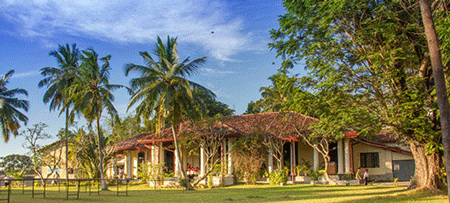
In our Virgil class there was one particular name in the text-book-Othrys- which used to tickle me a great deal. This was commented on by Mr. Mack who himself laughed heartily as a result. I must say that the Arithmetic he taught me has stuck in my head alright and stood me in good stead when I sat for the Survey Clerical later. Then there was C. V. Honter who used to take our English Text. He was christened 'Mike Lambourne' after a character in 'Kenilworth' which was our text-book at the time. A round, podgy figure he had a bristly moustache from which he used to pluck hairs at times while looking down beneath his spectacles and down. his nose and murmuring speak up speak up to us" - The fact was he was so absorbed in this hair-plucking business -that he couldn't hear what we were saying repeating the phrase above.
So we come to A.H. de Silva (Kukul Silva, from his gait, resembling & rooster on the warpath). With him. snuffing was a ritual, involving the removal and cleaning of his spectacles, a task which occupied about 5 minutes. He was noted for his two-finger slaps (just like that) which he used to administer while holding a pencil between his teeth. I came within an ace of receiving one of these one day, but I stood up to him rather cheekily (up to then I had been rather timid); this must have surprised him, so he said, "You also! " and stopped short, only biting on his pencil! I was surprised , too and now, Sam Van Hoff (Sambo), a tall figure with a scholarly stoop, to old bachelor who had his 'den' in Karishrue behind the College. Due to a physical defect he was unable to climb the stairs and so took all his classes on the ground floor. He too was an adept at caustic comments. I can still picture him in his room surrounded by books
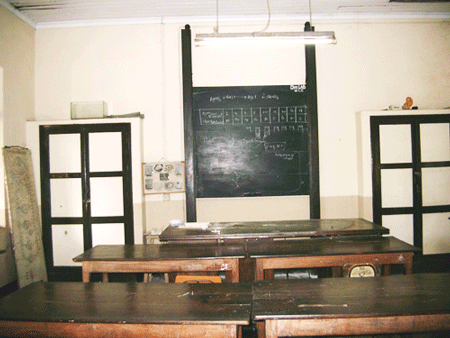 Next, Eric Gunasekera (Ettaya), tall, wiry and athletic, master and cricket coach. His specialty was tweaking our ears, a form of punishment that could be very painful. One day, when I was a new boy, I had no textbook and through fear was hiding in the lavatory. Suddenly Ettaya came in there, questioned me and took me by my ear into the class. That ear sure hurt for a couple of days. Some years ago I met him somewhere near Campbell Park one evening. His sight was rather impaired at that time F. J. Lemphers was our Drawing master, a calm, unruffled man whose placidity was almost bovine (I don't mean to be derogatory but that's just how it was). When he did get angry with one of us, which was very rarely, the most he would do was to say, "You buffalo!" and the matter ended there. In fact I think we used to take advantage of his kind nature by resorting to all kinds of pranks during the drawing period.
Next, Eric Gunasekera (Ettaya), tall, wiry and athletic, master and cricket coach. His specialty was tweaking our ears, a form of punishment that could be very painful. One day, when I was a new boy, I had no textbook and through fear was hiding in the lavatory. Suddenly Ettaya came in there, questioned me and took me by my ear into the class. That ear sure hurt for a couple of days. Some years ago I met him somewhere near Campbell Park one evening. His sight was rather impaired at that time F. J. Lemphers was our Drawing master, a calm, unruffled man whose placidity was almost bovine (I don't mean to be derogatory but that's just how it was). When he did get angry with one of us, which was very rarely, the most he would do was to say, "You buffalo!" and the matter ended there. In fact I think we used to take advantage of his kind nature by resorting to all kinds of pranks during the drawing period.
History was taught us by M. A. Samarakoon (who later became District Judge, Colombo), a short, stocky, well-built man who reminded me of Napoleon Bonaparte. He was- the only master I really feared! For a good reason too; one shot from that massive forearm would have downed anyone of us. Of this power I had ample proof one day! We had been asked to revise a particular lesson relating to the 17th century Civil War in England. In class, a map was hung on the blackboard and we were asked, one by one, to trace the course Prince Rupert took to (or from, I can't quite remember) Marston Moor. Most of us had neglected revision and were unable to give a correct answer. When it came to my turn I went to the map and was trying to bluff koon specials, a haymaker on the nape of my neck, and I went sailing out of the door into the corridor to join the other boys who had received the same treatment ! All these revered teachers have now gone beyond our ken, gone to 'the bourne whence no man returns', but memories of them still linger in the minds of those of us who studied under them and studied to such good effect. 'Requiescat in pace'.
However, there is one who is still with us. I refer to S.J. V. Chelvanayagam. Yes, none other than the 'Father of the Federal Movement'. He was the youngest of the lot when came to Wesley and taught us Mathematics (English, too) for a few years before he joined the Law College. A gentle soul he was, one who never used the cane on us, a fact which we boys exploited to the full. When we annoyed him unduly he would dash the chalk or pencil on the table and walk away leaving us to our own devices. And so I close this little chapter of memories in the hope that these vignettes of former, members of the staff will be of some interest to the present boys of Wesley. This may sound like a cliché, beloved of old-timers, but it is a fact that cannot be gain said; those teachers of old were indeed a dedicated lot, men who taught us to remember, not to forget, men the like of whom, in the context of present circumstances, may not be seen in this generation. For myself I can only say :
As I take up my pen to write on this subject, memories rush to my mind like ghosts beckoning from the past and pleading to be let in. My problem is what I should leave out in order to keep this article within a length to match the space that could be allotted to it. My period in, school was 1926 to 1933 - only 7 years as I had attended other schools earlier. The number in school was small, about 600, which is unimaginable in this age when the number of about 1,350 which the school has must be considered a small number compared with numbers in other schools of equal standing. I must say that I enjoyed prayers mainly due to the hymn singing.
All the boys of the school, irrespective of their religion, attended prayers, but it must be said that in this there was not even a hint of an attempt to convert, or subvert, boys of other religions. In fact, boys of other religions enjoyed prayers as much as the Christian boys and went to their classes unaffected, by the prayers so far as their attitude to their own religions was concerned, though it can be said that the feeling of piety and goodness -which prayers should evoke in a Christian I expected to have conveyed Itself to most of them. My colleagues at school were. of all races and of all religions and difference? of race or caste or creed caused no barriers between us. The unifying factor was the language as we all spoke English in school.
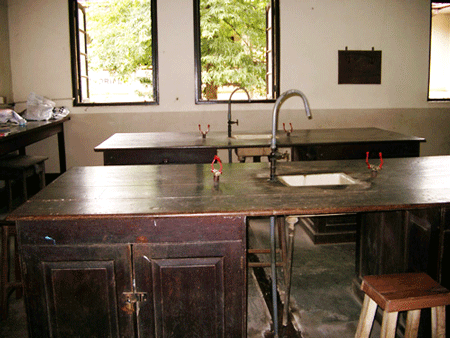 We were fortunate in having a set of very capable and conscientious teachers. I remember the pains our teachers took to pass on to their pupils the knowledge they had of the subjects which they taught, and with what selflessness they worked. The boys in the school during my time were as mischievous, or more so, than the boys today. One instance of mischievousness which I recollect was associated with the famous boxer. Gunboat Jack, who visited Ceylon at that time. He had almost massacred a local challenger Roy Wells. We were surprised when Gunboat Jack called at the school with. his Manager one day. He asked for one of the teachers the teachers and when he was taken up to the teacher he told him that he had come in connection with the challenge he had received ed from him. The teacher, a timid man by nature though a terror to his pupils, was all consternation and, waving both his hands he said "Oh!; No, No. Mr.Gunboat Jack, I did not challenge you!". He was so shaken by the event that he was not fit for any more work on that day and that was all that the mischief-makers Who had sent the dud challenge wanted!
We were fortunate in having a set of very capable and conscientious teachers. I remember the pains our teachers took to pass on to their pupils the knowledge they had of the subjects which they taught, and with what selflessness they worked. The boys in the school during my time were as mischievous, or more so, than the boys today. One instance of mischievousness which I recollect was associated with the famous boxer. Gunboat Jack, who visited Ceylon at that time. He had almost massacred a local challenger Roy Wells. We were surprised when Gunboat Jack called at the school with. his Manager one day. He asked for one of the teachers the teachers and when he was taken up to the teacher he told him that he had come in connection with the challenge he had received ed from him. The teacher, a timid man by nature though a terror to his pupils, was all consternation and, waving both his hands he said "Oh!; No, No. Mr.Gunboat Jack, I did not challenge you!". He was so shaken by the event that he was not fit for any more work on that day and that was all that the mischief-makers Who had sent the dud challenge wanted!
At Cricket, we were the wooden-spoonists during the period. The interest we took in the game was, however, tremendous: On match days, everyone awaited the close of the school with impatience to rush to the grounds. An incident Connected with cricket of my period in school recurs vividly to my mind how a pair of spectacles" scored by one of our batsmen was received. The batsman was Ponnusamy and the match was against St. Benedict's In 1927 which was played on the- Railway Grounds. In both innings Ponnusamy came back after being dismissed for a blob. Smiling all the way from the wickets to the Pavilion, and his smile was most noticeable against the background of his swarthy face.
We won-the match and our Principal, Rev. John Dalby in, referring to the match at Assembly on the next school day commented on the spirit of sportsmanship which was displayed by Ponnusamy when he walked back to the Pavilion with a smile after having scored, '0' in each innings and said that it was the correct spirit and the 'Wesley' spirit. We were all highly impressed by this example of sportsmanship and, applauded lustily. As I said earlier there are many more events which occur to my mind when I think of my school days. The memory of which has also been such as to evoke in me the utmost loyalty towards the school loyalty, which I make bold to say is as great as that which any alumnus of a school

My association with Wesley College Began in the year 1933 when I was admitted to the Lower Kindergarten. Wesley College has been fortunate in having had several devoted teachers, who have served the cause of Education, regardless of private gain. No disrespect is implied to others if I were to mention the names of a few teachers who exerted a profound influence on me in my formative years. Miss. Iris Blacker, Mrs. Joyce Leembruggen, Messrs. R. A. Honter, J. E. de Silva,L. C. de S. Weragoda, Eric Gunasekera,J.L. F. de Mel, F. J. Senaratne, E. D. Thambimuttu, P. H. Nonis, K. M. de Lanerolle and Rev. James Cartman. They were teachers of the highest integrity and sincerity of purpose. Among my school mates who particularly influenced me was Shelton Peiris, our Senior Prefect of 1946, who appeared to us as the very embodiment of all that Wesley stood for. When I was very young, I had a strange fascination to be a teacher.
Perhaps the good example set by my own teachers may have influenced me. And so, in September 1948, Rev. Cartman gave me my first assign- ment as a part-time teacher; and in January 1949, I formally joined the Tutorial Staff, as a full-time teacher. Although more lucrative employment was offered to me elsewhere both in 1949 and in 1960, I do not regret my decision to have continued as an Assistant Teacher at Wesley. For, in the ultimate analysis, one's fulfillment lies in accepting an occupation that brings one joy and satisfaction.
I believe that the less one has to chastise, the less one has to use the cane, the greater would be the rapport between teacher and student, and greater the response from the student. Wesley has also been fortunate in having a loyal and devoted domestic staff. Ranis and Wilbert, both, alas, no more, being outstanding. Men of their calibre are a rare commodity today... I believe that a student's education is not complete unless he has been resident in the school hostel for even a short period. It has been our experience that hostellers have generally be on far more resourceful than day scholars. Hostellers have shone both in the class-room and on the field of sports. Their mischief, if at all, was quite healthy. Once, late at night, we heard the school bell ring.
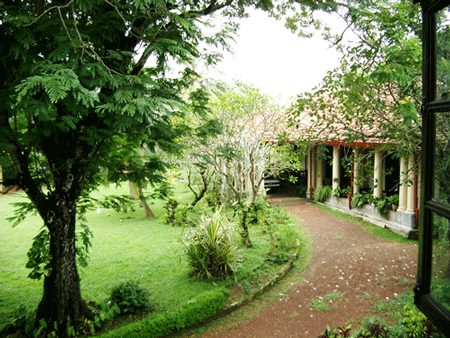 The hostel masters presuming that a hosteller was responsible, switched on the lights in the dormitories, but found all their charges in that the culprit was a cow whose tail had been tied to the rope of the college bell ? The particular hosteller who was responsible for this bright idea, works today as an executive in a high-powered corporation. Mrs. Ruth Hindle who was hostel matron from 1949-1957 was a very popular figure. Her humane approach to all problems in the hostel, endeared her to everyone. Shelton Peiris and Aelian Fernando in their capacity as Senior Hostel Masters in the early fifties, were largely responsible for setting the correct. tone in the hostel. Their enthusiasm and devotion to duty were unparalleled. The versatile Kenneth M. de Lanerolle, who was Vice Principal and Hostel Superintendent, was a great source of inspiration to both staff and students. Indeed he was their hero.
The hostel masters presuming that a hosteller was responsible, switched on the lights in the dormitories, but found all their charges in that the culprit was a cow whose tail had been tied to the rope of the college bell ? The particular hosteller who was responsible for this bright idea, works today as an executive in a high-powered corporation. Mrs. Ruth Hindle who was hostel matron from 1949-1957 was a very popular figure. Her humane approach to all problems in the hostel, endeared her to everyone. Shelton Peiris and Aelian Fernando in their capacity as Senior Hostel Masters in the early fifties, were largely responsible for setting the correct. tone in the hostel. Their enthusiasm and devotion to duty were unparalleled. The versatile Kenneth M. de Lanerolle, who was Vice Principal and Hostel Superintendent, was a great source of inspiration to both staff and students. Indeed he was their hero.
Mr. C. J. Oorloff who succeeded Rev. Cartman in 1950 is remembered for his efficient administration, and discipline. Mr. P. H. Nonis is unique in that he was the first Wesleyite to be appointed as ,her Principal. It fell to his lot to pioneer the school through the new educational set up, as a private non-fee levying school. Mr. A. S. Wirasinghe came to us from Richmond. He introduced the system of teacher-supervisors throughout the school. This helped to decentralize the administrative machinery, and has materially contributed to the smoother functioning of the school. Messrs. John Vethanayagam and Wilfred Wickremasinghe who were active hostel masters twenty five years ago, continue to serve Wesley, devotedly.
Mrs. Elsie Perera nee Peiris, and Mr. A. V. Gunaratnam who have completed twenty five years service are also with us. Mrs. Sheila Wijeykoon nee Drieberg and Mr. Felix Premawardena left for Australia and Zambia respectively, after 24 years at Wesley. Mr. Charles de Silva will be retiring in December, 1973 having served Wesley for 28 years. Students affectionately remember his earlier Morris 8 car which was reminiscent of a padda-boat. This car was made available to staff and students in wet weather. His appointment in 1972 as Vice Principal (Acting) greatly redounded to the credit of the Governing Board, as he was the first Non-Christian to hold such office at Wesley. He filled this post with much acceptance.
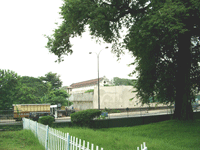 The death of Mr. Eric de Silva has taken away from our midst a pillar of the school. He was Bursar for 36 years. I remember Rev. Cartman telling me in 1947, that if Eric left Wesley he would be compelled to employ at least three people to take his place. If Rev. Cartman had such a high regard for Eric's work twenty seven years ago, one 'can imagine the tragedy that has befallen Wesley today. The late Eric de Silva was one of the finest men I have met. In truth, he has not passed away, 'for he continues to live in our hearts. Cricket has been one of my great "loves". Boys remember with pride the enthusiasm engendered by Rev. Cartman.
The death of Mr. Eric de Silva has taken away from our midst a pillar of the school. He was Bursar for 36 years. I remember Rev. Cartman telling me in 1947, that if Eric left Wesley he would be compelled to employ at least three people to take his place. If Rev. Cartman had such a high regard for Eric's work twenty seven years ago, one 'can imagine the tragedy that has befallen Wesley today. The late Eric de Silva was one of the finest men I have met. In truth, he has not passed away, 'for he continues to live in our hearts. Cricket has been one of my great "loves". Boys remember with pride the enthusiasm engendered by Rev. Cartman.
Wesley's success in cricket during that period was largely due to the personal interest taken by Rev. Cartman, and the Masters in charge, Mr. F. J. Senaratne, Mr. G. Joseph and Mr. J. L. F. de Mel, For the record, the last occasion when Wesley beat both St. Thomas' and Royal in the same, season was in 1947., Wesleyites who. read this article may be reminded of their debts to "Uncle Joe" for books purchased at the School Book Shop! The indefatigable Mr. de Mel's devotion to duty, traveling to school from far away Panadura, was an object lesson to everyone. The tremendous interest evinced by our Old Boys in their Alma Mater, is indeed the pride of any school. No one could gainsay the great devotion and concern shown particularly by Mr. J. C. P. Wickramanavake.
Among the Wesleyites who during the last twenty five years have served as, teachers at Wesley, and have wielded much influence among the students.. are Sam Silva, Shelton Peiris, Fred Abeysekera, Watson Wijewickrema, the late Rev. Maxwell de Alwis, Agbo Karunaratne, Graham Dissanayake, Lou Adhihetty. N.A.B. Fernando, D.B. Welikala, M. Mohideen, Sam R. Thevathasan and Prasanna Wijesinghe. It is our wish that the few Wesleyites who are presently on the Staff would continue to serve at Wesley for many more years. I refer to Messrs Lalith Wijesinghe, Marshal Fernando, M. A. P. Fernando, Srilal Karunaratne, Nimal de Silva. If Wesley is to continue as a Private Non Fee Levying School in the great tradition she has been heir to during the last one hundred years, it is respectfully submitted, that every inducement should be provided to Wesleyites to accept appointments in their Alma Mater. 'And when Wesley's call shall sound, Ready Aye' shall all be found, In duty and in honour bound Wesley to the fore.'
 The morning, of 10th May 1934, was gloomy when the Cowley Crunched up the drive and halted in the portico of the stateliest of all mansions the child had even seen Wesley College Wesley College. Hordes of little, boys, blue and white uniforms, crowded round and peered into the limousine. "Poom -Oom - Poom"', they squeezed the rubber, bulb, much to the annoyance of the driver! "New boy, new boy" they all shouted and-giggled, as the reluctant, lanky specimen was scooped out , of the car by his mother. The wretched tormentors followed.
The morning, of 10th May 1934, was gloomy when the Cowley Crunched up the drive and halted in the portico of the stateliest of all mansions the child had even seen Wesley College Wesley College. Hordes of little, boys, blue and white uniforms, crowded round and peered into the limousine. "Poom -Oom - Poom"', they squeezed the rubber, bulb, much to the annoyance of the driver! "New boy, new boy" they all shouted and-giggled, as the reluctant, lanky specimen was scooped out , of the car by his mother. The wretched tormentors followed.
Now in the frequency of memory, I reach him as he stands one in those wretched tormentors followed. Now in the frequency of memory, I reach him as he stands one in those many rows in the spacious stained glass windowed hall where the entire school had assembled on the first day of term._The speaker is a calm and be-spectacled, tired looking, Englishman in cap and gown-the Rev. John Dalby as he was later known. The Staff, prim and proper, sit behind him.. There is a pin-drop silence among the rows of boys. What he spoke is forgotten through the passage of time, but what remains is the tattooed impression of discipline and order and obedience.
This was indeed a significant day day in the life of a new boy for over the years this boy, instructed and guided, followed an educational-oriented training for life ,a training which has guided him over the storms and stresses and the changing phases of life. It opened up to him new vistas, new experiences in understanding, in tolerance and in all those things of value and of good report. That new boy was myself. Many are the incidents both in the class- room and on the playing field in my early formative years. Many were the teachers in those same years.
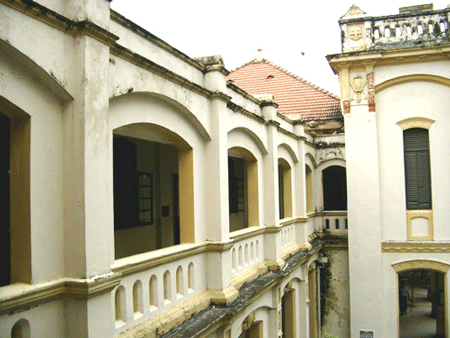 I can never forget Mrs Rachel Lembruggen, the most perfect Of all teachers, immaculate in dress and as beautiful as an angel to our childhood observations. The Other Mrs.Leembruggen, Joyce, plump and comely, taught me in her broad deliberate speech, my very first poem - Little drops of water, Little grains of sand, Make the mighty ocean and the pleasant land. So convincing was she that even as tiny tots this poem made us feel important, the way she delivered it; Another teacher who created an indelible impression on my life was the diminutive Miss Iris Blacker whose most formidable form of punishment was a severe wrap on our knuckles with a blue pencil, in inch taller than she.' One important facet in the syllabi of Wesley then was handwork, what fascinating hours-we spent in these classes!
I can never forget Mrs Rachel Lembruggen, the most perfect Of all teachers, immaculate in dress and as beautiful as an angel to our childhood observations. The Other Mrs.Leembruggen, Joyce, plump and comely, taught me in her broad deliberate speech, my very first poem - Little drops of water, Little grains of sand, Make the mighty ocean and the pleasant land. So convincing was she that even as tiny tots this poem made us feel important, the way she delivered it; Another teacher who created an indelible impression on my life was the diminutive Miss Iris Blacker whose most formidable form of punishment was a severe wrap on our knuckles with a blue pencil, in inch taller than she.' One important facet in the syllabi of Wesley then was handwork, what fascinating hours-we spent in these classes!
Handwork included woodwork, modelling with clay and plasticine, rattan, work including basket weaving, elementary metal work, sign-board writing, leatherwork etc. How we rushed to the hand Work Room with its many gadgets and instruments. To be met by the most skilful of teachers, who with patience, tact and firmness, took us through our paces year in and year out Under his guidance we became confident, and collected, unruffled and methodical. For his labour of love we are indeed grateful, as his instructions certainly helped us to be the handymen we are. This teacher is no other than Mr. J. E. De Silva yet dynamic and creative. Two other teachers both Wesleyites to the core helped us.
The cigar smoking Ataya and the other the soft spoken "Hulang". Eric Gunasekera and L.C de S Weragoda as they will be remembered by numerous old boys. Nor can I forget D.R.Victor- He was a storyteller par excellence. And So time sped on till we were forced to breakup school as a result of World War II. During the war years we were commandeered and scattered away from Colombo. We went to Kittiyakkara and old fashioned bungalow near All Saints Church Borella. Numbers increased with the arrival of Rev. Holden who came from Mandalay. He was a disciplinarian and did a wonderful job at Kittiyakkara.
 My mind goes back to when I was a Prefect and leader of the debating team of that year. Wesley College proposed for debate "THE BAN ON THE NATIONAL DRESS MUST BE LIFTED". The feature debate, with our sister college, Methodist, was eagerly looked forward to, for, even under the eagle eye of Mrs. Loos, we had a fine time with the girls! On my part I thought I should be a little imaginative and original-but alas it was brought to the notice of Rev. Holden that I intended to lead the debate clad in sarong and coat! Rev. Holden would hear nothing of this. He threatened to call off the debate. The debate in itself was not that exciting until our last man the "chuttie" member of the team, waxing eloquent and lost in excitement demanded that "THE NATIONAL DRESS SHOULD BE LIFTED"! The House roared and even the ranks of Tuscany could scare for bear to cheer! Weeks later I made it bold, however, to attend College in coat and sarong.
My mind goes back to when I was a Prefect and leader of the debating team of that year. Wesley College proposed for debate "THE BAN ON THE NATIONAL DRESS MUST BE LIFTED". The feature debate, with our sister college, Methodist, was eagerly looked forward to, for, even under the eagle eye of Mrs. Loos, we had a fine time with the girls! On my part I thought I should be a little imaginative and original-but alas it was brought to the notice of Rev. Holden that I intended to lead the debate clad in sarong and coat! Rev. Holden would hear nothing of this. He threatened to call off the debate. The debate in itself was not that exciting until our last man the "chuttie" member of the team, waxing eloquent and lost in excitement demanded that "THE NATIONAL DRESS SHOULD BE LIFTED"! The House roared and even the ranks of Tuscany could scare for bear to cheer! Weeks later I made it bold, however, to attend College in coat and sarong.
By and by in College life Edmund Dissanayake and I had teamed up and we had as Senior Prefect Sam Silva. Now one of Sri Lanka's finest administrators, Sam, even then was unassuming, composed, collected and always willing to help a junior. Of him it could be said-
This the Rev. Cartman did with distinction and aplomb. His was certainly, a formidable task, I repeat. The traditions of Wesley, rich and hallowed, could not easily be interpreted in improvised buildings, but the Rev. Cartman with his vision and drive, with his tact and understanding inculcated that spirit of Wesley in us.
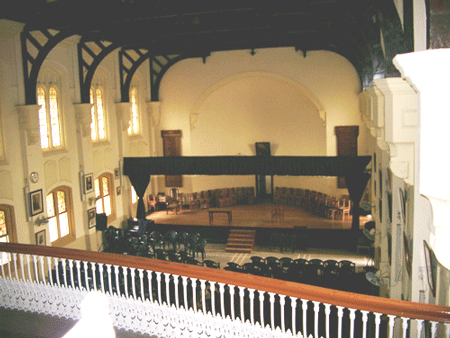 With some of Wesley's finest teachers like E.D.Tambimuttu, Kenneth de Lanerolle and Fred de Mel away in the various Civil Defence branches, the Rev. Cartman drew heavily from remaining teacher and student. I recall now that this was group work at its optimum. It infused a spirit of cooperation ; it gave him the opportunity of walking close with both teacher and student. Edmund Dissanayake and I were asked to organise the guarding and hatching and this we did with other senior student. I recall the entire school entering the hall. Edmund led the students, opening the stage side door with a silver key. The Wanderers had returned. The Rev. Cartman steered on. He was an enthusiastic cricketer and the President of the Schools Cricket Association. He presented a new dimension to the younger students, tapping their enthusiasm. On match days, the entire school assembled would yell, led by Rev. Cartman, the Red Indian " "War Cry" as we called it-
With some of Wesley's finest teachers like E.D.Tambimuttu, Kenneth de Lanerolle and Fred de Mel away in the various Civil Defence branches, the Rev. Cartman drew heavily from remaining teacher and student. I recall now that this was group work at its optimum. It infused a spirit of cooperation ; it gave him the opportunity of walking close with both teacher and student. Edmund Dissanayake and I were asked to organise the guarding and hatching and this we did with other senior student. I recall the entire school entering the hall. Edmund led the students, opening the stage side door with a silver key. The Wanderers had returned. The Rev. Cartman steered on. He was an enthusiastic cricketer and the President of the Schools Cricket Association. He presented a new dimension to the younger students, tapping their enthusiasm. On match days, the entire school assembled would yell, led by Rev. Cartman, the Red Indian " "War Cry" as we called it-
The tamarind tree at Wesley has been a silent sentinel over the many decades. Its origin is lost to us in the mists of forgotten years, but whenever I see it I begin to regress. For at its foot, during the intervals, we mugged up our Latin, memorized poetry and mouthed gossip. Under its spreading branches and in its cool shade we admired the cuties of Mt. Mary. Who of us can forget dear old Ranis whom we once tied up to the tamarind Tree with that unending silver chain and coiled round his waist! We had our fun, strong healthy fun, some of which caused us fear and foreboding like the day when we played barber by clipping off the whiskers; of 'Garandiya' alias Physics Silva(lab attendant), and we were reported to Mr. Nonis.
Garandiya withdrew his complaint on our threatening--to expose his selling glass bulbs to us. We ate all the 'achcharu' made by old Babun's ancient wife and accused Babun till she hit him with the coconut shell spoon. What a fight it was the late Mr. C. M. Fonseka had to rescue Baboon, and the old lady, growling, retreated, stuffing back her breasts which had slipped the confines of her jacket! As the canvas of time unrolls I see in retrospect our own contributions as students in the life of the school.
Prize Givings Weekends, were weekends to remember. Having worked like galley slaves on the eve of a Prize Giving I remember once creeping with some others, past midnight, to the Tram View Hotel the then Wesleyites' Inter Continental! After a satisfying repast we saw on our return Raman the rickshaw puller who verbally abused some of us daily. He was curled up and fast asleep in his rickshaw. We trundled the viper along with bated breath.
 What if the sleeping devil got up ? Then as we reached Wesley we lifted the contraption with the snoring spitfire over the gravel drive. Merty, Chinni, Cruze(shy and coy), Gemba, Edmund and many other willing hands helped. Gently, ever so gently, we placed the rickshaw under the porch and chained the College gate. At dawn a trapped and demented Raman tore his hair and hissed invective, till he was released by the gardener! I have had the most pleasant memories both, as a student of Wesley and as a teacher studying, living and working with so many noble lives. Eric Silva, played his part unostentatiously till his death. A very ready help, Eric's witness for the Master, in his own sphere of activity at Wesley, was indeed appreciated. Bertha Weerapass (now Mrs. Bernard) in her charming way, was also a great asset in the College office. I recall the splendid work she did for the Jubilee celebration in 1949.
What if the sleeping devil got up ? Then as we reached Wesley we lifted the contraption with the snoring spitfire over the gravel drive. Merty, Chinni, Cruze(shy and coy), Gemba, Edmund and many other willing hands helped. Gently, ever so gently, we placed the rickshaw under the porch and chained the College gate. At dawn a trapped and demented Raman tore his hair and hissed invective, till he was released by the gardener! I have had the most pleasant memories both, as a student of Wesley and as a teacher studying, living and working with so many noble lives. Eric Silva, played his part unostentatiously till his death. A very ready help, Eric's witness for the Master, in his own sphere of activity at Wesley, was indeed appreciated. Bertha Weerapass (now Mrs. Bernard) in her charming way, was also a great asset in the College office. I recall the splendid work she did for the Jubilee celebration in 1949.
Now unfortunately no more Where it once stood is today just a broad stretch of pavement. Many others, too numerous to mention, also gave of their best to Wesley. But I have to mention Edmund Dissanayake as outstanding. Edmund is the symbol of Wesley, loyal and faithful. Already index, nay, an encyclopaedia of the Colleges history for nearly 40 years. His contributions, as a student, in the field of cricket is legendary. His adventure on the memorable occasion when Wesley played St. Thomas and Edmund was struck down by a ball off a Thomian bat was indeed a startling experience to us all.
I remember, returning at midnight from the nursing home where he was, meeting a ghost. What a ghost! I had related this to Dunstan Thuring (now Rev). Well, that is another story, the recalling of which gives me the creeps even now. Ask later and it shall be related unto you ! What was so wonderful of Wesley. The reply to this I found embodied in the lives and actions of my teachers. True, I had been given directions and advice, but as a young teacher I too had to fall in line, live out and activate those values, both in the class room and in the playing fields, deep and abiding, which superstructure was based on the rock bottom of Truth, Understanding and Honesty.
My short sojourn as Senior Hostel Master introduced me to many a rich young life which has been translated over the years into men of grit and honesty. This rare climate in the hostel of Wesley was was also due to people like Lilian Welles and Ruth Hindle -matrons who spared no pains to make our lives so comfortable in the hostel. I recall men like L.Aelian Fernando and Rev. David Wilson who enriched and guided the lives of both hostellers and young teachers. Nor can one forget those Hostel aides-great men who unobtrusively laboured as cooks, dormitory boys and sick-room attendants. In presenting this brief resume of events I cannot but recall the singular guidance received, both as a student, and as a young teacher from that versatile virtuoso - Kenneth de Lanerolle.
 To me, as to countless Wesleyites he shall remain as our Inspiration, as Singer, Musician, Actor, Mimic, Wit, Playwright, Poet, Artist, this prodigious teacher, was our hero, our guide and our friend. Another place we loved very dearly at Wesley was the Small Park, where we played and fought, and nurtured and nourished the very fibre of our young lives to stand out as characteristic Wesleyites. It is a great shame that designing minds have caused the rape of this valuable lung and dissected it to accommodate a scheme, which, in the-context of robbing young Wesley from its rightful heritage, is indeed a very perfidious act. And so Time has sped. The noble College has reached its Centenary. It has weathered every storm, the vicissitudes of circumstance and time have not marred her progress nor dulled her contribution to the nation's development.
To me, as to countless Wesleyites he shall remain as our Inspiration, as Singer, Musician, Actor, Mimic, Wit, Playwright, Poet, Artist, this prodigious teacher, was our hero, our guide and our friend. Another place we loved very dearly at Wesley was the Small Park, where we played and fought, and nurtured and nourished the very fibre of our young lives to stand out as characteristic Wesleyites. It is a great shame that designing minds have caused the rape of this valuable lung and dissected it to accommodate a scheme, which, in the-context of robbing young Wesley from its rightful heritage, is indeed a very perfidious act. And so Time has sped. The noble College has reached its Centenary. It has weathered every storm, the vicissitudes of circumstance and time have not marred her progress nor dulled her contribution to the nation's development.
We remember with prayer and gratitude the pioneers and those, great men who have gone before us and who have unhesitatingly blazed a trail -even scorning fame and fortune-in toil and labour to make; Wesley a better place to those vast numbers who enter her portals. They have sown, with fortitude and vision, they have sown with a steadfast and a strong arm, whilst we have continued to reap the abundant harvest of their toil and those following us shall surely garner. Who can be unmoved on such a pulsating, momentous occasion as this?
A hundred years of a rich and noble heritage; and who can remain untouched as one walks through those long corridors of Wesley or ponder in The North Tower, where we as Prefects met to deliberate; or gaze-in the self-same stained-glass-windowed hall of our childhood- at the portraits of Wesley's genial giants- Henry Highfield having an eye on them all! And we Wesleyites as we Pray and Labour on the highways and byways of life repledge our loyalty and "together stand" to toast the best school of all, for
Had wrought with God-like arms The deeds of praise
Find not the spirit of the Place control or rouse
And agitate his labouring soul.
"Somehow it is so clear in my mind that 4th of June 1914, When I travelled as a small boy from Madampe with my father to join Wesley College as a Boarder". And as he spoke' with such clarity and detail I found myself transported to a distant age of an unhurried and even tempo. Then the State provided horse and bullock drawn coaches and a steam boat service on the Colombo Puttalam Dutch Canal.
The single bus service from Colombo to Puttalam was well patronised, and as a rule seats were booked in advance for the entire journey, and as it chugged along it raised, clouds of dust. Horse traps, buggy carts and rickshaws moved around the station entrance of the Railway stations soliciting for passengers.
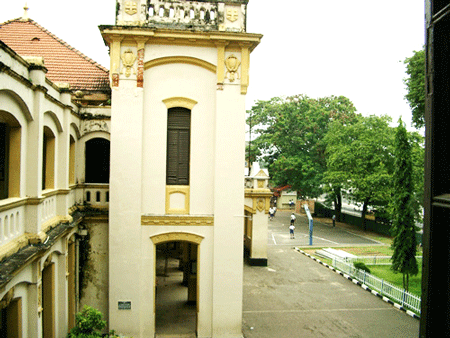 The speaker was Arthur Ernest Herat Sanderatne, Attorney- at-law and formerly of the erstwhile Ceylon Civil Service. What memories he yet had of the Revd. Henry Highfied who had kept a steady correspondence with his old pupil. Though late that evening in June when father and son arrived-there was the Revd. Henry and Mrs. Highfield to make the small lad comfortable and at home. Memories flooded into Authur's mind with consummate ease and his trained mind sorted them all out for me as he spoke of the 1918 riots and the disturbances round Wesley when the "down" boutique, known to so many generations of Wesleyites was also looted.
The speaker was Arthur Ernest Herat Sanderatne, Attorney- at-law and formerly of the erstwhile Ceylon Civil Service. What memories he yet had of the Revd. Henry Highfied who had kept a steady correspondence with his old pupil. Though late that evening in June when father and son arrived-there was the Revd. Henry and Mrs. Highfield to make the small lad comfortable and at home. Memories flooded into Authur's mind with consummate ease and his trained mind sorted them all out for me as he spoke of the 1918 riots and the disturbances round Wesley when the "down" boutique, known to so many generations of Wesleyites was also looted.
The Powder Magazine opposite the college was a hive of activity and it was guarded very heavily indeed by special contingent of Punjabi soldiers-what tough, grand specimens of manhood, Arthur recalled , they were! Those were very disturbing days indeed. Capt. Pedris was court- martialled and shot. Wesley too shared the anxiety of those days for, beside other leaders, a prominent Wesleyite-Don Baron Jayatilleke - was hustled into prison. Here the Revd. Highfield took a bold step in fearlessly fighting and shouting at the excesses that were committed by a set of thoughtless Britishers.
It was Revd. Highfield's intervention that obtained their speedy release. Arthur also spoke with nostalgia of the work and labours, particularly in the Boarding House, of Revd. Percy and Mrs. Cash. He recalled vividly the life of companionship the Boarders had their fun and escapades. The Boarding House had even then fine exemplary men - S. V. O. Somanader, S. J. V. Chelvanayagam and F. J. Senaratne. Among those great men. of S. J. V. Chelvanayagam, Arthur Sanderatne had to say many fine things like his personal sacrifice of time and labour to help the boys, his great devotion to teaching and the valuable contribution he made in improving the college Science Section.
He had a serious outlook and was called "Ghandi". In response to the "Empires Call" Ceylon too sent her volunteer contingents - many a young Wesleyite too joined - many never to return. The Boys of Wesley, apart from qualifying for external exams had scounting, boxing and cadeting included among other extra mural activities. Regular outings were a feature. The Revd. Highfield on bis push bike always accompanied the boys and teachers who travelled in double bullock carts. Among the old brigade C. P.Dias Wesley's Head Master for over 40 years, was an institution within an institution. He was feared and yet loved. He was noted for his daily walks from Cotta Road to Kotahena and back. This exercise he claimed made him alert and fit. He was a City father for a long time.
Wesley had a loyal and devoted set of minor employees, of those Ranis played a grand "innings" and his services were available to many generations of Wesleyites. And so we kept talking with Arthur Sanderatne in reminiscent mood- I reluctantly left this great and loyal son of Wesley whose unflinching loyalty to the old school is an example worthy of emulation- "Wesley, he mused as we shook hands 'always endeavoured to provide a sound education with a view to build character with emphasis laid on the necessity of improving the mind body and spirit." - yes how true of Wesley.
 In turning back the pages of Time, One's thoughts regress to the Wesley's Diamond Jubilee March 1949 into which celebrations were woven Thanksgiving and Rejoicing. Apart from a mere chronological event, the celebrations of, the, year were also a finale to a short yet devoted and inspiring period of dedicated service to Wesley by the Rev. James Cartman, 8. Wesley's energetic and popular Principal from March 1945 to September 1949. Those who had the privilege of being associated with him will recall the Himalayan task the Rev. Cartman had to grapple with during his tenure of office. The College buildings for which he strove to get back, after the fall of Singapore-and into which a few hundred of students processed on the 3rd of December 1945, led by Edmund Dissanayake-were in shambles.
In turning back the pages of Time, One's thoughts regress to the Wesley's Diamond Jubilee March 1949 into which celebrations were woven Thanksgiving and Rejoicing. Apart from a mere chronological event, the celebrations of, the, year were also a finale to a short yet devoted and inspiring period of dedicated service to Wesley by the Rev. James Cartman, 8. Wesley's energetic and popular Principal from March 1945 to September 1949. Those who had the privilege of being associated with him will recall the Himalayan task the Rev. Cartman had to grapple with during his tenure of office. The College buildings for which he strove to get back, after the fall of Singapore-and into which a few hundred of students processed on the 3rd of December 1945, led by Edmund Dissanayake-were in shambles.
A handful of pre- war teachers and students formed the nuclei for the Rev. Cartman to rely on. Foremost was Mr. Eric Gunasekera, of revered memory who through all those exacting vicissitudes, remained a trusted custodian of Wesley's ' tradition'-a source of inspiration, a loyal counselor and truly a very present help to the Rev. James Cartman. Eric Gunasekera spared no pains to serve his Alma mater and to this end it could be said he spent himself even after his retirement in Wesley's service, Beside the others who rallied round were loyal old boys of the staff like L.C de S. Weragoda and F. J. Seneratne who together with a group of young teachers "and senior students spent much time to build up and initiate those who joined Wesley-post-war to the Wesley traditions.
 A special tribute must be paid ,to the youth of Wesley who answered her call undaunted and unselfishly led by Shelton Peiris and Edmund Dissanayake. The youth of Wesley then as now played their part magnificently. The in played their part magnificently. The increasing numbers of this post-war period of admission to Wesley was indicative of the acceptance of Wesley. With the near approach of the Diamond Jubilee the Rev. James Cartman spearheaded a drive with such feverish enthusiasm that one could not believe one's, eyes at the rise of the Diamond Jubilee Fund Barometer displayed in the College Hall! The call to help was a sincere and stirring one, the response was heartening. Contributions poured in; even the youngest at Wesley gave his mighty mite. Extensions were initiated and completed in time for the Diamond Jubilee Celebrations in 1949.
A special tribute must be paid ,to the youth of Wesley who answered her call undaunted and unselfishly led by Shelton Peiris and Edmund Dissanayake. The youth of Wesley then as now played their part magnificently. The in played their part magnificently. The increasing numbers of this post-war period of admission to Wesley was indicative of the acceptance of Wesley. With the near approach of the Diamond Jubilee the Rev. James Cartman spearheaded a drive with such feverish enthusiasm that one could not believe one's, eyes at the rise of the Diamond Jubilee Fund Barometer displayed in the College Hall! The call to help was a sincere and stirring one, the response was heartening. Contributions poured in; even the youngest at Wesley gave his mighty mite. Extensions were initiated and completed in time for the Diamond Jubilee Celebrations in 1949.
The present College Library, which is a portion of the extensions, was named after the Rev. James Cartman in grateful acceptance of the splendid work he did at Wesley. Short though his stay was one could see the progress Wesley was striding towards, both in the academic sphere and in the field of sp6rt as well What was more was the awareness of youth as it was called to play its part and the plea Cartman often made for the building of a "Wesley Spirit" producing "Men of Grit and Industry" was not in vain.
Certainly Cartman's influence was deep, profound and abiding. One recalls his choice of M. A. M. Sheriff whom he had handpicked from a provincial school and encouraged and guided by Cartman made history a few years later in being selected to participate yet as a school boy in the Empire Games of 1950. The Poets exclaim of the One crowded hour being worthier than an Age without a name is truly fitting of the Rev. J. Cartman's contributions to Wesley, Well played Sir! On the departure of the Rev. J. Cartman the then Governing Board called upon Mr. Kenneth M. De Lanerolle who had been appointed Wesley's Vice Principal, and who snared in no small measure the heavy burdens of Wesley during the Cartman regime, to act as Principal, Wesley College.
This request was graciously accepted by Mr. Lanerolle and as a natural sequel, those who had Wesley's welfare at heart, waited with bated breath; for his confirmation. Principal of Wesley and in which high office he had already accomplished so much in so small a space of time and under much strain and stress. Certainly a new Epoch was to begin with Kenneth De Lanerolle the superlative administration But alas those Prudish Pundit Prattlers conferred otherwise and Wesley was denied Mr. Kenneth D Lanerolle as her rightful Principal.
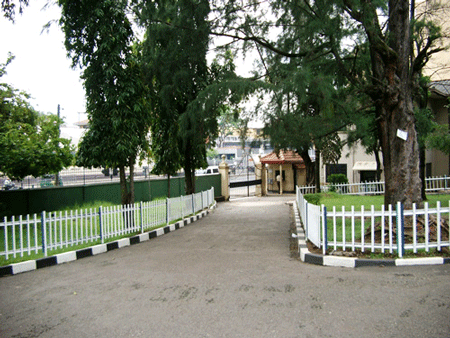 However, in spite of this abortion of justice Kenneth De. Lanerolle did not betray the trust and confidence placed on him by students and colleagues alike and it is to his lasting honour, that, this fine gentleman gave of his best even after the appointment of Mr.Cedric J.Oorloff CCS who in turn settled down to reorganize Wesley with the object of securing greater financial stability. Mr. Oorloff was used to office routine and administration, though at first aloof was found to be a very valuable asset. His rich experience in the then Civil Service and an ingrained culture resultant of a classical education, gave him at Wesley the necessary leadership at that time Wesley joined the free scheme of education. Nor can one forget the contribution to Wesley of Mrs. Oorloff a lady with an old world charm and a dignity which sets the right tone in any disturbing circumstance. Together both placed Wesley's need foremost. It was their joint effort that gave reality to the extensions at Wesley now called the Highfield Memorial Block-- In which effort Mr.Oorloff was ably assisted by a band of teachers too numerous to mention, old boys, students and well wishers alike, whose contributions, services and efforts have been gratefully recorded elsewhere.
However, in spite of this abortion of justice Kenneth De. Lanerolle did not betray the trust and confidence placed on him by students and colleagues alike and it is to his lasting honour, that, this fine gentleman gave of his best even after the appointment of Mr.Cedric J.Oorloff CCS who in turn settled down to reorganize Wesley with the object of securing greater financial stability. Mr. Oorloff was used to office routine and administration, though at first aloof was found to be a very valuable asset. His rich experience in the then Civil Service and an ingrained culture resultant of a classical education, gave him at Wesley the necessary leadership at that time Wesley joined the free scheme of education. Nor can one forget the contribution to Wesley of Mrs. Oorloff a lady with an old world charm and a dignity which sets the right tone in any disturbing circumstance. Together both placed Wesley's need foremost. It was their joint effort that gave reality to the extensions at Wesley now called the Highfield Memorial Block-- In which effort Mr.Oorloff was ably assisted by a band of teachers too numerous to mention, old boys, students and well wishers alike, whose contributions, services and efforts have been gratefully recorded elsewhere.
One finds it extremely difficult to mention by name all those wonderful men and women who strove silently yet valiantly in the service of Wesley. Mr Fred De Mel whose name is a close link with Wesley, retired as Wesley's Head Master. He was a teacher and an excellent one at teaching, a stern disciplinarian yet every approachable man. It is a matter of deep regret that Death had snatched both Mr Fred De Mel and Eric Silva another of Wesley's pillars who had laboured so unostentatiously and ungrudgingly, on the eve of Wesley's Centenary.
Miss Iris Blacker that diminutive stalwart of Wesley had at all times given of her best and so very many of us have had the good fortune to be guided by her as students at Wesley. Nor can one forget the contributions to Wesley's progress made by men like W. T. Canaga Ratna, Ivor De Silva, L.A.Femando, Fred Abeysekera, Ivan Ondaatjee, Frank Jayasinghe and Austin Salgado to mention a few they were all young teachers when he did credit to the cause of education at Wesley in no small measure. Wesley was fortunate to have at least some of her alumni associated themselves with their Alma Mater as teachers. One recalls the work of Fred Abeysekera who excelled not only in the classrooms an inspiring teacher but also joined in the hurly burly of sports particularly in Hockey.
One recalls with pride, men of the calibre of C. J. T. Thamotheram, C.S. Ponnadurai, Felix Premawardena, Arnold Sethukavaler David Joseph, Bertie Van Sanden and the late Maxwell York de Alwis who later became the Rev. M. Y. de Alwis- His premature death had caused a void that is hard to fill. Wesley had great teachers and one recalls to mind the late Messrs G. Joseph affectionately known as Uncle Joe, silent strong man, C.M.Fonseka and Mrs. Rachel Leembruggen, a gracious lady who served the school for many years. This is indeed a very inadequate list of those devoted and dedicated men and women not to mention Wesley's youth, who had at all times and often under extremely difficult terrain had not spared their time, effort and energy to urge the progress of the school they so loved. With all humility the writer of this article craves the pardon of any whose name had not been included even in passing and would affirm that such omission is without design.
 Wesley though a Methodist Institution had always enjoyed a Catholic outlook and besides having the good fortune to have men and women of the Anglican faith, apart from other faiths has a unique record of being so loyally served by those belonging to the Buddhist fold. This article is deemed incomplete if one fails to record the service of dedicated labour of Two great Buddhist gentlemen, Messrs Charles de Silva and Edmund Dissanayake. Charles de Silva's loyalty to the college and his contribution were so great that the Board of Management decided to appoint Charles as Wesley's Vice Principal. Edmund Dissanayake's name is so closely woven with that of Wesley for over 4 decades he had given of his best and continues to do so be it in the cricket field, or in the class room. If Wesley had so easily pulled itself out of many a tricky period when the circumstances were equally treacherous and risky it was due to men like Edmund that Wesley regained an even keel and her composure. It is not always that the kindergarten comes into the glare and limelight of a school yet the most important years of a child are nurtured and cultivated in this region. This task is indeed an exacting and demanding one.
Wesley though a Methodist Institution had always enjoyed a Catholic outlook and besides having the good fortune to have men and women of the Anglican faith, apart from other faiths has a unique record of being so loyally served by those belonging to the Buddhist fold. This article is deemed incomplete if one fails to record the service of dedicated labour of Two great Buddhist gentlemen, Messrs Charles de Silva and Edmund Dissanayake. Charles de Silva's loyalty to the college and his contribution were so great that the Board of Management decided to appoint Charles as Wesley's Vice Principal. Edmund Dissanayake's name is so closely woven with that of Wesley for over 4 decades he had given of his best and continues to do so be it in the cricket field, or in the class room. If Wesley had so easily pulled itself out of many a tricky period when the circumstances were equally treacherous and risky it was due to men like Edmund that Wesley regained an even keel and her composure. It is not always that the kindergarten comes into the glare and limelight of a school yet the most important years of a child are nurtured and cultivated in this region. This task is indeed an exacting and demanding one.
Wesley has had the good fortune of women of the calibre of Joyce Leembruggen whose devotion to service took priority over all her other interests. Her worthy successor Mrs. S.E.G. Perera yet continues the good work of her guru in the kindergarten. Other teachers associated with the lower and middle school were Miss Christobelle Mendis (now Mrs. Peiris), and Sheila Wijeyakone (nee Drieberg.) Mesdames Isla Perera and Dulcie De Mel together with other ladies had played a very prominent role both in the lower school and in the middle, and had helped in no small measure to create the correct climate to accommodate the wee Wesleyites. Wesley was also fortunate in having chaplains like Rev. D. K. Wilson whose period at Wesley brings to mind his Warm and gracious Ministry particularly with the hostellers. Silent and self effacing the Rev. David Wilson (now Dr.) offered the service of love and affection to all who came in contact with him. His wise counseling gave the necessary guide lines to many a baffled youth.
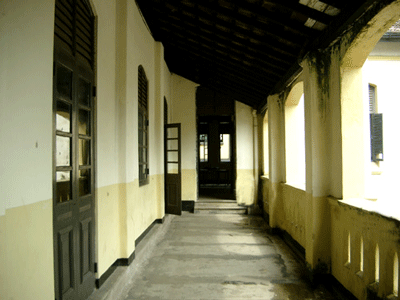 Rev. Cyril Premawardene of the Baptist Mission also functioned as chaplain of Wesley. His period of service was also one of deep spiritual assistance to many. The Rev. Pile is also remembered with gratitude for his contributions to the Christian Union in particular. So also the Revds. John Trevenna and Hugh Tattersall. With the departure of Mr. C.J. Oorloff who assumed duties as Principal of Trinity, Wesley welcomed her first old boy Principal. Mr. PH.Nonis, a thoroughbred Wesleyite who was one time acting Principal when Rev. John Dalby was Principal. He was largely instrumental in the purchase of the College Cricket Pavilion at Campbell Park. The difficult period that Mr. Nonis had to face at Wesley he did so with fortitude and courage and brought to bear many a decision with the welfare of Wesley foremost in his mind.
Rev. Cyril Premawardene of the Baptist Mission also functioned as chaplain of Wesley. His period of service was also one of deep spiritual assistance to many. The Rev. Pile is also remembered with gratitude for his contributions to the Christian Union in particular. So also the Revds. John Trevenna and Hugh Tattersall. With the departure of Mr. C.J. Oorloff who assumed duties as Principal of Trinity, Wesley welcomed her first old boy Principal. Mr. PH.Nonis, a thoroughbred Wesleyite who was one time acting Principal when Rev. John Dalby was Principal. He was largely instrumental in the purchase of the College Cricket Pavilion at Campbell Park. The difficult period that Mr. Nonis had to face at Wesley he did so with fortitude and courage and brought to bear many a decision with the welfare of Wesley foremost in his mind.
The life of the college had at all times been enriched and enlivened to a great extent by the college hostellers. These lads took upon themselves to maintain the key and tone of Wesley tradition. One recalls with gratitude the services rendered to the college hostel by men like Mr.O. A. Weerasooriya, R. R. Ariyanayagam, John Isaac (now Rev) Shelton Peiris, Ivor de Silva and L.A. Fernando, and at a time when Wesley was at Kittiyakara. The yeoman service rendered to the handful of hostellers by the late Eric de Silva. Nor can one or get the Hostel Matrons of this period. Lilian Wells who kept an eye on her wards with tact, firmness and love was indeed a very capable lady and so was Mrs. Ruth Hindle who heaved up those narrow stairs with such determination that her approach and departure was always known particularly by the errant! Miss P. Gomes who had for a number of years laboured patiently is indeed a worthy successor.
Wesley has had the distinction of having very distinguished old boys and within the last few decades among other worthy alumni was Sir O.E Goonatilleke. Ceylon's first Governor General who heads the long and illustrious line of Wesley's great sons who had done credit both to their country and abroad. A school such as Wesley, has to have necessarily a multitude of persons composed in outlook different from each Other yet all having the one goal and object the welfare of their Alma Mater. Nor can one forget others who had been adopted to the Wesley way of life and who in their turn had spared no pains to give of their best in whatever role They may be called upon to perform their duties.
One recalls with reverential gratitude the service rendered by the late Ranis truly he was an Institution within an Institution. Ranis was indeed a very loyal person and in his own way, style habits perpetuated the tradition of his dear Wesley. One also remembers men Like the late Wilbert ground boy, and Silva (Laboratory aide) and the present Marshall Perera. Wesley's lustre can also be referred to such loyal helpers which in their unobtrusive ways and behind the scene activities have helped her in no, small measure.
 One recalls with gratitude their labours. Rodrigo also belongs to this group of loyal men; This cursory record has also to note that the enthusiasm displayed in deciding that Wesley should remain a private school had shown a marked deterioration which had its gaunt shadows casting themselves on the financial, aspects of the school. Here though it is humanly impossible to record individuals and their valiant efforts to keep the old flag flying one is urged to record the inspiring work by a band of loyal Wesley lovers in initiating the Wesley College Welfare Society whose concise objective was to liaise between the Management and the other ancillary associations towards this effort. Much grueling work on a foundation basis was laid by its first President the late Mr. A. M. F. Siriwardene and Mr. A. R. Silva its Vice President.
One recalls with gratitude their labours. Rodrigo also belongs to this group of loyal men; This cursory record has also to note that the enthusiasm displayed in deciding that Wesley should remain a private school had shown a marked deterioration which had its gaunt shadows casting themselves on the financial, aspects of the school. Here though it is humanly impossible to record individuals and their valiant efforts to keep the old flag flying one is urged to record the inspiring work by a band of loyal Wesley lovers in initiating the Wesley College Welfare Society whose concise objective was to liaise between the Management and the other ancillary associations towards this effort. Much grueling work on a foundation basis was laid by its first President the late Mr. A. M. F. Siriwardene and Mr. A. R. Silva its Vice President.
The work of Mr. Emil Loos and the husband and wife team-Mr. & Mrs. H. L. Joseph is "recorded with gratitude. The Herculean efforts of the late Mr. A. M. F. Siriwardene to serve Wesley remains in one's memory as a monument, better than that of bronze or marble. As a firm foot hold was established rapidly. and men of the calibre of F. V. H. Labrooy, the late J. L F. De Mel, and Mr. J. C. P. Wikramanayake who in their turn spared no pains, the Wesley College Welfare Society grew into a very substantial arm and a very valuable, link indeed.
 The College with the rapidly changing conditions. of the country had also undergone various changes-lack of adequate accommodation, the need for more laboratory equipment are the most, glaring of Wesley's needs. Wesley's present Principal Mr. Shelton Wirasinghe had certainly an uphill task from his induction at Wesley, a very versatile and talented gentleman. Mr. Wirasinghe often had to ride on the horns of a dilemma in the throws of financial difficulties. However his grit and tenacity has never failed. It is refreshing therefore' to note that grit and industry has formed an oasis in an arid zone and Wesley offers Drama, oriental dancing and music, opportunities for radio and literary competitions~ the Student Christian Movement. The Sarasavi Saba of the finest school choirs whose timbre, vivace and depth is a reflection of Wesleys great maestro --Haig Karunaratne and his associates. And to strike the balance in the adage 'Men Sana in Corpore Sano' cricket and hockey Wesley offers cricket -Hockey and Rugger and Swimming among the other games.
The College with the rapidly changing conditions. of the country had also undergone various changes-lack of adequate accommodation, the need for more laboratory equipment are the most, glaring of Wesley's needs. Wesley's present Principal Mr. Shelton Wirasinghe had certainly an uphill task from his induction at Wesley, a very versatile and talented gentleman. Mr. Wirasinghe often had to ride on the horns of a dilemma in the throws of financial difficulties. However his grit and tenacity has never failed. It is refreshing therefore' to note that grit and industry has formed an oasis in an arid zone and Wesley offers Drama, oriental dancing and music, opportunities for radio and literary competitions~ the Student Christian Movement. The Sarasavi Saba of the finest school choirs whose timbre, vivace and depth is a reflection of Wesleys great maestro --Haig Karunaratne and his associates. And to strike the balance in the adage 'Men Sana in Corpore Sano' cricket and hockey Wesley offers cricket -Hockey and Rugger and Swimming among the other games.
It has to be proudly accepted that in spite of upheavals and difficulties, the pledge of supporting Wesley as a non-fee levying private school is being carried on. It is our fervent prayer that the Centenary Year will enlighten those who have stayed away from Wesley their Alma Mater to draw closer at the call of Wesley, in her every hour of need; for Wesley as it has been so correctly stated will certainly' note apologies but shall at all times valiantly and honorably justify her existence. This is the Toast for the long years ahead.
Article # 52.
 The best all round sportsmen would be many in the 125-year history of Wesley. The names listed here are only those come to my mind at the time of writing, and in no way comprehensive. Lou Adihetty National Hockey Goalie, Athlete, Cricketer and Cambridge Blue probably top the list along with his accomplishments in studies. We always looked forward to the centuries, and were let down if Lou fell short of our expectations. Darrel Maye in my opinion was outstanding, especially as he never would extend himself to look for fame. He was equally good in Athletics, Hockey, and Cricket.
The best all round sportsmen would be many in the 125-year history of Wesley. The names listed here are only those come to my mind at the time of writing, and in no way comprehensive. Lou Adihetty National Hockey Goalie, Athlete, Cricketer and Cambridge Blue probably top the list along with his accomplishments in studies. We always looked forward to the centuries, and were let down if Lou fell short of our expectations. Darrel Maye in my opinion was outstanding, especially as he never would extend himself to look for fame. He was equally good in Athletics, Hockey, and Cricket.
The best was when he demolished Royal to silence the pundits from the media, to change the headlines in Wesley's favour. Upali Samararatna was an outstanding Wicket-Keeper, if I remember right he did carry-on with a bleeding forehead for daring to be so closely behind the sticks. Soccer a sport he favoured like his brother Ranjit and he did excel in athletics. Sarath Wickremaratne, just made it look so easy, whenever he sailed a six straight on, or bowled when things looked bad. I watched vaulting over the bar to finish in the top three in pole vault, represented the University, Colombo & State Services in Hockey. Clifford Rodrigo was an unpretentious cricketer, like Darrell he has the honour of some of the best bowling figures. Left arm or leg spin I cannot remember. A national hockey player represented Mercantile and Colombo Hockey Association for many years. The last time I watched him play was at the Nationals in Matale 1971. A few minutes to the final whistle, he darted through the center, collected a long pass from the right extreme at the 25yds line, dazzled past the two Sri Lankan full-backs playing for Matale and twisted on his toes to just to spin and drive into the right corner of the goal to leave the goalie flat on his back. Colombo won this final with this goal.
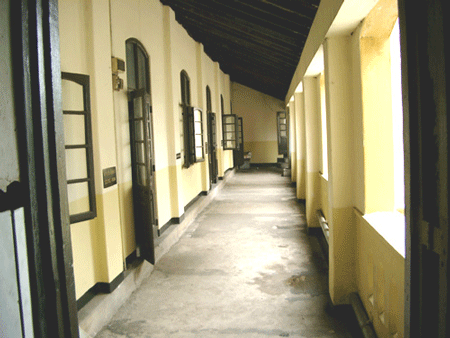 Mr.Walter Jayasuriya, the king of Hockey was there to hug C.T. as proud as he could be. Kenneth de Silva will be remembered more for his Cricket. But, he did excel in Hockey as a fullback, along with Diane Herft & Ratnavel as goalie. Kenneth also proved to be a good athlete (putt shot). Mervyn & Russel Harmer, both excelled similarly in Cricket, as wicket-keepers, in the Javelin throw in Athletics, or in Soccer. Bashudeen Musafer was one excellent sportsman. Rugby football was his favourite. He wore his pair of golden boots, whenever he kept hockey goals, played as a forward in soccer, or converted the goals in rugger. Was a good athlete; one of the most versatile sportsmen Wesley was fortunate to produced. Rajah Jayasuriya captained College Hockey to win the Schools Championships in 1965, Represented the country many times, a member of the Asian games team, and a National Hockey Umpire. A good athlete and made the College team in cricket & athletics. Reginald Batholomeusz was another exceptional Wesley Athlete. Broke the 100yds & 220yds college record in 1965; he had perfect style in the Long Jump. A public schools athlete; was awarded the best all-round sportsman award that year. Represented the Country in Rugby-Football, played cricket and hockey for Wesley to make it four sports to his credit.
Mr.Walter Jayasuriya, the king of Hockey was there to hug C.T. as proud as he could be. Kenneth de Silva will be remembered more for his Cricket. But, he did excel in Hockey as a fullback, along with Diane Herft & Ratnavel as goalie. Kenneth also proved to be a good athlete (putt shot). Mervyn & Russel Harmer, both excelled similarly in Cricket, as wicket-keepers, in the Javelin throw in Athletics, or in Soccer. Bashudeen Musafer was one excellent sportsman. Rugby football was his favourite. He wore his pair of golden boots, whenever he kept hockey goals, played as a forward in soccer, or converted the goals in rugger. Was a good athlete; one of the most versatile sportsmen Wesley was fortunate to produced. Rajah Jayasuriya captained College Hockey to win the Schools Championships in 1965, Represented the country many times, a member of the Asian games team, and a National Hockey Umpire. A good athlete and made the College team in cricket & athletics. Reginald Batholomeusz was another exceptional Wesley Athlete. Broke the 100yds & 220yds college record in 1965; he had perfect style in the Long Jump. A public schools athlete; was awarded the best all-round sportsman award that year. Represented the Country in Rugby-Football, played cricket and hockey for Wesley to make it four sports to his credit.

Article # 52(a)
Rodney Perera was another sportsman who enjoyed playing cricket, hockey, or taking part in athletics. His quick, faster than the clock run rate in batting was always a treat to the cheering squad that followed him one end to the other. Donald de Silva should not be forgotten as he represented the school in Rugger, Cricket, Hockey, & Soccer. Amaresh Rajaratnam & Diyanesh Rajaratnam were outstanding at Cricket, Rugger, & Athletics. Jayantha Wijemanna was a dependable hockey player, a good batsman in cricket, and did his house proud in athletics, he was well supported by his brother Prakrama. Rohan Amarasinghe followed the footsteps of Walter Jayasuriya to become an International 'A' grade umpire had the distinction of being selected to officiate at some of the prestigious International tournaments. Rohan was a Sri Lanka Schools Hockey player, captained the school at hockey and athletics. Champion athlete winning the 100 & 200m, possibly with new school records. Patrick Edema & Anton were excellent athletes. Anton a Sri Lanka Schools athlete was the best Long Jumper I had seen after Reggi. Patrick kept hockey goals, great in the field events for Wilkin house. Sridharan & Hariharan Jeganathan the unforgettable twins as they were outstanding sportsmen. Represented nationally in Cricket & Hockey, good athletes and helped the House in rugger and soccer. The other twins I should not forget are Aliph brothers, I remember one first name as Ray. Keen rugged players, good at cricket & athletics. Ponnambalam Sivasubramanium played cricket, did well in the 100m, and gave a lot of much needed strength to the rugger team. Excelled in college debating and was a college prefect. Siva was one of Wesley's AFS scholars, along with Selvanayagam, & Thalisingham. Siva's brother Purushothakumar was a public schools athlete, a top high jumper and a good criketer. Mano Gnanapragasam a sleek 400m & 800m runner, a outstanding rugger player. Brothers, Shee Hung & Ma Hung were tough Rugger players, strong at soccer, did well in cricket, and were in Moscrop's athletic team. Both were long standing hostlers, until both entered Medical College. Lal Jayasinghe from Katunayake opened bowling for College, participated in athletics and soccer. Lal was a college and hostel prefect. Sunil Fernando captained College cricket, and was a member of the first XI hockey team & the Colombo District team, and was a good athlete. Neil Harvie, Christopher Harvie were outstanding on Hockey, Athletics, and Cricket. Above all they were just great friends. Tyronne Harvie represented proved to be good left half at hockey, the sport he represented Nationally.
Article # 53(a)
The Inter House sports meet was one big event that was enjoyed by all students. The senior and junior houses were named after the school's principals and Head Masters. Wilkin & Dias (red), Passmore & Hunter (blue), Hillard & Mack (green), and Moscrop & Lemphers (Yellow). All hostellers by default were assigned to Moscrop. This however was changed in the 1960's as the other houses was at a disadvantage with those in the hostel having the advantage of having more time for practice, and access to all the facilities. But this resulted in the breakup of an established tradition as well as the coherent team spirit. The most coveted event was the One-Mile (a five & a quarter rounds on our 330yds. Track). The winner of this event was always looked up to as the hero in athletics. Since I was not a good sprinter, and was never even able to make the house team in the sprint events, I changed to the much tougher 880yds and 1 mile events. These middle distance events required stamina, endurance, and the will to train hard. I first started following training for this event when I was in the primary school, as I never had a chance in the sprints, with top athletes like Reggi Bartholomeusz & Chandra Kaluphana. I can only remember the 1-mile event from 1962. I can still picture the lanky, very agile Darrel Maye striding the last 60m from the east end of the grounds to the finishing line. He gave me the impression that he was not after the record. I am sure it was this year Rev. Neville Koch was a winner in the 880yds. Both were from Wilkin House. The next year, 1963, I was amazed by the dedication of Ranjit Akmeemana from the Hillard House training with extreme intensity with the determination to win the 1-mile race. To him it was an obsession to win and break the record. I had the opportunity to train with him, being allowed to pace him in the training session each evening at Campbell park. I was always about 50 yards behind him in his 440 yd interval running. Ranjit did win the 1-mile but was off a few seconds from the record. This year the honours went to Condrad Fernando another outstanding athlete for his 880yds. Condrad won the pole vault, beating Sarath Wickremaratne & Rodney Perera. However, J.Winslow's record remained intact. (Winslow was a public school & National pole-vaulter). Conrad excelled in both his events at the public schools. Reviewing their performances I could never imagine that I could have ever surpassed these great athletes. In 1964, the college hockey captain, Rajah Jayasuriya came very close to winning the event but looked back at the last 20m, to finish second. In 1965, Tyronne Maye tried to clone his brothers performance, but was edged out by Mohan Abraham, who very wisely trained with champions to become second. The 1-Mile and the 880yrds were challenged by two determined athletes, Jagath Fernando and Mano Gnanapragasam. Mano won the 440yds but had to concede the 880yds. Jagath failed to walk away with the Mile but performed excellently to come a close second. The best time-keepers were always nominated for this event: Mr. D.A.Pakkiyanathan, Mr.V.Chandrasekaran, Mr.Thambiah, & Mr. V.R.Roberts; they were our best teachers of science & mathematics, as such there was no chance of a challenge for any missed records. The one mile was replaced by 1500m when the weight and linear measurements changed to Metric in 1967. The prized I mile remained in the record books as it was from 1947. Ahamath whom I met a few years later at the College pavilion, was proud and honoured, that none of Wesley's best could wipe out the best 4 minutes 51 seconds of his life at Wesley.
Article # 53 (b)
Reginald Bartholomeusz in my mind still remains the best sprint athlete. He won the 100, 220yds, and the Long Jump. The first two breaks the record. At the public schools he changed to the 440yds. Reggi was best all-round athlete in 1965, and was one of Wesley's best. The other athletes during the period of 1962-1969: J.Winslow (pole vault), Asiriwarthan (440yds), Alfie David (440yds), Lal Fernando (Triple Jump), Darrel Maye (1 mile), Rev. Rohan Wijesinghe (Putt Shot & Discus), O.K. Hemachandra (hurdles), Condrad Fernando (pole vault & 880yds), Mervyn & Russel Harmer (Javelin), Somaweera Mendis (Javelin & Discus), Upali Silva (400, Triple Jump), Mano Gnanapragasam (440, 880yds), Jagath Fernando (I mile), Malik Sureweere (110m Hurdles), Chandra Kalupahana (100 & 220 yds), Rohan Amarasingha (100 &200m), Sextus Taylor (100 & 200m). M.C.A.Cader ( Putt Shot, 400m). Swarnin Wimalasena (Discus), Neville Koch (880yds), Hubert Silva (440yds). Christopher Harvie (800m & 1500m) and the rest of the best is to be filled in by those who remember.
Wesley College elected to be a private school under the Assisted Schools and Training Colleges, Special Provisions Act No. 5 of" 1960 as from 1st. December 1960. This decision was made by the proprietors of the school - the Methodist Church of Ceylon, with the blessings of the Parent-Teacher Association and the Old Boys' Union, which had earlier met and passed resolutions calling upon the proprietors of the school to opt to run 'it as a non-fee levying private school and pledging their wholehearted support to the management if this course, was adopted. The Wesley College Welfare Society itself was inaugurated at a meeting of parents, old boys and staff 'held on 27th November 1960. The' objects of the Society are to co-ordinate 'the efforts of all interested in the school and to render all the assistance financial and otherwise to maintain the school. Membership in the Society,is open to all parents who pay donations, and to Old Boys and well-wishers who contribute a specified amount to the "Society annually.

The main task of the Society is, however, to collect, the funds necessary for paying the teaching staff. The main source of these funds are the monthly donations which parents promise to pay as donations to the Society to meet the cost of educating their children. The first task of the Society was to meet parents and obtain from each a promise of payment of a monthly donation. This was a tremendous task as over 900 parents had to be contacted. The Society was most fortunate at the time in having the late Mr. J. L. F. de Mel, who had retired from the Staff after years of service, including over 10 years as Headmaster to take on the duties of Hony. Treasurer of the Society. Mr. de Mel was a tower of strength to the Welfare Society in its infancy. He contacted almost all parents almost single-handed and obtained from them promises of payment of donations. He served the Welfare Society as Hony. Secretary till November, 1969, when the state of his health made it impossible for him to continue to do so. If any one person can be given the credit for the success of the Welfare Society it must be Mr. de Mel. His retirement caused a wide gap in the ranks of the office-bearers of the Welfare Society. His death in January 1974 has removed from Wesley one who had the interests of the school very close to his heart, and who served Wesley College for nearly 4O years most faithfully The late Mr.A. M. E Siriwardena, the first President of the Society, served in that capacity till his death in 1962. The late Mr. F. V. H La Brooy succeeded him as President and he served in this capacity till his death in June 1971. The late Mr. La Brooy rendered very great service to the Welfare Society. Though he resided as far away from Colombo as Hatton he traveled down to Colombo to attend the meetings of the Welfare Board. His death Was a great loss to the Society.
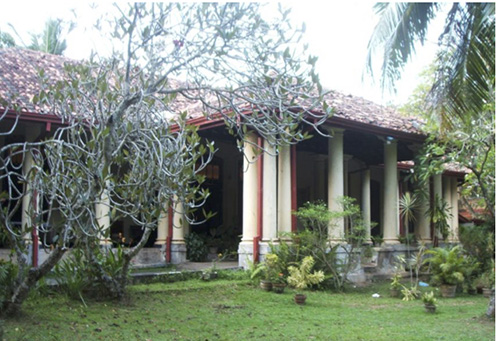
Among others who served the Welfare Society, are Mr. E. T Loos, who was the first Hony. Secretary, Mr. A. R. Silva who served as a Vice-President and Mr. J. C. P Wikramanayake who has served as the Hony. Treasurer from 1962 and is continuing in this capacity even today. The Society has received the fullest assistance and Co-operation from the proprietors of the school the Methodist Church, Ceylon. The advice and assistance given personally by the Presidents of the Church during the period, the Rev. F. S. de Silva, the late Rev. Dr. D. T Niles and the Rev. F.S de Silva, have been invaluable and have helped the Society very greatly. As stated earlier the Welfare Society's main task is the raising of funds for paying the salaries of the teaching staff, which is a -most difficult one. The salary bill has risen 'from about Rs. 13,000 per month in 1961 to over Rs. 33,000 per month today. The fact that the Society has been able to fulfill this task for 14 years now speaks volumes for the hard work done by its office-bearers. The total collections have been increased from Rs. 109,000 in 1961 to Rs. 330,000 in 1973. When one considers that these amounts have to be collected in driblets of Rs. 25/-per month from each parent, one can realise both the magnitude and the difficulty 'of the task.
 Besides the collections by way of monthly donations by parents,it has been necessary to raise funds from other sources to keep the school going. The main source of these funds are special donations which are collected from the parents of new boys who are admitted each year. Other sources are profits from the Karlsruhe Nursery, which is run by the Society, profits of the school Tuck-shop, which is run by a group of parents and Old Boys to help the school, contributions from non-parents,, Old Boys and collection on Collecting cards. issued to the students each year. At present about 35 per cent of the collections made annually come from these other sources. On paper the running of a school on payments made voluntarily by parents who promise to do so when admitting their sons to the School would appear to be an easy task. In fact, if al parents honour their promises the collections would- be enough to meet the salary bill and even more. It is, however, a sad fact that many parents who put in their children after making a promise of a monthly donation fall back on their promise. The fact that school authorities can not do anything to make parents pay the donations they have promised and that the school must continue to keep on the children of parents who choose to break their promises and to treat them in the same way as the children of parents who honourably keep their promises, no doubt encourages such parents to do so. This tendency has caused great difficulty to the office-bearers of the Welfare Society. It is impossible for office-bearers to visit parents. Even writing letters means additional work to those honorary workers. If only parents act honourably and pay what they promise regularly the task of the office-bearers would be so much easier, and the funds collected from other sources could be diverted to meet the other pressing needs of the school, such as the proper maintenance of the buildings and grounds, the provision of all the other amenities which a school of the standing of Wesley College should provide, including the proper equipment for science laboratories and commercial classes and the best facilities for sports. The writer closes this with the fervent hope that the co-operation of parents will improve sufficiently to enable the Society to achieve this happy position very early.
Besides the collections by way of monthly donations by parents,it has been necessary to raise funds from other sources to keep the school going. The main source of these funds are special donations which are collected from the parents of new boys who are admitted each year. Other sources are profits from the Karlsruhe Nursery, which is run by the Society, profits of the school Tuck-shop, which is run by a group of parents and Old Boys to help the school, contributions from non-parents,, Old Boys and collection on Collecting cards. issued to the students each year. At present about 35 per cent of the collections made annually come from these other sources. On paper the running of a school on payments made voluntarily by parents who promise to do so when admitting their sons to the School would appear to be an easy task. In fact, if al parents honour their promises the collections would- be enough to meet the salary bill and even more. It is, however, a sad fact that many parents who put in their children after making a promise of a monthly donation fall back on their promise. The fact that school authorities can not do anything to make parents pay the donations they have promised and that the school must continue to keep on the children of parents who choose to break their promises and to treat them in the same way as the children of parents who honourably keep their promises, no doubt encourages such parents to do so. This tendency has caused great difficulty to the office-bearers of the Welfare Society. It is impossible for office-bearers to visit parents. Even writing letters means additional work to those honorary workers. If only parents act honourably and pay what they promise regularly the task of the office-bearers would be so much easier, and the funds collected from other sources could be diverted to meet the other pressing needs of the school, such as the proper maintenance of the buildings and grounds, the provision of all the other amenities which a school of the standing of Wesley College should provide, including the proper equipment for science laboratories and commercial classes and the best facilities for sports. The writer closes this with the fervent hope that the co-operation of parents will improve sufficiently to enable the Society to achieve this happy position very early.
Researched by Dr Nihal D Amerasekera
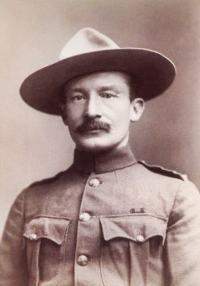 The Scout Movement was started in 1907 by Robert Stephenson Smyth Baden-Powell, who was born on 22nd February 1857 in London, UK. Baden-Powell started to write his ideas in a book. What happened next was incredible. Across the United Kingdom thousands of boys and girls spontaneously formed themselves into Scout troops of their own to try out activities from the book.
The Scout Movement was started in 1907 by Robert Stephenson Smyth Baden-Powell, who was born on 22nd February 1857 in London, UK. Baden-Powell started to write his ideas in a book. What happened next was incredible. Across the United Kingdom thousands of boys and girls spontaneously formed themselves into Scout troops of their own to try out activities from the book.
As the popularity of Scouts increased, younger boys were also wanting to join in and were being organised into troops of their own. In 1916, Baden-Powell started the Wolf Cubs, providing fun and adventure for boys aged between eight to eleven. Activities included lighting fires, how to use a compass, give first aid, how to look after themselves and many other things.
In 1967 Wolf Cubs had their name changed to Cub Scouts. As early as 1908 Scouting was starting in many of the British outposts of the Empire including Ceylon. The movement was so successful in its early years that B-P decided to hold world gatherings to bring all scouts from all cultures together in one big celebration. These gatherings became known as World Jamborees, and the first was held in London in 1920. B-P.
B-P.'s health deteriorated to the point that in 1938 he moved to Kenya to spend the last days of his life in Africa. He finally passed away on January 8th 1941. In his belongings was his last message to Scouts throughout the world:
If you have ever seen the play 'Peter Pan' you will remember how the pirate chief was always making his dying speech because he was afraid that possible, when the time came for him to die, he might not have time to get it off his chest. It is much the same with me, and so, although I am not at this moment dying, I shall be doing so one of these days and I want to send you a parting word of goodbye. Remember, it is the last time you will ever hear from me, so think it over. I have had a most happy life and I want each one of you to have
a happy life too.
I believe that God put us in this jolly world to be happy and enjoy life. Happiness does not come from being rich, nor merely being successful in your career, nor by self-indulgence. One step towards happiness is to make yourself healthy and strong while you are a boy, so that you can be useful and so you can enjoy life when you are a man.
Nature study will show you how full of beautiful and wonderful things God has made the world for you to enjoy. Be contented with what you have got and make the best of it. Look on the bright side of things instead of the gloomy one.
But the real way to get happiness is by giving out happiness to other people. Try and leave this world a little better than you found it and
when your turn comes to die, you can die happy in feeling that at any rate you have not wasted your time but have done your best.
'Be Prepared' in this way, to live happy and to die happy - stick to your Scout Promise always - even after you have ceased to be a boy - and God help you to do it.
Your friend,
Robert Baden-Powell
Scouting at Wesley
The 14th Colombo Scout Troop bound us to the fellowship of Scouting. We met some of our bosom friends whatever- ethnicity or economic background while frolicking at camp or toiling on a hike. Sometimes, the endless disagreements and the ensuing quarrels, in the fullness of time, become part of the fun. As the rains bucket down and winds lash we learnt to weather the storms. Whatever our differences the skies do finally clear and Scouting friendship eventually binds us together.
Much of the history of scouting at Wesley is lost in the mist of time. Some of it however is chronicled with careful detail and accuracy. They embellish the Double Blue International. The memories that have adorned thousands of friendships have survived and thrived in the school Scouting movement. With this record, more friendships can be made; this time, to cut across generation differences. The present day Scouts can empathise with the Scouts of the past, trudging through swampy land and pest-infested upcountry terrain on their way to a lonely peak like Pidurutalagala. To hear of each other’s experience is to be inspired and enjoy walking along the glorious path of our illustrious predecessors. They will always remain our friends.
Mr P.T Cash started Scouting at Wesley College circa 1916
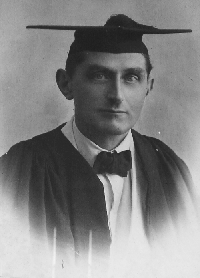 During Mr. Cash's period of service in Ceylon, he once officiated as the acting Chairman of the North Ceylon District of the Methodist Church, and, prior to it, he was also a lecturer in Zoology at the Ceylon Medical College. He was a pioneer in Scouting too, for he was the first Scoutmaster of the Wesley Troop formed somewhere about 1916, and his enthusiasm roped me and another young master (Mr. C.M. Fonseka) in as his first assistant -scoutmasters. In addition to these activities, he wrote occasionally to periodicals like the 'Ceylon Causerie"-_. and quite lately, from Britain, to the "Ceylon Fortnightly Review", on subjects relating to travel and natural history------ the animals of his "Household Zoo" series, comprising no( only mammals and birds, but other creatures like spiders, centipedes, scorpions, tarantulas, snakes and cicadas.
During Mr. Cash's period of service in Ceylon, he once officiated as the acting Chairman of the North Ceylon District of the Methodist Church, and, prior to it, he was also a lecturer in Zoology at the Ceylon Medical College. He was a pioneer in Scouting too, for he was the first Scoutmaster of the Wesley Troop formed somewhere about 1916, and his enthusiasm roped me and another young master (Mr. C.M. Fonseka) in as his first assistant -scoutmasters. In addition to these activities, he wrote occasionally to periodicals like the 'Ceylon Causerie"-_. and quite lately, from Britain, to the "Ceylon Fortnightly Review", on subjects relating to travel and natural history------ the animals of his "Household Zoo" series, comprising no( only mammals and birds, but other creatures like spiders, centipedes, scorpions, tarantulas, snakes and cicadas.
Rev R.W Pile Chaplain 1952-56
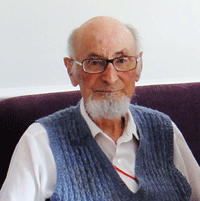 Rev Wilfred Pile soon immersed himself fully in the life of the school. His most passionate enthusiasm, besides his family and the Church, was Scouting. He took charge of the 14th Colombo Scout Troop at Wesley College. I remember the scouting sessions in Principal’s lawn which became very popular. We produced 2 Queen Scouts during his time which brought great honour to our country and the school. The Queen's Scout Award is the culmination of everything you can achieve in Scouting and is the highest youth award achievable in the Scouting movement.
Rev Wilfred Pile soon immersed himself fully in the life of the school. His most passionate enthusiasm, besides his family and the Church, was Scouting. He took charge of the 14th Colombo Scout Troop at Wesley College. I remember the scouting sessions in Principal’s lawn which became very popular. We produced 2 Queen Scouts during his time which brought great honour to our country and the school. The Queen's Scout Award is the culmination of everything you can achieve in Scouting and is the highest youth award achievable in the Scouting movement.
Links to further reading
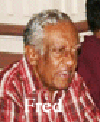
They were great days. Days of immeasurable fellowship, Good fun, Clean laughter and the Joy of living! The 14th Colombo was a way of life to us a way of life that meant, thinking for oneself; accepting leadership and responsibility; coming out fighting against odds; making the best of a situation; ascertaining the interests of a group; looking at the cheerful side of things; breathing the cold, crisp air of the mountains; getting up at dawn in icy winds; losing one's way in the thick mists of the mountains; testing the tang of salt air; regulating one's life to the pulsating, throbbing life of the immense ocean; burning one's breakfast of Quaker Oats and Green Peas or knocking down a tin of Golden Syrup in one's tent! The smell of wood smoke in one's hair: eyes tearing the peeling of onions; figuring out a clove hitch from the sheep shank-or square and diagonal lashing from the timber hitch and the fisherman's knot! Crane fires and trench fires signaling getting soaked to the skin in the rain; trekking through forests and climbing like the chamois-up hill and down dale-being fashioned to be rugged and self reliant to think of others
The 14th Colombo was all this and more to us. People were a predominant feature of the 14th Colombo and People meant life in all its complexity. One hardly realised then that one was growing up and being attuned to the World and human relationships Life itself, One met a great variety of persons the stolid dependable types, the casual indifferent and inactive ones (whose sojourn in the Troop was short-lived) the calm, and excitable types, and out of this medley grew the 14th Colombo (ordinary, average people) into an interdependent community at Wesley.
 Thinking of persons one cannot but recall the Revd. James Cartman (Carty as he was affectionately called) who spent many a day with us at camp, in Bouna Vista, Galle, in particular riding the waves with us, and taking part in an improvised game of water polo. J.E. (J. E. de Silva, GSM later, to be known to the Scout World as "Blue Feather) on whose dedication and keenness rested the 14th Colombo for over 20 years.
Thinking of persons one cannot but recall the Revd. James Cartman (Carty as he was affectionately called) who spent many a day with us at camp, in Bouna Vista, Galle, in particular riding the waves with us, and taking part in an improvised game of water polo. J.E. (J. E. de Silva, GSM later, to be known to the Scout World as "Blue Feather) on whose dedication and keenness rested the 14th Colombo for over 20 years.
A man of varied talents, loved by us for his fairness and integrity, Kenneth de Lanerolle familiar figure on Visitors Day giving us the inspiration to get more involved, and to be dedicated to the ideals one cherished. B. R. Blaze "Bruised Reed" SM 1947-1948, a talented man with a great sensitivity and feeling for Nature and its immense grandeur. I often recall his "Shakespeare for Scouts"
(1) The Daily Good Turn How far that little candle throws its beams So shines a good deed in a naughty World
(2) A Word in Season Good name in Man and Woman, dear my Lord is the immediate jewel of their souls who steals my purse, steals trash, but he that filches from me my good name, Robs me of that which not enriches him, and makes me poor indeed.
 Shelton de Silva (now the Rev S. A. de Silva) S. M. for a short time; Cyril Ferdinands (Troop Leader) my predecessor, the high pitched Soprano, a constant source of merriment in camp! Shelton Peiris, a born Leader and one time Senior Prefect of Wesley, took over as SM at a time when the Troop was literally without a Staff Adviser consequent on the departure of "J.E." to Royal, in March 1949; Edmund Dissanayake, yet another former Senior Prefect, acted as ASM.
Shelton de Silva (now the Rev S. A. de Silva) S. M. for a short time; Cyril Ferdinands (Troop Leader) my predecessor, the high pitched Soprano, a constant source of merriment in camp! Shelton Peiris, a born Leader and one time Senior Prefect of Wesley, took over as SM at a time when the Troop was literally without a Staff Adviser consequent on the departure of "J.E." to Royal, in March 1949; Edmund Dissanayake, yet another former Senior Prefect, acted as ASM.
Of my contemporaries: I think particularly of
Hilary de Alwis (Director Browns Group of Companies),
Ranjit Seneviratne - Engineer Walkers,
Durand Goonetillêke (DO) Electrical Engineer,
the late Gordon Amarasekera -fondly known as "Python",
Leonard Perera (he was a capable scribe)
Dr. C. S. Chang (later Orthopaedic Surgeon U.K),
Neville Weerasekera, General Manager of the Ceylon Petroleum Refinery,
J. E. Gunasekera (Attaya Junior) Attorney-at-Law, Matale;
Dr. Maharoof Ismail - Director of the M.R.I.,
Jauffer Sadique, Chief Assessor, C.M.C.,
D.B.C. (Balu) Mack, now in Australia, who excelled as a sportsman for the University of Sri Lanka and the Navy,
G.B.S. Seneviratne, reported to be doing free lance journalism in the UK,
Srilal Karangoda -Motor Engineer,
Mahinda Upasena buyer for the Iraq Government,
A. P. Batuwitage (UK),
Gladwin Wijeyaratne (of Jonathan & Co.,)
W. G. de Silva, the famous "Camp Dog" (now turned a very responsible Pharmacist) to whom the loss of many tins of corned beef was traced. He growled and barked like a real one, that dark and mist-wrapped night at camp in Bandarawela, as he was lassoed and tied to a tree, by Shelton Peiris,
S. M. whose hands were also bitten in the ordeal!
The late Revd. Maxwell de Alwis, Dan Ahmat,
Neil Joseph (now in Australia),
Dr Bernard Peiris - Department of Agriculture, Peradeniya,
B. A. P. Mendis,
Wyville and Orville Mottau,
the late Maxwell Rodrigo,
Errol Juriansz (Excise),
M. Lameer,
H. M. Ghouse,
D. P. Sirisena,
M. Faleel,
A. B. Corner,
D. P. Ekanayake (Air Ceylon )
P. B. Herat,
R.Jayatunge, and
N Samsudeen (later to be "Selvyn Sam" the Singer!)
Harold Mathysz,
Brian Jacotine,
Gladwin de Silva,
Alan Ratnarajah (Australia),
E. G. de Zylwa,
Neil Algama,
K .D. Zoonoob, were the Seniors of the time.
The following excerpts from my Log Book would be of interest to readers:
Nuwara Eliya Camp-April 5th - 12th 1948
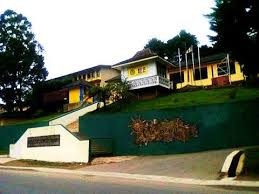 We reached Nanu Oya by 7.30 a.m. and left for Nuwara Eliya by bus, and after a record breaking breakfast went to Gamini Vidyalaya our destination.... The Camp site was tidied dry and wet pits dug and the Eagles started cooking 42nd Colombo - Royal College were also camping in Nuwara Eliya and we had visits from Dr Trevor Anghie and Kaleel who invited us to their camp fire.... We left for the Camp Fire by 6.30 p.m. with the temperature recording 44 degrees F outside Coming from Colombo, it was like being locked up in an immense Frigidaire! Early the next morning, the Peacock Patrol left on their hike to Pedro- with a few Eagles, Foxes and Woodpeckers for "company"! Gordon Amarasekera, who was leading the way till we came to the 6000 feet mark suddenly jumped out of his skin, yelling, "Python! Python"! doing several cartwheels into the scrub! Everyone ran helter-skelter to discover that he had only seen a mottled fir log, old with age! Dinner ended, Hilary de Alwis entertained us at the top of his raucous voice - "Nonage Ale, gemada sarlay" shattering the tranquility of a peaceful, sleepy Nuwara Eliya.
We reached Nanu Oya by 7.30 a.m. and left for Nuwara Eliya by bus, and after a record breaking breakfast went to Gamini Vidyalaya our destination.... The Camp site was tidied dry and wet pits dug and the Eagles started cooking 42nd Colombo - Royal College were also camping in Nuwara Eliya and we had visits from Dr Trevor Anghie and Kaleel who invited us to their camp fire.... We left for the Camp Fire by 6.30 p.m. with the temperature recording 44 degrees F outside Coming from Colombo, it was like being locked up in an immense Frigidaire! Early the next morning, the Peacock Patrol left on their hike to Pedro- with a few Eagles, Foxes and Woodpeckers for "company"! Gordon Amarasekera, who was leading the way till we came to the 6000 feet mark suddenly jumped out of his skin, yelling, "Python! Python"! doing several cartwheels into the scrub! Everyone ran helter-skelter to discover that he had only seen a mottled fir log, old with age! Dinner ended, Hilary de Alwis entertained us at the top of his raucous voice - "Nonage Ale, gemada sarlay" shattering the tranquility of a peaceful, sleepy Nuwara Eliya.
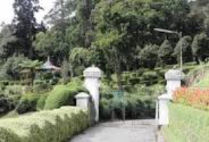 |
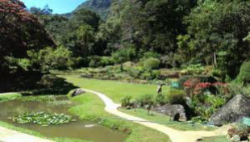 |
Saturday had dawned and we were on our way to the Hakgalla Botanical Gardens - Sam Silva and Durand Gonetilleke having left for Adam's Peak when we encountered "Bruised Reed" Blaze in his battered Austin, his radiator emanating steam from every pore! An Old Wesleyite- Ishak - passing by in his Citreon hailed us on his recognising the double blue scarves and Hilary who groaned and creaked was given a lift.... We less fortunate guys plodded on in~ the thin drizzle, eager to see the famous Sita Amman Temple at Sita Eliya.
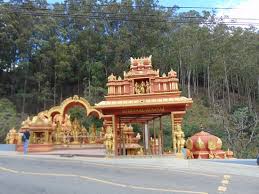 |
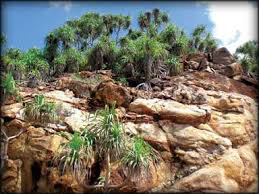 |
Sunday the 11th April: The Ferdinands brothers and Hilary, a Saintlier crew one hardly met, went to Church to ostensibly pray, but in fact to find out who the girl in red was we had met many a time on our buying spree via the Nuwara Eliya Park! ... Went to the Clifford Pavilion and saw "The Upturned Glass" that is, those of us not on - The cooks on Duty List! to encounter Mr. Kenneth de Lanerolle, who discreetly failed to recognise us!
Back at Camp... A hot dinner of corned beef and Bachelor's Beans in tomato sauce with hot crisp bread. What luxury! ... free entertainment of the highest order, again - by Hilary- - "Nonage Ale, gemada sarlay", of course, to the accompaniment of saucepans, ladels, spoons and forks and a wild dance by Hilary never seen before. (We were reliably informed by Ferdi that he had 3 glasses of Sanatogen, 3 spoonsful of Radio Malt, 10 cod liver oil capsules and 1 tin Camp pie before the performance!) ... and so Good Bye to Nuwara Eliya and visions in our minds of another Camp ! -
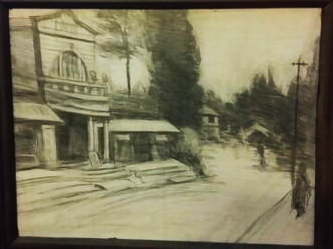 Bounavista, Galle - 16th - 21st August 1948. Monday, the 16th August ... 9 p.m. Maradana Railway Station - Shelton de Silva's "Roll pang" and Sakkili Band enabled us to get a compartment to ourselves - including a section that was reserved for us! On reaching 'Galle, we were packed into a bus (we thought we now knew what sardines in a can felt like!) - Neil Joseph was so completely squeezed that he did feel he had shrunk a couple of inches! (He was obviously not sanforised, as they say in the ads.) Led by D. F. (Durand Goonetileke) puffing and panting, bathed in our sweat, we reached the breezy hill of Bouna Vista to be greeted by the Rev. James Cartman, and Mr. I. K. G. Chandrasena A. F. C. Galle -the latter an Old Wesleyite and keen Scouter himself. ... a dip in the sea. . . water polo-.. .Maxie Rodrigo, on Carty's shoulders.., a water fight... Carty's team vs Shelton's... sand in our pockets.... heavy as lead.... blocked ears... a dry towel. .. dinner... and bed after a half hour's singing.... The Inter patrol competitions had commenced... The camp site was spotlessly clean .... "gadgets" sprung up everywhere pounds of cheese consumed.. .The Double Blue fluttered proud and high. Fires burned, fresh fish sizzled in the pans... The camp was a hive of organised, planned activity.
Bounavista, Galle - 16th - 21st August 1948. Monday, the 16th August ... 9 p.m. Maradana Railway Station - Shelton de Silva's "Roll pang" and Sakkili Band enabled us to get a compartment to ourselves - including a section that was reserved for us! On reaching 'Galle, we were packed into a bus (we thought we now knew what sardines in a can felt like!) - Neil Joseph was so completely squeezed that he did feel he had shrunk a couple of inches! (He was obviously not sanforised, as they say in the ads.) Led by D. F. (Durand Goonetileke) puffing and panting, bathed in our sweat, we reached the breezy hill of Bouna Vista to be greeted by the Rev. James Cartman, and Mr. I. K. G. Chandrasena A. F. C. Galle -the latter an Old Wesleyite and keen Scouter himself. ... a dip in the sea. . . water polo-.. .Maxie Rodrigo, on Carty's shoulders.., a water fight... Carty's team vs Shelton's... sand in our pockets.... heavy as lead.... blocked ears... a dry towel. .. dinner... and bed after a half hour's singing.... The Inter patrol competitions had commenced... The camp site was spotlessly clean .... "gadgets" sprung up everywhere pounds of cheese consumed.. .The Double Blue fluttered proud and high. Fires burned, fresh fish sizzled in the pans... The camp was a hive of organised, planned activity.
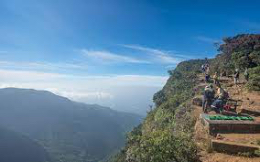
"Monty" (Carty's pet hound) had just licked Freda's plate clean.... The results of the day's competitions 1st Eagles 2nd Foxes - Wednesday, the 18th August. The Rev. Cartman left camp as it was the eleventh anniversary of his wedding, taking home with him a resounding BRAVO? Ghouse established a new "those" record ... 18 and very sick and clean out!... Friday, the 20th-Orderly Patrol P/L M. Ahmat (Foxes) P/L Fred Abeysekera (Eagles) P/L Leonard Perera (Woodpeckers) a splendid Camp fire. J. E. de Silva, Group Scout Master, was ceremoniously named "Blue Feather" by I. K. G. Chandrasena, Commissioner... Recruit C. S. Chang was invested. The moon sparkled on us with a greenish brilliance and created a glow of warmth-particularly for the girls of the Galle Convent, at. Southlands, who were present at our Camp fire! (Note: I shudder to think of them now, with their double chins and preoccupations, for they like us, have, surely grown old!) Saturday the 21st.... Hopes of extending camp were shattered and we were homeward bound -on .The C.G.R.'s 3 p.m. Diesel Express, -with "Roll Pang" echoing and re-echoing down the train's corridors!
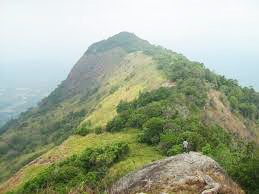
The next ......... I yet have with me a circular issued to all campers, dated the 13th March, 1951, and give in some detail the list of dry rations one had to take along, with notes as then written, as it indicates how little one had to pay for so much! Needless to say this camp was the best camp of our lives. We did not labour up, climbing up to the plains by the tunnel in Ohiya, as we had done before, but in a sense floated in the air with visions of University life ahead but with a nostalgia that this was our last camp at Wesley. -. - - Diyagama East, Diyagama West, West 'Haputale, Kirigalpotta, World's' end, mottled trout for breakfast-the rainbow trout - that got away; Camp fires, songs and jollity Great Friendships. This was the nadir of our association with the 14th Colombo.... It had ended all too soon! As I now recall those joyful and carefree days, I literally travel back to my boyhood, and I am personally glad I kept notes of our camps, and somehow preserved my Log Book, which is if not historical, at least a version of those happy days we spent together as the 14th Colombo.
........................................................................
 The Final Farewell: When the Rev James Cartman (Principal) left Wesley, and the Troop accorded him a farewell on the 20th September, 1949, he wrote the following in my Log Book:
The Final Farewell: When the Rev James Cartman (Principal) left Wesley, and the Troop accorded him a farewell on the 20th September, 1949, he wrote the following in my Log Book:
Those were prophetic words!
........................................................................
Links to further reading
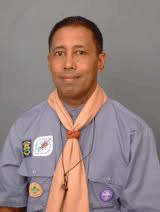
It was in 1917, that Acting Principal. Rev.Percy T. Cash M.A. B.Sc., founded the Scout Troop at Wesley - registered as 14th Colombo. He was the first Scout Master, and was assisted by Mr.S. Wijesooriya, a Kings Scout from Galle; who was the Instructor. That year the College had a strength of 64 Scouts forming 98 Patrols. the keenness of the Scouts was demonstrated, as before long there was 5 Kings Scouts.It was in March 1918, that the Troop made its first public appearance when they formed a Guard of honour to to the Colonial Secretary, the Hon. R. Edward Stubbs, when he presided at the College prize Giving of that year. Then again, a big event was the celebration of the Troop's Anniversary on the 25th of July 1918, with the Director of Education Mr. E.B. Denham distributing the badges and opened the 14th Colombo Scout den. On that occasion he was welcomed by the Deputy Colonial Scout Commissioner, Mr. Vernon Grenier and the Scout Master Rev. Percy T. Cash. The occasion was presided over by the Rev. Henry Highfield, Principal, who was back from furlough.
 Over the years that followed, the 14th Colombo grew from strength to strength actively participating in the National events and also in the rare Jamborees held here as well as abroad. It was in the early 1940's that J. E. de Silva, the Scout Master and Kings Scout T. M.N. Mahmooth attended the World Jamboree in Agra, India. The name of J. E. de Silva is synonymous with Scouting at Wesley, a keen Scouter who made scouting and the regular camps occasions of great experience and no doubt enjoyment. Mr. J.E. de Silva had a flare for outdoor life and he inculcated it among the Scouts. Wood work, Pottery, Sculpture, Art, Leather and Rattan work were taught to the Scouts apart from getting them interested in other hobbies, particularly those that had an award. It was a great privilege to be trained by this all time great Scout Master. As subsequent Scouters the names of Messrs. I. G. K. Chandrasena, Shelton Peiris are among the many who were trained Scouters and from time to time took command of the 14th Colombo. The 14th Colombo was fortunate to associate men of the calibre of Ratnam Abraham and Lionel Silva and Cyril Ferdinands. There were many many more who had helped in the growth and the maintenance of the highest ideals in Scouting.
Over the years that followed, the 14th Colombo grew from strength to strength actively participating in the National events and also in the rare Jamborees held here as well as abroad. It was in the early 1940's that J. E. de Silva, the Scout Master and Kings Scout T. M.N. Mahmooth attended the World Jamboree in Agra, India. The name of J. E. de Silva is synonymous with Scouting at Wesley, a keen Scouter who made scouting and the regular camps occasions of great experience and no doubt enjoyment. Mr. J.E. de Silva had a flare for outdoor life and he inculcated it among the Scouts. Wood work, Pottery, Sculpture, Art, Leather and Rattan work were taught to the Scouts apart from getting them interested in other hobbies, particularly those that had an award. It was a great privilege to be trained by this all time great Scout Master. As subsequent Scouters the names of Messrs. I. G. K. Chandrasena, Shelton Peiris are among the many who were trained Scouters and from time to time took command of the 14th Colombo. The 14th Colombo was fortunate to associate men of the calibre of Ratnam Abraham and Lionel Silva and Cyril Ferdinands. There were many many more who had helped in the growth and the maintenance of the highest ideals in Scouting.
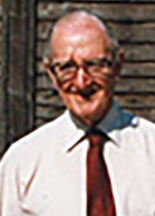
In this connection we must remember the Rev. James Cartman, Wesley's vibrant Principal who was responsible in getting the Troop reorganised after the return to the College at Karlsrhue after the war. The war years had completely disorganised the Troop and loyal scouts had left the school. The Rev. Cartman not only organised camps but had also visited these camps. Both Scouts and Scouters looked forward for his visit with a car load of goodies. Patrol Leaders like Fred Abeyesekera, M. Ahamat, Leonard Pieris, Gordon Amerasekarare but a few who put back the 14th Colombo on the rails.
My association with the 14th Colombo goes back to the latter part of 1972, just after the late Group Scout Master George Peiris was in control. He was a Head Quarters Commissioner and a parent who had been involved from 1970. Ill health did not permit him to continue with the activities of the Troop as much as he desired. It was during this stage that the movement was rejuvenated by Mr. A. H. G. Ameen of 28th Colombo - now an Attorney-at-Law. We owe a great debt of thanks to Mr. A. H. G. Ameen the 6. S. M. who infused a spirit of activity. He was followed by Sarath Fernando, who was the Troop Leader who did yeoman service and had to leave on being commissioned into the Army, and now serves as a Brigade Commander. One recalls the very exciting camps to various parts of the island when as Troop Leader, I together with Sharir, Elmo, Shankar, Ben and Riya was involved in the planning as members of the Court of Honour of these camps. We yet remember the camp spirit and the unity that scouting stands for. The College Chaplain, the Rev. John Trevanna was also associated with the 14th Colombo prior to the seventies. It was during this time the very last Queen's Scouts -A. K. Nazimudeen and Rohana de Silva won this award. The award has now been replaced by the Presidents Award which had been regularly won by our Scouts.
When I took over in 1978 after course of Scouters training, I closely followed the footsteps of Sarath, taking full charge of a very lively Scout Troop. They were very keen. We participated in all National and District events and also in the college events particularly the guards of Honour at the Prize Day. I have been associated with the Troop for 18 years as its Scouts Master apart from my association as a Scout. the following Scouts; Madhu Siriwardena, Gishan Mendis, S. H. M. Zabith, Nalin Ariyaratne. Roshan Weerainghe, Shane Philips, Thakshila Codawatte, Poojitha Rajapakshe, Samira Kulatunge, S. M. S. Azmaan, and Nadun Alwis participated in foreign jamborees. I would like to mention here, the services rendered by Mrs. Lakshmi Amaratunge, Akela who was associated with the Cubs dating back to 1960's. Mrs. Moline Philips who assisted Mrs. Amaratunge since the 1980's succeeded her as Akela in 1993. She is now a District Cub Akela.
 It was my privilege to be able to organize over the 18 long years many camps which were set up in very many parts of the island. Many of the interesting camps were to Anuradhapura, Horton Plains and the Sinharaja Forest. It seemed to be we were in a world of our own. These camps had certainly given the practical approach
It was my privilege to be able to organize over the 18 long years many camps which were set up in very many parts of the island. Many of the interesting camps were to Anuradhapura, Horton Plains and the Sinharaja Forest. It seemed to be we were in a world of our own. These camps had certainly given the practical approach
to the challenges a scout faces in life, which on test, the keen and the alert are awarded the Presidents Award of which the Troop have many. There was also the stiff training and the keen competition at the Scouters Wood Badge Course, the holders of which are, Riya Azoor, Sarvanraj and yours faithfully!
The Troop, their Patrol Leaders, many assistant Scouters and I have logged many memorable events, nostalgic now as we look back! I shall be failing in my duty if I do not mention for record, the names of former Scouts who served as ASL's from time to time; Sarvanraj, Fawaz, Madhu Siriwardena, Prasanna Gunawardena, Murtaza Mamujee, Roshan Weerasinghe, Shane Philips, Terence Christopher, Samira Kulathunge, Adrian Vanheer, Pradeep Priyanga and Ranjeewa Senanayake, and Riya Azoor, on whose shoulders has fallen the responsible mantle of Scout Master and of course every single member of our Troop, who when called on duty had given of their best without exception.
As Scouts we must remember that we need not wait for a special call but be always alert to the demands made to express and demonstrate our training and experience so always "Be Prepared."
Links to further reading
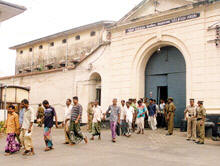
The Welikada Jail, as it was called then, has always been a part of every Wesleyite. We saw it everyday and developed a love-hate relationship to this massive expanse of bricks and mortar that housed the country's worst criminals. The Death Row wasn't far away. There were numerous jokes about the prison amongst the teachers and students.The guards marching in the morning with their 'Topee' hats and Khaki shorts and gangs of prisoners wearing white being marched for their hard labour was all a part of prison life which we saw day after day. I can still picture the massive multi-storey buildings inside the tall perimeter wall , all painted a drab magnolia. A new remand Prison was built to house the Coup suspects in the 60's opposite our Primary Block . Some of the prison guards and Commissioners sent their children to Wesley College and their ambition was to be guards themselves - not prisoners. I can still recall some of the prisoners waving to us from behind bars far away.
As I looked out towards the prison many things crossed my mind. For many of us even now prison is almost an unknown place and very few knew what happened behind the grim gates that swallowed the convicts. We imagined that its inhabitants were desperate people and dangerous criminals. In our minds the place was associated with isolation, humiliation and suffering which were all part of the punishment. To the prisoners the greenery and the wide spaces become a distant memory. The images of the family and loved ones must be at the forefront of their confused minds. Sometimes the sheer lack of privacy and at other times the loneliness of solitary confinement must be soul destroying. The sky , the grass, sunrise and sunset and the even the weather must feel so far away. The horizon is always hidden. Time then is not a luxury but a burden to endure. A few had the benefit of work and exercise. I would hate to think of what food they received. Above all I wonder how they faced the world again on their release.
Moves are underway to convert the Prison Complex into an Urban Development in the near future. New prisons are to be built elsewhere. A large slice of our past and memories are to disappear forever. The Prison has stood there for over 150 years. Being a remnant of the British Raj built in Victorian times it is a part of Ceylon history. It is my wish that the architects, planners and developers will have the foresight to preserve at least its facade and the front gates as a reminder of its inglorious past in memory of those who served, worked and died there.
I hope the OBU Colombo will take some photos of the views of the prison from Wesley College before they reduce those buildings to rubble and our memories to dust. The landscape of the front of the school is to change forever and the scenery will never be the same again.
Addendum by Shanti McLelland
It would be with a mix of happy and sad memories; with the famous Welikada prison gone. It will remove from the scene some of the legendary memories of the 1960 'COUP', the lyrics of 'ERIC BATCHO'. But, I think the loss would be all those student Wesley would have from the Serpentine Road, Magazine Road, the prison flats and the officers quarters from the wide spread prison complex. How many Wesleyites would miss the famous haunts, and the names like Jansz, Kern, Perera, Jayasinghe, Bartholomeusz etc. Wesley certainly could benefit from a much more invigorating and motivating environment, than the gloomy walls facing the main entrance to the school. This gloom and doom blocked the beautiful mountain range and the aesthetic sunrise. On a crisp clear morning, some students who happen to be in school very early would run up the stairs to the Tower room near the Biology lab, to take a splendid view of the misty blue mountain range, over 100 miles away.
Those with a 20/20 vision would have hold still as if taking a picture from a telescopic camera to get the best view of the peaks. One would position perfectly, lean to the right of the grand old Tamarind tree and bend the head to the left of the third story, iron grilled prison cells. Strain the neck through the tower window, to encapsulate in memory for ever, the serene and distinct shape of the world famous Adams peak. This view may be lost forever. If I have to single out one person that I would connect with the 'High Perimeter Wall' would be Wesley's outstanding gentleman Prison Commissioner, Mr. C.T. Jansz. "Cutty" as he was to his friends would make it a point to done the his old double blue shirt and be ready, able and ever willing to participate at the Old Boys Hockey match on the first Friday evening in March, along with the ever present Walter Jayasuriya, T.M.N. Mahamooth, A. Mylvaganam, Mervyn Peiris, Prof. Mahroof Ismail, and D.S.Wijemanne. Lest but not the least, I would not forget one of the infamous reminders of some of our noble teachers who would make it a point to grill into heads of those who used fall short in the formative evaluations. "Either mend your ways or end your days over there." Of course the prophetic words have remained insignificant.
From the Daily Papers:
The first Prison's Ordinance was enacted and enlisted as the Prison's Ordinance No. 18 of 1844 and it was also in the same year that the Welikada Prison was opened. It was after the enactment of the First Prisons Disciplinary Commission Act No 1 of 1867 that pingo carrying was determined as a punishment. The Prisons Department was under the purview of the Police Department from 1905 under the then Major Diwillon in his capacity of Inspector General of Prisons, who was also the Inspector General of Police.
When one enters through the massive gates of the Welikada prison the first thing one sees is the semi-circle about three feet above the ground. It's painted in white and in black - weradhi nokaramu api hademu - meaning, we will do no wrong hereafter and rehabilitate . This is the first thing that greets every new convict . The Welikada prison was established during British times in 1844 under the inspector general of the police department. In the year 1877 the prison ordinance was introduced and the prison department was brought under the commissioner general of prisons. The present chief of this department is Upali Samarasekara, attorney-at-law, former additional judge and magistrate Narahenpita. He took up this position only four months ago. The Commissioner General told The Sunday Leader that there are 25 prisons in Sri Lanka, housing convicted criminals and suspects. There are about 15,000 suspects and 800 convicts in all of the 25 prisons in the country. In the Welikada prison there are 368 female prisoners, of which three are convicts sentenced to death but whose sentence is commuted to life imprisonment. Among the three female condemned prisoners, there is a 56-year-old woman who had murdered her husband's mistress 20 years ago. She say's that she's tired of living within the confines of the prison and prefers to go to the gallows than to go on existing like a caged animal. She said that her daughters still visit her once a month and she is treated well , but unlike other mothers she cannot boast of taking care of her girls let alone being there for them. Most of these convicts have committed murders, contract killings , robberies or peddled drugs. The only alternative to life imprisonment is the official pardon,but that too can only be done by the President.
The relatives of the condemned are allowed to visit once a month.Food is only allowed only at Christmas or the new year. The Commissioner General says that except for the condemned convicts the other prisoners are rehabilitated and trained in various fields where he/she could re-start life once released. The prisoners are trained in cottage industries, as well as masonry, plumbing, electrical wiringand wood work. The also have a mini garment factory as well as a bakery catering to the requirements of the inmates within the eight acre premises. Unlike before when the convicts are said to have been fed on rice and salt, today the government spends a lot of money on their food and also to rehabilitate them and train them in various fields. The Sunday Leader learns that about 550 coconuts a day are used to make sambol for breakfast, each prisoner is given a loaf of bread weighing about 170 kgs which is made in the prison bakery.For all three meals they use about 1300 coconuts, that's roughly about 1781 kgs.They consume 1350 kgs of rice and 227 kgs. of fish daily. It was a heart rending sight to see tiny tots with their mothers serving the sentence, along with their mother - paying for a crime they didn't commit. Children stay with their convicted mothers in jail. The jail is a pathetic place where offenders pay for their sins. But what we often forget is that crime is social misconduct and it is not only the offender who suffers, but even others around him or her.
The Government has launched an ambitious project to convert the 156-year old Welikada Prison premises, spanning a land area of 54 acres, into a state- of- the-art commercial township, Urban Development Authority Chairman Prof. Nimal De Silva told the Daily News yesterday. This project will seek to transform the present Welikada Prison premises, which presently houses over 4000 inmates and of which the land value is priceless, into a township which will house commercial establishments, supermarkets, highrises and residential apartments, primary schools and also recreational facilities such as swimming pools, gymnasia etc,
5000 inmates of the Welikada Prison will be relocated at three prison premises which will be constructed at Hulftsdorp, Homagama and Welisara.

Baseline Road is the main gateway to the school. I knew every inch of it from Kanatte to Dematagoda. I can still picture the narrow straight road stretching from Borella to Peliyagoda past Dematagoda and the new Kelaniya Bridge. During the hot dry spell in April the tar melted and when the monsoons came its edges got washed away leaving gaping holes. Morris Minor cabs , belching CTB buses and the bullock carts smearing the road with dung is the scene we all have etched in our memories. The short stretch from Borella to Wesley College dipped into a valley and was lined by beautiful large spreading trees. The Maliban Hotel, The Borella Market, The Colonial building that house The MRI (Medical Research Institute) and the Government Printing Press were the Landmarks we all knew and loved. In place of the present Lady Ridgway Hospital there was an old Victorian building - The Home for the Incurables. In Dematagoda the Baseline Road Railway crossing, The Cattle Mart ,Manil Theatre and St.Matthews School too will change beyond recognition. Baseline Road has got its name from the Surveyors who measured the city of Colombo when they used the straight road as the baseline for their calculations. The advances of the 21st century has reached this narrow road. It cannot hold the rush hour traffic. The accidents, pollution and the inevitable delays due to congestion has reached its peak and the Government has decided to convert it to a wide 6-lane road. This will no doubt change the face of Wesley College as we knew it. Memories and nostalgia cannot stand in the way of progress. It is my hope the low front wall of the school and the gate posts will survive the advance of the bulldozers. I wish the OBU will photograph the front access to the school to keep a record of how it used to be in the 20th Century before "progress" changed it forever.
From the Daily Papers

The work on the Baseline Road Improvement and Extension Project funded by the Japan Bank for International Co-operation (JBIC) continued in 1999. Under Stage I of this project, the Baseline Road is to be transformed into a dual 3 lane causeway from the Kelanitissa roundabout to the Kanatta roundabout with a fly-over across the mainline railway at Dematagoda and a pedestrian subway at Borella. About 65 per cent of the project has been completed and the work on the balance section from the Kanatta roundabout to the High Level Road section will be commenced in the first half of 2000. Work on the new Baseline Road should have ended last November. But now, five months later, the project looks nowhere near completion. The new date for the completion of the project, we learn, is December this year. But there are no guarantees that the road will be ready for traffic even then.
Why? What delays our infrastructure projects so much? When the Baseline Road development project began, after much delay, in 1996, it promised to have a super six-lane highway in two years. Motorists who used the road constantly dreaded the construction phase but were happy to see that the narrow, badly- maintained road was at last to be developed into a proper highway with fly-overs at the railway crossings. They were willing to go through the inconvenience of negotiating a road under construction for a better road in two years. But unfortunately that is not to be. Driving on Baseline road is a nightmare. On one hand there are the earthmoving, bull-dozers obstructing the already unruly traffic, and dust from the construction affecting visibility. One has to also steer clear of trenches, pits and huge potholes on the sides and middle of the road. On top of all this there are the messed-up junctions made worse by indisciplined motorists.
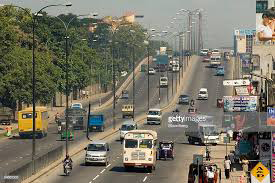 Then there is the crawling traffic weaving through workmen and a horrible road surface due to the construction work. "I use Baseline road every morning," S. Dharmarathne, a businessman working in Borella said. "It's the easiest way to work. But the drive is terrible. There's traffic from all sides, because the work shifts from section to section. Very often you don't know which direction to take." "We welcome the improvements to the road. It looks like it will be a great road with six traffic lanes and a flyover over the level crossing. But how much longer are we to wait for the road to be completed?" he asked. "It's terrible," complained Ariya Ranawana from Kelaniya who travels weekly to the Rajagiriya Ayurveda Hospital. "I take the bus down Baseline road. It used to be a terrible bus ride but now, it's crazy. The dust and the pace of traffic- it's killing. I feel sorry for the people who have to travel daily.When will this road be over?" It looks like motorists and passengers will have to put up with dust, congestion, and construction for at least nine months more. "Hopefully the road will be ready in December," Road Development Authority General Manager P.B.L. Cooray said. The delay, he said, was chiefly due to utility lines which were found underground while construction was on going. "These had to be removed and relocated. This was the biggest problem," he said. He said that these lines- water, electricity and drainage- were not surveyed and even the departments, which owned some of these lines were not aware of their existence until they were unearthed during construction. The best example was what happened to the flyover.
Then there is the crawling traffic weaving through workmen and a horrible road surface due to the construction work. "I use Baseline road every morning," S. Dharmarathne, a businessman working in Borella said. "It's the easiest way to work. But the drive is terrible. There's traffic from all sides, because the work shifts from section to section. Very often you don't know which direction to take." "We welcome the improvements to the road. It looks like it will be a great road with six traffic lanes and a flyover over the level crossing. But how much longer are we to wait for the road to be completed?" he asked. "It's terrible," complained Ariya Ranawana from Kelaniya who travels weekly to the Rajagiriya Ayurveda Hospital. "I take the bus down Baseline road. It used to be a terrible bus ride but now, it's crazy. The dust and the pace of traffic- it's killing. I feel sorry for the people who have to travel daily.When will this road be over?" It looks like motorists and passengers will have to put up with dust, congestion, and construction for at least nine months more. "Hopefully the road will be ready in December," Road Development Authority General Manager P.B.L. Cooray said. The delay, he said, was chiefly due to utility lines which were found underground while construction was on going. "These had to be removed and relocated. This was the biggest problem," he said. He said that these lines- water, electricity and drainage- were not surveyed and even the departments, which owned some of these lines were not aware of their existence until they were unearthed during construction. The best example was what happened to the flyover.
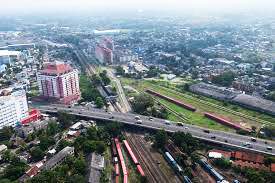 One side of the flyover was completed nearly a year ago. When the contractor was pile driving for the columns to hold the other side of the flyover, they came across some long forgotten service lines. The Department concerned had to then remove and relocate the lines, which took months. The flyover columns are beginning to take shape only now. The contractors, Kumagai Gumi of Japan have asked and received approval to extend the date until December 1999. Mr. Cooray said no penalty was involved since the RDA approved the reasons for extending the deadline. "It's not the contractors' fault," he said. The cost of constructing the six-lane road, with the sub-way pedestrian crossing and flyover is Rs. 2.5 billion - funded by the Japanese OECF (Overseas Economic Cooperation Fund) on a soft loan. Baseline Road, Phase one, extends from the Kelani Bridge to Borella junction. At Borella, an underground underpass for pedestrians will make sure that traffic is not disturbed at the junction. The second phase of the project will widen the road going past Kanatte to Edmonton Road in Kirulapone.
One side of the flyover was completed nearly a year ago. When the contractor was pile driving for the columns to hold the other side of the flyover, they came across some long forgotten service lines. The Department concerned had to then remove and relocate the lines, which took months. The flyover columns are beginning to take shape only now. The contractors, Kumagai Gumi of Japan have asked and received approval to extend the date until December 1999. Mr. Cooray said no penalty was involved since the RDA approved the reasons for extending the deadline. "It's not the contractors' fault," he said. The cost of constructing the six-lane road, with the sub-way pedestrian crossing and flyover is Rs. 2.5 billion - funded by the Japanese OECF (Overseas Economic Cooperation Fund) on a soft loan. Baseline Road, Phase one, extends from the Kelani Bridge to Borella junction. At Borella, an underground underpass for pedestrians will make sure that traffic is not disturbed at the junction. The second phase of the project will widen the road going past Kanatte to Edmonton Road in Kirulapone.
The idea is to link the Baseline to Galle Road at Ratmalana creating an outer city road, which allows vehicles travelling north to south of Colombo to avoid the heart of the city "The delay in phase one will not affect the other phases of the project," Mr. Cooray said. But the four-kilometre stretch of Baseline road from the bridge to Borella is also the most important. It connects to the Low Level Road a road which carries a large amount of cargo traffic and it travels through the bustling township of Dematagoda, carrying a heavy load of traffic every hour. No one has calculated the loss to the economy by such undue delays in completing essential roadways- the lost hours in traffic, the congestion and late cargo. It reflects badly on the country if extending a four kilometre stretch of very important roadway takes over three years. It is just as important to have the road ready on time, as it is to build a good road. The development work on the Baseline Road between Borella and Dematagoda, a key section in the city road network, having a direct bearing on traffic congestions, is in full swing. The Road Development Authority (RDA) is confident that traffic blocks would disappear once this is completed. The present development scheme is categorised as the Baseline Package I. It involves a section of the road from the Kelanitissa Power House junction in close proximity to the new Kelani Bridge upto the Kanatte roundabout, a distance of approximately 4.2 kilometres.
The project started in December 1996 was earlier planned to be completed by December 1998. But due to various unforeseen contingencies, the road engineers were unable to finish the work as scheduled. As a result, a new target date was fixed for December '99. The estimated cost of the project is Rs.2500 million. The fundings is by the Overseas Economic Corporation Fund (OECF) of Japan. According to RDA Director (Special Projects) J.M Chandradasa, the four- kilometre stretch would involve a six-lane highway. An overhead bridge now being built skipping the level crossing at Dematagoda is nearing completion. This section has been a severe bottle neck over the years for both, the motorists and the pedestrians. Many trains pass this point daily and the railgate had to be closed obstructing the road traffic. The most difficult times had been the peak hours in the mornings and evenings. The situation would soon improve once the traffic is diverted making use of the overhead bridge.
A subway is now being constructed under the road at the Borella junction. It is for the use of pedestrians. A number of traffic light signals too would be built at important junctions on the stretch. A new street lighting system too is designed. Footpaths for pedestrians are separately marked-off in addition to the pavements. The RDA, in the near future, will call for tenders for stage II of the project. Officials say it would be the same funding agency, OECF of Japan. Some RDA engineers at the stage I sites said they had to grapple with undue delays arising as a result of poor coordination by some of the other government departments. Water Board, Electricity Board and the Telecommunications were listed as some of these. Any changes or dismantling jobs on equipment belonging to these different departments had to be carried out with their permission. "Even if such requirements were notified to the respective departments, the attitude shown by them is found to be extremely poor and the work program suffers," one engineer said.
By The Rev. S. K. Kadirgamar, Chaplain.
Student Christian Movement
Being the 125th Anniversary of Wesley College, a brief reference to the growth and impact of the specifically Christian Organ of the Institution-the Student Christian Movement-will not be out of focus. Founded on the Universal Christian Ideals of Brotherly Love, and Charity-and goodwill to mankind-the College Strives to foster the belief that all things and all creatures great and small come within the purview of Gods love and concern for us hence encompassing the totality of the Wesley Family.
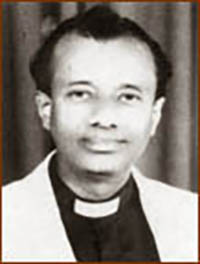 From the inception of the college in 1874, Wesley's Founder, The Revd. Daniel Henry Pereira and all the Principals of the College, without exception, nurtured the Ideal of Christian Education, based on the noble concept of the Oneness of Mankind. The immense richness and variety of Wesley, the blending of children of all races and religions in the land into one. Wesley has been its strength throughout the years. This great concept now a firmly entrenched tradition goes on.
From the inception of the college in 1874, Wesley's Founder, The Revd. Daniel Henry Pereira and all the Principals of the College, without exception, nurtured the Ideal of Christian Education, based on the noble concept of the Oneness of Mankind. The immense richness and variety of Wesley, the blending of children of all races and religions in the land into one. Wesley has been its strength throughout the years. This great concept now a firmly entrenched tradition goes on.
Thoughts and ideals and concepts tend to get crystallized over the years; also formalised. In 1882 commenced The Young Men's Christian Association of Wesley enabling the Principal, Staff and Students to become an Organized cohesive whole based on Pray and Labour
During the Stewardship of the Revd. Henry Highfield (1895-1925) the School's Christian activity was given a significant Impetus with the opening of the College Hostel, in 1910. Sunday School classes flourished under the able guidance of The Revd. P.T. Cash (Vice Principal) who is known to have donated his entire salary he drew as Vice-Principal towards the construction of the Physics Laboratory at Wesley. He lived on his modest stipend as a priest.
Rev P.T Cash's wife Edith trained Wesley's first choir in 1907, starting another noteworthy tradition of bringing music into the mainstream of Wesley life. The Wesley choir trained by Edith Cash was adjudged the winners of a shield for the Best Boy's School choir bringing much joy to the college. SCM work has been continued over the years by dedicated men and women such as Joyce Leembruggen, Ivor de Silva, Maxwell de Alwis and Haig Karunaratne. Carol Services became a regular feature of college activity in addition to Nativity Plays. One has to give Haig Karunaratne a place of prominence. His work had a big impact on the SCM.
 In 1926 the YMCA was re-styled. The College Students' Christian Association.
In 1926 the YMCA was re-styled. The College Students' Christian Association.
The CSCA latter became the Student Christian Union ; superseded by Christian Union ; and finally The Student Christian Movement of Wesley College.
The Christian Union indulged in Dramatics, as well. The CU in association with Kenneth de Lanerolle, produced two plays - Arnor Christi (1947) and Judas of Kerioth (1949). This tradition has continued over the years.
The SCM & the College had chaplains of vision. One-man stands out - that of Red. (Dr.) D. K. Wilson. He built up a fine group of Christian students, Who were like 'leaven' in the life of the school.
In recent times the building of the Wesley Chapel was the most welcome news in Wesley's 125 year existence! With its consecration on the 14th February, 1993 a long left need has been satisfied. The building itself has been described as "an architectural gem" by The Anglican Bishop of the Diocese of Colombo - the Rt. Revd. Kenneth M. J. Fernando, who was Guest speaker on the occasion. The President of the Methodist Church in Sri Lanka and Wesley's then Manager, the late Revd. Dr. Kingsley Muttiah officiated at the Service -All those who contributed in cash and kind, those who gave of their time in the planning of it and its execution the services of Rev. D. J. J. Koilpillai, Principal Mr. Dunstan Fernando, Mr. Lasantha Fernando the Committee and Vice Principal Mr. M. A. Fernando are sincerely thanked.
 The good work which the SCM persons continue to Wesley's 150th year with the certainly that God's guidance and his Grace will always he forthcoming with new targets set, striven for and achieved. If this is the goal, we must start now. We have to be progressive.
The good work which the SCM persons continue to Wesley's 150th year with the certainly that God's guidance and his Grace will always he forthcoming with new targets set, striven for and achieved. If this is the goal, we must start now. We have to be progressive.
Besides its activities the SCM had unearthed vast talent in various fields such as Christian Drama, singing, writing, poetry, speech, and service leadership. The SCM Day which includes a concert and awards ceremony which has become a regular event in the school calendar. The magazine titled "The Scroll" has been released in the last five years. At present counseling, based on training and service has been inaugurated in the chapel..
Regular Sunday services are now introduced during School days. A Historic event took place on November 17th 1997 at the Wesley Chapel by the confirmation service for eight boys as full members of the Church. From this day a regular monthly sacrament service of the Lord's Supper is held at the Wesley Chapel.
And as we face the future in total faith and in hope, we pray to God Almightily our Creator that our efforts will be like leaven in the bread; and will be fruitful, and yield good, with His grace and love and concern for us, we are hopeful that wonders will be performed for this our country.
Wesley has always been a safe haven in times of crisis as was very evident in the communal disturbances of 1915, when The Revd. Henry Highfield gave refuge and sanctuary to many of our neighours.
This is the Wesley spirit that will live on ! Unity in diversity.
(a)The first five minutes
Assembly started after Ranis rang the bell for the second time, five minutes after the first. Between the first and the second, attendance was marked in class. The prefects were expected to make sure discipline was maintained during this time in particular, when a thousand students would just converge from all sides. Most of the juniors entered from the back gate at Karlsruhe Gardens. Some late runners would hurriedly sneak through the path between the teacher's flats and the tennis court. A few parents would stop their cars briefly in front of the double swing gates on Baseline road; to drop off the a few who did not have the courage to take crowded public transport. But I am sure they missed a lot of fun and rollicking tales, upstairs and down stairs, sitting if one was lucky or hanging on to a aluminum pole, which sliver on the palms. The very familiar red coloured double deckker CTB later known as SLTB bus would bring a load from Moratuwa picking up a few more dozens from Ratmalana, Mt. Lavania, Dehiwela, Wellawatte, and Bambalapitiya. This bus was well in time. But the Nugegoda, Nawala route was always on the nick of time. Most of the bus travelers had student season tickets. Those who boarded the bus last usually hung on to the 'foot board', which gave them, at least the satisfaction of, last in the bus, first out at the gate, but certainly a regret on rainy days.
(b) Morning Assembly
 It was the practice for all students to meet each morning in the College Hall. If I remember right, Mondays and Fridays were general assembly days and it was 'Chapel' days for the christian students. Usually the Principal addressed the Assembly on Mondays and the Vice-Principal on Fridays. Christian chapel followed the general assembly which was used for impotent announcements for the week beginning and the week following. A teacher was responsible for the days reading on the other three days. The prefects assisted the staff to maintain order. It was a very serene and grandeur sight each morning to see the whole school at assembly. The prefects, always in white, standing in full control at the door aches, some at the Highfield Block, at the Junior School, or at both the gates. The teachers led by the Principal walked majestically from the school office along the corridor, and entered the stage from the door about eight feet high, symmetrically placed at the circular back wall of the stage. The Principal's engraved, high backed & cushioned chair was certainly from the Highfield days. There were two other chairs in front of the stage, one for the Vice-Principal and the other for any guest in attendance. The teachers along the back wall. The balcony was open on General Assembly days, and was the domain of the juniors. For many years the students who came in to the hall first or who desired not to stand at the back, were provided with seats. The College Song was a definite on the first day, Founder's day, and last day of each school term. I would always remember the voice of
It was the practice for all students to meet each morning in the College Hall. If I remember right, Mondays and Fridays were general assembly days and it was 'Chapel' days for the christian students. Usually the Principal addressed the Assembly on Mondays and the Vice-Principal on Fridays. Christian chapel followed the general assembly which was used for impotent announcements for the week beginning and the week following. A teacher was responsible for the days reading on the other three days. The prefects assisted the staff to maintain order. It was a very serene and grandeur sight each morning to see the whole school at assembly. The prefects, always in white, standing in full control at the door aches, some at the Highfield Block, at the Junior School, or at both the gates. The teachers led by the Principal walked majestically from the school office along the corridor, and entered the stage from the door about eight feet high, symmetrically placed at the circular back wall of the stage. The Principal's engraved, high backed & cushioned chair was certainly from the Highfield days. There were two other chairs in front of the stage, one for the Vice-Principal and the other for any guest in attendance. The teachers along the back wall. The balcony was open on General Assembly days, and was the domain of the juniors. For many years the students who came in to the hall first or who desired not to stand at the back, were provided with seats. The College Song was a definite on the first day, Founder's day, and last day of each school term. I would always remember the voice of
Mr. L. A. Fernando, so full of emotion and passion - the hymn was "Jehovah Thou has Promised".
(C)Public Address System
The Wesley College Public Address System was an important bit of equipment for morning assembly and special events. Usually, the PA System was hired from an external source for any big event such as the Prize giving. A name I remember vividly is 'Parakrama Radio'. For many years students who were members of the Radio Club took responsibility to provide a quality service during all of the other 220 school days. The amplifier, microphones, and speakers were all maintained with very little down time. If I remember right there were many changes to the service over the years and the school may have a 'State of the Art' system now. The names that come to my mind in the 1960's are Rosa, Jayantha Fernando, Rohan Soysa, Rohan Amerasekera, & Sadanandan. Can picture a few more faces, but the names and some initials appear to be lost with time. I could remember these familiar faces each morning before assembly in the College Hall with testers, spare red & black twisted wires, and black or grey insulated tape in their hands highly focused and conscientious to make sure the communication system was in working order. Lalith Wickremeratne was one other that I could link with electronics, but I am not sure if he was a member of this group. But I am quite sure almost all of the members were from the hostel. A big 'Thank you' for that invaluable service, which was then, just taken for granted.
(d) School Uniform
It certainly was a delight to see teachers and prefects in the double blue tie and white suit on special days. The graduate teachers could be easily distinguished. The upper school students all in white cotton pants popularly termed as 'Longs' with Short or Long sleeved shirts. Most dressed in the more the more popular brand of shirts labeled machine wash, 65% cotton, 35% polyester. Some wore the collar slightly flicked up, which was a sore sight to some of the teachers. This habit caused a bit of pain to those continued this habit to get a bit of a 'High' or to show off their true colours. The 'Middle Schoolers' wore either wore blue or white shorts and white shirts. Some wore short shorts, and other long shorts, depending on the quality of the cotton. Imported or local, Blueline, Indian, Chinese, or from the "Wellawatte Spinning and Weaving Mills" with 40x40 yarn count. . One wash by the 'Dhobi', Laundry, Dry cleaners, or at home would decide on the fate of the shape and size of clothes. Some wore their hair very short with a real good boost of the barber's cutters, or long as faithful followers of 'The Beatles'. Unforgettable was the Elvis look 'Brylcream bumps', I will refrain from naming a few of these handsome souls. Some teachers wore John White shoes from Apothecaries, students would be happy with the local DI leather shoes, the laced type, which doubled as boots for mid-day football/soccer. Bata rubber soled 'Pumps' were good as an easy slip on, for those who had to change their shoes for cricket or Rugger boots, after school. The Sinva rubber backed canvas shoes, thin or the thick was a cheap all-purpose school-wear. These were easily and quickly made bright and white at home with 'Swan' & water, or in the class, with bits of discarded chalk beneath the 'black board'. Uniforms was popular inspection target for some teachers and prefects, they were sure of getting a victim who forgot that 'dress maketh the man'. The Hostellers had very little change of breaking the dress code, as they went through the inspection routine twice.
Snap Shots (II): Wesley College - As I remember by Shanti McLelland
(e)Support Staff
It is hard to forget those who kept the school in fine tune on a daily, with all of the supporting facilities in proper order. Ranis was the icon that everyone remembers. The Arachchige look, at the bell or with the class registers, and would act as a guard at the main office. Marshall now the chief, was an apprentice at that time. Both have served Wesley for rare half a century. Marshall acts as a tour guide to the Old Wesleyites who infrequently visit Wesley from Australia, UK, Switzerland, New Zealand, USA, or from the Lush Hill Country or the Sea Coast of Sri Lanka. The 'beetle' chewing Raman made sure the botanical gardens like school surroundings were maintained in great shape, green, pruned, and mowed during the 365 days of summer. Perumal was probably appreciated most after his retirement. The Hostellers depended on him most, as they lived in the campus most of the time. We certainly owe a big Thank you for his devoted service. Basanayake was the long-standing controller of the hostel kitchen. I am sure those who had the pleasure of living in the Hostel for many years would appreciate his service, along with all the others who toiled for years to keep the boys away from home with 'Home' cooked meals and service at the long barracks like dining hall. Another Gunaratne joined later on to assist in the office. He was a very happy, fun loving person who apparently cut it short at a young age. The sick room staff, Mrs. Gnanaiah too over in the early sixties from another long-standing matron, Ms. Gomez. Ms. Gomez will be remembered by many who walked the plank in the 1950-60 era. It is the same with the sick room care taker who was good as a male nurse, made sure the sick hostellers got the best of attention, or was taken to the physician "Dr. Wijegunaratne" near Donald studio at Paranawadiya. I hope the other names missed my attention or memory would be filled in due course.
(f)Lab Assistants
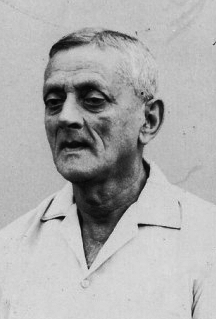 Rodrigo was a lab assistant in the Chemistry lab. It was the smarter way to get his advise for a quick identification of a acid, salt, or any other chemical that were required for an experiment. He would put us to shame with the periodic table at his fingertips. Rodrigo in his Khaki shots and white short sleeved shirt will be always remembered for his loyal service. "Physics" Perera in his round glasses was equally competent and careful with all of the measuring equipment or 'Bunsen' burners. He had an uncanny sense of smell for gas, either leaking or purposefully left by a prankster. I am not quite sure who was responsible for all of the dead snakes, frogs, or live rats at the Biology lab, close to the balcony. But I do remember Gunaratne certainly did serve in the last few years I was in school. 'Sara Bulath' was his way of handling the formaline smell in the lab that served for Botany and Zoology. All those doctors, engineers, and the not so great science students would remember the labs and the assistants as equally good or better than in University.
Rodrigo was a lab assistant in the Chemistry lab. It was the smarter way to get his advise for a quick identification of a acid, salt, or any other chemical that were required for an experiment. He would put us to shame with the periodic table at his fingertips. Rodrigo in his Khaki shots and white short sleeved shirt will be always remembered for his loyal service. "Physics" Perera in his round glasses was equally competent and careful with all of the measuring equipment or 'Bunsen' burners. He had an uncanny sense of smell for gas, either leaking or purposefully left by a prankster. I am not quite sure who was responsible for all of the dead snakes, frogs, or live rats at the Biology lab, close to the balcony. But I do remember Gunaratne certainly did serve in the last few years I was in school. 'Sara Bulath' was his way of handling the formaline smell in the lab that served for Botany and Zoology. All those doctors, engineers, and the not so great science students would remember the labs and the assistants as equally good or better than in University.
(g) Pavilion Staff
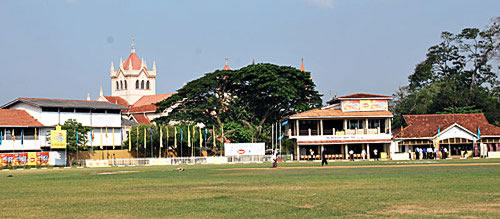
Pavilion was the favourite haunt for most of the sportsmen. Wilbert I remember who slim in build but would roll the matting for the wickets with ease. Then walk the distance around the grounds to hammer in the pegs and tie the boundary cord in very little time. The wicket watered and rolled in the evenings to keep in good shape. As a youngster I would watch this routine for years and be amazed at the loyalty and dedication. Wesley was very fortunate find an equally loyal and dedicated ground's staff in Vincent Perera. For those who spent most of the time between two and six o'clock each day during our school days would not forget the yeomen service provided by Vincent. Looking back I am quite sure their service was extraordinary valuable because it was the time when Wesley had to more with less. Charlie joined to assist Vincent and he too served well. Rarely did we find the pavilion closed in the 365 days. We, who used the grounds and the pavilion to the optimum, taxed their patience and their energy to the utmost. They kept the grounds marked, rolled, watered, grass cut and raked for soccer, rugger, cricket, hockey, and athletics. The jumping pits filled with river sand and clean. The pavilion facilities for home and visitor teams with no complains at all. The OBU club nights saw these workaholics stay late with all the support and enthusiasm. I am sure there are belated thanks required, as we did show are appreciation then, and I am sure they would miss those good old days.
A Page from the Past

On 25th January, 1970, Samad Ismail, Walter Wijesooriya, Kenneth de Silva, Fred Abeysekera and Stanley Chinivasagam met at the hotel Suisse to explore the possibility of Old Wesleyites and their wives meeting periodically to chat about old days, to re-live our days at Wesley, and to foster goodwill and fellowship among Old Wesleyites in and around Kandy. The accent was to be on fellowship, and the gatherings planned out were to be informal and light. Consequently, a communication was sent out by Walter Wijesooriya, dated 26th January, 1970, the first paragraph of which read A serious effort is being made by a few Old Wesleyites who met at the Hotel Suisse yesterday, to have a gathering of the Double Blue Clan in the hill country, regularly. Such gatherings will be informal, and the inevitable chatter on the 'good old days' will form the basis of these occasions
The response was encouraging, and the first batch of Old Wesleyites and their wives met in the home of Kenneth and Shireen de Silva, overlooking the picturesque Kandy Lake. This was a dinner-meeting, and the fellowship was excellent, the following being present; Justin and Erica La Brooy, Stanley and Therese Chinivasagam, Samad and Shea Ismail, Walter and Shanthi Wijesooriya, Fred and Indrani Abeysekera, Spencer and Beryl Patterson, Bertie Adihetty, Sarath Wickremaratne, Alan Moonesinghe and Neil Dolapihilla. Similar dinner-meetings were held subsequently in the homes of Samad Ismail, Fred Abeysekera and Stanley Chinivasagam, when the idea was mooted that it was well worth exploring the possibility of starting a branch of the Old Boys' Union in Kandy. By this time it was 1972, and we were meeting as a group from time to time; and with Fred Abeysekera as convener, an announcement was made that a formal meeting was to be held to discuss the feasibility of this suggestion.
 A formal notice calling a meeting was sent out on 28th October 1972, the text of which was as follows "OLD WESLEYITES GET TOGETHER IN KANDY - In view of the centenary of our alma mater, to be celebrated in early 1974, an effort is being made to inaugurate a branch of the Old Boys' Union in Kandy it is suggested that we all meet on the 20th November, Monday, which is a full moon poya holiday The following was the agenda of this meeting, which was the formal inaugural meeting of the Kandy Branch of the Wesley College Old Boys' Union. 6.00 p.m. Meet at the Masonic Lodge, Seibel Place, Kandy. General Meeting - feasibility of a branch Union ; discussion of matters of mutual interest with visiting Colombo Old Boys. Matters arising therefrom. Discussion of the proposed Centenary Celebrations; A steering-committee, etc. Of the 48 Old Boys in and around Kandy written to, the following were present: J. C. P. Wikramanayake (Colombo) in the Chair; Watson Wijewickrema (Secretary, Colombo), Justin La labrooy (left Wesley in 1928 : College Staff 1933), Spencer Patterson (left 1925) Dinsdale de Silva (left 1935) ,Samad Ismail (left 1941), Stanley Chinivasagam (left 1946), Durand Goonetillake (left 1948). B. J. S. de Z. Adihetty (left 1928), Fred Abeysekera (left 1951: Staff 1960), Shantha Premawardhana (left 1965), Walter Wijesooriya (left 1951), Sarath Wickremaratne (left 1963), Cyril D. E. Premawardhana (left Staff 1963).
A formal notice calling a meeting was sent out on 28th October 1972, the text of which was as follows "OLD WESLEYITES GET TOGETHER IN KANDY - In view of the centenary of our alma mater, to be celebrated in early 1974, an effort is being made to inaugurate a branch of the Old Boys' Union in Kandy it is suggested that we all meet on the 20th November, Monday, which is a full moon poya holiday The following was the agenda of this meeting, which was the formal inaugural meeting of the Kandy Branch of the Wesley College Old Boys' Union. 6.00 p.m. Meet at the Masonic Lodge, Seibel Place, Kandy. General Meeting - feasibility of a branch Union ; discussion of matters of mutual interest with visiting Colombo Old Boys. Matters arising therefrom. Discussion of the proposed Centenary Celebrations; A steering-committee, etc. Of the 48 Old Boys in and around Kandy written to, the following were present: J. C. P. Wikramanayake (Colombo) in the Chair; Watson Wijewickrema (Secretary, Colombo), Justin La labrooy (left Wesley in 1928 : College Staff 1933), Spencer Patterson (left 1925) Dinsdale de Silva (left 1935) ,Samad Ismail (left 1941), Stanley Chinivasagam (left 1946), Durand Goonetillake (left 1948). B. J. S. de Z. Adihetty (left 1928), Fred Abeysekera (left 1951: Staff 1960), Shantha Premawardhana (left 1965), Walter Wijesooriya (left 1951), Sarath Wickremaratne (left 1963), Cyril D. E. Premawardhana (left Staff 1963).
The ladies present were Erica La Brooy, Beryl Patterson, Shea Ismail, Indrani Abeysekera, Maheswarie Goonetillake and Therese Chinivasagam. The following pledged their support of a branch union, but regretted their inability to be present: Lister Fernando, Wickrema de Alwis, Kenneth de Silva, Bruce Baptist, Kenneth de Lanerolle, K. Arumugam, Jackie Carnie, John Isaac and Clinton Rodrigo. J. C. P. Wikramanayake addressed those present, and the following were elected office-bearers
Committee Members Bertie Adihetty, Stanley Chinivasagam, Spencer Patterson, Durand Goonetillke. Very soon, however, Shantha Premawardhana was compelled to give up his duties as Secretary, consequent upon his admission to theo Divinity College of Sri Lanka. Fred Abeysekera then took over as Secretary; and Durand Goonetillake as Treasurer, from Fred. Four meetings of the Executive Committee have been held thereafter, and the Kandy branch of the Union is in many ways yet in its formative period And so, to the second year of its life, with the hope of greater support from those around us! Secretary Shantha Premawardhana,
Fred Abeysekera Hony. Secretary.

The College stood dignified and majestic in a fresh coat of colour wash and on a newly laid tarmac, with her Flag flying high, on that brilliant evening oof Friday July the 5th nineteen, hundred and seventy four. What excitement was shown as last minute details were attended to! A neat extension aluminium tent was erected between the base of the North tower and the portico, to seat nearly 200 additional, guests. The quadrangle opposite the college office was also provided with chairs and was filled, to capacity. A portion of the hall was reserved for invitees and special guests. The platform decorations were simple yet effective. The gallery was filled to capacity by a section of the students, who as usual observed the traditional Wesley etiquette. The wonderful stained-glass windows lent a subdued charm blending with the colour of the ladies costumes, in that time-hallowed Hall of our pride. The Chief Guest, the Hon'ble Mrs. Sirimavo R. D. Bandaranaike, Prime Minister of the Republic of Sri Lanka, was expected at 5.30. in the evening. Excitement surged to a new high when the Police Pilot car was seen approaching and the Prime Minister's Benz, with the Pennant of the Republic flying, swung in.the Scouts formed a Guard of Honor The Principal, Mr. Mr. Shelton Wirasinghe, Mrs. Manel Wirasinghe, The President of the Methodist Church, the Revd. Denzil de Silva, the Vice-Principal Mr. Dunstan Fernando, two Past Principals of Wesley, Messrs - P. Harold Nonis, and Cedric J Oorloff, Revd. (Dr.) David Wilson, and Mr. Shelton Peiris Actg. Secretary of the' Old Boy's union, stood at the porch to welcome the distinguished guests. Proceedings began with the traditional manner of welcome, when little Indaka Nanayakkara, the youngest student in grade I, offered in oriental fashion a "hand" of betel leaves" to the Prime Minister, while little Ajitha Fernando presented a bouquets of flowers.
The captivating Hymn by Kipling "Land of our birth we pledge to Thee" was sung lustily after which the Rev. Denzil de Silva offered the opening prayer. The Principal of the School in his welcome said, It is with the deepest sincerity that Wesley past and present greet you at ouro Centenary Prize Day this evening. We are indeed grateful that you have been able to find the time for us in the midst of all your duties in the service of Sri Lanka. Your presence with us gives us great joy. He added we watch with the greatest interest the tremendous social, cultural and economic revolution that is being achieved in our time in the quietest of ways, and the very significant changes in education that must necessarily go with such a revolution. And in all this Wesley pledges her support as she has always done in whatever is true and noble, just and pure, lovely and gracious, excellent and admirable steps into her second century with renewed hope. Within these hallowed walls boys will, in the words of Revd. Fr. S. O. Perera, one of our distinguished alumni be promoted. And as Revd. John Dalby has reminded us Work and Prayer will remain the Salt of Life; The Shield of Faith, the ,Cross of Sacrifice and the Scalloped Shells of Quiet and Adventure will surely see us through." The Prime Minister speaking in Sinhala said the need of the day was for schools in Sri Lanka to prepare Youth to fit into life and society, and be useful citizens instead of solely producing scholars. She added that Wesley College had made a significant contribution to Sri Lanka, during its 100 years of existence-producing men of distinction, who were found in many walks of public life.
 Commenting on the earlier system of education, the Prime Minister said that system suited a different society. The present government had felt the need for a change so that education could be geared to meet the demands of the day and' had accordingly introduced a new educational, system in 1970, designed to overcome the differences between the village and the urban schools and effect a uniformity, thus to afford equal opportunities for every child; Under this new set up, the ability of every student could be recognised and every opportunity could be provided to develop to a maximum. The distribution of Prizes then took place, the Junior Prizes being awarded first, after which the Wesley Choir, under the baton of Haig Karunaratne, rendered a Sinhala lyric, words of which were by Jayantha Premachandra, set to music by Haig. This intèrlude was refreshingly appreciated by the audience. The Senior Prize list was read out by Mr. Dunstan Fernando, the Vice-Principal. Others assisting at the distribution of prizes were, Mrs. S. E. G. Perera, Messrs Edmund Dissanayake, Wilfred Wickremasinghe, S. Sivanayagam B.G.R. Fernando, J. Vethanayagam and S.G. Thambiah. The vote, of thanks was proposed by the Actg. Secretary of the Old Boys' Union, Mr.Shelton Peiris, and seconded by the Senior Prefect of the College, Mr. J. K. Wickremaratne, in whose speech was the time-echoed plea, for the traditional full holiday, which was graciously granted.
Commenting on the earlier system of education, the Prime Minister said that system suited a different society. The present government had felt the need for a change so that education could be geared to meet the demands of the day and' had accordingly introduced a new educational, system in 1970, designed to overcome the differences between the village and the urban schools and effect a uniformity, thus to afford equal opportunities for every child; Under this new set up, the ability of every student could be recognised and every opportunity could be provided to develop to a maximum. The distribution of Prizes then took place, the Junior Prizes being awarded first, after which the Wesley Choir, under the baton of Haig Karunaratne, rendered a Sinhala lyric, words of which were by Jayantha Premachandra, set to music by Haig. This intèrlude was refreshingly appreciated by the audience. The Senior Prize list was read out by Mr. Dunstan Fernando, the Vice-Principal. Others assisting at the distribution of prizes were, Mrs. S. E. G. Perera, Messrs Edmund Dissanayake, Wilfred Wickremasinghe, S. Sivanayagam B.G.R. Fernando, J. Vethanayagam and S.G. Thambiah. The vote, of thanks was proposed by the Actg. Secretary of the Old Boys' Union, Mr.Shelton Peiris, and seconded by the Senior Prefect of the College, Mr. J. K. Wickremaratne, in whose speech was the time-echoed plea, for the traditional full holiday, which was graciously granted.
The College song was then sung with feeling: and this was followed by the Benedictions pronounced by the Revd. (Dr.) David Wilson. The evening's Ceremony was brought to a close with the singing of the National Anthem, and the calling Out for three hearty Cheers, for the Chief Guest.
Post script: One must add that the Principal and his very-hard-working Staff, have to be congratulated for their splendid work in planning and organising the evening's programme. One cannot forget behind the scene workers 'like Messrs. S.Sivanayagam and S. O. Thambiah who prepared the Prize-lists; Messrs M. U. De S. Kalupahana Edmund Dissanayake and their band of good men and women, who displayed much tact in handling the delicate o job of ushering in such a large crowd into the College Hall, and into the other places of accommodation. Nor can one forget the minor employees of the school for All their labour of love; the Prefects and the students of Wesley for attending to so many little jobs in such a big way! Well done young Wesley and now to the FORE and to your places of responsibility ahead
By Paul R David
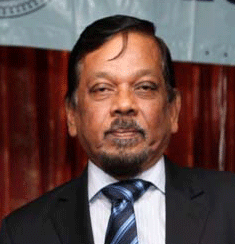
Wesley has stood for the freedom of the human spirit and the community of all her sons to what ever race or religion they may belong ... . To the wider life of Sri Lanka the school has continued to give fine men of vision , scholarship, ability, understanding and simple faith "
Mr A.S. Wirasinha , Principal 1962 -1983
My wife Ami and I were in the party of old Wesleyites and their partners who went from the United Kingdom to Sri Lanka to take part in the events and activities that took place from the 27th of February to 7th March to mark the 125th Anniversary of Wesley College, Colombo. We were fortunate that we were able to take part in the acts of thanks giving and the celebrations to mark 125 years of dedicated service to the nation by Wesley College, her staff and students over the years. Old boys of Wesley (most with their partners) came from Australia, Switzerland , Pakistan and Canada to take part in this momentous occasion in the life of Wesley. These old boys from abroad included Mr Lou Adhihetty (also a former Principal ) and Mr Alfred David (a senior member of the Department of Foreign Affairs) and presently Sri Lanka's High Commissioner to Pakistan, UK OBU Cricket Tour Team arriving at Hotel Oberoi in Colombo
I was particularly pleased that most of the old boys who came from abroad for the celebrations belonged to my era at Wesley. There were several occasions for us to meet up with our boyhood friends recollect happy memories exchange latest news while also partaking of two or three drinks to keep up the momentum of high spirits.
There were so many happy memories as well as memorable moments , but I shall summarise below only the major events and the main points to be noted:
Founders Day and Thanks giving Services.
The Founders Day Service was held on the birthday of the College on 2 March 1999 in the College Hall and brought back memories of our School Assemblies and Prize giving days. The Service started with a procession led by Kandyan Dancers and the College band with the Prefects carrying the Sri Lankan and College flags. The procession was headed by the Principal Mr Ben Fernando , Mr M A P Fernando and several old boys of Wesley. After the address by the Principal the service was mostly conducted by the present students of Wesley and contributions both in verse and prayers were made in English , Sinhalese and Tamil. There were thanks offering by representatives of the Christian, Buddhist, Hindu and Moslem religions aptly reflecting their representation in Wesley over the years. The Choirs (English, Sinhalese and Tamil) and the School band performed with precision and care that warranted the occasion. The vibrant rendering of the College song and the War cry brought the service to a rousing close. The ladies in our party from the UK OBU told us that we should be proud of the present boys of Wesley and they also made it a point after the service of giving their personal thanks and congratulations to the students who participated and those who took care of all the arrangements during the Service. All of which reflected the sense of order and attention to detail learnt by all of us who attended Wesley College.
This Service was followed immediately by a service conducted by Rev Duleep Fernando (President of the Methodist Church), for the dedication of the new Building which is still to be completed. Some of us more daring than the others joined Rev Fernando and the Principal in going down into the basement level of the Building for Prayers of Dedication. The Thanks giving service held on Sunday 7 March in the College Chapel was led by Rev Duleep Fernando and was another occasion to give thanks to the achievements made by Wesley. More than three hundred people including past teachers and pupils attended this moving service.
The Double Blue Ball.
The highlight of the celebrations was the 125 th Double Blue ball organised by the Old Wesley Sports Club (OWSC) at the Hilton Hotel on Saturday 27 February . The OWSC did the college proud by putting on a grand and thoroughly enjoyable show with several innovative ideas . There were more than 600 attendees who were entertained by two of the best bands in Colombo playing old time favourites and Baila music. The memorable night was enjoyed by all guests and the Dinner was plentiful and very tasty. The proceedings and dancing went on till the early morning and was fittingly concluded by traditional breakfast of Kiribath and sambols.
Gala Banquet.
The Gala Banquet to mark the Anniversary was held 6 March 1999 at the Oberoi Hotel and was indeed a grand and dignified occasion . The very much respected Speaker of the Sri Lanka's Parliament Dr K B Ratnayake (an old boy of fellow Methodist educational institution Hartley College ) was the Chief Guest and spoke eloquently of the influence of Methodism in Sri Lanka. Other Speakers included Rev Duleep Fernando, Mr Lou Adhihetty and Mr M H Mohamed. The Vote of thanks to the guests was proposed and seconded by Mr Keith de Krester (Australia OBU) and Mr Senthil Sinniah (UK OBU) respectively. It was a pleasure to see this occasion being graced by several past teachers of Wesley and friends of Wesley including Mrs Wirasinghe, wife the late Mr A S Wirasinghe (a past Principal) . The occasion as is the custom was brought to a rousing close with the rendition of the College song and the college war cry of "Zam Zam Zacay
Sports Events
The high light of the sport events was the Triangular Cricket Tournament Between the Over 40's teams of the Colombo, Australia and UK OBU's. It was a very enjoyable day bringing back memories of the days when we as youngsters watched our seniors perform and also recalling when some of us represented the College on the pitch at Campbell Park. It was also a chance to meet many school friends whom we have not met for a long time and to exchange news, gossip, telephone numbers and e-mail details. The youthful Colombo team beat the UK Team in the finals with the Australian team coming a respectable third.
In the ensuing days the UK OBU Cricket also played matches against a combined Sri Lanka I Australia XI and A Tamil Union XI. A team composed of the past Cricket captains played a match against the present Wesley Cricket team on the 6th March 99.
A Hockey match between the present Wesley team and a team composed of the past Wesley players took place and provided good entertainment to the spectators. Social Events and get togther's. Mr Afgar Mohideen held a Dinner party on the 26th February 99 ,to host the old boys visiting from abroad and the invitees included the Principal and several of the local old boys. It was a memorable re-union when we met many good friends with plenty of liquid refreshments and an excellent dinner to enliven the occasion. Thanks to Afgar and his family for hosting this event which set the tone of the social evenings that were to follow. The UK OBU and the Colombo OWSC hosted club nights at the Campbell park club house for the visiting and ( several local) old boys on the 2 and 3 of March respectively. These club nights again provided us the opportunities to meet in a relaxed atmosphere and to strengthen our fellowship with our old schoolmates.
GRAND FINALE
The formal events to mark the 125 th Anniversary of Wesley were brought to a close by the Grand Finale held on 7th March 99 at the BMICH with the Chief Justice of Sri Lanka ( deputising for the President of Sri Lanka ) as the Chief Guest. The Prize giving for the winners of the All Island Art competition organised as part of the Anniversary Celebrations was included in the programme and greatly increased the already high profile of the occasion. A memorable item was the Tableau which was presented by the students of Wesley which summarised the history of Wesley particularly the valiant efforts of Rev Highfield ,to set up the permanent home for Wesley College
IN CONCLUSION:
The twelve days of activities in Colombo to mark the 125 Anniversary brought back happy memories of school days and helped to rekindle friendships . We are proud of what the past and present boys of Wesley united by that one fraternal band - the band of Double Blue have achieved in several walks of life. We were reminded throughout the festivities that Wesley has produced several men of grit and industry who have gone forward to serve our dear Sri Lanka and in the case of the expatriates their adopted motherlands. I am sure that the rest of the Wesley OBU UK members will join me in thanking the Principal, the Vice- Principal , Rev Duleep Fernando , the staff and boys of Wesley , the OWSC , the Colombo OBU and all others who organised and participated in the numerous activities to give thanks and to celebrate 125 years of excellence and service to the nation of Sri Lanka by Wesley College, Colombo.

It was the cradle of sports for all Wesleyites. We learnt to bat, bowl and kick a football in a small gravel field behind the school called the Small park. The likes of Neil Gallagher, AR Chapman, Nalendra Abeysooriya, Kenneth De Silva, Sarath Wickramaratne and the Carnie brothers all started their cricket in the Small park. It was situated between Karlsruhe Gardens and the Nalanda Grounds, both ends lined by tall Andara trees. The passage from Karlsruhe Gardens was a steep slope. A parapet wall separated Dr.Jayasundera's house from the Campbell Park end of the grounds, tall enough to save his 4 daughters from the prying eyes of the boarders constantly snooping in that direction. At the opposite end was an old house with a pretty verandah and porch separated by a barbed wire fence loosened by boys creeping through to collect the ball. A tall Kottan tree was at the far corner beyond which was a 2 storey house where the occupant was a keen cricketer and watched the games as they unfolded. He couldn't resist the temptation to clap for a boundary or comment forcefully about the umpiring.
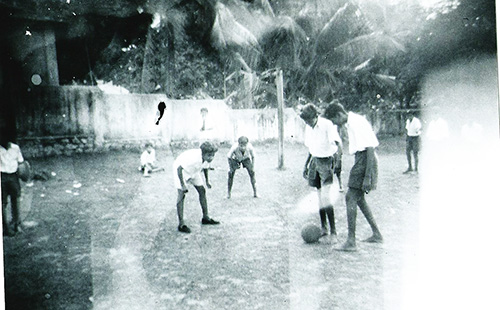
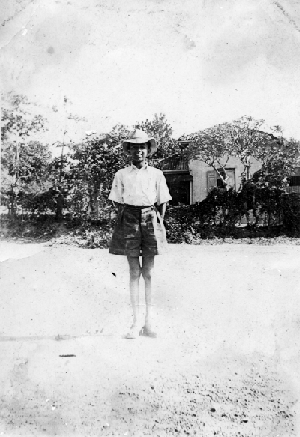
The Small Park was a veritable dust bowl but it was our Lords Cricket Grounds and the home of cricket. The grounds itself was a mainly gravel pitch with a few patches of dried grass at the Nalanda end. Due to many decades of cricket in the middle was an oval basin which was a our pitch. The stones and the slope gave the bowlers the advantage of viscious spin or a fast break. The conditions were the same for both sides and all was fair. The grounds was no place for leather and willow. The tennis ball was a fine substitute. We used them until the skin came off the ball and the grey rubber showed. M.W.Wickramaratne, Nelson Jayasinghe, Lakshman Gunaratne "lubba" ,SSP and ASP Ranasinghe A.R, Cecil and NGA Fernando, Kalinga De Silva, DMC Gunasekera, Senaka Jayasinghe ,Milroy Bulner were the great exponents of the tennis ball game. The bouncers were rare but "hooruttu" (ball traveling along the ground) or "goondu" was in every good bowlers repertoir. Tennis ball game had a vocabulary of its own. "pol adi" was the answer to a tight situation. Those who scored slowly were shouted at " hit out or get out". There being no replays and 3rd umpire this was a crucial job and " hora umpiring" done discreetly was part of the game. Missed catches was called " catching frogs". Misfields between the legs were " bowkku". The grounds sloped towards Nalanda and fielding in that area was a nightmare.
My first recollection of the park is watching " Challenged fights" in the small interval. There were a few on at any one time and the choice was entirely ours. Facial injuries were avoided by both parties but torn shirts and cuts and bruises were a part of the fight. On returning to the classes they got punished further for their ungainly appearance and the person to avoid was Mrs. Blacker.
 In the lunch break the pitch was taken over by the seniors and I recall Richard Dwight, Baafi and Mihlar being the heroes of the many games of cricket I had watched. During the marble season they played "bungkings" and 3 holes where the loser hands over a marble each time. Soccer in the park was very popular too and the permanent goal posts were a great help. The boarders played in the park everyday from 4-6pm on weekdays and wholeday Saturday. The hostel House matches took place there. The cheering and the jeering for those was intense. There were those who loved to commentate on the matches and Upali Siriwardene had a special knack for this. The park being mainly gravel falls resulted in cuts and bruises or more severe lacerations. The matron kindly dealt with these running repairs. We even had Athletics on Saturdays. The proximity of the grounds was its main advantage. The midday sun beats on it mercilessly and playing games on it is not for the faint hearted. On numerous occasions I have seen the sunset behind Nalanda College when it was time to return to the hostel.
In the lunch break the pitch was taken over by the seniors and I recall Richard Dwight, Baafi and Mihlar being the heroes of the many games of cricket I had watched. During the marble season they played "bungkings" and 3 holes where the loser hands over a marble each time. Soccer in the park was very popular too and the permanent goal posts were a great help. The boarders played in the park everyday from 4-6pm on weekdays and wholeday Saturday. The hostel House matches took place there. The cheering and the jeering for those was intense. There were those who loved to commentate on the matches and Upali Siriwardene had a special knack for this. The park being mainly gravel falls resulted in cuts and bruises or more severe lacerations. The matron kindly dealt with these running repairs. We even had Athletics on Saturdays. The proximity of the grounds was its main advantage. The midday sun beats on it mercilessly and playing games on it is not for the faint hearted. On numerous occasions I have seen the sunset behind Nalanda College when it was time to return to the hostel.
It is with great sadness that I note the park is no more and has been gone for more than 50 years. It was part of the land that Rev Highfield toiled hard to buy- cycling and "begging". We will never know the intricate details of the need for this sale and the financial transactions thereafter but Wesley College has lost a plot of prime land just behind it where the school could have extended its buildings if the need arose. Their decision deprived future generations of Wesleyites of a playing field virtually in their back yard. I wonder whether those involved in the intrigue were pleased after the sale of a part of our heritage and our memories. Controversy and innuendo will rage on until the air is cleared by someone who knows exactly what happened behind those closed doors.
The sad saga and the intrigue of the loss of small park is best described in the words of Winston Churchill " It is a riddle surrounded in mystery wrapped in an enigma" Its flames still smoulder even after more than 50 years. Was it a muddle or a fiddle? This sad and regrettable mistake will haunt us for many more years to come. Only time can soothe the self inflicted deep wounds of our history.
By Peter Christie
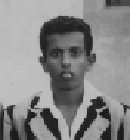
Speaker Dr. K. B. Ratnayake speaking at the Wesley College 125th anniversary celebrations banquet said that the school had grown from one built to accommodate the children of merchants in Dam Street, Pettah to an institute reputed for racial harmony and opened to students of all walks of life. He was speaking at the Banquet that was attended by the Principal of Royal College Lakshman Gomes, the Sub Warden of St Thomas' College, S. Pakianathan, Senior Diplomat, Vernon Mendis, Managing Director of the Hatton National Bank, Rienzie Wijeytillake, Former Principal Lou Adihetty, Halim Ishak MP., Keith de Kretser (President OBU Australia) Former Minister M. H. Mohammed MP., Senthil Sinniah (Representative OBU United Kingdom) other Old Boys and well wishers. Dr. Ratnayake said that lot of problems could be solved if everybody, Sinhalese, Tamils, Malays, Burghers and Muslims identified themselves as Sri Lankans and not put racial connotations in identity.
Dr. Ratnayake said that party politics had done a lot of damage to the country criticising those politicians who fought each other on divides of language, religion or race. He also said that as a nominated Member of Parliament he had one electorate to look after. The electorate of Sri Lanka. He said the advantage of being a nominated member unlike his predecessor Mr. M. H. Mohammed an old boy of Wesley who represented Borella, is that his loyalties are island wide. He was impressed, a poor villager from Point Pedro to be invited to such a prestigious occasion. An old boy of Hartley College another Methodist institution said he though a Buddhist had memorised the New Testament and always quoted Christ's "Lord forgive them for they know not what they do".
For good measure the Speaker repeated the quote in Sinhala and Tamil proving that he is tri-lingual. He further emphasised the need for school children to be taught each other's language. The Principal of Wesley College N. A. B. Fernando said that as an old boy he was making every endeavour to maintain the standards set by the school in maintaining ethnic and religious harmony. The students of Wesley will learn three languages, he said.
Kindly sent by Mahendra Dissanayake
Almost a quarter of AirLanka's airbus that took off from London's Heathrow airport last Thursday was filled with staunch and loyal old boys of Wesley College, Colombo on their way to their alma mater's 125th anniversary.
 Lord Reggie's old and dear friend Ben Fernando who is the present head of Wesley and once upon a time, a very, very popular figure in London's Sri Lankan scene and president of the oldest Sri Lankan organisation here on many occasions. 'The Association of Sri Lankans in the UK', will be truly proud of these lads who left no stone unturned to make this trip, be there on time and play their part well.
Lord Reggie's old and dear friend Ben Fernando who is the present head of Wesley and once upon a time, a very, very popular figure in London's Sri Lankan scene and president of the oldest Sri Lankan organisation here on many occasions. 'The Association of Sri Lankans in the UK', will be truly proud of these lads who left no stone unturned to make this trip, be there on time and play their part well.
Speaking to Lord Reggie on the eve of their departure Lord Reggie's close pal, a former Wesley skipper Ananda Thevethasan said the lads were pleased that the OBU's patron - a former principal - Rev. D. Izzett was travelling with them and will be there to share those moments of glory and happiness when Old Wesleyites in Sri Lanka and from Australia will "be with us as one family".
Thevathasan also expressed his absolute joy about the participation of that famous and mighty Old Wesleyite and Cambridge Double Blue (Cricket and Hockey) Lou Adihetty.
He said; "He was our coach and every move of his on the field was classic. It will be wonderful to see him at the crease again. That alone is worth the trip."
R. Perera will captain the UK team against SSC and Tamil Union on the 3 March and 8 March 1999 respectively at this cricket tournament which has been organised by former Sri Lanka opening bowler L.R. Goonetillake (President, OWSC).
An interesting duel should be the game between the past Wesley skippers made up of Lou Adihetty, Milroy Mutuvaloe, Everad Schoorman, Ananda Thevethasan, Navin de Silva, Delmer Achilees and Ameresh Rajaratnam and others against he present college eleven led by Dharsika Jayakody.
Lord Reggie also wishes to warn the rest of the Wesley teams that the team from UK put on a magnificent show at the Festival of Cricket here in 1997 to get the better of all the leading Sri Lanka schools which gave them that much coveted Sri Lanka OBAs trophy and be it bowling a 'googly' or a 'chinaman' or for that matter batting on a difficult pitch these lads are sure to put on a splendid performance and give the rest a jolly hard time. Queen says 'OK' to drugging of her carriage horses
Buckingham Palace recently admitted that royal horses are on occasions drugged before ceremonial events.
According to a palace spokesman the sedatives are given purely to calm the younger horses for important events such as the State Opening of Parliament and the annual Royal Ascot race meeting.
The spokesman said the drug acepromazine which is given in doses of around 25mg has a numbing effect and stops the horses from getting excited when passing noisy or cheering crowds.
These doses Lord Reggie understands are given as a liquid through a syringe into their mounts or as ground-up tablets together with their food thus making the animal tame and peaceful for some time. 'Late sitting' - a rare picture of Tony Blair
One of London's newspapers Lord Reggie loves to read, the 'Evening Standard" recently held a photography competition that attracted over 50,000 entries taken by people from many walks of life depicting everyday scenes of England from many angles of life.
Those pictures taken by both amateur and professional photographers portrayed sad, happy and stunning moments but the one Lord Reggie really enjoyed was that of the British Prime Minister Tony Blair seated on the carpeted floor of the parliament titles. 'Late sitting: an intimate shot of Tony Blair by Mike Maloney.'
As our picture shows the melancholy faced Tony Blair is seen reflecting over a letter he probably just finished reading but in which oak panelled room in the Parliament building will be even difficult for the longest serving member to guess.
 Knowledge alone would not do, you must bring to bear your talents and develop your skills to blend with the knowledge acquired in order to forge ahead in the competitive times, said Chief Guest Rienzie Wijetilleke, Managing Director HNB who was himself an old boy, at the Wesley College prize giving.
Knowledge alone would not do, you must bring to bear your talents and develop your skills to blend with the knowledge acquired in order to forge ahead in the competitive times, said Chief Guest Rienzie Wijetilleke, Managing Director HNB who was himself an old boy, at the Wesley College prize giving.
Mr. Wijetilleke was speaking from his awareness that everything is performed these days with a sense of urgency, where efficiency experts are called to perfect operations, so that the result will be speedier production and, that if business does not have the latest technological apparatus, it is in danger of, being 'Lost in the dust of Advancement'.
Mindful that there were innovative inventions in the past, he explained that as against those, there are much more advanced inventions that we see today. Progress has been made in mode of travel, communication, be it the print as well as the electronic media. Sophisticated equipment such as dictaphones, recorders and the preservation of comprehensive information in small diskettes or served in memory, for retrieval later on. And so students like you and all over, notwithstanding the challenges you are up against, could face them undaunted with these present amenities and facilities, that were non existent to the pupils of the past, he said.
In order to succeed Wijetilleke felt that one must be farsighted asking questions like what am I going to be in the future? What is my vision in this the fast challenging world? He recalled that Mahathma Gandhi too had a vision for the poor people, wanting to wipe away the tears of the teeming millions. The past Presidents of our land Jayawardena and Premadasa had theirs too. The former to usher in a Dharmista Society, the latter to alleviate poverty - whilst the present President Chandrika Bandaranaike Kumaratunga is striving to stop the war and bring about peace. You should be stressed, also aim at having leadership qualities, learning to work as a team, the leader with the others.
"Gain inspiration from the people around you, be enthusiastic having at all times a proper frame of mind. Learn to be orderly, managing and organizing yourselves to a planned schedule and adjusting as well, to changes that are necessary. There may be crises in your own homes, sickness, bereavement or whatever, let these be your training ground to build up your confidence with equanimity. So that you will be found credible in the eyes of your teachers and principal, to be entrusted with a job of work".
Striking a personal note Wijetilleke said that at Wesley he came under the principalship of C.J. Oorloff and P.H. Nonis. On leaving Wesley he taught for a while and joined the Bank of Ceylon, which took him to England, where he passed his banking as well as his accountancy exams to hold the present position he is in. "People do have faith in us, for 70 billion rupees is entrusted with us, our word is our bound, if you say something stand by your word at all times".
With deep concern for the boys, Wijetilleke chose to conclude by asking them at the end of the day to reflect on the day's happenings. "Spend a few minutes in self examination, of the things you should have done and not - as to whether you have hurt someone or done some wrong and, striving not to repeat the same mistakes".
The principal Mr. N.A.B. Fernando whilst welcoming the Chief Guest and Mrs. Dhammika Wijetilleke who gave away the prizes, apart from his report covering a wide range of activities, said that many significant and long lasting changes have occurred at Wesley. To illustrate what has happened and adding his own personal perspective he used P.B. Vaill's interpretation of change in "New ideas for a world of chaotic change."
"The organization in this case Wesley, is not a large ship, but more akin to a 40 foot raft. Rather than sailing a calm sea, this raft must traverse a raging river made up of uninterrupted flow of permanent white water rapids. To make things worse, the raft is manned by 10 people who have never worked together (with understanding) or travelled the river before, much of the trip is in the dark, the exact destination of the raft is not clear, and at regular intervals the raft needs to pull ashore, where some new crew members are added and others leave".
"In the past 5 years, during my tenure of office as principal, my colleagues on the staff and I have travelled together on the raft and traversed the raging river full of permanent white rapids. The 'raging river' will continue to be a part of the scene, but I have initiated and implemented changes at Wesley on the platform of school effectiveness and school improvement, that is our destination which will ensure stability. We have from time to time pulled ashore for evaluation and review of our programmes and some staff (crew) have left and others have joined us".
The secretary of the old boys union, Ivor Maharoof delivered the vote of thanks. college, Dilkush Peiris also spoke.
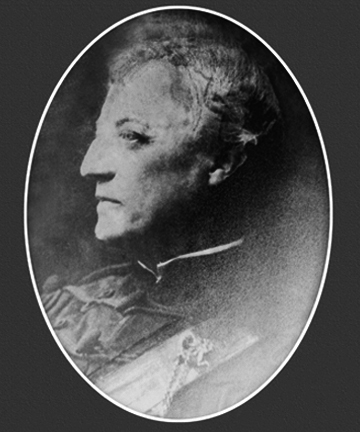
Campbell Park is a seductively lovely grounds. To all Wesleyites it is a sacred precinct. For those who represented the school in cricket, rugby, soccer, hockey or athletics, Campbell park is an everlasting memory. It is a vast expanse of greenery extending from Campbell Place to the Lady Ridgeway Hospital and Baseline road to All Saints Church. Intersected by gravel roads running from Welikada Prison to Bloomfield CC Grounds and All Saints to the Medical Research Institute its beauty was taken for granted in those days. Large trees surrounds the park. The old pavillion with metal spikes and bars have given way to a brand new the MH Mohammed building. At the far end were the tennis and basket ball courts. The Lady Ridgway Hospital was built on the site of the Old Victoria Home for the Incurables which was still standing until about 1955.
As a boarder I played cricket there on the sidelines, almost everyday and at other times dreamed of playing cricket. There was a basketball court and a tennis court at the east end of the grounds. I recall a sand pit by the metal sight screen at the prison-end of the grounds for high jump/long jump/triple jump and pole vault.
The sounds of the hourly chime of the Church bells still ring in my ears. I can recall hordes of worshippers going for the Novenas on Wednesdays.
 At Campbell Park we had a matting wicket.The enchantment of the cricket matches of my childhood still haunts me. At school Cricket was not only a game but a way of life.The elegant cover drives, the heaving sixes and the shattered wickets were seen in abundance during those 12 memorable years at Wesley. We watched cricket under the Mara trees dancing and chanting during the game. My lasting memory of cricket at Campbell Park is the sight of the setting sun behind All Saints Church and its lengthening shadows. The Church bell rang at 6 o'clock. As the bails were lifted we all departed discussing the ups and downs of the days play. Losing a match in those days was like the end of the world but we always bounced back. It was certainly a good training to face the peaks and troughs of our own lives. The songs we sang and the friends I made are etched deeply in my memory. Ah! Those were the days.
At Campbell Park we had a matting wicket.The enchantment of the cricket matches of my childhood still haunts me. At school Cricket was not only a game but a way of life.The elegant cover drives, the heaving sixes and the shattered wickets were seen in abundance during those 12 memorable years at Wesley. We watched cricket under the Mara trees dancing and chanting during the game. My lasting memory of cricket at Campbell Park is the sight of the setting sun behind All Saints Church and its lengthening shadows. The Church bell rang at 6 o'clock. As the bails were lifted we all departed discussing the ups and downs of the days play. Losing a match in those days was like the end of the world but we always bounced back. It was certainly a good training to face the peaks and troughs of our own lives. The songs we sang and the friends I made are etched deeply in my memory. Ah! Those were the days.
The sports meets were a great annual event. The muscle men did the discus, javelin and putt shot. The puffing and panting of those running the magic mile and the intense rivalry between the 4 houses were the highlights of the day. Those late stragglers who came last in the 440 or 880 yards were given a special cheer. There we learnt to accept defeat gracefully. There were few winners although many took part.
Campbell Park will always have a special place in the hearts of all Wesleyites.
In the words of Eric Gunasekera: Karlsruhe, open, airy was a paradise to the pupils of the Pettah institution. For a satisfactory playing field we had to wait. But we started on the stretch of Campbell Park behind All Saints' Church, then migrated to the marshy patch alongside Baseline Road until we acquired, thanks to P.H.Nonis' (acting Principal) enthusiastic effort, the former Tamil Union Pavilion. It is believed Tamil Union moved from Campbell Park in 1942.
......................................................................
From a Local Newspaper:
As a young member of the Tamil Union, when their grounds were at Campbell Park, P. Saravanamuttu (Sara Trophy fame)always felt that they needed a bigger place to expand their activities. He realized his ambition when he found what appeared to be a marsh at Wanathamulla that could be converted into a beautiful playing field. Away from the hustle and bustle of the city, the ground could be developed to international standards. He supervised the work day and night and produced the Colombo Oval. The Tamil Union owes a permanent debt to him because it was mainly his vision and hard work as an official of the Tamil Union that laid out and created the magnificent Colombo Oval to make it the best ground in Ceylon at that time. A great tribute to his memory is the present attempts to restore his life's work to its pristine glory. One of the earliest social functions held at this magnificent ground was on 1st May, 1943
......................................................................
From The Ceylon Daily News

The Police celebrated the 132nd anniversary, in 1998, of its establishment as a legally re-organised institution with the appointment of George William Robert Campbell (G. W. R. Campbell) (Lately Sir) as the IGP. He was brought here from 'Ratnagiri Ranges' of Rashtapradesh of India. Law enforcement had been in existence in a nebulous form for many years previously in this country. It could have been since June 1859, the Maritime Provinces under Dutch Rule, when four soldiers were detailed (to do Police work) to guard the city of Colombo on a decision taken on June 10, 1659 by the officials concerned. However, the Police was shaped into an efficient and a cohesive organisation by divesting it from most of the civilian functionaries and giving it a distinct identity. Hence it is much reasonable to recall to memory the architect and the pioneer of the modern Police Sir G. W. R. Campbell who took over the Police in the year 1866, when there were 44 Police Stations with a strength of 690 police officers of all ranks. He had been awarded the Mutiny Medal for the services during the suppression of the Indian Mutiny.
He realised that crime prevention could not be properly carried out as all the police inspectors were Europeans or non Sinhalese. So he recruited three Police Inspectors together with 40 young constables from good families. They were interviewed by himself at Colombo. He opened a training school at Maradana to train police officers. He opened up the Police Headquarters at Maradana and the Police Hospital at the same place. He recommended uniforms for the Police Officers and they were sewn by the Prisons Department. When the Police Services were criticized by the media he recommended to buy three journals Colombo Observer, Colombo Times and the Examiner at the Police Headquarters and gave instructions to the Officers concerned to read and get the required informations to give a healthy Police Service to the Nation.
The Campbell Park was constructed at Borella in a land extending over 20 acres by the Government on the request of Sir G. W. R. Campbell, and it was so named as a gratitude to his great service to the Police and to the Nation and he was also conferred with a knighthood "Sir", after his retirement. G.W.R. Campbell took over duties from Captain Drew who relieved Captain Terry at Galle, was born at Campbelltown, Argyllshire in 1835. He retired on April 11, 1891. He was a very efficient administrator and was able to maintain police-public relationship from his appointment to time of his retirement.
......................................................................
More about Sir G.W.R Campbell
Sir George William Robert Campbell KCMG (1835–1905) was the first British colonial Inspector General of Police of Ceylon (Sri Lanka). Campbell was born in 1835 in Campbeltown, Argyll, Scotland, the son of John Campbell and Eliza née Elder. He enlisted in the Argyll and Bute Militia and served in India, where he was appointed assistant superintendent in the revenue survey. During the Indian Rebellion of 1857 he was adjutant of the Ahmedabad Koli Corps, Assistant-Superintendent of Police and Assistant Magistrate. After serving as chief of police in the Indian province of Ratnagiri, he was appointed by Governor Frederick North on 3 September 1866, as Chief Superintendent of Police in Ceylon, in charge of the Police Force. Therefore, 3 September 1866 is considered as the beginning of Sri Lanka Police Service. The post was changed to Inspector General of Police in 1867. Therefore, 3rd of September 1866 can be considered as the beginning of the country’s present Police Service. Mr. Campbell is credited with shaping the Police Force into an efficient organization and giving it a distinct identity. He brought the whole island under his purview and the police became a national rather than a local Force.
In 1872 he was appointed Acting Lieutenant-Governor of Penang, Malaysia, a position he served for one year before returning to his role as Inspector General of Police. In 1887 he was awarded the CMG.[1] In 1891 he retired and returned to England where he received a knighthood for his service.[2] Campbell died on 10 January 1905.[3]
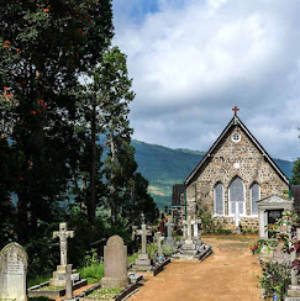 Christ Church Warleigh Dickoya is an Anglican church built in Ceylon during the 18th century by the British. It was built by William Scott, the manager of the Governor’s Mansion, in 1878, when the country was a British colony.
Christ Church Warleigh Dickoya is an Anglican church built in Ceylon during the 18th century by the British. It was built by William Scott, the manager of the Governor’s Mansion, in 1878, when the country was a British colony.
A bible printed in the 1860s was presented to the church in July 1879 by Rev. Charles Hill, the rector of Warboys Parish, and is still preserved in the church.The church was constructed using the old-style British church design. The church's walls are made of granite stones. An antique pipe organ (piano), an armchair and a wooden pulpit are all present in the church's interior. Stained glass windows from the nineteenth century, which feature brilliant Gothic-style images of Jesus Christ, were originally imported from England. The first British colonial Inspector General of the Ceylon Police, Sir George William Robert Campbell, who came to Ceylon in 1866, is believed to be buried in the churchyard.
......................................................................
From the 1959 School Magazine
Campbell Park: It is of great concern to us that very soon Wesley may not have the Free use of Campbell Park. It was only a few days ago that the Principal, Mr. Nonis, Announced that we will have no sports activities whatsoever on Campbell Park on Fridays. This, we learn, is because Carey College now shares the ground with us. It would be good to remind ourselves that Campbell Park has been leased to us by the Colombo Municipality, though the pavilion Itself was purchased by the college, from the Tamil Union Cricket & Athletic Club, many years ago. Thus if there is even the slightest doubt as to whether in the future, we may not have "monopoly" rights over the Park, it is time that we develop the land the College has leased out at Wanathamulla, near the Colombo Oval. The problem here seems to be that "squatters" have occupied this land, and that the Municipality is fighting shy of acting in the interests of the school. We urge the Principal, the O. B. A. and the Board of Governors of the College, to give this matter serious consideration. As it is we find our Rugger XV, meeting, even for practices, on 'foreign' grounds, when rightly, they should have all the facilities enjoyed by other teams.
......................................................................
From Jeremy Brohier
Campbell Park, as it was known, was also used as the grounds of the Tamil Union Cricket and Athletic Club, which had its own clubhouse which resembled a British countryside clubhouse. Securing a larger extent of land in Wanathamulla and developing it into a ground of international standards, the Tamil Union Cricket and Athletic Club moved to their new ground which is now known famously as the Colombo Oval. P.H. Nonis, who went on to become Principal of Wesley successfully negotiated the purchase of the clubhouse from the Tamil Union in 1940. This over-100-year-old pavilion stands to this day and is still used to host the 1st X1 cricket teams of schools that continue to visit Wesley. The ground was further developed and expanded to a full-sized cricket ground with the introduction of new turf wickets in 1991. Wesley continues to use this ground for hockey, football and athletics while it is used for rugby practices by the school’s squads at junior and senior levels.
......................................................................
Links to further reading

Going for a "pump" during the small interval was a ritual of all Wesleyites. A thousand students decended on the urinals next to the Primary Block. Time was tight and so was the urgency. I cannot describe in words the desperation of some but the image above speaks for itself.
The new urinals for the 21st Century - 2012
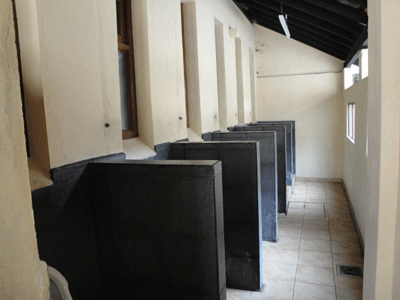 There were about 20 spaces separated by vertical sheets of concrete which were our urinals. They weren't any worse than boys urinals anywhere in the world but it had its specific smell towards the end of the day. At night there was no light and the boarders did not venture in there but the few who did often missed the target with disastrous results for the next day. The toilets and the wash area was just next door. Numerous wash basins were in the middle. There were 3 large water tanks for baths with a bucket. Bryan Claessen tells me these were use for "duckings" for freshers to the first eleven cricket team during his time. Several showers were on one side which were popular too. The water there somehow seem colder than anywhere else in the world. The concrete floor was broken up in many places which collected water and stagnated and it was not a pretty sight. The toilets were of the squatting variety with a bucket and a small tin for the wash after the ablutions. When I went to see it in the year 2000 little had changed. There was a rectangular area just outside the entrance to the bathrooms where all the rainwater from the roof converged. This was the boarders favourite spot for a "rain bath" as we called it. It surprises me that progress and the 21st Century advances hadn't reached the Wesley College bathrooms yet. Perhaps they were too far away from the public gaze!!
There were about 20 spaces separated by vertical sheets of concrete which were our urinals. They weren't any worse than boys urinals anywhere in the world but it had its specific smell towards the end of the day. At night there was no light and the boarders did not venture in there but the few who did often missed the target with disastrous results for the next day. The toilets and the wash area was just next door. Numerous wash basins were in the middle. There were 3 large water tanks for baths with a bucket. Bryan Claessen tells me these were use for "duckings" for freshers to the first eleven cricket team during his time. Several showers were on one side which were popular too. The water there somehow seem colder than anywhere else in the world. The concrete floor was broken up in many places which collected water and stagnated and it was not a pretty sight. The toilets were of the squatting variety with a bucket and a small tin for the wash after the ablutions. When I went to see it in the year 2000 little had changed. There was a rectangular area just outside the entrance to the bathrooms where all the rainwater from the roof converged. This was the boarders favourite spot for a "rain bath" as we called it. It surprises me that progress and the 21st Century advances hadn't reached the Wesley College bathrooms yet. Perhaps they were too far away from the public gaze!!
Addendum:
Much has changed since the arrival of Shanti McLelland as Principal. The buldings are in a good state of repair and the new toilets are clean and well maintained. -- 2012
By Fred Abeysekera
We met in our formative years - at Wesley College - in 1946 as classmates, and over a short period of time became very special friends - and remained so, for life.

We both lived in Nugegoda in our early youth, along with two other classmates - Archibald Singham and Neville Weerasekera - and we became inseparables. We went on ceaseless rambles across hill and dale, discovering short cuts to every possible place, criss-crossings the length and breadth of Nugegoda (then a small town) and its environs. Such treks were more often than not across private property and never without excitement. Falling into streams and shallow, unprotected wells at dusk, chased by irate owners of private property, outrunning dogs (who joined their owners in the chase) getting bogged down in paddy fields, barely scrambling to safety; and ending up laughing. It was always side-splitting laughter....these were the tumultous days of youth.
Our daily journey to school and back was by train - the notoriously slow, narrow-gauge railway - the Kelani Valley line. To be in time for General Assembly (a daily ritual in those days when the entire school met in the college hall), we had to catch either the 6.55 a.m. train or "the 7.17" at the Nugegoda Railway Station. The Station Master who knew all of us by name was Mr. R. Poulier, and he had a fatherly eye on us. These journeys, however, were always fraught with totally unwarranted risks; much excitement, fun and frolic - with us ending up in school with tell-tale signs of having travelled on the footboard; in open bogeys (which were sometimes loaded with coal) and only occasionally, seated in a second class compartment of Archie Singham's choice (which had more than the average sprinkling of pretty school girls) putting to legitimate use our season tickets for which we paid the princely sum of Rs. 4.00 for a month's travel! When school ended at 3.15 pm each day, we ambled along to the Baseline Road Railway Station when we were not required to be present at Campbell Park for athletics practice, hockey, cricket or basketball. We always went down Karlsrhue Gardens (via Mount Mary - a Wesley-Josephian stronghold) buying chocolate or "bullto" from the "Thambi Kade" at the corner - on rare occasions encountering an adventurous prefect exuding smoke from his nostrils, ensconced in the bowels of the ill-lit interior of the boutique. Like England's hero, Nelson, we turned a collective blind eye in such instances - and sprinted the rest of the distance, only to be admonished the next day for not walking down Baseline Road, as people usually do! Edward was not the fastest runner in our group and was invariably identified - consequently all four of us being roped in and lectured to on road safety - or, the hazards of going off the beaten track.
 I recall a particular incident which caused us much raucous laughter at the time, and on recollection, much merriment. Norman Mailer's Naked and the Dead had been banned in Sri Lanka as our prudish politicians (the self appointed custodians of "public" morality) were of the opinion it was totally unsuitable for "young minds" - which in effect meant that the book was not available to the reading public at large. A copy of the book turned up at Wesley and our group of four took turns to read it, with a specially devised brown paper cover bearing the legend "English Grammar by Nesfield", to disguise it effectively. Edward had drawn No. 3 and it was his turn to read the book. The book was handed over to him at the Nugegoda Railway Station by Neville Weerasekera who had completed reading it. It had been securely wrapped by him in a myriad layers of brown paper, with stout twine and sealing wax complete. Edward was cautioned not to open the package until bedtime. It is reported that his brother George (with whom he lived) had been informed around 9.00 pm that Edward had a severe "stomach disorder" which was to serve as adequate cover for his night-long treks to the toilet! (where the book was to be read). About midnight Edward had successfully torn out the last of a layer of covers the book was secured in to find to his dismay that it was a familiar school text-book - Chemistry by A. J. Mee! Thus dramatically ended Edward's voracious appetite for reading, as well as his chronic stomach disorder.
I recall a particular incident which caused us much raucous laughter at the time, and on recollection, much merriment. Norman Mailer's Naked and the Dead had been banned in Sri Lanka as our prudish politicians (the self appointed custodians of "public" morality) were of the opinion it was totally unsuitable for "young minds" - which in effect meant that the book was not available to the reading public at large. A copy of the book turned up at Wesley and our group of four took turns to read it, with a specially devised brown paper cover bearing the legend "English Grammar by Nesfield", to disguise it effectively. Edward had drawn No. 3 and it was his turn to read the book. The book was handed over to him at the Nugegoda Railway Station by Neville Weerasekera who had completed reading it. It had been securely wrapped by him in a myriad layers of brown paper, with stout twine and sealing wax complete. Edward was cautioned not to open the package until bedtime. It is reported that his brother George (with whom he lived) had been informed around 9.00 pm that Edward had a severe "stomach disorder" which was to serve as adequate cover for his night-long treks to the toilet! (where the book was to be read). About midnight Edward had successfully torn out the last of a layer of covers the book was secured in to find to his dismay that it was a familiar school text-book - Chemistry by A. J. Mee! Thus dramatically ended Edward's voracious appetite for reading, as well as his chronic stomach disorder.
Edward had the capacity to radiate love and concern for people particularly those close to him - his wife Anula and his children Dushan and Dushanthi and his buddies from Wesley. We were always welcome in his home with his elder brother George giving him all the support he needed to generate spontaneously the warmth and fellowship of hospitality. One of Edward's desires - expressed a few months before he died on January 18th, 1999 - was to spend a relaxed evening at The Old Wesleyites' Sports Club with his family and classmates and their respective families. This, unfortunately, did not materialise. He stoically endured a long and protracted illness, spanning two decades with great courage and fortitude. His sense of humour never abandoned him at the worst of times. Edward will be greatly missed at Wesley's 125th anniversary celebrations next month by all those who knew him and came to love him and very specifically by his old classmates.
GRANT HIM O LORD
ETERNAL PEACE
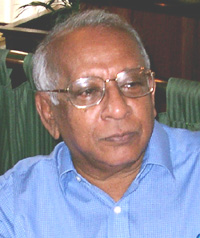 It was the year of 1946. My early schooling was at Kingswood College, Kandy. My brother Walter, who spent his entire secondary schooling at Kingswood, and I were students there because my father was stationed in the Kandy District. He was transferred to Colombo District, and that caused both of us to find new schools. For me the obvious choice was Wesley, being in the same Methodist denomination. Changing schools in 1946 was indeed a dream by today’s standards. Alone at age 15 years I visited Wesley and met with Rev James Cartman, who was most cordial and readily accepted me There was no advance fees, no tests the only needed criteria was that I came from Kingswood. I left Kingswood with some regret, as I had many friends, and above all it was a nice school, where we were at times in the boarding and at times a day scholar.
It was the year of 1946. My early schooling was at Kingswood College, Kandy. My brother Walter, who spent his entire secondary schooling at Kingswood, and I were students there because my father was stationed in the Kandy District. He was transferred to Colombo District, and that caused both of us to find new schools. For me the obvious choice was Wesley, being in the same Methodist denomination. Changing schools in 1946 was indeed a dream by today’s standards. Alone at age 15 years I visited Wesley and met with Rev James Cartman, who was most cordial and readily accepted me There was no advance fees, no tests the only needed criteria was that I came from Kingswood. I left Kingswood with some regret, as I had many friends, and above all it was a nice school, where we were at times in the boarding and at times a day scholar.
I joined the Junior School Certificate Class, where I met the classmates who remained lifelong friends. Foremost was Mahroof Ismail, followed by Munsif Meeran, Fred Abeysekera, Archibald Singham, Norman de La Harpe and several others. Mahroof was always first in the class, and Meeran and I battled for the second place. Due to Rev.Cartman’s valiant efforts, Wesley’s Buildings in Karlsrhue were released from British Military occupation in 1946. The buildings were in a parlous state after years of military use, parts of it being a POW camp. I was fortunate to be a student in the Cartman era which signified a steady progression in academics and sports. He was amply supported by Kenneth de Lanerolle, Vice Principal. He was a towering impressive person, fluent and an eloquent speaker.
.........................................................................
Briefly from Dr Farouk Sikkander(Mahroof Ismail's nephew)
.........................................................................
Several teachers remain my memory, 70 years later. L B Fernando was the class teacher, who was an eloquent speaker, and related many interesting anecdotal episodes. F J Senaratne was an accomplished teacher of English Literature. Mr.Weerasooriya taught us Botany, which was always punctuated by field visits. The Headmaster at the time was Mr Eric Gunasekera, always clad in an immaculate white suit, complete with tie and coat. He was no nonsense type and students feared even a gaze from him. Unfailing he would warn miscreants with the the phrase “ If you do not reform you will end up in the place opposite “, which was the Welikade jail.
The Senior Prefect at the time was Shelton Peiris, clad in a full white suit. His lieutenant was Edmund Dissanayake, both of whom loomed large in Wesley’s sojourn, from their schooldays right up to their demise. Their contribution needs volumes of space to evaluate their ample contribution, both at school and thereafter.
As we moved into higher classes Wesley was fortunate to have an eminent band of teachers. J A T Setukavelar for Physics, C R Hensman for English, John Blaze for Latin, D P George for Chemistry, K C George for Physics, and crowned by Rev Cartman for Christianity. Rev Cartman had just obtained a Master of Theology degree, and he conducted the SSC Christianity classes using a original Bible in Greek, which he translated as he taught the subject. The result was there six persons from our class who got distinctions in Christianity. An outstanding teacher for maths was C J T Thamotheram, whose teaching of Calculus to novices was without comparison. There was also Mr.Yesudian a fine teacher of Botany and Zoology to University Entrance students.
Travel to College was by the KV line narrow guage railway as lived we in Nugegoda. Edmund Dissanayake, Fred Abeysekera, Ed Roberts, the Seneviratne brothers were travel companions. We got down at Baseline Road and walked to College premises. There were no school vans, and all students big or small travelled alone. There was no security guards, and a modicum of security was provided by the Collge Peons such as Ranis. There was nothing called tuition, and if one wanted help it was offered gratis by a teacher.
Interestingly school fees at ‘’ A’”level class was Rs 18.00 per term. I know most schools now charge Rs 80,000 per term. It shows how so called free education has done more than a U turn.
Additional friends in the A level classes was Hilary de Alwis, J A B Gogerly, Harold Matthysz, Nalliah. 1950/51 was a golden year for Wesley as it had record a number of entrants into the University. Fred Abeysekera, Archie Singham, Hiiary de Alwis, Maxwel de Alwis gained entrance into the Arts faculty, Mahroof Ismail & Munsif Meeran into the Medical Stream, Gogerly and my self into the newly established Engineering Faculty.
Cricket was a passion in the school, led by Rev Cartman, who played for the Colombo Cricket Club a preserve of Brits. His contact with many businessmen enabled Wesley school leavers to find jobs. Inter school cricket matches were attended with great enthusiasm. Bands of bicycles would converge on to playing fields with flags and with boisterous rending of the war cry “Zam Zam Zaki….” Two matches I remember is the Royal-Wesley encounter at Campbell park where a strong Edmund Dissanayake led Wesley to victory. The other was the match with St Thomas” Mt Lavinia where Edmund Dissanayake suffered a grevious blow to the head, and was in a coma for three months. Rev Cartman was at his bedside everyday. At morning Assembly unfailing prayers were said for his recovery. And he did recover in three months and resumed normal life and continued to lead the school in cricket.
An event I remember was a camping trip to Horton Plains in I think in 1948. It was organized by the Scout troupe. Although not being a scout member I was allowed to join in the trip. Several of us stayed in the College Hostel to catch the night train. Those who joined were Shelton Peiris, Edmund Dissanayake, Fred Abeysekera, DBC Mack, Durand Gunatillake, Mahroof Ismail and myself, and others whose names evade my memory. We alighted at Ohiya Station and began the precipitous climb to Horton Plains. It was truly a Mt Everest like climb for us and took a laborious 6 hours. The camp trip was indeed a delight and there was an excellent camaraderie amongst the participants. We slept under tents, and went on many hikes including to World’s End. Each evening there was a camp fire and the usual sing songs.
Another event I remember was taking my nephew Nihal (now Dr.Nihal Amerasekera) on his first day in school. He certainly lived upto expectations, and qualified as a Doctor, and became a Consultant Radiologist in England. Much more important is his monumental contribution to the functioning of the excellent website “Double Blue International”. Many Wesleyites visit this site to keep in touch of Collegiate events and the life and times of many here and abroad.
After entering the University in 1959, sadly my contact with my Wesley friends diminished, as all of us went our different ways. An exception was my contact with Mr.Shelton Wirasinghe, and outstanding Principal, who had the daunting task of running a school without sufficient cash flow. It was the infamous time when schools such Wesley were prevented from charging school fees, and at the same time deprived of the school grant by Government to cover teacher salaries. Indeed he performed a Herculean task in running the school at this time.
In 1990 I returned to Sri Lanka, and renewed my contact with Wesley. I joined the OBU, and was elected a committee member. A great delight was meeting with my life long friend, Mahroof Ismail at the monthly meeting. I participated in all major events connected with the 125th Anniversary of Wesley College. A distinguished visitor was Mrs.Margaret.Weaver the daughter of the Rev.Cartman, and I had the honor of entertaining her at my home, along with Edmund Dissanayake, Shelton Peiris, and Mervyn Peiris.
With Shelton Peiris, who was Editor of the 125th Anniversary publication, I played a major roll in organizing the written contributions and liaising with the Printers.
It is most likely I will not be there to celebrate the 150th Anniversary, and I am sure it will be celebrated in an worthy manner. May Wesley go forward and produce leaders to take this country forward.
The 125th Anniversary was celebrated with great gusto
By Shanti McLelland - November 14, 2001
Before the spring of year 2001, Dr.Nihal Amerasekera launched the Wesley College (OBU) UK web site. This exceptionally scholarly site has helped to unfold Wesley's 127 year history and bring together Wesleyites around the world. Now, six months later, all Wesleyites have been invited to the launch of the Wesley College (OBU) Australian branch web site. This time we have to thank Mahendra Dissanayake for the excellent architecture and construction of the site. I am glad to see my running partner Reg Bartholomeusz an outstanding sportsman at the helm with my fellow scout Nelson de Silva as scribe. This will join the time zones from East to West.I was excited and exultant to read the news letter - Vol. 1 (1) published by the Australian Branch, edited by Bryan Wijekoon. Previous to this it was in 1990 that I read a news letter from the Aussie branch. Cecil d'with Barbut & Keith de Kretser two of the the long-standing stalwarts have to be thanked for keeping the Australian branch active in the 1990's. The article by Norman de La Harpe brought back some of the old memories of the round table stories narrated by Mr. L.A.Fernando during our Athletic meetings before Public schools, Relay Carnival, or the Junior AAA meets. The motivating stories were about our former Wesley's top sportsmen. We have to thank Norman for giving us the first person version. M.A.M Sheriff, Harold Matthysz, Trevor Van Rooyen, Ian Campbell, and including the great cricketer N. S. Jayasundara. The students now at Wesley would have never got this valuable information otherwise.
As remembered by Norman, Lucian Dep certainly was an outstanding athlete, national pole vaulter and served the AAA as an official for many years, along with Mr. A. A. Swaris. His nephews Cletus and Srinath Dep both were outstanding high Jumpers and public schools athletes in the 1960's. Both of them competed at the time we were representing Wesley. The other athlete Shirley Perera was once again one of St. Joseph's top athletes. Brothers, Shirley, Neville, and Neil lived near the Medical College, and certainly were great friends.It was certainly a great adventure to see the great cricketer Henry Duckworth and Wesley's front-runners in one of the photos. Hopefully time will come to meet and greet these past Wesleyites in the future. Wesley should certainly be proud of some of our top sportsmen, who were outstanding nationally and internationally. I hope this valuable information on both web sites will motivate the present Wesleyites to emulate the dazzling feats of these past heroes.I must also take a few moments to remind the Old Wesleyites not only to delve in the performance of sports at Wesley, but also concentrate on the academic excellence. I remember how happy and thrilled when the names of those who entered medical college; University of Ceylon, Colombo campus, Peradeniya campus, Vidyodaya, or Vidyalankara was read out after the University Entrance/Advanced Level results. Very distinctly I remember the Hill Medal winners D. Raymond and Paul David. Paul specially because of Charles David who was my classmate, Joe David. Also, not forgetting Alfie David who was an extraordinary sportsman and scholar.
I was happy to all of the faces in the photograph taken by my good friend Mohan Abraham. It was certainly pleasure to see the evergreen Dr. Frank Jayasinghe (who taught me algebra in Form_1), and all of the other eleven I distinctly remember, same as I had seen a few years ago. We have to thank those loyal Wesleyites for holding on to the double blue in Colombo.I certainly remember most of the names I see on the address list. I send my heartfelt greetings to all my fellow double blue colleagues on the UK & Australian web.
Wesley to the fore

Nostalgia is my great sin, and I remember with a sense of loss a kinder gentler world which disappeared forever as I left school. The most painful of all is the disappearance from my life the people who meant so much to me, friends, teachers, chaplains and Principals in all those years at Wesley. I stepped on the treadmill to carve myself a career and raise a family. Now having reached the end of my working life I still yearn for those days at school even though more than forty years have passed me by.
1950 was a time of idyllic splendour and tranquility in Ceylon. D.S.Senanayake was the Prime Minister. The sense of humanity and decency instilled by the British for over a century was still in place. The Galle Face Hotel, The Queens Hotel Kandy and The Grand Hotel Nuwara Eliya were the only Hotels with any star quality. The affluent and the not so wealthy indulged in a weekend flutter on the horses at the Race Course in Reid Avenue. The Parliament was by the sea and the breeze helped the politicians to think rationally and clearly- or so it seemed. You shop at Cargills or Millers , have tea at the Pagoda Tea Rooms in Chatham Street or the Fountain Café at Union Place and buy your Lingus (Spicey sausages), Orange Barley and Lanka Lime at the Ceylon Cold Stores at Slave Island. During April the rich went "upcountry" to Nuwara Eliya to escape the Colombo heat. Galle face Green on a Sunday was packed with people sucking Alerics Ice Cream. When all was said and done those who needed Devine favours went to the "Novenas" on Wednesdays, at All Saints Church Borella . Meanwhile Ranis rang the school bell with the passion and precision of Big Ben.
Colombo in the 1950's was a city of contrasts with the beauty of prestigious estates with pleasant houses in some areas and slums, shanties and tenements in others. The poor with large families lived in a single room in screaming poverty. The falling plaster, broken windows and fences, corrugated iron roofs were the hall marks of the poverty we saw. It is a scene straight from the annals of our urban life of that era. For many the new found political independence did little to give them home or hope. The prized jobs were in the government service with jobs for life. In those days everyone knew his place. The master and servant, teacher and student, rich and poor, parent and child accepted the situation as if ordained by God. Wesley attracted both the very rich and the very poor the majority being sons of middle class Government Servants. The main Maradana Railway yard was where the narrow and broad guage converged. Many of the Railway employees lived at the Mt. Mary housing estate and in Dematagoda. Scores of them sent their boys to Wesley thanks to the good old CGR.
 There is some truth in the saying "school is where you go when your parents cant keep you and industry cant take you". I joined Wesley in January 1950 during the 'reign' of Cedric Oorloff. With his Oxford accent he had an air of authority and dignity. He commanded respect and received it. Being just 8 years old and bottom of the pile viewed school life with fear and trepidation. Oorloff inspired terror and always had our attention. In later years as a boarder living just behind his back garden we appreciated his humour and generosity. Mrs. Oorloff was a tall kindly lady, looked after her garden and taught English and History to the seniors. Gillian their daughter, a bubbly teenager, was a pleasant sight playing with her dog in their well manicured lawn. I can still picture his green Austin Devon parked in the porch of their large and spacious bungalow. My first brush with the law came quite early in my school career. I was involved in a serious conversation with a classmate at assembly when CJO spotted my indiscretion and asked us both to stand-up for the whole proceedings. We coped with the embarrassment quite well but on our return to class Mr. MT Rajapakse gave us a rasping blow on the face. I remember being dazed for a few minutes and unable to hear for couple of days. Soon all was forgotten and we both got back to our old ways.
There is some truth in the saying "school is where you go when your parents cant keep you and industry cant take you". I joined Wesley in January 1950 during the 'reign' of Cedric Oorloff. With his Oxford accent he had an air of authority and dignity. He commanded respect and received it. Being just 8 years old and bottom of the pile viewed school life with fear and trepidation. Oorloff inspired terror and always had our attention. In later years as a boarder living just behind his back garden we appreciated his humour and generosity. Mrs. Oorloff was a tall kindly lady, looked after her garden and taught English and History to the seniors. Gillian their daughter, a bubbly teenager, was a pleasant sight playing with her dog in their well manicured lawn. I can still picture his green Austin Devon parked in the porch of their large and spacious bungalow. My first brush with the law came quite early in my school career. I was involved in a serious conversation with a classmate at assembly when CJO spotted my indiscretion and asked us both to stand-up for the whole proceedings. We coped with the embarrassment quite well but on our return to class Mr. MT Rajapakse gave us a rasping blow on the face. I remember being dazed for a few minutes and unable to hear for couple of days. Soon all was forgotten and we both got back to our old ways.
The old Primary Block is no more. It is replaced by the new DH Pereira building. The old block had a raised floor with steps to the classrooms. Every class had a half wall on the side with a wire mesh. The teacher was by the blackboard in a wooden platform with a table and chair. Chalk was everywhere. The students had two to a long desk with its top engraved with the initials of former pupils. There were 30 students to a class. Mr CM Fonseka was the headmaster of the Primary School. He was pretty strict and was in charge of the 5th Std English. Students feared him and gave him respect. His son Robin was a student at Wesley and was a popular boy. Robin later became a Methodist Priest. While he was at Kurana katunayake as the Priest in Charge, sadly, he was knifed to death.
I was in the Primary School from 1950- 53. Life there was rather claustrophobic being hemmed in by "aggressive teachers" and "bullying" seniors. Throwing of dusters at pupils, using the hand to assault students and the liberal use of the cane and ruler for minor offences just didn't seem acceptable. This was how it appeared to me at the time. On looking back it would not be fair to apply the liberal values of the 21st Century to school life 50 years ago. Miss Blacker taught us English until we went to the senior school. Mrs. Iris Muller took some of those classes too and she was a marvellous, kind teacher. My lasting memory of those English classes was the Longman's Copy book which we had to carefully copy down the letters of the English alphabet using a calligraphic pen. MT Rajapaksa was our class teacher in Std 2. He was a superb teacher and his departure to join the staff of the Maharagama Teacher Training Institute was a great loss to the school. Mr.Bharathasinghe was in Std.3 though for a short time when Miss Tissaratchi, a pretty young lady took over. She was unable to control the class and had the habit of sending the students for punishment by the Principal or headmaster for trivial offences. It was an easy way out for her but not for her students. Mr. Wilfred was the teacher in Std.4 and S.T.Perera alias "Poos Bada" was in Std 5. The latter had an apron of fat over his belt. He was a good dedicated teacher. He got us to memorise a book of poems during the year which caused a lot of heartache to those who were not too good at remembering. STP had a short cane for punishment which came out forcefully during those poetry sessions. He left school to become a Headmaster of a village school in Tissamaharama where we visited him subsequently whilst on a school trip with Edmund Dissanayake. It was pretty rural and there was no electricity at his house and life seemed very simple indeed. I wonder how he is and whether he thinks of us too after all these years. The English teacher in Std 5 was a big , jet black Mr. Aelian Jayasekera. He introduced us to the poems of Milton, Tennyson and Longfellow. AJ was a kindly man and controlled the class without reaching for the cane. In the primary classes we used S.F.De Silva's history books which were beautifully written like one long story. He was the Director of Education for the Ministry at the time. I believe he wrote the geography books too. We used J.E.Jayasuriya' s Mathematics books and it was later that I realised he was an Old boy of the school. I recall joining the 14th Colombo Cub Pack when Mr. Wilfred was in charge. Perhaps it was the lovely gear and the cap that attracted me to this brotherhood. The marching and the three finger salute soon became a ritual. We shouted " Ah Kay Lar we'll do our best" and sang a song with rather poignant lyrics
gently down the stream
Merrily merrily merrily merrily
Life is but a dream
 I enjoyed the "chip a job " week immensely and remember scouring the middle class neighbourhood of Borella for work. People were very generous and many were bemused. Mr. EL Rodrigo then joined the staff and supervised the Cubs. I found him too strict and I left when being in the pack was a liablity. ELR was our boarding master and I realised what a caring, kind person he was in later years. This was merely how I viewed it as an 8 year old. On returning to school for a visit as a Medical student EL Rodrigo saw me and promptly took me to the Tuck Shop. We had a long chat about the good old days. I wish him a long and happy retirement. It gave me great pleasure to see his photographs hanging in the college hall with the all time greats like HJVI Ekanayake for over 25 years of service to the school..
I enjoyed the "chip a job " week immensely and remember scouring the middle class neighbourhood of Borella for work. People were very generous and many were bemused. Mr. EL Rodrigo then joined the staff and supervised the Cubs. I found him too strict and I left when being in the pack was a liablity. ELR was our boarding master and I realised what a caring, kind person he was in later years. This was merely how I viewed it as an 8 year old. On returning to school for a visit as a Medical student EL Rodrigo saw me and promptly took me to the Tuck Shop. We had a long chat about the good old days. I wish him a long and happy retirement. It gave me great pleasure to see his photographs hanging in the college hall with the all time greats like HJVI Ekanayake for over 25 years of service to the school..
Transport is crucial for schools. In common with the development of road transport worldwide, bus operation in Ceylon was pioneered by private enterprise. Private entrepreneurs. Ebert Silva, High Level Bus Company and Ceylon Tours provided the service with many other companies whose names I cannot now recall. Demand continued to increase with population growth and the private companies found it difficult to change, invest and improve and the service began to crumble.The Government Nationalised bus transport in 1958 and the Ceylon Transport Board was born. The red reliable British Leyland single and double decker buses then were a common part of the Colombo scene. Quickshaw Taxis competed for business with the Morris Minor Cabs. Rickshaws in the 50's were confined to Fort and Pettah. Trolley busses were popular for a decade in the 1950's running between Borella and Pettah. Bullockcarts were seen on the roads well into the 1970's. At Wesley there were students from all corners of the Island. Those from far away chose to board. The majority lived locally and walked or cycled to school. There were school buses from Ratmalana supervised by some teachers who used this service. The affluent used their cars to bring the kids to Wesley. Those living in the Kelani valley from Maradana to Avissawella had the slow and cumbersome narrow guage railway. It helped me to travel from Nugegoda to Baseline Road and I remember with nostalgia and much affection the happy band of schoolboys , the steam trains and Hunslets that did their job so efficiently.
Unlike at present the students had no voice at all. Parents took decisions for us at home and the teachers did so at school. Having been used to the vernacular at home my English was appalling and Miss Blacker's efforts with the sharp edge of the ruler encouraged me to read Aesops fables, Grimms and Andersons Fairy tales. Reading then on became a habit. C.M.Fonseka who also taught my father was the Headmaster of the Primary school. He was a strict Victorian teacher good at his job. He inspired terror and had our attention and never spared the rod. I can still picture his dark face with short grey hair and white suit. His son Robin was at school and it was with much sadness I heard he died tragically at the Kurana Methodist Minister's bungalow where he was the parish priest. John Gogerly made us do wood work and carpentry which was a welcome relief from the struggles at Maths and reciting poetry from memory. My desk was full of carved names and initials and I happily added my own which horrified Miss Blacker. The stern warning and ear pulling did not deter me from indulging in the same every year until I left school. It pleased me no end to find my name in the chemistry lab 40 years later. The equipment and apparatus hadn't changed either which did not speak much of the science at school.
 I am an only child, a rare breed in times when 4 or 5 was the norm. Being spoilt and pampered at home I was becoming an incorrigible brat. My father being in Government Service was transferred from pillar to post, every 4 years. I needed a stable environment for my education and joined the school hostel in 1952. The boarding gave me more brothers than I ever wanted. The Camaraderie and the brotherhood in the hostel was the best that happened to me at school and feel eternally grateful to my parents for the experience which didn't come cheap. Learning to share was difficult at first but sharing stood me in good stead in later life.
I am an only child, a rare breed in times when 4 or 5 was the norm. Being spoilt and pampered at home I was becoming an incorrigible brat. My father being in Government Service was transferred from pillar to post, every 4 years. I needed a stable environment for my education and joined the school hostel in 1952. The boarding gave me more brothers than I ever wanted. The Camaraderie and the brotherhood in the hostel was the best that happened to me at school and feel eternally grateful to my parents for the experience which didn't come cheap. Learning to share was difficult at first but sharing stood me in good stead in later life.
This was the era of amateur sportsmen and winning was never the only motive but to play the game. "Umpires' word was law" was the teaching and often we walked away even when the umpires finger stayed down. I still can recall the many games I played at Small Park with Kenneth De Silva, Randolph Crutchley, Kenneth Anthonisz, Michael Christoffelsz, Boris Schrader, Upali Perera, Asoka Ranasinghe, Mynah Wickramaratne, Arthur d'With-Barbut, R.Ratnavale, Masilamony, Soundravel etc. Cricket was all consuming. We played it several times a day in any corner we could. If the space was limited we tried French cricket. I dreamed a lot about the game too. The first eleven games at Campbell Park were never to be missed. We gathered in our hundreds and it had a carnival atmosphere. So we sang:
Hurrah for the land,
Hurrah for the Wesley Boys,
Who do not care a damn,
Everywhere the merry goes,
The land is sure to go.
Down with the battle cry of freedom
Little did I know the real meaning of this poem of Freedom by James Joyce when I sang it then. I associated this with "Mary and the little lamb". Everywhere Mary went the lamb was sure to go. On occasions when the chips were down and our wickets were falling we chanted "What's the matter - minor matter" even when the situation was beyond repair.
Cricket is first and foremost a dramatic spectacle. It belongs with the theatre, ballet, opera and the dance. In the 1950's we had the best decade of cricket at Wesley. DBC Mack, Claessens,Adhihettys Fuards Abeysooriya, Kretser, Ebert are just a few of the names that rolled freely as we speak of those vintage years. I recall going to CJ Ooroff's bungalow in a procession with hundreds of others after a thrilling win against Royal singing "Monday holiday" to the tune of "he's a jolly good fellow". The request was granted to our utter surprise and delight. The setting sun behind All Saints Church as we watched the drama on the Campbell Park matting is an image that is firmly etched in my memory.
 General Assembly in the College Hall was pure theatre. First the boys entered the hall then the teachers followed by CJ Oorloff. Good Morning boys he said and we chanted "Good Morning Sir" First CJO read out the school news of matches etc. Then the rebukes followed by the punishments in the way of Saturday detention. The non-Christians were then adjourned followed by a short Christian Service. Built at the turn of the last century the college hall with its stained glass windows and the high timber ceiling is very elegant indeed. I still dream of it and saw it many times recently to appreciate its splendour. Without a full house and the buzz of schoolboys it is never possible to recreate the magical atmosphere we experienced in those days.I remember the Prefects all in white standing guard by the doors at assembly and the sub-prefects on the opposite side standing to attention ticking off the noisy primary school boys. Derrick Wright and subsequently Nimalsiri Rosa and Ranjit Rosa were in charge of the public address system during assembly. Apart from the occasional hiss and crackle they maintained it well. There were times when it all went dead but dark skinned Nimalsiri Rosa was "born to blush unseen".
General Assembly in the College Hall was pure theatre. First the boys entered the hall then the teachers followed by CJ Oorloff. Good Morning boys he said and we chanted "Good Morning Sir" First CJO read out the school news of matches etc. Then the rebukes followed by the punishments in the way of Saturday detention. The non-Christians were then adjourned followed by a short Christian Service. Built at the turn of the last century the college hall with its stained glass windows and the high timber ceiling is very elegant indeed. I still dream of it and saw it many times recently to appreciate its splendour. Without a full house and the buzz of schoolboys it is never possible to recreate the magical atmosphere we experienced in those days.I remember the Prefects all in white standing guard by the doors at assembly and the sub-prefects on the opposite side standing to attention ticking off the noisy primary school boys. Derrick Wright and subsequently Nimalsiri Rosa and Ranjit Rosa were in charge of the public address system during assembly. Apart from the occasional hiss and crackle they maintained it well. There were times when it all went dead but dark skinned Nimalsiri Rosa was "born to blush unseen".
 The boarding taught me the value of regular study. L.A.Fernando, Ivor De Silva, E.L.Rodrigo, AJ Vethanayagam, DB Welikala, Ben Jayasinghe, Frank Jayasinghe, Wilfred Wickramasinghe, Henry Rajapakse and Charles Yesudian were the teachers who maintained law and order and helped the brotherhood to thrive and succeed. Hide and seek was a popular game played on a weekend. We had the whole school to hide in. Under the Assembly hall stage was a fine place for this, dark and quiet. The games went on for a whole day and kept us well amused and out of trouble.
The boarding taught me the value of regular study. L.A.Fernando, Ivor De Silva, E.L.Rodrigo, AJ Vethanayagam, DB Welikala, Ben Jayasinghe, Frank Jayasinghe, Wilfred Wickramasinghe, Henry Rajapakse and Charles Yesudian were the teachers who maintained law and order and helped the brotherhood to thrive and succeed. Hide and seek was a popular game played on a weekend. We had the whole school to hide in. Under the Assembly hall stage was a fine place for this, dark and quiet. The games went on for a whole day and kept us well amused and out of trouble.
Do you remember the little cubby hole behind the assembly hall where the bookshop was? Mr.Wilfred (cot rule) and "Pettha" E.L.Rodrigo sold the monitors exercise books, Dreadnought instrument boxes, College Hymnal and the Holy Bible. E.L.Rodrigo had his own rules of engagement depending on his mood. You couldn't pass the office without a comment from Eric De Silva or a stare from KM de Lanerolle through his black rimmed bifocals. We often met Marshall on the corridor giving us the bad news that the Principal is walking towards us. The 1st XI Cricketers and the Prefects were at the top of the pecking order and walked tall and with confidence. The rest had to dodge their way out of trouble. " Good morning Sir" to a teacher on the corridor usually got a Brownie point. In those days we were full of "yes Sir - no Sir" . We learnt the art of keeping out of harms way very early on in our school careers. It was as a boarder I came across Eric Gunasekera, an icon belonging to the post war era. He lived in retirement in an old palatial house on Karlsruhe gardens with a lovely lawn and hedges full of flowers. Dressed in all white he stood by the roadside to ask the returning boarders for the cricket scores from Campbell Park. He was feeble then and almost blind but his enthusiasm for Wesley and its cricket remained strong as ever. Teachers of that calibre and dedication are sadly a rarity now. I have no such kind words for his bull terrier who took a bite off my thigh which needed a few stitches at the General Hospital Colombo. I must mention the Matrons - Mrs.Ruth Hindle and Mrs.Gomes who looked after the boys with much affection. They did the running repairs for us and to the new boys in the Junior Dorm provided a shoulder to cry on.
W.H.Davies speaking of leisure said "What is this life if, full of care, we have no time to stand and stare?" Amidst the hustle and bustle of hostel life there were placid moments too. I vividly recall one Sunday afternoon looking out of the dormitory window across the old primary block. In the distance was busy bustling Dematagoda. The monsoon storms were ready to unleash its wrath and the sky was purple. It seemed to be heading directly towards us. Nearer and nearer it came, until I started to worry that it would pick up the school . What descended on us in the boarding was hardly bearable. The lightning scrawled like a violent signature across the darkening sky. ' I was, terrified but enthralled, I watched from the window the wind as it spiralled elegantly across and the torrential rain erupted like a water spout. The thunder was deafening. The wind and the rain cleared as quickly as it came. The sun always won in the end. Analogous to the peaks and troughs of our own lives.

1952-53 the 4th and 5th Stds of the Sinhalese stream was moved to the ground floor of the Vice-Principal's bungalow. The former was in the lounge and the latter in the dining room. We weren't allowed to use the toilets there and had the long march back to our old haunt by the cycle shed and the timing was crucial. We played in the VP's garden and helped ourselves to the juicy and mouth wateringly sour "billing" fruits. Lionel Jayasuriya lived upstairs and parked his ancient Austin 7 in the garage. He is now 101 years old and lives with his daughter. Mr. Wilfred and S.T.Perera kept the noise levels of the classes down to make it bearable for the Jayasuriya's and we complied when we could. The Principal's lawn was strictly out of bounds. Rather cut off from the rest of the pack we had a jolly good time. I believe Mr.Lanerolle was the occupant of that lovely spacious bungalow but was away in the USA for further studies.
In 1954 Lionel Jayasuriya was our class teacher and we were in Form 1 and in the Highfield Block. He loved settling disputes between students and sometimes the whole period was taken to solve a trivial problem. When we realised this most disputes were brought to him. He was particularly kind to me as the Jayasuriya family invited me for meals occasionally which was "manna" from heaven for a hungry boarder on a subsistence diet. He had thin scaly legs which he proudly displayed by placing his foot on the desk in front. This made the boys to call him "Kabaraya". We had another Kabaraya in the class- Chandra Weeraratne from Welihinda Estate Pelmadulla. The latter had a short fuse and was greatly irritated by this nick name. It was in this class that I realised the importance of hard work for a better life in the future. My parents were proud of my reports and I seem to enjoy the challenge and the competition from my very clever colleagues. From thereon I never looked back and good fortune was on my side.
 I cannot speak highly enough of the beauty of our school garden and the estate. Raman from Cochin was the man in charge. He was good at his job, spoke little and said it with flowers. The lawn in front extended from the gate to the primary block. It had a border of Coleus and Cannas in full bloom. The front of the school had a tarred surface with stones in places. The tamarind tree must be a 100 years old as it is seen in the photo of 1907. It is time we gave it the respect it deserves. The tree must have seen many generations of students pass through school, Principals come and go and teachers begin and end their careers. There were several palm trees lining the drive up the hill with a few Casuarina trees. Belonging to the pine family Casuarinas produced spiky cones and needles which littered the ground in the dry season. There were many large spreading Flamboyant trees scattered in the grounds producing beautiful orange flowers in May. I was sad to note that a part of the elegant front lawn has been taken over for basketball. This brings me back to the sale of the small park which was ideal for sports. There are no words to describe this irresponsible move. At the rear there were Andara trees lining both sides of Karlsruhe gardens forming a green canopy providing shade for the achcharu ladies and tit bit sellers. As boarders living on the premises 24hours of the day we knew every blade of grass,every stone and all the ripening papaw fruits within the boundary. On returning to these very grounds after 40 years the changes seem a flagrant infringement of our cherished memory.
I cannot speak highly enough of the beauty of our school garden and the estate. Raman from Cochin was the man in charge. He was good at his job, spoke little and said it with flowers. The lawn in front extended from the gate to the primary block. It had a border of Coleus and Cannas in full bloom. The front of the school had a tarred surface with stones in places. The tamarind tree must be a 100 years old as it is seen in the photo of 1907. It is time we gave it the respect it deserves. The tree must have seen many generations of students pass through school, Principals come and go and teachers begin and end their careers. There were several palm trees lining the drive up the hill with a few Casuarina trees. Belonging to the pine family Casuarinas produced spiky cones and needles which littered the ground in the dry season. There were many large spreading Flamboyant trees scattered in the grounds producing beautiful orange flowers in May. I was sad to note that a part of the elegant front lawn has been taken over for basketball. This brings me back to the sale of the small park which was ideal for sports. There are no words to describe this irresponsible move. At the rear there were Andara trees lining both sides of Karlsruhe gardens forming a green canopy providing shade for the achcharu ladies and tit bit sellers. As boarders living on the premises 24hours of the day we knew every blade of grass,every stone and all the ripening papaw fruits within the boundary. On returning to these very grounds after 40 years the changes seem a flagrant infringement of our cherished memory.
Casuarina tree
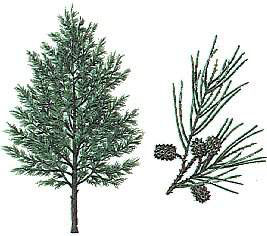 |
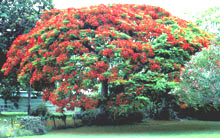 |
1955 saw the emergence of Rock 'N Roll music. The first rock 'n' roll record to achieve national popularity was "Rock Around the Clock by Bill Haley and the Comets . I queued for hours in the heat of the day to see the film at the Savoy. Bill Haley succeeded in creating a music that appealed to youth because of its exciting back beat, its urgent call to dance, and the action of its lyrics. The booming base and the twang of electric guitars produced a foot tapping sound. Haley abruptly ended the ascendancy of the bland and sentimental ballads of the crooners popular in the 1940s and early 50s. I was then in the boarding, singing, clicking my fingers and gyrating to the music coming through the Rediffusion set in the Hostel common room. Music of Elvis Presley and Cliff Richard and the Shadows was all consuming to us teenagers. The Colgate Hit-parade on Tuesdays was as good as watching cricket on a Saturday. I cannot believe nearly 50 years have passed since those exciting times in our youth.
1955 we were in Form 2 and were back to the main building in the classroom at the bottom of the stairs to the library. Mr.Felix Premawardhana was our class teacher. He gave us a heavy dose of Sinhala and drilled into us the value of good pronunciation. Mr.Sahabandu taught us Geography and Ivan Ondaatje- English. The year was rather uneventful and passed rapidly.
 1956 was the beginnings of the political decline of our country. We moved away from the Westminster style gentlemanly politics into an abyss. The jingoism and the ultra-nationalism was a recipe for division and disaster. It was Albert Einstein who said that Nationalism is an infantile disease and is the measles of mankind. The rapid abolition of English as the state language drove many educated people away from the country. The Burghers who formed a colourful community and contributed immensely to the welfare of the island emigrated in their thousands to Australia, England and Canada. They had a tremendous love for life which they showed in the way they lived .
1956 was the beginnings of the political decline of our country. We moved away from the Westminster style gentlemanly politics into an abyss. The jingoism and the ultra-nationalism was a recipe for division and disaster. It was Albert Einstein who said that Nationalism is an infantile disease and is the measles of mankind. The rapid abolition of English as the state language drove many educated people away from the country. The Burghers who formed a colourful community and contributed immensely to the welfare of the island emigrated in their thousands to Australia, England and Canada. They had a tremendous love for life which they showed in the way they lived .
I remember the sad goodbyes when my friends left. The first Dutch Burghers came to Ceylon four centuries ago, when the maritime provinces of the island came under the Dutch East India Company. They joined the legal, medical and teaching professions. The likes of C.A.Lorensz played a major role in the fight for independence. During my time at school the Burghers ran the CGR and did so most efficiently. The time keeping of the Ceylon Railways was second to none. Their departure coincided with the economic and political decline and saw the beginning of the ethnic divisions which ravaged the Island. In 1957 we saw CJ Oorloff leave Wesley for Trinity College just as I had got accustomed to his face. He steered the school through some difficult times after Independence. Mr.P.H.Nonis brought a more relaxed style. He was a kind and gentle person but very efficient and Wesley continued to move steadily onward.
We had our share of sorrow. Devananda Peiris was a tubby, happy lad and played his part in the rough and tumble of boarding life. Once when we returned after the August holidays learnt that he died of complications of appendicitis. I recall we were utterly devastated and it dawned on us of our own mortality at a very young age. The second tragedy was that of DGM Perera who had just left school at the age of 12 to attend Pembroke Academy. For some unknown reason decided to commit suicide. We spoke about this and sulked for many weeks. The loss of Hermon Claessen in a motor cycle accident was tragic indeed. Hermon was an excellent cricketer and a wonderful person too. Shanthi Perera lost his life soon after leaving school and joining the Air force, in an air accident. He was a Senior Prefect and a talented musician. End of the year we gave our Class teacher a present which was the tradition. At the end of every year many left the boarding and the school and I recall the sadness of our goodbyes. Kottachchi ( I believe his 1st name was Sarath) who was a fit, muscular Sea Scout drowned in the murky waters of the Beira Lake, whilst rowing . He lived in Kolonnawa and I remember attending the funeral with numerous other Wesleyites. Even now the demise of school friends and teachers is as hard to accept though it is 40 years since I left school.
In the boarding we were fascinated by the occult and ghosts. We believed the darkness concealed secrets of a world beyond . Numerous stories were told of past principals who walked the corridors at night. They all wore white and disappeared when confronted. Mostly these were confabulations by students to pass the time. I personally have not had any such encounters . As these stories were told and re-told with the passage of time there were interesting additions to make it sound more plausible. The school laboratory was a no go area after dark and boarders had seen apparitions walking back late on a moonlit night. This was our resident ghost. Be it a restless soul of a person who cannot break off his ties with Wesley or a figment of someone's imagination, the stories have been passed down through many generations to be incorporated into the folklore of the school.
Every year around Christmas time, students are faced with two major events. The one most thought about is upcoming exams and this tends to blot out any Holiday cheer. Students are also faced with the Annual Carol Service. The service is a silver lining in the black cloud of exams. It allows people to forget their present worries and experience a little Holiday spirit. Also, it is an opportunity for the Parents and Well wishers to get together in a positive atmosphere. During my years at school we always had an active choir and recall Maxwell de Alwis as the Dickensian Master in charge of the baton.

A Festival of Nine Lessons and Carols was held in the great hall at school and a Carol Service at the Maradana Methodist Church. They were very well attended and enjoyable occasions. Before the end of term we hired a coach to knock on the doors of various prominent old boys and Methodist dignitaries to sing carols and earn a plateful of delicious cakes and aerated waters. I have vivid memories of Dayaprasad Peries singing "Once in Royal David City" and the husky baritone voice of Joy Jayawickreme's "Good King Wenceslaus". We sang at the British Royal Airforce base at Katunayake. Katunayake then was a sleepy little town. I remember the cool December mornings going to the tap opposite the Baseline end of the Primary Block to wash my face. At dawn before sunrise there was a cool breeze, a sky full of stars and in the distant orange haze the silhouette of Adam's Peak. We spoke and dreamed of going home for the holidays to be pampered once again by our parents. The hope was for a good school report and a safe passage to the next class.
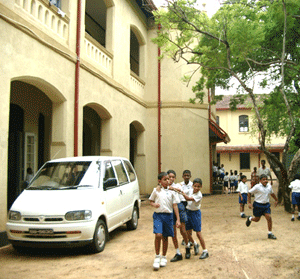 A horse is described as dangerous at both ends and uncomfortable in the middle. 1958- I remember it well as the year when the sport of Kings - horse racing that began in 1922 was banned in Ceylon. I am no punter and it had no effect on me personally but a Saturday ritual of many, rich and poor, was suddenly taken away. The bookmakers and the cutomers went underground and business flourished. The beautiful Reid Avenue Grand Stand and its spacious turf was left to decay and wither. It was 1972 when we changed from Ceylon to Sri Lanka. Street names were changed too. Overnight the well known landmarks in Colombo lost their links with the past. It disorientated the older folk and disillusioned the young. Many still asks themselves whether all this was ever necessary. The cost of this exercise was bourne by our sagging economy. Meanwhile there were changes in my personal life too.
A horse is described as dangerous at both ends and uncomfortable in the middle. 1958- I remember it well as the year when the sport of Kings - horse racing that began in 1922 was banned in Ceylon. I am no punter and it had no effect on me personally but a Saturday ritual of many, rich and poor, was suddenly taken away. The bookmakers and the cutomers went underground and business flourished. The beautiful Reid Avenue Grand Stand and its spacious turf was left to decay and wither. It was 1972 when we changed from Ceylon to Sri Lanka. Street names were changed too. Overnight the well known landmarks in Colombo lost their links with the past. It disorientated the older folk and disillusioned the young. Many still asks themselves whether all this was ever necessary. The cost of this exercise was bourne by our sagging economy. Meanwhile there were changes in my personal life too.
I left the boarding. I felt lost for awhile but the impending exams helped me to recover and move ahead. Preparing and sitting for the GCE one feels grown-up. During PH Nonis' kingship the senior students and the Prefects were given special privileges. We were bigger than the rest and some of us represented the school in sports, certainly adding a feather to the cap. There was a hardcore of "honkers" and "rioters" (not terrorists) whose main idea was to disrupt class with jokes and vice cracks. Looking back they helped to break the monotony adding a bit of spice to school life. Those who took it to the extreme fell foul of the law with serious results. It amazed me how little they cared about the exams which for most of us was the passport to a reasonable future. After leaving school, thankfully, they all found their niche in life without being in the scrap heap. Some of them have had outstanding careers having had the best of both worlds.
I enjoyed immensely the pomp and pageantry of the School Prize giving and was fortunate to receive prizes almost every year until I left including the Gogerly Scholarship for the best SSC results. Though it mattered much at the time it is now only a passing memory and matters little in the larger scheme of things in life. Those who never received any prices at all went on to great things later on in Medicine, Law , Engineering and Politics. The event was an opportunity for the parents to see their boys' achievements recognised in public. The Hill Medal was the coveted prize for the best performance in the University Entrance examination. The sportsmen of the school too received their awards. At the end of the event the Senior Prefect proposed a vote of thanks to the Chief Guest and made a plea for a holiday on Monday - which too was granted. I do not believe this format and its rituals have changed over the years but I stand to be corrected.
For every person wishing to teach there are thirty not wanting to be taught. The struggle to educate that thirty was endless. We had a vast array of teachers ranging from the sublime to the ridiculous. Charles Silva was a small kindly man with a round face and taught Pali. He spoke with his mouth closed and the lips hardly moved like a ventriloquist. I had no intention of taking this subject seriously and he just could not fathom how stupid I was. I remember being dismissed as a loafer and a bad influence on the others. He was a dedicated teacher and took his task seriously producing some excellent results. He finally rose to become the Vice Principal of the school. A well deserved position indeed after more than 25 years service to Wesley.

Tall gaunt eccentric Sethukavalar taught Maths and Physics. He had an encyclopaedic knowledge of matters scientific but was an absent minded professor. He made a hissing sound at the end of every sentence and many students learnt to mimic him. He once related the story of a gathering of Chemists to decide on the worlds best solvent that would dissolve everything. One bright spark asked "where are you going to store it?" Sethu was a most popular teacher and we were sad to see him leave for Union College Tellipalai.
I saw the obituary of Mr.N.E.H.Fonseka a couple of weeks ago in the Ceylon Daily News. He taught Sinhala and looked the part with his national dress. "NEH" tolerated no nonsense and taught well. Felix Premawardene and his brother Cyril were so different in appearance and style like chalk and cheese. Felix taught Sinhala and history, had a big tummy and a handle bar moustache. He barked commands at us and was tough. Punishments came thick and fast. Cyril was gentle wore his "dog collar" and was a man of GOD. CJT Thamotheram was a fine maths teacher, one of the best having obtained a first class in the subject. His last few years were marred by the controversy about the lack of promotion to a higher rank. When he left for England we lost a good teacher. Dabrera taught us Rugby in the Maths and Physics classes. As for the exam results your guess is good as mine. He was a good and friendly person and most helpful if you played in his team. Perhaps "Dubby" believed Oscar Wilde who said " Nothing that is worth learning can ever be taught". He was greatly respected at school. After leaving Wesley he taught in London and spent his retirement in the UK. I was deeply saddened to hear that he passed away in the late 1990's.
 For English we had some excellent teachers. Fred Abeysekera, Mr. David Joseph and Ivan Ondaatje. Fred-A and Ivan-O gave us a good grounding and David-J built on it. I met Mr. Joseph at the Ceylon Student Centre in London in 1974. We both had gone there for some gossip and a cheap "buth curry". He was returning to Ceylon after a teaching assignment in Somalia. The troubles in the horn of Africa was not to his liking. We spoke at length on the happy days at Wesley and put the world to right . I wonder what's happened to him since.
For English we had some excellent teachers. Fred Abeysekera, Mr. David Joseph and Ivan Ondaatje. Fred-A and Ivan-O gave us a good grounding and David-J built on it. I met Mr. Joseph at the Ceylon Student Centre in London in 1974. We both had gone there for some gossip and a cheap "buth curry". He was returning to Ceylon after a teaching assignment in Somalia. The troubles in the horn of Africa was not to his liking. We spoke at length on the happy days at Wesley and put the world to right . I wonder what's happened to him since.
JLF De Mel or De Mel Pappa never taught me but was the headmaster. He spoke softly and slowly and his manner was gentle. I can't recall hearing him say a cruel or harsh word about anyone. I had many opportunities to appear before him to argue my case. To speak he made a circle with his lips as if to whistle which often amused me. I cannot think of a kinder man. He was a father figure for us all. "Pappa" was a deeply religious person taking an active part in the school services and in the chapel. Miss. Iris Blacker was more than a teacher for the Primary School. She was an institution. Though slightly built and very slim we felt she was like a fire blowing dragon and was capable of reducing anyone to tears by her fierce look and the swing of her hand. She maintained strict discipline and kept us firmly in the straight and narrow path. I think every school needs a Miss. Blacker to instil in the juniors a fear of the law and a respect for the school rules. It is much later in our school life we realised what an invaluable part she played for well over a quarter of a century. Without her at least some of us would have spent sometime in the in the large building opposite Wesley. I wish life treated her kindly in her retirement for her tireless work.
We shouldn't forget the Kindergarten and the wonderful work of Mrs. Joyce Leembrugen and Mrs. S.E.G.Perera and also Mrs. Deutrom and Mrs. Sheila Wijeyakoon. The blocks opposite the old Tuck Shop belonged to the little ones. Passing through that way they always seemed to be singing nursery rhymes giving it an air of calmness and serenity. St Ignatius Loyola, the founder of the Jesuit Order once said " give me the child until he is seven and I will show you the man". The quip proclaims that early education can decisively mould childrens' characters and future. Those teachers did that wonderfully well. I can still picture the swagger of Miss Iris Blacker, "come for a fight" walk of Mr.Wilfred or the 'fielders' walk of Edmund Dissanayake. JLF De Mel always had a kind word when met on the corridor.
Physics Silva with his thick rimmed glasses , bless him, walked with a football between his legs. Dabrera never failed to ask why we weren't there for the rugby practices. L.A.Fernando was dressed in white with long sleeves and wore a smile on his face. Meeting a fellow boarder on the corridor is a certain hazard as he would either step on your toes or give a knock on the head. As many of the teachers stayed long the stories about them entered the folklore of the school. There is a story about a teacher who cycled home at night when a policeman stopped him for not carrying a light. As he was smoking he showed the policeman his cigarette saying "this is my light". He successfully defended his prosecution when the law was later amended.
 Mr. Eric De Silva who was the College Bursar lived in the room next to the sickroom. He was treated with as much respect as a boarding master. Eric was one of 5 brothers all of whom were Methodist Ministers and he was not far behind as a man of God. He is one of the kindest persons I have had the privilege to meet. His long strides and stooped body was a familiar sight in the long passage by the Principal's grounds leading to the hostel. I believe his son now has taken over the job in the school office. On looking back it seems to me that towards the end of my school career the teachers grew younger as we grew older. Working for exams and the struggle for a better future lay heavily on us. The rapid growth spurt in the teenage years gave us the added height and weight. The facial hair and the coarsening features made us look and feel older. The teachers seem unchanged from whence we started.
Mr. Eric De Silva who was the College Bursar lived in the room next to the sickroom. He was treated with as much respect as a boarding master. Eric was one of 5 brothers all of whom were Methodist Ministers and he was not far behind as a man of God. He is one of the kindest persons I have had the privilege to meet. His long strides and stooped body was a familiar sight in the long passage by the Principal's grounds leading to the hostel. I believe his son now has taken over the job in the school office. On looking back it seems to me that towards the end of my school career the teachers grew younger as we grew older. Working for exams and the struggle for a better future lay heavily on us. The rapid growth spurt in the teenage years gave us the added height and weight. The facial hair and the coarsening features made us look and feel older. The teachers seem unchanged from whence we started.
During my years at school we wore navy blue shorts and pearl white shirts until the 4th Form when suddenly we became adults and wore long trousers called "longs". The fashion was to wear 'Hentley' white trousers and Diplomat shirts. They were stiffly starched and whiter than white- well, most of the time.
On looking back we believed teachers wielded immense power and perhaps they did. But law enforcement was done with knowing restraint influenced mostly by their faith. Others depended firmly on the swish of the cane. Punishments at school were a necessity to keep the riff raffs on the straight and narrow. The types of punishments were brought to Wesley by the British Principals from English Public Schools like Eton, Rugby and Harrow. They were harsh and on looking back unnecessary. There were times when I raged at the injustice of punishments.
In this 21st Century of human rights, corporal punishment is looked down upon as demeaning and humiliating for which there is no real need. Reading the reminiscences from the first half of the last century we get a glimpse of those hard times. By the 1950's when I joined corporal punishment was mostly confined to the primary classes. It felt like capital punishment. The majority of the teachers having been to Teacher Training school learnt to control the class without the need for the cane. Throwing the duster or chalk and slaps with the hand were not uncommon. Standing on the form or outside the class was a favourite too. Mr. Wilfred pinched the tummy quite hard until the tears rolled down. CJ Oorloff liked the cane and gave an almighty swing with a grunt like a Wimbledon tennis player serving for the match. Having received a caning once for swearing when I came out of his office just swore again, this time quietly for the "injustice". It never had its desired effect!! Edmund Dissanayake , Lionel Jayasuriya, Charles Yesudian, Charles Silva and DB Welikala were teachers who never used physical force but taught and controlled the classes well. Saturday detention with the names read out at Friday assembly was a hard one to take but was fair.
 The school magazine was produced annually and was a summary of the years activities. The editorship was a prestigious position and usually went to a student in the lower sixth who has excelled in the GCE and had a "free" year in the lower sixth before the University Entrance exams. It had painstaking standards with regard to accuracy, grammar, style and ethics. The magazines were issued in the middle of the year and the hunt for articles started in January. The advertisements were a necessity to reduce the cost of its production and pages were sold to known companies through old boys, parents and well wishers. I cannot remember the cost of the magazine and I didn't care about it either as my parents paid .
The school magazine was produced annually and was a summary of the years activities. The editorship was a prestigious position and usually went to a student in the lower sixth who has excelled in the GCE and had a "free" year in the lower sixth before the University Entrance exams. It had painstaking standards with regard to accuracy, grammar, style and ethics. The magazines were issued in the middle of the year and the hunt for articles started in January. The advertisements were a necessity to reduce the cost of its production and pages were sold to known companies through old boys, parents and well wishers. I cannot remember the cost of the magazine and I didn't care about it either as my parents paid .
Sports took pride of place with photographs of the teams and also of the Senior Prefect and his team of prefects who helped maintain law and order. There were often tales from the past of teachers and Principals and also reports of old boys who have done the school proud by their achievements. No magazine was complete without a reference to our roots in the dusty, crowded Dam street and the part played by Rev Highfield in the new Wesley. There was a list of all the prize winners with the Principal's and Chief guest's addresses at the annual prize giving. The obituaries of old boys featured towards the end with the "Valete" of the school leavers. These were published by Caxton Press or Wesley Press in a glossy finish and done to the highest standards. I kept these valued journals for many years after leaving school but was unable to safeguard them when I left the country. The loss of these magazines that were an excellent review of my school years remain a deep regret.
There were many clubs and societies at school. The SCM must have been the most popular amongst the devout Christians. The many students who have become priests shows the message wasn't discarded. Despite my Christian upbringing I have become a heathen and moved away from the Church. Nevertheless I have the greatest respect for their teaching and the message. The suffering that I see in hospitals may have made me cynical about religion. There was an active Drama Society expertly managed by Felix Premawardhana and Haigh Karunaratne, themselves very talented actors. There are lots of reasons why people become actors. Some to hide themselves and some to show themselves. Like classical music Drama was an upper class pursuit beyond my comprehension.
It was much later in life living in London that the theatre and the classical music began to strike a chord. At school I much preferred to swing a bat or get into some mischief with the boys. A photo is a piece of reality and often a fragment of the truth. There was a photographic club with Nimalsiri Rosa at the helm. I recall his darkroom with a red light in some dinghy corner of the main building. He was the official photographer and must have a tremendous collection of photographs from the 1950's. There was once a craze for bubble gum pictures which we exchanged with friends. Gene Autry, Roy Rogers and Johnny Weismuller as Tarzan featured in them prominently. Stamp collecting was popular too. I never could draw and it amazed me when some students produced landscape drawings so much like the real thing.
The object of art is to give life a shape. Mervyn Wickramasinghe was a superb artist during our time and his caricatures of Principals teachers and students adorned the school magazines for many years. He qualified as a Zoologist from the University of Ceylon and contributed immensely to the fight against the malarial parasite in Ceylon. His botanical and zoological illustrations at school were masterpieces. Much has been said about the school choir and its wonderful productions and the names of Ivor De Silva, Maxwell De Alwis and Haig Karunaratne come to mind as those in charge in the 1950's and early 60's. Performing Bach's Matthew Passion and Jesu Joy of Man's Desiring during lent and the Operetta Alad-In- and Out was for me the highlights of the School Choir during those years. Mary Colin-Thome's excellent piano accompaniment needs a mention for her dedication to music in the school.
True friendship is like sound health; the value of it is seldom known until it be lost. No account of school life is complete without mention of friendships. It must be one of the finest things of Gods creation. I have shared my triumphs and sorrows with my friends. There were occasions when I have owned up for things I didn't do to share the blame and punishment. My friends have reciprocated generously too. On being a boarder they were mostly 24 hour friendships. I felt we will be friends and always together. Sports, choir, SCM, Scout Troup and the various other groups brought us closer together. When a boarder has had a visit from home and was flushed with money and food he had more friends than he could cope with. The parting on leaving school must have been the saddest occasion of my life. Many of the school friends I never saw again. Thanks to the OBU's worldwide they have become a forum and a meeting place for us all. Hearing of the death of school friends and seeing their name in the obituary columns still cause heartache and much sadness. Email and easier and cheaper telecommunications have helped to track down friends and keep in touch. The twelve years in school seemed like a lifetime then. The friends from school were closer than those I have made since, the ties being stronger in those formative years.
As the years pass and the grey hairs appear there comes an irresistible urge to find school friends. The internet and better telecommunications have helped tremendously. It was just the other day when I was to meet MW Wickramaratne after 40 years opposite Bond Street station at 3pm. We walked past each other a few times before we finally made contact. We met Ranjit Rosa at Claridges and had a long chat. The years in between melted away when we spoke as if it was another meeting on the school corridor in the late 50's. The passage of time and the rigors of work and family have taken its toll but the spirit of camaraderie and friendship has not diminished. The bonds were made and firmed in the classrooms and playing fields of Wesley College. How very true are the words of John Milton:
As morning shows the day
 The Tuck shop was a special favourite of boarders and day boys. In the small interval it was completely packed out. The metal roof and the wooden walls painted in Solignum black gave it an intimidating look. Wijemanne ran it well and provided what the customers wanted. There were plenty of sweets, bullto, peppermints, hoonu betty, Lanka Lime and Orange Barley. 'Aerated water' bottle cost 25 cents There was plain tea and milk tea specially stretched by Jinadasa to give it a froth.. The fish buns (15 cents) were very special and tastily packed with tinned salmon. In the boarding I enjoyed the mealtimes more than the meals. The hardened string hoppers and the hoppers like flying saucers didn't vet my appetite.
The Tuck shop was a special favourite of boarders and day boys. In the small interval it was completely packed out. The metal roof and the wooden walls painted in Solignum black gave it an intimidating look. Wijemanne ran it well and provided what the customers wanted. There were plenty of sweets, bullto, peppermints, hoonu betty, Lanka Lime and Orange Barley. 'Aerated water' bottle cost 25 cents There was plain tea and milk tea specially stretched by Jinadasa to give it a froth.. The fish buns (15 cents) were very special and tastily packed with tinned salmon. In the boarding I enjoyed the mealtimes more than the meals. The hardened string hoppers and the hoppers like flying saucers didn't vet my appetite.
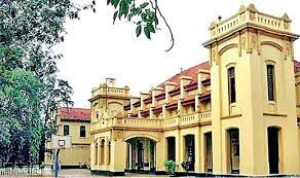 Wijemanne gave the boarders on credit to be paid on pocket money day- Friday. Wije gave special preference to cricketers after a good innings the previous weekend. I met him in 1992 when the Tuck shop had moved to the little room opposite the hostel staircase. Being an astute businessman he was candid and outspoken but was a generously loyal old boy. When I met him last we spoke at length about those happy times remembering mutual friends. He even offered me and my sons free Coca Cola, an unthinkable act during my schooldays. For all those years of service we should call the new Tuck shop "The Wijemanne Tuck shop". I just cannot imagine the Tuck without Wije (Senior).
Wijemanne gave the boarders on credit to be paid on pocket money day- Friday. Wije gave special preference to cricketers after a good innings the previous weekend. I met him in 1992 when the Tuck shop had moved to the little room opposite the hostel staircase. Being an astute businessman he was candid and outspoken but was a generously loyal old boy. When I met him last we spoke at length about those happy times remembering mutual friends. He even offered me and my sons free Coca Cola, an unthinkable act during my schooldays. For all those years of service we should call the new Tuck shop "The Wijemanne Tuck shop". I just cannot imagine the Tuck without Wije (Senior).
A nickname is the heaviest stone that a devil can throw at a man. At school a nickname was our real identity and they were the bane of our school lives. TW De Silva in his early years had coarse features. They called him "kimbula" (alligator).He was in our class and had an awful stammer starting every sentence with a "ffffffff". Thankfully he got over it. The son of a Methodist priest became "Padiliya". The teachers weren't exempt. AJ Vethanayagam was "Balli" (bitch). Mr.Wilfred became "padlock" and El Rodrigo "Pettha". There was a streak of cruelty in us too. A boy with a crooked jaw from birth was called "monkey".
As we reached the top of the pile, in the sixth form , the end of our school life was upon us. We were then on the edge of childhood when life was beautiful and saw the world in vivid technicolour. Adulthood with its heartaches,responsibilities and accountability was only just round the corner. As we looked to the uncertain future, the poem of Christina Rossetti came to mind.
Yes, to the very end
Will the days journey take the whole long day
From morn to night my friend
Without leaving the thoughts so negative, I would add
Will there be no joy, no hope, no success?
To overfill your cup, my friend, until the cup runneth over
When I left school in 1962 the politics of the country was in crisis and our coffers were empty. The many upheavals, disunity and the workers strikes had brought the country to its knees. The Government grant to assisted schools had stopped and the financial crisis at school began. An optional fee was charged from all students to keep the school afloat. Small park was sold with the Wesley College Flats to balance the budget. This must have been the hardest time for the school since life began in 1874. We seem to have emerged from those hard times bruised but not beaten with a vision of better times ahead.
It is hard to describe my excitement at entering Medical College. I felt in some strange way this was my destiny. Nothing else was more important. I looked forward to hard work anticipating the fabulous goal ahead. I felt the romance of being a bohemian medical student. I felt special. I was proud and arrogant. I presume I am allowed to have these delusions of grandeur as a teenager with all my life before me. I must confess, now approaching the end of my medical career I see it all differently. My degree was a kind of innoculation to make me immune to the rigors of the profession for the rest of my life. After a lifetime of medical practice with its disruptive routines and demands upon time, patience and endurance I now see the light at the end of the tunnel.
 After a lapse of 15 years I went back to Wesley College in 1992. The front gates which were open 24 hours of the day were closed and padlocked. There was a sentry on duty with an AK47 which was taller than him. Due to disuse my Sinhala was poor and had to scrape the barrel to string a few sentences together which seem to amuse the guard. GCE pass in Sinhala and years of toil with Felix Premawardhana and Kumara Rachanaya did not seem to come to my rescue. He shook his head, waved his hand and went back into his wooden box.
After a lapse of 15 years I went back to Wesley College in 1992. The front gates which were open 24 hours of the day were closed and padlocked. There was a sentry on duty with an AK47 which was taller than him. Due to disuse my Sinhala was poor and had to scrape the barrel to string a few sentences together which seem to amuse the guard. GCE pass in Sinhala and years of toil with Felix Premawardhana and Kumara Rachanaya did not seem to come to my rescue. He shook his head, waved his hand and went back into his wooden box.
I was pleased to see Marshall Perera come towards me and open the gates. He admonished the guard for his ignorance that I was an Old Boy. 30 years seem to have passed him by and he remained unchanged when all around him had altered beyond recognition. Over 50 years at Wesley must have equalled the record of Ranis and what a feat it is. Marshall remembered everything and everyone and gave me a complete rundown of events. We walked and talked for a couple of hours visiting every corner of the school which brought back heavy memories of friends and teachers. The hostel has been scaled down and there were some new buildings. What struck me most was the neglected state of the school estate which was immaculate during my time.
The front garden and lawn were in ruins and the corridors littered with paper rolling about in the wind. It gave the impression of a school in decline. The falling plaster and the greenish discolouration of the walls confirmed this impression. I was happy to see the school in better repair in 1996 and subsequent visits. Meanwhile the Old Boys have acknowledged the contribution made by Marshall Perera and donated a house in Kekirawa for his retirement. Walking along the narrow alleyways of the school, the network of corridors and stepping into those classrooms brought back heavy memories. I remember playing there as a child, but had forgotten the intricate details for several decades having lived abroad all these years. They form part of that landscape of childhood, apparently completely forgotten and yet instantly and intensely recognisable. They are moments that remind you of the things that are so familiar that they shock you into attention.
I'm not quite sure why those sorts of experiences are such a jolt. With me the shocks are about the passage of time. There is an eerie silence that leaves me wondering where all the friends and the time have gone. Even the peeling plaster and the green lichen on the outside walls of the school, though trivial, are also a part of the deep strata of memory that permeates my past..After every visit I left Wesley with a heavy heart and a head full of memories. Recovery from this blast of nostalgia took several weeks.
The school owes a great debt to the OBU Colombo for its support over the years. Wesley would not have survived the bashing it received from successive Governments but for the immense support from the Old Boys. The OBU has always been a mixed group which has given differing opinions but united in its support. The militant rebels and the far right have been a strength harnessed by the luminaries who held centre ground like OE Goonetilleke, Terrence De Zylva and MH Mohammed.
I sincerely hope the newcomers holding the centre have the courage and the support to move ahead and meet the challenges of the future. The OBU is a powerful body and has been a king pin and a king maker with a tremendous responsibility on its broad shoulders. The past has shown us Wesley College is only as good as its OBU. It is my hope the Union remains a beacon to the head of the school and an exemplary example to the present students of its value. It is our hope in turn they as old boys will provide the same service to the school.
 When we first went to Wesley we joined a school with a unique way of life. Life thereafter was moulded by its customs and traditions. The founding fathers of the school have entrusted the principals and the teachers to maintain the academic standards, sports and the traditions that make Wesley so special. It is our hope they would succeed in this task.
When we first went to Wesley we joined a school with a unique way of life. Life thereafter was moulded by its customs and traditions. The founding fathers of the school have entrusted the principals and the teachers to maintain the academic standards, sports and the traditions that make Wesley so special. It is our hope they would succeed in this task.
I wish someone said to me on the day I set foot on the hallowed grounds of Wesley College " This is the most important day of your life. Nothing will ever be the same again. You have not chosen a school but a whole way of life". And so it was for the next 12 years - an experience that was to stay with me for the rest of my life. Whatever may lie in store for us and Wesley, one thing at least is certain, the magic that drew my father, his brother and myself to this lovely school endures.
Greetings to all those Wesleyites past and present. I consider it more than a privilege to write these notes . Although it is nearly 50 years since leaving school the memories remain fresh and clear. To all Wesleyites I send my personal good wishes. To my many close and dear friends I send my warmest regards hoping we have the good fortune to meet again.
Thanks for the memory.
By Shanti McLelland
January 16, 2002

Sir Don Baron Jayatillake undoubtedly was the most famous political philosopher from Wesley to carve a name in Sri Lanka in the last century. Don Baron as popularly known during his school days, was only another name I often heard in the conversations of the elders of Kotte. HJVI was one of the closest friends and strategic associates. HJVI steered clear of hard core politics and was the front for DBJ's extraordinary vision for Sri Lanka's political future free from the British. The Baron Jayatillaka Mawatha at the heart of Fort will always remind us of the great Wesleyite who turned teacher, diplomat, and political philosopher.
Sir Oliver Goonatillake, will never be forgotten for his Sir Winston Churchill style administration and decision making in critical situations. The first Sri Lankan Governor General after Independence in 1948. We knew him more popularly for his presence at the Queens Scout Badge award ceremony, Presence at the Public Schools for the Governor General Cup award ceremony, and more closely at the Wesley College Prize Giving.
CWW Kannangara was the Father of Free Education. More have been written about CWW, DBJ, and OEG.
Mr. Terrence de Zylva was a true son of Wesley, a man of extraordinary Grit. He was a great social reformer, stood for the economically weak and down trodden. Stood by his political and educational reform convictions even at the cost of his life. He was famous for his Suriyamal (poppy) campaign and for setting up a school almost next to Wesley to cater to those he were not able to enter Wesley College. Wesley would be always proud of Terrence for his leadership.
Messers. Gehan Cassim, P.B. Heart, and J.C.P. Wickremanayake held public office while Rajah Sinnadurai, Kingsley Wickremaratne, A.M.Mohideen were others who entered the political arena at various periods of time.
Gehan Cassim a planner and an administrator, contributed a lot to Wesley during the 1974-1980 time period. He was at the fore front at a time there were no great names or loyal Wesleyites around to rally to help run the school as a non fee-levying, non-assisted private school.
P.B. Heart was the president of the OBU in late 1970's. P.B. infused a lot of enthusiasm to develop the OBU to a strong body with high standards.
J.C.P.Wickremanayake was one of Wesley's stalwarts. He made a gigantic contribution to the Welfare Society in particular and the OBUin general.
Rajah Sinnadurai could be considered the most photographed Wesleyite in the 1970's. Rajah spearheaded the OBU at a time it was just sagging with inactivity. As an All Island Justice of the Peace, Rajah brought in the big names in politics and business to infuse a lot of interest in the OBU affairs in the early 1980's.
Kingsley Wickemaratne propelled himself up thorough the International Jaycees, sheer hard work at his Wicks Advertising organization, and affiliations with the Hotel industry. Kingsley was the President of the OBU just before the Centenary celebrations.
A.M. Mohideen who was Senior Prefect in the mid 1960's. Head of the college debating team, tried a stint with College Rugger, and entered Vidyodaya University from Wesley at time our University entrants were not that many. Mohideen put on many caps, as politician, business magnate, and travel tycoon. Mohideen managed to win the hearts of all whom he worked with a sense of great humor and outstanding wit.
The most outstanding and long-standing name in Sri Lanka's politics from Wesley undoubtedly goes to the Mohameds. Mr. Mohamed Haniffa Mohamed started the race after being elected as a member to the Colombo Municipal Council in 1947. He was at Wesley during Rev. Albert Hutchinson and Rev. John Dalby. Held the post of Mayor of Colombo 1960-63, Member of Parliament 1965 to date. Popularly known as M.H. from the heart of Borella, held the important positions; Speaker 1989-1994, Minister of Labour, Employment, and Housing, Minister of Transport, Minister for Security for Commercial and Industrial Establishments, and Muslim religios and Cultural Affairs. He was the President of the OBU during the resurgence of the Union in the late 1980's.
M.H. Mohamed's contribution to Wesley and Sri Lanka's politics did not end there. He introduced 5 illustrious sons to Wesley. Hussain Mohamed was the first. Hussain followed in his father's footsteps to be elected as Mayor of Colombo in 1989 for a period of 3 years. Hussain was first elected to the Colombo Municipal Council in 1966 son after leaving Wesley and held on to this seat till 1993. He was Deputy Mayor of CMC from 1979 to 1989 and from 1993 to date a member of the Western Provincial Council. Hassen G. Mohamed the next in line opted to support the father and elder brother rather than take a role in public. Ahamed Azahim Mohamed spear headed the campaign for a OBU web site. Azahim had a vision and implemented the OBU International web site with the assistance of Dr. Douglas Amerasekera in the spring of year 2001. I lost track of the next of kin, M.Haniffa Mohamed after leaving school. Finally the youngest Shaul Hameed Mohamed once again took to National politics. Shaul helped immensely to develop the current Wesley College Cricket grounds and the pavilion in the early 1990's. Shaul was first elected to the Colombo District Development Council in 1982, held this position till 1987. Then he was elected as a member of the Western Provincial Council in 1988. He was Leader of the House of the Western Provincial Council from 1989 to 1993. The tradition that started with M.H. Mohamed's father in the early 1900's will definitely continue for many more years.
May Wesley continue produce some of the best in Sri Lanka's Public Administration.
Snap shot 1.
Lakshman Samaraweera was a prominent Old Boy who made it to all of the annual general meetings without fail. He contributed a lot of time to actively serve most of the committees: Welfare Society, Governing Board, and the OBU Committee. Always dressed in whit, with a broad smile, and never short of serious advice. He was always a keen supporter of the cricket, athletic and hockey teams.
Mahes Samaraweera made sure the father's visions were achieved in Rugger, Athletics, Cricket, and Hockey. Mahes was a college prefect and was an outstanding student. He was an officer of outstanding caliber.
The other names that come to my mind, to link together: Githal Peiris and Ravi Peiris. Both excelled in hockey and were very amiable and great friends who would find impossible to make enemies.
Snap shot 2.
Dallas and Delmer Achillies were two outstanding Wesleyites. Fine gentlemen. Dallas excelled in music and could blow the trumpet as good as Armstrong the great. I remember his feats vaguely, in drama, college choir, and walking up the stage at most of the Prize givings. Delmer was an allround sportsman and in particular a stylish left hand batsman and an excellent cricketer. He could have made the National side without a doubt. Both appeared to believe that dress maketh the man. All contemporaries will remember Dallas and Delmer as outstanding friends.
Snap shot 3.
Neil and Christopher Harvie. Both excelled in sports and studies. Both captained the college Hockey team and played cricket. Both were college prefects and were part of the OWSC hockey team success story of 1972. As hostellers, both were role models to the juniors with great leadership qualities. Christopher went on to break the College 800 and 1500m records after the 880yds and 1mile was replaces with the metric measurements.
Another name that pop up is Tyronne (Buster) Harvie. Represented the school at field hockey and was a definite name in the National Hockey Pool for many years. Neil, Christopher, and Tyronne will be remembered as affable and honest friends.
Snap shot 4.
Patrick and Anton Edema were proud Wesleyites. Both were College prefects, Patrick was senior prefect. They were outstanding sportsmen. Anton excelled in the Long Jump and 100m at the Public Schools meet. Patrick was best in Discus, Putt Shot, and 400M. Did yeomen service as 1st X1 hockey goalie. Both joined the defense services to serve the country.
Snap shot 5.
Nimal, Malik, and Palitha Suraweera will not be easily forgotten by their schoolmates. Just great friends would be the quickest way to describe them. Nimal was best I the choir and to entertain with his unforgettable voice, which he stubbornly and proudly mesmerized both the school boys and the girls. Malik was one of the most technically sound hurdlers that matched another one of Wesley's top athlete's O.K.Hemachandra. Malik also topped the discus and high jump events at any of the sports meets. Palitha with a broad smile was one who made a name with a lot of colleagues in the 60-70's.
Snap shot 6.
Sridhran and Hariharan Jeganathan are just unforgettable. The twins eclipsed to other two elder brothers. Great sportsmen. Made a name anywhere they went. Both were outstanding cricketers and hockey players at National level. Sri represented Sri Lanka in Cricket and Hari in Hockey. Could fill into any Rugger, Soccer, or Softball team. The best of them I remember was a flawless partnership of over 100 against Ananda. There would never be a dull moment with the 4 brothers.
Snap shot 7.
Dr. Shee Hung and Dr. Ma Hung. They were best remembered for those bone crushing Rugger tackles. Highly disciplined with one focus of getting into medical college. Left the College Hostel to concentrate on studies. Both excelled in Rugger, Soccer, Athletics and Judo.
Snap shot 8.
Mahendra and Danesh Dissanayake were Wesley's best in cricket. Just outstanding in academics and extra-curricular activities. Made both their parents, Grahame and Edmund Dissanayake proud. They could have been easily elected as best schoolboy cricketers in Sri Lanka or abroad.
Snap shot 9.
Mervyn, Russel, and Granville Harmer. Too much is not enough. They were Wesley's pride. Outstanding cricketers, would have been automatic choices for any National side. Excelled in soccer. Both were excellent in the Javelin Throw Event. Walked smart and upright would call a spade with no reservation.
Snap shot 10.
Rohan and Prasan Wijesinghe. Their names are synonymous with Badminton. Both excelled and were champion badminton players. Rohan and Pasan both taught at Wesley and coached the badminton teams. Wesley was giants during the time Prasan was in charge of College Badminton. We were national champions. It was at that time Wesley used the College hall for most of the championship tournaments. Wesley were just famous nationally for badminton. Rohan came back to help Wesley in athletics. Rohan excelled in athletics: Javelin, Discus Throw, and High Jump. Two Wesley's prefects, sportsmen, and teachers.
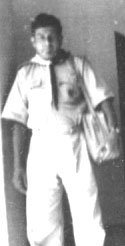 I would watch my friends enjoying themselves in the activities of the College Cub Pack. Mr. Wilfred Wickremasinghe and E. L. Rodrigo had a lot of followers from the primary school. No amount of coaxing by my friends would entice me to join the Cub pack while in the primary, nor the Scout Troop when I passed on to the middle school, grade 6 or Form 1, as we preferred to be known as. My friend who shared the double desk, Anurudha Jayawardane just could not convince that scouting was one great group adventure. But, as always, necessity made me change my mind.
I would watch my friends enjoying themselves in the activities of the College Cub Pack. Mr. Wilfred Wickremasinghe and E. L. Rodrigo had a lot of followers from the primary school. No amount of coaxing by my friends would entice me to join the Cub pack while in the primary, nor the Scout Troop when I passed on to the middle school, grade 6 or Form 1, as we preferred to be known as. My friend who shared the double desk, Anurudha Jayawardane just could not convince that scouting was one great group adventure. But, as always, necessity made me change my mind.
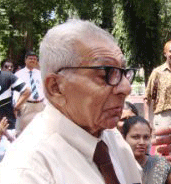 The 14th Colombo Troop had registered to participate at the Colombo Scout Camporee. It was June of 1960. They had one last minute problem; the Parrot patrol had one member sick and could not make the mandatory 8 to compete in the competitions. So two of the best scouts, Anurudha and Mohan Abraham dragged me to join the troop. I had the option to switch back if I did not like the experience of the 3-day camp at Bullers road, at then Divinity school grounds. Mr. R. E. Abraham was the chief Scout Master. R.E. was one of the best scoutmasters who could motivate to take up a challenge. One of the best, Wesley could boast of.
The 14th Colombo Troop had registered to participate at the Colombo Scout Camporee. It was June of 1960. They had one last minute problem; the Parrot patrol had one member sick and could not make the mandatory 8 to compete in the competitions. So two of the best scouts, Anurudha and Mohan Abraham dragged me to join the troop. I had the option to switch back if I did not like the experience of the 3-day camp at Bullers road, at then Divinity school grounds. Mr. R. E. Abraham was the chief Scout Master. R.E. was one of the best scoutmasters who could motivate to take up a challenge. One of the best, Wesley could boast of.
During the period 1960 to 1964, Wesley went to camp at 1960 (June 16-19) and 1961 (June 29-Juky 02). 1962 Golden Jubilee Jamboree (February 02 - March 03). Hanwella, Mirigama Camp 1962, April 15-20, Preethipura, Hendala 1962, Sept. 12-16, Hanwella 1963, April 05 - 11, and Pedro Camp 1963 Dec. 8-14.
 Mr. R. E. Abraham led the 1960 Camporee. The 1961 camp was without a scoutmaster after Mr. Abraham left Wesley. We were left to self-serve. Seniors like Ravindra De Silva, Adanadanesan, Vijith Kuruppu, Tissa Weeratunga, and Sathanandan did a great job keeping the 14th Colombo together. Some of the campers during this period I remember are: Ravindra de Silva, K.Vijith Kuruppu, Tissa Weeratunga, D. Anandanesan, P. Sathanandan, Anurudha Jayawardana, Mohan Abraham, Charles David, Merril Cooray, M.Satahsivam, T. Y. Daniles, S. Ariyanayagam, Anura Perera, and Sextus Taylor, S. Ramakrishnan, M.Fazy, Ronald de Zilva and Hussain Mohamed.
Mr. R. E. Abraham led the 1960 Camporee. The 1961 camp was without a scoutmaster after Mr. Abraham left Wesley. We were left to self-serve. Seniors like Ravindra De Silva, Adanadanesan, Vijith Kuruppu, Tissa Weeratunga, and Sathanandan did a great job keeping the 14th Colombo together. Some of the campers during this period I remember are: Ravindra de Silva, K.Vijith Kuruppu, Tissa Weeratunga, D. Anandanesan, P. Sathanandan, Anurudha Jayawardana, Mohan Abraham, Charles David, Merril Cooray, M.Satahsivam, T. Y. Daniles, S. Ariyanayagam, Anura Perera, and Sextus Taylor, S. Ramakrishnan, M.Fazy, Ronald de Zilva and Hussain Mohamed.
The following year 1962, the most important Golden Jubilee Jamboree year was one again survived with 14th Colombo without a Master, just run by the Patrol Leaders. The Jamboree had 8 representatives from Wesley out of a total contingent of 28.
P. Sathadandan, Ravindra De Silva, Anurudha Jayawardana, Shanti McLelland, D. Anandanesan, S. Ramakrishnan, and Ranmal de Silva. We were led by one of the best scouters. Mr. C.J. Cantlay from Royal College. The other Scout Masters in our team were: Messers.Dayananda de Silva, J. M. Benjamin, W.M.McDougal, and Thilak Godamanna. Mr. Cantlay was a popular District Commissioner during the time of Mr. R.A. Abraham as Scout Commissioner. R.A. was Rajan and Mohan's Father and R.E's Brother. They were a great inspiration to us and guided us like a beacon. Mr. Mithripala Senanayake, Minister of Industries, Home, and Cultural Affairs unfurled the National flag at the opening ceremony.
Mr. A.S. Weerasingha was at the helm at Wesley at this time. Mr. E. L. Rodrigo stepped into help the troop in 1962. Mr. Rodrigo with the support of Troop Leader Ravindra de Silva organized the outstanding and unforgettable Mirigama camp in a beautiful jungle setting. D. Anandanesan acted as camp scribe.

Hope I got all the Names and initials right.
In May of 1962, Mr. Aruliah joined the Hostel. Mr. Aruliah turned out to be a dedicated and an excellent Scout Master, assisted by Mr. Dharmarajah who was also at the Hostel at that time. Mr. Aruliah organized the Preethipura camp. But once again it was time for a change of the guard.
Mr. Rodrigo once again took up the challenge to lead the troop for the next year. Mr. Rodrigo steered the Hanwella camp.
Mr. N.R. Dhanapala from Richmond was brought in by Mr. A.S.Weerasingha to assist Mr. Rodrigo at the next and the best adventures of all at Pedro, Nuwara Eliya. We left Colombo Fort Station at 10.00pm and reached N'Eliya at 3.45pm the next day, 14th December 1963. The program included visits to Pedurutalagala the highest mountain peak in Sri Lanka, over 8000ft, Nuwara Eliya Park, Sita Eliya, and Hakgala Botanical Gardens. Ravindra de Silva, Vijith Kuruppu, and Anandanasan were the senior leaders.
Mr. Dhanapala organized the Patrol Leaders camp at Campbell Park, January 23-25, 1963.
The hiking memories: Second Class hike from Wesley to Talangama boys town (6th August 1960). Parrots Patrol Hike Borella to Kotte (28 Sept. 1961). Hike at Mirigama (17 April 1962). First Class Badge Hike ( 25/26 April 1963) Urugudawatte/ Nugegoda back to Maradana. Venturer Badge (20 July 1963) Victoria Bridge to Negombo (approx 20 miles). Hiker Badge (10 July 1963) Borella to Kalatuwawa Reservoir (approx 40 miles).
1964 was my final year of Scouting. Mr. Dhanapala led the 14th Colombo Troop to the Colombo Golden Jubilee Camporee from February 26 to March 01 at the Divinity School Grounds. It was time to end the adventure as quickly as I enrolled. With the first class, green cord, Queen scout badges, and the school award for best scout junior and senior scout it was the right time to explore some other avenues to spend my days at Wesley. Mr. L.A.Fernando, was instrumental in my leaving the Scout Troop. But, as suggested I did not go back to serious studies, but ventured out to serious sports.
Some other names of scouts that flash my mind as I write: Nelson de Silva, Bernard Solomans, D.A.Y. Siva, Bunty Dole, Asoka and Palitha Weeratunga, Senaka and Laksiri Amaratunga, Delmer Achillies, Willam Van Gazel, Lakshman and R.G.Wijesinghe, Anura de Silva, Shanthi and Daya Perera, Sunil Fernando, Garrick O'Neil, Christopher Harvie, Rev. Koilpillai and Koilpillai (Snr), Christopher Nell, and all those I have listed above. I hope we will be able to fill in the missing names when memories are refreshed. Kenneth & Rienzie Mahammoth who like the Uncle T.M.K. Mahamooth were excellent scouts. Not forgetting the outsatnding scouts from the Maldives. I have listed their names in a previous article. Ahmed Imad, a Queen Scout was appointed Scout Commissioner for the Republic of Maldives.
During this period we had the fortune of seeing Mr. C.W.W. Kannangara was the Chief Scout, Mr. Oliver Goonatillake, the Governor General, present the Queen Scout badges, Mr. William Gopallawa, President hosting the President Scouts at the Presidents House. Mr. M. H. Mohamed was the Mayor of Colombo, Ms. Iris Blacker as Chief Guide Commissioner. Wesley Scouts were invited to the opening of the parliament and the Wesak celebrations at the Temple trees.
Some of the Queen Scouts at the time were: Brothers, Ravindra, Ranmal, and Rohana de Silva, D.Anandanasan, P. Sathanandan, Vijith K. Kuruppu, and Shanti McLelland. The Troop Leaders were, Ravindra de Silva, Shanti McLelland, and Ranmal de Silva.
Some of the Scout Master whom I remember best: Messers. Harold Sittampalam (Hatton), Dharmakeerthi (Kotte), Marcus Navaratnajarah (Jaffna), B.A. Perera (Kurrupu Road), C. J.Cantlay (Royal College, District Commissioner), and Mr. Mathew (Anderson College, Slave Island).
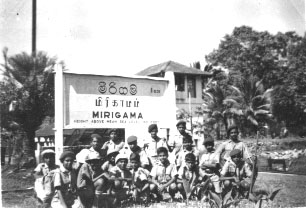 I enjoyed reading the Scouting memories and very informative history written by Troop leader, Queen Scout, and Wood Badge holder Riza Azoor. Wesley did not have any wood badge qualifiers previous to 1970. It is a great achievement by the scouts of the 1970's. It is an invigorating record indeed, certainly better than the enlivening and energizing best of the 1960s.
I enjoyed reading the Scouting memories and very informative history written by Troop leader, Queen Scout, and Wood Badge holder Riza Azoor. Wesley did not have any wood badge qualifiers previous to 1970. It is a great achievement by the scouts of the 1970's. It is an invigorating record indeed, certainly better than the enlivening and energizing best of the 1960s.
Well, did I enjoy it, do I regret? It was one great experience, no regrets at all. Enjoyed 4 great years of scouting, lifelong learning, and above all made a network of splendid friends. To the present middle school students, just go out and join the 14th Colombo Scout Troop.
Profile Clip 01
Bartholomeusz was a name that made waves at Wesley. Ofcourse as usual I will start off with Reginald the sportsman (lets leave the academics out). Adrian who lived down Baseline road two steps from the school. An outstanding in student, carried away prizes at every level, a good role model, should have ended up as an engineer, doctor, or a professor but may have opted to continue with literature or language. Adrian was a college prefect, 6th form debater, and member of the elite college choir. Brian joined Wesley possibly in the 9th grade. But made friends quickly and was always with a great smile. Joined in the fun and the pranks alike. Darrel liked his goats beard and the two wheeler. Was ready to party anytime. Found tough to keep the waistline down. Darrel probably was one of the first to have the TV's in Sri Lanka when the OGL imports flooded the market in the late 70's. The two brothers, names I forget, but still remember the faces, are sons of a doctor who was a great supporter of Wesley. Certainly both were outstanding students and well mannered and well behaved.
Profile clip 02.
Wickremaratne was all sportsmen, almost all. Sarath was outstanding, excelled in cricket, soccer, athletics, hockey, and even a bit of Rugger I suppose. A university scholar. Should have stayed on to become a professor, but liked to travel and make deals. One of Wesley's best not to be forgotten easily. Adian made an impact after leaving school in the field of hockey more than cricket. Was a long standing administrator for the Colombo Hockey association and as an umpire. Rohan emulated Sarath to some extent in cricket, hockey, and athletics. Cousins possibly, Jayantha (J,K.) was a junior public schools athlete, excelled in rugby, but was more outstanding in studies. A name constantly called on a prize day. I am sure Jayantha was a Senior Prefect and ended up as an excellent merchant banker, after a short stint abroad. Lalith should have ended up as an electrical engineer, and I hope he did as he had the kinesthetic capability and the mental capacity.
Profile clip 03.
Rajaratnam was just another Legal name. The Wesley Law classes were only a glimpse of what the Senior Rajaratnam was known for at Kalutara. The Rajaratnam brothers came from Holy Cross College, from the Mangostine town, down south. Many lawyers today, would be grateful for the excellent study material and instructor led classes proved at Wesley on Saturdays for a long period of time. Suresh was not a student at Wesley, but before taking up serious law practice, taught at Wesley. I personally benefited fromhis teaching style and advise. Amaresh the only one in the family to deviate into Marketing. But made up for that with the nomination of best school boy cricketer or for leading the best school cricket team in 1969. Helped Wilkin House to gain some points as a sprinter and filling into the rugby and soccer team. Ofcourse, he will be remember for his role in the "Lowen akek apthre" directed by Ariyawansa Kulasooriya another schoolmate/prefect and Literary Union office debater. Dianesh was popular in the Employers Federation and in any of the sporting pavilions for he was a brilliant lawyer, cricketer, athlete, hockey player, and rugby wing three quarter. Mahesh the youngest did lived up to the father's wishes to become a lawyer. It may just to add that the other Raja, the sister also practiced as a lawyer in Sri Lanka.
Profile clip 04.
Amarasinghe. Ranjit and Rohan was not the only ones at Wesley. Wesley was co-ed in the lower classes- Nursery, LKG (low kindergarten)and UKG (upper/grade1). Shiranee (hope it is he right spelling) was the one only girl student I remember. She ofcourse ended up at Methodist and subsequently as a teacher at Carey College. Ranjit was almost gone from Wesley by the time I got to know him. Rohan captained Wesley Hockey and Athletic teams. Vice Captained the Sri Lanka Schools Hockey team. Represented Colombo and Mercantile Hockey Association teams. But most of all was an International Umpire, one of the best in the world, was given the task of umpiring some of the most crucial international matches. Represented Sri Lanka Hockey Federation as a formidable fullback. In athletics Rohan clipped the 100 & 200m records after the metric system was introduced. Rohan was an exemplary college prefect, but did join some of the big time rioters for a good time once in a while.
Profile clip 05.
Down the same lane at Borella, were Wijemannes: Jayantha, Parakrama, etc, etc and also Tissa. Jayantha excelled in Cricket and hockeylike the father and helped Wesley OBU in the championship feats. Parakrama was also a good Inside forward in the School hockey team. Both were college prefects. Strong members of the OBU.
Down the same lane, Ronald and Tissa Norton Abeydeera. Great Rugger players. Great friends. We could walk down this lane anytime when hungry or during rain or sunshine, as all of the above were outstanding friends and brother, just family. Great Wesleyites never to be forgotten, always remembered.
Profile clip 06.
Weerasinghe, Malin and Rohan. They were one's best friends. Will stand up for anyone anytime, anywhere, whatever the circumstances. Both were excellent students and passed out from the secondary educational system with flying colours.
The great debate. Real freedom of speech in the east, not even heard of in the West. An outstanding public speaking opportunity. Such explicit respect for the Student.
These were some of the comments after a sixth form literary union debate between the Academic staff and the Lower and Upper VI students at Wesley College Colombo in 1967. Mr. L.A. Fernando the Vice Principal selected the topic. The Staff team was led by the Principal, Mr. A.S. Weerasingha. The other member of the staff, I cannot recollect. The students were asked to propose the topic selected by the staff, as it was impossible for the staff to have done so. Only Mr. L.A. Fernando would have been able and dared to select a topic that was so controversial. And for such a topic, the automatic choice to lead the team should have been and was Shanti McLelland, as other would have found it bit nerve wrecking, but I did relish the idea. Who the other members of my team, I cannot remember who or what they said.
Well, the topic for debate was one of the best quotes from George Bernard Shaw: "Those who can do those who can't teach".
Who won or lost did not matter, the staff took the position that GBS always said the opposite, and depended on where the punctuation mark (comma) was placed. The students very sheepishly presented that the "facts speak for themselves". You as past students, be the jury.
Thank you Mr.LAFernando, thank you Wesley.

Every student on at the time of admission to Wesley College was randomly assigned to a team. The teams were known as Houses. Each of the Houses had a distinct colour. Students who moved on to the upper school did not carry forward into the same house colour. The Houses were named after the Past Principals for the Upper School and the Primary Section houses were named after the Head Masters. The records show that all Hostellers were assigned to one house to keep the team spirit at its best. But this was changed somewhere in the 60's. It was a sort of equalization exercise. The primary school houses were named after Mack (green), Dias (red), Honter (blue), and Lemphers (Yellow).
I was in Mack House. Mr. Sivanayagam was the senior housemaster as far as I remembered. I am sure Mr. Shanmugam was in charge of Dias House, Mr. Wilfred Wickremasinghe - Lemphers House. Honter, I cannot recollect, maybe Mr. E.L.Rodrigo. The Senior Houses were: named after Rev. Samuel R. Wilkin 1874-1879 (red), Rev. Thomas Moscrop 1886-1888 (yellow), Rev.Thomas Hillard 1889-1892 (green), Rev. Joseph Passmore 1893-1895 (blue). I certainly was at the forefront for Wilkin. The teachers I remember the teachers who guided Wilkin: Mr. Van Sanden as the chief.
Then Mr. D.M.D.Dharmaratna steered Wilkin for many years along with Mr. Haig Karunaratna. Those famous LCC and grade 10 commerce students will not forget Mr. Van Sanden who was just an outstanding teacher, never to let down a commerce student, but fully controlled the class with just his voice, stature, and crisp flannels. Mr. Dharmaratna was the best in Technical Drawing. Certainly there was none to match Mr. Haig Karunaratna in Drama/Choir and English, all combined as a teacher. Not even Mr. Kenneth de Lanerolle or Mr. A.S Wirasingha. I can vouch for it.
The most important competition among the houses was the Inter House Sports Meet. Wesley sports meets were as good as any open meet. Outstanding competition among the houses for individual events, relays, hose decorations, and food service. The other house competitions were in drama, hockey, soccer, cricket, and rugger.
I am sure many who knew Surendran Thiruchelvam are filled with sadness and will not cease to ask the question why? Where is the missing link in the equation - life is life was. Time does not heal - the knot in the throat, the deep sigh, and the flashbacks that never has not faded with time - He was loved by his friends dearly. He loved cricket, moreover, loved to have fun at the Mt.Lavania beach, with a profound desire to dive from the rocks to the beautiful light and dark blue sparkling water.
Eardly Melder was just bubbling with life, and then he was among friends having fun, unforgettable… flashback to his joyful smile. Handsome, tall, and debonair, I remember the ever smiling, only serious when over the sprint hurdles, straddling over the black and white high jump bar, and rotating his strong body to sling away the 1.5lb Discus.
Malik Suraweera was a brother, made sure to drop by at my home in his father's Peugeot 203. He did the same when I was sick in bed and could not meet with him for a pow wow, mainly on sports. I had to gather up all my energy the next day, to bid farewell to a terrific friend.
In the last few days, many were celebrating the finest display of Wesley's Rugby team. The cyber space of full praise for the 15 that conquered the Trinity Lions. Shari Musafer was one great Captain and player that tried his best to see Wesley to the top of the league, that was over 37 years ago. His dreams were cut shot while sleeping in the Police Barracks. Loyalty, Honestly, Friendship, or love of Rugby did not let him hold on to LIFE IS!!! Badminton - None could match Wesley. Even the magnificent teak roofed Wesley College Hall was loved by Sri Lanka's National players.
The formidable team will not be forgotten, Malik Jhan was not only one of the best in National Badminton, also, was excellent in Cricket, Hockey, Athletics, and a Scholar. This, all in one Wesley's pride was not even given 20years to fulfill all his dreams. Friends, that make us ask the question why, over and over again … Marlin Weerasinghe, what a faithful friend, just would not let down a schoolmate, none would dare bully when Marlin was around, will take a lot of care to make sure nothing would get on your way. He was liked by the teachers as an excellent student and loved by those who knew him near. You knew he was your friend, even if the bear hug was bone crushing. All remember him as warm and kind.
Kenny Dickson, the dependable left hand, left half, left to Australia to make his dreams come true. He was sad to leave us, as the grass is less green, and the nights are much shorter, but then the opportunities were much greater. Given the task, Kenney made sure Wesley's hockey would remain at the top of the charts, Wesley could not ask for more, for he loved hockey, he loved Wesley along with his two brothers - Jerry and Ricky. But then, he loved cars, loved to the power, the dangerous curves around the river - life was exciting.
Impossible, to forget, Impossible was not in his vocabulary. Yes indeed, Donald de Silva, beat all odds. He represented Wesley in Hockey, Soccer, Rugger, Cricket, and did his best in athletics. He loved hockey more, was one of Sri Lanka's National umpires. From his schooldays he was a wheeler-dealer and made even in the prime of his life. Great friend just could not keep the party going, as life was too short.
Rex Lawrence, I could remember in a scout uniform full of integrity. Sometimes walk through Campbell Park after school, talk of the days past and the next. The last was in Canada, still remembering the friends, teachers, and the good old days at Wesley.

Milroy Taylor, very unassuming with a captivating smile, much more effective than the curl he liked to tweeze down with his fingers. Above all, he loved music and the guitar. Dakotas. A group of dedicated Wesleyites resurrected Badminton to its past glory in 1966. Then, Milroy helped to raise the much needed funds to setup the court with a musical extravaganza at the college hall - nothing asked in return. The smile, the waves, and the music will remain - always.
From Wesley, we could view the grandeur of the magical sunrise over Adam peak. In Sri Lanka we could see the twinkling stars of the Orion all 365 days, the exhilarating BOP tea, the aromatic spices Marco-Polo could not resist, The sapphires the best of the double blue, rows and columns of swaying palm trees, the sparkle on the waves splashing the pearl of the Indian Ocean. Good luck and enjoy - before the spectacular sun set? But, the question why will linger on … there is no explanation possible and to those who understand no explanation is necessary.
The 1874 advertisement displayed on the web site quite interesting. What it was in 1958 is easy to write, but I wonder what it will be in 2074 (200 years later). In 1874 it was English, Latin, French, Greek and Singhalese. In addition, Elu, Pali, and Sanskrit were available. French, Greek, and Elu was gone by the time I joined moved up fro the primary.
I remember Mr. Nonis (then Principal) was the last to teach Latin up to 1961 and it disappeared with the arrival of Mr. A.S. Wirasingha as the Principal due to lack of teachers and the need for it. I also, remember Mr. L.A. Fernando (then Vice Principal) remarked that Latin interested those aspiring law students, and all they needed was a few dozen Latin terms to survive law school for Property law in particular, Roman law in general, and Civil and Criminal Procedure exceptionally. Well, how many lawyers did we produce at that time? Even if we did, credit should go to the untiring efforts of Mr. Rajaratnam with the law classes that were held at Wesley aided by an outstanding set of exam oriented notes.
I missed out Latin, but I regret opting for Sanskrit and Pali sacrificing Applied Maths and Geometrical Drawing in grade 9. Mr. Charles Silva (late Vice Principal) taught Sanskrit and Dr. Frank Jayasinghe filled the time-table with Pali. I think Pali and Sanskrit were destroyed by us, so they were gone by 1965. The left over was English, Sinhala, and Tamil. Will French make a come back, German, Italian, Japanese, Spanish, Chinese, Russian, Urudu??? Time will tell…2074.
Contributed by one of Mrs Joseph's grateful 1934 Standard 3 Pupils
Kind courtesy of the Wesley College OBU Australia
Wesleyites of past generation will recall with gratitude, but also with some trepidation, their debt to Mrs Netta Joseph, Teacher in charge of the 1934 Standard 3 at the College, and one of the greatest teachers to adorn a famous college. She was a teacher par excellence who had a tremendous influence on her young and maturing pupils. She had, in the writer's time, a class of forty five, who came in combination from standards 2a and 2b (think now on the restrictions here in Australia on class sizes to the twenties as being the maximum for proper teaching). But despite this large conglomeration of pupils of all communities and religions, she managed to ensure that the best was brought out in the young boys entrusted to her care. In later life there were many shining examples of success from this foundation from early school days which included, not only books, but also determination and discipline.
As Mrs Joseph said "Never accept the ugly when you can strive for the beautiful". And she was not only a great teacher, but also excelled in music and as an organist, qualities which her daughter Helen and son Langston inherited. But this small tribute to her, from one of the Class of 1934, concerns the tremendous influence she had in teaching and the enforcement of discipline not forgetting the striving for the best always! Nearly seventy years later the writer recalls the achievements of some of the boys of the 1934 Class in different and varied spheres of life - academic, accountancy, authorship, administration, engineering, marine engineering and service in the racing industry and the War.
By and large it can be said with pride that this class could compare with the best in any age and in any school. And so the writer makes mention of some of the boys of the 1934 class and what they did in later life, though this does not unfortunately include the many others who served their country well in other walks of life. In academia Ian Van den Driesen, after graduating in Economics from the university of Ceylon, took to an academic career, finally becoming Professor of Economics in the University of Western Australia.
In Accountancy, Rodney Ferdinands was successful in the first examination in Ceylon of the profession of Chartered Accountancy. In Australia he was President of the Institute of Internal Auditors in Victoria. Subsequently as an Author he researched the history of the Burgher community in Ceylon, and his book "Proud and Prejudiced" is acclaimed as the history of the community. Four members of the 1934 Class were successful in that most prestigious Exam in Ceylon Civil Service, three in 1948 and another in 1949.
 Ivor Ferdinands passed out first in 1948. After leaving the Government Service he moved to the Mercantile sector where he was Managing Director of one of the leading firms before emigrating to Australia, where he served as Advocate for Victoria in Industrial Relations and Consultant in the Victorian Public Service Board. Sam Silva was elected President of the Union Society at the University of Ceylon and had a distinguished government career in administration, before dying at a relatively young age.
Ivor Ferdinands passed out first in 1948. After leaving the Government Service he moved to the Mercantile sector where he was Managing Director of one of the leading firms before emigrating to Australia, where he served as Advocate for Victoria in Industrial Relations and Consultant in the Victorian Public Service Board. Sam Silva was elected President of the Union Society at the University of Ceylon and had a distinguished government career in administration, before dying at a relatively young age.
Caryl Ludekens remained in Ceylon and served the Government in many important administrative positions before retirement. David Loos, with his first class honours in statistics, spent most of this time in the Public Service in the Treasury where he was involved with Ceylon's External Trade and Foreign Exchange. He subsequently secured a position in the World Bank in America. Charles Speldewinde won the Bayliss Prize for Engineering in the Commonwealth, and played an important role in the development of Canberra as the Capital of Australia. His work for the Australian Capital Development Commission was rewarded with an M.B.E. George Ferdinands spent all his life after Wesley away from Ceylon and obtaining a scholarship in Marine Engineering travelled the world in his chosen career and settled in Vancouver, Canada with his brother Maurice who worked for the Canadian railways. Ridley Bartholomeusz volunteered during World War II to join the Empire Training Scheme, after which he served with the Royal Air Force in England.
Renge Selvaratnam, a brilliant athlete and cricketer, took to his family profession, that of training thoroughbred racehorses. When racing was banned in Ceylon he became one of the leading Trainers in India. And so the writer must conclude this note on some of the boys of the 1934 Standard 3 Class and, more importantly, pay tribute to that great Teacher, Mrs Netta Joseph, who played such an important role in the maturing of her young charges. Her memory lives long in Wesley College, and in the many students for whom she tirelessly strove for them to reach their full potential. May she rest in Peace
By George Robertson and Langston Joseph
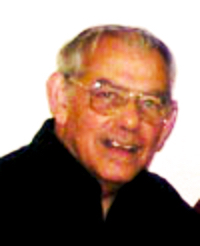 When Trevor Collette invited me to write a few lines about the Seniors' Night presented by the Old Boys" Association last December, I readily agreed as it was another of those occasions which are always well attended and enjoyed by everyone. The food was excellent, there was good music and the overall mood was one of fellowship and relaxation, with a time for singing our favourite Carols between interludes of dancing. The President and Committee did a great job once again. But I have said all of his before. Previously too, I have mentioned the good food, the music, the singing and all that. So I set my mind to thinking of something fresh to write about and remembered saying to someone that evening that in 2002 it would be fifty years since I left Wesley College. And there I was, at a Dinner arranged by past pupils of Wesley for the senior Old Boys. I must mention Vernon Achilles, the most senior Old Boy who is in his 90's, Anton Blacker, Langston Joseph, Glyn Lappen, Vernon Nugara, to name a few, who are among the respected elder statesmen of the Old Boys' Association, and all of them regular guests at these gatherings. But what was I doing here really? Why had I come along with my wife Beryl who incidentally commenced her school career in the Wesley Kindergarten? Sure, I came to hear some news about my old school, to meet old friends and to say "hi" to some others whom I recognised but whose names I had forgotten. This happens a lot to me these days! But there is another reason, I believe we go to the Old Boys' Association functions because they fill a need in us. They transport me back to a time in my early years to which I return very easily, and for a little while I recapture the atmosphere and feel of being with a group of my contemporaries from a time so long ago. It is a tribal urge, this reunion ritual the need to identify oneself in a particular context.
When Trevor Collette invited me to write a few lines about the Seniors' Night presented by the Old Boys" Association last December, I readily agreed as it was another of those occasions which are always well attended and enjoyed by everyone. The food was excellent, there was good music and the overall mood was one of fellowship and relaxation, with a time for singing our favourite Carols between interludes of dancing. The President and Committee did a great job once again. But I have said all of his before. Previously too, I have mentioned the good food, the music, the singing and all that. So I set my mind to thinking of something fresh to write about and remembered saying to someone that evening that in 2002 it would be fifty years since I left Wesley College. And there I was, at a Dinner arranged by past pupils of Wesley for the senior Old Boys. I must mention Vernon Achilles, the most senior Old Boy who is in his 90's, Anton Blacker, Langston Joseph, Glyn Lappen, Vernon Nugara, to name a few, who are among the respected elder statesmen of the Old Boys' Association, and all of them regular guests at these gatherings. But what was I doing here really? Why had I come along with my wife Beryl who incidentally commenced her school career in the Wesley Kindergarten? Sure, I came to hear some news about my old school, to meet old friends and to say "hi" to some others whom I recognised but whose names I had forgotten. This happens a lot to me these days! But there is another reason, I believe we go to the Old Boys' Association functions because they fill a need in us. They transport me back to a time in my early years to which I return very easily, and for a little while I recapture the atmosphere and feel of being with a group of my contemporaries from a time so long ago. It is a tribal urge, this reunion ritual the need to identify oneself in a particular context.
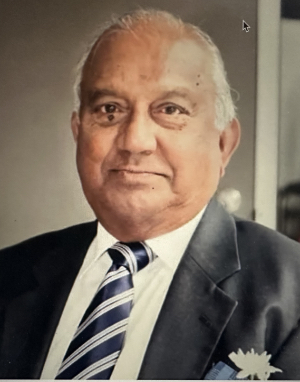 This TRIBE OF THE DOUBLE BLUE it is that which distinguishes us from all the others the Royalists, the Thomians, the Peterites, they are the other Tribes of our era, and I guess are just as proud and happy to meet each other as we are. We were all cloned or cast from the same mould of what was considered to be the end product of the School system as it was then, pressed into uniforms, assembled daily, marched everywhere in columns two by two, our hours dictated by the tolling of the School bell, obeying without question and punished if we did not. Trained and instructed in academic and sporting pursuits, lectured on the importance of "doing well" to such an extent that half a century or more later, wherever a group of Wesley Old Boys" Association friends get together, inevitably the subject of Cricket will be raised. And old men will play again across the table with the glasses, the ice, and the crystal decanters of Scotch, the great Matches that they featured in so long ago. It never fails! I have seen this happen on many, many occasions. Men who can barely walk a mile nowadays, and need to pause for breath between every sentence, will come alive! Their eyes will light up and every smallest detail of that Innings will be vividly recalled. And everyone will listen as if they had not heard these same stories many times before.
This TRIBE OF THE DOUBLE BLUE it is that which distinguishes us from all the others the Royalists, the Thomians, the Peterites, they are the other Tribes of our era, and I guess are just as proud and happy to meet each other as we are. We were all cloned or cast from the same mould of what was considered to be the end product of the School system as it was then, pressed into uniforms, assembled daily, marched everywhere in columns two by two, our hours dictated by the tolling of the School bell, obeying without question and punished if we did not. Trained and instructed in academic and sporting pursuits, lectured on the importance of "doing well" to such an extent that half a century or more later, wherever a group of Wesley Old Boys" Association friends get together, inevitably the subject of Cricket will be raised. And old men will play again across the table with the glasses, the ice, and the crystal decanters of Scotch, the great Matches that they featured in so long ago. It never fails! I have seen this happen on many, many occasions. Men who can barely walk a mile nowadays, and need to pause for breath between every sentence, will come alive! Their eyes will light up and every smallest detail of that Innings will be vividly recalled. And everyone will listen as if they had not heard these same stories many times before.
Even as I write this, today's Television programme promotes a discussion of the famous Australia vs England Test Match Series of 1948, with comments by Sir Donald Bradman. See what I mean? 1948, for goodness sake! Even HE did it! But we all do it because we need to . And after all there's no place else to go. We get together at Old Boys" association functions so that for just a few hours we resurrect those crazy, carefree days when we were growing up, full of ideals and virtues which were at the very heart of what was expected from us as boys of Wesley. I sometimes find myself unable to relate to the cynical rat race reality of this high-tech society that has overtaken us. Where everybody moves as if they He walked on a coral reef in the Sea of Galilee! And so on. But our Christian Faith has stood the rigours of these contemporary interpretations, and I certainly am in no way a heretic! Because these were our formative years, and because, thank God, our parents had the commitment to their sons and daughters to ensue that we had a sound education so that we could face whatever lay ahead because of all of this the TRIBE OF THE DOUBLE BLUE will always represent those ideals and virtues which characterise decent men and women everywhere. (And the Answer said more effectively with an American drawl - ALASKA!) And now for our PUNCH LINE -
Fraternal Greetings to you all
George Robertson and Langston Joseph
Links to further reading
Written by Fred Abeysekera
My son Chrisantha (Victor) conveyed to me, to Canada, the sad news of his death. I hadn't seen him before I left Sri Lanka, in March 2001; and this made me feel his loss more sharply and poignantly. My mind's eye went back fifty years and more, to my days at Wesley College, Colombo, as a student, and my first meeting with Kenneth de Lanerolle, who had returned with a Master's degree from the University of Michigan, to enrich further, the quality of leadership at Wesley. He was Vice Principal, James Cartman was at Wesley's helm. A more magnificent combination at the top, Wesley has not had, since then. He served during one of Wesley's great eras - an era of outstanding achievement - which indicates that committed leadership of the highest calibre, always has a tremendous impact, on the quality of achievement of any institution. Scholarship, music, dramatics, debating, choral singing, as well as sports, flourished.. The spate of centuries scored by Wesley batsmen, and the galaxy of superb bowlers and fieldsmen produced by her, topped up her image, as an outstanding cricket school, to the brim. Swimming and lawn tennis (now defunct!) flourished. The college had many an excellent swimmer, with the Colombo harbour serving as our "pool".
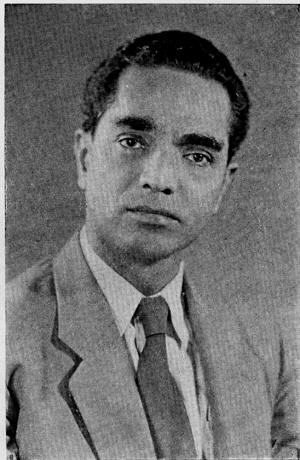 In lawn tennis we proved our mettle, with D.B.C. Mack and N.U. Wirasekara winning the Public Schools' Doubles Championship and consequently awarded Public Schools' colours. Hockey was well nurtured as well with the expertise of Ceylon's dribbling wizard - former Wesley Captain - A Mylvaganam - utilized as coach. In soccer, we clung on tenaciously to our reputation as a mercurial barefoot battalion, which included players of the ilk of M K Brantha, Lou and Vincent Adihetty and ERB Amarasekara (Snr), Wesley's outstanding athlete and Senior Prefect, M.A.M.Sheriff won a place in the prestigious Ceylon contingent to the Empire Games, in Auckland, New Zealand - the only schoolboy in the team. It would be an understatement to say that to have been at Wesley at the time, was a great privilege.
In lawn tennis we proved our mettle, with D.B.C. Mack and N.U. Wirasekara winning the Public Schools' Doubles Championship and consequently awarded Public Schools' colours. Hockey was well nurtured as well with the expertise of Ceylon's dribbling wizard - former Wesley Captain - A Mylvaganam - utilized as coach. In soccer, we clung on tenaciously to our reputation as a mercurial barefoot battalion, which included players of the ilk of M K Brantha, Lou and Vincent Adihetty and ERB Amarasekara (Snr), Wesley's outstanding athlete and Senior Prefect, M.A.M.Sheriff won a place in the prestigious Ceylon contingent to the Empire Games, in Auckland, New Zealand - the only schoolboy in the team. It would be an understatement to say that to have been at Wesley at the time, was a great privilege.
The school community was a hive of vibrant activity. The library was well patronized, and books, and more books, read in pursuit of a spectrum of knowledge, as broad and varied as possible. There was laughter and happiness in the air, and a sense of comaraderie which was unvanquishable. Those of us who did not directly participate in an event, supported the school by their presence - a lucid demonstration of loyalty. Wesley, led by the Cartman - de Lanerolle duo, was a well integrated, happy family. I recall how a teacher was provided for Greek, when a single student indicated his desire to offer this subject, for the University of Ceylon, Entrance Examination. Such was Wesley's concern for each and every one of us, at the time! The Christian Union (later renamed the SCM) had a rich tradition of producing excellent plays under its aegis; as did, Wesley. The man behind the scenes was Kenneth de Lanerolle. I recall, vividly, the play, "AMOR CHRISTI" with Kenneth giving a warm and exciting rendition of the spiritual, "Were you there, when they crucified my Lord?" The audience was visibly moved so genuine was the pathos evoked. His rich bass-baritone voice rings in my ears even now, when I recall the play, staged over fifty years ago! Kenneth accompanied our singing at general assembly - a daily feature - playing the piano. As an actor steeped in the UCDS (Dram Soc) tradition of E.F.C. Ludowyk, at the University College, Colombo, he excelled in whatever role he was cast. His English speech was refined and cultured. I recall his lessons in the General English class (Upper Sixth) where a series of mini exercises, such as, "the cabbage bounded off the table", were aimed at getting us to speak the words, correctly. We were required to (as a warm-up exercise, or prelude) to pronounce tricky works such as, recitative correctly, much to our merriment.
Kenneth was a balanced and harmonious personality, with the courage to be critical - always with good intent - when necessary. He was a rare gift to any educational institution, where the character of the child is moulded, and in so doing, rich and wholesome values inculcated, The latent talents of the individual were discovered and developed, to their fullest potential. The great versatility he displayed in the undertaking of such tremendous responsibility, for our growth and well-being, amazed us. Ironical, paradoxical or, perverse, as it may seem, the "flaw" in this make up appears to have been the diverse talents he was gifted with. Too many , perhaps, for our little, mundane minds to comprehend. This made some resent him secretly, as his brilliance, exposed without intent, the pathetic inadequacy and mediocrity in some of us at times, even among those in authority over him. The attempts to keep him down to me was akin to trying to capture the wind, in a fishing net.

When reflecting on Kenneth's life, I am strongly reminded of some of the lines from Bob Dylan's lyric, Blowing in the Wind How may roads must a man walk down before you call him a man? I knew him during various phases of my life - as a student prefect; and much later, as his colleague on the Wesley staff. In the Fellowship of the Y's Men's Club of Kandy (Y's Men International) and the Kandy YMCA; and as Principal of Wesley, albeit for a brief spell, in the winter of his life, when he was found eminently suitable, to pull chestnuts out of the fire, for the management! The negative and counterproductive manner in which he had often been manipulated and manoeuvred, over the years, enraged those of us who believed in his integrity and sincerity of purpose. I would like to isolate a few lines, from some of his favourite psalms and hymns, to merely touch on Kenneth's unrelenting belief in God; and the solace he would have received from such faith in Him. Like John Donne, he would have experienced the bitterness of despair, in endeavouring to forge ahead with his totally committed life as an "educator".
I would prefer the less pretentious word, teacher" "Breathe on me breath of God Till I am wholly Thine; Until this earthly part of me Glows with Thy fire divine" Or "My table Thou hast furnished In presence of my foes; My head thou dost with oil anoint And my cup overflows". In Vietnam, he worked diligently and courageously, bringing solace to the traumatised youth of that country, devastated by a ridiculous and futile war clamped on them. He served equally conscientiously at Wesley (as Vice Principal, for seventeen years; much later, for a brief spell as Principal) at Kingswood and Carey, as Principal in the interim period; and on several National Educational Reforms Committees, focusing on the role of English, in particular; the National Christian Council of Sri Lanka; The YMCA Forum; The Ceylon Teachers' Travel Club (when he organised an excellent tour of Soviet Russia) several music, drama and English speech (Elocution) groups, as well as his local church, and The Church of Ceylon, Diocesan Council. Always unobtrusively, and characteristically, he helped many in need; very specially the poorest students at Wesley, who benefited from his munificence; with gifts of cricket boots, the Wesley cricket blazer (in a least one instance) spectacles, and running shoes, school uniforms, hockey sticks, Horlicks malted milk and Sanatogen! His managerial skills were considerable and fundamentally "people" oriented.
 The rule was often obscured to focus on the human element. Combined with his humane qualities, meticulous planning was his forte qualities much in need in Sri Lanka's "public administration". No contingency found him hence, Wesley stranded or flustered. He had the temperament to handle any situation with acceptance. I recall a sequence at Wesley's 75th anniversary Prize Day, when Ceylon's first Prime Minister, The Rt Honourable D.S. Senanayake, PC (Privy Counsellor) was delivering his address, as Chief Guest. Mr Senanayake suddenly felt sick and Kenneth de Lanerolle read out the rest of his speech with great confidence. The advice we sought and joyfully received from him as 14th Colombo (Wesley) Scouts stood us in good stead. His advice always be prepared for the unexpected! Our camps in Bandarawela, Nuwara-Eliya, Horton Plain and Pidurutalagala, and at Buona Vista, by the sea, in Galle, were consequently most enjoyable and rewarding experiences. He never failed to visit us in camp and be one of us in experiencing the unparalleled joy of living close to Nature. His dear friend J.E. Silva, was Group Scout Master and this would have been a further incentive for him to be so supportive of scouting at Wesley. As a disciplinarian, he displayed novel ways of "dealing with" miscreants.The deft movements of his scalp and formidable eyebrows scared the daylights out of the younger ones handed over to him for punishment for "misdeeds" such as sleeping in class! At times a deft pinch of one's stomach reserved for the rebellious ones, with faint traces of silk-like fungi above their upper lip with attendant delusions of being cast in the image of Al Capone or Jesse James! quelled the most rebellious of them. The momentary pain had the intended salutary effect! seldom did he use the cane (when he did two strokes would suffice) and it was over quickly after he had deftly extracted 80 page exercise books Added as padding to absorb the blows! His wise saws did the rest; and one returned exorcised of all richly imaginative thoughts, such as setting the school on fire, in order to "miss" a meeting of the Sinhala Literary Association, where one had been conscripted to speak on the evils of alcohol, or, to sing a string of pre-selected Kavi and elucidate the poets' intention in each instance! Some of these guys ended up as college prefects. Such was his gift of dealing with the rebel or nonconformist. To him it was "a growing-up process" not a crime. To be able to see the great potential behind what would be superficially termed a misdeed and conventionally a breach of discipline and to thereafter channel and nurture the potential for good in such young men, enriched them, greatly as well as the corporate life of the school, in consequence.
The rule was often obscured to focus on the human element. Combined with his humane qualities, meticulous planning was his forte qualities much in need in Sri Lanka's "public administration". No contingency found him hence, Wesley stranded or flustered. He had the temperament to handle any situation with acceptance. I recall a sequence at Wesley's 75th anniversary Prize Day, when Ceylon's first Prime Minister, The Rt Honourable D.S. Senanayake, PC (Privy Counsellor) was delivering his address, as Chief Guest. Mr Senanayake suddenly felt sick and Kenneth de Lanerolle read out the rest of his speech with great confidence. The advice we sought and joyfully received from him as 14th Colombo (Wesley) Scouts stood us in good stead. His advice always be prepared for the unexpected! Our camps in Bandarawela, Nuwara-Eliya, Horton Plain and Pidurutalagala, and at Buona Vista, by the sea, in Galle, were consequently most enjoyable and rewarding experiences. He never failed to visit us in camp and be one of us in experiencing the unparalleled joy of living close to Nature. His dear friend J.E. Silva, was Group Scout Master and this would have been a further incentive for him to be so supportive of scouting at Wesley. As a disciplinarian, he displayed novel ways of "dealing with" miscreants.The deft movements of his scalp and formidable eyebrows scared the daylights out of the younger ones handed over to him for punishment for "misdeeds" such as sleeping in class! At times a deft pinch of one's stomach reserved for the rebellious ones, with faint traces of silk-like fungi above their upper lip with attendant delusions of being cast in the image of Al Capone or Jesse James! quelled the most rebellious of them. The momentary pain had the intended salutary effect! seldom did he use the cane (when he did two strokes would suffice) and it was over quickly after he had deftly extracted 80 page exercise books Added as padding to absorb the blows! His wise saws did the rest; and one returned exorcised of all richly imaginative thoughts, such as setting the school on fire, in order to "miss" a meeting of the Sinhala Literary Association, where one had been conscripted to speak on the evils of alcohol, or, to sing a string of pre-selected Kavi and elucidate the poets' intention in each instance! Some of these guys ended up as college prefects. Such was his gift of dealing with the rebel or nonconformist. To him it was "a growing-up process" not a crime. To be able to see the great potential behind what would be superficially termed a misdeed and conventionally a breach of discipline and to thereafter channel and nurture the potential for good in such young men, enriched them, greatly as well as the corporate life of the school, in consequence.
Kenneth was a graphic-artist, as well as the author of a few books, written in his leisure hours, the most significant being, Southern River. Here one gets an insight into his parental home, and his childhood at Matara, when the wholesome and simple pleasures of the country side enthralled a child. Educated at the famous Richmond College, in Galle, he excelled in dramatics English language and literature music and elocution. He had as a young man also mastered the elusive art of theatrical "make-up", transforming familiar faces into something rich, and strange. The deft strokes of his brush, and his sensitive use of colour, produced brilliant posters. These were a few of his very special gifts, and we, his students, imbibed much of his dexterity, each according to his own talents and inclinations. Kenneth de Lanerolle brought out the BEST in one……… He is greatly missed by the many thousands who were influenced by him as a teacher, most extra ordinary; and a staunch friend. He was with us, here, for a season; now above; and we pray, he is overwhelmed by the Peace and Tranquillity, he so richly deserved in life, now that his is no more with us, physically.
Fred Abeyesekera 26 October 2001
Kindly sent by Chris Harvie
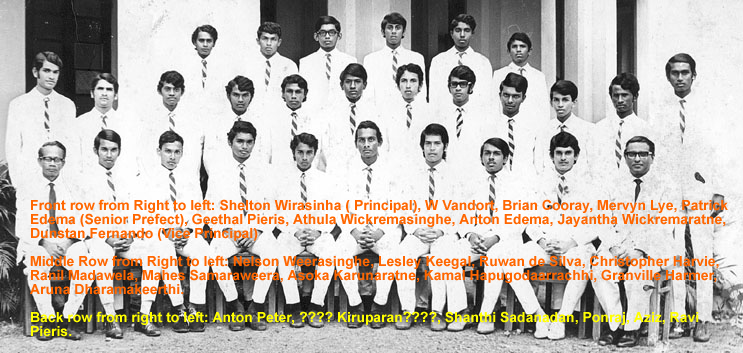
The names in ??? are the ones I have forgotten...but only the first name... Pretty good memory for 29 years!!!!!!!!!!!!.
But then again how can you forget these blokes !!!!!!!!!
Kind Regards
Chris Harvie

Wesley had some of the best teachers and students in music, art, and drama.
In oriental music it was Mr. Basil Mihiripanna, who was a master at the Sitar. Seated akimbo on the floor He held audiences spell bound at public performances. Wesley was indeed fortunate to have had a world renowned musician. He received his training in India and practiced many years to be a perfectionist. Mr. Mihiripanna left Wesley to take up a prestigious position in the ministry of Education. He was appointed as a Director of Education (Aesthetics).
English Music and College Choir - I remember the teachers Mr. Haig Karunaratna and Mrs. Christianz and students - Nimal Suraweera, Dallas Achilies, Rev. Neville Koch, Maurice Balasingham, Alston Koch, Adrian Jansz, Milroy Taylor, and may be Kenneth Honter and Shane Lawrence.
Internationally recognized Sri Jayana was one of the best in Kandyan Dancing. With his departure, Wesley saw the last of oriental dancing at the school pavilion in early 1960's. But, his troupes continued to perform in many countries and were a tourist attraction in many of Sri Lanka's leading hotels and public stages. In the last few years his son Asoka Rajapaksa (represented Wilkin House in Athletics) took over the legacy to continue with the International performances.
The master painter Mr. Jayantha Premachandra held many art critics spellbound with his life like paintings. During his teaching career at Wesley, he covered the 8-foot door at the rear of the College Hall with a life size oil painting for every prize giving. Most of the time he worked on religious themes. His paintings were acclaimed by famous artists and took pride being presented world over at prestigious exhibitions along side some of the best known internationally.
We should not forget the services of Mrs. Isla Perera who was the middle school teacher who saw a great deal of excellent to poor artists for a long period of time in the sixties.
Mr. Felix Premawardana was best known for his record breaking "Kaluware Jaramare". It was staged more than hundred times and appeared in all of the well known Stages in Sri Lanka. Mr. Premawardane will always be remembered for his contribution to Sinhala drama and literature. I should record the effort of A/L student Ariyawansa Kulasooriya who staged "Lowen Ekek Apa Adare". I remember only one of the other actors - Amaresh Rajaratnam and the teacher who assisted - Mrs. Lakshmi Amaratunga (with Kaluware Jaramare fame).
Mr. Kenneth de Lanerole needs no introduction. I faintly remember his performances and the performances of his students at the college stage. But, I remember best, his outstanding performance at the Lionel Wendt. The classic Merry Widow opera was run full-house for two weeks, with his performance widely splashed in the daily columns of leading newspapers and magazines. His departure left a huge void.
Mr. A S. Wirasingha could have filled this need, but the administration of the non-fee levying private school legacy he took over in 1962 was too much of a task. But in 1967-68, Mr. Wirasingha did come with a outstanding performance in "Boy with a Cart" which won the prestigious All Island Inter-school Drama Competition. Monroe Reimers was adjudged best actor.
Haig Karunaratna will be best remembered for his large casts and colourful opera, drama, and plays, skits. The musicals were just outstanding and enjoyed by so many students with talent and no talent. Everyone who turned up was transformed into performers; that was his great talent. To make the dumb vocal and the lame perform on stage - this was aptly proved at the finals of the Inter-school drama competition in 1967. Matheo Falcone saw Peter Swan win the best actor award assisted by Asoka Jayawardana (narrator), Sextus Taylor and score of others I do not remember. Mr. Karunaratna also directed the musicals Jesus Christ Super Star (lead roles by Christopher XX, Neil Obeysekara, and twenty others) and Rainbow Man at the Lionel Wendt (3 days) I remember Errol Dickman as the stage director and Keerthi Sri Karunaratne (make up) and forty other actors. Many of the one-act plays I do not recall well enough to document. I quote Mr. Haig Karunaratna's constant quote of a famous quote, particularly when relaxing at the Kinross Beach - "no man is an Island".
Links to further reading
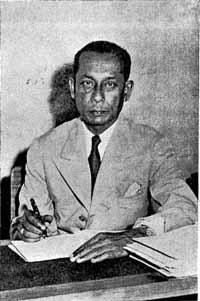
IT is with a deep sense of gratitude that I stand before you today on this the 3rd anniversary of our Primary School Prize Day to give you a brief review of our progress and activities. But. before I do so I have a very pleasant duty to perform. On behalf of all of us 3 extend to our Chief Guest Mr. S. S. H. Silva and Mrs. Silva a very warm welcome. Mr. Silva is one of the finest products of Wesley. As a student of this college he surmounted many an obstacle and handicap by sheer perseverance and tenacity of purpose. He showed brilliance and outstanding ability in studies and in the field of sports; he won the coveted Hill Medal, was Senior Prefect and Captain of Athletics and led Wilkin House to victory in our Sports Meet. He had a very successful career in the Ceylon University and crowned his efforts by securing a place in the Ceylon Civil Service. His simplicity and charm of manner have combined with efficiency to bring him rapid promotion. As a Senior Civil Servant he has served with great distinction and received high recognition at the hands of Government, while he enjoys the love and respect of all who have come into contact with him. It is a matter of singular pride to all of us at Wesley that he has set Wesleyites a great example which they can cherish and emulate. He has also proved to be a very loyal Old Boy. We are proud and happy that both as a student and as a Public Officer he has brought honour to his Alma Mater. We also thank Mrs. Silva for her presence with us and for kindly consenting to give away the Prizes.
It was three years ago that a definite step was taken to consider the Primary Department as a distinct unit in itself as far as conditions permit. This decision made it possible for the Primary School to plan their own programmes independent of the rest of the College and provide for the boys from the Nursery upwards greater opportunities for self expression and scope for a fuller development of their own individuality. They have now four Prefects selected from among themselves who shoulder responsibility for orderliness and discipline. Our boys take an increasing personal interest in their own House Competitions, Sports Meet, Exhibition of Hand Work & Art, Variety Entertainment and the greatest of them at!, their own Prize Day. No longer do our boys feel they are an insignificant appendage of Wesley with-some slight attention paid to them as a poor relation! It is my fervent hope that this section of the school will receive greater recognition and develop into a first rate Primary Department, with better equipment, more qualified staff, pleasanter and airy class rooms and a play ground which they can consider their own.
We have stilt to organise ourselves to eliminate the feelings of segregation between one group and another by finding an effective way to break down the barriers that keep our boys apart, and promote a sense of well being and good fellowship which can lead to easy mixing, a mutual understanding and real unity among all the races represented in the school. Many obstacles exist, but they must be overcome by judicious planning.
Our number on roll is exactly 601 today, showing a further increase over last year's numbers. Unlike in the early years when, on a different system, a few Prizes were given away to these boys at the big Prize Giving, we are able to give now many more to a far larger number. Accommodation continues to be a problem. It is an encouraging sign that some efforts are now being made to provide better equipment and buildings for the Kindergarten. We hope that this project will make headway soon and supplying a very pressing need.
 As regards changes in our staff, we were sorry to say good bye" to Miss C. Niles, Mrs. Helen Stouter, Mrs. Erin MacLelland, and Miss Mary Colin Thome who did her work of Teacher in Singing with great acceptance. To all these teachers who served the school for varying periods, most loyally, we offer our sincere thanks. We must place on record the keen interest Mr. Kenneth de Lanerolle our former Vice-Principal took in the affairs of this department, even undertaking Lo give the benefit of his specialised knowledge in the teaching of English as a second language to the Primary Staff, by conducting a series of classes and demonstrations. We wish him a very successful career as Principal of Kingswood. At the same time we extend our congratulations to Mr. Aelian Fernando on his appointment as Vice-Principal and while thanking him for the interest he has already taken in the past, hope he will be a real asset in the life of Wesley in the years to come.
As regards changes in our staff, we were sorry to say good bye" to Miss C. Niles, Mrs. Helen Stouter, Mrs. Erin MacLelland, and Miss Mary Colin Thome who did her work of Teacher in Singing with great acceptance. To all these teachers who served the school for varying periods, most loyally, we offer our sincere thanks. We must place on record the keen interest Mr. Kenneth de Lanerolle our former Vice-Principal took in the affairs of this department, even undertaking Lo give the benefit of his specialised knowledge in the teaching of English as a second language to the Primary Staff, by conducting a series of classes and demonstrations. We wish him a very successful career as Principal of Kingswood. At the same time we extend our congratulations to Mr. Aelian Fernando on his appointment as Vice-Principal and while thanking him for the interest he has already taken in the past, hope he will be a real asset in the life of Wesley in the years to come.
I must also express our thanks and gratitude to our Principal and Mrs. Nonis for the lively interest they have shown in ever so many ways and for their encouragement in our work. Our congratulations also go to the most senior member of the Kindergarten staff, Mrs. S. E. G. Perera on the new responsibilities entrusted to her as Head Mistress of the Kindergarten-a very deserving tribute to one who has proved her efficiency by many years of loyal service. We welcome to the staff the following colleagues who joined us in the course of the year:-Miss V. Buell, Miss I. W. Marasinghe, Mrs. E. R. Saratchandra, Miss M. D. Jansz, Messrs Jayantha de Silva and Terence Gunawardena. We hope their stay with us will be long and happy and that their service will be of the best.
Our sports meet proved to be a very enjoyable one. The exhibition of Handwork and Art drew a large and representative section of our parents and well wishers. Both the exhibition and the entertainment drew appreciative comments from a wide circle. As special features I must mention the high standard of the exhibits of cane work, coir rope and coconut shell, the painting of plaster of Paris models of animals etc., and masks produced from paper pulp. On the whole the painting and exhibits were of a high order.
Our cub pack has increased in numbers and efficiency during the year. Great enthusiasm prevails among both the cubs and their masters in charge. Chip a job week brought in Rs. 150/-through their efforts. We have also secured the services of Mrs. Saratchandra through whom we have inaugurated classes in Oriental Singing, while
Mr. Iyadurai of our staff trains the boys in Tamil Singing. Our dancing classes continue to do well under the guidance of Sri Jayana, and Miss Jansz has taken over the classes in Western Singing from Miss Thome.
I crave your indulgence now to turn to another aspect of our existence as a school. We live in a period of stress and strain. An atmosphere of uncertainty and fear for the future seems to engulf us. Standards of conduct, the relationship between religion and life, moral standards and human relationships have all received a severe jolt. Whilst in a way we are roused from lethargy and complacency by the intrusion of these tendencies, it would be a pity if these were to lead to a lowering of the values we have placed on such things as justice and fair play, reverence for oneself as well as others, democratic freedom in the accepted sense of the term, and unity which is essential to peace and goodwill between race and race, ~nation and nation. As people, directly concerned with the growth and upbringing of the younger generation, teachers and parents alike have a responsibility to be alive and awake to all that is happening by way of new interpretation and new ideologies that are taking shape and penetrating the life of our society.
This is a challenge every teacher must be prepared to face. Nothing can help him if he has not only made himself aware of these tendencies but sought to cultivate within himself such high ideals for himself which could mould him to be the type of person he should be, who shall not deviate, for whatever reason, from principles and standards which he must regard as fundamental to his high calling as a teacher, and which should become intrinsically woven into the fabric of his being. The teaching profession needs men of character and principles, devoted to their work and conscious of their responsibilities. How else can children in their formative years imbibe the best we can offer? And how else can such schools as Wesley send out into the world gentlemen in the true sense of the word, who believe in self respect and respect for others, whose sense of duty and responsibility far outweigh the privileges they seek and the doubtful pleasures they crave for?
 This is a matter for parents as well, and they too must be alive to the need for creating the right atmosphere in their own homes so that their children can naturally assimilate whatever is best and noblest through the medium of exemplary parents and the wholesome atmosphere of a good home. Hence, the ever increasing emphasis that every sound educationalist puts on the value of Parent Teacher Associations and the valuable help and guidance their joint efforts could offer to the children for whose growth as true men, both have a responsibility. My earnest hope that the P.T.A. of this college will play its part effectively in this direction, and that it would become possible in the very near future to have a separate association for the parents and teachers in the Primary Department. Our P.T.A. has gone far towards fulfilling an undertaking to build, by their sole efforts, a tuck shop cum lunch room as a special contribution to their children's welfare, and well in keeping with the architectural pattern of the existing buildings. We hope this praiseworthy effort will receive the generous support of our parents.
This is a matter for parents as well, and they too must be alive to the need for creating the right atmosphere in their own homes so that their children can naturally assimilate whatever is best and noblest through the medium of exemplary parents and the wholesome atmosphere of a good home. Hence, the ever increasing emphasis that every sound educationalist puts on the value of Parent Teacher Associations and the valuable help and guidance their joint efforts could offer to the children for whose growth as true men, both have a responsibility. My earnest hope that the P.T.A. of this college will play its part effectively in this direction, and that it would become possible in the very near future to have a separate association for the parents and teachers in the Primary Department. Our P.T.A. has gone far towards fulfilling an undertaking to build, by their sole efforts, a tuck shop cum lunch room as a special contribution to their children's welfare, and well in keeping with the architectural pattern of the existing buildings. We hope this praiseworthy effort will receive the generous support of our parents.
I would now like to express our grateful appreciation of the continued encouragement our parents give us in all that we have tried to do to promote the welfare of their children. We are well alive to the fact that we can depend on you always to be sympathetic and appreciative of our work on your children's behalf. In conclusion let me express my thanks and gratitude for the co-operation and loyalty extended to me by the teachers in the Primary Department all along and more especially for everything they have undertaken to do in connection with this Prize Giving. May I add a special word of thanks in regard to Mr. D. A. Wilfred who has enthusiastically borne the heavier burdens in connection with our Prize Day and Sports Meet? And also for his good work with our Cub Pack. To my colleagues in the other part of the school and the clerical and domestic staff too who have always given us their willing co-operation I say a very big thank you.
May Wesley continue to uphold the great traditions established by such a galaxy of high souled men who have served during a period of 85 years to make this school respected all through our land, and may it never be said of us that we have failed to preserve and build upon the tone and spirit of Wesley. This is my fervent hope and prayer for all the years to come.

For many years in the 1950's and 60's Mr. Wilfred was in charge of the School Book Stall. It was open for a short time before school started at 8.15am and in the intervals. It had exercise books with the college crests. Monitors exercise books, school reports and Hymn Books. There were many items of stationery like erasers rulers and Dreadnought instrument boxes. It was most active at the beginning of each term and intensely busy at the beginning of the school year. There was no bargaining and what the shopkeeper said was law. Mr. E.L.Rodrigo and senior students helped out occasionally. The shop was located just behind the College Hall with a little cubby hole to do business. It had a special smell of its own of brand new paper. Following is a short notice about the Bookstall from the 1959 school magazine. Managing the bookstall was an effort beyond the call of duty and I appreciate greatly the efforts of Mr.Wilfred to provide a service to the students and the school.
A Note About the Wesley College Bookstall by D. A. Wilfred Wickramasinghe 1959
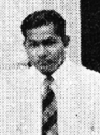 The Bookstall is run mainly for these reasons.
The Bookstall is run mainly for these reasons.
To maintain a certain uniformity in the materials used by the Students.
To help Parents by supplying the best but reasonably priced materials.
Every cent gained as profit, helps the School funds. Therefore it is our duty to patronize the College Book-Stall whenever possible.
We have in stock, all exercise books, Monitor's exercise books, Report books, Pencils, Colours, boxes of instruments, lead pencils, foot rulers, erasers, and Art and Handwork material.
The members of the Staff and students, who helped me in the work of the Book stall during the past year, are thanked.
Links to further reading
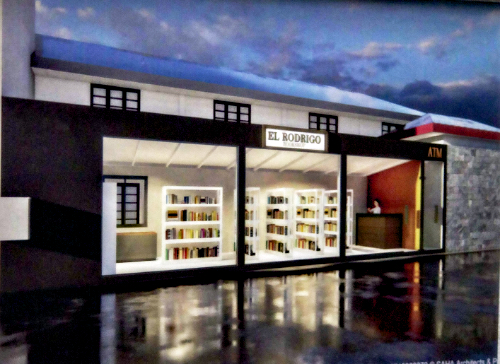
.......................................
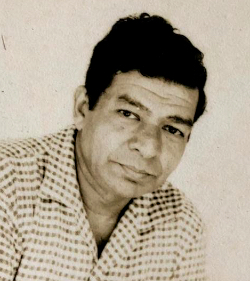 The Foundation Stone Laying ceremony for the E. L. Rodrigo Bookshop and ATM took place yesterday,7th November 2023, marking a significant milestone in the Welfare Society's initiative for Wesley College's Sesquicentennial Celebrations.
The esteemed event witnessed the presence of key figures, including Principal Avanka Fernando, Vice Principal Iresh Ravindrakumar, and Chaplain Rev. Dinuka Silva. Co Vice Principals JP Jayaratnarajah and Jamith Fernando, along with Ranil Thilakaratne, President of the WCWS, Capt. Navin De Silva, President of the OBU, and Dharshana Liyanage, President of Old Wesleyites Sports, were also in attendance, demonstrating widespread support for this momentous project. The event highlighted the collaboration and dedication of the Wesley College community in furthering its legacy.
The Foundation Stone Laying ceremony for the E. L. Rodrigo Bookshop and ATM took place yesterday,7th November 2023, marking a significant milestone in the Welfare Society's initiative for Wesley College's Sesquicentennial Celebrations.
The esteemed event witnessed the presence of key figures, including Principal Avanka Fernando, Vice Principal Iresh Ravindrakumar, and Chaplain Rev. Dinuka Silva. Co Vice Principals JP Jayaratnarajah and Jamith Fernando, along with Ranil Thilakaratne, President of the WCWS, Capt. Navin De Silva, President of the OBU, and Dharshana Liyanage, President of Old Wesleyites Sports, were also in attendance, demonstrating widespread support for this momentous project. The event highlighted the collaboration and dedication of the Wesley College community in furthering its legacy.
Links to further reading
HILLARD HOUSE
During the period under review Hillard House has not fared too well. The C. F. de Pinto Memorial Shield awarded to the House with the highest number of points has been, as it were, our "possession" for the past two years. But, however, at the end of last year we lost hold of it and the shield now goes to Moscrop. We congratulate them.
General: We congratulate B. S. Perera on his appointment as Senior prefect and L. R. Gunatileka and F. Sikkander on their being appointed sub-prefects of the College.
We bade farewell to our House Captain. Upali Samararatne at the end of the 1st term and to Terrence Gunawardena, who was a prominent and loyal Hillardite, at the end of last year. We wish them both all success in their new spheres of life.
The Hillard House Council met on S occasions during the period under review and various matters concerning the House were discussed. This governing body has proved to be more than an asset in the progress of the House.
This report would not be complete if we do not say "thank you" to our House Master, Mr. Felix Premawardena whose able guidance and enthusiasm have contributed, in no mean way, to the progress of this House.
FAHMY SIKKANDER,
(Secretary).
MOSCROP HOUSE
During the period under review the Moscropites have continued to do their best in the sports field and in the class-room. Although they were not successful in everything in which they participated, yet their spirit of love and unity prevailed throughout.
years we would be better equipped to compete in the Senior tournament.
Farewell and Welcome: At the end of the second term Mr. T. Kiruparajah left us. We wish him a successful career in the Miami University, U.S.A. We extend a warm welcome to Mr. R. E. Abraham who joined us at the beginning of the 3rd term.
Congratulations: We extend our congratulations to Nalendra Abeyasooriya, Mohamed Razark and S. R. Sinniah on their appointment as College pre
fects; S. Thirunavukaresu, S. M. F. Sikkander (Snr.) C. d' with Barbut and R. T. Asirwatham, who have been appointed Sub-prefects; S. Thirunavukaresu, and A. C. Wijeyatilake who have been appointed Assistant librarians. We also congratulate N. Abeyasooriya on his appointment as Captain of the college cricket team for the second year in succession, M. A. Razark on his appointment as captain of the College Basket Ball team, C. d' with Barbut on his appointment as captain of the college Tennis team and R. S. C. Fernando on his appointment as captain of the College Volley Ball team.
Finally we thank the House masters and the captains of games for their contribution towards the progress of the 1-louse. We remind all moscropities that "that which is worth doing is worth doing well".
CECIL WIJETILAKE,
(Secretary)
PASSMORE HOUSE
Reviewing the past year, it has to be said that we have had a fairly successful year. If success however is to be measured by victories in Inter-House Competitions. It must be admitted that we have had a rather lean season. But in spite of many handicaps our boys have given of their best in all the activities undertaken by the House. We are glad to report that our boys still maintain a pride of place in the academic field.
Studies: This year we are proud to congratulate I. D. Raymond, A. K. David. B. D. Weerasinghe, U. D. Edirisinghe and K. A. L. Kalyanaratne on their success in the University Preliminary Examination, held in December 1958. While bringing credit to their House, they have also created a record for the slumber of University entrants from a single House. We wish all of them a very happy and successful academic career in the University.
Our congratulations also go to D. M. Arandara, M. I-i. Cader, M. N. Wimalasuriya, A. Palihakkara and W. C. Fernando on their success in the G.C.E. Examination held in December 1958.
* Athletics: In the field of Athletics we have not only maintained the old standard but also created a best achievement in recent years by winning the Inter-House shield for the fourth year in succession! The House is grateful to Ranjit Dassanayake for having so ably led the team to victory this year. We are also grateful to our Junior Athletes who scored most of ~he points for us. We congratulate Rohan Wijesinghe and D. Thome on winning the under XVI and under XIV championships respectively. We take this opportunity of thanking our House Masters who not only helped us during the sports-meet but encouraged and inspired us in all our efforts. Our congratulations go to A. K David on his appointment as captain of the College Athletics Team for 1958.
Hockey : Though we were the favorites in the Inter-House competition, we finished runners-up. We congratulate N. R. Perera on his appointment as captain of the College Hockey Team for the second year in succession. Our congratulations also go to A. Palihakkara on his appointment as Vice Captain of the College Hockey Team.
Rugger: We were not able to show our prowess in this field as there was no Inter-House Competition. We strongly recommend that an inter-House rugger competition be started as soon as possible. This is bound to raise the standard of rugger in the College. We are proud to note that the following played for the College XV: N. R. Perera, N. L. C. Fernando, A. K. David and L. Pieris.-whilst M. Z. Lameer played in a few matches for the College XV in addition to playing for the 2nd XV. Our congratulations ~o to N. R. Perera on his appointment as Vice-Captain of Rugger in 1958, and to N. L. C. Fernando on his appointment as Captain of the Rugger in 1959.
Badminton: We regret to have to report that there was no inter-House competition this year.
R. L. Wijesinghe must be congratulated on his fine performance in The National Badminton Championships for Novices, where he won the Men's Singles title. He was also responsible for the success of the College team in the Inter-Schools' Badminton Tournament when Wesley emerged champions of Group "A",
Cricket: in our first match, though we were only able to field 9 men, we bundled out the strong Hillard team for 43 runs,. But we could reply with only 29 runs, thus losing the match. In the losers' match we dismissed Wilkin for 65 runs. Though our openers gave us a bright start having put on 40 runs before being separated, the rest could only add 5 runs, and we were all out for 45 runs! D. Kodituwakku represented the College First XI and played with a great measure of confidence.
Football: We were placed last in the inter-House football competition. Very few Passmore boys play football and as a result our team was very weak. In spit~ of this handicap our boys put up a good fight before losing both matches. We hope thus that our standard of football would improve in the years to come.
Basket Ball: Though we had a fairly good team, we finished fourth in the Inter-House competition. We were deprived of the services of our best players as the Inter-House matches were held in late November just before the University Entrance and S.S.C. Examinations. We would very much appreciate it the authorities hold these matches at a convenient date, early in the Third Term.
General: We congratulate I. D. Raymond and A. K. David who were appointed College prefects in September 1958, and A. G. de S. Gunasekera who was appointed a prefect in May 1959. Our congratulations also go to P. A. J. Perera, N. L. C. Fernando and D. Kodituwakku on their appointments as sub Prefects. We also take pleasure in congratulating M. H. Marikkar and W. A. de Alwis on their appointments as Business Managers of the "Double Blue"-1959.
Farewells: We are very sorry to bid farewell to Mrs. G. H. P. Leembruggen, one of our Senior House Mistresses. She always took a keen interest in the activities of the House. We will always remember the hours she spent helping us during sports meets and Inter-House Dramatic Contests. We wish her all the best in her new life in Australia-thoUgh we hope she will come back to Ceylon.
We are also sorry to bid farewell to Mr. R. E. Abraham who has now joined the College, Hostel and thereby Moscrop House. We thank him very much for his devoted services to the House.
We also bade farewell to the following Senior members of the House-I. D. Raymond, A. K. David, B. D. Weerasinghe, K. A. 1. Kalyanaratne, U. D. Edirisinghe, N. R. Perera and Ray de Silva.
Finally we wish to express our sincere thanks to Mr. L. Jayasuriya our Senior House Master, and Messrs. V. R. Robert, A. J. Vethanayagam, D. V. A. Joseph, D. F. Abeyesekera and H. Karunaratne, for their kind and devoted services to the House. Their encouragement and inspiration have led us to achieve great things in the past. We sincerely hope that their guidance would help us to reach greater heights in all our activities in the future.
Hilmy CADER,
Secretary.
Editors' note: Passmore House holds the record for winning the athletics championship in 1930, 31, 32, 33, 34, 35, and 1936 - Seven years in Succession! (Double Blue 1949, page 40)
WILKIN HOUSE
Wilkinites have contributed to the progress of the school in all spheres of activity during the period under review. In house activities though we have not met with success, we hope to do our best in the coming year. Wilkinites have always lived up to their house Motto-"Do your best and leave the rest."
Cricket: With a weak side we did fairly welt in the Inter-House competition. We lost to Moscrop in the Semi-finals and in the losers' match we did well to beat Passmore by a narrow margin of 12 runs. Two of our members P. S. Rodrigo and Rex de Silva represented the school in Cricket.
Athletics: We did quite well to secure the second place in the inter-House Sports Meet. Our congratulations go to S. M. Rajasingham who emerged Senior Champion. He also did well at the Group Meet.
Hockey: With a well balanced side we faired very badly. In the Inter House Competition we were placed last but we fought hard in both matches.
K. Ismail, S. M. Rajasingham, and M. Seibel played for the college team. R. B. de Silva, was a reserve.
Soccer: Although we had a weak side we fought hard in the Inter House Competition. We were placed last. Three of our members M.Z. Ariff, T. D. Samidon and R. B. de Silva played for the College XI.
Rugger: Though no competition as such was held we had the distinction of having more than half the College Rugger XV. in Wilkin I-louse. The following played for the college: A. S. Wijesinghe (Capt.)
S. M. Rajasingham, L. V. Jayaweera, B. Lisk, D. Perera R. Wijetunga, M. Seibel, and Lloyd Wijesinghe. S. M. Rajasingham, who was one of the prominent ruggerites of the college, was chosen to represent the combined schools in rugger.
Badminton: It is a pity that no inter-house competition was held last year for we might have emerged champions for the fourth year in succession. We have the distinction of having with us P. S. Rodrigo. the College Badminton Captain for the second year in succession.
Volley Ball: in the semi-finals of the inter House
Competition, playing two short, we lost to a strong
Moscrop side 2-0 but, in the losers' match we beat
Passmore 2-I to take the third place.
Extra Curricular: Our congratulations go to K. G. N. S. Weerasinghe for his creditable performance in the University Entrance Examination and all Wilkinites who have obtained the S.S.C. Certificate. W. A. K. Silva, M. Lameer, R. Wijetunga and Brian Balasooriya must be congratulated on their being appointed sub-Prefects.
Farewell and Welcome: It is with deep regret that we bade farewell to a number of loyal Wilkinites. During last year we lost A. S. Wijesinghe, (House Captain) Lloyd Wijesinghe, (House Secretary), S. M. Rajasingham, L. V. Jayaweera, Ananda Perera, N. S. Ranasinghe, M. B. W. Perera, L. S. P. de Silva K. D. Fernando, R. B. Ebenezer, and M. Seibel. We wish them success and the very best in the future. We are happy to welcome new corners to our House and we all hope they would help the House in every possible way.
We are greatly indebted to our Senior House Master Mr. J. L. F. de Mel and our House Masters Messrs. B. van Sanden, V. Gunaratnam, D. Dharmaratne, C. de Silva, Ivan Ondaatje and A. Salgado. Wilkin should advance from strength to strength under their guidance and support. We all thank them sincerely.
REX DE SILVA,
(Secretary)
Soccer: Although we had a weak side we fought hard in the Inter House Competition. We were:
placed last. Three of our members M.Z. Ariff,. T. D. Samidon and R. B. de Silva played for the College XI.
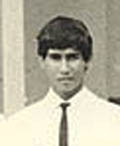
The school I went to before Wesley was St John's Girl School Nugegoda. This was not only because it was the closest school to our house but my three sisters also went there. It was a simple issue of convenience. Needless to say it was hell on earth, not a single pleasant memory remains, if there ever were any. I remember constantly wondering if I was on another planet. Then mercifully after a series of harrowing incidents my father saved his pennies and cut his corners so I could go to Wesley College Colombo. It was quite far away and required two buses but it was supposed to be a very fine school and I was after all his only son. I remember anticipating the day with great excitement. I was seven years old. My father decided to make me a suitcase. It wasn't simply to save money but also because he imagined himself to be some sort of genius handyman, he prided himself on being able to make anything better than what could be bought. So he made me a suitcase and painted it black. Out of timber and three gauge ply. It was so heavy I could barely lift it off the ground even before a book could be put inside. Nevertheless I liked the look of it and wasn't going to let that mere detail stop me. I proceed to write my name on the solid black suitcase in large bright white letters. Now, as the only son amongst a bevy of beautiful sisters I was assigned the task of representing both my grandfathers. I had both their first names as my middle names. Thus my name, which I bear proudly, is Monroe Edmund Darrell Reimers. For some inexplicable reason, which I wonder about to this day, I thought Edmund began with an A. Thus with M.A.D. Reimers proudly emblazoned on my suitcase I set off for my first day at Wesley.
I remember holding my dad's hand as we got off the bus. I remember the giant Tamarind tree on the front lawn. The rest of it is all a bit blurry. I vaguely remember a speech in the Hall by principal P.H.Nonis in his black gown, surrounded by the masters up there on the stage in the distance. I remember my father standing beside me. I knew he was late for work and didn't want to be there. Then it was all over, and the mass of humanity began to disperse. I looked around for my father and he was gone. He said he had arranged for somebody to take me to my classroom but they must have forgotten for eventually I was the only one left. Me and my ten ton suitcase. Not knowing what to do I picked up my suitcase and started to walk. I could have sat down on the suitcase and waited I suppose, but it never occurred to me. I am not that kind of guy. I just kept walking. And walking. I must have lugged that suitcase [which had a full load of books inside now]round and round the school for at least two hours. Not once did I bother to ask for directions. I just kept walking, one foot in front of the other. Then one of the most wonderful things happened. The memory of it is still as precious as ever and it has been recalled fondly many times over the years. A hand tapped me on the shoulder. I looked up to see the smiling face of the vice principal, L.A.Fernando. "Are you lost little fellow?" I remember saying yes. He took my hand in one hand and my suitcase in the other and led me to class 2a and introduced me to my teacher Mrs. Anderson. Words were exchanged followed by suppressed laughter and I was shown to my seat. Thus began ten of the happiest years of my life.
Links to further reading
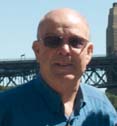
I left Sri Lanka in December 1963 for Australia with the family, my dad was an ASP in the police and he had enough of the force after 28 years service, so he took early retirement and we came to Australia.
It was a great experience going back to visit Wesley College, I took the family over for a holiday in April 2001, it started off with my wife and self planning to spend two weeks in SL, and the kids decided that they wanted to come along too, so I gave them an offer that if they paid for their air fares, mum and dad would look after the other expenses, little did I know what I was letting my self into, however they had the time of their lives and want to go back in 2004.
I called into College one morning, and as it was school holidays we had to get some one to open the gates, I told the young chap that I went to school here from 1952 to 1961 and it was my first trip back to SL, and I would like to take a look around, while we walked around and I explained to the family the various classes I attended, the young guy who let us in went and got the principal, who was M.A P Fernando, he was in a care taker position and invited us back to the bungalow and gave us a guided tour of the place, it is the first time I have been through the place, the closest I came to entering the great bungalow was when we woke old Cedric Oorloff from his Sunday afternoon sleep buy throwing a cricket ball on to the verandah, we were invited in to receive 4 off the best from the boss.
College buildings looked in great shape, I was most impressed with the chapel and the new 175 year building where the infants school and tuck shop once was, M.AP Fernando told me that they had closed the hostel as there weren't enough students, and he was hoping to get some of the boys that lived on the out skirts of Colombo who were spending a lot of time and money travelling to school each day to live as hostellers, the hostel fees at the time were Rs 1,065.00 for the month ( I was going to book my boys in for 2 years and pay on the spot ). M.A P also said that they need a lot of repairs to the buildings and new school furniture, I will talk to the old boys when I am in Melbourne in the new year about doing some thing about this.
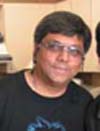
My son Ryan once asked me who I thought was the best cricketer Wesley College produced and without hesitation the famous name of “Russell Hamer” came to mind. Whenever I saw him I was in awe, just his presence gave me such a thrill to be around such a talented sportsman! His generous smile and the way he carried himself created an incredible impression on me. He was always the perfect role model for the younger cricketers coming through, being as simple as he was. He would talk and encourage us and it was always special to get his advice.
I will always remember the first time I played a softball match against him.
Russell was few years senior to me and I was probably about 12 or 13 a virtual “podian” batting for Mount Mary with Russell Hamer “the star” keeping wicket for the Prisons team. I remember I managed to play a few hook shots to the boundary and there was Russell cheering me on, encouraging and acknowledging every good shot I played. I don’t think he knew who this little podian was and what school he went to but he sure went out of his way to say “good shot” and said “well played” which meant a hell of a lot to me than scoring runs for Mount Mary. That was the sort of guy Russell was, always down to earth. We ended up getting thrashed with Russell loosing tennis ball after tennis ball! I didn’t mind that as I was privileged to meet the best cricketer Wesley has ever produced.
My fantastic recollections of Russell Hamer in College were that of a Super Star Sportsman! He was a strong and solid lad with big arms (His younger brother Granville who played under me in 1971 said they used to eat turtle flesh which hardened their skin and could never take an injection as the needle would just bend- true story)
On Friday mornings (match day) Russell would walk in to college with his blazer folded neatly tucked under his arm. We used to wait for the team to arrive for their lunch in the hostel dining room (the usual menu of beef stew and bread which I think was the tradition- I had that for every year of the five years that I played 1st xi)
Every kid would want to carry Russell’s blazer and bat for him, so popular was he!
I always wanted to do it but could never get close to him as all the kids would be around him. I was quite happy though when he acknowledged me whenever I wished him good luck! His wicket keeping was a delight to watch, standing up to quick bowlers and leg side stumping were simply amazing! He always stood out and played some fantastic games for college.
He was also brilliant at soccer with tremendous skills. I remember his falling over the head kicks for goal was a special treat to watch! His loud laugh after that was even better!
The other sensational memory I have of Russell was when I watched him bat against St Thomas’ College at Campbell Park. Barney Reid was the bowler (one of the best schoolboys bowlers at the time) Russell just put his right leg forward and played one of the best shots I have ever seen, the ball started off flat then sailed over Barney’s head, kept rising and rising well over the big trees finally landing near the entrance to the Welikade Prison! Such power and such a tremendous shot! Whenever I meet Barney or Brian as he is well known in the Victorian Premier Cricket scene in Melbourne (he is the current coach of Ringwood) I remind him of “that six”
That was pure class! Russell at his best! He gave me so much enjoyment, something that I will always treasure. Again I consider myself lucky I was around and privileged to know the great Russell Hamer and in my time at Wesley from 1957 to 1971 he was easily the greatest and best cricketer Wesley College has produced!
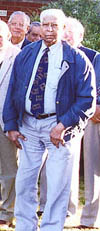
I was informed I was born at 3.25pm on the 26th of October 1907 in a house called Lilly Villa on old Kolonnawa Road. My parents were Wilfred Nathaniel Achilles and Maud Cornelia Jansz. My parents lived in a 2 roomed house about a quarter of a mile away from my grandmothers house. I used to go for long walks with my mother but I spent most of my time with my grandmother and aunt who was a teacher at St. Matthews Dematagoda.
I can remember being carried by my grandfather Charles Gilbert Jansz when I was about 2 years old.. He was a ships doctor sailing from Colombo to the Malay straits, Singapore etc. My grandmother had a collection of Dollars which they all vanished. Money at the time did not appear of much concern. Food was in great supply. Servants for the asking! We had 5 females 2 in the kitchen and when the copra was churned into oil the strong smell of coconut oil pervaded the entire house.
In 1910 my grandfather and his ship Loodhiana on its return journey was sunk in the Bay of Bengal. I started school from the age of 5 at St.Matthews Dematagoda though I went to other schools I finally came back to Matthews Dematagoda. I joined Wesley at the age of 10 in 1917 and when I failed in the Cambridge junior I went back to St.Matthews and passed my elementary school leaving class. I was given 2 distinctions in the Cambridge Junior – English and Scripture. I did well in most of the subjects and failed in mathematics – logarithms were my bugbear. Still Wesley College provided me with a lot of memories. When we started in Colpetty Lane I 1st started going by train from Colpetty paying Rs1.00 for a zone ticket.
All Wesleyites traveling by train had to detrain at Maradana Station and walk towards Borella and get on to the Campbell Place and up towards College. I soon found an easier way to get to College. It involved a lone walk but since there was no other transport we had to walk. There were richer folk who had horse carriages. Of course I walked towards Flower Road from the back of our house got on to Green Path then Turrett Road - Regent Street pass the hospital and onto Campbell Place. Once I was late and was stopped at the gate by PH Nonis who gave me 100 lines but since he did not take my name I never wrote them.
My dad was keen that I should join Wesley. He said he was an old boy but I have no other details about his College experiences. He worked at Leechman & Co, a big tea shipping firm. He was the Chief Clerk and a keen tennis player, Chairman of the YMCA Chess Club, A tenor singer of the YMCA male voice choir. Player of the violin and a keen gardener.
When my mother passed away on April 17, 1917 I was not quite 8 years old. I stayed with my dad’s sister and several step uncles and aunts in Colpetty but soon was back with my grandmother and aunt Alice who was till teaching at St.Matthews Dematagoda which had been shifted to Baseline Road about a quarter mile from Wesley While at Baseline Road House near the Railway gates I contracted Malaria. After a stay in hospital and drinking Quinine I was a given a new preparation called ESSENOFELE which was quite effective. So effective that when I joined the Railway and stayed at several malarial stations I never got malaria although my colleagues were shivering with the condition. I mentioned this to my doctor and he has never heard of it. 1917 is a long long time ago.
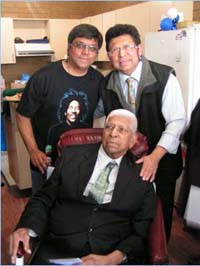 Entering Wesley from the gate at Campbell Place the room straight up was the 2nd STD. My 1st master was called by the boys Thepa John. He used to play pocket billiards quite a lot. He was followed by Mr.Gnanapragasm who was a mathematical genius. He would write down a row of figures and another line below and ask us to add them. Without waiting he would write down the answer from the left. We were informed he had been taken to the lunatic asylum. His wife noticed his peculiar behaviour becoming more erratic.
Entering Wesley from the gate at Campbell Place the room straight up was the 2nd STD. My 1st master was called by the boys Thepa John. He used to play pocket billiards quite a lot. He was followed by Mr.Gnanapragasm who was a mathematical genius. He would write down a row of figures and another line below and ask us to add them. Without waiting he would write down the answer from the left. We were informed he had been taken to the lunatic asylum. His wife noticed his peculiar behaviour becoming more erratic.
Among the other masters were Mr.SJC Schockman, “Kukul” Mr.A.H.De Silva with his finger slaps, Messers Lappen, FC Lemphers, LL Fonseka, SJV Chelvanayagam, Sinnathamby our science master, CV Honter, Sam Van Hoff, Eric Gunasekera and CP Dias. Head of all was Mr.H. Highfield. Vice Principal was Mr. PT Cash whose wife along with Mrs. Highfield conducted singing classes. Mr.LG Fernando changed his name to Weragoda. I was released at 3pm and attended the singing class in the library.
I cannot recall the names of our team. I think Mervyn Fernando and his brother Maxie was in the group. Anyway we were entered in the school singing competition held at the Public Hall later called the Empire theatre. We traveled in a lorry with several benches for seats. We beat all the Girls’ Schools. Wesley,Methodist, Bishpos, Ladies College and a Sinhalese Ladies School. The year were 1919,1920 and 1921. In 1921 we were place 2nd to Bishops College.
Many English Boys from Mt.Mary attended College and there were the inevitable fights. Carl Helsham was considered a local and McDonald who was much bigger started a rowalmost near the Bell rope. Carl smashed McDonald’s nose and with blood all over his white clothes was taken to the dispensary. L.J was a well know boxer and in a ring arranged in the assembly hall showed everyone what a knockout was. He slugged and knocked out Annesley Herft during the recession. Tops were the rage. Top fights and taws were common.
We played inter standard cricket on the grounds behind All Saints Church. Two incidents remain fresh in my mind yet. I was batting and AH Fallil was in the fielding side. He was standing at point almost at the end of my bat. I warned him he was too close but he remained there. I slashed at a ball which caught him full on his mouth. After First Aid we resumed play with Fallil standing on the same spot. My next shot went towards him and he hung on grimly to catch me out.
The next incident involved our captain Rex Anthonisz. He played a shot and ran forward expecting his partner to run, but he stuck at his post refusing to move. Anthonisz started walking back to his crease. The ball was thrown to Sperlin Van Dort keeping wickets who seeing Anthonisz walking towards him flung the ball at the wicket and missed. Still Anthonisz face red as a Jambu would not run. Anyway he reached his wicket safely.
From the Editor's Pen by Dallas Achilles - Transcribed from the Double Blue Magazine
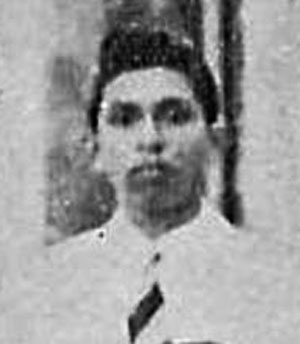 Valete: During the period under review here there have been many changes in the school. We lost the services of Mr.D.F.Abeysekera who left us at the end of the 2nd term last year to take up an appointment as Principal of Cathedral College Mutwal. Mr.Abeysekera’s link with the school was quite strong him being an old boy.
Valete: During the period under review here there have been many changes in the school. We lost the services of Mr.D.F.Abeysekera who left us at the end of the 2nd term last year to take up an appointment as Principal of Cathedral College Mutwal. Mr.Abeysekera’s link with the school was quite strong him being an old boy.
Upon obtaining his Bachelor of Arts degree he joined the school as a teacher in 1957. In 1958 he was the obvious choice as master in charge of Hockey which post he held until he left. What he did for College hockey is seen from its brilliant record . As the master in charge of the School Magazine he was an asset to the student Editors in 1958-59-60. We all join in wishing him every success in his new life.
Three other old boys on the staff have left us to take up appointment elsewhere. They are Mr. DB Welikala Mr. A.Salgado and Mr. Henry Rajapakse. Mr.Welikala it would be remembered took a keen interest in indoor gamed and was responsible for the revival of table tennis last year. We wish him and the rest every success in their new appointments.
Others to leave were Mr.Lionel Jayasuriya, WCB Perera, NEH Fonseka, KT Jesudason and Mrs.Anderson who taught in the Primary School. Unlike the others Mr. Jayasuriya has retired. Finishing a successful academic at Carey College he joined the College Staff in 1949 and after 11 years of valuable service has goodbye to us. Mr.Jayasuriya’s interests were wide and his guidance in many matters were sought by old boys and students alike. The post which bought him most success and honour was as Senior House Master of Passmore which he bought upto a Champion House in Athletics. We feel the Blue Blooded Boys will miss him a great deal. The other 3 members of staff mentioned left us to take up appointment elsewhere. Although Mr.WCB Perera’s connection with the school was short he certainly made his mark. In his first year he was the under 12 cricket coach. He was Master in Charge of Hillard and the 6th Form Union.. We wish him and the others many happy years in the future.
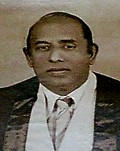 Mention must also be made of 3 prominent Wesleyites who left us. Mohammed Razark our Senior Prefect till the end of 1960 left us after an astonishing career at school. He was the very 1st Wesleyite to serve on the Quiz Kid’s Panel sponsored by Maliban Biscuits at Radio Ceylon and was easily the star among all the kids. Many were the times when the Quiz Master stated: There isn’t a single question that stumped Mohammed. Razark showed his prowess at sports as well and captained the College Soccer and Basketball teams. We wish all the best in the future life.
Mention must also be made of 3 prominent Wesleyites who left us. Mohammed Razark our Senior Prefect till the end of 1960 left us after an astonishing career at school. He was the very 1st Wesleyite to serve on the Quiz Kid’s Panel sponsored by Maliban Biscuits at Radio Ceylon and was easily the star among all the kids. Many were the times when the Quiz Master stated: There isn’t a single question that stumped Mohammed. Razark showed his prowess at sports as well and captained the College Soccer and Basketball teams. We wish all the best in the future life.
Another Wesleyite who gained the respect of all young and old was D Kodituwakku. Senior Prefect for only one term. He brought the Prefects Guild upto standard. Words cannot be found to express what he did for Wesley becoming one of the best Cricket Captains and Senior Prefects. The Editors being Prefects one would be inclined to think that in the following statement – they are praising their own tails.. This is not so, as we are trying to show our point regarding Kodituwakku as a sound leader. This statement we would like to add has been made by the higher authorities of the school – The prefects Guild under D Kodituwakku has been the best ever for many years.. He takes with him our warm gratitude and our best wishes for the future.
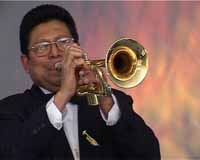 The last prominent Wesleyite to leave was LR Goonetilleke who departed from our midst at the end of the last year. He needs no introduction whatsoever as his achievements are well known throughout the island. In his school career he captured over 200 wickets in his 4 years. Upon leaving the College he continued his career playing for NCC. He played a part in helping them to win the Sara trophy for the year and his performances gained him a place in the under 35s team against the over 35s. He bowled extremely well and got 8 good All Ceylon wickets for 48 runs. He was also acclaimed as one of the most promising bowlers in Ceylon this year and was also chosen to play for Ceylon in the Gopalan Trophy match vs Madras. He certainly has brought credit to Wesley and we do not hesitate to say that he is one of the greatest bowlers ever to be produced by the school. He joins the band of best left arm bowlers of Wesley – L Barbut, RES Mendis nd Sammy Gunasekera. We feel sure he will continue to bring fame and honour to Wesley and we wish him the very best.
The last prominent Wesleyite to leave was LR Goonetilleke who departed from our midst at the end of the last year. He needs no introduction whatsoever as his achievements are well known throughout the island. In his school career he captured over 200 wickets in his 4 years. Upon leaving the College he continued his career playing for NCC. He played a part in helping them to win the Sara trophy for the year and his performances gained him a place in the under 35s team against the over 35s. He bowled extremely well and got 8 good All Ceylon wickets for 48 runs. He was also acclaimed as one of the most promising bowlers in Ceylon this year and was also chosen to play for Ceylon in the Gopalan Trophy match vs Madras. He certainly has brought credit to Wesley and we do not hesitate to say that he is one of the greatest bowlers ever to be produced by the school. He joins the band of best left arm bowlers of Wesley – L Barbut, RES Mendis nd Sammy Gunasekera. We feel sure he will continue to bring fame and honour to Wesley and we wish him the very best.
Salvete: We express our warm welcome to Mr.Kirupairajah who has spent a successful 2 years at Miami University USA. During his stay at the States he received the Bachelor of Science in Education and the Master of Education degrees. We congratulate him on his success. He also achieved National recognition when he was invited to participate in the Ambassadors for Friendship tour operated jointly by Macalester College USA and the Readers Digest. Since only a highly selected group of students from the entire States were chosen for this adventure in International understanding this was a single honour which reflects credit to Mr.Kirupairajah, Wesley College and Ceylon.
 Other Staff News: We congratulate Mr. A D’Abrera on his being selected to lead the Ceylon delegation to the WCOTP Conference in Amsterdam. On the trip he visited Switzerland France Italy Germany and Egypt. In England he was the guest of the British Council. At the Conference he was invited to talk on vocational and Technical education. We are sure his talk would have impressed everyone present for he was elected to the special committee to report on Vocational and Technical education. At present he is in the process of preparing a memorandum to be presented to the WCOTP. He is the only member of the Wesley College staff to hold a high post in the Ceylon Teachers Union being its Vice President 1960-61. Word has just reached us that he has been invited by WCOTP to New Delhi and introduce the theme ”The recruitment training and retention of Technical and Vocational Teachers for the purposes” of the Conference. He will be leaving us a again shortly and if he accepts the invitation we can look forward to more interesting tales of his travels.
Other Staff News: We congratulate Mr. A D’Abrera on his being selected to lead the Ceylon delegation to the WCOTP Conference in Amsterdam. On the trip he visited Switzerland France Italy Germany and Egypt. In England he was the guest of the British Council. At the Conference he was invited to talk on vocational and Technical education. We are sure his talk would have impressed everyone present for he was elected to the special committee to report on Vocational and Technical education. At present he is in the process of preparing a memorandum to be presented to the WCOTP. He is the only member of the Wesley College staff to hold a high post in the Ceylon Teachers Union being its Vice President 1960-61. Word has just reached us that he has been invited by WCOTP to New Delhi and introduce the theme ”The recruitment training and retention of Technical and Vocational Teachers for the purposes” of the Conference. He will be leaving us a again shortly and if he accepts the invitation we can look forward to more interesting tales of his travels.
 Congratulations to : NAB Fernando who has entered the bonds of Matrimony
Congratulations to : NAB Fernando who has entered the bonds of Matrimony
Condolences: Our heartfelt condolences to Mrs. GS White on the loss of her husband. Mr.V.Chanthirasekeran on the loss of his brother. Mr V Thirunavukarasu BA, S.Mendis and G Mendis on the loss of their father. C Jinadasa whose father died suddenly this year. AJ Hensman on the loss of his father who died suddenly in England.
Double Blue 61: Wesley is now a Private Non Fee Levying School and has entered as it were a new period in the history of the school. We would like to mention that despite the withdrawal of Government aid, every facility that has been provided in the past has not will not and need not suffer. In fact now that we are private more facilities will be provided. Thus in publishing this years magazine we would like to point out that this is an important facility too; and this years issue is unique for the fact that it is the 1st to be published by Wesley as an unaided Private School. It is still more unique for the fact that this years issue is for the very first time in the history of Wesley being run entirely by students.
True, ever since 1940, the students were in charge – but they always had a staff advisor or a master in charge. This year a new record has been setup for the Magazine Committee comprising of students in the senior forms are totally responsible for its publication. We hope The Double Blue 1961 to their taste as we have spared no pains in retaining a high standard. We would like to thank the Principal, members of staff and the boys for their wholehearted cooperation and encouragement which made our task a great deal easier.
Late Comers: In spite of repeated warnings there is still a large batch of late comers to school every day. Punctuality is a noble virtue and a man who adheres to the exact time of appointment or attendance is a man to be admired. The school is the first place where one obtains a training not only in education but also in learning to be a man. The perpetual late comers do not realise this and unaware that they ruin their future life as well as their school life. For as the Principal stated on the Primary School Prize day “Punctuality is indispensable for steady and successful work” We strongly urge the boys to be more punctual in the mornings.
College Uniform: Still a large number of boys fail to adhere to this rule. Any Wesleyite who wears a fancy costume and attends school should be ashamed of himself. Little does he realise that he is actually a fish out of sea and has no right to be seen along with true Wesleyites. We hope the boys in future will respect this rule and be dressed like Wesleyites.
 New Tuck Shop: After many years as the Tuck Shop Manager Mr.D.S.Wijemanne has decided to close down his shop. On behalf of all the boys we would like to record our appreciation of the services rendered the school as an efficient caterer. The new Tuck Shop is being built by the College Woodwork Dept on the foundations of two old wooden classrooms. The new shop seems to be spacious and we wish its committee all success in their venture. “Wadey” and Ice Cream Stall. We wonder how many boys are aware of this small stall which is being successfully run by Mrs.Nonis and Miss Iris Blacker at the back compound of the Principals Bungalow during the short interval. The Purpose of this stall is t discourage the boys from patronising the Hawkers on the roadside whose good are exposed to the most un hygienic conditions.
New Tuck Shop: After many years as the Tuck Shop Manager Mr.D.S.Wijemanne has decided to close down his shop. On behalf of all the boys we would like to record our appreciation of the services rendered the school as an efficient caterer. The new Tuck Shop is being built by the College Woodwork Dept on the foundations of two old wooden classrooms. The new shop seems to be spacious and we wish its committee all success in their venture. “Wadey” and Ice Cream Stall. We wonder how many boys are aware of this small stall which is being successfully run by Mrs.Nonis and Miss Iris Blacker at the back compound of the Principals Bungalow during the short interval. The Purpose of this stall is t discourage the boys from patronising the Hawkers on the roadside whose good are exposed to the most un hygienic conditions.
Campbell Park: Now that Wesley is private we would like to urge the authorities to consider a long term plan in improving the conditions of the Park and Pavilion. Until a few years back we had one of the worst scoreboards amongst schools, but thanks to Mr.LA Fernando and his family the more presentable present scoreboard now adorns the park. Some years back before the Highfield memorial Block began to take shape the boys were asked to volunteer to dig up the place and save the cost of manual labour. The same could be done regarding the grounds. After all a cricket team of the sort we have deserve better playing facilities.
New Features: From the 2nd term 1961 two new features will be introduced to the school curriculum. These are the GCE Advance Level Classes and Nursery Classes.
Drama Society: This Society which has been dormant for over 2 years has certainly revived itself with a big bang. A tremendously successful Inter House Drama contest was held and the standards dislayed by all 4 houses were very high indeed. Judges Mrs. Marjorie Jayasuriya, Miss Mallika Wanigasuriya, and Mr. George Wickramasinghe were very much impressed by the plays staged and after much deliberation awarded the 1st place to Moscrop House. Wilkin was a close second while Passmore and Hillard tied for the 3rd place. We commend the Society for their splendid work in keeping drama on the College map and we look forward to many more features presented by the.
Maliban Quiz Kids: We have had the honour of having 3 Wesleyites Mohammed Razark, Lakshman De Silva and Hosni Marrikar serving on the regular panel of Quiz Kids since its inception. To MA Razark falls the honour of being the very 1st Wesleyite to serve on such a panel and his wide general knowledge was an asset to him and made him the star Quiz Kid. L De Silva served for a short while MH Marrikar served on the panel for practically the whole of last year. His varied interests soon made him an able successor to MA Razark and very soon became the star of the whole panel.
A New Record: For the very first time in the history of the 14th Colombo Scout Troop a scout has gained the Scout Chord. This is a rare honour for junior P.L.Ravindra De Silva. It is the highest award a junior scout(under 15) can gain. The Scout Choir is a braided lanyard in Scout green and is worn on the right shoulder. To be awarded the scout chord a scout must hold the 1st Class badge and 6 proficiency badges 2 of which should be selected backwoodsman, camper, cook, stalker, starman, weatherman, and woodcraftsman. He must also be under 15. We congratulate Ravindra De Silva on his unique achievement. The 14th Colombo Scout Troop already has one Queen Scout and 2 First Class Scouts which is quite a good record. We Compliment the GSM Mr. Abraham on his successful Troop.
College Garden: We regret that the appeal made by us in last years “Double Blue” has fallen upon deaf ears. The junior boys have continued to find the front lawn a convenient playground during the short intervals and the once beautiful garden is now anything but a garden. The boys are to be blamed for this sorry state and we feel that steps should be taken to prevent any further damage.
College Servants: The Editors of the Double Blue 1960 would like to apologise for the typographical errors which appeared in last years magazine concerning the college servants. Ranis is well in his 50th year of service and we heartily congratulate him. Silva has completed 48 years and is still going strong into his 49th year; while Wilbert is well on his 43rd year. We congratulate them on their loyal service to the school which they have grown to love.
The Library: There is in the library a large glass topped table containing a map of a part of Ceylon. This huge table is taking up valuable space which could be used by more chairs providing more seating accommodation. We would like to suggest that this table be removed either to the Geography room where it rightfully belongs or to the Library corridor.

It is indeed a wonderful experience to look back on one’s life 50+ years after leaving school. I was 18 then, life was beautiful and saw the world in vivid technicolor. Disagreements disappointments and the heartaches seem to be all forgotten and all I can remember now are the pleasant memories of happy times. I recall the sunshine and the warmth and not the monsoon rains. Anecdotes and images appear at random. The innocence of the fifties gave way to the cynical and raucous sixties. Beatles and Elvis Presley were still riding high in the Hit Parade. The hippy culture of sex, drugs and rock and roll made the headlines and set the pace. My most enduring memories of the 6th Form days continue to haunt me.
The Upper sixth was the culmination of 12 years of tutelage at Wesley College. I had reached the top of the pile. On a cold January morning I climbed the steps in front of the school office and found my way up the wooden stairs by the Physics lab. On reaching the top there was the unmistakable pungent smell of acids and alkalis wafting across from the Chemistry lab. Down 2 steps and I was on the corridor leading to the Biology lab where the acrid smell of formalin greeted me. This was to be my domain for a memorable 2 years. On many occasions I have looked out of the Biology lab window towards the Principals bungalow. It had a lovely porch and verandah and a well manicured lawn surrounded by large spreading Flamboyant trees. This picture still haunts me.. I think this idyllic scene brought some calmness and serenity to the rowdy bunch that formed my class.
From the “Biology”corridor there was a lovely view of the front drive, The Great Tamarind tree and the Welikada Prison and the steady stream of Morris Minor cabs, red Leyland buses and bullock carts. There was a rather lonely road just in front of the school gates leading away from Baseline road by the tall perimeter wall of the Prison. This went in the direction of Wanathamulla. Every morning the prisoners wearing white were taken along this narrow road by the Guards in Khaki shorts. Being so close to the prison for over a decade I had often let my mind wander about the life of those in jail. For many of us the prison is a dark mysterious place. Very few knew what happened behind the grim gates that swallowed the convicts. We imagined that its inhabitants were desperate and dangerous criminals. In our minds the place was associated with isolation, humiliation and suffering which were all part of the punishment. Sometimes the sheer lack of privacy and at other times the loneliness of solitary confinement must be soul destroying. Time then is not a luxury but a burden to endure. A few had the benefit of work and exercise. I would hate to think of what food they received and the many who walked out how they faced the world again.
Our formidable challenge was to sit the extremely competitive and daunting University Entrance Examination in 2 years.
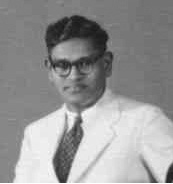 Charles Yesudian taught us Zoology. He was one of many fine South Indian teachers who came over to Ceylon in the 1940's to share their knowledge. Mr.Yesudian was from the Southern tip of Cape Cormarin in Nagercoil. He was always smiling and had a benign and calming effect on everyone. His amiable sense of humour was always close to the surface. He was such a kindly father figure and a mentor to all. Popular and respected, he taught with authority and dictated his lectures, which all the students copied down. It was well known that if you could get a full set of his lecture notes you would all pass with flying colours.
Charles Yesudian taught us Zoology. He was one of many fine South Indian teachers who came over to Ceylon in the 1940's to share their knowledge. Mr.Yesudian was from the Southern tip of Cape Cormarin in Nagercoil. He was always smiling and had a benign and calming effect on everyone. His amiable sense of humour was always close to the surface. He was such a kindly father figure and a mentor to all. Popular and respected, he taught with authority and dictated his lectures, which all the students copied down. It was well known that if you could get a full set of his lecture notes you would all pass with flying colours.
Senior students would handover these notes to the juniors. We were immediately impressed by his considerable intelligence, ability and above all his energy. He set tremendously high standards for himself and for his students. His transparent enthusiasm for Biology was quite contagious and always extracted the best from us all. He is one of the most extraordinary characters I have met in my life. He spent his life studying and teaching biology. I have never known anyone with a better knowledge of it. He was meticulous and methodical . We couldn’t have had a better preparation. The dissections of shark, rat, toad, cockroach, prawn and earthworm were repeated over and over again.
His rolling South Indian accent still rings in my ears. We used the Grove and Newell’s textbook.He had his own library of well thumbed volumes of Zoology books from Darwin to the popular Penguin books “ Animals without backbones”
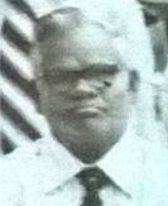
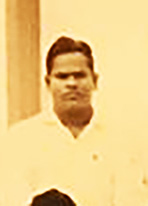
Botany was taught by Suntharalingam. Without being unkind to him it would be fair to say he lacked teaching experience to tutor at this level. He covered the syllabus but had difficulty in controlling the class. His sentences seriously fractured Queen’s English. His teaching sessions were a riot and 45 minutes of mayhem. I remember someone asking him why monkeys have tails in front and at the back. The text was Lowson and Sahni and sometimes Pulimood and Joshua.
LA Fernando was the Chemistry teacher. He was excellent and commanded respect and received it. He was a most impressive teacher and I admire him for the effort he put into his teaching and his magnificient attempts to get us through the exams. Mr L.A Fernando brought to the school, the classroom and his life as a Vice Principal a regal grandness of purpose and possibility. All of those who knew him were lifted by it, and there are many. We are greatly indebted to him as a Teacher, Philosopher, Preacher and Raconteur. Mr. Fernando urged the students to achieve what they didn't think they could. He provided pastoral care to those in trouble, financial or otherwise.
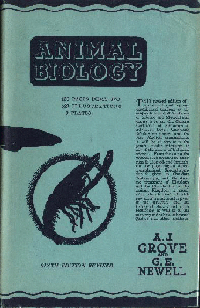 |
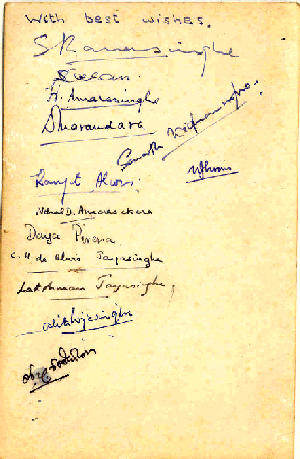 |
For Inorganic chemistry we used a book by Prescott or Lowry and Cavell. For Organic Chemistry it was a book by P.J Durrant. For laboratory work we had Browning and Joseph’s book edited by Prof. E.L Fonseka.
Our Physics guru was Mr V Chanthirasekeran, the quaint, gaunt, saint. He was a good reliable teacher. He was a quiet man who rarely smiled and had an air of authority. V.C had an excellent knowledge of the subject. He was a very fine teacher who gave us confidence in his ability to teach at this level. I recall the many physics practicals he worked out for us and the scores of difficult sums from the past question papers. He went through them like a knife through butter. We used the popular Nelkon's Physics book . After some years he left Wesley to work in Zambia and then in Toronto where he died at the relatively young age of 66.
We had a few English classes too taken by Mr David Joseph. This was a breath of fresh air. There were no essays to write and all we did was to listen and contribute to the discussion. He discussed topical issues, politics, religion and philosophy. I remember a discussion about imagery by our public speakers. Mr.D.S.Senanayake in a speech said “ with our eyes looking towards the stars and the feet firmly planted on the ground let us walk boldly towards freedom”. These erudite discussions were well received.
When in London in 1974 I asked a friend the directions to the Ceylon Students Centre. He asked me to get off at the Lancaster Gate Tube Station and follow the Curry smell. He was absolutely correct. I was so pleased to see Mr.Joseph at the Students Centre. Over a “buth curry” we spoke of the good old days and the not so good idiosyncracies at Wesley. He had finished a teaching assignment in Ethiopia and was on his way back home before the horn of Africa erupted into civil war.
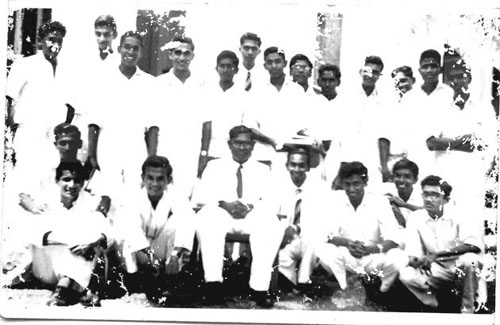
R.Somanathan, LAFA's nephew !! (Geethal De Silva?), D.M. Arandara, Sarath Ranasinghe, N.J Nonis, C.H De Alwis Jayasinghe, L.S.Jayasinghe, AS Ratnam, Gnanakrishnan,, Rohan Wijesinghe, Siyamala Carson, Ranjith Alwis, Sarath Wickramaratne
Seated L to R:
L.C.R Wijesinghe, Daya Perera, Sheriff Fallil, Mr.C.Yesudian, Ranjith Jegasothy, Hamilton Amarasinghe, C.Sathyanathan, N.D Amerasekera
The School Prefects of 1960
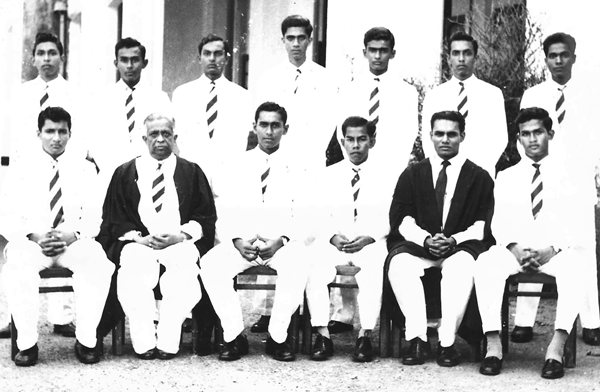
Seated L to R: Daya Perera, Mr PH Nonis, D Kodituwakku (Senior Prefect), AC Wijetilleke, Mr L A Fernando, Sheriff Fallil
Fifty years is a long time to remember friends particularly not having seen many of them. Interestingly I remember a great deal but not having seen so many of my school pals it is difficult to place the names to their faces. Daya Perera started life at Wesley with me in the 2nd STD. Then they lived in Gunasekera Lane just by All Saints Church Borella. On Numerous occasions he has entertained us there. He pursued a career in medicine and is now an Anaesthetist in Los Angeles California. Daya and his wife Swarna were excellent hosts when we visited him. Daya sadly passed awayon the 4th of November 2003.
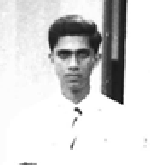 |
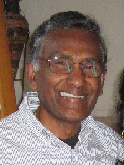 |
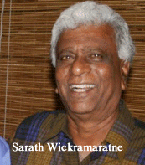 |
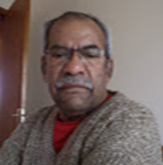 |
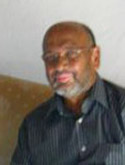 |
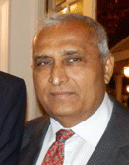 |
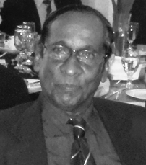 |
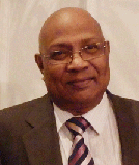 |
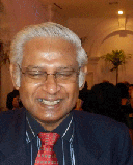 |
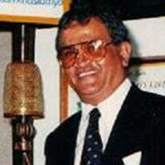 |
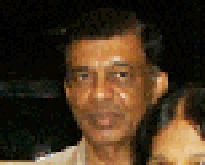 |
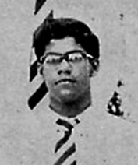 |
R.Somanathan after a degree in Chemistry at Peradeniya is now an Associate Professor at the University of California in San Diego. He joined Wesley from Uva College Badulla and lived in Agratenne estate near Passara. We were in the boarding together for many years. I traced him after many decades with the help of Nissanke Dassanayake who is now in Texas USA. Lakshman Jayasinghe came to Wesley from Kingswood College and joined us in the 4th Form. He quickly settled in and made his mark as a hard working student with a will to succeed. He is now a Consultant Radiologist in Brisbane. Harold De Alwis Jayasighe was a very tall man from Etul Kotte who could have easily made a living plucking coconuts but decided to study Agriculture - not far from the coconut trade. After a degree in Agriculture is a Director of Agriculture in Sri Lanka. Harold was a man of principles and never involved himself in the riotous behaviour which was our trade mark.
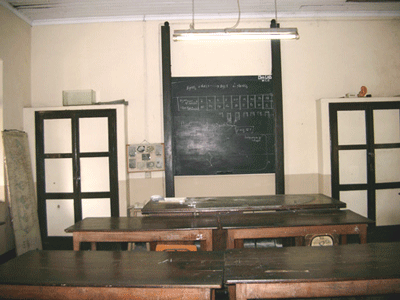 Sarath Wickramaratne joined school before me in the Kindergarten and travelled daily from Mattakkuliya near the Old Victoria Bridge. Sarath completed a degree in Agriculture and is a Director of an Agro-Chemical Company in Sri Lanka. As they say "he could sell a freezer to an Eskimo". Sarath was a wiry chap with flexible joints which helped him to bowl with a contortionist action and is now a fine Golfer. Andrew S Ratnam qualified in Medicine in South India and is an Orthopaedic Surgeon in Scotland. Sheriff Fallil changed his name to Sheran De Alwis. Sheriff was a bright chap but decided to enjoy the fruits of life as a teenager. He cycled daily from Hampden Lane Wellawatte after his stint as a boarder at Wesley. He was fun to be with and was the life and soul of any party. After some years as an Upcountry Planter now lives in Australia. The last I spoke to him on Skype was a Senior Manager in a Plantation in Sabah, East Malaysia. Y Sathianathan and Gnanakrishnan became Engineers after degrees from Peradeniya. Sathianathan worked as a Chief Engineer at the Uda Walawe Scheme. I met him in Darwin, Australia when he and his wife took us out for fine dinner. We chatted warmly of our time at school.
Sarath Wickramaratne joined school before me in the Kindergarten and travelled daily from Mattakkuliya near the Old Victoria Bridge. Sarath completed a degree in Agriculture and is a Director of an Agro-Chemical Company in Sri Lanka. As they say "he could sell a freezer to an Eskimo". Sarath was a wiry chap with flexible joints which helped him to bowl with a contortionist action and is now a fine Golfer. Andrew S Ratnam qualified in Medicine in South India and is an Orthopaedic Surgeon in Scotland. Sheriff Fallil changed his name to Sheran De Alwis. Sheriff was a bright chap but decided to enjoy the fruits of life as a teenager. He cycled daily from Hampden Lane Wellawatte after his stint as a boarder at Wesley. He was fun to be with and was the life and soul of any party. After some years as an Upcountry Planter now lives in Australia. The last I spoke to him on Skype was a Senior Manager in a Plantation in Sabah, East Malaysia. Y Sathianathan and Gnanakrishnan became Engineers after degrees from Peradeniya. Sathianathan worked as a Chief Engineer at the Uda Walawe Scheme. I met him in Darwin, Australia when he and his wife took us out for fine dinner. We chatted warmly of our time at school.
M.Hisni Marrikar studied Law and practiced for a while as a Proctor . He was known for his vice cracks, quick wit and being a Maliban Quiz Kid. I was saddened to hear of his sudden demise in his early forties while taking a stroll in Colombo. Lalith Wijesinghe L.C.R was the cricket captain of the school and a popular figure. He never had time for study. After the 6th form he taught at school until 1974 when he left for England. Lalith qualified as a Geologist in London and worked in the Middle East for many years. He now lives in Kandy enjoying his retirement. We are now in regular contact. Rohan Wijesinghe joined Wesley in 1953 and travelled daily with me from Nugegoda by the narrow gauge KV line. He was a fine sportsman and a refined human being unlike the rest of us in the class. Mr. Yesudian encouraged him to take to the Ministry and is was a Reverend in Toronto. He too is retired but takes on part time work as a pastor.
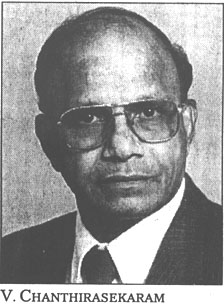 Nihal Nonis was the Principal’s relative. He entered the Medical Faculty and retired as a Consultant Physician in Sri Lanka. He took on the honorable job as the Registrar of the Sri Lanka Medical Council. I can remember some other faces from those years but sadly the names have been erased from my memory. Sarath Ranasinghe joined us in the lower sixth form from Veyangoda Central and was a brilliant scholar. He was awarded the Hill Medal for his performance at the University entrance exam.
Nihal Nonis was the Principal’s relative. He entered the Medical Faculty and retired as a Consultant Physician in Sri Lanka. He took on the honorable job as the Registrar of the Sri Lanka Medical Council. I can remember some other faces from those years but sadly the names have been erased from my memory. Sarath Ranasinghe joined us in the lower sixth form from Veyangoda Central and was a brilliant scholar. He was awarded the Hill Medal for his performance at the University entrance exam.
As his sojourn at Wesley was short we cannot expect him to have the same nostalgic attachment as the rest of us. Nevertheless he still speaks warmly of his time in the 6th Form. He is now in Private Practice in Kandy. On my visit to Melbourne it was indeed a great pleasure to meet Hamilton Amarasingha. He has retired after a long and distinguished career with the Katunayake Airport Authority. He was spending quality time with his two daughters in Melbourne and the grandchildren. It was lovely to meet with him on his visit to London in the summer of 2018 when we enjoyed a lunch together in a Pub in St John's Wood.
I must say my career path was never as distinguished as many of my contemporaries. Still, my claim to fame can be that I once walked amongst them !!
When I started in the 6th Form Mr PH Nonis was the Principal. He gave the sixth formers the freedom to walk in and out of school at will. At last we were treated like adults. I cannot remember any gross misuse of this privilege. On occasions when there was a free period, and we had many, the whole class walked out of school and roamed the streets, Victoria Park and sometimes the Colombo Museum laughing and joking. These were happy times. I saw more films in those 2 years than I ever saw again.
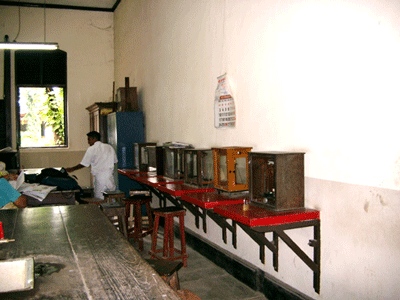 We learnt the short cuts to the Regal. Savoy, Liberty and Majestic waving our Rs.1.10 for a ticket. Mr. Nonis left in 1961 and Mr. Wirasinghe took charge. He maintained this freedom of the sixth form when many of us were Prefects and Daya Perera became the Senior Prefect. We propped up the side walls of the great hall during assembly. The antics in the Prefects Guild was seen to be believed. Occasionally a hapless student was taken in for questioning and we made certain his misdemeanours weren’t repeated. The battle of the Sixes was a cricket match between the Arts and Science students in the 6th Form. It was a wonderful occasion of fun and privilege when the rest of the school was hard at work.
We learnt the short cuts to the Regal. Savoy, Liberty and Majestic waving our Rs.1.10 for a ticket. Mr. Nonis left in 1961 and Mr. Wirasinghe took charge. He maintained this freedom of the sixth form when many of us were Prefects and Daya Perera became the Senior Prefect. We propped up the side walls of the great hall during assembly. The antics in the Prefects Guild was seen to be believed. Occasionally a hapless student was taken in for questioning and we made certain his misdemeanours weren’t repeated. The battle of the Sixes was a cricket match between the Arts and Science students in the 6th Form. It was a wonderful occasion of fun and privilege when the rest of the school was hard at work.
We spent most of our time at school in the Biology Lab. Often we did not go for assembly and remained there chatting. Because of our long association with the labs we got to know the Attendants who looked after them. Rodrigo was in charge of the Chemistry labs. He was a grey haired tubby chap wearing shorts and short sleeve shirts. He was ever so kind and sometimes helped us with the experiments. The rows of bottles of reagents arranged at the middle of the wide tables is a picture I will never forget.
We always sat on tall uncomfortable wooden stools. Harris looked after the “Bio” lab. He got us the animals for dissections and maintained the room in good order. Many of the specimens in formalin were collected by Mr.Yesudian . Physics lab was looked after by "garandi" Silva who has been at the school 49 years. He was a grumpy old man in thick round glasses. He had a bicycle parked inside the lab. He could hardly walk and it amazed me then how he could cycle. The apparatus there were as old as Silva and a disgrace to the school. All these “servants” apparently lived in the school most days and was like part of the furniture. They all served Wesley well.
 I must not give you the impression that it was all fun and games. although I have always wanted to be one of the gang I was deeply aware of my goal to enter Medical College and never stopped working for it. On looking back my stamina for work at the time amazes me still. There were the syllabuses to cover and the revision to do and there was no end to the work.
I must not give you the impression that it was all fun and games. although I have always wanted to be one of the gang I was deeply aware of my goal to enter Medical College and never stopped working for it. On looking back my stamina for work at the time amazes me still. There were the syllabuses to cover and the revision to do and there was no end to the work.
In the lower sixth life was easier and we made full use of it. We watched the cricket matches with great keenness as we had our own man Lalith Wijesinghe in the team. We became active spectators attending in large groups. The highlight of the lower sixth was the School Fete with an excellent science exhibition. Soon the upper Sixth was upon us and the work began in earnest. The Exams were held in December. We had 3 months of virtual study leave as most syllabuses were covered. We went to school on odd days to do some practicals.
The tension was getting to us and life became hard. There were stories that the exam papers had leaked as it often happened. The theory exam was held at Visakha Vidyalaya in Bambalapitiya and the Practicals at the University at Reid Avenue. The results were posted to us in March. On that fateful day Sarath Ranasinghe and Lakshman Jayasinghe received letters inviting them for an interview prior to entry to Medical College. I was disappointed but not surprised not to receive an invitation.
Several days passed and I had arranged all my books for a second assault in December. Many commiserated with me which I think I accepted with grace. It was Mr,LA Fernando who personally brought my letter which had been mislaid by the post office. I was ecstatic and he was too. I sold all my books and celebrated not with a drink as we would do now but by going to the Cinema which in those days was a special treat.
I remember my last day at school. I went to assembly virtually through the back door and sat in the balcony. After being in this protected environment I was at times fearful of feeling lost in the big world outside. The world was spinning around me. There was a cricket match that day and the boys sang the school song. I couldn’t hold back my tears but was too shy to show it. I stayed behind for the short Christian Service. Mr.L.A.Fernando read a passage from the Bible and we all sang
Pilgrim through this barren land
I am weak but thou art mighty
Help me with Thy powerful hand."
 |
 |
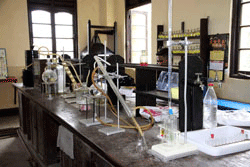 |
 |
It is my favourite Hymn and I thought we lifted the roof as we sang. I have now a recording of this Hymn sung by the Kings College Choir Cambridge to remind me of my last day at school. I remember walking back to my usual haunt the Bio lab where the boys had gathered on this final day. Wesley has been my whole life so far. It was strange and desperately sad to leave the life I knew and loved. But there was a whole new world before me. Saying goodbye to my friends must have been the hardest thing I’ve had to do. We vowed to meet up again in 20 years, in the Bio lab.
More than forty years have now passed and those vows remain unpaid and forgotten. I still recall my lonely walk after the good byes and seeing over my shoulder the magnificent buildings of the school. An image that has stayed with me ever since. Even after all these years it pains me deeply to think of the Principals, teachers and students who have now departed this world and was then an important part of my life. If I ever have a regret it is that I should have shaken the hands of all the teachers on my last day at school from the Primary School upwards for many of them I never saw again.
During my 5 years in Medical College I may have visited the school twice. Each time I found myself a stranger in the place which was my home for over a decade. My friends had left by then and some of the teachers too. The loss of the Small Park was a heavy blow to many of us. I was not to set foot on those hallowed grounds again for another 20 years. In those years I left Sri Lanka, carved myself a career and raised a family. I often spoke to my 2 sons of the halcyon days at Wesley College and it was they who wanted to see this magical school they have heard so much about.
It was a most memorable trip in 1992 when we visited the hostel, classrooms, assembly hall, library and walked along the narrow paths amidst the lovely flamboyant trees then in full bloom. Mr. Wijemanne greeted us with a broad smile and took us to his new Tuck Shop. He was a man who was there when I started school in 1950 and when I left in 1962. We reminisced at length. It pained me to hear of his death some years later. The long corridors and the notice boards had the feel of the 1950's but a lot has changed mostly for the better. I left with my affection for the school rekindled. It was not until the new millennium did I have the time to look back ,recall and write about my life and friends . The sixth form years were the best I've had at school.

In those days for anyone studying the Sciences the choice was rather limited, being confined to Medicine, Biological Sciences, Agriculture and Engineering. There was a belief that entry into Medical College was a passport to Nirvana. That was just an illusion which for a few turned out to be a nightmare. It was only the beginning of a long struggle with busy days and sleepless nights. I hope this popular misconception has now been properly addressed. If I am allowed to be cynical - it is no more a noble profession but a kind of business making a living on others' misfortune, just like the lawyers. A "Medical Mudalali" is a term more suited as avarice and greed has taken over this profession. As I look around the various professions their nobility has been eroded by the pressures of modern living. As a 6th Former in the sixties I wasn't to know all that.
A professional career with its disruptive routines and untold strain on my time and leisure has invariably taken its toll. I now look forward to the end of my career with the same excitement as its beginning. Going back to that January morning climb up the wooden stairs I would never have imagined life would turn out this way. Call it destiny or the will of God, good fortune has been on my side most of the way.
Fifty years on... where are they now ( Added October 2011)
The human brain is a remarkable archive of memories that can be recalled instantly and repeatedly. Although it is 50+ years since I left school those memories of my sixth form years still remain so fresh. The 2 years we spent there were among the best years of my life. Life was filled with probing conversations about sex, politics, religion and cricket. Despite the gruelling schedule and the punishing regime we had time to behave like teenagers. There was infectious laughter in the corridors. But behind fun and games there was alertness to everything going on in class. I recall going to bed about 11 and falling asleep surrounded by piles of paper and books with only my black cat for company. Finally impressive hurdles were overcome.
Going to the cinema was a treat in itself. The discipline and hard work brought us closer together. Somedays we managed to sneak out of class and roam the streets of Colombo. How we managed to do this despite the strict discipline, baffles me still. Perhaps it helped that we had with us the Senior Prefect, Daya Perera with us at all times. Vihara Maha Devi Park was a popular venue. Our teachers understood well the pain and stress of it all. They gave us their time and taught us beyond the call of duty. In those years I stepped on the treadmill and remained there until I retired in 2007.
 On a warm summer evening as I sit out in the garden with a glass of wine these memories come easily to mind. The friendships I enjoyed and the fun and laughter in the Biology lab are precious recollections. Thankfully many who shared my life in the 6th Form enjoyed successful careers. Whilst some have retired others continue to serve their communities. The passage of years must have changed us all as we embarked on our lifes journey with demanding careers , marriage and children and even grandchildren. As I meet them now their boyish looks have all but disappeared. I see the lines and furrows in their faces, the result of the inevitable trials and tribulations of a long and tortuous journey. The thick head of black hair is replaced by thin grey strands. The ravages of time has certainly taken its toll. Somehow, many have retained the smile from long ago and the ability to laugh and joke about events of the intervening years..
On a warm summer evening as I sit out in the garden with a glass of wine these memories come easily to mind. The friendships I enjoyed and the fun and laughter in the Biology lab are precious recollections. Thankfully many who shared my life in the 6th Form enjoyed successful careers. Whilst some have retired others continue to serve their communities. The passage of years must have changed us all as we embarked on our lifes journey with demanding careers , marriage and children and even grandchildren. As I meet them now their boyish looks have all but disappeared. I see the lines and furrows in their faces, the result of the inevitable trials and tribulations of a long and tortuous journey. The thick head of black hair is replaced by thin grey strands. The ravages of time has certainly taken its toll. Somehow, many have retained the smile from long ago and the ability to laugh and joke about events of the intervening years..
In all honesty many of us had no clear idea what we wanted to do with our lives and no idea how University was going to help us figure it out. In a rather confused manner we believed in following our hearts, listening to our parents, believing our instincts, and trusting our intuition. When many of our friends were enjoying their teenage years living the good life we were burning the midnight oil. There were times we felt we missed out and wondered if it was all worthwhile. Some of us had the single-mindedness and self-belief. Our teachers during those years worked tirelessly to prepapre us for the examinations and also for life. They inspired almost evangelical devotion among their students.
In all their endeavours, their kindness, humour and charm made them much loved and enormously respected by us all. Our teachers were uncomplicated men and dedicated professionals. They changed our outlook on life and were mostly responsible for our success. Mr Yesudian was our mentor and father figure and many us owe our careers to this great man. The film "Goodbye Mr. Chips" comes to mind as I think of the great teachers of our era.
These 50 years have been costly too, in terms of life. Mr Yesudian passed away on the 23rd of June 2006, Mr Sunderalingam and Mr L A Fernando passed away in SL and Mr.Chanthirasekeran in Toronto Canada on the 25th of May 1997.Mr David Joseph who taught us English passed away in Papua New Guinea in 1978.
R. Somanathan Associate Professor of Organic Chemistry at the University of San Diego USA
Dr Nihal J Nonis : Retired Consultant Physician now living in Colombo. He is the Registrar of the Sri Lanka Medical Council, a prestigious position of great honour.
Hamilton Amerasinghe: Retired from an executive post at the Katunayake Airport. he now shuttles between Colombo and Melbourne visitng his grandchildren.
Lalith (L.C.R) Wijesinghe: He worked as a Geologist retiring after a successful career in the Middle east
Milton Arandara is a Consultant in the lucrative Gem industry in Colombo. It was a great pleasure to see him at the Grand Reunion dinner at the Galle Face Hotel in Sept. 2012. We reminisced a great deal about our time at Wesley and the good life in the 6th Form.
Sheriff Fallil: Worked in the Plantation Industry in Upcountry Tea Estates in Sri Lanka. Then he moved to Sabah, East Malaysia and then to Monrovia, Liberia, West Africa. He was a respected Senior Manager. Sheriff finally retired and settled down with his family in Perth, Western Australia, where he passed away in 2017.
C. Harold De Alwis Jayasinghe: Retired as a Director of Agriculture in SL. I met him at the Reunion in 2012 when he was about to leave for Alberta, Canada to settle down.
Dr L S Jayasinghe: Consultant Radiologist in Brisbane, Australia - still busy at work
Sarath Wickramaratne: Business executive in Agricultural Products in Sri Lanka
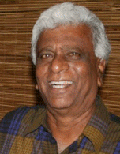 Ranjit Alwis: He was the Managing Director of an Accountancy firm in Adelaide, Australia when I met him on my Australia Tour of 2009. It was such good fun to be with him and his wife Laki. They showed me all the delightful sights in Adelaide and took me to the Adelaide Cricket Grounds the venue of many Ashes tests over the years. He was winding down his lucrative Accountancy firm to begin a well earned rest in retirement. Ranjit sadly passed away in February 2021
Ranjit Alwis: He was the Managing Director of an Accountancy firm in Adelaide, Australia when I met him on my Australia Tour of 2009. It was such good fun to be with him and his wife Laki. They showed me all the delightful sights in Adelaide and took me to the Adelaide Cricket Grounds the venue of many Ashes tests over the years. He was winding down his lucrative Accountancy firm to begin a well earned rest in retirement. Ranjit sadly passed away in February 2021
Yogan Sathianathan: Tax Consultant in Darwin, Australia. Yogan sadly passed away on the 10th of August 2016
Dr Sarath Ranasinghe: Sarath is a respected Paediatrician in Kandy in Private Practice. He was there at the Reunion in Sept 2012. We reminisced about those happy times at school.
Rohan Wijesinghe:He became a Reverend in a Christian Church in Toronto Canada. He Still remains elusive as ever living in retirement in the outskirts of Toronto being involved in Charity work.
Dr Nihal Amerasekera: My career path as a student at Wesley was never as distinguished as some of my contemporaries. Still, my claim to fame is that that I once walked amongst them! I Retired as a Consultant Radiologist in the U.K. I Still manage the Double Blue International website in my retirement. It is a privilege and a luxury not afforded to many to delve into people's lives and make comments and be critical when that is warranted. I learnt so much about our wonderful heritage as a school, its many dedicated teachers and the students who once passed throught those hallowed gates at Wesley College and became illustrious and distinguished citizens of this wonderful world.
Dr.Daya Perera: Sadly passed away 4th of November 2003 and his ashes were scattered in the Pacific Ocean according to his wishes
Hisni Marrikar: became a solicitor and sadly passed away in the 1970's in SL while on an evening stroll.
Dr A S Ratnam: Orthopaedic Surgeon in Scotland. He was affected adversely during the chaotic time of the ethnic troubles in SL. He is now retired. It was a great pleasure to speak to him on the phone at great length on Friday the 13th Sept 2013 after 50 years.
Ranjit Jegasothy: - He Lived in Auckland New Zealand- I spoke with him in early 2013 and was in good spirits. Ranjit sadly passed away in July 2020.
Siyamala Karsan: has been seen in Nugegoda in 2022
Wesley Niles :qualified as a Chartered Accountant. After many years living in Australia he has returned with his family to Colombo in 2022
Hoover: lives in Australia
I wonder what the next decade has in store for us ..... !!
Links to further reading
I recall most vividly the euphoria on being a doctor in 1967. It was a personal milestone which I have never forgoten. I was completely overawed by the occasion. For my family this prestigious position was a dream come true. The excitement lasted several months until the rigours of a professional life of sleepless nights and busy days wore me down. I saw the long and tortuous road ahead of more examinations and the unrealistic expectations of a room at the top. Having reached there, now, my retirement looms large. The bell has rung for the final lap of my marathon of 40 years in medicine. I look forward to this well earned rest with the same excitement and euphoria as at the beginning of my career. The long years of toil has taken its toll. Hopefully I have emerged more philosophical with an ability to live what’s left of my life without the driving ambition, greed and avarice of my youth.
I have delved deep into the archives of my mind to recall why and when I had chosen a career in medicine. Those recollections were hidden at the bottom of a mass of countless memories. Only a small fraction of that thought process could be salvaged despite my valiant efforts. I was then fourteen and full of the joys of life. I just wanted a career with a stable job and a regular income. In those days this was synonymous with government service. I wish there was a more noble reason for my choice. Helping the suffering humanity and relieving pain was the inevitable fallout from my choice of career.
The first public hurdle was the GCE O- Levels and the requirement was 5 credits. Then came the University Entrance examination which was a game of chance. Just 300 were chosen from several thousand able candidates. My journey into the profession began in Medical College. I still feel deeply nostalgic for the bohemian lifestyle and pranks of my days as a medical student. There I was introduced for the first time to the drink of the Gods, a habit which was to last a lifetime. We seemed to have everything to live for despite the hard grind. During those gruelling years what impressed me most was the dedication and commitment of the Physicians and Surgeons of the General Hospital Colombo. They taught us their craft unstintingly. Our apprenticeship was worth its weight in gold. We emerged confident and with a sound practical knowledge to face an uncertain future in a country in turmoil. Many couldn’t accept the status quo and left the island. I stayed on in the hope that good times would return.
My internship in Kurunegala gave me an insight into life away from the big city. The power cuts and the water shortages were a regular feature. I learnt to accept this with good grace knowing how much more the villagers suffered. I still feel deeply for the simple rural folk of the “Wanni” who had such implicit faith in my powers of healing. They often thought I had influence over life and death. When I think of the individual patients and recall their anguish I wish that was true. The gods, nature weather, politics and disease were all heaped against these simple folk. Sadly their only release from this enormous burden was death. Little has changed since the graphic description of the hardship of village life by Leonard Woolfe in his “Village in the jungle” at the turn of the last century. This grim reality was accepted as the norm by politicians who could have done much more to improve their life. In Kurunegala, my life and career was at a standstill. I applied for a transfer to Colombo. After much heartache my wish was granted.
In 1970 our economy was in serious distress. The country was seething with unrest . The tide of discontent reached its peak with the insurgency of 1971. After it was promptly and brutally crushed the dust settled slowly. The government imposed strict import restrictions. All foreign goods became too expensive. Only politicians and the very rich could afford such luxuries. There were restrictions on leaving the country like in the Soviet Republic. The intelligentsia made use of their political connections to go abroad which was then euphemistically called the brain drain. I was frustrated by the erosion of our freedom and was overwhelmed by a feeling of oppression. The country seemed to be heading into an abyss.
After the house jobs my career prospects became a part of the Health Department lottery. For seven years I had drifted from one job to another. In sheer desperation, finally, I decided to pack my bags to seek my fortune abroad. The decision to leave my family, friends and country was not taken lightly. I still recall the sleepless nights the agony and the anguish. This at times tore me apart. I wanted a different life from what I saw around me and was attracted to the bright lights and the sophistication of a life in London. The day of my departure came too soon. I left for London in June 1974.
In London I struggled with the cold and looked for jobs. My Sri Lankan friends helped me overcome homesickness and maintain my sanity. In those distant days racial discrimination was rife both in day to day life and also in the National Health Service. I learnt to accept these vagaries. I had to be twice as good as a local candidate to get a job and often even this wasn’t good enough. There were times when people curiously preferred to stand in the bus than sit next to me. Despite these setbacks I passed my examinations without delay and was fortunate enough to work in two of the most prestigious teaching hospitals in London for a period of five years. This is however more than what I could have ever achieved in my own country. As my finances improved. I developed expensive habits. Although guilt ridden, I ventured to buy myself a small car. After the manic driving in Sri Lanka I re-learnt to drive sensibly in England.
With the postgraduate exams completed I found my room at the top in a town 50 miles north of London. It is a leafy suburb created after the war to accommodate the spill over from the East end of London. The prevalent Cockney accent was a source of amusement having being brought up on the high-brow BBC pronunciation in Colonial Ceylon. They were a friendly bunch although rather stoic and rough, at times. I found a house in a peaceful village by a golf course which has been my home ever since. Here I have seen the summers come and go whilst serving the local community.
Working in the UK is a pleasure. Their work ethic is exemplary and I learnt enormously from their attitude to work and patients. They plan well for a crisis before it arises. Their dedication to duty and their commitment to patient care cannot be faulted. On my retirement it grieves me to leave an institution with such a fine work force. The hospital has grown in size and stature to become one of the best in the country. We have the most modern equipment and experts to provide good healthcare. It has been a privilege to be a part of this team.
In 1974 I joined the best Health Service in the world which was free at the point of use. Over the years the patient demands became greater. They wanted the best service in the world - free and were not willing to accept the inevitable medical errors. They were quick to resort to litigation for minor issues. The legal bills and the cost of such a service became too great for the government to finance. Then the cutbacks began to erode into patient care. At present the National Health Service is in crisis providing a substandard service. The doctors are disillusioned and leaving the country in their thousands. A brain drain yet again as I saw in my youth in Sri Lanka. The politicians are not prepared to inform the public they cannot afford a free health service. This they reckon would be political suicide. So the blame for this multifaceted problem lies on the Politicians for their lack of honesty and guts and the patients for expecting too much from a ‘free’ service.
I have now reached the end of a long journey. My most abiding memories are of patients who also became my friends. I would never forget the tremendous courage of those who had only a few days to live. Many showed remarkable bravery in this most difficult situation. Some had a strange premonition of when the end would come. These deep and conflicting emotions of my professional life has been both challenging and rewarding.
I leave the medical profession with a heavy heart but also happy to be free again. Now I can get on with my life without the time tables and onerous routines of a hospital doctor. Would I study medicine again if given a chance? – yes, indeed. Diagnosis and treatment are a difficult but fascinating challenge. The physical, mental and emotional demands of the profession although exhausting has its rewards. Its camaraderie and team work makes the work attractive and motivating. People ask me how I would spend the rest of my life. This would indeed depend on maintaining good health and having sufficient funds. I wish to travel when I can carry my own luggage. China, Australasia and South America have been on my list for many years. Cricket has been my passion since childhood and now I would be free to watch it live at Lords or the Oval and also on television. Listening to music, reading and going to the theatre would fill my days with pleasure. I would not work again for money. I have paid my dues to society!! The driving desire to earn money has left me now. We leave this world as we came – with nothing.
I have missed my family in Sri Lanka enormously and have paid a heavy price for my desire to live and work abroad. I wasn’t present for the births, weddings and deaths of those most dear to me. I am now a stranger to the new generation born during my absence. I feel a foreigner in the country of my birth as Sri Lanka has moved forward in leaps and bounds despite the destructive forces of a long ethnic conflict. Although I live happily in England I have left my heart in that beautiful island of my birth and the land of my fore-fathers.
I have lived a passionate and impetuous life. These are attributes that could lead to serious grief and there was. When I look back what stands out is the awesome force of destiny. There are countless examples of this unusual and unexpected phenomena in my eventful life. I was one of the few in my batch at Medical College who did not want to leave Sri Lanka. Extraordinary circumstances in my life paved the way for this change of heart. Then I always wanted to be a physician but by a strange turn of events I was directed towards Radiology. This was a godsend and I have never looked back. I am appreciative of the luck and the privilege. Thankfully destiny has smiled on me and good fortune has been on my side most of the way.
This closes the chapter on my professional life. Hopefully the new phase would be sedate and a peaceful. As always destiny would have the last word.
I must pay tribute to my parents. They have been my inspiration always. I compliment most warmly my dear wife who had to endure and share the pain and hardship of my demanding professional life.
May God Bless them all.
 Staff: There have been frequent changcs in our staff during the period under review.
Staff: There have been frequent changcs in our staff during the period under review.
Messrs. E. L. Rodrigo, N. E. H. Fonseka and N. A. B. Fernando an old boy of the school joined our staff recently. Messrs. Ivan Ondaatze and V. S. Balendran have since left us. Others who left us were Mr. J. L. F. de Mel who retired after serving Wesley for nearly 30 years as a teacher and later as Headmaster; Mr. C. J. T. Thamotheram; and Mrs. A. J. T. Peiris. We congratulate Mr. Frank Jayasinghe on his obtaining the B.A. (Hons.) degree and Mr. Wilfred Wickremasinghe on his appointment as Head-master of the Primary school section.
College Furniture: Reckless and uncalled for damaging of the college furniture was quite prominent throughout last year. In spite of frequent appeals by the higher authorities this wanton unconcern for college property does not seem to cease. We strongly appeal to the boys to be more careful with the furniture which we proudly possess. We should be thankful for enjoying such benefits unlike most schools.
Woodwork Department: Quietly, and without much ado, this department has flourished a great deal. The department not only repairs the damaged furniture, but goes one step further by making new desks and chairs. We are thankful to Mr. D. M. D. Dharmaratne, the master in charge of the department, for his infallible efforts in achieving the good name it has earned.
New Windows: The end of 1959 presented a brighter outlook in the College Hall in the new windows. These beautiful windows, donated by Mr. E. S. B. Fernando a loyal old boy of the school, added a new look to the ancient hall, replacing the specially tinted glass panes which were regretfully irreplaceable.
Milk Bar: A very welcome feature which began last term was the opening of a milk bar in the college premises during the Short Break. Judging by the crowds which patronize this popular feature, it looks as if it has really come to stay. We thank the Milk Board for kindly consenting to supply the very welcome bottles of milk.
Cycle Shed: One factor which certainly needs improving is the Cycle shed. During wet weather the cycles are given a thorough drenching, as the roof leaks very badly. The biggest complaint however seems to be in mischief makers who remove the air from a tyre; and sometimes go to the extent of adding to their personal belongings some parts of cycles. These pranksters seem to think it is fun, but it really is not funny to see the unlucky boys pitifully wheeling their partless, airless, cycles to the nearest cycle repair shop.
Laboratories: We are definitely proud of having three well equipped laboratories for Physics, Chemistry and Zoology. Yet, they are still in the same condition as they were years ago. As the years go by, we would like to see improvement.
Hostel, Bathroom and Lavatories:A marked decline in the amount of complaints received from Hostellers clearly shows that this factor has shown much improvement. However the water supply is rather poor. This may be because of the College being situated on a higher level than the surrounding areas, but steps could be taken to eliminate this problem. After all the Zoo and Chemistry labs obtain a steady supply of water from a tank
Indoor Games: We are very sorry indeed to note the lack of enthusiasm shown towards such popular indoor games like Badminton, Table Tennis and Carrom. Wesley has plenty of talented players.
College Garden: Not many schools in the island today can proudly boast of a garden of the kind we have. We would however like it to remain beautiful; and we strongly appeal to the Junior boys who play on the lawn to refrain from doing so. There are two big Parks where they can play as much as they want.

Playing and watching cricket was one of the most enjoyable things of my time at Wesley. A tangle of emotions tumble through my mind as I reflect on the cricket at Campbell Park. Fifty years is a long time. I have travelled into the past and searched the deepest crevices of my mind to gather these memories. For me it was a most wonderful experience and it is my hope this will remind old Wesleyites of their time at school.
I wrote these notes for the Australian Old Boys' website in appreciation of the many cricketers at Wesley who have now emigrated to that great country. The list is too long to mention them individually. But I make special mention of Bryan Claessen who was my childhood hero. He was a talented all rounder, and later my very good friend. Bryan is best described as a cricketer and a gentleman. I would like to say thank you to them all for those wonderful years of cricket at school. Not only have we enjoyed their performances as schoolboys we have remembered them all our lives. I wish them good health and happiness in the years to come. It is a small but a sincere tribute to a fine band of Wesleyites. I only hope those rich, healthy, cricketing traditions are still alive and well at Wesley.
In those days without television, mobile phones and video games cricket provided the entertainment and pumped up the adrenaline. We played softball cricket before school started, during the intervals, after school and at weekends. When there were no proper wickets- tree trunks, suitcases or black lines scribbled on a wall became perfect substitutes. Any space became our “oval”. We kept the ball low most of the time but occasionally hit a six and broke the neighbours window. When we were not playing cricket we talked and dreamed about it. Such was the strength of feeling for the game.
 Campbell Park is named after Sir G.W.R Campbell who initiated a “modern” Police Force in Ceylon in 1844. It is a seductively lovely ground. To all Wesleyites it is a sacred precinct. For those who represented the school in cricket, rugby, soccer, hockey or athletics at Campbell park it is an everlasting memory. It is a vast expanse of greenery extending from Campbell Place to the Lady Ridgeway Hospital and Baseline road to All Saints Church. Intersected by gravel roads running from Welikada Prison to Bloomfield CC Grounds and All Saints to the Medical Research Institute its beauty was taken for granted in those days. Large trees surrounds the park. The old pavillion with metal spikes and bars have given way to a brand new the MH Mohammed building. At the far end were the tennis and basket ball courts. The Lady Ridgway Hospital was built on the site of the Old Victoria Home for the Incurables which was still standing until about 1955.
Campbell Park is named after Sir G.W.R Campbell who initiated a “modern” Police Force in Ceylon in 1844. It is a seductively lovely ground. To all Wesleyites it is a sacred precinct. For those who represented the school in cricket, rugby, soccer, hockey or athletics at Campbell park it is an everlasting memory. It is a vast expanse of greenery extending from Campbell Place to the Lady Ridgeway Hospital and Baseline road to All Saints Church. Intersected by gravel roads running from Welikada Prison to Bloomfield CC Grounds and All Saints to the Medical Research Institute its beauty was taken for granted in those days. Large trees surrounds the park. The old pavillion with metal spikes and bars have given way to a brand new the MH Mohammed building. At the far end were the tennis and basket ball courts. The Lady Ridgway Hospital was built on the site of the Old Victoria Home for the Incurables which was still standing until about 1955.
Campbell Park was the grounds of the Tamil Union Sports Club until 1943 when Mr.PH Nonis acquired it for Wesley College. Campbell Park is divided into 4 quadrants by 2 cycle paths. Wesley lay claim to the northern quadrant. The southern quadrant became the grounds of the popular Bloomfield Cricket Club.
I joined the boarding in 1952. Then in the hostel everyone played cricket. Watching the school matches at Campbell Park was a ritual never to be missed. Although 50 years have passed I have vivid memories of some of those matches and the stresses and strain that accompanied them. Campbell Park was our amphitheatre. The Wesleyites, old boys and well wishes line up on the Campbell Place side and the visitors were on the opposite side. We had the old pavilion then with the metal railings. The entire pavilion had the unmistakable smell of linseed oil. There were bats strewn at the rear of the pavilion -and I recall Stuart Surridge Len Hutton and Herbert Suttcliff bats all turned a dark yellow from wear and tear having black bands of twine ( bindings) to keep them intact. That was Wilbert’s domain and us little boys were promptly and ruthlessly escorted out of the building .
We had a matting wicket then and a small score board maintained by present boys. The tennis and basket ball courts and the sand pit for high jump were all part of the scene. Our metal sight screen was unusual as most school had cloth screens that ballooned in the breeze. The Principals CJ Oorloff or PH Nonis was seen seated in the pavilion on a Saturday afternoon with prominent Old Boys like DS Wijemanne and Terence De Zilwa enjoying the game and taking part in the tea and cakes. It was Mr.Oorloff who decreed we close early on a Friday afternoon to encourage students to support the school. The tall Andara hedge that separated Campbell Place from the park had a well used passage to creep through. A “short cut” as we called it.
During matches a long row of cars were parked on the grass verge all along Campbell Place being battered by the sun reflecting its heat and light in all directions. It wasn't often when a ball was hit over the fence to damage cars. On a visit to the Park in 2000 I saw the changes to the scenery since my time but I will always remember it as it was when I was at school.

In January we could buy from the school bookstall a blue folding card of cricket fixtures for 10 cents (without any advertisements!!). In the 1st Term ( Lent Term) we played St.Thomas’, Royal, St.Joseph’s, St.Peter’s, Trinity, Ananda, Richmond and Kingswood and in the Christmas Term we played Prince of Wales, St.Benedicts, Maris Stella Negombo and Carey College. The school matches started at 12 noon on both Fridays and Saturdays when each side played 2 innings. The ritual began when the team was announced at Friday assembly and we sang the College song. The season started in January with the so called easier matches against Kingswood and Richmond . To watch the games we assembled in large numbers under the massive trees that surrounded the grounds. Singing and chanting waving the school flag was part of the fun. Zam Zam Zaky and the school song broke out spontaneously. When the going was good drums appeared with the more rhythmic tunes like the bailas were in full swing. Mr.LA Fernando often rallied the troops to sing and support the school. When wickets fell we sang “What’s the matter minor matter”. Often as the afternoon wore on the concentration was intense and the stress levels high . To take a break we sometimes walked back to the hostel for some refreshments. I can still remember the tall, dark, slim figure of Mr. Eric Gunasekera then in the evening of his life and partially blind waiting at his gate in Karlsruhe Gardens, for news of the cricket at Campbell Park. We always stopped to greet and relay the events. Alerics and Piccadilly Ice cream vans, with their engines humming ,did good business on those days as well as the Achcharu ladies and GRAM sellers ( a paper cone of roasted peanuts cost 5cents).
To be a 1st eleven cricketer at Wesley was a great honour. They were placed on a pedestal and were greatly respected by all. That intoxicating amalgam of praise and public acclaim can be destructive. Despite their teenage years they received this adulation with poise and dignity. Conceit grows imperceptibly and the person who is afflicted is unaware of it. Fortunately the hard knocks of our lives at school and those in the cricket field were enough to tone it down. The effort to suppress one's feelings and behave well in public continuously must have been a great strain. Much has to be said about the discipline and training at Wesley which helped to groom such men of modesty and valour. I must say I looked at them with some envy and respect.
Cricket in those days was played by gentleman. Umpires word was law. We congratulated the opponents’ achievements in the field. We walked away when we felt it was out though the umpires did not see . The spectators dissent and applause was confined to areas beyond the boundary. No streakers, foul language or efforts to intimidate the batsman at the crease. When we lost though crest fallen and frustrated clapped the opponents back to the pavilion. Those injured in the heat of the battle were comforted by the captain of the opposite side. My generation grew up with peace. This gentlemanly behaviour on the pitch merely reflected the peaceful and chivalrous times of our youth. Even my beloved Test cricket, which once seemed so resurgent, now appears mired in too much money and too many fixtures, with the players looking not only worn-out but terrified as well, lest they drop a vital catch. In the 21st century these seem rather tame as the cricketers have given up being gentleman for the high stakes they play for.
1st XI Cricket Team of 1952
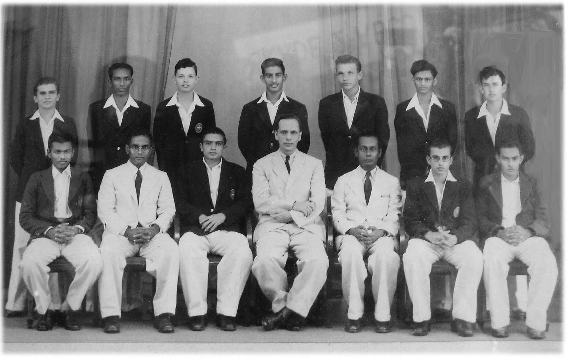
The 1950’s were the vintage years of cricket at Wesley. 1950-51 DBC Mack captained the team. I was a “day scholar” then and being 7 years old had no opportunity to see the cricket. 1952 and 53 were the Claessen years when Radley and then Bryan captained the teams. The hostile bowling of MN Samsudeen and the Claessen brothers and the aggressive batting of Bryan C and Patrick Schockman brought us tremendous success. In those days the barometer of success was the performance against St.Thomas’, Royal and St.Joseph’s. It is my impression that in 1951 and 52 we were placed 2nd in the league table and were unbeaten.
The team was as follows:
Most of us regard heroes of our youth as the greatest we have seen. I have never seen a better schoolboy batsman than Lou Adhihetty. But I do not think there was anyone in that period more exciting than Bryan Claessen, or a finer all-rounder than Ansar Fuard. There were very few better fast bowlers than LR Goonetilleke. I must say it was exceedingly difficult for me to select these cricketers from the vast galaxy of exceptional talent we have had over the years.
When successful against St Thomas or Royal at home we marched in a large group to the Principal’s porch chanting “Monday holiday” and it was usually granted to our utter delight. When matches were played away in Colombo we never missed them. When we played St.Thomas’ away it was a long trek to Mt Lavinia. The red Leyland double deckers of the CTB had a direct route to Ratmalana via Bullers Road and Galle Road. We caught the bus opposite our school gate and got off at the beginning of Hotel Road walking the short distance to the school. St Thomas’ was established in 1862 and had the most impressive buildings with large tall grey Greco-Roman granite columns. They had beautifully laid out gardens. I couldn’t say the same of their breezy turf wicket by the sea which was a cemetery for visiting teams. They have always had good cricketers and strong teams. Dan Piachaud, PI Peiris, Neil Chanmugam, Lareef Idroos, CM Ponniah and Buddy Reid come to mind.
Royal College came into being in January 1835 as a private school christened "The Hill Street Academy" and was situated at Hill Street Wolfendhal. They moved to the present site next door to the University in 1923. It was a shorter journey to the Reid Avenue turf which was the Royal College grounds. On many occasions I had preferred to watch from beyond Reid Avenue fence which gave a panoramic view of the red brick school, the pavilion and the action in the middle. They had some fine cricketers like Brendan Gooneratne, EL and Bryan Pereira, Darrel Lieversz, Sarath Samarasinghe and Nanda Senanayake.
St. Peters grounds at Bambalapitiya was again a turf pitch. They had an elegant Pavilion built on a hill overlooking the turf. The “Bambalawatte boys” gathered in their hundreds with their Brylcreamed Elvis Presley hair, speaking their own brand of pigeon English. The Wellawatte canal wasn’t far away and the smell of stagnant water was ever present. We could see in the distance the tall chimney of the Wellawatte Spinning and Weaving Mills bellowing thick black smoke. Clive Inman was a prolific scorer and Anton Perera was there match winning fast bowler.
St.Joseph’s College was started in 1896. Their matting at Darley Road has been the site of many battles between our 2 schools. I recall the swimming pool end and the pavilion end. Ken Serpanchy, Rufus Buultjens, Malcolm Francke and Priya Perera excelled for the Josephians. The school had impressive large buildings built around the grounds. The high dome of their Chapel is breathtakingly beautiful. Whenever we won at Darley Road we had to evade the hostile Maradana crowd for whom it was more than a game of cricket.
Many stories existed why we didn’t play Ananda. I do not know the basis for the story of skulduggery and poor sportsmanship but they have always been formidable opponents. They had some excellent cricketers in Yatagama Amaradasa, Mohanlal Fernando, Sonny Yatawara and Kumar de Silva. This match was resumed in 1956 and was played at the Nalanda grounds just next door to us. This made the contest rather fierce both for the cricketers and spectators. It was the personal pride at stake and we didn’t want to lose to our neighbours. Our hostellers just crossed the small park and jumped the fence running down the steep hill to the Nalanda grounds.
The match against Kingswood was played at Randles Hill, Trinity at Asgiriya and Richmond at the Galle Esplanade.
Mr. AV Fernando
 Bespectacled Mr. AV Fernando our coach and Edmund Dissanayake , the master in charge were familiar figures in the pavilion planning our strategy. Bryan Claessen was a hero and I still remember him acknowledging the adulation of the boys. He went on to represent Ceylon as a schoolboy. His gyratory bowling action and the vicious spin brought us exceedingly good results.
Bespectacled Mr. AV Fernando our coach and Edmund Dissanayake , the master in charge were familiar figures in the pavilion planning our strategy. Bryan Claessen was a hero and I still remember him acknowledging the adulation of the boys. He went on to represent Ceylon as a schoolboy. His gyratory bowling action and the vicious spin brought us exceedingly good results.
The team also had two hostellers – Arthlow Chapman and Neil Gallagher both stylish batsman who provided some fine entertainment for the spectators putting the opponents to the sword.
Ansar Fuard captained in 1954. His aggressive batting and accurate bowling helped to turn matches round in our favour. Ansar and Abu followed the footsteps of their father who captained in 1915. Ansar was an astute captain and was ably assisted by his brother’s fine off spin bowling to complete a very successful year. Abu later went on to play for Ceylon and also became an influential member of the Selection Committee.
The tragic death of Hermon Claessen in a motor cycle accident was the biggest blow to Wesley cricket during my time. He was a fine all round cricketer.
1955-56 were the Lou Adhihetty years. He was a great alrounder who brought honour to himself and the school. Lou’s name appeared in the national papers regularly for his fine performances with the bat and ball. Wesley was fortunate to have an old boy- Christie Seneviratne as a sports journalist who wrote under the pseudonym “Wrong’un”. He gave us good exposure when we deserved it. The cricket coverage in the daily papers were full of clichés. “Rain stops play”, “Benedictines skittled for 65 runs”, “Tame Draw at Darley Road”. “Royal routed for 89 runs”. Any Tournament was called a Tourney!! We are fortunate to have Richard Dwight as a Sports Journalist to help keep our flag flying.
Mr. Edmund Dissanayake
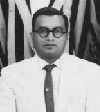 Cricket in Sri Lanka is played in the dry season - January to April the game being so dependent on good weather. I recall the many times watching cricket in the blistering heat of the mid day sun with beads of sweat rolling down my forehead. There have been times when the whole game got washed off by a cloud burst of bad weather. This was indeed a great disappointment for us all except when losing. I remember the times when I have prayed for rain when our team was in a bad way!! There is nothing more heartbreaking than to see a winning team robbed of victory by a quirk of nature. To have the better team isn't enough to win matches good fortune must shine on them too.
Cricket in Sri Lanka is played in the dry season - January to April the game being so dependent on good weather. I recall the many times watching cricket in the blistering heat of the mid day sun with beads of sweat rolling down my forehead. There have been times when the whole game got washed off by a cloud burst of bad weather. This was indeed a great disappointment for us all except when losing. I remember the times when I have prayed for rain when our team was in a bad way!! There is nothing more heartbreaking than to see a winning team robbed of victory by a quirk of nature. To have the better team isn't enough to win matches good fortune must shine on them too.
Wesley never had a big match. Seeing the fun at the Royal Thomian , Josephian-Peterite and Ananda -Nalanda matches we felt left out. I remember asking Mr. LA Fernando why we don’t have one and he said with a murky smile “all our matches are big matches”. There is some truth in it in the way we approached them. The efforts not to lose the match often makes it boring ending in a draw. The Big Match is also an excuse to misbehave in public places.
Once when A Peterite cricketer Vittachi was hit on the face by a Lou Adhihetty bouncer it dislodge a front tooth. I remember the confusion in the middle and his rapid exit to the General Hospital Colombo. Lou is presently in retirement in Switzerland. 1957 HL Juriansz, a hosteller captained cricket. I remember him as a thoroughly decent Wesleyite and a very popular captain. 1958-59 team was lead by Nalendra Abesuriya . He too was a hosteller with a large fan club. Being an alrounder Wesley had 2 very successful years under his leadership. He left school and entered “Planting” but ill health made him retire early. I was deeply saddened to hear that Abey, passed away in his early 40s leaving a young family.
1960 was captained by SR Sinniah another a cricketer of great ability. Another hosteller from Moscrop House. He presently lives in the UK and plays for our summer tournaments with the OBU. LR Goonetilleke must be our best bowler ever. His accurate left arm fast bowling broke the back of many school teams. He was subsequently selected to play for Sri Lanka.
1961 was D.Kodituwakku’s year as captain. This was the year of my University Entrance examination. I was busy putting in the hard work which prevented me from supporting our team with my usual enthusiasm. 1962 was captained by L.C.R Wijesinghe coached by BJH Bahar. It was a successful year and was one of our best years since the time of Lou Adhihetty. L.C.R was my classmate in the 6th form. After many decades I located him in The Emirates where he now works as a Metallurgist . He is unassuming, modest and immensely sensible. Kenneth De Silva who was a hosteller had his beginnings as a softball cricketer with us in the small park. He became a match winning all rounder in 1962. I still wonder how he managed to spin the ball so viciously with his tubby short fingers. He is now the prefect of Games at Wesley and a great asset to the College.
Rodney Perera’s 101 against Richmond was a match winning performance. Sadly Rodney is with us no more. Milroy Bulner who was a valued member of the 1961 team too passed away in his 30’s . Following is the 1962 Cricket Team sent to me by L.C.R Wijesinghe.
Lalith Wijesingha, Kenneth De Silva (v. capt) , Milroy Muthuvaloe , Darrel Maye ,Sarath Wickramaratne , Mervyn Hamer , Everard Schoorman , C.T Rodrigo ,RAK Perera Batcha Fuard , Milroy Jebarajah ,Priyanath Fernando, Campbell ( forget his first name) We played 8 matches , Lost the first match to St Peters' on the turf at Bambalapitiya, Drew with St Thomas' Mt Lavinia at Campbell Park, Won against Kingswood, Richmond, Trinity, St Josephs', Royal, & Ananda.
The following are the highlights from my years at school. The long lists speaks for itself of those glorious times.
Over 5 wickets in an innings
1950
R. L. Claessen ...6 --87 Vs St. Joseph’s
R. L. Claessen ...6 --88 Vs Royal
E. B. Claessen (1st Innings) 5 --26 Vs Trinity
E. B. Claessen (2nd Innings)6 --38 Vs Trinity
1951
G. Nanayakkara •..5 --36 Vs Kingswood
E. B. Claessen ...5 --57 Vs Trinity
E. B. Claessen ...6 --39 Vs Kingswood
E. B. Claessen ...5 --31 Vs Richmond
1952
E. B. Claessen ...6 --88 Vs Zahira
E. B. Claessen ...5 --19 Vs Zahira
E. B. Claessen (1st Innings) 6 --24 Vs Prince of \Vales
E.B. Clacssen (2nd Innings) 6 --20 Vs Prince of Wales
E B. Claessen..5 --66 Vs Royal
E B. Claessen...5 --42 Vs Kingswood
E B. Claessen...6 --98 Vs Trinity
E B. Claessen . .5 --14 VS Trinity
1953
M. N. Samsudeen...5 --10 Vs St. Joseph’s
-1953
M. N. Samsudeen..6 --6 Vs Prince of Wales
M. N. Samsudeen..5 --17 Vs Royal
E B. Claessen..5 --25 Vs Prince of Wales
E B. Claessen 5 --40 Vs Kingswood
E B. Claessen 6 --38 Vs Richmond
M. A. H. Fuard...6 --76 Vs St. Thomas’
M. A. H. Fuard..5 --29 Vs St. Joseph’s
1954
M. A. H. Fuard...6 --44 Vs Trinity
L. Adhihetty 5 --49 Vs Kingswood
B. Buell... 6 --49 Vs St. Peter’s
B. Buell 5 --12 Vs Richmond
M. N. Samsudeen 5 --61 Vs St. Anthony’s
1955
M. N. Samsudeen...5 --40 Vs St. Thomas’
M. N. Samsudeen 6 --26 Vs Royal
M. N. Samsudeen 5 --46 Vs St. Peter’s
M. A. H. F’uard 5 --50 Vs St. Benedict’s
L. Adhihetty...5 --68 Vs St. Joseph’s
1956
L. Adhihetty 7 --62 Vs St. Anthony’s
L. Adhihetty 7 --18 Vs Richmond
.H. G. Claessen...6 --59 Vs St. Thomas’
H. G. Claessen...5 --39 Vs Royal
H. G. Claessen...5 --116 Vs Kingswood
H. G. Claessen5 --40 Vs Trinity
H. G. Claessen...6 --60 Vs St. Joseph’s
W. de Kretser..5 --72 .Vs Richmond
RM De Silva 5 --37 Vs Trinity
1957
RM De Silva..6 --24 VS Prince of WaIes
O. Edema..5 --16 Vs Maris Stella
S. R. Sinniah...5 --28 VS Prince of WaIes
1958
S. R. Sinniah...7 --15 Vs Maris Stella
S. R. Sinniah 6 --64 Vs West Australia School—
S. R. Sinniah...5 --61 Vs St. Joseph’s
N. Abeysuriya ...6 --53 Vs Ananda
N. Abeysuriya ...53 and 7 --43 VS Prince of WaIes
1959
N. Abeysuriya ...5 --39 Vs Richmond
N. Abeysuriya...5 --65 Vs St. Thomas’
L. C. R. Wijesinghe 6 --22 Vs St. Anthony's
L. C. R. Wijesinghe...5 --13 Vs St. Anthony's
L. R.Goonetilleke..6 --20 Vs St Peter's
L. R.Goonetilleke 5 --46 Vs Ananda
1960
L. R.Goonetilleke...5 --15 Vs Trinity
L. R.Goonetilleke 7 --31 Vs Royal
L. R.Goonetilleke 6 --49 Vs Royal
L. R.Goonetilleke 5 --21 Vs Richmond
L. R.Goonetilleke 5 --42 Vs Richmond
L. R.Goonetilleke 6 --53 Vs Kingswood
L. R.Goonetilleke 5 --76 Vs Kingswood
S. R. Sinniah 5 --22 Vs St. Peter’s
K. V. de Silva 5 --32 Vs Kingswood
1961
L. C. R. Wijesinghe ..5 --31 Vs St. Thomas’
L. C. R. Wijesinghe 6 --42 Vs St. Thomas’
L. C. R. Wijesinghe...5 --43 Vs Ananda
E.Schoorman 6 --45 Vs Ananda
K. V. de Silva 5 --32 Vs Kingswood
1951 E. B. Claessen 8 --68 Vs St. Joseph 1954 1955 M. A. H. Fuard 8 --76 Vs Trinity
1959 1950 - F. D. Ebert 107 Vs Kingswood
1951
D. B. C. Mack 105 Vs St. Peter’s 1953
M. A. H. Fuard 101 Vs Richmond
1955 1956 L. Adhihetty 104 Vs Trinity 1957 1958 1961 It is true that we relive our own childhood through our children. Both my sons played school cricket in England and I never missed a match. By some strange coincidence Steve played cricket with Dan Piachaud's son. (Dan Piachaud was a fine Thomian Captain in the early 50's. He later played for Oxford University and received his cricket Blue) Public School cricket has the same feel as school cricket in Sri Lanka. They have some of the most elegant pavilions and the most scenic grounds one can imagine. There is nothing more entertaining than watching cricket under a tree on a summers day. It often turned the clock back 50 years.
The enchantment of the cricket matches of my childhood still haunts me. At school Cricket was not only a game but a way of life. My lasting memory of cricket at Campbell Park is the sight of the setting sun behind All Saints Church and its lengthening shadows. The Church bell rang at 6 o'clock. As the bails were lifted we all departed discussing the ups and downs of the days play. Losing a match in those days was like the end of the world but we always bounced back. It was certainly a good training to face the peaks and troughs of our own lives. The songs we sang and the friends I made are etched deeply in my memory. After leaving school in April 1962- I went for some matches in the following year. The magic and the aura of this extraordinary spectacle seem to have gone not being an integral part of it anymore. Thereafter life got too complicated building my career. I never saw any matches at Wesley again. Ah! Those were the days.
To me these years have been one rich gift. I dedicate these notes to the many Wesleyites who entertained us at cricket 1950-62 but have now departed this world. They have done us proud. Our heartfelt thanks posthumously to Wilbert, Cricket Coaches and the Masters in Charge of cricket in those years who made it all happen in the background while we sang and beat the drums beyond the boundary. May God Bless them all.. Addendum by L.C.R Wijesinghe
There are some incidents etched in one's memory and can be
remembered to this day. Here are a few from some selected matches.
This match was played at Mt Lavinia & Wesley was Captained by D Kodithuwakku. I cannot remember the details of the scores of both schools but I know I made a significant contribution with both bat & ball. I scored 60 runs and took 5 wkts in the innings & 6wkts in the second innings. The Thomian last pair of Tony Sirimanne & Selvadurai was at the wicket and I was bowling .Sirimanne drove the ball straight to Glen Reimers who was fieding at mid on & he grassed a relatively simple catch in the excitement. Sirimanne & Selvadurai held on for nearly one hour I guess , and saved St Thomas' and deprived Wesley of a historic win. I wish to pay a tribute to my Father who was one of my biggest supporters and never missed any of Wesley's home fixtures. I am sure you will recall that there were large crowds to witness Wesley matches those years ( specially if the side was successful) and I always used to spot my Father watching the match from a particular point. May God Bless him
1962.............Wesley vs Trinity................
Wesley won this match in the fourth ball of the last over at Campbell Park. It was the last Trinity pair at the wicket and they
determined to save the match & were stone walling the last overs whatever we managed to send down. I was not bowling during this period & decided to bowl the last over. The field was a very attacking one with a silly mid off & mid on in addition to the customary slips & gully. Having bowled three very good length balls I found the batsman somehow defending and managing not to get out. I decided I should now surprise him in the fourth ball & with the same action bowled the next ball which was a short ball. The batsman was taken by surprise & just held his bat at the ball & gave a simple catch to the silly mid off......Wesley had another victory in the nick of time.
1962..............Wesley vs Ananda..............
This was played on the Nalanda grounds. CT Rodrigo was the match winner. The strange fact was that he was not a regular player but was selected for this match & did not even bowl in the first innings but went on to take 7or 8 wkts and give Wesley a handsome win over a very strong Ananda side which had Sarath Wimalaratne, TD Rajapakse etc in the side. Sarath Wickramaratne excelled in his fielding in the gulley position by taking something like 5 or 6 catches, some of which were stunners. There was excellent team spirit in the 1962 team with each one playing their role. There were no STARS but each player made his contribution. Addendum by Lou Adhihetty Nihal, funny that you should send this to me because about 2 or 3 weeks ago, I wrote to Bryan Claessen and reminded him that 50 years ago I played cricket under him in 1953. We are really getting old ! We were unbeaten - beat Prince of Wales, Kingswood, Royal, St. Josephs and Richmond - all the other games were drawn. Actually, in my carreer, I recall 3 very GOOD games. First, when we beat St Josephs in 1953, Second, beat Royal in 1954 and, lastly, beat Trinity in 1956 (scoring 49 runs in 12 min. - A MEMORABLE MATCH). Addendum by Michael Christoffelsz This was a great article and I thoroughly enjoyed it, cricket was much of what we did to pass the time away at the hostel, and some notable matches at small park, I used to remember the fierce competition of the hostel houses the Vikings, Spartans and Yodayas when we played cricket against each other, and I still remember been given out lbw by " Homba" Fernando when I was on 90, a dubious decision I thought, and when I asked him about it after the match, he replied " you won anyway, so whats the problem", and I accepted his answer we both had a laugh about it. I have tried to recollect my days at Wesley.
What a life at college !!
I remembered the date, I came here into Germany on 21st May, 1966. It was on a Hotel Management training, and schooling sponsored by Lufthansa. It is now 37 years since Germany my
Daya WijaRatnam Winslow Friendships are one of God’s finest creations. Those that are made at school during our formative years remain strong in our hearts and minds throughout our lives. The great dispersal at the end of our school careers come as a shock to us all. We then embark on our journeys through life in the wider world getting on the treadmill to carve ourselves careers and raise our families. It is not until these life’s obligations are fulfilled do we get the time to look back and trace our school friends who meant so much to us. Good communications in the 21st Century, internet and telephone services have made these easier. But these still remain an alien culture to many of us who grew up in the fifties. This great dispersal and my own destiny has brought me to the UK where I have lived for the past 30 years. A distance of 6000 miles is a hindrance and a barrier to my efforts to trace one of my closest friends. In sheer desperation I seek the help of our readers.
I would be most grateful for any information about my childhood friend.
His address:- Vere de SoysaOver 8 wickets in an innings
M. A. H. Fuard 9 --35 Vs Prince of Wales
M. A. H. Fuard 8 --60 Vs Royal
M. N. Samsudeen 8 --28 Vs Trinity
L. R. Goonetilleke 8 --9 Vs Mans Stella
L. R. Goonetilleke 8 --18 Vs Kingswood
L. R. Goonetilleke 8 --45 Vs RoyalScorers of centuries
R. L. Claessen 101 Vs St. Joseph’s
E. B. Claessen 101* Vs Trinity
E. B. Claessen 115 Vs Kingswood
E. B. Claessen 105 Vs St. Joseph’s
L. Adhihetty ... 114 Vs St. Joseph’s
L Adhihetty 147 Vs Kingswood
L. Adhihetty 110 Vs St. Joseph’s
L. Ebert 112 Vs Trinity
R Athukorale 114 Vs Kingswood
D Kodituwakku ... 103 Vs Carey
(For the heroes of cricket, like others, must die),
Our bats we'll resign, neither troubled nor vex'd,
And give up our wickets to those that come next. Tempus Fugit - Time flies
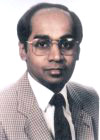
I joined Wesley in 1959, before which I was at Jaffna College. My Dad's aim was that I get a puritan upbringing coming from a old Methodist family. My Dad came to know our old A.J.Vethanayagam in London in the 1950s at Methodist International Home. He must have been the one to convince my Dad about Wesley. For me the days there at Wesley were like days at the circus with different days programme. If I did something wrong old Vethanayagam's reaction was " I will tell your father". I could not do anything without being watched. Mrs. Sivasubramaniam our teacher in Geography was a classmate of my aunt, so too was Haig Karunaratne. The only free place for me was the school bus and the daily victim was teacher Hensman (Kukulla) who sits between lady teachers and knits (wonder why?) He had no contact with any male colleagues. As far I remember he and Vethanayagam were neighbours living down Station Road, Wellawatta and had no private contact. Vethanayagam had a very sweet voice, can sing very well... when he opens his mouth to sing one has a guarantee to get goose pimples. On the whole he was a very nice gentleman. He taught us what patience is! Our only contact outside with girls was S.C.M and All Saints Convent, the girls from the CGR quarters in Mount Mary. We were like monks in a monastery. I must honestly say our teachers were great to guide us through the wild
youth days. Pity that the time does not come back again. Greetings and best wishes to all teachers, Wesleyites who know me and those unknown to me. For us at Wesley day starts at 06:00 hrs. for the journey of about 5 miles. Bus stop at 06:30, chatting, looking for days preys, fighting with bus conductor, he stops the bus (route 104 end station Layards Broadway) we start ringing the bell. On the way Holy Family, St. Pauls , Lindsay, Ananda Baligava Vidyalaya, All Saints, at last at college. Here we in the hands of our dompteurs who try their best to calm us between 08:00 - 15:00 hrs. With their cane, pinch, slap, knock on the head, out of class, look at the wall etc. At 10:00 short interval the animals were let loose for food and to run around to loose the energy what they gained in 2 hrs sitting. Run to the tuck shop, fish bun, gall bun, Rolls, daily the same stuff, look out side what is there.... veralu (until I came to Germany in 1966 I did not know it was olives!), Achcharu, some monkey nuts, ice cream etc. 5 cents! Back in class itching,, getting the stuff free from our teeth, pocket full of unwanted rest, run to toilette. By all these doing another 2 hrs. gone lunch break. Punchi Borelle Thosai kaday, sit near the glass cupboard where Indian sweets, Vadai in hands reach. Thosai with sambol, tea costs 20-25 cents. Not forgetting the free stuff what we get there! some days the animals go into other area, such as prison grounds, waiting for the 12:15 train between Dematagoda and prison area near where Russell Harmer lived for a free ride to Cotta Road. Train driver throws coal blocks at us and we throw back and the free ride too. We walk back hands black, shirt which was clean now has some other colour, but we enjoyed our outing and freedom. The pack was Norman Armstrong, Dennis Azariah, Vasantha Rajaratnam, Sunil Ratnasingham, my self and few others. 15:00 school closes home! await for the next day out. Night we dream of our next days prey. Student Christian Movement, so called SCM which was also stands for Society
For us at Wesley day starts at 06:00 hrs. for the journey of about 5 miles. Bus stop at 06:30, chatting, looking for days preys, fighting with bus conductor, he stops the bus (route 104 end station Layards Broadway) we start ringing the bell. On the way Holy Family, St. Pauls , Lindsay, Ananda Baligava Vidyalaya, All Saints, at last at college. Here we in the hands of our dompteurs who try their best to calm us between 08:00 - 15:00 hrs. With their cane, pinch, slap, knock on the head, out of class, look at the wall etc. At 10:00 short interval the animals were let loose for food and to run around to loose the energy what they gained in 2 hrs sitting. Run to the tuck shop, fish bun, gall bun, Rolls, daily the same stuff, look out side what is there.... veralu (until I came to Germany in 1966 I did not know it was olives!), Achcharu, some monkey nuts, ice cream etc. 5 cents! Back in class itching,, getting the stuff free from our teeth, pocket full of unwanted rest, run to toilette. By all these doing another 2 hrs. gone lunch break. Punchi Borelle Thosai kaday, sit near the glass cupboard where Indian sweets, Vadai in hands reach. Thosai with sambol, tea costs 20-25 cents. Not forgetting the free stuff what we get there! some days the animals go into other area, such as prison grounds, waiting for the 12:15 train between Dematagoda and prison area near where Russell Harmer lived for a free ride to Cotta Road. Train driver throws coal blocks at us and we throw back and the free ride too. We walk back hands black, shirt which was clean now has some other colour, but we enjoyed our outing and freedom. The pack was Norman Armstrong, Dennis Azariah, Vasantha Rajaratnam, Sunil Ratnasingham, my self and few others. 15:00 school closes home! await for the next day out. Night we dream of our next days prey. Student Christian Movement, so called SCM which was also stands for Society
of Christian Marriages was the outside contact with girls during the school hours and during holiday camps at Matara, Kandy, Jaffna. Mostly no one misses the chance. That was the spring time for Adrian Jansz, Kenneth Honter, Ananda Thevathasan. Here they learn more about Bees, Butterflies, natural biology classes in the
open air! Under trees, grass in all what nature with God's Blessing.
home and base is. Left Ceylon on BOAC VC 10 from old Katunayake army airport, first to Bombay. Mother in tears to see the only child leaving home at the age of 19. From Bombay by Lufthansa Boeing 707, Karachi, Cairo, Athens, Frankfurt, Koeln end station. All this with DM 50,in the pocket, that is what the Ceylon Govt. allowed to take out. Now married two children twins 24 years, Marc doing Medicine, Linda history of buildings both in Aachen. Only the old couple at home with the dog and TV. We live near Belgium on the German side on the mountains called Eifel about 660 Meters over sea. Nice quiet village area. Yes, for me now English is a foreign language. German is easy one writes and speak out each alphabet as in our mother tongue unlike in English!
Franz Fedderstr. 42,
D-52152 Simmerath-Lammersdorf
Germany
e-mail: winslow@ariyam.deLink to Links to further reading
Excerpt from the Sunday Island Newspaper of 29/6/03 captioned "In Search of a School Friend"
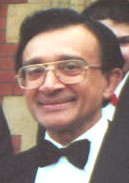
 I met Vere De Soysa when we were boarders at Wesley College Colombo in 1955 both age 13. He was from Wellaboda Road, Panadura and the house number may have been 32. His father died in the Typhoid epidemic of the 1940’s. This was a grave tragedy for the family. I can still recall his mother coming to see him at Wesley once a fortnight. He was a shy, quiet lad and had a stammer which was an impediment he tried hard to overcome. Those were the days of Rock & Roll music of Bill Haley and Elvis Presley. He emulated their hairstyles with a curly front which we then called “Thuppe”. Vere was a great drummer making a wonderful beat with his fingers drumming on the school desks. He was of a stocky build and rather muscular and had the reputation as a strong man. School work was of little interest to him but just went along to please his mother. We often sat on the thick buttress roots of the tall Mara trees around Campbell Park chatting about our lives at home, friends, relatives and our plans and desires for the future. He often spoke about a girl friend in Panadura whom he met at Sunday School. The love of his life. Vere wanted to be a Planter in an upcountry estate. For the following 2 years we remained inseparable. In 1957 I chose the Sciences and he decided to take up the Arts and we went our separate ways. I believe he left school soon after GCE and I never saw him again. I have often wondered how life panned out for him. Did his destiny take him to be a Planter? I believe like myself he is married and has raised a family. Vere has not kept in touch with Wesley College or its Old Boys Union. Perhaps this is deliberate or more likely he has had a busy career with less time for these trivial pursuits. Does he live in Sri Lanka or has he moved away to a far off land dreaming like myself of those distant days at school?
I met Vere De Soysa when we were boarders at Wesley College Colombo in 1955 both age 13. He was from Wellaboda Road, Panadura and the house number may have been 32. His father died in the Typhoid epidemic of the 1940’s. This was a grave tragedy for the family. I can still recall his mother coming to see him at Wesley once a fortnight. He was a shy, quiet lad and had a stammer which was an impediment he tried hard to overcome. Those were the days of Rock & Roll music of Bill Haley and Elvis Presley. He emulated their hairstyles with a curly front which we then called “Thuppe”. Vere was a great drummer making a wonderful beat with his fingers drumming on the school desks. He was of a stocky build and rather muscular and had the reputation as a strong man. School work was of little interest to him but just went along to please his mother. We often sat on the thick buttress roots of the tall Mara trees around Campbell Park chatting about our lives at home, friends, relatives and our plans and desires for the future. He often spoke about a girl friend in Panadura whom he met at Sunday School. The love of his life. Vere wanted to be a Planter in an upcountry estate. For the following 2 years we remained inseparable. In 1957 I chose the Sciences and he decided to take up the Arts and we went our separate ways. I believe he left school soon after GCE and I never saw him again. I have often wondered how life panned out for him. Did his destiny take him to be a Planter? I believe like myself he is married and has raised a family. Vere has not kept in touch with Wesley College or its Old Boys Union. Perhaps this is deliberate or more likely he has had a busy career with less time for these trivial pursuits. Does he live in Sri Lanka or has he moved away to a far off land dreaming like myself of those distant days at school?
Nearly 50 years have passed since those days. We have both reached that mature age when life is less certain and to see the dawn of a new day is never taken for granted. It is my sincere hope one day we can meet again to relive our past and take stock of what life has offered us in those intervening years.
Dear Dr. Nihal D.A.
I read your letter published in the Island newspaper. So has Vere. He called me & we had a brief but nostalgic conversation. I thought he was abroad. Your efforts have made me find him.
Clovis Estate,
Block 'B',
Uhumiya,
Kurunegala
Shall keep in touch
M.A.P.Fernando
Wesley College
The above letter appeared in the Sunday Island on 29/6/03 captioned "In Search of a School Friend"
I wish to thank the Editor of the Island Newspaper for publishing the letter captioned “In search of a school friend” which appeared on Sunday 15th June 2003. Having read this my friend Vere de Soysa , was pleasantly surprised and contacted the Principal of Wesley College Mr.MAP Fernando. Mr.Fernando sent me an email with the address and phone number. Vere now lives in Kurunegala and is indeed a planter. As we spoke on the phone the intervening 50 years just melted away and the distance of 6000 miles that separated us became irrelevant. I wish I could have put my arm around him as we did as friends in those days. We have now decided to keep in touch and meet up towards the end on this year.
The lyrics of that famous song by Joni Mitchell comes to mind:
lose and still somehow
It's life's illusions I recall. I really don't know life at all. -
This is a happy tale amidst a sea of trouble in our tiny Island home made possible by the kind courtesy of the Island Newspaper that Provides a fine service to all Sri Lankans.
Dr. Nihal D Amerasekera (UK)
Link to further reading
By Edmund Dissanayake

Wilfred Barnes
A bank executive, was a cricket crazy man. He used to travel all the way from Amparai, regularly to watch Wesley cricket. Once he came from Bandarawela, and I went from Colombo to watch the Trinity—Wesley match at Asgiriya. On the second day, there was a slight drizzle, which had ceased about half an hour earlier, but the umpires were in no mood to walk out. It was in Wesley’s interest to continue play. The two of us walked to the middle and mischievously indicated by signs that there was no drizzle! Soon after the umpires did do the needful.
The night the two of us stayed in a hotel. I did not have a wink of sleep. Barnes was a champion snorer!
A railway accident at a rail gate crossing ended his life. The boys of Wesley were in full attendance at his funeral. Dunstan Fernando, a former Principal, delivered the funeral oration, at my request. I was too distraught to comply.
C. B. Casinader
He never failed to be present at the annual celebrations, coming all the way from the land of the "singing fish". Until recently, I had carefully kept a letter he wrote to me in 1948, stating that the best speech that the Head Prefect had ever made was in that year. For some unaccountable reason the letter was typed in red. What happened to that letter, I do not know. His son Noble was with me in the Hostel in 1948, and another son Prince, (later MP) was with me in the Teachers’ College at Maharagama, in 1950. I believe it was he who introduced me to the benefits of the essence of the coconut flower! Prince was a tower of strength when Rev James Cartman re-visited Batticaloa. Prince lived in a lovely place called "Lovers" lane, or Lovely Lane.
Stanley Chinivasagam
The absence of about 5 senior cricketers, including my brothers Chandra and Donald (no strike) found the Wesley cricket team in deep trouble at Randles Hill in the match against Kingswood. Our last batsman was Stanley. M. Satha took him towards the bathroom (Stanley told me) pulled out a flask, and asked him to take two swigs, and swipe at the ball... come what may. Stanley went in...7 to win or lose and Kingswood’s star bowler operating. The first ball went crashing to the pavilion, and the next to the paddy field. Wesley were victorious.
Stanley was the Hony. Secy. when Hon. M. H. Mohamed was president.
Harris de Kretser
He was the Hony. Secy. of the OBU who was fearful of "fireworks" at the AGM. I had to reassure him that there would be no trouble. Harris is the donor of the Pinto Memorial Shield for Inter House Activities. He also donated a cricket bat for batsmanship, to be awarded at the prize giving.
Terence de Zylva
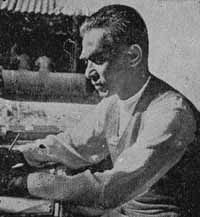 He was better known for his ‘Suriya Mal’ campaign. During the Second World War, he was incarcerated with other leaders in the Bogambara prison for political reasons. We visited him there in the company of cricket coach F. J. Senaratne, when our match with Trinity was at Asgiriya. He was the OBU Hony. Secy. when Sir Oliver was Governor General. Nobody could refuse Terence when he asked for donations. His portrait was unveiled in the Highfield Memorial Building.
He was better known for his ‘Suriya Mal’ campaign. During the Second World War, he was incarcerated with other leaders in the Bogambara prison for political reasons. We visited him there in the company of cricket coach F. J. Senaratne, when our match with Trinity was at Asgiriya. He was the OBU Hony. Secy. when Sir Oliver was Governor General. Nobody could refuse Terence when he asked for donations. His portrait was unveiled in the Highfield Memorial Building.
Edwin T. Fernando.
His explosive speeches at the Annual lunch were looked forward to. He liked the Wesley staff very much. Once he invited the staff to his home at Horana, and there he realized the capacity of certain members for ‘liquid refreshment! Frank Jayasinghe (later Principal of certain prestigious schools) was a very keen traveller. E. T. joined us on one of our 3 day excursions together with his second son Anil. Whenever a tavern was sighted Anil would look in Frank’s direction and say "Sir". Anil was a hosteller then. He took to hoteliering in later life. The OBU spent a wonderful day out at the Uswatakeiya Hotel where Anil was the General Manager. It was here that D. S. Wijemanne was in his element. The various games he organized in the pool attracted foreign guests, too. I was pushed into the water by a person, so that he could pinch the whisky that my bag contained! The buffet provided by Anil was fantastic. A person seated close to me ate only lobsters.
Willet Gomes
Willet and his wife were always present at OBU lunches. In his capacity as a Naval Officer, he will be remembered for his indomitable courage in volunteering to proceed to Kegalle at the height of the insurrection. With very little ammunition, he was able to restore order.
Halim Ishak
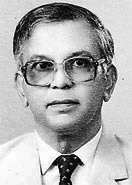 Halim passed away recently. Probably one of his last acts was to write an Appreciation of D. W. Abaykoon, which was published in "The Island" two days after his death. A hallmark of Halim was his humility. He was humble to a fault. The OBU paid him the highest honour by electing him as President. In his capacity as an MP he treated rich and poor alike. MPs of his stature are a rare commodity today.
Halim passed away recently. Probably one of his last acts was to write an Appreciation of D. W. Abaykoon, which was published in "The Island" two days after his death. A hallmark of Halim was his humility. He was humble to a fault. The OBU paid him the highest honour by electing him as President. In his capacity as an MP he treated rich and poor alike. MPs of his stature are a rare commodity today.
M. H. Jainudeen
He never missed an OBU lunch. He used to carry a small flask in his hip pocket. You can easily guess the contents there of.
Walter Jayasooriya
His name is synonymous with hockey. He bestrode the hockey arena like a colossus. The wonderful dance he performed with his son Rajah, drew applause all over. He never failed to bring the sweetest ripe jack to the pavilion. Rajah continued this practice.
B. J. Karunatilleke
He was the energetic OBU Hony. Secy. during the centenary year 1974. His efforts brought in more than 400 for lunch. As there was no room in the Hall, the stage too was utilised. He was a wizard at crossword puzzles. The "hundred diners night" which was a forerunner to the lunch will be remembered for the excellent speeches... Kingsley Wickramaratne (now Governor) in particular, was in his element.
P. Harold Nonis
 It was during his principalship that the College pavilion was purchased from the Tamil Union for Rs. 10,000/-. He was asked to lead the Past Captains XI against the rest skippered by M. Sathasivam in the centenary year. He had a sense of humour that endeared him to everybody. He passed away in 1980. I was greatly privileged when the family invited me to address the congregation from the Pulpit at the Methodish Church, Colpetty, shortly after.
It was during his principalship that the College pavilion was purchased from the Tamil Union for Rs. 10,000/-. He was asked to lead the Past Captains XI against the rest skippered by M. Sathasivam in the centenary year. He had a sense of humour that endeared him to everybody. He passed away in 1980. I was greatly privileged when the family invited me to address the congregation from the Pulpit at the Methodish Church, Colpetty, shortly after.
D. S. Wijemanne
 He was one of the most popular old boys that Wesley has produced. He had a canteen at Wesley where boys ran up big bills. Whether these bills were honoured, one does not know. His popularity extended to other schools like Royal and St. Thomas’. Wije was a family friend for close upon 60 years. He played for Wesley as a pace bowler. The best in him was revealed whenever any person fell ill.
He was one of the most popular old boys that Wesley has produced. He had a canteen at Wesley where boys ran up big bills. Whether these bills were honoured, one does not know. His popularity extended to other schools like Royal and St. Thomas’. Wije was a family friend for close upon 60 years. He played for Wesley as a pace bowler. The best in him was revealed whenever any person fell ill.
Once the Wesley ground boy Vincent Perera found him sleeping on the cricket matting in the middle of the ground, late at night. When he inquired as to the reason, he said that I had an argument with him and that he was at fault. Vincent came home to tell me about this problem. I assured him that there was nothing that transpired. I remember when I was hospitalized for a month, Wije was very helpful to my wife. He was there when help was sorely needed. He was a man for all seasons. At Wije’s funeral, not only Wesley, but the students of many other schools were present. Wesley gave him the highest honour.
When will we be able to see the like of him? He was a man in a million.
Farook then and Farook now
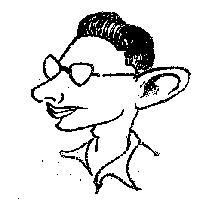 |
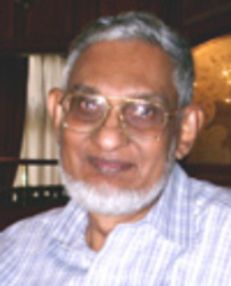 |
for a match as it coincided with the Haj festival and I went to Mirigama where my father was working, and C.J.O. had arranged a Latin class for the day after. J.L.F. was my first Latin master and he was able to make it very easy. Once I took 7 wickets for 9 runs playing for Moscrop in a interhouse match and J.L.F. wanted me to come for the 1st eleven
practices and spoke to A.V.F. He was disappointed when I did not turn up. When I was a hosteller I ran for the under 12 relay team at an inter school meet. My father worked in Kegalle as the post master and I too worked there as a H.O. and left before the insurgency in 1970. Iplayed tennis and bridge at the planters club and used to beat many of the members. As
a 8 year old I underwent appendicectomy and was in a male adult ward . L.D.C.Austin was the surgeon. I dreaded the injections and when visiting time was over I would cling to my father and not let him leave. After that I got measles and pneumonia and missed attending school for one term. At the end of the year I received a special prize as I came first in the next two term exam.........I shall wind up now and stop boasting
Olkie Now and then
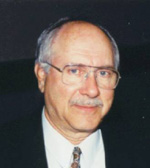 |
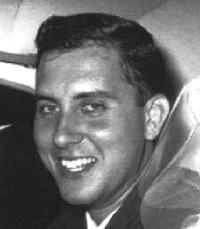 |
The one of the assembly hall brought to mind an incident when I was in the 5th form (1957 - post C.J. Oorloff - Mr Nonis was Principal at the time). Our classroom was upstairs right behind the balcony at the back of the assembly hall. We had a "tough" set of guys in that class including Ralph Van Rooyen, Ranjit Abeydeera, Maurice Wendt, George Siebel..... Anyway, before class was to start one day news had filtered in that the teacher-in-charge was going to be somewhat late. Given this vacuum and presence of restless, fertile imaginations, somebody got the brilliant idea of hiding all the classroom desks in the attic (guaranteed to disrupt at least the first period, if not a few more)!! Those of us who remember how solidly those old (painstakingly carved into) teak double-desks were built, will agree that it was no mean task to heft the desks through the 'just large enough' trap door in the ceiling! But within about 15 minutes the classroom was completely bare (except for the teacher's desk and chair) and the class had gathered on the corridor just outside. The look of disbelief on the master (I cannot recall who it was)'s face when he arrived, was absolutely priceless! Of course, everybody appeared to be equally puzzled at the missing furniture. In the confusion that followed the whole mornings sessions were written-off. I believe the mystery was finally solved when someone broke down and ratted on the culprits. If I remember rightly, apart from recovering the desks from the ceiling, the whole class was detained and each one made to write an essay on "Social Responsibility" or some such (obscure at the time) subject.....

Shall write another short episode of school life when I force myself to do so. I keep in touch with Ralph Woutersz who was my colleague both at St Thomas' Prep and Wesley. He is in Australia and lives close to Harris Anthonisz who I also met in Australia when we visited a few years ago. It was nice to see an article by Dr Sikander. We were classmates one year.
Bye for now..
Olkie
Addendum from Olkie
The good Reverend Wilfred Pile must have turned a full revolution at my goof!
Incidentally, Rev. Pile had a very dry sense of humour which invariably sailed over the heads of the boys in his English language/literature class. However, he would persist in pausing a few moments on such occasions (with hands clasped together over his cassock) in expectant anticipation that someone might just get his wisecrack. It was my unfortunate villainous streak to wait until the end of such silent pause to let out a laugh that I had picked up from being an avid listener to the BBC's "Goon Show". Of course this brought instant laughter from the rest of the class but made Rev. Pile's face even redder than usual each time. This went on a few times until our dear reverend decided to put a stop to it. I was called up and asked to bend over his desk facing the doorway. He was proceeding to let me have it on the bum with his open hand when I looked up and to my horror there was Mrs. Leembruggen (the younger) in the doorway with the most amused look on her face. She had just happened to be passing at the most inappropriate time and could not help but stop to view the spectacle! Talk about embarrassment (to Rev. Pile as well)! I knew that Mrs. Leembruggen held me in high esteem as she was the head teacher for Passmore at the time and had chosen me to be a leader in the cricket and drama teams. Anyway, to her credit she never spoke to me about the incident and treated me thereafter as if it had never happend. I, of course, had learned not to play games with Rev. Pile. I may have made him proud, though, when I got a credit for English language.....
Kindly sent to me by Riza Azoor
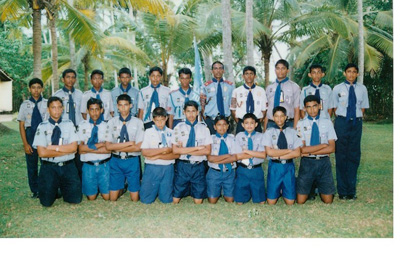
The photocopies of the brochures from the Prize Givings and the musical productions were kindly sent to me by Nissanke Dassanayake Dallas, Texas, USA
The photocopies of the brochures from the Prize Giving of 1964 kindly sent to me by Bashur Musafer Sydney, Australia
............................................................
We remember with affection:
Mr Shelton Wirasinha who was the Principal.
The Chief Guest- Rev Wilfrid Pile.
The Senior Prefect - Sin Sen Chang.
Mr Hilary de Alwis, an Old Boy who proposed the Vote of Thanks
Links to further reading
Dear Dr Amerasekera
Let me introduce myself. I am Dhilanthi Fernando, married to Rev. Shanta Premawardhana. While doing an internet search, I came up on your Wesley College website, which I found to be most interesting and informative. I was also pleasantly surprised to see that you had quite an entry on Shanta! You don't know this, but I am the eldest daughter of former principal Dunstan Fernando, and I was humbled to read that my father's many years at Wesely are duly recognized, especially your appreciative remarks about his many building projects. I know how much he worked to get the chapel built, and it was indeed wonderful and fitting when he had a service of Thanksgiving there in '95 to celebrate 50 years of teaching. Thank you for your labour of love in putting this website together. I know there must be many old boys around the world who look at it and remember their alma mater with fondness.
I am also the grand-niece of P.H. Nonis (my maternal grandmother was Edith Perera, his sister). In fact, when I was a student at Methodist (about 8 or 9 years old) I used to be in and out of the Principal's bungalow, and one of my most vivid memories is of going to a function at Wesley with "Loku Seeya" (prize giving? college day?) and seeing Sir Oliver Goonetilleke there, who I believe was the chief guest, and I distinctly remember that he wiped away a tear when the "Hymn for Ceylon" was sung, and young as I was, I found it very touching and unbelievable that the Governor General was crying!
Shanta and I got married in '77, when my father was the VP and we were living in the VP's bungalow. You may also know that Shanta's father Rev. Cyril taught at Wesley, as well as his uncle Felix. Shanta of course has the fondest memories of Wesley (he went to Trinity in Grade 9), and often tells the hilarious story of how quite a few of his class mates were also sons of ministers, and how his sinhalese master once slapped one of them for misbehaving, then found Shanta sitting innocently nearby, and slapped him also, saying, "Umba thamai anik padiliyage putha!"
We now live in New York, because of Shanta's job at the NCC, having lived in Chicago for 22 years before that. My parents visited us 2 years ago in Chicago, and of course, I try to visit Sri Lanka as often as I can. They are both keeping well, but of course, old age is something that comes whether you like it or not! My father still gives private tuition in English and Maths at their home in Moratuwa.
If you ever visit New York, please let us know!
With best wishes,
Dhilanthi Fernando
And they did it in style with a performance of a lifetime! After not participating in the annual competition for over 20 years,Wesley entered the contest in 1998 with Hamlet. If anyone does know the last year we were in the finals (I believe it was sometime in the early 1970s), please let me know.It was a truly outstanding and memorable performance by the Wesley College Drama Circle last Wednesday morning at the Lionel Wendt Theatre in Colombo. The 26 member cast rose to the challenge with a brilliant performance of Coriolanus - one of Shakespeare's 3rd period tragedies - the judges later commended as "the best play from a Colombo school"! The play which lasted around 27 minutes started with a bang - a dramatic battle scene that left many in the audience spellbound. The audience was also deeply touched and some even moved to tears in one scene, when Coriolanus rejects his wife and young son who come in search of him.
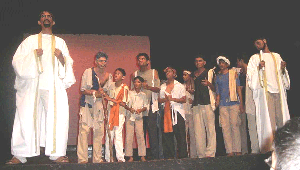 Rushan Hewawasam, Head Prefect of Wesley, was nominated for the Best Supporting Actor Award and highly commended by the judges for his moving portrayal of Volumnia, Coriolanus' mother. We were later informed that he had just missed out on the Best Supporting Actor award. The acting was strong all-round and the main characters were excellently supported by the rest of the cast. The judges also commented that the Wesley College play was the best edited of the 11 plays that were staged on Wednesday, and successfully conveyed the whole story - in well under the 30 minute time limit.
Rushan Hewawasam, Head Prefect of Wesley, was nominated for the Best Supporting Actor Award and highly commended by the judges for his moving portrayal of Volumnia, Coriolanus' mother. We were later informed that he had just missed out on the Best Supporting Actor award. The acting was strong all-round and the main characters were excellently supported by the rest of the cast. The judges also commented that the Wesley College play was the best edited of the 11 plays that were staged on Wednesday, and successfully conveyed the whole story - in well under the 30 minute time limit.
None of this would have been possible if it weren't for a highly dedicated and motivated director, cast and crew that have worked tirelessly for the last couple of months. They have been well supported by their parents, the principal - Mr. M. A. P. Fernando, members of staff and students of the school. Mrs. Rochelle Janson, the director of the production, along with her husband Manoj (old Wesleyite), and Ms. Juanita Beling, who did the make-up, must be commended for their wonderful work. Practice sessions have been (and are being) held daily (including Sundays) for 6-7 hours in the evening, and most of the time lasting well beyond midnight. It must also be mentioned to the credit of the cast that despite late night practices, they do not neglect their studies. While dropping in to view practices in the College hall, I noticed on many occasions, cast members studying and doing their homework between scenes and
during short breaks. I can honestly say that I don't personally know of any other group of individuals that are so very committed to achieving their goal in bringing fame and glory to the school.
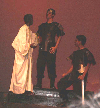 As many of you may understand, productions such as these cost time and money. A lot of preparation and hard work is involved over several weeks and months even for a 27 minute play. Costumes, make-up, props, sets etc. have to be made, hired or purchased for the play. To keep the cost to a minimum, many volunteers help out with preparations. Compared to the production budgets of many other schools, the Wesley College production has definitely been cost-effective. However, despite the best efforts, the initialbudget set for the semi-finals has been exceeded as preparations are underway for the Finals next Sunday. A sum of around Rs. 20,000/= is urgently needed for the construction of props, set design, fine tuning of costumes etc. for the large stage at the BMICH where the Finals will be held. The school has been very supportive of the production, however, it will be greatly appreciated by the team if old Wesleyites can help out at this hour of need.
As many of you may understand, productions such as these cost time and money. A lot of preparation and hard work is involved over several weeks and months even for a 27 minute play. Costumes, make-up, props, sets etc. have to be made, hired or purchased for the play. To keep the cost to a minimum, many volunteers help out with preparations. Compared to the production budgets of many other schools, the Wesley College production has definitely been cost-effective. However, despite the best efforts, the initialbudget set for the semi-finals has been exceeded as preparations are underway for the Finals next Sunday. A sum of around Rs. 20,000/= is urgently needed for the construction of props, set design, fine tuning of costumes etc. for the large stage at the BMICH where the Finals will be held. The school has been very supportive of the production, however, it will be greatly appreciated by the team if old Wesleyites can help out at this hour of need.
So, I think it is time that old Wesleyites in Sri Lanka and around the world joined to pay tribute, and encourage and support the fantastic work of these young individuals. Any financial contributions, large or small, will be most welcomed by the production team. Cheques drawn in favour of "Principal - Wesley College" or any cash contributions can be handed over to the College office (Tel: 2695763) between 7.30 a.m. and 3.00 p.m. (Monday through Friday) and a receipt obtained. When making your contributions, please specify that it's in support of the Shakespeare Finals on Sunday. If you have any queries, please feel free to contact me at anytime on Tel: 2917935, 0712-505776 or e-mail: cassini@sltnet.lk Also, any messages of support & encouragement for the cast and crew can be sent to this e-mail address and I'll be happy to forward them on. I will send a few
photos taken at the semi-final performance immediately after this message.
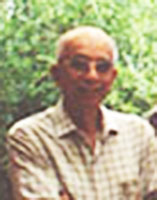 The year war 1932…. We were in Form II and were excited to have a new “English” teacher. It was a young University Graduate on his first job after completing his B.A. (Hons.) Degree. Our expectations and hopes were realized when Benjamin Blaze entered the class and spoke with real enthusiasm and brought a fresh new slant to ‘English’. In fact he went further than we anticipated and challenged us to explore new vistas. “Don’t be satisfied with prose” he said. “Try writing poetry!”
The year war 1932…. We were in Form II and were excited to have a new “English” teacher. It was a young University Graduate on his first job after completing his B.A. (Hons.) Degree. Our expectations and hopes were realized when Benjamin Blaze entered the class and spoke with real enthusiasm and brought a fresh new slant to ‘English’. In fact he went further than we anticipated and challenged us to explore new vistas. “Don’t be satisfied with prose” he said. “Try writing poetry!”
Our mouths fell open. How could we aspire to such heights, we thought. He insisted that we try this out and present our work at the next session. After some joking and sporadic attempts at jingles, Tryne C. Ahlip and I got our heads together and churned out some doggerel. At the mid morning recess, we summoned the class together and read our ‘poem’ to them, each reading alternate verses. This was received with much merriment and cheers as we had included some humorous references to another teacher,(Mr. G.V. Lappen) whom everyone feared. We walked on air till the luch break as we thought we were instant heroes and poets. In retrospect, we had spoken derisively about a rather rotund boy who resembled the fabled “Billy Bunter”. This was a mistake as it turned out.
I still remember the first two lines about the boy who came from Nugegoda. They are:
“…..is a piggy boy, the bada of the form,
And one day when he came to school,
His trousers were all torn!”.
I have omitted the name of the boy, though I still remember it. As we were going into class for the afternoon session, Tryne met me outside and told me he was not coming to class and would be taking the train home to Nugegoda. He advised me that I too would be in trouble as someone had told Mr. Lappen about the “poem”. I had never ‘cut’ school before and was caught in a dilemma. If I ‘cut’ school, I would have to explain to my parents about my absence, and if I went to class too I might be in trouble. I took a chance that Tryne’s fears would not materialize and went to class.
As soon as the bell rang I realized that Tryne’s fears were correct as Mr. Lappen walked into class looking more fearful than we had ever seen him before. He had a long cane under is arm. There was a deadly silence as he looked around the class. After what seemed like eternity he announced: “certain boys in this class have done something very bad. They have committed a terrible offence” (I remember those words vividly to this day.) He continued “stand up Ahlip and Blacker”. The rest of the class all looked towards me and I felt the blood drain from my face as I struggled to my feet. Mr. Lappen ordered me up to the front and demanded I hand him what I had written. There were two pages of what we had written, and luckily I had put the more incriminating page in another pocket, and so with trembling hands I proffered the single page. (I don’t know why I didn’t say it was destroyed). Mr. Lappen read the contents with visibly mounting indignation. My head began to swim and I cursed Tryne for letting me take this alone. Mr. Lappen seemed to take ages reading it and uttered grunts of disapproval and horror. I wondered about the worst that could happen and how I was going to explain to my parents that I was sacked from school, and other wild fears. Suddenly he crunched the paper and reached for the cane. I was really relieved to get the ‘12’ – they didn’t seem to hurt that much compared to my worst fears.
Mr. Blaze never referred to poetry in class again!. In spite of the caning I still hold a regard for Mr. Lappen who taught with real enthusiasm and gave me the rudiments of maths which stood me in good stead for many years after. However my taste for writing poetry never went beyond doggerel!
Tryne Ahlip became a well known journalist in Colombo before his sad demise.
 “l’ll always remember the cricket match between Wesley and Trinity College in early 1939. This was played on the Railway Grounds, off Baseline Road, not far from Wesley College, as most will remember”.
“l’ll always remember the cricket match between Wesley and Trinity College in early 1939. This was played on the Railway Grounds, off Baseline Road, not far from Wesley College, as most will remember”.
Stanley Jayasekera captained Wesley and his cousin Bobbie Schoorman captained Trinity. I do remember many interesting details of that match but will recount just one. In Trinity’s 1st innings one of their opening batsmen was M.K. Kanangara, who came out to bat with a smart new khaki pith hat. He seemed visibly uncomfortable when he had to face our opening bowler, Claude Ganegoda.
Claude took the new ball and before going back to his mark glared for several seconds at the batsman. Our wicket keeper was Dissanayake (elder brother of Edmund). Claude yelled to him to make sure that he didn’t miss the ball. Stanley immediately moved me from short square leg to deep fine leg. Claude’s first ball was a brute of a delivery. It was just short of a length but was a vicious off-cutter, bowled very fast. The batsman jumped back to avoid being hit and it whistled past his face. Our keeper did a desperate scramble to collect it and Claude with arms akimbo continued to scowl at the batsman.
This seemed to break the batsman’s nerve and he started to shake. The second delivery was even faster and caught him in the midriff. His new hat flew off his head and his nerve seemed broken. The third delivery saw his off stump uprooted, and the batsman returned to the pavilion sobbing and completely unnerved.
This match was won by Trinity by a narrow margin. In recounting this episode I contacted Bobbie Schoorman was lives not far from me in Noble Park, and whose memory of that match is even more vivid than mine. He added that Kanangara had been a prolific scorer in pre-season matches and the match against Wesley was his first inter-collegiate game. Bobbie remembered that Kanangara was still sobbing when he returned to the pavilion and his new hat had slight damage!

March 2nd 1874 marks the founding of Wesley College. At the Centenary Prize Giving in 1974, Mrs. Bandaranaike, Prime Minister, was Chief Guest. In her address she said, "The need of the day was for schools in Sri Lanka to prepare youth to fit into life and society and to be useful citizens, instead of solely producing scholars." The Acting Secy. of the OBU, Shelton Peiris proposed the Vote of Thanks. It was due to his initiative that the Diamond Jubilee Souvenir, the Centenary Souvenir, and the 125th, Centenary Souvenir were published.
The OBU Centenary lunch was held in the College Hall with as many as 432 participating, mainly due to the energetic Secretary, B. J. W. Karunatilleke sparing no pains to make it a memorable occasion. The Chief Guest was the present writer who had served 25 years as a teacher. Mr. Harold Nonis, President of the OBU, presided. The customary speech on behalf of the cricket team was made by Dayalan Sellamuttu. The next time I met in Bandaranaike was at a sad occasion. George Rajapakse, son of the Lion of Ruhuna, had passed away in UK. Besides the PM, Mr. Maitripala Senanayake, Lalitha Rajapakse and self were present at the Airport when the body arrived. I distinctly heard Lalitha say, "I told him not to proceed for the surgical operation".
The next time I met Mrs. B was when she was out of power. She had come to Sri Jayawardenepura Hospital to visit the widow of a former Minister, Chandrika too was with her. There were two beds in that room. The other bed was occupied by a relative of mine. Mrs. B kept on looking in our direction, and when she came across, she asked several questions about the nature of the patient's ailment, the name of the surgeon etc. She spoke very freely. As I left for home, I wondered how such a gracious lady, the first woman Prime Minister in the world, could be found guilty of the misuse of power. The country has just celebrated 60 years of Independence. My mind went back to the year 4th February 1948 when 5 Prefects of Wesley College, together with their Vice-Principal, Kenneth M de Lanerolle were proud invitees of the State, to this August function at Independence Hall. The invitation was first offered to Rev. Highfield in UK. As he was indisposed the invitation was extended to the Prefects.
A Biographical sketch of Rev. Highfield, Principal of Wesley 1895-1925, edited by Rev. W. J. T. Small is reproduced. "An incident or two in Mr. Highfield's life will show the real greatness of the man. When in that awful crisis during World War I, our government ran amok, and surrendered its administration to the military - when our leaders like Sir D. B. Jayatilleke and the late Mr. D. S. Senanayake and others were lugged along to jail without a charge or a trial, and some were shot to quell the riots - it was an Englishman, Highfield of Wesley, who wrote to the Governor thus "this is not what I was taught at Cambridge as British fairplay". He thereby stood a chance of facing a firing squad, for the mood of the military government was unpredictable and uncertain" (page 8 of biography). On that occasion, while entering the "rallipalam" decorated hall, we were privileged to witness the four runners who brought the "Message" from the North, South, East and West, handing them over to four ladies representing the Sinhalese, Tamils, Muslims and Burghers. Among the runners were Wesleyite M. A. Sheriff, and Oscar Wijesinghe of Royal. Edmund Dissanayake
From OBUA Newsletter - 2008 March
my thoughts keep turning back and bury
themselves in days past.

Perhaps I seem to have more time to spare or it may be the benefit of the years that I now find my thoughts frequently turning to “the good old days”. I have vivid memories of my early childhood in Ceylon, the day I was enrolled at Wesley College, and earlier when I attended kindergarten at Moratuwa. As I recall, we kids had to gather in a large room at lunch time, and finish off the mid-day meal with a drink of lime juice, the taste of which lingers even to this day.
I learned to write my name, and copy words from theblackboard using a “slate pencil” onto my slate. Does anyone remember using a slate and slate pencil when they started school? They were part of the material I carried in the school bag slung across my shoulder together with a book titled, I think, “My firstreader” I got interested in reading at an early age, and used my slate to draw pictures on. There was always a house, a tree, and a path leading out from the front door of the house, smoke rising from a chimney and a bird flying overhead. At least, that’swhat I saw in the picture, but everyone else saw a childish scribble.
 Nothing has changed, I still draw houses. I could not have known it then, but when I was a child WW II was raging across Europe and Asia. I became familiar with the sight of airplanes, tanks, warships and all the paraphernalia of war. We had to practice “Air-raid drill” When an alarm was sounded from the Principal’s office, we kids had to crawl under ourdesks, bite a pencil in our mouths to prevent us biting our tongue and stick our fingers in our ears so our ear-drums would not burst from the explosion of a bomb. The war finally ended in 1945.
Nothing has changed, I still draw houses. I could not have known it then, but when I was a child WW II was raging across Europe and Asia. I became familiar with the sight of airplanes, tanks, warships and all the paraphernalia of war. We had to practice “Air-raid drill” When an alarm was sounded from the Principal’s office, we kids had to crawl under ourdesks, bite a pencil in our mouths to prevent us biting our tongue and stick our fingers in our ears so our ear-drums would not burst from the explosion of a bomb. The war finally ended in 1945.
We were requested to go to school wearing red, white and blue ribbons pinned onto our school uniforms on the day it was announced. That night there were celebrations all over the island, crackers going off, fireworks, and searchlights lighting up the night sky. It was muchlater that I began to understand what I had lived through during the first decade of my life. Not very long afterwards, my entry to Wesley College began a new chapter and I was soon made to realize that school was a serious business.
I remember the library, where I spent many a free period or lunch hour. Looking back as we all do, I remember much that was good and memorable during our revered days at Wesley although at the time we just brushed past those valuable hours with little or no thought as
to how they were preparing us to face the future. We have all done this so I shall not mention names of Principals, Teachers, sportsmen, my classmates or anyone else, but I will record a grateful thanks to each and every one of them who pointed the way at some time during my journey.
It has been a long road, from slate and slate pencil to computers in one lifetime but the odyssey is not over yet. The best is yet to come…………
By Keith de Kretser
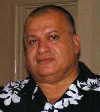
When HJV Ekanayake wrote the College Song in 1898 he established a link with a memorable part of European/British/Scottish history and the great Scottish Poet Robert Burns. The melody of the College Song is the tune ‘Scots Wha Hae” and it was written by Robert Burns in the 1700’s almost 500 years after the famous Battle of Bannockburn in 1324 between the Scots, lead by Robert Bruce and the English. To appreciate the connection with this part of history, set out below is the story. I hope you enjoy it and listen to this great melody by clicking on this link. I have had great delight in researching this information and my love of the College Song.
http://www.msgr.ca/msgr-humour/celtic-scots_wha_hae_wi_wallace_bled.htm
Keith de Kretser
Melbourne, Australia April 2008
THE STORY OF BANNOCKBURN
Of the twelve claimants to the crown of Scotland, no less than six of them had been born illegitimately. Though they had been sired by such men as William the Lion and Alexander II, that they were bastards made their chances of ever ascending the throne slim indeed.
Of the legitimate claimants, John Comyn the Black, Lord of Badenoch had a claim of descent from Duncan I, the king murdered by Macbeth in the Shakespearean play of the same name. Two men, the Count of Holland and a Robert Pinkey had claims based on descent from the two younger sisters of Malcolm IV, William the Lion and David, Earl of Huntingdon. The Count of Holland, at one point claimed that David, Earl of Huntingdon had given up his rights to the throne in favour of his sister Ada, the Count's mother. Had this been true, the Count's claim would have been the strongest, but it was never proved and presently the Count gave up his claim to the throne. That left three further claimants, all descended from the daughters of David, Earl of Huntingdon. The two strongest were John Balliol, whose grandmother was Margaret, David's eldest daughter and Robert Bruce Lord of Annandale, the son of David's second daughter Isabella. That the rules of primogeniture cleary showed Balliol's claim to be the stronger mattered little to the Bruce family and the stage seemed set for a destructive civil war.
It was then that Bishop Fraser, intent on avoiding such a calamity, wrote to Edward I asking him to come north and choose between the candidates. Edward came in the summer of 1291 and at Norham on Tweed his arrogant assertions that he was the Paramount Lord of Scotland angered the Scots who had come to hear his judgement. All but nine of the claimants that is. Balliol and Annandale among them, these men accepted Edward as their superior lord. Edward's final decision came months later and he chose Balliol. By the laws of the time it was the correct decision and though it brought Edward nearer his goal of dominating Scotland there can be no denying the justice of his choice. After Balliol was crowned at Scone as King John I, he rode south to Newcastle and there knelt in submission to Edward. Balliol was a weak man, alternatively timid or haughty and often sick. He was the last kind of king Scotland needed and Edward treated him with great contempt. He was ordered to Edward's court for the settlement of petty disputes affecting not England but Scotland, treaties were torn up and even the unpaid wine bills of Alexander III presented to him for settlement. Finally when ordered to take part in Edward's war against France, he decided enough was enough, ignored Edward's command and signed a treaty (the Auld Alliance) with France instead.
Edward came north in a fury. Though the old Earl of Annandale was dead, his claim had passed to his shrewd son and vigorous grandson, both named like him, Robert the Bruce. The Bruces promised their swords in the service of Edward and held Carlisle for him against a besieging army led by John Comyn the Red, a supporter of Balliol and married to his sister. Edward raised the siege and then marched on to Berwick, held against him by William Douglas. The town fell, the inhabitants were massacred and soon after the Earl of Surrey, sent in pursuit of John Comyn, met his quarry by Dunbar castle and slaughtered his army. All the major castles and keeps in Scotland either surrendered to Edward or were taken by siege and soon English chains bound the country. In July of 1296 Balliol wrote a craven letter to Edward begging forgiveness and when he submitted to the Bishop of Durham at Brechin castle, the heraldic arms of Scotland were humiliatingly torn from his tunic leaving him only with the contempuous nickname of 'Toom Tabard', the empty coat. He was sent to prison in England. Scotland suffered under an English yoke and the cruelties practised by Edward's men were many and atrocious. They led to the revolt of Wallace, his great victory at Stirling Bridge, defeat at Falkirk and final barbarous execution in London.
In those days Bruce found his family sometimes in Edward's favour, sometimes out and his own actions mirrored this fact. Sometimes the Bruce's sword was raised on behalf of Edward and sometimes against him. Bruce was appointed one of the Guardians of Scotland, along with Bishop Lamberton of St.Andrews and John Comyn the Red, son of the lord whose army had been destroyed by Surrey at Dunbar. They operated a shadowy government parallel to Edward's, but the rivalry between Bruce and the Comyn was bitter and sometimes violent and Bruce resigned his Guardianship in 1300. The Comyns, still Balliol supporters continued resistance and in 1300 and again in 1303, Edward rode north to punish their impudence. The latter occasion was prompted by the defeat of an English force by Comyn at Roslin. Edward wasted the countryside and the Comyn came before him in submission, his life being spared in return for an oath of allegiance to the English king. Bruce himself had submitted to Edward, once again, in 1302 and after Comyn's surrender was appointed, by Edward, joint Guardian of Scotland with Bishop Wishart of Glasgow and the English earl John de Mowbray. There was only one centre of resistance to Edward now and that was Stirling castle where a gallant William Oliphant and about two score men continued to keep the torch of Scottish liberty burning. Robert the Bruce commanded the English siege-engines that finally took the castle for Edward.
The English Host of Edward II
The English army that accompanied Edward on his march north was probably the most powerful force ever put into the field by the English in their wars with the Scots. The chroniclers said that it was a hundred thousand strong and though it may have pleased men in bygone ages to think that they vanquished such a host, the figure is ridiculous. To have supplied such a force, even if it could have been assembled, was a practical impossibility in the Britain of the 14th century. A more likely figure is somewhere in the region of 20,000. The cutting edge of the army, the seemingly invincible shock arm was the heavy cavalry. Made up of the knights, their squires and men-at-arms it was a potent weapon. The riders wore a surcoat of chain mail and this was covered with plate armour and then a flowing robe which carried the knights coat of arms for easy identification in the fight. The main weapon was a 12 ft iron-headed wooden lance. Battle-axes and maces (a kind of spiked club) were carried for close in work. the cavalry's tactics were simple: charge forward and allow the momentum of the charge to smash through and trample down any formation that stood in the way. Such formations were usually lighted armed foot-soldiers of little training for rarely did large groups of armored knights charge each other. Knight to knight encounters were usually restricted to single combat. One can imagine the terror a force of heavy cavalry at full gallop could inspire. The very earth would shake under the impact of the horses hooves and only troops of great discipline and gifted leadership could stand any chance of resisting them. Edward had 2,000 such heavy horse.
The cavalry were supported by around 17,000 foot soldiers, spearmen and archers. The spearmen were armed with a 12ft spear and a short sword or dagger as a sidearm. They wore a quilted or leather jacket to protect them against sword slashes or arrows and wore gloves of chain mail or steel plates sewn together. On their heads they wore a bascinet, a simple steel helmet either cone shaped or with a wide brim not dissimilar to the 'battle bowlers' of World War I. The exact proportion of English archers to spearmen is not known but the latter were in the majority. The archers, who had caused such execution at the battle of Falkirk, carried a longbow made of yew and a quiver of 24 arrows, each iron-tipped and a clothyard long. When the archers came forward to loose their missiles they usually stood in line about five or six paces apart. Edward's archers came principally from Wales, but also from Ireland and the north of England.
The nature of Edward's army, with the heavy cavalry the arm that would win any martial glory, led to command problems at lower levels. As all the nobles and knights fought in the cavalry, the foot soldiers were often poorly led. In contrast the Scots nobles and knights fought amongst their men on foot and were thus well placed to maintain morale and discipline. It would be an important factor in the coming battle. One more thing hinted at a weakness or lack of will. For all the chivalric power of the English host, the great English feudal lords were conspicuous by their absence. Only Hereford and Gloucester and Pembroke rode north behind the king. It would have been different in Edward's father's day and Scotland was blessed that the old man, the 'hammer of the Scots' had passed away at Burgh-on Sands, three miles from Scotland only seven years before. This king, Scotland's bitterest ever foe, was 68 when he died and leading yet another punitive expedition north to chastise those who had been the bane of his later years.
Among Edward's force, apart from the English, Welsh and Irish, were freebooting adventurer knights from France, Germany, Burgundy and Holland. There were also Scots, traditional enemies of the Bruce family and those who felt their own cause best advanced by service with Edward. The spirit of Scottish nationhood was nascent then and would need the impetus of a great victory to propel it to fruition. The Comyns stood with Edward, how could they do otherwise after the murder of their kinsman in Dumfries? The MacDougalls also, and the MacNabs.
The Scots under the Bruce
The Scots who faced Edward looked very different from the glittering chivalry that filled the ranks of their enemy. No great silken banners or horses bedecked in armour and gorgeous cloths greeted the English when they finally came upon their foe. The Scots army was rugged and tough, the product of a thousand guerrilla-type engagements fought out over the length and breadth of Scotland and they had neither the time nor the need to engage in sartorial splendour. There must have been men who had stood with Wallace that stood with the Bruce that day in the summer of 1314, and not a few of their sons. Most of them had known no other life than that of the warrior and they were ready for the fight. Bruce had spent the time from the issuing of the challenge to relieve Stirling Castle to the approach of 'proud Edward's power' in training his men in the methods they must use in the upcoming battle. They were a well-drilled, disciplined, well-nigh professional army that would successfully acquit itself when the clash of spears came.
The chroniclers said there were 20,000 of them and this figure is also ridiculous. The ratio of Scots to English was probably recorded correctly and it seems Edward had a fourfold advantage in numbers. The hard core of Bruce's army were his spearmen and of these he had 4,500 to 5,000. They were supported by a handful of archers from the Ettrick Forest and about 500 light horse. Mounted men indeed but lightly horsed they were no match for Edward's knights on their mighty armored destriers.
The Scots spearman fought with a 12 foot spear, a simple steel cap on his head, armored gloves and perhaps a leather jerkin and chain mail shoulder cover to protect from arrows. He fought in the schilltron, or spear ring, a formation with the ability to become a fluid line in advance with more manoeuvrability than the Macedonian phalanx whose purpose it sometimes duplicated. In defence the schilltron drew in on itself into a hedgehog of prickly spears. Simple manoeuvres it seems but desperately difficult to effect on broken ground, in great haste or with men less than intimate with their task. Until the advent of the Spanish tercios almost two centuries later, there were probably no infantry in all Europe better drilled than Bruce's that midsummer. If puissant was the word to describe Edward's host, disciplined flexibility were the words most applicable to Bruce's. The army probably reflected the racial mix that had created the Scotland of the early 14th century and the blood that flowed through their veins could have been Irish, Norse, French, English or Flemish as well as Scots and Pictish. Although Gaelic speakers were in the majority there were men who spoke Lowland Scots and even some who found Norman-French the easiest on their lips.
Bruce divided his spearmen into four main divisions. Randolph, Earl of Moray commanded the first and it contained men from Ross, Moray, Inverness, Elgin and Forres. Sir Edward Bruce, the king's last surviving brother led the men from Buchan, Mar, Angus, Strathearn, Menteith and Lennox in the second division. Walter the High Steward was the commander of the third division but as he was still a boy the real leader was Sir James Douglas. His men included the borderers and those from Lanark, Renfrew and Dumfries. The fourth division Bruce led himself and it comprised the Highlanders and Isles men of Angus Og MacDonald and troops from Kintyre, Bute, Carrick, Cunninghame and Kyle. The horse were led by Sir Robert Keith and the baggage camp commanded by Sir John Airth. Behind Coxet Hill on the edge of the battlefield there gathered 'the small folk', townsmen, labourers, craftsmen and small tenant farmers, perhaps up to 2,000 of them. Not trained or armed well enough to be placed with the main body of troops, they could be a useful reserve if they battle started to go in the Scots favour. If it didn't they would probably be massacred by pursuing, victorious Englishmen
The First Day Of Battle
Gang string your Ettrick bows,
Gang warn the spears o' Liddesdale,
That Edward leads the foe.
There is a legend that in the days when he was a fugitive king harried from one hiding place to another, when all his friends and family seemed to be either dead or rotting in English gaols, the Bruce found himself completely alone and hiding in a cave somewhere in the west of Scotland. So many times he had raised armies only to see them destroyed or scattered and as he lay on the damp floor of the cave he must have been dispirited beyond imagination, the bitter taste of despair welling up in his throat and onto his tongue. It was then that he saw a spider. Foolish creature, it seemed intent on spinning its web across an impossibly wide space and as the Bruce watched the spider leapt and failed, again and again. Six times it jumped and six times it failed but on the seventh attempt it succeeded. The Bruce took heart from this example of arachnid perseverance and rose once more determined to see his quest for the throne fulfilled. The quest led him directly to the banks of the Bannock Burn and the battle that would decide his throne's, his country's, his family's and his own fate
The Second Day Of Battle
Gang tak' your banners hame,
Just like the king, whae sought our croon,
And lost the bloody game.
Just like your king, whae sought our croon,
And lost the bloody game.
The sun came up bright and early on the morning of June 24th, 1314 and it promised to be another hot day. The first rays of the dawn shone on the faces of the Scots as they celebrated a pre-battle mass in the New Park. Below them on the sodden ground between the Bannock Burn and the Forth, the English were stirring after a damp if not sleepless night. It was a Monday and the feast of St. John the Baptist. The Scots breakfasted simply on bread and water and stood to arms. Bruce knighted James Douglas and Walter the Steward and after the ceremony the line of battle was formed and the order given to move down onto the Carse. It was no perfectly dressed line of soldiers that moved forward, rather a staggered grouping of four loosely-held together bands of men. Slowly they moved down the broken slope from the higher ground and towards their foe. Leading on the right was Edward Bruce's division. On their left were Douglas and Walter Stewart's Lanark men. Forming the left of the line was Randolph and the men of Ross and Moray. The king's own division of Isles men, Highlanders and Carrick levies was behind in reserve. Somewhere on the advance from the New Park across the Carse, the Scots halted and seemed to kneel. Perhaps they halted for a last prayer before combat. The watching Edward II cried out that they knelt to beg for mercy. his more seasoned commanders, hiding their embarrassment, pointed out that if this were so , then the mercy the Scots begged was from God himself and not Edward Plantagenet. It does seem unlikely that the Scots, having already said Mass, would chance kneeling to pray in such close proximity to the enemy and most probably the movement seen by Edward was a last chance to straighten and tighten the schilltrons' formations before the clash of steel.
To match the skill of the Bruce and his trusted lieutenants, the English had only the folly of Edward and noble officers riven by petty jealousies. Gloucester and Hereford quarrelled over who should command the English Van and heated words and insults exchanged led Hereford to ride back to Edward and seek his adjudication of this puerile squabble. Before he reached the king, the Scots had appeared and Edward had sounded the trumpets ordering his knights to advance. Gloucester, eager to lead the charge without the interference of Hereford, spurred his horse forward without taking the time to don his brightly coloured surcoat bearing his coat of arms. Without this he was just another mailed, armored rider and many of the knights didn't recognise him at first. As such the charge he led was not as compact and cohesive as it should have been. It was still a terrible sight to behold and was powerfully heavy with the weight of iron suddenly propelled forward. The knights raced on, faceless men in iron helms, their lances lowered and their great warhorses pounding the earth with their iron-shod hooves. They crashed into Edward Bruce's division and, though Gloucester was plucked from his saddle impaled by a Scottish spear, the fury of the charge caused the schilltron to bend - but not break. The English knights were not lacking in courage and they drove their mounts onto the spears. Horses and riders fell with broken spears in their breasts, but some broke into the schilltron and flayed around with mace, battleaxe and sword, cleaving skulls, limbs and shoulders until they were dragged from their horses, their helmets pulled back and their unprotected throats cut. Douglas and Randolph brought their divisions up in support on Edward Bruce's left and the English knights pulled back a little, probably hoping to regroup for another charge. The Scots gave them no respite and pressed on their heels, unstoppable as an incoming steel tide.
The sheer insanity of Edward II's choice of a campsite now became apparent. Caught between the Bannock Burn on their left and the Forth (or perhaps even the Pelstream Burn ) on their right , the English were caught in a space too constricted for them to manoeuvre. Although the three forward divisions of Bruce's army could have numbered no more than 4,000 men, they were enough to bridge the gap between water and water and trap the English where they couldn't deploy. The English knights had no room to adequately withdraw and reform for another charge. The great mass of English foot soldiers that outnumbered their Scottish counterparts by almost four to one were caught behind the cavalry and unable to even see the enemy much less come to grips with him. Even the archers, whose deadly shafts had won Falkirk for Edward's father, were impotent: the action was so closely joined that their falling arrows were as likely to strike their own knights in the back as the Scottish spearmen. And still the Scots pushed forward, driving their opponents back inch by inch to the water. The English had not given up, however and managed to extricate a body of archers from the great mass of the army and these were pushed to the right and forward, rushing along the banks of the river until they were in a position to enfillade the left flank of Douglas' division with their killing shafts. It was a critical moment, for a repeat of Falkirk was still not out of the question. This movement had not gone unnoticed by the Bruce and seeing the danger, he ordered Sir James Keith and his few hundred light horse to charge the English bowmen. Keith and his light horse flowed over the Carse as no armoured knight could do and he was entirely successful in his purpose. The Scots were never a nation of great mounted warriors and the later equine glory won by the Royal Scots Greys at Waterloo was more of an exception rather than a rule. The charge of Keith's men, however, held the fate of the nation between fingers and rein and was without question the most important mounted action in Scottish history. The English archers were utterly dispersed before they could bring their clothyard arrows to bear on the schilltrons and the Scottish line continued to advance without fear of flanking enemy archery.
It was the turning point in the battle. Bruce saw this and now flung his own division into the fray on the left of Douglas and the Steward. In earlier days Bruce had told Angus Og of Clan Donald "My hope is incessant in thee." and these words the MacDonalds chose to keep forever as their clan's motto. At Bannockburn he simply said, "Be cheerful and act valiantly." The MacDonalds and other Highlanders and the men from Bruce's own lands did both, cheerfully and valiantly rushing upon their foes, clambering over the slain horses and men and adding to the carnage with their spears, battleaxes and daggers. The Scots line newly strengthened pressed on and on, each step forward adding to the constriction of their enemy's power. At some point Edward's lieutenants realised the battle was lost and Sir Giles Argentine took his royal master's bridle and led him from the field. A large body of knights gathered round Edward and escorted him to Stirling castle. When Edward was safe, Sir Giles turned to the English king and said, "Sire.... I am not accustomed to flee and I will continue no further. I bid you adieu." He then turned his horse around and returned to the battle where he was slain. He had once been called 'the bravest knight in all Christendom' and the manner of his passing should serve to remind us that courage is never the monopoly of the victors, however much later generations might wish it so. Most of the English army saw Edward's standard leaving the field and saw no reason to stay themselves. The foot turned and ran, crossing the Bannock Burn and the Forth any way they could in their desire to flee. The 'small folk', the last reserve of the Scots, sensed the day was Bruce's and came pouring down from Coxtet Hill and their coming may have made the English think another Scottish army had arrived. With the foot fleeing behind them the English knights thought they finally had some space to withdraw and reconstitute the charge. It was a vain hope for as they pulled back the schilltrons felt the pressure on their front wane and exultantly called out, "On them. On them. They fail!" Later men talked of walking over the Bannock burn and other streams and keeping their feet dry, so thick did the English dead lie in the water.
Edward's army was completely destroyed. Some knights were taken captive and held for ransom, but the common soldiery were hunted down like wild dogs and slain by a populace bereft of pity after a generation of English depredations. It was a stunning victory, astonishing, against all odds and terribly complete. The day was won and though the war would continue, the initiative now lay with the Scots. The taste of victory was sweet indeed and perhaps for the first time the Bruce knew, rather than hoped, that the kingdom was his. The joy of his and his army's success ran through Scotland, for on that day we became a nation of free men and I would wager their are few Scotsmen today who have never, at some time in their dreams, stood with the Bruce on the Carse and gone forward with him to claw from the grasping hands of history a triumph that was surely his and his nation's due.
The Aftermath
...for as long as but a hundred of us remain alive, never will we on any conditions be brought under English rule. It is in truth not for glory, nor riches, nor honours that we are fighting, but for freedom - for that alone, which no honest man gives up but with life itself.
Declaration of Arbroath 1320
Edward II of England
After fleeing the field and with the bitter taste of Sir Giles Argentine's farewell in his mouth, Edward reached Stirling castle. Mowbray denied him entrance, and rightly so, for the rules of the game clearly precluded such a thing. Edward turned his horse around and with his knights by his side rode for Dunbar. He shook off the pursuit of the fiery James Douglas and the handful of Scots horsemen who had ridden after the English king determined to see him captive or slain. At Dunbar he took ship for the south and the faithful knights who had protected him in his flight were left to find their own way home through hostile countryside. His stock had never been high in his own land and the lack of great lords who had accompanied him to the fight should have told him his future prospects were dim. Yet he was obdurate in defeat and the war continued. In later years, after the shock of Bannockburn had worn off, he came north on abortive attempts to retake Berwick from the victorious Scots. He failed in that task and no major battles were fought, the Scots preferring to launch diversionary raids into the north of England. For many years the northern counties of Northumberland, Cumbria and even Yorkshire were wasted and burned with great regularity.
In time, a vindictive wife and her lover had Edward deposed and then forced to abdicate in favour of his infant son, the future Edward III. The ex-king was shunted from dungeon to dungeon across England and whatever his faults only the hardest of hearts could fail to feel pity for him in the squalid dishonour of his last few years. His life ended in 1327, in that most intimate of regicides when a red-hot poker was forced up his anus murdering him, no doubt painfully, without leaving a mark of violence. When he reached heaven or hell or purgatory or whatever part of the afterlife the Plantagenets were consigned to after their sojourns in this world, I warrant the fire in his arse was nought compared to the burning of his ears that his father subjected him to.
Scots Wha Hae
As most commanders do, Bruce addressed his men before the battle. He referred to their warrior struggles of the past twenty years. He told them of the fate that awaited them and unborn generations if they should fail. He urged them to slay the tyrant English and pull down their pride. He offered his men an escape. Any man who chose to go home and not stand with the army was free to do so, but in the Bruce's mind only traitor knaves, would-be slaves and cowards would take that course. Many commanders have given their troops the opportunity to leave, knowing that in front of your comrades the courage required to shame yourself and flee is greater than that needed to stay and fight. Below are the words the Bruce was said to have spoken. They were in fact penned almost five centuries later by Scotland's greatest ever poet, Robert Burns.
Still, imagine the field. Imagine the moment. Imagine standing there, the hot sun shining on your steel cap and the sweat matting your hair. Imagine the sight of 20,000 armed enemies with all their banners, trumpets and awful power barely a mile away. Imagine the king who had shared your trials, seen your joy, witnessed your pain and shed his blood with yours in countless engagements over the past few years. Imagine him mounted, belted, buckled and helmed, his head drooped as he searched for the words he must find. Imagine the head coming up, the eyes bright and sparkling, the throat swelling, the tongue and lips moving and in a great voice he speaks.....
Scots, wham Bruce has aften led,
Welcome to your gory bed,
Or to victorie.
Now's the day, and now's the hour;
See the front of battle lour;
See approach proud Edward's power -
Chains and slaverie!
Wha will be a traitor's knave?
Wha can fill a coward's grave?
Wha's sae base as be a slave?
Let him turn and flee!
Wha for Scotland's King and Law,
Freedom's sword will strongly draw,
Free-man stand, or free-man fa'?
Let him follow me!
By oppression's woes and pains!
By your sons in servile chains!
We will drain our dearest veins,
But they shall be free!
Lay the proud usurpers low!
Tyrants fall in every foe!
Liberty's in every blow!
Let us do, or die!
" Scots wha hae "
Written by Robert Burns 1759 -1796
Please follow the link below to hear this lilting rendition of the Scots Wha Hae the tune of the College song.
http://www.youtube.com/watch?v=xNUpihQasRA&feature=related
At the Edinburgh Military Tattoo I heard the massed Pipes and Drums play it in more Military tempo. When the distinguished Old Wesleyite H JV Ekanayake penned the words and selected the Scots Wha Hae as the music, I am sure that the inspired leadership of Robert Bruce as a leader also inspired him. When we sing the College Song we must step up the tempo almost as a march and it should be sung with gusto.
by Shanti McLelland

Ever since I can remember my days as Wesley College, it was home away from home. I was always happy to attend school everyday, rain or sunshine, even on holidays when it was possible to take part in an extra-curricular activity. It was critical for my parents that they selected a suitable college that would be able to help me materialize the dreams they had for me. It was when I was in the upper school that I realized the rich history and powerful legacy of my alma mater and that was why my parents were confident that Wesley would be my college of choice.
With a current enrolment of over 2,500 students, the construction of many new buildings, and the complete renovation of others, Wesley College will continue to be a premier institution that will be on the forefront of academics, sports and technology. The vision set forth by the Founder and the Principals that charted the course in the last 135 years will continued to be achieved in every conceivable way.
The College could not have a more appropriate motto…”Ora et Labora – Pray & Labour On” and the College Song with exhilarating lyrics written by Harold J.V Ekanayake to the music of “Scotts Wa Hae”…”men of grit and industry, honour bright and loyalty, to do the best in mart or hall and bat or ball” which embodies Wesley’s vision for all its students to become exemplary citizens. No matter where you come from or what community you live in, or who your parents were, Wesley has always been committed to nurturing and developing and transforming all students’ inherent potential into towers of strength. From the classroom to the boardroom, from the stage to the field, from the tent to the examination hall, Wesley was there to help one and all to get to the mountain top, to reach out to the stars, and to light up the distant future with a rainbow of hope.
 Since coming to Wesley, I have grown to adore the College and everything it embodies. There is a profound sense of family, pride, and dignity at the school. It could have been the dedicated teachers, the large number of amiable friends in the class room, the strong Christian values along the hallowed halls of fame, the vibrant hostel full of followers of Rev. Thomas Moscrop, the empathetic office staff, the intimacy of the grandeur buildings, the “one-on-one” attention and recognition by the passionate teachers, or the honour of being in the winning team of Rev. Samuel Wilkin the first Principal of Wesley. It is not easy to put in a few words the repertoire of world-class experience I received once I stepped in to Wesley’s world of tradition and legacy envisioned by founder Rev. Daniel Henry Pereira.
Since coming to Wesley, I have grown to adore the College and everything it embodies. There is a profound sense of family, pride, and dignity at the school. It could have been the dedicated teachers, the large number of amiable friends in the class room, the strong Christian values along the hallowed halls of fame, the vibrant hostel full of followers of Rev. Thomas Moscrop, the empathetic office staff, the intimacy of the grandeur buildings, the “one-on-one” attention and recognition by the passionate teachers, or the honour of being in the winning team of Rev. Samuel Wilkin the first Principal of Wesley. It is not easy to put in a few words the repertoire of world-class experience I received once I stepped in to Wesley’s world of tradition and legacy envisioned by founder Rev. Daniel Henry Pereira.
While embarking on my school years I was fortunate to meet many wonderful friends who are now prominent leaders and exemplary citizens who continue to help shape the school and the country. I had the unique opportunity to experience amazing academic, sports, and extracurricular activities that students of many other schools did not have had the good fortune to endure.
 I walked on to hallowed grounds of Wesley as a young boy and graduated out as a proud Double Blue… armed and ready to tackle all of life’s challenges and any adversities that may come my way. As I look into the rear mirror, there is no doubt that I was one fortunate kid that I had the opportunity to navigate the waters of rich culture and tradition of Wesley. I am assured that I had chosen a remarkable institution of broad learning that had allowed me to have an unimaginable school experience. Then Double Blue provided a rainbow of many educational experiences, it was your school and my school, it is for you and for me to build a fraternal band, Not for you, not for me, but for Wesley. Coming to Wesley College was the best decision of my life. Wesley has inspired me to not only achieve the possible, but reach beyond my wildest dreams to conquer what yet seemed to be impossible!
I walked on to hallowed grounds of Wesley as a young boy and graduated out as a proud Double Blue… armed and ready to tackle all of life’s challenges and any adversities that may come my way. As I look into the rear mirror, there is no doubt that I was one fortunate kid that I had the opportunity to navigate the waters of rich culture and tradition of Wesley. I am assured that I had chosen a remarkable institution of broad learning that had allowed me to have an unimaginable school experience. Then Double Blue provided a rainbow of many educational experiences, it was your school and my school, it is for you and for me to build a fraternal band, Not for you, not for me, but for Wesley. Coming to Wesley College was the best decision of my life. Wesley has inspired me to not only achieve the possible, but reach beyond my wildest dreams to conquer what yet seemed to be impossible!
Excerpts from the Wesley College Magazine February 1919 (From the archives held by Edmund Dissanayake ,veteran teacher at Wesley, and a revered cricket coach for several decades)
It was on the 2nd March 1874 (in commemoration of the death of John Wesley), that Wesley College was opened in the Mission buildings on either side of the Pettah Wesleyan Church (or chapel as it was then called). The College was the growth of the Pettah Wesleyan English School conducted by the Rev. D. H. Pereira (a highly cultured Educationist of his day). Mr. Pereira was made the first vice-Principal of Wesley College.
Some of the newspapers found fault with the authorities for designating the Institution a College. A public meeting was held to inaugurate the Institution which was presided over by Sir Richard F Morgan, the then Attorney General and a friend of the Wesleyans (father of Mr. Richard H. Morgan, Advocate). The doughty Knight encouraged the Wesleyans by his presence and his weighty words.
 The Chairman of the Mission, the Rev. J. Scott, wanted as principal a man who would and could work the institution with a will, and the Home Committee sent out an under-¬graduate of the London University, the Rev. S. R. Wilkin as Principal. The affection between him and his p1lpils was very great. All the pupils loved him, and therefore they did not wish to cause him sorrow by disobeying him in any thing The cane was seldom if ever used. At the very start the College had as Head Master THE PRESENT VETERAN HEAD-MASTER, MR. C. P. DIAS. (Hence the saying "Principals may come and Principals may go, but Mr. Dias goes on for ever"). The Rev. S. Langdon (afterwards known as the Apostle of Uva) was the lecturer in Natural Science. Of the assistant teachers, Messrs. Joseph Weerasinghe and Pullenayagam have joined the majority, leaving Mr. A. W. Siebel who, I am glad, is still in the land Of the living. Mr. Palis Samarasinghe, teacher in Oriental Literature, too has passed away.
The Chairman of the Mission, the Rev. J. Scott, wanted as principal a man who would and could work the institution with a will, and the Home Committee sent out an under-¬graduate of the London University, the Rev. S. R. Wilkin as Principal. The affection between him and his p1lpils was very great. All the pupils loved him, and therefore they did not wish to cause him sorrow by disobeying him in any thing The cane was seldom if ever used. At the very start the College had as Head Master THE PRESENT VETERAN HEAD-MASTER, MR. C. P. DIAS. (Hence the saying "Principals may come and Principals may go, but Mr. Dias goes on for ever"). The Rev. S. Langdon (afterwards known as the Apostle of Uva) was the lecturer in Natural Science. Of the assistant teachers, Messrs. Joseph Weerasinghe and Pullenayagam have joined the majority, leaving Mr. A. W. Siebel who, I am glad, is still in the land Of the living. Mr. Palis Samarasinghe, teacher in Oriental Literature, too has passed away.
After a few years, Mr. Wilkin wanted a trained assistant from England at the helm of this small barque or ship, and the Home Committee sent out the Rev. Arthur Shipham. He succeeded Mr. Wilkin as Principal, when the former became the Principal of Richmond College. Competition became hen, and it was uphill work at Wesley, but the authorities 0f the Mission said, "if it is uphill work, we must have a Hill as Principal," and the Rev. S. Hill (from Richmond Hill, Galle) was appointed Principal in succession to Mr. Shipham. Mr. Hill died soon after at the age of 32, and the College gathered a lot of moss which needed removal, and the Home Committee appointed the Rev. Thomas Moscrop as Principal. After a very successful term he was wanted elsewhere, and the College wanted more grants from the Government. But the Director put his foot down and said, "If you want more money you must pass more." The Mission agreed; and appointed the Rev. J. Passmore (now working as the C. L. S. Secretary for India and Ceylon). [Mr. Passmore succeeded Mr. Hillard. -ED.]
The College was getting on first rate but then, as now, people began to forget the good men of the past. The Conference said,” This will never do. We rejoice in the success but we should not forget the great names Remember who start¬ed the Wesleyan Mission to Asia, and his noble followers;" and they sent out the Rev. Thomas Coke Hillard B.A as Principal. As usual the College students got on very well in scholastic attainments, but the Home Committee believed in•" mens sana in corpore sano, " and said, " You must be high (in the) field too as cricketers, but lest you forget academic qualifications you shall have a London M.A and appointed
Photo:

THE REV. H. HIGHFIELD As principal, who needs no introductory remarks to the present generation. He carried out instructions'. He followed John Wesley's advice to Wesleyan Ministers "Spend and be spent in the Master’s service. " He found that the College was in debt, and that the age demanded better buildings, Where was the money to come from? He looked round for advice. He had as life companion one imbued with the Missionary spirit. Both were ready and willing to sacrifice their' comfort and face poverty and want in order to payoff this debt and to put up better buildings. Mr. High¬field rode over the whole Island on his bicycle to every old boy in hamlet and village to Christians and non-Christians. A non-Christian told me that Mr. Highfield's appeal and tone were such that he could not resist opening his purse. Then he wrote to the H9me Committee, and had the courage to demand (and the faith to believe that he would receive) Rs 250,000. There were counter claims before the Com¬mittee then from India and China for urgent needs. A special commissioner was sent out. Mr. Highfield went to Europe, and pressed his claims in the same irresistible tone as he did to the non-Christian; and Mr. Highfield's faith succeeded again, and as the result you see the enviable buildings at 'Karlsruhe."
The Home Committee was frightened when he applied for an English Assistant (qualified man), for they thought another appeal might follow for more" cash," and the Committee met in solemn conclave and said, "He will kill himself by collecting cash for the College; let us stop him doing so by sending him cash," and true to their word they actually sent THE REV. P. T. CASH (London B. Sc.). After a few months working with Mr. High¬field, the latter instilled his spirit to the young missionary to "spend and be spent." I cannot afford the time now to write about the splendid honorary tutors, the Rev. J. O. Rhodes (who died in Austra¬lia), the Rev. Edward Strutt,. the Revs. W. J. G. Bestall, J. S. Corlett., Arthur Triggs, Walter Charlesworth and our great mathematical teacher, the Rev. J. D. Vanderstraaten, M.A.., B.D., and the classical tutor. W. H. Solomons, Esq." B.A,
We heartily congratulate Mr. Sextus F. Wickramasinghe on winning the Ohlmus Gold Medal for Physiology at the Second Professional Examination last March. We only heard of it quite lately.
We congratulate the following Old Wesleyites on passing the 1st Professional at the Medical College last July:-Messrs T. C. Vanderziel, S. M. M. Jabir, N. K. Redlich, W. H Grenier. Mr. TC. Vanderziel heads the list (in order of merit) in 2nd class. Only one obtained a first class.
Old Wesleyites, and present ones too, will be glad to know that the Rev. Joseph Passmore late Principal of Wesley College, is editing an illustrated magazine for students called" Progress." The first two numbers of the new issue are out and look very attractive. Misprints such as "Edward VL, King and Emperor," on the cover of NO. 1 should be . avoided. The magazine is a monthly one and can be obtained at cost of Rs. 1 per year.
We are very glad to learn that Dr. Louis C. Brohier has been confirmed in his appointment as Colonial Surgeon for the Western Province. He has been Acting Col. Surgeon since June of last year. An old Wesleyite, therefore, is in possession of the highest Colonial Surgeoncy in the Island. We heartily congratulate him and are proud of the honour done him. Dr. Brohier has had a wide and varied experience since entering the medical service in 1891 and his rise has been steady, rapid and well deserved.
Mr. Albert Abeyaratne, another old Wesleyite, succeeds Mr.Corea in the vacant Mohandiramship. We congratulate him also.
Mr. D. B. Jayatilleke, B.A. has left for Europe. He is to read an important paper on Buddhism at Berlin. In England he intends studying for the Bar.
The Rev. J. S. B. Mendis was the specially selected preacher at ~he morning service on Sunday, July 31st at the anniversary of the Maradana English Sunday School. He preached an able, earnest, appropriate sermon from the text "The hireling fleeth because he is an hireling."
Mr. J H. A. Mendis has been appointed Lieutenant in the C.L.1.
Mr. S. Muttiah hopes to take his 1st M.B. London next December. We wish him success.
THE Prize-Distribution at Wesley College took place on Saturday afternoon, March 11th. The Hon. Mr. A. Fairlie presided, and the others accommodated on the platform were: The Rev. W. H. Rigby, the Rev. H Highfield, Mr. K. W. B. MacLeod (Mayor of Colombo), Mr. O.Hattley, Mr. C. P. Dias, the Rev. P. T. Cash, and the Rev. H. Binks. After an opening hymn and prayer by the Rev. H. Binks the report of the school having been read by Mr .Highfield, the Chairman rose to address the assembly.
THE CHAIRMAN'S SPEECH. Mr. Fairlie said: - Mr. Principal, Old Boys and friends of this College, I am pleased to be here this afternoon, and I think it is very encouraging to the Principal and boys of this College, to see such a muster of frie·nc1s upon this occasion. Apparently, there was no annual large gathering last year, and you are here on this occasion in large numbers. The report which has been presented shows the progress of the work during the course of the year. I notice that Mr. Highfield has taken up the question of Commercial Education; I think. it is important that this; question should be taken up as a good thing without any delay. I am glad to notice also that he emphasizes the importance of the subject of Botany. It is important that the country should be developed, and I am of opinion that there is among our young men a large number who should attach themselves to their land. And if they are to cultivate the land intelligently. they must study these two subjects, Agriculture and Botany, For this reason I think it is important in a College such as this, where many of the boys come from country districts. that these subjects should be taught and encouraged, I have noticed the reference in the Report to the boarding, I think it is a very important point, Mr.Highfield, some years ago, and those connected with him, had some difficulty over the removal of this College from the centre of the town to this splendid site which is bound to have an increasing population round it during ·the coming years. Mr. Highfield was more farsighted than Government.
Government are only beginning now to move their Royal College from its present busy site in the Pettah to a more healthy one close to the Race course. Mr. Highfield started his work several years ago. when land and material were very much cheaper than it is' now I think Mr. Highfield is to be heartily congratulated in having this land secured and erecting this building upon it, I notice that a boarding-house has been started. I think this is also an important matter. We are Sorry that Mr. Highfield is again contemplating leaving for home and our best wishes go with him; and we trust that he will come back with renewed vigour to carry on the work which he has carried on here. Of late, the question , of Education' has received much more attention than it used to get during the past 30 years great strides have been made in. connection with education in our own nation, in Europe, and the United States of America, and also in the East, specially in Japan, but to a lesser degree in India and in Ceylon. This question of Education is being forced upon us. I think Government have done wisely in not pressing for compulsory education in an island such as this, At the present time, Government are encouraging education in many ways. All estates have to provide for schools and teachers, but the boys and girls on the estates are not compelled to attend school. I have no doubt that will come -later. The village communities have 'a right to make education compulsory in certain districts. Government seem to realise that a too hasty compulsory education may upset the existing conditions. In Great Britain probably 80 per cent of the population could read and write before the compulsory Law was passed. In Ceylon, I suppose more than 90 per cent cannot read and write.
It seems, therefore, desirable, to proceed cautiously as th81:e are certain dangers to be guarded against. You know that an educated scoundrel is worse than an ordinary scoundrel. In my city, they started some years ago a free museum and a library. The first interesting event in connection with the library was a law case. A young man, who had been out of employment, attended the library and read certain books and by chance among them he read a book which taught him how to distil whisky. He bought the necessary apparatus, and turned out for six months,
I suppose, what was excellent whisky, and sold it without paying one cent of Duty, and was sent to jail. Unless' education is carefully guarded, and directed, there may be dangerous results to the community. In colleges such as this, education will benefit those wl;1o attend them and education is given in such a way by those who are in charge that the boys really become educated. In my city there was a wonderful professor who died recently and his ability brought him to the notice of Government who agreed that he should be knighted, so he proceeded to London and got his knighthood. During his absence, an assistant had been teaching the class which used to be taken by the professor who was a capable man with enormous brain power, Nobody in the class actually understood the professor. The assistant, who perhaps had not such great learning, made himself quite understood to the class, and when the announcement was made that the professor was coming back, a wag of the College took a chalk and wrote upon the blackboard of the College, " Night cometh and no man can work," You students are to be congratulated in having a principal and professors in this College whom you can follow easily. I am glad that Mr. Highfield is not going to give up classics. I must, congratulate you on the success which has attended this College, I hope, those boys who have not been successful in securing prizes this year will be stimulated to greater exertions. You know some of you are more gifted than others. Generally, the boy who works hard and steadfastly succeeds
The Principal said that kind letters, expressing inability to be present, had been received from the Director of Public Instruction from Nuwara Eliya, and from Sir Allan Perry, and from other friends from outstation places. The prizes were then given away by the Hon. Mr.Fairlie.
The following was the report read by the Rev. H. Highfield, Principal, Wesley College :- Dear Mr. Fairlie, I am very pleased to see you occupying the post of honour at a Wesley College Prize-Giving. it is a post that has been filled by Governors and Lieutenant Gover¬nors, by a Bishop of Colombo, by Generals and Chief Justices and other dignitaries of the State, but it has never had an occupant more worthy than yourself, showing a genuine Chris¬tianity applied to the commercial life of the Colony and ready to spend itself in kind services for the community in a hundred different ways. 'Ye are all glad that you have recently been in¬vited to take a place in the Colony's highest Council and are able there to make your influence felt for all good causes. Our last prize giving was held on November 27th, 1909, when Mr., Justice Middleton presided and the prizes .for 1908 were distributed. My report on that occasion brought the College's history as far as could be up to date. I, therefore, shall to-day endeavour to carry on the account from that time to this. I have, therefore, to report on the examination results published since that date and to give the most recent figures both statistical and financial show¬ing the College'£ progress 01' retrogression and to touch on those other parts of our collegiate life that cannot really be tabulated, the moral and spiritual well-being or otherwise of our recent. history and the new developments we are able to report as having taken place during the period under review. Our numbers keep up well-the number on the roll for the year ending November 1910, is 596 and the average attendance had then risen from 462 to 493, although the number on the roll in the preceding year was only 7 less than that now reported. Our average attendance was 86·6 as against 82'2 for the previous year. If the machinery devised for noting the total daily atten¬dance is steadily and conscientiously worked we should be able, r am sure, to reach the 90 per cent.
In the Cambridge local examination of Dec 1909, we Passed 11 juniors 3 of whom secured honours and the same 3 secured also distinction in one subject each. A. S. Cooray passed in the first class and won his distinction in Latin. E. E. Mack obtained a high place in the second class and A P. Basnayake a place in third class honours and each won the distinction mark in English. The remaining 8 satisfied the examiners. Some little improvement in mathematics was shown, but this bran oh of our work still leaves much to be desired.
Thirteen seniors passed, of whom three O. E. Goonetillake, C. E. de Pinto, and J. G. Kannangara secured second-class honours, and one, S. F. Perera, a distinction in shorthand and a respectable pass in Book-keeping. Though quite young we have taken him on to our staff and he is guiding the studies of those who desire to take up commercial subjects. A class has been formed and gradually this will become an organised department of our curriculum. Whilst believing strongly that school is a place for forming character and drawing out capacity and not a place for applying that capacity to specialised work possessing an immediate monetary value in the various flelds of employments I am still, I hope, large-minded enough to see that true education can be given in many different ways, and so whilst Wesley College, under my control, will not abandon the classics it if; doing its best, under grave financial disabilities, to broaden its outlook and to offer real help to students whose inclination draws them in directions other than literary .
We have not succeeded in passing any of our students through the Intermediate Arts, though we came very near to it this year, one passing in Latin, Greek, English and Pure Mathematics, and failing only in Applied Mathematics. One student- T. C. Dharmaratna-passed the London Matric. in January, 1910, and three others secured exemption from that examination.
The school inspection in November last yielded us very good financial results 'and the passes in standards I-IV in both branches reached a very high percentage indeed. The College income from fees shows a steady tendency Lo rise. We reported for the yea~' ending November 30th last, an income of Rs. 18,471-50. This is about 95 per cent of the total chargeable during the same period. A slight increase was made in the scale of fees in January 1910, and again in 1911. The graphic representation of the comparative course, upward or downward, of fees and of salaries shows. that when I was on furlough last the fees total sank below the salaries total, but there has been an unbroken rise in both since my return in May 1906.0 The upward tendency of fees has been ' maintained during the first three ° months of the current year and there is no reason why, under the able and conscientious control of the Acting Principal, there should be any falling off. But the expenditure is bound to increase during my absence for it must be remembered that the College is self-supporting so far only as the local staff is concerned the" Mission giving the services' of both Principal and Vice Principal, and consequently when either is on furlough, part at least of his work must be paid for out of College income. In February last we opened our boarding house. we began with one resident pupil and now have on our roll 28. These are all or almost all doing well in class work, and I expect the names of some will appear in the Prize Lists of the near future: They are enthusiastic cricketers for the most part and there, again, are likely to help the College. The care of the boarders has been under the control of Mr. Cash and I cannot speak too highly of the work, moral and spiritual done amongst them both by Mr. and Mrs. Cash. We hl1ve ample accommodation for 60 or 70 and shall be plel1sed to hear of applications, espoecil111y for boys under 12 or 13 years of age.
The Science Department, under the able care of the Vice Principal, is steadily growing and it will not be long before we are presenting candidates .for the Inter-Science. Whilst speaking of Science we must protest emphatically against the narrow limitation to Chemistry and Physics in the Civil Service Examination. Geology and Botany are as truly scientific subjects and, for a country like Ceylon, they are at least as important and as deserving of encouragement, yet our plea Is to have the latter Added among the subjects that can be offered has been repeatedly' refused; and the former subject is, I understand, being withdrawn from the list.
We have restarted our College Magazine and the first three numbers of the new series are out and can be seen and bought on the precincts today. We charge only 25 cents a copy and are resolved to keep the magazine going so long as it pays. It is essentially a, school . magazine and record of Wesley College doings, but in those doings, we are very willing to include news of old boys, Our old boys in England are aware of this; but are those nearer home equally alert? When~ they in distant stations read this report, let them take careful note of this part in particular and send in names and subscriptions; 90 cents in stamps will bring them very speedily the first three issues.
It is always difficult to report on the religious work of a College anywhere. In ours I believe there is steady attention to Scripture teaching and our Christian meeting has kept going well. A specially good feature of its work is that some of the boys have themselves given addresses and that when this is the case the attendance is quite as good as, if not better than, on other occasions. We are very much indebted, however, to those who from without have given us so much earnest and valuable assistance. I turn now to sport.. Our inter-collegiate cricket season in 1910 was as great 'a success as were those of the two preceding years. We had not expected this, but the team was under an excellent captain and its bowling and fielding proved too much for its opponents. We met the Prince of Wales' College after the limited season was over and lost the match. The season now nearly closed has been almost as bad as the last was good; the team is much stronger as a batting side, but has nothing like the bowling ca paucity of last year's and the fielding has been poor.
Photo:

The under 20 rule, passed several years ago, has been carefully observed by us in both seasons and this prevented us using at least one excellent bowler who, otherwise, would still have been in the College team. I would recommend our cricketers to pay more attention to inter-form cricket and have less to do with out- side Clubs, when the brief season of college cricket is over-. Football is, I fear, a mere interlude in the real business of cricket and is not taken up seriously. To the staff one and all, from the Vice-Principal and Head- master to the newest recruit, I offer my most hearty and sincere thanks. Their loyal co-operation has rendered possible the work done during the year. In our Masters' meeting, which we have tried to hold once a month, we have' had spirited discussions and many useful suggestions have been given and are even now being put into operation. I confidently call on all the masters to support Mr.: Cash with the same loyalty, when in a short time he takes up the work as Acting Principal. The Mission has very generously lent to the College the services of the Rev. H. Binks during the year. Mr. Binks is already known to the College in the classroom, on the cricket field, and as a speaker in the Christian meeting. I believe he will find a very congenial sphere of work and do yeoman service for the College.
In referring to the successes and promotions of old boys I do not apologise for not recording all that, it may appear to some, I should have referred to. The list would be much more interesting if there came from "Old Boys" 01' their friends up to date information to be put in the Magazine. As it is, the "Old Boys" must thank the Head Master' for nearly all the records here given.
Messrs. M. B. Abdul Cader and M. W. H. de Silva are to be
heartily congratulated on being the first Wesleyites to pass the London B.A. The former is entered at Downing College, Cambridge, and is 'working hard and hopefully for the Law Tripos.
Dr. E. C. Spaar has shown that he has not forgotten his literary studies and has passed the Inter-Arts of London.
Mr. S. T. Carthigasam has won good honours in Civil Engineering at Cambridge. Mr. Arsekularatne has passed the Banisters' Final. Mr. M. T. S. Oyer' is now a fully-fledged Advocate., Messrs D. W. Walpola, A. M. Rupesinghe, C. A. Rodrigo, D. T.M. Kulatileke, B. O. Pullenayagem and H. E. Abeyratne have passed their Proctors' and Notaries' Finals.
Messrs. W .. WS Thirimanne---
W. F. H. Perera have passed successfully through their Medical
College course.
Dr. Pestonjee has been promoted Captain in the C. L. 1. ;
whilst Major T. G. Jayawardana has been appointed Military Intelligence Officer for Ceylon-a new and important post.
Mr. R. F. Honter-Our second Ceylon scholar-is now, we understand, Director of Public' Instruction in Sierra Leone; and Dr. Brohier has been confirmed in the post of Colonial Surgeon
for the Western Province.
My hearty thanks are given to the donors of the following prizes: Attygala Memorial Reading Prizes, English Essay, Science, Logic, and Chitty Memorial Latin Prizes, also to Messrs. Miller for kindly giving the batting prize this year.

Dear Nihal,
You may not remember me at college, neither will Bryan, if I was collate every single aspect you have said in your email about school days, it brings back nostalgic memories of my schooldays. I joined Wesley in the year 1952. I remember Bryan represent (Ceylon) Sri Lanka when he was yet a school boy, against Pakistan. The match was played at the Colombo oval and he was 60 runs not out overnight. Being a Friday we were at school and could not go to see the match. Well, I went with my father the following day being a Saturday to see and cheer Bryan to his century. But to our astonishment he was bowled the very first ball he faced. Well done Bryan. 1) When I was in form I, I ran down the corridor and Miss. Blacker came out of the ladies staff room and I knocked her off her feet. She immediately remarked that I should be taught how to walk down the corridors and never to run. The most embarrassing part was when she made me walk up and down the corridor in front of all the little ones, who lined up the two sides cheering me.
2) Mr.Vethanayagam who was my class teacher went on a Scholarship to the UK. The first night in his Hotel room he had filled up the bath and with a bucket had been pouring the water on his head till it filled up the bed room.
3) I cant remember the whole match, it was memorable, Wesley were set to get 45 runs in 12 minutes by Trinity. We made it ! A memorable match. Lou Adhihetty captained Wesley that year and Harold Juriansz and Lou opened the batting. WHAT A SENSATION !! Harold scored 14 runs in the first two overs. Upali Samararatne got the winning runs and Wesley won.
4) Hiawatha ( the spelling may be wrong) in which I too played a part.
5) The most inspirational lesson was taught by Principal Mr. Shelton Wirasinha. Study hard, discipline your self and don't ever go across the road. (Welikada Jail)
6) Darrel Maye. Observer School Boy Cricketer of the year.
7) Being able to study with a many ethnic groups in harmony ( Tamils, Chinese, Burgers, Malays, Muslims, Sinhalese, Buddhist, Hindus, Maldivians, English, Christians and even Blind and the deaf)
Schoolboy memories-Ranjit Aaron- New zealand
I can't exactly remember the year. It might have been either 1960, 61 or 62 Wesley College Fete. I was involved in running the Chamber of Horrors. It was a tough ask. Well !!, we could not depict the Horror looking guys. So we went to Punchi-Borella and Borella junction and rounded up almost 7 beggars. We offered them Rs.5/= and dinner for the night, just to sit in the Chamber of horror.
Next we went to Upali & Ranjit Samaratne's fathers funeral parlour in Punchi borella and requested for two Coffins on loan. We dindnt have money to hire a vehicle to take it to college. So, we carried it to college, crying right along the way to college , as though we were taking a dead body to Kanatte.
At the School Fete looking at the Horror figures (the beggars), I remember some of the visitors who went through the chamber of Horror, looking at the beggars, remark "How well these boys act"
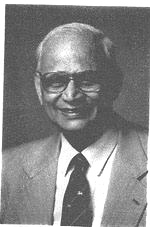
Hi Nihal,
I do recall numerous things BUT three things, I shall never forget. Two of the three are embarrassing and ONE a great JOY !
I recall how I was caned (4 cuts on my hand) by Cedric Oorloff (approx 1950 or 51) for allegedly talking in the College Hall while at General Assembly. NOW, HONESTLY AND TRULY (PLEASE BELIEVE ME), I did not talk as such ! David Schockman was seated next to me and he very talkative. I noticed Oorloff's eyes focussed on the two of us, so I (HONESTLY & TRULY) whispered to David saying "shut up" ! But, eventually, I was the victim. We were both asked to come to Principal's office after Assembly. IT WAS A GREAT EMBARRASSMENT BECAUSE I HAD (I THINK) NEVER BEEN CANED IN MY SCHOOL LIFE !!!
The second embarrassment was when I opened batting for Wesley against St Peter's College on their cricket ground in Bambalapitiya. I had already (in previous matches in the same season) scored two centuries and done exceptionally well as an opening bat. Against St Peter's, I went in to bat, took my guard and I was dismissed with the very first ball (I think the bowler was Vittachchi) - WHAT AN EMBARRASSMENT ! That was not all, in the second innings, AGAIN I was dismissed for a "duck" ! WHAT A DISAPPOINTMENT ! I was ashamed BUT, THIS, IS CRICKET !!!!
 The greatest joy of my life was NOT scoring 4 centuries for my school (thus equalling Bryan Claessen's record of 4 centuries) but helping Wesley to defeat Trinity College who (not intentionally but under the prevailing conditions/circumstances) set us 12 minutes to get 45 runs ! What an exciting match ! When I walked into the pavilion after dismissing Trinity, the coach Mr. A. V. Fernando, said "TOUGH TASK" ! Later, he came into the dressing room while I was getting ready to go out to open the batting. Then, I took the courage to tell him, "Sir, we are going all out to achieve this". I also informed that I had changed the batting order. As a right hand Bowler, I never liked bowling to left handed Batsman, so I said, " I have asked Harold Juriansz (also a left handed Batsman) to open the batting with me". AV had no objections because I was the skipper of the side (HE RESPECTED THIS - not all Coaches would accept such a decision - BUT AV DID ! ). Although I am an opening bat, as a rule, I never faced the first ball (I was a coward !!), my poor brother Vincent, who opened batting with me (previously) always agreed to face the first ball. On this occasion Harold also agreed to face the first ball. Harold was always quite an aggressive batsman and BELIEVE ME OR NOT he hit the first ball for 4 runs (BELIEVE ME OR NOT - it was a "blind shot" - anyway 4 runs !!). Harold scored at least 14 runs in the first two overs - roughly 6 minutes (I reckon I scored not more than 6 runs). Then, Harold got out. I cannot recall who joined me after Harold got out but when Wesley was around 35 runs for 2 or 3 wickets, Upali Samararatne joined me. Ratwatte (the Trinity bowler - Hector or Tissa) was doing his best to discourage and upset us by bowling wides or wide off the off-stamp. I cannot remember the full details but in last over Upali got a winning run (BLIND SHOTS OF COURSE !!!). WESLEY WON ! What a victory - PRAISE TO GOD NOT TO HAROLD OR UPALI OR LOU !!!!
The greatest joy of my life was NOT scoring 4 centuries for my school (thus equalling Bryan Claessen's record of 4 centuries) but helping Wesley to defeat Trinity College who (not intentionally but under the prevailing conditions/circumstances) set us 12 minutes to get 45 runs ! What an exciting match ! When I walked into the pavilion after dismissing Trinity, the coach Mr. A. V. Fernando, said "TOUGH TASK" ! Later, he came into the dressing room while I was getting ready to go out to open the batting. Then, I took the courage to tell him, "Sir, we are going all out to achieve this". I also informed that I had changed the batting order. As a right hand Bowler, I never liked bowling to left handed Batsman, so I said, " I have asked Harold Juriansz (also a left handed Batsman) to open the batting with me". AV had no objections because I was the skipper of the side (HE RESPECTED THIS - not all Coaches would accept such a decision - BUT AV DID ! ). Although I am an opening bat, as a rule, I never faced the first ball (I was a coward !!), my poor brother Vincent, who opened batting with me (previously) always agreed to face the first ball. On this occasion Harold also agreed to face the first ball. Harold was always quite an aggressive batsman and BELIEVE ME OR NOT he hit the first ball for 4 runs (BELIEVE ME OR NOT - it was a "blind shot" - anyway 4 runs !!). Harold scored at least 14 runs in the first two overs - roughly 6 minutes (I reckon I scored not more than 6 runs). Then, Harold got out. I cannot recall who joined me after Harold got out but when Wesley was around 35 runs for 2 or 3 wickets, Upali Samararatne joined me. Ratwatte (the Trinity bowler - Hector or Tissa) was doing his best to discourage and upset us by bowling wides or wide off the off-stamp. I cannot remember the full details but in last over Upali got a winning run (BLIND SHOTS OF COURSE !!!). WESLEY WON ! What a victory - PRAISE TO GOD NOT TO HAROLD OR UPALI OR LOU !!!!
God bless you all - HAPPY NEW YEAR !
Lou (Dr. Lou. ADHIHETTY, Wagenhalde 1, 8162 STEINMAUR, Switzerland,)

As I enjoy a restful break from the rigours of life over this Christmas season 2008, Dr Nihal Amerasekera’s request to put together a collage of word pictures on our experiences at Wesley College has stimulated my interest to make the following contribution which covers an era from 1959 to 1970, my period at Wesley College. Many Wesleyites who know me are amazed by my memory for detail and I suppose given my pachyderm proportions today which are more fitting of my nick name I had throughout College, being referred to this day as “Badda” by my friends, it would be fair to say that I have an “elephantine memory” to boot as well.
1959 -1965
I lived at the time in Polhengoda (until 1962 and then in Chapel Lane, Wellawatte) and in our neighbourhood we had a number of Wesleyites. I used to travel to school with Roger Joseph and his parents. A senior student at the time Wanigetunge who used to be called ‘Wanige”, Colin Reith and Rodney Nugara – “Koka” were the others and Mrs White was my immediate neighbour. I begin by going back to my first days at Wesley in the Nursery class with Miss Norma de Silva and then Lower Kindergarten (LKG) also under the care of Miss Norma de Silva. The sub-primary section was located at the end of the boarding section near the western boundary of the school. We were dressed in navy blue shorts, white shirts, white socks and black leather shoes though some wore white pipe clayed shoes as well. We would assemble in pairs and walk in to class to the strains of a military march played on the piano by Mrs Dulcie de Mel another legend of Wesley’s sub-primary at the time. The others being Mrs SEG Perera and Mrs Sheila Wijeyekoon. Those early years were important years as we forged our first friendships some which I still share today of over 50 years with classmates from that first year. The photo below is from the Double Blue 1960 edition of Prize Day 1960 for the Primary School. Front row left to right are Darryl Koch, Tariq Bongso, Braden Koch and me. I still have all my College magazines since 1959 a full set that I have collected up to and including the special 125th Jubilee edition..
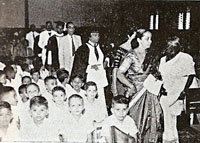
After successfully navigating through the LKG I was next in the UKG with Mrs Sheila Wijeyekoon. In standard 2 I had Miss Christine Stork and in Standard 3 Mr Raju Hensman. I was fortunate to encounter Mrs Wijeyekoon when she made the bold move out of the Kindergarten and took up Standard 4. Miss Iris Blacker another legend at Wesley who had served the school with distinction had retired and by the time I reached standard 5 Wesley had recruited another spinster in Miss Masillamoney who was equally strict but not as particularly as Miss Blacker. I recall as class monitor having to see the Matron to obtain a bottle of Dettol to wash the mouth out of one of my classmates who had sworn when addressed by Miss Masillamoney. She really meant business in washing his mouth out. She was also very adept at flicking a blackboard duster or her telescopic umbrella with pin-point accuracy when she would have a go at students who were disturbing her when her back was turned to the class. Her other disciplinary measure was the twisting of your ears till you writhed in agony. In this year we had two of our classmates who migrated to Australia – Manfred Redlich and Neil Van Buuren. So being in the English stream, she would from time to time when her patience was being tested by the students, shout at us saying - ”Go to Australia you Burgher buggers, go! Please go! Do not waste my time.” Regardless of these rantings she was a very good teacher in the old school style.
 During these primary years we lost our music teacher Miss Maureen Jansz who was replaced by Mrs Christiansz who was the mother of Roger and his younger brother who were at Wesley. Other famous teachers were Mrs Stambo, Mr PGR Fernando, Miss Ivy Marasinghe and Mr Rodrigo who ran the book shop and who referred to the square ruled exercise book as the “Kota Rule” book. Who could forget the Head Master of the Junior School, firstly Mr de Mel and followed by Mr Wilfred Wickramasinghe - “Wilpudda” - Athula’s father who lived at the flats behind College with teachers Felix Premawardhena and Edmund Dissanayake. We also had to learn oriental dancing and our teacher was Mr Basil Mihiripanne or affectionately known as “Meeya Panna”. This was a curious phenomenon to the Burgher boys and it was treated with great amusement by the boys who did not pay much attention. There were the usual stirrers who would get into strife and have to sit out the class. Classes were held in the last class room of the primary wing at the Baseline Road boundary. Some of the boys would disappear and go to the “Thé Kade” next door by jumping over the wall.
During these primary years we lost our music teacher Miss Maureen Jansz who was replaced by Mrs Christiansz who was the mother of Roger and his younger brother who were at Wesley. Other famous teachers were Mrs Stambo, Mr PGR Fernando, Miss Ivy Marasinghe and Mr Rodrigo who ran the book shop and who referred to the square ruled exercise book as the “Kota Rule” book. Who could forget the Head Master of the Junior School, firstly Mr de Mel and followed by Mr Wilfred Wickramasinghe - “Wilpudda” - Athula’s father who lived at the flats behind College with teachers Felix Premawardhena and Edmund Dissanayake. We also had to learn oriental dancing and our teacher was Mr Basil Mihiripanne or affectionately known as “Meeya Panna”. This was a curious phenomenon to the Burgher boys and it was treated with great amusement by the boys who did not pay much attention. There were the usual stirrers who would get into strife and have to sit out the class. Classes were held in the last class room of the primary wing at the Baseline Road boundary. Some of the boys would disappear and go to the “Thé Kade” next door by jumping over the wall.
The game we all played at the breaks was “King”. If it was not “King” it was marbles or a game of cricket in the small park. The small park was such a great asset of the College and it is a shame that many generations after the early sixties did not have the pleasure of playing in the small park. I remember having minders or mentors who were middle school students and I remember with fondness the late Kenny Dickson who was my mentor. I recall how one day we would wait till the final bell sounded to leave the small park and return to class after lunch. At the back gate there was the usual Accharu Ammé, a Kadalai Man and at times a pingo man or a man with a cart of mangoes or rambuttans. On this occasion the man and his mango cart were ready to leave and he had slowly begun to push the cart down hill towards Mount Mary. As the barrage of students began running across the road in front of his cart, he had a battle to avoid hitting us resulting in the cart losing direction and ending in the gutter with his load of mangoes rolling down the road. This was an opportunity too good to miss and like schoolboys of generations past we grabbed what we could and scooted back into school. Some of us got away as the man monitored our departure from school later that afternoon as he tried to retrieve the mangoes from students he suspected had stolen his fruit.
Life at school in the Primary years was interesting as I began finding my feet and independence as I grew older in such a pleasant environment. Shelton Wirasinha took over as Principal in 1961 and his love of the arts added a new dimension to the extra-curricular activities in the areas of the arts – music, drama, oratory and literature. I was a member of Dias House and Vice Captain of the House. I was also a member of the Junior Choir and a Cub with 14th Colombo Scout Troop. School plays conducted each year were something we looked forward to and it wetted my interest in public speaking and I represented Wesley at many inter-school elocution and oratory contests. The Sports Meet was another event we looked forward to each year to see who became champion house.. But our greatest delight was going to watch our 1st Eleven play with the likes of Darrell Maye, Milroy Jebbarajah, Kenneth de Silva, L.C.R Wijesinghe to name but a few. It was a thrill when our hero Darrell Maye won the Schoolboy Cricketer of the Year in 1963.
The school fetes were also fun, with the merri-go-round and other rides. I remember my mother being involved with the Sela’s and Jonklaas’s in the Cake and Sweet stall which was in the Highfield block ground floor. I remember winning a cake which was of a crinoline lady looking resplendent in a skirt made of multi-coloured delicately presented butter icing. The competition was to name the lady. My entry was Ramona as the popular hit of that time was Ramona by the Blue Diamonds. I still have vivid memories of one fete where they were conducting a Dutch auction for a Humber push bike in the quadrangle in front of the office. As the crowd were bidding, Garrick O’Neill who was a student in senior school who was nearby tossed a dashing cracker at the Auctioneer – Michael de Saram who was the Bursar at the time. Little did he know that the Vice Principal – LAFA had spotted him. LAFA quickly pounced and slapped him. Garrick was suspended from school for sometime. As a junior I was in awe. Who can forget the Chamber of Horrors held in the Biology Lab and balcony area. They were really scary. I also remember the shooting gallery and stalls that were along the Baseline Road boundary from the famous Tamarind tree running towards the Junior wing. Some creative genius had come up with trying to toss a tennis ball through the mouth of a caricature of Christine Keeler who was the centre of attention in the Profumo scandal at the time. They were great times.
1966-68
So it was on to middle-school with new teachers and new experiences. Mrs White who taught English was our first form teacher and as mentioned previously she happened to be my immediate neighbour in Polhengoda in the early sixties. We were introduced to Mrs Isla Perera, Mr Justin de Silva, Mr Swaris, Miss Marasinghe, Mrs Lynette de Silva, Mr Vethanayagam, Mr Edmund Dissanayake, and Mr Charles Silva. They were interesting characters. Nick names were the norm and Mrs Perera was called “Vulture” because of her deep set eyes, high cheek bones and times gaunt features. Mrs Lynette de Silva who had a small black polyp on her face near her nose earned the name “Papaw seed’. Mr Vethanayagam was “Balli” for his nasal high pitched voice. Edmund Dissanayake was “Pigeon” and Charles Silva was “Boat”.
Justin de Silva was an interesting character. When he would cover for free periods he would give us a speech about the free world and America. He loved America and what it stood for and where possible introduced examples from American history and society. He smoked cigars and in keeping with his American dream drove a big yank tank – a Chevy or Cadillac. He lived near Ratmalana if I recall correctly and would drive to school some days along Galle Road and virtually follow the route taken by our school bus. You always knew when Justin was on the road as you would see these billowing clouds of smoke on the horizon as his car approached you. Yes! he was driving his car on kerosene. He was not one to be tested and if you pushed the wrong buttons he had a tendency to lose his cool and become physically violent using his hands to slap students severely. He was lucky that we were educated at a time when corporal punishment was accepted even extremes because one day he hit my classmate Yahiya Azeez whose father was an ASP rather severely. Justin de Silva was instrumental in forging a link with the hospital ship the USS HOPE - a US hospitable ship that at the time was berthed in Colombo to serve the community in doing much needed operations for the poor and needy. He wrote songs and started up a band with some of the boys from Wesley – Jeremy Kreltszheim, Asoka Jayawardenha and some others who I cannot recall. Noelene Mendis was the vocalist who went on to be a popular entertainer in her own right after that.
Another teacher who joined the College at the time was a chap named P I Perera. This poor fellow had a speech impediment in that he could not pronounce letter P instead the phonetics came out as “FUR” or “FEE”. So it was most amusing when he introduced himself as FEE I FURERA. Some of his classics were FAFAW, FLANTAIN, FADDY FIELD and FOFLIN SHIRTS. Talking about speech impediments boys could be cruel. Many may recall Donald de Silva – affectionately known as TOTA. His problem was that he could not pronounce the “c” sound and instead it was “T” as in “TOTA TOLA” hence the name”TOTA”. His younger brother Anura was “Little TOTA” as he had the same problem. When one teased them calling either of them ADO TOTA they would usually respond “FUT OFF YOU TUNT”.
During this time Miss Marasinghe who had slowly emerged as a sex symbol in our young minds as we were going through the inevitable changes in puberty got sick. She was convalescing at a house just behind the College in Mount Mary and many of the boys in our class and in College would go to visit her as she would be more casually attired in a house coat so that they could get a better view of her voluptuous assets. In fairness they also felt for well being but hell this was a good excuse to go around seeing her for a perve.
I was in Passmore House and played Hockey at the time. College had great hockey teams and there was a huge interest in the game. Participation in elocution contests and representing the College in mini-radio dramas were regular extra-curricular activities. We would begin preparing in our lunch time for the “Do you know” contests which would give us the experience to later represent the College at inter-school contests. Mrs Enid Sivasubramaniam was the coach.
My introduction to the College Choir was a wonderful experience and exposed me to the talents of Haig Karunaratne who I later had for English in Senior School. He was a fabulous choir master and his ability to get the boys to learn their parts and being able to follow the music even though they could not sight read music because they were not trained was a testament to his great skill. He had a great intellect that questioned and challenged the accepted norms of the day and expanded our intellectual horizons in engaging discussions on various topics. He was before his time and gave the impression of an eccentric individual but since those years he has still remained a man of great intellect and a teacher I really admired.
The College Choir produced some fabulous voices – the Wijesinghe brothers, Nimal Suraweera, Sam Sherrard, Spencer Berman and created that interest which I continued right through my school life being a chorister. The College choir was the largest in the schools with about 100 -110 voices. “Karu” who was an old Thomian brought with him a fine pedigree as a chorister, particularly as the Thomian Carol Service always followed the King’s College Cambridge format. So for months we would practice for our own Carol Service at the Methodist Church Maradana and we later shifted to St Luke’s Borella. Wesley being one of the member schools in the Student Christian Movement(SCM), we would participate in the Combined Colleges SCM Carol Service each year. Due to our choir numbers we always occupied the Choir stalls in church. Each year we would also sing at the Moor Road, Wellawatte Church on the invitation of Rev. David Wilson who was a former Chaplain of Wesley. We looked forward to this service as the parishioners would put on a string hopper dinner after the service for all the boys. Our traditional entry hymn was “Lo! he comes with clouds descending” a Charles Wesley classic which was traditional in the season of advent. So if you can visualize we would line up in pairs beginning with the sopranos at the entry door to the church and the remaining 45 pairs would wind their way through the porch along the drive and then on to the road near the gate. It was an amazing feat to get the boys to sing in time but Karu with his animated gestures did the job.
We also participated in other choral events for Radio Ceylon and won one event. The prize was money and I remembers the Principal bought us tickets to see the film – ‘Sound of Music” at the Rio cinema which included an Ice-Cream at the inter-mission. Those were the days.
Assemblies were great and I must say the routine of a brief Christian service at assembly each day was a great way to begin a new day. As youngsters there was also an element of fun as the boys would make sounds to annoy the prefects on duty. The introduction of polystyrene (foam) as packaging gave the students a new sound to their repertoire which annoyed the living daylights of the prefects. When rubbed on your polished shoes it would squeak and between “squeaks” and the “tocks” it was fun watching the prefects trying to identify the person or persons responsible. The usual trouble makers were inevitably picked up and some times they were innocent. Senior prefects Rohan Soyza, Rehaz Ahlip and Zubair Hussan would go ballistic.
I used to get my lunch delivered and we had to go and pick-up our Tiffin carrier or metal plate that was delivered to school from home. Some of us would swap from time to time to enjoy the flavours of someone else’s cooking. If that failed we enjoyed the fine food provided by the canteen run by Mr Bertie Hills, Mr Alfred Maye and Mrs Sela. Far better quality than the legendary “Gal Bath” Wijemanne days. Their motto was to look after us like they did their sons. Their seeni sambol sandwiches and string hoppers were great.
Occupancy of class rooms in the Highfield block was a regular feature as the transition from primary to middle school progressed and I recall how the students would taunt the school coolie – Perumal by shouting out his nickname “Kossa”. He would be on his way to perform various cleaning duties at the flats behind the tennis courts and no sooner had he heard the word “Kossa” there would be a tirade of abuse and he would pick-up a handful of red scoria which lay on the footpath leading to the flats between the Highfield block and the Vice Principal’s bungalow and he would throw it at the class. The classes under the staff room copped the worst. Teasing Perumal reached greater heights on the day of the sports meet when they used to have the servants race. Glowing under the sun after a few kassippu’s under his belt, Perumal would take on the likes of Marshall, Rodrigo, Gunapala, Wilson, Charlie and others. Gunapala had the wood on all of them but it gave us great delight for when they would run past the houses on the edge of the track the boys would roar “Kossa”. It was the only time he would not react as it was a formal event of the College.
The Middle school co-ordinator was the imposing figure of Mr Felix Premawardena who we feared. The end of third form and middle school was where some of our paths diverged as we had to make the choice of doing Sciences or Arts. Many of my friends would no longer be in my class though they would be in the same level. The journey through life at school drew clear distinctions in your status in the pecking order. Juniors were the brats and treated as such. Now I was about to enter senior school, long trousers, etc.. Soon the pendulum would swing the opposite way.
1969 – 1970
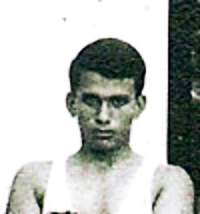 Hall’s Algebra , Durrell’s Geometry, Dreadnought Instrument Box were some of the iconic accessories when I commenced in form 4. Starched white tussore long trousers – set the image that I was now in Senior school. Whilst we still had many of the teachers we had experienced at some stage of our career, Mr V R Roberts was to leave his indelible impression on all of us. A silver haired gentleman in a cream tussore suit which he wore each day, he earned the nick name “Parana Coat” for it. He was educated to his JSC but he had been a teacher for many years and his expertise in teaching us all forms of the exacting sciences – pure and applied mathematics and physics was legendry and he had an equally renowned reputation outside college conducting many tutorial classes at his home and elsewhere. He brought a theatrical style and flair to presenting his knowledge which was most entertaining whether it was describing and demonstrating “Specific Gravity” or ‘Archimedes Principle” or a Theorem in Euclidean Geometry or Motion and Energy in Applied Mathematics. A remarkable fellow who expected total loyalty and respect and in return if you passed your O/L’s with good results you could almost be guaranteed a sub-prefectship. He had a significant influence in the senior school as he covered both the A/L’s and University entrance years as well. He would rank as one of my best teachers. He was also a Passmore House stalwart with Mrs Siva.
Hall’s Algebra , Durrell’s Geometry, Dreadnought Instrument Box were some of the iconic accessories when I commenced in form 4. Starched white tussore long trousers – set the image that I was now in Senior school. Whilst we still had many of the teachers we had experienced at some stage of our career, Mr V R Roberts was to leave his indelible impression on all of us. A silver haired gentleman in a cream tussore suit which he wore each day, he earned the nick name “Parana Coat” for it. He was educated to his JSC but he had been a teacher for many years and his expertise in teaching us all forms of the exacting sciences – pure and applied mathematics and physics was legendry and he had an equally renowned reputation outside college conducting many tutorial classes at his home and elsewhere. He brought a theatrical style and flair to presenting his knowledge which was most entertaining whether it was describing and demonstrating “Specific Gravity” or ‘Archimedes Principle” or a Theorem in Euclidean Geometry or Motion and Energy in Applied Mathematics. A remarkable fellow who expected total loyalty and respect and in return if you passed your O/L’s with good results you could almost be guaranteed a sub-prefectship. He had a significant influence in the senior school as he covered both the A/L’s and University entrance years as well. He would rank as one of my best teachers. He was also a Passmore House stalwart with Mrs Siva.
Sinhala which was growing as the projected main language under the Swabasha policy was taught by none other than Felix Premawardhena. We had to learn Sinhala poetry or “Kavi”. Even the burgher boys who spoke very little Sinhalese and were battling to read and write Sinhalese were presented with a bigger challenge learning Sinhala poetry and committing it to memory verse after verse. There was no respite if you could not, as Mr Premawardhena who was affectionately know as “Prema badda” would curl his moustache, fix his steely eyed gaze on you and call you to the front of the class. Woe be tide if you could not recite the verses as you either got you sideburns lifted up almost launching you in to space or yours ears twisted or the loose flesh around your belly button pinched and twisted as a form of punishment to encourage you to learn your Kavi before the next lesson. I was lucky though I came close on many occasions.
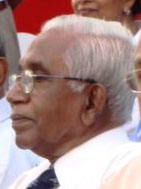 Chemistry was a new experience under Mr Pakianathan. Mr Pakianathan had a laid back style of lecturing us on the subject for the first half of the period and for the remainder he would set us an exercise of some sort and leave the lab. This practice never changed and as we got more knowledgeable we would be left to perform experiments unsupervised with only lab boy Rodrigo in attendance. The experiments usually involved giving us certain measured quantities of certain chemicals and we would have perform the experiment and then write up the equations and also determine some measurements as part of the practical solution. Rodrigo the lab boy liked a punt and many students had spotted him at the local “bucket shops” placing a bet. So one smart fellow decided that if we all chipped in some of our spending money we could bribe him to reveal the quantities of the substance and what substances he had prepared for us. This was a brilliant idea as he responded to the bribe and would give us all the details. Mr Pakianathan did not have a clue.
Chemistry was a new experience under Mr Pakianathan. Mr Pakianathan had a laid back style of lecturing us on the subject for the first half of the period and for the remainder he would set us an exercise of some sort and leave the lab. This practice never changed and as we got more knowledgeable we would be left to perform experiments unsupervised with only lab boy Rodrigo in attendance. The experiments usually involved giving us certain measured quantities of certain chemicals and we would have perform the experiment and then write up the equations and also determine some measurements as part of the practical solution. Rodrigo the lab boy liked a punt and many students had spotted him at the local “bucket shops” placing a bet. So one smart fellow decided that if we all chipped in some of our spending money we could bribe him to reveal the quantities of the substance and what substances he had prepared for us. This was a brilliant idea as he responded to the bribe and would give us all the details. Mr Pakianathan did not have a clue.
Sport in Senior school was Rugby and Athletics and I remember Mr Suppiah being the master in charge after Mr Swaris and introduced a cross-country race as an inter-house event. I remember representing College in the Public Schools Athletics Carnival in Jaffna one year and in Colombo the next. I participated in the field events. The trip to Jaffna was the best as every boys school in Colombo boarded the train at Fort Station. We were then joined by the upcountry schools at Polgahawela I think. We were accommodated at the YMCA in Jaffna with the Trinity boys and after lock-down at night we tied some bed-sheets together and scaled down the building and went into the heart of Jaffna till the early hours of the morning unbeknownst to Mr Suppiah. It was like we were at a Scout Jamboree with many friends from the other schools on this excursion to the North of our island. .
My rugby experiences are happy ones as well, though competitively Wesley was a poor side. College finished at 1:15 p.m. which gave me ample time to get home to Wellawatte, have some lunch and then grab my kit to go to practice. However I rode to practice with my jersey, boots and socks in a bag dangling from the handle bars and usually with a few comics to exchange on the way. Practice did not start till 4 p.m. so I made certain that my route went past certain girls schools so that I arrived on time. After practice though exhausted the ride home was always pleasant as one never took the shortest or quickest route home but involved stopping somewhere to speak to girls, exchange comics , etc.. The rock hard grounds were a testament to our dedication and love for the game, because we came off second best when we trained at Campbell Park.
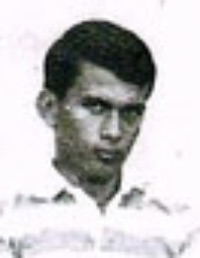
The most memorable sporting event in this time and during my time at Wesley was Wesley’s stunning victory over Royal in the last ball of the match against Royal College in 1969. I am sure it is a treasured memory not only for the cricketers as our success over Royal was poor in over 75 years of competing but for the many spectators present who witnessed a great game played in the finest spirit of sportsmanship. Cricket was the big winner and the commitment by the players, particularly Royal was most commendable to make a result when they could easily have played out a draw. The Wesley team that year led by Amaresh Rajaratnam enjoyed much popularity and if I recall was the Schoolboy Cricket Team of the year.
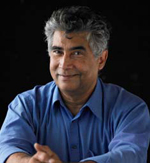 On the drama side Wesley had a growing reputation of doing some good pieces and would be invited to do excerpts from Dickens - Oliver Twist on Radio Ceylon and other literary pieces of work. Christopher Fry’s – “Boy with the Cart” was a fabulous production which won the all island inter-school drama contest and we received rave reviews in the media particularly the performance of Monroe Reimers as Cuthbert – the boy. Monroe who won the best actor was an all round student, a US Field Scholarship winner and later migrated to Sydney Australia where he graduated from the National Institute of Dramatic Art (NIDA) with none other than the internationally famous Mel Gibson who he shared a flat with. I was Cuthbert’s mother who he dragged along in this cart and the whole drama was based on our two characters and our situations in life.
On the drama side Wesley had a growing reputation of doing some good pieces and would be invited to do excerpts from Dickens - Oliver Twist on Radio Ceylon and other literary pieces of work. Christopher Fry’s – “Boy with the Cart” was a fabulous production which won the all island inter-school drama contest and we received rave reviews in the media particularly the performance of Monroe Reimers as Cuthbert – the boy. Monroe who won the best actor was an all round student, a US Field Scholarship winner and later migrated to Sydney Australia where he graduated from the National Institute of Dramatic Art (NIDA) with none other than the internationally famous Mel Gibson who he shared a flat with. I was Cuthbert’s mother who he dragged along in this cart and the whole drama was based on our two characters and our situations in life.
Mr Aelian Fernando or LAFA left Wesley and was sorely missed. A much respected teacher who had made such a great contribution to the life of Wesley College and her broader family. On his departure we had a Chaplain who occupied the VP’s bungalow who was an Englishman, Rev John Trevenna. He, his wife and baby moved in and became popular among the students and Wesley community. Rev Trevenna who was a linguist had a great command of Sinhala. He once told me, that every letter of the Sinhala alphabet represented a sound and hence there was no confusion in reading or writing the language. His command of the language was unique and he attracted large crowds whenever he preached. I know for fact because he would get a full congregation when he preached at the Sinahala Service at some of the local Methodist Churches such as the Methodist Church at the top of my street Chapel Lane, Wellawatte. He had an interest in rugby and athletics and would come down and get involved with our training which was a great buzz to the students. He had an old cream Skoda which he drove and I recall him spray painting it using a “flit can” in the porch in the VP’s bungalow. He was an incredible character with a hands on approach to doing many things and also took over as the master-in-charge of drama. I remember us rehearsing in his home for a Sherlock Holmes classic in the setting of his lounge and study. His young wife would make sandwiches for us or even better her chocolate cake as we rehearsed well after sunset.
My senior school life was cut short as my family elected to migrate to Australia before I completed my O/L’s in September 1970. Eleven wonderful years of my life at beloved Wesley College came to an end. People have often asked me why I am so passionate about things for Wesley that still sees me having an involvement with my alma mater 39 years after I left her hallowed halls and the country of my birth. Perhaps I may be odd, but I am indebted to Wesley College for it is one part of a mosaic which is me and that in part instilled many attributes of my character through caring and nurturing in my formative years. It was in another time and era where the values held by the community and institutions like Wesley left an indelible impression on our lives. I would like to think that many of her alumni share my sentiments. There are many more experiences and memories I treasure but these are just some that have brought back fond memories as I penned this essay.
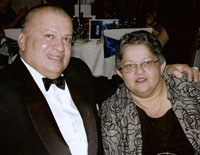

I think I mentioned that I had Found a diary I kept in 1954 of the happenings at Wesley. Typical entry---- Head Prefect confiscated my hymn-book because W.A.K.Silva and I were talking at Assembly. I took WAK's book, in turn. In the interval WAK got my hymn book back and the head prefect gave WAK a lecture and told him not to fiddle with hymn books at assembly.(February,10th 1954)
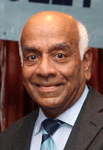 Feb.12th Friday1954--- Wesley playing Kingswood at Randles Hill. Kingswood all out 205 and Wesley 207 for 5. Batuwitage 57, Neil Gallaher 77, Lou Adhihetty 67n.o.
Feb.12th Friday1954--- Wesley playing Kingswood at Randles Hill. Kingswood all out 205 and Wesley 207 for 5. Batuwitage 57, Neil Gallaher 77, Lou Adhihetty 67n.o.
Gave my 25 cents (picture money) to Raymond and because some boys did not pay, I gave 10 cents extra.
Feb. 17th Wednesday. Class match against Form 111 B was started. I played for Form111A.We batted and were 15 for 1--Ahamath out. Colin De Silva and Sikkander were batting, at close. I was going four down.
Feb.18th Thursday--- Continued our match. We were 53 for 2---Scharengivel took both wickets. Samararatne and Sikkander were batting.
Feb. 19th Friday. Playing Trinity on our grounds. We batted first and scored 266 for 3 declared. Abu Fuard 65 Ansa Fuard 61 AR Chapman 77 not Out, Lou Adihetty 44 NO. Trinity fielding was bad. They were 61 for 7. Herman Claessen and Abu Fuard took the wickets.
Feb.20th Saturday I did not go for the match as it was going to rain. We won the match by an innings and 83 runs. They were out for 121 and 61 in the second innings---Samsudeen 8 for 23 in 18 overs.
These are typical entries I had made----through Jan.--April 1954. Monday, 22nd February, 1954
We continued our class match. We were in a good position---51 for 2. However, Scharnivel stuck a length and goy Upali S. Sikkander, Kularatne and Sappideen out with the total at 67.I was batting with Alfred David---I was 9 NO and David 0 NO---Total 76 for 6.
Tuesday, 23 February, 1954
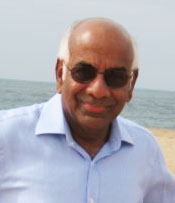 Continued our class match. David got run-out for 1 and Abeysuriya came in. We thrashed the bowlers---including Scharnivel. When we stopped at 1.00o'clock, Abeysuriya was 36 NO and I was 35 NO. We put on a stand of 72 runs and the total was 150 for 7, at close.
Continued our class match. David got run-out for 1 and Abeysuriya came in. We thrashed the bowlers---including Scharnivel. When we stopped at 1.00o'clock, Abeysuriya was 36 NO and I was 35 NO. We put on a stand of 72 runs and the total was 150 for 7, at close.
Wednesday, 24th February, 1954
Continued class match. Upali Samararatne, our captain declared at 150 for 7. They batted and were all out for 12 runs----Upali 5 for 3 and L.R. Gunatillake 5 for 8. In the follow on, they were 6 for 2.
Thursday, 25th February,1954
We continued our match. In the second innings, they were all out for 26 runs.I took a splendid catch at cover point, off Upali's bowling. Abeysuriya, Upali and L.R. Guntillake shared the wickets. Our fielding was poor.
Friday, 26th February, 1954.
I went for the Wesley- Josephian match at Darley Road. We wer 160 for 8 but V. Adihetty and R.M. De Silva saved our side and we were all out for 220 runs. They were 54 for 0 but Abu Fuard struck a length and at close, they were 66 for 2.
Saturday, 27th February, 1954
Went by bus for the match. They were 110 for 3 and declared at 228 for 8. We batted and got quick runs. We were 147 for 7---Gallaher 52. Rain stopped play. Medical College boys invaded the ground and near the Wesley tent, they got hammered with bricks. Some needed medical attention.
Monday, 1st March, 1954.
I was made monitor for the week. Started our match against 111C. We were in a bad position 56 for 4. I was 8NO---Upali, Abeysuriya, David --three good batsmen were out.
Tuesday, 2ndMarch, 1954
Could not continue the match.
Wednesday, 3rd March, 1954---PUBLIC HOLIDAY
Thursday, 4th March, 1954
Continued the match. I was out first ball. I hit a half pitch ball and was caught by K. Dwight. We collapsed and all the others only scored 1 run---all out 57.
They were 77 for 1. Girsie 20 out and K. Dwight 55 NO.Our fielding was useless. I took a good catch in the slips.
Friday, 5th March, 1954.
Had to go by train to college as car had gone to Welimada. Continued our class match. They were 146 for 7. They decided to declare. K. Dwight scored 77, our fielding had improved. I took another brilliant catch at silly-point.Upali, our captain, bowled unchanged and took 4 for 55.L. Guntallake 0 for 50 and Abeysuriya 3 for 35.
Saturday, 6th March, 1954.
Wesley was playing the old boys. Wesley 165 all out. Abu Fuard 46, MAM Fuard 32, Gallaher 26 and H. Goonatillake 20. Old boys replied with 145. Abu Fuard 4 for 68 H. Goonatillake kept wickets.
Sunday, 7th march, 1954.
Could not go to Sunday School, driver did not come.
Monday, 8th March, 1954.
I had to stay at home----very bad cold and fever. Did not hear about the class match
Tuesday, 9th March, 1954
Stayed at home---- still had a fever.
Wednesday, 10th March, 1954
Went to school. Heard that we had lost by an innings. We challenged 111B again. Won the toss and were 55 for 3---Abeysuriys 45 N.O. Upali asked me to bat at six---in case there was a collapse.
Thursday, 11th March, 1954
Continued our match. Abeysuriya was out for 51 runs. When I went in we were 65 for 4, Scharnguivel was again their best bowler. I hit him for two fours and Upali declared at 75 for 6.
Friday, 12 march, 1954
They began their innings and this time they did not collapse. They were hitting Upali and Abeysuriya. Upali asked me to bowl and I took 2 wickets for 7 runs. Brace and Manger were batting well. They were 56 for 7. No cricket match to-day so Full day.
Monday, 15th February, 1954
AK David was made monitor for the week. Could not play class match as no bat was brought. Dull day.
Tuesday, 16th March, 1954
No match again, Mr. Oorlorf announced that no boy should go upstairs from 12.15 to 1.15pm.
Wednesday, 17th March, 1954
Half-day. No match. Told to buy college tie by Mr. Ivor De Silva.
Thursday, 18th March, 1954.
Continued our match, They were 56 for 7. Our fielding was useless again. Colin De. Silva dropped 4 catches--all off Brace. At close they were 69 for 7---Brace still batting with Kottachchi.
Friday, 19th March, 1954
They were all out for 69. Upali took 5 for 35 and I took 4 for 14.
Upali sent me opening and was run out for 0. AK David ran me out. AT CLOSE, WE WERE 51 for 3, Abeysuriya 35 NO. No college match.
Monday, 22 March, 1954.
Coninued our match. Abeysuriya scored 61 and was dropped seven times. Upali was 21 NO. At close we were 96 for 3. Scarenguivel was bowling well again.
Tuesday, 23 March, 1954
Continued our match. Upali batted well and was 69 NO and we were 156 for 6 . Scharenguivel 4 for 49.
Wednesday, 24th March, 1954
Continued the match. Upali scored a century and retired. We were all out for 205 runs. They were 5 runs for no wickets.
Thursday, 25th march, 1954
Continued our match against 111B. They were all out for 57 runs. We won by an innings. Colin De Silva was our best bowler. He took 4 wickets for 1 run.
Links to further reading
Addendum by Dr Nihal D Amerasekera : To those who do not know Senthil he was the 1st XI cricket captain of 1959, a very successful year. He was a popular hosteller and also a day boy at college. He emigrated to the UK in the late 1960's where he had a very successful and rewarding career in Banking. Senthil is one of life's gentleman and a product of the Oorloff-Nonis years when the school produced exceptional men of grit and industry. It has been a pleasure to be associated with Senthil when he was the President of the OBU (UK) when he resurrected the Union from its VERY depths. Since then we have served in the Committee together in a fine and thriving OBU(UK). We wish him a long and happy retirement in North Devon, UK.
Cecil d'With-Barbut, President OBU Australia - 1984
Last July I visited Sri Lanka on business and took the opportunity of touring the island and visiting Wesley College. I stopped overnight in Singapore and then flew Air Lanka into Colombo late on Saturday night. I had made no definite plans, as it was just after the Oberoi bombing and I had to visit relatives in Wellawatte.
 As I arrived in Colombo the airport, as usual, was a mass of people all waiting to see relatives off to the Middle East. I looked around the Airport and there didn't appear to be anyone I knew, so I began making arrangements for the long ride into Colombo by Taxi. Just then I was tapped on the shoulder and to my great surprise, there were Edmund Dissanayake, Shelton Peiris and Mervyn Peiris with a garland of Double Blue in their hands, welcoming me to the Island .. It was such a relief to see some familiar faces. It made me feel I was returning home, rather than visiting some foreign land. They brought me greetings from the Principal and the Board of Governors. They informed me that Mr. Lanerolle was going to be away for a short time, but that he was looking forward to seeing me during the following week.
As I arrived in Colombo the airport, as usual, was a mass of people all waiting to see relatives off to the Middle East. I looked around the Airport and there didn't appear to be anyone I knew, so I began making arrangements for the long ride into Colombo by Taxi. Just then I was tapped on the shoulder and to my great surprise, there were Edmund Dissanayake, Shelton Peiris and Mervyn Peiris with a garland of Double Blue in their hands, welcoming me to the Island .. It was such a relief to see some familiar faces. It made me feel I was returning home, rather than visiting some foreign land. They brought me greetings from the Principal and the Board of Governors. They informed me that Mr. Lanerolle was going to be away for a short time, but that he was looking forward to seeing me during the following week.
I then went off to my hotel and the next day I rang M.A.P.Fernando who is now the Vice Principal of the School. He informed me that the scoreboard had not been completed because they had had some trouble with the Contractors. He told me how well the School was doing with Mr. Lanerolle at the helm, but again expressed his disappointment about the unfinished scoreboard.
 During the next week I completed my business commitments and it was amazing that everywhere I turned there was some old Wesleyite around to lend a helping hand. The Spirit of the Double Blue is indeed still very strong.
During the next week I completed my business commitments and it was amazing that everywhere I turned there was some old Wesleyite around to lend a helping hand. The Spirit of the Double Blue is indeed still very strong.
My travel in Sri Lanka was taken care of by Shanthi McLelland of McLelland Travels, another Old Boy. He went to a great deal of trouble to make my stay in the island such an enjoyable experience. It seemed more than a coincidence that at almost every hotel we stayed at, there was some Old Wesleyite, who went out of his way to see that I was comfortable. It wasn't surprising therefore that everywhere I went the talk centred around the College. There were some who were disillusioned, others who were sceptical, but they were all unanimous, that ,Wesley had turned the corner with the appointment of Mr. Lanerolle as Principal of the School; the great job he was doing in improving the standards at the College. During the first week of my stay I made one brief visit to the College. - It was Poya day and a holiday - I had a quick look around, met Mr. Sivanayagam at the hostel, a few of the old servants Marshall, Wilson, and a few others.
The next week, I went on tour. Incidentally, our Driver and Guide was also an old Wesleyite, one Mohan Abrahams, the nephew of the Teacher R. Abrahams.
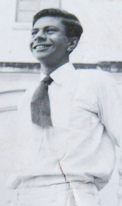 One of the biggest surprises on tour was when we had just arrived at Hikkaduwa and as I prepared for dinner and a lay evening, one of the waiters informed me that I was wanted on the phone. This, in itself, was quite a surprise, because once you leave Colombo the phones are forever out of order: But a greater surprise was to hear who was on the line, no other than the great Aelian(L.A) Fernando.
One of the biggest surprises on tour was when we had just arrived at Hikkaduwa and as I prepared for dinner and a lay evening, one of the waiters informed me that I was wanted on the phone. This, in itself, was quite a surprise, because once you leave Colombo the phones are forever out of order: But a greater surprise was to hear who was on the line, no other than the great Aelian(L.A) Fernando.
It was great to hear his voice. He was ringing from Beruwella. In fact, he had been trying for some hours and finally in desperation had told the operator that he just had to get through, which they finally did by means of a number of hook-ups., It was useless to try to talk as the phone lines were so bad, all I could hear was that he had dinner ready and we had to leave everything and come down to see him straight away. He wouldn't take 'no' for an answer, but we really didn't need much persuasion and within a few minutes, we were driving over to meet him. "Laffa" was just the same, his spirit undaunted. His wide smile and laugh had not changed. We had a great evening talking about all the famous cricket matches, when Wesley achieved the impossible. His heart is undoubtedly still at Wesley. Aelian Fernando appears fit enough, although he has had some cardiac set backs. He is involved with a Scholars Foundation. He spends most of his time travelling between Kandy and Beruwella, teaching foreign students some Sinhalese and something about the Island, organising their stay while in Sri Lanka. I also met Nalini Fernando and their lively kids. Ravi who is now a Product Manager at Lever Brothers and their daughter who is at University. Nalini has returned to teaching at St. Thomas' Prep School. I had a lovely time on the island, visiting the safer areas. We even watched a rugger match at Kandy between Royal and Trinity for the Bradby Shield. No sooner had I returned to Colombo than I was visited' by L.V. Jayaweera and Tyrone Maye. They wished to organise a night with the O.B.U. We set a date and he then arranged for my visit to the School. The next day he was at my hotel at 7.00 a.m. to take me to College. It brought back many memories that early morning drive through the crowds at Borella, up Baseline Road and the great College gates where we were met by the College Prefects on duty. No cars are allowed into the College but they opened the gates and we drove straight up the Principal's drive when I was met by Mr. Lanerolle. It was the first time I had seem him, since he left College in 1958.
The years have not changed him. He is still the impressive authoritarian teacher, with those great impressive eyebrows. He looks remarkably fit. He spent the morning taking me on a conducted tour of the school. They don't have morning assemblies now. There are no chairs or benches in the hall. This was something they need urgently. I met Haig Karunaratne who is also in charge of the Choir. He intends holding a Carol Service at the end of the year, and would like so much to have some chairs or benches for the occasion. If any Old Boy is interested in helping in this regard by making a small donation towards the cost of a chair, please contact me.
Photo:

I met all the Old Staff Mr. E.L. Rodrigo, R. Hensman, and some of the Old Servants, Marshall who has spent 46 years at the School. Also Guneratne. The College has just been repainted and looks spic and span. They have built a new Basket Ball Court in the front of the School. I had lunch at the Hostel. The staple diet of the Boarders in my day Dhall and Pol Sambol, is now quite a luxury. In fact, there is some talk about closing the Boarding School, as it is running at a loss. I hope this doesn't eventuate. The O.B.U. held a Club Nite at the pavilion, and fellowship was shared by all those who attended. A video recorder was set up and we played back my film of the School. The evening ended with a sing song. My overall impression was favourable. I can see the vast difference that Mr.K.M de Lanerolle has made to the College. It is a vast improvement to what things were when I visited the College last in 1980. In some areas there is great room for improvement. Campbell Park, the Pavilion, the Scoreboard, all reflect some of the areas that need some urgent action. I sincerely hope that all Old Boys and supporters of the School will forget their differences and get behind the Principal and give him all the support he needs to restore Wesley to its rightful place as one of the island's leading educational institutions.
Links to further reading
From the School Magazine of 1958 kindly sent to me by Arthur d’With-Barbut
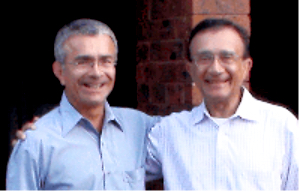 Staff-Many members of the staff have left us during the period under review. We hope that the new members would be able to continue the traditions of their predecessors. Mr. W. T. Canaga Retna has left us to assume duties as Principal of st. John's College, Nugegoda. During the seven years he served the school, he made a very great contribution to it. As senior Government master of the Sixth-Form he was responsible for a tradition that is still maintained-even students who failed the University Entrance Examination always passed the Government paper! He was also responsible for the high standard maintained in the teaching of English in the Sixth and Fifth Forms. He was a prominent· House-master of Wilkin. Mr. CanagaRetna's work as a "moral tutor" of a number of sixth-formers is specially remembered. He was very keenly interested in drama. Though a serious Christian belonging to the Anglo-Catholic Church he was ecumenical in outlook. He involved himself in all the Christian activity in the school, and contributed much to its spiritual life. He was the live-wire of the sixth-Form Union and the high standard maintained by the Union can be attributed to his guidance and help, which was always forthcoming. We wish him all the best in his new sphere of life.
Staff-Many members of the staff have left us during the period under review. We hope that the new members would be able to continue the traditions of their predecessors. Mr. W. T. Canaga Retna has left us to assume duties as Principal of st. John's College, Nugegoda. During the seven years he served the school, he made a very great contribution to it. As senior Government master of the Sixth-Form he was responsible for a tradition that is still maintained-even students who failed the University Entrance Examination always passed the Government paper! He was also responsible for the high standard maintained in the teaching of English in the Sixth and Fifth Forms. He was a prominent· House-master of Wilkin. Mr. CanagaRetna's work as a "moral tutor" of a number of sixth-formers is specially remembered. He was very keenly interested in drama. Though a serious Christian belonging to the Anglo-Catholic Church he was ecumenical in outlook. He involved himself in all the Christian activity in the school, and contributed much to its spiritual life. He was the live-wire of the sixth-Form Union and the high standard maintained by the Union can be attributed to his guidance and help, which was always forthcoming. We wish him all the best in his new sphere of life.
Mr. Ivor de Silva has left us to become Vice-Principal of Richmond College, Galle. He served Moscrop House as the Senior House Master and was responsible for many of Moscrop'ssuccesses. He also did useful work in the Hostel, during a critical period and effected many improvements. Mr. Ivor de Silva was a discoverer of talent. The present senior hostel master for instance was brought to the stage as "An Adana race-book seller". This was drama at its height! Mr. Ivor de Silva took a very great interest in the Music and Drama society. He helped in producing the operas "A-l add-in and out" and "Robin-Hood". The College choir owes much to him, for throughout his stay in the school he was the live wire of the choir. Mr. de Silva was also the master in-charge of the college swimming club. The high standard maintained in swimming and life-saving are solely due to his efforts. As senior Geography master in the Sixth and Fifth Forms, he instilled in students a love for the study of Geography. He maintained a very high standard in the teaching of Geography. Finally, the greatest contribution he made was to the spiritual life of the school. He was keenly interested in the activities of the S.C.M. and was able to witness effectively by leading a life of example. At the end of last year he led the Ceylonese delegation to the S.C.M. Triennial Conference held at Guntur, India. We wish him all success in his new walk of life.
Mr. W. B. Jayasinghe has left us to join the American Embassy as Librarian. During his period of service he involved himself in many activities of the school. He first served Passmore House as a House-master, and later became Senior Hostel master and thereby-Master of Moscrop House. He contributed a great deal towards Wesley's success in the S.S.c. and University Entrance Examinations. He was an ideal teacher and inspired many students who were fortunate to be taught by him. We wish him all the best in his new sphere of life.
Mr. Derrick Mack (now Lieutenant) has left us to join the Ceylon Navy as a staff-officer. He did much to further sport in the school. In the class-room he achieved greater things. We wish him well in his new walk of life.
The others who left us during the period under review were Messrs. D. L. Fernando, C. Ganesh, Agbo Karunaratne, Lynton de Silva, and D. M. Jayasekera. The school owes them much for their devoteq. services. We wish all of them the very best in their new spheres'· of work. Mr. Joe Dassanaike and Mr. A. Sivadasen served the school during the first-term. We wish them all success in their future life. We are glad to once again welcome Mr. L. A. Fernando to Wesley. We congratulate him on his obtaining the Master-of-Arts degree in America, and the Diploma of Education, at the Birmingham University. He serves us now in a new capacity as Chaplain. With the rich experience and knowledge he gained abroad be fits into this post admirably. We are also glad to note that Mr. Fernando has now entered the sacred bonds of matrimony. We wish him and Mrs. Fernando all the best in their future.
We welcome into our midsts Messrs. Fred Abeyesekera, D.V.A. Joseph, Ivan Ondatje, W.C.B. Perera, Austin Salgado. Frank Jayasinghe and Mrs. S. Rajandran.
We bade farewell to two members of the Primary school staff. Those who left us were Miss. Nalini de Mel and Mrs. R. Perera. We welcome into our midsts messrs. D. Jayawickrema, C. Wickramage, A. lyaturai and Miss N. de Silva.
We congratulate Mr. Charles de Silva on his success in the B.A. (Hons) London examination. We are also proud to note that Mr. Kenneth de Lanerolle, our Vice-Principal, led a delegation of teachers to China under the auspices of the Ceylon Teachers' Travel Club, during the April holidays. We also congratulate Messrs. C.J.T. Thamotheram and Felix Premawardena on being elected President and assistant Secretary respectively of the Ceylon Teachers' Travel Club.
Another member of our staff Mr. D.V.A. Joseph entered the bonds of matrimony. We wish him all the best in the future. A delegation of Russian teachers visited the school early in the First term, under the auspices of the Ceylon Teachers' Travel Club. - They were entertained by the Teachers' Guild. Gifts were exchanged.

A fusion of talent will take over Ananda College auditorium on June 27 at 6.30 p.m. when the students of Wesley College, Colombo, will unravel 'Fusion '09', a string of music and dance items. The event comprising of a blend of eastern and western acts is spearheaded by former head prefect of the school, Rushan Hewawasam. It is the first time that the school will be hosting such a large scale musical and dance extravaganza. "The slogan of the event is 'Cultures United' and that is our main focus. Our college had produced many versatile individuals but for some years the students did not get the opportunity to really show their colours in aesthetics. This was mostly because of the security situation in the country but now that terrorism is vanquished from the country, we thought of organizing the event so that it not only displays the skills of the Wesleyites but reflects the togetherness of the cultures and traditions of the ethnic groups," Rushan said. Apart from traditional dance a variety of modern dance techniques like hip-hop and an item presented by school's the primary students will also be included in the list. A song dedicated to the war heroes will also be one of the main attractions along with the grand final and many surprises in between.
Representatives from the three Forces, the police and old students of the school are excepted to grace the occasion along with Sri Lanka's doyen of dance Vajira Chitrasena, Western Provincial Council Opposition Leader Rosy Senanayake and popular writer Haig Karunaratne as chief guests.Rushan had come across the concept of 'Fusion '09' when he had been the chief organizer for a felicitation ceremony of the school's former principal M.A.P. Fernando on the day of his retirement. He said that while putting together the event he was struck by the abundance of talent within the Wesleyites.
The rest of his companions had taken to the idea with enthusiasm and soon they had the backing of the whole school. Teachers, students, parents and well wishers have worked frantically for nearly two months to make 'Fusion '09' a reality. The Wesleyites during rehearsals "Our principal Dr. Shanti McLelland was very keen that we do a good job and had been encouraging us from the beginning. The committee comprising Erandini Weinman, Niroza Gazzaly, F. Nawaz and Mithree Vithanage along with main student representatives Manoj Kularatne and Khaleeq Jayah have worked day and night on making sure that every aspect is perfectly in place. They been the backbone of the project," Rushan noted also stating that Greg Pallegama, Dhanish Musafer, Dilshan Seneviratne and Assan Meedin had been backing them all the way. Former Wesleyite and media personality Kumar de Silva will compere the event.
Rushan who had flown to the country from Australia especially for the event, said that he had organized a number of events for schools in the island. He had put together about five projects for Wesley college but nothing on such a large scale and as exciting as 'Fusion '09'. Speaking on the challenging task of putting together 'Fusion '09' student representatives Manoj and Khaleeq. They said that it is time consuming but fun to breath life to the project. "We have never been involved with such a big task before. At times it is pressurizing as we have to see that everything is spic and span in time for the big day but Rushan had been devoted to the project. He made sure that everything ran smoothly," they chorused.
"The students rehearsed with teachers after school. Everyone played their part from designing posters and stage props to distributing invitations and writing letters. The funds will be donated to the school's aesthetic sector so that they will be able to use the money in purchasing instruments and new costumes for the students. We plan to host this event annually as the response is amazing," Rushan concluded with a smile.
The Grand Old Man of Karlsruhe Hill
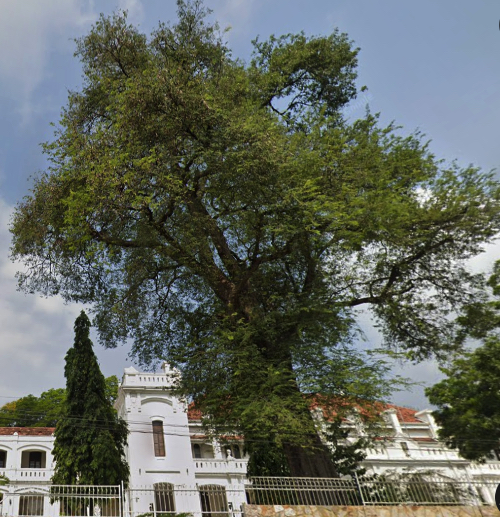
It has been said “Man can go to the moon and travel at the speed of sound but only God can make a tree”.
Driving along the busy Baseline Road, when one sees the elegant sweep of the buildings at Wesley College one cannot miss the imposing and dignified Tamarind tree in the foreground. It is an emblem of Karlsruhe hill and has now become a local landmark. Tall and imposing this Tamarind tree has a legendary status. It is a stunningly beautiful tree in splendid isolation, framed by an even more beautiful background of the handsome school buildings.
Every boy who has walked through the gates of Wesley College must know the Tamarind tree (Tamarindus indica). It is an iconic soul of countless generations of our school community. Majestic is a minimalist verb to describe how the tree looks in its full foliage. We grew up with this tree, each of us growing in stature as the years went by. When I was at school in the 1950’s it was a massive tree with a huge girth. It is unclear whether the tree was planted or if it was a product of a careless dispersal by man or bird. Hence this tree must now be more than a hundred years old and a veteran of gigantic proportions.
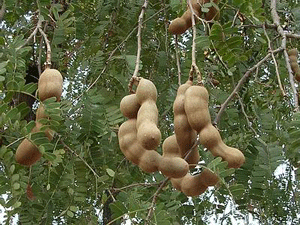 The Tamarind tree is the Grand Old Man of Karlsruhe Hill. Its origin however is lost in the mist of time. Photos of Karlsruhe Hill when the school was completed in 1907 show the tree in its present site. Then Ceylon was under British rule and the Governor was Sir Henry Edward McCallum who was preceded by Sir Hugh Clifford. The tree may even have seen the original owner of the property before the school was built. That was Charles Ambrose Lorensz, a solicitor of great distinction who sold this prime land to the Methodist Church. It is awesome to contemplate that even the great Principal, Rev Henry Highfield considered to be the ‘father of the school’ would have seen and admired the young sapling spreading its wings and reaching up to the sky.
The Tamarind tree is the Grand Old Man of Karlsruhe Hill. Its origin however is lost in the mist of time. Photos of Karlsruhe Hill when the school was completed in 1907 show the tree in its present site. Then Ceylon was under British rule and the Governor was Sir Henry Edward McCallum who was preceded by Sir Hugh Clifford. The tree may even have seen the original owner of the property before the school was built. That was Charles Ambrose Lorensz, a solicitor of great distinction who sold this prime land to the Methodist Church. It is awesome to contemplate that even the great Principal, Rev Henry Highfield considered to be the ‘father of the school’ would have seen and admired the young sapling spreading its wings and reaching up to the sky.
The tree has seen several Principals and teachers arrive and depart. It has witnessed generations of students who joined as kids and left as responsible teenagers. It is a living memorial to all Wesleyites since its very beginning. The Great Tamarind tree seeks to keep its origins a secret and so it will remain until the end of time.
During my years in the 1950's the front garden was maintained by our resident gardener, Raman, a native of Cochin. He looked after it with great care. The lawn was well manicured and emerald green. The flower beds at the edges were always in full bloom. We were not allowed to play ball games in the lawn which was maintained in pristine condition.
I’ve had a special affection for the Tamarind tree since I first set foot in school in January 1950. No other tree has captured my imagination like this one. Despite our busy school routines there were times I preferred to sit quietly by the tree to listen to the silence amid the rustling leaves. The deep silence in the midst of the noise and mayhem at school provided peace, tranquillity and calm. There is something almost spiritual, being close to a tree. In some ways it assumed a role to bring peace to my soul. Trees have been admired and revered over many generations. This shows how intimately humans and trees are linked in our journeys through life. Even though I live several thousand miles away separated by vast oceans and swathes of land, I still think of the tree now and then.
Tamarind is a tropical tree, native to Africa, including Sudan and parts of the Madagascar dry deciduous forests. It was introduced into India so long ago that it has often been reported as indigenous there, and it was apparently from India that it reached the Persians and the Arabs who called it "tamar hindi" (Indian date, from the date-like appearance of the dried pulp), giving rise to both its common and generic names. However, the specific name, "indica", also perpetuates the illusion of Indian origin. The fruit was well known to the ancient Egyptians and to the Greeks in the 4th Century B.C.
"A tree is a wonderful living organism which gives shelter, food, warmth and protection to all living things. It even gives shade to those who wield an axe to cut it down" – Lord Buddha.
The tree hosts a sublime richness of biodiversity. It nourishes, shelters, protects and supports a thriving ecosystem. The fungi, lichen, red and white ants live on its bark. Numerous garden lizards and squirrels have made it their home. Swarms of Bees and butterflies are always seen on and around this tree. Many types of spiders feed on the flies that live there. When the tamarind pods are ripe in August hordes of parrots descend on it. It is also a refuge for Golden Orioles and Barbets. In the evenings large groups of house sparrows make a din on its highest branches. The tree is full of life all year round.
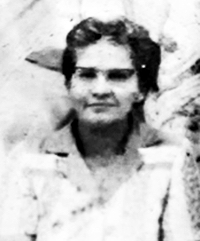 |
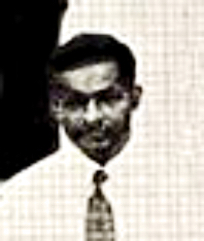 |
When we were in the primary school during the hot dry season from February to April several teachers preferred to take their classes under the Tamarind tree. Miss Iris Blacker and Mr Wilfred Wickramasinghe loved to conduct their classes beneath the boughs of the tree. There was very little traffic along Baseline Road. It was rather quiet and so peaceful in the shade of this magnificent tree. Shelton Peiris recalls many stories of mugging up Latin, memorising poetry and mouthing gossip during the intervals, under the canopy of the Tamarind tree. There is even a story of senior boys using a rope to tie to the tree, Ranis Appuhamy, the man who rang the school bell with serious repercussions.
As boarders we were in the school premises 24/7. In the 1950's the food in the hostel left much to be desired. We thought there was a famine of Biblical proportions. The boys never allowed the pods to ripen. Despite its acidity we ate the unripe tamarind pods in large numbers to relieve our hunger. Perhaps we benefitted from its high Vitamin B content.
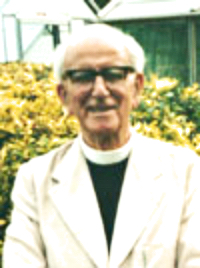 Some years ago, I managed to locate one of our revered past Principals in Glastonbury in England. Rev.William Holden was in his late 80’s but was clear in his mind and had some fond memories of his time at the school. He remembered the Tamarind tree so well and related a story of how he conducted a class under the tree on a hot April morning in 1944. As the class was large the circle was wide. A coconut crashed down from a nearby tree missing his head by a whisker.
Some years ago, I managed to locate one of our revered past Principals in Glastonbury in England. Rev.William Holden was in his late 80’s but was clear in his mind and had some fond memories of his time at the school. He remembered the Tamarind tree so well and related a story of how he conducted a class under the tree on a hot April morning in 1944. As the class was large the circle was wide. A coconut crashed down from a nearby tree missing his head by a whisker.
The tree was featured in our Botany field work with our biology teachers.
Although when viewed from a distance the Tamarind tree appears to be hardly touched by the rigours of time and weather. On a closer inspection the main trunk appears gnarled and humbled by the years. It has survived countless monsoons and electric storms and has even survived the wrath of the diggers during the expansion of Baseline Road. The tree is a part of our rich heritage and should be preserved. The last I saw the tree was in 2012 when it looked rather worn and battered but still there, hanging on. Just like humans in old age, trees need care. There are specialist Arborists that care for trees. I am confident that the present Principal and the old boys of the school love “The Grand old man of Karlsruhe Hill” as much as I do. They will take good care of the Tamarind tree and pay homage to it as it stands as a silent sentinel in front of our beloved school as it has done since its foundation stone was laid on the 4th of November in 1905.
Some memories from Shelton Peiris:
 The tamarind tree at Wesley has been a silent sentinel over the many decades. Its origin is lost to us in the mists .of forgotten years, but whenever I see it I begin to regress. For at its foot, during the intervals, we mugged up our Latin, memorized poetry and mouthed gossip. Under its spreading branches and in its cool shade we admired the cuties of Mt. Mary. Who of us can forget dear old Ranis whom we once tied up to the tamarind Tree with that unending silver chain and. coiled round his waist!
The tamarind tree at Wesley has been a silent sentinel over the many decades. Its origin is lost to us in the mists .of forgotten years, but whenever I see it I begin to regress. For at its foot, during the intervals, we mugged up our Latin, memorized poetry and mouthed gossip. Under its spreading branches and in its cool shade we admired the cuties of Mt. Mary. Who of us can forget dear old Ranis whom we once tied up to the tamarind Tree with that unending silver chain and. coiled round his waist!
young people how to make a living but doesn't
teach them how to make a life.

Some dictionaries will explain the word “Flag” as a symbol of unity, the sharing of a common set of values and so on. Whatever it is, and like all others, the Flag that defines Wesley College has now become a part of our lives, and brings past and present together whenever and wherever it is unfurled, as all flags are designed to do. It serves as a rallying point at every gathering of Wesleyites whether on the athletic field or in the classroom. My father, who was a wise man, made sure that all his sons would have a good education and for this he chose to enroll us at Wesley College. But even my Dad could not have known that when he sent his boys to be taught at Wesley, they would also be learning how to live.
Think about it. The idea of a school to be opened in Colombo may have been the intention of an overseas mission in England, but the task was entrusted to an outstanding man, the Rev. Henry Highfield. What he did, and how he set about doing it, is now woven into the history of Wesley and will stand forever as a fine example of unceasing dedication and commitment. I said we gained a life. We must never forget, and will forever be inspired by what Rev. Highfield accomplished. It is now up to each of us to accept the responsibility and to ensure that the torch is passed to those who will take our place. That is the life Wesley gave us. You cannot spend the first ten or twelve of your formative years at Wesley and then walk away and forget it. What you do afterwards, wherever you go, whether you know it or not, it will affect the rest of your life.
 Whenever we get together, at the Annual Wesley College Dance, Club Nights, Seniors’ Lunches, a golf tournament or an evening socializing with a few friends at home, the camaraderie will always be there. The recent visit by Dr. N.D. Amerasekera, so ably described elsewhere in this newsletter, is one example. He traveled from the U.K. to Australia on holiday, and looked forward to meeting old friends from his days at Wesley. Some he remembered as classmates, and many others attended not because they knew him, but because they also had attended Wesley College and knew of him and his generous contribution to the O.B.U, .and wanted to spend an evening with old friends. And as the moment arrived when we rose to sing the College Song, and gave out the War Cry I recalled being present when it was first introduced at assembly in the main hall by our Principal Rev. James Cartman. I tend to forget things now and again. This is to be expected at my age, but I can say that whenever I need to, I still remember all the words of the College Song. And when I do, whatever the occasion, I know that our banner is unfurled and is waving proudly somewhere as it has for the last one hundred and twenty-five years. It is designed with simple dignity; no stars, no stripes, no lions or unicorns nor crowns, no crossed swords and not in glorious technicolor either. But it has inspired generations of fathers and sons and will continue to do so for as long as we meet under its colours -
Whenever we get together, at the Annual Wesley College Dance, Club Nights, Seniors’ Lunches, a golf tournament or an evening socializing with a few friends at home, the camaraderie will always be there. The recent visit by Dr. N.D. Amerasekera, so ably described elsewhere in this newsletter, is one example. He traveled from the U.K. to Australia on holiday, and looked forward to meeting old friends from his days at Wesley. Some he remembered as classmates, and many others attended not because they knew him, but because they also had attended Wesley College and knew of him and his generous contribution to the O.B.U, .and wanted to spend an evening with old friends. And as the moment arrived when we rose to sing the College Song, and gave out the War Cry I recalled being present when it was first introduced at assembly in the main hall by our Principal Rev. James Cartman. I tend to forget things now and again. This is to be expected at my age, but I can say that whenever I need to, I still remember all the words of the College Song. And when I do, whatever the occasion, I know that our banner is unfurled and is waving proudly somewhere as it has for the last one hundred and twenty-five years. It is designed with simple dignity; no stars, no stripes, no lions or unicorns nor crowns, no crossed swords and not in glorious technicolor either. But it has inspired generations of fathers and sons and will continue to do so for as long as we meet under its colours -
Links to further reading

It was in 1932 that the distinguished philosopher Bertrand Russell wrote his famous essay “In Praise of Idleness”. His words ring true today.
Like most of my generation, I was brought up on the saying: 'Satan finds some mischief for idle hands to do.' I think that there is far too much work done in the world, that immense harm is caused by the belief that work is virtuous– Bertrand Russell
What I remember most of all of my childhood are the hours of idyllic idleness. Watching hours of cricket seated on the grass brought me immense pleasure. Long periods of inactivity fishing in a murky pond are images from the past which even now gives me great satisfaction. Restraint and patience are incredible gifts learnt whilst idle. Doodling and day dreaming brings peace to ones soul. We spent hours creating our own games and toys with simple household possessions like rubber bands, cigarette tins and bottle tops. We spent hours reading. We imagined the characters in books playing their roles in vivid technicolour. There was a world of fairies, Cinderella and Pinocchio. The superbly descriptive poems of Alfred Tennyson, H.W Longfellow and Samuel Taylor Coleridge helps to improve the powers of imagination. During the monsoons the darkening skies and the strong winds before the downpour had its own splendor. In the dry season the swirling winds carried plumes of dust high into the sky. I had time to be enchanted by these acts of nature and allow my thoughts to wander free.
Even as a kid I was fascinated by the green mountains. Its winding roads touching the clouds brought a sense of exhilaration. The gurgling streams that disappeared into the valleys below enthralled me. I feel immensely grateful for those opportunities to enjoy nature’s gifts as a child. I wish I can see its charm in the same way as 50 years ago when I could absorb so much of its magic so completely.
On recent visits to Sri Lanka I saw the childrens’ endless treadmill of tuition and more tuition, some starting at an early age of eight. Teaching after school hours has become a lucrative occupation. Those teachers who are in a position to advice parents who should require special help have a conflict of interest. I am unaware of any attempts by schools to discourage the practice of unnecessary tuition. Perhaps they encourage this in the hope they would get the benefit of good results. I read in the South China Morning post a story of a parent who asked her daughter what she would like to do on her 11th birthday. The child spends every weekend and most evenings being ferried from one extra curricular activity to another. She wanted to spend her birthday lying on her bed doing nothing. She got a clip round the ear for being “so ungrateful”
We now live in a material world. Mobile phones and games consoles have taken over the lives of our children from a young age. These are fascinating innovations and there is a need for them in their lives. Leisure time is being invaded by the escapist virtual worlds of the computer. They ought also to develop their imagination and this requires free time and space. Many of our children are geared young towards lucrative careers which require high grades at public examinations. Pushy Parents in their enthusiasm arrange private tuition taking away large chunks of their free time. They make their childhood full of stress, competing. Their young lives are crammed full of activities and homework. As a result they miss out on their childhood. It is merely a reflection of the tremendous competition to enter the course and university of ones choice. This luxury comes at a tremendous price. The suicide rates amongst children have increased just like the incidence of mental illness. I am not suggesting children should not work hard to achieve their goal and full potential. Common sense must prevail and a crucial balance has to be reached. We must allow time for them to develop their own privacy and depth. This would be their shelter from the inevitable storms of life in the years to come.
No one wants to be poor. As a child I remember being driven through the rough, impoverished suburbs of Colombo which had a lasting impression on my young mind. I was struck by the poverty and inequality. My parents made me understand I had to make my own way in life which gave me the incentive to work hard. The crucial period for hard work is the 3 years between GCE O’levels and University Entrance. The endless tuition before this period takes away their free time for little gain. Coming top in the class is good for one’s ego. If it is the result of endless tuition you have paid too high a price. Money and wealth are no guarantee of happiness and is something that has to be drummed into our youth along with the encouragement to hard work. Does the child have free time for the imagination to blossom and appreciate nature, art and poetry. They must learn social skills to play with the kids down the road. Are they streetwise? A childhood missed is lost forever.
Policies on education by the government is part of the problem. They have introduced a series of examinations from a young age adding pressure introducing a climate of competition from the very beginning. All parents give of their best to the kids. They spend their waking hours ferrying children from one tuition to another and then to other extra curricular activities sacrificing their own leisure. Parents want nothing but the best for them. They must also consider giving the children a happy well balanced childhood. The alternative is a high achieving child with psychiatric problems as an adult.
John Stuart Mill, philosopher and economist was born in 1806. He was educated by his father. He learnt Greek at 3 and Latin by the age of 12. The paternal pressure made him complete his education by the tender age of 14. By 16 John Mills was a well trained economist. At 20 he suffered a nervous breakdown that persuaded him that more was needed in life than devotion to the development of an analytically sharp intellect. It was the imaginative poetry of Geothe and Wordsworth that helped him recover from depression.
Streaming of students according to ability and small class sizes (30) will help to avoid extra lessons after school hours. The teachers should not move on to a new lesson until all the students have understood what has been taught. This is perhaps an over-simplification of a complex problem but indeed is a good starting point. Surely, if the majority in the class needs tuition it reflects poorly on the teacher. Is the width of the syllabus reasonable?
The best teachers should be rewarded - the most competent, must be adequately remunerated to remain in a profession known for low pay, low status and soul-destroying bureaucracy. The teachers’ pay should be performance related. There has to be a genuine attempt to apportion credit and blame and, in some cases, target help to teachers who need to improve. There is a dearth of dedicated teachers of the kind we experienced in Ceylon in the early to mid 20th century. The teaching profession is packed with people with low morale. They in turn have no loyalty to the profession, students or to their institution. The students suffer as a result. Better pay for teachers will re-invigorate this noble profession. Do the white collar bureaucrats of the Department of Education show any concern for the problem? One has to care to be concerned!! It is never my intention to discourage tuition for those who have a dire need. It is now generally assumed that everyone needs tuition and that also from the very beginning of their school careers. This would be hard to justify and most certainly have a detrimental effect on their development.
By Keith de Kretser
23/7/09
 |
 |
 |
 |
I met Rodrigo for the last time in 1999 when I went back for the 125th Jubilee celebrations. He wore baggy tussore shorts and a singlet(banian) and his room was under the stairwell at the laboratory end(physics lab). He even slept there.
Rodrigo, Marshall and Ranis were legends in their own right. Loyal dedicated servants of Wesley. They like the ground staff Wilson, Charlie and others were so much a part of the fabric of Wesley. Even the coolie Perumal who we used to annoy by calling him “Kossa”. He would abuse us in the choicest filth. If he was passing the Highfield block between the VP’s bungalow and the classrooms on his way to the flats to clean up Wilfred’s, Prema’s and Edmund’s toilets we would call out Kossa. In his anger not only did he abuse us but he would grab handfuls of scoria from the footpath and throw it at us. But we had our day at the College Sports Meet at Campbell Park when he took part in the servants race. As he ran past the houses (Senior and Junior school) after a few Kassippus, we would call out Kossa and hoot. He never stopped and kept running with his blood boiling and in a rage but as the Principal and dignitaries were present he behaved himself.
Those were the days!
Addendum by Nihal D Ameresekera
 Lab Rodrigo was part of the chemistry scene since I started at Wesley in January 1950. He appearance and mannerisms never changed in the 12 years I was at school. He had some knowledge of the elegant and fanciful experiments in Chemistry and when we were little kids in the hostel he showed off his prowess by doing the colourful and noisy experiments at weekends. We were mesmerised by pungent fumes of hydrogen sulphide and the mini fireworks in a test tube. He turned a copper coin into shiny silver like magic with silver sulphate. Rodrigo was a kind man and the school was his life. He lived on the premises and cleaned the laboratory after the days mess of spills and explosions. During school examinations he quietly helped us when he saw us doing the wrong things. He was always seen in a banian and a pair of khaki shorts. I last saw him when I said my goodbye to the rest of the staff in April 1962. I can still recall his toothless grin as he said goodbye and good luck. I hope he had a good life and the school supported him until the very end.
Lab Rodrigo was part of the chemistry scene since I started at Wesley in January 1950. He appearance and mannerisms never changed in the 12 years I was at school. He had some knowledge of the elegant and fanciful experiments in Chemistry and when we were little kids in the hostel he showed off his prowess by doing the colourful and noisy experiments at weekends. We were mesmerised by pungent fumes of hydrogen sulphide and the mini fireworks in a test tube. He turned a copper coin into shiny silver like magic with silver sulphate. Rodrigo was a kind man and the school was his life. He lived on the premises and cleaned the laboratory after the days mess of spills and explosions. During school examinations he quietly helped us when he saw us doing the wrong things. He was always seen in a banian and a pair of khaki shorts. I last saw him when I said my goodbye to the rest of the staff in April 1962. I can still recall his toothless grin as he said goodbye and good luck. I hope he had a good life and the school supported him until the very end.
Bio Harris was the attendant in charge of the Bio lab. He was a decent chap always most helpful. He brought us the rats and toads for dissection. Harris laughed a lot at our antics in class.
Ranis was a quiet dignified man of few words. No one messed with him as he was tall with a fierce moutache. He had 2 sons at school. Ranis rang the bell with precision and excellent timing. There is a fine account of him written by Gordon Tytler.
Links to further reading
 Physics Silva alias Garandiya was part of the physics scene since I joined. He wore thick-rimmed small circular spectacles and walked as if he had a football between his legs. He brought his ancient bicycle to work every morning and looked after it like a Rolls Royce. He rode it like a circus clown - pretty upright and in straight lines. Silva parked his bicycle just outside the lab and sometimes inside. He had a foul temper and would have frightened even the boldest. By the time I used the labs in the 6th form he was ancient like the equipment but he took great care of the stuff in the lab which was fit only for the scrap heap.
Physics Silva alias Garandiya was part of the physics scene since I joined. He wore thick-rimmed small circular spectacles and walked as if he had a football between his legs. He brought his ancient bicycle to work every morning and looked after it like a Rolls Royce. He rode it like a circus clown - pretty upright and in straight lines. Silva parked his bicycle just outside the lab and sometimes inside. He had a foul temper and would have frightened even the boldest. By the time I used the labs in the 6th form he was ancient like the equipment but he took great care of the stuff in the lab which was fit only for the scrap heap.
I have the greatest respect for the support staff at Wesley during my years at school. It is unlikely any of them are alive today. I wish each and every one of them the ultimate Bliss of Nirvana. Rodrigo was a Roman Catholic. May His Soul Rest in Peace.
Remembering the Legends of a proud history with gratitude by Teran Careem
On the 18th of July 2009 an event was organized by the theme “Proud to Be a Wesleyite” to reminiscence this proud history and to pay tribute to the most respected living legends of Wesley. The objective was to bring all Wesleyites together at the college campus for an event which was dedicated to the Past teachers and senior Old Wesleyites with gratitude. It was an experience that was unique to all who was present. A feeling of warmth filled with heartfelt gratitude and pride was experienced by all Wesleyites , parents and teachers alike.
Many Old Wesleyites and teachers were seen present, and it was evident that they enjoyed themselves with a great sense of belonging and happiness for what Wesley has achieved thus far and plan to achieve in the future. Many past students were seen talking to the teachers who gave so much to make them into who they are today and the teachers were seen beaming with happiness realizing what their students have achieved through their guidance. An electrifying display of talent from Wesley’s present boys from grade 01 to 13 was witnessed, where the present faculty staff had done a wonderful job in preparing the kids within a short period of time for the event. This goes to prove the Wesley produces multi faceted talent which goes beyond academics and sports. Teachers and Wesleyites of yesteryear , Mr. E.L Rodrigo, Ms. Isla Perera, Mr. Nimal de Silva, Mr. Shelton Peiris, Mr. Edmund Dissanaike, Mr. M.A.P Fernando, Mr. A.K.Suppaiah, Mr.Dunstan Ferando, Mrs.Lakshmi Amaratnunge, Mrs. V.S.Fernando, Mr.Haig Karunaratne, Prof. Maharoof Ismail, Mr. D.A.Pakyanadan, Mrs.Kumamaradasan, Mrs.Lovell, Mr.Nagahawatte was present among many more who was present on this day.
All Wesleyites and teachers who were present were awarded a Certificate with their portrait with the title “Proud to Be a Wesleyite” signed by the principal Dr. Shanthi McLelland. All those who were present was hosted to a scrumptious brunch at the Principal’s Bungalow afterwards. There was one common request made by all those who were present. That is to assist the new Principal Dr. Shanthi McLelland to take Wesley college to greater heights. And to rally around ‘neath the double blue, bound by one fraternal band” for Wesley’s cause.
From Rev PERCY T. CASH and C. GNANAPRAGASAM, Scout Masters.
 The first anniversary celebrations of the Wesley College Baden-Powell Boy Scouts of the 14th Colombo Troop took place in the College Hall,. July 25, 1918. A fairly large gathering watched the proceedings, and at 4-45 p.m. Mr. E. B. Denham, Director of Education, who was to distribute the badges of the Scouts and later open the Club Room arrived attired in his military uniform of a C. T. G. Officer and was received by Mr. Vernon Grenier, Deputy Colonial Commissioner, and the R8v. P. T. Cash, Scout Master of Wesley College. The Scouts numbering 64 in all lined up on either side of the pathway leading to the College Hall and saluted Mr. Denham on his arrival. All those present then adjourned to the Hall, where a short meeting was held.
The first anniversary celebrations of the Wesley College Baden-Powell Boy Scouts of the 14th Colombo Troop took place in the College Hall,. July 25, 1918. A fairly large gathering watched the proceedings, and at 4-45 p.m. Mr. E. B. Denham, Director of Education, who was to distribute the badges of the Scouts and later open the Club Room arrived attired in his military uniform of a C. T. G. Officer and was received by Mr. Vernon Grenier, Deputy Colonial Commissioner, and the R8v. P. T. Cash, Scout Master of Wesley College. The Scouts numbering 64 in all lined up on either side of the pathway leading to the College Hall and saluted Mr. Denham on his arrival. All those present then adjourned to the Hall, where a short meeting was held.
The Rev. Mr. Highfield presided and the others accommodated with” him on the platform were Messrs. E. B. Denham, Vernon Grenier, J. H. de Saram, and the Rev. P. T. Cash. Mr. Cash then read the annual report of the Wesley College Boy Scouts after which Mr. Highfield offered a few words of welcome to Mr. Denham and Mr. Grenier, and called upon the former to distribute the badges won by the Scouts. After the distribution, Mr. Denham said that he congratulated them very heartily on the number of badges they had won and he hoped that that number would exceed the number of Scouts of Dharmarajah College which was known all over the world, because it had for the second time won the King's flag, which was a very great honor. The meeting then terminated, and the next item was the opening of the Club Room of the Boy Scouts by Mr, Denham. This was followed by a, rally of the Boy Scouts in the Boarders' Park and several new scouts were enrolled into the troop, The Scouts then gave a fine display of numerous. exercises, such as signaling, first aid, cooking, tracking, fire lighting, etc Mr. Denham then addressed the Scouts, and said he hoped that they would be well represented at the Boy Scout Camp to be held in Kandy shortly.
Photo:

Government had taken a Very great interest in the movement and had helped by a very liberal donation. The General Officer Command¬ing the Troops had also taken a keen interest in the Boy Scout Camp. Mr. Vernon Grenier also addressed the Scouts, and in conclusion called for three cheers to Mr. Denham, which were lustily given. Three cheers were then called for Mr. Vernon Grenier by the Rev. P. T. Cash, and the proceedings thereupon terminated,-Daily News, THE REPORT Before giving any account of the 1st year's activities of the Wesley G allege Scout Troop I should like to express our deep sense of gratitude to Mr. Denham for his presence here to-day. It augurs well for the future of scouting in Ceylon that-in these, early days-we have the real Sympathy and influential support. of the Director of Education. We also extend a most cordial welcome to the Deputy Colonial commissioner and take this opportunity of offering him our hearty congratulations ?n his recent appointment as Head of the Scout Movement for the Colony. With reference to the 14th Colombo Troop-we are just over one year old. In July, 1917, 16 recruits commenced their training. They were formed into 2 patrols. In November 3 more patrols were organised. By the beginning of this year the troop had settled down to regulars scouting activities.
In March on the occasion of the College Prize-giving-.\ display was held. His Excellency the Acting Governor, then Colonial Secretary, honoured us with his presence, and gave a short address of encouragement to the Scouts. In March, Mr. S. V. O. Somanader who had rendered good service as Assistant Scoutmaster resigned his connection with the troop and was succeeded by Mr. U.Gnanapragasam, formerly Scoutmaster of the 6th Colombo. The troop has already benefited "Considerably by reason of his wisdom and experience. At the very commencement of our Scouting activities we were fortu¬nate in securing the able services of Mr. S. Wijesuriya as our Instructor. Mr. Wijesuriya is an old King's Scout from the 2nd Galle. The present term has, up to date, been marked by considerable development. For the purpose of oversight and correlation of troop activities with other College agencies, a Scout Council has been formed with the Principal as Chairman.
The Scout Movement has also been extended to the day school, and 3 new patrols-very recently formed-contain a good proportion of day scholars. The troop now numbers 64, of whom about 20 are recently enrolled recruits, over 25 efficient 2nd class Scouts, who have passed the necessary tests in First Aid, Semaphore, Signaling, Cooking, Tracking, Fire Lighting. Compass Directions, Scout Pace and Length of Service. We have a few 1st class Scouts, and these have passed more advanced tests, whilst last but not least we possess 2 King's Scouts: one of whom has obtained the All· Round Cord. We are only beginners at present, but I think that Scouting is likely to take a firm hold in Wesley.
The training which it affords in usefuiness, honour, self-discipline and good citizenship is of much value. Our endeavour as II troop is to co-usefulness all other useful College activities, and it is interesting to note that tire Senior Patrol Leader is a Sergeant in the· Cadet Battalion, whilst another patrol leader is Lance-CorporaL There seems to be no reason why a school should not possess a Cadet Corps and a Scout Troop whioh render each other mutual assistanco. The smart cadet is sure to make a better Scout and a trained Scout is likely to be more conscientious and resourceful as a Cadet. Amongst our, patrols, furthermore, some of the keenest cricketers and footballers are to be found. With reference to outside examinations two of our members are at present waiting for the' arrival of belated Inter Arts and Inter Science papers before completing their respective examinations. 1 need not refer to the badges which have been won as the list shortly to be read out will sufficiently show that we are turning our attention to . efficiency in this respect also A class for training in the case of the sick has recently been started by Mrs. Cash.
Our thanks are due to all those who have assisted the Troop in its development : to the Principal who is Chairman of our Scout council, to all cur examiners. Mr. J. E. Evans, Superintendent of the Observatory, Dr. Frank Gunasekere, Lieut. Ferdinand’s, C.B. O.L.I., Sergeant Rix:, Messrs, A. P. de Zoysa, E. W. Gunasekere, G. Nugara, Y. Hassan, S., Pulle, A. P. Jayawardene, V. G. Gunetileke and D. M. de Silva also to Mr. J. S. Ratnayeke who has rendered us much assistance. I should like to express my gratitude also to my colleagues, Messrs. C. Gnanapragasam and C. M. Fonseka, 'for their loyal co-operation, and to the instructor for his invaluable assistance upon all scouting occasions.
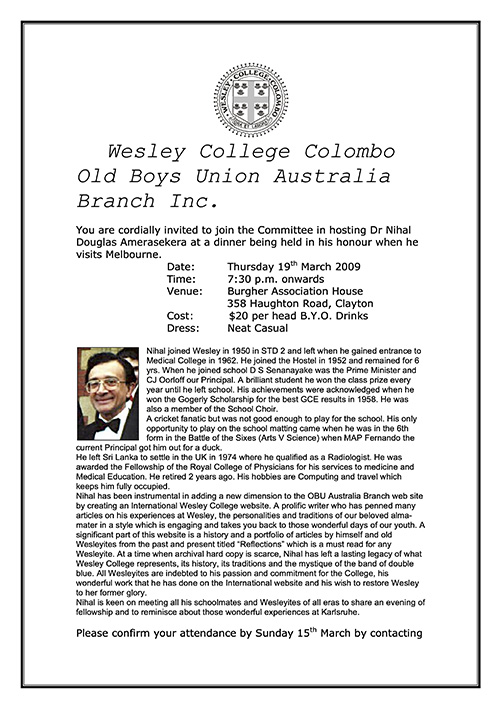
Meeting Yogan and Vino Sathianathan - Darwin, Australia
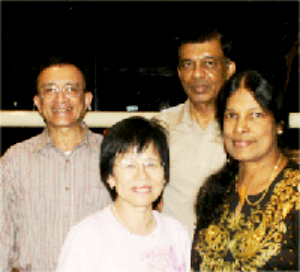
I came to know Yogan Sathianathan in Form IV. Being a mathematics whizz kid he was in great demand and he gave his expertise most generously. Yogan was a quiet lad from Wellawatte, a stalwart of the SCM and the Methodist Church. We proceeded together into the 6th Form and remained close friends before parting company in 1962. Yogan entered the Faculty of Engineering at Peradeniya as I went into Medical College Colombo. For many years I have asked numerous old boys about Yogan. The last they heard of him was when he was an engineer at the Uda Walawe Scheme in Sri Lanka. Paul David gave me a clue that he was in Darwin, Northern Territory Australia which helped me enormously. The internet did the rest. I phoned Yogan a few weeks before my travel to Australia. He insisted we meet at dinner. Yogan and his wife Vino gave us a fine dinner in a plush restaurant in Darwin. We reminisced and recalled those happy but uncertain times in the 6th form and before. He is now a Tax Consultant and a JP. He has immersed himself fully in providing a service to his local community. Yogan has retained his youthful slim figure. Time passed quickly and we hugged and said goodbye at the hotel car park. As I watched them disappear into the night, and wondered if we’d ever meet again.
..............................................................
Meeting Michael Christoffelsz in Sydney
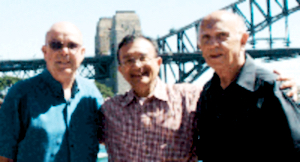
We spent four happy days and nights in the beautiful city of Sydney. The highlight was my meeting with 2 stalwarts from the hostel years. When a silver Holden appeared in front of our hotel I ignored it as its occupants didn’t look familiar. The guy who stepped out of the car had a beaming smile and an outstretched hand and it was Michael Christoffelsz. We hugged each other until we got our breath back. Mike and I spent our formative years together in the hostel. The trials and tribulations of our teenage years we bore together with our fellow hostellers. Harris Anthonisz was a few years senior but a dear friend to us all. He was a rebel who instigated a hunger strike to improve the quality of food in the boarding. He paid for it dearly but it worked !! Harris is a fine raconteur, a great historian and a wonderful friend. Mike and Harris kept us going for the rest of the day. We reminisced probing deep into the archives of our memory. Mike is an expert in the booming Australian mining industry and Harris retired some years ago. What I remember most of all about Mike are the intense soccer matches on the gravel surface of small park. Tackles came thick and fast. Falls were costly in terms of cuts and bruises. Despite this we were there to play day after day. What masochistic desire drove us to do this I do not know. We loved sports and still cherish those memories. After a long, sumptuous lunch by the river we said our goodbyes, most reluctantly, vowing to meet again someday soon.
..............................................................
Meeting my friends in Melbourne
Double Click Link: Melbourne 19th March 2009- An Invitation for Dinner -
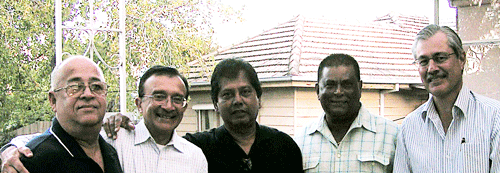 |
|


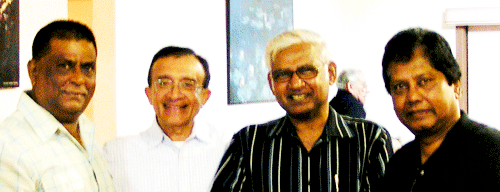
As I look through the mist of time I see my schooldays as perfect but in reality it was never a bed of roses. Now, all that remains are images of happy times. Above all what comes to mind is the kindness and camaraderie of my mates. The 1200 students knew and cared for each other. The teachers had a genuine concern for our welfare. It was a unique relationship. They inspired and also demanded respect and received it. Our parents believed the school can do no wrong, and they were right. The reality is that the road to success is rarely a straight one. Aiming for excellence is not so much about gratifying the ego as the desire to move away from the poverty we saw around us. Nothing of significance or lasting merit comes without some kind of investment: be it time, energy, belief or enthusiasm. Many did this after leaving school. You certainly don't get success on the cheap. The school community made me what I am today and I owe them so much.
I left the shores of the United Kingdom on a bleak winters day to arrive in Perth Western Australia bathed in warm sunshine. I was on a 30 day “Grand” tour of Australia. This has been a life long dream. Many of my school friends left Wesley in the late fifties and early sixties to make their home Down Under. At school in our formative years we made lasting friendships. To see them perhaps for the last and final time has been my ambition all my working life.
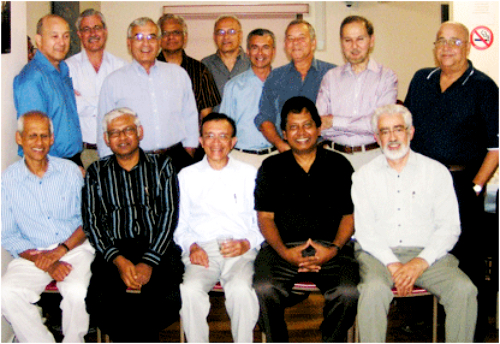
Our next stop was Melbourne. We were warned of its unpredictable “British weather”. Despite this we had wall to wall sunshine during our 4 days stay. Melbourne must have the highest concentration of old Wesleyites in the world. It is not the numbers that matter. They have the passion for our alma mater more than most. Reggie Bartholomeusz, the President, of the OBUA and the committee decided to host a dinner for me and my wife. We were greatly honoured by this kind gesture. Keith De Kretser sent a flyer and gathered the troops. The dinner was held at the Burgher Association House 358 Haughton Road, Clayton. Seeing my friends again I felt I stepped into an unexpected and surreal dream . My heart raced with excitement, not wanting the evening to end. I wasn’t quite sure what the night had in store for us. Words cannot express how I felt. A good meal was accompanied by plenty of discussion about school and the days gone. After the speeches I was presented a gift for my contribution to the Double Blue International website. This will take pride of place on my mantelpiece. What a fantastic night it was.

Arthur D’With-Barbut and his wife Glenys were most kind to take us from our hotel to the venue. Old Wesleyites in attendance were Hamilton Amerasinghe, Tissa Abeydeera, Brian Azoor, Alistair Bartholomeusz, Reg Bartholomeusz, Felix Berman, Dr Jackie Carnie, Trevor Collette, Keith de Kretser, Rodney de Kretser, Beverly de Niese, Nelson de Silva, Bill Deutrom, Gerald de Zilwa, Arthur D’With-Barbut, Lucien Fernando, Harold Juriansz, Darryl Koch, Dayantha “Marky” Makalande, Dr Mahen Menon, Upali Perera, Glen Reimers, Robin Reimers, George Robertson, Errol Smith, Lorensz Stork, Bryan Wijeyekoon.
It is more than 50 years since I saw many of them. From the time we arrived at the venue handshakes and warm hugs sparked off stories of those lost years. As the digital cameras flashed anecdotes of our mischievous years at school resurfaced. Arthur and I were buddies from the hostel. We had much in common, sang in the choir and played cricket in the small park. He was a good student winning coveted prizes and awards. He was a fine table tennis player. Arthur hasn’t lost any of his sincerity and warmth which was a feature of the Barbut family. They showed their kindness and hospitality to the hostellers during our annual trips. We never failed to make a stop at the Survey Camp in Diyatalawa to enjoy their lavish hospitality. It was great to meet Glenys and Arthur’s sister and brother in law Gerald de Zilwa. Oh! how much I wish we could have spent more time together. I was on a conducted tour and time indeed was too short.
Upali and Charmaine helped to organize the event. We have been friends since my early days in the boarding and also later. Despite our motto Ora et labora, Upali never prayed neither did he labour at school. He still wears his wicked grin at times before his mischievous antics. Upali worked as a Technical Assistant at the irrigation department and I believe he looked after our ancient irrigation tanks to be free of leaks . They have survived a thousand years without his help!! If he continued in the army the war wouldn’t have lasted 30 years. I last saw him in 1973 at a bus stand in Nawala when he said with a murky smile he was off to Melbourne soon. I wasn’t sure whether to believe him !! Upali was a late developer and has achieved much since leaving school. Despite his mischief Upali is a genuine and dependable friend as we have all found out with the passage of time. His generosity to the Wesleyites in trouble in Sri Lanka speaks volumes. I must thank Charmaine for keeping Chiu entertained and involved while I strolled down memory lane.

Hamilton Amarasinghe and I have been together since 1950 right upto the top of the school. He oozed common sense from every pore!! Hamilton was always energetic and hardworking. I know he held high office at the Katunayake airport and kept the place safe. Well most of the time!! He reminded me that we were the only 2 boys who had to take our University entrance examination at Visakha Vidyalaya. He dressed like a Prince on those 3 days and in the noon heat Brylcream poured down his powdered face. We were from an all boys school and to be that close to girls gave us palpitations , ejaculations and nightmares. But we survived the psychological and sexual trauma!!
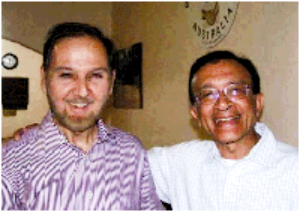 John Carnie with his brothers Hilary and Robin were hostellers in the fifties. Hilary and Robin were fine cricketers and the authors of much mischief in the boarding. John was sensible, studious and had a good singing voice. The Carnie boys left the boarding when the parents moved to the Railway Housing Estate in Dematagoda. My cousins were in the estate too and I continued to keep in touch with them. I later met John in the Medical College Colombo. It was wonderful to meet up with John after a lapse of nearly 45 years. I recall at school he had a fine academic career. Whatever job he was given he did it well. He was totally trustworthy and always reliable. John has risen to the prestigious position of Chief Health Officer Department of Human Services in Melbourne. He has brought honour and prestige to his family and to our school by his achievements. Despite this he remains modest. Your health is in his safe hands.
John Carnie with his brothers Hilary and Robin were hostellers in the fifties. Hilary and Robin were fine cricketers and the authors of much mischief in the boarding. John was sensible, studious and had a good singing voice. The Carnie boys left the boarding when the parents moved to the Railway Housing Estate in Dematagoda. My cousins were in the estate too and I continued to keep in touch with them. I later met John in the Medical College Colombo. It was wonderful to meet up with John after a lapse of nearly 45 years. I recall at school he had a fine academic career. Whatever job he was given he did it well. He was totally trustworthy and always reliable. John has risen to the prestigious position of Chief Health Officer Department of Human Services in Melbourne. He has brought honour and prestige to his family and to our school by his achievements. Despite this he remains modest. Your health is in his safe hands.
Mahendra Menon was a year junior to me at school. His dad owned a Pharmacy in Dematagoda and lived in the premises. Often we have walked back to Dematagoda, together after school. He has always been a good student and we met up again at Medical College. It was wonderful to meet Mahen and I thank him for his invitation to dine with his family, an appointment we could not keep, due to our tight schedule. He is in General Practice in Melbourne after qualifying as a surgeon.
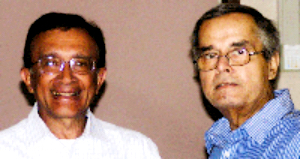 Glen and Robin Reimers were popular boys at Wesley being good sportsmen and also interestingly mischievous. They had a deep influence on many of those who were their contemporaries. They had great wit and exuberance of spirit. Meeting them in the school corridor was indeed a hazard as we never knew what to expect – a push or a shove or a clip round the ear. They were both blessed with a unique sense of humour. They had the gift to entertain amuse and charm. It was lovely to meet them after 50 years. They both have mellowed so much. I thank them for taking the time to attend the function. I say a special thank you to Robin for making the effort despite his illness. It broke my heart to say goodbye to them not knowing if we will ever meet again.
Glen and Robin Reimers were popular boys at Wesley being good sportsmen and also interestingly mischievous. They had a deep influence on many of those who were their contemporaries. They had great wit and exuberance of spirit. Meeting them in the school corridor was indeed a hazard as we never knew what to expect – a push or a shove or a clip round the ear. They were both blessed with a unique sense of humour. They had the gift to entertain amuse and charm. It was lovely to meet them after 50 years. They both have mellowed so much. I thank them for taking the time to attend the function. I say a special thank you to Robin for making the effort despite his illness. It broke my heart to say goodbye to them not knowing if we will ever meet again.
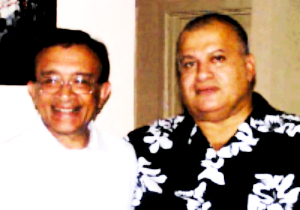 Although I do not remember Keith De Kretser at school. We have been in contact through emails over many years. His passion and love for Wesley is never in doubt. He is a prolific writer for the school websites. Keith has made use of his excellent command of the English language to drum up support for Wesley on its many fund raising projects. His support for school rugby has been inspirational. Every school needs a Keith De Kretser to carry its banners when everyone else has forgotten. It was great to meet Keith and we hope to stay in touch.
Although I do not remember Keith De Kretser at school. We have been in contact through emails over many years. His passion and love for Wesley is never in doubt. He is a prolific writer for the school websites. Keith has made use of his excellent command of the English language to drum up support for Wesley on its many fund raising projects. His support for school rugby has been inspirational. Every school needs a Keith De Kretser to carry its banners when everyone else has forgotten. It was great to meet Keith and we hope to stay in touch.
Recognising my friends after 50 years was hard. No one has changed more than Trevor Collette. He was a slim athletic lad at Wesley. Now he blots out the sunlight !! I was so happy to make contact with him again. When he was the President of the OBUA he always sent me information about its members and events . At school Trevor loved all sports and played Rugby. He as always is a true blue Wesleyite. What he hasn’t lost is his sincerity.
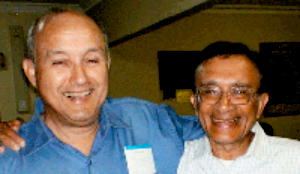 Errol Smith still wears that pleasant smile. We were hostellers together for so many years. He was an immensely talented sportsman. His hand eye coordination was too good for the rest of us. I recall the numerous cricket and football matches in the small park when he outshone everyone else. Errol is a modest man loved by all. Academic pursuits never appealed to him. Smithy is one of life’s even tempered gentle people. He still maintains his youthful good looks. It was great to see him upbeat and in fine spirits. I hope we will meet again.
Errol Smith still wears that pleasant smile. We were hostellers together for so many years. He was an immensely talented sportsman. His hand eye coordination was too good for the rest of us. I recall the numerous cricket and football matches in the small park when he outshone everyone else. Errol is a modest man loved by all. Academic pursuits never appealed to him. Smithy is one of life’s even tempered gentle people. He still maintains his youthful good looks. It was great to see him upbeat and in fine spirits. I hope we will meet again.
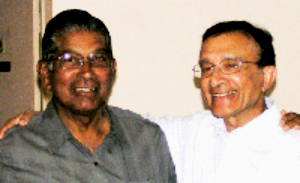 When everyone else had changed beyond recognition Harold Juriansz remains unchanged in over 50 years. His unmistakable “galthoppi” and the broad smile is a photocopy from the late 1950’s. Harold has maintained his athletic figure, a result of his clean living. . He remains soft spoken and gentle as he has always been. It was lovely to speak with a former Wesley College hero and cricket captain. I wish Harold many more years of the same.
When everyone else had changed beyond recognition Harold Juriansz remains unchanged in over 50 years. His unmistakable “galthoppi” and the broad smile is a photocopy from the late 1950’s. Harold has maintained his athletic figure, a result of his clean living. . He remains soft spoken and gentle as he has always been. It was lovely to speak with a former Wesley College hero and cricket captain. I wish Harold many more years of the same.
I must mention Bill Deutrom and thank him for making the trip from Brisbane to be with us. His loyalty to Wesley and Wesleyites is a lesson for us all. The school has benefitted enormously from his commonsense approach to the day to day problems. He is an able negotiator, shrewd and hardworking. Bill is greatly admired and deeply respected. He is an inspiration to those around him. It was great to see Bill after 50 years and no doubt we will keep in touch. His mother who was our revered teacher will be proud of Bill’s personal achievements and his work for his school.
 It was great to see the very senior old boys like Gerald de Zilwa, George Robertson and Alistair Bartholomeusz to attend this function of an insignificant old boy. I am certain they did so to meet a fellow old boy of the Oorloff era. I have communicated with George through email as he has done a marvelous job as the editor of the OBUA. It was lovely indeed to speak with Alistair and Gerald whom I have known only by name. It was good of Dayantha, Lorensz, Beverly, Lucien and Daryl to come upto me to say hello. It was great to see Brian, Felix and Rodney at the function. I know Beverly is a busy man working off-shore and it was good of him to come for the dinner. I have been in touch with Bryan appealing to him to produce an article about his mum who was a fine and respected teacher at Wesley for several decades. Mrs Wijeyekoon has helped many generations of Wesleyites to stick to the straight and narrow.
It was great to see the very senior old boys like Gerald de Zilwa, George Robertson and Alistair Bartholomeusz to attend this function of an insignificant old boy. I am certain they did so to meet a fellow old boy of the Oorloff era. I have communicated with George through email as he has done a marvelous job as the editor of the OBUA. It was lovely indeed to speak with Alistair and Gerald whom I have known only by name. It was good of Dayantha, Lorensz, Beverly, Lucien and Daryl to come upto me to say hello. It was great to see Brian, Felix and Rodney at the function. I know Beverly is a busy man working off-shore and it was good of him to come for the dinner. I have been in touch with Bryan appealing to him to produce an article about his mum who was a fine and respected teacher at Wesley for several decades. Mrs Wijeyekoon has helped many generations of Wesleyites to stick to the straight and narrow.
I thank all the old boys and their wives who attended our dinner on the 19th of March. Reggie was most kind to organize the event through the great Australian OBU. You couldn’t have chosen a better venue. As I write these notes in my study vivid images come rushing in. I will always remember and cherish the kindness and the hospitality shown to us. These memories will remain with me forever. I hope and pray we could all meet again one sunny day.

..............................................................
Meeting Randolph Ranjit Alwis In Adelaide Australia
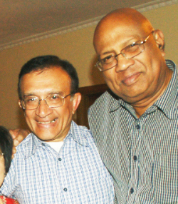
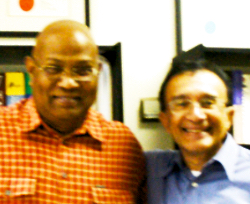
We ended are long tour of Australia in the beautiful city of Adelaide. As I entered our hotel room there was a message from Ranjit Alwis to phone him. He was with us in a flash and then on until we left Adelaide we remained their guests. Ranjit and Laki were generous hosts and took time to show us the charming and elegant city and its delightful surrounds. Ranjit and I were hostellers together since 1954 and parted company in the sixth form in 1962 when he proceeded to the University of Peradeniya to follow his dreams.
He is now a chartered accountant in Adelaide and a Managing Director of his own company. He has received an award from the Australian government for his services to the ethnic communities. Deep into the night we recalled events of our lives at Wesley and thereafter. He has a fine memory for his schooldays and speaks warmly of his association with Wesley College. We were both sad to say goodbye to Ranjit and Lucky and vowed to meet up again when they visit their daughter in London sometime soon.
I must mention those who couldn’t make it for the dinner in Melbourne. Neville Ludowyke has been my good friend since the hostel days. He is a founder member of the Australian OBU and has been fiercely loyal to the Old School. He has always asked me to stay with him when I visited Melbourne and I thank him for that. Our mums were students together at the Girls High School in Kandy. I spoke with him a few days ago and was good form. Due to illness he was unable to attend but we will keep in touch. Bryan Claessen was unwell too. He was my schoolboy hero and I would have loved to see him. Radley Claessen spoke to me on his behalf while I was in Adelaide. I wish them both a speedy recovery. May God Bless them.
Thank you once again for your generosity and wonderful company. I never imagined I would see so many of my schoolmates in a single evening in Melbourne. That was a dream come true. There were times I was overwhelmed with emotion. The distance and the passage of years makes such meetings difficult but I will certainly try my best.
Goodbye and God Bless – Till we meet again.
By Mervyn Wijesooriya
My Dad, Don David Wijesooriya decided that his precious eldest son – the future so and so of Sri Lanka or Ceylon – must receive private tuition to achieve those lofty goals! In that era, in Ceylon, it was to a certain extent not “what you know but who you know” and a few other similar beliefs. In that era the art of bribing was honed or sharpened to a fine art. Like when the cop (Kossa) stops you, you give him some money and the cop will take it, crack his knuckles and you are off. Perhaps my Dad thought that if this tuition money was given to a teacher from the same College where I was being educated, it would work better!
Sorry Dad, I really did not think that you had such intentions, but those were the days. I was in grade six and Mr. Tom Canagaratne was my class teacher. My Dad arranged for us to visit him at his bungalow in Campbell Park on a Saturday. We were dressed in our Sunday best on this visit. I was uncomfortable when Mr. Canagaratne served us tea in a very formal manner. Mr. Canagaratne broke the ice. No! No! That’s not to cool the tea, but you know what I mean.
Mr. Canagaratne informed my Dad that at Wesley “We do not encourage private tuition” and that he did not think that I required any private tutoring. Mr. Canagaratne promised to consult with my other subject teachers as to whether I required any additional help. He asked my Dad a question:” How much do you want to spend on Mervyn’s tuition?” And he answered the question himself with: “Rs.25 to 30?” My Dad acknowledged and Mr. Canagaratne continued “Give him that money every month and let him go and buy books and read. And don’t try to control what he reads!
This was the tail end of an era, where unsupervised reading was questionable. I am sure Mr. Canagaratna's comment was based on that thought. In that era we did not have access to Hustler or even Playboy. The only erotica printed or otherwise was to use your own imagination!In Mr. L.A.Fernando's class, Patrick Schokman and I used to sit side by side. Patrick being a cricketer is attracted by the opposite sex and would bring to class the occasional note, and used to pass it on to me on a "read and return" basis. Perhaps it was more bragging rights than anything else. Mr. Fernando, of course would notice this and say aloud, "Patrick we used to read those in the bathroom during our day!
My Dad, I know was beaming with pride at my progress. Parents sometimes have a strange way of expressing this pride. Especially when they want to brag to their friends; in this vein, my father speaking him to read any dirty book he wants. Dad's colleague - a grown up man - inquired - "Is it Sinhala or English?" and continued to answer his own question. "If you read Sinhala novels, you will end up in Angoda and if you read English novels, I don't know where you will end!"
When adults express such thoughts, in the presence of impressionable young kids... well I do not know what to say.
Of course, from Biblical days - or from when Christ was a Cowboy - we were told elders know best!
young people how to make a living but doesn't
teach them how to make a life.
Transcribed from the OBUA Newsletter -Dec.2005
 My Dad, who was a wise and very kind man, gave me a lot of good advice. He sometimes used unusual quotations to illustrate what he was trying to teach me. One day, he told me “Whenever you think of something important, something you feel you must do, this is called INSPIRATION’. But this is only 10% of the task. If you just stop and think about it all day long and do nothing, it will never get done. You must work to fulfil your aim, and work hard. This is the other 90%, the hard work; this is what PERSPIRATION means”. I have forgotten much that I learned from my father, but this much I remember, and I see it happening around all around me as I journey through my days, admiring the men who never gave up just because the job became a little difficult, or they just couldn’t be bothered. My Dad’s words came back to me as I watched four past presidents of the Wesley College OBU stand shoulder to shoulder at the Annual Double Blue Ball last October to receive the adulation of all the members present. Between them, they represented twenty-five years of effort, from the germ of an idea which prompted one of them to mention it to his colleagues, and without any plan, with no idea how to go about it they set out to convert their idea into reality. Not one of them has settled for just 10%, they have gone all the way, until they accomplished what they set out to do. It must have been tough going, at times.
My Dad, who was a wise and very kind man, gave me a lot of good advice. He sometimes used unusual quotations to illustrate what he was trying to teach me. One day, he told me “Whenever you think of something important, something you feel you must do, this is called INSPIRATION’. But this is only 10% of the task. If you just stop and think about it all day long and do nothing, it will never get done. You must work to fulfil your aim, and work hard. This is the other 90%, the hard work; this is what PERSPIRATION means”. I have forgotten much that I learned from my father, but this much I remember, and I see it happening around all around me as I journey through my days, admiring the men who never gave up just because the job became a little difficult, or they just couldn’t be bothered. My Dad’s words came back to me as I watched four past presidents of the Wesley College OBU stand shoulder to shoulder at the Annual Double Blue Ball last October to receive the adulation of all the members present. Between them, they represented twenty-five years of effort, from the germ of an idea which prompted one of them to mention it to his colleagues, and without any plan, with no idea how to go about it they set out to convert their idea into reality. Not one of them has settled for just 10%, they have gone all the way, until they accomplished what they set out to do. It must have been tough going, at times.
The Wesley College Old Boys’ Union will not change the history of the world, but it has made some worthwhile contribution to the operation of the school from whence it emerged. If there is one student, one life,that has been touched by the work the OBU has done these past twenty five years, then our time has been well spent. I am convinced there would be more than a few…. I have had the privilege of working with all the Presidents over the years and have seen how they cheered when their efforts succeeded, and have sensed the disappointment written across their faces when things did not go as planned. It is said that only we Old Wesleyites gather together at the front of the Hall when we sing the College Song. I was told that this is largely due to the sense of unity that our School and the sentiments of this particular anthem bring out in us. Whatever it is, it is a moment that defies description, it is a shout to the world to say who we all are, whom we are with, and the enjoyment in sharing the time together. We are glad to be there. I invite all past Boys of Wesley, if they have not yet become part of this great tradition, to join us. Do not wait another twenty-five years, join now, be part of the 90%. You will do yourself a great favour, help your old School and make us all very happy. ………including my Father.
Easter Sunday 15th April 2001 St Luke’s Church Borella
Mohan Abraham Easter Visit To Colombo
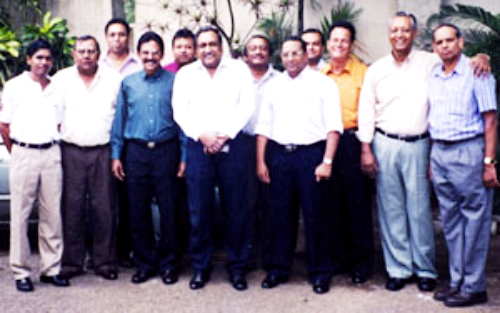
Raashid Riza was at Wesley from 1991-2004 and was the Deputy Head Prefect in the year Apart from being the President of the Islamic Society in the Year 2003', he also did Drama, D and Oratory at Wesley. He is currently in England doing his higher studies in Architecture.
"Have you ever been at sea in a dense fog, when it seemed as if a tangible white darkness shut you in, and the great ship, tense and anxious, groped her way toward the shore with plummet and sounding-line, and you waited with beating heart for something to happen? I was like that ship before my education began, only I was without compass or sounding-line, and had no way of knowing how near the harbour was
The above quote by Helen Keller sums it all up. Helen Keller was a renowned writer and poet, and what places her above the rest is the fact that she was blind, and she showed such audacity and courage to not let her physical disability ramify her and moved forward to great heights.
Education, more often than not is perceived to be all about grades and exams. But the more holistic aspect of school is rather conveniently omitted. Wesley for me has given that holistic education which has given me the strength to stand on my own feet.
At the time I am writing this, I am in England studying Architecture a very intensive course with all its merits. The course is extremely intensive, but that level of intensity can be mitigated by hard work and strong conviction. But what of the whole experience of studying outside home, the different culture you have to blend with, the new found independence that can be contributing or detrimental to ones development, the relentless forces that keep pounding you into different forms and those strong urges to compromise on your values?? The acquired sense or wisdom required to deal with all these afore mentioned elements are not taught as part of the school curricula, but are things which students pick up in the very ambience of the environment they study in. But for students to pickup them these very imperative shields, the environment that harnesses them must be conducive to create this feeling of strength that can repel all forces that can have an adverse effect in one's life and growth.
My thirteen years at Wesley has indeed given me that platform which has made me see the wider world with a rather profound sense of confidence and optimism. From the principal to the teachers to the non academic staff, to the very buildings that I left home for every morning, for almost every day for more than thirteen years.
The main college building and the elegance that oozes from it and the same functional aspects of the building itself is instrumental in molding the psyche and thought process of the student, and the growth of a child in such a building for thirteen or so consecutive years instills in him or her a sense of security and strength that he takes on for long years to come.
All of us Wesleyites have memories of our school days and reminisce them with a sense of extremist nostalgia, the mischievous pranks pulled on the teachers, the many practical jokes played in the class, the class who does nothing but stays in the lab, to the sportsmen who religiously attended sports practices in the college grounds. Apart from other obvious factors, what binds all these in a memory and visually places individuals/friends in our mind which we remember for so long is the very ambience and locality within the school campus in which whatever incident took place. If not for that ink which acts as the matrix to hold all these data together, the incidents remembered would only ilclude a few names.
 At the time I am writing this, I am in England studying Architecture a very intensive course with all its merits. The course is extremely intensive, but that level of intensity can be mitigated by hard work and strong conviction. But what of the whole experience of studying outside home, the different culture you have to blend with, the new found independence that can be contributing or detrimental to ones development, the relentless forces that keep pounding you into different forms and those strong urges to compromise on your values?? The acquired sense or wisdom required to deal with all these afore mentioned elements are not taught as part of the school curricula, but are things which students pick up in the very ambience of the environment they study in. But for students to pickup them these very imperative shields, the environment that harnesses them must be conducive to create this feeling of strength that can repel all forces that can have an adverse effect in one's life and growth.
At the time I am writing this, I am in England studying Architecture a very intensive course with all its merits. The course is extremely intensive, but that level of intensity can be mitigated by hard work and strong conviction. But what of the whole experience of studying outside home, the different culture you have to blend with, the new found independence that can be contributing or detrimental to ones development, the relentless forces that keep pounding you into different forms and those strong urges to compromise on your values?? The acquired sense or wisdom required to deal with all these afore mentioned elements are not taught as part of the school curricula, but are things which students pick up in the very ambience of the environment they study in. But for students to pickup them these very imperative shields, the environment that harnesses them must be conducive to create this feeling of strength that can repel all forces that can have an adverse effect in one's life and growth.
Ready aye shall all be found
in duty and in honour bound
Wesley to the fore
Many of us have had our own cozy and comfortable place in 1he school campus; every student who was in Wesley over the past decades would feel such a sense of calm and serenity to be seated in the college hall discussing the events passed or analyzing a diIIicuIt math problem. Apart from the hall where I spent many a moment reflecting on things in life and how things could have been different, another place in the school campus that I was most comfortable was at the last row of benches in the College Chapel, where the chirping of the birds from the principals lawn, the cooling greenery that blankets the atmosphere and the view of the primary playground all amalgamate to create a kaleidoscope of thoughts that many a poet would yearn to have.
And it is they very same element in the atmosphere and aura of Wesley that creates an umbilical cord that connects the past, present and future generations of our great alma mater.
I for one was so busy learning different things at Wesley that I forgot to realize how it would be when I leave College. And when I did leave College, despite the fact that I felt a sense of incompleteness I felt always in touch with Wesley since Iwas still involved in many a college activity, and one moment I will forever cherish as an old boy is when I got an opportunity to act in a theatrical production that I did with a few fellow old boys. But. .. The reason I am most grateful to Wesley is for the challenging environment it created and for the many opportunities it gave me to stretch my limits and succeed, and to boost my morale.
The accommodativeness of Wesley to children of all backgrounds is truly marvelous. There may perhaps be other schools that allow Muslim students to go for their Friday noon prayers, but to the extremities of my knowledge, Wesley is the only school where, when the Muslim boys go to the mosque the students of other religions attend their respective religious meetings, thus saving the Muslim boys from missing important lessons. This very same facet of accommodativeness of Wesley with regards to Muslim boys being allowed to go to the mosque was mentioned in a College magazine I proudly own, which was published more than fifty years ago! And it gives me a sense of pride, to mention this very same thing in another college magazine fifty years on.
Photo:

It is this confidence that I acquired at Wesley, (with due thanks to all those who helped me in the process) that helps me transcend many a challenge that I may overcome in a totally different academic setting here in England.
This last sentiment which I expressed above was made in the hope that my younger brothers who are still at Wesley would exploit what I have said and would make the most of their time at our great educational institution.
Amidst all these god given experiences and opportunities that I am receiving here in England, days at Wesley remain the most cherished period of my life and will definitely be the phase of my I which I will value and reminisce the most with immense nostalgia. My college days, amidst the tea and laughter, the fighting and shouting, getting scolded and punished, coupled with the values parents and siblings have instilled in me are what have moulded me to being the person that I today.
For those born in the Thirties, forties, fifties and sixties

The house was painted, the walls white-washed with low black tar edgings all round the rooms and the chairs were re-cushioned. The traveling tailor came home, measured the rooms, and made the curtains on our old Singer sewing machine. Red Mansion polish was applied on the cement floor, which got a shine from a heavy handled brush. Cake making was a ritual, where my mother laid the rules when I offered to help. I ate a good many cadjunuts and raisins when no one was looking.
Two weeks before Christmas my father & mother accompanied me in a hired car to Pettah's Main Street . The well known shoe store was T.G.M. Perera's and I was fitted with the best shoes. Even Jamaliya's Shoe Store in Wellawatta took in orders for boots, the teenage fashion of the thirties. At times we visited and gave orders for shoes at Colombo Boot Manufacturers at Slave Island.
Most of our shopping was centered around Fort and Pettah. Main Street, Front Street, Khan Clock tower. Main Street had a plenty of shops. Some of the names that come to my memory are Hidramani, Favourite Stores, F.X.Pereira’s, Titus Stores,
The Main Street tailor measured us, as we provided China silk for our shirts. The silk of course was bought in early November from the Chinese peddlers who plied their trade on bicycles. Some of the Chinamen carried their bundles on their back, with a heavy stick for balance. Main Street in Pettah in the early thirties was very narrow. It had to cope with the tram lines and bullock carts. Our Christmas shopping included a visit to X.P. Paivas for lunch and ice cream. Round the corner was The Rupee Store, where for one rupee you could buy many things.
Millers, Cargill’s, was a delight to shop at. With father Santa distributing little gifts from the lucky dip. Simes and Whiteaways dominated the Fort shopping. We went to Hunters and Siedles and e Roche Brothers shops for many items. I cannot forget the shopping in the golden mile of Colpetty, Bambalapitiya and Wellawatta. The Wickremesinghe Brothers headed by George imported the famous Mende Radiograms from Germany. There was also Philips Radios imported by Maurice Roche & Company.
We cannot forget the well known shops in Wellawatta: M.P. Gomez, A.W. Jansz, J.B. De Pinto, Nooranis, Jamaliya's Boot Works and many famous boutiques. As a boy I went with my father to A.W. Jansz's store near High Street. We bought Dutch Edam Cheese, as an accompaniment for the Christmas breudher. Jansz sold liquor and all types of hardware. We bought wire-netting to build chicken coops. My father frequented this outlet for his wines and sprits.
The shopping spree in Colombo included a visit to Pilawoos for a treat of buriyani. Elephant House played a significant part in booking Christmas cakes. Fountain Café was another favorite place for an Ice cream. Yet there was one last item that was in the shopping list: Fireworks. We gazed in wonder at the array of fireworks in the Fireworks Palace opposite the Fort Railway Station. Sparklers, Roman candles, sky rockets, Catherine wheels, squibs, crackers of every size were there in the showcase. Buhari Hotel was another stop for some Buriyani.
Unlike these days, the Christmas tree was made of freshly cut Cypress branches brought to Colombo from the up country by the CGR.
Christmas was on. The cake was made and sent to the bakery. The Bakaraya would feed in the trays of cake at the end of baking bread. The cake was baked on low embers. We had a maid who pounded the rice and roasted the flour, making string hoppers and pittu, cutting up A.W. Jansz ham, with cutlets and seeni sambol. My father and mother never failed to take me for the Y.M.C.A open air Carols at Fort. Where many church choirs would render carols. Fr.Ignatius would conduct the choir more like doing the Baila. Then there was Lylie Godridge and his choir who enchanted the crowd to wonderful singing. Police Carols was never missed.
As midnight came, there were a never-ending sound of fireworks and sky rockets, the sirens from the ships sounded from Jetty. That would surely have awoken the Christ Child. Carol parties came to the doorstep at Kotahena after Midnight Service the famous Colombo Chetty Choir Conducted by Mr Joe Perumal. Of course the homes saw families sitting for a feast of string hoppers, ham, breudher, cheese, mulligatany and cake. There were presents near the family Christmas tree. The postman, the dhobi, the baker, the fishmonger were the regular Christmas early birds. They all got cash, plus a tot of arrack.
The children in the area eagerly waited for the Sakkili Band. These were the poor men and women who carried the night soil buckets, before the water closet and drainage era. Many householders were generous in the cash tips they gave them. An extra pint of arrack helped them in their dance! The famous Kukul Charlie also made his trek down all the lanes. Those were the days when Donovan Andree dominated and enriched the local entertainment scene. Donovan brought down the Ice Follies. Soon night came once more. We lit our fireworks, saw the lighting the big Roman candles and sky rockets. The radio blasted yuletide melodies. My father bought some Chinese crackers which was harmless. These could be held in ones hand when lit. We called them Chinapatas.
Christmas’s I have spent in Sri Lanka . Nowhere in the world, would I ever experience, as the Ceylonese enjoyed it. I can still hear the hustle and bustle in Pettah, the cries of the street vendors and the pavement hawkers. The wailing of the mamma-pappa balloon, the rattle of the toy-carts, and the delicacies from the gram sellers are unforgettable.
I cannot forget the Wesley College 9 lesson Christmas Carols at the Maradana Methodist church. Ably conducted by Mr. Maxwell De Alwis. It had a wonderful air of Christmas around us.
A New Zealand Christmas is pea-nuts compared to a Christmas in Ceylon . I only hope we can go back to our old days.These days we hardly receive any Christmas Greetings by mail. They are all sent via email or ecards. I treasured the hand written Christmas cards.
There was our regular postman who made sure that he held back some Christmas mail to be delivered on Christmas day. By the time he reached our houses he was unable to wheel his Red & Black Push byke. He could not stand on his two feet, as a result of the liquor he had consumed from each house. We got only half the mail, as most of mail had fallen by the way side. Since we had good neighbors, they would pick the mail strewn on the way side by the postman and give then to the respective persons to whom the mail should have been delivered.
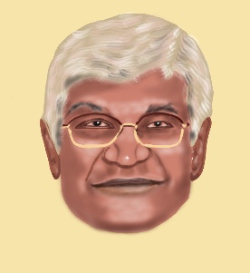 After leaving school I did a years studies at the Polytechnic, continued playing Rugby for the NCC in the B divisons in the Clifford Cup Rugby Tournament.
After leaving school I did a years studies at the Polytechnic, continued playing Rugby for the NCC in the B divisons in the Clifford Cup Rugby Tournament.
During this time I applied for a job to Brown & Company Ltd and was successful at my very first attempt. I was posted to Lindula in the the Tea Machinery division.The week ends were very boring as my co workers all left to their respective homes and got back to work only on Monday morning. Especially during the week ends during the first few months I missed home and my circle of friends at Rugby and Colombo. So, every week end I traveled down to Colombo and got back to Lindula by Monday morning. I generally took the Saturday 3.00 pm train from Talawakele which reached Colombo around 10.00 pm and then took the Sunday evening train which left Colombo Fort at 10.0 pm reaching Talawakele around 6.00 am on Monday morning. This gave me enough time to do a shower and be at my desk by 8.00 AM. This became a regular pattern of life for me during early days of work in Lindula.
One Sunday evening when I was at the Fort Railway Station to catch the Badulla mail train at 10.00 pm to get back to Lindula. There were two guys who were fully drunk came to the platform apparently to Board the Batticaloa bound train which left at 9.50 pm. One of these guy had a suitcase, most probably he was the guy who was going on the Batticaloa train. Both of them could not stand on their two feet.
Finally the Railway Guard blew his whistle signaling it was time to leave. Then the engine driver blew the horn, but these two guys were not bothered about boarding the train. Then the train very gradually started to pull out. Only then, that it dawned on them, that they had to board the train. One of them grabbed the suit case and they both ran after the train. The one with the suitcase managed to board the train while the other was left stranded on the platform. All of a sudden the one stranded on the platform burst out into hysterical laughter, loud as ever. Then in a loud voice he said, it was he who had to board the train to Batticaloa, but instead his friend who only had come to see him off was on the train with my suitcase and not his suitcase.
I will never ever forget this incident which brought a lot of laughter to those who were watching it.
1950-1963 by Ranjit Aaron -NZ

300 km or 180 miles was the railway journey from Colombo to Badulla which took 9 hours. Its starts form 14 feet above sea level and reaches a crescendo of 6240 feet when it arrives at the summit at Pattipola. This remarkable train journey is one of the greatest and best journeys amongst other rail journeys in the world.
I was born in Badulla, in the Civil Medical Hospital. My Grandfather was a Tea Estate Conductor (who are now called a SD) He worked in Nuwara Eliya and Badulla districts He had 13 children (7 boys & 6 girls) and my mother was the eldest. The girls went to Girls High School, Badulla and the boys to Uva college. The Estate on which my Grandfather served most was Telbedde Estate, approximately 5 miles from Badulla town.
Coincidently there are many Wesleyites who hail from Badulla, just to name a few Dr. Ratnasamy Somanathan, a Professor at San Diego State University, USA., Dr.Lambert Abeytunga, who I learnt from a recent article posted on our web, is a well renowned doctor in USA, Gunasekera who was a good hockey player. Trevor Collette the rugby stalwart, worked at Ceylon Tobacco Co. Ltd, Hali Ella.
My most enjoyable and memorable school holidays were spent at the home of my Grand parents on Telbedde Estate, Badulla. Which had a sprawling fruit and vegetable garden with many Mango trees, Avacado, Gauva, Papaya, Banana and even Sugar Cane. There were milking cows, goats, a large piggery and even some pet monkeys. Other than the Persian cats, Labradors, Dalmatian and Bulldogs. These were gifted to my grandfather by the Superintendent Mr. John Boyd Moss, when he left on retirement to the UK. Mr. John Boyd Moss represented Ceylon at rugby. He was a regular player for the Meri Men. The Badulla Rugby team was called the Meri Men. Mr. Boyd Moss on his field visits packed as many as 14 dogs into his Morris Traveler. He most often had his breakfast with his dogs.
I enjoyed the baths in the company of my uncles in the many streams, that was flowing across the estate. The walks around tea fields, over the bridges were interesting. But going over the swing bridges, gave me the jitters..
In 1970 when working for Brown & Co. Ltd, Lindula & Uda Pusselawa. On one of my visits to a Tea factory in Uda Pussellawa, my car skidded off the road. The car along with me was hurled 75 feet down a precipice. As a result of this nasty accident, I had a very bad head injury, concussion and loss my memory for almost 2 months. My Femur had multiple fractures. This forced me to stay as much as four months in Badulla General Hospital. At the end of the fourth month, even though my left leg was palsy below the knee, to my utter surprise, I was discharged from hospital. Saying I was fully fit and even fit to play rugby. On returning to Colombo I consulted Dr. T.N Shanmugalingam of the Colombo General Hospital. Subsequently, he operated my leg for a malunited femur. This followed a series of surgeries. How ever, I was confined to bed for almost 1 year and 3 months. At one stage the doctor even contemplated amputating the leg.
Brown & Co. Ltd Lindula in the Talawakele area, was another place where I worked in 1967. I always loved working in the up country.
The CGR and Wesley College brings back nostalgic memories, as most of those who worked at the CGR lived at Mount Mary. Their children studied at Wesley. I still vividly remember those picket fenced Railway quarters at Mount Mary. The preparations for the Badulla holidays began weeks ahead. As my mother was in Government service, we had the privilege of Railway warrants. My father made early visits to the St. Johns Fish market & butchers shop. We took roast meat, fish cutlets and Seni sambol with butter well spread on Sandwich Bread. We also took some (Toast Pang) Toast Bread, which I have been made to understand is not available any other country. We made such large quantities that we shared our meal with some of the occupants in the compartment. We took enough food and drinks to last the 9 hour journey. We also took some Bombay sweet meats, such as Boondi, which my uncles and aunts in Badulla relished
My father had a good friend Mr.Alfred De Silva, who was the owner of Borella Stores on D.S.Senanayake Mawatha. Mr. Alfred De Silva’s sons also studied at Wesley at the same time I studied. They were (Lukshman) D.G. De Silva, Kapila and Navi who is now a leading Chef in one of the leading hotels down south in Sri Lanka.. Every time we made our journey to Badulla Mr. Alfred de Silva would accompany to see us off at the Fort railway station.I made this train journey with my parents to Badulla year after year in succession from 1950 to 1963. At times, twice a year. Hence I knew every Station, Bridge and Tunnel along the route like the back of my palm.
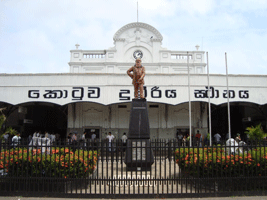 I enjoyed every minute of the 180 mile train journey, from the very moment it left the Fort railway station. This journey was so spectacular, the train winding its way with the old steam engine drawing the carriages. There after the steam engines were replaced with the Garret Engine and then the Canadian Diesel engines
I enjoyed every minute of the 180 mile train journey, from the very moment it left the Fort railway station. This journey was so spectacular, the train winding its way with the old steam engine drawing the carriages. There after the steam engines were replaced with the Garret Engine and then the Canadian Diesel engines
The early steam engines had difficulty pulling the carriages up the Kaduganawa pass and other steep terrains. At times a second engine had to be fitted at the rear end of the train to push it up the hill.
In the early days the Badulla train from Paradeniya junction by passed Kandy and headed to Rambukkana and then to Nawalapitiya. At the Nawalapitiya Station I eagerly awaited the hot, hot Vadais, steaming hot Kotta Kelangu and the plain coffee or ginger tea. Similar vendors frequented the platforms form Nawalapitiya onwards..
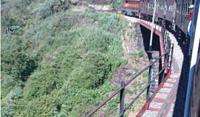 |
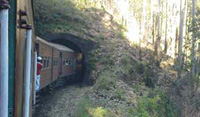 |
| Nawalapitiya |
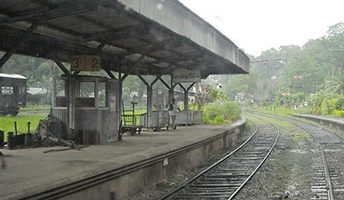 |
| Pattipola |
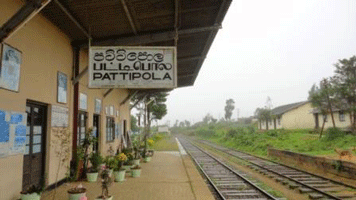 |
Coming into Hatton one could feel the cool air blowing into the compartment. The aroma of tea, from the tea fields and tea factories, through which the train wound its way. This brought about a completely different atmosphere into the train. Which was exciting, refreshing and exhilarating to both mind and body..
The carriages were clean, the foldable wash basins worked, toilet flush system worked, there was water on the tap and the window shutters moved up and down smoothly. Unlike these days, where most of the fittings have been vandalized. In addition to all the food we took, still I sneaked my way into the train Buffet compartment, to have a hot Omelette, which had a remarkable taste. In the fifties and sixties restaurants cars in the trains, was run by Edmond caterers.
The 180 mile long journey took us through 45 tunnels and scores of bridges. The Hatton tunnel was the longest. Between Ohiya station and Idalgashina Railway station there are 13 tunnels.
Pattipola was another favorite place of mine. This place had intermittent rain and many a days covered by thick mist. The passengers often kept the window shutters down to let the thick mist into the compartment. Pattipola is the highst railway station in Sri Lanka. The Pattipola tunnel divides Nuwara Eliya and Badulla districts. When you enter this tunnel from the Ohiya end, it’s warm, hot and you can see the sun beating on the train. Once the train comes out of the tunnel at the Pattipola end. It’s very gloomy, misty and cold. In the early days this station was acclaimed as one of the highest stations in the world. Years back there was a narrow gauge train that ran from Nuwara Eliya to Brookside. Passing through Kandapola and Ragalla. The railway stations that once existed are still visible on the bus route from Nuwara Eliya to Uda Pussellawa.
 |
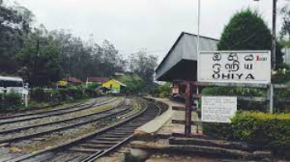 |
Demodera Station and the Tunnel is wonderful piece of engineering. This stretch of rail track was called by the British “Loop in a Loop”. The train first goes through the tunnel and then over the tunnel. The station was built on top of the tunnel. The engineers were pondering over the intricacy of constructing the most difficult rail track, tunnel and station. When they suddenly observed the Kangany (supervisor ) of the workers, undo and his Talapa (Turban) and re-tie it, round his balding head. This loop in a loop Talapa inspired the engineers to mastermind this wonderful rail track. This track should be claimed as one of the wonders of the world.
In the early days the Station Masters maintained beautiful gardens in the station premises. The picket fenced flower gardens, was a delight to watch as the trains rolled by each up country station. No one ever dared to pick a flower from these station gardens. Some of the beautiful gardens that re-fresh my mind are, Watawella, Rosella, Rosita, Talawakele, Great Western, Ambewella, Pattipola, Ohiya, Idalgashinna, Haputale, Diyathalawa, Bandarawella, Heeloya, Ella, Demodera, Uduwara, Hali-Ella and Badulla. When passing Ambewella one could see the cows grazing on the New Zealand farm. A tablet which was on a loop was exchanged at each railway station by the Engine driver and the Station Master. It was a delight to watch the precision at which this done. The engine driver will not receive the tablet unless the station Master, who handed the tablet, was fully attired in his uniform, white trousers, Coat and Black Peak cap.
Stunning Scenery all the way
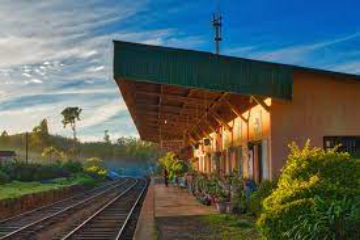 |
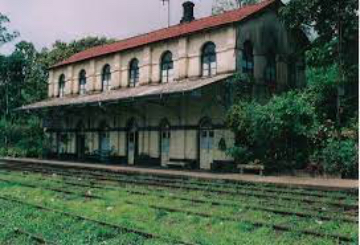 |
| Rozelle |
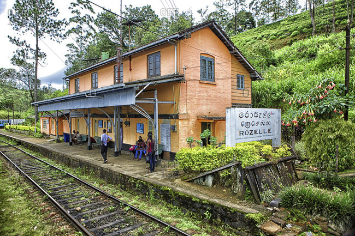 |
| Kotagala |
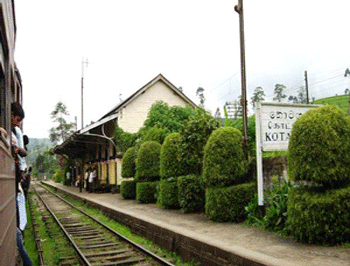 |
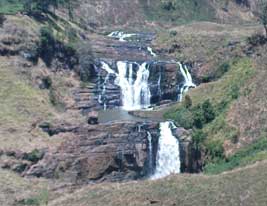 The waterfalls brought enchantment to the traveler on this journey. The St.Clairs fall, Devon falls and Bridal Wave are just a few that cross my mind. As the train reached Diyathalawa the fading sunlight which fell on the moving train created a breadth taking Silhouette on the mountain plain. Then appeared the mountain named the “Sleeping Worrier”. This was so fascinating and beautiful to watch from the moving train.
The waterfalls brought enchantment to the traveler on this journey. The St.Clairs fall, Devon falls and Bridal Wave are just a few that cross my mind. As the train reached Diyathalawa the fading sunlight which fell on the moving train created a breadth taking Silhouette on the mountain plain. Then appeared the mountain named the “Sleeping Worrier”. This was so fascinating and beautiful to watch from the moving train.
Photo - Some places of interest
 An uncle of mine was attached to the Diyathalawa Army camp. When ever I visited him. I woke up early and walked to Fox Hill to catch a glimpse of the Colombo bound train. This train left Badulla at 6.30 in the morning and reached Bandarawella around 8.00 am Then it made its way hugging the Idalgashinna ridge into Idalgashina. From Diyathalawa the train passed through plush tea fields, ravines and bridges to reach Haputale. In the distance, it resembled a long snake moving in the sprawling Uva basin. Once it got pass Idalgashinna, it slowly disappeared into the Ohiya mountains. After awhile it reappeared for one last time to again disappear into the mist and rain. This fascinating view will always remain a memorable one. I could watch this over and over again, never to get tired. I regret not being fortunate to have had, a Video Camera in that era.
An uncle of mine was attached to the Diyathalawa Army camp. When ever I visited him. I woke up early and walked to Fox Hill to catch a glimpse of the Colombo bound train. This train left Badulla at 6.30 in the morning and reached Bandarawella around 8.00 am Then it made its way hugging the Idalgashinna ridge into Idalgashina. From Diyathalawa the train passed through plush tea fields, ravines and bridges to reach Haputale. In the distance, it resembled a long snake moving in the sprawling Uva basin. Once it got pass Idalgashinna, it slowly disappeared into the Ohiya mountains. After awhile it reappeared for one last time to again disappear into the mist and rain. This fascinating view will always remain a memorable one. I could watch this over and over again, never to get tired. I regret not being fortunate to have had, a Video Camera in that era.
The mist is everywhere at all times------------------and -------------The Hatton Railway Station
 |
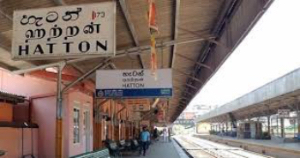 |
Through hills and valleys .................and endless tea estates
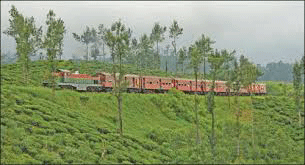 |
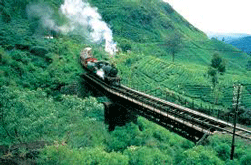 |
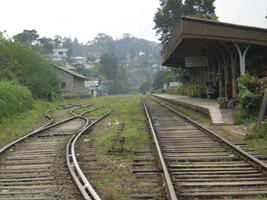 |
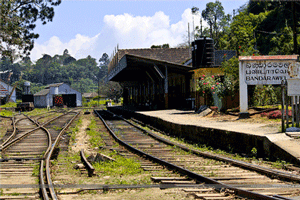 |
| Diyatalawa | Nanu-Oya |
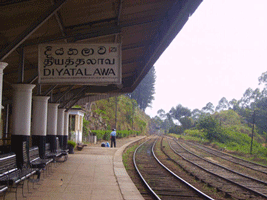 |
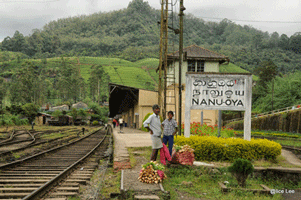 |
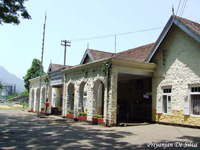
Invariably this train never reached Badulla at the scheduled arrival time of 6.30 PM. On every visit we made to Badulla, my Grand father was at the Badulla station to greet us. To begin my most memorable holidays. It will be a great pity if the younger generation cannot experience this wonderful journey with all its thrills. Neglect and vandalism has taken a heavy toll. Travel nowadays are some what a nightmare. The stations are bare of all the beautiful flowers that were once in full bloom. Some have even gone to the extent of damaging the foliage, landscape and the scenery that once brought great joy to the travelers who made this train journey. Nature and heritage should always be preserved at whatever cost.
The Sri Lanka tourist Board should promote this journey, which will definitely draw more tourists into Sri Lanka.
Excerpts from The Great Railway Journeys of the World by Gyan C A Fernando
The railway line from Colombo to Badulla is a spectacular railway line which, over a distance of 180 miles, ascends from sea level to 6500 feet and then descends in to the Uva valley (or Uva Basin as it is usually called) to terminate at Badulla at 2000 feet. The railway was built by the British in the latter part of the 19th century primarily for freight.(Guage: 5ft6in, 1676mm) Since then very little has been changed. The gradients are steep and the tight curves prevent the use of modern rolling stock. Because of the rugged terrain earthslips are common. There are 46 tunnels on this line and one complete spiral (at Demodera). There are only two trains in any one direction each day which run the whole distance. One is the Night Mail Train the other is the "Udarata Menike" (Hill Country Lass). The Udarata Menike takes at least 9 hours to do the journey (on a good day!) and the Night Mail takes near 12 hours!
LOCOMOTIVES
In the sixties and seventies the trains on this route were hauled by EMD G12 locos--The so called "Canadian Engines". (see below) Rear "helper" locos were needed for the Night Mail on certain sections, notably at Watawela and Rozella and after Nanu-Oya. Later the Henschel locos were introduced but they proved to be unreliable and certainly appeared to lack the kick of the EMD G12s. Before the advent of the G12s, Garratt articulated (steam) locos built by Beyer Peacock were used on this line.
The EMD G12 were diesel-electric locos built by the Electro Motive Division of General Motors, London, Ontario and were meant for export.They either had 12 cylinders and a usual wheel arrangement of A1A A1A (see below for links to other EMD loco sites). The Ceylon Government Railways G12s were painted in the colour scheme shown right. As most of the locos were part of the "Colombo Plan" aid package from Canada, they were named after Canadian provinces and cities. Later purchases were named after Srilankan towns and mountains. They are generally known as the "Canadian Engines" and were notable for the loud exhaust note and triple airhorns. Later models were fitted with dynamic brakes housed in the short hood. In keeping with tradition and road conditions all had "cowcatchers".
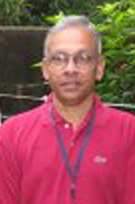
I came to Wesley College in 1963 to grade 4B, my class master was Mr.PGR Fernanado and seniors used to call him ‘Pajar’. It was the decade of change, to Sinhala medium of Instruction. There were some reforming impulses but not modernizing trends at that time. At that time most of the teachers were males and carried a cane. Now I think that they were policing us while teaching. Were they Teacher Constables? Some of my classmates were Brigadier Mahes Samaraweera, Brigadier Sarath Fernndo (for us he was Sara patta) Geethal Peiris, Ravi Peiris, Ruwan de Silva, AKSA Perera, (Australian Mining legend) JK Wickramarathne, Christopher Harvie, Athula Wickramasinghe, Ramya Pathberiya.
We travelled all the way from Gampaha to Wesley. My brother and I used to walk from Maradana Railway Station to College via various routes. Through the Maligakanda reservoir area and Nalanda College.Via punchi Borella was the standard route. Green colour single and double decked trolley buses were a common sight. Some days our Principal Mr. Shelton Wirasinghe used to give us a lift in his Holden car from Maradana to College. Those were mini skirt days and once he told us pointing mini skirt clad girls near All Saints Church, ‘Boys, enjoy driving, and while driving enjoy the natural beauty’. Now I find it difficult to comply his advice when driving as my wife usually occupy the front seat.
His romantic approach to Life and Music deserves great credit.
 Wesley believed in sociability, give and take at that time. Our teachers were interested in modeling Knowledge, never bothered about ethnocentric nationalism as we had all communities in our classes as well as in the male dominated staff. They saw differently and sound differently.
Wesley believed in sociability, give and take at that time. Our teachers were interested in modeling Knowledge, never bothered about ethnocentric nationalism as we had all communities in our classes as well as in the male dominated staff. They saw differently and sound differently.
Mr.Wirasingha was a best orator of exceptional versality and we were (are still) very proud of him. He used to tell the history of College at weekly assemblies. I can still remember how analytical he used to be, when he explained about our college motto. Along with the story came the facts. He told us that “LABORARE EST ORARE” the Benedictine Monks Motto and ORA ET LABORA are almost similar and Bible verse close to the motto. He was a voice in great demand and a literary sensation. Many in the English medium emulated his clipped accent. Round Spectacles in a handsome face, he had astonishing energy, limitless capacity for hard work, unbounded confidence and resolution.
Mr.Shelton Wirasinghe’s stern, musical voice and graceful manner befitted the Post of Principal. We were enthralled by his voice, singing teaching, intelligence, literally gifts and his awareness of history. Once I asked him why we do not have Cadetting in College. He told me after World War 1 ‘Wesleyn- Methodists wanted “Militant Idealism away from their Youth’ and stopped all activities connected to military Idealism at Wesley College.
Mr.Wickramasinghe was our Head Master. Seniors used to call him ‘Papaw” and sometimes ‘Saucers’. I was not interested about nicknames, hacks and splutters but many of it originated from the English medium .Most of my class mates were from, in and around Colombo and Moratuwa. They used to tease me when I made mistakes.
In 1963 we used to watch the Prisoners involved in the Military Coup taken from the Remand Prison to courts. Ferret Armoured car, Motor bicycle with LMG mounted side car, Land Rover Jeep, SMG and .303 SM Lee Enfield carrying Navy personnel used to take them every morning. Hostellers were very familiar with the Armoured car troopers as they used to park the Ferrets at the college premises in the night.
One morning in 1963 I was in batch of students taken to Campbell Park for the Annual Sports Meet Trials. We were separated to Houses and I was asked to run in the 75 and 100 yards in the under 11 age group and I came second in both and told me to come another day for heats. I went home and conveyed this to mother and she told me to practice the way I knew. I used to practice around 5 O’ clock in the evening at Bandaranayake College Grounds, Gampaha. At that time college hours were from 0800h to 1500h or some terms 0815h to 1515h.Coal powdered Steam engine trains were very punctual and we were never late to college. We had short interval and lunch interval. We used to come to Maradana in the 0605h train from Gampaha and went home in the 1550h train.
My father then guided me with the basics. He taught to how to warm up and to run “wind Sprints”. I came first in the heats in both events and elevated to the semifinals. In semi finals too I came first in both events. Then they told me to come to the College Sports Meet which was held on a Saturday. I was really scared that day when I saw the crowds as College Sports meets were conducted at a serious scale. I had never run in a sports meet till that day. It was a grand and noisy affair. We were asked to wear a white shorts and a white vest (boxing banion) we were given a number written on a piece of cloth. Sprint event favourite was my classmate Mahes, he had been the under 10 champion athlete and had the backing of all his house mates.
Nobody knew me as I was new to college. All the others were coached by the seniors and were very confident. I knew nothing about ‘Crouch Start’ and I was the only one who did the ‘standing Start’. I went and told Mr.PGR Fernando that I am afraid and do not wish to run the races. He just looked at face and told me to get ready. I ran few paces for the warming up, and then I was taken up to the starters point for the 75 yards race. Starter was a short man with a Pistol in his hands. That was the first event. He shouted some instructions to us and placed us on the tracks. I cannot remember shouts on your marks or get set, but when I heard the shot, I ran like a jack rabbit because I was really scared of the crowd. The woolen thread made a painful mark on my neck and somebody caught me from my neck and heard somebody (probably a school master) telling ‘Fluke’. I did not know the meaning of it at that time, when I came to the house corner every one shook hands with me.
My master told me not to eat anything but to drink Orange Barley, and then I told him about the word ‘Fluke’. He looked at face and told me ‘they are mistaken’. My mother gave me a small carton of Glucose and told me to take a handful before an event. I vividly remember big hefty fellows running but was clueless about what they were doing. When the 100yards event came, I was not afraid. I came first in that too. When I came to the house corner every one congratulated me and Mr.PGR Fernanado then gave me a pack of short eats to eat and told me ‘well done, you are not a fluke’. I got dressed up and joined my brother to go home. When we passed the All Saints’ Church, some seniors came running and stopped us and asked us to get back and report to the head master. Mr.Wickramasinghe asked me to wait until the prize giving. I was awarded the under 11 champion athlete cup. I cannot remember the chief guest. That was the start of my athletics carrier at Wesley.
I won every Athletics championship in the College, Under 11, under 12, uner 14, under16, under 17, under 19, over 19, and Best Performance in both Track Events and Field events. I think it is a very rare achievement for any Weslyite to achieve. One can equal it but difficult to break it. Profound change took place after Mr. AK Suppiah became our Athletics coach. Mr. Arthur Suwaris former National Long Jump Champion was our Master in Charge before Mr. AK Suppiah. AKS had a very loud voice and tough. I still remember how he pronounced SIMUTANEOUSLY. For me it was Mr.AKS who kick started the sports revolution at Wesley. All were concentrating on Cricket. Even at that time all facilities were given only to cricketers. Some were trying to play down or ignore the achievements of other sportsman at Wesley. This subjective preference is well evident in almost all College Magazines. Cricketers who had not scored or not taken a single wicket in a match given prominence but other sportsmen who excelled in other sports not mentioned at all.
During that period the Schools Double Sessions scrapped and single sessions introduced. College started the single sessions at 0800h ending at 1400h, then from 0730 to 1330 h and ended with 0715h to 1315h.Pre Poya and Poya was also introduced at that time. Some days Mr.AKS took us to Torrington Square grounds for training. It had a Cinder track. We used to walk from College to Torrington grounds through Campbell Park and Borella as we had enough time, and we saved ten cents of pocket money. There I was introduced to Mr. Anthony Abeyesinghe, National Athletics Coach. He is the one who asked me to try jumping as my height and weight was not sufficient to become a good sprinter.
I competed in Long Jump in the Colombo North Group Athletics Meet in the Under 17 category and won the event. Again I heard one my seniors telling my brother ‘it’s a fluke’ by then I knew the meaning of it, I told myself “I will show them not to condemn others achievements”, but I could not win at the Public Schools as I was immature and a novice when compared with other school athletes. I came fourth in Long Jump.
I came first in all three events, 100m, Long Jump and Triple Jump in the under 19 age group at Colombo North Group Meet. I won Public Schools Colours for Long Jump and Triple Jump. Mr. AK Suppiah did some things more adventurous with existing athletes and Hockey players, which attracted many for athletics. He monitored us and consistent under performers were separately coached. He was not easily roused to comments and made Campbell park atmosphere a cheerful and relaxed for us. He with Mr Wirasinghe wanted us to do more and differently. He convinced me that I can break the MAM Sheriff’s College record, if I improve my confidence and jumping technique. I broke the 22 year College record in 1971 and it stands unbroken even after 39 years.
Photo:

S.Bonzo, JK Wickramaratne, May brother Patrick, Rohan Wickramaratne, Rohan Amerasinghe, Shanthi MacLeland, Neil and Chriistopher Harvie a few I can remember. I captained the Athletics Team in 1971 Richard Ebell was my vice Captain. Track suits, running shoes and Starting blocks were very rare. I used a dark blue rugger jersey for warm ups. Addidas brand running shoes were very popular but very expensive, I had a Puma brand running shoes while in college. While in College I was given permission to take part in CT & FC Junior Athletics championships, I came first in Long Jump with a record and adjudged the joint Best Performer with a Putt shot thrower from St.Thomas, Mt.Lavinia.
Wesley moved at its own pace observing its own standards in education and sports deeply rooted in its tradition and Christian faith. I still remember some teachers like Mrs.White, Miss Blacker, Mrs. Sivasubramanium, Miss Marasinghe, Mr. Frank Jayasinghe, Mr. LA Fernando, and Mr. Charles with respect. Mrs Sivasubramanium was a steadfast, cold warrior. When I was not awarded College Colours for athletics even after winning Public schools Colours, she with Mr Suppiah had pointed out the mistake to Mr.Wirasinghe. I was presented (not awarded- a notice typed on a College letter head) Wesley College Colours for athletics the very next College General Assembly. Mr Wirasinghe reassured that this would not happen again and spoke about me and my achievements for about fifteen minutes.
Shanthi Mac leland was Parvo Nurmi to me. He was very good in long distance events and we felt very sorry when he could not win at public schools meet. Reggi Bartholameuz was another I can remember. The day Richard Ebell set the under 17, 400m record baffled everyone; it was a one horse race that day. Bonzo and JK wickramarathne was very good in sprints. Rohan Amerasinghe was 400m expert. My brother Patrick and Cader were good in throwing events.
About the Author : Anton is a Chartered Chemist with a Special interest in Quality and Productivity. He is also a National Quality Award Assessor and a Productivity Award Assessor. Anton was a National Long Jump Champion and had 7 records. - The Editor
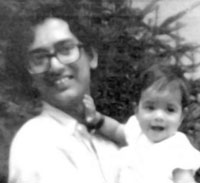
Dear fellow-Wesleyites, and especially Mr Editor:
I was excited to see your website, which is clearly a veritable furnace of nostalgia and reminiscence. Unfortunately for me, since I departed Wesley right after the O levels of '66 (that's 1966), I was never a prefect, and was not even slated to be one, being a 90 lb weakling at the time --almost literally-- and in no position to maintain any sort of order or discipline. My eyesight was weak, and I couldn't play any kind of sports, nor could I run, and so Moscrop House endured me with barely concealed impatience, and when I departed I left behind scarcely a ripple in the Wesley pond! Very few of those who have written up their sagas would have known me.
Inversely, I do not recognize any of the names of the Cricketers or Rugbyites mentioned in the memoirs; I knew the fellows in the Hostel, my classmates, and the boys in the choir, and that is almost all. But there must be others like me, and here's hoping some of them remember me! I remember Sarath Wickremaratne, Kodituwakku, L. C. R. Wijesinghe, Rodney Perera, M. Muthuveloe, Mervyn Hamer and Omar Jayasekera, but not because I was deeply involved with the game.
Since I joined in the Nursery Class, and since the attendance roll was kept in chronological order, I was one of the first names in the list. Here are some of the names:
 Kithsiri Ganasinghe, Duleep Boteju, Nandasena Cooray, Kapila de Silva, David Herat, Lucien Herat, Ajantha Hewawitharne, Gamini Balasooriya, Kumara Ekanayake, Donald de Silva, Nimal Attanayake, Ranjan Gunawardhena, Kamal de Silva, Rohana de Silva, Kuvera Premawardhena, Mahinda Kottachchi, Sudharshan Pieris (who died tragically of a fall from a tree), Clive de Silva, Lahan de Silva, Gehan Weerasooriya, Sarath Kuruvitaarachchi, D. P. Makalanda, Sydney Silman, Ajith Algama, Gamini Kodituwakku, Hilary Fernando; and I seem to have forgotten the names of roughly 10 more fellows.
Kithsiri Ganasinghe, Duleep Boteju, Nandasena Cooray, Kapila de Silva, David Herat, Lucien Herat, Ajantha Hewawitharne, Gamini Balasooriya, Kumara Ekanayake, Donald de Silva, Nimal Attanayake, Ranjan Gunawardhena, Kamal de Silva, Rohana de Silva, Kuvera Premawardhena, Mahinda Kottachchi, Sudharshan Pieris (who died tragically of a fall from a tree), Clive de Silva, Lahan de Silva, Gehan Weerasooriya, Sarath Kuruvitaarachchi, D. P. Makalanda, Sydney Silman, Ajith Algama, Gamini Kodituwakku, Hilary Fernando; and I seem to have forgotten the names of roughly 10 more fellows.
We were taught by an amazing team of teachers every year, and few of my present friends believe me when I claim that there was hardly one who wasn't exceptional. In chronological sequence, I remember Ms Elna Wickremasinge (the wife of Mr Wilfred Wickremasinghe), Ms Elsie Perera, Ms Dulcie Fernando—piano teacher, Mr Cyril Wickramage (of Sath Samudura fame), Mr E. L. Rodrigo, Mr P. J. Fernando, Mr Wilfred Wicremasinghe, Ms Lena de Silva, Mr Justin de Silva, Mr Felix Premawardhana, Mr Cyril Fernando, Mr R. G. Wijesinghe, and possibly somewhere along the line, Mr Frank Jayasinghe. I do not remember the names now (unforgivable, I know), but there were other geniuses who contributed: Mr Kalupahana, Mr Shelton Wirasinha, Mr Watson Wijewickrema, Ms Iris Blacker, Ms Maureen Jansz, Mrs E. Sarathchandra, and of course, Mr NAB Fernando, and the legendary Haig Karunaratne.
Our particular generation did well at the O levels (and subsequently at the A levels, though I wasn't there); I think our 'gimmick', if it could be considered one, was to grab the ideas before we left the classroom. I, for one, was not good at studying things at home (or in the hostel) because I was too busy reading junk literature. So I had to get the stuff the first time, right in class, or it was gone forever.
Imagine my astonishment one day when I discovered that mine were the worst eyes in the class. The very next week they tested my vision, and much to my delight I was prescribed glasses. Finally, I looked the way I had felt most of my life: a shortsighted little twerp. I still remember traveling home to Peradeniya and arriving after dark, lying on the road with my cousin Nelson, waiting to join my father's choir in their carol-singing rounds. By mere chance I happened to look at the sky, and was stunned by a sight that was familiar to everyone with normal vision: the stars!
 I joined the Hostel twice; once abortively in Std 5, and once again later in Form II. I enjoyed Hostel for the most part, principally because of making friends with some unique fellows. There were Darrell Christoffels, Glenn Scarenguivel [Spelling?] Wilhelm Van Geyzel, Darrel Bartholemeusz, Neil Harvie, Ahmed Imad, Hussein Shihab, C. G. Sadanandan and his brothers, Jabez and Ebbie Joseph, Lal Fernando, Lasath Algama, Conrad Fernando (with whom very few of us saw eye to eye), and another interesting chap, Thiagarajah, who was perpetually singing Neapolitan songs in the bathroom, such as "O sole mio", and "La donna e mobile." We mustn't forget Gamini Hettithanthri and Nihal Cooray, and Abdul Aziz, Ahmed Rashid, Habib, and a couple of other guys from the Maldives whose names I forget. Imad and Rasheed were particularly sweet guys; both went on to study Islam in the UAR. Wilhelm Van Geyzel was a fascinating character, completely steeped in WW2. He could make the scaffolding (for the extension to the stage) into a submarine, or even a bomber. The storage room in which it was kept was filled with machine-gun sounds all through the weekend. When he left for Canada we felt abandoned and utterly bored. But then, the Beatles came along, and Shihab, Sathanandan and I sang Beatles songs all the time. There was also M. S. M. Mohamed, who loved all things Elvis-related and Boxing-related, and Kenneth Mahamooth. Then there was Godwin Philips; and Punchihewa whom we bullied mercilessly, and I hope the poor chap has forgiven us. The antics we got into were unbelievable. On Friday nights, we would all be glued to the Rediffusion in the dorm, for the Ponds Hit Parade. There were all sorts of games we played whose names I don't even remember; “Gudu” was one, and “Thachchi” was another.
I joined the Hostel twice; once abortively in Std 5, and once again later in Form II. I enjoyed Hostel for the most part, principally because of making friends with some unique fellows. There were Darrell Christoffels, Glenn Scarenguivel [Spelling?] Wilhelm Van Geyzel, Darrel Bartholemeusz, Neil Harvie, Ahmed Imad, Hussein Shihab, C. G. Sadanandan and his brothers, Jabez and Ebbie Joseph, Lal Fernando, Lasath Algama, Conrad Fernando (with whom very few of us saw eye to eye), and another interesting chap, Thiagarajah, who was perpetually singing Neapolitan songs in the bathroom, such as "O sole mio", and "La donna e mobile." We mustn't forget Gamini Hettithanthri and Nihal Cooray, and Abdul Aziz, Ahmed Rashid, Habib, and a couple of other guys from the Maldives whose names I forget. Imad and Rasheed were particularly sweet guys; both went on to study Islam in the UAR. Wilhelm Van Geyzel was a fascinating character, completely steeped in WW2. He could make the scaffolding (for the extension to the stage) into a submarine, or even a bomber. The storage room in which it was kept was filled with machine-gun sounds all through the weekend. When he left for Canada we felt abandoned and utterly bored. But then, the Beatles came along, and Shihab, Sathanandan and I sang Beatles songs all the time. There was also M. S. M. Mohamed, who loved all things Elvis-related and Boxing-related, and Kenneth Mahamooth. Then there was Godwin Philips; and Punchihewa whom we bullied mercilessly, and I hope the poor chap has forgiven us. The antics we got into were unbelievable. On Friday nights, we would all be glued to the Rediffusion in the dorm, for the Ponds Hit Parade. There were all sorts of games we played whose names I don't even remember; “Gudu” was one, and “Thachchi” was another.
I was heavily involved in the Choir from as early as I was allowed to sing in it, and just the second year it was trained by Mr NAB Fernando(while Haig Karunaratne was completing a degree at Peradeniya). Inspired by the legendary 1962 carol service at King's College Cambridge, Mr NAB Fernando had us singing a couple of chorales from the Christmas Oratorio of J. S. Bach, and I have to confess that that particular selection of carols completely changed my life. To this day I am a lover of Bach, largely because Mr NAB Fernando had us singing Bach off and on for almost a year, for the Prize Giving and other major events. When Mr Karunaratne returned to Wesley and resumed responsibility for the choir, I was singing Alto, and was thoroughly immersed in Choir affairs. Haig Karunaratne brought back with him from Peradeniya an interest in Sinhala and Tamil carols (called lyrics, for some reason), and we began to sing more interesting ones, laying aside the over-used carols that had been sung for years in favor of newer ones. In the Choir, some of the names I remember were Horace Walker, Chiron Bartholemeusz, Adrian and Maxwell Parsons, Darrel Bartholemeusz, and C. G. Sadanandan sang with us for a couple of seasons. One choir member I still remember from long before I joined is Shane Laurenz, who had the most beautiful treble voice. I still remember him singing Cantique de Noel ("O holy night"), another one of those unforgettable memories. (Horace showed us how to play on the piano "No reply" by the Beatles, a significant part of my education.) Just my last year, Eric Gauder emerged as a really impressive baritone. To my horror, though, Mr. R. G. Wijesinghe refused to accompany the choir, and it fell to me to do it. For years I blamed myself for whatever rift there had been between the choir and Mr Wijesinghe, but since then I have learned that only about half the things for which I have blamed myself were ever justified, a very humbling thought.
Back in elementary school, I had joined the Cubs, under Mr E. L. Rodrigo, and when the other fellows moved up into the regular scouts, I went along. For the longest time I was convinced that I would never pass the Tenderfoot stage, while the rest of the guys: Imad and Kenneth Mahamooth and company were breezing through the tests. Just when I was getting comfortable with being a perpetual Tenderfoot Scout (though permitted to go on a couple of jamborees as a sort of special privilege --I remember one in Colombo: Siyawasa-- and one at Richmond; their 75th anniversary, I believe) I suddenly discovered a talent for knots and whipping --which will surely come in handy someday in my private life-- and was through the test. There was a gentleman from Richmond, Mr Dhanapala, I believe, who had taken charge of the scouting, and he was principally responsible for my transition from perpetual Tenderfoot to perpetual Second Class Scout. In the troop were Ravindra de Silva and S. Kuruppu. Kuruppu taught us the basics of gymnastics (the Break Fall), and we sent a team to the jamboree to demonstrate firefighting and life-saving.
The Scouts, of course, are notorious for their terrible singing. It is more like rhythmic yelling, with ingeniously mispronounced Zulu, Swahili and Maori songs. If a scout cannot mispronounce at least one African song before breakfast he goes into deep depression. (It is part of the Scout Law: ... to help other people at all times, and to mispronounce at least one Zulu word every day. ... Or is that the Cubs? Only Akela knows.)
Because of my parents I knew more College teachers and staff than is good for anybody: Mr Wirasinha, and his wife Manel (who taught me piano), Mr Frank Jayasinghe, Mr Felix Premawardhena and Mr Wilfred Wickremasinge were all family friends. In addition, Mr L. A. Fernando, who was vice principal, was an S.C.M. friend of several members of my family. (Back in prehistoric times the SCM was apparently a very closely-knit group, whereas now they’re probably just very tangled.) While this meant that whenever I got in trouble I didn't have far to go for help, it also meant that I was under pretty close scrutiny most of the time. I remember once refusing to write a single word in a Scripture test administered by Ms Lena de Silva. I was determined to stick up for my rights as a budding atheist, and I gleefully grinned around at my classmates while they sweated over Who Said What to Whom and Under What Circumstances, And What Had They Been Smoking. Ms Lena was not happy. Pretty soon I was being caned by Mr Felix Premawardhena. Now I see the little adventure from the point of view of the teachers, but at the time I was thoroughly indignant at this abridgment of my rights as a free citizen.
 Once I left College, I met D. P. Makalanda again oddly enough in the course of putting together a carol service for Colombo Campus SCM (of the University of S.L.). I led the choir one year, but the following year Makalanda took charge, and it was an absolute triumph. I can take a smidgeon of the credit having been the organist, but Makalanda made a brilliant conductor and trainer, and topped the carols with his own signature Sinhala Baila-Rock-style carols, accompanied by electric guitars. (Unlike myself, Makalanda can keep time, which is more important than I suspected at the time. )
Once I left College, I met D. P. Makalanda again oddly enough in the course of putting together a carol service for Colombo Campus SCM (of the University of S.L.). I led the choir one year, but the following year Makalanda took charge, and it was an absolute triumph. I can take a smidgeon of the credit having been the organist, but Makalanda made a brilliant conductor and trainer, and topped the carols with his own signature Sinhala Baila-Rock-style carols, accompanied by electric guitars. (Unlike myself, Makalanda can keep time, which is more important than I suspected at the time. )
There are lots of other memories: the Double Blue Fetes mentioned by others, which heavily involved the hostellers; (I remember Dallas Achilles and a friend singing Abilene one year) cricket matches, particularly a narrow victory over Royal, but I forget the year; visits with the Royal College Hostel and a friendly cricket match; SCM variety entertainments for which Wesley submitted skits coached by Haig K; the Colombo Inter-Collegiate Christian Fellowship Christmas Carols (when it came to carols, I soft-pedaled my atheism with great discretion), and the annual War Memorial services on Poppy Day at the Cenotaph, with the bands of the Army, Navy and the Air Force. Gosh, there was never a dull moment. And then, of course, there was The Coup, after which an armored car was stationed inside the College compound, overlooking the road and the Prison. Our year at the G.C.E exams there was some racial hostility, and many of us took fellow hostellers home with us, until it was safe for them to travel to their homes in the so-called Outstations.
By all accounts, the musical and choral traditions are being maintained at Wesley. I wish I had an opportunity to advise the present students about their academic work: Get it in class. Read the book; don't wait for the movie! Alas, the younger generation seems unable to comprehend the fact that teachers know what they are talking about. By the time they arrive in Grade 12, students stumble onto the fact that since they themselves know a fair amount about their subjects, there is no way that the teachers could know any less. But by then, bad attitudes towards teachers have been ingrained, and it’s too late. They may not be able to explain things as well as the students might like them to, but that just means that the students have to work a little harder. Concentrating for fifteen minutes in class is worth concentrating for an hour at home. That's my story, and I'm sticking to it. I used to listen with my ears flapping, because we had not got the memo that the teachers were supposed to be worthless. And, in our ignorance, we found that they were excellent. Hooray for the teaching profession.
When I moved to Kandy and attended St Sylvester's, I learned to regard the teachers with even greater reverence. The tuition madness had not arrived in Kandy yet; probably the higher altitudes were difficult for the virus. And my classmates spoke Sinhala even during the intervals. I had to learn the language in a hurry. (I’m only joking; I was in the Sinhala stream all along; one of the few loonies who took A Syllabus in both languages.) But shortly afterwards teachers across the nation began to lose their grip on their audiences in the classroom, and began having to teach everything twice: once in class, to deaf ears, and a second time at a tuition factory, for additional remuneration. This is a sort of Value-Added approach to education.
But I deplore this wallowing in nostalgia! Those were wonderful days, but it makes no sense to carry on as if our lives were over once we left the school. Wesley gave us a brilliant start, but the best is yet to come. Just last Friday I saw Alice in Wonderland, and I thought to myself how wonderful it was that I knew so much of the background of the story, thanks to the stuff I read while I was at Wesley. How many kids watching Harry Potter can relate to life in a boarding school like we can? I still remember sneaking over the parapet wall to get Seeni Sambol from the boutique around the corner. I remember lifting Punchihewa, bed and all, and leaving him out in the courtyard, with his wayward sarong totally absconding in its sacred duties. How much we read! Some American youth are not so fortunate as to learn even in university what we learned in school. This is true for most Sri Lankan schools, but the miracle is that Wesley achieves this with so little public funding. It is only from multi-ethnic schools like Wesley that leaders can emerge with a vision of a healed society for Sri Lanka.
The minute I send this off I'm sure to remember something interesting, but in the interests of brevity and promptness I will stop here, and propose a toast to some of the jolliest years of my life! Cheers!
About the Author Dr De Silva who is the Assistant Professor and Chair of Mathematical Sciences:
Dr. de Silva earned his Bachelor of Science in Mathematics at the University of Peradeniya. After teaching for a year at the ill-fated Jaffna Campus of the University of Sri Lanka as an Instructor, he came to the University of Pittsburgh, from where he earned an M.A. in 1977, and a Ph.D in 1983 on differential geometry and relativity. Right after graduation, he came to Lycoming to teach mathematics, and also taught programming for a few years. From 1999 to 2002 Dr de Silva served as editor of PCTM Magazine, the journal of the Pennsylvania Council of Teachers of Mathematics. His mathematical interests include theoretical physics, mathematical software applications and numerical analysis, dynamical systems and fractals. He is also interested in music, from Bach to Mendelssohn, Wagner and the Beatles.
Links to further reading
Rev R Wilfred Pile - The Chaplain at Wesley College 1952-56
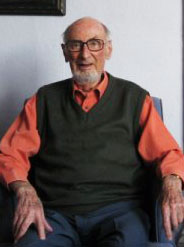 On Thursday, 17th December, 2009, Brian Mack, Azahim Mohamed and myself, visited Rev. Pile at "Homewood"----a Methodist Old People's Home, in Leamington Spa, Warwickshire--(about 85 miles from London.) We spent a very pleasant and delightful one hour with Rev.Pile---talking about our old school and of fond by-gone times. Rev. Pile was a very alert but frail 94 year old. He was quite overwhelmed when we presented him with a tin of Fortnum and Mason biscuits and a poinsettia plant. (Rev. Pile cebrated his 95th Birthday on the 12th March, 2010).This visit was initiated by an e-mail that the late Brian Claessen sent me in November,2009, suggesting that a group of old boys should try and visit Rev. Pile. At least, Brian Claessen knew and appreciated that we visited Rev. Pile.
On Thursday, 17th December, 2009, Brian Mack, Azahim Mohamed and myself, visited Rev. Pile at "Homewood"----a Methodist Old People's Home, in Leamington Spa, Warwickshire--(about 85 miles from London.) We spent a very pleasant and delightful one hour with Rev.Pile---talking about our old school and of fond by-gone times. Rev. Pile was a very alert but frail 94 year old. He was quite overwhelmed when we presented him with a tin of Fortnum and Mason biscuits and a poinsettia plant. (Rev. Pile cebrated his 95th Birthday on the 12th March, 2010).This visit was initiated by an e-mail that the late Brian Claessen sent me in November,2009, suggesting that a group of old boys should try and visit Rev. Pile. At least, Brian Claessen knew and appreciated that we visited Rev. Pile.
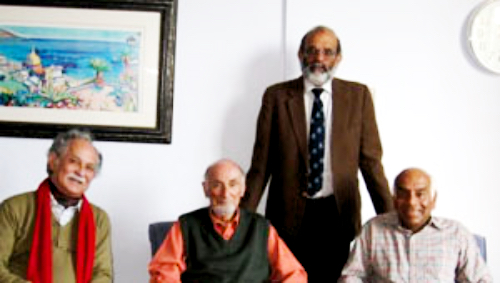
Links to further reading
Homewood Nursing Home in Leamington Spa
 |
Brian Mack, Senthil Sinniah and myself travelled up to Leamington Spa near Coventry to see Rev Pile who was the Chaplain at Wesley 1952-56. Those of us who remember the great man will recall the tall figure with a powerful presence. He possessed all the charisma and the techniques for inspiring awe that one looks for in a man of God. He often wore a white robe and “dog collar” and walked the long corridors and passages of the school with an upright gait and a smile on his face. We were immensely fortunate to come under the tutelage of Rev Wilfrid Pile.
He now lives in a Nursing Home for Methodist Ministers called Homewood. Homewood was built in 2010 and is a purpose built Residential and Nursing Care Home in Royal Leamington Spa. Homewood is home to 50 older people and is situated within its own grounds close to Leamington Spa town centre. It offers 50 bedrooms all with en-suite and shower facilities, a coffee shop, garden room and large and attractive communal areas for the enjoyment of our residents. Homewood is in a leafy suburban setting which ensures both quiet surroundings and a relaxed pace of life.
We informed him of our visit and on our arrival was taken to his room which looked immaculate. He welcomed us warmly and we sat in the lounge where Rev Pile had arranged some tea and biscuits for us.
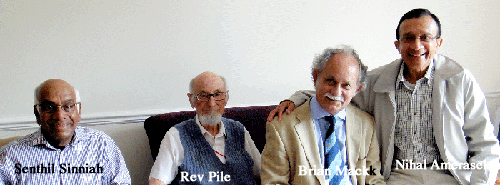
At 96 years he is active, walked without a stick and his memory was perfect. He was able to keep up the conversation taking a walk down memory lane to those happy years in Ceylon. Rev Pile remembered Lionel Jayasuriya, LA Fernando, Mr Oorloff and Mr De Mel and students like Bryan Claessen and Lou Adhihetty. He spoke at length about his early years as a minister in China, Ceylon and England and also his childhood in Dorset. He has kept in touch with the political changes that have taken place in Sri Lanka and had followed the fortunes of the Sri Lankan cricket team touring England. He said he always supported the Sri Lankan team except when they played England.
We gave Rev Pile a present of his favourite Ginger Chocolates from Harrods for which he thanked us profusely.
After and hour with him we decided to say goodbye hoping we could meet again someday. It was a great pleasure to see Rev Pile happy and well.
It was lovely to meet up with my friends, Brian and Senthil who were able to make time for this visit. We broke journey in a quaint pub for lunch where we reminisced a great deal of those glorious 1950’s. We thank Brian for taking the trouble to drive us all the way up and back.
Links to further reading
Bryan Claessen - The host (2005)
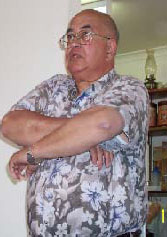
A group of old Wesleyites and their partners recently called on Bryan Claessen on their way to Adelaide for a week’s holiday.
I do not think that any Wesleyite who knew Bryan would ever want to drive past his place without visiting him and his lovely wife Carol. They have a few acres at Tailem Bend, in South Australia, about three hours drive from Adelaide. The mighty Murray River winds its course through Tailem Bend, hence the name.
There were ten of us – Rod de Kretser and Marie, Trevor Collette and Jill, Robin Reimers and Trilby, George Robertson and Beryl, all Wesleyites, plus Trevor Newman and his wife Sandra. (This Trevor went to St. Josephs but we’ll ignore that).
It was a pleasure to meet my old classmate after so many years, and we talked of many things, and joked and laughed at the memories we shared. Those who know of Bryan’s cricket career and accomplishments will remember him as the finest schoolboy cricketer of his time, and it was good to hear Bryan recall some of his experiences from those bygone days.
They have worked very hard, Bryan and Carol, to make their home a pleasant place to live in and have always welcomed visitors who drop by especially if they hail from that School in Baseline Road, opposite the Jail.
Bryan looks well, but takes things a little easier now, as we all do. Nevertheless, his sense of humour and his outlook on life are very positive. He is a well- respected and popular member of his community, sharing in all the activities they undertake.
Bryan and Carol go dancing, Carol is a keen gardener and together they have worked to make a home from a piece of land where once was nothing.
It was also an opportunity to meet up again with Radley and Angela Claessen at a Dance to usher in the New Year and later to have a drink and a chat with them when we were invited for “Kiri Buth” and Seeni Sambol” at the home of Ron Foenander, our host.
Links to further reading

In 1964 we went into Form IV (aka grade 9). The government, in an instance of rather desperately overenthusiastic response to all the nationalism that was flying around, decided to change to the Poya week, and the Department of Education wanted Wesley to go two sessions. Instead of the day ending at around 1:45, we would have a lunch interval at noon, and then work for a couple more hours, and go home at 3:15. (I think Lower School still let out at 1:45.)
Our new form master, Ronnie Wijesinghe, was most determinedly opposed to this change. I'm not sure what all his objections were, but he was certainly of the opinion that he could not teach Physics in the afternoon, after the students had eaten a heavy lunch of rice and curry. (This opinion is justified by my experience.)
 We were scheduled for Physics and Applied Mathematics in the mornings on some days, and in the afternoon on other days; I think the afternoon Physics periods were on Mondays, Wednesdays and Fridays. So, it happened, that Ronnie Wijesinghe (unilaterally, we were almost sure,) decided on something novel. He would cover the Physics syllabus whenever the periods fell in the morning. When they fell in the afternoon, however, he was going to read us Bram Stoker's Dracula !
We were scheduled for Physics and Applied Mathematics in the mornings on some days, and in the afternoon on other days; I think the afternoon Physics periods were on Mondays, Wednesdays and Fridays. So, it happened, that Ronnie Wijesinghe (unilaterally, we were almost sure,) decided on something novel. He would cover the Physics syllabus whenever the periods fell in the morning. When they fell in the afternoon, however, he was going to read us Bram Stoker's Dracula !
I, for one, though I was persuaded about the rationale for this startling decision, was dismayed by the choice of story. Those of us who were unwilling to listen to Dracula's adventures were obliged to do some work quietly, which we did. The rest of the guys moved to the front, and hung on Bram Stoker's every word. (I'm certain it all helped them to learn a certain degree of English above and beyond what we were learning in class. Subject-matter is everything, when teaching a second language.)
Meanwhile, we were doing famously with our trigonometry and physics. Ronnie packed a lot into those morning periods, while he continued with the literature in the afternoons. Once Dracula was finished, he started on A Tale of Two Cities. For this one, I was certainly going to be right there, especially after I had heard the opening chapters from the back of the class. At that age, of course, we were all utter romantics, and it strikes me that Ronnie was one as well; his annotations of the text were brilliant and persuasive. I had never understood an adult novel as well as I understood that one. His characterizations of Jerry Cruncher and Stephen Carton were absolutely spot on.
By the end of the year, we had finished both books, and started, I believe, on Mary Shelley's Frankestein. I gave that one a miss, too; but by then, I was hooked enough on the Applied Mathematics that I joined my buddies with self-directed work at the back of the room. (And we were also planning to make electric guitars from scratch, and we spent a certain amount of time plotting how to do that.) The following year, Mr Kalupahana was conscripted to teach us Physics, while Ronnie was moved to the Sixth Form. (He had taught us in Sinhala, which was not easy for him, since he had learned all this in English, and he spoke in Sinhala only reluctantly. What an incredible achievement! In spite of all his eccentricities, he had an amazing understanding of the mind of an adolescent boy, and his interests in music and mathematics were all a part of a very logical and harmonious whole.)
Ronnie Wijesinghe was an enormous influence on us, and all for the positive. He made Physics and Mathematics reasonable and logical, which is the most important thing to do at that stage of our development. And, on top of that, he also introduced us to some fabulous pieces of literature, and far more effectively than a mere English teacher could have done. I sincerely hope that his life after Wesley was as rewarding as it deserved to be. A mathematician, a musician, and an appreciator of literature. And an amazingly effective teacher.
Links to further reading

A little more than half a century has passed since I walked the corridors of Wesley College as a student for the last time. I remember the occasion well. It was my last day at College. .I stayed back after the rest of the class had left and stood looking out of the window down to Base Line Road one final time; glanced around at the walls of the class, the blackboard, with chalk marks where the last lesson had been deleted, my desk, checked to see whether I had left anything behind, shut it and walked out. Our Bell-ringer Ranis had completed his task and gone about his business. Everything seemed so quiet as I walked away
I was the last to leave.
Since then I have had the opportunity to be a member of the Wesley College (Australia) Old Boys Union here in Melbourne and have enjoyed participating in the various activities we organized in support of our College.
I have seen the many changes that have taken place at Wesley since my days as a student. That is the way life evolves; nothing remains the same forever; that is how things are. We must look to the past, learn from it and move on. My Teachers represented to me the “elders” of my generation.
A long time ago, in the traditional villages there were those who were called “Elders” No longer able to do the more strenuous tasks, they were looked upon as the holders of experience and wisdom which they passed on to a younger generation, such as we were then. In our time, Wesley College was our “village” and I remember Messrs. R.A. Honter, De Mel, L.A. Fernando, Ivor de Silva, Ivor de Kretser, C. Canageratnam, Thamotheram, Mr. Van Sanden and many others. The Principal at Wesley when I joined was Rev. James Cartman, followed by Mr. Cedric Oorloff. The Vice-Principal was Mr. Kenneth Lanerolle.. These men gave of their experience and learning, both academic and from life, to help a new generation to maintain the traditions of Wesley College, to uphold the standards in the classrooms and playing fields just as their fathers had done before. They also taught us what it meant to be a student of Wesley, and what that represented.
Too often we think we have to do “big things” – the fact is, each one of us can do our little bit where we are, to help a young generation, just as we were taught; to keep Wesley’s colours flying high.
There is a saying “Do not try to reinvent the wheel” our School’s reputation as an institution of learning has already been established, we have to build on it, not go back to basics. We often tend to make the same silly mistakes made by previous generations when we try to start all over again. The greatest gifts we can give to another generation is our experience, our wisdom – the wisdom of an older generation.
A well-known humourist has said :” We learn from history that we don’t learn from history” Which, when you come to think of it, is true – how many times have we argued about the same old things we argued about in the past? Did we not learn from that experience, not to make the same mistakes again and again? Or did we learn nothing from history?
Photo:

Let me make another quote from the same man:
“the best way to win an argument is not to have an argument at all.”
When we Old Boys have a get-together, the stories flow freely about the old days, the days we got into trouble, the tuck-shop, how much we owed the toffee man who sold us “verima nice the pineapple toppy” And there is always a sense of comradeship and good feeling and plenty of laughs. There is a unity of spirit in whatever we plan. I like to think that this is because the end result is not for ourselves, but for the benefit of our beloved Wesley College.
And if we can do this, our days at Wesley have not been in vain.
Wesley enters a new era now, and I wish the Principal Mr. McLelland the very best in all that he undertakes for Wesley as I pledge my support to him and his staff.
In conclusion: Roughly forty years after that last day at Wesley, I went back again. I stood once more at the same window in my old classroom and looked down at Base Line Road. This time I had my wife Beryl besides me, and we stood there, just remembering, not saying too much, one more time. Back home we had our two daughters and their families, and five grand children.
The years had passed and there was much to remember since then. And through them all, I shall never forget the contribution that Wesley has made to all our lives. There will be difficult times in her life, of course, but Wesleyhas lived through the tough years with a dignity that has seen her survive them all.
Now it is time to give her some of the love and loyalty and strength she has infused in all of us, made us better than we might have been just because we were fortunate to have stood under a flag that referred to
The band of Double Blue
By Dr Nihal D Amerasekera
Lest we forget our thanks to pay!
never looking for glory or praise
They don't seek recognition
for their thoughtful, caring ways.
Living lives of deep commitment
providing for those they hold dear
Steadfast with a quiet strength
through times of laughter and tears.
Every Wesleyite knows the School Office. That is where serious punishments are doled out. For everyone else the office is the engine room, the treasury, the heart and the brains all rolled into one.
Mr. Eric De Silva
 This was way before the digital revolution. There were no fax machines, no computers and word processes. Everything was done by hand with plenty of elbow grease. We heard the constant tapping of the old typewriters whenever we passed the Office. The old and faithful black telephone helped to transmit information despite the hiss, crackle and pop. The Office churned out reams of printed paper copied on the Gestetner copying machines. The copies ranged from examination papers to dictates from the Principal. The smell of ink and paper wafted from the office far down the corridors of the school. The old Postal Service seemed adequate as we knew nothing better. There was never a rush to get things done, as nowadays, and tomorrow was always good enough. The calm and placid atmosphere that prevailed in the country pervaded Ceylonese society right down to the grassroots.
This was way before the digital revolution. There were no fax machines, no computers and word processes. Everything was done by hand with plenty of elbow grease. We heard the constant tapping of the old typewriters whenever we passed the Office. The old and faithful black telephone helped to transmit information despite the hiss, crackle and pop. The Office churned out reams of printed paper copied on the Gestetner copying machines. The copies ranged from examination papers to dictates from the Principal. The smell of ink and paper wafted from the office far down the corridors of the school. The old Postal Service seemed adequate as we knew nothing better. There was never a rush to get things done, as nowadays, and tomorrow was always good enough. The calm and placid atmosphere that prevailed in the country pervaded Ceylonese society right down to the grassroots.
Although a hive of activity at times the office had its placid moments too, mostly in the heat of the afternoon . The constant whirr of the ceiling fans weren’t enough to keep the place cool. There were 3 large old colonial desks in the main office for the Headmaster Mr. JLF De Mel, The Bursar Mr.Eric De Silva and also the Secretary Miss Bertha Weerapass. Each of the desks had a green central rectangular area, typical of office desks of that period.
Mr Eric De Silva worked all hours and was ever present in the office. He had on his desk an enormous ruled ledger where every student’s name, payments and arrears were recorded by hand with meticulous detail. Although we had Government assistance the school levied a fee from every school boy. This was euphemistically called the Facilities Fees. Late payers and non payers were constantly hounded. Those records were maintained and updated assiduously by the Bursar. Even in the corridor he would have a quiet word about payment. As the bursar he acquired a daunting reputation for prudence managing the income of the school.
Eric De Silva came from that strong Methodist enclave of Moratuwa. Four of his brothers were Methodist Clergy and Eric wasn't far behind. His eldest brother Fred became the Chairman of the Methodist Synod. Eric De Silva was a gentle soul liked by all and had never a harsh word for anyone. He lived next to the sick room for many years until he got married. In the hostel he was treated like a hostel master and earned the respect of all the boarders. He was a man of God and took our prayers in the hostel Chapel and played his part as a teacher at Sunday School. In chapel, his presence was of a man of simple and transparent faith, and his sermons were perfectly pitched and beautifully delivered. His uncomplicated biblical Christianity had a natural appeal. Eric De Silva was distinctive for never being heard to make a disobliging remark about anyone. His gentle manner, however, concealed a fierce loyalty to his superiors for whom he gave much vocal support during the financial crises of the 1950's and 60's which nearly paralysed the school. His devotion, conscientiousness and commitment to his family and to his profession was exceptional. Eric De Silva passed away in November 1973 and was offered a fitting farewell by the staff, present and past students of Wesley College.
Mr Edmund Dissanayake pays him a handsome tribute: The death of Mr. Eric de Silva has taken away from our midst a pillar of the school. He was Bursar for 36 years. I remember Rev. Cartman telling me in 1947, that if Eric left Wesley he would be compelled to employ at least three people to take his place. If Rev. Cartman had such a high regard for Eric's work twenty seven years ago, one 'can imagine the tragedy that has befallen Wesley today. The late Eric de Silva was one of the finest men I have met. In truth, he has not passed away, 'for he continues to live in our hearts.
Miss Bertha Bernard nee Weerapass
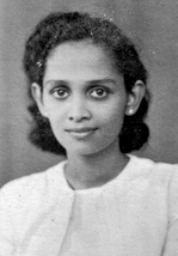 Miss Weerapass, as we knew her then, was everyone’s kind aunt and compassion was her greatest strength. She had a kind word for those who came to the office for punishments. I don't know how it worked but her warmth offered hope when all seemed lost. Our sorrows and fears lifted a little whenever she spoke after we emerged from the thrashing. She was the Stenographer cum typist and did the job brilliantly. What I recall most about her is her delicate elegance and relaxed irresistible charm. All the documents that emerged from the office for circulation to the staff, parents, old boys and the Department of Education were all done by her or Eric. How she managed to do this day after day without any outside help we will never know. Eric De Silva and Bertha Weerapass were permanent fixtures in the school office which was their second home. Well, they were like a very efficient tag team. While one did the clerical part, the other would do the typing, and vice-versa. There was never one angry word exchanged between them.
Miss Weerapass, as we knew her then, was everyone’s kind aunt and compassion was her greatest strength. She had a kind word for those who came to the office for punishments. I don't know how it worked but her warmth offered hope when all seemed lost. Our sorrows and fears lifted a little whenever she spoke after we emerged from the thrashing. She was the Stenographer cum typist and did the job brilliantly. What I recall most about her is her delicate elegance and relaxed irresistible charm. All the documents that emerged from the office for circulation to the staff, parents, old boys and the Department of Education were all done by her or Eric. How she managed to do this day after day without any outside help we will never know. Eric De Silva and Bertha Weerapass were permanent fixtures in the school office which was their second home. Well, they were like a very efficient tag team. While one did the clerical part, the other would do the typing, and vice-versa. There was never one angry word exchanged between them.
The whole Wesley College clerical machine depended on them and so, in turn, was the running of the school. Which of us did not have a testimonial or leaving certificate typed by one of them. Think of the tens of thousands of examination entries, results, ministry reports, miscellaneous letters and forms churned out by this pair over the decades. Eric and Bertha added charm to an otherwise unremarkable and drab school office where their talents found their highest fulfilment. Now there is little or no mention of their tremendous contribution to the smooth running of the school. They are both no more and we must remember them. The dedication to duty they both showed has to be appreciated and commended. Miss Weerapass had an unfailing ability to empathise with people and make them feel good and wanted, a quality that served her well as she emigrated to Melbourne Australia to make a new life. All through her long life she remained a devout Christian. Her husband, Andrew Bernard, predeceased her and she passed away in 2008.
 The Headmaster being a teacher had his teaching commitments and was rarely seen in the office except when returning to official duties. Mr Lanerolle was the Vice Principal. He had a small cubicle by the rear entrance. We often saw him wearing his bifocals and hard at work. The Principal’s Office was in the far corner. Those boys who saw its inside were invited there for punishments and recall very little of its décor.
The Headmaster being a teacher had his teaching commitments and was rarely seen in the office except when returning to official duties. Mr Lanerolle was the Vice Principal. He had a small cubicle by the rear entrance. We often saw him wearing his bifocals and hard at work. The Principal’s Office was in the far corner. Those boys who saw its inside were invited there for punishments and recall very little of its décor.
Marshall and Ranis were in and out of the office carrying messages and documents to the classrooms and the staff. They gave us an indication as to the moods of the Principal and the Vice Principal when we passed them.
The office was a beehive buzzing with workers during my years at school. When Eric De Silva retired his son took his place. I am certain Bertha was replaced by several secretaries. I hope this piece will encourage old boys to remember our unsung heroes who remained invisible and lubricated the wheels of the establishment. Without them the school functions would have grounded to a halt.
In my journey through life I am grateful I had the opportunity to meet and thank them for their tremendous services to Wesley College. The cheer, warmth and the kindness they brought to the School Office will live in our hearts for many more years to come.
Links to further reading

This article will refer to certain aspects of life at Wesley hitherto untold. The tutorial staff of Wesley comprised of several former Principal of other schools. The camaderie that prevailed at Wesley made her the most sought after school for both students and teachers. Also on the staff, together were associated, as many as five former cricket captains of Wesley. Harold Nonis (Principal) Derrick Mack, Dr. Louis Adhihetty, Lalith Wijesinghe and the present writer. Is it little wonder that Wesley remained on top in cricket?
The Staff Guild unfailingly organized an "outing" each term, the most frequent being the Southern Trails through Hambantota. Alfred Cooray, a friend of mine, had placed a standing order with me that he should be informed of all trips organized, for his inclusion. The teachers who spear-headed the outings at different times were Lionel Jayasuriya, P. G. R. Fernando Dr. Frank Jayasinghe, Shelton Peiris, A. K. Suppiah, M. Y. De Alwis and the writer. A dip in the water was always a sine qua non. In this respect, expert life guard Daniel Pakianathan was always included. As outings played a very important part, more reference will be made. The dancing of Basil Mihiripenne, the caricaturing of Felix Premawardene, the non stop dancing of W. Thurairathan, the captivating singing of Haig Karunaratne, one foot dancing of Jacob, and Alfred Cooray’s popular dance wearing a saree, were the highlights. On one of these outings both Shelton Wirasinha and his wife Manel took part. The song "Uda rata sita Menike knek ava Varsity" was being sung lustily, the voice of Lyn De Mel and Nimal Silva being the loudest. Except the Principal and myself the others were not aware that the "Damayanthi" in the song referred to Manel’s sister. When Manel threatened to jump off the bus, the song was cut short! The song is published in the post script. The Principal did nothing to stop the song!
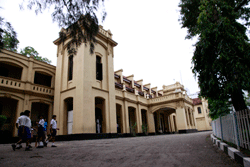 The Camaderie that existed could be gauged by the fact that as many as 25 teachers went to Jaffna, by train to attend the wedding of D. Pakianathan. He later functioned as Sub Warden of S. T. C. Two others from the Wesley staff Dr. Frank Jaysinghe and F. J. Senaratne preceded him. Those who could not go to Jaffna earlier, attended the wedding of P. Sugirthathason also in Jaffna. There was a Union known as the "Bachelors’ Union" with Berty Van Sanden as Life President. The Principal Cedric Ooloff, was once summoned to the office of Van Sanden. He submitted tamely to all the "orders" given by the President, including wearing of a "Union-Cap’. Thereafter, we got on famously. More of Cedric Oorloff. Fresh from his last assignment as A. G. A. Hambantota, he was known as a stickler for rules and discipline. He was the first Principal to have caned a Prefect M. Y. De Alwis for being late to school. Prefect B M N Jurangapathy suffered the same fate for not preventing a few ‘naughty’ boys at the Karlsruhe gate from shouting the name "Kaputu Kuday" directed at a school girl. Jurang, later functioned as DIG Police.
The Camaderie that existed could be gauged by the fact that as many as 25 teachers went to Jaffna, by train to attend the wedding of D. Pakianathan. He later functioned as Sub Warden of S. T. C. Two others from the Wesley staff Dr. Frank Jaysinghe and F. J. Senaratne preceded him. Those who could not go to Jaffna earlier, attended the wedding of P. Sugirthathason also in Jaffna. There was a Union known as the "Bachelors’ Union" with Berty Van Sanden as Life President. The Principal Cedric Ooloff, was once summoned to the office of Van Sanden. He submitted tamely to all the "orders" given by the President, including wearing of a "Union-Cap’. Thereafter, we got on famously. More of Cedric Oorloff. Fresh from his last assignment as A. G. A. Hambantota, he was known as a stickler for rules and discipline. He was the first Principal to have caned a Prefect M. Y. De Alwis for being late to school. Prefect B M N Jurangapathy suffered the same fate for not preventing a few ‘naughty’ boys at the Karlsruhe gate from shouting the name "Kaputu Kuday" directed at a school girl. Jurang, later functioned as DIG Police.
Next, the entire school was saddened when our record breaking star bowler M. N. Samsuden was suspended for breaking a school rule, by playing for a club without the Principal’s permission. He relaxed when Fred De Mel and I went in deputation but by then the season was almost over. When Wilfred Wickramasinghe, Head Master married Elna Jayawardene of the same staff, on a school day, they were given only two hours leave. Oorloff said that weddings should not take place during school days. Quite right, sir! More of Oorloff. It was his practice to invite a different teacher to lunch at the Bungalow. I was expecting grand lunch, but was disappointed. The dessert however was good. C J T Thamotheram asked me whether I was not aware that the Principal received a very poor salary? After Oorloff retired, the Wesleyites in Australia, invited the Oorloffs. At a Dinner, I was told there were more than 200 Wesleyites and wives present. That showed the respect that Wesley had for their Principal, Cedric Oorloff. There was a time when several essential items were in short supply in the country. A. K. Suppiah came to our rescue. Not only sarees, but also items like matches, soap, dhal, chilies etc were made available to us at cheap rates. There was a practice, once a month to meet at Nanking Hotel, Fort.
Once our dinner went on till 12 midnight. Each teacher had to make speech. Later, we shifted our café and proceeded to Havelock road Modern Chinese Café. Danton Dabrera who had been nursing an injured leg led the party and a few were arguing loudly about some matter. That was the day of the Royal Thomian. The café proprietor mistook us for drunkards and refused entry. It was only when Aileen Anderson came , that the proprietor apologized. The writer wishes to say a word about the present position at Wesley. The new Principal Dr. Shanti Mc Lelland, himself, an old boy, an outstanding athlete and hockey wizard, in a very short time, was able to win the confidence of former teachers and old boys, in our country, and also abroad, to help in the development of the school. He is indeed a go- getter. Let us all rally round him.
Bunny Taylor in 2008 - Toronto, Canada
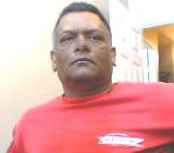
Hi Nihal,
I was at Wesley from 1957 until I emigrated to the UK in 1967. Participated in every extra curricular activity except cricket ... Edmund Dissanayake kicked me out after my first day of practice as I tried to bowl and hit Fredrick Forster in the face as he was taking the Mick out of me.
Edmund said that I should stick to Rugby and track & field. He was always concerned about my quick temper which got me into hot water all the time. He is a great roll model and I am extremely fond of him & Haig Karunaratne who turned a mischievous guy like me into an actor.
Bunny
Characters of my day:
Boys: Without a doubt it was
Peter Christy (now known as Peter Casiechitty) - for his acid comments
Donald De Silva – for all the tricks and mischief he got into
Tuan Campball – for his generosity
Shanthi Mclelland – for getting involved in anything that was going at the time
Cassim Carder – for all the extra curricular activities outside the gates of Wesley
Teachers:
Edmund Dissanayake – for his calm and patience in putting up with us.
Van Sanden – for his strict demeanor (the only teacher I was scared of)
Haig Karunaratne – for his lackadaisical attitude, which worked well with us
Which was the crucial match:
Being a Rugby player the match we played against Trinity College at Campbell Park in 1967. Glen Van Langenberg Captained Trinity and Shee hung Captained Wesley.
Glen ran over the sideline and scored a try, I did not tackle him as if I did I would have given away a penalty in our 25 yard line … but the linesman who was a Wesleyite (shall mention no names) did not raise his flag and the try was awarded … giving Trinity a 3 Nil victory over us.
The most important Concert:
Matheo Falcone, Haig karunaratne made actors out of many mischievous boys who would have never considered acting, including myself who played the lead role … this play took us to the Lionel wednt theater for the Ceylon schools drama competition final.
The most inspirational lesson or teacher:
Without a doubt Haig karunaratne was the most inspirational teacher who could make me do things I never wanted to.
The most inspirational lesson – was when Shelton Weerasinghe told me never to shun
The junior boys who ran up to shake my hand or pat me on the back, even though they dirtied my starched white shirt and trousers with their dirty little hands. As we sportsmen were their hero’s
Which old boys from your era went on to achieve greatness
Raja Jayasuria who played hockey for Ceylon but was the most humble person. Many have achieved recognition and status within the communities they live in now. Which include my dear friends Shee Hung, Shanthi Mclelland (Principal of Wesley) too many to mention.
What made your school days special?
My friends and all the sports I participated in and all the mischievous and harmless fun
We indulged in…. like trying to blow up Cyril Fernando’s room in the hostel.
Links to further reading
Prof Mahroof Ismail
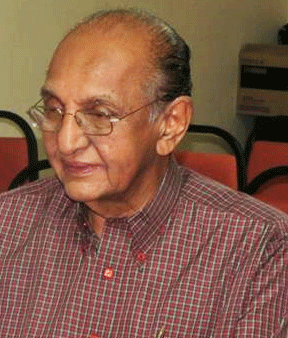
Links to further reading
17th of December, 2010 was a great day in my life span. Thanks to Shan Sivapakkiam, who invited me to the Wesley College, class of 64 Re-Union. This day, I will cherish and remember for a long, long time. I was re-united with some of my school mates after 46 long years. I do not know, if I will ever get another chance to be re-united with them again. Although Shan Sivapakkiam and I live in New Zealand we had no contact, up to the time we came across each other on Face book 4 months ago.
This gathering brought back memories of our younger days cheering our cricketers. The shouts of Zam Zam Zakay till our throats ran dry. When we had Ice-palam to wet out throats
It was great to have met Keerthie, who’s tape worms have kept him in trim figure.. Ranjith Amerasinghe, the Engineer, looked the same as he was in college 46 years ago.
As a Sri Lankan, as usual (UL) I was late for the occasion, many were in their 4th round of drinks. So I had to catch up with the rest.
It was great meeting Afga Mohideen, who needs no introduction. Solomons a Hockey stalwart, now retired from Bank of Ceylon. C.T. Rodrigo who did yeoman service in cricket and Hockey. .RM Peiris who looked.very much same as he was in school. Chris de Silva. brother of Rev.Sumith who is in the US. Arnold Fernando Jadi’s (bil) he hadn’t changed at all. Deepthi looked a little darker but his un-mistakable feature remained the same as he was in school.
After the drinks we had a sumptuous dinner,
Others who were present were K.N.Jayasinghe, M.L.T. Perera, M.S,K’s brother..
Sarath Seneratne who is a Lawyer M.R.Peiris (Rajah) who remembered and spoke highly of our web master, Dr. Nihal Amerasekera.
I said Bye, hoping I would be able to meet this crowd again
From the Editor - Dr Nihal D Amerasekera:
It is indeed a great pleasure to see a photo of my friend RM (Raja) Peiris after nearly 25 yrs. I last saw him in Colombo Fort amidst the noise and mayhem of traffic. We exchanged pleasantries and reminisced. Raja and I spent many happy years together in the boarding playing cricket and football in the small park until bad light stopped play. We shared the pain and pleasures of life in the hostel with 100 other students in the same plight. The hunger and homesickness was only bearable due to the friendships we had. Many years have passed since those days but memories still remain fresh and clear. He was a gentle soul and wish I could get his phone or email to make contact. I sincerely hope he has had a good and rewarding life so far and is enjoying his retirement as I am. How rapidly time has flown since those happy days of our youth.
Class of 64 Re-Union Photos
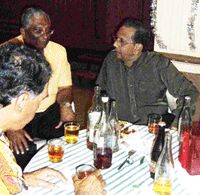 |
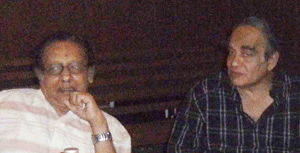 |
Photos from top left
1. Chris De Silva, Afgar Mohideen and CT Rodrigo
2. Raja (RM) Peiris and Solomons
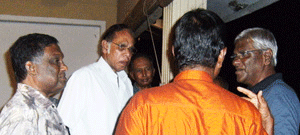 |
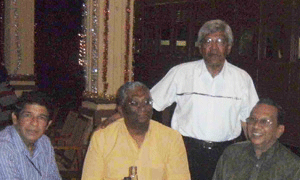 |
Photos from top left
3. Arnold Fernando - Surveyor, Shan Sivapakkiam - Engineer NZ, Deepthie Perera - Engineer (Back to camera), Ranjith Amerasinghe - Engineer
4. Ranjith Amerasinghe, Senaratne, Afgar Mohideen, Ranjit Aaron, C.T.Rodrigo
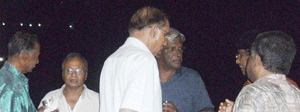 |
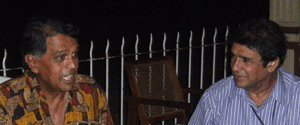 |
Photos from top left
5. Keerthie Perera - (Back to camera), K.N.Jayasinghe - Engineer, M.L.T.Perera (M.S.K's brother), Shan Sivapakkiam, Ranjith Amerasinghe, Arnold Fernando
6. Chris de Silva, Senaratne - Lawyer
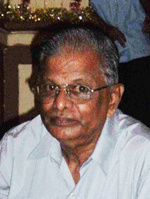 |
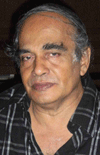 |
|
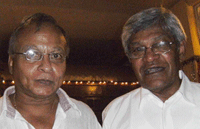 |
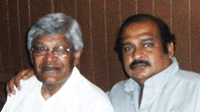 |
7.Photos from top L to R: Samaranayake - Post Master, Solomans - Bank Officer,
8.Photos Bottom left L to R: M.L.T. Perera, Ranjit Aaron, Ranjit Aaron and Babu Balan
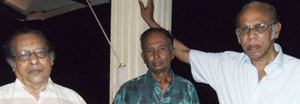 |
9.Photo Top left to Right : Raja Peiris, K.N.Jayasinghe, Shan Sivapakkiam,

The Island of 21.9.05 had published an article by Dr. Theekshana Suraweera of the University of Canterbury, which was most illuminating. Among other references, he had referred to a teacher at Thurstan College in the 1960’s who used to slap students for no apparent reason, prompting a few of them even to leave school. I wish to refer to my school days at Wesley College 65 years ago. In the Latin class, if a student had not prepared his work, the teacher would punch the upper part of the shoulder. The fear was so great that during the lunch interval, all the students in Form I would be studying Hillard and Botting, just before the Latin period. During his school days the master was a hard hitting batsman. The boys got their own back on the master by shouting his nickname when he had to pass Mt. Mary. Another young teacher used to come unshaven and rub his chin against the cheeks of boys who failed to do their homework. In the paragraph under "Whole class punishments" where the entire class is punished for a single boy’s act.
I wish to refer to what happened in the Wesley Hostel in 1948, when I was a student (actually Head Prefect). The cricket team of Kingswood had come for their annual cricket fixture. The cricket master Hoole was sharing the room occupied by the Senior Hostel Master, John Isaac. At that time the rage in Colombo was to use the slogan "Kilroy was here". One bright spark had written in large letters the words "Kilroy is in" in front of the door. Mr. Isaac was furious. He lashed out at the 60 hostellers stating that he would give 6 cuts on the back of the boys who dared to write this slogan. Also as no one had owned up, the entire hostel was to be ‘gated’ for one week. I felt this punishment was unfair by the entire hostel. I announced to the boys that I would be in my cubicle after dinner, and the culprit should come up and reveal himself. The boy who did turn up was the one who was the most respected hosteller. I quickly went up to the Principal, Rev. James Cartman, and told him that the culprit had informed me, but I was not prepared to give his name. The good Principal withdrew the ‘gating’. On the following Monday, six new bus Prefects had been appointed. The first name on the list was this boy’s name. The name of the boy was not revealed until I retired from the teaching profession in 1980. The boy, later functioned as the General Manager of the Colombo Commercial Company at Ratnapura.
In 1948 there were several fruit trees on the campus. At the entrance to the school was the tastiest jak fruit tree in the area. One boy had sent down the fruit, but was a trifle late in coming down. The principal asked him to meet him in the Bungalow at 4 p.m., probably a caning. Barbut went to the Bungalow, and was surprised when Mrs. Cartman brought a tray full of patties, cake and sandwiches. The boy munched a patty only and awaited his punishment. The understanding principal said that he had to go for a meeting and left in his car. Barbut lost to time to fill both his pockets with the goodies. That night, the usual hostel dinner had to be given to the cats and dogs. Let me end this short article by stating that during my entire period as a teacher at Wesley, I had no occasion to use the cane.
Addendum by Amarnath Paul,Athurugiriya.
I read Mr. Edmund Dissanayake’s nostalgic letter to the Island (26th October) on corporal punishment during his school days at Wesley. I joined the great fraternity of Trinity College boarders, at age 8, in 1953. By the time I left school after my GCE-O/levels, all of us were "cut and polished" (with a few rough edges of course) by our Alma Mater, to I ace the trials and tribulations of a tumultuous world. Ironically one of our great disciplinarians, Mr. C. J. Oorloff arrived from Wesley College in late 1950s. Throughout our School life, Corporal punishment played a key role in moulding and disciplining all Trinitians.
The cane was never used indiscriminately. Official canning was carried out only by the Principal, Vice Principal and Masters in charge of boarding Houses. It was used only when one deserved to be taught by harsher methods. Yes, We were terrified of the cane, especially the one carried by our revered vice principal, the great Mr. G. Y. Sahayam. He had a style and flamboyance all his own when he made cane and buttocks to ‘honeymoon’ briefly! He also had his famed slogan that he verbalized before the cane came crashing down on you. "Remember Son, this is not - for pain but for shame! Needless to say, the pain of the cane lingered longer than the pain of shame! The illustrious, Mohan Sahayam who was Rugby’s most famous Son, always had to pay double the price for the pranks we got into.
Senior Sahayam never defaulted in giving Mohan twice as much as we got from the cane, for the simple biological reason that he was his own son! Such was the greatness of the Man, we still fondly call’, "Sages". I wish our politicians could do the same with their perverse and wayward sons and not defend their evil. No one in my school time, ever rebelled against corporal punishment. Such thoughts never ever occupied the minds of any of us. Parents believed such regimental discipline was necessary for boys. It was the order of things and the attitudes of a by-gone era.
Many Trinitians of that period went on to become Leaders in Politics, Sports and the Corporate world. Each one of them will vouch for the "great days and jolly days at the best school of all." Today, sadly, everything is different. In many countries, even if a Father admonishes a child the parent is threatened by the child with possible police action. In schools, Child Abuse and Child Protection, are strong catalysts, used against those who dare to discipline. Therefore, habitually, school teachers are under threat by pupils and parents. Pathetic, but that’s the world for you today. That’s the chaotic, out of-control world for you today....
Though some have changed,
Some forever, not for better,
Some have gone and some remain.
All these places had their moments
With teachers and friends I still can recall.
Some are dead and some are living.
On this website I've remembered them all.
...............................................
 My first encounter with the tuck shop and its proprietor Mr DS Wijemanne happened on a cool January morning in 1950. It was my very first day at school. Everything and everybody seemed strange to me. I tread carefully and with trepidation. The class teacher Mr MT Rajapakse was a kindly man and he spoke about discipline, time tables and the school rules. When the bell rang at 10.15 we were released with instructions to return in 15 minutes. It was my uncle Neville Weerasekera who brought me to school and he found me at the “short interval” to give me some refreshments. The tuck shop was heaving with students, young and old. We had to force our way in and my uncle spoke to Wijemanne and got me a fish bun and a Lanka Lime. Wije enquired who I was and we were formally introduced. I was rather shy and diffident but enjoyed the food and drink enormously.
My first encounter with the tuck shop and its proprietor Mr DS Wijemanne happened on a cool January morning in 1950. It was my very first day at school. Everything and everybody seemed strange to me. I tread carefully and with trepidation. The class teacher Mr MT Rajapakse was a kindly man and he spoke about discipline, time tables and the school rules. When the bell rang at 10.15 we were released with instructions to return in 15 minutes. It was my uncle Neville Weerasekera who brought me to school and he found me at the “short interval” to give me some refreshments. The tuck shop was heaving with students, young and old. We had to force our way in and my uncle spoke to Wijemanne and got me a fish bun and a Lanka Lime. Wije enquired who I was and we were formally introduced. I was rather shy and diffident but enjoyed the food and drink enormously.
Tuckshop is 18th-century British schoolboy slang for the shop that allowed hungry children to supplement their school diet. There are references to the tuckshop in the famous Thomas Hughes’ Tom Brown's Schooldays circa 1857. I am unaware of the history of the Wesley College tuck shop. Its true origins are lost in the mist of time. There is no reference to one during the Highfield era or before. I believe it was started after WWII perhaps during the Principalship of Rev James Cartman. DS Wijemmane may have been the first to provide that essential service.
The Tuck shop then was a wooden shed painted in Solignum black. It had a corrugated metal roof which was hot during hot weather, cold during cold weather and noisy during rainy weather. Inside it had several long wooden tables and benches. At the business end of the shop behind the counter was Wije and his side kick, Jinadasa. The shop was situated behind the Hostel kitchen between it and the Kindergarten Classrooms. It was open for business from 7am to 7pm. There was an open drain running past the front of the tuck shop carrying effluent from the kitchen. In later year they placed a slab of concrete over the drain.

The boarders were always in the midst of a famine of biblical proportions. Hordes of boarders migrated to the tuck shop at all hours for their sustenance “to keep alive”. There was never any shortage of fish buns and patties for them and they washed it down with frothy ‘stretched tea’ made by Jinadasa. The tea was made with Milk-Maid Condensed milk. Its intense overpowering sweetness made the tea taste like a syrup, to our utter delight. Between 4pm and 6pm it was compulsory sports time for the boarders after which they returned to the tuck to quench their thirst with a Elephant House Lanka Lime, Ginger beer or Orange Barley. These items were carefully priced to make it affordable. Money often ran out and we depended on the credit arrangements of Wijemanne. As the jargon went we bought on "tick". They were to be settled on Friday after receiving the official pocket money. For the boarders settling credit wasn’t easy as they had debts to the Toffee man and Achcharu ladies. Wije kept all the credit details written in his black book. Those who evaded payment were tracked down. He was kind but firm and collected his debts. The authorities perhaps were unaware of these deals.

The tuck was a lively place where anyone can go and socialise; it enabled us to mix with other year groups, giving us a new social perspective and expanding our friendship boundaries. There was a calm, care-free and cheerful atmosphere as all different groups of students merged together.
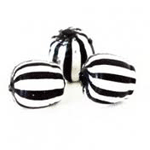 To us kids the Tuck Shop was a treasure trove of goodies. There was a wide array of colourful sweets. They were in large glass jars standing on a shelf away from the reach of us kids. Every jar had a black lid and radiated happiness. Bulto was a special favourite as it lasted longer. These black sweets stuck to the palate releasing its contents slowly leaving a gritty residue. “hoonu betti” had some spices in the centre and was cheap and popular. Pepermint flavoured with black and white stripes "Bull's eye sweets" made our mouths water. Ginger preserve or puhul-dosi was pricey but good. I have spent hours dreaming of what sweets I would buy when i got some money. Boarders kept their sweets in their pockets to avoid sharing, sometimes with disastrous results of a gooey mess in the mid day heat. Yet we didnt have the heart to throw it away. Such was our love for sweets. Now, after all those years when I see "pick and mix" sweets in a supermarket I am reminded of that deep and abiding love I had for them as a boarder
To us kids the Tuck Shop was a treasure trove of goodies. There was a wide array of colourful sweets. They were in large glass jars standing on a shelf away from the reach of us kids. Every jar had a black lid and radiated happiness. Bulto was a special favourite as it lasted longer. These black sweets stuck to the palate releasing its contents slowly leaving a gritty residue. “hoonu betti” had some spices in the centre and was cheap and popular. Pepermint flavoured with black and white stripes "Bull's eye sweets" made our mouths water. Ginger preserve or puhul-dosi was pricey but good. I have spent hours dreaming of what sweets I would buy when i got some money. Boarders kept their sweets in their pockets to avoid sharing, sometimes with disastrous results of a gooey mess in the mid day heat. Yet we didnt have the heart to throw it away. Such was our love for sweets. Now, after all those years when I see "pick and mix" sweets in a supermarket I am reminded of that deep and abiding love I had for them as a boarder
Cause the candy man thinks it should
During school hours it was patronized by day boys. Many of them had their home lunches brought there by professional lunch carriers on bicycle. Wije provided delicious rice and curry meals for a nominal price and that was liked by boarders and day boys .Teachers were often seen there too and the atmosphere then was less manic.
Wije was an old boy of the school and played cricket for the 1st XI. As a result he favoured sportsmen and was seen giving food and drink to them at cut rates or even free. Needless to say these occasions were of course rare. During the school cricket season he was often seated patiently in the pavilion with the Principal, teachers and distinguished old boys. Knowing his generosity he may have provided the tea and the cakes for the occasion. He campaigned vigorously and successfully for the school Building Fund over many decades.
He was an astute businessman and commanded wide respect. Although kind and considerate he could be dogged and hard-edged when required. He knew every nut and bolt of the canteen business and enjoyed tremendous success. Not everything he touched turned to gold and he accepted the losses philosophically. From meagre beginnings, with the support of his wife and family, he built an empire of canteens and tuck shops in several schools. He took charge of the Medical College canteen at Kynsey Road. Wije's star rose steadily and success came as he spread his wings. His fame and reputation grew. When I was a medical student we often chatted about Wesley over a cup of tea and a biscuit seated in the elegant pinewood furniture at Medical College. Wije was a man of integrity, irrepressible optimism and good nature. He saw only the best in others. Wije was trusting and generous to a fault. He was a true blue Wesleyite attending the Old Boys functions every year and making generous donations. I never failed to visit the Tuck Shop on my pilgrimages to Wesley over the years. On those occasions we reminisced at length and put the world to right.
His calm, reflective style and his well-honed "political" antennae served him well. Wije preferred to remain non political but he did, however, whisper strong concerns privately about the decline of the school after the reign of Shelton Wirasinha. His affability, long service and personal appeal ensured his strong connections with the establishment at Wesley. In the hallowed grounds of Wesley College he remained an inspiring example of humility, loyalty, generosity and good humour for over half a century. Wije was a devout Buddhist throughout his life which helped him to keep his feet on the ground despite success. Latterly, he derived much pleasure and satisfaction from his charitable and religious work.
DF Abeysekera, old boy and teacher, wrote a fitting tribute to Wije in the school magazine and called him the “Tucks most unforgettable character” He was the king of his domain, the tuck shop, and throughout his long and distinguished career remained an honest man of grit and industry providing a fine service over the counter.
In the 1990's the tuck shop moved to the main building of the school and looks grand. I believe it is managed by one of his sons all of whom attended Wesley. To me the tuck shop will never be the same again without the smiling face and dignified presence of DS Wijemmane. Although he is no more Wije's legacy lives on in the hearts and minds of the myriads whom he served in the humble wooden shed for over fifty years. He is gone but never forgotten. I wish the Principal and the powers at Wesley College honour DS Wijemanne by placing a plaque in the new Tuck Shop to remember his support and contribution to the life of the school.
Links to further reading
........................................................
D. S. Wijemanne by Edmund Dissanayake
 He was one of the most popular old boys that Wesley has produced. He had a canteen at Wesley where boys ran up big bills. Whether these bills were honoured, one does not know. His popularity extended to other schools like Royal and St. Thomas’. Wije was a family friend for close upon 60 years. He played for Wesley as a pace bowler. The best in him was revealed whenever any person fell ill.
He was one of the most popular old boys that Wesley has produced. He had a canteen at Wesley where boys ran up big bills. Whether these bills were honoured, one does not know. His popularity extended to other schools like Royal and St. Thomas’. Wije was a family friend for close upon 60 years. He played for Wesley as a pace bowler. The best in him was revealed whenever any person fell ill.
Once the Wesley ground boy Vincent Perera found him sleeping on the cricket matting in the middle of the ground, late at night. When he inquired as to the reason, he said that I had an argument with him and that he was at fault. Vincent came home to tell me about this problem. I assured him that there was nothing that transpired. I remember when I was hospitalized for a month, Wije was very helpful to my wife. He was there when help was sorely needed. He was a man for all seasons. At Wije’s funeral, not only Wesley, but the students of many other schools were present. Wesley gave him the highest honour.
When will we be able to see the like of him? He was a man in a million.
I felt it was pertinent to chronicle my personal reflections of the deep decline in the fortunes of the school (1985-2009) and its destructive internal strife. They were our leanest years. That was our winter of despair. Students who were at the school during those lean years paid the price for our decline. Our academic results, sports and the buildings suffered tremendously. We failed as a school. I was lucky to belong to a generation inspired contemporaneously by great teachers and principals. The school was at its Zenith (1950-62), comparable to the Highfield era. Life at Wesley was good.
I hope my candid comments will be taken in the spirit it was written - for the greater good of Wesley College.
 The school is owned by the Methodist Church and is partly funded by the Government. For two decades after Independence in 1948 successive governments reduced the funding for Missionary Schools. Richmond and Kingswood Colleges could not be saved and were handed over to the government. Wesley went through a major financial crisis and sold the Staff Flats and the Small Park to survive. Funds proved scarce and many prominent Old Boys in Sri Lanka and abroad dug deep into their pockets to keep the school afloat. Wesley College owes an enormous debt to the old boys without whom the school would not have survived in its present form.
The school is owned by the Methodist Church and is partly funded by the Government. For two decades after Independence in 1948 successive governments reduced the funding for Missionary Schools. Richmond and Kingswood Colleges could not be saved and were handed over to the government. Wesley went through a major financial crisis and sold the Staff Flats and the Small Park to survive. Funds proved scarce and many prominent Old Boys in Sri Lanka and abroad dug deep into their pockets to keep the school afloat. Wesley College owes an enormous debt to the old boys without whom the school would not have survived in its present form.
Deep affection and Loyalty to their alma mater has been a hallmark of the Brotherhood of Wesleyites. Hence the old boys have a right to expect high standards from the school and for it to be managed well. With these rights come the responsibilities to allow the principal and the staff to carry on their work unhindered. There will be old boys, due to their affection for the school, who will be critical from time to time of the way the school is managed. These critics and dissenters need a forum to vent their anger and to discuss issues with the Principal, Board of Governors or the Methodist Mission. Did these lines of communication exist? Much of the problems we have had has been due to the alienation of this groups of loyal old boys. Shanti has made himself available to discuss issues. The final arbiter is the Methodist Church. Running a school is a challenging task and an enormous responsibility. If they are to own and manage the school the Methodist Mission has to take a lead and be proactive. The Methodist Mission has been a tower of strength in guiding the school in its early years. The Church is determined to make Wesley College a success. I hope there are plans ready for this gargantuan challenge for which reform is needed within the organisation. Richmond and Kingswood Colleges have been managed well by the Department of Education and in many respects seem better off than before. Let this be a reminder to the Methodist Church of its obligations to the school under its care.
Reform is needed to the way we appoint Principals, govern, finance and run the school. The history of reform is littered with examples of people simply denying the facts and the problems of the past. Eventually reality bites. And when it does, change is urgent and uncompromising. Much has been said about our finances and many of it not too complimentary. I wish the Accountants who audit our books produce an annual report of the debits, credits and the state of health of the school finances. This is standard practice in the West. The lack of openness leads to gossip and innuendo. The Department of Education should not abandon their historic role of being critic and watchdog for the government. They have a responsibility to the students and their parents as long as Wesley remains an Assisted School partly funded by the State. Where were the Inspectors when the school was failing?? Aren't they accountable to the Department and the public?
Disunity among old boys and in the OBU has been a vexed problem for more than half a century. This has prevented the progress of the school and has been a serious hindrance to our success. Poor leadership and lack of useful dialogue between the factions are the key reasons for this intolerable situation. They have to get their house in order to be able to help the school. Perhaps we should call for some divine help. Reinhold Niebuhr's serenity prayer may help to deal with those issues amicably:
Courage to change the things I can,
And wisdom to know the difference.
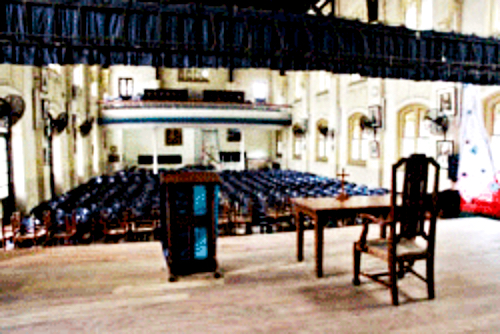
The reasons for the problems we have faced as a school and our decline over a period of nearly 30 years, are many and complex. It is not for me to apportion blame. The managers of the school were old boys who were honourable and had good intentions. Many of them have contributed much to the school in various capacities over many years and I thank them for their services. But there were distress signals and obvious signs of a failing school which needed urgent attention.Times were tough and money was tight. Everybody knows of the abuses within the system. The scale of the problem went much deeper. There was an atmosphere of doom and gloom. The talk of Wesley's "demise" hypnotised us all and we were sucked into a vortex of decline. Remedial action didn't come quickly enough which angered many old boys. I still scratch my head as to why nothing was done by those in power at Wesley when the buildings were dangerously derelict and the school was in deep decline.
A loyal group of old boys lead a successful vocal campaign for change with countless emails with graphic images. The confrontational and combative style of the campaign although controversial was effective in bringing about a much needed "revolution". One has to admire their courage and determination. They have become the heroes of the homegrown revolution and have helped enormously to maintain the momentum after the transition. Change came swiftly with the arrival of the new Principal. During this period tensions were high and feelings were raw. Due to the storm and strife of the 'war' polarisation of the various groups have prevailed into the new era. I hope there will be a truce in the coming months if not weeks to support the progress of the school. Wesley needs the support of all its old boys in this time of rapid change. It is my wish we can unite to move forward together although it may seem like an impossible dream at this moment in time.
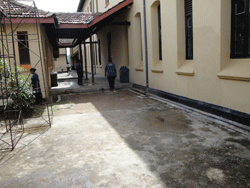 We have a vibrant community of old boys, from a broad cross section of society. Wesley College old boys are never short of critics, cynics and sceptics. It is for the old boys unions to harness their energies for the good of the school. The old boys have to confront some hard truths and win the hearts and minds and get control over the mavericks. On looking back over the past 50 years there have always been a group opposed to the Principal. There is nothing more corrosive or damaging to the spirit than having enemies within. Weaning interfering, vitriolic old boys of bad habits would be a great achievement. Ideally the the old boys should dissociate themselves from the management of the school allowing the Principal. the Department of Education and the Methodist Church to provide that function. Schools in Western Europe are run along these lines and function well. This can only be done if the School can be run independently without financial help from the old boys. It is vital that the Methodist Church and the OBU Colombo support the Principal, in every way, at this present time when the school is doing well. This is a tremendous opportunity to regain lost ground. Let the Principal be judged after his term of office and not during. We have got to look at the big picture and heed the WW2 warning "Careless talk costs lives"
We have a vibrant community of old boys, from a broad cross section of society. Wesley College old boys are never short of critics, cynics and sceptics. It is for the old boys unions to harness their energies for the good of the school. The old boys have to confront some hard truths and win the hearts and minds and get control over the mavericks. On looking back over the past 50 years there have always been a group opposed to the Principal. There is nothing more corrosive or damaging to the spirit than having enemies within. Weaning interfering, vitriolic old boys of bad habits would be a great achievement. Ideally the the old boys should dissociate themselves from the management of the school allowing the Principal. the Department of Education and the Methodist Church to provide that function. Schools in Western Europe are run along these lines and function well. This can only be done if the School can be run independently without financial help from the old boys. It is vital that the Methodist Church and the OBU Colombo support the Principal, in every way, at this present time when the school is doing well. This is a tremendous opportunity to regain lost ground. Let the Principal be judged after his term of office and not during. We have got to look at the big picture and heed the WW2 warning "Careless talk costs lives"
Thankfully we are on the mend. Shanti has inspired much affection from old boys worldwide. This is not the time for recrimination. But we must learn the lessons of our past mistakes. Although bruised and battered we have come out stronger. We now have a fine leader to take us forward. There is a passionate, proud and loyal community of old boys. This is our golden opportunity to support the Principal and make the school great again. Let the New Dawn bring us closer to the hopes, dreams and ideals of our Founding Fathers.
 I personally congratulate Shanti on his many achievements as Principal. When he was appointed in May 2009 some thought he wouldn’t survive the year. It is worth remembering this mistaken pessimism. Thankfully it hasn’t turned out that way. Shanti addressed its toughest task—repairing the finances and the infrastructure with an alacrity and decisiveness that impressed everyone. I fully understand the enormity of the task. He had to pull the school out of an abyss. Radical change was needed. As the Principal he deals with the pugnacious public, belligerent parents, resentful students, bellicose politicians, Department of Education, Methodist Church and also old Wesleyites and OBU’s worldwide. There are, potentially, many hostile forces that he has had to overcome. That cannot be easy!! I would urge the old boys to support the Principal allowing him to concentrate on the enormous task of managing the school. I personally would like to thank Shanti for taking on the job and doing it so well despite difficulties. We mustn’t forget Shanti and his wife left a comfortable life in Toronto, Canada to resuscitate a school on the brink of collapse. Let us give him a chance.
I personally congratulate Shanti on his many achievements as Principal. When he was appointed in May 2009 some thought he wouldn’t survive the year. It is worth remembering this mistaken pessimism. Thankfully it hasn’t turned out that way. Shanti addressed its toughest task—repairing the finances and the infrastructure with an alacrity and decisiveness that impressed everyone. I fully understand the enormity of the task. He had to pull the school out of an abyss. Radical change was needed. As the Principal he deals with the pugnacious public, belligerent parents, resentful students, bellicose politicians, Department of Education, Methodist Church and also old Wesleyites and OBU’s worldwide. There are, potentially, many hostile forces that he has had to overcome. That cannot be easy!! I would urge the old boys to support the Principal allowing him to concentrate on the enormous task of managing the school. I personally would like to thank Shanti for taking on the job and doing it so well despite difficulties. We mustn’t forget Shanti and his wife left a comfortable life in Toronto, Canada to resuscitate a school on the brink of collapse. Let us give him a chance.
It is an immense challenge with many obstacles. Shanti is tough and is able to weather the storms. He is blunt, outspoken but tolerant and can be forthright and pretty direct in his dealings. The sheer volume and the contrasting nature of his daily interactions must be daunting. He has remarkable capacity to transcend personal hostility and a genuine commitment to do his best for Wesley. Some people are sensible and need to be placated. Some are totally mad. Shanti is a pragmatist. He has no wish to soft-pedal his reforms and is determined to have a leaner, cleaner, successful Wesley College. I am certain he will not compromise on the basic principles of good governance. He knows where the school should be in the realm of education. The striking feature of his plans for the future is its robustness. He puts a great deal of strategic thought into his projects. There is scope to go much further and reforms are decades overdue. Failure is not an option now which will only return the school to the bad old days. Wesley needs a strong, honest, principled leader and we have got one.
A peek into the future
The school has been in existence since 1874. As old boys it is easier for us to be optimistic than realistic about the future of our school.
There are 3 possible scenarios
- Maintain status quo. Our ability to provide a satisfactory education will depend on a multitude of factors. Chosing the right Principal is crucial. Financial viability is a concern.
- The school can be given over to the Department of Education. We lose our connection with the Methodist Church. If Kingswood and Richmond colleges are taken as examples Wesley College will be managed well for the benefit of the students. Breaking our link with the Church that gave life to Wesley College may be difficult for some, who will be prepared to fight, bite and scream to stop that happening.
- Run the school as a Private fee levying institution. Although the school will be independent that will bring its own problems. Ever increasing cost of running an institution will be a millstone round our necks unless the Methodist Church is able to dig deep financially.
These are issues decided behind closed doors by the Methodist Synod. This is the 21st Century and the age of openness and" glastnost". So far the Synod has been an invisible manager of the school making the decisions. I wish they make the old boys aware of their intentions and plans for the school by a newsletter. I trust the Methodist Synod have the expertise to make the important decisions that affect the school. Let us hope they will get it right for the good of the many thousands of students who depend on Wesley College for their education.
We must be optimistic and believe in the power of dreams !!
Ora et labora
In joyful worship and praise,
Is a glorious anchor for our souls
In the stormy, turbulent days.
God's precious truths shared in song
Reach deep within the soul,
Stirring the heart to follow Christ
More closely in the fold.
Thank God for A Wonderful Choir
That lifts its voice in praise,
Singing the message that keeps us strong
Through all life's stormy days.
Humans have made music for thousands of years. Singing bonds people together. The camaraderie of communal singing is of benefit to everyone. The British have a great choral tradition and introduced it to their schools. A passion for singing is the vital ingredient to make the Choir a success.
I was a boarder then and a skinny kid of 12 with a face full of pimples. Life was full of the joys of youth. The boarding seemed to suit me well although bereft of parental love. School work, homework, sports and friendships filled my time. I had to find space for the onerous life of a chorister when it all began.

It was with much awe and pride I listened to the present school choir sing the college song on YouTube . My thoughts returned to the distant past when it all began. Maxwell de Alwis was the Senior Hostel Master. He was a keen musician and started to organize a school choir in 1954. Hostellers were conscripted being easily available for choir practices. One Sunday evening he asked about 50 boarders to congregate in the Great Hall. To this day I still recall Mrs Hindle playing the piano and Maxwell De Alwis getting each one of us to sing the scales. He chose 20 of us as choristers. The rest were disappointed as it was a considered a great honour to be a part of an elite team lead by the boss. As weeks passed some day boys too were roped in!! We began to practice regularly and the school choir sang at the Maradana Methodist Church and the Great Hall.
 Maxwell De Alwis was slim and tall and had a forever-youthful look. Despite this he had a powerful presence. He spoke to us with his tenor voice, at times firmly. I remember he maintained good rapport with the senior students but the juniors feared his temper. He used the cane sparingly and kept good order in the boarding. Sports was never his passion and was rarely seen at Campbell Park. Classical Music was his life and his radio echoed his love of Mozart and Beethoven. In the hostel we often saw him wearing a scarf round his neck giving us the impression he was unwell.
Maxwell De Alwis was slim and tall and had a forever-youthful look. Despite this he had a powerful presence. He spoke to us with his tenor voice, at times firmly. I remember he maintained good rapport with the senior students but the juniors feared his temper. He used the cane sparingly and kept good order in the boarding. Sports was never his passion and was rarely seen at Campbell Park. Classical Music was his life and his radio echoed his love of Mozart and Beethoven. In the hostel we often saw him wearing a scarf round his neck giving us the impression he was unwell.
Maxwell De Alwis was one of the most inspired and charismatic choirmasters of his generation. it was at Wesley College that his supreme skill as a choir trainer came to fruition. The expressive sound quality that he produced from the choristers was outstanding. It was more than a match for the work being done by his high-profile contemporaries in other prominent schools in Colombo and Kandy. His presence was commanding, and he gave his time generously to develop a fine Choir at school. He was a demanding taskmaster and choir discipline was always strict. Any hint of laziness or lack of total commitment to the choir would infuriate him. He was inspirational and a master of detail at times difficult to please. Rehearsals were a testing time for everyone. Yet the choristers gave him their loyalty, respect and affection; and, later in life, grateful recognition that he had enabled them to sing at a level of excellence they had thought unattainable. Our ability to sing – musically, rhythmically and with clear enunciation of the words – became well known.
The Programme for A ladd-in-and out -Double Click
Through his passion for the Choir, he gave his choristers the key to phrasing, dynamics, tone-colour and expression. The result was a sublime sound most pleasing to the ear. Whether he was piloting the choir through uncharted musical territory, or rehearsing an apparently simple Hymn, he infused music with life and energy. When the music began, magic filled the air and thrilled the audiences wherever we sang.
The choir and its work became a permanent fixture at college and its popularity spread far and wide. We were invited to sing in schools and churches. I particularly remember singing at Mr. Wilfred Wickramasinghe's wedding (He married Miss Elna Pinto-Jayawardene who was our singing teacher) . The treble, Alto, Tenor and Base singers brought beautiful four part harmony thanks to the efforts of Maxwell De Alwis. "Maxy" , as he was affectionately known, conducted the proceedings. The Operetta Alad-in-and Out produced glorious performances and was a hit right from the start. It was shown also at Wesley College and also Kingswood College Kandy. These performances garnered glowing reviews. Miss Mary Colin -Thome provided the piano accompaniment. During Easter we sang Jesu Joy of Man's desiring and other works by Palestrina, the Italian Renaissance composer of sacred music. During Lent there was an invitation from The Royal Air force Base at Katunayake to sing those special Lenten Hymns and sacred songs. Joy Gunewickrema sang a baritone solo which was well received. For Christmas there were the Nine Lessons and Carols sung at the Maradana Church and at Wesley College. Daya Peiris and Nimal Sureweere were the solo singers. I particularly recall singing " In Dulci Jubilo" all in Latin. Even now when I hear “Once in Royal David City” my thoughts return to my roots at Wesley and the angelic voice of Daya Peiris who sang it in great style.
Maxwell De Alwis always kept our interest alive by introducing barber shop quartets and remember Lyle Godridge singing baritone, at school, for a lively Group. Despite the hours of gruelling practices it was a marvellously harmonius time for us all. The camaraderie of the choristers out lived our school lives many times over.
The highlight of our Choir Calendar was our Carols by Candlelight. Maxwell De Alwis hired a coach which took us to the houses of old boys and well wishers. After singing the carols we were showered with gifts and food. We enjoyed this immensely and was a great night out. Perhaps the "Maxy" considered this a special treat for the Choristers who had worked hard all year round.
Maxwell De Alwis left Wesley in 1957 to join a Christian Organisation for which he worked for several years before becoming a Priest. He was ordained in the United Kingdom. This was a sad loss to the school, boarding and the choir where he was an integral part.
Mr Ivor De Silva took charge of the choir and became the Senior Hostel Master. He was a fine replacement and took the choir further forward maintaining its fame and popularity.
I left the boarding and the choir in 1958 when preparations for public examinations consumed my every waking hour. My voice has cracked by then and didn’t perform well. I was pleased to regain my independence as a day scholar and to have access to good food of my own choice.
Maxwell De Alwis was a very private person outside his choir work. The school Choir was his pride and joy. There were time when I felt although he was physically with us his mind was far away. Maxwell De Alwis suffered with poor health for many years. He never married. His greatest personal achievement came towards the end of his life – joining the Church. He was faithful, not pious, and modest about his great intellectual gifts. He loved the good things of life but was the least materialistic of men. Rev Maxwell De Alwis became an immensely likeable man of charm and sensibility, exuding in every contact the courtesy and kindliness well suited for his new chosen profession.
I was deeply saddened to hear that Rev. Maxwell De Alwis died in the early 1970's at the General Hospital Colombo. We appreciate greatly what he has achieved in his short but eventful life. He was still loved and respected at Wesley. He will always be remembered for his immense contribution to the life of the school and the wonderful Choir he established.
Mr Ivor De Silva left Wesley College in 1960 and emigrated to the USA. He still lives in Washington DC. I believe Mr Haig Karunaratne took charge to continue the good work.
As I left Wesley I took with me the love of Western music which grew as I moved from University to a busy professional life. Living near London with easy striking distance of glorious venues like The Royal Albert Hall, Royal Festval Hall, Wigmore Hall , Barbican and St John Smiths Square classical music has transformed my life. I remember those barmy warm evenings in the boarding when we were invited to their homes by Mr LA Fernando and also Mr. K de Lanerolle for an evening with the Classical masters like Bach, Beethoven, Chopin and Schubert. We were enthralled by the calmness and serenity of the music on vinyl records played on record players with changeable needles. I am eternally grateful to my old school for giving me a broad education.
The Choristers I remember:
Nimal Sureweere, Kenneth Anthonisz, DayaPrasad Peiris, Michael Christoffelsz, Arthur and Cecil D’With Barbut, NGA Fernando, Senaka Jayasinghe, SK and RS Seneviratne, NAB Fernando, Joy Gunawickrema, Harris Anthonisz, BCRN Fernando, Frank Samaraweera
Please let me know if you remember any names which I have omitted.
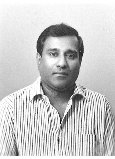
Nimal Sureweere came to Wesley from Trinity College Kandy. I first got to know Nimal when he joined the boarding in 1952. It was there I experienced at first hand both his staggering frankness under difficult situations and his inexhaustible capacity for fun. We soon found ourselves in the same class with Mr ST Perera, the rotund teacher in charge of Std 5. In his own words
"Nihal, you caught up with me in 1953 (in the 5th standard) as I failed in 1952 as “Poos Bada” was determined to fail me. Let’s just say that I was not the most obedient student but I was angry that I was failed that year."
The class was temporarily housed in the Vice Principals Bungalow. Mr. Lanerolle was then away in England. I remember we memorized the all important Sinhala poetry from a little book called “ Sudo Sudu” by Sagara Palansuriya alias Keyas. Those who couldn’t recall the poems were "caned". This happened week after week for a whole year. We were pretty battle hardened at the end of it all. The hardship of that year brought us closer together. Despite the passage of years I can still remember some of those poems . When I recite them now I look over my shoulder with some trepidation. Mr Perera was a good teacher, although of the old tradition. He left in 1956 after 10 years at Wesley College to become the Head Master of Christ Church College Tangalle
Nimal came to be involved in all aspects of school life. I recall his willingness to volunteer for the myriad of assignments that came our way at school. In the boarding, after school and weekends we walked the front garden, corridors and the long walkways. When the flamboyant trees were in full bloom in May it seemed like the trees were on fire. We talked a lot about home and our loved ones we missed so much. We were eternally hungry and the hostellers were exposed to a famine of biblical proportions. The boarders looked for ripe papaws within the school premises and waited eagerly for Friday when we got our pocket money to pay our debts and buy some goodies from the tuck shop. During intervals we bought achcharu from the vendors (against school advice) and shared them, at times reluctantly. During the marble season we played “bunkings” when the winner gained a handsome multi-coloured marble worth a cent. Nimal was an astute player and pretty good at it too. Cricket and football in the small park and hide and seek in our vast empire at Karlsruhe Hill filled our days with joy. The school work got in the way but we managed to get it all done at the never ending “Prep” times.
Nimal made a tremendous impact on the musical life of the school. At a very young age he excelled as a fine singer and was never shy to sing to an audience. He made music of thrilling, uncompromising beauty and inspired a generation of students. His singing was accomplished and his repertoire vast. Nimal entranced us for many years with his golden-toned voice and superlative singing. The supremely stylish elegance of his singing was well suited for the old Sinhala favourites too. These he sang to entertain us in later years at the OWSC, in the stillness of the night, to great applause. Nimal was a prominent chorister and took an active part in the operettas we performed – Alad-in an out and Robin Hood. When the Operetta was performed at Trinity College Kandy, Nimal and I stayed with his aunt in Peradeniya where we had a jolly good time as we were spoilt and pampered by his aunt and uncle.
I remember with much nostalgia a school trip to Hambantota with Mr. Edmund Dissanayake. Nimal entertained us with his songs. I will never forget his rendition of “The Ash Grove” which he sang under a moonlit sky by the sand dunes, in front of Mr Dissanayake’s house. He sang with such great feeling and style that he brought the words vividly to life. Its memory still lingers on even after more than half a century. During that trip we had dinner with Mr ST Perera who was then living in a village off Tangalle. Mr S.T Perera was our class teacher at Standard 5. He left Wesley to become the headmaster of Christ Church College Tangalle. Electricity had not arrived in that village yet and kerosene lamps were in use. It was such a joy to see our former teacher who made us feel at home. We enjoyed a lavish dinner thanks to our generous host and family.
His warmth, pragmatism, intelligence and humour shone through during those years at Wesley. He was always jolly and nothing seemed to bother him too much. He had a sharp sense of humour and loved to make people laugh. Every journey for him was an adventure full of incidents. Nimal had many anecdotes and his expressive animated descriptions amused us no end. He had empathy for the few boarders who were from poor families to whom he showed extraordinary kindness.
In 1956 Nimal left the boarding as his parents moved to Campbell Avenue just behind the Nalanda grounds. I remained in the boarding and as a day boy he had plenty of cash to buy me some tidbits which I appreciated so much. We remained close friends until he chose the arts and I went into the science class in form 4. I often saw him coming into school with his brothers Malik and Palitha. We often chatted in the corridors.
Nimal Sureweere recalls:
"I left school in 1960 after sitting for the GCE for the second time; I returned in 1961 having successfully completed the GCE. In 1961 when I was in the HSC-1 form, my father pulled me out of school as he wanted me to do my accountancy. I was never keen on working in the accounting field as ideally, I wanted to pursue a profession in either architecture or law. Due to illness and a lack of interest on my part, I did not qualify as an accountant, however, I did go on to work in the field.
I married my wife, Julie, in 1975 and in the years following we were blessed with a daughter, Niroshi, and son, Dilshan.
I began my working career as an audit clerk in the internal audit department at Brown’s Group of Companies where I was promoted to the rank of Juniour Executive and ultimately ended up as an accountant of one of the companies within the group.
Throughout my entire working career in Sri Lanka, the Middle East, and Canada, I worked as a credit controller, accountant, and business manager.
I have faced many trials in terms of my health, but I have never given up as my faith in God is strong, and I believe in miracles."
From Nihal Amerasekera (Contd)
Since 1960 our paths never crossed as I moved on to the 6th form , then Medical College and to the UK. But our friendship never diminished – loyalty was another of his outstanding qualities, instilled in us in the boarding.
Throughout his school life and beyond he has shown a dominant gift for singing. After leaving Wesley he attended the Spencer Shepherd School of Voice Training and became a professional singer widely known and admired. He became a supremely eloquent tenor and his range and repertoire widened. His services were in great demand and his ringing pristine sound was well respected. Enhanced by impeccable musicianship and a vivid personality, Nimal’s voice made him a longtime favourite of the Colombo music circle. He became an enormously acclaimed performer. He certainly fulfilled his ambition to sing to audiences and they appreciated his talent, enormously.
Nimal emigrated to Vancouver Canada in 1988. I had lost contact with Nimal until I phoned him in Vancouver in 2009. It was indeed a great pleasure to speak to a friend after nearly 60 years. We reminisced and recalled schooldays and the friends who made it so special. We have vowed to keep in touch and we have.
Nimal is remarkably courageous, having triumphed over serious illness, with dignity and tenacity, to get on with his life in the best way he can. Illness wasn’t something he was prepared to take lying down and has remained ebullient and optimistic. His brave and dignified account of coping with the illness and its treatment is a tribute to his courage. We commend his indomitable spirit. Nimal's clear-eyed attitude to the prognosis is a lesson for us all. His faith has helped him tremendously and all through adversity has retained that rare spiritual grace. He has just returned to his home in Vancouver, British Columbia after journeys to the Holy Land with his wife, and also to Sri Lanka to see his elderly mum and close family.
He is close to his family and above all he possesses to an exceptional degree the art of friendship. On behalf of the brotherhood of Wesleyites I wish him well in the months and years to come.
Links to further reading
Transcribed from the OBUA Newsletter May 2012
When the giant Philippine broadcast network ABS-CBN assigned me to cover the football match between the Philippine Azkals and Sri Lanka at the Sugathadasa Stadium in Colombo in the first leg of their home and away stint in the AFC Challenge Cup, I was truly excited. That's because it would give me a chance to visit the land of my birth after 30 long years and only for the second time in almost 50 years having left Sri Lanka just before Christmas in 1962. In a rather strange twist when I attended the Asian Broadcasting Union congress in Colombo in 198I I did so as head of the Philippine delegation having been bestowed Philippine citizenship in May 1973.
This time around I decided to take my 25 year old son Richard along because he is an avid football fan and more importantly because I wanted him to see as much as possible of the land of his father's birth and to imbibe the heritage of which every Sri Lankan should be proud.
 Thanks to my brother Russel who lives in Melbourne, Australia I got the email address of a charming relative who turned out to be a remarkable help during our visit – Averil Nathanielsz. My first priority I told her was a visit to my Alma Mater, Wesley College. The very thought of walking through the halls of that great institute of learning and remembering some of the best years of our life thrilled me no end. The past flashed across my mind in an endless whirl of fond memories, of Principals and Teachers and beloved classmates and friends. I remember with fondness such men of substance as Rev. James Cartman who was Principal when I enrolled at Wesley, CJ Orloff and Kenneth de Lanerolle. Mr Cartman was so full of cricket and life itself that we enjoyed his leading the students in chanting the battle-cry "Zam Zam Zake, Zam Zam ze, Ishuba isihuba etc." Whenever Wesley won a big match especially on our home ground he would almost surely respond positively to the chants of the students gathered in front of the pavilion chanting "Monday holiday! Monday holiday!" We recall the time when our cricket captain Edmund Dissanayke who was fielding right up near the bat was hit on the head and had to be rushed to hospital where he spent what to us were agonizing days and nights. We prayed for his recovery at our general assembly gatherings and in our own hearts because he was a fine cricketer, a dynamic leader and a wonderful human being.
Thanks to my brother Russel who lives in Melbourne, Australia I got the email address of a charming relative who turned out to be a remarkable help during our visit – Averil Nathanielsz. My first priority I told her was a visit to my Alma Mater, Wesley College. The very thought of walking through the halls of that great institute of learning and remembering some of the best years of our life thrilled me no end. The past flashed across my mind in an endless whirl of fond memories, of Principals and Teachers and beloved classmates and friends. I remember with fondness such men of substance as Rev. James Cartman who was Principal when I enrolled at Wesley, CJ Orloff and Kenneth de Lanerolle. Mr Cartman was so full of cricket and life itself that we enjoyed his leading the students in chanting the battle-cry "Zam Zam Zake, Zam Zam ze, Ishuba isihuba etc." Whenever Wesley won a big match especially on our home ground he would almost surely respond positively to the chants of the students gathered in front of the pavilion chanting "Monday holiday! Monday holiday!" We recall the time when our cricket captain Edmund Dissanayke who was fielding right up near the bat was hit on the head and had to be rushed to hospital where he spent what to us were agonizing days and nights. We prayed for his recovery at our general assembly gatherings and in our own hearts because he was a fine cricketer, a dynamic leader and a wonderful human being.
 Times may have changed, the paint on the towers at Wesley may have faded somewhat, but the glorious memories haven't dimmed neither has our affection and respect for the men and women who taught us but more importantly guided our lives in the most significant years, waned one bit. There was Rev. Wilfred Pile, the charming Ms. Rachel Leembruggen, Miss. Iris Blacker, Mr. Lionel Fonseka, RA Hunter and many others. The faces are embedded in our minds but alas some of the names escape us. I communicated with the Principal , Dr. Shanti McLelland on a regular basis to arrange a scheduled visit. He was most kind and accommodating.
Times may have changed, the paint on the towers at Wesley may have faded somewhat, but the glorious memories haven't dimmed neither has our affection and respect for the men and women who taught us but more importantly guided our lives in the most significant years, waned one bit. There was Rev. Wilfred Pile, the charming Ms. Rachel Leembruggen, Miss. Iris Blacker, Mr. Lionel Fonseka, RA Hunter and many others. The faces are embedded in our minds but alas some of the names escape us. I communicated with the Principal , Dr. Shanti McLelland on a regular basis to arrange a scheduled visit. He was most kind and accommodating.
When dawn broke on the day of our visit, I was up quite early because I never want to be late for an appointment. But I had a sneaking suspicion that my excitement didn't give me the luxury of a good sleep since what to expect
kept me tossing in bed. We had to get to the Principal's Office early to be able to attend the morning assembly. After a refreshing cup of tea and some biscuits provided by the very pleasant secretary of the Principal we met Dr. Shanti McLelland and then, after a short chat, were ushered by him to the stage for the morning assembly. My son and Averil were seated on the stage alongside me because the principal insisted that they do, especially since Averil's relatives and my brothers were all Wesleyites.
Gathered before us were young men with smiling faces obviously looking forward to another exciting day in their journey to the future. After a generous introduction the Principal called on me to distribute certificates to some 20 students who had won honours in a recent dance competition. As one young man after another came up to receive his certificate with a broad grin on his face I recalled the days when I too walked on stage to receive several awards at the Annual Prize Giving. Such moments are etched in my memory. Asked to address the assembly we spoke of our days at Wesley, recalled the glory days of our cricket team when we were unbeatable with such outstanding cricketers as Radley and Bryan Claessen, the Fuard brothers Ansar and Abu, Patrick Schokman, Neil Gallagher, Arthlow Chapman, Louis and Vince Adihetty, left arm fast bowler Samsudeen.
Photo:

We travelled down memory lane in order to send the students a simple message and that is, while we enjoyed our cricket (and we ourselves boxing where we represented Wesley in the Stubbs Shield and won honours in various meets representing the Straight Lefts Boxing Club) the greatest lesson we learned was how to grow up to be a gentleman. Wesley moulded our character, taught us the values and virtues that made us decent citizens and in my case, provided the foundation of a sound education that helped me settle down in the Philippines and succeed in media – print, radio and television – in a highly competitive environment. As a parting gesture we made a token donation of $500 for the scholarship fund knowing full well that some young student would benefit in striving to get ahead in life in the one institution that would most certainly teach him how – Wesley College.
When the general assembly was over we visited the various classrooms where we once had learned our lessons well and dropped by the newly located canteen which provided solace during welcome breaks for lunch and tea. As we said goodbye to Shanti McLelland and our van drove out of the main gate, there was a moment both of reflection and prayer where we thanked God for our parents who had the foresight to send us to Wesley and the school, the Principals and the Teachers who helped make us what we are today, in a life anchored on hard work and prayer.
Wesley to the fore! God bless.
Links to further reading
 My first lessons on Love, respect, discipline & manners were taught by my parents. My father said always Good manners make a man. Good manners don’t cost you a thing, but could buy a lot of things. It could make it a happier place to live in. Everybody likes a person who speaks and behaves politely. And treats others respectfully. This was further drilled into me at school. We were fortunate to have had our education from our formative days in a school which put discipline in the forefront. Our parent’s brothers and sisters were addressed as uncle or aunty. Our Male teachers were addressed as Sir and our lady teachers, as Teacher or Miss. Our parents were our first disciplinarians. Respect & mannerism today has gone through the door. We respected our elders and parents through fear, but the underling fact was love. Ones personality was judged by his manners and the respect he gave others. If we have failed to instil this in our children, we have failed as parents. We were taught “to earn respect, one had to give respect”. Today young toddlers address their Mom & Dad by their first name. Some say that we don’t agree to this, because we belong to an old generation or even old fashioned.
My first lessons on Love, respect, discipline & manners were taught by my parents. My father said always Good manners make a man. Good manners don’t cost you a thing, but could buy a lot of things. It could make it a happier place to live in. Everybody likes a person who speaks and behaves politely. And treats others respectfully. This was further drilled into me at school. We were fortunate to have had our education from our formative days in a school which put discipline in the forefront. Our parent’s brothers and sisters were addressed as uncle or aunty. Our Male teachers were addressed as Sir and our lady teachers, as Teacher or Miss. Our parents were our first disciplinarians. Respect & mannerism today has gone through the door. We respected our elders and parents through fear, but the underling fact was love. Ones personality was judged by his manners and the respect he gave others. If we have failed to instil this in our children, we have failed as parents. We were taught “to earn respect, one had to give respect”. Today young toddlers address their Mom & Dad by their first name. Some say that we don’t agree to this, because we belong to an old generation or even old fashioned.
When a teacher walked into a class room we stood up and greeted them with either a Good Moring or Good Afternoon or Good Evening Sir, depending on the time of the day. Today many tend to greet one another by merely saying Morning. Does this mean anything, as we all know, it’s either morning, noon or night. The most significant thing is, when the GOOD is added to it. Whenever someone greets me, by merely saying morning. I say, so what about it, after all we know its morning. It makes a big difference when you greet by saying Good Morning, rather than simply saying morning. In other words, when we add the good, we are inviting them to have a good morning.
The first thing we learnt as toddlers in or era was when we woke up, we went and greeted our elders by and kissing with words Good Morning. But now days this trend has got reversed like many other things. Either in school or at home we never uttered words of swears, especially in the presence of elders. Today it’s so sad to hear that some of the present day children cannot express a sentence without swearing. The other day I heard some very young children and every sentence contained the f... letter word.
We did most of our travelling in Sri Lanka by bus or train. We considered it a privilege to offer our seat to the elderly, feeble, a lady, or someone carrying a child and specially a pregnant mother. We helped people to carry a heavy load. When someone was stuck in the traffic, we lent a helping hand to get their vehicle off the traffic. We held the car door open for a lady to get in or get out. We held the door open to any person who followed us into a room. Today able bodied people considered it beyond their dignity to lend a helping hand. Sometimes I sit and ponder where have these manners gone. Or have they forgotten them or haven’t the present generation been taught these. We humans of the present day have lost touch with humanity or has humanity lost it value.
I spent most of my school holidays in Badulla with my Grandparents. My Grandfather was a strict disciplinarian. He insisted that all his children, 12 of them should gather for lunch on Sundays. Irrespective of their own commitments. No excuse was tolerated. Its was so overwhelming to see all of them gather round the table for Sunday lunch. The food was not of great importance but the company. We don’t see this tradition anymore. In those days we had no TV, Broad Band and computer games but enjoyed each other’s company to the fullest. We listened mostly to the Redifussion, 12 valve Radio sets, most popular makes were Philips, Telefunken or Grundig.
Discipline plays a very important part in any one’s life. This should be inculcated in the very early stage of our future generation. Which I was privileged to have had from my parents and the institution I attended. My school mates and class mates and those teachers at school helped me to achieve this in no measurable terms. Just a couple of day’s back I watched school children walk past my home in morning to school. Their uniforms were of different colours, some did not wear their school uniform. Those who wore it had different coloured socks on each of their feet. Some were bare footed, some wore shoes. The boys could not be differentiated from girls as their hair covered their face. Their hair was of various colours, rainbow colours were the best I could describe it.
At Wesley we dared to wear a coloured shirt to school. Those who wore coloured shirts were spotted by the prefects and had to keep standing at Assembly time, so that principal would make note and then called to the principal’s office to meet our punishment.
I remember how Mr. L.A. Fernando our vice Principal once cut off a lock of hair from one of the school boys, who’s hair was so scanty and over grown. The next day this boy came to school with neatly cut hair. We called it the number naught hair cut. We never wore hat or a cap into a place, where there was a roof to cover our head. We always allowed the fairer sex to walk ahead of the man.
The forgotten word in today’s vocabulary is SORRY. When one says sorry it should be from the heart and not merely expressing the word. Miss. Iris Blacker was a strict disciplinarian in school. When I was in Form 1. I knocked her off her feet by running down the corridor between the Boarding dining room and the ladies staff room. She reprimanded me by making me walk down this corridor 50 times at a slow pace. She advised me not to ever run down the corridor, as I could knock a little child and injure the child.
We have taught our little Kiwi Grandson who attends Kindergarten to address his teachers as Aunty, followed by their name. The other day I met one of the trainee teachers and she remarked. That Sahan (our Grandson) was the only child who addressed his teachers as Aunty. She said it was so nice to hear a little three old address the teachers as Aunty. Then I told her that we were brought up to respect our elders, as such we have to inculcate these same values to our children & Grand children.
Finally Etiquette is an integral part good manners. But this could differ from culture to culture. One should be always open to one another’s culture. Time, place and situation are also important to take into consideration, to define ones mannerism.
The Feel of the Good Old Days by Dr Nihal D Amerasekera
“
We now live in an intolerant world. In the mid 20th Century we were taught discipline at home, in schools and in places of worship. Now both parents work and spend so little time with their kids. The schools teach them academic stuff to get through examinations not much relevant to real life. People are not religious anymore. As a result the kids are not taught the good things in life and how to behave.
The computer games, internet and films show gratuitous violence every minute of the day. The children exposed to this accept this behaviour as the norm.
The change in behaviour is most evident in the field of sports as money has poured into games. The violent behaviour during the matches was never seen in the mid 20th Century. Cricket which was the game of gentleman has seen sledging and match fixing which has become a part of the modern game.
Ranjit has explicitly drawn a link between that past and the present. Although times have changed man’s desires, temptations and failings remain the same. He is right to point out the issues which have been amplified with the passage of time and have become increasingly distasteful to those of us who grew up in Sri Lanka in the 50's and 60's. We now live in a commercialised world where everything has a price. Good manners and etiquette have disappeared into the periphery never to be seen again. We can only resurrect what is essential through our children and grandchildren. Thank you, Ranjit, for those timely comments. Respect and good manners are timeless. To go a tad further may tolerance and equality replace greed and exploitation. Let us retain some of the old world charm to make life worthwhile.
Transcribed from the 1958 School Magazine
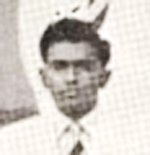 |
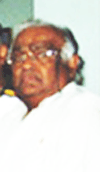 |
In most schools today we come across problem students. They pride in calling themselves 'RIOTERS·'. They try to imitate their favourite gangster. and drive terror into their fellow students. Generally they earn some sort or cheap popularity within their particular class or group.
Their main aim in school is to prevail upon others that the school rules are too rigid and unjust. They act as rebel leaders who come to school not to study, but to offer resistance to rules and regulations. For instance. if disciplinary action is taken against a particular boy. they would begin to organise opinion against this action. The boys who follow them are those who fear that if they do not agree with the ” Leaders" they would thereby be inviting trouble. either abusive insults or "after-school" assaults. But if one of these particular "Leaders" was summoned by the Prefects Board, for disciplinary action he would pretend to be innocent, and would even start shedding tears
Why do these boys disobey the college rules? It is to attract the public eye. It is perhaps because these boys do not have the opportunity of coming into the limelight through the correct path Sports or studies. The desire to be prominent influences the behaviour of these boys. Instead of trying to develop their talents, they seem to think that they cannot shine in the field of sports or studies. Sometimes this realisation may be sub-conscious. This defeatist attitude while harmful to them in their school life, could even make them complete failures in life.
Some of the problem students suffer from an inferiority complex. A physical or mental defect which they have suffered may have merged into their sub-conscious mind. Every time this defect is brought to the surface and exposed they, almost with a reflex action try to cover it up. They assume to know much and become annoyed when contradicted. This is because their minds are confused and they are not sure of even their own arguments.
The pity in the case of these problem students. is that their talents have not been harnessed for the correct purpose at the correct time. Some of these boys have some sense of leadership. If the qualities of leadership in one of these boys were to be used properly. not only the boy, but also his particular followers could bring credit to themselves and to the school. A probable reason why these capabilities are misused is because parents neglect their children. and allow them too much freedom. It may also be said that teachers do not discover these qualities in a boy and a "young leader" is thus not directed in the correct path. Some of these problem students have been found to be very honest, hard-working and efficient when they are given any responsible post in the school. When entrusted with responsibility, these problem students sometimes change their entire outlook. What must be done by the school authorities in dealing with these problem students, is to provide openings for them where they can serve the school as responsible students. The energy or skill which would otherwise have been used for destructive purposes would now be utilized profitably. This is a delicate task which can be best handled by experienced teachers with an inexhaustible amount of patience and understanding.
There is yet another type of student, who though in a responsible position, yet has a bad influence on the rest of the school. This type of student also suffers from a complex: say just because he has represented the school in sports. He tends to assume that therefore he has certain privileges, which is denied to others. He has utter contempt for the school uniform and comes to school in fancy costume and has special characteristics in his dress by which he is distinguished from the rest. This type of student continues thus until he is deflated. But this is something difficult to accomplish as these problem students have not been checked when they first behaved thus. Yet all students who see things in their correct perspective should unite to cry 'halt' to this and make these problem students realize that the mere fact that a person represents his school in a particular sphere of Sport does not entitle him to any extra privileges.
From Dr. Nihal D Amerasekera
Upali had good inside knowledge of the 'rioters' community of which he was an integral part. He was one of the most vocal and notorious 'rioters' of my era in the 1950's. His skirmishes with the law enforcers of the school are now part of the folklore of the institution. His brusqueness disguised a genuine kindness and concern towards fellow students. Upali became a refomed student when he was appointed a Prefect. I commend the Principal and the teachers for their wisdom. He made a genuine effort to change the 'world' that he knew so well with considerable success. I must stress that, in those days, even the RIOTERS at Wesley never were involved in serious crime, drugs or broke the laws of the land. They were just mischievous, naughty boys in their teens driven by the surge of hormones. Upali remained a loyal old boy all his life.
Links to further reading
From the 1958 school magazine
It was a big project, and our keenness to go through with it was great. Wc had spent over a month to plan it. and eagerly looked forward to the day we would begin the trip. We started off at Colombo. We had planned to stop at Galle. Tangalle. Wellawaya, Tiru-Kovil, Bibile, Badulla. Baudarawella, -"Nuwara-Eliya, Kandy, Darnbulla, Trincornalee, Anuradhapura, Killinochchi. Kankcsan turai, and finally Puttalarn .... and back once again IO Colombo.
Sene, Nimal and I set out for Galle justt before the break of dawn. It was a pleasure riding that day on our recently "done up" bicycles. We made our first stop at Kalido Restaurant. near Kalutara where we had our morning tea: We had not bought the rolls of films and were unable to take any "snaps" of that beautiful spot. At twelve noon, tired and hungry. we reached Galle. A few miles before we reached the town Sene and Nimal were riding so fast, that I thought they would not stop at Galle. Any way I should have known that they were making for the nearest hotel.
The exploits of the "three Musketeers". as we called ourselves at Galle that night are best left unsaid. After a welcome sleep at Buona Vista, we left for Tangalle. It was a pleasure to cycle along that coastal road, flanked on either side with scenic beauty. We dipped ourselves in the sea at Tangalle. The sea there was so very shallow that at every stroke we found the coral piercing us. I had the experience of having a sea pencil stuck in my foot.
At Wellawaya, we had the good fortune of having the Sub Inspector's bungalow to ourselves for the night. We had a bath in a stream outside the town and nearly had an encounter with some "rogues". The next morning we had out first taste of Cycle trouble. One of my side bags gave way, and on fixing it, my shoe struck against it while paddling. For the rest of the journey that day I had to ride with only one shoe on. Outside Pottuvil we were stopped by a gentleman who asked us for a box of matches. During the course of our conversation we found out that he was a reporter and when he asked our permission to write something about the trip we promptly refused it.
The next day we made for Amparai where we spent four days.
The many Euclids and the other heavy vehicles which plied throughout the day were very interesting to watch. So was the large workshop. We stayed one night at Cobra Gulch. lnginiyagala, and "looked around" the next day. We were accompanied by the forester who took us in his car. Next we visited the Senanayake Samudra bund, the fernery, the modern American laundry and the Japanese garden which was in construction. We were informed that two films based on Gal Oya had just been completed.
On leaving Amparai we planned to stay the night at Chenkaladi.
We reached the latter at noon and found it dusty and hot. So instead of staying on we decided to make for the next town which was Maha-Oya. We reached our destination an hour before nightfall and found that there was a Rest-house (which charged exorbitantly) a Hospital and a market in front of it.
We decided that it was altogether unhealthy, and finding no Police Station or other suitable place in which to stay in, we set off for Bibile which lay 32 miles ahead. We didn't reach our destination that day because of some very interesting incidents that occurred. About ten miles from Bibile we were thoroughly exhausted and decided to stop at the nearest 'market' for tea. The occupants of the market where we stopped, on discovering where we were bound. were strong in their warnings that we should not proceed any further. Their reason was that two miles ahead was a noted elephant infested spot. This was supported by others who came in, and we decided to stay there the night. We put up at the local school where a company of about 25 workmen were staying. Here we must pay our tribute to the hospitality of the rural Ceylonese folk.
From Bibile to Badulla was a continuous uphill climb or to be precise an uphill push of about 20 miles. We stayed at Bandarawela for four days and another three days were spent at Nuwara Eliya. Going freewheel down Ramboda was a thrilling experience. We spent one night at Kandy and rode on to Dambulla. On the Dambulla-Trincomalee road we saw jackals, wild buffaloe, wild fowls and monkeys. On the way to Anuradhapura, we had our first crash when we ran into a bull which had strayed from a herd. This took place while we were cycling abreast. We visited the hot wells outside Trinco and the ruins at Anuradhapura.
We passed through the Jaffna peninsula. Our journey from Madawachchi via Anuradhapura, a distance of 141 miles in a day, was our highest. At Puttalam we were stopped by two Police officers for riding without lights, but they sent us away with sincere apologies on learning from where we had come. The next day we rode impatiently to Colombo and were glad to be home again.
Lower VI Arts (1957)
Review of the year 1957 – 1958 and a A trip down memory lane
 Introductory :- Once again, for the second time in the history of the Primary Department, we assemble for our Prize Day-a day unique in the life of our section of the school. We wish to place on record our appreciation of the foresight of our former Principal, Mr. C. J. Oorloff, in realising the importance of giving to th.is Department of Wesley a separate existence as far as circumstances permit and making it possible for the children to feel that all facilities have been -Provided for them to have in their own right three main activities in their period of school life here, viz a Prize Day a Sports meet; and a Parents Day which takes the form of an Annual. Exhibition of Handwork and Art followed by a variety Entertainment of their own, much to the delight of their parents. These three activities will, this year, be spread out to come off, one ID each term. Therefore we invite our parent friends and well-wishers to look forward to our Sports Meet in the 2nd Term and our Parents' Day in the third.
Introductory :- Once again, for the second time in the history of the Primary Department, we assemble for our Prize Day-a day unique in the life of our section of the school. We wish to place on record our appreciation of the foresight of our former Principal, Mr. C. J. Oorloff, in realising the importance of giving to th.is Department of Wesley a separate existence as far as circumstances permit and making it possible for the children to feel that all facilities have been -Provided for them to have in their own right three main activities in their period of school life here, viz a Prize Day a Sports meet; and a Parents Day which takes the form of an Annual. Exhibition of Handwork and Art followed by a variety Entertainment of their own, much to the delight of their parents. These three activities will, this year, be spread out to come off, one ID each term. Therefore we invite our parent friends and well-wishers to look forward to our Sports Meet in the 2nd Term and our Parents' Day in the third.
Welcome:-We have very great pleasure in welcoming today the chief" Guest of the evening, Dr. Daniel Alwis who so kindly accepted our invitation . Dr. Alwis deserves all that this school can do in acknowledging the great debt it owes him for the signal loyalty and devotion he shows to his Alma Mater.. He is second to none in the abiding interest he takes in the welfare of our school and is a worthy example to all students of Wesley and to Mrs. Daniel Alwis we extend a hearty welcome into our midst and offer her our sincere thanks for gracing this occasion with her presence and consenting to distribute the Prizes .
Mr. P. H. Nonis, our Principal, needs no special welcome now, but as this, is the first occasion on which we have the privilege of welcoming him and Mrs. Nonis formally, we extend to them a very warm welcome and express our sincere hope tha.t, under the leadership of Mr. Nonis and with the kindly interest both of them evince in our progress, Wesley will go on from strength to strength Mr. Nonis is In a sense the most senior member of our Staff. He joined the staff long before any of us came. Need I say further that he has ingrained in himself the best traditions and high ideals of Wesley during the many years he has been connected with this institution as Student, Senior Prefect, Captain of cricket Vice Principal and Acting Principal before he returned to his Alma Mater after a useful sojourn in cooler climes.
We also wish to say a special word of thanks to Mr. and Mrs. Oorloff for all
that they had been and done for Wesley. We wish them many happy years of useful service in the sphere of education.
 Numbers and Staff:-The number on roll today totals 567 which is more than the total strength of the whole College 10 years ago. The number of children in the Kindergarten is 159. The beginning of this term saw the extension of the Tamil Stream a further stage to Std. 2.
Numbers and Staff:-The number on roll today totals 567 which is more than the total strength of the whole College 10 years ago. The number of children in the Kindergarten is 159. The beginning of this term saw the extension of the Tamil Stream a further stage to Std. 2.
Since we last met we had to bid 'good bye' to Mrs. Ranjani Perera who sought refuge in Canada for a season and Miss. Nalani de Mel who left to become Mrs. Aelian Fernando. Mr. E. L. Rodrigo left us to assume duties as Senior Assistant in another school after a period of very conscientious and useful service as a Teacher and Hostel Master. The school owes him much for all that he did for us. To all of them we offer our best thanks and wish them every success. We also welcomed to .the staff 3 new members, all of them Trained Teachers, who, we feel sure, will find a congenial home at Wesley and contribute considerably.to the general progress of the school. They are Messrs.’ A. Iyathurai., D. Jayawickrema and C. Wickremage; Miss Mary Colin-Thome now a full time teacher in the school, devotes a considerable Portion of her time to the training of our youngsters to Singing and Voice-Production. Miss Norma de Silva has been put in charge of our Nursery Class. Our thanks also go to Mrs. Eric Mc Lelland who has responded to our call to help us in the Kindergarten whenever we needed her assistance.
We cannot Jet this opportunity pass without placing on record our sense of loss at the passing away of one of our Veteran Teachers, Mr. C. M. Fonseka who gave of his best to the school during the many years he served here. AJI t hat he has done for Wesley, his kindly interest in our progress and his geniality will long remain fresh in our memory.
 Activities:- We are apt to overlook the need for adjustment in keeping with modern educational trends. Often parents seem to worry about the discontinuance of setting substantial Home Work for each day. We would remind the parents that it is a definite order of the Director of Education that children in the Primary classes should not be given especially, written Home Work, and their preparation will therefore consist in the oral and expression work connected with their studies especially of language. But this should not mean that children should have little to do. The idea behind this directive is to provide opportunities for the free expression of a child's personality through purposeful and creative activity in his leisure time through the media of Art, hobbies and the cultivation of such good habits as reading for pleasure or being engaged in ever so many ways helpful to natural growth through spontaneous and pleasurable activity. Teachers can guide, and parents can, and should help their children, by noting the natural aptitudes of their children and pro viding them with all the encouragement and assistance they need in this direction. In the choice of a career later on, this aspect of his life is bound to playa prominent part.
Activities:- We are apt to overlook the need for adjustment in keeping with modern educational trends. Often parents seem to worry about the discontinuance of setting substantial Home Work for each day. We would remind the parents that it is a definite order of the Director of Education that children in the Primary classes should not be given especially, written Home Work, and their preparation will therefore consist in the oral and expression work connected with their studies especially of language. But this should not mean that children should have little to do. The idea behind this directive is to provide opportunities for the free expression of a child's personality through purposeful and creative activity in his leisure time through the media of Art, hobbies and the cultivation of such good habits as reading for pleasure or being engaged in ever so many ways helpful to natural growth through spontaneous and pleasurable activity. Teachers can guide, and parents can, and should help their children, by noting the natural aptitudes of their children and pro viding them with all the encouragement and assistance they need in this direction. In the choice of a career later on, this aspect of his life is bound to playa prominent part.
Absence of Text Books in History, Geography and Nature is a welcome relief to the student and a challenge to the Teacher who must become conversant with the appropriate methods of dealing with these subjects in a way which will be interesting to the pupil. Teachers today must be prepared to unlearn much
and willing to fall in with this 'new approach', and adjust and equip themselves to be in keeping with modern methods of teaching.
We have attempted to give, as required by this new approach to teaching, more time for expression work and a bias for aesthetic and cultural development. More periods, wherever possible, are now provided for Handwork, Art, Singing and Eurhythmics’, Kandyan Dancing continues to be taught. The standard our dancers have reached under the guidance of Sri Jayana deserves special mention. In the realm of physical development, apart from organised Drill and Games, competitions are worked out through the House System in Cricket, Soccer and Athletics. An effort IS now being made to afford more opportunities for a larger number to participate in Sports. Teams of boys have done creditably in meeting their counter parts in Primary Departments of other schools at Cricket and Athletics. Our Cub Pack now numbering 48, continues to prosper under the leadership of Mr. D. A. Wickremasinghe and his assistants Messrs. Iyathurai and Jayawickrema. 'Listening in' to school Radio Programmes is now a regular feature. In the course of the year the Kindergarten and Std. 2 children provided items in a Percussion Band Concert at Royal College and put over the Radio some items in the 'Children in action' programme. We also played a prominent part in the Kindergarten Exhibition held at St. Peter's organised by the K. G. Inspectors’ of Schools. A word of appreciation and thanks goes to those who worked hard in connection with the above and also to those who did their best to make our sports meet and Parents' Day Programme "the successes they were. Here I wish to acknowledge a great debt owed to Mrs. S. E. G. Perera the most Senior member in the Kindergarten Staff for all the help she so readily gives me in discharging my responsibilities in that section of the school. For these untiring efforts, for all the hard work that has gone in in preparation for this Prize Giving and the zeal with which the Primary staff continue to make their varied contribution I am deeply grateful.
Our Parents and Our Problems:- The work of the Primary Department is a responsibility which has to be shared between Teacher and Parent. We are deeply thankful for the generosity and Interest you show in all our activities and the many ways in which you respond to our calls. Your presence at our functions in large numbers and the expression of your appreciation of our efforts are an incentive to give their children of our best. We would request all parents to co-operate with us in some aspects of school routine which deserve
Links to further reading
 The interest of the Old Boys in the welfare of the College has been maintained throughout the period under review.
The interest of the Old Boys in the welfare of the College has been maintained throughout the period under review.
Highfield Memorial:- We are happy to be able to state that the. Highfield Memorial Buildings have been completed. We launched the Fund in 1956 to help finance the building of 8 classrooms (i.e. the balance of the 16 class-rooms) the cost of which was Rs. 60,000/-. We are still short of our target by Rs. 10,000/- The total cost of the whole block is Rs. 125,000/- The old boys have been responsible for at least 75 % of this amount.. This is our tribute to the late Rev. Henry Highfield who devoted 30 years of his life in selfless service to Wesley as Principal, (1895-1925) in particular, and the people of Ceylon in general. These buildings may also be looked upon as our contribution to the College in a very substantial way. This year saw the completion of the last block.
Welcome to Principal
On the 28th of September, 1957 the Union accorded a welcome to the Principal, Mr. P. H. Nonis, B.A., (Lond.) and Mrs. Nonis, at a Garden Party on the Principal's lawn. The Governor-General Sir Oliver Goonetilleke, President of the Union addressing the large gathering present. expressed the pleasure the old boys felt over the appointment of an old boy to guide the destinies of their school. . Sir Oliver assured the Principal of the sup port of the Union. In reply Mr. Nonis said that he was very conscious of the great responsibility of being Principal of a school like Wesley. As an old boy he considered It the highest honour and he would do his best to be worthy of the trust placed in him. He needed the support of the old boys; and the large gathering of all ages, his teachers, contemporaries, colleagues and his own pupils was proof that he would receive it. He thanked the Union for the reception.
Annual Dinner
The annual OBU dinner was held at the Galle Face Hotel on the 28tb of September 1957. Sir Oliver presided. The Chief Guest was the Chief Justice the Hon. Mr. H. H. Basnayake who proposed the toast of the Union and the College to which Mr. P. H. Nonis replied. Sir Oliver proposed the toast of the Sister Colleges and Canon R. S. de Saram, Warden of SI. Thomas' College replied. Mr. V. H. Gunesekera proposed the toast of the Guests and Dr. Colvin R. de Silva replied.
Prizes
In June 1957 the Union awarded the Dias and Mack memorial prizes. This is an annual award.O.B.U. Celebrations:- the celebrations this year included as 'many as eight Sports activities. Tennis, Soccer, Hockey, Volley-ball, Cricket and for the first time Rugger, Badminton and Basket-ball. These games help to bring tbe past and present together and infuse a greater degree of interest in the College.
At the annual Lunch the Guests of Honour were Messrs. Ivor de Silva &
W.T. CanagaRetna who after 8 years of useful service as teachers at Wesley left to accept greater responsibilities as Vice-Principal of Richmond College, Galle and Principal of St. John's College, Nugegoda respectively. The toast of the guests was proposed by H. E. Sir Oliver Goonetilleke who presided and supported by Mr. T. N. de Zylva while Messrs Ivor de Silva, W. T. Canaga Retna & C. T. VanGeyzel replied. The toast of the College Games Club was proposed by Mr. A. Nithianathan to which the Senior Prefect, Mr. Terence Gunawardene replied. Later a pleasant evening was spent at the Garden Party which was well attended.
At the annual general meeting which wound up the activities (held in the College hall), Sir Oliver presided. The Principal addressed the meeting on the progress and work of the College since he took over in May 1957. There were two important questions raised by members following the address. Firstly the question of one session as suggested in the report of the Secretary and ac accepted by the meeting. To this the Principal replied that a radical change of that nature would have to be decided by the Board of Governors. Secondly the question of a permanent Cricket Coach for the College. The general opinion of the meeting was that the solution was at hand if Mr. Edmund Dissanayake was found accommodation in close proximity to the College. -The Principal said that while they were badly let down about the middle of October they tried to get the services of an old boy but failed. He would give serious consideration to the suggestion put forward.
Memorial Service
On Sunday the 2nd of March 1958 a special service of commemoration of the death of Rev. Percy T. Cash a former Vice-Principal of Wesley who served for nearly 25 years, and a dedication service of the College on its having reached its 84th anniversary was held. The service was taken by the Rev. W. J. T. Small at the Methodist Church Maradana and was well attended by quite a gathering of old boys.
OBUA Newsletter Sept 2012

World War II had ended, and the focus was on our return to Kalrshrue after our sojourn in Kittiyakkara in the war years. The Wesley buildings as well as Campbell Park had been commandeered by the British Army! The school buildings served as a military hospital with concrete structures- accommodation for British military personnel, studding our playing field.
It was at this time that the Revd James Cartman arrived as Principal of Wesley, taking over from the acting Principal – Mr Eric A Gunasekera (1946). Affectionately called ‘Carty’, we soon came to know him as a charismatic leader, an idealist, as well as a perfectionist. The Wesley fraternity was forged into a dynamic body- Old Boys, parents, students and all categories of staff – so that they could be more than equal to the task. A Herculean task!
The restoration of Campbell Park was one of Cartman’s priorities, believing firmly in the concept that ones personality and character were moulded not only in the classroom but to a greater extent, on the playing field.
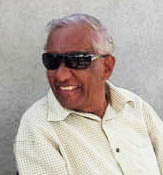 This article is essentially one on Wesley cricket, as the great reunion planned is one of past cricketers- in particular those who gave of their best to usher what has been termed “ the golden era of Wesley cricket”, motivated by the Rev James Cartman more than any other Principal of Wesley since 1874. The momentum was so great that these magical years overflowed into the Oorloff era- and beyond!
This article is essentially one on Wesley cricket, as the great reunion planned is one of past cricketers- in particular those who gave of their best to usher what has been termed “ the golden era of Wesley cricket”, motivated by the Rev James Cartman more than any other Principal of Wesley since 1874. The momentum was so great that these magical years overflowed into the Oorloff era- and beyond!
During the entirety of the cricket season- which commenced officially in the third term of the school year Fridays were dedicated to cricket. They were days of great expectations with the entire school population consolidated into ONE – to support our teams to the hilt.
Cartman himself taught us our ‘war cry’ which he introduced to Wesley – something akin to the All-Blacks ‘hakka’. Zam zam zake……..
‘Carty’ led the singing at General assembly. The rendition of the war cry had to be vociferous, dynamic and effective like a bolt of lightning! Psychologically nothing could have been better.
Once the team was announced, and ‘zam zam zake’sung, it was announced that Friday would be a special cricket half holiday. On the stroke of the bell (sometimes mischievously rung about ten to twelve by ‘Ranis the great”), all roads led to Campbell Park.
Over five hundred of us moved like an army of ants to spread out about ten feet behind the boundary lines. Double blue pennants fluttered from over a hundred bicycles…..It was an ocean of double blue- a throbbing pulsating crowd watching every delivery, hawk eyed, with great elation.
Wesley has produced a dazzling galaxy of talented cricketers. Names keep flowing down the river of memory. C.E. Perera (long before our time), was considered Ceylon’s best left hand batsman. M Sathasivam – a great batsman captained Ceylon as well as Malaysia. N. S. Jayasundera (my classmate) bowled brilliantly- his best being 5 for 5 against St Benedict’s (1947). Harold Matthysz – one of the most elegant batsmen produced by Wesley- scored 119 not out versus Royal and a mercurial 71 against St Joseph’s at Darley Road. He excelled as a wicket keeper as well. Edmund Dissanayakes courageous 107 against Royal, on the Railway
ground, Mt Mary (in a Wesley first innings total of 167). In the match against S. Thomas’ at Mt Lavinia the following year Edmund had taken 6 for 14 when he was hit on the head and carried out of the field unconscious! He was rushed to Durdans- and his condition announced at every general assembly Monday through Friday, for several months…..His son Danesh excelled as a batsman, with centuries against Royal in consecutive years.
Mahendra Dissanayake bowled brilliantly and would have been a great asset to Sri Lanka Cricket had selection procedures been above board and entirely on merit. Farveez Mahroof plays for Sri Lanka- a great bowler. L. R Goonetilleke, left arm paceman, made a tremendous impact on schools’ cricket to be adjudged the ‘Best Schoolboy Bowler’, in 1957. He played for Ceylon as well.
M.N Samsudeen excelled as a fast bowler- his very best effort being against Trinity at Campbell Park. Bryan Claessen ‘spinned’ his way to great fame and was selected to represent Ceylon whilst still in his tender teens! C.T Rodrigo a bowler par excellence annihilated Ananda.
Bertus Perera, one of the best fielders produced by Wesley- another classmate, scored a magnificent 111 against S. Thomas’ at Campbell Park (1948). His brother Neville, years later also excelled in the game as an all rounder. S Musafer was a great wicket keeper. Herbie Felsinger, Neil Gallahar, Kenneth De Silva, D Kodithuwakku, L C R Wijesinghe, Senthil Sinniah, Sarath Wickremaratne, Harold Juriansz and Milroy Muthuvaloe, all cricketers of the highest calibre.
Alan Ratnaraja excelled as a batsman, perhaps as elegant as Harold Matthysz. His 126 not out against Richmond, was a magnificent innings. He was a most loveable personality!
Norman De La Harpe was a legend. Standing six feet tall, many a batsman was pulverised by his speed and devastating grin after a wicket had tumbled.-actually cart wheeled towards the boundary line! (He was another of my classmates) His Chemistry teacher (and mine) mysteriously called him ‘Lagarp’
More and more great names of Wesley Cricket pop up! Navin De Silva, who Captained Sri Lanka Schools Cricketers on their tour of England- with Arjuna Ranatunga as his Vice Captain. Derrick Mack (another classmate) who was a great Captain as well as a dependable batsman. His two centuries were against St Peter’s (105) and Zahira (135). Radley Claessen excelled as a paceman
L Abeywardene’s 101 against St Joseph’s. W P S Abeywardene’s all– round performance. The Wesley greats – Abu and Ansar Fuard . Ansar in particular was a delightful person to know
Some of the others I recall are V R Dias, Robin Van Twest( who earned the epithet of ‘Thattu’), Patrick Schokman who scored fast with swashbuckling exuberance.
And then there were those Alfred Hitchcock like moments…..
Trinity declared their second innings closed at Campbell Park giving us 12 minutes of play ( the match ended at 6 o’clock) to score 67 runs for victory. We did it! Lou Adihetty and Warwick De Kretser in particular better than excelled in this stupendous run chase!
Then there were Clive Bartholemeusz’s rapid-fire sixes – three of them consecutively- One on to Darley Road, the second on to the rooftop of Bonjean Hall, and the third zooming on to the roof of the Josephian Chapel, with a broken tile trickling down on to the spectators below!
Upali Samararatne’s plundering of 22 runs in a single over versus St Peter’s at Campbell Park…..Amaresh Rajaratnam’s jewel of a very last ball of the match to defeat Royal and give us great joy!
Then there was that match against Royal played at the University of Ceylon grounds at Thurstan Road (probably in 1947). Edmund Dissanayaka Captain called upon his Vice Captain (wicket-keeper batsman) Harold Matthysz to open bowling for Wesley in Royal’s second innings. In his very first over, Harold captured two top-notch Royal wickets….and was requested to go back and keep wickets! Royal were two down for nought.
I would like to make special mention of the brothers who made a great contribution to cricket at Wesley – The Macks - Derrick and Spencer; The Pereras - Bertus and Neville; The Claessens - Radley, Bryan and Herman; The Abeywardenes - W P S and L; The Juranpathys - S and M N; M N Samsudeen and M H M Mihilar; The Mayes -Tyronne and Darrel; The Rajasinghams - L R and S M (identical twins); The Fuards - Abu , Ansar and Bacha; The Adihettys - Lou and Vincent; The Janszs – Ray and Tyrone; The Jeganathans - Sridharan and Hariharan; The Reimers – Glenn and Robin; The Rajaratnams - Amaresh and Dinesh; The Wickramaratnes - Sarath and Rohan; The Schoormans – Everard and Francis; The Eberts- Dennis and Lorensz; The Hamers- Russell, Mervyn and Granville, Russell played for Ceylon……
I would like to also pay a posthumous tribute to Wesley’s indefatigable, Mr J L F De Mel (master-in-charge) and Wilbert, our groundsman, for their selfless and totally dedicated services for the betterment of Wesley Cricket at a time in history when great things were expected of us!
In concluding this article, I would like you to consider the award of a trophy- ‘The Revd James Cartman Memorial Trophy for Wesley’s outstanding Sportsman of the Year”, and also the setting up of a Panel, preferably in the carriage area of the Old Wesleyites’ Sports Club, on which would be inscribed the names of all Wesleyites- 1874 to date- who have represented their Country in any recognised game.
"Ora et Labora"
 In January 1935 I was just out of the University, looking out for a job. I had expressed to my brother, who was Secretary of Y. M. C.A., a wish to take to teaching as a profession and he had mentioned this to several Heads of Colombo schools whom he knew. It was the merest chance that I came to be interviewed by the Principal of Wesley College in his tiny office at Karlsruhe; but it was this event that determined my whole life, for there John Dalby (then Mr. not Revd.) invited me to join the School to take Geography, Latin and Art in the Senior Forms-
Wesley College became my centre of interest for the next twenty-four years.
In January 1935 I was just out of the University, looking out for a job. I had expressed to my brother, who was Secretary of Y. M. C.A., a wish to take to teaching as a profession and he had mentioned this to several Heads of Colombo schools whom he knew. It was the merest chance that I came to be interviewed by the Principal of Wesley College in his tiny office at Karlsruhe; but it was this event that determined my whole life, for there John Dalby (then Mr. not Revd.) invited me to join the School to take Geography, Latin and Art in the Senior Forms-
Wesley College became my centre of interest for the next twenty-four years.
Perhaps it was Dalby more than anyone else who influenced me as a young man and kept me in Education. He combined in him great depth of learning and great simplicity. Sincere, gentle and devoted to his task, a man who simply could do no wrong, Dalby easily won the affection and loyalty of staff and boys. I was happy to see that my former teacher at Richmond, P. H. Nonis, was his Vice Principal. He was a shrewd administrator and one of the best teachers of Latin and Mathematics.
I came into the Boarding House as a duty master and still remember some of my charges in the Small Dormitory in those early years. Paul Senaratne, who used to get fever often and has not yet returned to me a blanket; the Rosa brothers, Cecil and Golly; Hamish de Zilwa and Frederick de Alwis, nephews of Terrence de Zilwa, then a power to be reckoned with both in Wesley's and the country's politics; Lynn de Silva whom I nicknamed 'padre' through some kind of hindsight; Ronnie Robertson, the eldest of an uncertain number of small Robertsons and Naida Seneviratne who kept cigarettes under his pillow but when he learnt conjuring devised more sophisticated hiding places for them .
In the Boarding House I came to know and became the life-long friend of J. E. de Silva a teacher of amazing versatility and a real sense of commitment. Together we did many things: Photography, Scouting, Drama, Tours, handicrafts, Camping. The reigning monarch in the hostel was of course F.J Senaratne, for whose learning, especially in Literature and Cricket, everybody had a holy. respect. He rarely gave us junior masters orders but trusted us to do our duties with a proper sense of responsibility. His little den facing the back of the Principal's bungalow, was choc-a- block with books which were his chief joy; but he was no recluse, for he would join us in a game of bridge and was not averse to telling a risque joke with relish.
 1935 was a good year for Wesley's cricket We had an excellent season under the captaincy of Henry Van Buuren. In this department I recall some outstanding sportsmen - There were the Nagendra brothers ; ‘sella’ the younger
and 'V' who was very naughty boy but ended up as Senior Prefect: Christie Seneviratne was a lanky bowler as a schoolboy' and it is good to see his interest in the game unabated; M. Sathasivam was a class by himself, his polished cricket was a joy to watch; Lou Adihetty took to sport like a duck to water, excelling in every game.
1935 was a good year for Wesley's cricket We had an excellent season under the captaincy of Henry Van Buuren. In this department I recall some outstanding sportsmen - There were the Nagendra brothers ; ‘sella’ the younger
and 'V' who was very naughty boy but ended up as Senior Prefect: Christie Seneviratne was a lanky bowler as a schoolboy' and it is good to see his interest in the game unabated; M. Sathasivam was a class by himself, his polished cricket was a joy to watch; Lou Adihetty took to sport like a duck to water, excelling in every game.
And then there was Edmund Dissanayake the fourth of five fine boys. He brought to the game a- kind of benediction. He injured while fieldingduring a match at St Thomas’. We took him to Durdan’s Hospital where he lay between life and death causing the school much concern.
Their mark as editors of fashion magazines Yrol and his twin-brother Gareth were, of course, born artists; they were once reported to me while still in Std. 3 for designing bridal clothes at a Nature Study class! both in Colombo and elsewhere, e.g. 'John Wesley', 'Amor Christi' and selections from 'The Man born to be King.' In all these plays the nucleus of the cast was drawn from Wesley.
For our plays, we always had, behind the scenes, an eager and talented group of boys, to paint back-drops, to design sets, to create noises off and to shift props. Harry Wijetunge and his brother had a gift for turning out all manner of gadgets that J. E. and I would demand from time to time.
Those were the days of good English and the unashamed appreciation of Western culture. We did great things with Singing and Speech. Among singers I remember Lascelles Abeysinghe and Mervyn Fernando, while in the latter department David Loos, Len Van den Driesen and the Campbell brothers (Ian and Ronnie) excelled.
In the mornings the whole school turned up for prayers - the days of linguistic and religious divisions had not yet come - and I remember that the pianist was none other than Mahroof Ismail. When later it was the practice for the non-Christians to be dismissed after general Assembly in order that, conforming to regulations, the Christians alone could participate in Prayers.
As a teacher of Art I never achieved much. There was one boy (who must remain name less) who used to bring me pictures which he claimed to be his; but as he could never draw so well at school, I had doubts, and still have, of their authenticity. But I remember that Mervyn Wickremasinghe and Eshan Saldin had real talent. It is good to know that Eshan and Yrol Jayawardena have made their mark as editors of fashion magazines. Yrol and his twin brother Gareth were of course born artists. They were once reported to me while still in Std 3 for designing bridal clothes at nature study class!
Among colleagues on the staff of Wesley some of whom I recall with affection are now no more. There was Kukul Silva, famous for his 2 finger slaps for teaching Arithmetic, L. C. Weragoda, mysteriously nick named “hulang” and C. M. Fonseka who sported a Scorpion orchid in his buttonhole everyday. Eric Gunasekera was responsible for the attendance registers and in spite of a stern exterior was kindness itself when I made mistakes in totaIling. Of other colleagues of that period, it is good to know that Mrs. Joseph is still as active as ever; J.L.F. de Mel, in his term as headmaster, continues to have all his time to the School, Joyce Leembruggen is now a great-grandmother, Dick Honter and Rachael Leembruggen are going guns in Australia and Iris Blacker, though is still as active as ever in Guiding, has abandoned her pedal bicycle.
I have lost touch with David Izzett, the dynamic head of Wesley during the war years. I frequently hear from James Cartman who lectures "in Divinity at a Theological College in England. It was in Cartman's time we celebrated Wesley's 75th Anniversary and, to mark the occasion, he got with great energy an Anniversary Number of the The Double Blue, including a history of the School.
.
D.S. Senanayake, who was then Prime Minister, declared open the extensions to the school and was the chief guest at the Prize Giving that year. I wonder how many now.
Recall an unrehearsed incident at the latter ,It which gave me a few moments of glory. When he got up to make his speech and suddenly lost his voice. He made an effort to speak but failed and handed his script to Cartman. He then gave it to J. L. C. Rodrigo who handed it to me. I had the privilege of reading this speech and quite enjoyed being Minister of Ceylon for half an hour!
Photo:

The Cartman era was memorable because it was then that I began to serve the School as Vice principal. With him I had a rewarding colleagueship. Cartman was keen cricketer and an able administrator. He wrote and preached well and built up an excellent staff of whom the following still serve the School: John Vethanayagam, Charles Silva, Wilfred Wickremasmghe, A. V. Gunaratnam, Felix Prermawardena, Edmund Dissanayake, Mrs. Elsie Perera, Mrs. Dulcie de Mel, Mrs. Sheila Wijeyakoon, and Eric De Silva (Office Staff).
I have written mostly of the early days. In some ways they were the best years. When I was impressionable and experiences somehow seemed more rewarding. The school was small and we were like a family, with the Boarding House as a kind of intimate within it. Teachers knew and loved pupils. Everybody liked their work. School was everything.
The latter period was not unremarkable as more rapid changes took place in education. Slogans like Free Education and Mother tongue became catch phrases for politicians. In the early 40’s the Emergency affected schools and for a period teaching was difficult and was diverted to ARP Schemes. Wesley functioned at Carey College while its premises were used as a base hospital. I was seconded as a staff officer of the ARP Scheme and had the privilege of working with OE Goonetilleke, one of the most distinguished Old Boys. Who was then the Civil Defense Commissioner.
In the 40s there was much banter and burning over what came to be a Pearl of Great Price. Caught in this-currents the Churches failed to respond wisely even when the whole of Christian Church was in danger. They allowed the tide of events to sweep in without any concerted plan.
In my career too there were changes. I with J. L. F. de Mel watched his charming daughters grow. I went to the Government Training school and came back to Wesley as Vice Principal and lived at Kittyakara Lane. In the early 50s I was in England and the USA and returned to the V. P.'s bungalow at Karlsruhe. Oorloff came as head and after him Nonis.
While in England I had the privilege of meeting Henry Highfield. It was on this occasion that he pleaded with me to see that the original spelling and pronunciation of KARLSRUHE be retained. (It will be recalled that the Principal's bungalow was the home of Charles Ambrose Lorensz, whose biography has been written by Benjamin Blaze, a former teacher of Wesley). May I conclude this little reminiscence by expressing the hope that my readers will in future refrain from saying CARL SHREW and say instead CARLZ-RUE, which is a fairly satisfactory Anglicised version of the German for "Charles' rest."
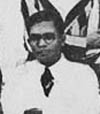 I entered Wesley two years after it had moved to its site at Karlsruhe. The buildings were considered more imposing than those of any other school of that time.
I entered Wesley two years after it had moved to its site at Karlsruhe. The buildings were considered more imposing than those of any other school of that time.
I can recall vividly all the details of my first day at Wesley. The Assembly was taken by the Rev. H. Highfield, The boys filed into the hall in an orderly manner and for a few minutes the hall was buzzing with the conversation of the boys, but when Mr. Highfield made his appearance there was perfect silence.
The Principal then announced that stirring hymn."O, Worship the King, O Glorious above." the hearty singing, led by a well trained choir made a deep impression on me.
In the 4th Standard where I started my school career, I was much struck by the unusual number of Muslim boys. In later years I understood that this was due to the fact that Wesley was the only big school It allowed Muslim boys time off to attend their mid-day prayers. In the class written work was done on slates and these were exchanged for correction purposes among the boys. This was a great convenience to the teachers, but the drawback was that there was no record of written work. A few years later the use of slates was given up for exercise books. A feature of the curriculum that strikes one as odd was that the study of ???in was started in Standard 4. Perhaps this was done as a mental discipline. With that success I am unable to state.
At the end of the year two or three of us were given a double promotion to what would now be the sixth standard.
The new year was a memorable one for cricket at Wesley. We played only three matches viz against Royal, St. Thomas' and Trinity. I well remember how on a Monday when I came to school I saw groups of boys discussing something animatedly. When the bell rang for the assembly I could sense the same excitement. When the Principal appeared on the platform there was tumultuous applause which lasted for several minutes. The usual assembly was held and at the end the victory over Trinity was announced and to celebrate it, the day was declared a holiday. There was another burst of applause which made the rafters ring. It was near hysteria.
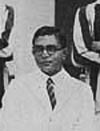 Wesley beat Royal (for the fifth year in succession) and St. Thomas' by very small margins. Wesley was acclaimed as the year' school cricket champions. At the end of the term this great achievement was celebrated by a display of fireworks at Campbell Park.
Wesley beat Royal (for the fifth year in succession) and St. Thomas' by very small margins. Wesley was acclaimed as the year' school cricket champions. At the end of the term this great achievement was celebrated by a display of fireworks at Campbell Park.
It was in this year that I began to keep record of all school matches played. - I cut out the newspaper accounts of these match and pasted them in an old exercise book. This I did for many years. But alas! not one of these books has survived. What a priceless record these books would have been had I taken better care of them. Unfortunately cricket suffered a decline at Wesley after this and it took about five or six years for other cricketing stars to appear - stars like A. M. Fuard, R. L. Kannangara, P. L. Pestonjee, A. J. Boteju etc.
Let me now pass on to our classwork Looking back I must say that the books prescribed were excellent. In English for instance, by the time I reached the Cambridge Senior.
I had studied Addison's Coverley ,Goldsmith's Deserted Village Travels, Arabian Nights. But I thought that I had then acquired a taste for- The School library was a very good one by any standard. I remember visit to the library. We were not in time to make our selections. The first book that I picked out with a brightly coloured cover happened to be an animal story. Reading a few pages I put it away to return it to the Library. A reader could retain a book for a fortnight I returned the book back to the library after three months. The master in charge of the library was greatly incensed. It took him sometime to locate my namefrom the list of borrowers. He thundered and told me not to come to borrow again. So ended my contact with the library. Some years later when I was in the rep form I received a letter from one the teachers in a small school where I was before I came to Wesley. In his letter quite casually asked me, "Have you got a taste for English Literature, if not begin with Macaulay's Essays.
The very first page of Essays I found very attractive. It was Macaulay, noon and night. Even in the classI could not resist the temptation of reading Macaulay while other subjects were being taught. Macaulay opened the desire for literature and History.
In the upper school naturally boys were meticulous about their school work as they prepared for Public examinations at the end of the year. Even then there were comic situations - might just mention one. In the 'rep class a new master had been assigned to teach Religious Knowledge. The prescribed books was the-Acts of the Apostles. The master was reading the text and came across the name, St. Peter. Promptly a boy at the back of the class stood up and called out somewhat loudly, "Sir,' did you call me? My name is Peter." The master was not slow to realise that this was a bit of school boy fun and spoke sharply to the boy, ordering him to sit down. Resuming the lesson the master again stumbled on St. Peter's name. He stopped in his tracks and observed "I mean Peter the Apostle and not Peter the idiot." In his battle of wits we felt that the comedian was completely outwitted.
All things considered I was inclined to be timid but on occasions I could throw caution to the winds. In 1914 the Royal-Thomian cricket match was played in the Tamil Union grounds in Campbell Park. On the first day's play the Royalists completely outplayed the Thomians and the defeat of the Thomians seemed inevitable. On the second day of the match when the bell rang for the last period to begin the news reached us along our grape vine that the Thomians were heading for a victory owing to a magnificent innings by S. Saravanamuttu who was still at the crease. Here was cricket history being made. Yielding to an impulse, I picked up my books and made my way out 'by what 1 thought was an un frequented path. Imagine my horror when I saw coming along this path a member of the Staff who was going back to his class. I put on a bold front as retreat was impossible and walked on. When he came face to face with me, he smiled at me and just said, "The Thomians are winning". Just that and passed on and nothing more was heard about the incident. This master, I might mention here was destined to become a Governor-General of Ceylon. I thought he was a great sports-man.
Wesley's scholastic achievements of this period are fairly well known and there is no need to give them here in detail.
Dear Wilhelm, Azeez, Ravi, Amal, Rohan, Roger, Mahendra, Haleem, Nalheer,
Edward & Braden
Bountiful congratulations and bouquets to the committee on organizing such a
successful event that brought together the fraternal brotherhood of the Class of 68 -
72 from the corners of the world. Thanks to my dear friend Mahendra I was able to
participate in part via Skype and the advancement of modern cyber technology. The
success of the event reflects on the planning undertaken by you guys and I am sure that not only myself but all the participants will concur that you guys did a fabulous
job.
 The assembly was a moving ceremony and the many speakers reflected on what a fabulous experience we had at Wesley and also expressed our deepest gratitude to the many men and women who taught us and molded us into "men of grit and industry" that we are today.
The assembly was a moving ceremony and the many speakers reflected on what a fabulous experience we had at Wesley and also expressed our deepest gratitude to the many men and women who taught us and molded us into "men of grit and industry" that we are today.
The mood of the meeting was electric and as an observer thousands of miles away, this was the feeling that came through with a buoyant group of middle aged men acting like schoolboys in the days of our youth. I am sure after having spoken to many that emotions ran high and the chance to meet so many friends and contemporaries would have had a big emotional impact and drawn a tear or two and watery eyes. I am sure that many who had lost touch with the school will re-kindle their interest and be drawn back to support Wesley.
I am overawed by the financial support to re-furbish the College Hall and I hope that it will take pride of place as the meeting place that served many generations from the time Wesley moved to Karlsruhe in 1906/07. The vision of Henry Highfield to find a permanent home on the Karlsruhe Hill has served his dream with diligence and has been a beacon on the hill shedding light and educating thousands of youth over the past century. It was the turn of the Class of 68 -72 to add to that radiance on the 15th September 2012. Wow! They sure did a wonderful job.
So guys pause and reflect on the great service and happiness you gave so many. I for one am most thankful and even though I was extremely disappointed that I could not be there and savour the celebrations and press the flesh of my friends and colleagues, I went to bed at 3 a.m. Melbourne time, content with myself after speaking with so many friends.
It was interesting to see the ravages of time on the physicality of the many students over the past fifty years. The enthusiasm with which the Old Boys dressed in white shirt and blue shorts brought back memories of the schoolboy still in each one of us. During our day Rohith Fernando and I were two of a few "fatso's" that were around hence getting my title of "Badda" from my Lower Kindergarten years which has remained with me ever since. As Rohith always reminds me we used to charge to the tuck-shop to buy Kandos "Coconut Peaks". Rohith and I are no longer the only"Baddas" from our batch by the looks of some. However I will always be the"Coconut Peak Badda". No one can wrest that title from me. Thanks to the Coconut
Peaks I am now paying the heavy price with diabetes and kidney failure. That is life my friends but life must go on.
When I am a bit more confident with my dialysis treatment that I can have in Lanka, I will visit Lanka's pearly shores once again and imbibe in the spirit of the country and beloved Wesley that I still love so much even though I left Lanka 42 years ago. I will catch up with my dear friends at the "Kochiya" for a "Parana Arrakku" and a hot bite and reminisce of happier times as a student at Wesley.
God bless you all and thank you for a job well done.
Ora et labora.
Wesley to the Fore!
Keith de Kretser
Melbourne, Australia
Photos of the 1968-72 Reunion
 |
| Brian Batstone, Jeeva Devadason, Nihal Peries, Eric Gauder, Mumtaz Yusuf, Ishak Hamidon, Errol Dickman, Akbar Musafer, Kaim Samahon, Ismail Hamidon, Richie Morrison, Ansar Shamsudeen |
 |
| Ismail Hamidon, Ansar Shamsudeen, Nihal Peries, Ishak Hamidon, Richie Morrison, Akbar Musafer and Mumtaz Yusuf |
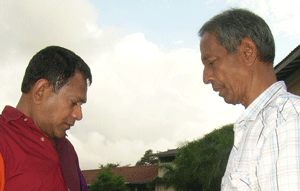 |
| Jeeva Devadason and Akbar Musafer |
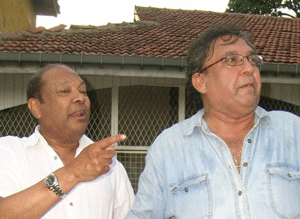 |
| Layton Van der Putt and Errol Dickman |
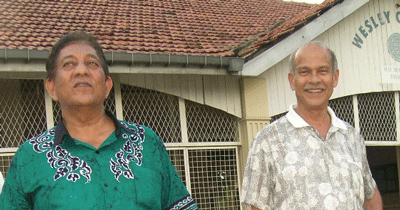 |
| Mumtaz Yusuf and Richie Morrison |
 |
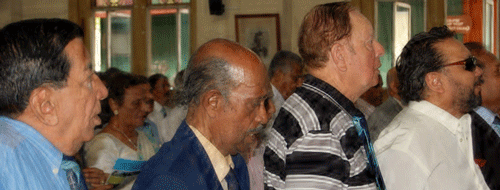 |
| Richard Dwight, Herbie Felsinghe, Arthlow Chapman and Alston Koch |
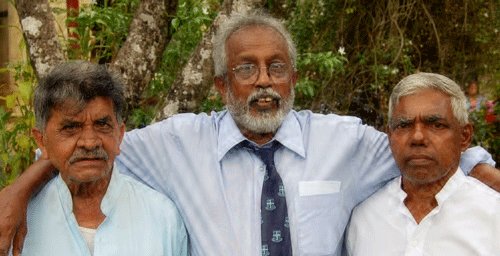 |
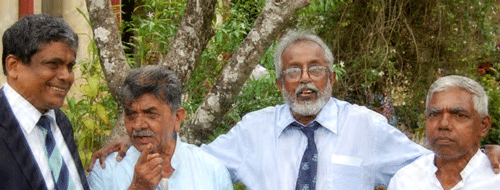 |
| Shanthi, Wilson, Peter and Groundsman |
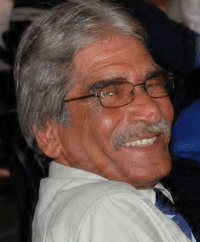 |
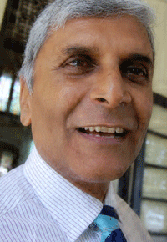 |
| Granville Harmer | Ranjan Karunaratne |
Wesley College Reunion – September 2012 by Dr Nihal D Amerasekera
School days mean many things to many people. No one will forget the harsh discipline, unremitting homework and the stress of Term Tests. Then cricket at Campbell Park took over our lives. We played the game at intervals and after school. When we were not playing cricket we talked about it. That was the passion we had for the game. Friendships at school meant everything to us and they were established and firmed in the playing fields and classrooms of Wesley. They are indeed strong enough to last a lifetime as we see from the success of the myriad of reunions, OWSC and OBU's. Whilst grappling with these and other issues we then acquired the skills to read, write and add. I like to think we left school with an all round education and the tools needed to get on in life.
The story of the Reunion is a personal one. It is seen through my lens of nostalgia of an era now long gone. It is a narrative drawn from the observations, conversations and experiences of those priceless few days together. Modern technology helped me to record events and people and freeze them as images in real time. The exotic mixture of heat, sweat and noise helped me to connect the past with the present. Colombo has changed beyond recognition. Many of the old landmarks have been crowded out or have disappeared. The few that are left helped me to orientate myself in the city that I knew like the palm of my hand only just a few decades ago.
It all began in 2009 when Senthil Sinniah and the 1st XI team of 1960 had a get-together at the OWSC. Initially it started with a bit of small talk. When the nostalgia of the occasion was fuelled by the amber nectar it was decided to have a reunion for all veteran cricketers. The idea was tossed around and it was finally taken up by L.C.R (Lalith) Wijesinghe. UK and Australian old boys were contacted who gave their support and made efforts to make it an all encompassing reunion for all the old boys. It has always been a dream of mine to meet my school friends from way back before it was too late. Thanks to the tireless efforts of Lalith Wijesinghe who was the driving force and his hard working committee for their superb organisational skills and gracious hospitality. Committee Members were assigned roles to take charge of finance, administration, venue selection, entertainment, communications and logistics. As usual there were heated debates but common sense prevailed. Despite the odds the reunion became a reality. We salute their passion and commitment to the cause.
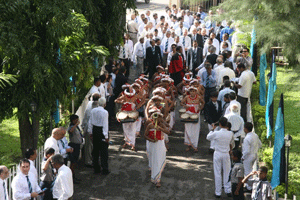 |
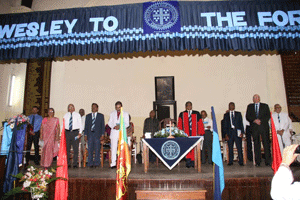 |
|
Hewisi Band at the driveway |
-----------The Assembly |
A return to Wesley always rekindles special memories. The programme commenced with an Assembly in the Great Hall on the 6th of September 2012 . As the participants began to arrive, the school gate and drive was the scene of countless handshakes and backslappings as old friends greeted each other. There was a fizz of excitement when we were ushered in by the rhythms of the Hewisi Band. As I took my place in the audience I was suddenly overcome by a familiar yet completely unfounded brief sensation that transported me back half a century to the days of CJ Oorloff. My time there in the 1950’s suddenly seemed so real. It was a sublime feeling of nostalgia. We had all gathered in the Great Hall to honour our teachers, celebrate our friendships and praise our school.
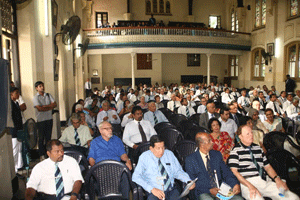 |
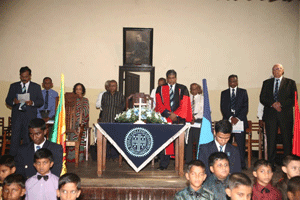 |
The Great Hall |
------ The Great Hall |
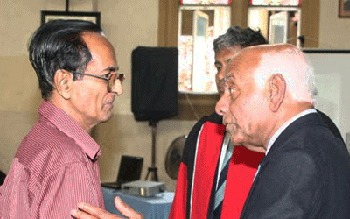 The session kicked off with a lusty rendition of the School Song. Lyric sheets were provided to jog failing memories. What we lacked in musical finesse we amply made up with volume and enthusiasm. The lyrics and the melody sent a tingly feeling and a flood of memories. The Principal’s salutation was met with raucous cheers from the old boys. After the speeches a young lad read out a passage and the school choir sang. On the stage was the Principal, President of the Methodist Synod and prominent old boys. The sheer presence of legends like Edmund Dissanayake and Norman De La Harpe lit up the stage. Each of the old boys from abroad was given an award and the cricketers were presented a scarf donated by Senthil Sinniah. I was delighted and humbled to receive a most generous award for starting and maintaining the Double Blue International website. The Website is my thank you to Wesley. I hope the Double Blue International can unify Wesleyites and become the glue that binds the school's past with the present.
The session kicked off with a lusty rendition of the School Song. Lyric sheets were provided to jog failing memories. What we lacked in musical finesse we amply made up with volume and enthusiasm. The lyrics and the melody sent a tingly feeling and a flood of memories. The Principal’s salutation was met with raucous cheers from the old boys. After the speeches a young lad read out a passage and the school choir sang. On the stage was the Principal, President of the Methodist Synod and prominent old boys. The sheer presence of legends like Edmund Dissanayake and Norman De La Harpe lit up the stage. Each of the old boys from abroad was given an award and the cricketers were presented a scarf donated by Senthil Sinniah. I was delighted and humbled to receive a most generous award for starting and maintaining the Double Blue International website. The Website is my thank you to Wesley. I hope the Double Blue International can unify Wesleyites and become the glue that binds the school's past with the present.
We were pleased to see P.S.Rodrigo who was a Cricketer, a fine Badminton and Tennis player of the late 1950's. He was visibly unwell and we admired his courage and determination to be present at the Assembly to receive his award. There was something wonderful about the unifying sense of Wesleyites. As the old boys went up to get their awards they were cheered without inhibition. Of course, nobody would deny that the Assembly has had an uplifting effect on everyone who was present. It was about the present linking with the past, about honouring history, excellence and legendary achievements. I guess I am not alone in having felt jarred by the sheer experience of being in the Great Hall.
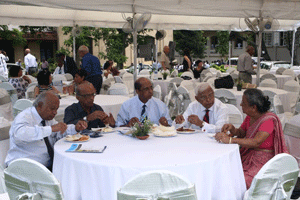 |
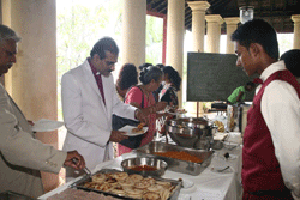 |
Marquee in the lawn |
Hoppers served in the verandah |
All the old boys were then the guests of the Principal for breakfast in his 150 year old house. It is awe inspiring to think each of the Principals since the school was moved from Dam Street Pettah occupied this majestic bungalow. Its elegant columned front verandah was transformed into a temporary kitchen. Hoppers and egg hoppers had a great "pull factor" and never tasted better. The Marquee in the Principal’s lawn was lavishly decorated for the occasion. It was wonderful to sit with old friends and teachers many of whom we haven’t seen since leaving school. There were warm exchange of greetings amidst scribbling of email addresses and phone numbers. Many graced the occasion despite their troubles, infirmities and distance. It was a wonderful nostalgic occasion. Our grateful thanks to the Principal for arranging the Assembly and the function in the Principal's lawn. The mystique and the enduring curiosity we had as students about the Principal's Bungalow was broken on that beautiful sunny day.
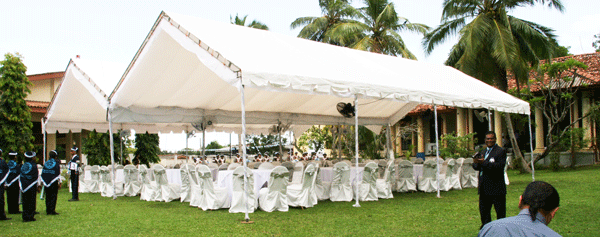 |
The Marquee in the Principal's Lawn |
 As I walked through the school office I paused for awhile to reminisce. Much has changed and it is only vaguely reminiscent of the good old days. The Fifties were an interesting time at school. The office then was run and managed by the Bursar Mr Eric De Silva and the Stenographer Miss Bertha Weerapass. The gentle affable couple helped the Principal, teachers and students with politeness and calm. We all respected them enormously. I can still picture Mr Silva make entries in that large book called the Ledger, when we paid our school fees. The sound of the typewriter and the smell of the Gestetner ink from the cyclostyle machine is gone. Now the office is a hub of activity. It has gone digital with many desks and people manning the PC's and telephones. To us in those days a call to the office meant just one thing - 6 of the best !! Now the students are more relaxed and go in and out of the office without any fear. Perhaps that's progress. But without that inseparable clerical duo a bit of the sunshine has gone from that office. It is true the past is a foreign country and it's best not to dwell in it too long, to avoid disappointment. After all that was the golden summer of our youth.
As I walked through the school office I paused for awhile to reminisce. Much has changed and it is only vaguely reminiscent of the good old days. The Fifties were an interesting time at school. The office then was run and managed by the Bursar Mr Eric De Silva and the Stenographer Miss Bertha Weerapass. The gentle affable couple helped the Principal, teachers and students with politeness and calm. We all respected them enormously. I can still picture Mr Silva make entries in that large book called the Ledger, when we paid our school fees. The sound of the typewriter and the smell of the Gestetner ink from the cyclostyle machine is gone. Now the office is a hub of activity. It has gone digital with many desks and people manning the PC's and telephones. To us in those days a call to the office meant just one thing - 6 of the best !! Now the students are more relaxed and go in and out of the office without any fear. Perhaps that's progress. But without that inseparable clerical duo a bit of the sunshine has gone from that office. It is true the past is a foreign country and it's best not to dwell in it too long, to avoid disappointment. After all that was the golden summer of our youth.
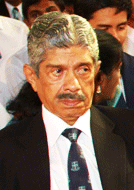 On the 6th of September BMN Jurangpathy (1st XI Cricketer 1953) held a dinner at the Senior Police Officers Mess in Havelock Town for the cricketers and the organising Committee of the Reunion. The Mess was built in 1928 for the Senior British Officers of the Police Force. Its magnificent dining hall, exquisite furniture, panelled walls and grand bar shows the opulence of that era. I was unable to attend but was told it was a sumptuous buffet and a fine party held in lavish surroundings. The four piece band that played Sri Lankan music brought back many happy memories to the guests. The rhythms of the baila music were a special favourite which made some guests dance and gyrate providing much amusement and merriment. Friendships flourished and connections were made and firmed. The bar was open until the wee hours of the morning when the guests departed. We thank BMN Jurangpathty and his wife for their generosity and commitment to the Reunion. It was wonderful to see him again after those glorious Claessen years of cricket.
On the 6th of September BMN Jurangpathy (1st XI Cricketer 1953) held a dinner at the Senior Police Officers Mess in Havelock Town for the cricketers and the organising Committee of the Reunion. The Mess was built in 1928 for the Senior British Officers of the Police Force. Its magnificent dining hall, exquisite furniture, panelled walls and grand bar shows the opulence of that era. I was unable to attend but was told it was a sumptuous buffet and a fine party held in lavish surroundings. The four piece band that played Sri Lankan music brought back many happy memories to the guests. The rhythms of the baila music were a special favourite which made some guests dance and gyrate providing much amusement and merriment. Friendships flourished and connections were made and firmed. The bar was open until the wee hours of the morning when the guests departed. We thank BMN Jurangpathty and his wife for their generosity and commitment to the Reunion. It was wonderful to see him again after those glorious Claessen years of cricket.
The Dinner at the Galle Face Hotel
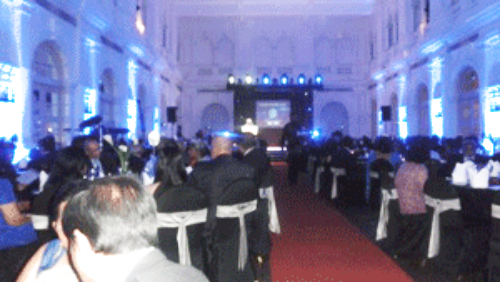
On the Friday night (7th Sept) was the Gala Dinner at the Galle Face Hotel. Rain did not dampen the spirit of the occasion. The Hotel was built in 1864 and its Victorian architecture gives its elegant façade a colonial feel. We were ushered in for cocktails prior to the dinner. Many of the old boys were present with their wives. Although the dress code was smart casual many displayed their sartorial elegance with snazzy suits. As the cocktails kicked in the voices became louder and old acquaintances and friendships were revived amidst much emotion and nostalgia. By now a few had already levitated up to cloud nine. We all have changed. Many were unrecognizable and a few had aged much beyond their years. Anyhow it was indeed a great occasion and the spirit of the old days rang high
There was a distinguished gathering of Principals, Teachers, Politicians, Accountants, Philanthropists, Bankers, DIG Police, Doctors, Civil and Mechanical Engineers, Directors of Charities and of Financial and Business Institutions. My claim to fame is that I once walked amongst them! The diversity in career paths, social status and ethnic differences melted away as we reconnected with friends. When old boys come together they move into recollection mode recalling those beautiful, quirky moments of their youth. There was never a dull moment. Voices were imitated, mannerism mimicked and idiosyncrasies were enhanced. As the wine and conversation flowed we got transported back many decades. There was a glow and a shared warm feeling of times past. Those years at school were our impressionable formative years. Then our world was young, full of hope and promise. We were innocent and wide-eyed and saw the world in vivid technicolour. It was wonderful to return to those days again.
The evening saw a rare gathering of past Senior Prefects and Prefects mixing unashamedly with the rioters and smokers that puffed "3 Roses" behind the cycle shed. Prefects natural belligerence seem to have deserted them. They all were talkative and warm. Ironically a guy who regularly dodged Prefects and bunked off school to watch films in the bug infested gallery for 50 cents became an important organiser for this Reunion. No, I can't mention names. They were horrible teenage years and many were rampant with hormones. They needed discipline and received it in good measure. Now that we have had a taste of the real world appreciate the need for law and order.
Past Cricket Captains and players recaptured the combative games they had won and lost and how they performed. There were tales of triumphs and tragedies. Missed catches and the golden ducks remained a sore point even after the passage of 50 years. I was particularly pleased to see Glen Reimers. We last met in Melbourne at a dinner hosted by the OBUA. As always his speech and actions are measured but so very sincere. Ageless Everard Schoorman (Cricket Capt 1964) has maintained his shape since his school days. The inability to recognise some of the old boys being heavier, broader and wiser brought about much amusement and hilarity. What they lacked in appearance they made up with their enthusiasm and integration, sharing anecdotes and recalling hilarious experiences. There are those episodes which have become timeless favourites that have now entered the folklore of the school. They couldn't believe the camaraderie they still had after all this time.
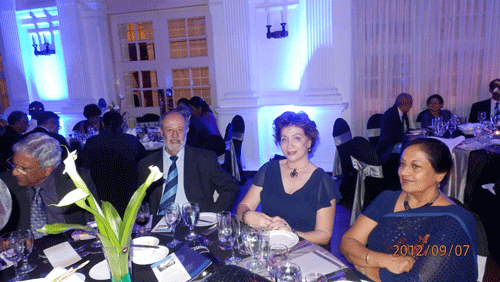 |
SK Seneviratne, George Siebel , Gillian Leembruggen and Mrs. Chrish Seneviratne (SK's wife) |
Who can forget the lovely Gillian Leembruggen. She lived in the Principal's bungalow during the Oorloff era. Gillian was present at the dinner looking stylish and elegant and seated with George Siebel. SK Seneviratne (Stalwart of the SCM) and his brother Ranjit joined in the dinner with Rienzie Wijetilleke (respected banker and a loyal old boy). Nick-names were the bane of our school days. Almost every school boy had a nick name whether they liked it or not. Even now we seem to recall the nick names more easily than their real names. It is as if the nick names are tattooed on their foreheads. I had forgotten Jardi's real name. I haven't seen Jayantha "Jardi" De Silva (Rugby XV Captain 1963) Priyanath Fernando (Cricketer) and CT(Clifford) Rodrigo since I left school.. CT was a year junior to me but I remember him because of his exploits as a fine leg spin bowler. He mesmerised the Anandians taking 8 wickets for 9 runs giving us a fine win against a strong side. Clifford remains a loyal old boy and is ever present at reunions and school functions. It was a magical evening filled with fun and laughter. We had a good time together reminiscing.
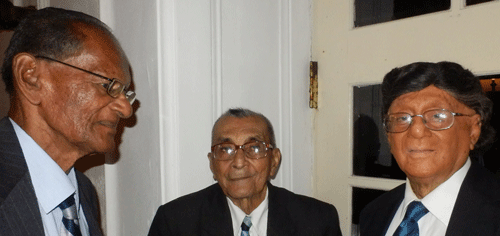 |
The Seniors- Shelton Peiris, Edmund Dissanayake and George Jayatunge |
We deeply appreciated the time, effort and perseverance of those old boys from the Cartman-Oorloff era who graced the occasion despite their difficulties. Shelton Peiris (School historian) , Mr. Edmund Dissanayake (Teacher and Cricket Coach), George Jayatunge (1st XI Cricketer 1952), Norman De La Harpe (All round Sportsman), DBC Mack (1st XI Cricket Captain 1950/51 and Teacher), Spencer Mack (1st XI Cricketer) and HB Tamitigama (Senior Prefect-1953) attended the Gala Dinner at the Galle Face Hotel. .The suave HB Tami was sporting an elegant pony tail. S Musafer the wicket keeper and MN Samsudeen (All Ceylon fast bowler), Neil Gallaher and Arthlow Chapman from the Claessen years 1952/53 were present at the Reunion. Ajitha Wijesinghe (Capt Rugby XV - mid 1950's )who lived in the lovely quaint house at the top of Karlsruhe Gardens on the left as you walk towards Campbell Park. Also present were Prof Mahroof Ismail (Former Dean of the Faculty of Medicine Colombo) and Neville S Weerasekera (Former Project Manager and Senior Director of Petromin in Saudi Arabia) . We thank them for their presence and gratefully remember them all for their contribution to the life of the school.
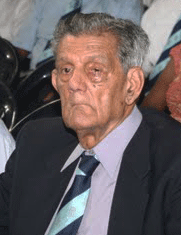 |
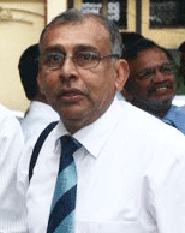 |
DBC Mack |
Darrell Maye |
It was indeed a great privilege to see the full 1960 1st XI Cricket Team at the gathering except for Milroy Bulner who has sadly passed on. Senthil Sinniah (Capt 1960) , LR Goonetilleke (All Ceylon Cricketer), KD Kodituwakku (Capt 1961), L.C.R Wijesinghe (Capt 1962), Glen Reimers, Erroll Smith (scored 199 against Richmond at Galle. His aggressive batting defied the orthodox) , Kenneth De Silva, Sarath Wickramaratne, Darrell Maye (Best Schoolboy Cricketer 1963), Milroy Muthuvaloe(Capt 1963) and MN Mihlar. They lost no time in grouping together for photos and a chat. The team spirit was still present and they continue to enjoy the friendship and the fun of cricket. The group rejoined for the dinner hosted by Senthil Sinniah at the 80 Club on Saturday the 8th of September. During the Reunion decades-old friendships were re-kindled and rejuvenated.
Wesley College 1st XI Cricketers
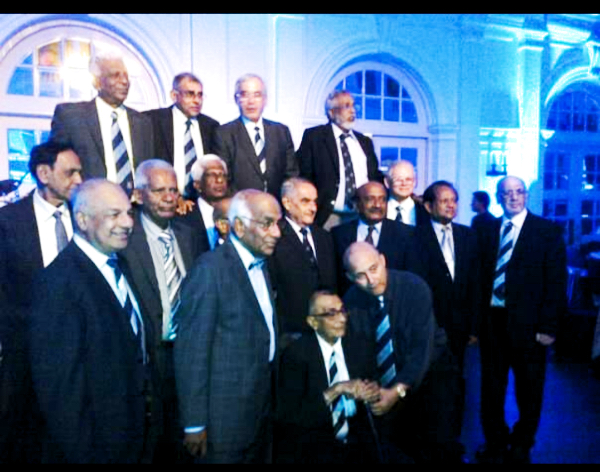 |
| Wesley College 1st XI Cricketers |
Front row: D.Kodituwakku, Everard Schoorman, Derek Ingram,L.R Goonetilleke, Senthil Sinniah behind him is the head of M.N Mihlar,Kenneth De Silva,Muthuvaloe, Warwick de Kretser,Ana Thevathasan, L.C.R Wijesinghe
Seated in front is Mr.Edmund Dissanayake, standing next to him is probably Nigel Christoffelsz
Wesley College 1st XI Cricketers 1960
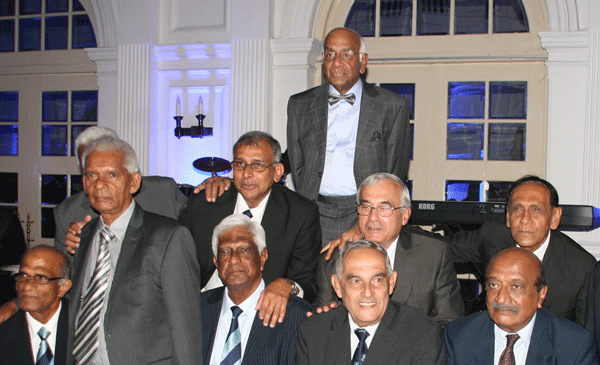 |
Wesley College 1st XI Cricket Team 1960 |
Back row: Sarath Wickramaratne, Darell Maye, Glenn Reimers, D.Kodituwakku,
Right at the back is Senthil Sinniah
There were many past hostellers at the Reunion and it was wonderful to see them all. In the hostel we were in the premises 24x7. Being away from home brought us closer together. The camaraderie and the unity in the boarding was amazing and we managed to recreate some of that closeness seeing all those friends again. Much time has passed since those days. The boys who were timid and shy then have become as brave as lions. Neil Gallaher, Arthlow Chapman, Allan Pathmarajah, Upali Perera, Ranjit Alwis, Nigel and Michael Christoffelsz, Ransiri De Silva, Nihal Peiris, Sarath Alagama, Wimal De Silva and Iyar Muthu were some of the hostellers I had the good fortune to meet. Meeting Michael Christoffelsz again since I met him by the Sydney harbour bridge in 2009 with Harris Anthonisz, was special. We have remained close since those days of famine in the hostel in the fifties. RM (Raja) Peiris was with me in the boarding for many years. He qualified as a solicitor and reminded me that lawyers never retire they just fade away!! Well, age is catching up but the fervour still burns in us.
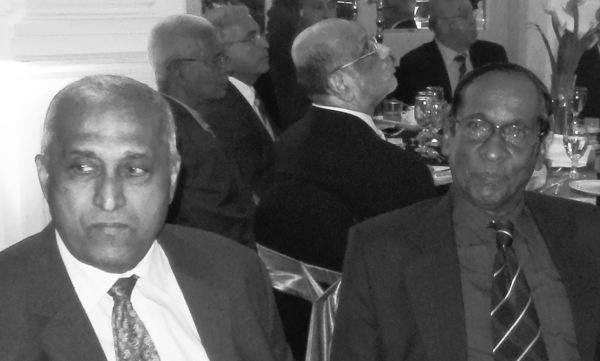 |
Dr Sarath Ranasinghe and Milton Arandara with L.C.R Wijesinghe in the background |
On a personal note, I was overjoyed to see my old 6th Form colleagues many of them for the first time since leaving school in 1962. I was naive enough on that fateful final day in April 1962 when I stood up on a lab stool to announce that we are going to meet exactly in 20 years in that biology laboratory. Our youthful arrogance and inexperience of the real world prevented us from seeing what lay before us in the years ahead. Little did I know then what careers, marriage and children could do to our lives. It took us 50 years to meet again but without Daya Perera (Senior Prefect 1961) who sadly passed away in November 2003. If he was alive he would have been the life and soul of this great party. Lifes injustices and disappointments and also progress and prosperity has changed us all. I have always tended to follow a wandering star and have made my home in a delightful suburb in rural England. Over the course of my life I have had my ups and downs too. In the main destiny has been kind to me. Harold De Alwis Jayasinghe knew the St Matthews Gospel by heart getting a distinction in Scripture at the GCE. He then became a Director of Agriculture (I still cannot see the connection). Lakshman Jayasinghe is a prosperous Radiologist in Brisbane. Lakshman came to Wesley from Kingswood College Kandy in the 4th Form. Sarath Ranasinghe joined Wesley from Veyangoda Central College and added a 4th dimension to our preparation for the University Entrance Examination. He won the Hill Medal in 1962. He is a much sought after practicing Physician in Kandy. Sarath Wickramaratne is a businessman and can sell freezers to Eskimos. Lalith Wijesinghe had a successful career in the Middle East. He worked for McDermott International in the Oil and Gas industry until retirement in 2007. Sheriff Fallil (Rugby XV 1959) is in the Plantation Industry in Monrovia, the capital of the West African state of Liberia. He wanted to join in the Reunion and paid up in full but was unable to attend due to unforeseen circumstances. He made a donation to pay the band that played at the dinner in Galle Face Hotel. As always he still does things on the hoof. Hamilton Amerasinghe retired as an Executive in the Katunayake Airport. He now shuttles between Melbourne and Colombo seeing his grandchildren in Australia. Milton Arandara is the only honest Gemmologist in the murky world of the gem industry. I have always kept in touch with Ranjit Alwis. Our connections were strong being a hosteller. We spent a happy few days together in Adelaide and also in London. He has his own Accountancy firm in Adelaide and is a respected Citizen of Australia. Seeing them all was indeed a special treat. Their sheer presence meant so much to me.
Photos: L to R
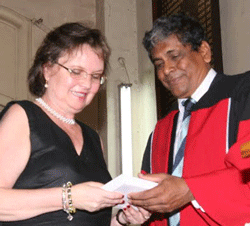 |
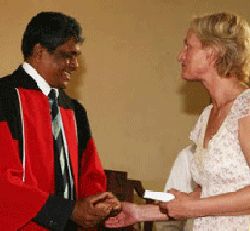 |
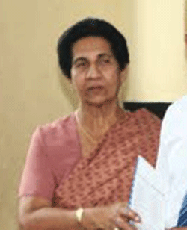 |
We must remember absent friends and we did in all our events. There were many who could not attend due to ill health. Some have departed this life. Our good wishes go to their loved ones. The list of dearly departed seemed to be getting longer every year. It was a great pleasure to see Trilby (wife of Robin Reimers), Jennifer (Wife of Hilary De Vos) Sharma (Wife of Nalendra Abeysuriya) Hissy Casa (Brian Claessen’s daughter) and Radley Claessen's son Robin. Radley was the Cricket Captain and Senior Prefect in 1952 and was unable to attend due to ill health. We appreciate their efforts to attend the Reunion from Australia. Mrs Louis Adhihetty had declined the invitation to attend the function due to personal reasons but his sister (Mrs Malini De Silva) received the award on behalf of the family. Lou was a fine all round sportsman, a teacher and also the Principal of Wesley. Dr. Derryck De Silva (Senior Prefect -1957) has bought a ticket for the Reunion but due to illness was unable to attend. He is a Consultant Radiologist in Essen, Germany and has always been a true blue Wesleyite. AP Batuwitage (1st XI Cricketer 1953) who lives in UK and BCRN(Ranjit) Fernando (School Basketball Team) living in Denmark too were unable to be present due to poor health.
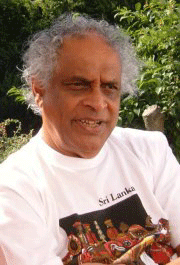 Despite many decades of decline the wind of change and progress has finally reached Wesley College. The restoration took a lot longer than we hoped, because the damage was far greater than we feared. Many spoke warmly of the new dawn at the school with Dr.Shanthi McLelland as the Principal. He is knowledgeable, urbane and humane, but tough in negotiations. Dr McLelland has brought to Wesley a perfect blend of modernity, coupled with a healthy respect for tradition and heritage. The Principal has demonstrated his loyalty, resilience and management ability in the three years he has been in office. The buildings looked pristine and in good repair. The academic standards have improved beyond measure. Once again Wesley was a school to be feared and respected in Sports. In the eyes of the public it was a good school fit for a prince. A new Swimming Pool is the icing on the cake.
Despite many decades of decline the wind of change and progress has finally reached Wesley College. The restoration took a lot longer than we hoped, because the damage was far greater than we feared. Many spoke warmly of the new dawn at the school with Dr.Shanthi McLelland as the Principal. He is knowledgeable, urbane and humane, but tough in negotiations. Dr McLelland has brought to Wesley a perfect blend of modernity, coupled with a healthy respect for tradition and heritage. The Principal has demonstrated his loyalty, resilience and management ability in the three years he has been in office. The buildings looked pristine and in good repair. The academic standards have improved beyond measure. Once again Wesley was a school to be feared and respected in Sports. In the eyes of the public it was a good school fit for a prince. A new Swimming Pool is the icing on the cake.
Welcome speech is the most important speech in any function because it sets the mood of the event. This task fell on Senthil Sinniah and he didn't disappoint us. We had Alston Koch who is an International Singing Star to spread a little star dust on the occasion leading us with the singing of the National Anthem. After the speech we took our places in the dining Hall. It was most elegantly decorated in our school colours with dim blue lights to suit the occasion. While a band played we enjoyed the dinner and continued our conversation meeting and greeting old boys. All through the evening we were entertained by the fine singing of Shanelle (Priyanath Fernando's daughter) and Ricky Bahar (BJH Bahar's grandson). They sang the all time favourites which struck a chord among the old boys. After the formal dinner it was time for musical chairs when we moved from table to table meeting friends. We had to look beyond the gray hairs (or no hair), the extra pounds and the increased lines on the face, to find our friends. But finding them we did to make it all worthwhile and it was truly a pleasurable nostalgic journey. Flashes were popping everywhere as groups posed for photos. It was a great evening of entertainment and fellowship.
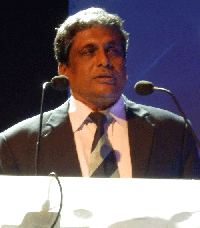 |
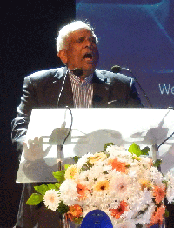 |
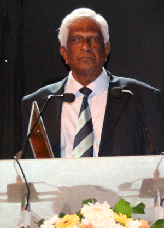 |
The Principal |
Allan J Pathmarajah |
L R Goonetilleke |
Speeches by the Principal, The Guest of Honour Allan J Pathmarajah, LR Goonetilleke and the Chairman of the Organising Committee Lalith Wijesinghe concluded the event after a lusty rendition of the school song. On behalf of the old boys who attended the Reunion I wish to thank Lalith Wijesinghe and his Committee for the wonderful Reunion. All those who attended the event will carry with them fond memories of their alma mater and their friends. Our sincere thanks to Afghar Mohideen for securing the Galle Face Hotel for this event.
Senthil's Dinner at the 80 Club
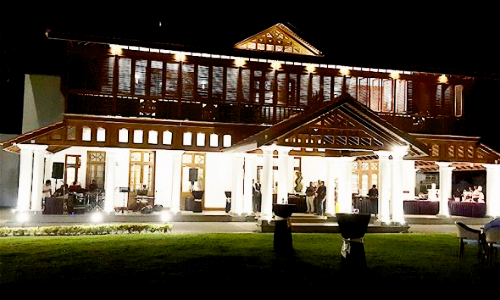
The night after the formal dinner (8th of September) Senthil Sinniah hosted a dinner for the cricketers and friends at the 80 Club, Colombo7. The Club was started by 80 members of the British Raj and has remained an exclusive institution ever since. Despite its location, with its green lawns, sweeping driveway and imposing edifice it still has a country-club feel of old. There was the familiar figure of Mr. Edmund Dissanayake, the doyen of Cricket at Wesley. He spoke warmly of the 'pain' and pleasures of being a teacher at school. We admire his flair for remembering so many cricket stories in such great detail. Michael Dias, Nanda Senanayake and Sarath Samarasinghe who are Royal Cricketers of the late 1950's contributed to the fun and the laughter. At this informal occasion we had the great privilege to speak with and listen to Allan J Pathmarajah, who was also the guest-of-honour at the formal dinner at Galle Face Hotel. Behind his unaffected modesty lay a stern determination and ambition. He reminisced about his days at school and in the hostel. He spoke warmly of the long family association with Wesley where his father was a teacher and his brother also a student. The function was well attended and was a happy occasion with a delicious buffet of spicy curries with rice, hot hoppers and a tempting dessert of "Watalappan". Drinks flowed freely as did the conversation and friendly banter. The renewal of 'ancient' comradeship was visibly moving and joyous. Our thanks to Senthil Sinniah for inviting us and Afghar Mohideen for choosing the venue and organising the event.
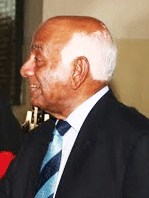 On Sunday afternoon (9th of September) there was a softball cricket match at Campbell Park. It was a warm sunny day. Despite the effects of the night before of heavy heads and leaden legs they were happy to be a part of it to rekindle old memories. After all reputations were won and lost in those hallowed grounds. The younger cricketers mixed well with the seniors in the true Wesley spirit. In the evening there was a fine dinner for all the guests. It was good to see Neville Perera brother of late Denzil and Late Bertus Perera at the OWSC. Neville is the same laid back guy. The long evening gave the guests the opportunity once again, to re-connect with their friends. The decades fell away as we reminisced. The evening ended with exchange of business cards, hugs and promises to meet again. We thank the President of the OWSC, Richie Sappideen, for his efforts to make it a memorable event.
On Sunday afternoon (9th of September) there was a softball cricket match at Campbell Park. It was a warm sunny day. Despite the effects of the night before of heavy heads and leaden legs they were happy to be a part of it to rekindle old memories. After all reputations were won and lost in those hallowed grounds. The younger cricketers mixed well with the seniors in the true Wesley spirit. In the evening there was a fine dinner for all the guests. It was good to see Neville Perera brother of late Denzil and Late Bertus Perera at the OWSC. Neville is the same laid back guy. The long evening gave the guests the opportunity once again, to re-connect with their friends. The decades fell away as we reminisced. The evening ended with exchange of business cards, hugs and promises to meet again. We thank the President of the OWSC, Richie Sappideen, for his efforts to make it a memorable event.
The urge to meet was so great several mini reunions blossomed spontaneously in private houses and in the plush lobbies of Colombo Hotels before and after the main official functions. This showed the strength of feeling to meet old school friends and spend quality time together. Bill Deutrom was in good form rallying the troops including Reggie Bartholomeusz, Christoffelsz brothers, Nihal Peiris, Peter Christie, Leyton Vanderput and Ramakrishnan visitng old boys in Colombo and causing mayhem in the lobby of the Cinnamon Grand Hotel. Their laughter could be heard outside in Galle Road. Bill has been a regular visitor to Wesley and a generous benefactor over many decades.
 There was a book of Wesley Cricket on sale during the Reunion. It was titled "Wesley's Cricketing History 1892 -2012" and was available for Rs 2500.00. The bound volume was compiled by Jeremy Brohier. It is well researched and very readable. Some photographs although old are very good indeed. Do go out and buy the book as I am sure you will be happy to own one. This volume is a fascinating wander through the past. There are several written by Mr Edmund Dissanayake, now a national treasure. All of the ingredients for a decent book of cricket history are there -big names, triumphs and disappointments on and off the field, intrigue and some revelations too. It is an easy book to recommend and is a great tribute to its many authors and the Editor, Jeremy Brohier. I sincerely hope it will be on sale in Australasia, UK and North America for the many old boys who wish to have a copy.
There was a book of Wesley Cricket on sale during the Reunion. It was titled "Wesley's Cricketing History 1892 -2012" and was available for Rs 2500.00. The bound volume was compiled by Jeremy Brohier. It is well researched and very readable. Some photographs although old are very good indeed. Do go out and buy the book as I am sure you will be happy to own one. This volume is a fascinating wander through the past. There are several written by Mr Edmund Dissanayake, now a national treasure. All of the ingredients for a decent book of cricket history are there -big names, triumphs and disappointments on and off the field, intrigue and some revelations too. It is an easy book to recommend and is a great tribute to its many authors and the Editor, Jeremy Brohier. I sincerely hope it will be on sale in Australasia, UK and North America for the many old boys who wish to have a copy.
In all the functions of the Reunion the drink of the Gods was available in great abundance. Many were jolly perhaps with a bit of slurred speech. Everyone is pleased that there were no unsavoury incidents caused by drink throughout the festivities. Drinking reinforced social bonds and we all had a wonderful time and managed to stagger home at the end.
At this time when we remember our friends let us praise the wisdom of our parents who sent us to Wesley College. They gave us life and love, rejoiced in our success and comforted us when we failed. We thank them for all they have done for us. In my mind there is something bigger and deeper at work. On a personal level having lived most of my adult life in England this journey is a return to my roots after having been swept away by the tide for a better life in the West.
Reunions are a shocking reminder of the time that has passed since our schooldays. Life is a roller coaster ride and survival without illness, physical exhaustion or mental breakdown has to be celebrated with extra compassion for all those who have not been so lucky.
I marvelled at how life has panned out to so many of my good friends. There were some whom I met after 50 years. Some of them lived in SL and the others much further away from me. It was quite unbelievable to see them all again. We always had a lot of fun together. When I said goodbye after the reunion I realized I will not see many of them again. The thought did upset me a great deal. They were my soul-mates at school and we had much in common. The warm hug, the long handshake and the fond goodbye said it all. This Reunion has raised the bar many notches above previous ones. Scenes of rekindled friendships were a tug at the heart-strings. Those who did not attend missed out on something very special that money can’t buy.
Finally my heartfelt thanks go to Nigel Christoffelsz, Neil Harvey and Peter Christie who sent me stunning and candid pictures of the Reunion. They graphically illustrate the great moments to help us jog our memories as time goes by.
So, this is my story. The fulfilment of a life long yearning which I often thought was an impossible dream. This experience will be etched deep in my heart forever. Once again, as in 1962, I left Wesley lost in my own thoughts. These thoughts clung to me heavily during my long journey home to the UK.
A Poem by Bryan Claessen
Ties that bind us to our happiest time;
Which in strange and miraculous ways
Keeps alive days that were once yours and mine.
............................................
The Organising Committee of the Reunion
L.C.R Wijesinghe (Chairman) |
Lucky (LR)Goonetilleke |
Kenneth Honter |
Jeremy Brohier |
Navin De Silva |
Ivor Mahroof x |
Richie Sappideen |
Dharshana Liyanage |
Senaka Ameratunge |
Maithri Withanage |
Fowzil Nawaz |
Senthil Sinniah |
Afghar Mohideen |
Bill Deutrom |
Upali Perera |
Dr ND Amerasekera |
Dr Shanti McLelland |
Here are some important Statistics of the event
There were 240 participants at the Dinner at GFH.
Approx. 25 participants from the UK + Europe.( Denmark, Netherlands,France & Germany)
3 participants from USA.
2 participants from NZ.
Approx. 70 participants from Australia.
A total of just over 100 participants in all from overseas.
Nearly 90 past Cricketers inclusive of 30 "veteran cricketers" & 20 past Captains of Cricket participated.
Those who attended the Reunion - Official List
Some failed to turn up due to personal reasons
Abeyasekara Thilina Algama Sarath Mrs. (spouse) Amarasekera Dr. Nihal Amerasinghe Hamilton Amerasinghe Hamilton Mrs. (spouse) Amerasinghe Rohan Arandara Milton Barholomeusz Reggie Bartholomeusz Dawn (spouse) Batuwitage Ananada Brohier Jeremy Brohier Susan (spouse) Cader A.H.A Cader A.H.A.Mrs. (spouse) Cassim Farman Chapman Arthlow Chapman Christobel (spouse) Christie Peter Christoflesz Michael Christoflesz Nigel Claessen Robin Classen Marie Loise (spouse) Claessen Thomas (Brian’s son) Collette Trevor Cooray Brian Daniel Frederick Daniel T. Y. Dayaparan K Dayaparan K Mrs. (spouse) De Alwis Dilrukshan De Alwis Dilrukshan Mrs. (spouse) De Krester Warwick De Krester Warwick Jnr De LaHarpe Norman De Silva Wimal De Silva Wimal Mrs. (spouse) De Silva Anura De Silva Chandima De Silva Chitral De Silva Dr. Derrick De Silva Dr. Kantha De Silva Kenneth De Silva Navin De Silva Ruwani Mrs. (spouse) De Vos Jennifer (spouse) Deutrom Bill Dissanayake Edmund - invitee Dissanayake Edmund Mrs. (spouse) – invitee
|
Dissanayake Oscar Dissanayake Oscar Mrs. (spouse) Dissanayake Mahendra Dwight Richard Ebel Richard Ebel Richard Mrs. (spouse) Faleel Sheriff Faleel Sheriff Mrs. (spouse) Felsinger Herby Abeywardana Lucky Ebel Richard Mrs. (spouse) Faleel Sheriff Faleel Sheriff Mrs. (spouse) Felsinger Herby Fernando Conrad Fernando Conrad Mrs. (spouse) Fernando Lalith Fernando Lasantha Fernando Lasantha Mrs. (spouse) Fernando M.A.P. – invitee Fernando M.A.P. Mrs. – invitee Fernando Priyanath Fernando Sunil Gajendran N. Gajendran N Mrs. (spouse) Gallagher Niel Gallagher Niel Mrs. (spouse) Goonetilleke Lucky Goonetilleke L. R.Mrs. (spouse) Hamer Russel Harmer Granville Harvie Neil Harvie Neil Mrs. (spouse) Hemachandra O.K Hemachandra O.K.Mrs. (spouse) Herath P. B. Hissy Casa (Brian’s daughter) Hoole Nihal Ingram Derrick Ismail Prof. Mahroof Ismail Jezima (spouse) Ismail Amir Ismail Kabir Jacob J.S.M. James Luxman James Luxman Mrs. (spouse) Jayasekera Hemaka Jayasekera Hemaka Mrs. (spouse) Jayasekera Dilangen Jayasinghe Harold
|
Jayathunge George Jayatunga Chris (spouse) Jebanessan Dr. (Rev.) - invitee Joseph Jabez Joseph Jabez BMN Jurangpathy Jurangpathy B.M.N.Mrs. (spouse) Karunaratne Charitha Kern Ryan Kern Russel Koch Braden Kodithuwakku D Kotachchi Lucky Labrooy Toni Lembruggen Gillian Liyanage Avishka Liyanage Dharshana Mack Miriam (Spencer’s sister) Mack Spencer Ahamath M Mack Vivian Maharoof Ivor Mahroof Farveez Mathurananayagam Henry Mathuranayagam Henry Mrs. (spouse) Maye Darrel Maye Darrel Mrs. (spouse) McLelland Shanti- invitee Mihilar M.N. Mohammed Hussain Mohideen Afghar Musafer Bashu Musafer Bashu Mrs(spouse ) Musafer (Dr.) Sandy Musafer (Dr.) Sandy Mrs. (spouse) Musafer Akbar Mustafa Sherard Muthu Iyar Muthuveloe Milroy Mylvaganam Ganesh Nazir Tariq Pathmarajah Alan Peiris Ransiri Peiris Ransiri Mrs.(spouse) Peiris Amal Peiris Geethal Peiris Nihal Peiris Nihal (SL) Peiris Peter Peiris Shelton Perera Sisira Perera Sisira Mrs. (spouse) Perera Mithral Perera Neville Perera Prasanna Perera Ranjith Perera Upali Phillips Gladwyn Phillips Godwin Phillips Godwin Mrs. (spouse) Rajaratnam Mahes Ramakrishnan A Ratnadurai Divakar Reimers Glen Reimers Jill (spouse) Reimers Trilby (Robin’s wife) Algama Sarath Rizvie (Nestle) Rodrigo C. T. Rodrigo Clinton Rodigo Kumar Rodrigo P. S. |
Sadananden Shanthi Sadananden Shanthi Mrs. (spouse) Samarasinghe Jehan Samaratunge Kingsley Samaraweera Mahes Samidon Dallkin Samidon Nafeesa (spouse) Samsudeen M.N. Sappideen Richie Schoorman Everard Sellamuttu Dayalan Seneviratne Oshan Seneviratne S.K. Seneviratne S.K. Mrs. (spouse) Siebel George Sikkander Dr. Fahmy Sikkander Dr. Farouk Sikkander Farouk Mrs. (spouse) Sinniah Senthil Siriratne Shakthi Smith Errol Swangsa M.T. Tammitagama H.B. Thavarajah A Thevathasaon Ananda Thevathason Ananda Mrs. (spouse) Van Dort Wilhelm Van Dort Wilhelm Mrs. (spouse) Vanderputt Leyton Weerasekara Neville Weerasekera Neville Mrs. (spouse) Wells-Peiris Carlyle Wickramarante Sarath Wickramaratne Jayantha Wickramaratne Rohan Wijemanna Jayantha Wijemanna Parakrama Wijesekara Peter Wijesingha Lalith Wijesingha Lalith Mrs. (spouse) Wijesinghe Ajitha Wijesinghe Ajitha Mrs. (spouse) Wijetilleka Rienzie Wijetilleke Rienzie Mrs. (spouse) Wijetunge Nihal Wijetunge Nihal Mrs. (spouse) Wijeyasinghe Ajith Wijeyasinghe Sanjeev Wijeyasinghe Sanjeev Mrs. (spouse) Zoysa Rohan Zoysa Rohan Mrs. (spouse) |
They came, they saw and they reminiced
Photos By Dr Nihal D Amerasekera
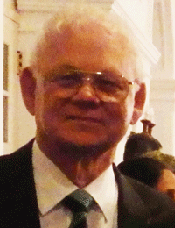 |
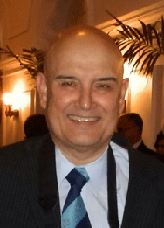 |
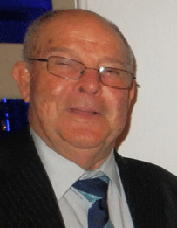 |
|
| Warwick De Kretser | Nigel Christoffelsz | Michael Christoffelsz |
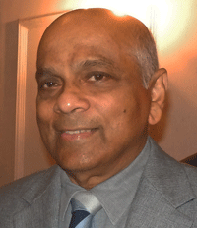 |
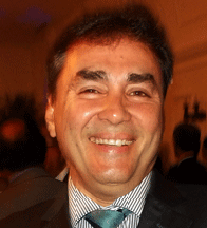 |
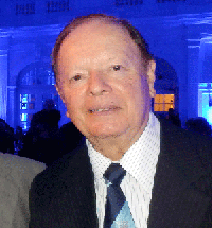 |
|
| Ajitha Wijesinghe | Navin De Silva | Arthlow Chapman |
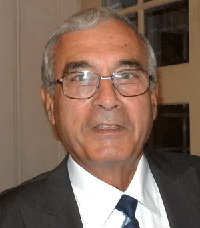 |
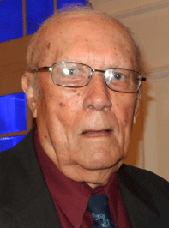 |
 |
|
| Glen Reimers | Norman de la Harpe | Norman at Wesley |
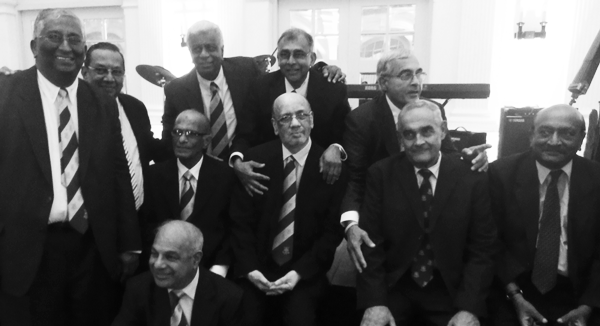 |
| L to R: Afghar Mohideen, CT Rodrigo, MN Mihlar, Sarath Wickramaratne, L.C.R Wijesinghe and Darrell Maye, Glen Reimers, Kenneth De Silva, Muthuvaloe and Everard Schoorman seated in front |
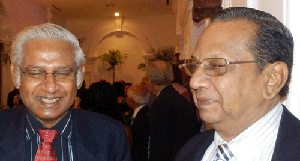 |
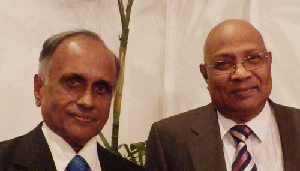 |
| Hamilton Amerasinghe and CT Rodrigo | Jayantha (Jardi) De Silva and Ranjit Alwis |
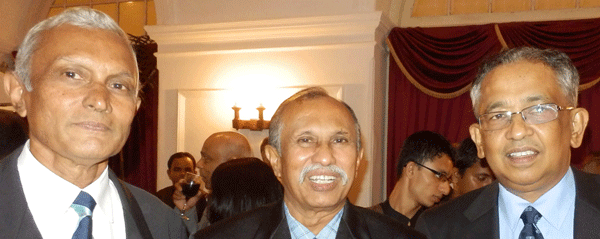 |
|
| ?? , Ransiri De Silva and Sarath Algama |
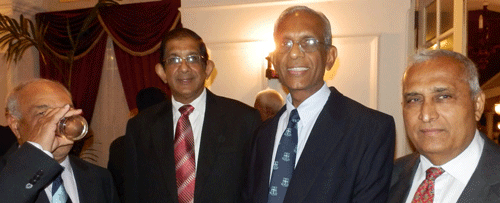 |
| Thirsty Everard, Priyanath Fernando, ?? Fernando and Dr. Sarath Ranasinghe |
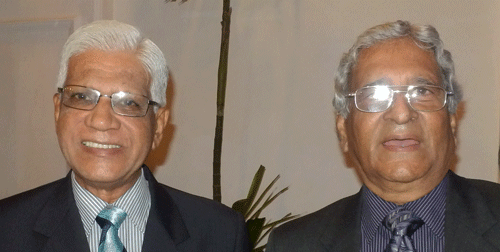 |
| Rienzie Wijetilleke and SK Seneviratne |
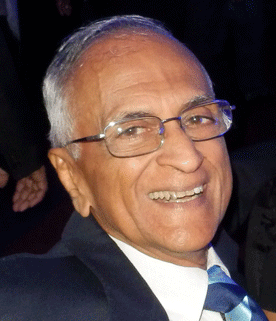 |
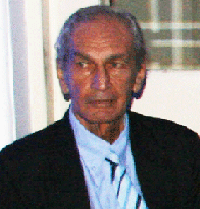 |
| Ranjit Seneviratne | Neil Gallaher |
 |
| Darrell Maye, KD Kodituwakku, Sarath Wickramaratne and Milroy Muthuvaloe |
Photo L to R:
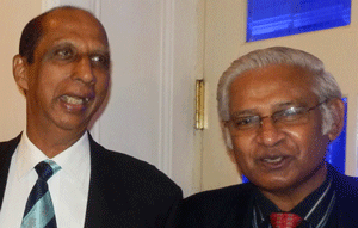 |
 |
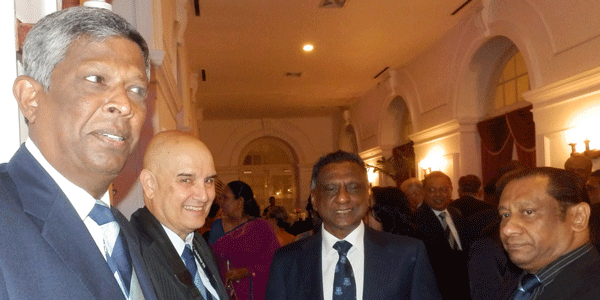 |
| Ramakrishnan, Nigel Christoffelsz, Wimal De Silva and Nihal Peiris |
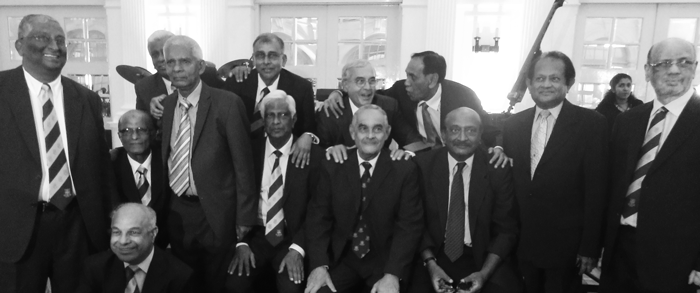 |
| Afgar, Mihlar, Everard Schoorman (in front) Sarath Wickramaratne behind Derryck Ingram, Darrell Maye behind Lucky Goonetilleke, Glen Reimers and Kenneth De Silva, Kodituwakku and Milroy Muthuvaloe, A. Thevathasan, Lalith Wijesinghe |
Photo: L to R:
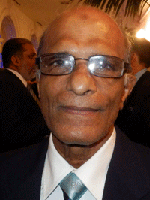 |
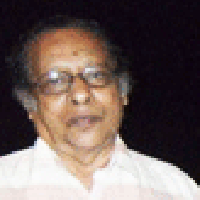 |
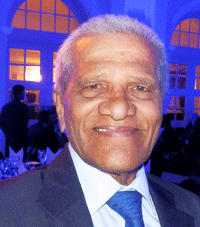 |
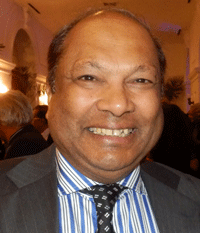 |
| M N Samsudeen | Leyton Vanderput |
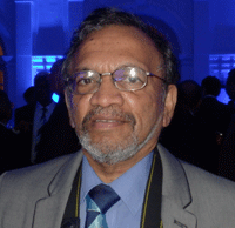 |
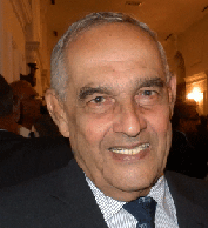 |
| Iyar Muthu | Kenneth De Silva |
Photos kindly sent to me by Peter Christie
 |
| L to R: Sarath Wickramaratne, K Kodituwakku, Milroy Muthuvaloe, CT Rodrigo, MN Mihlar, Peter Christie, Upali Perera, Mike Christoffelsz, Everard Schoorman, Darrell Maye, Bill Deutrom, L.C.R Wijesinghe |
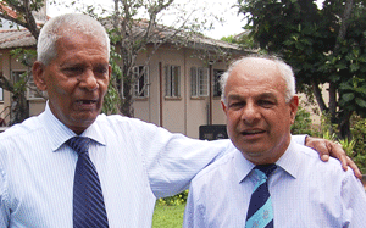 |
| Derryck Ingram and Everard Schoorman |
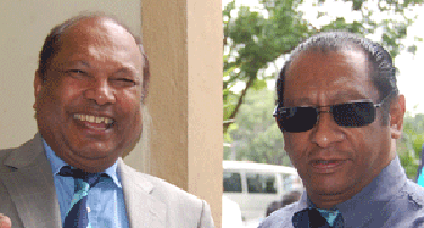 |
| Leyton Vanderput and Nihal Peiris |
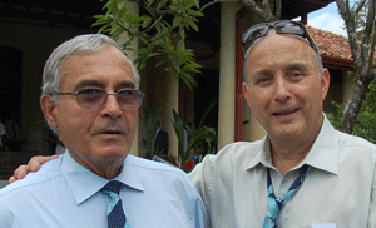 |
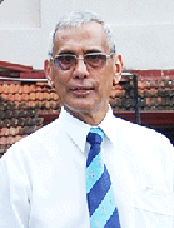 |
| Glen Reimers and Erroll Smith | Basheer Musafer |
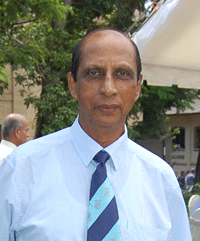 |
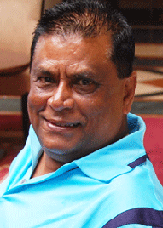 |
| OK Hemachandra | Reggie Bartholomeusz |
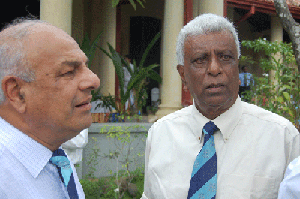 |
|
| Everard Schoorman and Sarath Wickramaratne |
Photos kindly sent to me by Nigel Christoffelsz
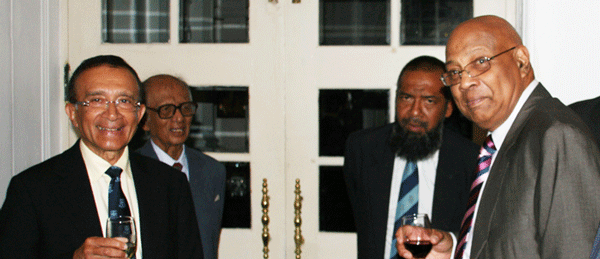 |
|
| Nihal Amerasekera and Ranjit Alwis with friends |
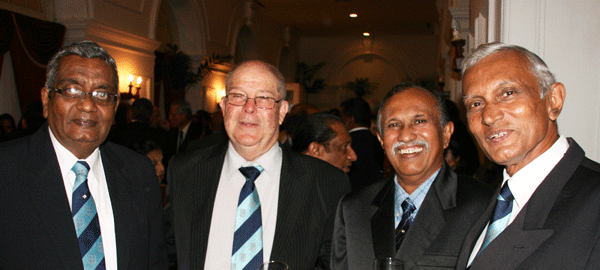 |
| Mike Christoffelsz and Ransiri De Silva with friends at the Galle Face Hotel |
 |
| Senthil Sinniah, Neville Perera, LR Goonetilleke and ND Amerasekera with Michael Christoffelsz in the background watching the game from the OWSC |
 |
| Nihal Amerasekera, Ramakrishnan, Senthil Sinniah, Nihal Peiris, Leyton Vanderput, Nigel Christoffelsz, Reggie Bartholomeusz, Michael Christoffelsz |
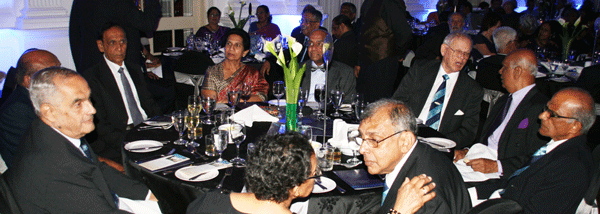 |
| Dinner at the Galle Face Hotel |
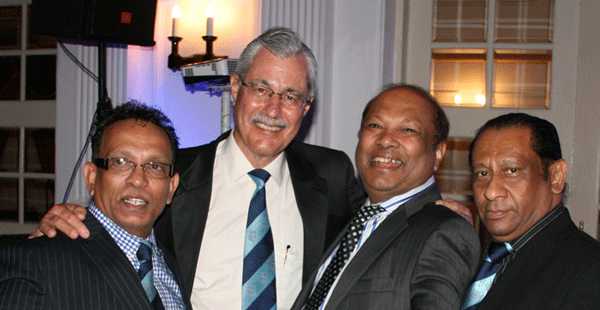 |
| The Four Aces -- At the Galle Face Hotel |
Photos kindly sent to me by L.C.R Wijesinghe
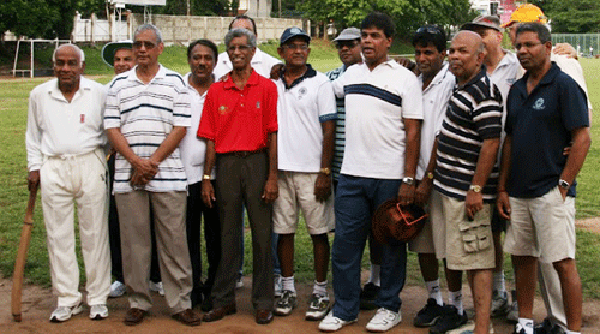 |
| Cricket match at Campbell Park |
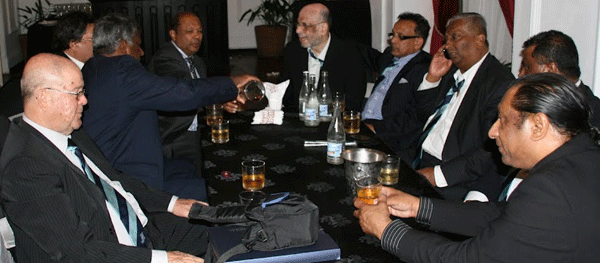 |
| A warm -up drink at the Galle Face Hotel |
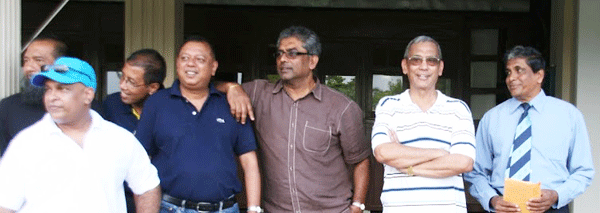 |
| Spectators at Campbell Park |
Photos kindly sent to me by Neil Harvey
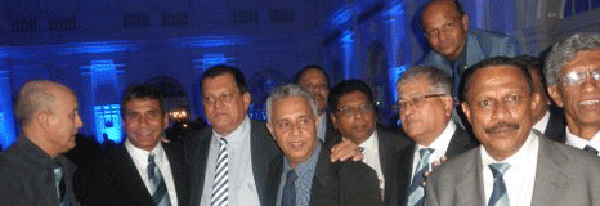 |
|
| Erroll Smith, Jayantha Wijemanne, Wilhelm VanDort, Geethal Peiris, Oscar Dissanayake, Renee Devadasan, Neil Harvie, Ajith Wijayasinghe (behind), Mahes Samaraweera, Rohan Wickramaratne | |
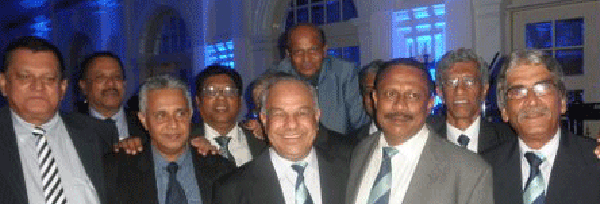 |
|
| Wilhelm Van Dort, Oscar Dissanayake, Geethal peiris, Renee
Devadasan, Evarad Schoorman, Ajith Wijayasinghe(behind), Mahes Samaraweera, Rohan Wickramaratne, Granville Harmer |
|
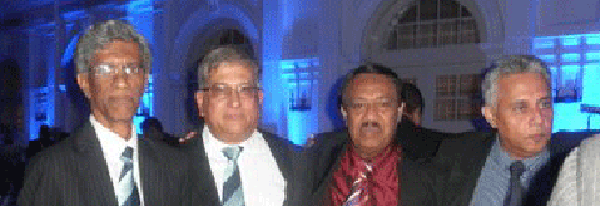 |
|
| Rohan Wickramaratne, Neil Harvie, Anver Cader, Geethal Peiris |
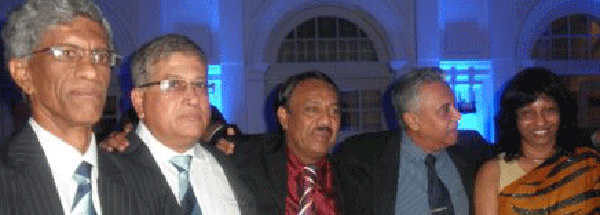 |
| Rohan Wickramaratne, Neil Harvie, Anver Cader, Geethal Peiris and Wife Priyadharshani. |
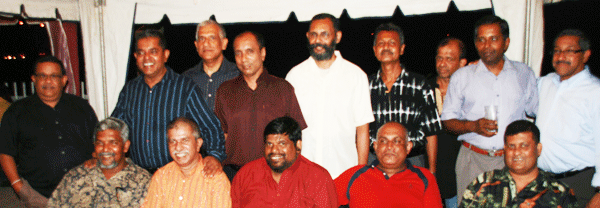 |
 |
 |
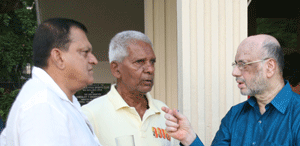 |
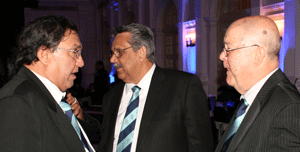 |
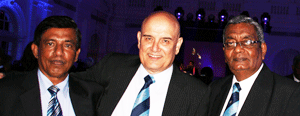 |
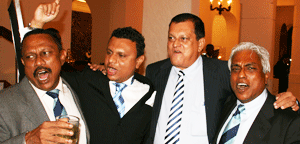 |
 |
 |
 |
 |
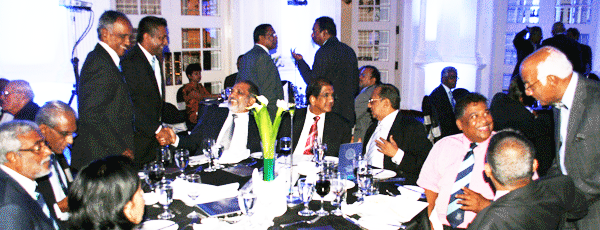 |
 |
 |
 |
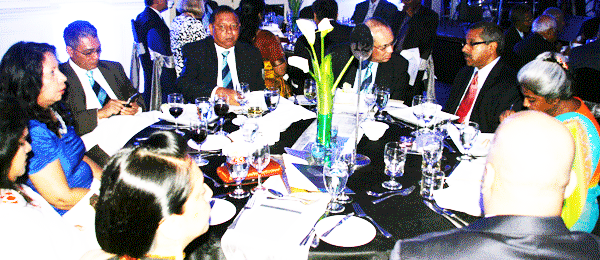 |
 |
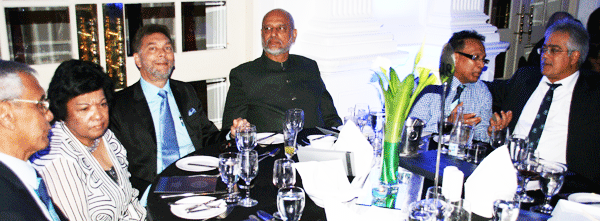 |
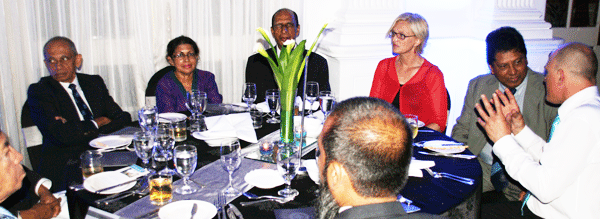 |
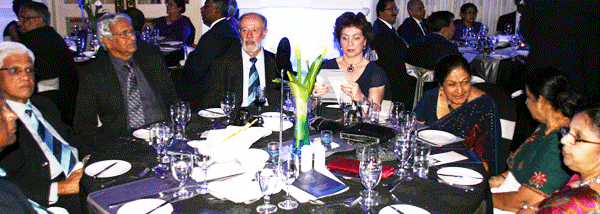 |
 |
 |
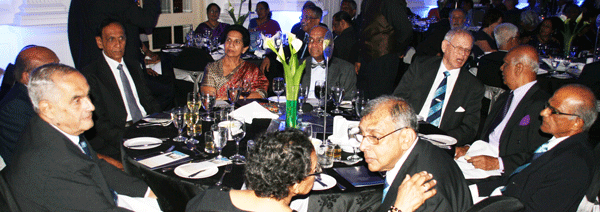 |
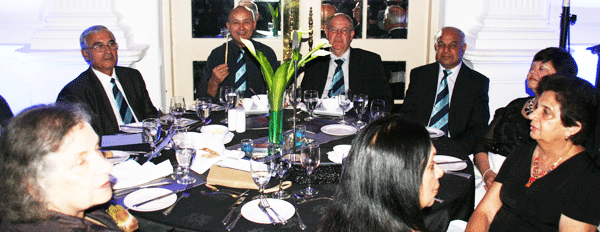 |
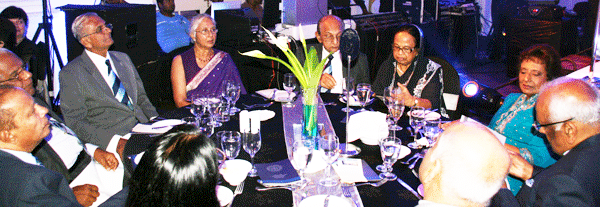 |
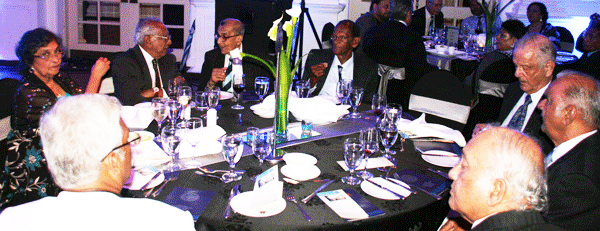 |
Around the world
Via the Internet.
wonderful success and an “emotional one” on the information I received
yesterday.
When I first received a message that the Remembrance Service was to be
held and of the arrangements that were being made, I realized that it
was to be a time of remembering with gratitude the gallant efforts of
soldiers who died in conflicts. It was a time to think of all those
who lost their life in a very general sense. There was also to be the
specific element of the service in acknowledging Wesleyites, who sadly lost their lives for their Country.
I also recognized that the College was also taking the initiative of
remembering all Wesleyites who had passed away. In doing so, the New College Principal Dr Shanti McLelland was to give us as Wesleyites
who are fortunate enough to still be alive, the opportunity of
including our own list of those who were special and dear to us that
had passed on. I am certain that the great majority of “Old Boys” applaud the step taken by Dr. McLelland in helping us, (especially
those living in distant areas of Sri Lanka and abroad), to become a
part of the Remembrance Day Service.
Cricket for College in the late 1890s is still regarded as the finest
batsman produced by Wesley. M. Sathasivam is in my view the most
stylish batsman in the world and it would take a proper combination
of the great Garry Sobers ,Barry Richards of South Africa, Tom
Graveney of England, Sri Lanka’s own Lionel Jayasuriya and the
qualities of the finest oriental dancer to produce another “Satha”.
These two Wesleyites are indeed special to me because as a 12 year
old, the newspapers carried stories of me as a promising young Wesley
cricketer who was expected to follow in the footsteps of the great
C.E. Perera and M. Sathasivam. It was a tall order, to follow in the
footsteps of these two great Wesley Cricketers but I regarded that
journalistic assessment as flattering. It is no wonder then that I
wanted to remember them on the 11th of November.
I am sure Dr. McLelland will again invite us to submit or resubmit
names to be included at next years Remembrance Day Service. The
current list will naturally become a part of record.
Ties that bind us to our happiest time;
Which in strange and miraculous ways
Keeps alive days that were once yours and mine.
With affectionate good wishes
Bryan Claessen
Since early 2011 when the proposal of a past cricketers reunion was floated my interest was aroused. Even though I never played cricket for the first team in College I had a lot of good friends that did, and this was an opportunity to rekindle friendships and walk down memory lane.
Visiting the UK and meeting with some of the old Wesleyites in London thanks to the hospitality of Wimal de Silva made it a must to attend the reunion. To this end I knew that brother Michael and Darrel (to a lesser degree, he was 12 years when we left for OZ) could be talked into joining me in this adventure. At first the youngest was keen but the older had reservations. But thankfully his wife saw the light and asked me to make the necessary arrangements. Darrel had other commitments and had to cancel, so Michael and I were booked to attend the reunion.
 Our trip to Wesley was nothing other than a good old trip down memory lane and rekindling of old friendships. It was great to catch up with our entire friend’s, classmate’s, boarding school pals from fifty years ago. It was like we had never been apart. I was lucky that I had met most of them in 2011 when we visited the UK and Sri Lanka.
Our trip to Wesley was nothing other than a good old trip down memory lane and rekindling of old friendships. It was great to catch up with our entire friend’s, classmate’s, boarding school pals from fifty years ago. It was like we had never been apart. I was lucky that I had met most of them in 2011 when we visited the UK and Sri Lanka.
The assembly on Thursday the 6th of September brought back so many memories of my school days but from a different prospective. We had swapped places with the students, we were the guests. The way we were treated left me with a sense of pride in my school. To see the difference from our days, when the only boys who had blazers were the cricket team, to see the prefects perform their duties in a well drilled manner dressed in their blazers would make any old boy proud.
The assembly was conducted in the manner we were used to, with a few exceptions from our time. The entertainment was great, it is good to see that the College has expanded the cultural curriculum to include bands, choirs, traditional culture, while we only had a choir, the two different bands at breakfast was a delight to see, as there was pride in their performance.
The presentation to all the overseas attendees was a pleasant but welcomed surprise, always wanted to be presented anything at assembly. And the finale of the College song sung in gusto by all present, followed by Zum Zum Zacky from the boys at the back made the hairs on the back of ones neck stand up in pride.
The Friday night dinner was another highlight and meeting my very good and old friend Conrad Fernando made the whole trip worthwhile, not saying meeting all my other mates was less of a highlight. The big event again was the College song when Reggie Bartholomeusz in his wisdom inviting the entire old boys on to the stage for the rendition. We all were just hoping the stage would hold the lot of us and not collapse. Our wish was granted. The most relieved person after the dinner was Afghar who relaxed with friends over a few drinks?
The cricket match and the camaraderie shared after were also enjoyable.
Our trip had come to an end and the memory will last with me and I am sure with Michael till we part this life.
Off the College scene it was good to get together with the Australian and English contingent and relax over a bit to eat and a lot to drink and share our stories. The hospitality of the Sir Lankan old boys were second to none, we had entertainment for the whole of our stay. It is good to know that a Wesleyite is never with out a friend where ever they go on this planet; it is a part of our heritage and culture.
Lastly huge thanks to Lalith, Afghar and committee for their efforts to make it happen.
Preamble
Wesley College, Colombo was founded 138 years ago. It is an institution which has producedmany outstanding citizens of Srilanka during this long period. Of the many outstanding productsSir Oliver Goonetilleke and Sir BaronJayatilleke are two who needs mention and reminding.Wesley has also been very proud of her sporting achievements and has produced several sportsmen who have represented the country in their different disciplines.M.Sathasivam was the most outstanding, having represented both Srilanka and Malaysia at Cricket.
Purpose of Event:
As a Celebration of Wesley's contribution to society and as an acknowledgement of the role she has played in moulding the lives of her products, a reunion is being organized for All Past Wesleyites with an emphasis on Past Cricketers, by this committee on 6,7 and 9 September 2012 in Colombo.From an original concept of a reunion for past Wesley cricketers this event has grown into onewhich encompasses all Past Wesleyites from every walk of life.
Special College Assembly:
The program kicks off on 6 September 2012 with a special school assembly organized by the Principal,staff and students of Wesley College commencing at 8.30am.The distinguished and honoured guests will be led by the Principal and Staff inprocession to the Highfield Hall to their allocated seats in the body of the hall. The Principal, Chairman of the Methodist Church Rev. Dr A.W. Jebaneson, Chaplain of the school, Past Teachers and the Guest Speakers will be on stage.
The Master of Ceremonies for the Assembly will be Kumar De Silva a well-known broadcaster and media personality who isa proud product of Wesley.The proceedings will commence with a prayer by the Chaplain. The Principal will next address the gathering.
All overseas attendees will be presented with an engraved memento on this occasion, donated by the school.Four past Cricketers who are not with us today will be honoured with the award of plaques,accepted by their wives and daughter, who are special attendees at the assembly. In addition Past Wesley 1st XI Cricketers who have completed 50 years since representing Wesley will be felicitated with the award of a specially designed " Double Blue Scarf".Dr Nihal Amerasekara who is a distinguished Past Wesleyites domiciled in the UK will be awarded a special plaque for his untiring and dedicated services as Editor of the "Double Blue International" website.
Norman deLa Harpe a distinguished past product of Wesley, will next speak on behalf of the large contingent that has arrived from the Australia Region. Wimal De Silva a past President of the OBU (UK) will next address the gathering representing the guests from Europe and USA. The final address will be by Edmund Dissanayake whose name is synonymous with Wesley,representing the guests from Sri Lanka.The College choir, and Western Band having won many All-Island honours will perform to the guests. Proceedings will be brought to a close with renditions of the College Song and National Anthem. Each participant will be provided with a copy of the programme.
The Principal will host all guests to a traditional Sri Lankan breakfast at the historic Principal's Bungalow at Karlsruhe. Past Teachers too will be included in the guest list. A tour of the new facilities at the school will follow which includes a spanking new swimming pool opened in March this year.
Gala Dinner:
7 September 2012
will presumably be the highlight of the program which is a Dinner Banquetat the Galle Face Hotel for 225 persons. The Galle Face Hotel was selected specially to suit the mood for the occasion where tradition,history and nostalgia is found. The entire evening is in the capable hands of Imran Saibo, a foremost event planner in the island who is a proud product of Wesley. Continuous music will be provided to the diners by a string quartet .The vocalists for the evening will be Shenelle Fernando ( The daughter of a past Wesleyites) and IshanBahar. .The organizers expect it to be a pleasant and memorable evening.Tasteful and elegant hopefully.
The 225 guests will include Past Wesleyites who are leaders from Business,Professionals and Others from various walks of life. 20 past Captains of Cricket and more than 70 Past Cricketers who represented the First Team will be present.The attendees will comprise over 70 past Wesleyites domiciled in countries such as Australia, United Kingdom,USA, Europe and the Far East, who will be arriving specially for this event.Wesley's Past Cricketers who have donned National Colours will be honoured that evening together with the Editor of the book titled "Wesley's Cricket History ,1824-2012"
The dinner will commence at 7.30pm with cocktails. The programme for the evening will commence with a Welcome Speech followed bya speech by the Principal. The guest speaker will be Alan Pathmarajah who is a proud and distinguished product of Wesley domiciled in Singapore. He is a consultant to the Government of Singapore and a Chartered Accountant by profession. Proceedings will come to a close with a Vote of Thanks by the convener of the event.Admission to the dinner is by ticket priced at Rs.3500 ea. Dress Code; Lounge/National.
Launch of book titled "Wesley's Cricket History 1892 - 2012"
This book painstakingly compiled and edited by Jeremy Brohier a past cricketer and a past President of the Old Wesleyites Sports Club is a milestone in the annals of the school's history.It will be launched at this event and will be available for sale at Rs 2500 per copy. It certainly will be a keepsake for the Cricket enthusiast and historians of the game.
The first copy of this book will be presented to H.E. The President of Sri Lanka at a ceremonyat the President's office during the last week of August.
It is interesting to note that DM Rajapakse a cousin of the incumbent President was a Past Wesleyite who represented the 1st XI at Cricket in the 1916. Also the first Ceylonese Governor General of Sri Lanka,Sir Oliver Goonetilleke appears in one school cricket team photographs of 1910 though his playing for the team is not recorded.
These are interesting facts that can be gleaned from this book.
Cricket Match and Social:
9 September 2012
will be the finale where a fun cricket match has been organized at Campbell Park which is Wesley's hallowed grounds. This match will be followed by a social at the uniqueOld Wesleyites Sports Club adjoining the Pavilion at Campbell Park. It has a refurbished old railway carriage as the centerpiece.The organizers expect the attendees to have a relaxed,less formal evening where spirits will run high. Food will be on sale at live action stations catering to many different types of cuisine. A calypso band will provide music with a typical Sri Lankan flavour.
Conclusion
This event is being organized to foster fellowship, renew old ties, make new friends and reminisce old times amongst past Wesleyites and to acknowledge and celebrate what Wesley has contributed to mould the lives and character of each and every Past Wesleyite present.
It all began when Robin visited Sri Lanka in 2006. I met Robin with his family at the OWSC. Where I casually told Robin that I had put in my papers to migrate to New Zealand. He told me, once I was in New Zealand, I should visit him and spend a few days with him in Melbourne. It always gave me immense pleasure whenever possible to catch up with my past school buddies. But I could not fulfil his invitation due to his untimely death. At the time of his death, I wrote to Trilby how sad I was to hear that he had moved to his final resting place. Trilby said although Robin would have loved to have had me in his home, during his heydays that invitation was still open. She also wrote to me whenever I made it to Melbourne, she would take me to visit Robin’s grave. From then onwards I made up my mind that someday I will visit his grave and pay my respects.
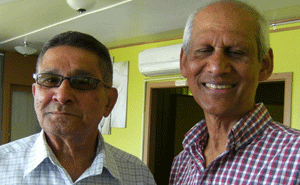 |
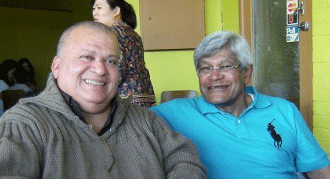 |
|
| Annesley Young and Lucien Fernando | Keith De Kretser and Ranjit Aaron |
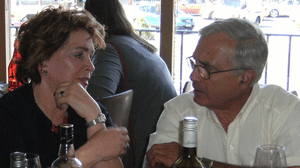 |
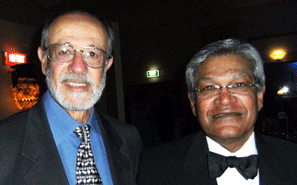 |
| Gillian Leembruggen and Glen Reimers | George Siebel and Ranjit Aaron |
On 15th, November, 2012, my wife and I arrived at Melbourne Airport and were picked by Trilby and taken to her neat & tidy home. We spent the next 4 days, enjoying the wonderful hospitality. We felt so homely at her place. That same day Trilby had invited Harold Juriansz and Everard Schoorman to visit us. It was almost 40 years since I last met Harold, that too was when he was in school. The following day we were taken by Trilby to Robin’s grave. My heart skipped a beat, when I stood in front of my dear sincere friend’s grave. At least I had the fulfilment of having made it. My thanks to Trilby.
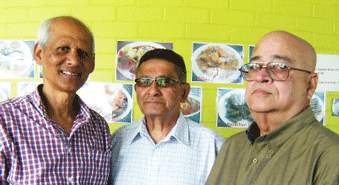 |
| Lucien Fernando, Annesley Young and Trevor Collette |
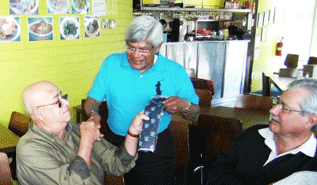 |
| The Presentation |
 |
|
| George Siebel, Reg Bartholomeusz, Keith De Kretser, Lucien Fernando, Ranjit Aaron, Trevor Collette, Bill Deutrom, Annesley Young, Glen Reimers |
The following day Trilby had arranged for us to grace a dance floor. A dance that was organized to raise money for the Transit Home of the Cancer Hospital, Maharagama. At this dance I was privileged to meet a few more Old Wesleyites. Jackie John Carnie now a leading doctor in Melbourne, George Seibel, who was much senior to me at school. William Deutrom, Trevor Collette, two very close buddies of mine. The other old Wesleyite was Beverly de Neice.
18th, November will be a day I will remember for a long, long time. Trevor Collette, William Deutrom, Keith de Kretser and Trilby had organized for me to meet with many more Old Wesleyites over a luncheon at one of the Malaysian restaurants in Melbourne. My wife Rita & I enjoyed the wide spread of delicious food and the array of drinks. Those of whom I met since leaving school were, Annesley Young, Lucian Fernando, Keith de Kretser, George Seibel and Glen Reimers. Others present were Reggie Bartholomuez and wife, Glen Reimers & wife, George Seibel & wife, Trevor Collette & wife, William Deutrom, Annesley Young, Lucian Fernando and Trilby. Before the drinks took the better of me, it was time for me to read a message sent by Dr.Nihal Amerasekera from UK. Where in he sent his good wishes and a speedy recovery to Ronnie Henderling who was in a Brisbane hospital after a bad stroke. He sent his best wishes to the brotherhood of all old Wesleyites in Australia.
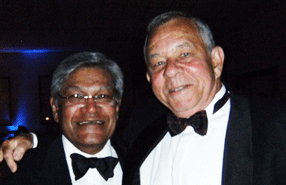 |
| Ranjit Aaron and Beverley De Niece |
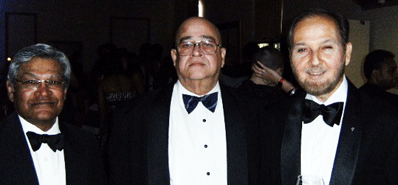 |
| Ranjit Aaron, Trevor Collette and John Carnie |
Those present gifted me a Wesley College tie as a memento. I take back fond memories of the Wesleyites in Melbourne, hoping to make it again in the near future. I now move over to Perth to spend Christmas and New Year with my daughter & family. During my stay in Perth, I hope to catch with more Old Wesleyites. Wishing all those who I leave behind in Melbourne a Happy Christmas and a very Happy New Year 2013.
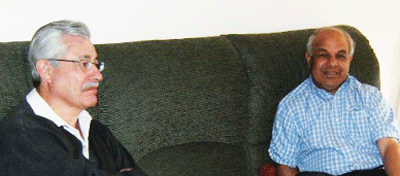 |
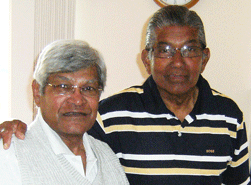 |
| Bill Deutron and Everard Schoorman | Ranjit Aaron and Harold Juriansz |
It was a dreary gray day in London in the middle of winter. Dr McLlelland wanted to meet with the OBU –UK on his way to Colombo from his home in Toronto. Azahim Mohamed and his wife invited the Principal and some old boys to their lavish home in Edgware. Our grateful thanks go to our generous host for providing a friendly atmosphere and a sumptuous meal.

Absent from the photo: MIM Lhahir - late arrival
We hugged and greeted each other and dispensed with the stuffy formalities. At the lunch Ramakrishnan, Brian and Peter exchanged jokes which generated much laughter. The light hearted banter and Peter’s customary profanities kept us all in stitches.
Senthil Sinniah who is a former President of the OBU-UK was unable to attend as he had caught the winter lurgy that was sweeping across Britain. He had sent his apologies to Azahim and the Principal.
Nalin Perera is young and enthusiastic and has made the OBU-UK a popular organization working towards helping the alma mater. The recruitment of many young old boys has revitalized the Union. The seniors still have a role to guide and steer the organization when needed. It was heartening to see the OBU-UK more vibrant than ever.
The Principal spoke to us briefly what has been achieved so far and also of ways to raise funds for important projects at Wesley. He was delightful company and a particularly attentive listener. His evident self-confidence is immediately imposing. He can also turns on the charm and mesmerize the audience. He is not afraid of failure, of difficulties, of obstacles, of confrontation and assumes everything is possible.
The achievements since Dr McLelland’s arrival at Wesley as its Principal are too numerous to mention. We stand in awe at the transformation.
- Re-organisation of the Welfare Committee and the finances of the school
- Improvements in education and examination results
- Improvements in the sports facilities and results
- Return to our status as one of the finest schools in the Island
- Maintain the buildings in good repair
- Building a swimming pool within the school premises.This has been our dream for many years but Dr McLelland brought a new dimension of immediacy to the project.
These are few of the triumphs that come easily to mind. It would be fair to say there was never a dull moment. These commendable results were not just the consequence of the actions of a single person, as Dr McLelland was quick to point out. The old boys, students, teachers and parents contributed generously and their hard work and enthusiasm has paid rich dividends. But of course all this would not have been possible unless the foundations of the pyramid had been properly built for which he played a key role.
 Dr McLelland walked into the troubled waters at Wesley knowing well the task ahead. At school the Principal is under constant scrutiny. He came to the job with a seemingly perfect CV and has lived upto his reputation as a hard man. He is both terse and at times impatient with debate. He could be brusque. In the current climate this is what is required to manage the school well. This is also a recipe to make enemies leading to fractured relationships. There must be mutual tolerance and respect. After all they are all working for the welfare of the school. As for the Principal, one must appreciate the thoughtfulness that lay behind the tough exterior and the determination to act on his beliefs for the greater good of Wesley. Beneath his vibrant energy was a thoughtful and considerate person. Overall, the Principal's achievements have been magnificent and I hope they will be recorded for posterity and remembered.
Dr McLelland walked into the troubled waters at Wesley knowing well the task ahead. At school the Principal is under constant scrutiny. He came to the job with a seemingly perfect CV and has lived upto his reputation as a hard man. He is both terse and at times impatient with debate. He could be brusque. In the current climate this is what is required to manage the school well. This is also a recipe to make enemies leading to fractured relationships. There must be mutual tolerance and respect. After all they are all working for the welfare of the school. As for the Principal, one must appreciate the thoughtfulness that lay behind the tough exterior and the determination to act on his beliefs for the greater good of Wesley. Beneath his vibrant energy was a thoughtful and considerate person. Overall, the Principal's achievements have been magnificent and I hope they will be recorded for posterity and remembered.
The school has been transformed after a 30 year spiral of decline. We have been told the Principal’s visa has not been extended beyond the end of January 2013. This news comes as a shock and we are deeply disappointed. As no good reasons have been given for refusing the work visa, naturally there is much speculation. There are those who believe that a few old boys are responsible for this. If true, this is a tragedy and a disaster for Wesley. I live in the UK far away from the action in Colombo and do not wish to lay blame on anyone or any group. I hope for restraint and wish that commonsense will prevail. Let the old boys in Colombo rally round and do whatever is possible to extend the Visa for another year.
I understand that Dr. Shanti McLelland is willing to continue on for another year or two and complete his mission. He is also willing to recruit a person who will be able to carry on the good work when he is gone. We have a duty of care to the students who depend on the school for their education. As old boys we have a commitment to help the school to maintain those customs and traditions and safeguard our rich heritage.
As all good things must come to an end we said our thanks and goodbyes and departed hoping to keep in touch. We hoped it wasn't the "Last Supper" but the continuation of a beautiful friendship. I left school in 1962 but am still proud to be a Wesleyite.
In the past 50 years I have witnessed the highs and lows of our beloved school whilst furious debates raged on. There was a seamless flow of intriguing stories of poor management and financial irregularities. It is a murky world out there. Whenever Dr McLelland decides to leave the job and return to Toronto I hope he will write his memoirs. This would give us a compelling insight into the workings of the school and its management. A balcony view of the big egos and personalities who enhanced our image and also stifled progress. Everyone will want to know why running Wesley College is such a gruelling task. An ambitious and forthright Principal seem to disturb some old boys who wield power. The job requires an educationist who has a maverick spirit to take on the opposition and a radical vision to move the school forward. There has been three years of "bruising battles" and it is not a job for the faint hearted. Dr McLelland didnt look like a person traumatised by his "ordeal". He was positive and bullish about the future of the school although his visa issues remained a mystery. This leaves the school with an ugly silence and an uncertain future.
Wesley College has existed since 1874. There is a worldwide brotherhood of Wesleyites who have brought honour to the school and have helped to keep the school alive. .
The Big Reprieve
The upheaval and the turmoil at Wesley College seems to be over with the extension of the Principal's visa for further period of 2 years from the 31st of January 2013. I hope Wesleyites can now rest easy and allow the Principal to get on with managing the school. Lesser characters might have caved in and faded out by now. As we pause to ponder the soul-less doctrine of non -negotiation of the 'warring' factions we sincerely hope peace will prevail. A return to the dark days of strife and turbulence could have calamitous consequnces for the school we all love.
Quo Vadis:
What of the future of the school?
- Is the Methodist Mission in Sri Lanka a fit and proper organisation to manage and run the school?
- Should we hand over the school to the Government like Richmond and Kingswood, which were the other Methodist Institutions?
- Is Privatisation a viable option?
- Should we continue to run Wesley College as a Government Assisted School, as we do now?
Links to further reading
7th April 2013
A Blast from the Past from December 1956
On the names in blue for more information
| S Soundravel | NGA Fernando (Nihal) | M Masilamani | HCU Peiris(Upali) |
| R. Ratnavel | Joseph Ramanathan | Nihal D Amerasekera | AC Wijetilleke |
| Daya Peiris | Boris Schrader | Godfrey Roberts | Ronald Asirwatham |
| HAL Kumarasiri | SW Jayasinghe (Senaka) | Senthil Sinniah | Milroy Bulner |
| SD Fallil | CA Fernando | M Wickramaratne(Mynah) | Jay Wanigasekera |
| A Kandasamy | HA Carnie(Hilary) | Nimalsiri Rosa | Kenneth De Silva |
| Vere H de Soysa | Maurice Weerapermall | A .S P Ranasinghe (Asoka) | |
| C.S.Gnanakone | Kenneth Anthonisz | Mohideen | E L V Mendis |
| R Somanathan | R Smith | R Upali Dias | Arthur d'with Barbut |
| A S Murugan | A N Mariyanayagam | Rajah De Silva | H G Wright |
| Bryan Weerapermall | T Kanagarajah | D Gunatilleke | M Christoffelsz |
| Upali Siriwardene | Glen Scharenguivel | Lasantha Fernando | A K James |
| S Wimalaratne | J M Kumarasamy | John Carnie | D Thurairajah |
| P D P Mendis | R Shanmuganathan | Nigel Christoffelsz | Kantha De Silva |
| Ranjit Rosa |
| Cecil d'with Barbut | K Nelson Jayasinghe | RSC Fernando (Somasiri) | M Abdul Razark |
| Shirley Ranasinghe | S K De Silva (Kalinga) | KAG Thilakapala | WSL De Zoysa |
| Wilfred Thalakumbura | D N Fernando | G I Rodrigo | Nalendra Abeysuriya |
| S Wijayarathna |
| Shirley Ranasinghe | Lakshman Gunaratne | M A Razark | HW Anthonisz |
| Godwin Roberts | Joy Goonewickrama | Nelson Jayasinghe | |
Links to further reading
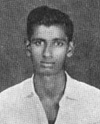 We all looked forward to the announced visit of Radley Claessen and family to Sri Lanka with much anticipation and excitement.In his own words it might be his last visit to the country of his birth. The visit was bound to be filled with nostalgia and emotion. He was to spend just eight days in the island with his two daughters, Debra & Patsy ,son-in law and two grand daughters. Radley is the only surviving member the famous Claessen Brothers of Wesley who has made an indelible mark in Wesley’s cricketing history. The late Brian, Herman with Radley were cricketing legends of Wesley.
We all looked forward to the announced visit of Radley Claessen and family to Sri Lanka with much anticipation and excitement.In his own words it might be his last visit to the country of his birth. The visit was bound to be filled with nostalgia and emotion. He was to spend just eight days in the island with his two daughters, Debra & Patsy ,son-in law and two grand daughters. Radley is the only surviving member the famous Claessen Brothers of Wesley who has made an indelible mark in Wesley’s cricketing history. The late Brian, Herman with Radley were cricketing legends of Wesley.
A get-together was held on 18 April 2013 at 7.00pm at the OWSC to welcome Radley and his family, by many of his past Wesley contemporaries and well-wishers. It was a hot and humid evening and the lawn of the OWSC was arranged exclusively for this event. Present amongst his past colleagues were Prof. Mahroof Ismail and his charming wife Jezima, Neville Weerasekere & his wife, Fred Abeysekere and Wife, Colonel S Musafer and wife, Edmund Dissanayake & wife ,Herby Felsinger, M.N.Samsudeen, P.B. Herat, H..B.Tametigama, Richard Dwight together with B.M.N.Jurangpathy, Vivian Jayaweera, O.K.Hemachandra, Neville Perera,M.N.Mihilar, Kenneth De Silva, Lucky Goonetilleke, Derrick Ingram,C.T.Rodrigo, Milroy Muthuveloe , Sarath Wickramaratne, M.A.P.Fernando ( former Principal) and L.C.R Wijesingha.
 Once the initial pleasantries were over and guests well settled the evening commenced with a speech by P.B. Herat who welcomed Radley and family to the Club. He recounted many anecdotes during their schooldays referring to this very special attribute of Radley being the 1st XI Cricket Captain, Senior Prefect and Games Club Secretary of Wesley in 1952.
Once the initial pleasantries were over and guests well settled the evening commenced with a speech by P.B. Herat who welcomed Radley and family to the Club. He recounted many anecdotes during their schooldays referring to this very special attribute of Radley being the 1st XI Cricket Captain, Senior Prefect and Games Club Secretary of Wesley in 1952.
Next to speak was Richard Dwight who traced Radley’s performances at school and thereafter.It was well researched and provided many details of his achievements. Edmund Dissanayake next spoke about the contribution Radley and his brothers made to make the early 1950’s to be remembered as the Golden years of Cricket at Wesley. Radley made an emotional response and thanked everyone for being present that evening.
It was a trip down memory lane for him and was most likely his final trip to the land of his birth. He also stated that the years he spent at Wesley were the most formative and enjoyable periods of his life. Once the speeches were concluded there was much camaraderie and good cheer with a free flow of food and wine. A tasty Srilankan dinner of Hoppers,Stringhoppers, and spicy curries were on offer prepared by the OWSC chefs. Vivian Jayaweera provided part of the “good cheer.” A special thank you to him. Also a thank you to the OWSC staff and management for making all arrangements.
Everyone present enjoyed this special evening spent with one of Wesley’s past Cricket legends. In his own words this get-together at the OWSC was one of the highlights of his farewell trip to Srilanka.
Photos with the kind courtesy of L.C.R Wijesingha
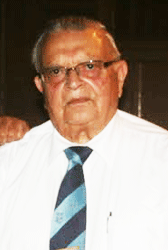 |
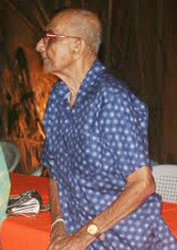 |
| Radley Claessen | Edmund Dissanayake |
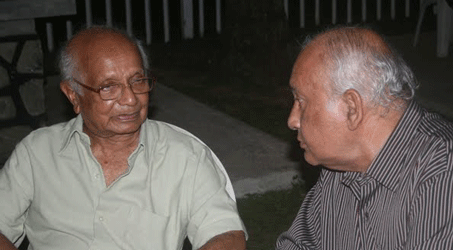 |
|
| PB Herath and MAP Fernando |
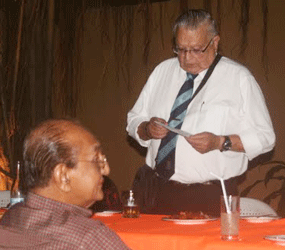 |
|
| Radley and Prof Mahroof Ismail |
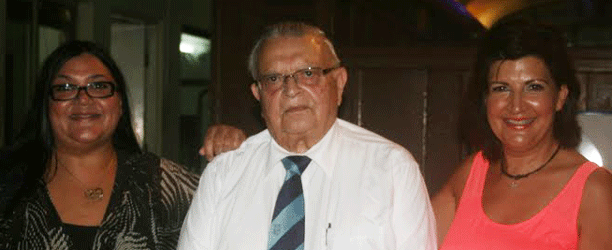 |
| Radley Claessen with his daughters Debra and Patsy |
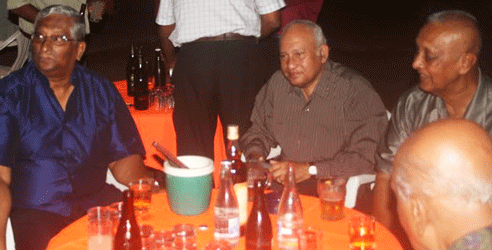 |
| Afghar Mohideen, MAP Fernando, LV Jayaweera and Neville Perera |
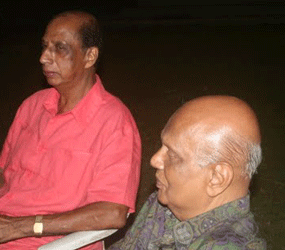 |
| OK Hemachnadra and Neville Perera |
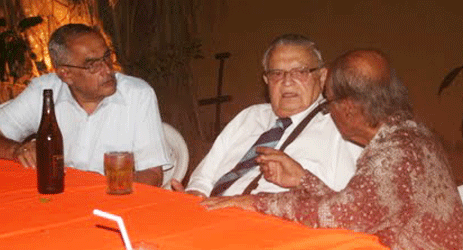 |
| Kenneth De Silva with Radley Claessen and Herby Felsinger |
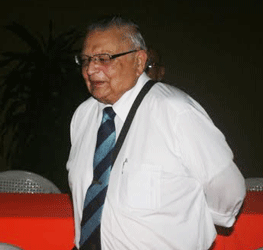 |
| Radley Claessen |
 |
|
| CT Rodrigo, Milroy Muthuvaloe, Derryck Ingram and Sarath Wickramaratne |
 |
| OK Hemachandra, Neville Perera and PB Herath |
 |
| MAP Fernando, LV Jayaweera, OK Hemachandra and Neville Perera |
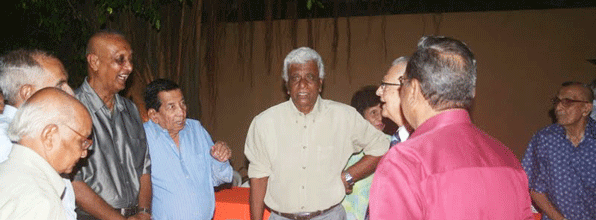 |
|
| PB Herath, Kenneth De Silva, Richard Dwight, Sarath Wickramaratne, Radley Claessen , CT Rodrigo and Edmund Dissanayake |
By Kenneth de Silva

The period 1950 to1953 is often referred to as the golden years of Wesley College cricket. Derrick Mack captained the teams of 1950 and 1951, Radley Claessen captained the 1952 team and his brother late Bryan Claessen, considered one of the finest cricketers Wesley produced, led the side in 1953. The teams were coached by A.V. Fernando (Alban) a respected sports journalist of The Times of Ceylon.
The two Claessens, Radley and Bryan played a key role in the successes at cricket during this period and the youngest brother, late Herman Claessen made his debut to Wesley first X1 cricket in 1953.Brian’s feats while playing cricket for Wesley even surpassed those of Sri Lanka’s cricket legend Mahadeva Sathasivam when he played for Wesley.
Bryan scored four centuries, and with his wily right-arm leg-spin/googly bowling had figures of eight wickets in an innings on two occasions with best figures of 9 for 37 vs. Zahira College in 1950. He was also an excellent fielder in the gully position. Bryan was selected to play for Ceylon against the Australian team captained by Lindsay Hasset in 1953.
The youngest of the five Claessen brothers, Herman was described by former Sri Lanka captain Michael Tissera as: “A great left-arm spinner who would surely have played for Ceylon if not for his tragic early demise following an accident. Sri Lanka would love to have had a bowler of his class in their ranks.”
Radley played for Wesley for three years from 1950, captaining the team in 1952. While not reaching the brilliance of his brother Bryan, he was a dashing right-hand opening bat and a fast and feared opening bowler. He had excellent bowling figures of 6/37 against St. Joseph’s and 6/38 against Royal whilst also scoring a brilliant century (101) against St. Joseph’s in 1951. Radley also played for the Colts Cricket Club and The Vikings Club where A.V. Fernando was coach and for the Times of Ceylon team.
 At Wesley, Radley won many prizes for his oratorical skills despite being a stammerer. Strangely it was another stammerer, Radley’s guru and hero, Cedric Oorloff - first Ceylonese and first layman principal of Wesley, who helped him to control this habit. Oorloff had admitted that he adopted a strong Oxford accent while speaking which helped him to overcome his stammering. This appeared to work for Radley too.
At Wesley, Radley won many prizes for his oratorical skills despite being a stammerer. Strangely it was another stammerer, Radley’s guru and hero, Cedric Oorloff - first Ceylonese and first layman principal of Wesley, who helped him to control this habit. Oorloff had admitted that he adopted a strong Oxford accent while speaking which helped him to overcome his stammering. This appeared to work for Radley too.
However, among Radley’s achievements at Wesley nothing could be compared with the distinction he had of holding three of Wesley’s key posts of cricket captain, senior prefect and games club secretary. On leaving school in 1953, Radley joined the Times of Ceylon where he worked for a period of five years.
Years later, in 1999, when Wesley College celebrated its 125th anniversary, Radley contributed an article to the souvenir marking the event titled ‘Cedric Oorloff – The Man.’ In concluding this article Radley pays a tribute to ‘The Man’ saying: “He worked as hard as his illustrious predecessors with humility, and the desire to advance – not outclass; to improve – not outshine; to develop – not outdo.” Interestingly all those who know Radley, Bryan, Hermon and the rest of the family will agree that these were the exact qualities displayed by the Claessens who were extremely humble despite their brilliance.
Sadly, pseudo-patriots and racial extremists got down to work in the early 1950s and stirred up racial dissension which culminated with the first massive communal riot (after independence) in 1958. This made many people of the minority communities like the Claessens, to correctly see these unfortunate actions as ‘coming events casting their shadows before them’, compelling them to migrate to greener and safer pastures.
Radley did make his mark in Australia ending an illustrious career with the top post of Sri Lankan Consul for South Australia for nine years. Prior to that, he was the Senior Publicity and promotions Officer of the Transport Authority in South Australia. Radley’s dad, late Julian Claessen was a senior engineer who worked for the Government Factory in Kolonnawa. Radley’s mum, Angela and his two elder brothers Douglas and Hector have also passed away. That leaves Radley, at 82 years, as the sole survivor of the immediate family of Julian and Angela Claessen.
Radley’s daughters Debra, Patsy and Desiree together with his sons-in-law and grandchildren had convinced Radley recently that it would be appropriate for him to make a trip back to Sri Lanka, the land of his birth. This could well be, depending of course on God’s will, a last farewell. However, Radley, being strong in the faith, will no doubt continue to: “Praise Him for all that is past, and trust Him for all that’s to come.”
Radley arrived in Sri Lanka on April 17, with his daughters Debra and Patsy, his son-in-law and two grandchildren. They were hosted to a get-together by his old school friends and cricketers, including some of his team-mates, on April 18 at the Old Wesleyites Sports Club. It was a fantastic evening of close fellowship, joyful banter and intense nostalgia. This was particularly due to being in such close proximity to the Wesley cricket ground and pitch which many of those present had trod, around five to six decades ago. In a moving speech Radley made a touching statement with strong intent and sincerity: “Looking back on the past 82 years of my life, I can with deep conviction say that the happiest years of my life were the last three years of my schooling at Wesley College.”
On Wednesday evening Radley and his family will return to Australia and one could well imagine what they would be thinking when their aircraft taxies down the runway and finally takes off from the Katunayake International Airport.All of us present on that lovely evening of April 18, in the words of Shakespeare (with slight alterations and all due respect to him), say in all sincerity: “Forever and forever farewell” Radley, and the rest of your family… “'If we do meet again, we’ll smile indeed. If not, ’tis true this parting was well made".
My best wishes to you and yours.
RADLEY
Radley L. Claessen JP. MPRIA
(Retired Hon. Consul for Sri Lanka in South Australia)
Links to further reading
Photos and Script by Nizar Sappideen – At Wesley 1952 to 1959
Wesley College, Colombo, OBA (NSW) 25th anniversary commemorative Ball was held on Saturday 28th September 2013. The response from past pupils of Wesley at NSW this year was tremendous and this was mostly due to the presence as chief guests, Dr. Shanti Mclelland, his wife Sriyani, and Mr. Haig Karunaratne.
Shanti an outstanding product of Wesley, gave up his successful career in commerce and law in Canada to respond to Wesley’s call as the College song goes “When Wesley’s Call Shall Sound” to accept the role of Principal. Wesley as a community will forever remain indebted to him for his contribution and commitment. In his address to the old Wesleyites that evening, he emphasised the role of gatherings such as these to enable Wesleyites to rally round the College Flag in helping raise the national and international profile of their Alma Mater, to raise funds for School projects, and most importantly in providing the much needed morale boost at a time when Wesley faced many challenges.
Mr. Karunaratne (a Thomian,) joined Wesley as a young graduate teacher and devoted his whole teaching career to Wesley, until his retirement some years ago. In addition to teaching English and Geography to the Upper School, he was choirmaster who nourished the talents of a great many gifted students.
In his address, Mr Karunaratne said that Wesley had always been an excellent example of a multi ethnic and multi religious society, living in splendid harmony, a feature reflective of Australia as a country generally. The almost perfect accord that continues to prevail between staff, students and the community generally over the decade has been possible through the generosity and inspiration provided by institutions such as the Old Boys Association in Australia, the United Kingdom, and elsewhere. He hopes that this fellowship will flourish and grow in the years to come.
The evening was filled with nostalgia where young and old met and exchanged pleasantries and reminisced of days gone by at the School and their land of birth. The nostalgic mood of the evening was aided by the band ‘Desmond De Silva and the Impressions.’ In all it was a memorable night of entertainment, fun, and camaraderie. It was a great and eventful night.
...........................................................................
 |
...........................................................................
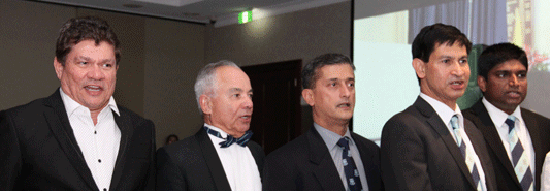 |
 |
 |
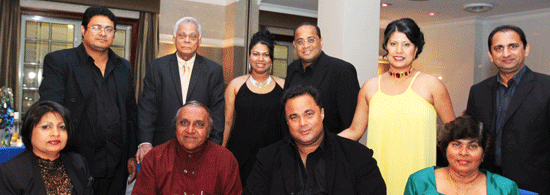 |
 |
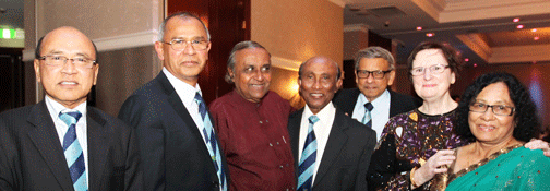 |
...........................................................................
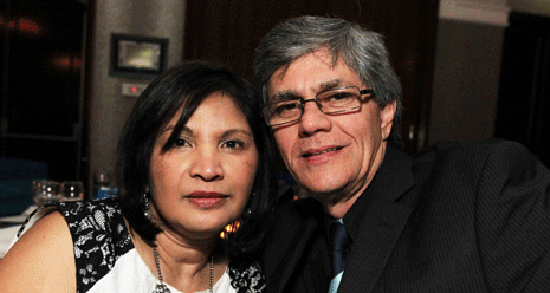 |
...........................................................................
The following Old Boy’s attended the function(names in alphabetical order: left to right )
Abel brothers(Daniel, Godfrey & Reggie) |
Baptist(Frank) |
Buultjens(John) |
Deutrom(Bill) – from Brisbane |
Don Ajit Wijesundara |
Grenier(Keith) |
Hamer(Neil) |
Harvie(Buster) |
Herft(Robin) |
Hesse(Roger) |
Jansz brothers(Ray & Tyrone) |
Jayaweera(Viraj) |
Jeganathan(Harishanker) |
Kanagasabey(Ramesh) |
Kularatne(Asoka) |
Kogul(Raj) |
Maye(Darrel) |
Mottau(Melville) |
Musafer(Bashur) |
Mylvaganan(Ganesh) |
O’Neil(Garrick) |
Samuel(Shirley) |
Sappideen brothers(Nizar, Razeen & Seenar) |
Swan brothers(Jeremy & Christopher) |
Thiru(Kugan) |
Wambeek brothers(Glen, Beverley & Collin) |
Weerasinghe(Nimal) |
Kindly sent to me by Ranjit Aaron (New Zealand)
Photos with the kind courtesy of Carlyle Wells-Peris
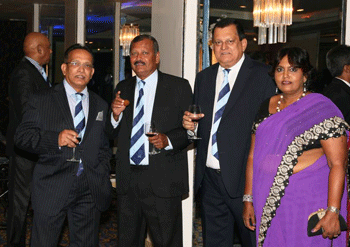 |
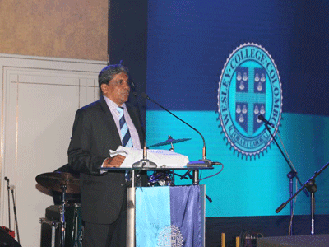 |
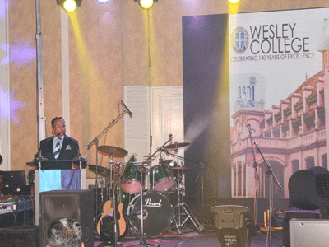 |
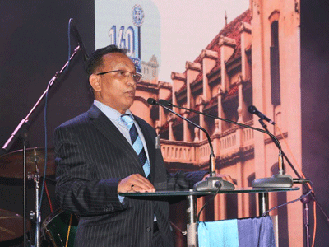 |
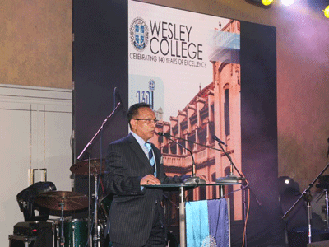 |
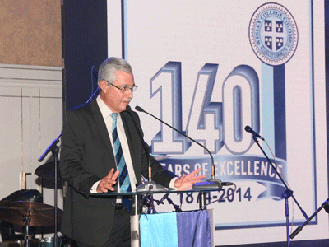 |
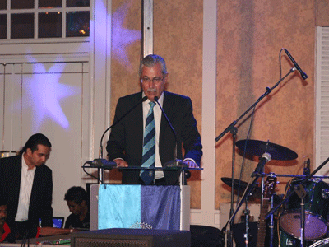 |
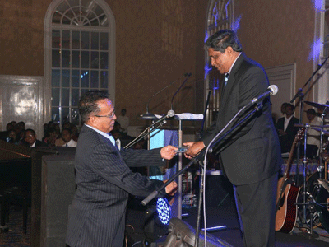 |
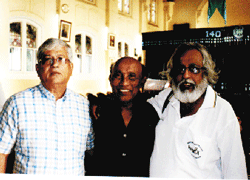 |
| Neil Harvey , Nizar and Peter Christie |
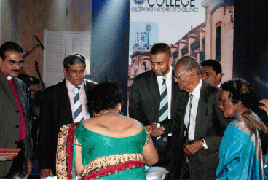 |
| 140th Anniversary - Cutting the Cake |
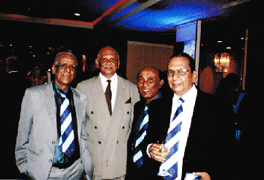 |
| A.M Sheriff, Neville Perera, Nizar and CT Rodrigo |
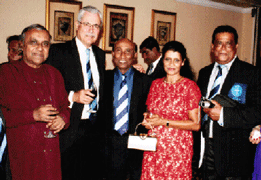 |
| Haig Karunaratne, Bill Deutrom, Nizar and Reg Bartholomeusz |
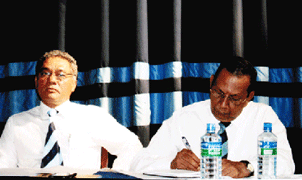 |
| Ivor Mahroof and CT Rodrigo at the AGM |
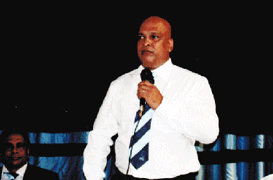 |
| Richie Sappideen at the AGM |
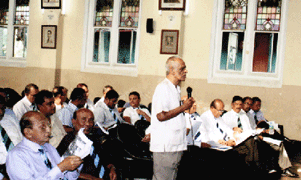 |
| 140th Anniversary Celebrations |
 |
| Dr McLelland, Rev Jebaneson with MAP Fernando- Havelock Rd |
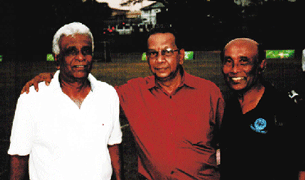 |
| Sarath Wickramaratne, CT Rodrigo and Nizar Sappideen |
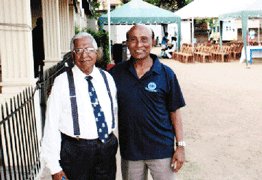 |
| Sinnathurai and Nizar at the Sports Day |
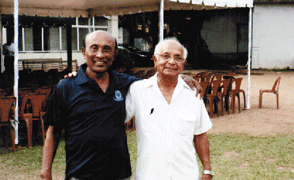 |
| Nizar with PB Herath - Sports Day |
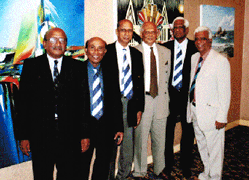 |
| Muthuvaloe, Nizar, OK Hemachandra, Neville Perera, LR Goonetilleke and Sarath Wickramaratne |
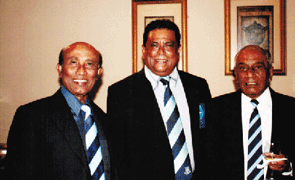 |
| Nizar, Reg Bartholomeusz , Eddie Buell |
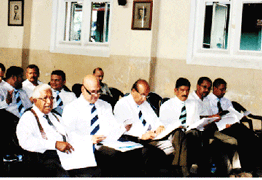 |
| 140th Anniversary Celebrations at the College Hall |
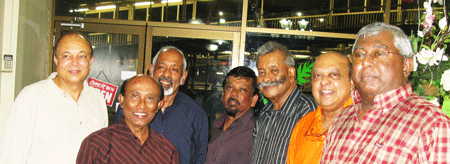 |
| L to R: Roger Koch, Nizar Sappideen, Charles David, Paul David, Joseph David, Noel Edwards, Ponna Sivasubramaniam |
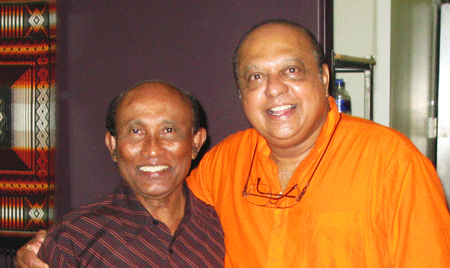 |
| Nizar Sappideen and Noel Edwards |
 |
| L to R: OK Hemachandra, Nizar and Dalkin Samidon |
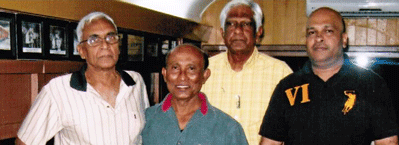 |
| L to R: M.S.K. Perera, Nizar, L.R. Goonetilleka, Richie Sappideen |
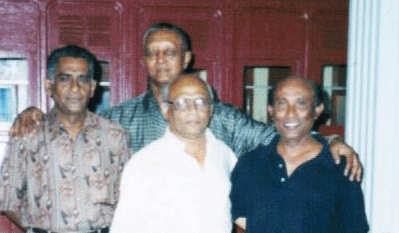 |
| L to R: Jayasinghe, L.V. Jayaweera, M.A. Razak, Nizar Sappideen |
Kindly sent to me by Nizar Sappideen - Sydney, Australia
There were several families that made a fortune in the latter part of the 19th century.
Mudliar D.P. Attygalle of Madapatha, Piliyandala was one such person who amassed enormous wealth. In addition to huge
tracts of coconut land, he also owned several plumbago mines, namely Kahatagaha Mines and Maduragoda Pits. Plumbago was in great demand at that time, and tons of it were shipped to England for the manufacture of pencils etc. There were no ball point pens then.
The Mudliar had three daughters, and a son named Francis Dixon Attygalle. The eldest of the daughters was Alice. John Kotelawala (Snr) was also from the same village. He joined the Police, which was then known as the Ceylon Constabulary, as a constable. He was an able police officer and within a few years rose to the position of an inspector.
At that time most inspectors were British. He became known for busting up gambling dens, the most famous being the one portrayed in the play "Nainage Sooduwa". It is not known whether the Mudliar's eldest daughter Alice married John Kotelawala(Snr) on a proposal, or whether it was a love affair. It is also not known whether the Mudliar approved Alice's marriage to John(Snr). A few years after this marriage Mudliyar Attygale died leaving an unlettered widow, two unmarried daughters and a school going son, Francis Dixon, who was attending Wesley College.
She and John Kotelawala (Snr) had three children.
1) Sir John Kotelawala, one time Prime Minister, who married and divorced Effie Dias Bandaranayake,
2) Justin Kotelawala , a barrister, who married the daughter of Sir A.M.de Silva FRCS.
3) Freda, who married C.V.S. Corea(Sid), one of the earliest men to specialise in homeopathy.
Freda's son was Dr. Gamani Corea of UNCTAD fame and Justin's son is Lalith Kotelawala of the Ceylinco Group. To manage the enormous Attygalle Estate, John Kotelawala (Snr) resigned from the Police, along with Singhoni Perera, who served as a police sergeant under him.
It is reported that John Kotelawala (Snr) appropriated a major portion of the profits from the coconut estates and the plumbago mines. It was so much over and above his wife's share, that his mother-in-law was forced to file several cases in the Kurunegala District Court to eject him from the management.
Her son Francis Dixon left Wesley College at the early age of 16 yrs, but he was too young to pit his strength against his brother-in-law John, who was a veteran ex-police officer. On Mrs. Attygalle making representations to the Governor of Ceylon, Francis Dixon though a minor, was conferred "Letters of Venia Aetatis", making a major out of a minor, using the Govenor's powers.
When Alice's and John's children were yet of tender age, Francis Dixon's 2nd sister married Engineer Col. T.G. Jayewardene, an uncle of the late President J.R. Jayewardene. Col T.G. had four lawyer brothers; Justice E.W (King's Counsel), Justice A St V (King's Counsel), J.S. and J.Q.
John Kotelawala (Snr) knew that with the union between the Jayewardene family and the Attygalle family, his ability to appropriate the bulk of the proceeds of the Attygalle Estate would be severely curbed. At the wedding in Madapatha Walauwa, he made derogatory remarks against the Jayewardenes, referring to them as "Thambiyas" -- Mohamedans.
Francis Dixon was infuriated that his brother-in-law to be and his family were insulted. Thereupon he went up to John Kotelawala (Snr) and gave him a slap. John (Snr), in the presence of the congregation told Francis Dixon, "umba denaganning yakada habalapethi kevai kiyala", meaning, " know ye, that you have bitten more than you can chew"
Thereafter, he planned the murder of Francis Dixon with the help of his former police sergeant Singhoni Perera. He floated a bogus company called Ceylon-Japan Trading Co and set sail to Japan, to create an alibi for himself. Singhoni Perera enlisted the assistance of his cousin Baron Perera, and the two of them found in Piloris alias Pila, a man who could
handle a gun. Not even the 1st World War had broken out and there were very few people who could handle firearms. Piloris was from Wadduwa
and is said to have fought in the Boer War, under the command of Winston Churchill.
Singhoni and Baron bought a gun from Walkers for the princely sum of Rs 25. For a few days, they kept Piloris in a room in Pettah. They made certain that Piloris did not know their identities. Francis Dixon Attygalle who was then managing this vast fortune, was in the habit of residing at the house of C.P. Dias, his former Wesley College Head Master, whenever he came to Colombo.
Mr. Dias was a highly respected person, and was a Municipal Councillor. In that era it was prestigious to be elected to the CMC. Dias Place in Pettah is named after this gentleman. One night, when Francis Dixon was on the verandah of the Dias residence, Singhoni and Baron took Piloris near the fence, with instructions that Piloris should open fire, when Francis Dixon comes out to the garden, and when he is properly identified as the target.
There was no electricity way back in 1905. Things worked according to plan. Singhoni called out, "Francis, Francis", and Piloris opened fire as Francis Dixon came out. Then Singhoni and Baron made a quick get away, having given strict instructions to Piloris to return on a particular route. The plan was for Singhoni and Baron to kill Piloris on his return journey. He was a hired assassin and was paid some money with the promise that the balance would be paid when the job was done. It dawned on Piloris that he should not return on the designated route, and that now, his own life could be in danger. He was intelligent enough to know that the safest place would be the cell in a police station. Therefore, he went straight to the Police and told them that he had shot a man totally unknown to him.
Francis Dixon, apart from John Kotelawala (Snr) had other, enemies in his estates, because he was a strict disciplinarian. Kotelawala (Snr) though an ex-police officer, not too popular with the British police officers. He was then the president of the Carters Association of Colombo. In those days, the mode of transport was bullock carts. There were no lorries and vans. (Francis Dixon Attygalle died in hospital without wanting to make his sister Alice a widow by implicating his brother-in-law, but left all his properties in a death bed will, to his other two sisters; Ms. T.G. Jayawardene and the youngest sister, who later married F.R.Senanayake, the father of R.G. Senanayake.) Soon after the killing, Alice sent a cable to her husband in Japan, "Francis died. Funeral took place". The fool John Kotelawala (Snr) cabled back, "Who shot him?" By his stupidity, he gave the show away!
British police officers found Kotelawala's cable strange. How did he know, thousands of miles away in Japan that Francis Dixon died of gunshot wounds? There were no telephones then, no radios, no TV. Soon thereafter Singhoni sent a cable in code; "Cow calfed", which was deciphered to mean, job accomplished. The police patiently waited, and as John (Snr) landed at the Colombo Jetty, they arrested him and took him to the Police Magistrate of Colombo. Kotelawala (Snr) got cold feet, made a confessionary statement implicating Singhoni and Baron as co-accomplices. The police were not interested in Piloris. The Attorney General with the powers vested in him, made Piloris Crown Witness, provided he spilt the beans. Because of the personalities involved and the gruesome manner in which the young man was killed, it evoked much attention.
This was the first sensational murder trial in Ceylon. Three English Barristers were retained for the three accused. Eardley Norton, a top criminal lawyer from Madras was retained for John Kotelawala (Snr), Thomas Thornhill a criminal lawyer from Calcutta for Singhoni and F A Hayley, uncle of Chas P Hayley appeared for Baron. The trial came up in 1906 before Justice Wood-Renton (later Chief Justice), in the Colombo Assizes, and went on for several days. On the day of the Verdict, it was crystal clear that these accused will be sentenced to death. John Kotelawala (Snr) had cyanide smuggled into his cell and committed suicide. Singhoni and Baron were sentenced to death. The Carters of Colombo got into a frenzy thinking that their boss had been killed by those who appeared for the prosecution. They were so ignorant that they did not understand the niceties of a fair legal trial.
The prosecution was conducted by Acting Attorney General Walter Pereira (KC) who later became a judge of the Supreme Court. He was responsible for the "Laws of Ceylon". His house was the present Pettah Kachcheri. Pettah was then, a highly residential area.Walter's son Aelian Pereira, became a top class lawyer. According to him, hundreds of carters stormed his father's house and was about to attack him and his family.One carter started climbing the front steps. Walter Pereira got hold of this man and threw him into the crowd and amazingly, the whole crowd dispersed and walked towards Galle Road Asoka Gardens Junction, to the house of C M Fernando, (the 1st Ceylonese Crown Counsel) who assisted Walter Pereira in the prosecution. C M Fernando was the brother of Sir Marcus Fernando. Sir Marcus was then a member of the legislative council. These two brothers were married to the daughters of Sir Charles De Soysa.
C M Fernando on hearing of the crowd approaching went into hiding with his family. The crowd destroyed his house. Thus ended the country's first sensational murder trial.
From The Editor: My father, Douglas Bertram Amerasekera was a student at Richmond College Galle for a couple of years during the Principalship of Rev WJT Small. He spoke very highly of the great man and his period at Richmond. Mr PH Nonis and Mr Kenneth de Lanerolle were students of that great school When Rev Small was the Principal.
Rev WJT Small is no stranger to Wesley College and was a friend of Rev Highfield. Rev Small wrote a fine biographical sketch of Rev Highfield which remains as the best account of his life and times for which all Wesleyites will be eternally grateful. Rev Small is to Richmond College as Rev Highfield is to Wesley, a pater familias of a large and vibrant community of old boys.
His legend lives on.
Links to further reading
A MORNING STAR: Remembering Rev WJT Small of Richmond By Joe Simpson
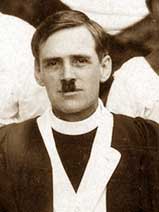 Some recollections of Walter Joseph Tombleson Small (1883-1978), Principal of Richmond College, Galle, Sri Lanka from 1906 to 1922 (with historical endnotes)
Some recollections of Walter Joseph Tombleson Small (1883-1978), Principal of Richmond College, Galle, Sri Lanka from 1906 to 1922 (with historical endnotes)
By Thomas Joseph Simpson, M.A. (Cantab.), LL.B., Member of the Bar of British Columbia, Canada, and formerly Voluntary Service Overseas (V.S.O.) teacher at Richmond College, Galle, 1973-4
Duncan, Vancouver Island, B.C., September 2001
This monograph is dedicated to my long-time friend, N. K. Rubasinghe of Galle Fort, Sri Lanka, and to the affectionate memory of another friend who is much missed, the late Albert Panditharatne, formerly of H.M. Customs, Ceylon and Government Agent, Nuwara Eliya, Sri Lanka. Richmondites both.
Contents
Introduction
A Morning Star: Remembering “Small of Richmond”
Epilogue (1): “Hunger is Agony” (D. T. Devendra).
Epilogue (2): Richmond in 1916 (D. T. Devendra)
Some Notes on Sources
Endnotes
Introduction
Just over a year ago, acting on a sudden impulse, I began the task of editing and transferring the contents of my twenty-seven year old hand-written Sri Lanka journal onto my computer hard drive. I intended then (and still intend) to annotate the journal, thus transcribed, with historical and anecdotal material culled from my desultory reading of various books and articles relating to Sri Lanka. In the course of these part-time labours, I became distracted by another project – to put together a monograph about my own and other people’s personal recollections of a remarkable human being who had presided over Richmond College, Galle as Principal from 1906 until 1922. Like Topsy, this project grew and grew as the original work became supplemented by a miscellany of background annotations. What was supposed to be a ten page essay has ended up as a more than one hundred page book! Hopefully, the quality of the end product has not declined in inverse proportion to the quantity.
Walter Joseph Tombleson Small (who often signed his name as Joe Small) died in 1978, but for myself and many others who knew him in varying degrees and at various stages of his long and productive life, his memory remains ever fresh. Not only was he a person of outstanding intellect, compassion and humanity, but he lived through almost a century of probably the most profound change that human society, both East and West, has ever experienced. He was a child when the British Empire began its final expansionist phase into Africa, and he outlived by many years the final eclipse of that Empire. When he was born, old men still living could recall fighting in the Napoleonic Wars; when he died in the 96th year of his life, the world had endured two global conflicts of unparalleled destructiveness.
At the time of writing, ethnic and religious conflict has become an ever-increasing scourge for many parts of the world, not least Joseph Small’s beloved Sri Lanka and my own homeland of Northern Ireland. Over 60,000 lives have been lost in almost two decades of civil war in Sri Lanka. As I type these words, a horrendous terrorist attack has just destroyed the World Trade Center and unknown thousands of lives in New York City. Now more than ever, the world needs individuals like Joseph Small, of whom it was written soon after his passing that as a result of his influence on his young pupils, “Buddhists became better Buddhists and Christians awoke to the full glory of [his] example and precepts”. Whatever the shortcomings and deficiencies of the imperial system that brought him to colonial-era Ceylon – and they were many – I hope that readers will find it in their hearts to agree with the great Sri Lankan educator and nationalist, Patrick de Silva Kuleratne, who was himself a pupil under Small of Richmond, that to be in touch for some time with such a good person, is indeed an education in itself.
Joe Simpson, Vancouver Island,B.C., Canada. September 14, 2001
A Morning Star: Remembering “Small of Richmond”
“…the effect of [his] being on those around [him] was incalculably diffusive, for the growing good of the world is partly dependent on unhistoric acts, and that things are not so ill with you and me as they might have been is half owing to the number who lived faithfully a hidden life and rest in unvisited tombs.”- George Eliot, Middlemarch
“[H]e had that quality which the Arabs describe as baraka. In the most improbable circumstances he had the power of enhancing life and making it appear better than it was before. His mere presence seems to have conferred a blessing on everyone who met him…”
- Alan Moorehead, writing in The White Nile about the Scottish missionary explorer, David Livingstone (1813-1873)
In Those Long Afternoons, his hauntingly evocative reminiscences of his childhood in colonial Ceylon during the early years of the 20th Century, Professor E.F.C. (“Lyn”) Ludowyk[i] gives us this lyrical description of his high school alma mater, Richmond College: “Richmond was an expanse of billowing trees, a hillside strewn with rocks and coconut palms. Paths ran down to villages set among groves and houses overlooking the railway line and roads leading to the hinterland of Galle…From the well in the hollow beside the drive to the playground on top of the hill, with the glitter of the sea on sunny days and northward the hills of Hiniduma, the scene recalled a set piece from a pastoral.”
It was in this beautiful setting in September 1973 that I had my first encounter with the man, the living legend whom almost 120 years after his birth even those who never met him still refer to as “Small of Richmond”. I remember the moment so clearly. It was a fairly typical morning for the south coast at that time of year, already hot and rather humid. I was a newly-arrived Cambridge University graduate, a neophyte teacher from a British-based non-government organization called Voluntary Service Overseas (VSO) that still sends teachers, engineers and the like to work in Sri Lanka. I had heard about Reverend Small from my VSO predecessor, another Northern Irishman who had served at Richmond a few years before. I remember feeling wonderment on learning that not only he had been Principal far back in 1906, but also because at the age of 90 he still resided at the School.
Back to the moment: I was chatting with some students outside my hostel room, I can even remember the view that morning looking across the tops of the coconut trees towards the hazy blue of the Indian Ocean, when a tall, fairly erect but obviously venerable European gentleman dressed immaculately in white canvas hat, white long-sleeved shirt and white trousers[ii] appeared in the distance, striding towards us across the playing field from the direction of the Principal’s bungalow. “Reverend Small, I presume?” I queried with a nervous attempt at humour as he drew near. “Indeed it is I, and you must be Mr. Simpson?” he replied with a faint glimmer of a smile. He then went on to explain that he was just on his way down to the post office to buy some stamps, and would I like him to bring some back for me? His kindliness and innate modesty were immediately obvious, and the impression left on me by that brief moment in time was such that the passing years have not dimmed in the slightest my memory of that first meeting on Richmond Hill.
Walter Joseph Tombleson Small was born into a Methodist family in late Victorian Boston, Lincolnshire[iii] on July 4, 1883. An outstanding student, at the age of 16 he came top in the United Kingdom in the Senior Oxford Local Examination. In October 1901 at the age of 18 he went up to Gonville & Caius College, Cambridge on an Open Scholarship and in due course took First Class Honours in the Mathematics Tripos, being bracketed 7th Wrangler[iv]. Not content to rest on his Cambridge laurels, Small went on to achieve First Class Honours in Theology, winning the University’s Mason Prize for Hebrew, and then in short order earned a London University Bachelor of Science degree – all by the age of 23!
With this kind of academic record, Joseph Small would have been a “natural” for the “heaven-born” [1] – the Indian Civil Service (ICS). But Small had determined to enter the Methodist Ministry. Then Fate intervened while he was visiting Germany with his sister in 1906, his last year at Cambridge, during the same Edwardian summer that he became engaged to a young woman named Thekla Hermine Guenther: he received a surprise “call” from the Wesleyan Missionary Society[v] to come out to Ceylon to replace Principal J. H. Darrell at Richmond College, who tragically had just died in an outbreak of typhoid[vi] at the school’s boarding hostel. Thus began Small’s career as an educational missionary, one that led to him being described by a distinguished former pupil long afterwards as “one of the outstanding figures in the field of education in Sri Lanka in the early years of this century…[who]…came out as a simple missionary…[and]…devoted himself to the teaching and training of boys in Sri Lanka, whom he learned to love, and to whom he gave of his best”.
Rev. Arthur Stanley Beaty taught at Richmond for a few months in 1906, when the School was still in a state of shock after Principal Darrell’s death in July of that year.[vii] He acted as temporary Headmaster during September and October of that year, at a time of hiatus when Rev. A. S. Bishop was acting Principal and five of the College’s teaching staff were on sick leave. Looking back as Chairman of the Methodist Church in South Ceylon thirty years later, however, Rev. Beaty recalled one humorous episode at the School that preceded the new Principal’s arrival. Having just taken up his new posting, Beaty spotted on a notice board two illustrated press clippings about the impending arrivals of himself and Small. The contents were genuine enough, but in the place of photographs of two men still in their twenties, some jokester had substituted two portraits of venerable grandfathers: Joseph Small appeared as an ancient greybeard, and Stanley Beaty as a bald-headed veteran!
Seventy years on, P. de S. Kuleratne still remembered vividly the day in November 1906 that Reverend Small made his first public appearance at the School. The boys were all gathered expectantly in the Hall, looking up the Hill for their first sight of the new Principal. Suddenly a hush fell on the assembly: “[There appeared a] tall young man in cap and gown, bending down every now and then picking up something from the road as he came down the hill. Great was our amusement when we found out that he had been picking up the pieces of paper which we had probably thrown away as we came down to school from the Boarding House. No less was our surprise when we found out how young he was…” (Perhaps the unknown notice board jokester had succeeded too well)! Kuleratne remembered not only that his new Principal was “tall” and “well built”, but also that he was “not so awe-inspiring as Principal Darrell”![viii]
In later years Lyn Ludowyk fondly recalled Reverend Small as being “tall with a height which gave him a commanding presence”, an “Olympian personage” about whom “many legends clung”, a man of “distinction in maths and prowess in cricket”. And yet what Ludowyk seemed to remember above all 70 years after their first meeting as new pupil and Principal, was his new Principal’s “essential kindliness”. Another Old Boy remembered Small as kindly but a “strict disciplinarian”. A College incident in 1916 reveals this aspect of his character. Though the Richmond Cricket Team was a strong one, Rev. Small cancelled all the matches for the term, owing to factions in the Games Club election. He never shrank from unpopular decisions that he knew were right. Small also stuck to the principle that no boy should receive a scholarship to Richmond unless he was both poor and bright, for to make a dull boy a free pupil was no kindness.[ix]
S. F. de Silva, who later became Director of Education for Ceylon, had this to say about his very first day at Richmond in 1911: “[Rev. Small said] ‘Come up here, I want to have a good look at you.’ As I stood before him, his kindly face banished all my fears, and I saw the face of a friend, and a good friend he has been to me all of my days.” A contemporary at Richmond recalled with awe that Rev. Small, who often rode a push bicycle, one day fell and cut his knees badly while in town collecting the teachers’ salary monies from the bank, but insisted nonetheless on coming to work the next morning in a half bullock cart[x]. With the clear eye of a child, he noticed how the Principal kept knots in his pocket watch chain as reminders and made notes of “things to do” on letters from his German fiancée.
I have a photograph taken of Reverend Small, in his 91st year, seated beside the Richmond College Principal and other local dignitaries at the Galle Esplanade cricket ground in March 1974. Small looks thin and somewhat frail, a far cry from the vigorous young man of almost seventy years earlier who was described by one of his pupils as able to “run and jump with the best of our athletes”. This annual event had a special significance for Joseph Small, for together with Principal F. L. Woodward[xi] at Mahinda College, Galle he had long before ensured the survival of the tradition of the “Big Match” between the two premier educational institutions in southern Ceylon, a tradition begun by Woodward and Darrell in 1905.
An old photograph survives of the two teams together at the time of the third “Big Match” in 1907, with Woodward and Small as joint umpires[xii]. The Methodist Joseph Small had recently arrived in Ceylon, while the Theosophist
Frank Woodward was already well on his way to becoming a legendary figure in the South. By all reports, it was a most exciting match that year. Reverend Small evidently took his umpiring duties seriously, even racing after the bowler (Mahinda’s skipper, George Weeratunga), when the latter ran towards the boundary line to try to save the situation after the Richmond batsman had sent the ball past him, as the two Mahinda outfielders were quite far apart. Roar after delighted roar surely must have gone up from the excited crowd of onlookers![xiii] How fitting then that in Richmond’s centennial year of 1976, at the suggestion of Dr. W. Dahanayake, the Richmond O.B.A. donated the “Woodward-Small Shield” for a 50-over tournament between cricketing schools throughout the Southern Province. No mean cricketer himself, Small made a century the following year (1908) when he played for the newly-formed Richmond Masters’ Club[xiv] against the Galle C.C., at the time a first class fixture. In 1910 Small scored 46 in the match where the Masters’ Club lowered the colours of the Colombo Club, at the time the premier club in Ceylon. And yet this is the same man who wrote to me in 1975 modestly to deny a rumour that he had once gained a Cambridge cricketing “Blue”: not only was this “far from the truth” but he went out of his way in his letter to point out that he did not even get his College colours, although he confessed to having played “occasionally” for the Gonville & Gaius College First Eleven cricket team.
The 1974 “Big Match” had its moments, too. As I recall, the match itself was a fairly so-so affair, apart from a pulse-quickening finale when Richmond snatched a draw from the jaws of defeat. The sheer liveliness of the Galle crowd, however, more than compensated for the dearth of exciting play. The second day of the Big Match was heralded by a display of drunken rowdiness from sections of the crowd, notably some of the younger “Old Boys” on both sides. At one stage the police gave chase to a cheerfully intoxicated mob that had invaded the pitch, meantime another equally inebriated group tagging along behind the officers mimicked their every movement, to the raucous amusement of the appreciative spectators! While this pantomime played itself out, I noticed Rev. Small calmly surveying the scene, his serene features betraying nothing of his thoughts. Doubtless he had seen it all before![xv]
Of course, life at Richmond was not all sporting activities. Apart from carrying on with the work of Darrell in taking the School to new academic heights, assisted by an extremely able teaching staff consisting of the like of E. F. C. Ludowyk Snr., father of the more famous “Lyn”, Joseph Small successfully steered the School through some extremely difficult and indeed hazardous times in the second decade of the 20th century. During those highly eventful years Richmond experienced rigours such as the Great War, the upsurge of nascent Ceylonese nationalism, the trauma of the 1915 Riots and the notorious “One Hundred Days” period of martial law, the more intimate tragedy of the drownings at Closenberg Bay in September 1915, and the global influenza epidemic of 1918.[xvi]
In 1910, Joseph Small’s personal life took on new meaning, for that was the happy year that saw the arrival in Ceylon of his German fiancée, Miss Thekla Guenther, a Lutheran pastor’s daughter and friend of his sister whom he had become engaged to during the very same summer of 1906 that he had received the call from Richmond. I still have a clear memory from 1974 of Rev. Small describing to me that golden summer of his life: “It was one of the most wonderful experiences of my life,” he reflected, “to be a young man falling in love.” The marriage that took place in August 1910 would last for forty years until Thekla Small died in 1950.
Thekla Small was a trained teacher who started the Richmond kindergarten and acted as matron of the recently rebuilt school hostel until a full-time matron was appointed in 1916. Hanover House at Richmond Hostel was named in her honour. Many a Richmondite from that era had cause long after to remember with gratitude her unceasing care of sick hostel boarders, particularly during the dreadful 1918 influenza epidemic, to the extent of moving the worst cases into the Principal’s bungalow so as to be under her personal care. I heard reports that the Smalls (who had no children of their own) either adopted or fostered a Sinhalese boy, whom they named John Brown and who died in Kandy some time in the 1960s, but I have no direct knowledge of this. Reverend Small once told me that he had travelled to Colombo to vouch in person to the Colonial Governor[xvii] for the “good behaviour” of his German-national wife after their return to Ceylon from a year’s furlough in 1915. Due no doubt in large part to their combined standing in the local community, Thekla Small was perhaps the only “enemy alien” in Ceylon not to be interned for the duration of the conflict. Great must have been the anxiety of the Smalls throughout the war years in Ceylon, particularly in light of the 1914 “Emden scare” when wild rumours about enemy “secret agents” being in league with that legendary German battleship resulted in the unwarranted arrest and imprisonment of Engelbrecht, the one-time Boer POW who by then was a game warden at Yala.[xviii] The strain of those war years may well have taken their toll on Thekla Small, and indeed concern about her health was cited by Reverend Small as the reason for his reluctantly-made decision to leave Galle in 1922.[xix]
The “1915 Riots” and the subsequent “One Hundred Days” of martial law, coinciding with the nascent nationalism that was making its presence felt at the College as elsewhere in the island colony, presented yet another challenge to the young Principal at Richmond. It was well said of Small, that he knew “no barrier of race or colour – even the simple-minded could make a friend of him”.[xx] Long afterwards, it was remembered how he had secretly aided people financially in the dark days of the communal riots and their harsh aftermath, the wartime imported rice shortages, and the 1918 global influenza epidemic. The 1915 crisis began with street confrontations between Moslems (mainly recently-arrived “Indian” Moors as distinct from the long-established “Ceylon” Moors) and Sinhalese Buddhists around Kurunegala and Kandy, and escalated due in large part to the prevailing official paranoia about German intrigue – even to the extent of believing that enemy spies disguised as Buddhist monks were conspiring to weaken the British Raj! (This was a foretaste of equally wild rumours during the Second World War about Nazi paratroopers invading England cunningly disguised as Roman Catholic nuns)! Even in the British Parliament a senior Government Minister declared that “it was quite possible that German intrigue was at the bottom of the rising in Ceylon”. In the confusion the Colonial government panicked and declared Martial Law over all of central and south-western Ceylon in late May 1915. Over sixty Ceylonese, many of them nationalists, were found guilty of “treason” during the next three months and sentenced to death. Punjabi regiments newly-arrived from India cracked down harshly on the local populace – in 1974, I met an old fisherman in Matara who spoke with obvious emotion about having witnessed the brutal crowd-control tactics of the Punjabi soldiers in that town. Many British planters joined the local militia, were given uniforms and military titles, and let loose on the civilian populace. Buddhist clergy and nationalist leaders were imprisoned for no good reason. Such knee-jerk repression of course begat more communal conflict: Ludowyk’s memoirs describe Moorish shops broken into around Galle, a mosque at Hirumbura burnt to the ground, Punjabi soldiers camped on the Galle Fort ramparts, and “a good deal of defiant talk”.[xxi] As the Richmond College 1994 Souvenir put it: “Rev. Small’s calm nature and balanced temperament were of much value in those troubled times”.
In the aftermath of the 1915 upheavals, nationalism in Ceylon received a severe, albeit temporary, setback. The “ruling caste” of British administrators blocked further reforms, and native Ceylonese appointments to the higher government posts failed to materialize. In this atmosphere of combined jingoism and paranoia, and recognizing full well the sensitive issue of his wife’s German birth, Small’s moral courage was such that he quietly but positively supported the nationalist movement at Richmond College during the war years and beyond. One of his great spiritual heroes was the young Ceylonese, Lionel Mendis. Mendis, a brilliantly-gifted former Richmond pupil and Hostel Master born only three years after Small, tragically had been forced to abandon his career as a Methodist minister when he was diagnosed with leprosy in 1910. In the ensuing years until his death from the disease in 1919, Mendis wrote extensively on the twin themes of Christianity and Nationalism. Writing about Lionel Mendis many years later, in the early 1950s, Joseph Small made a touchingly revealing comment: “It was during Lionel’s illness that our friendship ripened, and I came to look up to him as one who had outgrown me in spiritual stature…I count his friendship one of the greatest privileges of my life, and it has been one of the strongest bonds that has bound me to Ceylon and her people.”[xxii]
In 1914, the year before the Riots, the National Association was revived at Richmond, a tribute to the liberality in thinking of Joseph Small, who accepted the Association’s Presidency. (The Smalls were away in England on furlough for a year from April 1914, during which time Rev. P. T. Cash of Wesley College, Colombo took over as Acting Principal and presided over the National Association). This was a significant deviation from the political conservatism of Small’s predecessors at Richmond. Unlike many, if not most, Europeans in Ceylon at this time, Joseph Small actually gave a place to indigenous culture, religion and nationalism. The nationalist spirit had always found fertile ground at Richmond. In fact, an earlier National Association had been formed with Rev. Small’s blessing in 1908, but after an energetic first two years had become inactive as the key members had completed their time at Richmond and had left Galle. Among the revived Association’s stated objectives were: “to foster patriotism, to develop national ideals and to influence thought in every direction for the uplifting of the Ceylonese as a nation.” At the time Richmond College was the only school in Ceylon, of any denomination, with a National Association to provide a forum for pupils, staff and old boys to debate political issues. Little wonder then that future pioneer Buddhist educationists and nationalists like P. de. S. Kuleratne, L. H. Mettananda, S. F. de Silva and T. U. de Silva had their initial grounding in the Richmond National Association. This was a time of growing nationalism in both Ceylon and India, in the wake of the Liberal Party victory in the 1906 elections in Britain, the Morley-Minto reforms in India, and local resentment of the proconsular style and arch-conservatism of Governor McCallum[xxiii] who presided over the Crown Colony from 1907-13. McCallum’s archaic 19th century paternalistic view was that only “senior and experienced [i.e. British!] civil servants” could represent the interests of Ceylon’s people in the strictly-advisory Legislative Council. * Nevertheless in 1910 the Colonial Office in London conceded a modicum of elective representation to the educated, English-speaking Ceylonese elite. This gathering momentum towards some form of democracy received a serious setback due to the 1915 Riots. It is not difficult therefore, even at this distance in time, to imagine the excitement and interest that the Association must have generated throughout much of the island. Eminent Ceylonese figures addressed the public at Association meetings held in Galle, such as Arthur Alwis (who spoke on “Political Agitation”) and Armand de Souza, Editor of the “Ceylon Morning Leader”, established in 1907 by a group of Sinhalese merchants to challenge the dominance of Sir Hector van Cuylenburg’s “Ceylon Independent”, the Burgher-owned newspaper established in the later1880s.[xxiv]
As part of the movement to “uplift the Ceylonese as a nation”, Richmond staff and pupils had formed in 1914 a “Servants of Lanka” League along the lines of Gokhale’s “Servants of India”. In 1915, members spent a week in a remote village called Uyangoda, some 12 miles inland from Matara, educating and serving the local people in furtherance of their mission to provide “practical service for the uplift of backward communities”.[xxv] The crowning achievement of the Richmond National Association, however, was the widely-publicized “Legislative Council of 1918”. Its purpose was to demonstrate in a practical way to the powers-that-be the sort of future Legislative Council ideally envisaged for 1918 by the organizers – one that had elected representatives, not merely one elected member with the rest being government appointees. The “Council”, which met before a capacity crowd in the Richmond College Hall on November 21, 1915, soon after the end of Martial Law, consisted of 31 members, 18 being elected “unofficials”, representing all nine provinces, planting and commercial interests, while nominated members safeguarded the interests of various unrepresented interests. A faded old black and white photograph from that time evocatively shows these young men, among them Sinhalese, Moslem and Burghers, standing together in two rows, radiating youthful optimism and idealism. Patrons for the 1915 event included Principal F. L. Woodward of Mahinda College and the well-known Galle Burgher lawyer, C. E. de Vos. Diplomatically, but also in keeping with the spirit of the times, proceeds went to the Prince of Wales’ War Fund. This most exciting event, which by popular demand had to be re-staged in Galle Fort with the Government Agent and the District Judge as additional Patrons, attracted wide interest in Ceylon and - as the original founder of the National Association and one of the leading participants, the young Richmond teacher (and former student at the school) J. Vincent Mendis, wrote many years later – it “stirred the political conscience of the country”. The constitution of the “1918 Legislative Council” actually foreshadowed the reforms to the real-life Legislative Council that followed soon afterwards in 1920.
One of the abiding intellectual interests of Joseph Small’s life, no doubt deriving partly from his outstanding mathematical ability, was astronomy. I well remember those clear, star-lit nights on Richmond Hill when he took me on tours of the galaxy with the aid of his impressive, German-made brass telescope on its tall tripod. On one such occasion he remarked rather wistfully that he wondered if he would make it past his 100th birthday to see Halley’s Comet return in the mid-1980s. He told me once of his memory of standing with his new bride in 1910 on the very spot that we stood on that night, watching Halley’s Comet brighten up the night sky so that even a newspaper could be read. After the disappointing performance in the early 1970s of the much-heralded Comet Kohoutek, Small is said to have commented with deliciously ironic understatement that there had been “some disintegration between the promise and the fulfillment”! In his letters to me written in the few years between my leaving Richmond and his death, he frequently remarks on his astronomical observations, such as the time in January, 1975 that he wrote (in his 92nd year): “I have had my telescope out this evening, and had a look at the rings of Saturn, the moons of Jupiter, and the great nebulae of Orion and Andromeda.”[xxvi]
Some years after Joseph Small passed away in 1978, my wife and I went up over London with a group of others in a specially chartered plane to view Halley’s Comet on its next visit to Earth’s skies in 1985. On that occasion unfortunately the comet was barely visible, nothing like as dramatic as in 1910. The airline company provided us each with a glass of champagne to celebrate the occasion, and I recall raising my glass to the distant stars beyond the fuselage porthole, in silent but heartfelt tribute to Joseph Small.[xxvii] After I left Sri Lanka in 1974, I heard that Small had donated his brass telescope to the Galle Astronomical Association, a small group of friends who used to meet in Cyril Abeyawardene’s house in Galle Fort under the patronage of Reverend Small. On one occasion, members viewed slides loaned to Mr. Small by the famous Arthur C. Clarke. Few of the Association members still survive, and I have no idea of what became of the German brass telescope, although I like to think that from time to time some curious souls still watch the night skies above Galle through that mighty instrument.*
(Many years after my 1974 conversation with Reverend Small about Halley’s Comet in 1910, I came across two other accounts by people who saw it in southern Ceylon at about the same time. In one account, Leonard Woolf[xxviii], in his autobiography, tells vividly of how he and a local Muhandiram (headman) witnessed it from a sandy headland further along the south coast at Hambantota: “The head of the comet was just above the horizon, the tail flamed up the sky until the end of it was almost above our heads. The stars blazed with a brilliance which they have only on a clear, still, black night in the southern hemisphere. And at our feet the comet and the stars blazed reflected in the smooth, velvety, black sea.” In the other account, “Lyn” Ludowyk recalled being taken as a child by his grandmother to view the comet from the verandah of a house on Pedlar Street, in Galle Fort. Ludowyk remembered the crowds in the streets and that the comet “blazed like a torch in a dark vault”. But the youngster’s main recollection of that evening was of an elderly, bald-headed man who sat on the verandah arguing continuously with a foul-mouthed parrot)! [2]
In September 1915, just after the dark period of martial law following the Moslem-Sinhalese riots, a different kind of tragedy occurred at Closenberg Bay, Galle harbour that through no fault of his own was to leave its mark on Joseph Small for the rest of his life. Along with some other masters, the Principal for some time had been taking groups of older Richmond boys for Saturday morning swimming sessions at Closenberg, in a part of the harbour that is now built-up but was then secluded and natural, and considered safe for bathing. On the day in question, September 18, 1915, an abnormal current carried some of the non-swimmers out of their depth, and one master (F.R.A.S. Amarasekara, also the new Richmond Scoutmaster) and two boys drowned.[xxix] The swimming entry in the 1976 Richmond Souvenir, which I have reason to believe was written largely by Small himself, refers to the tragedy but modestly makes no mention of his own heroism that day, recalled long afterwards by local people, in swimming out into the bay to rescue several of the drowning bathers. I have a 1975 letter from the late Albert Panditharatne[xxx], then the Government Agent in Nuwara Eliya and later (after his 1977 retirement) an active member of the Galle Astronomical Association. In that letter, Albert makes the following comment: “In going through the [Richmond centenary] magazine, you will find one S.L.B. Herath donating a page in memory of his father P.B. Herath. Now, this S.L.B. Herath is the M.P. for Hiriyala – one of the few U.N.P. members of parliament – and it is Rev. Small who rescued his father from drowning at Closenberg.” Almost sixty years later Joseph Small told me the story of Closenberg, adding quietly that the incident had come as “a terrible blow”. It was apparent that the pain had remained with him for life. What a contrast this experience must have been, compared with the happy day in 1889 during the Richmond College swimming gala at Mahamodera, when another youthful Principal (Rev. A. Triggs) quietly slipped away to get married at the Church on Richmond Hill!
On a much happier note, Principal Small played a significant role in the founding of the Richmond Scout Troop, after F. G. Stevens, the initiator of Ceylon Scouting, gave a rousing talk at the School. I mentioned earlier the sad fate of F.R.A.S. Amarasekara, the young Richmond teacher who was the School’s first Scoutmaster. In October 1915 the Richmond Troop was registered at London HQ as the 2nd Galle Troop (Mahinda Troop was the 1st). In December 1915 Lord Baden-Powell wrote a personal congratulatory letter to Richmond, and by the end of the following year the School had 7 King’s Scouts. In 1917, “Lyn” Ludowyk at age 11 became the youngest King’s Scout in the British Empire. Richmond Scout leaders helped to set up scouting in Jaffna, and in 1917 the Richmond Scoutmaster left for India to help establish the movement there, at the invitation of the Madras Government, and was replaced by Ludowyk senior. By then, Richmond had no less than 37 King’s Scouts! In 1918, the Richmond Scouts came a close second in the Empire Troop Competition for the King’s Flag. Years later, in 1947, the Richmond Troop would win the coveted Merit Flag for the best troop in Ceylon.
By the time that Joseph Small left for Peradeniya in 1922, Richmond College’s place in the social and economic life of the country was assured. In his time the School provided the island nation with many of her finest leaders as the century progressed. For instance, C. W. W. Kannangara became independent Ceylon’s first Minister of Education and introduced the Free Education Scheme, and E. F. C. Ludowyk (Jnr.), whose contribution to literary scholarship and drama was unsurpassed in his time, became the first Ceylonese Dean of the University Arts Faculty. Reverend Small had introduced commerce as a subject in 1912, preparing boys for the Chamber of Commerce Examinations, and by the time he left Richmond was one of the foremost commerce teaching institutions on the Island. Inspired no doubt by the brilliance of his teacher, P. de S. Kuleratne won the University Mathematics Scholarship and went on to become a distinguished mathematician and for twenty five years Principal of Ananda College. J. H. F. Jayasuriya won the Jeeju-Boy Scholarship to the Medical College. In 1918 under the leadership of “Major” F. H. de S. Adhihetty, the Richmond Senior Cadets carried off the All-Ceylon Shooting Cup at Diyatalawa. The list of achievements runs on and on. Aptly was it said by a former pupil long afterwards that the
Principal “walked among us, radiating an influence for good on all who came to him”.
After leaving Richmond in 1922, Joseph Small spent the next four years at the Methodist Church’s Peradeniya Training Colony as Vice Principal, and then returned briefly to Britain where he was a circuit minister for two years in Cardiff, Wales. The East called him back in 1928, this time for three years as a member of the teaching staff at the United Theological College in Bangalore, India[xxxi]. From 1931 to 1942 he was a circuit minister in England, and then in retirement a supernumerary minister at Tewkesbury, Gloucestershire until 1950, the year that his beloved Thekla died. After three years as Chaplain of the Methodist International House in London Joseph Small, by now in his 70th year, returned to Ceylon permanently in 1953, initially as Warden of the Peradeniya Training Colony until it became a government-controlled institution, and then as minister at Nuwara Eliya’s Union Church. Victor Melder, well known to many “Lankaphiles” for his outstanding private library of Sri Lankan books in Melbourne, Australia, was a student at Peradeniya at the time, and remembers Reverend Small from those days as a dignified and courteous figure who never failed to return a greeting from a passing stranger. It was around this time that Small applied his outstanding scholarly and linguistic gifts to compile the Topical Sinhalese Concordance of the Bible and to act as chief editor of The History of Methodism in Ceylon.
Finally, by now in his early 80s, Joseph Small “came home” to Richmond Hill in 1965 as a permanent guest of the College. His residence for most of the final years of his life consisted of a simple, sparsely furnished single-room annex of the same bungalow atop Richmond Hill where as Principal he had resided with his dear wife so many years before. From there he continued quietly to minister to the sick and needy among his former pupils and their families, to whom he would unostentatiously provide both spiritual and practical help as the need arose, to visit and correspond tirelessly with friends both old and new, to study German, Hebrew and Sinhalese literature, to keep up with global events by means of his venerable wood-encased “wireless” that seemed permanently to be tuned to the BBC’s World Service, and on clear nights to view the star-filled skies through his treasured pre-1914 German-made brass telescope. Such was the individual whom I had the privilege to meet for the first time on Richmond Hill on that balmy September morning in 1973.
Reading through my journals from that year in 1973-4, many personal impressions of Reverend Small resurface. He remembered Engelbrecht the Boer, recalling the strong resentment that the local people felt towards him for his blatantly voortrekker attitudes towards “natives”, so much so that one day his two magnificent cart bulls were found decapitated. (Leonard Woolf, a contemporary of Small’s in Ceylon, wrote in his autobiography that Engelbrecht – while an excellent game warden – was extremely stupid)[xxxii]. In contrast to Engelbrecht, Small endeared himself to the Sinhalese people, and spoke their language fluently – although not the colloquial or “demotic” version. An old Richmondite from Small’s era once told me that his former Principal spoke “classical” Sinhala, perfectly enunciated, just as if someone were to speak Shakespearean English, and that it was a most beautiful thing to listen to.[xxxiii]
I believe that Reverend Small’s visits in his later years to certain of the local Buddhist temples, where he would discuss theology and philosophy in Sinhala with the senior bhikkus, were much appreciated and anticipated by his hosts. On one occasion he arranged for me to visit a temple near Richmond Hill to help the monks practise their spoken English, at the chief priest’s request. Not for Joseph Small the militantly triumphalist attitude of the early 19th century American pioneer Wesleyan missionary, Rev. William Martin Harvard, who in 1816 encountered on the road to Galle an elderly Buddhist priest accompanied by several young lay followers. Harvard proceeded to pepper the unfortunate bhikkhu with questions about Buddhism, and when the poor man was unable to answer to his satisfaction, the eager proselytiser pointed out the “ignorance” of their instructor to his young followers, with the result that one of them soon converted to Christianity.[xxxiv] A contrasting example of Joseph Small’s respect for all religions appears in a letter that he wrote to me in August 1976, the summer that Richmond celebrated its 100th year. After commenting generally on the celebrations, he added: “To me the most inspiring part was the Christian service on Sunday morning, when the [Richmond Hill] church was full of old boys and their families, including a number of Buddhists.” Small was no mean philosopher, and told me a little of his published responses to the writings of (for example) the atheist philosopher Bertrand Russell and Col. Olcott’s successor at the helm of the Theosophical Society, Annie Besant.[xxxv] (Coincidentally, Olcott’s last visit to Ceylon before his death in early 1907 took place only a few weeks after Joseph Small’s November 1906 arrival in Galle). While a zealous Methodist, he was on very friendly terms with F. L. Woodward, the Theosophist Principal of Mahinda College, Galle. After Small’s death one obituarist wrote with feeling that he was revered by Buddhists, Hindus and Moslems alike.[xxxvi]
An extremely modest but (in the best sense of the word) a proud man, Small often turned down the offer of a seat on a crowded Ceylon Transport bus even into his 90s, and ironically it was an accident while boarding a bus in Colombo that caused his death in 1978. I once asked him half-humorously the “secret” of his longevity. He replied in all seriousness that he believed two life-long habits had helped in this regard: (a) masticating (or chewing) every morsel of food at least a dozen times before swallowing, to assist the digestion, and (b) sleeping with his feet at a slightly higher level than his head, to encourage the flow of blood to the brain. When an article about my memories of Reverend Small that included this anecdote appeared in a Colombo newspaper early in 2001, a retired Sri Lankan naval officer, Lt.-Cmdr. Somasiri Devendra, wrote to inform me that when he was a small boy his late father, a pupil at Richmond in the early 1900s, had often admonished him to chew his food “in the Small way”![xxxvii]
My last memory of Joseph Small is of him visiting me in the Joseph Fraser Nursing Home in Colombo, where I was admitted with hepatitis in the summer of 1974. The impression of his kindly consideration and concern remains fresh in my mind to this day, over a quarter century later. Neither of us could know that in a few short years he too would be hospitalized in the same facility. And that whereas, still in my early 20s, I would recover to return home to Britain and the rest of my life, Joseph Small on the other hand would finally reach the end of his long and eventful journey on earth in the care of the kindly Joseph Fraser medical staff.
While researching this article, I had the pleasure of re-discovering an almost-forgotten series of about 15 aerogramme letters that Joseph Small hand-wrote to me over the four years between my leaving Sri Lanka in September 1974 and his death in December 1978. These letters range over a wide variety of topics, including the political troubles of Ireland and South Africa, the global economic crisis, the food crisis in Sri Lanka, preparations for the 1976 Richmond centenary celebrations, meetings of the Galle Astronomical Association, and his observations of the night skies through his telescope. The eclectic mind of their writer is everywhere evident. I would like to offer readers some samplings from these letters that offer some idea of how eclectic Joseph Small’s interests were, and how his concern for his fellow human beings remained lively right to the end of his long life:
In December 1974 Small writes to say that he has just mailed off 400 Christmas greetings around the world. He had just returned from visiting relatives and old friends in the U.K. and Germany, and had suffered a bad attack of shingles in the former country that had affected his vision in one eye. But his main concern is for the effect of the food crisis on the people of his adopted home, Sri Lanka: “The really poor are suffering badly due to the high prices.” A few months later, in April 1975, he writes to tell me about the start of the preparations for the Richmond Centenary in 1976, and to ask me for a contribution to the souvenir magazine. Ever the cricket follower, he comments on the disappointing performance of the Richmond team in the “Big Match” against Mahinda that year, in which a win by Mahinda was narrowly averted by the Richmond wicket keeper who made 51 not out in the second innings, the top score of the match; with typical charitableness, he adds that the sun had been vertically overhead at Galle on April 6, and the intense heat had not helped play. Then he returns to his continuing concern for the poorer classes in the current crisis: “There is a lot of malnutrition.”
In July 1975 he mentions that the Centenary preparations, particularly the Souvenir Magazine he is co-editing with the Principal and Dr. W. Dahanayake[xxxviii], are taking up much of his time. In passing he comments that he has just celebrated his 92nd birthday on July 4, about which an article had appeared in one of the newspapers, and that he has already replied to all of the 70 or so well-wishers who had sent him letters and telegrams! He writes that the recently-founded Galle Astronomical Association (of which he was patron and to which he had recently donated his brass telescope) is flourishing, meeting monthly in Cyril Abeywardene’s home in Fort, although “the monsoon weather has not allowed much observation”. A few weeks later, after mentioning an imminent Richmond O. B. A. meeting in Colombo, he informs me: “There is plenty of malnutrition, and even in the [Richmond] hostel shortages of milk.” A third letter that summer comments on the Irish troubles, news of which he has followed on the BBC World Service, and adds that he plans to attend the annual Methodist Conference in Colombo and then visit Kandy and Badulla. By October he is becoming anxious about the school hostel boarders: “Food is still scarce, and many boys are obviously undernourished, and glad of anything they can get to supplement their diet.” He is writing to Old Boys and their families to ask for memorial donations to the centenary magazine, for each page will cost Rs. 100/= to print. (Not until many years later did I notice that my brief contribution to the Souvenir Magazine had been printed on a page donated in memory of Thekla Small). There is a paragraph on the troubles in Cyprus, East Timor, Angola and Lebanon. A plain brown, specially printed greetings card that accompanied this letter ends with the simple message, “In the Joy of Advent and Christmas let us not cease to wonder – Rev. W. J. T. Small, Richmond College, Galle, Sri Lanka.”
In March, 1976 – Richmond’s Centenary Year and his own 93rd - he writes to say how very busy he has been with the souvenir magazine, but adds thankfully that “most of the problems are solved now, and printing has begun”. After commiserating on the tragically sudden death of a young Sri Lankan woman whom I had met in England – the niece of his Galle Astronomical Association friend, Cyril Abeyawardene – he ends his letter with a detailed description of the latest “Big Match”, remarking how Richmond, although beaten by Mahinda by 5 wickets, were “not disgraced” and that the match “before a bigger crowd than ever” offered “plenty of sensation…[but]…no ill feeling at all to spoil a good game”. In July he writes again, mentioning the “hard work” with the souvenir magazine preparations that has kept him so busy, and commenting on the water shortages brought on by the failure of the S.W. Monsoon, together with the shortage of margarine and cooking fat caused by the Lever Bros. strike! Undaunted, he is off to visit a Methodist missionary and his wife in Tangalle before they leave for home. A few weeks later he is writing again to let me know that Galle has enough rain despite the monsoon failure, and that the centenary weekend of celebrations had just passed without a hitch. It is in this letter that he comments on the inspiration he felt at seeing so many Old Boys and their families gathered at the church service on the Hill, including a number of Buddhists. With an almost audible sigh of relief, he ends by announcing that the souvenir magazine committee has just had its final meeting with the printer, and that it should be ready by the end of August!
In October 1976, he writes to say that all 970 copies of the souvenir magazine are well on the way to being sold out, the printer (a Richmond Old Boy) having done “an excellent job”, and adds (again it seems with palpable relief!), “I am very thankful things have gone so well.” I then read that Baddegama has had its first flood of the year, and that Cyril Abeyawardene’s estate received 9 inches of rain in 24 hours! He then refers to the ongoing controversy over Bishop Heber’s famous hymn about Ceylon that contains the words “Where every prospect pleases, and only man is vile”. Small once told me that Heber was commenting not on the nature of the Ceylonese, but rather making a theological observation about humankind in general. Here he says: “There is a great deal of truth in it, though in no way confined to Ceylon or Java”. He adds that it reminds him of a Robert Louis Stevenson fable, “The Distinguished Stranger”, about a creature from another planet who visits Earth “but prefers the people with green heads (trees) to the greatest nation on the earth”.[xxxix]
In April 1977, there are the first warning signs of significant deterioration: “I keep fit but have been finding the hill-climbing arduous.” The School cricket season has been “pretty disappointing…the team never seemed to get to be a real team”. He ventures another comment on the “Bishop Heber” controversy: “What a lot of discussion that verse of Heber’s hymn has caused! There is a good deal of truth in any country that, compared with Nature, ‘only man is vile’, but ‘every prospect pleases’ is certainly truer of Ceylon than of most lands.” Evidently in response to some newspaper clippings that I had sent him, he writes: “Bishop Lakdasa de Mel was a delightful person with a keen sense of humour.”[xl] In August 1977 he writes: “I finally moved down to the Manse [at the foot of Richmond Hill] on May 14 – just in time, as my sciatica started without warning”. After a month’s rest at the Fraser Nursing Home (“a very nice place”) he had returned home to Richmond in time for his 94th birthday in early July, enjoyed three weeks without pain, then the sciatica hit again and he was unable to walk far from the house. Dr. Anthonisz, his orthopaedic surgeon in Colombo, has been “very kind” and prescribed Vitamin E as additional treatment, but there has been “little change”. Cyril Abeyawardene has been driving him around, and “I am very comfortable here”. (A letter from another friend received that same month mentions that Rev. Small had been seriously ill at the Fraser Nursing Home, but had returned to Richmond looking “hale and hearty” and that he had shown some slides to the Galle Astronomical Association on July 22nd that had been lent to him by Arthur C. Clarke[xli]). The letter ends with a short comment on the 1977 election campaign resulting in victory a landslide victory for the UNP, and the prophetic remark, “it will be long before wounds are healed”.
The last letter I have from Joseph Small is dated August 2, 1978. Although by then he was in his 96th year, and had only a few months left to live, his handwriting is as steady and clear as ever. I had written to tell him of my marriage to Penny in Vancouver, Canada earlier that summer, and so he begins by sending us both “my best wishes for a long and happy union”. He goes on to say that he has been well since his last letter of a year before, and has just celebrated his birthday in three places – Galle, Peradeniya and Colombo! The Galle Astronomical Association has been meeting regularly, and all three of my old friends Rubasinghe, Panditharatne and Abeyawardene attended last evening to watch slides of Jupiter on Cyril’s projector: “Clear skies have been rare, but Venus is generally to be well seen in the evening in the West.” (Other correspondence I have from one of the Association members refers to some stunning slides that Rev. Small had borrowed from Arthur C. Clarke for an Association meeting in July 1977). The final sentence of this last letter reads: “Now I am going to listen to the ‘Brain of Britain’ quiz on the BBC. Last week it was from Scotland, and there was a brilliant lady who got nearly double anyone else’s score. Yours ever, W.J.T. Small.”
When the end finally came, it came swiftly. Complications arose after a fall while boarding a Ceylon Transport bus in Colombo, and Joseph Small passed away peacefully in his 95th year at the Fraser Nursing Home on December 27th, 1978.[xlii] He was laid to rest at the old cemetery at Dadalla near Galle, next to the graves of his predecessor, James Darrell, and Barbara, the young daughter of his successor, Alec Sneath. I received the news a few weeks later in a letter from my friend N. K. Rubasinghe, a former Richmond master and dedicated member of the Galle Astronomical Association: “I am writing this to convey to you very sorrowful news. Rev. Small died on the 27th and was buried on the 30th afternoon. There was a big gathering in spite of the school vacation. There were students, teachers and past pupils. The burial was done very well. The body was taken in procession to Dadalla. It was almost a two hour walk from Richmond Hill…There was a service in Colombo, one in the College Hall and one in the [Richmond Hill] church…I don’t think we will get the like here again.”
Some ten years later, while on an all-too-brief return visit to Sri Lanka, I went with N. K. Rubasinghe to visit Joseph Small’s grave at Dadalla[xliii]. It was an early February afternoon, and soft sea breezes carried the sound of the ocean surf across the fields, providing a soothing background as cattle grazed peacefully around the unmarked grave. As we stood silently for a few minutes to pay our respects, I thought back to something that Joseph Small had once said to me - that he wished for nothing more than that his bones should rest in the soil of Sri Lanka, for that was his spiritual home.
With the benefit of hindsight, it is easily arguable that the colonial educational model based on the Cambridge Examination curriculum that prevailed in the mission schools during Joseph Small’s time as Principal of Richmond, was far more suited to England that to Ceylon. Western classical and modern European languages were emphasized often at the expense of vernacular culture. Even in the post-Olcott era when Buddhist revivalist schools such as Mahinda College in Galle sprang up around the island, the growing Ceylonese middle class seeking access to positions of influence in government, law, trade and commerce eagerly followed the English educational model[xliv]. Small – like the rest of us – lived within the context of his time and place, but in his case closer study reveals an educationist who gave greater recognition to “native” culture and aspirations then many of his more conservative contemporaries. And surely in the final analysis, after educational fashions have come and gone, the personal example set by the educator is what really matters most. The Buddhist mathematician P. de S. Kuleratne[xlv] may have put it best when with the perspective of advanced years he paid this telling tribute to his former Principal, Joseph Small: “The best education we can give to a child is the opportunity to associate with good people. To be in touch for some time with one of them is an education in itself.”
Finally, perhaps the most poetic tribute of all paid to this extraordinary man comes from the pen of N. K. Rubasinghe, when he wrote these deeply-felt words in his letter telling me of Reverend Small’s death: “He valued human qualities more than anything else…he was such an unassuming saintly figure…a morning star.” [xlvi]
Epilogue (1)
In February 2001, when I completed the initial draft of this article, I e-mailed it to a correspondent in Colombo, Somasiri Devendra, currently the Vice-President of the Royal Asiatic Society of Sri Lanka (RASSL). Somasiri is a retired Sri Lankan naval officer, author and true polymath. A member of the ICOMOS International Committee on the Underwater Cultural Heritage and leading participant in the Galle Harbour Project, Somasiri is a self-taught and internationally known expert on marine archaeology, and is actively involved in the campaign to find and preserve evidence of Galle’s extraordinarily-rich maritime history. His father, D. T. Devendra, was a contemporary of W. Dahanayake, P. de S. Kuleratne and S. F. de Silva, some of the distinguished public figures in 20th century Ceylonese/Sri Lankan history who were greatly influenced by their early contact with W. J. T. Small at Richmond. Devendra Senior had a highly distinguished literary and educational career, beginning with his leaving Richmond at age 17 to become a teacher, and culminating with his appointment as Assistant (and Acting) Commissioner of Archaeology and Deputy Editor of the Encyclopedia of Buddhism before his death in 1972. He was also at various times Secretary, Editor and (like his son) Vice-President of the Ceylon Branch of the Royal Asiatic Society.
Now as it turns out, Somasiri is in the process of editing for publication his father’s written account of his village childhood. D.T. Devendra was born in 1901 in the village of Kalegana, Galle, in a modest house, to modest parents who believed in education as the great liberating influence in their country. The parents toiled to send their sons and daughters to the best available English schools, even though (Micawber-like!) they always had to hope that something would turn up to enable them to pay the fees! And so it came to pass that the schoolboy D.T. Devendra attended Richmond College in the time of Rev. Small.
Somasiri has sent me the following poignant passage from his father’s account, and has graciously given me permission to include it in this article. It provides a wonderful insight into the private (but highly principled and practical) encouragement that Joseph Small gave his pupils. The passage is from a chapter that Somasiri has headed, from a sentence used by his father, “Hunger is Agony”:
"When we had nothing to eat - sometimes father was dead tired, too tired to roam the world every day and must rest his weary limbs; sometimes he was physically unwell; sometimes it was raining, - then I remember telling that living saint of my school principal, the Rev. W. J. T. Small, of all our unhappiness. I had no indication as to whether he thought it was the usual Sinhalese trick to cadge money or whether he did, in fact, believe my story. For I got nothing for my recital, except perhaps, some relief in the telling. One thing, however, he did for me. When the time came, in 1916, to send up my fees to Cambridge for the Junior Local (I was under age to be awarded Honours and Distinctions) my father could only give me half the fee. With it, I explained my plight to the Principal. Very graciously, he undertook to advance the balance from the school funds on the condition that I would meet it if I failed. Luckily I happened to pass, being one success in about 8 out of some 20 or more - a great achievement for a carpenter's grandson whose home language was not English. Prouder still was I two years later, when I sat for the Cambridge Senior Certificate and passed it in 1918, scoring the only Distinction in English in the Southern Province and also the first ever Senior Distinction in that language in the annals of Richmond College, among whose alumni were folks of the brilliance of C.W.W. Kannangara, P. de S. Kuleratne, etc. etc. There, again, was what a village-bred, Sinhalese-speaking boy could do. Up on the Honours Boards of my school - unless they have since been removed under a new dispensation - you will find my name first (under the relevant subject) as well as the fact that I had been awarded the coveted "Old Boys' Essay Prize". English, it must be remembered, was then the most honoured subject in school!"
A few weeks later, I received another message from Somasiri. He had just finished editing his father’s book and had asked his brother, Tissa, to contribute a chapter on their father. This is part of what Tissa Devendra wrote:
“One final anecdote illustrates the man he was. At his funeral a rather shabbily dressed, elderly, well-spoken man quietly came up to me and asked to have a word. This is what he said: “I was taught by Mr. Devendra, long ago when he was a young man. I came from a poor home and no longer could afford to buy my school books to continue in school. I had no alternative but to leave school and I told Mr. Devendra the reason. He thought for a while, and said ‘Don’t leave school. I will buy you your books. But do not tell this to anybody. He bought me the books and I stayed in school. I have not been a success in my life – but that has nothing to do with my teachers. As soon as I read your father’s obituary I knew I had to come and tell you this story – that only he and I knew. He was a great man.’
There is no doubt that, in the mirror of his mind, Father saw a poor schoolboy who did not have the money to sit the Cambridge Senior Exam, telling his own sad story to his Principal, Rev. Small, whose personal generosity led him from the village to the world. The rest is history.”
Epilogue (2)
(The following account of life at Richmond College, Galle in the year 1916 is taken verbatim from an as-yet-unpublished memoir penned by the late D. T. Devendra, then a pupil at the school, that he wrote some twenty years later when he was himself a schoolmaster in his thirties. This account that, even though it was authored so long ago, has a distinctly “modern” feeling to it and consequently retains its freshness and directness for the early 21st Century reader. It is included here by kind permission of Somasiri Devendra, of Colombo, Sri Lanka, one of D. T. Devendra’s sons, already mentioned in this essay, who like his late father is a scholar and writer of distinction).
A motley crowd had assembled in the classroom. The great bronze bell would boom at the beginning of the school hour, 10.30 a.m., from the stone belfry at the top of the hill. But most of the boys had already filled the classrooms, not so much because they believed in the virtues of early work, but because the early bird got the worm, viz., “cribbing” from the homework exercise of the cleverest boy.
The youthful population had rapidly darkening faces; it would not be long ere they set up homes and reared families! The habiliments of an outstation schoolboy would have tickled a Colombo boy to death; for the minority who were not in their native cloth and coat, would be in trousers that that travelled beyond and below the knee but, as if losing heart, stopped halfway down the calf. Hats of queer shape and sizes crowned the heads of the wearers, very few of whom ever “trod on neat’s leather!” A mature dandy or two in toga virilis would sport very narrow long trousers of the latest fashion and four-buttoned open necked coats, introducing into the light of the garish day the knot of a flaming red or emerald neck-tie. The tie cascaded from the starchy eminence of a suffocatingly high stiff collar. These great personages were, however, rare.
The sonorous notes of the bell soon made the master “copyists” put hasty finishing touches to their unholy labour. The prefects, those ghouls, would soon be out for blood, and had to be avoided at any cost. To “cheek” one of them was to court certain disaster. The mildest of the lot was a sinewy Burman; the Ceylon schools had only just begun to be visited by migratory batches of Burmans. Maung Tin looked a peaceful follower of the Buddha, but who scratched him caught a veritable Tartar. Out would come a spate of blood-curdling oaths in his outlandish tongue, soon to be followed up by a smack of his redoubtable fist. An enterprising and seasoned “assembly cutter” would wedge himself between the cupboard and the wall. Only to be ferreted out by the guardian of the law, well versed in all the wiles of truants.
At assembly. While the religious-minded were in ecstatic contemplation of divine blessedness, a worldling stole on soft feet to insert his knee into the crook of the leg of another, who, thus taken unawares, would flop weakly down. Sometimes the victim would grasp, after the proverbial manner of a drowning man clutching at a straw, the coat-tails of a neighbour, in a frantic effort to save himself. But the commotion was in variably averted: it entailed unnecessary interviews with authority, interviews which were often one-sided.
“Dick had a duck with fur on its back,” murmured one almost in defiance of another who memorised the ports of pre-war Germany, Hamburg-Bremen-Stettin-Kiel-Lubeck-Konigsberg-Memel……“Humbugging boys steal king….”etc., etc. Another hissed raspingly in your ear the sanguinary stanzas from Bishop Hatto describing, with obvious relish, how the rats had gnawed the bones of the cruel priest. Excerpts from textbooks from many a subject of the class-room rose and fell in vocal undulations. Not a syllable however was permitted to reach the year of the Head, who was engrossed in thoughts spiritual. Nula dies sine linea was some happy scholar's contribution to the scheme of mural decorations, but the luckless boy saw in this exhortation the ominous and glaring reminder of his fate at close of school.
The egress from the hall is not marked with any anxiety to enter our class-rooms. In walks our form-master, a scraggy giant, whose fierce moustaches ended in two fine needle points; these reminded us of the similar labial adornments of the Gallic Alphonse, in Allan Quartermain, whom Umslopogas, the savage Zulu, nearly cried with fright once, as the latter, in warlike frenzy, tried the edge of his battle-axe on them. Depositing his “pig-sticker” topee on top of the magisterial table, he would begin proceedings for the day, by trying to pierce us with the awful glare of his eyes; this would be accompanied by gurgling guttural noises which issued between his clenched teeth. Woe betide the boy who brought not his homework in Drawing! For our form-master considered himself a teacher of Art and forgave no affront offered his pet subject.
I remember another good old teacher, a Netherlander by ancestry but a passionate Anglophile, whose eccentricity was sharply demonstrated to us on the very day of our admission to his form. A timid boy was deputed to approach him with a request for the list of books set for the class. Much to everyone’s consternation came the startling reply to our deputy “On the form! Up! AT ONCE! I’m not going to do your dirty work!” Taken aback by this strange reception, our representative beat a slow retreat and, as he was collecting what few wits he had, it was with a certain hesitation that he proceeded to carry out the order. Displaying a fist like a leg of mutton, the irate master took a few steps towards the apparently recalcitrant boy and barked out, “Will you get up?” when the alarmed victim shot up the bench with the agility of a monkey, and said I apologetic protest, “I’m get-upping. Sir!” But he was a good man for all that, as we found out later. Fully half our time was spent in discussing appetising dishes and similar subjects of gastronomic interest.
A short, dapper man was S….., who, ever a devotee of Bacchus, presented a shirt front splashed with betel-juice. He was a man of many talents, wasted, alas, by excessive zeal for the cult of the classical god. His ready gift of humour appealed to us and we were very considerate to him in consequence.
On one occasion, during the craze for colour-washing classrooms, he suddenly ceased in his (latterly favourite) preoccupation of using a matchstick as tooth-pick and enquired, “Now, boys, let’s do something for our old room. What shall we do to make it the most charming place in College?”
“Tar it, sir!” naively suggested the smallest brat.
It was one for you, poor S…., whose ready tongue tagged odious nicknames on each boy.
None of us coveted the honour of passing a text-book to our master for temporary use, for if it did ever come back to the rightful owner, it was beyond recognition.
One day, when my Virgil came back to me, I saw, sketched on the back of it, a masterpiece of a golden sunset.
Our interval of half an hour was spent in sampling the dainties of a neighbouring pastry-woman. She was quite an institution, her predecessors having had the exclusive privilege of catering to the palates of the sweet-toothed scholars. Not even the dignified Sixth Formers could withstand the lure of her sweetmeats.

The richer fellows, who boated weekly allowances from home, ran up regular accounts with her. Not a few became so extravagantly hospitable to their less fortunate brethren that brand new books or articles of personal attire often went under the hammer to discharge their debts! One luckless fellow, a regular reprobate with a chronic inability to pay his dues, had attempted to hoodwink the good lady on so many occasions that, one day, she laid in wait for him and, pouncing upon him, divested him of his coat, retaining it triumphantly as ransom! Neither attendance at school nor return home was possible. His tears, however, moved the harridan to pity and when she returned the coat to him it was to the accompaniment of his warmest protestations that he would settle his account. A week later, I found him taking a circuitous cut to school, a route that took him at least a mile away from his usual track. Thus had he outwitted his creditress! I wonder if the Judgement Debtors’ Bill of a later era found an ardent advocate in him! Latin, ever the bogey of all boys, was not a subject we were in love with, and when the Headmaster himself was the tutor, you can understand our plight. Even the pastries failed to draw us out during the interval. None of our tutors were optimistic concerning our future, but I cannot guess why the Headmaster yearned to minister to our classical needs. “Blithering idiots”, “Blasted fools”, “Limbs of Satan”, “Spawn of Beezlebub,” were the picturesque labels attached to us by the Netherlander [3] who, by the way, was of a literary and Biblical turn of mind. However, Latin and Headmasters have been the pet aversions of schoolboys through the ages, and this thought consoles us at this distance of time.
Those were days when passions ran high, and punishments were of the third degree. A three-foot cane was no rarity, and every teacher knew how to lay it thick. Educational theories would have been contemptuously tossed aside by an age that bred generations of Sir Roger de Coverleys who reverently said, “Dr. Busby! A great man! He whipped my grandfather.”
Some Notes on Sources
In his epic three-volume Life of Winston S. Churchill, The Last Lion, the American historian William Manchester makes this distinction between history and biography: history is a chronological account of prior events, while biography focuses on one figure, exploring the significance of his life by examining “the earthly pilgrimage of a man” (Thomas Carlyle) or by presenting “the faithful portrait of a soul in adventure by life” (Sir Edmund Gosse). As Manchester views it, there can be no enlightening life which does not include an account of the times, the wider context in which that life was led. With this dictum in mind, I have tried to provide readers with some contextual background, mainly by way of extensive endnotes culled from my reading about Small, colonial Ceylon (now Sri Lanka) and the England of the late 19th and early 20th centuries. The knowledgeable reader will doubtless spot many gaps in this material, due largely no doubt to the limitations of the writer, but also at least partly to what has been aptly called “the tyranny of distance” since he is so far removed by geography from the source materials. Nevertheless, I have plunged ahead with this monograph in part as a tribute to one whose memory continues to stir me deeply, and in part as a modest contribution to whatever larger history might eventually be written (one hopes) by others vastly more well informed, of the hugely important contribution of Richmond College, Galle and the other leading “mission” schools to the development of modern Sri Lanka. Hopefully it will be seen as more than merely a case of what someone unsympathetic to historical enquiry has termed “the distinctly dull in pursuit of the dusty dead”!
(a) Personal recollections:
Foremost in this category are my own personal recollections of my conversations with Joseph Small, and with others about him, during the year that I lived on Richmond Hill barely a cricket ball’s throw away from the Principal’s bungalow where he lived in the annex at one end. Some of these exchanges are recorded in my two dog-eared notebooks of journals that I kept that year; while others have remained embedded in the memory and are committed here to paper for the first time. (It is a curious fact that these journals lay undisturbed for years at home in a Victorian pine military kit-box, found in a junk store many moons ago in eastern England, that is lined with old newspaper dating from 1885, not long after Small’s birth. I have a letter somewhere from the Chelmsford, Essex county librarian that speculates that the kit-box may have accompanied its owner in one of the redcoat regiments on Garnet Wolseley’s Nile expedition to relieve Khartoum, which arrived too late that year to save General Charles “Chinese” Gordon, thereby generating yet another Imperial Victorian military hero whose name would have been familiar to every British schoolboy when Joseph Small was growing up). Other recollections that I treasure include the encounter with the old fisherman of Matara who bemoaned the ferocity of the Punjabi soldiers in 1915, exchanges with the redoubtable Dr. Dahanayake, and the Richmond-Mahinda “Big Match” of 1974, all of which emerge from the murky depths here and there in this monograph. As Prof. “Lyn” Ludowyk once wrote, memories tend to gather like so much bric-a-brac on dusty shelves, and in truth memory is the most fallacious of human powers, transforming and distorting as it re-enacts the past. At best, as Ludowyk so felicitously observed, the most one can hope to do is “to confront the past with the unsteady torch of memory, hoping to catch something in its wavering rays”.
Other personal recollections that I am indebted for include: Somasiri Devendra’s account of the farewell speech by Lyn Ludowyk before he left for retirement in England, and his vivid account of a chance meeting with Dr. W. Dahanayake on a Colombo ‘bus; Victor Melder’s memory of Rev. Small at Peradeniya in the 1950s; Father Mervyn Fernando’s vivid recollections of Colombo astronomical society meetings chaired by Small in the 1970s, mentioned in his review of E.C.B. Wijeyesinghe’s collected press articles; and an e-mailed anecdote about Small from the son of an old friend of mine who knew him during his last years, Albert Panditharatne. Hopefully this monograph will elicit further such contributions from those who remember Small, although sadly none of those who were associated with him during his heyday at Richmond in the earlier part of the last century, of whom there were a small number still around when I taught at Richmond over 25 years ago, now survive.
(b) Letters and Autobiographical Memoirs:
I have mentioned elsewhere in this monograph the happy re-discovery of a collection of correspondence I received from Joseph Small between 1974 and 1978. These aerogramme letters are by their very nature not long, yet are packed with interesting commentary by someone who retained his acute powers of observation (and firmness of hand) until the very end. The writer’s humanity, and the genuine interest and concern he felt for his fellow human beings in his adopted country, shine through in all these letters. Besides these treasures, I have a bulging folder packed with old letters from former colleagues and pupils at Richmond, mainly of course from the years immediately following my stint at the school. Of particular relevance to this monograph are the series of letters I have from N. K. (”Rubey”) Rubasinghe, a one-time teaching colleague at Richmond who has become a lifelong friend and now lives in busy retirement in Galle Fort, and from my late friend Albert Panditharatne, a Richmondite who was Government Agent, Nuwara Eliya during my time in Sri Lanka. Both these men came to know Rev. Small quite well in his last few years, when they both became active in the Galle Astronomical Association of which Joseph Small and the late Cyril Abeywardene of Galle Fort were leading lights. (Thanks to Cyril’s daughter Nalini, who prefers to be called Nalin, I have a digital copy of a photograph of beatifically-smiling Rev. Small standing by his telescope, surrounded by local friends, taken at the All Saints’ Anglican Church in Galle Fort some time around the mid-1970s). It was Rubey incidentally who gave me the wonderfully evocative description of Small’s funeral in late 1978, and Albert who (among countless other epistolary treasures) many years ago sent me the touching story behind a page in the Richmond Centenary Souvenir donated in memory of P.B. Herath.
Other memoirs that made a great impression on me during the preparation of this monograph, include the soon-to-be-published excerpts from the writings of the late D.T. Devendra, for many years an ornament on the Sri Lankan cultural scene, sent to me by one of his sons, the writer and marine archaeology buff, Somasiri Devendra. These vivid and often moving excerpts are (with permission from Somasiri) quoted in full in the two Epilogues to the main narrative. The Richmond Centenary Souvenir (1976) is filled with rich material by various Old Boys of Richmond in the time of Small and his successors, including “Lyn” Ludowyk, Herbert Keuneman, P. de S. Kuleratne, J.V. Mendis, S.F. de Silva and others. Colourful anecdotes abound, and the quality overall is superb. The Librarian of the Methodist Library in Colombo wrote to tell me that he lacked a single copy of the 1976 Souvenir; fortunately I had two, so one now rests on the shelves of the library, along with photocopies of all my letters from Joseph Small.
Another autobiographical memoir that has made a huge impression on me is Those Long Afternoons: Childhood in Colonial Ceylon by E.F.C. (“Lyn”) Ludowyk, who died in 1985 not long after completing it. The memoir is devoted almost entirely to the author’s childhood in early 20th century Galle Fort and at Richmond College during the First World War era, and is a unique collection of highly personal anecdotes that evoke the sights, sounds, social divisions and even the smells of life in the intimately-interconnected multi-cultural community that peopled the ancient Dutch Fort of Galle and its environs in that long-ago era. The effect on the reader with any direct knowledge of the place and some of the characters mentioned in the book, is one of at times almost overwhelming resonance and nostalgia. Published finally in 1989 by Lake House Bookshop, Colombo, this slim paperback volume is a lifetime treasure. Well worth reading also are the Preface by H.A.I. Goonetileke and the introductory “Memoir” by Percy Colin-Thomé – both long-time bosom friends of Ludowyk – which are filled with loving detail and acute analysis, a most stimulating combination.
Yet another set of personal memoirs that I have made much use of, comes from the prolific pen of Leonard Woolf, husband of the very famous Bloomsbury author, Virginia Woolf. As many in Sri Lanka well know, Woolf (who died in 1969) was a member of the Ceylon Civil Service (CCS) from 1904 until 1912, when he resigned from the Service while on a year’s furlough in England. His last 3 years or so as a CCS member were spent in the (then) very remote posting of Hambantota, S.E. Ceylon, where he was Assistant Government Agent. When Woolf revisited Ceylon in 1960, aged 80, then-P.M. Dr. Dahanayake (of Galle) ordered that his official diaries from the Hambantota years be rescued from oblivion and published in book form. Filled with mundane matters as well as vivid details of daily life in a rural society that has long since changed irrevocably, these diaries provide a unique insight into the highly-demanding life of a conscientious and immensely hard-working young colonial civil servant at the height of the imperial era. The copy that I have is a 1963 hardback edition entitled Leonard Woolf: Diaries in Ceylon 1908-1911 published by Woolf’s own Hogarth Press, London. The separate introductions by S.D. Saparamadu of the CCS (as it was then still known) and Mervyn de Silva are both excellent; the former is particularly useful for its incisive historical detail about the inner workings of the colonial governing system in Ceylon. Equally fascinating are the two volumes of Woolf’s 5-volume autobiography published by Harcourt Brace Jovanovich during the 1960s that deal with his years in Ceylon and the years immediately following his return to England, including the political aftermath of the 1915 Riots. The title of the first is Growing: An Autobiography of the Years 1904 to 1911 and of the second, Beginning Again: An Autobiography of the Years 1911 to 1918. Also well worth reading is Woolf’s remarkable 1912 semi-autobiographical novel set in the area of Hambantota District, The Village In The Jungle. Lastly, I have selectively dipped into Letters of Leonard Woolf, edited by Frederic Spotts, and published in 1989 also by Harcourt Brace Jovanovich. The Ceylon letters are interesting, although in many ways less revealing of his true thoughts than the Autobiography and even the official Hambantota Diaries, but for the purposes of this monograph the scholarly introductions by Spotts to the two opening chapters Cambridge and Ceylon, are well worth the price of the book in themselves.
Although not strictly in itself a memoir of life in colonial-era Ceylon, I feel that I must mention here Christopher Ondaatje’s The Man-Eater of Punanai (HarperCollins, 1992). Re-reading this book in 2000 after first acquiring it in 1992, impelled me to start editing my long-neglected 1973-4 journals of Sri Lanka and from there I stumbled into writing this monograph on Joseph Small and his times. Ondaatje’s book is about a deeply personal odyssey as well as being an entertaining and beautifully lively account of some wildlife adventures involving the legendary Boer of Yala (and contemporary of Small), H. E. Engelbrecht.
I am indebted to a most interesting article in the Colombo Daily News of October 22, 2001 by Hilary Rajakarunanayake, about the life of W. Dahanayake, under the arresting title: Star of Galle that twinkled for the oppressed classes.
(c) Other sources:
(i) Richmond, Mahinda & Wesley Colleges:
A foremost primary information source for this monograph has been the Richmond Centennial Souvenir (1976), edited by a small team of volunteers including Rev. Small and Dr. W. Dahanayake, M.P. for Galle and a former Prime Minister. The hard grind of compiling this record, particularly as so many of the old school “log books” had disappeared, emerges in Small’s letters at the time. Considering that Small was in his 93rd year, and Dahanayake was no spring chicken either, the end product is a triumph of effort and inspiration. Between its covers it is choc-a-bloc with fascinating photographs, vivid accounts of long-ago and current sporting highlights, and first hand recollections by often-prominent Richmondites of outstanding College personalities and events from before, during and after Small’s principalship. Without it, writing this monograph would have been well nigh impossible. It is indeed a treasure!
Thanks to the kindness of Mr. Christopher Fonseka, the Librarian of the Methodist Church of Sri Lanka, I have been able to tap into a variety of other Richmond College publications from over the years, including photocopied extracts from the Richmond College Souvenir (1876-1994) which contains valuable information about the School’s early days, Joseph Small, and the Richmond National Association ‘s activities during the 1910s. Other invaluable extracts supplied to me by Mr. Fonseka include the Richmond College Diamond Jubilee Souvenir (September, 1951) containing yet more material on the above. It was in this collection of photocopies that I discovered the photograph of the 1918 All-Ceylon Drill Shield winning team, featuring Rev. Small with Kitchener-style moustache and the Dahanayake twins as teenagers! The 1951 Souvenir contains more detail than the others, with over 4 pages of highly informative profile of Joseph Small starting with his most difficult early days at the School in the wake of Darrell’s untimely death. Another 1951 Souvenir extract sent by Mr. Fonseka contains a comprehensive list of teachers at Richmond College ab initio, beginning with the Rev. Samuel Langdon in 1876.
Other much-appreciated primary material that Mr. Fonseka has provided me include copies of the following: an Appreciation of Mrs. W.J.T. Small by P.C.R. Perera, Galle, published in the Ceylon Methodist Church Record (Vol. 64, No. 14, May 1950); the death notice for Thekla Hermine Small printed in Vol. 12, March 1950 of the same magazine; a typed obituary on Rev. Walter J. T. Small published as an Appendix to the Methodist Church, Sri Lanka Conference Minutes, 1979; a brief tribute to the late Reverend W.J.T. Small that appeared in the Ceylon Churchman (Vol. 76, No. 7, Jan/Feb 1979); and a list of articles published by and about Rev. Joseph Small appearing in the Methodist Church Record, from an index compiled by Mr. Fonseka of articles 1892-1993.
In June, 2001 The Island newspaper in Colombo, Sri Lanka, published a three-page celebratory supplement of articles by various writers about Richmond College, headed Richmond College Galle: 125th anniversary. Edited and compiled by Mr. James H. Lanerolle, another helpful correspondent with a surname long associated with Richmond, who also contributes the leading article in the supplement headed Richmond Hill: A Unique Ambience, that vies in terms of poetic descriptiveness with Prof. Ludowyk’s descriptions of the Hill, this supplement contains much of interest including a number of old photographs. I thank my old friend, N.K. Rubasinghe for sending me this collector’s piece.
The life of Lionel Mendis, Small’s one-time teaching colleague, close friend and spiritual companion until the former’s death in 1919 from leprosy, is commemorated in a 23-page monograph entitled A Christian Nationalist of Ceylon: The Life and Letters of Lionel Mendis by W.J.T. Small, M.A., B.Sc., with a foreword by Rev. W.E. Sangster, M.A. Ph.D. (printed in England by Lawrence Bros., circa 1954). Again, I have Mr. Fonseka to thank for bringing this work to my attention. As I have mentioned in the endnotes to this monograph, this heartfelt tribute by Small is revealing of its author’s life-long spiritual and emotional ties to Ceylon/Sri Lanka. At the time of writing it Small, a recent widower, had just “come home” for good to the Resplendent Isle. More of Small’s philosophy and values (including his thoughts on the 1915 crisis) is revealed in the vivid Biographical Sketch of Rev. Henry Highfield, Principal of Wesley College, Colombo from 1895 to 1925 published by the Old Boys’ Union of Wesley College and edited by Rev. W.J.T. Small, M.A., B.Sc. of the Training College Peradeniya, 1956. Christopher Fonseka provided me with this, along with a gem of a c. 1905 article from the Methodist Mission magazine Foreign Field, in which Highfield describes with engaging good humour his 1903-4 epic “Big Beg” bicycle ride around Ceylon to raise funds for Wesley College, appropriately entitled Three Hundred Days of Begging In The Tropics!
The Webpage of the Methodist Church in Sri Lanka (which can be accessed through http://www.crosssearch.com/Churches_and_Denominations/Churches/Churches_by_Location/Sri_Lanka/) and besides offering useful background on the 18th Century Wesley brothers and the emergence of Methodism in Britain, has interesting material on the early history of Methodism in Sri Lanka that provided me with valuable material for the endnote describing the arrival of the first Methodist missionaries in Galle.
No account of Joseph Small’s time at Richmond is really complete without featuring the extraordinary Frank Woodward, his opposite number at Mahinda College, Richmond’s great Buddhist rival in Galle. The Mahinda College 1967 Diamond Jubilee Souvenir Magazine has a long article by W.K. Samarpala on the history of the school, based partly on the recollections of former pupils of F.L. Woodward. It can be found on the Mahinda College Webpage at http://www.mahinda.org. The article is somewhat slanted, being heavily critical of the (Christian) missionary schools – in contrast with Mahinda College - as being the agents of unmitigated imperialism; hopefully this monograph will help in a minor way to counterbalance this (I feel) overly-simplistic view and bring out the “grey areas” by drawing attention to the sympathetic attitude of Small and some of his early 20th Century missionary school colleagues for Ceylonese incipient nationalism, as well as some degree of “imperialist” traditionalism and inherent eurocentrism inevitably present even in Woodward’s régime at Buddhist Mahinda. After Woodward passed away in northern Tasmania in May 1952, Nigel Heyward, whose family lived nearby and who had grown up with “FLW” as a close friend and neighbour, gave a short but informative talk on Australian Broadcasting Corporation (ABC) radio on Woodward’s life. Thanks to Victor Melder in Melbourne, Australia, I have a the 2 page published transcript, entitled F.L. Woodward, A Buddhist Scholar, by N.J. Heyward. (It turns out that Nigel Heyward is still living in Tasmania and is a friend of the daughter and son-in-law of my late friend, Albert Panditharatne, who features in this monograph. Small world indeed)! Victor also supplied me with a undated 10 page essay titled Frank Lee Woodward (1871-1952) by someone who appears to have known Woodward but unfortunately does not give his/her name. Possibly the writer here is also Nigel Heyward; at any rate Victor recalls receiving it for his Sri Lanka Library some time in the early 1980s. Woodward himself wrote several books on Buddhism as well as contributing massively to Pali scholarship in his later “Tasmania” years especially, but the only one that I have read is his Pictures of Buddhist Ceylon and Other Papers, reprinted by Asian Educational Services of New Delhi and Madras in 1999, but first published by the Theosophical Publishing House, Adyar, Madras in 1914. Written while “FLW” was still at Mahinda, it is an enchanting little book, revealing much of the author’s gentleness of spirit; my two favourite chapters are Olcott Day at Galle (about celebration of a national holiday at Mahinda College) and At the Foot of a Tree (a delightful account of his quiet moments beneath a wild mango tree, leading “life according to nature”). The tour de force on Woodward, however, must be the Tasmania-based academic Dr. Michael Powell’s Manual of a Mystic: F.L. Woodward, a Buddhist Scholar in Ceylon and Tasmania, published by Karuda Press, Canberra in 2001. Powell’s insights into Woodward and the growth of Sinhala Buddhist nationalism in early 20th century Ceylon are often breathtaking, although (as already suggested above) I take issue with what I feel to be his implicit dismissal of the notion that the “mission” schools had any significant role in the development of Ceylonese nationalism. Nowhere is it mentioned in his book, for example, that one of the invited “patrons” of the Richmond National Association’s “Legislative Council of 1918” event in late 1915, right on the heels of the Martial Law period and at a time when the official attitude towards the Theosophical Society’s Buddhist schools was at best highly sceptical, was – Frank Woodward. Nonetheless, there can be no doubt that Powell’s book is a major contribution to the understanding of the role of educational foundations like Mahinda College in the growth of Sri Lanka’s national consciousness in the early part of the 20th century. It is also filled with colourful descriptions of leading characters of the time in Galle and further afield, individuals with whom Joseph Small would have had at least a passing acquaintance.
(ii) Colonial Galle and colonial Ceylon generally:
Obviously the range of writing on this topic is considerable, and I have only skimmed the surface of the literature available as my “learning curve” begins to steeply ascend. The many items by various contributors in The Ceylankan, the quarterly organ of the Ceylon Society of Australia (CSA), from 1998 onwards are a constant source of diversion and information. I urge anyone interested in joining this non-partisan group at a very modest cost to contact the Treasurer, Vama Vamadevan, at 3 Collie Court, Wattle Grove, NSW 2173, Australia (email address: vamadevan@aol.com). The CSA magazine is packed with fascinating historical and up-to-date information about Sri Lanka, ranging from the profound to the delightfully trivial: where else, I wonder, can one easily find out about topics like Independence Day at the Passara Gun Club, Boer War prisoners in Ceylon, early Ceylonese motoring, and the turn-of-the-century Galle “Uplands Tortoise”?
Norah Roberts (who at 93 is still among us) was librarian at the venerable Fort Library, Church Street, Fort during my year in Galle. Ms. Roberts has written a uniquely intimate self-published book on the people and past history of Galle entitled GALLE: As Quiet As Asleep (printed by Aitken Spence, Colombo, 1993). It is impossible fully to describe how extremely informative and colourful this delightfully idiosyncratic book is, and what a flavour it gives of times long gone in Galle. Time and again I encountered old acquaintances, such as W. Dahanayake and of course Small himself, or family of old acquaintances, in this book. The overall effect is somewhat similar to that of reading the Ludowyk memoir mentioned earlier. Another book that has a very immediate impact is Images of Sri Lanka Through American Eyes: Travellers in Ceylon in the 19th and 20th Centuries (first published by the USIS, Colombo, 1975) edited by H.A.I. (Ian) Goonetileke, formerly Librarian at the Peradeniya campus, near Kandy. Apart from the travellers’ accounts themselves, Goonetileke’s Introduction to the book and his short introductory essays ushering in each of the accounts, are gems. I found the Olcott diary extracts from his visits to Ceylon 1880-1906 both informative, all-too-human and delightfully, at times even iconoclastically humorous. Along with the excerpts from journals of the “pioneer” missionaries to Ceylon that appear earlier in the book, they provide some penetrating insights into the religio-nationalist history of the island in colonial times.
R.L. Brohier’s Seeing Ceylon (Lake House, Colombo, 1965) has some interesting and colourfully-written material on Galle and the Southern Province generally, by a master historian and antiquarian, including a vivid chapter on H.E. Engelbrecht of Yala and the disgraceful business of the Emden red herring. A delightful discovery during the writing of this monograph has been The Good At Their Best: Selected Writings of E.C.B. Wijeyesinghe, Actor and Journalist edited by F.A. Ranasinghe and published in 2001 by Arjuna Hulugalle Dictionaries, Colombo. Anecdotes taken from this compilation pepper the endnotes, including borrowings from ECB’s writings on Joseph Small (“Great Man With A Small Name”), school cricket matches, Archbishop de Mel, Small’s exact contemporary Brother James of St. Benedict’s, Father le Goc at St. Joseph’s, incidents during the 1915 riots, and a host of other subjects. I am indeed grateful to Arjuna and Sally Hulugalle for sending me this book as a gift.
The anecdote in one of the endnotes about the speech given at Trinity College, Kandy around the turn of the century by the Colonial Secretary, Sir Alexander Ashmore, explaining why “locals” could not aspire to certain key government positions, can be found at page 331 of the encyclopaedic The Supreme Court of Sri Lanka: The First 185 Years by A.R.B. Amerasinghe (Sarvodaya Vishva Lekha, Colombo, 1986).
Vama Vamadevan’s self-published (1999) The Story of the Sri Lanka Muslims contains much interesting material on the ethnic multiplicity of colonial Ceylon and modern Sri Lanka. I found his chapter on the 1915 communal crisis most enlightening. Vama was a senior police officer (Dep. Inspector General) in Sri Lanka before retiring to Australia, and has also written a delightful, thoughtful and at times nostalgic book called The Ceylon We Knew (A Journey Into The Recent Past) published in 1995 by Navrang, New Delhi. While much of the book relates to the post-1940s, for the purposes of this monograph I found useful material on (for example) the Boers imprisoned in Ceylon during the early 1900s, including of course Engelbrecht. A moving, profoundly impressionistic account of Burgher society in inter-war colonial Ceylon can be found in Michael Ondaatje’s semi-fictional Running In The Family, first published in 1982. This book has always had an especial impact on me as some of the people and sources referred to in his book were known to me personally, or were the parents or close relatives of people known to me in 1973-4. Michael is the younger brother of Christopher Ondaatje, whose book is mentioned earlier in this section.
Another interesting book that has just come into print is Great Days: Memoirs of a Ceylon Medical Officer of 1918 (Social Scientists’ Association, Colombo), containing the vivid oral reminiscences of Dr. P. R. C. Peterson (1889-1983) as told to Manel Fonseka. Ms. Fonseka recorded them when Dr. Peterson, a former government medical officer, was in his early 90s. Many years later with the encouragement of the author Michael Ondaatje, she has edited and published them in the form of this lovely book. Dr. Peterson spent some years in Galle as Port Surgeon, starting just about the time that the Smalls left Richmond College and moved to Joseph Small’s new posting in the hill country.
The information in one of the end-notes about the remarkable Burgher trade unionist and Buddhist, A.E. Buultjens (1865-1916), is culled almost verbatim from a very comprehensive article by the late Justice Percy Colin-Thomé that appeared in the Journal of the Dutch Burgher Union (JDBU) vol. 62, nos. 1-4 (Jan.-Dec. 1985) under the title, The Portuguese Burghers of Ceylon and the Dutch Burghers of Ceylon.
The story of the early Methodist convert (and cleric) Zaccheus Nathanielsz that appears in the end-note dealing with the arrival of the first Methodist missionaries at Galle in 1814, is taken from an article by a retired Sri Lankan geologist / earth scientist named P. G. Cooray, that appeared in the November 10, 2001 Island Saturday Magazine. The octogenarian Mr. Cooray is the son of Una Nathanielsz, who was the granddaughter of Rev. Zaccheus Nathanielsz.
I have already referred to the book Leonard Woolf: Diaries in Ceylon 1908-1911 published by Hogarth Press, London, particularly the introduction by S.D. Saparamadu with its historical detail about the inner workings of the colonial governing system in Ceylon. This introduction offers a sharply-defined picture of how the colonial administration worked in the time of Joseph Small.
My shelves currently betray a severe dearth of books about the politics of 20th Century Sri Lanka, but I do possess a copy of Men and Memories: Autobiographical Recollections and Reflections (Vikas Publishing, New Delhi, 1992) by the late President J.R. Jayawardene, with whom I once memorably shared a pot of tea on the front verandah of the New Oriental Hotel, Galle Fort in 1974. In those days “JR” was still in opposition, of course, and much water had yet to flow under many bridges both for him and for the country (in the country’s case, tragically, more blood than water). His book is informative if rather disappointingly prosaically written, given the interesting nature of both the subject matter and the chief protagonist.
Insights into the “downside” of British colonialism in Ceylon can be found in The Cocos Islands Mutiny by Noel Crusz (Fremantle Arts Centre Press, 2001) that deals with a hushed-up mutiny during WW2 involving Sinhala members of the Ceylon Armed Forces, but has penetrating comments on the shortcomings of colonial education in its early pages. A more systematic exposé of the alleged defects of the colonial system overall, including (critically) the educational structures, appears in the short but densely-argued Sri Lanka in Crisis: Road to Conflict published in 1989 during the height of the second JVP uprising by the Colombo journalist and one-time Sinhala revolutionary leader, Victor Ivan. I have given some space to Ivan’s complex analysis in my endnotes.
(iii) Early 20th century British Empire and generally:
It is a remarkable fact that when Joseph Small was born in 1883, William Ewart Gladstone was Prime Minister of Great Britain, and that when he died in 1978, Margaret Thatcher held that office. His birth year followed not long after the defeat of British troops by Boer commandos in the Transvaal at the battle of Majuba Hill (1881), was followed soon after by the “glorious” death of General Gordon at Khartoum (1885), and thereafter his life encompassed not only the second Boer War (1899-1902), but two cataclysmic World Wars (1914-18 and 1939-45) and a series of lesser-scale conflicts including the Vietnam War which culminated a few years before his death. (The Falklands Campaign, arguably the last of Britain’s colonial wars, occurred not long after his death). Shortly after Small was born the Maxim gun was the ultimate in military technology; by the time he died the atom bomb had been invented, Americans had landed on the moon and mankind was exploring far into Outer Space.
It is of course impossible to list everything that one reads over time that helps to form one’s impressions of a past era, but I can offer the titles of a few books that have helped me most recently in attempting to “read into” the zeitgeist of the society that Joseph Small was born into in the early 1880’s. They are as follows:
Farewell The Trumpets: An Imperial Retreat 1897-1965, by James Morris (Penguin Books edition, 1979) takes an evocative look at the ethos of British imperialism with all its blemishes and strengths. The Last Lion: Winston Spencer Churchill, Visions of Glory, 1874-1932, by William Manchester (Little, Brown, 1983) offers a multitude of insights into the late Victorian mind-set. Likewise Kenneth Rose’s Superior Person: A Portrait of Curzon and his Circle in Late Victorian England (Camelot Press, 1969). Jean Ware and Hugh Hunt’s The Several Lives of a Victorian Vet: Griffith Evans, 1835-1935 (Bachman & Turner, 1979) explores the life of a British Army doctor and pioneering veterinarian who spent some years in British India and left us with an enlivening description of an odd encounter there in the early 1880s with the leading Theosophists, Olcott and Blavatsky. Death Before Dishonour: The True Story of Fighting Mac, by Trevor Royle (St. Martin’s Press, New York, 1982) offers a fascinating glimpse into the intricacies of class-consciousness in the British Army in the later 1800s-early 1900s, as well as the life of the ill-fated hero who was for a brief time, commander of troops in Ceylon (1902-3). The White Nile by Alan Moorehead (Penguin Books, 1961) vividly describes the various “little wars” and explorations of Victoria’s reign that took place along the Nile River, along with the imperial ethos that drove the major and minor players on that dusty stage. The Strange Death of Liberal England, 1910-1914 by George Dangerfield (first published in 1935; also Capricorn Books, 1961) tells the story of how much of Victorian England irrevocably vanished in the immediate prelude to Armageddon in 1914. The endearing anecdote about the nonagenarian Rev. Harcourt, Archbishop of York that I have included in one of the endnotes, is taken from Christopher Hibbert’s latest book, Queen Victoria: A Personal History (HarperCollins Publishers, 2000). As mentioned in another endnote, Tournament of Shadows: The Great Game and the Race for Empire in Central Asia by Karl E. Meyer and Shareen Blair Brysac (Counterpoint, a subsidiary of Perseus Books Group, USA, 1999), is an invaluable and endlessly fascinating source of background information and colourful anecdotal material about the clandestine geopolitical intrigues involving Central and South Asia during the high Victorian era and into the later 20th century, intrigues that – in Kashmir, Afghanistan, Tibet and elsewhere – reverberate down the years to this day.
And finally, I am indebted to the Internet edition of Encyclopedia Britannica for valuable background information on diverse subjects like the impact of Krakatoa and Halley’s Comet that somehow manage to pop up here and there in the narrative!
END NOTES
[1] In his childhood memoirs, Prof. E. F. C. (Lyn) Ludowyk refers to “the mortal blessedness of a cadetship in the Ceylon Civil Service”.
* Governor McCallum’s atavistic views on even limited self-government for Ceylon rather resembled that of his rather more distinguished compatriot Lord Cromer, British pro-consul in Egypt until just a few years earlier. “Le Grand Ours”, as that consummate government mandarin was known among the British in Cairo, once said, “The Egyptians should be permitted to govern themselves after the fashion in which Europeans think they ought to be governed.” By 1907 Lord Cromer had finally retired to England and become – hardly surprisingly – a vocal campaigner against female suffrage. Such imperial civil servants treated their colonial domains as, to paraphrase Nehru’s memorable comparison, enormous country houses in which the (fair-skinned) gentry took the best rooms and consigned the (darker-skinned) lesser occupants to the servants’ hall where strict rules of precedence were observed among them.
* In May 2001, I received information from Nalini (Nalin) Abeywardene in Sri Lanka, relayed through Chanaka Panditharatne, son of my old friend Albert Panditharatne, that after her father’s death in the 1980s, the family had gifted Rev. Small’s telescope to Richmond College, where presumably it still is, along with the similarly-gifted telescope once owned by Cyril Abeywardene.
[2] Surely not the bald-headed sage purporting to be Rev. Stanley Beaty in that doctored newspaper report pinned to the Richmond College notice board in 1906!
[3] This must be a reference to the Burgher-descended E.F.C. Ludowyk Snr., father of the future Prof. E.F.C. (Lyn) Ludowyk. Ludowyk père was a long-serving Headmaster at Richmond College, having joined the staff in 1908 when Lyn was 2 years old. He was appointed to the key position of Headmaster by Principal W. J. T. Small in 1916, and served as such until his retirement in 1935.
[i] Evelyn Frederick Charles (“Lyn”) Ludowyk was born in Galle on October 16, 1906 – about two weeks before Rev. Small arrived at his new post as Principal of Richmond College. He was the eldest of a large and very close family of seven brothers and sisters, children of Evelyn Frederick Christoffelsz Ludowyk and the former Ida May Andree, a member of the distinguished Burgher family of Lorenz. Lyn’s father joined the Richmond staff in 1908, was appointed Headmaster by Rev. Small in 1916, and held the post with great distinction until he retired in 1935. A brilliant scholar and dramatist, Lyn Ludowyk’s early education was at a Methodist Mission school in Galle Fort (later to become Southlands Girls’ School). In 1914, at the age of 8, he moved to Richmond College, located two miles from the Fort at a place called Kumbalwella. Long afterwards he retained fresh in his memory the startling contrast between the “hemmed-in” compound of his primary school in the old Dutch Fort, and the openness of Richmond Hill with its trees and commanding views. He remembered travelling to school from his home in the Fort, in a phaeton drawn by a white horse, with raised hood and oil-cloth side-flaps when it rained. When the Great War came, and horse-feed became expensive, he joined a stream of other boys winding their way on foot over the railway line, past the town refuse dumps that harboured large, grunting and hissing monitor lizards, and along the winding country roads that led to Richmond Hill. Later he graduated to a bicycle that he shared with his younger brother, Vyvil – a mode of transportation that I remember well from my days at Richmond. As mentioned later in this article, Lyn became a keen Scout at Richmond, making King’s Scout at an astonishingly young 11. He remembered how much admired was the German wife of his Principal, regardless of the War and the endless angry arguments between elderly neighbours that he fell asleep listening to, arguments mainly about what the Allies should have done and what the Germans might do. In his teens, Lyn was sent to Wesley College, Colombo, partly so that he could learn Greek under the Principal, Rev. Henry Highfield, an eminent classical scholar. In due course he took a First in English from the University of London, and then another First in his English Finals at Cambridge University. On his return to Ceylon he taught briefly at Richmond College, as he had done for a year before departing for Cambridge in 1929, where he made a significant impact on the school’s English and drama studies. In 1932 Richmond finally lost him for good (with reluctance on both sides), when he was appointed Lecturer in English at the Ceylon University College in Colombo. A few years later he gained his Cambridge doctorate for a thesis on English education in Ceylon, and at the tender age of 30 became Professor of English. He held this post until his premature retirement in 1956, when the University moved from Colombo to its new campus at Peradeniya in the Kandyan hills. Lyn Ludowyk was much loved and long remembered for his compelling teaching style and contributions to Ceylon’s drama. After leaving the University, he moved with his Hungarian-born wife to England, where he continued to lead an active intellectual and social life initially in London and later on in rural Suffolk, until in his 79th year he passed away on June 1, 1985 at Colchester Hospital, Essex. At the time of his death my wife and I were still residing in Witham, Essex, only a few miles away down the A12 that follows the old Roman Road from London to Colchester, but sadly I was unaware of his existence at that time and so never had the opportunity to meet this wonderful man. His childhood memoirs, Those Long Afternoons: Childhood in Colonial Ceylon, were published in Colombo a few years after his death, and lovingly introduced by two of his closest and longest-standing friends, H.A.I. (Ian) Goonetileke, the noted bibliographer and formerly Librarian at Peradeniya campus, and Justice Percy Colin-Thomé, formerly of the Supreme Court of Sri Lanka. At the time of writing this endnote (November 2001) regrettably Justice Colin-Thomé has just passed away. Somasiri Devendra recalls the farewell dinner hosted for Lyn Ludowyk by his many friends when he left Ceylon. Speaking selectively and wittily, mostly about Galle, Ludowyk recalled the words of wisdom uttered by an old Burgher gent when he (Lyn) was leaving for England to pursue higher studies in the late 1920s. “Remember,” said the old gent, determined to see that Lyn would not let the side down, “Remember, Galle boys don't backfire!”
[ii] When reading Michael Powell’s 2001 biography of F. L. Woodward, Principal of Mahinda College, Galle from 1903-1919 (Manual of a Mystic) I was reminded of this first sighting of Joseph Small by a passage where Powell refers to the memory of someone whom as a five-year-old child Woodward passed every morning in Galle Fort on his way to the “old” Mahinda College premises at the junction of Pedlar and Church Streets. Years later, the same child recalled a “very vivid memory” of Woodward dressed all in white – white shoes, white socks, white suit and a white panama hat. Likewise, old pupils of Henry Highfield, Principal of Wesley College from 1895-1925, recalled how he “was always in spotless white”, and Rev. P. T. Cash, who arrived in Ceylon at the end of 1906 as Highfield’s Vice-Principal, remembered his first impression of Highfield coming on board the steamer in Colombo Harbour “dressed in a white drill suit buttoned to the top”.
[iii] Coincidentally, another Lincolnshire man was John Wesley (1703-1791) the leading founder of Methodism, who was born into the large family of Samuel Wesley, Anglican Rector of Epworth in Lincolnshire. 'Methodists' was originally a nickname applied to the revival movement in 18th century Britain, based within the Church of England and led by, among others, John Wesley and his younger brother Charles Wesley (1707-1788). The original Epworth (near Doncaster) home of the Wesley family remains standing to this day, although it had to be rebuilt in 1709 after a fire from which the young John Wesley had to be rescued. Restored in 1956, it is now a facility run by the World Methodist Council, and is open to visitors, but with restricted access to the library.
[iv] Considerable kudos attached to a First Class degree from Cambridge University in either classics or mathematics in later Victorian times. J.E.C. Weldon, who later became Bishop of Calcutta and Metropolitan of India in the early 1900s, during the viceroyalty of his friend George Nathaniel Curzon, wrote in his autobiography that, as a boy, he was taught that anybody who won such academic distinction was a superior being, every bit as much as a judge or cabinet minister in later times. Edward Lyttelton, another Curzon familiar who later became Head Master of Eton College, recounted in his memoirs how an unmelodious cat under his window had cost him a “First” one evening while studying for his Cambridge classics exams; he seized a cudgel and spent ten minutes in fruitless chase, causing him to omit a passage in Thucydides that (needless to say) was set in the examination the following day. In practice however a Second Class degree carried no stigma whatever in the professions, yet the fact remains that in Mr. Gladstone’s first cabinet, seven out of fifteen members had taken First Class degrees from either Oxford or Cambridge. Certainly Joseph Small was in distinguished company!
[v] Rev. Dr. Thomas Coke, a wealthy Welshman born in 1747, was the Methodist chiefly responsible for the Mission to Ceylon in the early 1800s. Initially the English Methodist Conference was strongly opposed to the idea, some members indeed claiming that it would be “the ruin of Methodism”. Coke’s oratory and fervour won over the doubters after a heated debate, and in June 1813 the Irish Methodist Conference enthusiastically supported his plan, even offering three missionaries – Messrs. Lynch, Erskine and McKenny. Preparations in London included taking lessons in Portuguese from Portuguese Roman Catholic priests, no-one being available in Britain to teach Sinhala or Tamil! Coke wrote rather dramatically in 1813: “God Himself has said to me, ‘Go to Ceylon!’ I am as convinced of the will of God in this respect as that I breathe – so fully convinced that methinks I would rather be set naked on the coast of Ceylon without any clothes and without friends, than not go there.” Unfortunately for Coke and his fellow missionaries, especially since he was the “money man”, he died at sea en route to Ceylon, in 1814 aged 66. James Lynch, the Irish ex-Catholic, took over leadership of the now-despondent little band. Fortunately for them, their ship’s captain was a supportive friend, and in India they encountered the equally supportive (and in the circumstances peculiarly aptly named!) Thomas Money, an English merchant resident in Bombay. Money agreed to advance funds to the credit of the Wesleyan Mission Society in London, and the Governor of Bombay, Sir Evan Nepean, wrote favourably about them to his Ceylon counterpart, General Brownrigg.
Wednesday, June 29, 1814: it was a remarkably clear day on the south coast, and Mr. W. C. Gibson, the Master Attendant at Galle harbour, was keeping a sharp eye open for Earl Spencer, the China-bound ship out of Bombay that Mr. Money had warned him to expect. During the afternoon, he sighted it lying-to in strong winds about three miles off-shore. Two boats were sent out to meet the vessel, and one brought back Messrs. Lynch, Clough and Squance while Erskine and Ault remained on board ship, in order to follow later in the other boat with the luggage. As the evening twilight fell over Galle Fort, the three missionaries stepped ashore at the old jetty (the very same spot, presumably, where Frank Woodward was to land in 1903) to be greeted by Gibson and escorted to the “King’s House” in Fort, where the British Commandant, the Rt. Hon. Lord Molesworth, welcomed them warmly with what must have been rather encouraging words: “This is all in answer to prayer.” During the night, the remaining two on board Earl Spencer were carried by the wind and tides about 16 miles eastwards to Weligama Bay, where two palanquins picked them up the next day and brought them to Galle Fort.
On Sunday, July 3, 1814, an historic day in Sri Lankan Methodist Church history, the newly-arrived missionaries held their first-ever service on Ceylonese soil, at the 17th century Dutch Church in Galle Fort. (Almost 160 years later I attended the same church for Sunday morning service in the company of Rev. Joseph Small, and I recall standing at the entrance gateway with Small, listening to one of his early pupils from Richmond, by then a septuagenarian, describing what a fine sight his Principal had presented in those far off days). On that July day in 1814, the garrison and almost the entire European resident population of Galle turned out. Lynch read the liturgy, and Thomas Squance gave such an energetic sermon (his voice is said to have resembled a cathedral bell!) that a young Burgher physician, William Alexander Lalmon, immediately offered himself for the Methodist Mission. Lalmon was to serve the Ceylonese Wesleyan Mission faithfully for the next half century. Lord Molesworth was less fortunate, drowning at sea a year later.
On Monday, July 11, 1814 the first “conference” by the missionaries was held in Galle. It was decided that Mr. Clough should remain in Galle while the others scattered in various directions, such as Jaffna, Batticaloa, Colombo and Matara. (In the later 1970s, not long before he died, Joseph Small mentioned in a letter to me that he was going to Matara to visit a Wesleyan missionary and his wife who were returning to Europe). In 1815 six more missionaries arrived, and evangelist efforts began in earnest, starting with the south with schools and mission stations. But it was in Galle, at a private home on Dickson Road, that Benjamin Clough set up the first Wesleyan mission school in all Asia. And in the church register in the vestry of the Methodist Church in Galle Fort there can still be seen the signature of one Zaccheus Nathanielsz, who was one of the earliest converts of the Methodist missionaries who landed at Weligama Bay on that late June day in 1814, and who became one of the first native Ceylonese Methodist ministers, also father of another Methodist Minister, and founder of a huge clan that today includes luminaries such as Dr. Peter Nathanielsz, Fellow of St. Catherine’s College, Cambridge and a world-famous medical researcher now at Cornell University, USA, and Desmond de Silva, the eminent Queen’s Counsel who lives and works in London.
Let us now "fast forward" to 1964, the 150th Anniversary of the Methodist Church in Sri Lanka. The Church has just published a hefty tome entitled History of the Methodist Church in Ceylon 1814 – 1964, written by none other than the octogenarian Rev. W. J. T. Small. Victor Melder, whose privately-run Sri Lanka Library in Melbourne, Australia is a mecca for students of the island’s culture and history, was a Ceylon Government Railways (CGR) engine driver based in Galle at the time. Victor vividly remembers the anniversary celebrations. The CGR ran a special train from Colombo to Galle, comprising eleven carriages and hauled by a Canadian M2 locomotive (railwaymen ‘s memories are always very exact on such details!) with a large crest of the Methodist Church adorning the front. The delegates spent some two or three days in Galle before returning to Colombo on the same train. The shades of poor Lord Molesworth, and of the adventurous missionaries Lynch, Clough, Squance, Erskine and Ault who had gathered in Galle on that long-ago day in early July 1814 for their first service on Ceylonese soil, must have watched over these elebaorate celebrations with incredulous delight.
[vi] Typhoid was also commonly referred to as “enteric” fever due to the way it attacked with excruciating effect the gastro-intestinal systems of its victims. Typhoid fever and various other “tropical” diseases were an ever-present threat to local inhabitants and foreign residents alike in the time of Joseph Small and his contemporaries. (Typhoid could also be a scourge of both high and low-born in England – the Prince of Wales, later King Edward VII, very nearly died of it at 30 years of age in 1871. He had contracted it at a country house where he was staying, from the same noisome drains that later caused the deaths of both his groom and the Earl of Chesterfield). In Christine Wilson’s biography of her father, the great “surgeon of the wilderness”, Richard L. (Dick) Spittel, the author makes mention of Dick’s elder brother, Fred, tragically dying of typhoid as a youngster in the early 1890s, apparently contracted from contaminated water when the two boys went for a swim in the sea just outside the Galle Fort ramparts. At the funeral Dick’s mother briefly blamed him for his brother’s death, as he had been the instigator of the light-hearted swimming expedition, and he never forgot the experience. It may well have been part of the motivating drive that led the future Dr. R. L. Spittel, FRCS to reach the pinnacle of the surgeon’s profession. Lyn Ludowyk’s childhood memoirs of early 20th century Galle mention how “typhoid, called enteric, was common”. Another endemic health hazard described by Ludowyk was the so-called “Galle Leg”, or elephantiasis that was “familiar in the town”. Ludowyk’s book vividly pictures for readers how the juxtaposition of squalor and prosperity within its picturesque confines meant that the 17th century Dutch Fort “with its open drains, its contaminated wells still in use, its odours of night soil taken through the living rooms of houses lacking a back door and collected in carts which trundled at nightfall through its streets, must have been a nursery of disease”. The Ludowyk family was fortunate enough to escape the dire effects of “enteric”, although he remembered many of his schoolfellows reappearing after long absence from school, with “nearly bald heads on which the suspicion of hair was to be detected”. He recalled smallpox and “plague” as being comparatively rare, unless a carrier got through the strict controls of the island’s ports; large posters gave warning of the dangers. Rabies was endemic: he recalled how a schoolmate had to be shipped off to Coonoor in South India for special treatment at the Pasteur Institute after being bitten in Fort by a rabid dog that had entered her classroom. Every so often the Municipal Council employed one “Cyrus” to seize and shoot stray dogs (I think I recall similar “sweeps” of stray dogs in Fort happening from time to time in the early 1970s).
In GALLE: As Quiet As Asleep, Norah Roberts (who was born further along the south-west coast at Panadura in 1907, exactly one year after Lyn Ludowyk’s birth, and came to live permanently in Galle when her father was appointed District Judge in 1927) provides us with some highly revealing information about the state of health care and various diseases endemic in Southern Province at this time. For instance, until 1899 burials of “native” inhabitants took place in their back gardens or elsewhere on public land inside the municipal limits, there being no regular cemeteries for non-Christians. In that year Council opened the new cemetery at Dadalla, where James Darrell was to be buried in 1906 and where I visited Joseph Small’s gravesite in 1988. Burials within municipal boundaries were generally banned from then on, what Norah Roberts calls an important sanitary measure. In 1902 however Galle was still being officially described as the “most insanitary” of municipal towns. It was only in the early 1900s that Galle got its own reservoir for drinking water, when Council bought land in a catchment area just outside the town. Initially potable water was sold from carts at so much a pot, until in about 1910 tap water became available to households. Yet in 1919 “enteric” (typhoid) fever prevailed once more, particularly in Colombo – Norah Roberts sadly informs us in her book that her “dear sister Bell” fatally succumbed to it that year, just after returning from England where she had spent the war years at school. Another victim that year was the 47-year-old Galle proctor (attorney), F. J. de Vos, brother of the eminent Burgher proctor C. E. de Vos who was a Patron of the Richmond National Association’s 1915 “Legislative Assembly” event. (His nephew, Charles de Vos, a proctor - and NOH bar habitué - lived at the YMCA in Galle Fort during my time there and died in the later 1970s, the last of the once-prominent, extended de Vos family to reside in Galle). Roberts speculates that even around 1920 “impure” water was the cause in Galle, where typhoid was known to be endemic: the disease was urban rather than rural. Back in 1887 typhoid fever had killed the female Principal of the Methodist-run Southlands College in Galle Fort, just as it was to kill Principal James Darrell at Richmond in 1906 and the wife of Principal Henry Highfield of Wesley College, Colombo in the following year. Roberts tells how in 1889 the family of the (as yet unborn) Lyn Ludowyk was responsible for a ban on pig-rearing inside Galle Fort, after a family member died of typhoid aged only 19. The medical authorities found that pig-rearing in a neighbour’s back yard had caused typhoid to dog adjacent homes for several years. The pong alone must have been fearsome!
In September 1922, around the time that the Smalls had left Richmond to move to Joseph Small’s new posting at Peradeniya, rat-borne bubonic plague broke out in the Galle bazaar, with about six cases diagnosed after dead rats started falling off the rooftops. The recently-appointed Port Surgeon in Galle at that time was Dr. P.R.C. Peterson, and in his collected reminiscences Great Days that I have referred to earlier, he recalls taking charge of arrangements after the Sanitary Department officers withdrew at the end of October. The Assistant Sanitary Commissioner set up a segregation camp at Dadalla, an infected area was declared, and among other fairly drastic measures part of the town’s bazaar (too riddled with rat holes to render sanitary) was burned down and a corrugated metal fence was erected from sea to sea across the south end of the Esplanade to prevent infected rats from getting into the Fort. Over 4,500 rodents were trapped and destroyed, including about 300 infected rats found inside the Fort. It was at this time that the little-known network of ancient Dutch-brick laid drains that honeycombed the Fort up to 12 feet underground, was discovered; by then these drains were no longer being tidally flushed as in previous centuries, so had become a perfect breeding ground for sewer rats. (The Dutch East India Company (VOC) merchants had actually “farmed” musk rats in the underground drainage system for the profits from their exported fur)!
Roberts tells us that yaws – Framboesia Tropica named parangi in Sinhala after the 16th century invading Portuguese “foreigners” whose Mozambique slaves had brought it from eastern Africa to the Ceylonese villagers – was another common affliction. For instance, half the patients at the Matara hospital in around 1900 had been admitted due to parangi. (Somewhat ironically in this context, the Sinhala word for “hospital” is a direct borrowing from the Portuguese espirital). Fortunately, in 1910 the renowned London-trained Italian physician and tropical diseases expert Dr. Aldo Castellani, while treating parangi patients in the seriously afflicted north-central part of the island, discovered the dramatic beneficial effect of a newly available, injected drug called Salvasan. Consequently by the early 1920s, while parangi still existed among in rural villages, it was far less prevalent than before. (Castellani, after leaving Colombo and settling down in Harley Street, London, was later knighted by the British for his medical services. During the Italian Fascist period “Sir Aldo” served as Benito Mussolini’s medical supremo, combating malaria around the vast swamps that bordered on Rome and inflicted the anopheles mosquito on its suburban populace. This task successfully accomplished, Castellani next turned his attention to newly-conquered Abyssinia and other countries over-run by the Black Shirts, tackling yaws and other African diseases until the War ended and Mussolini was no more).
Other common earlier 20th century diseases mentioned by Roberts include malaria, cholera and (of course) “Galle Leg”. Malaria spread by the anopheles mosquito bite, was endemic due to swamps and other larvae-breeding places like plumbago mining pits, particularly immediately after the monsoon rains. In 1887 there had been an extensive outbreak, apparently due to sod-breaking for the new railway extension from Colombo to Galle. Quinine was available at small dispensaries (originally set up under Governor Sir William Gregory along the lines of the 19th century Irish Medical Relief System) and even local post offices in the early 1900s and beyond. Interestingly, in Jungle Tide John Still tells how when the explorer Sir Richard Burton wandered through Somaliland in the 1850s, he noted that the natives did not allow strangers to interfere with the bats that haunted their huts, for these were supposed to live on mosquitoes, whose bite (wrote Burton) “they erroneously believed”, to be the cause of (malarial) fever! (The British Army of the late 1800s did not even use mosquito nets. A peculiarly Victorian quinine-opium-sloes mixture called “Warburg’s Drops” was often mistakenly believed to be effective against malaria. The missionary-explorer Dr. David Livingstone concocted a pill that he claimed made malaria “not a whit more dangerous than the common cold”; it consisted of jalop, calomel, rhubarb and quinine, and proved just as useless as Warburg’s Drops when tried out by Her Majesty’s ships in tropical waters during the early 1860s. At the time everyone – apart from the Somali “savages” encountered by Burton – thought that malaria was borne by the foetid miasma produced by tropical swamps). In the mid-1940s DDT spraying had a remarkable effect on malaria prevalence in remoter areas, but nowadays (early 2000s) there are alarming reports of new, resistant strains of malaria-bearing mosquito that are causing the disease to recover lost ground.
Cholera was another recurrent hazard for urban inhabitants, and hence a threat to a school like Richmond College that, while situated in a comparatively “healthy” location away from the town, took pupils from Galle (like young Lyn Ludowyk) who travelled to and from Richmond Hill daily. There had been a serious cholera outbreak in 1871, brought under control largely due to the efforts of Dr. P. D. Anthonisz, in whose honour the famous Galle Fort clock tower was later erected. It was he who pointed out that in Galle the cholera outbreaks always occurred in Magalle and similarly damp, level areas beside the old Dutch canal system, where numerous small, closely-built homes and a mosque with a burial ground lacked proper drainage to carry away polluted water, and people often used the open ground as a latrine due to lack of public conveniences. In 1873 the 17th century defensive ditch along the front of the Dutch Fort was finally filled in, and in 1875 a cholera hospital was opened at Unawatuna, a picturesque bay just around the corner from Galle; out of 179 cholera cases admitted that year, 129 died. Curiously, Leonard Woolf’s tropical wardrobe on his departure for Ceylon as an Eastern Cadet in 1903, included a colonial era standard-issue flannel “cholera belt” – the belief at that time being that, tightly wrapped around the waist, it kept – if not the actual disease – at least various unpleasant intestinal disorders at bay! Medically rather more effective must have been the preventive measure described by Dr. Peterson in Great Days, when he refers to a cholera outbreak in Badulla just after the end of the 1914-1918 War; he recalled dropping a teaspoon of potassium permanganate dissolved in a pint of water, into every well and pool of water. One seemingly-normally healthy man suddenly vomited and dropped dead from cholera as he was talking to him. According to Dr. Peterson, serum injections against the disease were usually a waste of time. (It is a sobering fact that of the approximately 22,000 British Army fatalities in the Boer War of 1899-1902, about two-thirds were due not to battle wounds, but to cholera and typhoid (enteric). The famed later Victorian Africa explorer Mary Kingsley died of enteric fever while nursing soldiers during the Boer War. The cholera belt was standard kit for the troops in South Africa, but it failed to protect another prominent victim of the disease, the 33-year-old Prince Christian Victor of Schleswig-Holstein, whose death in 1900 while serving with the British Army’s 16th Rifles in the Boer War, brought much sorrow in the last year of her life to his adoring grandmother, Queen Victoria.).
The ankylostomiasis intestinal ova and worm (“Anky”) had been introduced to Ceylon in the later 19th century by Malabar coolies brought over from South India as tea plantation workers, among whom it was extremely prevalent at this time. While the death rate was low, it was very debilitating, causing anaemia and low vitality; its spread was due to polluted soil and excreta mixing with drinking water. The cure involved segregation of infected patients while the ova and worm was destroyed, and improved sanitation. In 1919 there was an anti-“Anky” campaign among the estate workers, who by then were almost 100% infected; particular effort was expended to convince the Tamil workers to use estate latrines, with some but not total success according to Roberts. It seems however that this problem was far more rife among the tea estate workers than the general populace.
Norah Roberts, whose sister Marjorie was a hospital Matron in Galle, refers also in her book to what she terms the “scourge” of elephantiasis, “Galle Leg”. Apparently a “deplorable number of cases” of this disease came to light during an exemption from road tax survey in the early 1920s. Elephantiasis is a member of the infectious disease group collectively known as filariasis, and is spread by threadlike mosquito-borne nematodes invading subcutaneous tissues and lymphatics, causing acute inflammation and often chronic scarring. Because it inhabits lymph nodes and vessels, and can eventually harden and clog the lymph channels, in extreme, untreated cases the disease causes gross expansion of leg and scrotum tissue: hence the term “Galle Leg”. Roberts tells us that a Filaria Survey carried out in the 1930s recorded 645 cases, 80% of which were within a mile of coastline infested with the Pistia plant on which the filarial mosquito breeds. Control of Pistia plants and drug treatment by injection were the main methods used to combat the disease. Still, in the 1950s according to Roberts, despite years of eradication efforts bancroftian filariasis maintained its hold on urban areas thanks to the house mosquito. She tells us that Dr. Abdul Cader, head of the Filaria Campaign of 1939, believed that the Bancroftian type of Filaria common to Galle and Matara, was introduced to Ceylon by the Chinese delegation led by General Cheng-ho that came to Galle in 1409. The visit is commemorated by tri-lingual stone inscription that was discovered in a culvert in Galle in 1911, the Chinese portion of which was translated by Sir Edmund Backhouse (1873-1944), the WWI British secret agent, fraudster and brilliant sinologist known as The Hermit of Peking, who later notoriously sold vast quantities of non-existent rifles to the British Foreign Office and supplied worthless forgeries of “ancient” Chinese manuscripts to the Bodleian Library at Oxford. VOC (Dutch East India Company) records show that in the early 1640s Filaria was a major cause of sickness among the 400-odd Dutch garrison in Galle which was fending off the recently-ousted Portuguese forces still surrounding the town.
Another potentially if comparatively rarely fatal, but severely incapacitating mosquito-borne fever prevalent in the Galle area was – and is - dengue, also known as “breakbone” or “dandy” fever. Besides fever, the disease is characterized by stiffness and extreme pain in the joints and behind the eyes. Mosquitoes carrying this virus remain affected for life. There are four types of dengue, and while infection with one type guarantees a person immunity against that type in the future, it does not provide any protection against the other three varieties. This makes its spread particularly unpredictable. The only “cure” is rest and relief of symptoms. In late 2000, Windsor Morris, a Sri Lanka-born Burgher correspondent of mine now resident in the UK, had to cut short a visit to his ancestral home of Galle Fort due to an outbreak of dengue fever, and in June 2001 a Colombo newspaper reported 118 recent recorded cases of dengue fever in the Central Province. In July of the same year the Senior Epidemiologist for the Western Province warned of dengue reaching epidemic proportions in Colombo, and a month later 19 deaths were reported. Dengue has spread from Asia to Latin America and the Caribbean in the later 20th century.
Elsewhere in this article I have mentioned the dreadful influenza epidemic that struck Ceylon like the rest of the world in 1918, probably brought to Colombo by ship in September 1918, just before the Armistice in November. Norah Roberts records that Galle suffered 21,700 cases with 796 deaths. Not a village escaped its impact. Dr. P.R.C. Peterson in Great Days recalled his stint in Galle as Port Surgeon from April 1922 (perhaps overlapping briefly with the Smalls) until March 1925. Part of his job was to go out - often at some risk due to heavy seas - and inspect newly-arrived ships in the roads for possible infection, a real concern since all of the quarantinable infectious diseases known in Ceylon were endemic, but rather originated outside the island. Little wonder that in his 1927 Presidential Address, the President of the Ceylon Medical Association commented that a Port Surgeon needed “consummate tact, the patience of Job, [to] be able to sense when a man is lying or saying the truth, and…[to] possess the saving grace of humour”! One might add here that such was the tenor of the times that Ceylonese-trained doctors in government service actually earned less than British nurses employed in the Colony.
In 1920, the death increase over previous years was mainly due to enteric (typhoid), pneumonia, dysentery, “Anky”, and infant mortality; in that year Ceylon had the highest death rate for ten years. Interestingly, relatively-populous Galle town was the only centre on the island apart from far-more-remote Mannar in the north west, that showed an actual decrease in immigration in the 1921 Census, compared with the previous Census in 1911. In 1901 the population of Southern Province was just over a half million souls, a fraction of today’s numbers.
Something that comes across clearly in Norah Robert’s detailed chapter on Galle’s medical past, is the severe shortage of trained nursing staff in early 20th century Ceylon, notwithstanding the significant progress made in the availability of hospitals and local dispensaries. For instance, the Galle Hospital underwent considerable renovations in 1905, but a proper nurses’ training centre (initially under a European matron and two European nursing sisters) did not open in Galle until 1936. Like teachers, nurses in those days were undervalued and poorly-paid. Partly for this reason Principal Darrell personally had to nurse the sick hostel boarders during the 1906 typhoid outbreak, and Thekla Small tended night and day to the Hostel boys with influenza in 1918, in both cases to the point of exhaustion. Nursing resources were stretched at the best of times, and in serious outbreaks of disease they were simply unavailable for many of the sick. Even given the improved medical knowledge of the early 1900s compared with even a generation before, life in “the tropics” was fraught with danger for many, both local inhabitants and foreigners alike. Diseases like typhoid were no respecters of race, caste or social rank, and arguably missionaries like the Smalls, being much closer to the local people than many other Europeans in the colonies, were therefore significantly more at risk. Such factors may help better to explain the concern felt by Rev. Small for his wife’s health that led to their departure from Galle in 1922. Insomnia would have led to a run-down state of health in which a person could be more vulnerable to any one of a number of “tropical” diseases, and Joseph Small must have been mindful of the tragically unexpected death from “enteric” fever in April 1907 of Minnie Highfield, the kindly missionary lady who had been his hostess upon his first arriving in Ceylon early in November 1906, and who was the wife of his older mentor and friend, Principal Henry Highfield of Wesley College in Colombo.
[vii] James Horne Darrell assumed the principalship of Richmond College in September 1896, having been placed 24th Wrangler (First Class) in the Cambridge University Mathematics Tripos examinations in 1893. The son of an English missionary who worked in the West Indies for nearly half a century, Darrell was partly Barbadian on his mother’s side. From his father he derived his sense of identification with indigenous people of the land, and an overriding sense of duty and service. Norah Roberts, whose father Judge T. W. Roberts had attended the same school in Barbados as Darrell, recounts that Darrell possessed a fine singing voice, and was fond of performing the Negro plantation songs at Richmond. Rev. Henry Highfield, the Methodist Principal of Wesley College, Colombo, was a fellow student of Darrell at Cambridge. Looking back in 1951, Highfield recalled that Darrell, who was by no means a natural recluse, forced himself to become one in order to concentrate on his work. In his first year he managed to study mathematics for 14 hours a day, which finally affected his health and caused almost-nightly fainting attacks. No wonder that some of the boys remembered him as being rather “awe-inspiring”! His manner was “sternly sparing of engaging in mere social courtesies” and yet once he left his work behind for a while, “he could unbend completely, and then showed himself most interesting and delightful company”. Within ten years of his arrival, this intensely hard-working and somewhat enigmatic man had raised Richmond to become one of the best secondary schools in South Asia.
Soon after Darrell arrived at Richmond, the vernacular school building collapsed in a monsoon storm. Darrell decided to build a fine new College Hall in its place. By September 1898, two years almost to the day after his arrival, Darrell had begun construction of the new hall, which was completed within two years. Like Woodward at Mahinda a few years later, Darrell was a “hands on” construction supervisor, for example designing the steel frame roof so well that local engineers marvelled at his breadth of skills. Despite claims by some expert observers that the roof would soon collapse due to its breadth and lack of internal support pillars, the building solidly remains in place to this day (2001). The hall was judged to be one of the best of its kind on the island at the time. A new boarding house for 100 boys was next in his sights, but he died of typhoid fever before the new hostel construction could begin. It was left to Joseph Small to complete this task.
Darrell brought many innovations to Richmond, including personally training his staff for the Teaching Certificate exams, introducing the school prefect system, letting the boys run their own literary and debating society, establishing the Richmond College Magazine (again, run by the boys themselves), starting a chess club, and so forth. He managed to have some high ground on the Hill cut down and the soil used so that the boys had a flat playing field for sports. One of his favourite admonitions was: “Take care of your character. Reputation will take care of itself.” It was James Darrell the Methodist who collaborated with his friend Frank Woodward the Buddhist Theosophist in 1905, to establish the tradition of the Richmond v. Mahinda cricket game a.k.a. the “Big Match”, an annual Galle Esplanade event that survives to this day. In 1902, Richmond had the best results Island-wide in the Cambridge locals. It was Darrell who spotted C. W. W. Kannangara at a village school prize-giving and offered him a scholarship to Richmond; the same village boy grew up to become first a teacher at Richmond and then independent Ceylon’s first Minister of Education and the Father of Free Education.
In late June 1906, typhoid fever struck the Richmond boarding hostel. As there were no trained nurses to look after the boys, Principal Darrell himself undertook the task of looking after the afflicted, cleaning the sick ward and even emptying the bedpans. Little wonder then that he too contracted the dreaded disease, yet he continued to tend the sick pupils without ceasing, until finally he collapsed with exhaustion. His condition worsened, and in his delirium he tried to get up to go and tend his sick boys. His last words were, “Faith, trust in God” before he died on July 12, 1906. He was buried at Dadalla cemetery near Galle. He was only 34 years of age.
One old boy recalled 70 years later, “I well remember the shock of his death. As the older boys were away at Diyatalawa with the cadets, it fell to my lot to carry the College banner in the funeral procession.” Another (P. de S. Kularatne) recalled that the gloom cast over Richmond by his death was indescribable. Such was the respect felt for James Darrell by his former students, that one old boy (J. E. Perera) for many years afterwards used to stop at Dadalla on his way between Galle and Colombo, and raise his hat or bow his head as a sign of reverence to Darrell’s grave. In 1976 the Richmond Centenary Souvenir mentioned that students and teachers of the school still annually visited the “hallowed” gravesite to clean it up. Darrell’s name is perpetuated in the Darrell Memorial Boarding House at Richmond Hostel, and the Darrell Scholarship begun in 1911.
[viii] Compare the morning ritual at Richmond’s main local rival, the Buddhist Mahinda College, Galle, as recounted by Michael Powell in his biography of F. L. Woodward, “Manual of a Mystic”: the students and teachers would gather at the start of each school day in Olcott Hall to await their Principal’s arrival in “absolute, pin-drop silence”. Then, Woodward “would descend, cloaked in full academic robes, the rhythmic sound of his footfall gathering volume as he made his way along the cobbled corridor between the classrooms, from the principal’s quarters to the hall.” As Powell points out, the effect of this entrance was “solemn, austere and monumental, with more than a touch of Victorian theatricality”. Another formal assembly would take place after school, at which the (British) National Anthem would be sung after recitations from Buddhist stanzas. Such rituals, deriving from the late Victorian English public school culture that men like Small and Woodward had grown up within, and which might appear somewhat grandiose to modern observers, had the value of bringing a sense of occasion to aspects of everyday life that elevated the activity concerned beyond merely repetitive routine. The attraction of Small, Woodward and their ilk both to their contemporaries and to many modern eyes, is that their personae totally lacked the pomposity that so often accompanies such formality, and that they concerned themselves with the essential human substance, the innate individual value of those fortunate youngsters who came within their charge.
An incident occurred during one of Small’s daily descents of Richmond Hill to Morning Assembly, that those Richmondites present at the time long remembered. Victor Wirasinha, who was a pupil of Sneath’s in the 1930s, tells the story in his contribution to the Island supplement published in Colombo on June 22, 2001 to commemorate Richmond’s 125th anniversary: “On his way from his bungalow down to the Hall for Assembly, he [Rev. Small] had found a garden lizard, bloodied, battered against a coconut tree, and dead. He had stooped down, picked it up and wrapped it in his hankerchief and brought it down to Assembly, where he unwrapped and held it up, saying, ‘The boy who has done this is not fit to be in this school.’ This was well known.” One is reminded here of the ancient Buddhist respect for wildlife, respect which was considered noble in keeping with the teachings of Gautama. A famous example from the 2nd Century A.D. is the royal decree of King Kirthi Nissanka Malla of Polonnaruwa, immortalised by a stone inscription at the Ruwanveli Dagaba, Anuradhapura: “…ordering by beat of drum that no animals should be killed within a radius of seven gau from the city (Anuradhapura) the King gave security to animals. He gave security also to the fish in the twelve great tanks and bestowing on Kambodin-gold and cloth and whatever other kind of wealth they wished, he commanded them not to catch birds and so gave security to birds”.
[ix] Rev. Joseph Small’s actions, it has been justly observed, seemed to obey the dictates of an inner voice. Speaking in 1907 about the issue of Scholarships for children, he said: “Probably some people have thought me hard-hearted, and I may be, but I have a reason for it. I hold that no boy should be made free unless he is both poor and bright. To make a dull boy free is no true kindness.” In the 1916 incident, at a time when the Richmond cricket team was particularly strong, he decided to cancel all matches and announced his decision thus: “In consequence of the strong party feeling shown in the elections at the Games Club Meeting yesterday, I have decided to cancel all school matches for the term……I am fond of sports, specially cricket. I believe in them for boys: but only if they promote healthy rivalry and loyalty to the school. In any case sports are only of secondary importance……It is a painful step to take, but I believe that good will come out of evil. If we of Richmond learn the lesson that there are matters more important than games, and give ourselves wholeheartedly to the task of reconstruction in which we are engaged, with the object of making ourselves thoroughly efficient educationally, and above all if we learn to shun the person of party spirit and faction, these lessons will have been worth learning at any price.” These words spoken over eight decades ago by one not hidebound by the fear of unpopularity, resound with especial significance in an era when international sport has become big business, factionalism thrives not least in the world of Joseph Small’s beloved cricket, and over-excited parents verbally and even physically assault referees at their children’s ice hockey games in my adopted country, Canada.
In Great Days: Memoirs of a Ceylon Medical Officer of 1918, the oral reminiscences of Dr. P. R. C. Peterson (1889-1983) as compiled and edited by Manel Fonseka, the 92-year-old retired medical officer recalls his schooldays at Royal College, Colombo, around the turn of the last century. Each year on the eve of the Royal-Thomian “big match”, Principal Hartley would summon all the boys and tell them: “Tomorrow’s our big match. Sometimes boys misbehave. But every boy from Royal must remember: Royal produces gentlemen!”
[x] Gottlieb Daimler in Germany had invented the prototype of the first-ever practical “automobile” in the mid-1880s, not long after Joseph Small’s birth. It has been written that the 1890s was the last truly “heroic” decade of the Raj, when there was still no air conditioning, no motor vehicles, and no refrigerators
or electric fans! When Joseph Small was born in 1883, General “Chinese” Gordon was yet to meet his end in Khartoum at the hands of the Dervishes, and there were still British army veterans alive who could remember the Battle of Waterloo in 1814. The initial trickle before the mighty onrush of 20th Century modernism started innocuously, even comically. In 1902 a motorist named Otto Bierbaum complained after making a car journey from Berlin to Italy: “Never in my life have I been cursed at so frequently…not to mention the wordless curses, shaking fists, stuck-out tongues, bared behinds and others besides”. The first motorcar in Galle arrived in 1905, the year before Joseph Small came to Richmond. One particular “two-seater” moved slowly making a big noise! A local worthy named Fred Abeysundera had an “armchair car” that he would bring down to Fort every Sunday to offer the Galle maidens in turn a thrilling ride around the Esplanade. In fact the first motorcar to reach Ceylon was an 8 h.p. single cylinder steam driven Rover “locomobile” imported by one Edgar Money, an aptly-named Colombo European businessman - possibly related to the Bombay-based Thomas Money mentioned above who was such a crucial benefactor of the earliest Methodist missionaries to Ceylon - whose photograph suggests a remarkable facial likeness to Rev. Joseph Small! Mr. Money’s Rover took three whole days to get from Colombo to Nuwara Eliya, having stalled at its first attempt on the Ramboda Pass. The first gasoline (petrol) driven motor car was a 5 h.p. Oldsmobile imported by G. C. Gnapp in 1904; in 1904 only two indigenous Ceylonese owned motor vehicles. Mauritius, which had become a Crown Colony in 1810, received its first motor vehicle in 1903, and at around the same time the Maharaja of Patiala’s De Dion Bouton (licence plate number 0) became the first-ever car in India! In 1905 the Automobile Club of Ceylon held its first meet, with four cars competing. Apres la - le deluge. The local rubber industry benefited greatly from the pre-War boom in demand caused by this exciting new mode of transportation. Providentially some of this new-found local wealth found its way into building development funds for struggling schools like Richmond and Mahinda. Ceylonese rubber seeds were first planted in Kalutara in about 1883, having come originally from the Amazon via Kew Gardens, London, and by 1904 prices hit an all-time high of 6s. 1d. to the pound. In the later 1960s Galle had twice as much acreage under rubber as tea, in all about 75,600 acres. It is interesting at the outset of the new Millennium to read that in the Peradeniya Botanical Gardens, the wheel has turned full circle (as it were) so that motor vehicles will be banned from the 147-acre grounds to save the flora from their noxious exhaust fumes, and that instead a fleet of bullock carts will convey those visitors unable to stroll!
[xi] Frank Lee Woodward (1871-1952) has been aptly described as a phenomenon. Reading about his life many years after I heard Reverend Small praise his Buddhist opposite number at Mahinda College, Galle for his scholarship and fine character, I have begun to understand something of the uniqueness of this extraordinary man. That early 20th century Galle serendipitously should have brought together at around the same time two such outstanding educationalists as Woodward and Small, is itself remarkable. Like Small, Woodward was an enlightened product of the late Victorian English middle classes: Small’s father was a Lincolnshire merchant, while Woodward was the son of a Norfolk country parson. Both men attended Cambridge University, Woodward some ten years before Small. Like Joseph Small, Frank Woodward went up to Cambridge on an Entrance Scholarship, but in his case he graduated in the Classics Tripos with a Second. In a sense, both men embodied the Arnoldian principle of mens sana in corpore sano, being above-average sportsmen. Unlike Small however, Woodward had the benefit of several years’ teaching experience at various prestigious public schools in England before coming to Ceylon at the age of 32. For some years in England he had studied Western classical and oriental philosophy and religion, as well as ancient Pali and Sanskrit. In 1902 he joined the Theosophical Society, an event that he later described as the most important of his life; it led to his officially becoming a Buddhist in or around 1907, the fourth year of his Principalship at Mahinda. Theosophy also brought him into contact with another extraordinary man whose name is well known to Sri Lankans, the American President of the Theosophical Society, Col. Henry Steele Olcott.
Olcott, a former military man, lawyer and agriculturalist, together with the Russian spiritualist, Madame Helena Petrovena Blavatsky had founded the Theosophical Society in 1875, its mission to study the core of every world religion (motto: “There is no higher religion than Truth”). On their first visit to Ceylon in 1880, arriving at Galle, this egregious pair embraced Buddhism, having already been influenced by the world-famous 1873 “Panadura Debate” between Migettuwatte Gunananda Thera and a group of Christian clergy. Olcott’s vividly-written travel journals, with their often-barbed and richly ironic descriptions of personal encounters in late 19th century Ceylon with various antipathetic Christian groups, make for both informative and (at times) highly amusing reading. Olcott saw how neglected Buddhist education had become over the past century of British imperial rule, and with the active support of the Maha Sangha he tackled this daunting challenge with characteristic verve. In 1880 there were only two Buddhist schools, compared with over 800 Christian schools! In a few years Dhamma schools sprang up in Galle and all over the Island. Ananda College, Colombo opened in 1886, followed soon afterwards by Mahinda College, Galle. In Colombo, the German-born Theosophist Marie Musaeus Higgins founded Musaeus College, a Buddhist girls’ school, in 1894. Overall, the foreign Theosophists combined with indigenous revivalists like D. B. Jayatilaka and the young Anagarika Dharmapala, to infuse new life into Ceylonese Buddhism, albeit with a distinctly “Protestant”, laicised twist. Wesak Day was finally declared a public holiday by the colonial government in 1885, and Buddhist ceremonies and processions were legalized.
It was into these cross-currents that Frank Lee Woodward sailed when he arrived in Ceylon in August, 1903, barely a few months after he had contacted Col. Olcott by letter earlier that same year and been recruited to run Mahinda College, then a struggling foundation with 60 pupils located in a dusty, airless old Dutch building next to an arrack tavern and a bawdy house at the junction of Church and Pedlar Streets in Galle Fort. In a relatively short space of time (four years) Woodward increased the roll count to 300 and eventually (after Olcott died in 1907) relocated the College to its present site on donated land outside the fort, at Elliot Road. He himself participated in the construction, and indeed among the names memorialized on a brass plate in one of the Mahinda classrooms is that of “Vanapala” – “Keeper of the Forest”, a rough Sinhala translation of “Woodward”. (Like Small, Woodward personally lacked vanity or vaingloriousness). Woodward occasionally offered alms to Buddhist monks in the school hall, serving them meals and humbly washing and wiping their feet as they filed in for the alms giving. Again like Joseph Small, he lived frugally, often secretly putting his own money into his school. He had the same deep conviction in his own beliefs as did Small, and regularly observed the Eight Precepts of Buddhism on poya (full moon) days, wearing the simple garb of a white shirt and cloth. Like Small, not only was he a hard-working administrator, but also (first and foremost) a dedicated “hands-on” teacher, often spending several hours a day in the classroom. To this day there survives a chalk cartoon by Woodward on the blackboard of one of the Mahinda classrooms, covered by Perspex. He knew every pupil personally by name, another characteristic that Small was also affectionately long remembered for. Thanks largely to Woodward’s efforts, Sinhala was established as a subject for the Cambridge Local Examinations; he was also actively involved with the movement to start a University of Ceylon, and was appointed to the board that advised the Director of Education. Little wonder that in 1948, many years after his departure from Ceylon, Woodward received a book of poetry from Ceylon in which the Sinhala Buddhist author had inscribed “To my old master and the best Buddhist I have known.” How ironic then that when the stunning news from Ceylon reached the Norfolk parson’s family back in England that he had become a Buddhist, his sister is said to have snorted: “What a lot of rubbish this talk is of Frank becoming a Buddhist; there ought to be a law to make everyone Church of England!” Unlike Small, Woodward never married and apart from one very brief visit in the early 1920s, he never saw England again after he set sail for Ceylon.
In 1919, at the age of 48, Frank Woodward decided that his work in Ceylon was done. He may also have been discouraged by the loss of Henry Amarasuriya, his great supporter and Mahinda benefactor who had died a few years before. While in Ceylon he had begun translation work for the Pali Text Society, and had come to believe that this kind of scholarly work was to be his life’s mission. Seeking peace and seclusion to devote himself to this purpose, characteristically he did something completely unexpected – he removed himself to north-western Tasmania, in those days known to be something of a retirement area for India and Ceylon civil servants and the like. There he spent the remaining thirty-odd years of his life painstakingly translating Pali texts and compiling his vast Concordance of the Pali canons. To this day most scholars in the field, while sometimes critical of his work on accuracy grounds, unreservedly admire Frank Woodward for his prodigious achievement, which he himself once compared in volume to the complete version of the Oxford English Dictionary! He also wrote several popular books on Buddhism, including Some Sayings of the Buddha that was first published by the Oxford University Press in 1925. A later (1939) edition was published in the World’s Classics Series, with a long introduction by the renowned Tibet explorer, Sir Francis Younghusband. I recently obtained from Vedams in India a modern (1999) reprint of a book entitled Pictures of Buddhist Ceylon (1914) that includes a chapter on “Olcott Day in Galle”, in which Principal Woodward of Mahinda College describes vividly the events of this “Founder’s Day” at the College, the highlight of which was a meal served to over 70 local bhikkhus (Buddhist monks) assembled in the school hall. Dr. Michael Powell at the University of Tasmania has recently released a full-scale biography of Woodward, titled “Manual of a Mystic”. Any Internet search under “F. L. Woodward” will come up with any number of editions of his Pali translations and other works on Buddhism.
Frank Lee Woodward lived out the remainder of his life quietly and unostentatiously in the Rowella district of West Tamar, Tasmania. In 1952, soon after his death that same year, an account of his life appeared based on an Australian Broadcasting Corporation talk by N. J. (Nigel) Heyward, the son of a neighbour of Woodward in Tasmania who had grown up knowing him. Heyward recalled how Woodward spent the final 27 years of his life in a house named “Bhatkawa” by the previous “Anglo-Indian” (in the sense of English-born but India-resident) owner – a name that he freely and humorously translated to a visiting Sinhala student as “Is your rice eaten, or in other words have you eaten your grub?” Besides his overriding absorption in his translation work, his other interests included music, the eccentric Shakespeare-Bacon controversy (needless to say, he was an avowed Baconite!), walking through the country lanes of West Tamar, astrology (a very Theosophist preoccupation that tied in nicely with the commonly-found Sinhala belief in astrology), firewood-chopping and raking the twenty acres of “bush” behind his home. He maintained an active correspondence with old associates in England and Ceylon, even recording the scores of every match played by the Rugby XV of his old school, the Bluecoat School (Christ’s Hospital), and remaining in regular touch with (and receiving occasional visits from) past pupils at Mahinda College. He contributed humorous articles regularly to The Blue (the school magazine of Christ’s Hospital) and to the East Anglian Quarterly Review back in England. Socially a cheery and even boisterous personality, never seen to be depressed, he was popular with the small children to whom he handed out sweets and gruffly humorous but kindly greetings at the local village store. He once told a neighbour that he had turned down an offer of a Doctorate of Letters from his alma mater, Cambridge University, on the ground that if he accepted it and became known as Doctor Woodward, all the young mothers in the district would come rushing to him to deliver them!
A one-time associate of Woodward’s in the fight to establish a University of Ceylon, the distinguished scholar and jurist Sir Ponnambalam Arunachalam, wrote of him: “He combined in a rare degree the culture of East and West…the active spirit of the West with the mysticism of the East. He belongs to the great apostles of Mahayanist Buddhism who carried its message and its culture over the mountains and deserts of Asia to the Pacific Ocean.” Surely only Frank Woodward’s snorting sister could have remained unimpressed by such a compliment from such a source!
[xii] Woodward, like Small, was the sort of person who bent over backwards to be fair and despised self-promoting competitiveness. In later years, one of his former pupils wryly recalled how one year many of the Mahinda 1st XI secretly hoped that their Principal, who invariably acted as an umpire at major school cricket events, would turn up at the ground after the two teams had chosen their respective umpires for the particularly important annual “Big Match” or “Battle of the Lovers” against Richmond College. The problem was that Woodward “because he was so upright…was loath to give a decision against the opposing team, if he was in the slightest doubt”. (One suspects that some members of the opposing Richmond team may have harboured similar secret thoughts in light of the equally-unyielding umpiring ethics of their own esteemed Principal)! Of course, promptitude being yet another Victorian virtue, Woodward never failed to be among the first to arrive, “dressed in immaculate white”. It was in the same intensely scrupulous Victorian spirit of decency and “fair play” that Joseph Small would cancel all Richmond cricket fixtures in 1916, a year when the school team was particularly strong, because of excessive factionalism in the Games Club elections.
Victorian ideals of fair play notwithstanding, human nature (and particularly schoolboy nature) being what it is, sporting competitiveness between the various schools was intense. Lyn Ludowyk fondly recalled as a boy at Richmond from 1914 onwards, being gripped with the “fanatical partisanship” generated by inter-school cricket matches, to the extent that it was rumoured that Father Murphy, the Prefect of Games at St. Aloysius College in Galle, “secretly blessed the cricket ball with which his team played”. The rumours of sorcery were not dispelled by the Jesuit Father’s appearance – apparently he was bearded and forever muttering over the book that he was carrying. (It comes almost as a light relief to know that not necessarily all schoolmasters were quite so superhuman in their scrupulosity as Frank Woodward)! According to Ludowyk, the Richmond College team however had its own ingenious way of countering Father Murphy’s supposed machinations: one member would sprinkle “charmed” water on the Esplanade cricket pitch first thing in the morning, supposedly in order to give Richmond’s slow left-arm bowler the edge over the opposition. One wonders what Principals Small, Woodward et al would have made of that!
On that note, the eminent Sri Lankan journalist E. C. B. Wijeyesinghe once wrote an entertaining newspaper article under the title School cricket as played in the Good Old Days, about inter-school cricketing rivalries (The Sunday Times 25-1-1976). Looking back half a century or more, Wijeyesinghe recalled competition that was so fierce that hand-to-hand fighting formed a finale to an exciting day. Partisan onlookers often vociferously gave umpires such a hard time, that many school principals eventually relegated their traditional umpiring role to their Cricket Masters. One anecdote, possibly apocryphal, did the rounds for years. According to the story, the legendary Warden Stone (of St. Thomas’ College, Mount Lavinia) was watching a Royal v. Trinity match in the company of Father Le Goc of St. Josephs’, a leading Catholic school. During a chat about the relative merits of their respective colleges during the upcoming cricket season, Fr. Le Goc innocently confided to Warden Stone the weakness of the St. Joseph’s team that year. “I know, I know,” said the Warden, in the sardonic style for which he was famous, “But you have a very strong umpire.” (The St. Joseph’s umpire, Captain Perera, apparently was “not amused” when this story was relayed to him)!
Cricket and Christian idealism often went together in Victorian and Edwardian England: as Head Master of Eton College (1905-1916) and a fashionable preacher, the aristocratic Edward Lyttelton confessed that he never walked up the nave of a church or cathedral without bowling an imaginary ball and wondering whether it would take spin. Much earlier in his career at Eton, in celebration of Queen Victoria’s Golden Jubilee, he had erected a notice on his house: “50 not out”.
It has been well written that in the long afternoon of the British Empire, the sun never set on its playing fields. The game of cricket endures while the Empire is but a dusty memory. In central Calcutta, for example, hundreds of cricketers, all clad in faultless white flannels, can be found playing a dozen matches on the grassy Maidan under the bronze gaze of Subhas Chandra Bose, Bengali nationalist and leader of the Indian National Army that fought with the Axis against the forces of the British Empire and its allies in World War Two. In fact, cricket first took root in Calcutta with a two-day match between Old Etonians and other Europeans residents of the city, in 1804, barely after Ceylon became a Crown Colony. Soon, Parsees, Muslims, Hindus and Europeans all became equally besotted with the game. In 1899, the Maharajah Sir Ranjitsinhi Vibhaji, the Jam Sahib of Nawangar, universally known as “Ranji”, was the hero of the England victory over Australia. For late Victorian and early Edwardian frontier adventurers like the enigmatic Sir Francis Younghusband, much later the mystic writer of an introduction to F. L. Woodward’s Some Sayings of the Buddha, the cricketing and the imperial themes were inextricably interwoven, each exhorting their participants whether battling on the cricket pitch or on some dusty, God-forsaken battlefield to (in the words of the poet Sir Henry Newbolt inscribed at Lord’s Cricket Ground) “Play up! Play up! And play the game!” Truly it can be said that cricket, with its exacting rules, civility, and tradition of fair play, is among the more benign legacies of the British Empire.
N.B. The September 27, 2001 edition of NewsLanka, a weekly paper on Sri Lankan affairs published in London, contains an interesting snippet on the back page, under the heading, Richmond regains Challenge Trophies in the annual “Big Match”. The article goes on to describe the September 9, 2001 “10th annual Cricket Encounter (Battle of Lovers)” held in bright sunshine at Ruislip Village Cricket Club grounds, Northolt, Middlesex, between Richmond and Mahinda alumni. Apparently it was a superb game of exciting cricket! After strong show by the Mahinda Old Boys, Richmond won by 14 runs in a thrilling finish after fighting back with some superb bowling and fielding all round to bag all the wickets for 173 not out. A good crowd of Old Boys and well-wishers from both sides turned out to watch the match, and managed to relive the carnival atmosphere prevailing back at home. After the prize distribution, everyone enjoyed a “sumptuous and delicious rice and curry hot buffet dinner prepared by the Old Mahindians”. How Messrs. Woodward and Small would have relished that event!
[xiii] Since available copies of the Richmond Souvenirs that refer to that 1907 Match are relatively few and far between (under a thousand copies of the 1976 Centenary edition were printed, for example) it seems only fitting to include here a brief but vividly atmospheric description of that day from the pen of C. H. Wickramanayake, the Richmond Team captain that year. For Woodward 1907 was the fateful year in which both his Galle benefactor Thomas Amarasuriya and his mentor Col. Olcott died, and for a time things must have seemed to be at a very low ebb at Mahinda. Within a year, however, a new site had been donated and enough money had poured into the Olcott Commemoration Fund to enable Woodward and the Board to relocate Mahinda College away from the confines of the busy Fort to a vastly more attractive (and practical) location in town. Also in 1908, Woodward took pansil for the first time from the Buddhist monks, and “officially” became a practicing Buddhist (while still remaining a lifetime member of the Theosophical Society). Joseph Small meantime was in the throes of rescuing Richmond College from its serious post-Darrell financial and spiritual doldrums, and gathering desperately-needed funds to expand the boarding hostel. Moreover, Richmond had lacked a proper-sized cricket ground until 1904 when Darrell had levelled most of the top of the Hill to create a playing field, a huge task requiring a retaining wall to contain the displaced soil. But for two days at least, the third “Big Match” of the century took precedence over all these pressing concerns. Here is part of what the Richmond skipper Wickramanayake had to say:
“Mr. Woodward had been at Mahinda for a few years (4) and Rev. Small had only just arrived at Richmond. Excitement had been high on both sides, and all Galle was awaiting the encounter. The morning shone bright and the Esplanade was full to capacity. George Weeratunga, the Mahinda captain, won the toss and sent his men to bat. R. D. Jayasinghe, ably assisted by D. N. Goonesekara ran through the Mahinda side. Mahinda fared even worse in the second innings. But Richmond had a difficult task before them in making the runs needed for victory. From the Mahinda account we learn that they had lost 7 wickets and still needed some 30 runs. At this stage D. A. Abeysekera came in and lashed out (he hit the first 2 balls he received to the boundary), and victory was in sight. With a further couple of runs to make Abeysekera hit again at one sent down by the Mahinda skipper, Weeratunga, who was bowling from the Rampart end. The ball went past the bowler, who seeing the two outfielders quite far apart, ran after the ball in an attempt to save the boundary. The excitement at this stage was so high that Mr. Small himself ran after the bowler towards the boundary line, apparently to do his duty correctly. George failed to save the four. The spectators were highly amused, and the match resulted in a glorious victory for Richmond.”
[xiv] Joseph Small contributed a short piece on the history of the Richmond Master’s Club in the 1976 Centenary Souvenir, in which he refers to the “considerable success” the Team enjoyed against other Clubs in the Southern Province. C. W. W. Kannangara (one-time Richmond pupil and teacher, and the future Father of Free Education) had moved to Colombo but played with the Team occasionally; J. Vincent Mendis, inter alia the original founder of the Richmond National Association, and E.F.C. Ludowyk Snr., father of the future English Literature scholar Lyn Ludowyk, who were both on the Richmond staff by this time, also played regularly, as of course did Small himself. Small comments that not only did the Masters’ Club “bring fame to Richmond”, but it “certainly helped to bring the Principal into a close friendly relationship with the members of the Staff” – an important morale-raiser in the aftermath of the 1906 Darrell tragedy and the financial and psychological crises that the Richmond community went through in the early part of Small’s Principalship. One suspects moreover from reading between the lines that Darrell, esteemed and indeed revered though he obviously was, at times during his sojourn at Richmond must have been a rather distant (hence, “awe-inspiring”) personality compared to the more accessible Small. From his article, it is easy to tell that Small retained lifelong enchanting memories of the Team’s 1910 Match against the Colombo C.C. – “at the time one of the strongest sides in Ceylon”. He mentions that the Colombo Club had the English first class spin bowler W. T. Greswell, who was a regular Somerset County player. Small goes on to say: “Those who played in that match, at least on the Masters side, could never forget that wonderful day as long as they lived.” After briefly detailing the highlights, Small winds up his account of the Match thus: “We returned to Galle by the last train rather weary but very happy.” The Masters’ Club beat the Colombo side again in 1911 at Galle Esplanade, but finally lost to them in 1912 in Colombo “and after that the Masters’ Team faded out”.
[xv] Generally good-natured rowdiness and horse-play, not entirely unconnected with alcohol intake, have been a feature of crowd behaviour at Sri Lankan cricket matches for many years, particularly among the “Old Boys” of the competing colleges. Times change, however. Recently (March 2001) English cricket team supporters in Galle for the First Test Match at the new international stadium on the Esplanade, attracted criticism from the Sri Lankan media for their “crass insensitivity” to local customs, especially “indecent dressing and streaking”. Apparently the modern English cricket fan, when inebriated, has a tendency during matches to run stark naked across the grounds. Police in Galle and Kandy tackled the problem by carrying blankets to wrap around offenders, a step up from the 1970s when (as captured in a famous news photograph of the time) a British “bobby” used his helmet strategically to cover up the offending parts of a male streaker at a sports event. Another tactic used by the Galle stadium management after two English streakers had encountered the Police Special Task Force, was to ban spectators from using the grass embankment from where the streak had begun, and which had previously been used by hundreds of spectators for sunbathing. I have a sneaking suspicion that at least some of the Galle local crowd would have found the spectacle more amusing than the official reaction would suggest! (A separate furore arose during the same week when BBC camera crews, lacking a permit to enter the stadium, opted to film the Test Match from atop the Galle Fort ramparts, on the very spot where the young Lyn Ludowyk and his boyhood cronies once stood to watch cricket in the early years of the last century). Confrontational scenes such as these would have been unimaginable during the annual “Big Matches” on Galle Esplanade in the early 1900s, presided over as they were by the likes of Small and Woodward.
[xvi] As mentioned in an earlier end note, the first Wesleyan Mission school in all Asia had been set up at a private home in Dickson Road, Galle by Rev. Benjamin Clough soon after the first Methodist missionaries to Ceylon arrived in Galle in 1814. In 1857, the momentous year that the Indian Mutiny took place and Burton and Speke set out on their first exploration of East Africa, the Wesleyan Methodist Missionary Trust Association, at the instigation of Rev. Joseph Rippon, took the fateful step of purchasing from four Burgher gentlemen a 17 acre block of bare hillside locally known as “Doctor’s Hill” that was located at Kumbalwella, just two miles north of Galle Fort. The selling price was Rs. 937.50, about twice that paid by the previous owners in 1851. After the Mission purchased the land, local people referred to it as “Padilikanda” or “Padres’ Hill”. Mr. Rippon officially named it “Richmond Hill” after the Methodist theological college at Richmond, Surrey, England. At this time, the land was a neglected coconut plantation standing on a hill 500’ above sea level and overrun with low scrub. Eventually with other adjacent land acquisitions, the property increased in size to 26 acres. It was not until May 1st, 1876 that the first Mission school opened at Richmond Hill, under the name of Galle High School, Principal Rev. Samuel Langdon. There were 8 other teachers and 108 boys. The objective was to stem the flow of bright Wesleyan elementary school pupils to high schools of other denominations. What with the Boys’ School, the adjacent Rippon Girls’ School and (in 1878) the new church, Richmond Hill rapidly evolved into a major Methodist centre in Southern Ceylon. Small’s immediate predecessor, the ill-fated James Darrell, injected tremendous stimulus into Richmond during the period 1896-1906, during which time he undertook much new construction and caused the school to expand in all senses of the word. Then Darrell’s sudden death and the circumstances surrounding that tragedy, struck the still-fledgling College a massive hammer blow.
Like Frank Woodward at Mahinda three years before, Joseph Small arrived at his new post at a time when the institution that he was taking over was in a somewhat fragile state. In Richmond’s case, the shocking and demoralizing effect of the typhoid outbreak that had killed Darrell had left the school in a state of limbo. Enteric fever had struck the boarders at the school in October 1906 and caused the deaths of the Head Boy and one other pupil. A number of the best pupils had been withdrawn by their parents and sent elsewhere. Staff members were demoralized, and the public needed to have its confidence restored in the future viability of the College. Finances were precarious, to put it mildly. As a writer in the 1951 Diamond Jubilee Souvenir pithily stated: “No Principal of Richmond College ever entered his duties in circumstances so tragic and prospects so bleak as did Mr. Small.”
Joseph Small was the man for the season. Outwardly undaunted, like Frank Woodward he plunged into his tremendous task with zeal and enthusiasm. Within a week of his arrival, he attended the November 9th, 1906 ceremony for the laying of memorial stones at the site of the new boarding hostel at the top of the Hill. In nine months the building was completed, and on August 17th, 1907 the Darrell Boarding House was declared open by the Chief Justice of Ceylon. Rev. Small gave a frank speech in which he revealed that there had been anxious times when it seemed that work would have to stop for want of money. Up to the present he had only just been able to pay his way, having received just over Rs. 20,800 in grants, subscriptions and donations, but where the balance of around Rs. 2,000 needed for furniture and drainage would come from, he did not know. In due course he hoped to add a third wing, which would cost another Rs. 6,000, and so he appealed to former pupils for help. Providence intervened as he had hoped, and in 1907 a gift from the parents of a pupil who had recently died enabled the construction of a new Sick Ward. The third wing was begun in 1909 and completed in June of the following year. In honour of Thekla Hermine Guenther, the German lady whom Joseph Small was to take as his wife a few weeks later, the new dormitory was named Hanover. By the time that the Smalls went on their first home furlough in April 1914, four new classrooms had been added. In 1916 the gymnasium was completed. By then it was abundantly obvious that Richmond had no ordinary man at the helm, and the long-term future of the school was assured.
[xvii] Lord Chalmers, who was Governor of Ceylon 1913-1916, was something of an improvement over his immediate predecessor, the arch-conservative Governor McCallum (1907-1913). Chalmers gained the respect of Frank Woodward in part because of his Pali scholarship, an attribute rare to the point of being non-existent among other Ceylon Governors of that era, although in private Woodward criticized his textual errors and “superficial” translations. Both men were translators for the prestigious Pali Text Society, although (to Woodward’s chagrin) Chalmers eventually abandoned his long-time interest in this work, when in his eighties he became re-married to a “widder” lady. Woodward claimed that Chalmers reminded him of an “old Roman”, which he speculated that he could have been in a previous lifetime, and that he resembled Fitzgerald, author of the Rubaiyat of Omar Khayyam, whom Woodward remembered from his own boyhood when his father was a curate on the Norfolk coast. Chalmers was an interesting, unconventional character behind the crusty, official facade. As a young Treasury civil servant in London, he had worked anonymously among the Whitechapel missions, and in later life (when Master at Peterhouse, my old Cambridge college) he generously - and again, anonymously – provided financial assistance to a number of deserving undergraduates..
Along with the deep love and respect that Joseph and Thekla Small had earned in southern Ceylon over the previous few years, the unusual (at least, for a Ceylon Governor) character of Lord Chalmers may help to explain Joseph Small’s success in obtaining permission for his German-born “enemy alien” wife to escape the arrest and detention that other German nationals resident in Ceylon endured for the Great War’s duration, especially in the context of the 1915 communal rioting crisis and the resultant “German spy conspiracy” paranoia. At heart the two men were perhaps more alike than a casual observer would have suspected.
The 1915 communal riots and their martial law aftermath ultimately cost Chalmers his governorship. Essentially, with a “world war” ongoing the colonial civil authorities over-reacted, panicked and for a time surrendered power lock-stock-and-barrel to the military. The scholarly civil servant Chalmers was totally out of his element in this new situation. Even Brigadier-General Malcolm commented on this “most unusual” transfer of “absolute power” in late May, 1915. Chalmers was recalled to London prematurely in 1916, “booted upstairs” to a better civil service position, and by the war’s end had lost two of his sons in the European conflict. Sic transit Gloria.
(I am indebted to Michael Powell’s earlier–mentioned biography of F. L. Woodward and to V. Vamadevan’s The Story of the Sri Lanka Muslims for much of this information about Lord Chalmers).
[xviii] Lyn Ludowyk recalled as an eight or nine year old boy in the early days of the First World War, walking out after dark along the Galle Fort ramparts with his grandmother, seeing the darkened streets, gazing out at the heaving water and wondering what its depth concealed. Were there German submarines waiting to emerge and confront them? The ship La Ciotat had been sunk not long before, with the loss of some Ceylonese lives, including a close relative of the family’s pharmacist, and the German battle cruiser Emden was reported lurking in the Indian Ocean. At this time the Smalls would have been on their one year furlough in Europe, starting in April of 1914, some four or five months before the outbreak of conflict. To the young Ludowyk and his peers Germans were shadowy figures compared to the ever-present English, but well spoken of personally by some of the family’s friends and neighbours. Bertha (“Birdie”) Ephraums, wife of the Burgher owner of the New Oriental Hotel in Galle Fort (and mother of the magnificently redoubtable Nesta Brohier, later to be known to many within and without Sri Lanka for her long reign over the “NOH” until her death at age 90 in 1995) spoke warmly of German efficiency and friendliness after the Ephraums family had sailed to Europe aboard the Friedrich der Grosse in about 1912. Resident German families like the Freudenbergs and the Hagenbecks were both well known and respected. (John Hagenbeck had founded the Dehiwela Zoo in Colombo; nevertheless his brother was interned in 1914 and languished in a Colombo gaol until he died. Leonard Woolf in his autobiography refers to “the famous Herr Hagenbeck of Colombo – famous in the world of zoos and circuses” who brought down a visiting Danish baron to join a hunting party in eastern Hambantota District). And of course, as Ludowyk tells us in his memoirs, the German wife of Richmond’s young Principal was very much admired. For most Ceylonese, far removed from the main theatres of conflict, the “bugles of England” must have seemed as remote as they were for the first Gurkha detachments bound for Europe, who, as their train drew into Calcutta for embarkation, sharpened their kukris, supposing that they were nearing the battlefront. For example, there is the amusing anecdote told by Norah Roberts about E.W. Jayawardene, the future Justice of the Supreme Court and father of the late President Junius Richard Jayawardene. Early in the War “E.W.” was posted to Galle as a Captain in the Ceylon Light Infantry (C.L.I.) in charge of a detachment guarding the Fort against possible German naval attack (the much-feared Emden was then still roaming the Indian Ocean). One night the British Commander visited the Fort and found the ramparts strangely deserted by their sentries. On further investigation he found the men in their Mess enjoying themselves at a party thrown by their sociable Captain on the occasion of his birthday. A disgraced “E.W.” was posted back to Colombo the next day!
Official attitudes nonetheless dictated that “British” Ceylon was at war with Germany and that was that! For example, as Norah Roberts recounts in her marvellous book, GALLE As Quiet As Asleep, there was the case of the German Buddhist scholar-monk Nyanaloka Maha Thera, founder of the Polgasduwa Island Hermitage at Dodanduwa, on the coast between Galle and Colombo. Born at Wiesbaden in 1878, he came to Ceylon in 1902, thereafter becoming ordained in Burma as the first-ever European Buddhist monk. The island hermitage that he founded in 1911 quickly became a magnet for devotees from both East and West. (Frank Woodward of Mahinda and the German-born Maha Thera became close friends). After World War I broke out in 1914, the Maha Thera and all his German disciples were interviewed, interned and then shipped off to exile in Australia. In 1920 he sailed back to Ceylon but was forbidden to land, so he moved on to Japan and became a professor in Tokyo until he finally managed to return to his beloved Dodanduwa hermitage in 1926. In 1939 the whole saga repeated itself, except that this time Nyanaloka and his German pupils were interned and shipped to Dehra Dun in North India to be imprisoned behind barbed wire for five long years. The German monks returned in 1946, and happily their peaceful Island Hermitage continues to thrive into the 21st century.
Another curious case described by Norah Roberts is that of Herr Waldeck, the German-born Superintendent of the large “Stokesland” rubber estate at Udugama, not far from Galle. The highly industrious and very popular Waldeck suddenly and rather mysteriously departed from Ceylon just before war broke out in 1914. After leaving he wrote to his friends in Ceylon thanking them for their friendship and hospitality that he had greatly enjoyed, but much regretting that he had been a German spy! His bungalow was long afterwards known by locals as the “German Bungalow”.
One incident early on in the War served to highlight the underlying state of general paranoia among the small British community in Ceylon: the “Emden scare” and the resultant arbitrary arrest and imprisonment of “Engelbrecht the Boer”. Fortunately, Thekla Small was away with her husband on furlough at the time this incident blew up.
When World War I broke out in August 1914, the German East Asiatic Squadron, commanded by Admiral Maximilian Reichsgraf von Spee, consisted of 2 heavy cruisers, 3 light cruisers and a few armed merchant vessels. Realizing that the Squadron was heavily outmatched by the Japanese fleet, von Spee sailed off towards South America, leaving behind the light cruiser Emden and a converted merchant cruiser, Cormoran, to harass British shipping in the Indian Ocean. The 387 feet long Emden, under the command of Kapitan Karl von Muller, was hunted by every Allied warship in the area. Muller and his officers’ resourcefulness enabled them to sink eighteen merchant vessels, convert another to an armed merchant cruiser, and capture and use three colliers. They also raided two Allied ports (including a bombardment of Madras), sank a destroyer and cruiser and generally created mayhem for shipping in the Indian Ocean. In Ceylon, both Sinhala and Tamil adapted the ship’s name to signify enterprise and ingenuity. The British authorities were concerned about the elusive German cruiser prowling around Ceylon’s shores, and rumours spread like wildfire that she had moored off the east coast, and that foreigners had encamped in the jungles near Hambantota to the south. H. E. Engelbrecht, a former Boer POW who had been given the job of game warden at the Yala sanctuary, was accused of providing livestock and hospitality to the Emden crew, on the strength of some empty champagne bottles lying in the jungle and the fact that he had refused to take the oath of allegiance after the Boer War ended in 1902. In vain did Engelbrecht protest that the bottles had been left by various pre-war European shooting parties, and that he had simply kept them to store his kerosene oil. A military squad from Colombo arrested him at Yala and took him off to an army detention centre in Kandy. Refusing to wear prison uniform, Engelbrecht (an extremely stubborn man) remained naked in solitary confinement in a darkened room for three months, without trial. Eventually the authorities tacitly admitted their bungling, and he was released and allowed to return to Yala, presumably even more embittered against the British than before. Under cover of wartime emergency laws, no explanation or compensation was ever provided. The Australian Navy finally cornered the Emden at the Cocos (Keeling) Islands in November 1914. The outgunned and battered German cruiser ran aground on a reef, where the remains sit to this day, and the Captain and crew were taken prisoner. The rest of von Spee’s squadron was cornered by the Royal Navy off the Falkland Islands, near Argentina, in December 1914, and sunk apart from s solitary light cruiser that was later scuttled by her crew after being trapped by the British in the South Pacific.
Engelbrecht died in 1922, and lies in the old cemetery in Hambantota. The honourable Kapitan von Muller followed him into Eternity soon afterwards in 1923. In 1931, when the successor Emden visited Colombo, her Captain (Withoeft, who coincidentally had been second-in-command to von Muller in 1914) gave a talk to the Rotary Club in which he informed the members that the previous Emden “left your beautiful Island alone. There was no point in attacking a small island”. Afterwards, an old friend of Engelbrecht obtained a letter from Kapitan Withoeft, who had been the speaker that day, that stated: “I may be allowed to inform you that the old Emden never received a supply of cattle and there was never the least connection with your beautiful island or anywhere else.” Long after his death, Engelbrecht was finally vindicated in one respect, at least.
[xix] Thekla Small was credited in the 1951 Richmond College Diamond Jubilee Souvenir Magazine with providing such devoted care for the hostel boarders, almost all of whom suffered from the 1918 influenza pandemic, that Richmond escaped without a serious casualty. The writer goes on to say: “From the 2nd of August 1910, the day of her marriage, the school, the church and the neighbourhood had her kind ministrations. Till the time of her death in February 1950, she continued to be the true helpmate of Mr. Small.” Unfortunately Mrs. Small suffered severely from insomnia during her final years in Galle. I dimly recall Rev. Small once telling me that his late wife had found the coastal humidity of Galle increasingly hard to bear. (Frank Woodward likewise admitted to finding the coastal climate of the South increasingly debilitating, and it appears to have been at least one of his reasons for leaving Ceylon and moving to Tasmania’s cooler climes in 1919). When Joseph Small took his second year-long furlough in 1920, once again leaving the Principalship in the capable hands of Rev. Cash, Thekla Small had already left ahead of him for Europe. The Smalls returned to Galle in 1921, but Mrs. Small’s health failed to improve. In 1922 he made the difficult decision to leave his beloved Richmond College, and the Methodist Church appointed him to the Principalship of their Peradeniya Training Colony, up in the Kandyan highlands, where it was hoped that his wife’s health would improve in the less humid and slightly cooler climate. Unfortunately Mrs. Small’s health problems finally forced the couple to depart Ceylon in 1926. Before then, in a moving speech that he gave at Richmond on his last prize day in 1922, Joseph Small revealed something of himself and what he meant to his pupils: “I have been absent during the greater part of last year. Yet, though I have been absent, I have been in touch with a great many of both old and present boys by correspondence. I do not think a mail passed without bringing some letters from Ceylon. I received many which gave me joy and some which touched me deeply, especially some that told me of temptations overcome, and temptations that still beset them. I count it one of the greatest privileges of a school master to be thus confided in by his pupils, and not only a great privilege but a great responsibility, which I could not bear except through faith in Jesus Christ.”
The March, 1950 issue of The Ceylon Methodist Church Record carried this death notice: “SMALL, THEKLA HERMINE wife of the Rev. W. J. T. Small at 24, Newtown, Tewkesbury, on February 20th after an operation for appendicitis followed by Pneumonia and Heartfailure.”
A brief but poignant “Appreciation” of Mrs. Small by P. C. R. Perera of Galle, appeared in the May 1950 issue of The Ceylon Methodist Church Record. The writer errs slightly in stating that Thekla Hermine Guenther had come out to Ceylon to marry Rev. Joseph Small the year after his arrival in 1906. But he hits the nail on the head when he states that Mrs. Small “relieved Mr. Small of much of the burden that he was bearing alone”. Obviously an old boy who had been a Richmond pupil at the time, Mr. Perera recalled Mrs. Small giving medical attention to the 100-odd hostel boarders, supervising the giving-out of the day’s provisions, accompanying the Principal at morning prayers at the hostel, playing the organ at services, and teaching the Christian boys amongst the boarders hymn singing at the Principal’s bungalow on Sunday evenings. Significantly, in light of Joseph Small’s own life-long habit of quietly assisting the disadvantaged in the wider community, Thekla Small “did much social service work in the neighbouring villages and her service is still remembered with gratitude by these same villagers”. Mr. Perera closes with these heartfelt words: “Today we mourn the death of a devoted wife and a zealous worker for Christ. Generations of Richmond boarders will remember her for her kindliness and sympathy. While praising God for the life of a noble woman, our prayers go out to Mr. Small in his hour of loneliness.”
The writer James (now Jan) Morris has pointed out the appeal of the evangelical aspect of empire for many women, for whom it gave a rare chance to serve in the field, usually in the mission stations of Asia and Africa. (The Theosophist leader and Indian nationalist crusader Annie Besant, actually became President of the pre-Independence Indian Congress Party). Morris mentions the example of Emily Lutyens, who while her architect husband was building the Viceroy’s palace in New Delhi in the later 1920s, organized a crèche for women labourers on the site – the first of its kind in India.
[xx] The total absence of any “superiority complex” (part of what has been called the “pathology of imperialism” that generated such phenomena as the signs often seen in fin de siecle colonial hotels asking “gentlemen” to “please not strike the servants” and the frequent observations of even relatively enlightened European travellers of the era about “the infantile mind of the Oriental”) was a distinctive characteristic of all the best missionary and other leading educators in Ceylon at this time. It emerges in Joseph Small’s 1956 biographical sketch of his one-time colleague, Rev. Henry Highfield, Principal at Wesley College, Colombo from 1895 to 1925. In many ways Small, when writing about Highfield, could have been describing himself: phrases such as “his many unostentatious acts of generosity and kindness”, “his humility, great scholar though he was”, and “his kindly benign face” appear again and again in the narrative, including the appendices written by various ex-pupils of different religious affiliations. Like Small (and Woodward), Highfield quietly gave away his own money and offered other practical help to the genuinely needy. One example – Highfield bore the entire expenses of educating the son of a Wesley teacher who had died. This sincerity and what a Hindu ex-pupil called his “catholicity of influence” enabled Henry Highfield to raise a large sum of money for the development of Wesley College during a year-long “big beg” in 1903-4, when he bicycled on his own 6,000 miles all over the island fund-raising from all manner of men, many of them non-Christians. As one former pupil wrote of him: “His sincerity and his integrity were so evident that he received donations from all classes of people from all walks of life, from Buddhists, Hindus, Muslims and Christians.” The same could just as aptly have been written about Joseph Small.
It was at the Highfields’ home in the Wesley College grounds at Karlsruhe in Colombo that 23-year-old Joseph Small had stayed briefly on his arrival in Galle in early November 1906, before heading down the coast to take up his new position in Galle. Highfield and James Darrell, Small’s predecessor at Richmond, had been good friends both at Cambridge and at Richmond Theological College in Surrey, England. Darrell came out to Ceylon in 1896, one year after Highfield. In a tragic coincidence, Highfield’s first wife died in 1907 of typhoid fever, just ten months after the death of his dear friend Darrell from the same disease, and only six months after Joseph Small’s first visit to their Colombo home.
Another, related characteristic of the great educators of early 20th century Ceylon that has already been alluded to above, is their essential lack of sectarian bias, however strong their missionary zeal (or, in Woodward’s case, Buddhist revivalist zeal). Pupils of all the major faiths and beliefs in Ceylon attended schools such as Richmond, Mahinda, Royal and Wesley. Old Boys who praised Joseph Small in the 1976 Richmond Souvenir included devout Buddhists, for example. Small goes out of his way to emphasize this aspect in his biography of Highfield. As Prime Minister D. S. Senanayake, a leader who in his time was described by admiring western newspaper editors as the “Abraham Lincoln of the East” and who is remembered for his efforts to weld Ceylon’s diverse elements into one united whole, observed during his keynote speech at the 75th anniversary celebrations of Wesley College:
“The Christian missionaries had no use for communalism, whether it took the form of colour prejudice or of divisions among the Sinhala…We in our generation as schoolboys, and our fathers before us, worked with and played with all communities. If we have been able to avoid communal troubles, and to have a government in which Sinhala, Tamils, Muslims and Burghers find a place, it must be because we were taught that these distinctions are of no political importance, and that we can keep our respective religions and cultures without bringing them into politics.”
One of Highfield’s old pupils, a Tamil Hindu, recalled that while his Principal made no secret of his strong religious convictions, he never tried to convert pupils of other faiths to those convictions and never interfered with his non-Christian pupils’ religious beliefs, either directly or indirectly. A Muslim ex-Wesleyan recalled that Rev. Highfield made a point of allowing non-Christian pupils leave during school hours to attend to their obligatory religious duties, such as Jumma prayers at the mosques on Fridays from noon. This tolerance attracted Muslims, for example, from all over Lanka to Wesley College. (One highly-distinuguished Muslim pupil, who won a form prize at Wesley College in 1893, was the future Sir Mohamed Macan Markar from Galle. Markar, who was later knighted in 1938, was the first Muslim member of the Legislative Council in 1924. Among other contributions he made, was his work to reconcile the Muslim and Sinhala communities after the 1915 Riots). Like Small and the other great
educators, in Highfield there was “nothing narrow, sectarian or circumscribed”. Another Hindu pupil remembered that Highfield’s “talks made me a better Hindu, made me understand Hinduism better and made me appreciate the Hindu way of life as I never did before”. Highfield, in an 1905 article titled “Three Hundred days of Begging in the Tropics” that he wrote for the Methodist Missionary Society’s magazine, “Foreign Field”, about his epic bicycle tour over the island, concluded his stirring account by saying that among the most valued gifts he received was one large donation from a “Mohammedan” who told him: “Sir, you must keep our boys longer in your school. They learn how to read and do sums, and then come into our shops; but that is not enough. When we die we cannot take our shops or houses with us – only what is in our minds. Therefore you must keep them longer that they may learn more.” But in one respect Highfield refused to compromise – he rejected “unhesitatingly” an offer from a Parsee gentleman to make a huge donation from that community if the Principal would agree to admit a “conscience clause” allowing their boys to study something else during Scripture lessons. The end result was that virtually no funds came from the Parsee community.
This frank admiration for the standard of teaching and ethical instruction-by-example that many Ceylonese non-Christians held for the missionary schools, is all the more remarkable in light of the increasing nationalism and Sinhala Buddhist revivalism, the zeitgeist of the era that Small and Highfield worked in. As Highfield himself wrote, the missionary schools were (understandably) often regarded as “a very real weapon of Christian propagandism” and the education offered by them looked on suspiciously as “the jam which conceals the distasteful pill”. Apart from their own outstanding human qualities, the Smalls and the Highfields, like the Woodwards, of the early part of the 20th century differed from the majority of their predecessors in one other fundamental way, which is alluded to by one of Highfield’s ex-pupils quoted by Small in his biographical sketch – they were “very far-seeing, and looked forward to the day when we Ceylonese would manage their own affairs”.
The 1976 Richmond Centenary Souvenir, co-edited by Rev. Joseph Small, has this short but telling passage near the back relating to the 1915 Riots:
“During the riots of 1915, one of those who was imprisoned was Don Samuel Situge de Silva. His father, Don Hendrick Situge de Silva, who was the famous Buddhist philanthropist, sent his only son, Don Samuel, to Richmond. After leaving Richmond, Don Samuel became a well-known public worker. He was taken into custody along with other great nationalists such as D. S. Senanayake and Edmund Hewavitharana. Don Samuel died in prison.
The Richmond College Magazine of 1915 records his death in the following words: ‘He was tried by court for alleged rioting: he was sentenced to a long term of imprisonment. In revision of judgement, H. E. the Governor found him not guilty and ordered his release. The order came too late, for he had passed away the previous day.’
His memory will always be cherished by Richmondites as that of a great patriot who sacrificed his life for his motherland.”
Writing in 1956, when he was Warden at the Peradeniya Training College, Small referred to the 1915 Riots in a “Biographical Sketch” of Rev. Henry Highfield, who from 1895 to 1925 was Principal of another Methodist Mission School - Wesley College, Colombo. The reference consists mainly of this vivid quote from an article written after Highfield’s death in 1955 by one of his former pupils:
“When in that awful crisis during World War I, our government ran amok, and surrendered its administration to the military – when our leaders like Sir D. B. Jayatilaka and the late Mr. D. S. Senanayake and others were lugged along to jail without a charge or a trial, and some were shot to quell the riots – it was an Englishman, Highfield of Wesley, who wrote to the Governor thus: ‘This is not what I was taught at Cambridge as British fair play.’ He thereby stood a chance of facing a firing squad, for the mood of the Military Government was unpredictable and uncertain.
One more incident from this time of civil commotion, when rioting, looting and shooting were a common feature. One afternoon a mob were attempting to loot the Muslim boutique adjacent to our College tuck-shop at Baseline Road. About 30 or 40 men were trying to break through from the front entrance. The Moorman had barred it, and he and his family had hid inside, when I noticed Mr. Highfield hastily making his way to the spot. I followed hard on his heels, ready for any emergency. Mr. Highfield pressed his way through the snarling crowd, and placing his back against the planks shouted, ‘Go away; go away!’ Immediately the crowd fell back and, one by one, they slunk away. We took the entire family of eight, men, women and children, to a College dormitory, till the Military came on the following day.”
To this account Joseph Small added his own comment: “Highfield’s courageous actions at this time made a deep impression, and have never been forgotten.”
The Buddhist Theosophical Society schools were the subject of a secret report by H. L. Dowbiggin, the Inspector-General of the Ceylon Police at the time of the 1915 communal riots. Prepared at a time of heightened paranoia and anxiety, the report accused “persons connected with Buddhist and Theosophical Societies” for being prominently involved with elements writing and preaching “in such a manner as to foster contempt for authority and to stir up feelings of ill-will between classes”. Dowbiggin singled out the Buddhist schools in particular as an “unwholesome influence” which did not “appear to encourage affection towards the British Empire” and disseminated “politics of a vicious type”. (This echoed the view of the Bishop Weldon, Anglican Metropolitan of India around the time Woodward came to Ceylon, that “any Native who is not a Christian is a disloyal subject of the King”)! Woodward had written to the authorities to protest about the charges against his Galle benefactor, the prominent Buddhist Henry Amarasuriya J.P., for owning a ceremonial sword at the time of the riots. (Amarasuriya was temporarily placed under house arrest at the New Oriental Hotel, Galle Fort). According to his biographer Michael Powell, it may have been this incident that prompted a visit to Woodward by a British Brigadier-General and a very senior official from the Education Department around this time. At any rate, thanks in no small part to Woodward’s disarming genuineness of character, the visit was uneventful. The Richmond National Association’s 1915 activities in the immediate post-Martial law period, including the choice of Woodward as a patron of the high-profile “Legislative Council of 1918” event staged in November of that year, take on added significance when seen against this highly-charged background. It is worth mentioning in this context that Annie Besant, one of the most prominent Theosophists and early colleague of Col. Olcott, was interned by the British in India during the First World War because of her political activism in support of Indian nationalism and Hinduism – views that were officially regarded as seditious while the Empire was under direct attack from without. Anyone publicly supporting nationalism, teetotalism (part of the Buddhist revivalist philosophy) or deviating in any obvious way from the “official” standpoint at this time certainly walked a dangerous tightrope.
(In a Tournament of Shadows: The Great Game and the Race for Empire in Central Asia, published in 1999, joint authors Karl E. Meyer and Shareen Blair Brysac provide some illuminating background about the so-called “Mystical Channel” in which the Theosophist movement played a prominent role, and its attraction as a medium for imperial (and sometimes anti-imperial) agitation and intrigue in both Tsarist Russia and England around the turn of the 20th century, the apogee of the Age of Mystical Imperialism. The suspicion of the British authorities towards the Buddhist Theosophical Society’s activities in Ceylon during the 1915 troubles may have derived in part at least from this relatively recent historical context. Russian and British “forward school” imperialists had been playing a complex game of intrigue against each other for years in Central Asia, reaching its climax when the British, suspecting a plot between the Russians and the Chinese to carve up Tibet between them to the disadvantage of adjacent British India, used Russian discussions with the Lhasa authorities through an Central Asian lama acting as an intermediary, as an excuse for briefly invading Tibet in 1904.
In 1891 an Imperial Russian Navy frigate visited in Colombo harbour. On board was the future Tsar Nicholas II, on an extended Asian tour with an entourage that included Prince Ukhtomsky, a leading member of the “Forward School” of Central Asian imperialists in St. Petersburg who later became the new Tsar’s eastern affairs consultant. Col. Olcott of the Theosophical Society was staying in Ceylon at the time, and was invited on board to meet the Russian party, which had just visited the Society’s Adyar headquarters near Madras. A delightful meeting followed, during which Olcott noted the Prince’s intense interest in Buddhism. This passing incident reflected a complex inter-relationship between Russian high society and Theosophism. By the early 1900s Theosophy had become the newly-fashionable cult of the St. Petersburg intelligentsia, including some leaders of the revolutionary Bolshevik movement rising to prominence in the aftermath of the humiliating Russian naval defeat by the Japanese in 1905. A Theosophical - Buddhist Temple was completed in St. Petersburg by 1913, vigorously opposed by the Russian Orthodox clergy but built anyway with the active support of the Tsar and Prince Ukhtomsky; it was no accident that its first service coincided exactly with the 300th anniversary of the founding of the House of Romanov, underscoring the role of Nicholas as the soi-disant successor of the fabled “White Tsar” who would be the “protector” of Buddhism across Central Asia. An active member of the fund-raising committee for the new temple was Nicholas Roerich, a prominent St. Petersburg intellectual, artist, mystic Shambhala-seeker and Central Asia explorer-cum-Russian secret agent. Roerich had joined the Society’s St. Petersburg branch when it was founded in 1908, having been an adherent for some time of the Theosophical movement’s Russian-born founder, the late Madame Helena Petrovna Blavatsky (d. 1891). In the early 1900s a surviving sister of “HPB” edited Rebus, a prominent Russian spiritualist magazine. After the Russian revolution in 1918-19, Roerich relocated to New York and was the subject of several dossiers at the U.S. State Department when he tried to fuse Theosophism with Marxist-Leninism into a single doctrine of worldwide peace and brotherhood directed against colonial powers, especially Britain.
During the later years of her career, Madame Blavatsky herself was no stranger to this heady brew of mysticism and imperial rivalries. Long before she arrived in India with Col. Olcott in 1879, direct from New York where they had founded the Theosophical Society in 1875, “HPB” had developed a fascination with Tibetan Buddhism while a child in Tsarist Russia. Her maternal grandfather had been an administrator for Buddhist Kalmyk settlers, living in the lower Volga Basin by the Caspian Sea but originally from Central Asia, and the grand-daughter stayed with him for extended periods. Later she claimed (somewhat dubiously) to have lived in Tibet for seven years and absorbed the secrets of “esoteric” Buddhism from Tibetan lamas. Her brainchild Theosophism, a cosmology blending Buddhism with other mystical sources, centred on in a mysterious “Lord of the World” based in Shambhala, located somewhere in the Gobi Desert, and an invisible “chain of command” or Brotherhood of “Mahatmas” (or “Masters”) including Buddha, Jesus, Confucius, Moses, Plato et al who communicated psychically with “Adepts” (such as herself and Col. Olcott). By 1885, out of 121 Theosophist lodges worldwide, 106 were located in India, Burma and Ceylon. One secret of the success of the Movement was its treatment of Hinduism and other occidental religions and philosophies as serious subjects, deserving of great respect rather than the usual European condescension.
So extravagant was HPB in her expressions of contempt for the British rulers, in contrast with her equally-extravagant regard for all aspects of Hindu society, that during the 1880s British Intelligence in India placed her and Col. Olcott under surveillance, convinced that HPB in particular was a Tsarist spy intent of stirring up Indian nationalism for ulterior motives, a foreshadowing of their later suspicion that Theosophists might be manipulating Ceylonese Buddhist revivalism for pro-German, or at least for anti-imperial aims in 1915. A.O. Hume, a retired ICS man who became an ardent Theosophist in the early 1880s, was instrumental in the first meetings of the Indian National Congress at this time; A.P. Sinnett, editor of the Allahabad Pioneer, where the young journalist Rudyard Kipling was a rising star, was another recruit. As Meyer and Brysac’s book points out, Theosophy’s links with Indian nationalism were of especial concern to officialdom throughout the pre-War period because of HPB’s prominent Russian connections. Born into minor Russo-German nobility, her cousin was the railway magnate and proponent of eastern expansionism, Count Sergei Witte, who in 1904 was to become Prime Minister of Russia. HPB furiously denied allegations in the Indian press in 1884 accusing her of her serving “Russian interests”. In fact, as Tournament of Shadows mentions, Tsarist Russian intelligence documents first revealed publicly in 1993 suggest that the British suspicions were not entirely paranoid: in an apparently authentic letter she wrote in 1872 to the Director of the Third [Intelligence] Section, precursor of the notorious Okrana, Madame Blavatsky offered her services as an agent to “my native land” and candidly explained her technique of exploiting people’s spiritualist beliefs to uncover their secret thoughts. She went on to state: “I have played every role, I am able to represent myself as any person you may wish.” The outcome of this overture is unknown, but it is a fact that after she founded Theosophism, HPB developed a close working association with Mikhail Katkov (1818-87), the fiercely reactionary apostle of Russian imperial expansion to the East and South, to whose propagandist (and hugely influential in St. Petersburg) Moscow Chronicle she contributed many articles on occult matters.
In 1885-6 another incident obliquely involving Theosophists with an abortive Sikh uprising conspiracy in the Punjab Province caused some panic in British government circles at Simla. Thakar Singh, a virulently anti-Christian-missionary and pro-Sikh-liberation cousin of the exiled “Maharajah” Duleep Singh (who had lived mostly in England since being brought there as a child when his father was deposed by the British) was closely linked to HPB, and may indeed have been one of the authors of her “Mahatma Letters”. (Another possible model for HPB’s mysterious “Mahatmas” may have been the real-life Sarat Chandra Das, founder of the Buddhist Text Society in Bengal and one of the remarkable Indian pundits used by the British in the later 1800s covertly to survey Tibet and adjacent regions beyond the far northern frontiers of India. Das – who was the inspiration for the fictional pundit Hurree Chunder Mookerjee, alias “the Babu” or R17 in Rudyard Kipling’s 1906 novel Kim - met with HPB on several occasions between 1885-7 at the Ghoom monastery near Darjeeling that was a sort of way station for monks and mystics travelling across the frontier. Like Das, the abbot of the monastery was a paid British agent). In any event, the Punjab plot was stillborn as alerted British officials in Aden prevented Duleep Singh from reaching India. He later issued a futile call for the Russians to invade and liberate India. By then HPB was thoroughly alarmed by rumours of her supposed intrigues against the Imperial Government, and even tried to offer her services as an informer to the Viceroy! Soon afterwards, she left India for good on “health” grounds.
None of this convoluted history of imperial intrigue and counter-intrigue, both real and imaginary, had anything remotely to do with Frank Woodward or Buddhists in Ceylon in 1915. On the other hand, mixed in with fears of German plots at a time when the Great War was going badly for Britain and her allies, the official mentality it generated doubtless played at least a subconscious role in the over-reaction of the colonial authorities and the senior European officers commanding the Punjabi troops freshly arrived from India, towards the perceived “causes” of the 1915 Riots).
Lyn Ludowyk well recalled the “bitter murmurs” of the “Martial Law” period following the Riots, and the impetus this widespread feeling of resentment gave to the rebirth of the National Association at Richmond in 1915. At a more intimate level, he remembered his father (soon afterwards to be appointed Headmaster at Richmond) fussing over his Town Guard puttees, and the painful ingrown toenail that Ludowyk Snr. suffered as a result of wearing the uniform boots! He recalled hearing schoolboy ditties like “Law, Law, Bonar Law; Law, Law, Martial Law!” His strongest memory however was of himself and his younger brother Vyvil coming upon sparkling chandelier crystals amid the ruins of a burnt-out mosque, a beautiful sight in contrast to the ugly heaps of blackened and sodden wood scattered all around. Some Moslem families normally living outside the Fort moved inside it for better protection, and no incidents of note occurred in Fort, perhaps partly due to the presence of the “strange, bearded” Punjabi soldiers encamped by the ramparts near the Sun Bastion, who as Ludowyk recalled were rumoured to be “fierce and ruthless”. (The Punjabi troops brought in to quell the riots in Ceylon were Muslim, not Sikh. This may well account for some of the ferocity that was displayed by the Indian Army soldiers toward Sinhala crowds in the immediate aftermath of the anti-Muslim riots. By the early 1900s around fifty percent of the imperial-era Indian Army consisted of Punjabi Muslims from places like the hill country north of Rawalpindi). Since the Smalls left for England in April 1914, and Rev. Small’s furlough period likely would have been for the typical twelve-month stretch, one can reasonably assume that they returned to Galle either a few weeks before, or at any rate around the time of, the outbreak of the rioting in May, 1915. Certainly the Richmond 1951 Diamond Jubilee Souvenir makes reference to the quiet succour provided by Joseph Small to poor families in the Galle area hard hit by the aftermath of the Riots, as well as by the shortages of imported rice and other staples during the War years.
Leonard Woolf, who served with the Ceylon Civil Service (CCS) from 1904 to 1912, including three unforgettable years as Assistant Government Agent (AGA) for Hambantota District in the South, comments with feeling in his autobiography about the aftermath of the “1915 Riots”. He states that Courts Martial presided over by army officers condemned 83 persons to death and sentenced 60 to life imprisonment. He compares the claim by the Ceylon Government that the riots were “seditious” with the valid point made by the Sinhala leadership that no Europeans suffered personal or material damage from the rioting. Woolf attributed the communal troubles to economic rather than religious or political factors, and criticised the authorities for being “weak and incompetent” at the outset and allowing the problem to get out of hand. In his book he describes his meetings in 1916-17 with the Colombo advocate, E. W. Perera, and (later Sir) Don Baron Jayatilaka, the Sinhala representatives sent to London to lobby the Government for an enquiry and a revision of the harsh sentences. For instance, he recalls the delightful Sinhala singing of Mrs. (Mallika) Jayatilaka at the Bloomsbury, London home of himself and his wife, the novelist, Virginia Woolf. Mallika Jayatilaka was a formidable intellectual in her own right, a Sanskrit-speaking daughter of the famous Oriental scholar Pandit Batuwantuduwe, and an important figure in the history of the women’s emancipation movement in Ceylon/Sri Lanka. One interesting piece of trivia: it is said that the reproachful expression “Jayatilaka Bridge” used by Ceylonese card-playing bridge experts for long years afterwards, derived from his travelling companions’ unsuccessful efforts to teach the game to an impatient Don Baron at an English seaside resort during Christmas 1917!
(E. W. Perera, the famed advocate known as the “Lion of Kotte”, was born at his mother’s home village of Unawatuna, Galle. Although a Christian, his father had publicly supported Col. Olcott and the Buddhist revivalists in the successful campaign to have Wesak (the full moon day in May) recognized by the Government as a public holiday. Legend has it that “E. W.” carried a copy of the infamous “Shoot to Kill” 1915 order of Governor Chalmers to England on board ship, concealed inside the sole of his shoe! While in England lobbying political figures during this time, he is also said to have devised the outline of the future Sri Lanka flag, with the lion emblem based on the original flag of Sri Wickrama Rajasinghe, the last King of Kandy who was dethroned by the British in 1815. Perera found the original Kandyan flag tucked away from view in a British hospital and breathed new life into it. Don Baron Jayatilaka, one-time headmaster of Olcott’s foundation Kandy (later Dharmaraja) College and later Vice-Principal of the Buddhist Ananda College in Colombo, was imprisoned along with other Buddhist leaders during Martial Law, and in the 1920s was to play a leading role in the reform movement that led up to the Donoughmore Commission and the subsequent acceptance by the Legislative Council of the Donoughmore Constitution).
After Woolf and the Sinhala delegates had done an immense amount of work in the media and at Westminster for over a year, they managed to arrange a meeting with the Under-Secretary of State for the Colonies, W.A.S. Hewins, M.P. and his senior civil service staff. The “Ceylon” deputation consisted of the two aforementioned Sinhala delegates, Woolf, the Bishop of Lincoln, and several other English worthies. When Woolf introduced himself by informing the government team that he had been seven years in the Ceylon Civil Service, he got a frosty reaction from other side of the table. In the end their efforts met with what he terms “the inevitable refusal”. He winds up his account of the episode with the rhetorical question, “Who killed imperialism?” and answers it by adding contemptuously, “I, said the imperialist, with my imperialism – and my Hewinses and my refusals.” After his death in 1969, Leonard Woolf’s letters and other papers dealing with the aftermath of the 1915 Riots were deposited with the University of Sussex Library, and photocopies are with Cambridge University’s Department of South Asian Studies. They would surely make most interesting reading. Eventually British public opinion was roused and Westminster yielded most reluctantly, and a so-called “Shooting Commission” was set up to investigate (or whitewash!) the actions of the colonial authorities. Sir John Anderson, Chalmer’s replacement as Governor, is said to have exclaimed with horror that his countrymen appeared to have been schooled in brutality by the Germans in Belgium and that their conduct in Ceylon during the Martial Law period “deserves the loathing and disgust of every Englishmen”.
Tragically for subsequent Sri Lankan history, early 20th century Buddhist revivalism tended politically to go hand-in-hand with an increasing degree of ethnic exclusivism. The 1833 Legislative Council’s (Governor-appointed) system of communal representation had created the political conditions for this social trend. “Ceylon Moors” were considered a distinct race for purposes of colonial administration (to the exclusion incidentally of “Indian Moors”). In 1905 a controversy had erupted over the banning by the Chief Justice of a Batticaloa Muslim advocate, M. C. Abdul Cader, from appearing before the High Court wearing the traditional fez. A mass meeting at the Maradana Mosque, and even a petition to the King Emperor in London, resulted. One difficulty for the petitioners was that the fez had only very recently started to be worn by some Ceylonese Moslems, having become fashionable after its introduction to the island by the exiled Egyptian nationalist, Arabi - or Orabi - Pasha). In any event, the Ceylon Supreme Court later withdrew the ban. (With regard to Muslim headwear, it is interesting to note that in early May 2001 the U.K. Sunday Times reported that London's Metropolitan Police would become the first force in Britain to allow Muslim policewomen to wear the traditional hijab -- or headscarf -- on duty. The police-issue version of the hijab, which covers the head, neck and shoulders, will be made from black or dark blue cotton and will feature a police-style black-and-white checkered band on its edges. The move is part of a drive to get more members of ethnic minorities to join the police).
Muslims and other minorities were often a target of political attack by elements of the early Sinhala Buddhist revivalist movement: for example, the militant Buddhist revivalist and Maha Bodhi Society founder – and one-time Olcott interpreter before falling out with the Theosophists – the Anagarika Dharmapala (né Don David Hewavitarne from Matara, a few kilometres east of Galle along the southern coastline) complained in 1922 that certain (non-Sinhala Buddhist) minorities “are employed in large numbers to the prejudice of the people of the island – sons of the soil, who contribute the largest share”. Moors became an early target of resentment: Dharmapala portrayed Muslim traders as unethical exploiters of Sinhala Buddhists. Revivalists complained that mosques (like Christian churches) in sacred Buddhist cities like Anuradhapura were an affront to Buddhism. In 1915, around the time of the anti-Muslim riots, Dharmapala - obviously well attuned to wartime anti-German sentiment in Britain - wrote to the Secretary of State for the Colonies: “…What the German is to the Britisher the Muhammedan is to the Sinhala. He is an alien to the Sinhala by religion, race and language…” (Presumably Dharmapala, born and raised in the Southern Province, was aware that the Muslim community in Galle Fort had been particularly supportive of Buddhist Mahinda College when the school was founded in 1892. Consequently a good proportion of the earliest pupils at the old Pedlar Street building were in fact not Sinhala Buddhist, but Muslim. In light of the events of 1915 and after, there is poignant irony here). Some time before the 1915 crisis, when explaining the animosity of Sinhala peasantry toward Muslim traders, then-Governor Chalmers had stated that the latter had “always been viewed by the villager with feelings entertained…in all lands towards transitory aliens who make money out of the local peasantry by supplying their wants at the shop…” (A foreshadowing can be seen here of the motivation for expulsion from Uganda of Asian (i.e. Indian) traders by Idi Amin in the 1970s). Against this charged background the “1915 Riots” had a profound impact on communal relations in the Crown Colony. Trading rivalry is thought to have been the main underlying cause of the outbreaks. Interestingly, Malay Muslims and Muslims to the North, Northwest and East were largely unaffected by the troubles compared with those in Colombo, central Ceylon and the South, where labour unrest and political tension were much more acute. This would suggest that the driving impulses for the communal tensions were economic rather than religious. In Colombo, rumour-mongerers whipped up communal angst by alleging atrocities against Sinhala women and children, such as rapes and massacres by Muslim mobs. The normally-serene precincts of the Maradana Mosque, School and their vast grounds were given over entirely to harbouring a cadjan and canvas “tent city” for a huge caravanserai of over 4,000 Muslim refugees in what one leading Colombo English-language newspaper later described as “the fierce alchemy of sorrow and suffering”. On a lighter note, Dr. Peterson in Great Days recalled how he and his fellow students at the Ceylon Medical College had to go to the Pettah to bring away those injured in the communal riots. As he told Manel Fonseka, the compiler of his oral reminiscences, almost 70 years later: “All sorts of things were being thrown out of the windows, lamps and cloth and so on. And tins of chocolates, too. We students couldn’t resist carrying off a few of those along wit our patients!”
One result of 1915 was that the “besieged” Muslim elite felt impelled by considerations of self-protection to collaborate more than ever with the British colonial administration. Symptomatic of this increased trend toward political isolation was the fact that the Muslim leadership was excluded from the infant Ceylon National Congress founded by a fragile alliance of Sinhala and Tamil nationalists in 1916-1917.
Another profound impact of the 1915 Riots was the added momentum the crisis provided for Sinhala cultural nationalism. The extreme over-reaction by the British against Sinhala nationalists and clergy naturally only strengthened Buddhist ethnic self-identification. The unfortunate “downside” effect was that the seeds were planted for the highly-communalised society that Sri Lanka has become today, far more so than was the case in 1915. One small example of this phenomenon: I vividly recall riding my bicycle in Galle Fort after dark one evening in 1974 and to my considerable alarm witnessing a nasty fight between three young men beneath a street light near the main entrance gate. Later I heard that the dispute had arisen because one of the young men, a Muslim, was romantically involved with a Sinhala (Buddhist) girl who was a sister of one of the others in the trio. In 2001 it was estimated that 74% of Sri Lanka’s total population (14.8 million in 1981, based on the census that year) was Sinhala, mostly concentrated in the densely populated southwest. Sri Lanka-origin Tamils made up about 12%, living mainly in the north and northeast. Indian Tamils, mostly descendants of tea workers brought in by British plantation owners in the later 19th century, made up a further 6%.
Much more recently, it was disturbing to read reports of violent Sinhala-Muslim street clashes in early May 2001 at Muwanella, a small town in central Sri Lanka on the main Colombo to Kandy highway. Subsequent reports indicated that an ugly communal disturbance was triggered by attempts by Sinhala thugs (reportedly operating under political patronage) to collect “protection” money from Muslim shopkeepers in the town. According to police, it was the worst street violence in the town in 50 years, as an angry retaliatory mob led by angry young Muslim men armed with an improvised arsenal of home-made shotguns, rocks, firebombs and sticks burned down a number of shops belonging to Sinhala people, before police could impose a curfew. A few days afterwards (just after traditional Friday mosque prayers) police used tear-gas against mainly young, male Muslim street marchers in several areas of Colombo who were protesting over the incidents at Muwanella. Some Muslim demonstrators reportedly damaged school buses and vehicles, and (reportedly) led in one case by the son of a prominent Muslim politician, they attacked several places of worship, police stations and Sinhala shops in the Pettah and Maradana. Various politicians and religious leaders from the main communities appealed for calm while some commentators expressed a realistic fear that “communalist elements” might be trying to cash in on the unrest. Plus ca change, plus c’est la même chose…the communal virus (so E.C.B. Wijeyesinghe disgustedly termed it) persists to this day in Sri Lanka as in so many other countries and, notwithstanding this so-called age of globalization, insidiously resists all eradication efforts.
[xxii] Tucked away inconspicuously at the back of the 1976 Richmond Centenary Souvenir, in a section headed “Alphabetical Index to Pages of Remembrance”, is the following entry for page 19:
“Mr. Lionel A. Mendis – Pupil of Darrell, Member of Staff 1906-1910. Editor of ‘National Monthly’ and ‘Church of Christ in Ceylon’, and Founder, with others, of the National Missionary Society. Author of a number of books and pamphlets on national and religious subjects. Died 13th October 1919. Donated by one who owes more to him than he can tell.”
There can be little doubt that the anonymous donor (and writer) in this instance was none other than the co-Editor of the 1976 Souvenir, Rev. Joseph Small.
Small’s account of Lionel Mendis appears in a 23-page pamphlet entitled A Christian Nationalist of Ceylon – The Life and Letters of Lionel Mendis, that he wrote in 1954 soon after his final return to Ceylon as Warden at the Peradeniya Training College. Mendis’ father had been a Sinhala Methodist minister, who was responsible for the building of the Methodist church at Dehiwela, Colombo in 1883, the same year that Joseph Small was born. There were five sons in the family, of whom Lionel was the oldest. Their father was a Theological Tutor at Richmond Hill from 1900 to 1903, during which time Lionel attended Richmond College as a dayboy, having been a hostel boarder there previously. He moved to Wesley College in his final school year, then after a brief spell as an office worker, became a teacher in Moratuwa. In 1906, aged only 20, he joined the Richmond staff as a hostel master. This was just before the typhoid outbreak at the school that followed the demolition of the old boarding hostel and the digging of the new hostel foundations. Lionel was one of the early cases and always recalled with gratitude how Principal Darrell had nursed him, until the disease struck down Darrell too, leading to his death on July 12, 1906.
By now Lionel was keen to enter training for the Methodist ministry, but initially was held back by the Mendis family’s straitened circumstances in the aftermath of their father’s death earlier that same year. A solution was found, in that he was able to continue teaching at Richmond while studying at the Richmond Hill Theological Institution, finally completing his studies there in 1910. During this time Lionel worked part-time as an evangelist in the Galle suburb of Mahamodera, where a sizable Muslim community resided. At the end of his Richmond studies, the brilliant young theology student was slated to go to India to further his studies at the newly established Bangalore Methodist Theological College. (Joseph Small himself was to teach there from 1928 to 1931).
Fate intervened however, in the form of a leprosy diagnosis. Segregation was necessary, so Lionel moved into a specially-built room at his mother’s home in Dehiwela, now a suburb of Colombo, where his sister devoted herself to nursing him for the remaining nine years of his life. During those final years he produced a stream of writings, in pursuit of his two great aims: Christian evangelization and the nationalistic salvation of Ceylon. His monthly magazine, “National Monthly”, sought to guide the rising tide of nationalism into the most fruitful channels. In 1914, after the outbreak of World War I, he expressed concern in a letter to a friend about articles in leading Buddhist papers criticizing Christianity for failing to prevent the War. In the same letter, he also criticised leading articles in certain religious newspapers that appeared to subordinate Christian principles to recruiting for the military. In this respect he found the Roman Catholic Church superior to the Protestant Churches. At other times he simply enjoyed the silence and beauty of the flower garden that he had made beside his isolation room, or building “fine castles in the air” in conversation with his younger brother George, a recent entrant to the Methodist Ministry. At times he felt a sense of self-abnegation at a point where Buddhism and Christianity seemed to converge (but also diverge, as he noted). Finally first his eyesight and then his strength left him, and he died quietly at home on October 13, 1919. He was only 32.
Naturally, Rev. Joseph Small attended the funeral, which he described as inspiring. Small commented that Lionel Mendis realized that many Ceylonese held a prejudice against Christianity because foreigners had imported it into the country, and to accept it would mean a betrayal of the religions of their ancestors. His belief was that true patriotism meant seeking whatever was best for one’s country, regardless of origin. In this way he sought to persuade his fellow Ceylonese to reconcile nationalist feeling with “foreign” Christian belief. His example was drawn from the ancient King Tissa, who had accepted Buddhism brought from North India to Hindu Lanka by Prince Mahinda. I would like to venture the suggestion that in this belief held by Lionel Mendis can be found a central tenet of Joseph Small’s own life in Sri Lanka, and the clue to Small’s quiet but firm support for the growing nationalist movement at Richmond College, especially in the bitter aftermath of the 1915 Riots and the Martial Law period.
J. Vincent Mendis, a founder of the Richmond National Association while a junior master at Richmond and who is quoted elsewhere in this profile of Small, was a brother of Lionel Mendis. Another sibling was the notable historian, Garret C. Mendis, born in 1893. Garret Mendis became a Lecturer at the University of Ceylon and taught there until he retired in 1954. He pioneered the scientific study of Sri Lankan history, writing many books such as “Early History of Ceylon”, “Ceylon Under The British”, and other works.
[xxiii] In one of his Daily News articles (18.9.78) E.C.B. Wijeyesinghe, by then the eminence grise of Sri Lankan journalists, described a deliciously ironic scene at the December 6, 1911 opening of the famous Tower Hall theatre in Maradana, Colombo. The play was Charles Dias’ Pandukabaya and on one side of the author sat the arch-conservative imperialist, Governor Sir Henry McCallum, while on his other side – in a rare appearance at such an event – sat none other than the spiritual spokesman of the Buddhist revivalist and nationalist movements and thorn in the paw of the British lion, the fiery Anagarika Dharmapala. The following year, in 1912, the Anagarika spoke in the very same hall in the presence of eminent members of the Sangha when (in good old Wesleyite Methodist style!) he thundered from the stage against the evils of drink. (The temperance and Buddhist revivalist/nationalist movements were closely inter-related at the time, another irony as some of the leading supporters on the revivalist movement, such as the arrack-renting Amarasuriya family in Galle, and indeed the founder of the Tower Hall itself, the liquor-importer G.D.H. Seneviratne known to his contemporaries as “Hendrick Appuhamy of Dematagoda”, had built up their early fortunes through the purveyance of alcoholic refreshment for the masses. Dharmapala later convinced the Tower Hall owner to forswear the bottle, join the Temperance Movement and hive off his lucrative liquor trade business to others less sensitised to the new ways).
Armand de Souza – born in Goa, India but a naturalized Ceylonese citizen, was one of the most powerful writers of his generation, and an outspoken figure who was once fined Rs. 250/- for contempt of court. He also figured in a court case stemming from the 1915 Riots and the Martial Law aftermath. Altogether the British put on trial for sedition a total of 8 Ceylonese newspaper editors. De Souza wrote a book on the events of that year, with the title “One Hundred Days in Ceylon Under Martial Law in 1915”, that was published in Colombo in 1916; it is now one of the scarcest books on colonial Ceylon, and was recently (April 2001) listed in an out of print books catalogue at US$195 – alas, well beyond the budget of this writer! With the benefit of hindsight, there is perhaps more than a little historical irony in the fact that the subject of Armand de Souza’s lecture given in July 1914 at the Richmond College Hall was, “Our Place in the Empire”. This was the first in a series of public lectures arranged by the Richmond National Association (R.N.A.) for the stated purpose of trying to “encourage and develop on properly constituted lines the growing public spirit and philanthropic instincts of our young men that are calling aloud for guidance”. [Extract from Richmond College Magazine 1914 Trinity Term Vol. 3 No. 2, article submitted by J. Vincent Mendis, Hon. Secy. R.N.A.; excerpted in 1994 Richmond Souvenir.]
It is easy in the modern context to forget how inescapable the British Empire must have seemed to many of the world’s inhabitants in the early 1900s. As James Morris has written, it “seemed so old, bore itself so majestically, that it had become a universal fact of life, something natural to the world”. In the later 1890s one leading British newspaper proudly advertised itself with the slogan, “the Daily Mail stands for the power, supremacy and greatness of the British Empire”. Frank Woodward at Mahinda, sincere Buddhist that he was, was reportedly downcast at the news of the death at sea during WWI of Lord Kitchener, that supreme warrior of Empire; as mentioned earlier, the 1939 edition of FLW’s Some Sayings of the Buddha had an introduction by Sir Francis Younghusband, the famed mystic and explorer who in his younger days had been an aggressive imperialist and proponent of the Great Game on India’s northern frontiers, declaring to Lord Curzon in the early 1900s that the Tibetans were “not a fit people to be left to themselves between two great [Chinese and British] Empires”. In his 1992 political memoirs, J.R. Jayawardene notes that it was not until the 1930s that any Ceylonese politician went so far as to publicly mention the word “I”- word - independence. (As noted earlier, the title of Armand de Souza’s 1915 public address in Galle arranged by the Richmond National Association was Our Place in the Empire). The early popularity in Ceylon’s European-run schools (including especially Buddhist Mahinda College) of the Boy Scouts movement is symptomatic of this dominant spirit of the age, as exemplified by a small incident described in the Richmond Centennial Souvenir by J. Vincent Mendis, a moving spirit behind the Richmond National Association. It happened during the First World War, at the Ceylon Cadet Battalion Annual Competition held on the old Colombo Race Course. As Mendis tells the story, when the various companies had taken up positions before the flagstaff base where the Commandant was in charge, a Richmond College cadet named Duncan de Lanerolle spotted that the Union Jack was flying upside down. Young Duncan boldly marched forward, smartly saluted the surprised Commandant, and said, “Excuse me, Sir, the Union Jack is flown upside down, which means that the Empire is in distress. I hope it is not so.” The (doubtless rather flustered!) Commandant looked up, saw that it was so, and took immediate corrective action. Lanerolle was a member of the newly-formed Richmond Scout Troop, and naturally had been taught the right and wrong ways of flying the Union Flag. It was precisely this spirit of subject peoples’ co-option that the young Galle schoolmaster and former Joseph Small pupil Wijayananda Dahanayake was demonstrating against when, a couple of decades later, he boldly led his St. Aloysius class along the ramparts of the old Dutch Fort in a “black flag” protest against local celebrations marking the anniversary of the accession of King George V.
The late-Victorian military hero Sir Hector Macdonald, a Scottish crofter’s son who had achieved the rare feat for the time of rising from the lower ranks of the British Army to become a Major-General, and who had arrived in Ceylon in March 1902 as commander of troops, evoked a similar spirit later that year. Presenting colours to a newly-established Boys Brigade troop in Colombo, “Fighting Mac” (as an admiring Victorian public knew him especially after his heroic and immensely skilful rearguard tactics at Omdurman in 1897 had saved the British expeditionary force from last-minute disaster at the hands of Sudanese Dervishes) complimented the lads on their fine turnout and expressed the hope that they would grow up to be “manly fellows” who in due course would transfer their allegiance to the colours in service of the Empire. On a subsequent occasion he was far less complimentary to a parade of Ceylon militia, mainly members of the “plantocracy”, even shouting at some of their “gentlemen” officers for their slovenly drill. The European upper echelons on the island never did forgive him that perceived slight, which along with his preference for non-English society may have contributed to his sudden fall from grace not long after; exactly a year after his arrival in Ceylon, he shot himself to death in a Paris hotel when the the New York Herald’s European edition published sensational allegations concerning his improper behaviour with Burgher schoolboys on a Kandy-bound train.
[xxv] The Servants of India Society was founded in 1905 by Gopal Krishna Gokhale (1866-1915), a respected Maratha member of the Indian National Congress and the leader of the moderate nationalists in the early phase of the Indian independence movement. In 1905 he was elected President of the Congress, only three years after leaving academia and entering politics. Gandhiji himself revered Gokhale as one of his political gurus, and Jinnah aspired to become the “Muslim Gokhale” early in his political career. Gokhale was deeply interested in social reform, opposing ill-treatment of the untouchables, or lowest-caste Hindus, and championing the cause of impoverished Indians living in South Africa. Servants of India Society members took vows of poverty and life-long service to the underprivileged. The Society eschewed sectarianism, since its members were of all religions and castes. It was the first secular organization in India to devote itself to underprivileged rural and tribal people, emergency relief work, the increase of literacy, and other social causes. It continues to exist to this day, and though few in members has had a disproportionate influence because of its practical demonstration of social service ideals. Members train for five years and accept very modest salaries. There are around five major branches throughout India. The example of Gokhale’s Servants of India would have been a very powerful one to nationalist-minded young people at Richmond and elsewhere, and their sympathisers like Joseph Small. Small himself quietly went to work in remote, impoverished villages during school vacations at Richmond. At this time, around 1910-1920, the Gokhale brand of “moderate” nationalism was shared by many “mainstream” Ceylon nationalists, who envisaged a sort of autonomous Dominion status for Ceylon within the British Empire. It seems likely that Woodward and Small took this “enlightened” view as well.
Father Mervyn Fernando, in a Colombo “Daily News” feature that appeared on March 21, 2001 reviewing the just-published “The Good At Their Best: Selected Writings of E.C.B. Wijeyesinghe, Actor and Journalist”, has this to say about Joseph Small, one of the many leading Sri Lankan personalities profiled in Wijeyesinghe’s writings:
“I was fascinated by what ECB had to say about a man I knew personally towards the end of his life, Rev. W. J. T. Small, whose name is almost synonymous with Richmond College. He regularly attended the meetings of our Astronomical Association even at the age of 90, travelling all the way from Galle to Colombo by bus. Up to…recent times, Christians and Buddhists ran on parallel tracks with hardly any communication between them. So Rev. Small had been very much ahead of his times. According to ECB ‘some of the most distinguished Buddhists in the Southern Province were guided to goodness and greatness’ by Rev. Small. He refers in particular to P. de S. Kularatna who made ‘Ananda [College] the pride of the Buddhists’ and S. F. de Silva ‘who rose to the pinnacle of the educational ladder’. Both had been devoted pupils of Rev. Small. He had also started the National Association of the College ‘aimed at producing patriots’.” In fact, writing about the legacy of Joseph Small, Wijeyesinghe goes so far as to state that pre-Independence Richmond was known for its “ultranationalism” and that “the nationalist seeds which Kuleratne and other old Richmondites sowed in Colombo came from the fruit which the Methodist missionary had planted in Galle”.
[xxvii] The Encyclopedia Britannica informs us that Halley’s Comet was the first comet whose return was mathematically predicted, thereby demonstrating that at least some comets are part of the solar system. In 1705 Edmond Halley, an English astronomer, published his findings showing that certain comets reported in 1531, 1607, and 1682 were really the same comet, and that it would reappear in 1758. The comet did reappear in that year, reaching its perihelion in 1759, and was named Halley’s Comet in his honour. Earlier manifestations include 1066, when it was recorded in the Bayeux Tapestry as having been a large, bright comet seen during the Norman Conquest, and various other recorded sightings every 76 years starting in 240 B.C. It has been calculated that the Comet moves at around 80,000 mph (128,000 kph).
The Encyclopedia suggests that Earth passing through part of its tail, which is millions of kilometres in length, may have been responsible for the exceptional brightness of the Comet in 1910. After 1910, it passed by Earth again in late 1985 and reached its perihelion in the spring of 1986. Spacecraft observations suggest that the Comet has an oblong nucleus of about 9 by 5 miles (15 by 8 km). It is composed of ice and rock dust covered by porous black crust with an outer temperature of 170 deg. F (about 80 deg. C), and as it rotates on its axis the sunward side vents dust and gases through the crust – hence the “tail”.
If the medieval Anglo-Saxons of 1066 were (as it turned out, with good reason!) superstitiously pessimistic about Halley’s Comet, so too were the rural Sinhala folk in 1910. Leonard Woolf, at the time AGA in Hambantota, six degrees north of the Equator, left a description of the comet’s appearance in his autobiography. But Woolf also drily recorded this episode in his official diary entry for April 29, 1910:
“The people [at Hatagala] informed me that they don’t like the comet: the present is an evil age for the people they say: among the misfortunes come upon them…are (1) the road tax, (2) the V.C. tax, (3) the irrigation rate, (4) the taxes on carts and guns, (5) the restrictions of chenas [cultivation clearings in the jungles] (6) a strict Assistant Government Agent. He [the Velvidane of Netolpitiya] invites me to take as my model Mr. Murray who allowed chenas freely and when he left the district wept among weeping headmen.”
The Sinhala villagers of 1910 were experiencing a horrendous outbreak of rinderpest, a cattle fever that wiped out whole herds of domestic cattle and buffalo in the Hambantota area. Woolf’s popularity among the locals did not benefit from his having to shoot cattle in affected areas. Woolf’s own reaction to the appearance of the Comet – as recorded half a century later in his autobiography - is, to say the least, unusual:
“From my point of view…there is something ridiculous about the universe – these absurd comets racing around the sun and the absurd suns flaming away at impossible speeds through illimitable empty space. Such futility is sinister in its silliness…”
As famous science fiction author, space expert and Sri Lanka resident Arthur C. Clarke sardonically noted in an essay contained in a book published in 1984, which describes Clarke’s experiences playing the role of Leonard Woolf the magistrate in the Sinhala film based on Woolf’s 1912 novel, Village in the Jungle, that observation certainly puts the universe in its place, as a rather ill-managed extension of Bloomsbury!
George Dangerfield, author of the well-known 1935 book, The Strange Death of Liberal England 1910-1914, tells readers that his first memory was of being held up to a window and shown Halley’s Comet in 1910, and in the first chapter he paints a vivid picture of Prime Minsiter Asquith hurying back to England aboard the Admiralty yacht Enchantress after receiving word that King Edward VII was seriously ill. Somewhere north of the Bay of Biscay at around three in the morning of May 7, 1910, a second message arrived from the new King George V, announcing his father’s death earlier that night. Saddened and shaken, Asquith went up on deck and gazed into the night sky, portentously aglow with Halley’s Comet. A bare three months earlier, as the Comet lit up the Himalayan skies, Qing Dynasty cavalry had burst into Lhasa, the capital of Tibet, and on the night of February 11, 1910 the thirteenth Dalai Lama, after narrowly escaping capture by the rampaging Chinese troops, had fled south into exile in Sikkim. Almost exactly two years later, in February 1912, the Chinese boy-emperor Pu Yi abdicated during a nationalist uprising, the world’s oldest monarchy ceased to exist, and the Dalai Lama returned to Tibet.
[xxviii] Leonard Woolf’s instinctive existentialism, the product of a “spiritual crisis” in his first year at Cambridge, stayed with him throughout a long and highly industrious life; in his eighties, he would write stoically: “This passage from non-existence to non-existence seems to me a strange and, on the whole, an enjoyable experience.” This kind of philosophy was in stark contrast to the typical late-Victorian Englishman’s view of the world as rational, harmonious, teleological – the kind of linear-progress weltenschauung that caused a 23-year-old Winston Churchill in his first public speech, made in 1897 while on home leave from his regiment stationed in Bangalore, India, to refer to “our mission of bearing peace, civilization and good government to the uttermost ends of the earth”. Woolf’s relativistic pessimism was also in stark contrast to the deeply-felt sense of higher purpose that fuelled the Christian evangelism that swept through middle-class England during the 1870s and 1880s, and impelled serious young men like Joseph Small to devote their lives to the spiritual betterment of their fellow creatures. Nevertheless, for all his inner misgivings about imperialism, misgivings that later led him to support the cause of Indian nationalism, Leonard Woolf throughout his years in Ceylon was the very model of the imperial civil servant. As has been said of the British soldier, the British missionary and the British imperial civil servant of those times was given a small island for his birthplace, and the whole world as his grave.
Leonard Woolf and Joseph Small were more-or-less contemporaries at Cambridge University: Woolf went up to Trinity College (then the citadel of Cambridge rationalism, the secular version of the evangelical social conscience) in 1899, on a classics scholarship. In a small, market-town environment like fin de siecle Cambridge, they must have crossed paths unwittingly time and again in
the town’s labyrinthine warren of narrow streets, although their social circles would have been dramatically different, Woolf mixing with the likes of J.M. Keynes, E.M. Forster, Lytton Strachey and a rising young Cambridge don by the name of Bertrand Russell. All belonged to the Apostles, an exclusive University society whose membership (by invitation only) prided themselves on their scepticism, comprehensive irreverence (Woolf’s own words), and intellectually subversive attitude to all forms of authority, particularly religious. This “Cambridge spirit” – there was a well-known saying that an Oxford man thought he owned the world, whereas a Cambridge man did not care who owned it – resulted in Leonard Woolf’s lifelong disdain for status and pedigree, his lack of driving desire for power, wealth and other trappings of material success. His later Fabianism was an integral part of this core personality trait, and in this respect the social reformer Woolf more closely resembled the evangelical Methodist activist Small (and the Theosophical activist Woodward) than might appear to be the case at first glance. At any rate, the Cambridge that both Small and Woolf attended at the dawn of the twentieth century (Woodward went there some years ahead of the other two) has been described as productive of one of the most creative and interesting groups of modern times. Fin de siecle Cambridge was a place of intellectual ferment, with a challenging, often non-conformist atmosphere in many ways more akin to the heady 1960s than (say) the early 2000s.
Also like Small, and indeed Woodward, Woolf - the secular Jew - was a product of the later Victorian expanding mercantile-based middle class, his grandfather having been a shopkeeper and his father a successful barrister, whose untimely death when Leonard was only 11 years old had left the family genteelly impecunious. For Woolf, a Ceylon Civil Service (“CCS”) cadetship was much less a matter of mission, divine or otherwise, than of embarrassing pecuniary necessity. He frankly dreaded the prospect of leaving his close circle of friends for an alien land, devoid (as he saw it) of intellectual stimulation. And yet, in his own secular, serious-minded way, in the space of a few years after his arrival in the colony in December 1904 he would become every bit as dedicated to the welfare of Ceylon and its people as the missionaries he was determined to distinguish himself from. Like Darrell, Woodward and Small, all highly competent men like himself, he drove himself remorselessly. In Hambantota, he often worked 16-hour days in the most austere conditions. He became proficient in both Tamil and Sinhala. At times he was criticized by locals for being over-zealous in his application of rigid moral and administrative standards – the chena permit restrictions being but one example – criticism that with benefit of hindsight he frankly endorsed in his memoirs. The same man who would later become a leading critic of the sacred premises of British colonial rule, devoted himself heart and soul in the best tradition of paternalistic middle-class British imperialism, to the welfare of “his” people. (It has been written that the Ceylon Civil Service at its zenith combined the early 19th century values of liberal humanitarianism with utilitarian ideals, modified to fit in with the practical realities of governing in the East. Unlike some of the more outstanding missionary educators, however, CCS men – while sometimes highly knowledgeable academic scholars of Sinhala history and culture – generally did not hold any special sympathy with the Ceylonese people or the spirit of their civilization, let alone their aspirations toward self-determination. Hence the description of them as a “caste of benign despots”). Most of these administrators were long forgotten by the 1960s, when as an octogenarian Woolf returned to the independent Dominion of Ceylon on a sentimental visit half a century after he last departed her shores in 1911; in his case however, he was remembered and the respect and genuine affection everywhere displayed for him was touching. At the time of his return visit, Dr. W. Dahanayake of Galle was caretaker P.M. and with his finely attuned historical sense saw to it that his Hambantota official diaries were rescued from bureaucratic oblivion and published, with a fascinating introduction by leading Sinhala scholars.
Other parallels come to mind between the secular-minded Woolf and his educational missionary contemporaries in Ceylon. Like the youthful Small, who in 1906 at age 23 was entrusted with the running of a large school without any previous teaching experience, Woolf at around the same time and at a similar age quickly experienced the remarkable delegation of authority that was so typical of British colonial administration, and would be almost inconceivable for a newly-appointed government servant or schoolteacher today. Within four years from his arrival, Woolf was in day-to-day sole charge of a remote area (Hambantota District) comprising 100,000 square miles and a scattered mainly-rural population of 100,000 souls. (The entire Crown Colony was officially run by no more than a few dozen British civil servants, although in reality over much of the island everyday power lay with the likes of the local headmen and money-lenders). Consequently his range of duties appears almost limitless by modern standards, including as they did, administration, judicial work, investigative magistracy, customs, agronomy, dispute arbitration, and policing. Once he oversaw the Mannar pearl fishery, with over 40,000 Arabs; another time he oversaw the annual Kataragama pilgrimage. Living conditions were more often than not extremely austere, and involved much arduous circuit travel by foot, horseback, bicycle or jolting buffalo cart. (This was at the tail-end of the Empire’s “heroic” period)!
All the time this amazing adventure in his life was happening, like Joseph Small and other enlightened missionary educators at around this time, in his private thoughts Leonard Woolf knew full well that there was a fundamental fallacy in the imperial system, that its anachronistically authoritarian premises were directly antithetical to the prevailing political and social values in contemporary Britain itself, and that they really belonged to an past era that had effectively ended over half a century before. In retrospect, the final 15 years of the 19th Century saw the last flush of the “red-coat era” when British imperial possessions (mainly in Africa) had increased dramatically to around 2.6 million square miles, when imperial Britain glittered on its splendid pinnacle, the envy of the entire world until the “khaki-era” Boer War fatally tarnished Kipling-esque imperialism. By the very early 1900s nationalism was spreading rapidly in Ireland and in emergent Asian countries like Japan (outright winner of the 1905 Russo-Japanese war), Burma and India, and the loud awakening of the urbanized, unionized working classes was starting to change forever the political climate of Britain itself. For not much longer in world history would there survive what the writer James (now Jan) Morris has described as “the deliberate enclavity…undeniably effective in sustaining the brazen bluff that lay at the heart of Empire [to foster] sham alienations…hypocrisies…apparently unbridgeable gulfs [based upon] racial awareness and arrogance”. In a 1947 poll, it transpired that around 75% of the British people did not know the difference between a colony and a Dominion.
In his letters home, Woolf reflected this new mood when he privately ridiculed the “circumstantial air of a tropical suburbia” that his European colleagues generated around themselves, middle class folk at home with patrician pretensions abroad, bolstering their frequently empty social lives with a ruling caste mentality, elaborately-outdated class system and quaint assumptions of racial superiority. At the time, to express such scepticism in his position about the permanency and precepts, the behaviourist fallacies of the British Empire was akin to questioning the principles of the solar system. Like many of the missionary educators, as time went on and circumstances permitted, Woolf deliberately excluded himself more and more from this social milieu of Empire. It was his way of coping with the inner conflict. It may also have enabled him to avoid what Lord Curzon, as newly-arrived Viceroy of India a few years before, had criticized as the typical expatriate (British) Indian civil servant’s perception of himself as living “in unfortunate exile in a land of regrets”; according to Curzon, greatly-improved steam and postal communications with Europe from the later 1800s contributed to this pervasive feeling of displacement and lack of heart-felt commitment to life in India. Certainly Woolf’s instinctive empathy for the local people far exceeded that of most of his colleagues, at a time when very few Englishmen yet wondered if it might actually be wrong in principle for one nation to forcibly rule another; hence the popularity even today in Sri Lanka of his 1912 novel, Village In The Jungle. Like the missionary educators and most of his CCS peers and superiors, the “professionals” of empire, Woolf believed in principled, well-disciplined, incorruptible and purposeful performance of his responsibilities. After all, they came from broadly similar, middle-class social backgrounds, all of them without exception raised on a rigorous diet of what Woolf later called a “classical paté de foie gras” education!
Within a very few years from Woolf’s Hambantota sojourn, however, in the grim aftermath of the bloody stalemates at Flanders and the Somme, imperialism was fast becoming an embarrassment to the educated British middle-classes, its erstwhile primary supporters; unsurprisingly after 1918 both the ICS and CCS noticed the number and quality of their new applicants declining sharply. In Ceylon, the disgraceful handling of the 1915 crisis by a panicked and inept colonial administration changed for many any lingering perception of Anglo-Saxon “superiority”, in parallel with the dramatic decline in deference displayed by ordinary Britons towards their social “betters” in the aftermath of the latter group’s often-disastrous military conduct of the First World War. Public awareness of the terrible atrocity of April 13, 1919 at Amritsar, Punjab Province of India, where British troops under Brigadier-General Dyer fired indiscriminately on an peaceful crowd gathered to hear testimony from victims of harsh government reprisals for an earlier incident (a missionary had alleged that someone had molested her on a city street), would have exacerbated the deep sense of anger and disillusionment over the official handling of the 1915 Riots. In hindsight, as the historian William Manchester has written, we can see that just ten words spoken in 1922 by Tory premier-in-waiting Bonar Law (he of 1915 Martial Law notoriety) in criticism of the post-war Turkish policy of Lloyd George’s doomed coalition government, effectively provided the epitaph for Great Britain’s golden imperial era: “We cannot act alone as the policeman of the world.” It would not be too many decades before that particular poisoned chalice would be handed over to America!
Unlike the more individualistic missionary educators like Joseph Small, however, Woolf belonged to a highly homogenized ruling caste that, while it generally rewarded hard work, demanded undeviating loyalty at the expense of individuality or creative non-conformity. Outwardly at least, he followed to the letter, even ruthlessly at times, centrally-determined policies even when he believed them to be locally inapplicable, wrong or unjust. While Small, Woodward, Highfield and their ilk worked in schools alongside Ceylonese colleagues who were often in highly responsible positions, it was not until 1923 that a Ceylonese national reached even Woolf’s relatively junior level in the CCS of Assistant Government Agent (AGA), and then only in the minor Mannar posting. (In fairness it should be added here that it was not until 1940 that Richmond actually had a Ceylonese Principal). Even a distinguished, superbly able and loyal CCS man like (later Sir) Ponnambalam Arunachalam never made it to GA level. Lord Curzon, that “most superior person” who was Viceroy of India from 1898 until 1905, the year before Joseph Small arrived in Galle, once observed that there were no Indian natives in the Government of India because among all the 300 million people of the sub-continent, there was not a single man capable of the job, native Indians being “less than school children”. In Ceylon at the turn of the century, while giving a speech at the Trinity College, Kandy Prize-Giving, Sir Alexander Ashmore, then Ceylon’s Colonial Secretary, reportedly explained that it was necessary to bar “natives” from certain key posts since the “locals” were lacking in that high sense of duty and honour which the British Government expected of its civil servants.
Little wonder then that the British “ruling caste” – just like the youthful imperialist Winston Churchill back in 1897 - saw indigenous colonial political aspirations as a hindrance to “good government”. Such views about all indigenous people’s incapacity for self-government (at least in the “non-white” colonies) were part of the almost universally accepted establishment perception of imperial responsibility. Curzon honestly could not understand anyone holding a contrary view of Empire – it being “so sacred and so noble a thing”.
For all the shortcomings of his short career as a colonial administrator, the at-heart nonconformist Woolf never shook off the emotional impact of his ”Eastern experience”. His later letters and memoirs often raise poignantly the spectre of his years in rural Hambantota. In his own way, like Joseph Small, he felt ever-bound to Ceylon and her people. In a Proustian passage in his memoirs, he states: “I have only to murmur to myself Angunakolapelessa and it brings to me from 50 years ago quite clearly the vision of that small Sinhalese village: I can feel again the whip of heat across my face from the village path: I can hear again the hum of insects across the scrub jungle: I can smell again the acrid smell of smoke and shrubs!”
Woolf died in 1969, aged almost 90. Small survived him by almost a decade. Both, in their highly individual ways, will be long remembered in Sri Lanka.
[xxix] As the 1951 Richmond Diamond Jubilee Souvenir so aptly states, Saturday the 18th of September 1915 “stands out as the darkest day on the Hill after the death of Mr. Darrell”. The Richmond party consisted of 15 swimmers, and apart from Mr. Amarasekara two senior boys, A. J. Fonseka and W. H. de Silva, lost their lives. Had it not been for the heroic efforts of Mr. Small and Mr. Bandara, more boys would have died in the sea that day. The Closenberg incident compounded an earlier Richmond tragedy, the drowning two years earlier at Dodanduwa Lake (between Colombo and Galle) of another College pupil, C. V. M. Goonewardene, who was one of a party of picnickers from the school. Some years later, according to Norah Roberts, a similar kind of tragedy hit the Roman Catholic St. Aloysius College in Galle. Father Soden, a talented Austrian Jesuit teacher at the school who had arrived in Galle in 1921 and who was especially known for his interest in photography, was leading some pupils on a photographic outing at Watering Point, near Closenberg, when one boy’s camera washed off a rock into the sea. The boy tried to recover his camera but got into difficulties. Fr. Soden went into the water to assist him and both were carried out to sea by the strong current and drowned. Norah Roberts tells the story of how one member of the Perera family that once owned the still-standing mansion, also called Closenberg, that overlooks the bay, miraculously avoided drowning in the sea off Galle harbour in the early part of the 1800s. He was swept off a barge by a large wave, and had given himself up for lost when he was caught in a current and washed ashore, alive, at nearby Kaluella – a marvellous escape in such treacherous waters. Roberts recounts how in the 1870s Governor Gregory himself narrowly escaped drowning in Galle harbour while disembarking upon his return from furlough in England. During the S.W. monsoon in particular, the old sea captains dreaded Galle harbour, exposed as it was to the heavy ocean rollers and with its submerged rocks and rocky bottom that afforded little purchase for a ship’s anchor. Small wonder then that the harbour bed is littered with submerged wrecks from centuries gone by, a joy for modern marine archaelogists like Somasiri Devendra, and that when Colombo’s massive new breakwater was completed in the early 1880s, it led to Galle’s rapid eclipse as a sea-going international emporium.
Herbert Keuneman, himself a Sri Lankan Burgher, wrote an entertaining account of his southern birthplace titled Galle – Something To Crow About (it appears in the 1976 Richmond Souvenir) in which he mentions a remarkable natural event in Galle harbour, as recalled to him by his (creole) Portuguese-speaking grandmother. She remembered as a young pupil-teacher on her way to school one morning, coming within sight of the harbour and noticing that the water had vastly withdrawn and on the wet sand were exposed the back-bones of long-drowned ships. Years later, Keuneman realized that what his grandmother must have seen that day was the aftermath of the paroxysmal explosion of the Krakatau (Krakatoa) volcano in Indonesia on August 26, 1883 (incidentally, just seven weeks after the birth of Joseph Small). Over 36,000 human lives were lost to the resultant 100-foot-plus tsunami waves that slammed into the Sunda Strait in Western Java and southern Sumatra. Most likely the “sucking” effect on Galle harbour was caused less by these giant tsunami waves, which were mostly confined to the Sunda Strait, than by the attendant atmospheric pressure waves that rippled around the globe. In his enchanting 1930 classic Jungle Tide, the writer John Still mentions quantities of pumice to be found among the flotsam thrown up by the ocean along the remote North Eastern coastline of Ceylon; since the island lacks volcanoes, Still speculated that this may have been the last relic of the great eruption when the sea broke into Krakatoa a half century earlier. At any rate, the sound of the massive volcanic explosion itself was heard as far away as Australia.
[xxx] Albert P. had a story that illustrates perfectly Rev. Small’s intensely scrupulous character. Some 23 years after his death, I serendipitously re-established contact with Albert’s children, who are now scattered throughout the globe. Chanaka Panditharatne, who lives with his family in Oman, sent me the following anecdote from the late 1960s or early 1970s that he recalled hearing from his father. Albert, who had been a Richmondite under Alec Sneath’s principalship in the 1930s, was still serving with Colombo Customs at the time in question:
“Somewhere in the late 60’s or early 70s Rev. WJTS was returning to Sri Lanka on the P. & O. liner ‘Oriana’ which used to do the London/Australia run. My father was still then in H. M. Customs (as it was known then). In order to hasten Rev. WJTS passage through the customs, along with a customs preventive officer (PO) my father had met Rev. WJTS on board the ship. The PO had asked the Rev. whether he had anything to declare and Rev. had responded that he had a new tape recorder. PO had then said that if it was declared as a used tape recorder (or even if it was new but used as the Rev. had used it a few times in the UK) the customs duty would be significantly lower. However the Rev. had said that he had not used it and the tape recorder was delivered directly to the ship by the vendor and was still in the original packing. The PO had no option but to charge full customs duty.”
[xxxi] The Smalls’ stay in India coincided with a pivotal time in that country’s slow but steady march towards national self-determination. Mahatma Gandhi symbolically declared January 26, 1930 to be “Independence Day”, and on March 12 of that same year began his famous “Salt March to the Sea” that ended at the remote fishing village of Dandi on the Indian Ocean a few weeks later, on April 5. This peaceful demonstration was followed by widespread civil unrest that resulted in violent police action, with over 100,000 arrests by May 1931, including Gandhiji himself. After his release in early 1931 the Mahatma (whom Winston Churchill of course promptly characterized as a “seditious fakir”) held a series of unprecedented informal meetings with the Viceroy, Lord Irwin, at the newly-completed viceregal palace in New Delhi. Later that same year Gandhi visited Britain and took tea with King George V at Buckingham Palace (generating further Churchillian fulminations). By now an increasing minority of Englishmen resident in India were displaying covert or even open sympathy towards the nationalist cause. Around this time the novelist George Orwell, a former Burma colonial police officer, while travelling on an Indian train happened to fell into conversation with a British official of the Indian Education Service. Gradually both men discovered that they shared a common antipathy to the whole imperial ethos, and at their destination as Orwell later wrote, “We parted as guiltily as any adulterous couple”.
It would be interesting indeed to know something of Joseph Small’s thoughts on the Indian political scene during his teaching sojourn in Bangalore. As Pandith Nehru later wrote, “the best of individuals seem to me to play a relatively unimportant role when vast elemental forces are to play against each other”. In hindsight, the events of 1930-1 heralded the final stage of the decline of Empire, and given Joseph Small’s known sympathy for the nationalist cause while at Richmond, he must have found this a highly fascinating time to be in India. (The very early 1930s also saw a failed nationalist uprising in Burma. Ironically, this time coincided with the late afternoon high tide of Empire from a purely geographical aspect). The 1935 Government of India Act, the longest single piece of legislation ever passed at Westminster, finally gave Indians a substantial share in the running of their own country. (Former Viceroy Lord Curzon, who died in 1925, must surely have been spinning in his grave)! A few years later in 1938, General Dyer, the chief villain of the piece at Amritsar in April 1919 - or the heroic preventer of a repetition of the Great Indian Mutiny, depending on one’s point of view - died after a stroke; refusing to be comforted by continuing expressions of support, he told his daughter-in-law: “I don’t want to get better. I only want to die, and to know from my Maker whether I did right or wrong.” Which brings to mind the old saying about the wise owl of Minerva spreading its wings only at dusk.
[xxxii] The strange case of H. H. (Henry) Engelbrecht the Boer has already been referred to in a earlier note, in regard to his arbitrary imprisonment by the British colonial authorities on a trumped-up charge of assisting the enemy, possibly motivated by Engelbrecht’s earlier refusal to take the oath of allegiance to the Crown after the Boer War ended and most of his fellow POWs had done so, in order to be allowed to return to South Africa. It is doubtful (though not impossible) that Small would ever have met Engelbrecht, but the Hambantota-based Boer’s story was well known to contemporaries. Leonard Woolf has left us with this arresting description of his appearance: “He was tall, straight, and very thin, his hair and beard reddish, his eyes small, very light blue with a glint in them every now and then of icy malignancy.” According to Woolf, Engelbrecht behaved toward the Sinhala in the same manner as his fellow-Boers treated black Africans, for which, not unnaturally, he was hated in Hambantota. Woolf recalled sitting as Police Magistrate one day when a paternity case involving Engelbrecht came before the court. A large crowd had gathered at the Police Court, and when the Sinhala complainant produced her baby as supporting evidence, it was apparent from its skin tone that the infant had European blood. Engelbrecht denied paternity, but Woolf found against him and ordered maintenance. He recalled that the crowd, silent and tense before the ruling, then filed out of court with almost audible sighs of relief. Woolf suggests in his autobiography that Engelbrecht’s copulatory activities were at least partly responsible for the two most horrible acts of revenge that the locals took on him. In one incident, as mentioned in my article, his two magnificent cart bulls were decapitated and the heads left on his doorstep one morning. Woolf enquired into the matter and became convinced that this had been the work of the brothers of the woman in Police Court that day. The other, even more horrible incident, involved a young bear cub rescued and reared by Engelbrecht, which often followed him around the Yala jungles like a pet dog. One day the bear managed to escape from its pen at Engelbrecht’s lodgings, and happily followed his master’s scent along the road. Everyone in Hambantota knew that the bear was harmless, but they also knew that it belonged to Engelbrecht, so some of them beat the poor creature to death in the street.
Interestingly enough, when the writer and corporate financier Christopher Ondaatje, himself of old Sri Lanka Burgher stock, was re-visiting Yala Game Park in the early 1990s, he not only encountered wild descendants of Engelbrecht’s original domestic cattle herd that had scattered while he was in detention camp in 1914, but he also met a local villager named Baba Singho. Baba, who was about 75 years old at the time and was blind in one eye, had been a tracker all his life and was said to be the illegitimate grandson of H. H. Engelbrecht, a rumour that he had always denied aggressively. Ondaatje notes however, that he was “certainly more fair-skinned than everyone else” and speculates that even after so many years, such was the hatred and contempt for Engelbrecht retained in local folk memory, that the old man didn’t want to be associated with his name. A photograph of Baba Singho appears in Ondaatje’s remarkable book about his Sri Lanka experiences, The Man-Eater of Punanai.
[xxxiii] Small certainly was not unique among his missionary colleagues in this regard. Included in a supplement to the Colombo Island newspaper published on June 22, 2001 to celebrate the 125th anniversary of Richmond College’s founding, in an article about the activities of the Richmond Union (U.K.) since the 1980s, is a brief account of a luncheon for Richmondites hosted by Rev. J. Dalby at his home. John Dalby first came to Ceylon as Vice-Principal of Wesley College, Colombo in 1926, and for a year in 1939-40 he acted as Principal of Richmond during the interregnum between Alec Sneath and E. R. de Silva. Before lunch began, the aged Dalby (he passed away not long afterwards) startled and impressed his Sri Lanka-born guests by uttering a prayer – in classical Sinhala!
The writer James Morris points out in his masterly evocation of fin de siécle British imperialism, Farewell The Trumpets, that languages especially were an imperial concern. The most unlikely members of the imperial services, even “dim infantry subalterns”, seemed able to master Burmese, Arabic, Nguni or Fijian. He gives as examples a young ICS member, posted to Darjeeling in 1900, who so mastered Tibetan that after only 4 years he published a Tibetan Dictionary; or the Welsh Wesleyan missionary James Evans, otherwise expunged from history owing to alleged misconduct with American Indian squaws, who left as his only lasting memorial the hooked alphabet of the Cree language. The mastery of technique was often the key to authority – and acceptance. It was indeed a “diligent empire”.
[xxxiv] In a similar vein, the American Baptist missionary Harriet Winslow, who became first principal of the pioneer girls’ college at Uduvil on the Jaffna Peninsula, described how she had “approached with trembling the hideous figure called Boodhu” during a visit to a Buddhist temple in Galle shortly after first arriving in Ceylon early in 1820, while the Winslows were guests of Rev. and Mrs. McKenny, the Irish couple who ran one of the earliest Wesleyan missions in the town. Mrs. Winslow went on to comment in her diary about “the prospect of bringing these poor idolaters to a knowledge of the truth”. In the (Colombo) Methodist Mission Press Jubilee Memorials 1814-1864, there appears this sentence: “On account of the strong hold which Buddhism has upon the minds of the Singhalese generally in the south of the island, all the conquests of Christianity are as the wresting of the prey from the teeth of the enraged lion.” The writer, while noting that Christian tracts are eagerly snapped up by “Moormen, Hindus, and Buddhists alike”, regrets that the “self-reliance of the Mahommedans” causes them to feel “sore displeasure” at assertions of Christ’s divinity, yet expresses the hope that such assertions may yet “scatter the illusions of Islam”. In 1888, the Cambridge-educated Advocate Alfred Edward Buultjens (1865-1916) scandalized his fellow-Burghers by renouncing Christianity and becoming a Buddhist (almost unheard of for a Ceylonese Burgher) on his return that same year to Ceylon. His old school, St. Thomas’ College, Mutwal, where he had been an outstanding student who had won the Bishop’s Prize for Divinity, actually erased his name from the school’s panel of honour. As the journalist E.C.B. Wijeyesinghe drily wrote about Buultjens in 1978, his fellow Dutch Burghers shed enough tears over his conversion to fill another canal! (This was only a few years after the 1883 Kotahena Riots brought to the surface the mounting tensions between some of the well-established Colombo Christians and the increasingly-confident Buddhist revivalists). Buultjens went on to play a vital role in two important movements – the cause of Buddhist education, and the emerging trade union movement. In 1889 at age 24, coincidentally the same age as Joseph Small when he was appointed Principal at Richmond College some 17 years later, Buultjens became Principal at the Pettah Buddhist Boys School (later Ananda College). From 1890 to 1903 as General Manager of Buddhist Schools, Buultjens helped to establish such schools all over the Island. For several years he edited the militantly anti-Christian weekly The Buddhist which attacked the missionary objectives of conversion. Typically of many 19th century radicals, he was a strong supporter of female emancipation, being active in the Women’s Education Society in the 1890s and helping to set up Buddhist girls’ schools providing a modern education. In 1893 he became secretary of the newly-formed Printers’ Union during a ground-breaking strike at the English-owned H. W. Cave & Co., Ceylon’s biggest printer and bookseller. To cap all this, Buultjens was one of the leading scholars of his time, being proficient in medieval Dutch and Pali. Along with Dharmapala and a few other leading activists, he was both a prominent figure in the Buddhist revival of the late 19th and early 20th centuries and a champion of working class agitation. And yet compared to others, Buultjens’ contributions seem to have fallen into comparative obscurity; perhaps (or perhaps not) his eclipse reflects a core ambivalence in the historically often-symbiotic, interdependent relationship between majority Sinhala Buddhists and the once-dominant Burgher minority, and the increasingly divisive emphasis on “racial purity” among the more radical Sinhala nationalists of the post-Independence era. At any rate, in his 1978 article E.C.B. Wijeyesinghe - never one to avoid tackling a sensitive issue if he felt it merited discussion - raised the question as to why no statue or portrait existed to mark Buultjens’ great services to religion and education - and pointedly added that people were beginning to ask why.
H. A. I. Goonetileke, referring to 19th century American Christian missionaries in the north of Ceylon, charitably offers this perspective in his introduction to Images of Sri Lanka Through American Eyes: “[A]s the century progressed, and fears and suspicions receded, the hot ardours of spiritual militancy began to be replaced by the warm passions of a gentler humanization, and the blatant misunderstandings and impatient dismissals of the variety, colour and depth of native custom and belief gave way to more balanced and perspicacious judgments.” Certainly, from what the 1864 Jubilee Memorials author tells us, those Galle folk who did become Methodists, “have ever been remarkable for the attachment they have shown their pastors”.
xxxv] Annie Besant (1847-1933) arrived in India in 1893, after a varied career including life as the wife of an Anglican clergyman, from whom she separated in 1873, then atheist, social activist and Fabian Socialist. In 1902 she presided at the initiation of the 13-year-old Jawaharlal Nehru as a Theosophist, although Nehru soon left the movement behind him. In 1907 she succeeded Col. Olcott as the third President of the Theosophical Society. Politically highly active in India, she started the militant Home Rule League in 1916 and went on to preside over the Indian National Congress the flowing year, having previously designed its orginal banner. The British administration interned her without trial for part of World War I, after she refused deportation. She wrote: “I love the Indian people as I love none other, and…my heart and my mind…have long been laid on the altar of the motherland.”
In 1909, together with the charismatic, highly eccentric (and in some of his personal proclivities rather dubious) Theosophist C. W. Leadbeater, Annie Besant was closely involved in the recruiting of a 14-year-old South Indian Brahmin youth, K. Krishnamurti, into the Society and his preparation by “C.W.L.” at the Society’s headquarters in Adyar, Madras for his eventual role as “World Leader” and vehicle for the advent of the Metteyya Bodhisattva, under the banner of the occultist “Order of the Star of the East”. Eastern Star conventions, with their heady mix of eastern spiritualism, vegetarianism and pacifism attracted large numbers of questing young people to annual Woodstock-like conventions in Holland during the immediate post-First World War period. To Annie Besant’s intense dismay, Krishnamurti however was to abandon altogether Theosophism and his World Leader role in 1929, declaring that “Truth is a pathless land, unapproachable by any path, religion, or organized belief”.
Pupul Jayakar, author of Krishnamurti – A Biography, makes the point that once Krishna and his younger brother Nitya had been accepted into the Theosophical fold, everything possible was done to strip them of their “Indianness”. Their mentors at Adyar decided that they should speak only English, they dressed as Europeans and had their hair cut and parted in the centre in the approved Theosophical manner, they ate with a fork and spoon rather than with their fingers, and so forth. The boys were to become English gentlemen, because in Leadbeater’s scheme of evolution, English gentlemen represented the pinnacle of human development. Even the so-called “instructions” that C.W.L. claimed to have received from the invisible Himalayan “Masters” (or “Mahatmas”), laying out the principles for the boys’ future education, were steeped in typically British-colonial prejudice about Indian culture. In an extreme way, this attitude reflected the general Euro-centricity of many of the foreign-directed educational endeavours in both India and Ceylon, a mind-set to which the Ceylonese Theosophical-Buddhist schools headed by Europeans in the post-1880 “Olcott” era arguably were as inherently predisposed, as the Christian mission schools. On the obverse side of the coin, early 20th century Christian mission schools like Richmond College could harbour – and indeed foster – growing nationalist sentiment every bit as much as their rival Buddhist foundations. As Krishnaji said, Truth is a pathless land.
[xxxvi] Lyn Ludowyk, who was of mixed-race “Burgher” descent, in his childhood memoirs has left us a finely-nuanced account of the subtle ambiguities and apparent contradictions that were an inherent part of colonial social life. For adult Ceylonese, to describe a “European” as “anti-native” was the ultimate condemnation; yet those few Europeans who did not seem to be “anti-native” were deemed by those same Ceylonese to be “not quite ‘Europeans’ of the purest water”. Those select Europeans who were in more intimate contact with the “natives” somehow “lacked the flavour of the crème de la crème of the group”. And while most missionaries were in daily contact with their flock, “they were not to be compared in influence or eminence with other Europeans”. (The Sri Lanka-born Canadian writer Michael Ondaatje in his 1982 book Running In The Family refers to the large social gap continuing into in the earlier part of the 20th century, between the intermarried, mixed-race Burghers and the Europeans and English who were never part of the Ceylonese community, being regarded for the most part as totally separate and “transients, snobs and racists”). As Ludowyk points out, the pejorative use of the term “native” was also common among indigenous Ceylonese themselves to categorize nuances of status within their own society – what Michael Powell describes as the way in which colonial peoples unconsciously absorb the “destructive sub-text of valuation” from their foreign rulers. Powell describes as an example of a European flaunting the conventions of the time, Woodward’s refusal to mount the carriage awaiting him at the Galle jetty on his arrival there in August 1903, and instead his insistence on walking along with the Sinhala dignatories assembled to greet him, all the way through the old Dutch gateway, past the Kachcheri and along the narrow lanes of the Fort to Mahinda College’s then-location at the junction of Pedlar and Church Street. The message was not lost on his companions. Small’s preference for riding a bicycle around the Galle area would have sent a similar message to the local people. This is one of many reasons that such men are remembered with true affection long after their more “eminent” contemporaries in the European community in Ceylon have long since been forgotten.
(When the Prince of Wales, the future King-Emperor George V, visited India in 1906, the same year that Joseph Small arrived in Ceylon, he went on shikari accompanied by 14,000 people and 600 elephants. A 50 mile road was specially built to connect his two hunting camps. Some years later, his oldest son also travelled to India and was met by the Maharaja of Bharatpur in an open landau drawn by 8 elephants! The grander style could have its drawbacks, however. George Nathaniel Curzon, first and last Marquess of Kedleston, who was Viceroy of India from 1898 until 1905, visited the Persian Gulf in true high imperial style in the very early 1900s. In Kuwait, after being carried ashore on the backs of retainers, there being no jetty, he was conveyed to the Sheikh’s palace in a victoria that had been specially imported from Bombay. The Arab horses pulling it had never been between shafts before, and while Viceroy and Sheikh conferred in the latter’s palace they spitefully kicked the carriage to pieces! Curzon later recorded wryly that he and his host had to walk back to the embarkation point “very gingerly, over heaps of ordure”. The incident may have indirectly reminded the Viceroy of his brief visit to Ceylon in 1887, when he was still plain George Curzon, M.P. A sufferer from a spinal defect that required him to wear a steel body cage every day of his adult life, he thus described his harrowing night-time treks by bullock cart: “I had to curl up like a caterpillar with stomach ache. Not a wink of sleep: jolt, jolt, jingle, jingle, mixed with the most diabolical noises from the driver.”)
[xxxvii] It seems that the notion of chewing one’s food properly to promote longevity must have been something of a Victorian preoccupation. In The Several Lives of a Victorian Vet, their biography of the pioneer veterinarian Dr. Griffith Evans (1835-1936), Jean Ware and Hugh Hunt make passing reference to one of Dr. Evans’ professors at the Royal Veterinary College in London, which he attended in the early 1850s. The narrator is Evans himself, reminiscing in his later years:
“It was Professor Simonds who made me realise the importance of throroughly masticating one’s food. Adequate mastication helps one to think clearly and prolongs life. Gobbled food and confused thought go together.”
Evans was a most intriguing man, a Victorian phenomenon: trained as both veterinarian and medical doctor, he had seen service as an Army vet in Canada during the 1860 Fenian Uprising, and had briefly toured the the American Civil War battlefields in Virginia on a medical fact-finding tour (during which time he met President Lincoln on several occasions). He subseqently served for a number of years as a British Army veterinarian in various parts of India, where amongst other achievements he pioneered the scientific study of a deadly fly-borne parasitic disease (surra) in cavalry horses on the North West Frontier. While in India he was stationed for several years in the early 1880s in the Madras Presidency at Ootacamund, the so-called “queen of the southern hill stations”. It was there that Dr. Evans and his wife had this most curious encounter with the leading Theosophists Col. Olcott (himself a U.S. Army veteran from the 1860-1865 Civil War period) and the enigmatic Russian-born mystic, Madame Blavatsky:
One day, Dr. Evans and his wife saw a middle-aged European couple riding into Ootacamund in a tonga coming from the plains. They were struck by the ethereal expression on the woman’s face. Later they discovered that she was Madame Helena Petrovna Blavatsky, a founder of the Theosophical Society commonly referred to as “HPB”, and that the man was her co-founder, Col. Henry Steel Olcott. They had come to “Ooty” to study the Todas, aboriginal inhabitants of the area. By then, the pair had been in India for about five years. The Evanses invited them to luncheon at their residence. It turned out to be a memorable occasion…
Evans had collected an eclectic variety of artifacts during his years in India, including a copper image of Vishnu surrounded by consorts, attendants etc. which a temple Brahmin had insisted he keep as a gift after he had accidentally defiled it by touching it. Madame Blavatsky showed great interest in these items, but appeared particularly intrigued by a crystal prism engraved with symbols that Evans had acquired from a travelling pedlar in Simla, which she dramatically proclaimed to be of the most sacred and mystic significance. Blavatsky, who was around 54 at the time, told her hosts that she had been initiated into “esoteric” Buddhism (presumably a cryptic reference to her visit along with Olcott to Galle and Southern Ceylon a few years before) and could perform supernatural feats with the aid of her mysterious Himalayan spiritual teachers, the “Mahatmas” or “Masters”. During luncheon the company was treated to an apparent display of her occult powers when the sound of ringing bells was heard in the room coming from somewhere between her shoulders and the ceiling! As polite Victorian hosts, the Evanses made no comment. The convivial atmosphere began to deteriorate however when Dr. Evans, in Victorian rationalist mode, began to question his lady guest rather closely about the identity of her “Mahatmas”. Mrs. Evans later recounted that the conversation became rather tense, so much so that she resorted to “accidentally” knocking some object off the table to creat a diversion, after which the topic of conversation was hastily changed to the native customs of the Todas. Dr. Evans later claimed that he had forced Madame Blavatsky to admit that some of her celebrated phenomena were simply natural tricks, although he never managed to explain the trick of the bells! (The author Rudyard Kipling recalls in his memoirs that his father, Lockwood, who knew ‘HPB’ well during her years in India, described her as “one of the most interesting and unscrupulous impostors I ever met”).
Madame Blavatsky and the then-lawyer Col. Olcott had first met in Vermont, USA in 1874, and were immediately attracted to each other by a shared interest in matters oriental. The following year they had founded the Theosophical Society “to study the hidden laws of nature”. In 1878 they had left America to travel to India, determined to disseminate Asian religions and philosophies to the West and to combat inter alia Christian missionary “propaganda” against Oriental spiritual traditions. Their first visit to Galle in 1880 was an integral part of this mission. Olcott remained primarily interested in Ceylon and Buddhism until his death in 1907, after which the Society drifted more heavily into Hinduism and occultism. Frank Woodward at Mahinda College (1903-1919) belonged very much to the “Olcott” phase of the Theosophical movement. Olcott grew away from Blavatsky, alarmed by her explosive temperament, her claims to psychic powers and her frequent criticism of his work; a practical propagandist, publicist and mass energiser, he was never really “into” psychic phenomena and the Occult. In 1885, not long after the peculiar luncheon party with the Evanses, Madame Blavatsky left India (ostensibly on health grounds, but in the wake of mounting allegations in the Indian press about her concocting fictitious spiritualist phenomena), and returned to Europe to write her most important Theosophical works before her death in London, in 1891.
[xxxviii] In the 1951 Richmond Souvenir there is a memorable photograph of the Richmond College Cadets, headed “1918 Winners of the All-Ceylon Drill Shield”. Rev. Small sits in the centre at the front, with the Shield itself on the ground seemingly balanced against his right knee, in dark jacket and tie and white trousers - and sporting a very “colonial-style” topee and a splendid “Lord Kitchener” handlebar moustache. At first glance the contrast to other photographs that show him bare-headed, clean shaven, trimly-moustached and wearing his academic robes and clerical “dog collar”, is quite startling. The diminutive figure of Lt. (later Major) F. A. de S. Adhihetty in his full Cadet Corps regalia including “Sam Brown” belt, sits on Small’s right, dwarfed by the tall figure of his Principal. On the other side of Lt. Adhihetty sits the young E. R. de Silva, later to become the first Lanka-born Principal of Richmond College. The teenaged P. H. Nonis, future Principal of Wesley College, Colombo, is seated on the far right end of the same row. And immediately behind Rev. Small stand two young boys whose surname would become almost synonymous with 20th century Galle – the 16-year-old Dahanayake identical twins, Kaliyanapriya and Wijayananda, sons of Pandith Dahanayake, a reputable Sinhala scholar and ardent Buddhist revivalist who had been one of the welcoming party when Col. Olcott first arrived in Galle in 1880. The Dahanayake family home sat right beside Richmond Hill. It was Wijayananda, born on October 22, 1902 and named after the Buddhist temple at nearby Dangedera where Col. Olcott first observed pansil (and where his father was a prominent lay official) who was destined to be the “Voice of Galle” in Parliament and for a brief time in 1960 the country’s caretaker Prime Minister. At the time of the photograph, however, not only were both brothers extremely brainy but also they were notorious practical jokers, and to make it worse neither of them could be pinned down for the sins of the other! Trying to tell them apart was an ordeal that their teachers and even Principal Small constantly underwent.
A short time after that 1918 photograph was taken, the Dahanayake twins left Richmond College to complete their schooling at St. Thomas’ College, Mt. Lavinia and thereafter both attended teacher training college in Colombo. “K” taught at Richmond from 1928-1931, then went into journalism at Lake House where he became a constant thorn in the sides of more consevative colleagues, sometimes to the point of fisticuffs. “W” taught briefly at Richmond from 1924-1925, while still in his very early twenties. I believe that he also acted as a Hostel master during this time. He later taught English, Mathematics, Geography and History for 8 years at the Roman Catholic St. Aloysius College in Galle. On a famous occasion in 1935 he led an entire class of his students in a black flag demonstration to the top of the Galle Fort ramparts, in protest against celebrating the 25th anniversary of the coronation of King George V (whose initials “GR”, incidentally, still adorned the old red post boxes dotted around the Fort when I was last there in 1988). After this incident “Daha” (as “W” was to become more widely known) resigned – or rather was fired! - from his teaching post and entered his true vocation – politics. He won a seat on the local Municipal Council, eventually becoming Galle’s first Mayor in 1939, beating by a single vote District Judge T. W. Roberts (father of an enormous family including the Galle historian and chronicler Norah Roberts, still living in Colombo in her mid-90s, and Michael Roberts the Australia-based anthropologist and prolific author on Sri Lankan politics and society). Many of his fellow-council members were former St. Aloysius College pupils who had accompanied him on the black flag demonstration, been expelled for their trouble, and like their mentor had gone into politics. During his tenure as Mayor, “Daha” - reputedly - almost bankrupted Galle Municipal Council by introducing a series of populist measures to alleviate the problems of the poorer classes: the tax on bicycles and rickshaws was reduced, taxes from poorer households were waived, new roads and housing were built, and employment relief schemes were set up with central government assistance, and so forth. Then in 1944 he won the distant Bibile seat in the State Council, and entered the national arena, where he formed a one-man opposition party (the main anti-government leaders being in jail) and became famous as the “Bibile Brook” for a twelve-and-a-half hour speech. In 1947 he won the Galle seat as an L.S.S.P. candidate in the first Parliamentary elections, comfortably beating prominent Gallean Henry Woodward Amarasuriya, son and grandson of the two Amarasuriyas who had been such outstanding benefactors to Mahinda College and crucial supporters to Frank Woodward in the early years of the century.
In 1952, “Daha” was expelled from his party for welcoming the U.N.P. Prime Minister, Dudley Senanayake, to Galle – typically, in defiance of Party orders. “Daha” was ever the contrarian. In 1956, he became Education Minister in S.W.R.D. Bandaranaike’s S.L.F.P. cabinet, a post he used to confer University status on the Buddhist Pirivenas of Vidyodaya and Vidyalankara, introduce science to rural schools and, equally memorably, introduce free midday meals of a bun and a glass of milk in schools. For this latter feat he earned the popular title “Bunis Mama”.
When Prime Minister Bandaranaike was assassinated in 1960, “Daha” reached the pinnacle of his political career by being unanimously elected caretaker Prime Minister. It is said that he arrived at Temple Trees, his official residence as P.M., with but a single suitcase, and ordered his huge bedroom to be partitioned to make a small room for him to sleep in. This was in stark contrast to Sir John Kotelawala’s tenure as P.M., when he kept at least 50 pairs of shoes (admittedly not quite as many as Imelda Marcos)! Though a hard and dedicated worker, his tenure did not last for long – falling out with his colleagues, he called a General Election in March 1960 – and lost. To his credit however, as Norah Roberts (who as a lifelong Galle resident and long-time custodian of the Galle Fort Library evidently held “Our W” in affectionate regard) points out, he removed the Government side’s traditional advantages by bringing in the One Day Election and allowing all political parties access to public radio during the run-up. “Daha” doughtily soldiered on regardless, and in 1970 was the only U.N.P. candidate to retain his seat in the South. In 1977, he lost his Galle seat but then succeeded in overturning the result by special petition, due to the winner being shown illegally to have held a Government contract during his election campaign. His civic contributions to the Galle area have included the present railway station and bus-stand, the Fisheries Harbour and Cement Factory, and (more controversially) the replacement of the old cricket pavilion with a new stadium on Galle Esplanade. Like Rev. Small, he had his own prescription for a long life (he also survived well into his nineties) – walk barefoot on the wet dewy grass in the early morning, and avoid cakes.
In my time at Richmond (1973-1974) “Daha” in his early seventies was of course still very politically active, though because of his idiosyncratic, contrarian personality he was rather a marginal figure at the national level. Locally however he was very much a man of influence and quasi-seignorial status, albeit often-times controversial. Michael Powell in a footnote to his “Manual of a Mystic” biography of Woodward, describes “Daha” in passing (and not entirely unfairly!) as “a somewhat irascible and unpredictable personality”. I recall him as being a touch formidable, with a very acerbic wit and considerable charisma. (Norah Roberts provides some hilarious examples of the often-impromtu parodies with which he used to enliven parliamentary debates and deflate parliamentary egos). He never shrank from publicly criticizing any incidents of what herecognized as Police brutality. Very occasionally during my year at Richmond, I would go down to his home next to Richmond Hill to telephone Colombo, there being no telephone connection to the School Hostel in those days. Invariably “Daha’s” wide, open front verandah would be busy with the comings and goings of a
diversity of humble petitioners seeking the ear of the “big man”, and others (like me) allowed use of his telephone as M.P.s did not have to pay for even their long-distance calls. He was known for riding the buses and travelling third class on the train, chatting freely and swapping yarns with the local characters. In fact, he never used a car until he became Education Minister, preferring to walk from the station to Parliament. Even then he often stole a lift after work from Parliament to the MPs’ hostel “Sravasti” on the back of a reporter’s scooter. On foot he liked to stop at roadside kiosks for a cup of tea and a chat. Once he came to Parliament dressed Gandhi-like in only a loin-cloth – to highlight the prohibitive cost of cloth. Famously, during colonial times he once answered Lord Soulbury’s question, “Mr. Dahanayake, how many parties are there in Ceylon?” with the riposte, “Only two, Sir, the oppressors and the oppressed!” In 1985, by then well into his eighties, “Daha” virtually single-handedly forced the UNP government of the day, to withdraw a circular banning the issue of new food stamps for the underprivileged.
For all his aura of power and influence, “Daha” never lost his common touch. He liked to refer to himself as Sri Lanka’s Dick Whittington because (presumably metaphorically, but then again with “Daha” you could never be sure!) he had “walked barefoot” from the Bibile backwoods to Temple Trees, the P.M.’s residence in Colombo. Somasiri Devendra has recalled to me how he had offered his seat on a Colombo bus one day years ago to an older man in national dress standing in the aisle. The offer was firmly refused (shades of Rev. Small!), and it was only then that Somasiri realized that he was talking to the famous ex - P.M. Dr. Dahanayake. “Daha” immediately proceeded to grill the younger man about his family and where he came from, and on learning who his father was, recounted some of his memories of the late D.T. Devendra. Then he came to his stop and was gone, leaving Somasiri to answer the incredulous queries of his fellow passengers – “Was that really Dahanayake?” According to Norah Roberts, he was the first Sri Lankan M.P. to travel with a third class ticket on the railway; he explained to anyone asking why, that he did this because there was no fourth class! (Having travelled third class once from Colombo to Galle, I can sincerely attest to the sacrifice involved in this gesture). Above all, “Daha” was incorruptible.
As recounted in Norah Roberts’ book, GALLE As Quiet As Asleep, on his 89th birthday on October 22nd, 1991 the Colombo Daily News had a front-page photograph of “Daha” with a “Tissahamy” beard, long white hair and roll hat – stroking a cat. The book also features a colour photograph of him in his early nineties, sporting sage-like long white hair and beard and standing to the west of the Esplanade with the Galle Fort ramparts in the background. The Clock Tower seen beyond the walls was erected in 1883, the same year that Joseph Small was born in far-off Lincolnshire, to commemorate the services of Dr. P. D. Anthonisz both to the world of medicine and to a successful battle to preserve the 17th century Dutch Fort ramparts from demolition. In the picture, however, it soars skywards…seemingly straight out of the top of Wijayananda Dahanayake’s roll hat.
[xxxix] Bishop Heber composed his famous (or infamous!) hymn in 1811 for the Society for the Propagation of the Gospel. As Joseph Small points out in his letter, no ethnological slur was intended by Heber, rather he was making a standard theological point concerning the poverty of human achievements compared with the richness of divine creation. This has not prevented many from reading more controversial meaning in to Heber’s words. Heber made a short, five-week pastoral visit to Ceylon almost 15 years after writing his hymn, and commented at that time about how remarkably little man had done for the country, for all its “natural riches”. Unfortunately, as H. A. I. Goonetilleke has pointed out in the excellent introduction to the 1976 first edition of his Images of Sri Lanka Through American Eyes, the “man is vile” theme of the hymn provided a catchphrase for some early 19th century missionaries and others whose cultural myopia led them to view “natives” as “savages” in need of redemption and upliftment. Even in 1882, the year before Joseph Small was born, the relatively-complimentary American traveller Maturin Muray Ballou patronisingly described the Ceylonese as “these lazy, betel-chewing, irresponsible children of the tropics, idling in the shades of palms”. (Even today, the expression “palm tree justice” is used by Anglo-North American lawyers and judges to characterise a form of justice dispensed to achieve certain “warm and fuzzy” social objectives). As Goonetilleke also suggests however, the “Heber” furore has by now abated completely, and to illustrate the point he quotes from a 1950 newspaper article by E. F. C. (Lyn) Ludowyk: “The vileness of man is of little consequence now, and, if prospects still please restaurants will crown their summits, and an eager generation rush to write their names on rocks on which once the sage correctly ruminated.”
[xl] Archbishop Lakdasa de Mel had died some six months earlier, in October 1976. I must have sent Rev. Small a clipping with the obituary from one of the main U.K. newspapers. In a Colombo Sunday Observer October 1977 article headed Laughing Cavalier of the Church of Ceylon, E.C.B. Wijeyesinghe (no laggard in the humour stakes himself) paid handsome tribute to the late Prince of the Anglican Church. Just as Joseph Small recalled his keen sense of humour, Wijeyesinghe wrote that de Mel “was the life and soul of every party and even the timbers of Lambeth Palace vibrated perilously during informal gatherings at the Bishops’ Conference”. He also made the comical observation that some men when becoming prelates, “assume an air of deepening gloom and when they open their mouths everyone wants to know what the Owl said to the Pussycat” – but hastens to add that Lakdasa de Mel suffered from no such inhibition! The Archbishop was christened Sri Lak Vijaya Singh Kith Warnamana Dissanayake Saparamadu Nanyakkara Laksapathy Maha Vidane Muhandiram Ralahamilage Hiyandrindu Lakdasa Jacob de Mel, so it is doubtful whether he could always have remembered all of his forenames in the correct sequence, or at all. His father, Sir Henry Lawson de Mel, a leading Colombo businessman property owner (he once owned much of tony Horton Place in Colombo) and trade adviser to the Government, had left him a sizeable fortune that Lakdasa applied cheerfully and unstintingly to the public good. Lakdasa de Mel studied at Keble College, Oxford, where he acquired that “tranquil consciousness of effortless superiority” (but mercifully, in his case without the self-conceit that can go with it) that enabled him to rise above all his peers to become His Grace the Most Reverend Metropolitan of India, Burma and Ceylon. Among many feats, Archbishop de Mel contributed much to the Asianization of the Anglican Liturgy, something that Joseph Small as the author of a Sinhala Concordance of the Bible would surely have appreciated. Old Jacob de Mel of Moratuwa, Lakdasa’s merchant grandfather, of whom it has been recently written that he and his wife, Helena, had as many descendants as there are stars in the sky, would have been inordinately proud of his eldest son’s son. No slouch himself, Old Father Jacob, the Portuguese-Sinhalese descendant of Samuel de Mello and Dominga de Soisa who had married in 1691, had risen from obscurity to the upper ranks of the business ranks of colonial Ceylon. When annoyed by the tactics of some of his competitors, many of whom were of his own faith, he was occasionally heard to mutter: “Oh, Father Abraham! What these Christians are!”
[xli] According to the Colombo journalist E.C.B. Wijeyesinghe, writing in the Sunday Observer soon after Joseph Small’s death, Mr. Small was an astronomer of repute and “was held in the highest regard by men of the calibre of Arthur C. Clarke”. I remember laying ill with a fever on my hostel bunk one typically hot and humid day in 1974, a few days after the celebratory excesses of the aftermath of the Richmond-Mahinda cricket match, and no doubt feeling very sorry for myself, when Rev. Small hove suddenly into view on the verandah outside my door, holding an illustrated book on astronomy: “Hello, I thought that you might like to borrow this book to occupy your mind,” he said solicitously and then – doubtless sensing my innate wariness of any task requiring abstract mathematical ability– adding with the merest glimmer of a kindly smile, “But you don’t really need to concern yourself with the mathematics!”
[xlii] According to a newspaper report at the time, Rev. Small was in the process of boarding the bus when the conductor signalled the driver to start off, and the elderly passenger fell off and broke his brittle bones. At the time he was on his way from Fort to Flower Road to pay a Christmas 1978 visit to two old friends, Dr. John Wilson and Hope Abeyewardene. Many in a similar situation would have bitterly condemned the callousness (or at the very least, the carelessness), of the bus conductor. Characteristically, Small bore no ill will towards his C.T.B. nemesis, merely remarking on his death-bed that it had been a pure accident. (I like to think that Rev. Small would have appreciated an anecdote about the kindly Rev. Harcourt, Archbishop of York in the 1830s at the start of Queen Victoria’s reign, who died in his 90th year after falling off a bridge into a pond. “Well, Dixon,” he is said to have resignedly commented to his chaplain, “We appear to have frightened the frogs.”) It is reported that Rev. Small had a premonition that his last annual Christmas message to friends from Richmond Hill would be in December 1977. That year his message quoted St. Paul on forgiveness and forbearance, but added that Buddhism taught the same lesson, “Hatred does not cease by hatred, hatred ceases by love”. The report writer, E.C.B. Wijeyesinghe, credited Small with aiming to produce Ceylon patriots during his time on Richmond Hill, particularly through the School’s National Association: “The result was a harvest of young men whose love for the country transcended other affiliations. Consequently Buddhists became better Buddhists and Christians awoke to the full glory of the example and the precepts set by Mr. Small…”
[xliii] Herbert Keuneman, at one time a Richmond teacher, in a delightfully evocative treasure-trove of nostalgic writing called Galle – Something to Crow About that appeared in the 1976 Richmond Souvenir, provides this fine description of the view of the old Dutch Fort of Galle from Dadalla: “[N]ear Dadalla on the road from Colombo there is a brief glimpse of great battlements, green trees at their foot and red roofs overtopping them as they rise grey and grim out of the watchet glints of the sea, that calls forth part of an ancient mystique…” I can remember in early February, 1988, en route from Colombo to Galle on my only return visit since my year at Richmond, stopping the car on the road near Dadalla to gaze for a few moments across the intervening water at this same glimpse into a past era, and wondering if my whole experience of early 1970s Sri Lanka had been somehow only a surreal dream.
[xliv] Michael Powell describes how the Buddhist Theosophist Society (BTS) from the early 1880s onwards expended extraordinary missionary energy in reviving Buddhist culture in Ceylon, particularly through by means of establishing schools (thus closely emulating the Christian missionaries) to foster learning in a sympathetic Buddhist environment – but as Powell also points out, the emphasis was still very much on western learning. In 1880 there were only 4 “grant-in-aid” registered Buddhist schools in Ceylon. (This does not take into account the myriad pansala and the higher pirivena teaching establishments run by Buddhist clergy providing a mostly-religious education for local people that did not follow government educational guidelines. It was largely due to these traditionally-run monastic establishments that the literacy rate in Ceylon actually exceeded that in Britain at the time of the take-over from the Dutch in the mid-1790s). In 1905, the year before Joseph Small arrived in Ceylon, there were 14 grant-in-aid BTS English-medium schools, compared with 42 Wesleyan (Methodist) and 53 Anglican English-medium grant-in-aid schools. Among the vastly more numerous grant-in-aid vernacular schools, the BTS ran 141 compared with 350 and 272 run by the Wesleyans and Anglicans respectively. Additionally among the grant-in-aid schools, there were 3 English-medium and 44 vernacular establishments run by the Roman Catholic Church, 30 English-medium ones run by American Christians, plus a very small handful of Moslem schools of both sorts. [Source: Ceylon Administrative Reports, 1905, cited by Michael Powell.]
While the 19th and early 20th century imperialist world-view took it for granted that life beyond the eurocentric “pale” was a blank slate waiting to be inscribed by “civilization”, the complex reality was that in culturally-sophisticated “colonial” pluralistic societies like Ceylon, accustomed to centuries of foreign intrusion and absorption, indigenous groups were well equipped to take full advantage of the opportunities presented by such association. (James Morris in Farewell The Trumpets, writes that “[i]n most parts of the Empire the British imposed their ways by sheer force of example; the western culture was so obviously superior, in economic and technical terms, that the subject peoples flocked in self-interest to its schools, its counting houses and its drapers”). As Michael Powell observes, previously-subordinate elements arose to economic and social prominence in 19th century Ceylon that were resolutely capable of responding “creatively and originally” to external western influence. In particular, the entrepreneurial karava and other “minority” castes among the Sinhala had overtaken the historically-dominant goyigama caste in economic power and influence in the culturally-distinctive maritime South of Ceylon. Such “up-and-coming” indigenous elements were well able to read into outside ideas and ideologies what Powell calls their own “sub-text”, and to adapt them to their own purpose. These newly-emergent groups needed to reconcile economic success with the traditional Buddhist sense of distance from materiality, while continuing an all-out assault on crumbling social boundaries. One solution was to emphasize merit-creating dana (charity) by philanthropic works. Another was to re-invent (and appropriate) “tradition” in the form of a “Buddhist revival”. (The parallels with European history are striking). The Buddhist Theosophical Society’s educational activities in Ceylon from 1880 onwards provided an ideal (and most timely) outlet for these collective urges, that had already gained momentum before Olcott’s arrival in 1880.
These underlying factors help to explain the disproportionately significant role that the South was to play in emergent Ceylonese nationalism before, during and after the time of Frank Woodward and Joseph Small in Galle. They also provide a context for the student nationalist movements of the early 1900s, impelled by the dramatic circumstances of the First World War and the “1915 Riots”, that found nourishment not only in “Buddhist Revival” English-medium schools like Mahinda College, but in the (superficially less likely) environment of Methodist Richmond College. As mentioned earlier, Frank Woodward was a “Patron” of the “1918 Legislative Council” event staged by Richmond College’s National Association in the highly-charged atmosphere of late 1915. Furthermore, the Sinhala Methodist minister and writer Lionel Mendis, a Richmondite who during his affliction by leprosy became the great soul-mate and spiritual mentor of Joseph Small until his premature death in 1919, was also a fervent promoter of Ceylonese nationalism.
In his otherwise-superlative biography of Woodward, Powell refers rather dismissively in an aside to the non-Buddhist English-medium schools as set on producing “little brown sahibs”. However justly this epithet might apply to the indigenous products of all the pre-independence English-medium schools in Ceylon, and it has been used often enough by Sri Lankan critics of colonial educational methods, it is unfair to imply (with benefit of hindsight) that the Christian schools were any more remiss in creating this result, than the “Buddhist Revival” foundations. Likewise, to ignore or depreciate the significant contribution to nationalist ideology that the missionary schools made is to create an unbalanced picture. The reality is that 20th Century “Third World” transformation has been largely in the hands of educated, elite tiny minorities, often featuring in the very low single digits as a percentage of the total populations that they sprang from. This is particularly true of Ceylon / Sri Lanka, where the sole entry point for joining the ruling elite remained an education at an English-medium high school until well after Independence in the late 1940s. The “western” schools that educated these critically-important elite minorities therefore have had an impact incalculably greater than mere statistics would imply. The leverage that this historical phenomenon gave outstanding educationalists (and personalities) like Frank Woodward and Joseph Small and the establishments that they headed, should not be underestimated.
When reading Powell’s book, one is constantly struck by the confluence as much as the divergence between the Buddhist Revival and the Christian (particularly the Methodist) missionary drive in Ceylon. In many ways, revivalist Buddhism echoes the revivalist Methodism that emerged from the crucible of the established Anglican Church in the later 1700s. On a purely coincidental level, there is the amusing irony of the fact that a leading anti-Christian polemicist of the 1860s and 1870s, Mohottivatte Gunananda, who ran the pre-Olcott Buddhist revivalist Lankopakara Press (est. 1862) from Galle Fort, used a printing machine that had previously belonged to the Wesleyan Mission! More substantively, Powell frequently refers to what he and other (Sri Lankan) historians term “Protestant Buddhism”: a heavily “laicised”, proselytising (“missionary”), Victorian morality-driven, essentially puritanical “revivalist” movement. For example, the Buddhist Theosophists placed great emphasis on education through English-medium schools – just like the Methodists and other missionary groups. Olcott devised a Buddhist Catechism that ran to over 40 editions – in arrangement modelled closely on its Christian equivalent. The Buddhist Theosophy movement under the master-propagandist Olcott also recognized the power of the printed word, hence their emphasis on prolific pamphleteering and other publication methods – just like the Christian missionaries. Protestantism stressed minimal ritualism and individualized, lay-person access to scriptural works rather than dependence on a hierarchy of priests for spiritual guidance – so did Buddhist Revivalism as brought into Ceylon by the European Theosophists, and eagerly adopted by the indigenous Buddhist up-and-coming classes who realized its usefulness in the push against traditional boundaries. (Interestingly, the Colombo newspaper The Island on April 29, 2001 published an article under the title “Buddhist pressure against Christian evangelism mounts” in which there appears this passage: “The Ven. Wimalajothi of the Buddhist Cultural Centre, Dehiwala referred to the threats posed to Buddhism in this country. He spoke of threats from within where a new sect, a kind of Buddhist Evangelism is going around distorting the teachings of the Buddha, demoralising the Buddhists and urging them to distance themselves from the temples and the bhikkus.”) Woodward eventually persuaded the colonial educational authorities to include Pali in the Cambridge Entrance Exams, and taught it at Mahinda: Pali hitherto had been the near-exclusive preserve of the Sangha, as Latin had once been the preserve of the mediaeval Roman Church. Powell points out a most curious irony here: the educated Buddhist laity relied mainly on English translations, as produced by the Pali Text Society at Oxford, for access to the Buddhist Canon, whereas the Christian Gospel was widely available in Sinhala translation. (For instance, Joseph Small produced a Sinhala Concordance of the Bible).
Perhaps these similarities are less surprising when viewed against the common background of those “outsiders” involved. I have already mentioned the not-dissimilar backgrounds of men like Woodward and Small – Woodward the grandson of a hatter, Small the son of a merchant, both men brought up in the classical education of the times, including Oxbridge, and so on. Powell refers to the “tidal effect” of new ideas that swept Britain in the 1880s onwards – socialism, anarchism, feminism, suffragism, trade unionism, Theosophism, and all the new currents in art, drama, music and art. In many ways the later Victorian world that Woodward and Small grew up in was undergoing greater and far more fundamental changes than the world of the later 20th century. It is a staggering thought that the last three decades of the 19th Century in Britain brought such an education revolution that the proportion of Army recruits who could read and write, passably at least, increased from 5% to 85%! Publishing and journalism exploded in these years once the steam-powered rotary press had replaced the much-slower flatbed press. These radical changes produced an upsurge of “alternative” movements that more than rivals anything the “New Age” movement of the modern world can offer in the eternal human quest for psychological certainty. There was a distinct reaction by many against the sterile scientific positivism of the “modern” 19th century, that found its expression in various types of religious and other emotive expression. (The English historian Hugh Trevor-Roper has referred to the 1890s fashion for “non-conformity” as a kind of “refuge” for some from the all-pervasive materialism, even philistinism of later Victorian England, socially dominated as it had become by the greatly broadened urban middle class. Perhaps the character Lededyev in Dostoyevsky’s 1866 novel The Idiot best captures this growing sense of revulsion against certain aspects of modernism when he declares that “the whole tendency of the last few centuries in its general, scientific and materialistic entirety is perhaps really accursed”). Buddhism – as “re-shaped” by earnest Western interpreters – became fashionable, as did the writings of the ancient Roman Stoic, Marcus Aurelius. Like “Western” Christianity, “Western” Buddhism was perceived largely through the textually-based prism of the ancient Greek philosophy that formed an essential part of the classical education of the late Victorian middle class intelligentsia. Naturally, indeed inescapably, Western Buddhists and Christians alike had a “eurocentric” view of outside societies and cultures, shaping and interpreting what they perceived in order to find satisfying resonances. In the case of the Buddhist Theosophists, including Frank Woodward, this resulted in what psycho-analysts call “reaction-formation” – in which the individual seeks a new form of expression but at core retains the source of the “precipitating reaction”, and so continues to move to the same underlying “music” or “syntax” even though the outer expression of the “words” or “lexicon” and the “accent” may appear very different. In an era (the 1880s) when British church attendance dropped noticeably, rationalism provided a secular expression for the Victorian social conscience; Charles Booth published his multi-volume enquiry into London poverty, and the Webbs brought out their history of trade unionism. Frank Woodward, raised the son of a low-church, evangelical Anglican minister, displayed this “reaction-formation” when he abandoned Christianity and experienced a prolonged period of “distress”, then joined the Theosophical Society in 1901, became officially Buddhist (western-style) in 1908, and retained a passionate lifelong belief in the Metteyya Buddha – the Buddha-to-be, strikingly parallel to the second Coming of Christ. At a deeper level, Woodward adopted “oriental” (but really westernized) Buddhism, but as Powell points out he could not escape to some degree unconsciously retaining the Victorian view of Empire as representing progress versus decline and decay. Hence his assumption, shared with all Theosophists of the time (and conveniently taken up by up-and-coming local elements in Ceylon itself) that Buddhism in Ceylon, rather than simply having made a healthy adaptation to ever-changing social reality, had entered into a “degenerate” phase in the hands of a largely “ignorant” clergy.
Powell does not mince words when he alludes to the extremist, violently anti-missionary, anti-colonial and anti-Christian polemics of the more “radical” Sinhala nationalists like Anagarika Dharmapala, originally closely allied to the Buddhist Theosophical Society in Ceylon but later to break with them completely. While recognizing that such polemics met a distinct need within emergent nationalism, he regrets the irony that they locked into Buddhist nationalist discourse a “bigotry sourced in the very imperialism it sought to oppose”. This “bigotry” appeared strongly in the inflammatory statements of Dharmapala against the Ceylonese Moslems in 1915, that I have quoted in an earlier end note. It brings to mind the post-Independence speech that Prime Minister D. S. Senanayake gave at Wesley College, which I have also quoted earlier, sincerely complimenting the total absence of, and indeed deliberate avoidance of, ethnic or religious communalism in the teaching of the Christian missionary schools. Unfortunately his hope that this non-sectarian approach would set the pattern for future nationalist discourse, has proved to be misplaced in the light of the subsequent history of Sinhala nationalism, starting with the Sinhala-only official language law in 1956. Woodward must have watched these developments with some dismay from his Tasmanian retreat before his death in 1952. Small certainly did, to my personal knowledge, right up until his own passing in 1978.
Victor Ivan, the Sri Lankan journalist and editor of the Sinhala-language newspaper Ravaya, who was a leader in the bloody Marxist-JVP insurgency of 1971, of Podi Athula fame, offers an interesting critique of the effect of the colonial-era educational system on post-independence Ceylon/Sri Lanka. Ivan’s analysis is that post-independence Ceylon inherited a narrow educational system inherited from the British, designed to meet certain imperial objectives. Specifically, the British needed to train an administrative class to fill a gap that they were unable to fill with their own personnel, there being in fact very few British civil servants in the colony. The missionary (and Buddhist) English-medium schools met this “white collar” need admirably. This echoes Nehru’s comment that the colonial masters supported a policy of “education for clerks” and the 1851 warning by Radha Kanta Dev, a progressive Calcutta merchant, that the educational system there meant that “with a smattering knowledge of English, youths are weaned from the plough, the axe and the loom, to render them ambitious only for the clerkships for which hosts would besiege the government and mercantile offices”.
(In a similar vein, H. A. I. Gonnetilleke’s introduction to Images of Sri Lanka Through American Eyes refers critically to the “native elite, who were busily engaged in mating a caricature of Europe with a parody of Asia, wearing, with increasing aplomb, the restricting and alien pith-helmet of an English education against the glare of their home-grown culture”. As early as 1928, none other than the Rt. Hon. W. G. A. Ormsby-Gore, M.P., Under-Secretary of State for the Colonies, reporting to Parliament on his tour of the British colonies of Ceylon, Malaya and Java earlier that year, criticised “the denaturalising, de-ruralising and intellectually and socially cramping results of the system of education, and the tyranny of an external and distant examination wholly out of touch with the needs, traditions, mental gifts and aptitudes of the people.” He castigated the “anglicizing and denationalizing tendencies of academic or clerical education in the colonial schools”. [Quoted by Noel Crusz in his book The Cocos Islands Mutiny, published in 2001.] Ormsby-Gore appears to have been of a different stripe compared to his earlier predecessor in office, W.A.S. Hewins, M.P., dismissively referred to by Leonard Woolf in his account of the rather frosty meeting with Hewins of himself, Don Baron Jayatilaka, E.W. Perera et al in 1917, described in an earlier endnote).
Ivan’s thesis continues along these lines: 19th century British imperialism, with its tea-exporting and rice-importing economy, destroyed the old world in which Ceylon’s rural population had lived for centuries, without building a place for the majority in the new world that it created. The local elite who did gain admission to the “new economy” through the educational system, the so-called “brown sahibs”, eventually succeeded their colonial masters as administrators of the new world that was confined to themselves. They recognized the huge gap between themselves and the rest of the population, but by neither training nor temperament were the privileged members this new governing elite equipped to understand the need to either admit to their new world the masses still outside, or to re-organize it sufficiently to suit real and pressing national needs.
Ivan contrasts the independence movement in India with that in neighbouring Ceylon. He points out that in India, the driving impulse for British imperialism was material greed – a carry-over from the old “John Company” days. Consequently, the Indian national movement for freedom reflected the intensity of the repression suffered under British rule, when the wealth of India was a major source of raw material for the 19th century industrial revolution. Ceylon on the other hand, had been acquired from the Dutch in the mid-1790s for primarily strategic reasons, mainly to prevent it falling into the hands of the Napoleonic French, who had recently overrun Holland, and being used as a staging-post against British India. Indians saw the British as mainly commercial plunderers, whereas – after a brief and unhappy period when the Island was run by harsh tax-collectors and other officials under the control of the East India Company’s Madras Presidency before Ceylon became a separate Crown Colony in 1802, hence the Sri Lankan use of the Indian word kachcheri to refer to local government administrative offices - Ceylonese generally saw them as upright civil administrators (even though Ceylon also supplied much wealth to Britain in the form of tea exports). The national movements in the two countries differed enormously because of this historical dissimilarity. Indian national leaders shunned the language, dress, customs and attitudes of the British, whereas Ceylonese national leaders generally spoke and wrote in English, wore English clothes, and “aped” English customs and attitudes. (The contrast actually is not that absolute: Nehru remained in many ways a Harrow and Cambridge man to the end of his life, and as the authors of Tournament of Shadows suggest, in his aggressively “forward school” Indo-Chinese frontier policy he appears to have succumbed to the British imperial theses that geography is destiny and territorial dominion measures a nation’s vitality and importance, to his and India’s ultimate cost when the Chinese hit back decisively in 1962). A three-day Christmas holiday picnic social event in 1885 formed the nucleus for what soon became the Indian National Congress; in time however the Indian national movement (whose leaders were partly inspired by the liberalism of their teachers at English public schools and universities, as well as by English constitutionalism) took the form of a gigantic mass liberation movement, whereas in Ceylon it was more or less confined to a middle class minority lacking grass roots among the relatively indifferent masses. In India, the colonial mentality and social system was consciously purged and replaced by a new national consciousness; in Ceylon, the new leaders simply carried on the old colonial socio-economic and political structure they inherited from the British.
Ivan’s thesis is much more subtle and detailed than it is possible to convey in a brief summary, but his conclusion is that the continuing gap between Sri Lanka’s governing classes and the mass population, and the failure of the former to adjust the economy to suit the needs of the latter, created the crisis that was to erupt in the form of the bloody 1971 insurgency, and again in the renewed JVP civil disruption of the later 1980s.
Whatever the defects of the “system” that Joseph Small, Frank Woodward and others like them lived and worked within, in the Sinhala context they are measured less by their deeds than by their innate goodness and service (dana) to others – which generated much merit. Such individuals, however divergent their beliefs, essentially held values that set boundaries beyond the Self, that encompassed others and found value in societies constructed to promote community ideals. In a very real sense, Joseph Small, Frank Woodward, Henry Highfield and their ilk transcended the content of their beliefs to live lives of (to quote Michael Powell) “affirmation and resonance”, to touch the “unseen world”, and to inspire others by offering them a glimpse of that “possibility and experience”. In doing so, they left a legacy of what Powell rightly calls “unqualified goodness and contribution”. Any impact they left of historical significance, therefore, was simply an unintended by-product of their efforts. Truly, to borrow from George Eliot, they “lived faithfully a hidden life and rest in unvisited tombs” – but because of them, “things are not so ill with you and me as they might have been”.
[xlv] E. C. B. Wijeyesinghe wrote a moving tribute to Walter Joseph Tombleson Small that appeared in Colombo’s Sunday Observer in early January 1979, just over a week after Small’s death at the age of 95. In his piece, Wijeyesinghe mentions P. de S. Kuleratne, who was plain Patrick de Silva of Ambalangoda in his schooldays at Richmond under Principal Small. Like Small, Kuleratne had a highly developed mathematical brain, or as E.C.B. so pithily put it: “[W]hen Mr. Small explained to him the Binomial Theorem it was like deep calling unto deep. The sines and cosines of Trigonometry became their common language, and the complexities of the calculus and the Conic sections were as simple to them as the square of the hypotenuse in the hands of Euclid. They marched forward together arm-in-arm and when Kuleratne left Richmond College he was so imbued with his Christian teacher’s sense of dedication that he was ready to assume the mantle of a Moses among his own [Buddhist] co-religionists.” It was Kuleratne who 70 years later was to describe so vividly his schoolboy recollection of the tall young man in cap and gown descending the hill to the School Hall for the very first time on that far off morning in November 1906. The brilliant boy mathematician became Principal of the Buddhists’ Ananda College, Colombo and took that school to new heights just as his beloved Christian mentor had done with Methodist Richmond College earlier in the century.
[xlvi] My friend Rubasinghe’s description of Rev. Small is not only deeply-felt and movingly poetic, but also especially apt since the Morning Star has symbolic significance in both Buddhist and Christian tradition. When the 5th century B.C. wanderer Sakyamuni (Gautama) was renounced by his disciples after giving up the rigours of the yogi and embracing the “Middle Path” in his thirties, he sat himself at dusk beneath a pipul (fig) tree at a place in the Himalayan foothills later known as Bodh Gaya, vowing not to leave this spot until he had attained Supreme Enlightenment. All night long he sat in meditation, beset by demons, and in the golden daybreak the Buddha, the Self-Awakened One, truly perceived the Morning Star as if seeing it for the first time in his life. In the Old Testament Book of Job, Jehovah demands: “Where wast thou when I laid the foundations of the earth? Declare, if thou hath understanding! Who laid the cornerstones thereof, when the morning stars sang together, and all the sons of God shouted for joy?” In answer to which the Buddhist (and modern physicist) of course would say, “I was there!” since most of the atoms in our transient bodies have existed since the beginning of Creation. (I am indebted to Peter Mattheisen’s The Snow Leopard for these insights). And of course Joseph Small delighted to observe the stars through his telescope, and the Richmond crest that – so School lore has it – appeared to James Darrell one night in a dream, contains three stars shining brightly against a morning sky. Interestingly, “Morning Star” was the name that Florence Baker, who was the redoubtable Hungarian-born second wife of the Victorian explorer (and one-time Ceylon resident) Sir Samuel Baker, was remembered by for several generations among certain remote Central African tribes, a lasting tribute to her shining friendliness and humanity towards them – in rather stark contrast to her formidable husband’s authoritarian, often harsh treatment of the “natives”. A rather more controversial figure associated with the “Morning Star” epithet was the Russian-born Theosophist, Nicholas Konstantinovich Roerich, an early Madame Blavatsky adherent with a complicated past as artist, occultist and rhapsodic Shambala-seeker, Central Asian adventurer and one-time propagandist for Tsarist eastward expansion before becoming vaguely associated for a time with the Bolsheviks. “Professor” Roerich’s chequered career is vividly described in the book Tournament of Shadows referred to elsewhere in this monograph, but here it is interesting to note that he called the alternative-medicine research station that he founded in the Indian Himalaya at the end of the 1920s, Urusvati – meaning “Light of the Morning Star”. After his death in 1947, his home in the Kulu Valley became a shrine for Indian nationalists, among them Pandith Nehru. When Soviet Cosmonaut Yuri Gagarin, who incidentally visited Galle the year after his 1960 pioneering space voyage, was asked what Earth looked like from his tiny capsule, he replied that it resembled very much the paintings of Nicholas Roerich.
| 1965 | 2012 |
 |
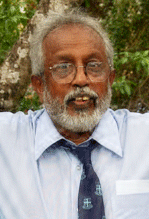 |
When the Dutch dominated the low country of "Ceylon" the more residential areas were around the Fort and the Pettah. These areas however went into decline with the transfer of colonial power to the English and those areas underwent a steady decline. In 1874 when Reverend D.H. Pereira built a school it was to educate the working class Dutch people's children. This was the Dam Street area not far from Hulftsdorp. An Englishman Rev. Samuel Wilkin was the chosen principal educator of the Dam Street school where 150 boys from the Pettah area attended.
In 1907 the campus was then moved to its present location on land belonging to the Methodist Church. It stood with the front gates facing Baseline Road and the rear entrance was on Karlsruhe Gardens. This came around the time that Wesley's most famous benefactor Rev Henry Highfield took charge. The man was a legend to everyone who knew him and the statute of the great man is seen when one enters the gates of this esteemed institution.
Denominations
From 1895 to 1925 under Rev. Highfield the campus grew in size and pupils of different denominations were accepted at Wesley who maintained that tradition throughout. Highfield was known to have ridden a bicycle around England collecting funds for his favourite dream: Wesley College. He continued collecting funds and even today the high impressive wooden ceilings, the works of art and design the endearing stain-glass windows shed light on the boys and men who would bring great repute to the institution. They were works of Victorian and Edwardian art in every sense of the word. The school hall is still the most astonishing piece of Wesley College and over the staff entrance today hangs a photograph of a man whose praises could be sung each year on founder's day, the first week in March.
Many famous old pupils of Wesley graced this school before they became the beacons of Ceylonese Society. One of the most noteworthy was Sir Oliver Goonetilleke, later the Governor General of Independent Ceylon. Appreciated by members of both sides of the house for being impartial, Sir Oliver was one Wesley will always be proud of. Mayors and politicians, businessmen and physicians, lawmen and lawyers they all had sung the school song with gusto every-time it was sung since it was composed and written by H.J.V.I. Ekanayake in 1898. This song was paradoxically based on a war song meant to rally Scots warriors against the rule of Edward king of England. It is a war song while the words of the school song mean to gather all Wesleyites old and young around "the bands of double blue". It advocated fraternity and some should listen more closely to the words and what it really means.
Most recent is the name synonymous with Wesley - Mohamed, who rose from Municipal Councilor to being Mayor of Colombo then rose from the back benches to being part of the engine room of the conservative UNP governments. Mr. Mohamed has had five sons and many nephews, grandsons and nephews all loyal old Wesleyites.
Other men were Sir D. S. Jayatillake who with composer lyricist H.J.V.I. Ekanayake founded the now world famous Sinhalese Sports Club in 1898. Wesley was honoured by the presence of another icon in Rev James Cartman (1945 - 1949) to whom the senior school library is dedicated to. Rev Cartman has the reputation of being the man who encouraged Wesley to being a bigger player at school cricket after the war years and the decline. His encouragement was taken up by two stalwarts Edmund Dissanayake and Shelton Pieris. The revival was stupendous and soon Wesley was treated as the school to beat.
Rev Cartman was followed by Cedric J. Orloof a civil servant who gave up a lucrative practice at law to lead the school into the glorious 1950s and beyond. His stay created a bond between two schools - Wesley and Trinity and that friendly rivalry is still carried on with a fraternity beyond par. During this time Wesley shone in all sports and as an academy. He was assisted by vice Principal Kenneth de S. Lannerolle himself an ardent sports fan.
Famous
The school in these years produced the famous Claasen brothers, Radley, Brian and Herman, the Adhihettys, Lou and Vincent, the Fuards, Abu and Ansar and M. N. Samsudeen. Orloof went on to take over Trinity College in 1957 and Wesley had their first of many old boys principals in P.H.Nonis. Wesley had to turn a corner when the dilapidated historical buildings were crumbling with neglect until Dr. Shanti Mc Lelland sacrificed a career in Canada to right the wrongs and return the school to its pristine glory. The school now boasts a magnificent swimming pool and a campus that has many loyal old Wesleyites proud.
The school also has three new primary school buildings and will soon have a spanking new five storeyed building to house the Colombo Primary School where the Boys' Industrial Home, Wellawatte once stood.
Dr. McLelland was preceded by principals Dr. Lou Adihetty, and Chemistry scholar world renowned. Dr. Adihetty was in his time Senior Prefect, and captain of the cricket, football, hockey and tennis teams. N.A. Benito affectionately known as "Nabbie" Fernando was a leading hockey player before he moved to England to teach there.
He was followed by M.A.P. Fernando also known as "Mappa" who served from 1985 - 2008.
The saying is that a great institution will always rise out of shambles.
That is exactly what Wesley has done over the past five years.
ORA ET LABORA
Written By Lalith (L.C.R) Wijesinghe
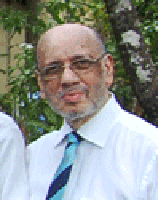 On the evening of 18th August 2014, a few past Wesleyites assembled at the Executive Lounge of the Galadari Hotel to meet and greet Professor Ratnasamy Somanathan and his charming wife Indrani from San Diego, California, over dinner. He was visiting Sri Lanka after nearly 40 years.
On the evening of 18th August 2014, a few past Wesleyites assembled at the Executive Lounge of the Galadari Hotel to meet and greet Professor Ratnasamy Somanathan and his charming wife Indrani from San Diego, California, over dinner. He was visiting Sri Lanka after nearly 40 years.
It was indeed a great pleasure to be with the genial Professor and his wife. The informal style of the dinner, his self-effacing manner and easy charm helped to make it a memorable occasion.
Ratnasamy Somanathan joined Wesley College in 1956 and left in April 1962. At school he was a versatile character. A sportsman, an academic and a friend to many. Soma was a gifted and stylish footballer for the 1st XI whose magical dribbles and perceptive passing helped the team enormously. He was a fine athlete for Moscrop House taking part in the 100 yards sprint at the annual Sports Meet with much success. In the hostel he was a respected Prefect. He joined in the fun and frolic which was ever present in the boarding and truly endemic in the 6th Form. Thus he took an active part in the life of the school and made a tremendous contribution.
At Wesley, Soma was endowed with a gift for friendship and made many friends. These friendships lasted a lifetime because of his loyalty, generosity and kindness. Modesty was his hallmark. Meeting him tonight after all those years we can confidently say that this aspect of his personality has certainly not changed. Neither have the years dimmed his affection for his old school.
Our time at Wesley were our formative years and for many they were the golden years. Even during those turbulent times of public examinations Soma kept calm with his beaming smile, tall tales and amusing anecdotes. But he continued to work hard. The strict regimentation in the hostel and the ethos of the 6th Form at Wesley brought out the best in him. All through the school years he had a strict work ethic and a sharp eye for detail. He had an inquiring mind and formidable drive. In the process he pursued knowledge with extraordinary meticulousness. We are so proud of his remarkable achievements and exceptional academic career in Organic Chemistry in San Diego State University. In California his career, marriage and growing family has been the centre of his life.
The sad and tragic events of the past and the ethnic strife affected Soma and his family adversely which has prevented him from visiting Sri Lanka for many years. As always he believes in looking forward, in keeping an open mind and remaining positive. We assume that the dawn of a new era with the current climate of peace and mutual respect has helped him to return to his much loved roots.
 Soma was looking so dapper and youthful, with that dazzling smile and abundant energy. Those present to greet him were O.K. Hemachandra and wife Dhammika, Dalkin Samidon and wife Nafeeza, Lucky Goonetilleka, M.A.P. Fernando, Kenneth De Silva, Sarath Wickramaratne, Milton Arandara, Afghar Mohideen and Lalith Wijesingha and wife Pamela.
Soma was looking so dapper and youthful, with that dazzling smile and abundant energy. Those present to greet him were O.K. Hemachandra and wife Dhammika, Dalkin Samidon and wife Nafeeza, Lucky Goonetilleka, M.A.P. Fernando, Kenneth De Silva, Sarath Wickramaratne, Milton Arandara, Afghar Mohideen and Lalith Wijesingha and wife Pamela.
It was an evening full of warmth and anecdotes of times past. Tales of Wesley hostel life were recounted by Soma & Kenneth where they were the best of hostel mates. The wine and spirits flowed freely and embellished the conversations enormously. He shared his enjoyment of life with everyone he met. It was an evening to savour in the elegant and well served surroundings of the Galadari Executive Club which was exclusively enjoyed by us courtesy of Afghar Mohideen.
Dinner was a simple Sri Lankan fare enjoyed by all. Kenneth De Silva ended this pleasant and nostalgic evening with an eloquent speech to mark the evening. We all bade goodbye to Soma & his wife Indrani with wishes for a safe trip back to San Diego the next day. It is our fervent hope that someday we will have the good fortune to meet again.
Ah! Where have all those years gone?
The Photographer Lalith Wijesinghe is absent from these images - A Martyr yet again !!


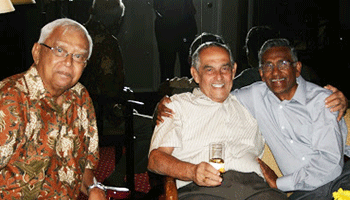 |
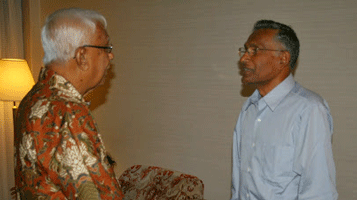 |
Links to further reading
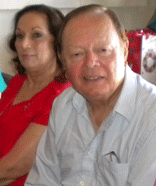 Arthlow Chapman an outstanding past Wesley cricketer from the Claessen era who is domiciled in Melbourne,Australia was visiting Sri Lanka in September - October 2014 with his charming wife Christobel. As per the usual tradition a few past Wesleyites mainly from the Cricketing fraternity had plans to organise a “get -together” with him at the Old Wesleyites Sports Club on Saturday 18th October 2014.
Arthlow Chapman an outstanding past Wesley cricketer from the Claessen era who is domiciled in Melbourne,Australia was visiting Sri Lanka in September - October 2014 with his charming wife Christobel. As per the usual tradition a few past Wesleyites mainly from the Cricketing fraternity had plans to organise a “get -together” with him at the Old Wesleyites Sports Club on Saturday 18th October 2014.
Campbell Park has always been our amphitheatre. We were pleased to welcome Arthlow and Christobel at the Old Wesleyites Sports Club just a few feet away from the Pavilion that hosted the great and the good involved with cricket over the years. The early 1950's were some of our best years of cricket at Wesley. Arthlow was a member of those memorable teams lead by Radley Claessen in 1952 and then captained by Bryan Claessen in 1953.
 At Wesley he was a boarder with Neil Gallaher. The two were inseparable. With his tall good looks and boundless energy Arthlow was a gifted cricketer. He was a patient batsman who crafted his innings for the benefit of the team. Quiet and modest, he had the respect of all the students who were die hard cricket fans. Arthlow showed tremendous loyalty to the school throughout his time at Wesley and wore his devotion to the school on his sleeve. I presume he regards his time at Wesley as a privilege. Even after he left Arthlow visited the school on many occasions. Like many of us he regards Wesley not a school but an institution which moulded one’s being, and that the work ethic which helped make so many distinguished careers evolved from its competitive environment and ethos. He graced the event at the Grand Reunion in September 2012 and met up with many school friends from his era.
At Wesley he was a boarder with Neil Gallaher. The two were inseparable. With his tall good looks and boundless energy Arthlow was a gifted cricketer. He was a patient batsman who crafted his innings for the benefit of the team. Quiet and modest, he had the respect of all the students who were die hard cricket fans. Arthlow showed tremendous loyalty to the school throughout his time at Wesley and wore his devotion to the school on his sleeve. I presume he regards his time at Wesley as a privilege. Even after he left Arthlow visited the school on many occasions. Like many of us he regards Wesley not a school but an institution which moulded one’s being, and that the work ethic which helped make so many distinguished careers evolved from its competitive environment and ethos. He graced the event at the Grand Reunion in September 2012 and met up with many school friends from his era.
Those glorious years were more than 6 decades ago when Arthlow was a teenager. Some of the members of that fine team have now departed this world and we remember them with much affection. It was wonderful to see so many gather together to welcome and honour Arthlow and Christobel. It was good to see Mr Fred Abeysekera and Mr Edmund Dissanayake with their wives. They ably represented the teaching staff of those halcyon days.
The Cricket Team 1952

The participants at the get -together were Mr & Mrs Edmund Dissanayake, Mr & Mrs Fred Abeysekara both past teachers and old boys, Colonel(rtd) S. Musafer & wife ( wicket keeper from the Claessen era) Neil Gallaher, M.N.Samsudeen,( former team mates of Arthlow) Major(rtd.) H.B Tammetigama ( former Senior Prefect) Mr & Mrs Ranjith Seneviratne ( former Senior Prefect) Neville Perera ( past cricketer) O.K. Hemachandra ( rtd DIG of Police) Lucky Goonetilleke ( Past Srilanka Cricketer)Sarath Wickramaratne ( Past Cricketer) Milroy Muthuveloe ( Past Cricket Captain) C.T. Rodrigo ( Past Cricketer) Oscar Dissanayake( Past Cricket Captain)Lalith Wijesingha ( Past Cricket Captain) together with the guests of honor Arthlow Chapman and wife Christobel.

The garden space at the OWSC could not be made use of due to the inclement weather and seating was arranged indoors.Reminiscences were shared by all those present of the by-gone days. It was a trip down memory lane for many. Dinner was a simple Hopper & Curry.
Mr Fred Abeysekara & Edmund Dissanayake spoke of the contribution made by Arthlow to Wesley and Wesley Cricket in particular. Arthlow & Christobel made their responses and thanked everyone present for contributing to the pleasant evening.The get-together concluded with the singing of the College Song.
Go on a journey down memory lane with the help of these links
Links to further reading
- Wesley cricket 50 years ago -- a spectators view by Dr.N.D.Amerasekera
- Wesley's glorious years of cricket by Bryan Claessen
- My Memories of MN Samsudeen at Wesley by Nihal D Amerasekera
- Some Memories of cricket of the 1950's sent by Bryan Claessen
- BMN Jurangpathy - versatile sportsman and administrator by Premasara Epasinghe 26/9/11
- When the Claessen brothers were big news By Elmo Rodrigopulle
- The Incomparable Mr AV Fernando - by Dr. Nihal D Amerasekera
- Wesley's Memorable team of 1953
- Radley Claessen - A Tribute by Dr Nihal D Amerasekera
- Radley Claessen returns for last farewell to Sri Lanka By Kenneth de Silva
- The late Ansar Fuard honoured at Wesley cricket celebration By David Stephens
- Neil Gallagher remembered by Dr Nihal D Amerasekera
- Some Memorabilia from Wesley's Cricket Legend, Bryan Claessen
- Radley Claessen's visit to Wesley College - April 2013 Added 19/4/13
- Abu Fuard - One time Asia’s Best off spinner and Fine Cricket administrator by Premasara Epasinghe
- Dr. Louis Thomas Adhihetty - In Memoriam 16/8/09
- J.L.F De Mel Remembered by Nihal D Amerasekera
- Mr C.J Oorloff by Nihal D Amerasekera
- Edmund Dissanayake - The Doyen of Cricket at Wesley by Dr.N.D.Amerasekera
- Edmund Dissanayake A legend at Wesley by Premasiri Epasinghe
Invitation to join the Wesley College Colombo 140th Anniversary Brisbane Branch Fund Raiser by Carlyle Wells-Peris
We are seeking your assistance and support for donations/sponsorship towards the Inaugural Brisbane branch double blue ball Fund raiser.
The purpose of this fundraiser is to help finance an annual recurring scholarship scheme to help deserving disadvantaged youngsters from the townships around the college locality and those from the provinces who show outstanding academic and sporting prowess the opportunity to be a part of the Wesley College experience.
Wesley has over the past 140 years been a leading non fee levying college providing excellent well-rounded young gentlemen through a carefully prepared educational process. The College nurtures and develops its students to excel in the academic, sporting and social spheres. Thereby enabling them to make a positive contribution to the fabric of the Sri Lanka society when they move on.
Not far from the College is located a number of lower income socio economically disadvantaged townships. Here the bright and talented youngsters amongst this population at present do not have the opportunity to reach their full potential due to the lack of access to the facilities and opportunities that schools such as Wesley provide.
The scholarship program towards which the funds you contribute will go to help establish an ongoing scholarship program that is aimed to help identify and provide these youngsters the opportunity to study and experience the all-round nurturing and character building that Wesley provides to all its Alumni.
Wesley is a beacon of tolerance and inculcates the importance of an all-inclusive harmonious society that understands the advantages of cohesiveness in a historically diverse multi-cultural social structure that consists of various ethnic, language and religious segments.
This scholarship program will help to further enhance these critical values of our students and the society they go out into on completing their studies.
Thanking you for your time and anticipating your support as a donor or sponsor
For and on Behalf of the Brisbane fund raising committee
Bill Deutrom (AOM), Neil Harvie, Carlyle Wells- Peris and Luxman James
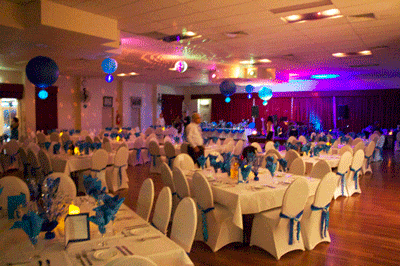
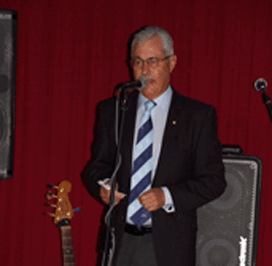
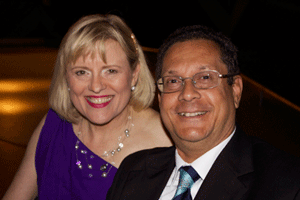 |
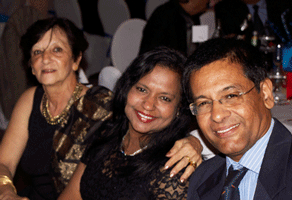 |
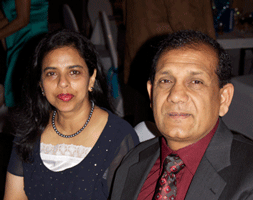 |
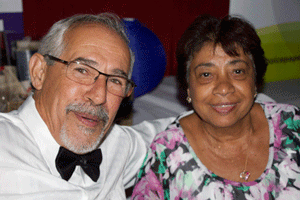 |
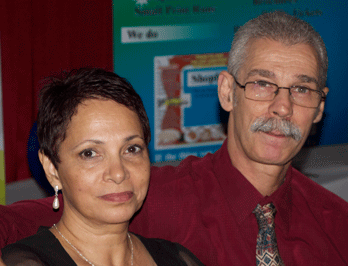 |
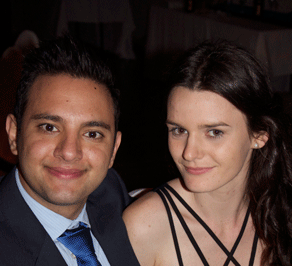 |
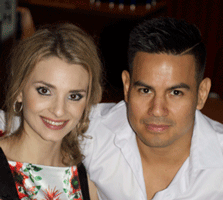 |
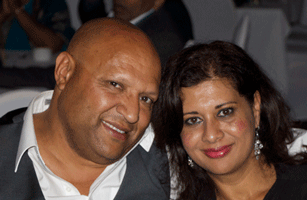 |
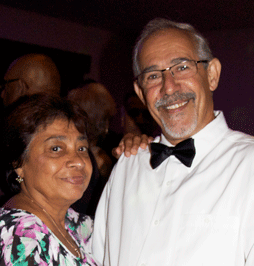 |
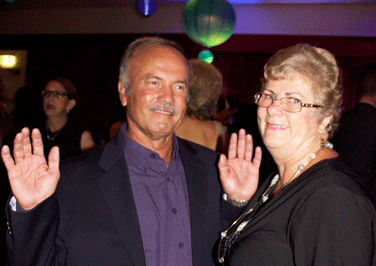 |
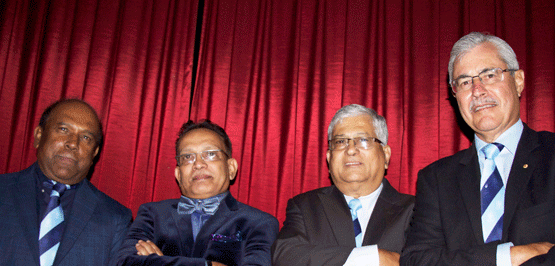 |
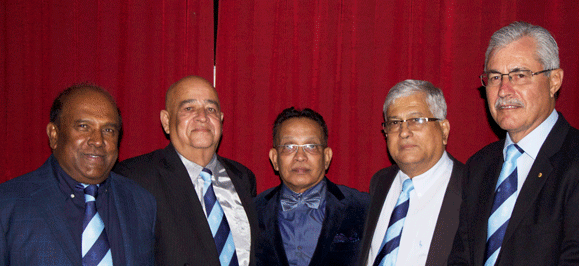 |
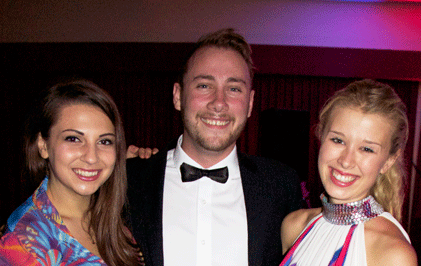 |
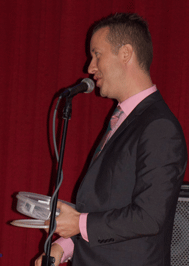 |
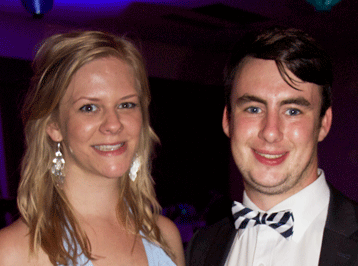 |
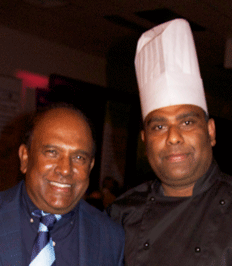 |
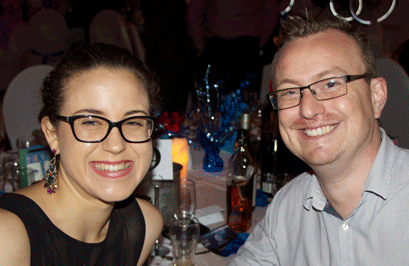 |
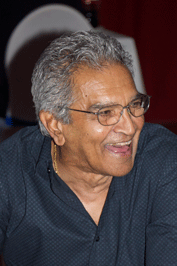 |
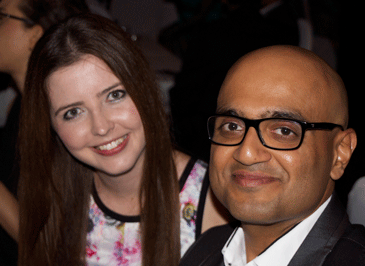 |
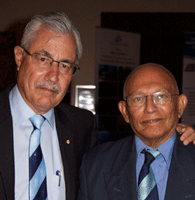 |
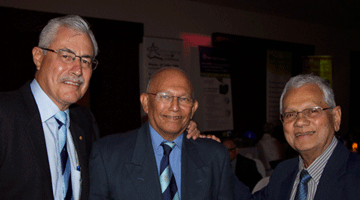 |
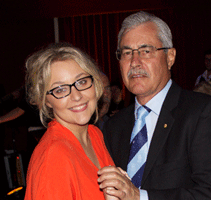 |
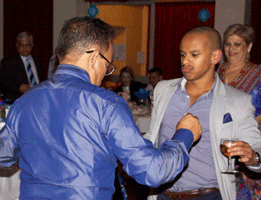 |
 |
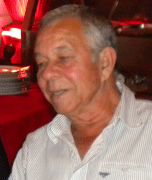 |
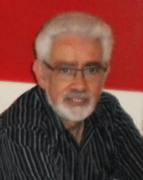 |
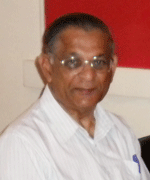 |
| Beverley De Niese | Lorensz Stork | Haig Maloney |
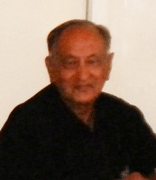 |
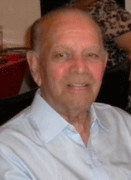 |
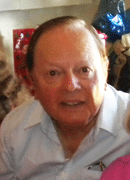 |
| Robert Coburn | Gerald De Zilwa | Arthlow Chapman |
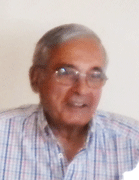 |
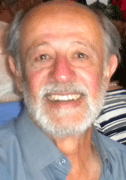 |
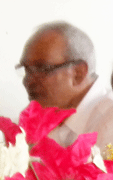 |
| Glenn Reimers | George Siebel | Maurice Mortier |
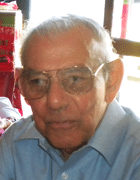 |
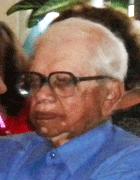 |
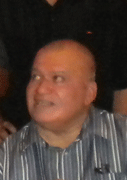 |
| George Robertson | Glyn Lappen | Keith De Kretser |
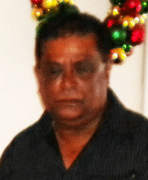 |
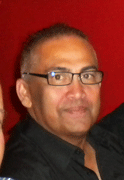 |
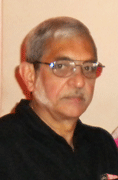 |
| Reggie Bartholomeusz | Norton Abeydeera | Nelson De Silva |
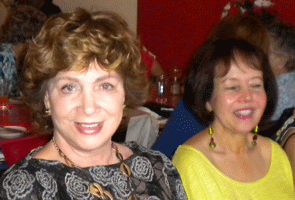 |
| Gillian Leembruggen and Heather De Vos(wife of Harry) |
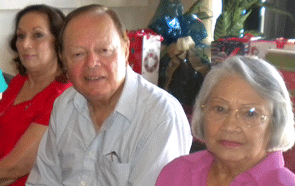 |
| Christobel and Arthlow Chapman and Beryl Robertson |
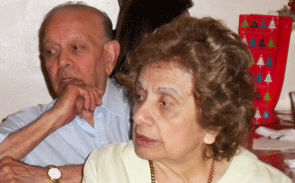 |
| Gerald and Kathleen De Zilwa |
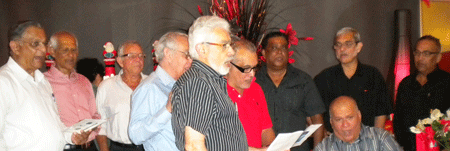 |
| Haig Maloney, Lucien Fernando,Beverley De Niese,George Robertson,Lorensz Stork,Bryan Wijeyekoon,Reg B,Keith (seated) Nelson De Silva, Norton Abeydeera. |
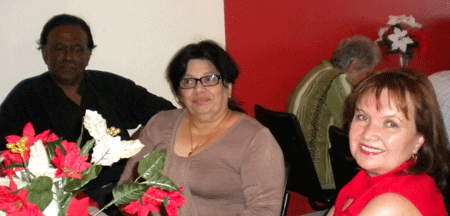 |
| Joe & Sandra Devendran, Trilby Reimers |
From Keith De Kretser and Trevor Collette
Once again the senior members of our alumni community in Melbourne and the widows of our seniors called home gathered at Cha’s Cabin on Sunday 14th December for the traditional Seniors Christmas Lunch. Many of the old familiar faces were in attendance as well as some who were missing due to ill health or personal reasons. The Committee welcomed the special guests as they settled in for some pre-luncheon drinks. The oldest member in attendance was Anton Blacker (94 years young) who may be the oldest living Wesleyite. Others to grace the occasion were the Mack brothers, - Douglas and Vivian, George Robertson, Robert Coburn, Glyn Lappen, Beverley de Niese, Lorensz Stork, Haig Maloney, Maurice Mortier, Lucien Fernando, Glenn Reimers, Arthlow Chapman, George Siebel, Joe Devendran, Gerald de Zilwa and Ron Van Buren.
Cha’s Cabin looked resplendent as usual with Red Poinsettia’s decorating the tables and Christmas wreaths on the walls setting the festive tone. After a welcoming speech by President Reg Bartholomeusz. A minute’s silence was observed remembering those members of the OBUA that were no longer with us. In the absence of stalwart Langston Joseph who regularly says Grace at this function, Trevor Collette stepped in and did a great job.
Lunch was served soon after and as usual Cha’s had not spared a thing with an extensive selection of Eastern and Western dishes supplemented by the standard festive fare of turkey and ham. The food was delicious as always and many of the patrons went back for seconds. After lunch a number of former Choristers gathered together and led the patrons in singing a few of the favourite Christmas Carols. Shortly thereafter dessert was served. As the afternoon wound up for another year, the Committee handed each senior, their partner and each widow a gift and a piece of Christmas cake. As good bye’s and Christmas greetings were exchanged, another memorable Seniors Lunch came to an end.
Added 3rd Feb 2015
Last week, I happened to be at the Kingswood Students’ Center when I has the opportunity of sharing my table with two kids from Wesley College. Wesley had come to Kingswood for a Junior Basketball tournament and the Students’ Center was teeming with Wesley boys and their parents / teachers. The two boys who spoke to me were, perhaps, ten or eleven — a tad too small, maybe, to have known the historical relations between Wesley and Kingswood. I asked them whether they knew of their eminent Past Principals Kenneth De Lanerolle and Harold Nonis — whom Wesley and Kingswood share as heads of institute —, but no familiar bells were seen ringing. I ended our brief encounter wishing both kids well and encouraging them to “beat Kingswood” at their game, that evening.
With distinct Methodist and Wesleyan relations, Kingswood and Wesley are still acknowledged as “brother schools”. Founded in 1874 under the auspices of Rev. Daniel Henry Pereira, with Rev. Samuel Roswe Wilkin as its founder principal, Wesley has a rich shared history with Kingswood, if we are to scrutinize the school logs of yesteryear. Kingswood was never of “Methodist origins” — as it was founded by Louis Blaze as a Private Boys’ School and was not handed over to the Methodist Mission in spite of repeated entreaties (until much later when a Board of Directors appointed by the Mission was admitted as patrons of the school) — though later ties only strengthened Kingswood’s profile in the transformative 1940s and 1950s.
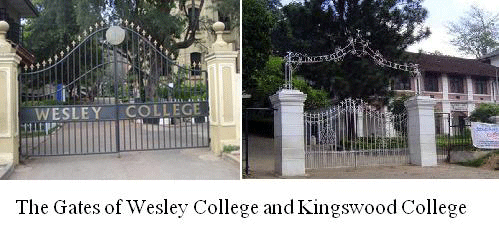
Photo of the College-Gates Today
The cultural ties between the two schools are more readily acknowledged in the field of sports, where the “Rugby Big Match” of the school calendar is fixed between Wesley and Kingswood. This fixture, inaugurated in 1986, is played for the L.E. Blaze Trophy and has been a regular event till the mid 2000s, where the series was interrupted by unsporstmanlike behaviour on the part of some spectators; and was subsequently called off. The mid to late 2000s also marked a downward glide in Wesley’s rugby fortunes which resulted in a series of “one sided” games which, in turn, hampered spectator interest. However, the resumption of this series last year is a commendable and positive step — not only in the name of rugby in the two schools, but also as a strengthening of a historical bond which, with years and many changes in the country’s education, has become “nominal” and “remote”.
Kingswood hosts an inter-school debate competition in memory of the late KM De Lanerolle of which Wesley once showed much interest in partaking, at being invited in 2005 and 2006. Unfortunately, they could not make it owing to (as they claimed) the “volatile security condition” of the country at that point. The organizers of the debate competition have not since extended their invitations “out of province” (with the exception of Kurunegala and Kegalle, I believe) since, which is a shame. In 2006, Richmond College, Galle — another “cousin” of Kingswood — made a strenuous one day visit to Randles Hill to be a part of the same competition. On both occasions, the enthusiasm and the “awareness” shown by Wesley and Richmond richly demonstrated how for some these shared cultural ties still mattered, though we are in a totally different age from Blaze’s time.
The Blaze Trophy in 2013 ended in a 8-8 tie at Bogambara, contested under soggy, slippery conditions. Kingswood was having a less than average season, which they eventually summed up the following weekend with an unpardonable exchange of fisticuffs with St. Anthony’s. What was contested with equal vigour, we hope, would be a resumption of a sporting tradition that runs way back as 1986, when Kingswood came trumps at the inaugural Blaze Test under Ronnie Ibrahim. Since then, out of 26 encounters Kingswood has won 18 and Wesley was won 05; while 03 games have ended in ties/draws.
Seeing Wesley at Junior Basketball, running about the Kingswood basketball court, links our times with the past generations of Kingswoodians who would have felt an “affinity of brotherhood” with the name Wesley. It is by all means a good resonance to cultivate, but has to be done productively — as the extension of a cherished bond which has, in the past, made both Kingswood lives and the lives of Wesleyites meaningful.
Wesley College (Colombo) Old Boys’ Association (NSW) Inc. held their Double Blue Ball on Saturday the 3rd of July 2010 at the Pioneer Ballroom, Castle Grand, Castle Hill. The function was well attended by a large number of old Wesleyites, their wives, well wishes and supporters. The music was provided by the Kopykatz and D.J.Neil. The Dinner was catered by Daniel’s Restaurant and was enjoyed by all. The highlight of the evening for the Old Boys was the singing of their college song followed by their traditional “Hakka”.
From the Editor: My special thanks to Nizar Sappideen for "putting names to the faces" many of whom have changed so much since those halcyon days at school.
 |
| L to R: |
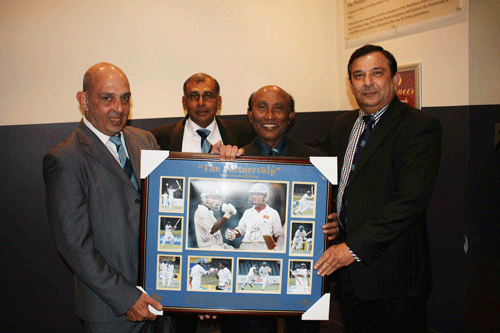 |
| L to R: |
 |
| L to R: |
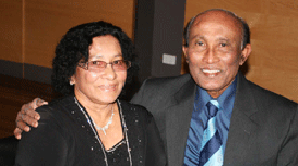 |
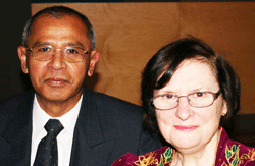 |
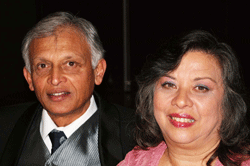 |
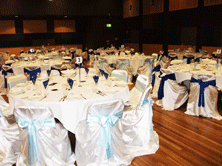 |
| L to R: |
|
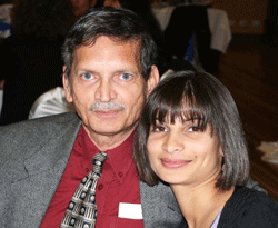 |
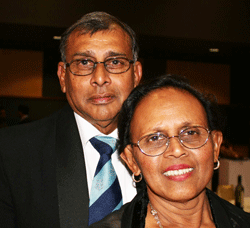 |
Added 21st March 2015
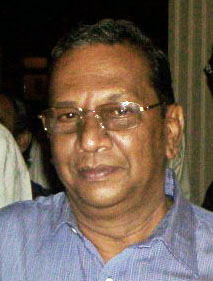 Wesley College, Colombo, one of the oldest educational institutions in Sri Lanka continues to maintain tradition as it prepares to celebrate its 139th Founder’s Day on 02 March 2013. Wesleyites around the world make it a point of gracing this occasion as they relive the past and enjoy the various activities which culminate in the traditional OBU lunch.
Wesley College, Colombo, one of the oldest educational institutions in Sri Lanka continues to maintain tradition as it prepares to celebrate its 139th Founder’s Day on 02 March 2013. Wesleyites around the world make it a point of gracing this occasion as they relive the past and enjoy the various activities which culminate in the traditional OBU lunch.
The annual OBU celebrations also coincide with Founder’s Day, so much so, that an exciting two-day program has been drawn up commencing with friendly sports encounters between the past and present students, scheduled for Friday 01 March 2013. This will be followed by the annual ‘Past vs Present’ cricket match on the morning of Saturday 02 March.
The customary OBU lunch will be held on the Principal’s lawn on 02 March, followed by the Annual General Meeting in the College Hall at 3.00 pm. The significant change in the program is that Water Polo has been included for the first time as part of Founder’s Day celebrations.
Before the term of office of the current Executive Committee ends, it is opportune to reflect in brief on its achievements during the period under review. Having pledged its fullest support to the Principal of Wesley College Dr. Shanthi McLelland in his vision to upgrade the overall quality of Wesley, the OBU focused its attention on two aspects. One was to significantly improve the products of Wesley and the other, to extend the facilities and develop the infrastructure of the school.
Accordingly, the OBU commenced its program for the year by organising a high quality workshop on ‘Career Development’ for 50 senior students of the school. A workshop on ‘Training and Development in the IT Sector’ was also conducted for the benefit of a select group of teachers, followed by an OBU presentation on ‘Leadership’ on Prefects’ Day.
The OBU assisted in the project initiated by the Principal to restore the old photographs that adorn the pavilion, the condition of which was increasingly deteriorating, while some had gone missing. While the restoration of these photographs was done by a loyal parent, the OBU arranged to provide the framework for the secure re-positioning of these photographs. These were unveiled by the Principal in the presence of several senior members of the OBU in July 2012.
The OBU headed by its dynamic President Ivor Maharoof together with his team of old Wesleyites during the course of the year notched some remarkable achievements which deserve permanent entry in the annals of Wesley.
L.C.R. Wijesinghe a former Wesley cricket captain, together with a committed team of old Wesleyites, literally made a dream come true by bringing together past cricketers and renowned Wesleyites from all over the world to assemble at College and participate in a series of events.
These included a grand assembly in the College Hall, a sit-down banquet at the Galle Face Hotel, a full day’s activity in the College Grounds and the Club House.
A group of Old Wesleyites from the 1968 to 1972 class batches under the dynamic leadership of Wilhem Vandort organised an unforgettable get-together comprising batch members both from Sri Lanka and abroad. The program provided for a wonderful time of fellowship and remembrance of good times at College. This batch also made a significant contribution towards the restoration of the College Hall.
Jeremy Brohier a stalwart from the OBU created history by producing an invaluable hard cover book on the history of
Wesley College Cricket. Jeremy has obvious spent several months of sleepless nights and long hours of research to produce this masterpiece. Wesley owes him a debt of gratitude for his unfailing resolve to produce this magnificent book.
The OBU was actively involved in a series of events, some of which were steered under the leadership of the Principal. Foremost among these were the construction of the Swimming Pool in record time and the hosting of His Excellency President Mahinda Rajapakse who visited Wesley in September 2012. The Principal successfully steered both these events which were well supported by members of the OBU.
The OBU is proud to state that it inked an agreement with Etisalat this week for the sponsorship of the Wesley College rugger team for the school’s rugby season.
After the successful completion of its tenure of office, the OBU is gearing itself to ensure that the forthcoming year will be a memorable one, both for the students as well as other stakeholders of the school.
The Annual Senior School Sports Meet of Wesley College was held at Campbell Park on Friday 27th March 2015 under the patronage of the College Principal Rev. Ebenezer Joseph.
It was indeed a colorful event with each House vigorously competing not only to be the best in athletics but also to win the award for the best decorated tent. The Teachers Guild ably led by the Master in charge of Athletics Mr. Hemantha Perera worked tirelessly to make this event an unreserved success ably assisted by the Wesley college Sports administrator Mr. Clifford Rodrigo. The highlight of the day’s proceedings was the magnificent drill display by 140 students of grades 6 and 7 who were clad in bright and beautiful outfits.
While Wilkin House emerged. Champions Nethuja Herath, Ebinesh Udayakumar, Ovin Vinnath, Thikshana Vithanage, Dhyan Wijetilleke, Sanjula Perera and Sudesh Fernando were the pick of the Athletes who performed excellently. The former public school and Wesley College Athletics Captain and a life member of the Wesley College Old Boys’ Union Mr. Peter Peiris together with his wife were the Chief Guests. Mrs. Anoja Peiris presented the awards.
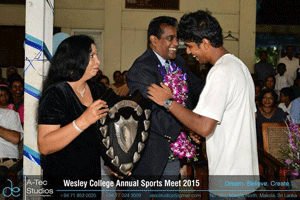 |
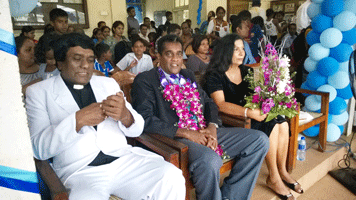 |
By Nizar Sappideen
 |
L to R: Standing: Seated: L to R: On the ground: L to R: |
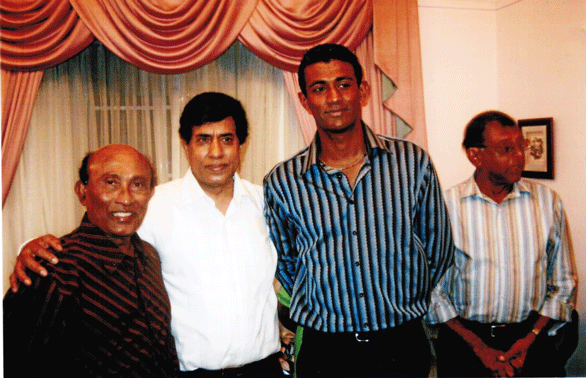 |
L to R: |
Message from Jeremy to the Wesley OBA (Sydney) Australia
My wife Susan and I send warm greetings from across the waters in Sri Lanka. We returned on the 8th April from Melbourne and are slowly beginning to find our feet into the reality of being at home. Both of us are thankful for the wonderful hospitality extended by hosting us for dinner, one we shall cherish and hold close to our hearts.
It was a very exciting and awesome experience having visited Brisbane ,Sydney and Melbourne for just around over a month.We have brought back fond memories of Australia.
Thank you and God Bless
Jeremy & Susan Brohier
 |
L to R: |
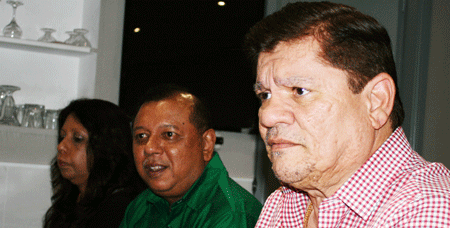 |
L to R: |
By Nizar Sappideen
The past pupils of Wesley College, Colombo in NSW and their friends gathered at The Epping Club, Epping, on Saturday 26th September 2015 to celebrate their ‘DOUBLE BLUE SPRING BALL 2015.’
On arrival guests were met by the Committee(President – Chris Swan: Vice President – John Buultjens: Secretary – Noel Saravanamuthu: Treasurer – Nizar Sappideen and Keith Grenier) and old friends happily greeted each other, as some had not met although living in close neighbourhoods. The tone for the evening was one of fellowship, as the school song goes ‘Bound by one fraternal band, band of Double Blue.’
Before close the Wesleyites gathered to sing the College song remembering the Institution that gave them their education and character. This was followed by the Wesley war cry ”Zum Zum Zake…” led by Nizar Sappideen, which made the attendees roar in laughter. The event was well handled by compere Lalith Fernando, a past President of the OBA.
The NSW Old Wesleyites did their College proud as the guests and past students left after a pleasant evening, all remarking that they had attended one of the best dances for the year.
The following attended the dance: Chris Swan, John Buultjens, Noel Saravanamuthu, Nizar Sappideen, Keith Grenier, Ganesh Mylvaganan, Lalith Fernando, Ray Jansz, Jaye Winslow, Suren Rasiah, Shirley Samuel, Mel Mottau, Bashur Musafer, Asoka Kularatne, Frank Baptist, Seenar Sappideen, Nimal Weerasinghe, Jerremy Classen, Gamini Kulasuriya, Kugan Thiru, Roger Hesse, Rodney Harvie, Stan Niles, Samil Suhood and Godfrey Abel.
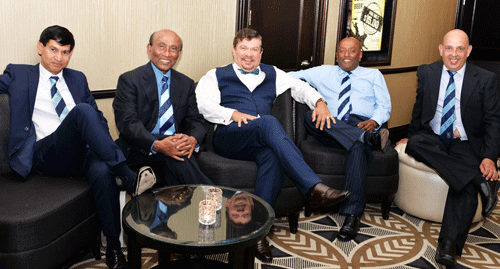
Photo - L to R:
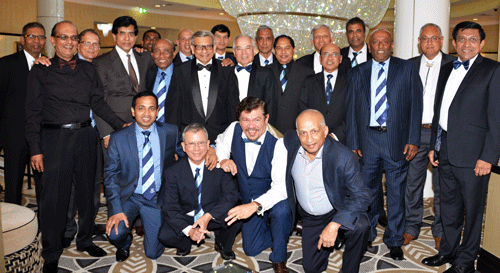
Photo - L to R:
On the floor - L to R:
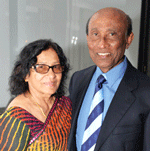 |
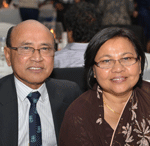 |
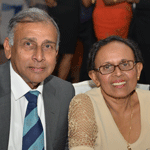 |
| Nizar and Wife | Seenar and wife | Darrel Maye and wife |
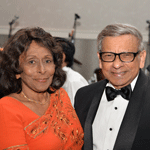 |
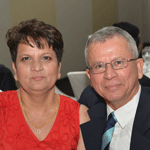 |
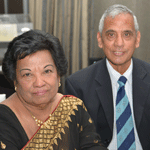 |
| Shirley Samuel and wife | Roger Hesse and wife | Bashur Musafer and wife |
By Dr Nihal D Amerasekera
Sporting prowess was prized above learning?
 I remember Bryan Claessen as one of the finest sportsmen of my era. Although he was eight years my senior we struck up a friendship when he contacted me after reading my article in the 125th Anniversary Souvenir. He spoke to me many times about the lack of recognition given to academics from school compared to sportsmen. He felt this was grossly unfair. Coming from a sportsman of his caliber I gave serious thought to this issue.
I remember Bryan Claessen as one of the finest sportsmen of my era. Although he was eight years my senior we struck up a friendship when he contacted me after reading my article in the 125th Anniversary Souvenir. He spoke to me many times about the lack of recognition given to academics from school compared to sportsmen. He felt this was grossly unfair. Coming from a sportsman of his caliber I gave serious thought to this issue.
I have maintained the Double Blue International for 20 years. In the DBI there is a whole page for Sports but no page for Academics or their achievements. So I am partly to be blamed for this ‘willful neglect’. Even in the daily newspapers there is a section for sports but none for academia although they get a mention in the general news items.
During the school years we always gave respect to those who were clever and did well in their studies. The end of term reports and the end of year promotions to the class above depended on the academic performance. The Annual Prize Giving made awards to those who performed well academically. The Hill medal and the Gogerly Scholarship were special awards for bright students. So the academics too got their fair share of applause and acclaim.
Over the years I have enquired from many sportsmen and academics. I have also asked sportsmen who are academics. I asked my son who played cricket and hockey for a British Public School and followed a course in medicine at Cambridge where he was awarded the hockey blue. He said on looking back he was more proud of his achievements in sports than his academics. He said academic achievements were for his personal gain and career, whereas the sports were for his team and his school and University. This explains the extra recognition and adulation one gets from the school and friends.
Bryan Claessen was a gentleman in every sense of the word and I appreciate his concern. Team Sports have been in existence since pre-historic times. We live in a world that loves sports. Bryan is right, Academic awards are very few even when inventions and discoveries benefit humanity and the society. The recognition is disproportionately poor. Such are the ways of the world.
We all enjoy sports and remember sportsmen more than academics. The clever clogs at school do get their recognition. I will continue to manage the Double Blue International without a page for Academics. They fit in well in the rest of the DBI pages.
By Nizar Sappideen
The past pupils of Wesley College, Colombo in NSW, their families and close friends gathered in Sydney on 28th Nov. 2015 to celebrate their annual Christmas party. The following old boys graced the occasion:-
Christopher Swan, Nizar Sappideen, John Buultjens, Noel Saravanamuthu, Darrel Maye, Lalith Fernando, Nimal Weerasinghe, Jaya Winslow, Ray Jansz, Keith Grenier, Braden Koch, Gamini Kulasuriya, Frank Baptist, Chitta Mylvaganam, Rohan Thevarajah, Shantha Kulasingham and Mohan David.
The event was a ‘low key’ affair. Music was provided by a two piece band lead by Lalith Fernando, a past President. As usual at Christmas parties, all the popular Christmas carols were sung, joined by both Christians and non-Christians. A true Wesley fellowship bond. Dinner a grand roast, was prepared by John Buultjens, another past President. The food was much appreciated by all.
Before close, the Wesleyites sang the College song, followed by ”Zum Zum Zake…” It was a very pleasant evening enjoyed by all.
 |
| Photo: L to R |
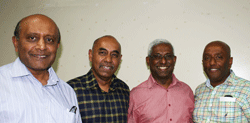 |
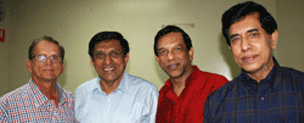 |
| Photo: L to R |
Photo: L to R |
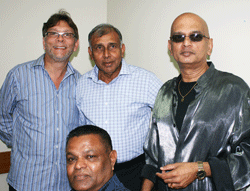 |
| Photo: L to R |
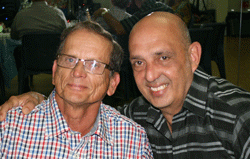 |
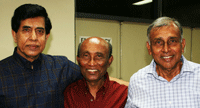 |
| Photo: L to R |
Photo: L to R |
By Nizar Sappideen
It was a glorious autumn day and 19 cheerful and high spirited Wesleyites, their spouses and friends, 54 in all, joined our annual picnic to picturesque Thirroul beach. Thirroul is a beach suburb located South of Sydney towards Wollongong. Australia is a large country and boosts of some of the most spectacular beaches in the world. First stop – St. Helensburg to visit the beautiful Hindu temple. Then to the magnificent ‘Bald Hill Look Out’ for breakfast. This place offers incredible views over the Pacific Ocean and one of the best picnic spots in NSW. Breakfast over and after some good ‘old cheer’ the mood changes to merriment. The ‘sing a long’ begins. The coach passes over the majestic Sea Cliff Bridge which hugs the coastline between Coalcliff and Clifton. The bridge which swerves out from the cliffs over the ocean and built to avoid falling rocks, is an engineering marvel indeed!! As the camera’s click the coach meanders along, encompassing some of NSW’s most scenic coastlines.
First activity on arrival at Thirroul, a mixed ladies and gent’s softball cricket match. With every run scored another added to boost the tally. Friendly arguments erupt and the most dishonest team wins. Other party games follow. The ladies and spectators beam with laughter, for this is a day of fun. The past pupils relate good old school tales and some gossip, most recent and past. Never a dull moment. Lalith Fernando with the guitar joined by Chris Swan, Darrel Maye, Keith Greiner, John Buultjens, Roger Hesse and many others join in to keep up the rollicking mood with music and songs of yesteryear. A filling lunch for all and an unavoidable siesta for a few, follows. After a dip in the ocean, the much awaited tug-of-war begins. It is all fun as some bodies end up on the wrong side. After Wesley’s traditional ‘WAR CRY’ the exodus to home begins. Not forgetting the memorable group photograph.
It was an unforgettable day, those who missed out, there is always next year.
WESLEY TO THE FORE!!!
 |
| Photo: L to R |
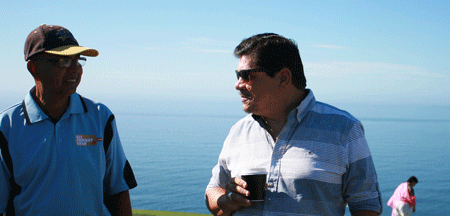 |
| Photo: L to R |
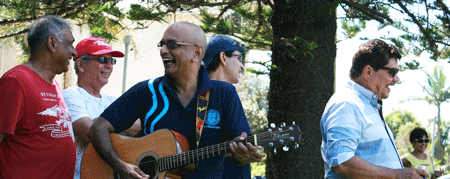 |
| Photo: L to R |
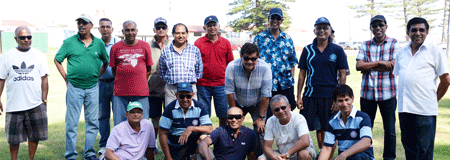 |
| Photo: L to R |
From Mohan Thambyah and Nihal D Amerasekera
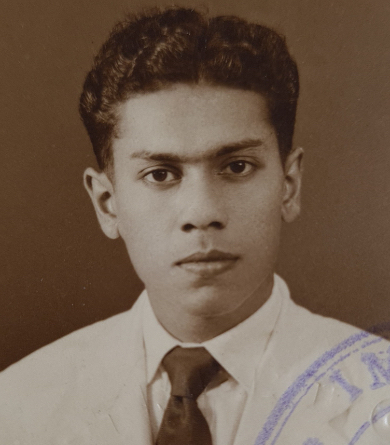
After a prestigious First Class Honours degree in Mathematics at University Of Ceylon, Colombo Mr Sam Gnanadurai started teaching at Wesley in 1958. He was only a few years older than some of us in the 6th form. He was a fine teacher of Physics and Maths for the GCE and University Entrance classes. He was softly-spoken,kind and modest and was a quiet private man who got on with the job of teaching. Mr Gnanadurai's enthusiasm for his speciality generated a great deal of interest in the subject. I learnt much from him as there was a dearth of good maths and physics teachers at Wesley during those years.
I am indeed grateful for his efforts which helped me enormously to get through the difficult entrance examination to the Faculty of Medicine. At least for some of us number crunching didn't come to us naturally. What I remember most of all is his patience, kind ways and his great efforts to make us understand the principles of Mathematics and Physics.
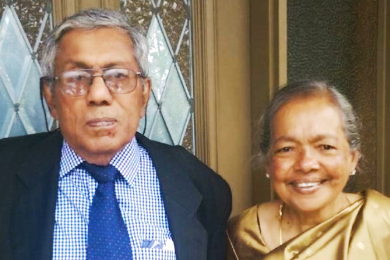
He left Wesley after 4 years when he was awarded a Government Scholarship to study Engineering in the UK. On his return to Sri Lanka he joined Telecommunications Department. After some years he emigrated to Papua New Guinea where he served as a Telecom Engineer. When he retired Mr Gnanadurai settled down in the beautiful city of Canberra.
Mr Gnanadurai's commitment to teaching during those 4 years made a great deal of difference to many. This is an appreciation for a teacher who made a lasting impression in the classroom and had a positive influence. We appreciate his contribution to teaching and the life of the school. He will be 80 this year. Like many of us from that era he has grown old gracefully. We wish him many more years of good health and happiness.
Mohan Thambyah who lives in Canberra has remained in touch with him and our grateful thanks to him for this journey down memory lane.
Links to further reading
Photo:
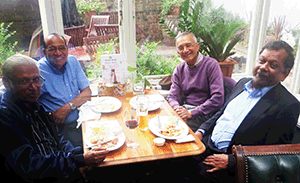 When Ranjith Rosa informed me that Hamilton Amarasinghe would be visiting London this summer It brought back many happy memories we spent together at Wesley from 1950-62. I can still remember Hamilton's father who worked at the Government Printing Press opposite Campbell Park bringing him and his brother to school. Hamilton was always a quiet, kind and happy lad at Wesley. He sailed through the various hurdles of examinations that came before us to reach the 6th Form. He left Wesley to join the Airport at Katunayake and rose the ranks to reach the top. He provided a service as a consultant in Jeddah Saudi Arabia and also in Indonesia. I last met him in Melbourne Australia in March 2009 when he and his wife joined me at lavish a party and dinner given by the OBUA. It was indeed a great privilege and a pleasure to meet him in London.
When Ranjith Rosa informed me that Hamilton Amarasinghe would be visiting London this summer It brought back many happy memories we spent together at Wesley from 1950-62. I can still remember Hamilton's father who worked at the Government Printing Press opposite Campbell Park bringing him and his brother to school. Hamilton was always a quiet, kind and happy lad at Wesley. He sailed through the various hurdles of examinations that came before us to reach the 6th Form. He left Wesley to join the Airport at Katunayake and rose the ranks to reach the top. He provided a service as a consultant in Jeddah Saudi Arabia and also in Indonesia. I last met him in Melbourne Australia in March 2009 when he and his wife joined me at lavish a party and dinner given by the OBUA. It was indeed a great privilege and a pleasure to meet him in London.
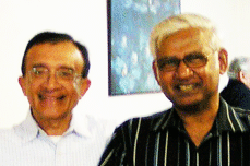 Ranjith Rosa and I have been together at the boarding at Wesley and have many stories to recall of mischief and mayhem as raucous kids in those happy days. We cannot forget the thrashings we received for our indiscretions. We have kept in touch over the years and more so now as I have moved to London not too far a way from Ranjith. When Ranjith was Chief Engineer at the posh Claridges Hotel London he entertained the late Mynah Wickramaratne and I to a lavish tea at his expense. That was indeed a memorable occasion.
Ranjith Rosa and I have been together at the boarding at Wesley and have many stories to recall of mischief and mayhem as raucous kids in those happy days. We cannot forget the thrashings we received for our indiscretions. We have kept in touch over the years and more so now as I have moved to London not too far a way from Ranjith. When Ranjith was Chief Engineer at the posh Claridges Hotel London he entertained the late Mynah Wickramaratne and I to a lavish tea at his expense. That was indeed a memorable occasion.
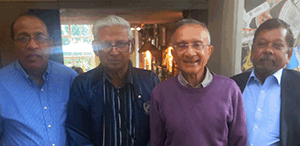 We were so pleased Paul David was able to join us at short notice. Paul has been a loyal committee member and official of the Wesley OBU London for 30 years since its inception. Paul has worked in the Petroleum Industry as an Engineer and consultant since he left Sri Lanka.
We met at the Ordnance Arms at St John's Wood at midday. We enjoyed a couple of beers with our lunch and chatted about old times and mutual friends. It always amazes me how much we remember of our friends and teachers at school. When our countrymen meet we always talk about politics and cricket. Paul being a true socialist had many anecdotes about politicians past and present. We parted with some sadness and in the hope that we can meet again sometime soon.
We were so pleased Paul David was able to join us at short notice. Paul has been a loyal committee member and official of the Wesley OBU London for 30 years since its inception. Paul has worked in the Petroleum Industry as an Engineer and consultant since he left Sri Lanka.
We met at the Ordnance Arms at St John's Wood at midday. We enjoyed a couple of beers with our lunch and chatted about old times and mutual friends. It always amazes me how much we remember of our friends and teachers at school. When our countrymen meet we always talk about politics and cricket. Paul being a true socialist had many anecdotes about politicians past and present. We parted with some sadness and in the hope that we can meet again sometime soon.
To move heaven and earth By Ishara Jayawardane
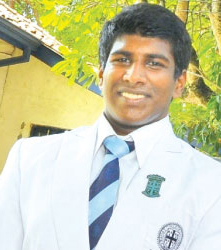 After a community service with the rest of the prefects. Head Prefect of Wesley College Joshua Siriwardena has many aspects of his life that work for him such as faith in his God, the people who have a positive impact on his life and faith in himself. Perfect Prefects features Siriwardena a leader who leads others with peace and purpose in his heart and mind.
After a community service with the rest of the prefects. Head Prefect of Wesley College Joshua Siriwardena has many aspects of his life that work for him such as faith in his God, the people who have a positive impact on his life and faith in himself. Perfect Prefects features Siriwardena a leader who leads others with peace and purpose in his heart and mind.
“In times of adversity I read my favourite verse Psalm 121:1 -2 –“I look up to the mountains, does my help come from there? My helps comes from the lord who made the heavens and the earth.’ I always carry a key in my pocket, and I when I hold that key I realize that I have the key to my life. I am responsible for my success and failure. If I fail it is all my fault. I could have done better,” explained Siriwardena.
Real privilege
“In school I look up to my chaplain Rev. Obeth because he has a lot of experience and knows how to tackle each and every situation in the right way. Then there is our principal, Avanka Fernando, a great leader who knows how to tackle every situation in the right way. Being in touch with them and working with them gives me much wisdom. Seeing them tackle the situation makes me learn so much. It is a real privilege working with them. When I am in real trouble then I pray. If it is a really tough problem I face, I would consult my mom. She is a very practical thinker. She knows how to get stuff done in the right manner. To solve a problem I would stand by my ground. I listen to everyone and make sure I make the right decision. If I am not sure about the decision I would consult someone or pray about it. Whatever I decide I would stand by my ground. I will stand my ground and make sure the proper thing is done,” elucidated Siriwardena.
Wesley College has a long history and a proud culture. “We all treat each other as brothers. We are all very united. No one leaves the school gates with an angry heart. There is a strong brotherly culture in Wesley. I thank Wesley for all I am.
Educational system
As a Head Prefect you have to play more of a brotherly role in Wesley College. Because that is the culture that has been passing on. Being a leader cannot be taught by any book or educational system. You need to get out there. It is more or less a practical lesson. You can’t read a book and learn leadership. The experiences you go through day by day is what makes you a good leader,” said Siriwardena. Siriwardena has so many role models to look up to.
“I have had so many heroes that have impacted my life. My dad is my first hero. I guess every boys first hero is his dad! Then there is our Chaplain Bro. T.R. Obeth who has helped me grow spiritually and gave me a whole new perspective of life. Then another leader I look up to is Nelson Mandela. 27 years in prison. But he just forgave and gave love. That takes a lot of courage. He was a very strong leader,” stated Siriwardena.
Living in the moment is one message he gives to the youth. “One message I wish to give the youth is to live in the moment. Live in the present moment. Do what you have to do at that time. If you are in the classroom then do your studies. If you are on the field then do your sports. Because these days unlike those days life is not a run anymore. It is a sprint. Life is like a Marathon and you got to sprint the whole marathon. I treasure each moment in life because I will never get it back again. There are ups and downs, and days I want to put behind me, but I gain an experience out of it. But one day that was really special for me was the day I was appointed senior prefect. Being appointed Senior Prefect happened so fast. My mom and dad were in tears that day. I consider that the happiest day of my life,” pointed out Siriwardena.
Another message he gives the youth is to correct their attitudes. “I think the attitudes some people have make a huge difference in this world. You should be able to treat the janitor the same way you treat the CEO. I should be able to treat the Grade 1 student or the support staff the same way I treat the principal. This I say in terms of respect. I should be able to respect each and every one equally. When I respect you, you give me respect back.
Pride and ego
In order to change the world today what I feel is, you need to change the attitudes of the people. You should be down to earth. These days’ people have more pride and ego. I have the title of Senior Prefect and I can become arrogant about it. But that is not how it should work. I should be humble and treat everyone equally. I should be who I am after getting the title as well.
If we want to change the world then we have to change our attitudes and thinking patterns. In other countries you see young people working in Mcdonald’s and places like that. So the thinking pattern should be – ‘He is trying to lay his foundation in life. He is doing it part time to come up in life’. The attitude should not be to look down on jobs like that,” elucidated Siriwardena.
Wesley College is a special place for Siriwardena. “I have been at Wesley from Grade 1 and all the other boys in the school get home by 2.30pm or 3.00pm. But Wesley College is nicest before 6.00am and after 6.00pm. That is the time you get to interact with nature a lot.
Also the Chapel is the most peaceful place I have ever been. Whenever I am in trouble or whenever I feel down, this is the place I come to. Before and after six it is really silent. The chapel is where I come to meditate and do my prayers and then I feel totally different. I am a person who has a lot of patience. I listen to what everyone says. Because they may be right at some point. When the work has piled up and I just feel like giving up, the chapel is where I come. This place is really magical to me. It takes the stress out of my head. It brings me back to a whole new level,” added Siriwardena.
Attention to discipline
A love and sense of gratitude towards his school are his guiding principles in life. “In Wesley we give more attention to discipline. But we give ample opportunity for all students to excel in their talents and strengths. Being the Head Prefect of Wesley, I get the opportunity to represent the whole student body. So a Head Prefect should be able to treat everyone equally. His vision should be to uphold the school’s name in every possible way. He should be able to rally the other prefects to be able to work towards one goal and uphold the school’s name,” stressed Siriwardena. As he said before strong and positive role models are what any young boy or girl needs.
“In any stage in a person’s life you need proper and strong role models or a something strong to believe in, otherwise your path starts to deviate. It is not your fault because you think you are doing the right thing. I feel that the youth need to use their time in a productive manner. Again I think the biggest problems in this world are due to the attitudes. Ego plays a huge role and having an ego will not get you very far. Not forgiving the other person and the ego are the main two causes for all the problems in society,” shared Siriwardena.
“I watch inspirational movies like ‘Invictus’ and the ‘Miracle’. I watch more or less motivational movies. It is not action movies as such, but if it is about a sport and motivation, then that would be my kind of movie. I even watch comedies. I am fond of Adam Sandler movies,” summed up Siriwardena.
The Writer is Former Troop Leader/PLIC Chairman 2017 14th Colombo, Wesley College, Scout Troop

In 1917 the Vice Principal of Wesley College, Rev. Percy T. Cash M.A. B.Sc who was acting for the principal introduced boy scouting to the school, and thus was founded the Wesley College Scout Troop which was registered as the 14th Colombo Scout Troop.
Rev. Cash served as the first Scout Master and was assisted by S. Wijesooriya, a Kings Scout from Galle who was the Instructor. That year the school had a collective strength of 64 Scouts forming nine patrols. The keenness of the scouts was amply demonstrated, as before long the troop produced five Kings Scouts.
It was in March 1918 that the Troop made its first public appearance, when they formed a Guard of honour to the Colonial Secretary, R. Edward Stubbs, who was Chief Guest at the college prize day that year. Another important event was the celebration of the Troop's anniversary on the July 25, 1918, with the Director of Education E. B. Denham declaring open the 14th Colombo Scout den and distributing badges to the scouts. At this event the Chief Guest was welcomed by the Deputy Colonial Scout Commissioner, Vernon Grenier and the Scout Master of Wesley, Rev. Percy T. Cash. The occasion was presided by the Principal, Rev. Henry Highfield who was back from furlough.
The name of J. E. de Silva a member of the tutorial staff is synonymous with scouting at Wesley. De Silva, who later became known to the Scout World as "Blue Feather” due to his dedication and keenness rested the 14th Colombo for over 20 years was a keen Scout Master.

B. R. Blaze was also a Scout Master in 1947 and 1948. The 14th Colombo also remembers with gratitude the untiring efforts of Rev. James Cartman, Wesley's vibrant Principal during the Second World War era.J. E. de Silva too left Wesley in March 1949 and Shelton Peiris, a former Senior Prefect of Wesley took over as Scout Master at a time when the Troop was without a Staff Adviser and he had Edmund Dissanayake, yet another former Senior Prefect acting as his Assistant.
During this period the 14th Colombo also had I. G. K. Chandrasena, an old Wesleyite and Scout Field Commissioner amongst many other trained Scouters. In 1960 we had R E Abraham of the tutorial staff, and brother of former District Scout Commissioner Ratnam Abraham, as the Chief Scout Master.
In the Golden Jubilee year the 14th Colombo had eight representatives out of a total contingent of 28 representing the Colombo contingent at the Golden Jubilee jamboree 1962.
 In 1963, the Cub Master E. L. Rodrigo of the tutorial staff stepped in to help the troop and was assisted by N.R. Dhanapala from Richmond College Galle who was also from the tutorial staff. Towards the end of the 60’s decade and in 1970, the 14th Colombo was fortunate to obtain the services of George Peiris as Group Scout Master. He was a Head Quarters Commissioner.
In 1963, the Cub Master E. L. Rodrigo of the tutorial staff stepped in to help the troop and was assisted by N.R. Dhanapala from Richmond College Galle who was also from the tutorial staff. Towards the end of the 60’s decade and in 1970, the 14th Colombo was fortunate to obtain the services of George Peiris as Group Scout Master. He was a Head Quarters Commissioner.
The College Chaplain, Rev. John Trevanna too was associated with the Scout troop during his tenure at Wesley in the early 70’s. It was in the 60’s decade that the 14th Colombo produced her last batch of Queen's Scouts that included Shanti Mclelland(Former Principal at Wesley), A. K. Nazimudeen and Rohana de Silva. After a brief lull in scouting activity, in October 1972 we saw a revival of the 14th Colombo Troop with A. H. G. Ameen, a past Scout from 28th Colombo -Don Bosco Scout troop taking over the reins as Group Scout Master. Ameen infused a spirit of activity. Investitures, Camps and Parents Day were a regular feature in the 14th Colombo calendar.
With Ameen moving out in 1974 Brig. Sarath Fernando, an old boy of Wesley who was an Instructor under the tutelage of Ameen became the Scout Master.
 By 1976, once again the 14th Colombo was left without a Scout Master and it was during this period of time that the14th Colombo began building a very strong, independent and capable group of scouts. The troops Court of Honour at that time had the past District Commissioner, Riza Azoor as the Troop Leader together with Sharir Azoor and Elmo Jones as the senior patrol members whilst, Riya Azoor together with Shankar Ratnadurai, Ben Manickam, Nadarajah Logeswaran -the first President Scout produced by Wesley.
By 1976, once again the 14th Colombo was left without a Scout Master and it was during this period of time that the14th Colombo began building a very strong, independent and capable group of scouts. The troops Court of Honour at that time had the past District Commissioner, Riza Azoor as the Troop Leader together with Sharir Azoor and Elmo Jones as the senior patrol members whilst, Riya Azoor together with Shankar Ratnadurai, Ben Manickam, Nadarajah Logeswaran -the first President Scout produced by Wesley.
In 1978, having completed the initial Scout Leaders training course, the responsibility of guiding the troop fell on the hands of Riza Azoor. After a few years - 1982 to be precise, he was fortunate to obtain the services of his brother Riya Azoor who by then had completed his school career and had undergone initial training in scout leadership to help run the 14th Colombo. From the mid 1980’s, there have been many past 14th Colombo scouts lending their hand to support the Azoor brothers as Assistant Scout Masters and Instructors of the troop.
Wesley scouts have participated in international scout events and some of the many scouts who have attended international jamborees representing Sri Lanka from the 14th Colombo.
Traditions have been strongly observed and maintained over the years at the 14th Colombo, and without fail the scouts have provided their services year in, year out at the College Prize Day by according a Guard of Honour to the Chief Guest, and by providing first aid services during the college sports meet and by providing assistance in organizing and conducting the schools Founder Day program. The troop also carries out a service project at school to mark their Troop Founders Day.
Traditionally, the 14th Colombo undertakes 3 scout camps annually. A Group camp held over 3-4 nights, the senior troop ‘Adventure’ camp and the junior troop camp over a weekend usually undertaken towards the latter part of the year. Since the early 1980’s, the 14th Colombo troop has produced 35 President Scouts.
In conclusion it must be placed on record the encouragement, support and confidence provided by all the Principals who steered Wesley College from the 1917’s, particularly her current principal, Avanka Fernando and specially the Teacher in charge Shamalee Perera and the Scout leaders Deshaka Perera and Riza Azoor. At present there are 60 scouts with the six patrols named as King Fishers, Eagles, Leopards, Peacocks, Cheetahs and Wood peckers.
From Dr Nihal D Amerasekera
 I wish to refer to the enthusiasm and interest generated by Rev Wilfrid Pile, the Wesley College Chaplain 1952-56 when he managed the scout troop. He revived the scouting movement and was Group Scout Master. It was a period of great success for the 14th Colombo Troop with Derrick De Silva gaining the prestigious honour of becoming a Queen Scout. Rev Wilfrid Pile was one of the Methodist Church’s best known and most gifted priests and Missionaries; as a preacher and Chaplain he had few equals, his pastoral skill was widely acknowledged. He will always be remembered by those Wesleyites and others who came to know him.
I wish to refer to the enthusiasm and interest generated by Rev Wilfrid Pile, the Wesley College Chaplain 1952-56 when he managed the scout troop. He revived the scouting movement and was Group Scout Master. It was a period of great success for the 14th Colombo Troop with Derrick De Silva gaining the prestigious honour of becoming a Queen Scout. Rev Wilfrid Pile was one of the Methodist Church’s best known and most gifted priests and Missionaries; as a preacher and Chaplain he had few equals, his pastoral skill was widely acknowledged. He will always be remembered by those Wesleyites and others who came to know him.
Links to further reading
The Speech made by Kumar de Silva
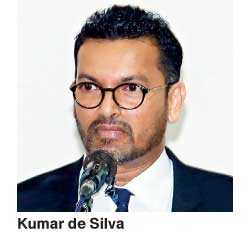 I stand before you here today extremely proud yet deeply humbled. It was exactly 50 years ago in 1968 that I was admitted to Grade 01 and that makes me 50 years a Wesleyite. On this stage I have acted, danced, sung, spoken, got prizes and even cried. This stage holds a vast ocean of memories for me. Boys of Wesley, my journey in life was not an easy one. It was one with a lot of financial difficulties but Wesley College taught me never to give up. We were taught to Pray and Labour On. As a Wesleyite I’d like to share with you my philosophy of life – the triangle I worked out for myself and which has made me what I am today.
I stand before you here today extremely proud yet deeply humbled. It was exactly 50 years ago in 1968 that I was admitted to Grade 01 and that makes me 50 years a Wesleyite. On this stage I have acted, danced, sung, spoken, got prizes and even cried. This stage holds a vast ocean of memories for me. Boys of Wesley, my journey in life was not an easy one. It was one with a lot of financial difficulties but Wesley College taught me never to give up. We were taught to Pray and Labour On. As a Wesleyite I’d like to share with you my philosophy of life – the triangle I worked out for myself and which has made me what I am today.
The three points of my triangle are : Empowerment with Education, Personal Branding as a Wesleyite and finally Gratitude and Humility.
Boys of Wesley you all have a diamond inside you. A diamond is a piece of carbon but with great value. When you are born, it is a raw, uncut diamond. You then go to Montessori, Grade 01, OLs, ALs and as you go on, you learn, you educate yourself. In the process you keep cutting and polishing that diamond which is yourself. When you come to your ALs, your diamond has far greater value than it had when you were in Grade 01. It is cut, it has facets, it is polished but you don’t stop there. You would go into University, into some kind of higher education or vocational training. You learn even more. You then get into a job, get married and have children. All of that too is a learning experience.
Your entire life is an adventurous learning experience, very hard at times. But through it all you are cutting and polishing your diamond to give it greater and greater value. Your diamond having great value means that you will have great value wherever you go.
Remember that your education is something that no one can ever steal from you. It is all yours and yours alone and it will take you to great heights. Remember also to follow your heart and do what you like to do. It is only then that you will do it well, very well. My Father was a Science teacher at here at Wesley College Colombo. My Mother was a Maths teacher at All Saints College, across the Campbell Park. My OL grades very good.
The fashion at that time was to become a Doctor, Lawyer, Engineer or Accountant and so everyone expected me to do Maths or Science for the ALs. I was a freak and I chose otherwise. I chose English, French, German, Economics. Everyone thought I was off my head. I remember my teacher Mrs. Ranjani Fernando almost freaking out at my parents for agreeing to my wish. But I knew myself. If I had done Maths or Science, I would not be on this stage here today. I promise you !
Similarly I let my two children follow their heart and do what they love to do. My son Rahul is in University in Japan and my daughter Anarkali is in her first year ALs at Visakha Vidyalaya. So empower yourself with education. Keep learning until your dying day. You are the winner at all times. No one else but you.
Wesley College IS Revd. Asiri Perera, the Bishop of the Methodist Church. Wesley College IS Mr. Avanka Fernando the Principal. Wesley College IS also the President of the Wesley OBU and the President of the Old Wesleyites’ Sports Club.
Wesley College is also each and every one of you. Whether you like it or not, YOU are all the Brand Ambassadors of Wesley College.
From Grade 01 to ALs you wear the College crest on your shirt pockets. You are branded visibly. Everyone sees you and knows you as a Wesleyite. This is called Visible Branding.
You then leave school and do not wear the College crest on your shirt pockets, but you are still a Wesleyite. This is called Invisible Branding. You are more of a Wesleyite out of school, as an old boy, than in school.
Believe me, out in the world, you are first judged on your packaging and branding. Before one gets to know who you are and what your qualifications are, one first sees your packaging.
What is your packaging / branding ? It is the way you behave, the way you talk, the way you conduct yourself in both private spaces and public spaces, anywhere and everywhere. A classic example is the recent Wesley – Royal rugby encounter. All Wesleyites were branded as thugs and hooligans. Boys of Wesley are we thugs and hooligans ??? NO we are not. BUT the behavior of one, two, three old boys made us all that.
The media went to town. Social media went to town. Some other schools also went to town. You saw the videos. We hung our heads in shame and Wesley College wept that evening. So please remember Boys of Wesley, you are a Wesleyite in school and even more so out of school, until you drop dead. We pride ourselves in being men of Grit and Industry bound by one fraternal band.
Alma Mater is an old Latin word. Alma means nourishing, kind, fostering, nurturing. Mater is mother. Your Alma Mater is the Mother who nurses, nourishes and fosters you. Let us do this College proud and never ever let her weep in shame. One never makes one’s Mother cry. Hence the importance of your branding as a Wesleyite for life.
Most often in life, people often forget their beginnings, their past and those who’ve helped in their journey up in life. This to me is unforgivable. To have gratitude and to show it to those who deserve it, makes a man a gentleman. You don’t need to go far. Start with your teachers, your school. When you are old boys one day, come back to Wesley College and ask her how you can help.There is so much you can do for Wesley College as a young old boy, as a middle aged old boy like myself and even as a very old, old boy. Gratitude and Humility are two beautiful words.
The story I’m now about to share with you, happened in this hall 44 years ago. No one knows this story except for my late parents and myself. Not even my two children. I got their permission last evening to make it public.
In 1974 when Wesley celebrated her 100th anniversary, Prime Minister Sirimavo Bandaranaike was Chief Guest at Prize Day that year, on this same stage. Everyone who got prizes wore new clothes – new shirts, new trousers and new shoes. Even their parents wore new outfits. After all this was the grandest day in the Wesley College calendar. I was in Grade 07 and was getting about six or seven prizes that year. My parents couldn’t afford to buy me new clothes. So they got me borrowed clothes from a neighbour’s son, my age – long sleeved shirt, white shorts and a pair of black shoes. My mother also sat in the audience that evening also in borrowed clothes – saree, gold earrings, gold chain, two zigzag gold bangles and a pair of slippers. And so when my name was called up, I came on stage and collected my prizes from a beaming Mrs. B. My borrowed shoes were ill-fitting and loose and as I walked down those highly polished steps I slipped and fell and went sliding down. Most of the boys in the choir laughed out loud. I cringed in embarrassment and shame. It was not easy.
My point is that even to this day I’m grateful to that neigbour, Rohan Sourjah, whose borrowed clothes I wore, AND, to that All Saints College teacher Malini Indraguptha whose borrowed clothes my mother wore at Wesley Prize Day 44 years ago.
Flowers from a grateful student to his French teacher In as much as I am grateful to all my teachers at Wesley College for what I am today and with due respect to all of them, some of whom are present here, I’d like to single out one teacher who laid a foundation in my education and in my life which opened the doors of the world to me – Mrs. BA Fernando, my French teacher.
Mrs. Fernando, you’re here today representing not only yourself but also my late parents. I don’t think even you ever realised that the French you taught me for my ALs, in the Bio Lab above the Principal’s office, surrounded by all those dead snakes and frogs and toads and horrible animals in jars of formalin, would take me on a journey even I never dreamt of.
I stand here on this stage today, also because of you. The French you taught me 40 years ago, opened the doors of the world to me. I am grateful to you until my dying day.
Boys of Wesley my triangle of Empowerment with Education, Personal Branding as a Wesleyite and finally Gratitude and Humility has never gone wrong for me. It won’t go wrong for you either. As I close now, I’d like to leave with you three lines that were said on this same stage at around 5pm on Monday 15 January 1962 exactly 56 years ago. These were lines said by Arthur Shelton Wirasinha at his induction that evening as Wesley’s 15th Principal. He went on to be Wesley’s second longest serving Principal after Rev. Henry Highfield.
Those lines spoken that day, more than half a century ago, are STILL relevant and pregnant with meaning even to this day …. “Education does not end with the gaining of jobs. It is much more than that. Education is the training and disciplining of the entire person”
May you be blessed by the Triple Gem ! Theruwan Saranai !
Thank you !
About Our Chief Guest
 Kumar de Silva is one of Wesley’s distinguished old boys. He had both his primary and secondary education at Wesley College and was the winner of Wesley’s coveted ‘Hill Medal’ for academic excellence in 1980. He then graduated with an Honours Degree in English and French from the University of Kelaniya, where he subsequently lectured at the Department of English. De Silva has been knighted by the Government of France as Chevalier in the Order of Arts and Letters (Chevalier dans l’Ordre des Arts et Lettres) for his longstanding contribution to the propagation of the French language and culture in Sri Lanka. In November 2017 Wesley College was honoured to have Kumar de Silva deliver the inaugural ‘Shelton Wirasinha Oration’ in honour of one of Wesley’s legendary Principals.
Kumar de Silva is one of Wesley’s distinguished old boys. He had both his primary and secondary education at Wesley College and was the winner of Wesley’s coveted ‘Hill Medal’ for academic excellence in 1980. He then graduated with an Honours Degree in English and French from the University of Kelaniya, where he subsequently lectured at the Department of English. De Silva has been knighted by the Government of France as Chevalier in the Order of Arts and Letters (Chevalier dans l’Ordre des Arts et Lettres) for his longstanding contribution to the propagation of the French language and culture in Sri Lanka. In November 2017 Wesley College was honoured to have Kumar de Silva deliver the inaugural ‘Shelton Wirasinha Oration’ in honour of one of Wesley’s legendary Principals.
 Wesley College Colombo was named after John Wesley (1703–1791), the great Evangelist and Founder of the Methodist Church. The school is administered by the Methodist Church in Sri Lanka. Wesley College- a leading, Christian Boys School- was founded on the 2nd of March 1874. The College which is celebrating its 144th Anniversary this year. This academic institute provides primary and secondary education to Students. Rev. Samuel Rowse Wilkin was its first Principal and first President of the Old Boys Union. Rev. Daniel Henry Pereira is considered to be the founder of Wesley College Colombo and was also its first Vice Principal. Even though this institution was envisaged to be a Christian boys school, it has opened its doors to provide education for Sri Lankan boys from diverse religious and ethnic backgrounds during the past 144 years.
Wesley College Colombo was named after John Wesley (1703–1791), the great Evangelist and Founder of the Methodist Church. The school is administered by the Methodist Church in Sri Lanka. Wesley College- a leading, Christian Boys School- was founded on the 2nd of March 1874. The College which is celebrating its 144th Anniversary this year. This academic institute provides primary and secondary education to Students. Rev. Samuel Rowse Wilkin was its first Principal and first President of the Old Boys Union. Rev. Daniel Henry Pereira is considered to be the founder of Wesley College Colombo and was also its first Vice Principal. Even though this institution was envisaged to be a Christian boys school, it has opened its doors to provide education for Sri Lankan boys from diverse religious and ethnic backgrounds during the past 144 years.
Wesley commemorates the memory of her Founder, the Rev. Daniel Henry Pereira – annually on Founder’s Day. This is the most important event in the school’s calendar. During the school’s 144-year history, thousands have passed through the hallowed portals of this great institution, which has produced many distinguished Alumni, who have offered valuable service to the society, nation and the world. Among them are: Sir Oliver Ernest Goonetilleke– the 1st Ceylonese Governor-General (1954–1962), Sir Don Baron Jayatilaka, Sir Claude Corea - Member of Parliament, Walisinghe Harischandra - Social Reformer, Historian and Author, Sir Mohamed Macan Markar - Member Legislative Council of Ceylon, Sir Gerard Wijeyekoon - Member Legislative Council of Ceylon, Mahadevan Sathasivam - International Cricket Player, Mr. P. De S. Kularatne–Principal of Ananda College, E. F. C. Ludowyk -first Professor of English University of Ceylon, M. H. Mohamed - Speaker of Sri Lanka Parliament and Mayor of Colombo, Farveez Maharoof- International Cricket Player.
The examples set by many brilliant Old Boys as role models who have lived up to the ideals and values of the Founders, bringing honour and glory to their Alma Mater
The examples set by many brilliant Old Boys as role models who have lived up to the ideals and values of the Founders, bringing honour and glory to their Alma Mater through their respective professions, will continue to inspire Wesleyites in the years to come. The Current Committee of the Wesley College OBU Colombo, under the leadership of the Incumbent President Wilhelm Van Dort, is striving to uphold the traditions and values of the great Christian Methodist Legacy - which they inherited from preceding generations, and see that it is passed down to the future generations of Wesleyites.
 The Founder’s Week celebrations, taking place from 2-4 March, are certainly going to bring nostalgic memories and rekindle friendships among the double blue fraternity. On the 2nd of March the hockey and soccer matches between the past and present boys will be held at Campbell Park at 4.30 pm. These matches will be followed by the Traditional Principal’s Tea Party at the Pavilion. Thereafter the Water Polo match between the Past and Present students will be held at 7.30 pm at the college pool.
The Founder’s Week celebrations, taking place from 2-4 March, are certainly going to bring nostalgic memories and rekindle friendships among the double blue fraternity. On the 2nd of March the hockey and soccer matches between the past and present boys will be held at Campbell Park at 4.30 pm. These matches will be followed by the Traditional Principal’s Tea Party at the Pavilion. Thereafter the Water Polo match between the Past and Present students will be held at 7.30 pm at the college pool.
On March 3 (Saturday) the old boys and present boys will feature in a basketball match at the school premises. The traditional cricket match between the old boys and the present 1st XI cricket team will follow at 9.30 am at Campbell Park. The traditional OBU Lunch will be at 1.30 pm at the College Hall, followed by The Annual General Meeting of the OBU, scheduled at 3.00pm. The lunch ticket is priced at Rs.1500 and can be purchased from the Club House (OWSC) Manager or by calling Secretary of the OBU Mr. Fowzil Nawaz on 0777900808. The President and Committee of the Old Boys Union invite all Double Blue loyalists to be present and participate actively in the Founder’s week events, and the AGM.
These images are from the extensive archives of Shelton Peiris kindly sent to me by his son, Peter Peiris.
The photo was taken circa 1953/54 during the Principalship of Mr CJ Oorloff and Rev Wilfrid Pile was the Chaplain

.......................................
It is unclear when this image was taken or who the people are. I would be grateful for your help
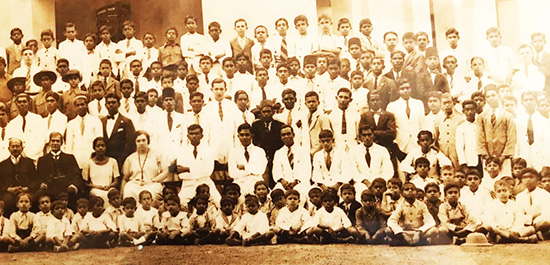
One of the fondly remembered events of my time at Wesley was the hostel excursions. Some of the excursions would include an overnight stop at our home in the Survey Camp, Diyatalawa. My late father, and old boy of the College, was the Superintendent of Surveys in charge of the Survey Training College. Dad would arrange for the touring party to be housed in vacant houses (called huts) in the camp. We would also provide lunch to be loaded on to the school bus for the next day.
My parents really enjoyed hosting the boys from the hostel and it was quite a talking point amongst their friends. The photo below shows a touring party from the Hostel outside our Survey Department home in the Survey Camp at Diyatalawa with my family. In the middle are my Mum and Dad, their first grandchild, Edward, now a Barrister in Melbourne, my sister Kathleen, her late husband Gerald, (the first Vice President of the Wesley OBU in Melbourne), my grandmother Fortune, my brother Cecil, (the founder of the Melbourne OBUA and former Solicitor in Melbourne, Australia.)
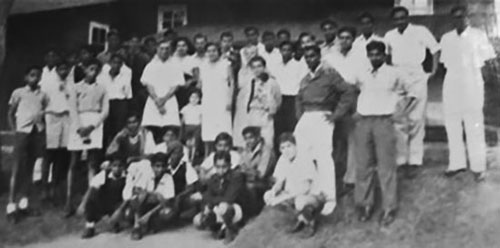
Members of the Wesley Staff in the picture are Henry Rajapakse, Senior Hostel Master, (kneeling), Frank Jayasinghe and Charles Yesudian. Former Sports Master to be and later Journalist, Kenneth de Silva is also in the picture. I am in the centre. These visits to our home helped form a strong bond between our family and Wesley. In 1954, we were all so excited when the previous Senior Hostel Master Aelian Fernando (Laffa) and later Principal of Wesley accepted our invitation to spend a holiday in our home at Diyatalawa. All went well until we were playing backyard cricket. Mr Fernando tried to get our brother-in-law to be, Gerald de Zilwa, run out. Gerald scrambled to the crease but stumbled badly. He had severely sprained his ankle two weeks from the big wedding! His ankle had swollen up. What were we going to do? Not to worry, Mr Aelian Fernando to the rescue! The best Ayurveda specialist in Sri Lanka was a good friend of his. Urgent daily treatment was organised to get Gerald to the church on time. Yes, it did heal quickly and brilliantly. That was not all the Wesley influence at my sister’s wedding. Renowned Choir Master and later Senior Hostel Master, Maxwell de Alwis, organised additional singers for the choir. This included the famed Sri Lankan Tenor, Lyle Godrich, as the Soloist! These Wesley connections took me to places where I never expected to see or experience while still a schoolboy. I was considered to have had a good speaking voice and so I was asked to assist the then Vice Principal, Kenneth de Lanerolle, in a broadcast he did on Radio Ceylon. Not long after this occasion, I was asked to assist our then Chaplain Rev. Wilfrid Pile in another broadcast on Radio Ceylon. Many years after, on his visit to Melbourne, Mr Kenneth de Lanerolle, had lunch with my wife Glenys and I at our home in Glen Waverley. We appreciated the gift he gave us of a signed copy of a book which he had written. It joined another gift of a book I received from Rev. Wilfrid Pile after the Radio Ceylon broadcast. I was nearly 11 years at the time.


The years rolled on. I was fortunate enough to win several prizes at the College Prize Day each year. My parents were always present to give me moral support each Prize Day. In 1957 my Dad advised me that as we were going to settle in Australia soon, I would not be at Wesley to win the HILL MEDAL! However, it would be nice if I won one of the SPECIAL AWARDS, as it would be a good way of saying goodbye to Wesley from the last of five generations at the College. The extract below from the 1958 PRIZE DAY shows that I did not let my Dad down!
From Dr Nihal D Amerasekera

How time has flown!! It is more than 60 years since schooldays. Arthur and I were buddies in the hostel. We had much in common, sang in the choir and played cricket in the blistering sun and football in the monsoon rain. The small park was our amphitheatre. He was a good student winning coveted prizes and awards at the Annual Prize Giving. Arthur hasn’t lost any of his sincerity and warmth which was a feature of the Barbut family. They showed their kindness and generosity to the hostellers during our annual trips. We always made a stop at the Survey Camp in Diyatalawa to enjoy their lavish hospitality. It was such a pleasure to meet Glenys and Arthur, his sister, Kathleen and brother-in-law Gerald de Zilwa in Melbourne. Oh! how much I would have loved to spend more time together. I was on an organised tour and time indeed was too short.
Arthur and Cecil were at school and in the boarding in the 1950's. They were both in the choir and took part in the Annual Carol Services and the operettas arranged by Mr. Maxwell De Alwis. They were fine table tennis players and won many awards at school and in the hostel. Cecil was the linchpin of the school debating team. He was such a fine tennis player representing the school in the prestigious Public Schools Tennis Tournament. Both Arthur and Cecil read the Bible at school assembly and at the Maradana Methodist Church.
The school Ist XI cricket captain of 1959, Senthil Sinniah, remembers being invited to stay with the Barbuts. He speaks warmly of the kindness shown to him during his stay at the family home. Several school friends and teachers have stayed with the Barbuts over the years. Their generous hospitality in Diyatalawa to Wesleyites is legendary and have entered the folklore of the school. We thank the Barbut family for their support and contributions to life at Wesley.
..................................
Links to further reading
From Ranjit Aaron 1952-63

I was born in Badulla and loved living in the hill country. When in school for Christmas, Easter and August holidays my parents took me to Badulla to spend my holidays with my grandparents in Badulla. The time I spent at my Grandparents was the most enjoyable ones. We made three trips annually to Badulla by train. The train journey to Badulla was most fascinating and I never got tired of it, I knew each and every station, bridge and Tunnel at the back of my palm.
My Grand Father and fore fathers came to Ceylon from South India when the tea industry began in Ceylon. Most of them worked in the tea plantation sector in the districts of Badulla, Ragala and Nuwara Eliya. When I went to Sri Lanka last, I made visits to where my fore father have been buried, especially in the Anglican Church cemetery in Ragala. The monuments which had been erected centuries ago are still standing.
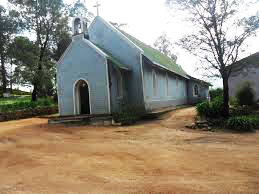 Coincidentally my first job took me to the hills in Lindula in the Talawakele district. My initial training was at the Engineering Division Brown & Co,. Ltd Lindula. After my training I was sent to Brown & Company Ltd Uda Pussellawa to be in charge of a small tea machinery repair work shop. The main work was to carry out repairs and service tea machinery. Although I had no engineering back ground. I was mainly selected for the job because of my sporting back ground, which was helpful in interacting with the SD’s and Superintendents of Tea Estates.
Coincidentally my first job took me to the hills in Lindula in the Talawakele district. My initial training was at the Engineering Division Brown & Co,. Ltd Lindula. After my training I was sent to Brown & Company Ltd Uda Pussellawa to be in charge of a small tea machinery repair work shop. The main work was to carry out repairs and service tea machinery. Although I had no engineering back ground. I was mainly selected for the job because of my sporting back ground, which was helpful in interacting with the SD’s and Superintendents of Tea Estates.
I made many friends in the plantation sector and even played cricket for Gordon Amherst Sports Club, which was exclusively a planters club. I was even invited to join Radella Sports Club to play rugby. But since going for practice from my work place was difficult, I could not make it.
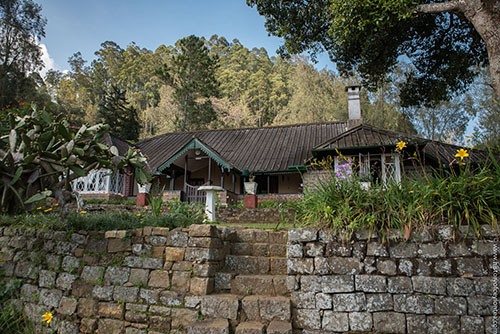
The SD’s in the district were very friendly and it became a regular feature where some planter or other would take me to their club for a drink in the evenings and invariably I ended up in their home for the night and at times for the week end too. Dickson’s Corner Club in Halgranoya was exclusively for planters, the young SD’s would smuggle me into the club, introducing me as a trainee SD. There was a famous Superintendent Charles Patterson of Allagolla Estate, Uda Pussellawa. He became very pally with me and gave instruction to the manager of the club not to throw me out even though I was not a planter. He was a famous hunter in the district. He was a taxidermist too. He once took me to show his price collection of animals he had shot. They were mounted on length and breadth of his house. He had his own hunting ground in Madulla in Uda Pussellawa. He once took me to his private hunting ground. There were many monuments erected in the names of the labourers who he had accidently shot during his hunting expeditions. He never went back to UK after retirement, because he loved Ceylon so much he wanted his bones buried in Ceylon.
0n 20th, October, 1970 on one of my visit to Blairlomond Estate tea factory, my car turned turtle and went down a precipice crashing down almost 75 feet. Many who saw me after the crash never expected me to survive. I lost my memory for 3 months. I was hospitalized in General hospital Badulla for 4 months. Subsequently transferred General Hospital Colombo where I was confined to bed for the next 1 year and 3 months. However Orthopaedic Surgeon T.N.Shamugalingam repaired my very badly damaged femur. With this my up country stint came to an end.
AN EXTRACT FROM THE BOOK "DIVERSIONS OF A DIPLOMAT IN CEYLON" BY PHILIP K. CROWE
From Dr Nihal D Amerasekera
Ranjit Aaron was at Wesley College during the splendid Oorloff/Nonis era when the school was in the ascendancy both in sports and academics. He played rugby for the 1st XV and supported the school activities in all its forms. I can still picture him waving the Double Blue flag under the Mara trees during the stresses and strains of school cricket. He now lives in New Zealand with his wife Rita.
Ranjit is a deeply loyal and passionate Wesleyite. He never fails to make a pilgrimage to walk the hallowed grounds at Karlsruhe Gardens on his visits to Sri Lanka. Neither does he miss the opportunity to warm the cockles of his heart with his pals at the OWSC. Despite being in the southern hemisphere he supports Sri Lankan cricket where ever it is played. Through his dedication to the old school Ranjit keeps in touch with old boys all round the world and more closely with the friends in Australia. He still remains a true blue Wesleyite and an avid supporter of the Double Blue International. Without such support this website would not have lasted 3 decades. On behalf of the Worldwide Brotherhood of Wesleyites and the Double Blue International, I wish Ranjit and Rita a long and happy life in New Zealand. I feel incredibly honoured to be his friend for so many years. Take care my friend.
Links to further reading
- Schoolboy Memories of Ranjit Aaron (New Zealand)
- Love, Respect, Manners and Discipline By Ranjit Aaron- New Zealand
- Visit to Melbourne 15th - 19th November, 2012 by Ranjit Aaron (NZ
- Christmas in the good old days by Ranjit Aaron – New Zealand - February 2010
- Train journey to Badulla & My memorable School Holidays. 1950-1963 by Ranjit Aaron NZ
- Sad and disappointing time, of my school career by Ranjit Aaron NZ 1st March 2010
- Class of 64 Re-Union (2010) by Ranjit Aaron 02/02/11
By Dr Nihal D Amerasekera
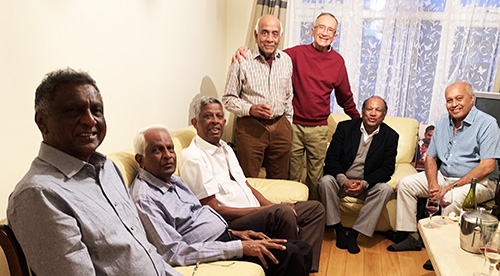 |
| Photo: L to R |
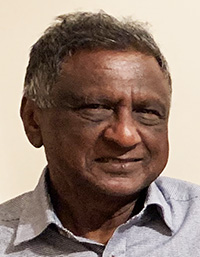 |
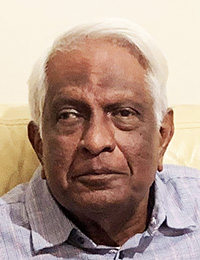 |
| Photo: |
Photo: |
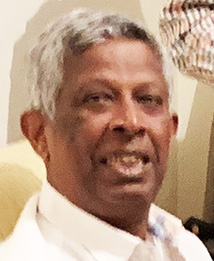 |
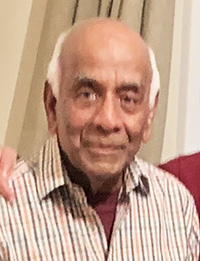 |
| Photo: |
Photo: |
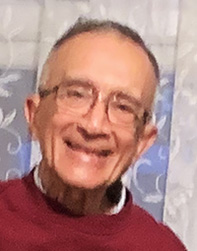 |
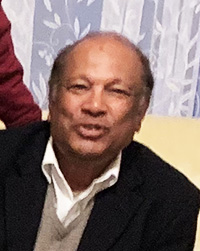 |
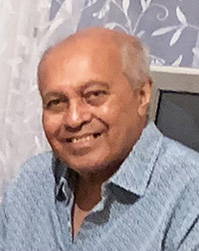 |
| Photo: |
Photo: |
Photo: |
The One Day World Cup is upon us. This has brought cricket lovers to England from far and wide. We were fortunate to have L.R Goonetilleke to come over to dinner at Ramakrishnan’s house in Harrow on the 17th of June 2019. Lucky played for the 1st XI team in 1958/59 and 60 and for Sri Lanka in 1962 against Ted Dexter’s MCC . Lucky’s skill as a bowler is legendary. Many still recall Lucky sending Dexter’s stumps tumbling. This performance has now entered the cricketing folklore in Sri Lanka.
Lucky is one of life’s gentleman always decent, polite and kind. He still remains a loyal old boy of our school where he has served as a Governor, Member of the Welfare Board and President of the Old Wesleyites Sports Club. Lucky has been closely involved with the management of the school being a helpful support to several successive Principals. Lucky is greatly respected by the expanding community of Wesleyites, young and old, for his immense services to his Alma Mater.
The evening began at 7.30. when Lucky arrived with his two sisters. Senthil Sinniah who captained 1st XI cricket at Wesley in 1960 travelled over 200 miles from his cottage in Barnstaple in Devon to meet his school friend and former cricket colleague. Douglas Raymond, Layton Vanderput and Wimal De Silva joined us to welcome , Lucky, our chief guest. I was there with my wife Chiu. There was plenty of handshakes and backslappings as old friends greeted each other warmly.
We had so much to talk about time flew and the conversation and drinks flowed freely. There was never a dull moment. We exchanged information about mutual friends, spoke about Wesley, past and present and the current political turmoil in Sri Lanka. We were treated to some hilarious anecdotes of the days gone by. Despite the years passed we had amazing recollections of our schooldays, friends and teachers. Whenever I meet school friends a video plays in my mind of friends and life of long ago. Ah!! Where have those years gone?
With his booming voice, the master of ceremonies was Ramakrishnan. The success of the function was due to the goodwill and the support of all who attended and the warmth, kindness and generosity of Ramakrishnan and his lovely wife Lakshmi. They were exceptional hosts. The spread on the dining table was a wonderful selection of Sri Lankan cuisine both from the north and south of the country.This was a true taste of home.
It was midnight when we started to say our goodbyes. As expected, the parting was rather prolonged and quite a bit emotional.
On the following day I met up with Senthil and Lucky at the South Kensington underground station. We continued our thoughts and recollections from where we stopped the previous night. While enjoying a lovely Lebanese lunch we chatted away until the grey skies and incessant rain made us leave. After bear hugs and warm hand-shakes we said our goodbyes hoping we will have the good fortune to meet again.
Now we are in the grip of events much of it beyond our control. Meanwhile, we must enjoy life, family and friends. Reunions and Get-togethers are invaluable. Do make every attempt to keep in touch. We do hope it is au-revoir and not adieu, until we meet again.
Links to further reading
- L.R. Goonetilleke – a cornerstone in Wesley cricket - Click
- The Old Wesleyites Sports Club Report 1999 by L.R.Goonetilleke- Click
- LR Goonetilleke – A Cricketer and a Gentleman by Dr Nihal D Amerasekera 5th Sept 2010
- A Tribute to LR Goonetilleke by (L.C.R) Lalith Wijesinghe 23/9/10
- Lakshman Ravindra Goonetilleke by Premasara Epasinghe 23/9/10
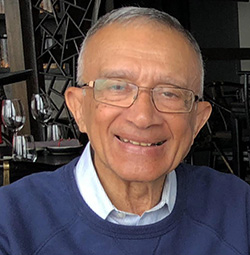 In 1958 my father moved to Kolonnawa. We could see the Government Factory from our verandah. The factory chimneys spewed smoke all day and all night. We lived constantly under this cloud of pollutants. At the edge of our property was a tall perimeter fence of the Kolonnawa Oil Installation. For 3 years we lived next to this ‘time bomb’ which could ignite any minute with devastating consequences. In those days we believed the Government was trustworthy and worked for the benefit of the people. We’ve been let down so many times.
In 1958 my father moved to Kolonnawa. We could see the Government Factory from our verandah. The factory chimneys spewed smoke all day and all night. We lived constantly under this cloud of pollutants. At the edge of our property was a tall perimeter fence of the Kolonnawa Oil Installation. For 3 years we lived next to this ‘time bomb’ which could ignite any minute with devastating consequences. In those days we believed the Government was trustworthy and worked for the benefit of the people. We’ve been let down so many times.
After 10 long years at school I had reached the top of the pile. I was now a 6th former and a Prefect with all its trappings of prestige and privileges. On a cold January morning I climbed the wooden stairs by the Physics lab. At the top there was the unmistakable pungent smell of acids and alkalis wafting from the Chemistry lab. Down 2 steps and I was on the corridor leading to the Biology lab where the acrid smell of formalin greeted me. This was to be my domain for a formidable and forbidding 2 years.
The time between 1960 and 1962 was a crucial period in my life when I was engulfed by darkness and despair. It is a weird experience to allow those years to flash before my eyes. Then I was a pimple faced, self-conscious teenager with raging hormones chasing my dream to become a doctor. Soon after I had overcome the challenges of a plethora of subjects at the O-levels, I was thrust into the 6th form to sit for the most competitive exam of my life. During those 2 years all I saw were the laboratories, classrooms and the fragile landscape of the 4 walls of my bedroom. This also became my study. I have often worked deep into the night going on until I heard a cockerel heralding the dawn.
I grew up in a loving family. In the best traditions of good parenthood they made me eminently aware of the struggles of life. They also impressed on me that my future lay in my own hands. There was no huge inheritance to receive. I recall their advice with genuine and touching affection. I embarked on my perilous journey with the acquired stoicism of my father’s tough upbringing and the inherited steely competitiveness of my mother’s Kandyan ancestry. The great and the good persuaded me that the hardships endured to pursue a career in medicine was a worthwhile goal with rich rewards.
I embarked on my journey mindful of the tough times ahead. On looking back I couldn’t describe my feelings better than Charles Dickens in ‘A Tale of Two Cities’: “It was the best of times, it was the worst of times, it was the age of wisdom, it was the age of foolishness, it was the epoch of belief, it was the epoch of incredulity, it was the season of light, it was the season of darkness, it was the spring of hope, it was the winter of despair.”
I offered Botany, Zoology, Physics and Chemistry for the examination. The syllabuses were huge and the task simply monumental. Each of the subjects had a theory paper and a practical examination conducted by the University of Ceylon. The examination was held at the end of the year with the results posted to the candidates around April time the following year. The successful candidates were called for a Viva Voce examination held at the University at Reid Avenue. There was a Medical Schools in Colombo and another at Peradeniya. The total intake was 300 students per year. To say the entry into the medical schools was fiercely competitive is a gross understatement.
The examination papers were the same for all the students but the practical exam was a lottery when some had an easier time than others. The teaching and the facilities provided by the schools varied immensely. Hence the examination was not on a level playing field. This resulted in a thriving private tuition industry. Tuition soon became regarded as a vital prerequisite for a successful outcome. Teaching students at weekends and evenings the tutors became widely known, respected and revered. They earned a small fortune on tuition. Although I would have benefitted enormously from private tuition, with my demanding and strenuous regime of study I just couldn’t find the hours in the day to fit them in. This indeed dented my confidence somewhat. I took every opportunity to speak with those who had been successful in previous years to learn the shrewd tricks and the essential do’s and don’ts.
My bedroom had a large window. As I pored over my books this was my only contact with the outside world. I could hear the birds sing all day. The sun came streaming in the evening. The noise of the children playing at the bottom of the road brought some life into my soul. Buxom ladies gossiped and sang while having a bath at the communal well. I was loathed to shut the window even as the monsoon rains lashed the glass pane not wanting to lose my world beyond.
Meanwhile, outside my bubble, there was a vibrant world of teenage fun. It was indeed the swinging sixties. There were parties at weekends with the luxury of drinks and dancing. Mini-skirts were the craze and we all craved for the company of girls. Some went on trips to the beach and visited the cinema. The fun continued at a furious pace by those studying the arts and sciences and also by a few bold aspiring medics. I’ve always been an avid follower of school cricket but sadly this wasn’t possible now. I loved music and listened to the radio in short bursts while my collection of 45 RPM vinyl records gathered dust. These pleasures were sacrificed hoping for better times ahead. I was eminently aware of the wisdom of the age-old proverb “There is many a slip between the cup and the lip”.
I worked tremendously hard in those two years to give it my best shot. The examination came and went like a tornado. I was never one to be satisfied of my performance at examinations, but was delighted that it was all over at least for now. I slowly slipped back in to the calm and lazy life I was used to enjoying school cricket at weekends, visiting family and friends and going to the cinema. Once again loud music filled our home.
Time soon passed. I was pleasantly surprised to receive a letter from the University asking me to present myself for the Viva Voce examination. This was held at the Senate Room of the University. It was a nerve-wracking experience. Seated around a polished wooden table in a poorly lit room were half a dozen grumpy elderly academics. As I walked in they observed me intently and fired a barrage of questions. They were polite but poker faced all through my ordeal. I was so pleased to be released into the afternoon sun.
My debut performance was a success. By the end of the challenge I was physically and mentally exhausted. I found this a most remarkable achievement against all the odds. I thank my parents for their encouragement, love and wise counsel. This wouldn’t have been ever possible without the dedication of my teachers and the inclusive all-round education at Wesley College Colombo.
 |
 |
| Photo: |
Photo: |
 |
 |
| Photo: |
Photo: |
I recall most vividly the euphoria on being a doctor in 1967. I dreamed it was a passport to fame and fortune. There was such a great sense of myopic optimism, I lost myself in the adulation. Life always has ways to bring us back to reality!!
I spent a marathon of 40 years in medicine. Time did pass swiftly and relentlessly. Then I looked forward to retirement with the same excitement and euphoria as to the beginning of my career. It is devastating to give up the profession knowing how hard I’ve worked to achieve my youthful aspiration. I left the medical profession with a heavy heart but also happy to be free again. Life is better without the night calls and the onerous routines of a hospital doctor. The long years of toil has taken its toll but I have emerged more philosophical, having witnessed the spectrum of human life from cradle to grave.
In the calm of my retirement I continue to embrace all that life has to offer: family, my passion for sport, music and support for my burgeoning interest in technology. Still there is a part of me that harks back to the times passed. Despite the good life I’ve enjoyed thus far, there is a vague sense of yearning for those two teenage years lost when I was in solitary confinement, burning the midnight oil and being a prisoner of conscience to those grandiose and extravagant ambitions of my youth. As I convey my sense of disillusion of those years, I now wonder how on earth I coped with it all so young. It also gives me a tremendous sense of achievement and accomplishment.
Links to further reading
- Street vendors at Wesley by Dr.N.D.Amerasekera
- The Kelani Valley Railway in the early 1950's by Dr.N.D.Amerasekera
- Punchi Borella of the Sixties by Dr.N.D.Amerasekera
- The Welikada Prison - A disappearing memory by Dr N.D.Amerasekera
- The Changing face of Baseline Road by Dr.N.D.Amerasekera
- The Small Park by Dr.N.D.Amerasekera
- "Dont look back in anger" by Dr.N.D.Amerasekera
- Marshall Perera-- 68 years of Dedication to Wesley under 12 Principals by Dr. N.D.Amerasekera
- A Journey back in time by Dr.N.D.Amerasekera
- My Life as a Boarder by Dr.N.D.Amerasekera
- A Brief history and origin of Campbell Park by Dr.N.D.Amerasekera
- My Sixth form Years 1960-61 by Dr.N.D.Amerasekera
- Wesley cricket 50 years ago -- a spectators view by Dr.N.D.Amerasekera
- "Going for a pump" by Dr.N.D.Amerasekera
- The Oases and Mirages of my School life 1950-62 by Dr.N.D.Amerasekera
- When I look back ................... By Dr Nihal D Amerasekera
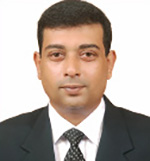 Remembering good old school days (1982) - Story 1: As usual, we used to have our lunch tiffin under the great tamarind tree after school before going for rugger practices, and on that day, we saw Father Mathew Pieris passing us riding his bicycle on the road in front of school. Therefore, we all shouted "Murderer! Murderer!" and ran into school as there weren't a parapet wall in those days to take cover, and he saw us all as clear as day light, and turned his bicycle into school and went straight up the driveway to principal's bungalow. As we had runaway, we thought that it was the end of the incident, but next morning, to our dismay we saw Father Mathew Pieris on the stage of the great assembly hall. After a lecturing and waiving of the cane from principal Shelton Weerasinghe, Father Mathew Pieris was asked to identify the culprits ... who took his time walking and glancing up and down the aisle for any signs of recognition or signs of bent over heads of guilt. To the relief of all of us except one colleague by the name of Lee Wang Chung, Father Mathew Pieris announced that due to the circumstances of the incident and his bad eyesight, he could be positive of the only Chinese boy at assembly. After the public canning, all of us had to sympathize with Lee and had to treat him with gifts of our precious pocket money or the veralu, mango achcharu, marbles and stickers we had bought from it, for our not owning up, and he not squealing.
Remembering good old school days (1982) - Story 1: As usual, we used to have our lunch tiffin under the great tamarind tree after school before going for rugger practices, and on that day, we saw Father Mathew Pieris passing us riding his bicycle on the road in front of school. Therefore, we all shouted "Murderer! Murderer!" and ran into school as there weren't a parapet wall in those days to take cover, and he saw us all as clear as day light, and turned his bicycle into school and went straight up the driveway to principal's bungalow. As we had runaway, we thought that it was the end of the incident, but next morning, to our dismay we saw Father Mathew Pieris on the stage of the great assembly hall. After a lecturing and waiving of the cane from principal Shelton Weerasinghe, Father Mathew Pieris was asked to identify the culprits ... who took his time walking and glancing up and down the aisle for any signs of recognition or signs of bent over heads of guilt. To the relief of all of us except one colleague by the name of Lee Wang Chung, Father Mathew Pieris announced that due to the circumstances of the incident and his bad eyesight, he could be positive of the only Chinese boy at assembly. After the public canning, all of us had to sympathize with Lee and had to treat him with gifts of our precious pocket money or the veralu, mango achcharu, marbles and stickers we had bought from it, for our not owning up, and he not squealing.


Remembering good old school days (1980) - Story 2: We used to stare hungrily at biology master Mr. Sundaralingam gulping down the sandwiches and coffee from his flask that his wife used to make for him, and whenever possible when he was not around, we (Jeevan Rocksamy, Senaka Perera and myself) used to pinch a sandwich or two and drink half the coffee and top it up with water, and listen to him complaining that his wife is cutting down as he was overweight. The game was up for us, as he had discussed the matter at home, and now locked up his precious roastpaan sandwiches and coffee flask in his drawer. On this particular day that we were dissecting frogs, we saw that the key to the locked drawer was inadvertently left on the table and Sunda was not around. So we got our revenge by later eagerly watching Sunda eat his seeni-sambal roastpaan sandwiches (filled with the flesh of the frogs legs) By the way frog legs are ok as the french do eat them ... even vegetarian frenchman ......... I think ???
Remembering good old school days (1979) - Story 3: We used to drop small pieces of sodium (Na) metal from the window of the upstair chemistry lab right into the water sump pit located on the pathway near the rear doorway of the principal's office and the steps leading to the driveway of principal's bungalow. It was all fun watching the flames and fireworks of the oxidation until that day, principal Shelton Weerasinghe's daughter, Dushy took that route and ... well I hope you don't mind us not remember the rest ...
Do you remember the games like Thaachi, Gudu, Marbles etc and "class challenge fights" we had during the interval and after school ? I was (and still is) really good at Thaachi and have many challenge trophies !!!
I was interviewing an old Wesleyite for a job. His CV showed good results in O/L and A/L. The CV also mentioned "Sports in School: Cricket, Rugby, Hockey, Football, Badminton and Basketball" When asked "how did he manage to do all this, have good academic achievements and find time to represent college at the first level in all the sports", his answer was a gem, and for that reason only he got the job. His answer was ... "I did all this in the interval"
 Remembering good old school days (1978) - Story 5: Yes it happened once in the O/L class in the Highfield block that had windows facing the Welikada Prison yard and again this time more interestingly from the the physics lab windows facing same. When the ladies (mostly cheap street prostitutes) arrested the previous night were let out into the prison yard in the morning for their routine ablution, we used to whistle and clap and get their attention (in those days the prison yard parapet wall was not as high as it is now) and gesture / suggest / indicate that they give us a free flash show. Not that we could see anything for that matter at that distance, we used to laugh and enjoyed the posture of the women raising their skirt / gown from the front and behind. The two windows used to be crowded with a lot of pushing and with many heads as possible poking through. Every thing was fun until the day principal Shelton Weerasinghe poked his head too over ours as he was taller to see what the commotion was all about only to get an eye full of you know what ... I still remember we got off scot free because we said that ... we were paying homage ... as Siripada (Adam's Peak) was also visible in that direction on that clear morning.
Remembering good old school days (1978) - Story 5: Yes it happened once in the O/L class in the Highfield block that had windows facing the Welikada Prison yard and again this time more interestingly from the the physics lab windows facing same. When the ladies (mostly cheap street prostitutes) arrested the previous night were let out into the prison yard in the morning for their routine ablution, we used to whistle and clap and get their attention (in those days the prison yard parapet wall was not as high as it is now) and gesture / suggest / indicate that they give us a free flash show. Not that we could see anything for that matter at that distance, we used to laugh and enjoyed the posture of the women raising their skirt / gown from the front and behind. The two windows used to be crowded with a lot of pushing and with many heads as possible poking through. Every thing was fun until the day principal Shelton Weerasinghe poked his head too over ours as he was taller to see what the commotion was all about only to get an eye full of you know what ... I still remember we got off scot free because we said that ... we were paying homage ... as Siripada (Adam's Peak) was also visible in that direction on that clear morning.
News from Wesley OBA (NSW) Australia – Year 2019
Kindly sent to me by Nizar Sappideen - The ever enthusiastic Secretary of the OBU
The Wesley College OBA NSW, has been very active this year under the leadership of President Keith Greiner. We had four lively events and they were all well patronised by the past pupils, their families and friends.
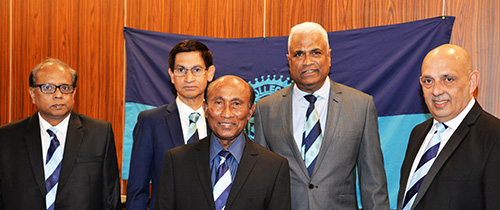
Photo of the Committee – 2019

16th March 2019 - Bus picnic to the Entrance - A beach suburb in the Central Coast of NSW. A bus load of 60 joined. It was a fun filled outing, with many old-time favourites sung both in the bus and outside. The softball cricket match and party games loosened the creaking bones. Although we have the ‘never give up’ Wesley spirit in us, we never realised how much age has caught-up with all of us. Please see photos of the old boys and one old girl who joined us. The old girl is former Principal Lou Adihetty’s younger sister. She studied in the primary class many years ago.

29th June 2019 – Hopper Night – This event was a house full function and the hoppers were enjoyed by all. Please see photo of old boys singing the College song.
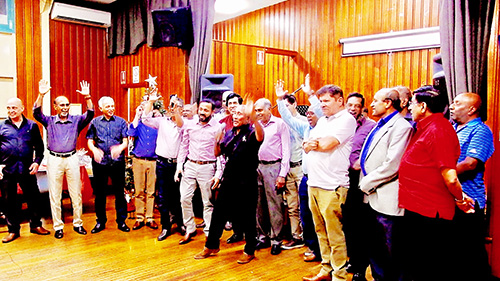
Christmas party, held on 23rd November 2019 Like all our events this year, this event was also well attended. For the first time, we produced a booklet of popular carols. Both the young and the not so young, joined to sing Christmas carols with great enthusiasm.
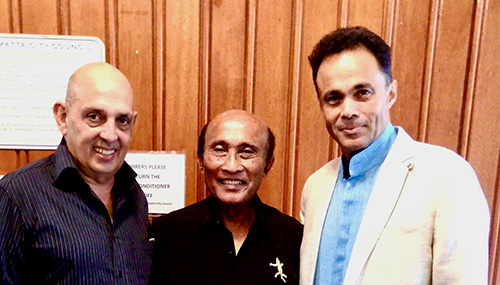
Christmas party, held on 23rd November 2019
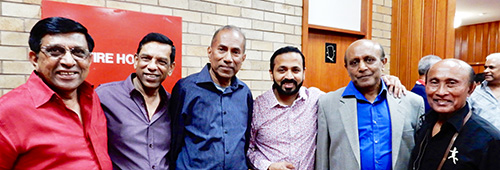
Christmas party, held on 23rd November 2019
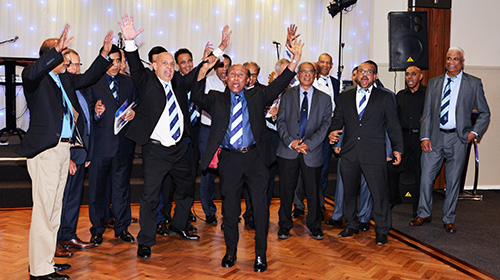
28th September 2019 - ‘DOUBLE BLUE SPRING BALL.’ This event was very special to us, as we were also celebrating the 145th anniversary of our College. 20 past pupils, names below, showed up with their families and friends. The President, in his address made a special announcement that part of the proceeds of the function will go to support a project at College to replace furniture in both the O/L and A/L classrooms in the main school block. As promised, the remittance was made and the new tables and chairs for two classrooms were delivered a month ago. The following past pupils – Keith Greiner, Nizar Sappideen, Darrel Maye, Nimal Weerasinghe, Derrick Ginger and Noel Saravanamuthu (in memory of his late brother Wesley Saravanamuthu) made personal contributions for refurbishment for one of these classrooms. The Principal and the OBA in Colombo have thanked us for our kind generosity.
The night ended with the College song, passionately sung by the past pupils and the Wesley ‘HAKKA,’ performed by one of our senior member’s – Nizar Sappideen, which as usual received much cheer. Please see photo above
The Following past pupils attended the function:
Kindly sent to me by Granville Norton - The President of the Australian OBU
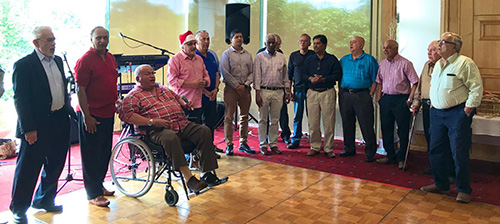
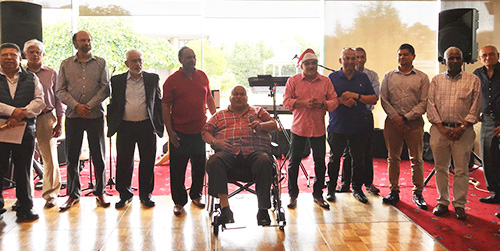
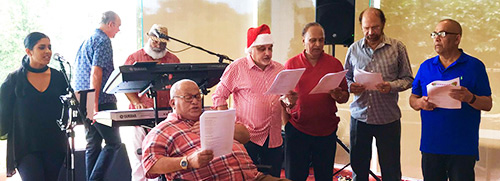
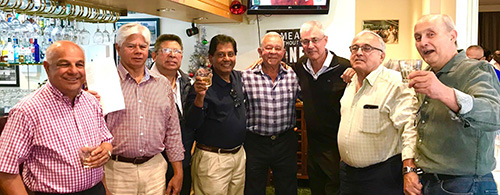
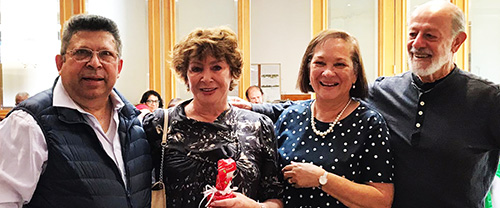
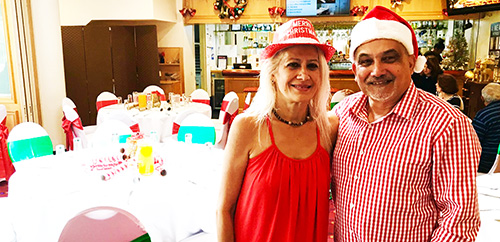
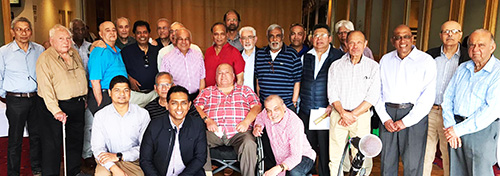

It is 70 years since I joined Wesley College in January 1950. In those formative years the school was a large part of my life. It was there I learnt to count, add, write and everything else worthwhile remembering. The school taught me discipline, respect and how to live in peace in this wonderful world. I have tried hard to live by those high ideals and of course there were times I fell short. I am ever so grateful to my parents and the school for my career in medicine. The Double Blue International website is my tribute and thank you to Wesley College. I remember the Principals and teachers with immense gratitude. The friends I have made at school have been my pals for life.
The Annual General Meeting is the most important event of the OBU calendar. It is the occasion when new office bearers are elected. There have been emails flying and a myriad of calls and texts to canvass and solicit support. I must stress that this note is not a valid legal record of the last meeting but just a few musings from an enthusiastic and interested old boy. We gathered together at 4pm on a sunny Sunday on the 1st of March 2020. There were about 50 past students. We assembled in a hall by the Sudbury Hill underground station in London. The present President Bala Vamathevan gave us a cordial welcome. There was plenty of handshakes, hugs and back slapping. We started with a prayer asking God for guidance during the meeting. This was done with great reverence by an old boy who is also an ordained priest.
The treasurer’s report is a magnet for old boys. We all want to make certain the money has been spent wisely. Questions came thick and fast and the answers were queried intently. The OBU is run with honesty and integrity. Although there were mistakes, at times, in the way money was spent lessons were learnt to be more thrifty in the future. Everyone seemed happy with this outcome.
As always with OBU meetings people got carried away and became over enthusiastic. The overall noise level increased and became far too loud. Everyone wanted to speak and be heard at the same time. The debates got very lively and some of the older and wiser old boys had to step in to ask for peace and calm. This was finally achieved. People had their say and were heard. Overall the whole of the meeting was conducted with dignity and decorum.
The election of the Secretary was done by ballot and Ranjit Chandrasena was duly elected. The other candidate for that post was Dilan Camball. I was most impressed to see Dilan in the best traditions of our school going up to Ranjit to shake his hand and congratulate him. Rest of the elections were done by the show of hands and counting was a nightmare as some raised their hands late and others changed their minds midway. But this was all done in the best of spirits and there were no serious disagreements or dissent.
As always when old boys gather there was plenty of fun. Some of the comments during the proceedings brought loud laughter which we all enjoyed. This was indeed a happy occasion which was topped up by some Sri Lankan style short eats, tea and coffee during the short break.
After nearly 4 hours of discussion and debate People were getting tired and got itchy feet. There was a clamour for the meeting to close. We sang the school song with gusto followed by the war cry. This did bring tears to my eyes. I remember the years we sang the school song at assembly facing the principal and teachers. The war cry was chanted waving the school flag under the Mara trees at Campbell Park during the intensity of cricket matches. These are indelible memories to last a life time. None of my teachers are alive today and many of my friends too have now passed on and what remains are happy memories.
The OBU meetings have always been lively and people have been belligerent at times. But our good upbringing and traditions have come to the fore at these situations to restore peace. Long may that continue.
I must say a special thank you to Don Nalin Perera for giving me a lift to the AGM on a day when the underground was dysfunctional and to Tyrone Namasivayam for making every effort to make my journey a possibility on such a difficult but important day. My thanks to the President Bala Vamathevan and the outgoing Committee for their hard work and efforts. Those present were friendly and made it a wonderful occasion for everyone. The venue, although so far away from Colombo, felt like a little bit of Wesley in a foreign land. I will indeed make every effort to go for the next AGM – God Willing!!
Wesley College 1st XI Cricket Team 1965
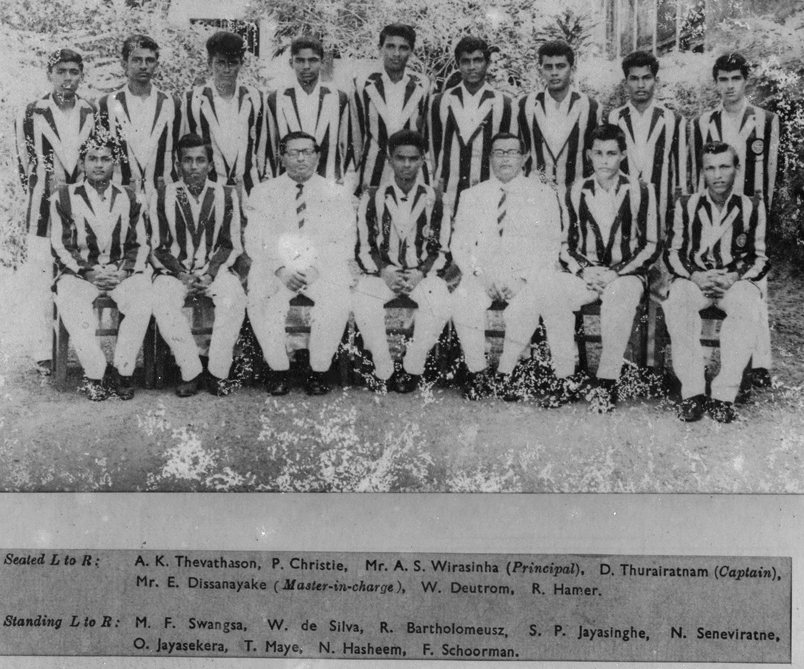
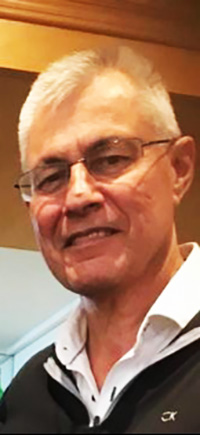 I entered Wesley in 1949 in the nursery class. At that time, we had a Kindergarten section headed up by Mrs. Joyce Leembruggen. Bryan Wijeyekoon's mother, Sheila Drieberg (unmarried at the time) was a teacher along with my mother. I finished my schooling at Wesley after the cricket season in 1965, when my sister and I migrated to Australia, to be followed shortly by my parents.
I entered Wesley in 1949 in the nursery class. At that time, we had a Kindergarten section headed up by Mrs. Joyce Leembruggen. Bryan Wijeyekoon's mother, Sheila Drieberg (unmarried at the time) was a teacher along with my mother. I finished my schooling at Wesley after the cricket season in 1965, when my sister and I migrated to Australia, to be followed shortly by my parents.
My stay at Wesley was an experience that set me up for my life in Australia. As an only son, I looked forward to my days at Wesley full of fun, camaraderie and sport. Like all young boys it was my hope that I would one day represent my school, like my heroes, who we looked up to. Cricket was the main game at Wesley in the 50's and 60's and a Wesley cricketer was held in high regard.
During my early days at Wesley the Claessen brothers, the Adihetty brothers, the Rajasingham twins, Samsudeen and brother Mihlar and a host of others were the Wesleyites we wanted to emulate. L.R.Gunatileke was a legend and others like L.C.R Wijesinghe my first captain and one of the best, Darrel Maye, school boy cricketer of the year, Milroy Muthuvaloe, and the Hamer Brothers were my contemporaries who were outstanding sportsmen. Current MIC Clifford Rodrigo was a prominent sportsman, a cricketer and an outstanding hockey player. Upali Perera captained a very successful hockey team that produced many players chosen for Public schools and I was one of those fortunate players along with Upali and CT.
 Wesley did not have the funds to invest in sport unlike the funds now committed to the various sports we are involved in. Our results were based on the efforts of exceptionally talented sportsmen. During my cricketing career the coach that stood out was Mr.Bahar who had great success with the teams he coached. There was no emphasis on fitness, one jog around Campbell park sufficed and fielding practice did not have the drills that are now in vogue. However individually we were pretty fit and the results ensured that we were constantly in the top echelon of cricketing schools. The most interesting aspect of playing cricket for Wesley was the support we had from the Wesley staff and students. The cheer squad was loud and constant. No calamity silenced them. The spectators were packed in and this was common to all schools. Crowds were comparable to the supporters at current rugby matches.
Wesley did not have the funds to invest in sport unlike the funds now committed to the various sports we are involved in. Our results were based on the efforts of exceptionally talented sportsmen. During my cricketing career the coach that stood out was Mr.Bahar who had great success with the teams he coached. There was no emphasis on fitness, one jog around Campbell park sufficed and fielding practice did not have the drills that are now in vogue. However individually we were pretty fit and the results ensured that we were constantly in the top echelon of cricketing schools. The most interesting aspect of playing cricket for Wesley was the support we had from the Wesley staff and students. The cheer squad was loud and constant. No calamity silenced them. The spectators were packed in and this was common to all schools. Crowds were comparable to the supporters at current rugby matches.
 Our trips away to Trinity, Richmond and Kingswood were always enjoyable. Once you survived the compulsory'RAG'the trips were looked forward to. The visit to Richmond in 1963 was unforgettable for more reasons than the cricket. I was the youngest member and also very mischievous and created a bit of havoc! I rang the Richmond warning bell which was definitely not permitted. We walked to the railway lines and the Ruhunu Kumari was approaching. In a moment of madness I ran across thee tracks and would have been very close to being wiped out. The seniors, including my good friend Sarath Wickremaratne, one of the most talented sportsmen Wesley has produced, met and decided to send me home. However they took pity and gave me a strong warning which kept me under control thereafter!! Incidentally we won the match by an innings!! Our team was led by Milroy Muthovaloe and had Darrel Maye, Schoorman, Mervyn Hamer, Sarath Wickremeratne, Cliffiord Rodrigo etc, An excellent team that was the Champion Schoolboy team that year.
Our trips away to Trinity, Richmond and Kingswood were always enjoyable. Once you survived the compulsory'RAG'the trips were looked forward to. The visit to Richmond in 1963 was unforgettable for more reasons than the cricket. I was the youngest member and also very mischievous and created a bit of havoc! I rang the Richmond warning bell which was definitely not permitted. We walked to the railway lines and the Ruhunu Kumari was approaching. In a moment of madness I ran across thee tracks and would have been very close to being wiped out. The seniors, including my good friend Sarath Wickremaratne, one of the most talented sportsmen Wesley has produced, met and decided to send me home. However they took pity and gave me a strong warning which kept me under control thereafter!! Incidentally we won the match by an innings!! Our team was led by Milroy Muthovaloe and had Darrel Maye, Schoorman, Mervyn Hamer, Sarath Wickremeratne, Cliffiord Rodrigo etc, An excellent team that was the Champion Schoolboy team that year.
 I was privileged to represent Wesley at Cricket, Rugby, hockey and Tennis and I was always at College either at the grounds or attending classes. At the time it was accepted that the Burghers were going to Australia due to the compulsory Sinhalese policy that was brought in by the Government. As a result, the Sinhalese classes were not taken seriously and the teachers generally asked the burghers to go to the back of the class!!! However, I did get through Sinhalese at the ‘O' levels much to the amazement of my friends and I did pretty well at the overall examination. This was mainly due to the encouragement and guidance I received from my close friend Razeen Sappideen who insisted we came to College on weekends to study. He joined the University of Western Sydney as the Foundation Professor of Law. He also became the Dean of law and has a doctorate to boot, leaving me a long way behind academically.
I was privileged to represent Wesley at Cricket, Rugby, hockey and Tennis and I was always at College either at the grounds or attending classes. At the time it was accepted that the Burghers were going to Australia due to the compulsory Sinhalese policy that was brought in by the Government. As a result, the Sinhalese classes were not taken seriously and the teachers generally asked the burghers to go to the back of the class!!! However, I did get through Sinhalese at the ‘O' levels much to the amazement of my friends and I did pretty well at the overall examination. This was mainly due to the encouragement and guidance I received from my close friend Razeen Sappideen who insisted we came to College on weekends to study. He joined the University of Western Sydney as the Foundation Professor of Law. He also became the Dean of law and has a doctorate to boot, leaving me a long way behind academically.
 One of our fellow students who made a lifelong impact on all of us who knew him was Robin Perera the Senior Prefect in 1964. Robin and I joined Wesley together and he was a natural leader at a very young age. Unfortunately, at the age of eight he contracted Polio which affected him badly to the degree that he had a problem walking. However, he overcame this set back with his indomitable spirit and left College in 1964 to join Radio Ceylon. He passed away a few years later at a young age. He had a brilliant mind and did not have the time to achieve his true potential. He still sadly missed.
One of our fellow students who made a lifelong impact on all of us who knew him was Robin Perera the Senior Prefect in 1964. Robin and I joined Wesley together and he was a natural leader at a very young age. Unfortunately, at the age of eight he contracted Polio which affected him badly to the degree that he had a problem walking. However, he overcame this set back with his indomitable spirit and left College in 1964 to join Radio Ceylon. He passed away a few years later at a young age. He had a brilliant mind and did not have the time to achieve his true potential. He still sadly missed.
Wesley had many great teachers who made a lasting impression on all who were fortunate to have been taught by them. Committed and always available to assist. They were professionals with a calling. We were fortunate to have Mr. David Joseph. Mr.Haig Karunaratne and Mr. Ivan Ondaatje in our later years and they have left a lasting impression. I will be always grateful for their contribution to my life. The Old Boys in Australia funded a trip for Mr. Haig Karunaratne and Dr. and Mrs. Shanti McLelland to Australia in recognition of their services to Wesley. This was a wonderful occasion and an emotional one for both teachers and past pupils living in Australia.
 In my opinion Wesley has had the services of three great Principals, Highfield, Cartman and McLelland. Both Highfield and Cartman were before my time but their legacy stands. I was closely involved with Dr. Shanti McLelland and watched his total commitment to Wesley in so much that he ultimately fell ill, by not taking care of his health. He was not easy to work with as he was driven to achieve an outcome for Wesley and did not accept any negative input. Dr. McLelland stood out with his management skills and his uncompromising attitude to ensure that Wesley would recover and progress. He came to College with a purpose and achieved it. When he joined Wesley, we owed the Church around 40 Million rupees. When he left Wesley had close to Rs 300 million and had two new campuses and a swimming pool. Our academic results had improved as well as our sporting results. Unfortunately, his efforts were not totally recognised and he had to leave when his visa terminated. This was a period of growth and consolidation. Wesley now under the stewardship of Mr.Avanka Fernando has the opportunity to return Wesley to the top echelon of schools in Sri Lanka with the support of a vibrant Old Boys Association which has been a revelation under the dynamic leadership of Wilhelm Vandort.
In my opinion Wesley has had the services of three great Principals, Highfield, Cartman and McLelland. Both Highfield and Cartman were before my time but their legacy stands. I was closely involved with Dr. Shanti McLelland and watched his total commitment to Wesley in so much that he ultimately fell ill, by not taking care of his health. He was not easy to work with as he was driven to achieve an outcome for Wesley and did not accept any negative input. Dr. McLelland stood out with his management skills and his uncompromising attitude to ensure that Wesley would recover and progress. He came to College with a purpose and achieved it. When he joined Wesley, we owed the Church around 40 Million rupees. When he left Wesley had close to Rs 300 million and had two new campuses and a swimming pool. Our academic results had improved as well as our sporting results. Unfortunately, his efforts were not totally recognised and he had to leave when his visa terminated. This was a period of growth and consolidation. Wesley now under the stewardship of Mr.Avanka Fernando has the opportunity to return Wesley to the top echelon of schools in Sri Lanka with the support of a vibrant Old Boys Association which has been a revelation under the dynamic leadership of Wilhelm Vandort.
I am sure that every batch of Wesleyites will have their own heroes and stories to relate. It is an interesting exercise thinking back on your school days and trying to condense these thoughts into a short essay. I am grateful for the opportunity and even more grateful that I had the privilege to attend this great school.
From Arthur d'With-Barbut
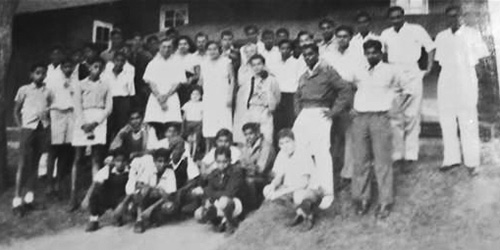
The group photo above shows a touring party from the Hostel outside our Survey Department home in the Survey Camp at Diyatalawa with my family. In the middle are my Mum and Dad, their first grandchild, Edward, my sister Kathleen, her late husband Gerald, (the first Vice President of the Wesley OBU in Melbourne), my grandmother Fortune, my brother Cecil, (the founder of the Melbourne OBUA and former Solicitor in Melbourne, Australia.) Members of the Wesley Staff in the picture are Henry Rajapakse, Senior Hostel Master, (kneeling), Frank Jayasinghe and Charles Yesudian. Former Sports Master to be and later Journalist, Kenneth de Silva is also in the picture. I am in the centre.
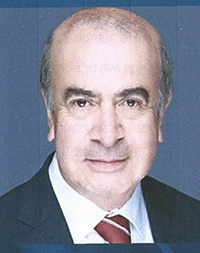 What happened to the little boy in the photo?
What happened to the little boy in the photo?
Edward immigrated to Melbourne, Australia with his parents in 1959. He was nurtured in true Wesley traditions, by his father, grandfather and uncles! He became a Barrister at the Victorian Bar in 1981. In December 2019, he was appointed CHIEF MINING WARDEN of VICTORIA.
Kindly sent to me by Peter Peiris

From Keith de Kretser
Photo: Lalani Weddikkara nee De Mel
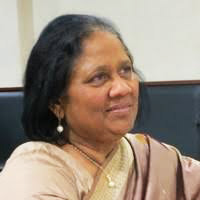
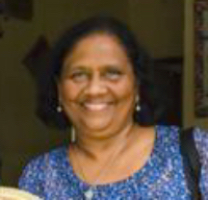
.......................................................................
From Dr Nihal D Amerasekera
Wesley College was my Temple of Wisdom. I feel greatly privileged to have been taught by some remarkable teachers. The harsh environment and strict discipline taught us to focus under pressure and develop an analytical mind. It gave us an indomitable spirit for the rigours ahead. We remember the teachers, none of whom are alive today, with much affection and gratitude. We thank them for their commitment to teaching. The rest as they say is history. I left school in 1962. After medical school I stepped on the treadmill to carve myself a career and raise a family. Meanwhile time passed relentlessly. It is the demise of friends and teachers that cast a dark shadow over those years at school. Amidst the sadness that ensues there is also some solace in reminiscing. When I achieve those special milestones of living longer I think of those who didn’t quite make it. The friendships and closeness that we enjoyed have lasted a lifetime.
 JLF De Mel was the Headmaster of the school during my time at Wesley in the 1950's. He was an avuncular gentleman who brought gravitas to the profession. Being a teacher at Wesley from 1931 to 1959 he spoke with authority, composure and a twinkle in his eye. In outward appearance and dress JLF might have been mistaken for a pillar of the Establishment. In reality he was quite the opposite. He was one of God's good men in the harsh environment of education in the 1950's. He was a kind man who spoke softly, whatever the situation. JLF wasn't a reformer but an old-fashioned teacher who provided a good education to the many who passed through the gates of Wesley College.
JLF De Mel was the Headmaster of the school during my time at Wesley in the 1950's. He was an avuncular gentleman who brought gravitas to the profession. Being a teacher at Wesley from 1931 to 1959 he spoke with authority, composure and a twinkle in his eye. In outward appearance and dress JLF might have been mistaken for a pillar of the Establishment. In reality he was quite the opposite. He was one of God's good men in the harsh environment of education in the 1950's. He was a kind man who spoke softly, whatever the situation. JLF wasn't a reformer but an old-fashioned teacher who provided a good education to the many who passed through the gates of Wesley College.
He lived in the Wesley College Flats behind the Tennis Court with his wife Beatrice and their pretty daughters Nalini, Amitha, Priya, Manel, Shanthi, Lalani and their son Prem who attended Wesley. The family were ever present at all the school functions and sports gatherings. Their lovely daughters were a sight for sore eyes and did turn heads. Several of JLF’s daughters taught at Wesley College.
 Enigmatic, Flamboyant, brilliant and larger than life are perfect descriptions of a teacher whom we admired and revered at Wesley in the 1950s and 60s. He was Mr Lancelot Aelian Fernando whom the boys affectionately called “LAFFA”. The students respected him enormously. His ubiquitous presence was a feature at Wesley during my years at school. A man of intellectual dynamism and conviction, he was a towering presence on the teaching scene at Wesley. He immersed himself fully in everything he did, sports, academic or extracurricular activities - an extrovert. He had a commanding voice, and an authoritative physical presence.
Enigmatic, Flamboyant, brilliant and larger than life are perfect descriptions of a teacher whom we admired and revered at Wesley in the 1950s and 60s. He was Mr Lancelot Aelian Fernando whom the boys affectionately called “LAFFA”. The students respected him enormously. His ubiquitous presence was a feature at Wesley during my years at school. A man of intellectual dynamism and conviction, he was a towering presence on the teaching scene at Wesley. He immersed himself fully in everything he did, sports, academic or extracurricular activities - an extrovert. He had a commanding voice, and an authoritative physical presence.
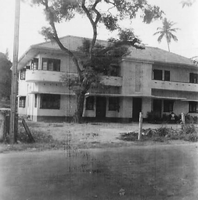 He returned from the USA after postgraduate qualifications and married JLF De Mel’s eldest daughter Nalini. Mr Fernando had a masterful public manner and kept the school in the spotlight. Then luck played its part. Being a strong political figure at school of considerable stature he rose to become the Vice Principal above many strong contenders. His prestige then was at its height and what a wonderful life he lead; what a fantastic existence as seen through a schoolboy’s eyes. “we were totally in awe of him,” said one of my old school friends. Status, wealth, prestige, looks, lifestyle and a lovely family: LA Fernando had it all.
He returned from the USA after postgraduate qualifications and married JLF De Mel’s eldest daughter Nalini. Mr Fernando had a masterful public manner and kept the school in the spotlight. Then luck played its part. Being a strong political figure at school of considerable stature he rose to become the Vice Principal above many strong contenders. His prestige then was at its height and what a wonderful life he lead; what a fantastic existence as seen through a schoolboy’s eyes. “we were totally in awe of him,” said one of my old school friends. Status, wealth, prestige, looks, lifestyle and a lovely family: LA Fernando had it all.
Photo- The Vice Principal's Bungalow

JLF's daughter, Amitha, married Senaka Jayasinghe who was a boarder with me in the 1950's. After marriage they lived in Kohuwela. She sadly passed away a couple of years ago. The youngest daughter Lalani was a lively girl and we often saw her running around in the Principal's lawn with Mr Oorloff's daughter, Gillian. At weekends we often saw them climbing the Temple Trees in their garden.

Mr JLF De Mel passed away in 1974 and Mr L A Fernando died in 1986. JLF’s only son, Prem, sadly passed away young in Perth, Australia. He was a quiet lad. His privileged position didn't rest easily on his shoulders.
I emigrated to the UK in 1974. I am now retired and live in London. I have often wondered how life panned out for JLF’s family. They were so much a part of our lives at school. I kept in touch with Nalini when she lived with her son in Toronto, Canada. She spoke warmly of her life as a student at Wesley and later as a teacher and the wife of the Vice Principal. After she moved to Colombo the emails dried up. As they say “great minds think alike”!!! I was delighted to hear that Keith de Kretser too has been looking for information about the De Mel family.
....................................................................... Addendum from the 1959 School Magazine We congratulate Mr. L. A. Fernando, MA., Dip. ED. (Birm) on his appointment as Vice-Principal. Mr. Fernando joined the staff of Wesley College in 1950, and was Hostel Master (1950-51), and Senior Hostel Master in the period l951-1954. As an Old boy of St. Thomas' College, he strengthens the link we already have with Mt. Lavinia, in Mr. F. J. Senaratne, The Sub-Warden of St. Thomas'. Mr. Fernando was awarded a scholarship to the United States, to the Garett Biblical Institute and North Western University, where he followed a course of studies in the period, l954-l956. Mr. Fernando returned to Ceylon in 1957, and'was appointed Chaplain of the school, in which capacity he did useful service. We wish him well in the new task that he has now undertaken. .......................................................................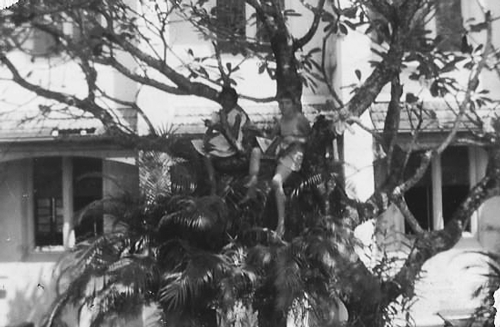
Links to further reading
Kindly sent to me by Peter Peiris
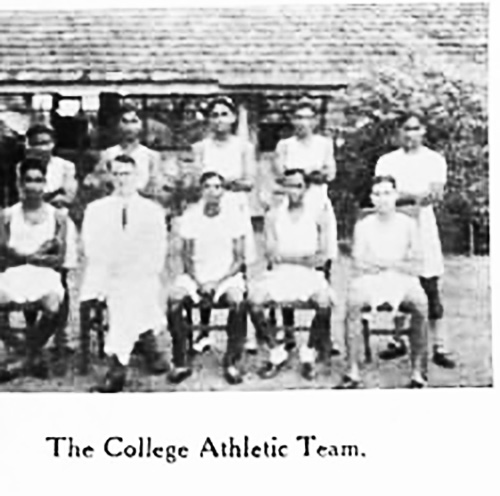
Scouting at Wesley
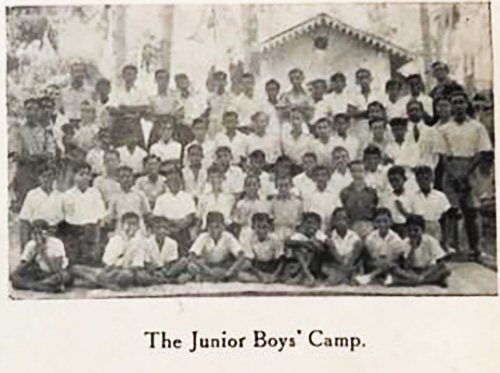
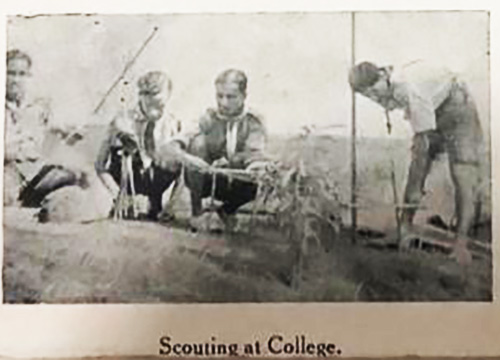
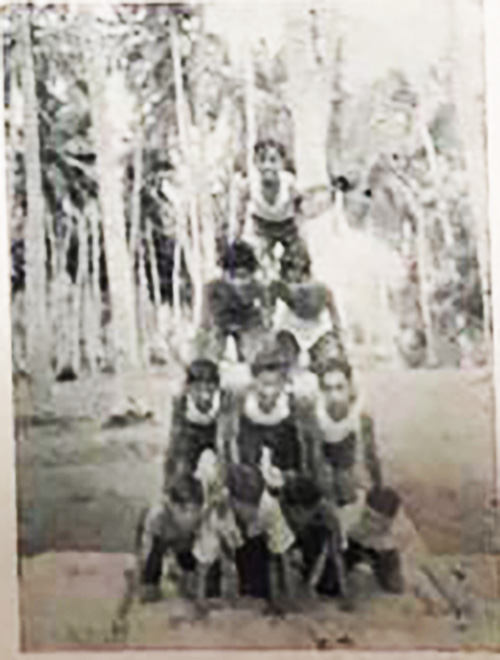
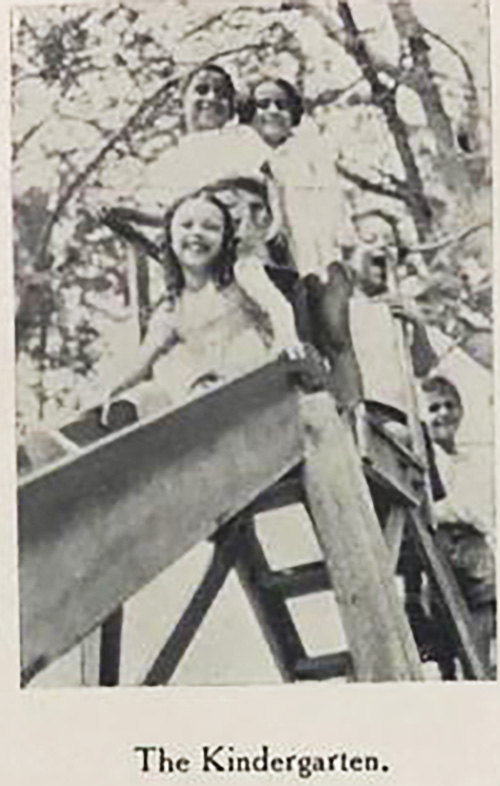
1st XI Cricket Team - 1941
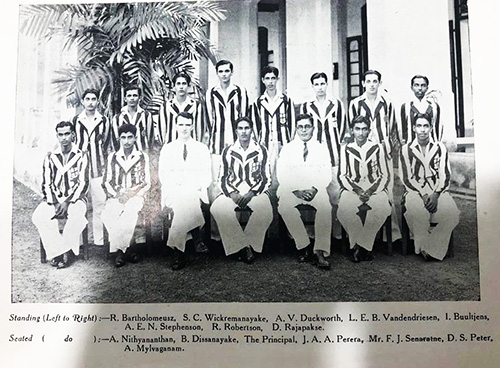
Kindly sent to me by L.C.R Wijesinghe
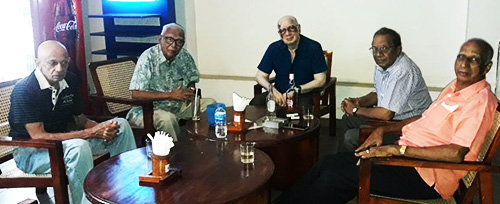
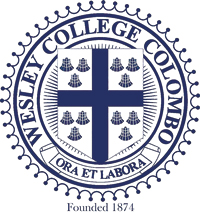

From the Sunday Times of 13th September 2020 - Kindly sent to me by Peter Peiris
Founded in 1874 by the Rev. Daniel Henry Pereira in the environs of Dam Street in Pettah, Wesley College Colombo, a Methodist school, today stands as a monument along Baseline Road, in memory of one of its greatest Principals, Rev. Henry Highfield, who contributed immensely towards uplifting and improving education both at Wesley and also in the country.
As a gesture of gratitude to his service in uplifting the standard of education in Ceylon, Rev. Henry Highfield was invited as a special guest by the state to be present at the event when Ceylon was granted independence on February 4 in 1948. Unfortunately he could not attend the celebrations as he was advanced in years and too feeble to travel.
Rev. Highfield was the architect who convinced the think tanks of the Wesleyan Mission in the United Kingdom to shift the school from the dusty environs of Pettah due to its growing numbers. It was he who was responsible for the school’s plan, architecture and construction in its current premises at Baseline Road since 1907. Wesley has made vast strides since then and continues to improve and expand by introducing modern teaching techniques using state-of-the-art technology. Understanding what is currently required for the Country, the incumbent Principal, Avanka Fernando is exploring to include new innovations parallel to the syllabus by introducing technical-based studies for students.
His vision is to produce well-rounded students both in the fields of academics and sports, so they will be a valuable resource to the country. Producing brilliant ‘men of grit’ across the wide spectrum of society over its history of 146 years, many students have gone on to achieve accolades in their respective fields of professional expertise.
Standing out among the many are Sir Oliver Goonetilleke, Sir D.B. Jayathilleke, Sir Claude Corea, Sir Mohamed Macan Markar and Sir Gerard Wijekoon, who went onto be prominent figures in the history of Sri Lankan civil service. They have duly been recognised for their service to the country and decorated as Knights of the British Empire by the British Monarchy.
Wesley College has also produced educationists namely C.P. Thamotheram (Hartley College, Point Pedro), E.R. de Silva (Richmond College, Galle), P.H. Nonis (Kingswood and Wesley College), S.V.O. Somanader (Central College, Batticaloa), Rev. W.M.P. Jayatunga (Carey College, Colombo), E.D. Thambimuttu (Christian College, Kotte), F.N. Hettiarachchi (Cathedral College, Kotahena), P de S. Kularatne (Ananda College, Colombo), E.W. Adikaram (Ananda Sastralaya, Kotte) from the era of the great Rev. Henry Highfield.
In later years were Dr. Lou Adihetty, Dr. N.A.B. Fernando, Mr. M.A.P. Fernando, Dr. Shanti McLelland, Dr. Ben Manikkam, all of them old boys who went on to serve their alma mater as principals. Following their footsteps is the current Principal, himself an old boy, the young and energetic Avanka Fernando. Among the numerous names, far too many to enumerate and mention, of those outstanding students who were educated at Wesley and went on to play a significant role in the public life of Sri Lanka were Harischandra Walisinghe, M.D. Gunasena (book publisher and the man who taught the nation to read), M. Zubair Caffoor (who had the distinction of being the first Ceylonese to obtain an air pilot’s license), Gate Mudliyar M.S. Kariapper, Prof. E.F.C. Ludowyk, H.S. Ismail and M.H. Mohamed (both Speakers of the House) Air Vice Marshall E.R. Amerasekera (the first Sri Lankan to be Commander of the Air Force), Deshamanya Chithrasena Dias, Rienzie Wijetilleke (former Managing Director of the Hatton National Bank and banking guru of Sri Lanka).
More recently were Kumar de Silva decorated as a Chevalier in the Order of Arts and Letters by the French Government, Prashan De Visser, who has been bestowed with a Commonwealth Point of Light by the Queen of England. Besides, Wesley continues to produce several heads of prestigious institutions in the banking and corporate sectors.
From DIGs to Air Vice Marshalls to Major Generals and Commodores, and specially trained commandos, many students who walked through the portals of Wesley went on to defend the country by serving in our valiant security forces during the two World Wars and the country’s 30-year ethnic conflict by sacrificing their lives. Some were fortunate to survive, to relate their experiences. When Wesley College was located in Dam Street the first cricket encounter was played against Royal College in 1893 and since there was no ground the game was played at San Sebastian Hill. However with the school moving to its newly built premises in 1907, Wesley began using Campbell Park as its grounds and produced many exciting cricketers who went on to represent the country. Brilliant among Claessens, Dissanayakes, Harmers, and many more was the legendary Mahadevan Sathasivam, who had the distinction of captaining Ceylon (as it was known then), Singapore and Malaysia.
Interestingly the uncle of the current President and Prime Minister, D.M. Rajapaksa played on this very ground representing the Wesley 1st X1 in 1915 and 1916.
Campbell Park, as it was known, was also used as the grounds of the Tamil Union Cricket and Athletic Club, which had its own clubhouse which resembled a British countryside clubhouse. Securing a larger extent of land in Wanathamulla and developing it into a ground of international standards, the Tamil Union Cricket and Athletic Club moved to their new ground which is now known famously as the Colombo Oval.
P.H. Nonis, who went on to become Principal of Wesley successfully negotiated the purchase of the clubhouse from the Tamil Union in 1940. This over-100-year-old pavilion stands to this day and is still used to host the 1st X1 cricket teams of schools that continue to visit Wesley.
The ground was further developed and expanded to a full-sized cricket ground with the introduction of new turf wickets in 1991. Wesley continues to use this ground for hockey, football and athletics while it is used for rugby practices by the school’s squads at junior and senior levels.
The Methodist Church of Sri Lanka was generous to handover 178 of its schools to the government in 1962 and retained only Wesley and Methodist Colleges Colombo under its management. Continuing to produce academics and sportsmen who continued to nourish the national interest of the country, Wesley College, today a semi-government school, which enjoys a rich heritage and history in the educational annals of Sri Lanka yearns to have its own ground so that it could improve its sporting portfolio and continue to produce sportsmen of the highest calibre. Producing three All-Island School champion sides in cricket in 1963, 1969 and 1985, champion side in hockey in the 60s and 70s and a champion side in rugby in 2013, the church along with the school authorities and its stakeholders consisting of parents and old boys anticipates to see that their hope to own the grounds at Campbell Park, which they have been using for over a 100 years, will materialise and that those in authority will make this dream a reality.
Wesley will continue as she moves ahead to serve the country in the field of education by producing ‘men of grit’ and industry to be valuable assets beneficial to Mother Lanka.
Links to further reading
Wesley College Rugby Team 1962
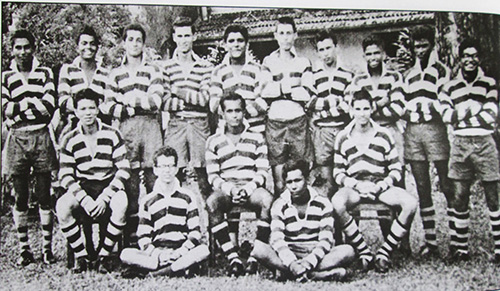
 My wife and I arrived in New Zealand, on 2nd June, 2008 from Sri Lanka. From Auckland Airport we had catch another domestic flight to New Plymouth. On arriving at New Plymouth Airport our daughter and her Kiwi husband were waiting to take us to our new home, which was one hours drive to the small city called Opunake, where we have been living since we arrived in New Zealand. For the first two years we lived with our daughter and then when their family started grow, we knew we had to give them their own space, so moved out to live on our own. It was only after we arrived in New Zealand our daughter decided to have children. Their eldest is a boy is now 12 and a girl who is 8 years old.
My wife and I arrived in New Zealand, on 2nd June, 2008 from Sri Lanka. From Auckland Airport we had catch another domestic flight to New Plymouth. On arriving at New Plymouth Airport our daughter and her Kiwi husband were waiting to take us to our new home, which was one hours drive to the small city called Opunake, where we have been living since we arrived in New Zealand. For the first two years we lived with our daughter and then when their family started grow, we knew we had to give them their own space, so moved out to live on our own. It was only after we arrived in New Zealand our daughter decided to have children. Their eldest is a boy is now 12 and a girl who is 8 years old.
Opunake is not a vibrant town like Auckland or Wellington. Opunake consists mostly of retired famers. I don’t enjoy living in Opunake. Even to date there is only one other Sri Lankan family in this little town. There are Sri Lankans time and again who come to work in the Dairy farms. But after a while they move out. In the early days life was so boring. I had look for things that would bring me happiness. So I took to fishing and singing. I joined the local Country Music club where every Sunday people from Opunake and neighbouring cities sing Country Music songs with a live band in attendance. These singing sessions went on from 10.00am to 3.00pm. We have a lovely beach in close proximity with a ramp for fishing. So I bought an old fishing rod from the op shop and went out surf casting. Met with very little success at the start, however it was a good pastime. To keep fit, I chopped wood to light the fire place to keep us warm during the cold winters. Gradually I got used to life in Opunake. The things we most benefitted by coming to NZ at our old age was the good health service. After 5 years stay we applied and got our NZ citizenship. Now all our medical needs are free. I had my 2nd total knee replacement surgery, the 1st was in Sri Lanka, prostate gland surgery and now awaiting a stent to one of my blocked artery. My wife has had Cataract surgery, Thyroid surgery, absolutely free with the best hospital care. Even the medication are free. Opunake although it’s a small town, consisting of only 1100 people, most of the facilities for day to living are available. A medical centre with 4 GP’s, 2 pharmacies, 2 gas stations, with facility to fill LP gas cylinders, drapery stores, fish & chip shops, fitness centres, event centres, high school, kindergartens, primary school, 3 small Super markets, swimming pools, camping grounds, walking tracks, cafes, dairies, a movie theatre, mountain biking tracks, surf shop, a Indian restaurant, sports shop, 3 pubs, 2 liquor stores. Library, town hall, Catholic Church, Anglican Church, Presbyterian Church and Baptist church. I go to New Plymouth once a month to the Asian grocery store for all my Asian groceries like Maldive-fish, SL condiments, vegetables, fruits, red lentil, coriander and MD and Derana produts.
Opunake is never short of Tourist. The Highway that runs through the town is called Surf highway 45. That’s because Opunake is known as the Surfing Paradise of New Zeeland. The other attractions are the beautiful Mount Taranaki and its Ski fields. During summer tourist flock to this place from all over New Zealand and the whole world. We also boast of some of the most beautiful gardens. From the last week in October to the First week in November, the area has its Rhododendrons and Garden festival, this also attracts bus loads of tourist to the area. There is a big camping ground next to the beach, which is crowded during summer.
When in Sri Lanka I never ventured to cook, because my wife and the domestic help took care of the cooking and house old chores. Now, as my wife is not in the best of health, I spend most of my time cooking meals for my wife and our daughter’s family. The grandkids and our son in law who is a kiwi, has now got used to spicy Sri Lankan dishes. I need Red Lentil curry (Parippu)) every single day. It has been a childhood favourite. Once a year I travel to Perth to visit our elder daughter. I love Perth, specially to catch up with my old Wesleyites living there.
I have yet to travel to most parts of New Zealand. However I have been to the South Island. I went there specially to see the opening ceremony of the ICC cricket world cup in February 2015, which was held in the Garden City, Christchurch. The opening match was between Sri Lanka and New Zealand, which the Black Caps won convincingly. I was fortunate to meet a famed cricketer from Wesley College at the match. None other than Darrel Maye. Christchurch is easily one other most beautiful cities in the world. I also toured the place to see the ravages of the earthquake.
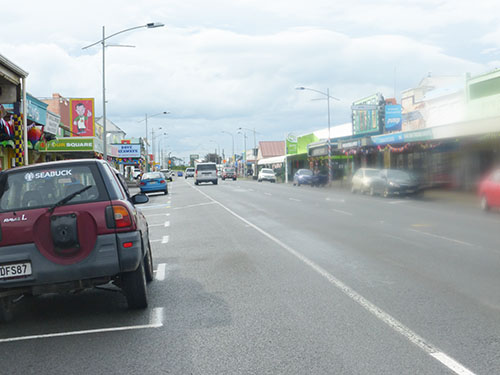
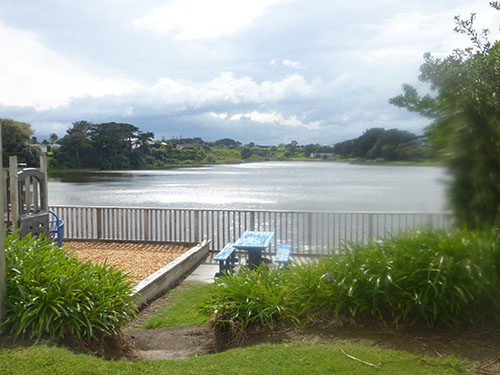
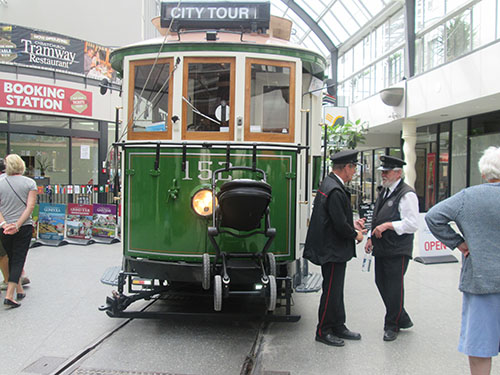
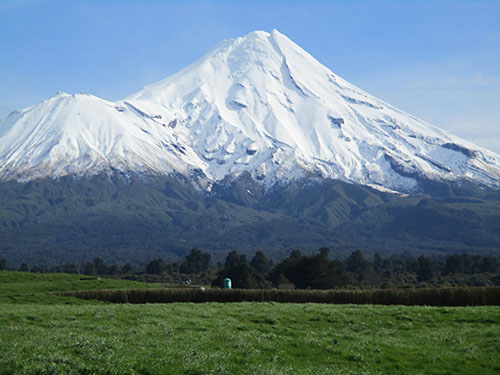
From Dr Nihal D Amerasekera
Ranjit Aaron was at Wesley during the splendid Oorloff/Nonis era of the 1950's and 60's
Memory defines who we are. Even time cannot erase some of those wonderful memories of our schooldays. Ranjit Aaron was several years my junior at school but I remember him distinctly as he was such an active boy, energetic and playful, running around in the front garden during the intervals. He wore easily recognisable distinctive thick rimmed glasses. I do recall he joined the school choir and also played Rugby for the school in 1962, for the 1st XV. After leaving school he joined the support services of the plantation industry working upcountry in Sri Lanka. He has written so beautifully of his life at school and also in the hill country.
I struck-up a friendship with Ranjit as he is a great supporter of the school in all its forms. His loyalty and enthusiasm for everything about Wesley is a beacon for us all. He has been a regular reader and supporter of my Double Blue International website since its very beginning in 1997. Ranjit has written extensively about school life and the life thereafter with great panache and style. His writing mirrors his charming ways. He is one of the most loyal old boys I have met and also one of the nicest guys. Ranjit remains a kind and scrupulously honest gentleman ever willing to help.
On behalf of the Brotherhood of Wesleyites Worldwide I wish him and his wife Rita a long and happy retirement in Opunake, New Zealand.
Links to further reading
The Double Blue - July 1946
Editorial.
Labour, and Penury, the racks of pain,
Disease, and Sorrow’s weeping train,
And Death, sad refuge from the storms of Fate!
The poet has sketched with admirable clarity, albeit pessimism, the strain and struggle of life. The two hundred years which have elapsed, since Gray penned the above lines, have seen marvellous progress in man’s command over Nature. So that Labour, Penury, and Disease is no longer man’s eternal lot, to be endured in patient resignation, but are a challenge to the ingenuity of Man, in successfully eliminating conditions, which make life bard and brutal. The latest advance, in the realm of atomic energy has opened for us an Eleysian prospect on earth, but the entry of this mighty power into the affairs of Men ha6 been heralded by the Angels of Death.
It is open to us to make Utopia a reality, or wrap the world in a funeral shroud. It is for us to will what we would. But the conduct of affairs in the Post-war period has been characterized by Atomic Diplomacy, and gives us no hope for the future.
The Politicians of the world nurtured in an age when the national frontier, bounded the limits of prosperity, are unable to think in terms of world-citizenship and world-prosperity. It is to a younger generation, brought up in the realization of the brotherhood of Man, that the world will have to rely for a better guidance of its affairs in the future. The youth of Today will be the Men of Tomorrow. But if Youth is to be at the helm, we must develop those qualities of the head and heart, which would enable us to steer clear of the reefs and shoals of Life. The Youth of Wesley too most play their part, this could be best done by pursuing the twin ideals of Knowledge and Character, in this period of our life when we are ' strangers yet to pain
We are back in our own buildings after an enforced exile. During this period there has been a certain laxity in our Way of life. There are 6ome students, who have never known the Wesley of old, to whom the noble traditions of Wesley are foreign. From one and all, we would plead for the building up of a Wesley Spirit that would produce in the words of our College song “men of grit and industry.
Office Bearers
Magazine Editors : English H.S.A.T.Peiris and N.J.Prins.
Sinhalese ; H. D. Ariyaratne.
Tamil : N.A.Casinader
Business Managers: E. Dissanayake, A. B. H. Ratnaraja.
Prefects
H. S. A. T. Peiris (Senior Prefect), Edmund Dissanayake. A. B. H, Ratnaraja, R. D. Ariyaratne, D. R. Wijesekere, D. J. Gogerly; B. Jacotine, N. J. Prins, H.L Matthysz,
Sub-Prefects
N.E. Algama, P. S. Perera D. V. Thuring, E. Nugera,S. Rodrigo, J. G. De Silva.
House Masters
Hillard House. G. Joseph, E. D. Tambimuttu.
Moscrop House. F, J. Senaratne, N. S. Kumarasinghe.
Passmore House E. A. Gunasekera. L. C. De S. Weragoda.
Wilkin House F. J. De Mel, M. D. A. Weerasooriya.
House Secretaries
Hillard — S. J. R. Selladurai (1945),E. Dissanayake (1946).
Moscrop — A. Ramachandra (1945), D.R. Wijesekere (1946).
Passmore — R. D. Ariyaratne.
Wilkin — Shelton Peiris.
Games Masters
Athletics— Messrs. R. A. Honter, M. D.A. Weerasooriya.
Cricket— Mr. G. Joseph.
Volleyball— Mr. K. O. George, Football —Vacant
Games Captains
Athletics and Boxing - B. Jacotine
Cricket — A. Ramachandra (1945) E. Dissanayake (1946),
Volleyball — P. S. Perera.
Library
Librarians—Messrs. R. R. Ariyanayagam, V. J. Vedenayagam, Asst. Librarians—H. S. A. T. Peiris, P. S. Perera, D. R. Thuring, E. Nugera, D. R. Wijesekere, T. K. T. Fernando, N. A. Casinader; J. M. Kanagasooriyan,
Senior Literary Union
President — The Principal. I ,
Vice President — Mr. F. Seneratne. Student Vice-President—E. P. Senanayaka
Secretary — A. B. H. Ratnaraja.
Asst. Secretary — N.J. Prins.
Junior Literary Union
President—The Principal Vice-President — Mr. K . C. George. Secretary— M. K. D. Ahamat.
Asst. Secretary—
Sinhalese Literary Union
President—The Principal. Vice-President—Mr N. S. Kumarasinghe.
Student Vice-President — P.S.Perera. Secretary — E. Dissanayake.
Asst. Secretary — R. D. Ariyaratne.
Tamil Literary Union
President—The Principal. Vice-President — Mr. R. R. Ariyanayagam.
Student Vice-President—A. Ramachandra, Secretary — M. Manicam.
Asst. Secretary — M. S.Saleem.
Games Club
President — The Principal.
Secretary — A. Ramachandra.
Asst. Secretary — H. S. A. T. Peiris.
Christian Union
President — The Principal.
Vice-President — Mr. F. J. De Mel.
Student Vice-President — H. S. A. T. Peiris.
Secretary—Vacant.
Music Society
President—Mr. F. J. De Mel. Student Vice-President — D. J.Gogerly.
Secretary — L. Lucas.
Scouts
G. S. M.— Mr. J. E. De Silva. S.M.— Mr. R. A. Honter. T.L. — H. L. Matthysz. P/Ls—B. Jacotine, S. Samsudeen, D. F. Gunatilleka, G. De Silva.
From Trevor Van Rooyen - Junior School Certificate(JSC)
Cricket in New Guinea
The Australians’ love for their national game cricket is unbounded. Even into New Guinea, land of cannibals, they have brought it and the coastal natives, have-copied it, although in the process of copying, the game has been greatly altered. Each village has its team and so great is the spirit of rivalry that every man, no matter how old and feeble he is, is determined to take part, so that at times a team consists of more than a hundred on each side. The bat is a rough wooden club, and the ball, only roughly circular in shape, is cut out of hard wood. Sometimes during the course of the match, a ball is split in two, and the match has to be held up until another one has been carved out.
At one match I was watching I was puzzled for some time by the frequent shouts of the small boys on the boundary which had as its theme one oft repeated word which sounded like “Welapletsah.” What does that word mean? I asked my Australian host “ It must be marvelous magic, the way they use it every time the ball is hit.” “Oh don’t you recognize it?” he replied in surprise that’s the same shout that you would hear at Lords. They don’t know what it means, but what they are trying to say is Well played Sir
In these inter-village matches, feelings, often run high. It is small wonder, considering the fact that a game will sometimes drag on for more than a week. The players bring their war clubs to the field with them, and when a dispute arises, blood begins to flow. The police are called in, the match is stopped and the battered sportsmen sent back to their homes, I was told of one occasion when a white patrol officer having bent away the players after a particularly bitter match, saw a giant native still limping about the pitch, searching the ground diligently, while he held one hand up to the side of bis wounded bead. The officer asked him why the devil he didn’t do as he was told and go back home. But,pleaded the man, he bad lost some thing so could he please hunt for it? Well he was asked what it was. The native grinned, and taking his hand away from his bead, showed a horrible sight. It was his ear he had lost, he explained. Not that he really minded losing his ear he said, but it bad been adorned with some very nice beads he treasured even more than his life!
From Nil-Koba - Higher School Certificate and Varsity Entrance
To En
Neath star-bespangl'd skies till day,
Opening all my heart, to you—divine,
A restless youth, in Love’s Romantic way :
These lips, like crimson thread, that curv'd in smile I yearn’d to kiss, and hear
their whispers soft As silver anklets, echoing for awhile ....
To gaze into those eyes, I dreamt so oft
But where are yon ? those steps where can I trace,
Where can I find that perfum’d, perfect flower
Will e’er I see, my fondling's dimpl’d face
E’en for the passing glory of an hour?
Teen, will these tears, shed in vacant place,
Give way to smiles, in that one fond embrace.
From Shelton Peiris
Only a Clerk
“ Only a clerk ”, patient and poor
From work returning late.:
“ Only a clerk ” in a patched-up coat Subject to scorn and hate.
“ Only a clerk ” with shoes, all torn.
Cheerless and worried in mind,
“ Only a clerk” who starves at his desk What joy in life could he find ?
“ Only a clerk ” to the unfeeling rich
To the silk clad, all in smiles
“ Only a clerk ” by the haughty unloved With only the love of a child’s.
*
“ Only a clerk,” but a man sincere,
Who shares with the beggar, his bread “ Only a clerk,” but a king of good men
Yet he sleeps, with a stone to his head
“ Only a clerk,” but a hero is he ... .
Fighting life’s battle grim,
“ Only a clerk ” but the best of all men
And I raise my hat to him.
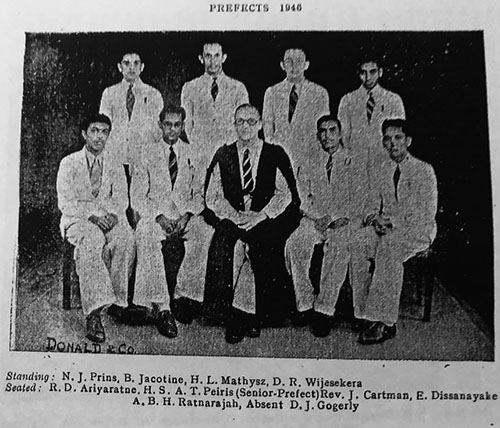
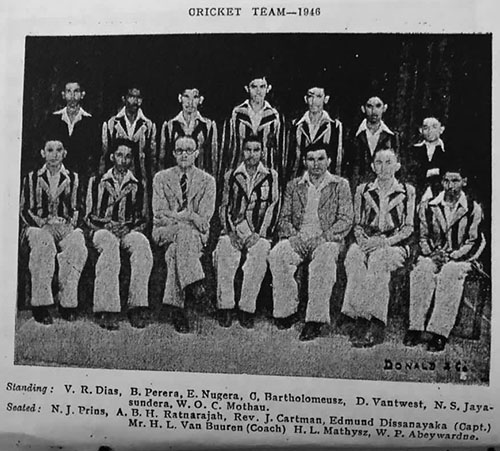
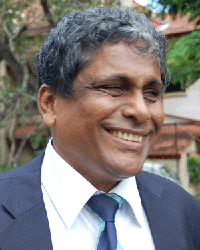 I joined the 14th Colombo Scout Troop in the early 1960's. 14th Colombo is Wesley's Scout Troop. Then the scout masters were Mr. Aruliah, Mr. E.L.Rodrigo, and Mr. Dhanapala. The previous master-in-charge Mr. A. E. Abraham left at end of 1960 to join Bible Society. Mr. P. Harold Nonis former Cricket Captain (1921) and Senior Prefect was the Principal at Wesley. He left in 1961 and Mr. Arthur Shelton Wirasingha took over from him.
I joined the 14th Colombo Scout Troop in the early 1960's. 14th Colombo is Wesley's Scout Troop. Then the scout masters were Mr. Aruliah, Mr. E.L.Rodrigo, and Mr. Dhanapala. The previous master-in-charge Mr. A. E. Abraham left at end of 1960 to join Bible Society. Mr. P. Harold Nonis former Cricket Captain (1921) and Senior Prefect was the Principal at Wesley. He left in 1961 and Mr. Arthur Shelton Wirasingha took over from him.
I joined at the insistance of my good friend Mohan Abraham as they had one less in the Parrot Petrol to attend the Colombo Camporee in 1960. Anurudha Jayawardana, my class mate always asked me to join the troop but I was not interested. I could not refuse Mohan as he asked me the day before the start of the Camporee and lent me the uniform and asked me to join only for the camp. Mohan's father later became the Scout Commissioner of Sri Lanka. Mohan's brother Rajan was also a senior scout.
The Camporee was held at the Christ Church compound at Bullers Road. Now that site is built with the very aesthetic Bandaranayake International Hall. The scout troop was very active and had more than 50 students in the troop. The junior houses were Parrot, Kingfisher and two others. There were two senior patrols. A few scouts I remember are Ravindra de Silva (Engineer) his two younger brothers Ranmal and Rohana, P. Sadanandan brothers, Dr Anadanesan (UK) and Vijitha Kuruppu (France), Tissa Weeratunga his 2 brothers, Ramakrishnan (UK), A.M. Mohideen and his brother, Anuruda Jayawardana and his elder brother Desmond Jayawardana, Rex Lawrence, Nihal and Gamunu Perera, Vijaya Perera, Mohan Abraham (Australia), Wimal de Silva, Sunil Fernando and his younger brother, Susantha Perera, Wilham Van Gazel (Canada), Garrick O'Neil (Australia), T. Y Daniel, Bunty Dole, Merril Cooray, Chandralal De Silva , Rohan and Lakshman Amarasekara, M. Sathasivam, S. Ariyanayagam, Delmar Achillies and his Vernon Achillies (Australia), Kenneth Mahamooth and younger brother (Australia), Capt. Rohitha Fernando, Neil and Christopher Harvie (Australia), Nelson de Silva (Australia), Christopher Nell (Australia), Joe & Charles David (Australia) their brother (UK), Anura Perera, Bernard Solomans, Lakshman & R. G. Wijesinghe, Rev. Koilpillai, Cumar Rodrigo, S. Sathanandan, Ariyawnasa Kulasooriya, Malin and Rohan Weerasinghe are some I can remember. There were few I do not want to forget who were actively involved with the Scout Troop. They were with us at the Camporee in 1961 at Bullers Road site. They were Sextus Taylor, Fuzzy, Ronald De Zilva, and Garrick O’Neil, Wilhelm Van Gayzel, and Maxi Parsons. We enjoyed the camp well and had a lot of fun, it was something we will never forget. If you have more names of scouts that I have not included, please forward them to me.
Mr. R. E. Abraham who was the scout master at the 1960 Camporee took a lot of time to coach me to pass the Tenderfoot badge in one week. At this camp I learnd how to live away from home under a canvas with 10 others and without proper washrooms. A lot of us learned it the hard way. But, now I remember it without prejudice and ready to live anywhere under any condition. At the camp I helped C.W.W Kannangara with the parade. By the time I left the camp after three days, I was motivated and got my Second Class badge in three months.
 But, I held on without passing my First Class badge for nearly two years as I did not pass the swimming test. But, I was determined to get the Green Cord. Green Cord is given to those who pass the First Class before their 15th Birthday. So I went to the swimming classes at the YMCA which was held every Saturday at St. Joseph's Pool at Darley Road. Mr. Boris Kazmiroff was the coach. He ws one of the finest coaches and the most motivating and friendly coach. He was born in Russia, migrated to the US and now lives in Korea. But, I could not come up to expectations. I tried to join My Haig Karunaratne's class that was at the Otter's pool. It was where Wesley's team practised after school, but was not a success. A few weeks before I was 15, I went to the Municipality pool at Kotahena, close to St. Benedicts College. I went on my bike and trained alone. I was determined to learn enough to pass the test. I had to do 2 lengths to pass the test. I did the test a few days before the last day, and swam for life. I did pass the test and won the First Class Badge and the Green Cord. I did the qualifying 14 mile hike with Anurudha Jayawardane under the supervision of Mr. Dharmakeerthi who lived at Kotte.
But, I held on without passing my First Class badge for nearly two years as I did not pass the swimming test. But, I was determined to get the Green Cord. Green Cord is given to those who pass the First Class before their 15th Birthday. So I went to the swimming classes at the YMCA which was held every Saturday at St. Joseph's Pool at Darley Road. Mr. Boris Kazmiroff was the coach. He ws one of the finest coaches and the most motivating and friendly coach. He was born in Russia, migrated to the US and now lives in Korea. But, I could not come up to expectations. I tried to join My Haig Karunaratne's class that was at the Otter's pool. It was where Wesley's team practised after school, but was not a success. A few weeks before I was 15, I went to the Municipality pool at Kotahena, close to St. Benedicts College. I went on my bike and trained alone. I was determined to learn enough to pass the test. I had to do 2 lengths to pass the test. I did the test a few days before the last day, and swam for life. I did pass the test and won the First Class Badge and the Green Cord. I did the qualifying 14 mile hike with Anurudha Jayawardane under the supervision of Mr. Dharmakeerthi who lived at Kotte.
I left the troop just before I was 16. But before, I left the troop, I made sure I passed my Bushman's Thong, which is a thong that has to be woven in leather by one's self. Also, I made sure I did all the badges that qualified to win the Queen Scout badge. It is now President Scout badge. I did most of the badge tests with the Scout Commissioner Mr. Cantley who was then the Royal College scout master. I did the 20 mile hike with Cumar Rodrigo's brother who was attached to 2nd Colombo Scout Troop at Slave Island. The hike was from Wesley to the Negombo Police Station. The last hike I did was a 40 mile hike from Wesley to Kalatuwawa Resevior which is in Waga. Carrying the 10lb havasac on the shoulder and walking with the record book and getting the seal from each post office needed the motivation and perseverance to get through the not so easy task at 16 years of age.
But, I have a record of each of these camps and hikes which I recollect with lot of happiness.
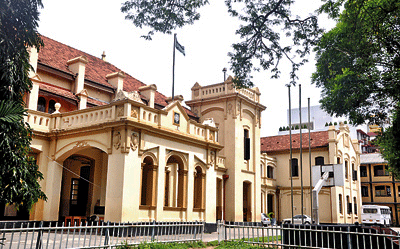 The Methodist Mission began in Ceylon in 1814, with the arrival of a team of missionaries sent by the British Conference. At the 150th anniversary in 1964, the Conference of the Methodist Church, Ceylon received its full autonomy. From the beginning, Education has had an important role. Schools were established in many places. Of the 177 Methodist schools in 1960, 175 schools were taken over by the Government that year. Only Wesley College, Colombo and Methodist College, Colombo remained under the ownership and administration of The Methodist Church. Wesley College Colombo, a leading, premier Christian boys’ school was founded on March 2, 1874 and named after John Wesley (1703–1791), the great Evangelist and Founder of the Methodist Church. Tradition has it that every year, the Double Blue Fraternity gather to celebrate the memory of the Founder of Wesley College the Rev. Daniel Henry Pereira – on Founder's Day, March 2 which is the death anniversary of Rev. John Wesley the great Evangelist.
The Methodist Mission began in Ceylon in 1814, with the arrival of a team of missionaries sent by the British Conference. At the 150th anniversary in 1964, the Conference of the Methodist Church, Ceylon received its full autonomy. From the beginning, Education has had an important role. Schools were established in many places. Of the 177 Methodist schools in 1960, 175 schools were taken over by the Government that year. Only Wesley College, Colombo and Methodist College, Colombo remained under the ownership and administration of The Methodist Church. Wesley College Colombo, a leading, premier Christian boys’ school was founded on March 2, 1874 and named after John Wesley (1703–1791), the great Evangelist and Founder of the Methodist Church. Tradition has it that every year, the Double Blue Fraternity gather to celebrate the memory of the Founder of Wesley College the Rev. Daniel Henry Pereira – on Founder's Day, March 2 which is the death anniversary of Rev. John Wesley the great Evangelist.
Psalm 127:1 says, “Unless the Lord builds the house, the builders labour in vain.” The strong conviction of the Founders of Wesley was, that in any activity they undertook for the College and its future - God’s blessings were needed, for whatever they intended to accomplish for this school.
Diversity
2021 marks the 147th anniversary of this historical founding of Wesley College. Even though this institution was envisaged to be distinctly a Christian boys’ school, Wesley College opened its doors in a magnanimous gesture to provide opportunities in education for thousands of Sri Lankan boys from diverse religious and ethnic backgrounds in the past 146 years, while upholding and maintaining its distinct Christian identity.
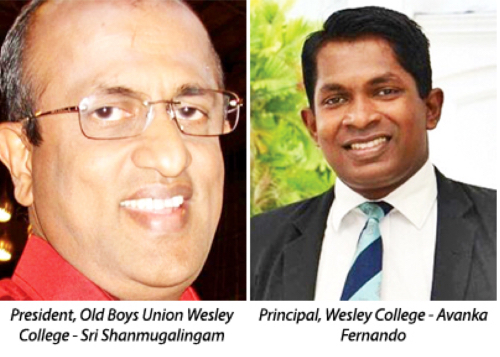
The Vision of Wesley is - To be the Premier Christian secondary educational institute and to provide men of stature and integrity to be leaders in the technologically advancing environment.
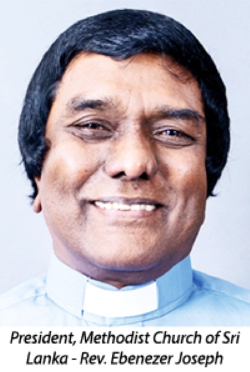 The Mission of Wesley is - To inculcate Christian values and provide opportunities to develop latent potential and skills to lead the nation.
Against this backdrop, it could be said that the Divine Providence of God has indeed bestowed an incredible Blessing upon this Institution Wesley College, as it prepares to celebrate 150 years since its founding on March 2, 1874 by Rev. Samuel Rowse Wilkin and Rev. Daniel Henry Pereira. This great Blessing is the current “Wesley Troika” comprising Three Wesleyites who carry on this noble Mission of the Founding Fathers by upholding the Christian Traditions and Spirit of John Wesley through the mandate entrusted to them. They are Rev. Ebenezer Joseph – President of the Methodist Church, Avanka Fernando - Principal Wesley College Colombo, and Sri Shanmugalingam - President Wesley College OBU Colombo.
Rev. Ebenezer Joseph is an old Boy of Wesley College, who heads the Methodist Church in Sri Lanka as its President for the second time and in which capacity, he is also the Manager of Wesley. He also previously served as the head of the Methodist church in Sri Lanka from 2005 to 2010. He was a hosteller at College and was a student during the tenure of Shelton Wirasinghe.
The Mission of Wesley is - To inculcate Christian values and provide opportunities to develop latent potential and skills to lead the nation.
Against this backdrop, it could be said that the Divine Providence of God has indeed bestowed an incredible Blessing upon this Institution Wesley College, as it prepares to celebrate 150 years since its founding on March 2, 1874 by Rev. Samuel Rowse Wilkin and Rev. Daniel Henry Pereira. This great Blessing is the current “Wesley Troika” comprising Three Wesleyites who carry on this noble Mission of the Founding Fathers by upholding the Christian Traditions and Spirit of John Wesley through the mandate entrusted to them. They are Rev. Ebenezer Joseph – President of the Methodist Church, Avanka Fernando - Principal Wesley College Colombo, and Sri Shanmugalingam - President Wesley College OBU Colombo.
Rev. Ebenezer Joseph is an old Boy of Wesley College, who heads the Methodist Church in Sri Lanka as its President for the second time and in which capacity, he is also the Manager of Wesley. He also previously served as the head of the Methodist church in Sri Lanka from 2005 to 2010. He was a hosteller at College and was a student during the tenure of Shelton Wirasinghe.
He was the General Secretary of the National Christian Council of Sri Lanka for 14 years, promoting Ecumenical relations among various Christian Denominations and promoting Inter- and Intra-Faith Dialogue. Rev. Ebenezer was conferred the title of “Samayanthara Darshana Sevitha Shasana Sobitha” in recognition of his contribution for National Unity and Religious Co-existence in Sri Lanka in 2006. He has specialised in Theology and Social Analysis and lectures in Theological
Institutions
The Principal of Wesley College Avanka Fernando is an old Boy and the youngest Principal to be appointed. He hails from a Methodist background nurtured by his father Rev. Noel Fernando who was also a former President of the Methodist Church of Sri Lanka. Fernando had his entire Education at Wesley College where he excelled in Academics and also represented the College Internationally in Badminton and Chess at the Asian Junior Chess Championship in 2003. Having completed his Bachelor’s Degree in Sciences from the Open University of Sri Lanka, he proceeded to complete his Master’s Degree from the University of Portsmouth in the UK specialising in Education, Leadership and Management. Fernando joined the Staff of Wesley as a Teacher in 2009. He rose to becoming the Sectional Head of Grade 10 and 11 and promoted as the Headmaster. He was later appointed as a Co- Vice Principal and was promoted to be the Vice Principal of the College. In 2017, he was appointed as the acting Principal of the College by Methodist Church of Sri Lanka and was confirmed as the Principal. Sri Shanmugalingam, the President of the Old Boys’ Union is a strong Methodist. He is a Director at York Arcade Holdings PLC and is a Professional Financer and is into Portfolio Management of a group of companies.
He is also in the field of Investment Finance Administration and Real Estate. The Committee of the Wesley College OBU Colombo, under the leadership of the Incumbent President Sri Shanmugalingam, strives to uphold the traditions and values of the great Christian Methodist Legacy - which they inherited from preceding generations and ensure that it is passed down to the future generations of Wesleyites. Due to the Covid-19 pandemic, many projects and activities of the OBU were curtailed.
However, the OBU under the Leadership of Sri Shanmugalingam is working in unison and close collaboration with the Principal Avanka Fernando and the President of the Methodist Church, Rev. Ebenezer Joseph, towards the projects planned for the 150 years Celebrations for the betterment of Academics and Sports at Wesley.
Old boys
The Old Boys’ Union having a history of over 130 years, has been involved in many projects be it in Academics, Sports, Extracurricular Activities. They have always upheld the traditions of the College, founded on great Methodist principles of simplicity and honesty by producing men of integrity for the country. Wesley College is an institute which brought together boys from many ethnic and religious backgrounds under the Double Blue Flag and produced many distinguished old boys during the ages in all spheres to serve the nation, “as men of grit and industry.” Among these have been national heroes, legislators, educationists, doctors, sportsmen, bankers, mercantile sector professionals, musicians, dancers and artists, the brave men of the Security Forces, all of whom brought honour and glory to Wesley and the Nation, and still remained unassuming – simplicity being the hallmark of the Wesleyan Methodist Spirit!
Among some of the most outstanding and distinguished alumni who have passed through the hallowed portals of Wesley College and have contributed to society and the world are: Sir Oliver Ernest Goonetilleke – the 1st Ceylonese Governor-General (1954–1962), Sir Don Baron Jayatilaka - President of the Colombo Y.M.B.A, Freedom fighter and Leader of the State Council, Sir Claude Corea - President of the UN Security Council, Chairman of the UN Interim Committee on International Commodity Arrangements of GATT, Representative to the United Nations, President of the Ceylon National Congress, Ceylonese Representative in the United Kingdom, First Ceylonese Ambassador to the United States, D. M. Rajapaksa - Known as the Lion of Ruhuna and a member of The State Council of Ceylon, Walisinghe Harischandra - Social Reformer, Historian and Author, Sir Mohamed Macan Markar - Member of the Legislative Council of Ceylon, Sir Gerard Wijeyekoon - the first President of the Senate of Ceylon and Member Legislative Council of Ceylon, Mahadevan Sathasivam - International Legendary Cricketer, P. De S. Kularatne – Principal of Ananda College, E.W. Adikaram - Social Activist and a Philosopher, Founded Multiple Schools - Anula Vidyalaya, Ananda Balika Maha Vidyalaya Kotte and Ananda Sastralaya Kotte, E. F. C. Ludowyk - Shakespearean Scholar, Author, Playwright and Critic, The First Professor of English University of Ceylon and the First Dean of Arts in the University in Peradeniya, M. H. Mohamed - Speaker of Sri Lanka Parliament and Mayor of Colombo and Deshamanya Chitrasena - internationally known for his work in establishing and popularising traditional Sri Lankan dance forms worldwide. These brilliant old boys are role models who have lived up to the ideals and values of the founders, bringing honour and glory to their Alma Mater through their professions. They will continue to inspire generations of Wesleyites in the years to come.
From the Daily Mirror (Sri Lanka) of the 28th of May 2022
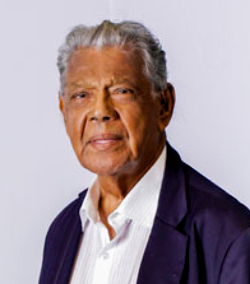 When the history of education of Sri Lanka comes to be surveyed there is no mistake of the vast far reaching contribution that an unostentatious school in Dematagoda, Colombo has made. It may not have the lofty buildings other schools have. Nevertheless Wesley’s contribution to education is significant.
When the history of education of Sri Lanka comes to be surveyed there is no mistake of the vast far reaching contribution that an unostentatious school in Dematagoda, Colombo has made. It may not have the lofty buildings other schools have. Nevertheless Wesley’s contribution to education is significant.
Wesley will celebrate her sesquicentennial Anniversary in 2024 at a period when several schools reached this landmark. Wesley’s sister school, Methodist College, reached her 150th year in 2016. Trinity in Kandy is in the midst of it. S.Thomas’ passed this mark in 2001. Richmond in Galle will be 150 in 2026. The essence of education is that it is responsible for producing valued citizens, dependable leaders and the formation of a society devoid of class, creed and social stigma. One has only to examine the illustrious pupils Wesley nurtured to understand the school’s egalitarian ethos.
Sir Oliver Goonetilleke , the first Sri Lankan Governor - General 1954- 62, Sir Don Baron Jayatilleke, a leading Buddhist, President of the YMBA, freedom fighter and a member of the State Council, Sir Claude Corea - President of the UN Security Council, Chairman of the UN Interim Committee on International Commodity Arrangements of GATT, Representative to the United Nations, President of the Ceylon National Congress, Ceylonese Representative in the United Kingdom, First Ceylonese Ambassador to the United States are great scholars.
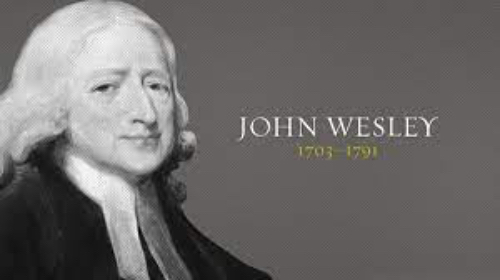
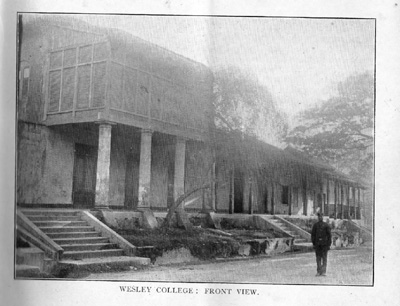
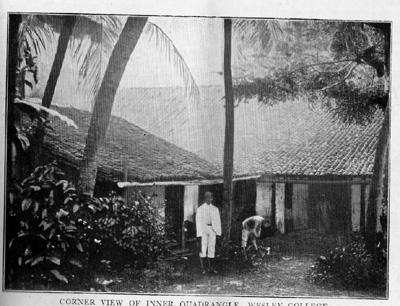
D. M. Rajapaksa - Known as the Lion of Ruhuna and a member of The State Council of Ceylon, Deshamanya Chitrasena - internationally known for his work in establishing and popularizing traditional Sri Lankan dance forms worldwide, Emeritus Professor J. E. Jayasuriya - First Regional Adviser on Population Education for Asia and the Pacific for UNESCO, Air Vice-Marshal Rohan Ameresekere - First Ceylonese Commander of the Royal Ceylon Air Force, Mr. P. De S. Kularatne – Principal of Ananda College, E.W. Adikaram - Social Activist and a Philosopher, Founded Multiple Schools - Anula Vidyalaya, Ananda Balika Maha Vidyalaya Kotte and Ananda Sastralaya Kotte, Walisinghe Harischandra - Social Reformer, Historian and Author, M. H. Mohamed - Speaker of Sri Lanka Parliament and Mayor of Colombo- are some of its products.
Wesley was founded in 1874 by the Methodist Ministers who arrived in Sri Lanka in 1814. At this time the Kandyan kingdom was still under the Kandyan kings. But the following year (1815) the entire island was under British rule. The British established a system of administration for the entire country and opened up the land through a road network while the establishment of coffee plantations was in progress.
The British, after the subjugation of the country, turned to institute an efficient system of administration. They were strongly influenced by the utilitarian philosophies of Bentham and Mill, which promoted democracy and individual liberty. In 1833, Colebrook and Cameron made several administrative, judicial and economic proposals which Dr G.C Mendis, himself a Methodist and a son of a Methodist Minister, said, marked a clear division between the past and the present in Sri Lanka.
It was only in 1874 that Wesley was established. But by then the Methodist Ministers had already established ten schools in Galle, Matara Jaffna and Batticaloa: all coastal towns. It was only in 1879 that they went to Kandy to establish Girls’ High School.
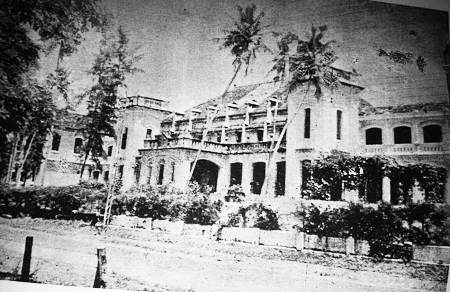
The founder of Methodism Rev John Wesley (1703-91) had Christian views about education and in addition to establishing the Methodist church he was deeply involved in education. It must be said that education in his time was not a highly developed concept in the minds of people. Universal education as a concept was alien. People were poor and children had to help in the households. There was a lot of child labour. Dickens writing half a century later, portrayed many of the evils of a child’s world. Pip in ‘Great Expectations’ had to help his uncaring sister, who beat him regularly, with chores. In Oliver Twist, Dickens shows the misery of untended children.
Education when it was found was a very unpleasant experience with flogging meted out for the simplest offence. In a book called John Wesley and learning (1997) Herbert Byrne says “the wealthy looked upon their children somewhat as a disease, and schools were used as boarding schools to get rid of the little nuisances that abounded” (Byrne 1983, p. 125).
John Wesley did not preach such a philosophy. To him, children were born with inherited depravity, (the Bible says we are all conceived in sin, Psalm 51) but he thought that children should be brought up wih love, and not be treated harshly. Wesley believed that education was the key to the riddance of the social evils in his day as suggested in Volume 3 of his works, “I preached on the education of children wherein we are extremely wanting. It is from such a background that the Methodist Ministers who came to Sri Lanka built their schools.
Wesley in its 150 years has served the country well. It was an inclusive school where all who wished to acquire an education were accommodated. Thus children from every ethnic and religious background mixed under the double blue flag. There was no attempt to proselytise. Every child was free to follow his own beliefs. Of course as a Methodist school, Wesley espoused Methodist practices.
The way of the future
In the approach to the sesquicentennial year, Wesley has to consider its role for the future in the context of the ever evolving life patterns. Quite obviously the exponential growth and impact of technology are ever growing forces. Changes in cultural patterns, social etiquette, and ethical behaviour will make the entire schools system re-evaluate its processes.
 In the face of new technology one major decision Wesley will have to make is whether Dematagoda will be its centre of learning? Online teaching facilities and examinations have already made brick and mortar and the physical presence redundant. Classes in the future need not be time bound. Students will learn at the time that is convenient to them. Also they will attend the same class as many times as they wish. They will take an exam when they feel they are ready. Thus brighter pupils will advance faster.
In the face of new technology one major decision Wesley will have to make is whether Dematagoda will be its centre of learning? Online teaching facilities and examinations have already made brick and mortar and the physical presence redundant. Classes in the future need not be time bound. Students will learn at the time that is convenient to them. Also they will attend the same class as many times as they wish. They will take an exam when they feel they are ready. Thus brighter pupils will advance faster.
When the future of education seems like this, how does Wesley respond? There is no value in fighting or resisting environmental change. Experience shows that every organisation which does not embrace change is doomed.
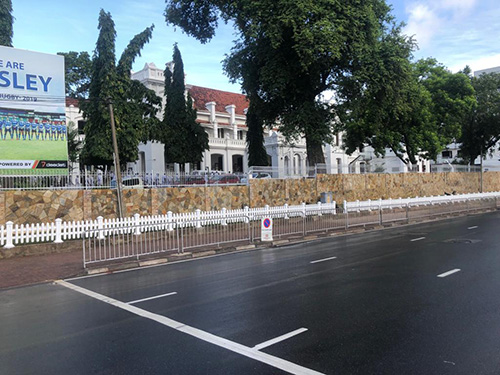
Consider the time we had paper road maps, or floppy disks or VCR players or cameras and photo labs. Classroom teaching as we now know it will lose its value during the next decade. Wesley must come to terms with this and seek to find alternatives that would be part of the revolutionary disruptions that are about to come upon us. Wesley has to migrate to virtual teaching. There is great potential and possibility in this. A child equipped with technological devices will have access to all the learning he wants. Wesley with her strong connections with the Methodist Church in the UK and the world, can establish online links internationally. Wesley boys can then have a wide choice in learning material in a subject, say Physics from anywhere in the world. Virtual demonstrations will be part of the programme. Candidates will be free from the bottleneck of the local GCE and the university system.
The church administers two schools; Wesley and Methodist. All plans can equally be adopted by both schools. Wesley came to be fashioned in the British public schools tradition. This tradition embraced the Roman poet Juvenal’s exhortation “orandun est ut sit mens sana in corpore sano” which being translated means “You should pray for a healthy mind in a healthy body.”Thus physical activity and competition came to be an integral part of the learning process. At Wesley all the major sports, rugby, cricket football, hockey athletics and swimming are available to the student. In fact Wesley excels at these sports. M Sathasivam was a world renowned cricketer. A Mylvaganam was known as “Hockey Wizard.”How would a physical activity continue in a virtual world? Boys must meet physically because they are a gregarious lot. More importantly their bodies need exercise. In a new curriculum, time will be so flexible that programmes will have a great ease of application. Since tuition is online and accessible at all times, Wesley will have to fix times for physical activity. Two time slots will be available,- morning from 6.30 to 10 am and evening from 4pm to 6.30.pm. Activities will have to be structured and the role of the coaches and sports physicians will be greatly enhanced. An advantage over the present system is that every student will have an opportunity to take part in sports and those who desire can go further for competitions.
Wesley in the next decade will be a vastly different place catering to the future demands of a brand new world. Her children will still pray and labour on under their double blue standard.
(The writer can be reached at upagc18@yahoo.com)
The arrival of the Malays in Ceylon is lost in the fog of time but it is well recognised they have been around in this island at least since the 13th century. Some historians believe the first settlers arrived in 200 BC. They arrived from the present day Indonesian archipelago, Malaysia and Singapore.
The Malays have made an enormous contribution to the life of the school since Wesley College was established in 1874. The best known since those early years is Dr. Al-Haj Mohamed Purvis Drahaman. He was a contemporary of Sir O.E Goonetilleke the first Ceylonese Governor General of Ceylon. They were both at Wesley during the Principalship of the great Rev Henry Highfield. Dr Drahaman was a member of parliament 1956-60 and was the leader of the All Ceylon Malay League. Dr Drahaman had his dispensary in Slave Island serving the people of a deprived area. He was awarded the OBE for his services to the Malay community.
 The Malays at Wesley brought an extra dimension to life at the school. As a generalisation they had an easy-going attitude to life. By their wit and humour they made a lively contribution to our schooldays. Even in adversity they had the wonderful ability to see the brighter side of life. Despite all that their indomitable spirit and energy stood out. When it came to sports, especially rugby, it brought out the best in them. The Malays played hard and fair with grit and determination. They were excellent in all sports and represented the school with pride.
The Malays at Wesley brought an extra dimension to life at the school. As a generalisation they had an easy-going attitude to life. By their wit and humour they made a lively contribution to our schooldays. Even in adversity they had the wonderful ability to see the brighter side of life. Despite all that their indomitable spirit and energy stood out. When it came to sports, especially rugby, it brought out the best in them. The Malays played hard and fair with grit and determination. They were excellent in all sports and represented the school with pride.
I was at Wesley College from 1950-62 and during those years there were many Malays at school. Some excelled in academia winning the prestigious Hill Medal at school. They entered the professions and served the country. Some became professors of renowned universities. Many of those who were fine sportsmen left school to join the Armed Forces and the Police. The Malays distinguished themselves as the martial race and were well known for their courage, loyalty and valour. They all have served our country well. During the insurgencies and the many armed conflicts, sadly, some laid down their lives for the country. We remember them with pride and thank them for the supreme sacrifice.
There were two Malays in my parallel class, Dalkin Samidon and Sheriff Fallil. They both were fine sportsmen. I remember “Mus” Musafer the fine wicket keeper in Brian Claessen’s cricket team and there was the fine all rounder BMN Juranpathy. Brian indeed spoke very highly of them. Nizar Sappideen was a fine boxer. I must bring to your attention our first 4 Malay Cricket Captains in Z.H Mantara 1894, M.L Warish 1898, M.K Cassim 1910 and M.H Ahamath 1926. They brought honour to the school and their community by their selection to lead the 1st XI cricket team.
During my medical student days and later in the profession two of my closest friends were Malays - Dr Razaque Ahamath (son of M.H Ahamath - Cricket captain 1926) and Dr Revelion Drahaman (Son of Dr M.P Drahaman) I remember them for their honesty, integrity and professional competence. They made a tremendous contribution to the profession, healthcare and the society at large.
 In a lighter vein, the Malays are famous for their wonderful cuisine and lavish hospitality. One of the great attributes of the Malay culture is their generosity. An invitations to Id ul Fitr or for their many festivals are not to be missed. We become part of their family to enjoy the food and join in the fun. Sumptuous dishes arrive one after the other until one’s stomach refuses to accept anymore. Despite all that, always remember to leave some room for the dessert. One that stand out is their “Watapalappan”, one of the great culinary wonders of both the ancient and modern world.
In a lighter vein, the Malays are famous for their wonderful cuisine and lavish hospitality. One of the great attributes of the Malay culture is their generosity. An invitations to Id ul Fitr or for their many festivals are not to be missed. We become part of their family to enjoy the food and join in the fun. Sumptuous dishes arrive one after the other until one’s stomach refuses to accept anymore. Despite all that, always remember to leave some room for the dessert. One that stand out is their “Watapalappan”, one of the great culinary wonders of both the ancient and modern world.
The Malay Cricket Club in Colombo is a long standing monument to Malays in Sri Lanka. In this their 150th Anniversary we must acknowledge the immense contribution made by the Malays of Sri Lanka to the country and its people. My short tribute merely scratches the surface of their contribution to the school.
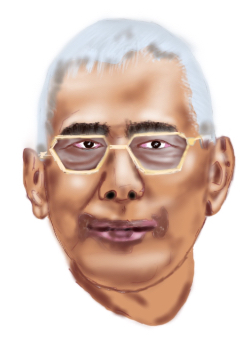 I have asked Bashur Musafer from Sydney, Australia, to kindly compile a list of the achievements of Wesleyites from the Malay community. Making a such a list of Malays at Wesley since 1874 is a huge task. I’m certain the Brotherhood of Wesleyites will forgive the errors and omissions. We thank Bashur Musafer for his time and effort. Wesleyites are most welcome to send me the achievements and names of Malays not in this list so that we can honour and pay homage to them all.
I have asked Bashur Musafer from Sydney, Australia, to kindly compile a list of the achievements of Wesleyites from the Malay community. Making a such a list of Malays at Wesley since 1874 is a huge task. I’m certain the Brotherhood of Wesleyites will forgive the errors and omissions. We thank Bashur Musafer for his time and effort. Wesleyites are most welcome to send me the achievements and names of Malays not in this list so that we can honour and pay homage to them all.
Excerpts from Alvin Sallay's book - Malays of Sri Lanka reviewed by Feizal
Now the life and times of the Malays, whose origins come from the island of Java in Indonesia, are chronicled in a delightful 224-page coffee table book titled ‘Malays of Sri Lanka’ written by Alvin Sallay, a veteran journalist who has worked in Sri Lanka and Hong Kong.
The last official census counted a little over 40,000 Malays, 0.2 per cent of Sri Lanka’s population and the book takes a close look at how the community meets often at the “Padang (playing field)”, the Malay Club at Slave Island.
Generally referred to as “Ja Minissu” meaning people from Java, Indonesia, some of the common last names of the Malays, according to the book, are Jayah, Weerabangsa, Sinhawangsa/Sinhawansa, Jayawangsa, Singalaxana, Bangsa Jayah, Wangsa, Lye, Samath, Cuttilan, Chunchie, Preena, Hannan, Sallay, Doole, Kitchilan, Kutinun, Kanchil, Sainon, Bongso, Bohoran, Kuppen and Lappen.
The book delves into history, going back in time to 1214 and how Kalinga Magha, a prince apparently from India (with some saying he was a Malay monarch), along with an army of 24,000 personnel including Malay soldiers captured Raja Rata and established his seat of power at Polonnaruwa.
In 1505, the Portuguese arrived, establishing commerce and taking over territory with the help of Malay soldiers brought from Malacca. Over a century later, in 1640, came the Dutch, driving away the Portuguese but bringing the ‘constant’ factor of Malays but this time from all over the Indonesian and Malay archipelagos.
In 1944, among the submissions made by the Soulbury Commission appointed to make recommendations for the granting of independence from the British to this island nation, was that there should be Malay representation in the legislature.
Little nuggets of information emerge from the book. On why Malays joined the forces and Police, retired Brigadier T.M. Bohoran says: “We are a martial race. And Malays are famous for their patriotism, unwavering loyalty and bravery.”
From the pages of this colourful book spring the achievements of Malay legal luminaries, scholars, soldiers, policemen, sports persons in many fields, hoteliers, journalists, teachers, musicians, beauty queens and film personalities among others.
Of course, the country’s best known Malay leader was visionary statesman T.B. Jayah. Interestingly, he had once taught History and the Classics at Ananda College and among his many students those who went on to embrace Marxism were well-known politicians Philip Gunawardena, Robert Gunawardena and N.M. Perera.
The Malays represented in the legislature at different times, meanwhile, have been M.D. Kitchilan, R. Zahiere Lye, Dr. T.B. Jayah, M.K. Saldin, Dr. M.P. Drahaman and M.T. Akbar. In recent times there has been no Malay representation in Parliament.
Pages on the ‘last post’ record the wartime losses of Malays serving in the armed forces (too numerous to mention) who died in battle against the Liberation Tigers of Tamil Eelam (LTTE).
In ‘Voices’, the author gives voice to the views and comments of a number of Malays, while the cover image which spreads to the back cover too portrays numerous faces young and old, with one stark blank as a symbolic representation of any Malay.
An integral part of Malay life has been sports and those who have stood tall in the field were Hishan Abdeen (captain of the national rugger team), and the Preena Brothers – Otto and Mervyn (who represented the national hockey side). Towns such as Matale have produced talented Malay hockey players like the four Mohottar brothers.
The reach of Malays has spread across almost all professions, with 82-year-old Tuan Mohammed Kamoordeen Samat easily getting the honour of the best known Malay journalist who often wrote under the pen name TMK.
Memories, meanwhile, would waft along with the notes of difficult to forget songs such as Rasa Sayang and Burung Kaka Tua, made famous on local radio in the 1960 and 1970s.
Ah, now food! Do you know that the word Achcharu comes from the Malay word Achar known as Malay pickle? How about delicacies like Babat (the lining of the stomach and intestines of cattle); Daging goreng (fried beef) or Daging Chooka (beef made with a vinegar and pepper preparation which my mother was famous for); and Pittu. Also the popular Nasi Goreng – mixed fried rice with a fried egg on top – satay and the ubiquitous dodol (a toffee-like sugar based sweetmeat stirred for hours in a cauldron which I relished especially when made by my mother), delightful food enjoyed by all communities.
The Malay language has strong links to the social fabric of this country where many Sinhala words have had their roots in Javanese. Here are some examples – Sarung (sarong), Rebana (Rabana), Sarekol (Sarungalaya), Botol (Botale), Kamar (Kamara), Bonchis (Bonchi), Banku (Bankuwa), Lemari (Almariah), Kerabu (Karabu), Kereta (Karattaya), Serdadu (Soldaduwa), Pena (Pena-Pen), Sabun (Saban), Saku (Sakuwa) and Rahasia (Rahasa).
However, senior academic Dr. Romola Rassool, former head of the English Teaching Unit, University of Kelaniya, worries about the fading of the Sri Lanka Malay language. “I preach but don’t practise,” she says. “I hardly speak Malay at home to my three kids, with English being the main form of communication.”
.................................................................
A List of Malays at Wesley compiled by Bashur Musafer
.................................................................
Winners of the Hill Medal
1917 Ahlip B C
1936 T.N.M. Mahmooth
1950 Musafer A F
1963 Sappideen T R
1978 Jahn Malik
1983 Jurangpathy B A R
.................................................................
Senior Prefects
1969 Ahlip Reyaz E
1936 Mahamooth T M N
1975 Musafer Iqbal
1994 Rasool Roshan
.................................................................
Rugby Captains
1960 T M S Saldin
1965 Sharir Musafer
1972 Tariq Bongso
1974 Iqbal Musafer
1976 D Rouney Omar
1980 G Oumar
1981 G Oumar
1983 Ishan Ali
1988 S Jaldin
1993 Mohamed Ali
1992 Kishan Musafer
1994 Niroshe Rahim
1995 Suhard Amit & A Weerabangsa
1999 S Johari
2004 Rukshan Omar
2005 Omar Sariffodeen
2008 Zalique Jayah
2009 Azward Aniff
2010 Azmil Omar
2015 Omar Kuthubdeen
2016 Jayan Sabar
2018 Zayan Sabar
2019 Murshid Doray
.................................................................
Cricket Captains
1894 Mantara Z H
1898 Warish M L
1910 Cassim M K
1926 Ahamath M H C
1933 Musafer A R
1934 Musafer A R
1944 Cassim T I
1945 Cassim T I
1967 Swangsa M T
1993 Rasool Roshan
.................................................................
Students who were part of our lives
Adahan Eshan
Adjie Rizano
Adjie T F 1935
Ahamath M H 1926
Ahamath Mashood 1956
Ahamath Iqbal 1978 Rugby vice Capt
Ahlip B C Professor 1917 Hill Medallist
Ahlip R E 1969 Senior Prefect and Rugby Team
Ahlip Shiraz 1967 Rugby Team
Allang M Ruslan 1984 -1987
Ali Ishan 1983 Rugby Capt
Ali Rohan 1983 Rugby Team
Alii Emir 1986-1987
Ali Roshan 1967-1979
Akbar M Enver 1960- 1970s
Akbar T 1960- 1970s
Amidon Riza 1950-1963
Amit Suhard 1992 Rugby Team
Amit M Shamil
Annon Frankie 1970-1980’s Australia
Arif M Z 1960- 1970s Boxing Photo and Soccer Teams
Azeez 1960- 1970s Rugby Team
Azoor Jeno 1960’s Australia
Azoor Brian
Azoor Riya
Azoor Riza
Azoor D B A
Bangsajaya Shajahan
Bangsajaya Aswan
Bongso Faisal 1978 Rugby Team
Bongso Tariq 1970-1980’s Rugby Team
Cambal T 1960- 1970s
Careem Murad 1987-1992
Cassim M K 1910 Cricket Captain
Cassim M Z 1940 Cricket Team
Cassim T I 1944 &1945 Cricket Captain
Dole T A 1938 Cricket Team
Dole Anver Capt 1940
Dole T Yehiya 1936 Cricket Team
Dole Edrich 1950 -1960’s Australia
Dole Bunty 1960’s New Zealand
Dole Sumitrano 1960’s
Dole T F S
Dole Batun R 1935’S
Dole Hashim 1960’s New Zealand
Dole Rohan 1960’s
Doole B T C Clancy 1950- 1963
Doray Zubair 1978 Rugby Team
Doray Farcy 1978 Rugby Team
Doray Murshid 2019 Rugby Capt
Drahaman Dr M P 1930’S
Fallil Sherrif 1950-62 Tennis and Rugby Teams
Fallil T K Amit 1950-60
Girsy 1960- 1970s
Hamidon Farouk 1950 -1960’s
Hamidon Ishak 1960- 1970s
Hamidon Ismial 1960- 1970s
Hamidon Iqbal
Hamidon M A S
Jahn Malik 1970-1980’s Hill Medalist
Jahn Mansur 1970-1980’s
Jainudeen M 1960'S
Jayah Imtiaz 1978 Rugby Team
Jaldin 1969 Hockey Team
Jurangpathy BM 1950'S Cricket Team
Jurangpathy B N 1950'S Cricket Team
Jurangpathy B Z 1960- 1970s
Jurangpathy B A R 1983 Hill Medalist
Kitchilan Miki 1960'S
Kitchilan J M M
Lye Krishan 1970-1980’s
Lye Mervin 1973 Prefect
Mahroof Ivor 1970’S President OBU
Mahamooth T M N 1936 Senior Prefect and Hockey Team
Mahamooth Rienze 1970’S
Mahmooth T 1970’S
Mantara Z H 1894 Cricket Captain
Mantara Zeshan 1970’S
Musafer Z D 1930'S
Musafer A F 1950'S Hill Medal winner
Musafer Sharir 1960's Rugby Team
Musafer S (Bomba ) 1950'S Cricket Team
Musafer Hafiz 1960’s Hockey Team
Musafer Bashurdeen 1930's
Musafer Bashur 1950 -1960’s Soccer and Rugby Teams
Musafer Ghazi 1960- 1970s Hockey Team
Musafer Emir 1960- 1970s Rugby Team
Musafer Arshard 1980's Rugby Team
Musafer Iqbal 1960- 1970s Senior Prefect Rugby Capt.
Musafer A R 1933&1934 Cricket Capt
Musafer Akbar 1960- 1970s Cricket Team
Musafer Dhanesh 1980’s
Musafer A W (Tony ) 1950-1963 Soccer team
Musafer Omar W (Sandy)1960- 1970s Hockey Team
Musafer Nizam W 1960- 1970s
Musafer Rohan 1990 Rugby Team
Musafer Kishan 1990 Rugby Capt. and Hockey
Musafer Rumi W 1960- 1970s
Musafer Nazir W 1960- 1970s
Musafer Dr 1990s-2000
Musafer Naleer 1960- 1970s Soccer Team
Mustafa Sherard 1978 Rugby and Cricket Team
Muthalliph TMW 1950 -1960’s Soccer Team
Muthaliph Bonny 1960- 1970s Soccer Team
Muthaliph Rashid
Nallawangsa Mahil
Nasurdeen Vajirano
Oumar Bacchi 1977 Rugby Capt 1981
Oumar Ronnie 1976 Rugby Capt 1976
Ousmand Riaz 1980-1983 Rugby Team
Ousman Rohan
Ousman Khaliq 2000- 2010
Ousmand Azad
Pallie Dr M R 1960- 1970s Hockey Team
Rahim Feroze
Rajuddin ?? 1960- 1970s
Rasool Roshan 1993 Cricket Capt. Hockey Team
Sallay T 2000- 2010 Australia
Saldin T S (Bunny ) 1961 Rugby Capt. Hockey Team
Saldin Eshan 1950 -1960’s
Saldin Hamlin ? 1930'S
Samahahon T Raj 1960- 1970s
Samahon B 1960- 1970s
Samahon M K
Samath Saybhan 1950 -1960’s Boxing
Samidon Dalkin 1950 -1960’s Soccer Captain, Hockey Team
Samidon Binny 1950 -1960’s Soccer and Boxing
Samsoodeen Selwyn 1940-1950’s Australia
Sappideen Anver 1950 -1960’s
Sappideen Nizar 1950 -1960’s Boxing and Soccer Team
Sappideen T Razeen 1950 -1960’s Hill Medalist, Table Tennis
Sappideen Seenar 1950 -1960’s Soccer Team
Sappideen Binhur 1960- 1970s Rugby Team
Sappideen Richie 1980-1990’s
Sinnen Cuckoo 1950 -1960’s Canada
Sinnen Tyronne 1960- 1970s
Sinnen Ijoy 1960- 1970s
Sinnen Ishan ? 1960- 1970s
Suhood Samil 1940-1950’s Australia
Swangsa M T 1967 Cricket Captain
Thajudeen Reza 1960- 1970s
Uduman Iqbal 1978
Uduwan Rizwan
Warish M L 1898 Cricket Captain
Weerabangsa M M A
Links to further reading
.................................................................
From Rev. W. P Ebenezer Joseph
Dear Members of the Governing Board,
Momentous Occasion for Wesley College
I am pleased to inform that Wesley College was able to execute an agreement to lease the Campbell park for 30 years with Colombo Municipal Council (CMC), recently.
The journey to either acquire or obtain a long lease of the Campbell Park commenced sometime back under the leadership of Mr Maithri Withanage as the President of Welfare Society and the President of Old Boys Union (OBU) Sri Shanmugalingam. Many old boys including Farman Cassim supported this initiative at their best levels. However due to various obstacles the project could not completed. Hence, Governing Board recently requested College OBU Governing Board member Capt Navin De Silva to assist in obtaining a long-term lease of the grounds from CMC.
I am now glad to inform that Capt. Navin de Silva, ably assisted by Mr. Renganathan , was able to continuously liaise with all concerned officials and meticulously followed up and arranged to complete the signing of the 30 years Lease on last Monday.
The agreement was signed by the Principal Mr. Avanka Fernando and myself witnessed by Capt. Navin de Silva in the presence of Colombo Mayoress Her Worship Rosy Senanayake and the CMC officials.
On behalf of the Governing Board, I wish to convey my sincere appreciation to the Colombo Mayoress, her able staff team as well as the Western Province Governor Air Marshall Roshan Gunathilake and his office team for extending their best of assistance.
We were also privileged and happy to hear from Her Worship that she decided to attend the event in Double blue saree mainly to exhibit her keenness to support this initiative in spite of many challenges that she had to undergo in executing the agreement.
The College is now expected to negotiate a reduction of the rentals and to make use of the grounds to the best of abilities.
Season's greetings and God's blessings,
ORA ET LABORA
Yours Sincerely,
Rev. W. P Ebenezer Joseph
.................................................................
From Dr Nihal D Amerasekera
Cambell Park is the lifeblood of the school and a vital componenent of every Wesleyites schooldays. I cannot imagine Wesley without the Park. On behalf of the Brotherhood of Wesleyites all around the World I like to thank the Mayor of the Colombo Municipal Council Mrs. Rosy Senanayake and everyone else who helped to make this possible.
It would be good to remind ourselves that Campbell Park has been leased to us by the Colombo Municipality since the Highfield era. The lease ran out just a few years ago. Many years ago the pavilion was purchased outright by the school, from the Tamil Union Cricket & Athletic Club, and belongs to Wesley College.(Courtesy of the Double Blue Magazine 1959)
I still dream of the day when Campbell Park will belong to Wesley College outright without the need for a lease. Although it seems an impossible dream at present I hope the Methodist Synod, the Principal and and all those who care for the welfare of the school will cajole, harrass, persuade and manoeuvre the powers that be to acquire the Park for our own. On behalf of all Wesleyites past and present I wish them good luck in their efforts.
.................................................................
In the Photo L to R: Mr Renganathan, Capt Navin De Silva, Rev Ebenezer Joseph, The Mayor of Colombo- Rosy Senanayake JP, UM , The Principal Avanka Fernando, Mr Maithri
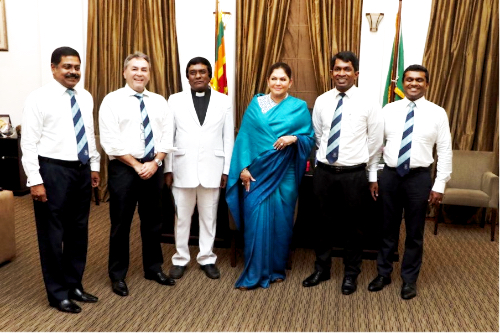
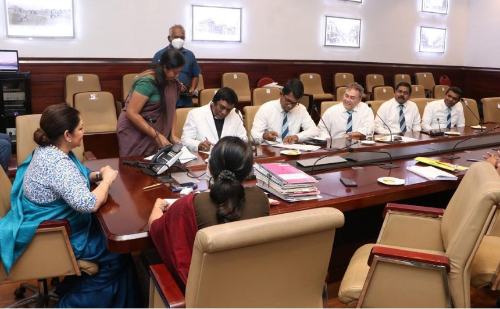
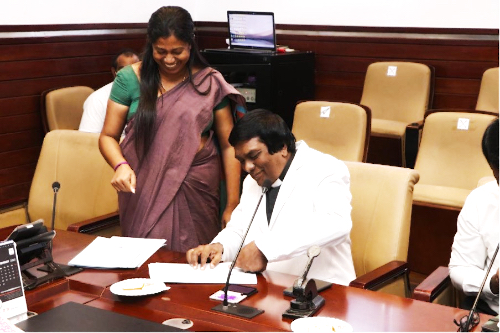

.................................................................
Links to further reading
We are pleased to inform you all that the Annual General Meeting (AGM) of the Wesley College (Colombo) Old Boys Association (NSW) Inc. was successfully held at 3:00 pm yesterday i.e Saturday, 14 January 2023 at the Wenty Leagues Club, Wentworthville.
Photo: The Old Boys present at the AGM

Front Row L to R:
Back Row L to R:
..........................................................................
The following members were elected to the Office of the WCC OBA NSW Inc. for the year 2023:
Office Bearers:
President: Kugan Thiru class of ‘1994)
Vice President: Derrick Ginger (class of ‘1972)
Secretary/Public Officer: Shreedharen (Shree) Dharmalingam(class of ‘1987)
Treasurer: Ravi Nadarajah (class of ‘1972)
..........................................................................
Committee Members:
1. Roshan Deivendra (class of ‘1990)
2. Zaki Ousmand (class of ‘2007)
3. Janaka Rodrigo (class of ‘1997)
4. Mohan David (class ‘1971)
5. Zaeem Al Careem(class of ‘2018)
..........................................................................
Patrons:
1. Keith Grenier
2. Nizar Sappideen
3. John Buultjens
..........................................................................
Honorary Auditor:
Reggie Abel
Shreedharen (Shree) Dharmalingam
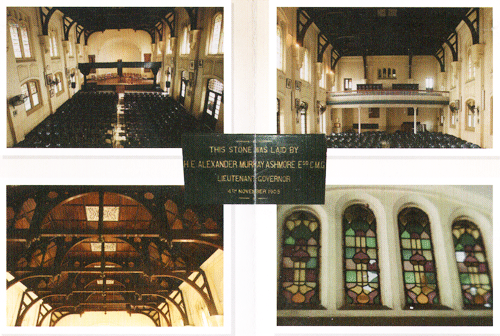
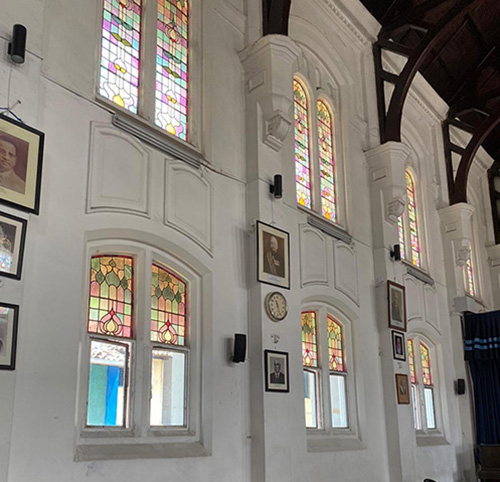
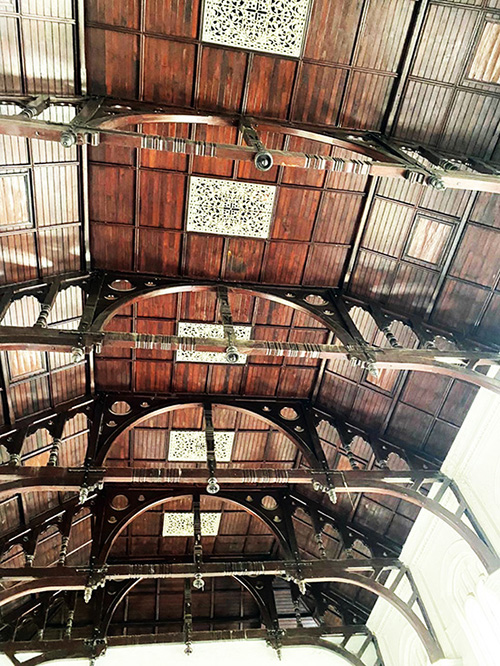
No doubt we have one of the finest assembly halls compared to many other schools. The tall wooden ceiling, stained glass windows, semicircular stage and the balcony gave it the elegance and the character it deserved. There were several creaky, wobbly, aging fans painted dark brown that hung from the ceiling. I often wondered what mayhem it would cause if one came off its moorings. Black and white portraits of past principals and teachers adorned the walls on both sides. I distinctly remember a bronze plaque at the back of the hall dedicated to an old boy who died in action in Syria. There was a panel full of names of past Principals hanging on the wall to one side of the stage. On the other side was a board of Hill Medal winners. The old piano stood in the front on the left side.
The Great Hall at Wesley College is a perfect tribute to Rev. Henry Highfield. The Hall has stood there since the very inception of the school at Karlsruhe Gardens. It has now begun to show its age. The restoration and regular maintenance of the Great Hall will be part of our recovery as a school. A project for all Wesleyites to unify and rebuild our hopes. This endeavour will give us courage to enhance the spirit of Wesley in its many struggle and hardships.
The Great Hall during the Carol Service 2014

The Hall has survived two World Wars. There are signs of damage due to the elements and the ravages of time. Plans to restore the exterior and the interior of the Great Hall are in place. The iconic beams of the Hall are made of the finest Burma teak and is the only one of its kind in Sri Lanka. The majestic English Victorian stained glass windows are of the finest quality.
The school does not receive any government funding to maintain its buildings and we do not charge an entry fee for visitors. This however, does mean we need to raise money to maintain the Hall. To maintain the Great Hall in pristine condition and keep it in good repair is costly. If anyone wishes to help please contact the Principal. We are immensely grateful to all those who give so generously. It is still being extensively used and appreciated. The Magnificent Great Hall will always remain part of our cherished memories when we leave school and proceed on our onward journey in life.
I distinctly remember my last day at school. The Biology lab was my domain. I went to assembly virtually through the back door and sat in the balcony. After being in this protected environment I was at times fearful of feeling lost in the big world outside. The world was spinning around me. There was a cricket match that day and the boys sang the school song. I couldn’t hold back my tears but was too shy to show it. I stayed behind for the short Christian Service. Mr.L.A.Fernando read a passage from the Bible and we all sang
Pilgrim through this barren land
I am weak but thou art mighty
Help me with Thy powerful hand."
It is my favourite Hymn and I thought we lifted the roof as we sang. I have now a recording of this Hymn sung by the Kings College Choir Cambridge to remind me of my last day at school. I remember walking back to my usual haunt the Bio lab where the boys had gathered on this final day. Wesley has been my whole life so far. It was strange and desperately sad to leave the life I knew and loved. But there was a whole new world before me. Saying goodbye to my friends must have been the hardest thing I’ve had to do. We vowed to meet up again in 20 years, in the Bio lab. Those Vows were never kept. They just got lost in the mist of time.
Links to further reading
From Shelton Peiris
We have evidence of the continued use of this crest during Rev. Albert Hutchinson's time (1925-1928) when he commissioned the Head Baas - Cornelius - to construct the time hallowed stately chair, used by Wesley's Principals, and on the back head Is carved the College crest This chair still adorns the stage of the hallowed College hall.
From Dr Shanti McLelland
The architecturally and aesthetically magnificent College hall elegantly sculptured in Burma teak with intricate carvings Anglo-Saxon era and windows splashed with stained glass were constructed as a monumental Church. The stately arm chair majestically used by the Principal during morning assembly has been intricately carved and expertly hand crafted in teak, and beautifully woven in finely trimmed rattan. The prize procession was presented during the time of Rev. Albert Hutchinson (1925-1928) was principal.

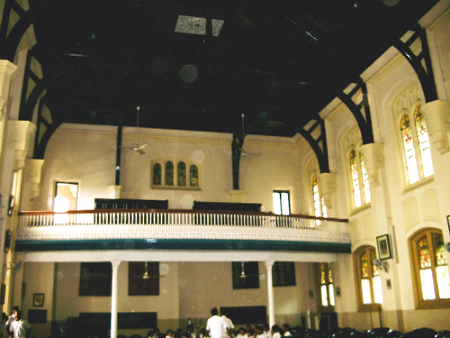


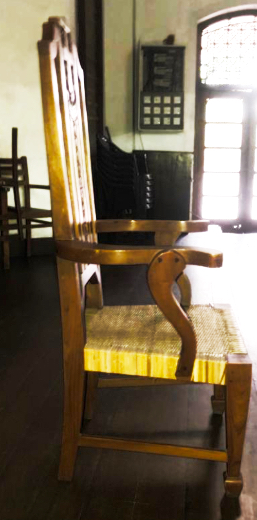
....................................................................
The Original Podium used by Rev Henry Highfield
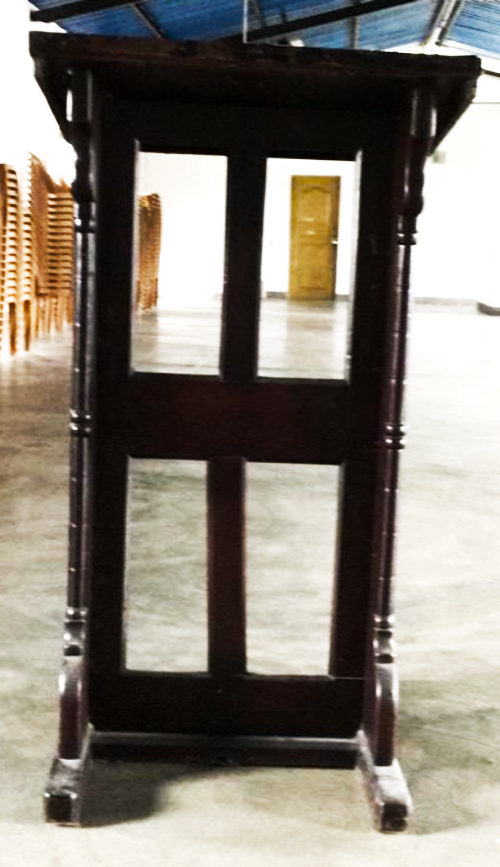
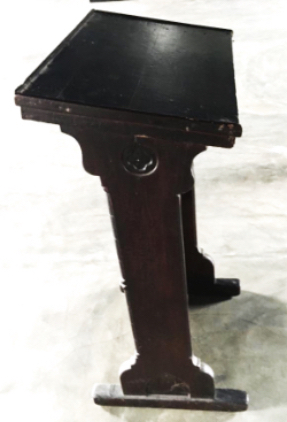
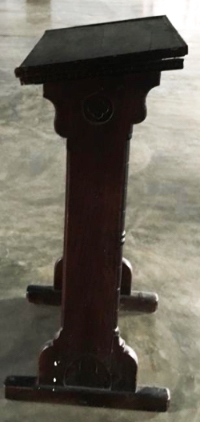
....................................................................
The New Podium that is presently used
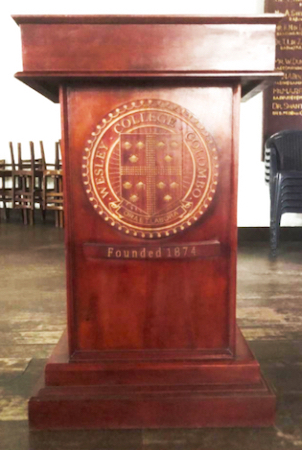
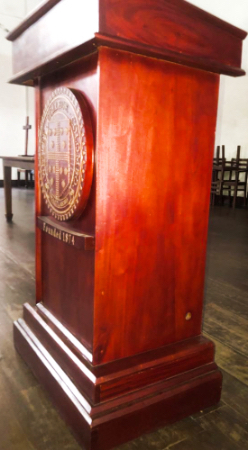
....................................................................
By Dr Nihal D Amerasekera
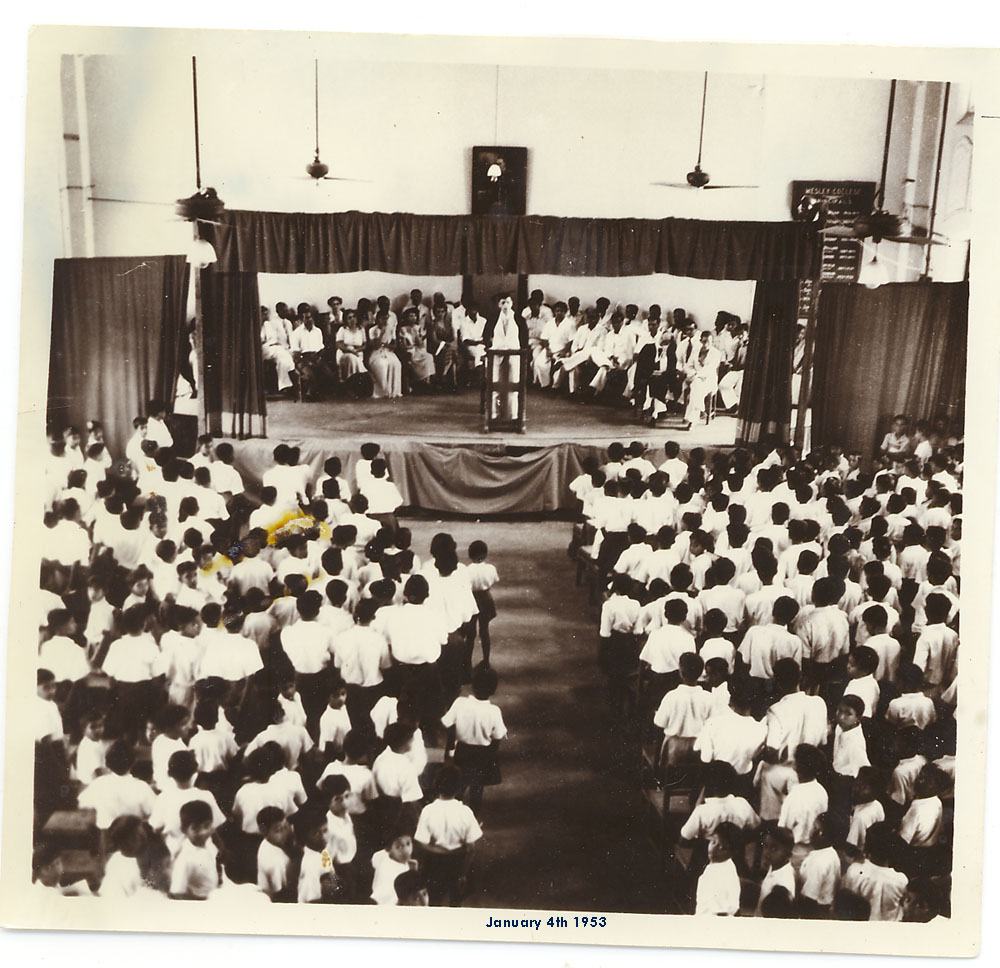
One of the lasting memories of my schooldays are the assemblies that I have attended in the Great Hall. The school hall was built during the reign of Rev Henry Highfield circa 1905. No doubt we have one of the best assembly halls in the schools. The tall wooden ceiling, stained glass windows, semicircular stage and the balcony gave it the character it deserved. There were several creaky, wobbly, aging fans painted dark brown that hung from the ceiling. I often wondered what mayhem it would cause if one came off its moorings. Black and white portraits of past principals and teachers adorned the walls on both sides. I distinctly remember a bronze plaque at the back of the hall dedicated to an old boy who died in action in Syria. There was a panel full of names of past Principals hanging on the wall to one side of the stage opposite which stood the old piano.
 With Its vast open space, high ceilings, stained glass windows, the balcony and the stage the Great Hall has acquired an iconic and legendary status in the hearts and minds of every Wesleyite. I still recall vaguely my very first assembly as an 8 year old in 1950 when the Principal Mr C.J Oorloff sat in the Throne, and also my final assembly in 1962 when Mr P.H Nonis sat on the Throne. On my last day at school I sat in the balcony full of sadness as I realised I will never be a part of this scene ever again. My eyes welled up and perhaps I shed a tear too. Saying goodbye to Wesley which was my home for over a decade was one of the hardest things I have had to do. I still think about it. Late at night and at quiet moments in the day, those memories makes me proud of being part of Wesley. Sometimes this deep sense of longing can be overwhelming. The friends I made have remained friends for life even though I never saw many of them again. We lived our lives in the Wesley Village in Karlsruhe Gardens. It is impossible to recreate that life again. The Old Boys Unions are just a poor substitute but an essential one to keep in touch. But I shall forever cherish my time at Wesley.
With Its vast open space, high ceilings, stained glass windows, the balcony and the stage the Great Hall has acquired an iconic and legendary status in the hearts and minds of every Wesleyite. I still recall vaguely my very first assembly as an 8 year old in 1950 when the Principal Mr C.J Oorloff sat in the Throne, and also my final assembly in 1962 when Mr P.H Nonis sat on the Throne. On my last day at school I sat in the balcony full of sadness as I realised I will never be a part of this scene ever again. My eyes welled up and perhaps I shed a tear too. Saying goodbye to Wesley which was my home for over a decade was one of the hardest things I have had to do. I still think about it. Late at night and at quiet moments in the day, those memories makes me proud of being part of Wesley. Sometimes this deep sense of longing can be overwhelming. The friends I made have remained friends for life even though I never saw many of them again. We lived our lives in the Wesley Village in Karlsruhe Gardens. It is impossible to recreate that life again. The Old Boys Unions are just a poor substitute but an essential one to keep in touch. But I shall forever cherish my time at Wesley.
At assembly as we will all remember, the Principal sat in the front of the stage with all the teachers sat in a semicircle behind the Principal. The Principal sat in an ornate chair with a high back behind a tall podium. He was like a King seated on his Throne. The students were seated while the Prefects stood to attention all around the hall guarding the doors and the windows on either side.
During my years at school for the morning assembly, Mr.CJ Oorloff made a dramatic entry with all his black regalia and head gear. General Assembly in the College Hall was pure theatre. First the boys entered the hall then the teachers followed by CJ Oorloff. Good Morning boys he said and we chanted "Good Morning Sir" First CJO read out the school news of matches etc. Then the rebukes followed by the punishments in the way of Saturday detention. The non-Christians were then adjourned followed by a short Christian Service.
The prefects and sub- prefects stood to attention round the hall to stop the tittle-tattle and whispers. On Mondays and Fridays the whole school assembled in the Great Hall. On the other mornings only the Christians gathered for prayers.
Derrick Wright and subsequently Nimalsiri Rosa and Ranjit Rosa were in charge of the public address system during assembly. Apart from the occasional hiss and crackle they maintained it well. There were times when it all went dead.
In front of the Principal’s Throne was the beautifully carved tall wooden podium. The seat is steeped in history as it is, perhaps, the same used by Rev Henry Highfield and all the subsequent Principals. The podium we use now is not the original. Photos of the original is shown above. There is a photo above of the Great Hall during Principal C.J Oorloff's time in 1953. What is seen in that image is the original. The original podium as a momento of the Great Rev Henry Highfield who collected the money to build and furnish this magnificent school. It is now preserved in good repair and kept in the Wesley College Primary School in Havelock Town.
It is interesting to note that the use of podiums go back 500 years. Podiums are important for religious dignitaries, politicians and teachers. A podium helps with public speaking because it allows him to have his reading material before him. This also gives the speaker the opportunity to see the audience and their expressions and responses to what was said.
I sincerely hope and wish we maintain our heritage. Our vintage furniture is a part of our cherished history. These help us to remember and pay homage to Rev Henry Highfield and all those who toiled to build our school.
From F.J Senaratne when he was a student. He later taught at Wesley
I can recall vividly all the details of my first day at Wesley. The Assembly was taken by the Rev. H. Highfield, The boys filed into the hall in an orderly manner and for a few minutes the hall was buzzing with the conversation of the boys, but when Mr. Highfield made his appearance there was perfect silence. The Principal then announced that stirring hymn."O, Worship the King, O Glorious above." the hearty singing, led by a well trained choir made a deep impression on me.
Memories of Rev D.K Wilson
The assembly each morning still lingers in my mind. Men like Highfield and Horlar, C. P. Dias, Mack and Honter read short passages from the scriptures and commented on than briefly. The boys sang the hymns lustily to the music played by senior students like Lyn Ludowyke and Victor Abraham. Right from the beginning of school life, the daily prayers reminded us that it was the vital centre of moral strength which was able to maintain life and to perform its mission without imposing standardized beliefs on society. Socrates was not able to define justice without making some assumptions about the gods, and Highfield thought it proper to train the citizens stronger than political or social expediency for rejecting injustice.
Memories of Mr Kenneth de Lanerolle - speaking of the Cartman era
In the mornings the whole school turned up for prayers - the days of linguistic and religious divisions had not yet come - and I remember that the pianist was none other than Mahroof Ismail. When later it was the practice for the non-Christians to be dismissed after general Assembly in order that, conforming to regulations, the Christians alone could participate in Prayers.
From Nigel Christoffelsz - visit in 2011
The assembly on Thursday the 6th of September brought back so many memories of my school days but from a different prospective. We had swapped places with the students, we were the guests. The way we were treated left me with a sense of pride in my school. To see the difference from our days, when the only boys who had blazers were the cricket team, to see the prefects perform their duties in a well drilled manner dressed in their blazers would make any old boy proud.
The assembly was conducted in the manner we were used to, with a few exceptions from our time. The entertainment was great, it is good to see that the College has expanded the cultural curriculum to include bands, choirs, traditional culture, while we only had a choir, the two different bands at breakfast was a delight to see, as there was pride in their performance.
The presentation to all the overseas attendees was a pleasant but welcomed surprise, always wanted to be presented anything at assembly. And the finale of the College song sung in gusto by all present, followed by Zum Zum Zacky from the boys at the back made the hairs on the back of ones neck stand up in pride.
Links to further reading

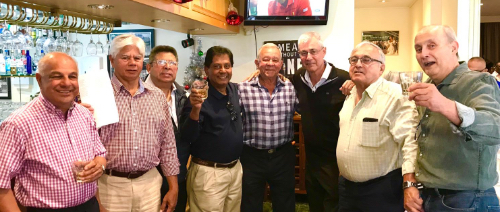
Photos and script was kindly sent to me by Lalith Wijesinghe

A few senior past Wesleyites a majority in their eighties met over a Hopper dinner at the Capri club on Wednesday 22 March 2023. This was a wonderful and lively meeting of Wesleyites of the 1950's and 60's, what we now consider as the golden era at Wesley. We all had much in common to discuss.
It was the first occasion that Dr Sam De Zoysa who is resident in England was able to join this group, and he was welcomed with warmth. As usual all participants had stories to share from their schooldays with some medical advise added, from the specialist doctors present. The food and the music provided by the live band was enjoyed by all.

I was a boarder at Wesley College for six years. There is a certain intensity to the memories of boarding life. There was a small room sandwiched between the busy and noisy dormitories. This was our chapel. It had a quiet and reflective atmosphere and was a place of shelter and sanctuary from the ever-present storms of life in the boarding. What touched us all was its sheer simplicity. The walls were bare. There were no furniture but for a lectern placed in a corner. We sat on the floor for a short service every evening. The floor was clean, polished and shiny. The sermon was conducted by the staff. Mr L.A Fernando was a charismatic teacher and a towering presence on the teaching scene at Wesley from the 1950s and well into the 60's. One evening when we were all gathered in the Chapel he brought with him a parcel. He carefully unwrapped a painting and said “I’m going to tell you a story”. He was famous for his stories and there was a buzz of excitement in the room. Mr Fernando unfolded the legend behind the famous artwork, “Praying Hands”, which was to adorn the Chapel wall.
It was a painting by Albrecht Dürer (1471–1528). He was a supremely gifted and versatile artist. Albrecht lived in Nuremberg in Southern Germany with his parents. He began work as an apprentice to his father who was a goldsmith. His remarkable talent was recognised at the age of 13 when he did a self-portrait. His father arranged for him to be trained by a famous artist, Michael Wohlgemuth.
The painting of the Praying Hands done in 1508 is presently located and displayed at the Albertina Museum in Vienna, Austria. The Praying Hands is a pen and ink drawing of a man in prayer. The folded sleeves are shown but not the body. This is recognised as the one of the most famous drawings of all-time. There is great controversy about the history of the ‘Praying Hands’. Much research has been done in the past century about this most remarkable painting. There has been a long-held view that the hands were a part of another painting by Dürer called the ‘Heller Altarpiece’. Dürer was famous for his self-portraits and he has done them at several stages of his life. Hence, Christof Metzger's well researched opinion is that Dürer has drawn his own hands. The true history and the inspiration for this artwork, however, is lost in the fog of time.
Bringing the hands together to pray is believed to have originated in Hinduism many thousand years ago. This gesture was taken and then used by many other religions and cultures. Bringing the hands together in this way can mean respect, obedience or even submission.
Fact or fiction, there is a deeper story attached to this famous painting, one of familial love, supreme sacrifice and sincere homage, a narrative which has survived the test of time. Albrecht was one of 18 children in the family. His father had to work 18 hours a day to feed the children. Two of his older children Albrecht and Albert wanted to become painters. Their father could only afford to send one to the Academy at Nuremburg to study art. After much discussion, the story goes, that they tossed a coin. The agreement was for one to go to the academy while the other laboured in the coal mines to pay for art school. After completing the training, he can sell his art and pay for the other brother to attend the Academy. Albrecht won the ‘toss’ and went to the Academy first. Albert did the dangerous work in the mines for 4 years. After Albrecht’s training his work was greatly admired and he became well known. His commissioned work earned him large sums of money. When the young artist returned to the village after 4 years, in all his glory, his father held a festive dinner. After a long and memorable meal Albrecht rose to drink a toast to his brother for the years of sacrifice. All heads turned towards Albert who was in tears with his head bowed. Albrecht said “my dearest brother now it is your turn to go to the academy”. Albert sobbed and said “No, I cannot go to the academy now. See what working in the mine has done to my hands. It is far too late for me. Every bone in my hands have broken at least once and I now suffer from arthritis. I cannot even raise a glass for a toast with my right hand”. Albrecht was deeply saddened by this news. As a tribute to Albert’s supreme sacrifice, Albrecht later drew his brother’s hands in prayer simply calling the painting “Hands”. The painting was so pleasingly intimate. The world who saw this loving tribute preferred to rename it “Praying Hands”. Through its religious connotations and artistic beauty, It is now among the most famous drawings of all time and one of the most heavily reproduced.
As an artist of repute Albrecht Dürer travelled widely to the Netherlands, Switzerland and Italy to learn further from the Great Masters. Dürer was greatly influenced by Italian art. He soon became a leading artist of the Renaissance period. Through his talent, intellect and expertise Albrecht became friends with influential, rich and famous people including the Roman Emperor Maximilian 1. Dürer remains as one of the finest artists Europe has produced. His paintings adorn museums all around the world.
Physicians who have studied the painting suggest there are signs of disease and human suffering in the hands depicted. The bent little finger of the right hand may be due to Dupuytren’s contracture. There is muscle wasting perhaps due to diabetic neuropathy. Due to the deformity of the fingers and the left thumb some have suggested rheumatoid arthritis. All this is pure conjecture. The details shown in this drawing is said to be the result of Dürer’s exposure to the Renaissance culture of Italian art.
This story and the painting have been a special favourite of Christians for several centuries. The painting hangs in homes, churches and schools as a reminder of our need to pray.
It is often hard to fathom from the external appearance what burdens people carry all through their lives. Once we know the true stories of their lives we learn to appreciate and respect their perseverance and sacrifices.
I have now lived abroad for half a century. Visiting art galleries and museums in Europe and the USA have given me immense pleasure over many years. They offer a wonderful opportunity to journey though time. Dürer’s paintings are easy on the eyes and speak volumes. Whenever I see a painting of Albrecht Dürer, I am transported across the seas to Wesley College and to the chapel where I first saw the “Praying Hands”. Being the only photo in the little chapel in the boarding the artwork had a tremendous impact on us all. I thank Mr L.A Fernando for his thoughtful gift which had remained a shrine to a legend. On a visit to my school in 2012 it brought me great sadness to see that the boarding has ceased to exist. Perhaps a sign of the times!! I stood there bewildered by the emptiness and mesmerised by the sound of silence. It all looked so sad and derelict. Just for a brief moment I was transported to those wondrous days of hustle and bustle. Memories came flooding back of friends and those glorious times of long ago. I had to wipe a tear as I stepped out into the afternoon sunshine.
We live in a fast-moving world. There doesn’t seem to be any time for others, except oneself. But if we take a step back we realise there are many who have helped us along the way including our parents, teachers and friends. Let us not allow this help and sacrifice to be taken for granted. We must remember the many who have fought in the great wars and given their lives so that we can live free. No one makes it alone in this world.
Great achievement is usually born of great sacrifice, and is never the result of selfishness. - Napoleon Hill
From the editor of the DBI
The Grand Ball of The NSW OBA 2023 is one of the grandest events produced by this organisation. The recorded attendance of 425 and the net profit of A$19,500 speaks volumes for the wonderful efforts of the committee and the generous support of its members. All the profit will go to our beloved school for its many projects to continue to provide a fine all round education to all its students.
...........................................................................
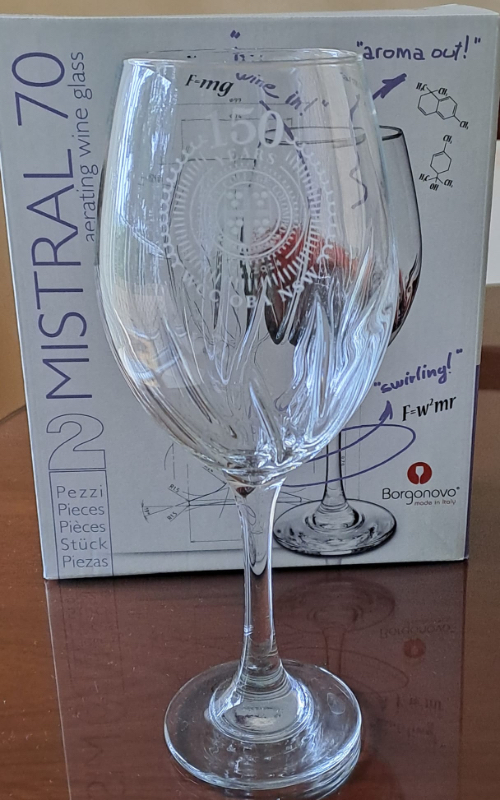 |
|
...........................................................................
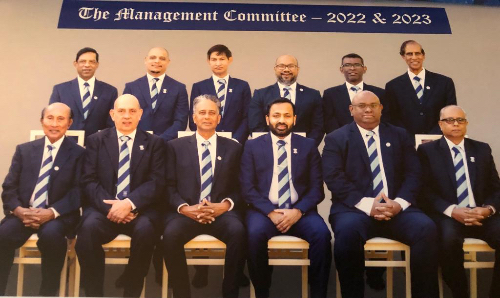 |
|
|
...........................................................................
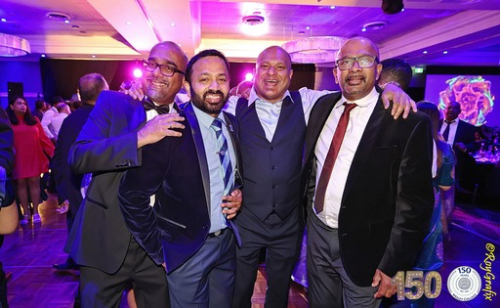 |
...........................................................................
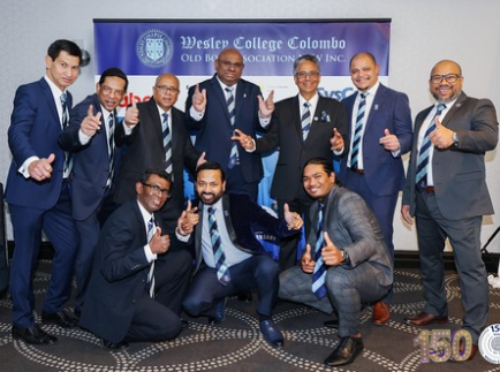 |
...........................................................................
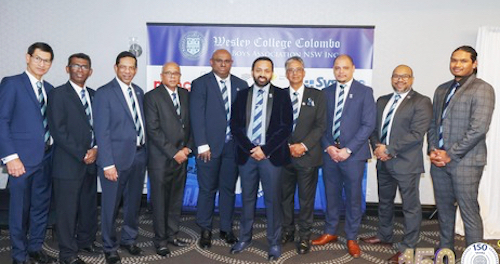 |
...........................................................................
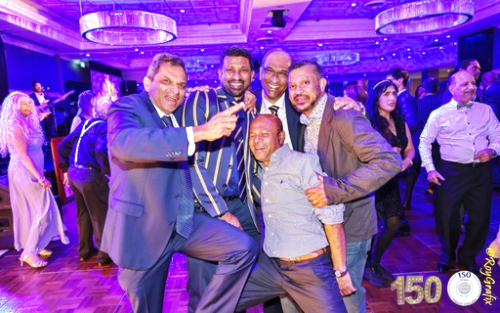 |
|
Peterite - Russell Arnold in a striped blazer |
...........................................................................
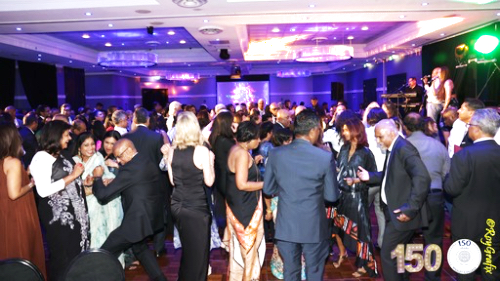 |
...........................................................................
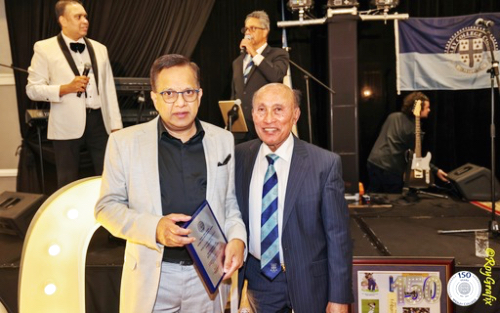 |
|
Nizar Sappideen with a friend |
...........................................................................
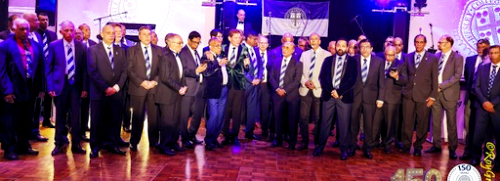 |
...........................................................................
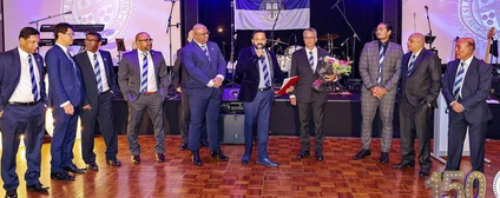 |
...........................................................................
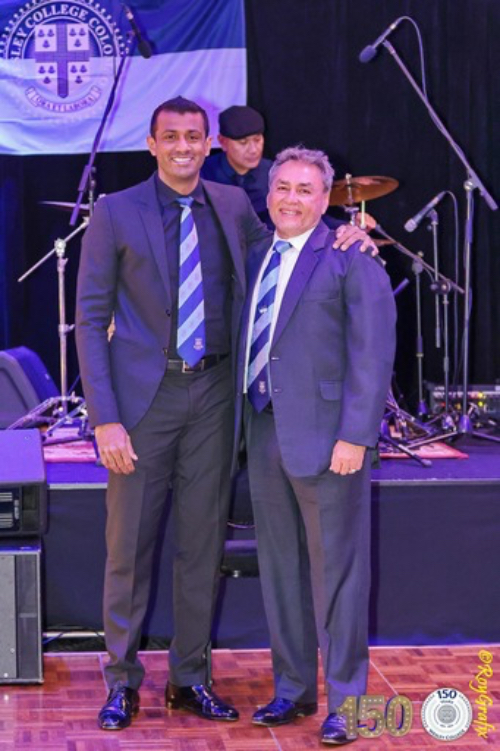 |
L to R: Faveez Mahroof and Navin de Silva |
...........................................................................
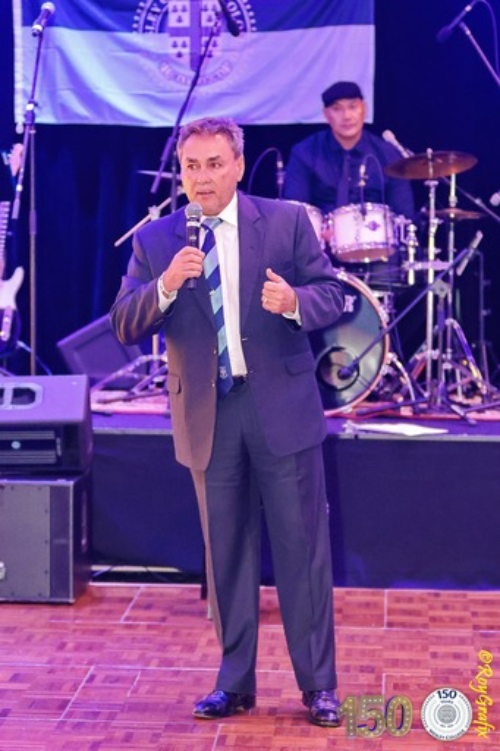 |
|
Navin de Silva |
...........................................................................
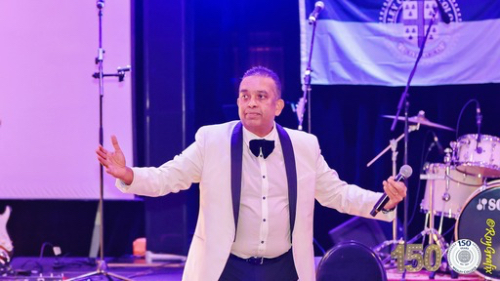 |
|
...........................................................................
From Dr Nihal D Amerasekera
According to the Archives of the Wesleyan Missionary Society of London - At Wesley College In Dam Street Pettah in 1895 there were five hundred students on the College roll, and of these about thirty were boarders. So the school boarding began well before we moved to Karlsruhe Gardens in 1907
Through courage enthusiasm and sheer determination Rev Henry Highfield’s new buildings were opened in 1907 in Karlsruhe Gardens. Then Wesley College had 639 in their roll. Parents from around the country wanted to send their boys to the new Wesley College. In those days public transport was virtually non-existent. Private cars were few and travel was difficult. The only way to have their children attend this prestigious institution was to send them to the boarding. Rev Highfield and the Methodist hierarchy at the time realised the importance of establishing a boarding within the school. When the school was opened in 1907 the school boarding had its own dormitories for 100 resident students
I was in the school boarding from 1952-58. It is interesting to note that there was no further expansion to the boarding. We had 100 boarders then.
There was a gradual decline in the number of boarders since the new millennium. It is hard enough for most parents to send their children away to school, much less to boarding school. The idea of sending a young boy away to a residential school meets with serious resistance from most parents. There are many reasons for this reluctance. The high cost of boarding school and the feeling that the local school or private schools can do just as good a job of preparing their children for University are thoughts that go through their minds. There's also a nagging concern that perhaps their son or daughter is not quite ready to leave home. Nowadays more Parents prefer to be close to their children when they are growing up. It would be best to put off that separation until after their children go to university.
Boarding schools are businesses. They have to be run and managed like substantial businesses and have to be financially viable. With the rising costs of operation there has been a need to increase the boarding fees. The cost of boarding has spiralled up over the years. There is now a greater concern for the quality and the quantity of food provided. Good food comes at a price. The middle and upper class children of professionals — can no longer afford to board full time. Attitudes to boarding and education has changed. Boarding is no longer an option for many, even if they can afford it. The higher fees and the ever changing personal needs of children have made boarding less attractive, hence less popular.
The boarding has served the parents and the students for over 100 years. During those years many thousands of boarders have had the opportunity and privilege to be educated and be taught to be useful citizens of this wonderful world.
With the decline in the number of boarders at Wesley College it has become increasingly difficult to maintain the boarding and keep it financially viable. It was decided by the school management to stop providing a boarding facility. After much soul searching, the boarding was finally closed in 2019.
Although the boarding has lost its battle to survive it still exists in the hearts and minds of the many boarders who have passed through its doors over the years. I personally have some fond memories of boarding life. The boarding has always been a vibrant community of students. They continue to maintain contact and exchange stories and anecdotes on social media.
Fashions and situations change. I sincerely hope that in the future circumstances will defy the laws of family and financial gravity to reopen the Boarding providing a home away from home and a safe sanctuary for students.
Links to further reading
From Dr Nihal D Amerasekera
Each year Wesley College has hosted a Prize Giving Ceremony, most certainly since its inception at Karlsruhe Gardens and perhaps long before this at Dam Street Pettah. The ceremony takes place at the end of the school year around October. This is an opportunity to reward students and to recognise their successes throughout the academic year. Each class selects winners for various categories and the Principal with the staff decided on the Special Awards. In addition to our class prizes, prizes are also presented for Wider Achievement such as Sport and Expressive Arts.
The Ceremony is held on a Saturday. The school prepares well for this prestigious occasion. The school and the gardens are spruced up and always looked immaculate. The Great Hall where the event took place was beautifully decorated with flowers, for the occasion.
The annual Prize Giving Evening is also a key moment in time where parents, students and the staff come together to celebrate achievements as a community. The school invites a chief guest who is a successful past student of Wesley College or someone who holds a prominent position in public life. The proceedings began with a warm welcome to the Chief Guest and his wife by the Principal. One of the important tasks of the principal is to provide a comprehensive account of the performance of the school in the past year. A member of staff is delegated to read the names of the prize winners. The Chief Guest or his wife will present the awards. The students walk up to the stage will bow to the Chief Guest with a thank you on receiving the prize. This procedure has been well rehearsed, and the students knew what they had to do.
The prize Giving Ceremony ends with a vote of thanks proposed by the Principal or the Headmaster and seconded by another prominent teacher. The Senior Prefect too is invited to make a speech and give his thanks to the Chief Guest and his wife. It is a well established tradition at Wesley College for the Senior Prefect to ask for a holiday on the following Monday. This is never refused by the Principal.
From Dr Nihal D Amerasekera
It has been a tradition at British Public Schools to have their own school magazine. During my years at Wesley 1952-62 we had the Double Blue Magazine produced every year. This became the school's chronicler. It is not clear when the Double Blue Magazine was first published but it had a fine resume of the years important events including academia, sports , drama and music. There were articles by students on various topics. I recall some fine poetry and interesting short stories. Whether it’s stories, poems or reports, giving students a platform to showcase their writing encouraged students, and inspired them to write. The students sent their articles to the editor. But every article received was not published. They were carefully selected by the editor and the teacher in charge and published in the magazine. It brought joy and pride to see their articles in print. Student editors also got a training on how to perform responsible duties and deal with dissent.
The magazine became the voice of the students and was an outlet for their creativity. All the sports photos and House Reports for the year were published. The Annual Prize list of all those who received awards at the Prize Giving were included with the Principal's Report of the school's progress. I remember so clearly towards the end of the journal was the "VALETE". This gave the names of all the Students and staff who have left in the past year with a brief account of their achievements along with good wishes and a thank you.
The editor of the magazine was a student usually in the Lower VI form and appointed by the staff. All the inclusions in the magazine were vetted by a senior teacher. I remember the magazine was often printed at the Wesley Press and sometimes Caxton Press in Colombo. The students were encouraged to buy the magazine from the school bookshop behind the Great Hall for Rs2.50. This was a princely sum for a student in those days. My weekly pocket money was Rs 1.00. I had to ask my parents to pay for the Magazine.
Since the 1960's succesive governments refused to provide financial support for Schools like Wesley. This gave the school a huge task to find the funds to run the school and stay alive. With this the Small Park and the Staff Flats at Wesley were sold to survive the economic crisis. I am well aware that the Double Blue magazine was not published during the economic upheaval. Resuscitation or resurrection of the journal, would have been low down in the list of priorities. There were some token attempts to revive it in the new millennium. The Magazine was published again during the Principalships of Dr Louis Adhihetty and Dr Shanti McLelland. But the tradition has not continued beyond their years. The Double Blue Magazine is not published annually now.
During the Grand Reunion of 2012 when I was at Wesley College I went to the school library in search of the old Double Blue Magazines. I was surprised and dismayed that not a single copy was available despite a search by the librarian. These journals are part of our heritage and valued history.
The Double Blue Magazine was the voice and soul of the School and an icon during my years at school. I do hope and wish this journal will be revived and the school management will do its best to obtain previous copies for the library and preserve them for posterity.
From the Wikipedia
Gate Mudaliyar Abraham Mendis Gunasekera (1869–1931) was a leading literary figure in Ceylon. He had served as an Interpreter Mudaliyar to the Registrar General of Ceylon. Gunasekera produced a Sinhalese grammar as well as Sinhalese-English and English-Sinhalese dictionaries.[1] He is the grandfather of the famous Sri Lankan construction engineer U.N. Gunasekera.
From the editor of the DBI
There is a coveted special prize awarded in his name which is given annually at the Prize Giving.
From Dr Nihal D Amerasekera
I was a boarder at Wesley from 1952-58. Although after a lifetime of trying I must confess, I cannot describe the experience better than Charles Dickens as he has done in his epic, A Tale of Two Cities:-
There was intense loyalty to the hostel. All the Hostellers were in Moscrop House which brought a great degree of unity amongst the boarders. These surfaced at inter-house matches.The Muslims, Christians, Buddhists, Tamils, Sinhalese and Burghers formed one large brotherhood which we carried to the wider world in later years. Most boarders had nicknames depending on their infirmities, habits and names. Like "Homba" for a protruding jaw and "Kabaraya" for scaly skin, "Goofy" for protruding teeth and Nabiya for NAB. A chap with a goitre became "gedi Vetha" There were two blind students in the senior dorm who were greatly liked by us all. One of them , Cornelius, was an excellent pianist and the other was William (thanks to BCRN (Ranjit) Fernando for jogging my memory) I met William many years later when he was in charge of a School for the Blind in Seeduwa. He didn't recognise my voice but recalled my name and the connections instantly.
I often look back to the days in the boarding. It has created an Aladdin's cave of wondrous memories. The sands of time have moved on as I have progressed from youth to middle age and beyond. After many years, I visited the hostel in 2012 and walked the long corridors once again. The nostalgia was overwhelming but the magic of the place had gone without my friends who made it so special. One Hundred and Fifty years on Wesley continues to make immense contributions to education.
As the boarding is costly to maintain and rather expensive for the parents, there was a gradual decline in the number of boarders over several years. The school management realised it was not an economically viable proposition to provide a boarding service. The school Boarding was first established in 1907 with 100 resident students when the new Wesley College was opened in Karlsruhe Gardens. After 112 years of its existence, the boarding finally ceased to exist in 2019.
It is interesting to note that there was a boarding when Wesley College was in Dam Street Pettah.
According to the Archives of the Wesleyan Missionary Society of London - In 1895 there were five hundred students on the College roll, and of these about thirty were boarders. Now all this time the buildings in which the College was housed were most unsatisfactory.
I feel incredibly lucky to have enjoyed the company of such wonderful friends while receiving an excellent education.
I admire greatly the desire, dedication and devotion of the organisers of this great event to bring back old friends together once again. The hostel now exists only in the memories of those who lived through those wonderful years.
Ah ! those were the days. How time has flown.
.......................................................................
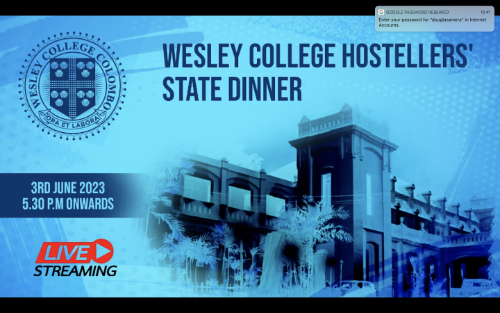 |
...........................................................................
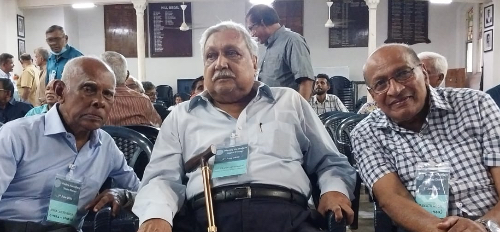 |
L to R: Nimalsiri Rosa, Mr Frank Jayasinghe, Ranjit Rosa |
...........................................................................
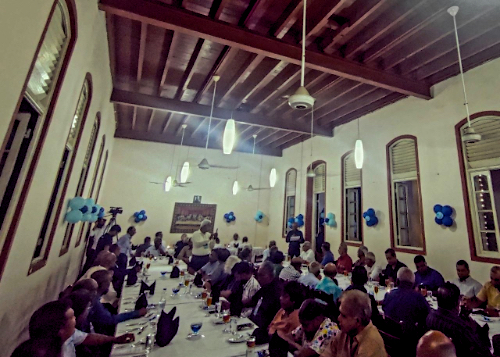 |
State Dinner held in our former Dining Hall. The famous painting of the Last Supper can be seen in the background. |
...........................................................................
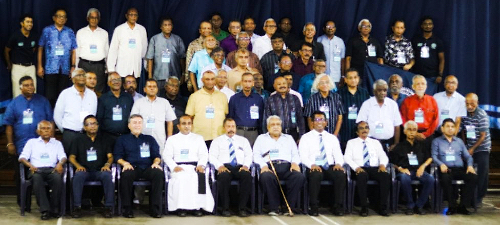 |
...........................................................................
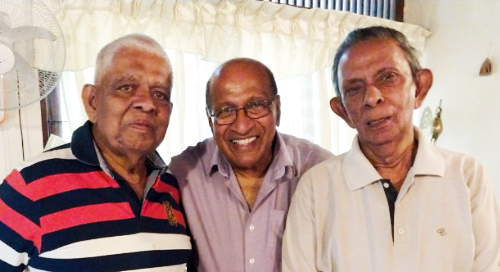 |
From L:R Upali Siriwardene, Ranjit Rosa, Damian Goonetilleke |
...........................................................................
Links to further reading
Hostel Prefects Guild 1970/71
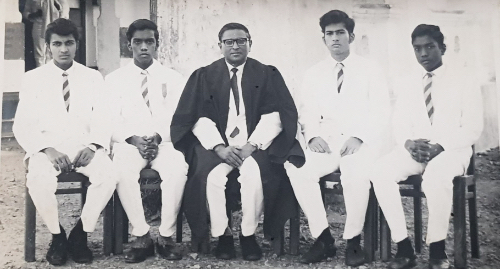
..................................
Hostel Photo 1995
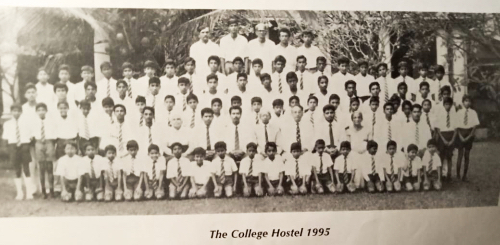
..................................
Hostel Friends Meeting in Melbourne circa 2020
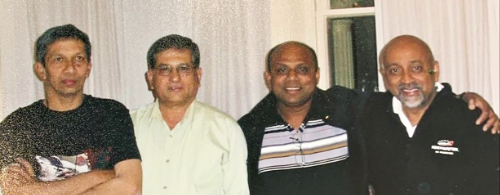
..................................
Hostel Hockey Team Circa 1972
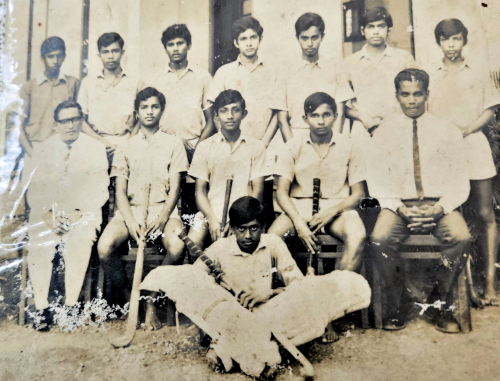
Mr A.S Wirasinha, Rohan Upasena, Rohan Selvaratnam, Asoka Devaprakasam, Mr A.K Suppiah
Standing L to R:
????, ????, ????, Sibly Wil Cassim, ?????, ???? ,????
..................................
Hostel Badminton Players on a Saturday 1974
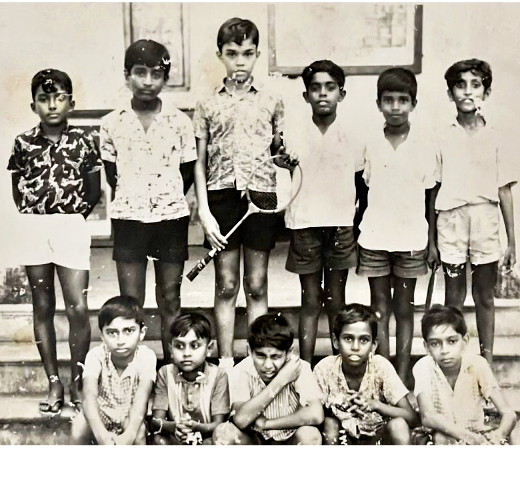
Buultjens, ?Bertram, Basnayake, Bandupriya, Ranasinghe
Standing L to R:
Champika, Soloman, Upali, Hareez, Vasantha, De Mel
..................................
Hostel Hockey Team Circa 1975

Patrick Edema, Priyantha Mendis , Mr. Dunstan Fernando (Vice Principal), Shanthi Sadanandan, Mr. M U D S Kalupahana (hostel master), Tennyson de Silva, S S K Solomon
Seated in front- Goal keeper Anura Dharmasiriwardhana
Standing from L to R:
Hareez Mohamed, Nalinda Weerasekara, Mohan Asirwatham, DS Somarathna, Anil Weerasekera
.....................................................
Hostel Photos sent by Riza Azoor
These photos of Hostellers were taken in 1978 with a Yashica E35 camera using a film roll
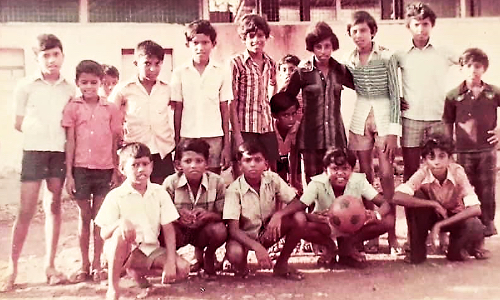
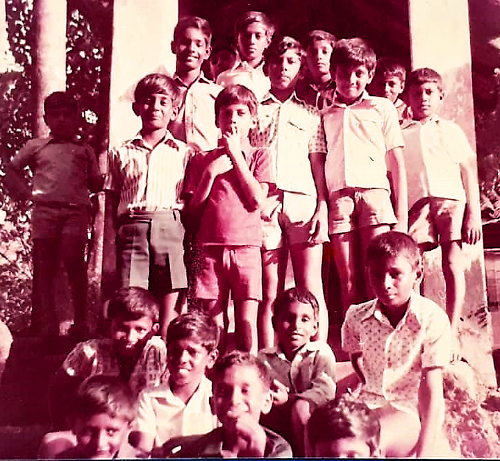
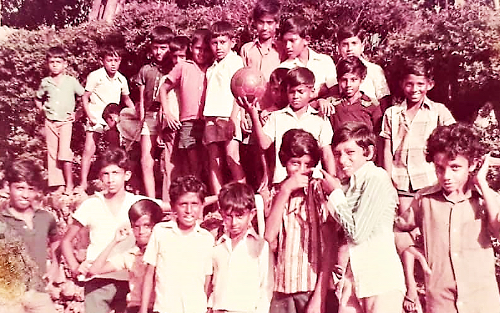
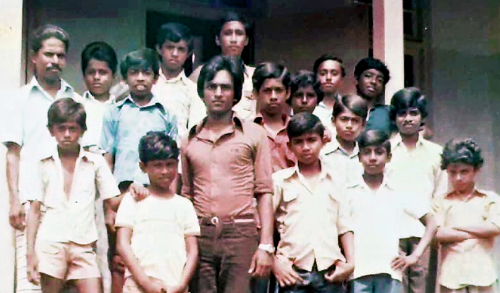
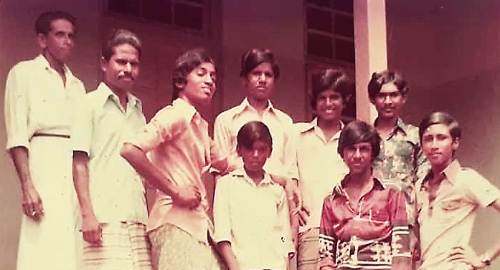
Photos kindly sent by Rev Ebenezer Joseph
Standing L to R: Jayasinghe, Neil, R.G Wijesinghe, Jabez, C.G Sadanandan
SeatedL to R: Sivalingam, Ebey, VictorRaj, Ranjit

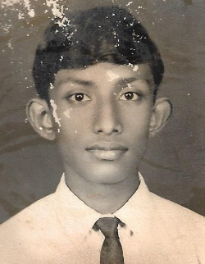
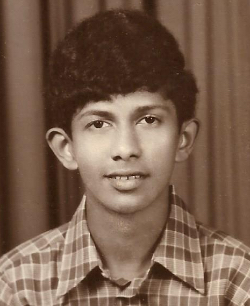
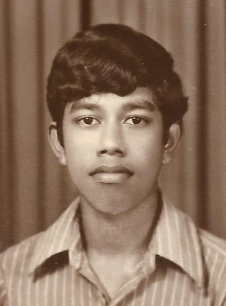
A photo from 2017 sent by Jabez Joseph
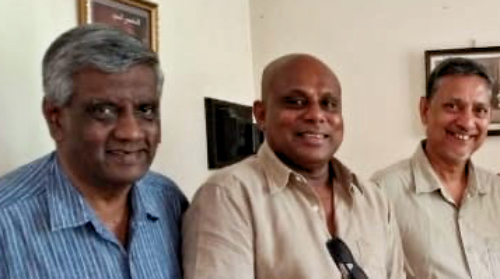
A photo from January 2024 taken at the Principal's Bungalow

Cub and Scout Pack 1974

Cub Pack 1960/61
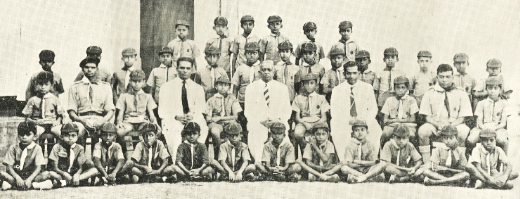

By Dr Nihal D Amerasekera

 My father was a government servant and was transferred every 4 years to towns far away from civilization. Without changing my school every 4 years, in their wisdom, they decided to send me to the Wesley College boarding. Hence, I was ‘incarcerated’ from 1952-58. Change in lifestyle can be daunting at first until we fit into the rhythm of community life. Although I never realised it at the time, growing up as an only child, boarding was the best thing that happened to me. Nowadays when both parents work boarding most certainly relieves pressure on the family.
My father was a government servant and was transferred every 4 years to towns far away from civilization. Without changing my school every 4 years, in their wisdom, they decided to send me to the Wesley College boarding. Hence, I was ‘incarcerated’ from 1952-58. Change in lifestyle can be daunting at first until we fit into the rhythm of community life. Although I never realised it at the time, growing up as an only child, boarding was the best thing that happened to me. Nowadays when both parents work boarding most certainly relieves pressure on the family.
The school boarding was an institution within an institution. It was a fine residential facility that was often oversubscribed. The boarding was well staffed by responsible teachers and a caring Matron. The dormitories were well maintained and kept clean and tidy at all times. There was a large dining hall and a hall for study. A small chapel was used by the Christians every evening. The bathroom facilities were good and adequate.
 There were many positive influences of boarding life which helped me enormously in later years. Boarders are ultimately responsible for the actions they take, from organising their weekly calendars to getting their homework done on time. There was strict regimentation and time was designated for every aspect of boarding life including study, sports and fun. This was all controlled by the ringing of a bell. During study time help was always available from supervising teachers and senior students. Sports was compulsory and I learnt to play cricket, football and many other games. The boarding was a close knit community and we all learnt to be friendly and help each other. The boarding nurtured social skills and provided leadership opportunities. It fostered self-reliance and independence, preparing young people for the future. We formed strong bonds with friends in the boarding, many lasting a lifetime. I look back on those years with fond memories and much joy.
There were many positive influences of boarding life which helped me enormously in later years. Boarders are ultimately responsible for the actions they take, from organising their weekly calendars to getting their homework done on time. There was strict regimentation and time was designated for every aspect of boarding life including study, sports and fun. This was all controlled by the ringing of a bell. During study time help was always available from supervising teachers and senior students. Sports was compulsory and I learnt to play cricket, football and many other games. The boarding was a close knit community and we all learnt to be friendly and help each other. The boarding nurtured social skills and provided leadership opportunities. It fostered self-reliance and independence, preparing young people for the future. We formed strong bonds with friends in the boarding, many lasting a lifetime. I look back on those years with fond memories and much joy.
There are several disadvantages too to life as a boarder. As I found, separating young children from their parents is traumatic. I sent my elder son to the boarding at a public school in the UK. The whole family missed him so much we decided to buy a flat opposite the school and live there with him. Homesickness is endemic in residential facilities. This is something I experienced first-hand and saw the grief it caused in others. They may experience bullying that causes emotional stress. The absence of the loving parental relationship and being in a captive situation not of a child’s choosing can be deeply upsetting. Due to these and the ever-increasing cost of boarding fees, there has been a sharp decline in student boarding worldwide.
 Parents living in all parts of the country were able to send their children to Wesley College because of the excellent hostel facilities that were provided. We had children from Jaffna, Batticaloa, Hambantota and the hill country fostering cultural diversity that enriched our lives. The loss of the boarding will prevent many parents living further afield from sending their children to Wesley College.
Parents living in all parts of the country were able to send their children to Wesley College because of the excellent hostel facilities that were provided. We had children from Jaffna, Batticaloa, Hambantota and the hill country fostering cultural diversity that enriched our lives. The loss of the boarding will prevent many parents living further afield from sending their children to Wesley College.
The boarding has been a part of Wesley College since the very beginning in Dam Street Pettah. During my visits to Wesley College over the years I have seen the decline in the residential facilities. This became more evident in the new millennium. The boarding had become a financial liability which the school could not afford. I wasn’t surprised to see its demise. The boarding closed its doors for the final time in 2019. This indeed brought great sadness to many who have benefitted enormously from this institution.
Many including myself believe that the boarding still has a part to play in school life. But the format of the school boarding must change to appeal to the students, parents and to the school management. The boarding age should be increased to include GCE students and the 6th Form. Those are the most important academic years at school. These older boarders will be in a better position to appreciate and utilise the facilities available for study. They will have the opportunities to be actively involved in extracurricular activities. Parents will be spending less on boarding fees overall as they board for a shorter period until they leave school. The student numbers will be smaller. The space required for dormitory facilities will be less. The students will require less supervision. Fewer teachers will be needed for the smooth running of the organisation. Hopefully this format of boarding confined to senior students will be a financially viable proposition for the managers of the school. Weekly boarding is popular in the UK. Students remain in the boarding from Monday to Friday and return home at the weekend. This too could be available for senior students.
I enjoyed boarding life immensely. It was never a bed of roses but neither was it a bed of nails. I joined as a ten year old and left as a teenager teetering on adulthood. The early years as a boarder was a challenge. I must confess I appreciated the boarding more in my latter years. The boarding contributed immensely to the fine all-round education I received at Wesley College Colombo. I look forward to the day when a boarding facility will be revived at school, once again. As I spend my retirement in London still there are times when my mind crosses the vast oceans and swathes of land to return to the boarding at Karlsruhe Hill in the land of my birth.
Links to further reading
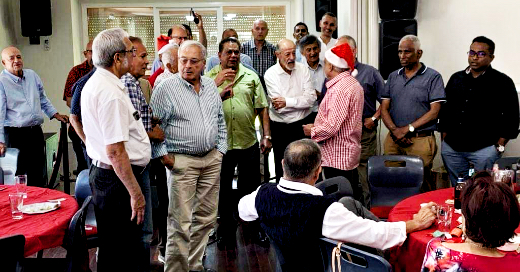
By Neil Harvie, Brisbane, Australia
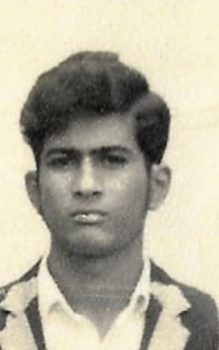
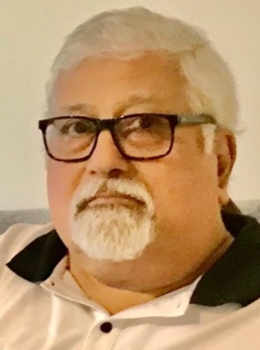
Having spent 10 years of my formative life at the Wesley Hostel there is no doubt that I learnt many life skills within the portals of the great school whilst in the hostel. I got to know every nook and cranny on the campus its buildings and its secrets.
It was January 1963 when I was walking through the corridors of the school with my father and younger brother Christopher that I felt that tinge of apprehension at the scale of the school and number of boys playing in the surrounding grounds and spaces. Having travelled from the regional capital of the Uva Province, Badulla my Gama (hometown} everything seemed scaled up and huge. The buildings in Badulla at Uva College were small when compared to Wesley College and Uva Hostel was a very quiet and boring place with very little creature comfort and extremely poor water supply, sanitation cleanliness and abysmal food.
I consider it my lucky day that I missed out on selection to Royal college and made it to Wesley or all this story would have been but a sad dream as all these wonderful experiences and friendships that I was to experience at Wesley would never have been possible. Like first time boarders particularly from a place as far away from Colombo as Polonnaruwa where Our parents had just moved to and subsequently to Matara it was heart wrenching and scary for me and would have been even more traumatic for my brother. I had to keep a straight face and stiff upper lip ass I had my little brother to think of and set an example to.
Settling in was easy at Wesley with great hostel master’s and junior and senior Matrons who were an example of caring and concern. Mr. Frank Jayasinghe was in charge as Senior Hostel Master, Cyril Fernando, PGR Fernando, S Thavarokiam, S Tharmalingam, and P Wijesinghe among others as dorm masters with Miss Pearly Gomes as matron. The kitchen was well staffed and always produced a great meal for us. A Select few among seniors were Hostel prefects and custodians of basic dormitory discipline and had as recognition and reward a closed cubicle for their use. The regimentation of the Hostel Bell and compulsory study times and lights off was a bit of a challenge getting used to but as you mature you realise the importance of this aspect and the discipline and habits it in inculcates into you. I am forever grateful for this and that as a prefect in the years ahead I too was responsible for this task.
There were excursions and opportunities to visit places of historical significance and enhanced our overall learning with the teachers accompanying us providing all the information of the importance and significance at each site. I learnt a lot of detailed Buddhist history from some of the most knowledgeable of Christian teachers that has remained with me to this day.
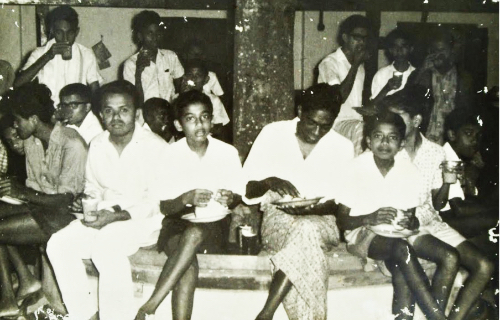
Back to my first day in class I was all dressed up and early seated at a desk mid-way in the class room with a pile of books on the desk and resting my Jaw on them not knowing anyone in the class. The classroom was situated to the rear of the school next to the old cloth drying room /cycle sheds and later urinals. There was a bit of noise with everyone catching up with those known and I was a bit lonely not knowing anyone and apprehensive. Suddenly among the chatter I heard this loud noise and could see this slightly built boy with curly hair cynically staring directly into my face at me and in a garrulous manner say “ may kawada aluth lansi kolleck appey Panthhiyey, ikmantama dhana gattoth hondayi mekay mamai chandiya kiyala “ ( who is this new burgher boy in our class he better learn fast that I am the boss here). To my amazement and gratitude walked up Laksiri De Silva with his customary wide toothy smile and made it known to Curly tops that he was going to look after me and if there was any nonsense that he would have to deal with him first. Laksiri and I remained close friends throughout our schooling and after his sad untimely unfortunate passing a few years back after his return from UK. In the hostel we were also sadly to experienced our first bully boys and how you dealt with it sorted out your days ahead my first experience was with Wilhelm Van Geysle (see his success story in the web ) lad about 2 years older than us but bent on playing with us younger ones as he was bent on getting his own way bullying, unable to deal with us and get his own way he invariably sulked away in tears. We gradually befriended him and lost contact when he quite early on migrated to Canada. I am informed, he had made a great success of himself in life there. Congratulations and all the best and I am sorry that our paths never crossed again. I had a close-knit group of hostellers some who have become lifelong friends. Among those were the great Maldivian crew Hussain Shihab, Ahamed Imad, Mohamed Rasheed, Hussain Habeeb, Abdul Azeez, Mohamed Ameer, Abdul Hameed. Then there was Tissa (ANT) Fernando, Brothers Godwin and Gladwin Philips, Jabez and Ebenezer Joseph, Lasath Algama, Priyantha Perera, Shanthush de Silva, Ashley and Kumar Roberts, Peter and Chris Swan, K Sivalingam, Kamal De Silva, Mohan Fernando, S Puvenendran, Vino Joseph the 3 Sadananda Brothers CG. DH and SR, Daniel Koilpillai, K Mahesan and Brother Nithiyanandan, Asoka cost, Harischandra and Tennyson de Silva, Mahinda Sunil and Sunil Shantha to name a few.
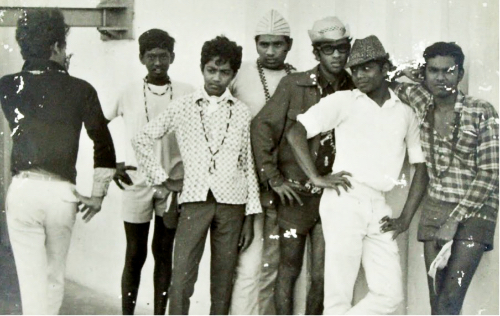
We entertained ourselves with one bump cricket in the corridors and 6 and out in the open court yards, Thathchi , Pittu and statues were our favorite in the small park in front of the Tuck shop across from the matrons room. It was brutal and scary with many a bleeding graze as reward on the rough gravel. Cowboys and crooks and make-believe camps and food behind the tuck shop on the only tree that I could recall. We made our own Monopoly, Ludo boards, Snakes and ladders ( lead By the artistry and craftsmanship and many a tear of the persistent Ahamed Imad). Carrom and Droughts was also a common way to while away the time on those compulsory boring afternoon siestas over the weekend.
We were fortunate in having a Rediffusion broadcaster service provided in each dormitory and we enjoyed the music and commentaries when on the system, the choice of course finally rested with the loudest or the Prefect in whose cubicle the set was located. I remember listening to the top of the pops each week end to learn which singer had won the top spot. Elvis, Beatles, Cliff, Rolling stones, Shadows, Ned Miller and Olivia or the up and coming soul exponents. The most important day was when all light offs and sleep times were exempted to listen in to the Apollo craft land and Neil Armstrong take the first step on the moon to the impressive voice of If I remember right Premasara Epasinghe’s outstanding Sinhala commentary. My most memorable saying of the day was by the aged cook Albert who was charged with giving us hot drinks while we listened on was to hear him Say “ if I cant see that flag up there I don’t believe that anyone landed on the moon” the doubters still exist.
We were mostly ignored by the seniors in those early days as some of them were probably a bit up themselves cocky and a bit consumed in self-importance with their sporting and other fame or recognition. Some names that come to mind Kantha De Silva, Nigel Christoffel’s, Glen Scarnivel, Conrad Fernando, L Jayaweera, L R Wijesinghe, Sarath Algama, Dave Thurairajah, Lal Fernando, Lal Jayasinghe, Fernando Brothers Lasantha and Anil, LR James, I Muthu, Arthur the Rabban Man, Winston Fernando, Luxman Amarasekera, Nihal Cooray, R Daluwatte, Kosgahakumbura, Rohan Soysa, and M Naeem come to mind. The only time when we were required was to help skill up the hostel softball cricket team.
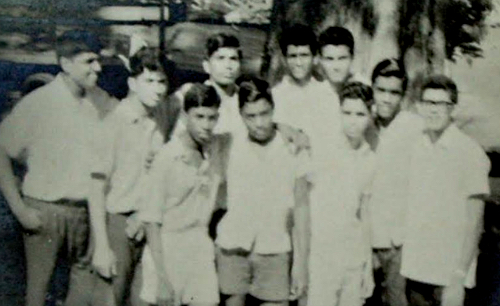
We were all entitled to a small amount of pocket money agreed to by our parents which was advanced by the school and charged back to our boarding school account. My brother and I were the beneficiaries of Rs1/- a week and made do with this until much later it was raised to Rs2/- a week. This money was spent on the Kadala/ achcharu achchi at the front gate who would very kindly give us credit in advance of pocket money day or the Annasi boy at the grounds. On the few occasions when we could pool our money., We would jump the fence at the front end and purchase a tin of sardines and a loaf of bread form the shop next door and talk our way into a onion from the obliging kitchen staff. In our minds this was the tastiest of food if we did not get apprehended in the act. Later on, into our stewardship we were able to have our own milk shop accounts once Miss Gomes had opened a milk sales outlet of Milk board products. After the evening play at Campbell park some of us would go straight to the milk shop for a refreshing bottle of sweet milk from the guy Karu who ran the shop.
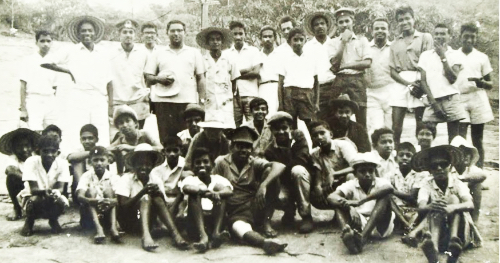
The hostel kitchen and dining staff had its own characters such as Basnayake (Bassa), Dias, Karunasena, Albert and Nimal to name a few. Mealtimes were a formal affair with orderly and mannered use with grace to begin which was short and sweet. Sunday dinner was known as the state dinner with the Principal gracing the occasion and all hostellers were required to be well groomed and presented for this occasion. We learnt the finer points of the use of cutlery, which was a compulsory item of knowledge in those days and no doubt beneficial to many hostellers with the meals always a bit special. If you had been a bad boy and caused some form of serious breach of discipline and been reported it was the occasion that if the principal had been notified that you got 2 of the best from his Cane on your buttocks in the presence of everyone gathered that day. I am told it was a deterrent to the wayward and those contemplating. I was the recipient on 2 such occasions for issues that my father had explained in writing, but the busy ASW carried it out anyway. The great man was humble enough subsequently call me up and extend a personal apology for the mistaken affront made to me. ASW went up in esteem even higher in my judgement that day onwards I had a wonderful and rewarding exposure to one of finest humans I have known and a gentleman without peers lost to us too soon in life.
On the table bell we stood up for grace in pin drop silence and as the master in charge or principal had said “for what we are about to receive we thank thee oh lord” the scramble for the rice and curry dishes was something to behold. There was always a protocol how the dishes were passed around by seniority. The quality of food was good and wholesome with second serves available to an extent. I from to the Uva College Badulla Boarding knew atrocious meals with no seconds found out that Wesley was quality and under careful eyes of matron Miss Gomes. She paid attention to the malingerers and the poor eaters, no one was allowed to waste food. Some of us had special paid and were entitled to an egg for breakfast. The troublesome eaters and complainers had the misfortune of been seated next to the matron who saw that you ate what was on your plate.
During the period of the first Sirimavo Bandaranaike Government when the country was placed on a restriction for Rice and no imports were allowed, we had to surrender our rations for the period to the hostel. But with Miss Gomes and her staff we were lucky to experience Mung ata, innala, Batala and Manioca and other traditional stuff well cooked and presented. We had a mung ata strike by some rather snobbish hostellers soon quelled by diplomatic discussion.
Sometimes students feinted sickness to end up in the sick room under the care of John the sick room attendant were out quick and in a hurry when forced to have Matrons Thambung Hoddi (a concoction of traditional herbs boiled into a nasty soup). Sick boys needing medical attention were driven in a taxi to the clinic at Maradanq, and later on to Dematagoda for treatment. Parents were charged for the Taxi fare but suspicion was that all four parents of boys in the car were charged for the same fare.
As you walked up the stairs were the newspaper stands with the daily newspapers in 3 languages for anyone to read. We carried gravel from the small park before it was sold off to fill the area in front of the then tuck shop so we could continue to use that area and play once the small park was gone. We participated in Shramadana at Moratuwa and the Hendala Home making contributions to brick building and other physical donation of time to help the needy.
For some years an annual get together with Royal college hostel with us meeting at alternative sites each other year was held. It enabled us to meet with youth from other schools and share and exchange ideas and build friendships which lasted over the years. Debates, spelling, and sports items were held as contests with a real and desire to win although the foray was always held and conducted in the best spirit of sportsmanship and fair play. Unfortunately, after some time these encounters ceased to exist, and I never knew why.
We were a well-knit unit of boys and every year Moscrop House, which was the designated house for all hostellers would run away with the major house trophies. We were able to practice together help each other and select the best competively to represent the house. We also had a support group to cheer and encourage us to do well with all hostellers supporting and rooting for the team from all over the ground providing a constant cheer squad. Over the years the best that the hostel provided was the camaraderie and competitiveness amongst us and against other Day scholars. We always stood up for each other and Moscrop house of the boarders outshone the rest of the school in all sports and in many instances academically. Jealousy or foolhardiness was brought on to split the hostellers amongst all day scholars and the new allocations were made in a lottery type draw. Unfortunately, in the initial years of the change as sometime things happen most of us ended up in Hillard House and we won every shield in the new sports calendar. I was once again in the winning team. My friend then little Karunalingam stands on the left extreme in that picture as a reward for his involvement in everything.
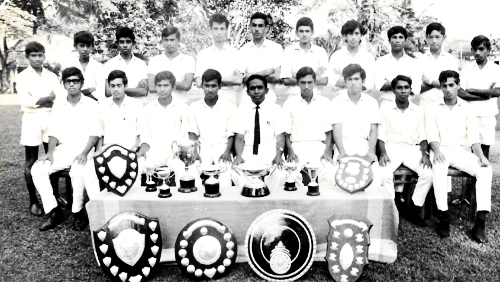
The great success stories of the hostel are too many to write on but I have the finest recollection of this young lad been brought on the handle bar of a bicycle by his father who owned a small book printing shop in Maradana. Young Karunalingam from Pungututive Island off the Jaffna coast arrived with no knowledge of English and not a smattering of Sinhalese to start life as a boarder. Over the years I marveled at his progress and his attitude, he was the smallest in our team but always willing to help. Today he is a fine outstanding resident of the UK. There was a short period when Mr. Cyril Fernando (KCF known as Meeya) left for Massachusetts on an exchange or scholarship that for some unknown reason the Senior Hostel Master position was left unfilled. During this period, we had teachers acting and disappearing in this role and no real consistency in action. During this period unfortunately we had some seniors and Prefects for no known reason start to act in a very dictatorial, garrulous, and abusive manner towards the hostellers. We survived that short period of indiscretion. It, however, left a distasteful experience to an otherwise once caring and nurturing boarding house experience. Many looked forward to the return of KCF so the status quo would be back. I for one learnt the hard way with some of my finest colleagues how not to behave when one has perceived authority and applied this principle to my actions in the future when I was in a position of authority and leadership.
The hostel had its weekends and off days cut out with the Hostel society meetings where we collectively built a plan for all weekend activities. We had spelling bees, do you knows and impromptu speeches debating and films from the British and US embassies which helped grow the individual. Every year we had a walk in the dark to Kelaniya River, sing songs and talent contests. The forum was very robust and all ways with calculated interruptions of what were termed silly points or points of order. Karunalingam was the champion of Silly points. I had the misfortune of drawing the lot to sing a song and my voice is the most pathatic you can think of I don’t know how I survived singing Cliff Richards “Constantly”. The hostel Chapel was located upstairs next to the intermediate dormitory and all who were Christian had to attend a compulsory service on the Wednesdays each week the hymns were by choice and the most popular was 99 which was a single verse and very popular to finish off quick. Sunday we were lined off and marched to the Maradana Methodist church for Sunday school and service. We had the Rev’s Manukulasooriya, Rosa, Victor Salgado, SLB Fernando, and Rev Shelton Silva Preaching at various stages. We had the wonderful Blacker Family, the Samarajeewa Family and Felix Silva with his long sharpened black lead pencils teaching us Bible stories . Many hostellers received our first communions, confirmations at this church, some met their girlfriends on the side and the girls shared their likes and dislikes of the boys.
As the years passed, I was now a senior and a prefect and with it came the responsibilities and privileges of stewardship. We had our own cubicle and did not have to strictly adhere to the chiming of the bell. We formed our own hostel prefect’s guild with the blessing of ASW with our own letter heads and stationery approved for correspondence with the likes of Ted Kennedy, Air Commodore Paddy Mendis and other high profile political and social leaders. It was all a process of learning and absorbing the important aspects of their experience to help us look at life from different perspectives.
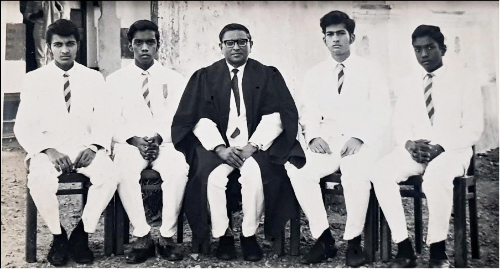
As the staff changed over and we progressed to senior levels we had Mr. W Premadasa and Mr. MUDS Kalupahana take over the senior role of Hostel Master from Mr. Cyril Fernando who had left to work elsewhere (If I Recall at Sharvodaya). We also had Mr. AK Suppiah (master in charge of sports) on and off in the hostel roster as a master. As seniors we had a fairly loose controlled set up and luckily, we were disciplined and dependable. We had a free run and would accompany the staff to movies at night and dinners as the staffer feared the dark and required escorts to go out. It was always at his cost. On a few occasions we would scamper off to the railway club down the road fully attired and pretend to be the guests of one of the partners and have a free feast. On one such occasion we had the misfortune of the late CG Sadanandan having his leg go though the tiles above Miss Norma de Silva’s class and having to abandon our plans and take on the first aid role to avoid been caught and secretly get good old John from the sick room to supply some salve.
We were a bit mischievous in the final year and when there was a deterioration in water and services for the general hostellers noticed that the teachers had renovated and done up their upstairs bath/ toilet facilities. We noticed one of the masters keys forgotten on the outside of the carefully locked bathroom and removed it and hid it in secure place. We safely used the lovely bathroom shower regularly with one on the watch and were never found out. When leaving the key was finally placed in the keyhole.
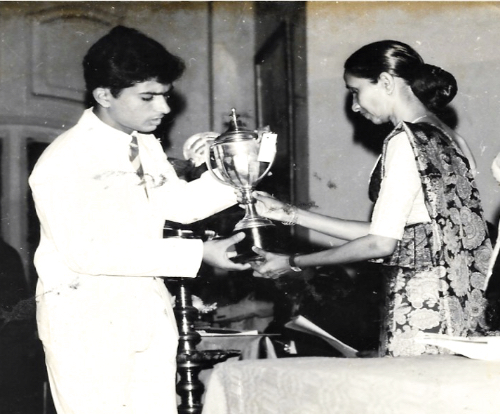
The hostel life taught us to be self-reliant, innovative in many ways and to be appreciative of the needs of the collective as against the individual. We were resourceful to find ways to enjoy life and to abide by the rules and to find out the technical excuses if caught out doing the wrong thing. We were meticulous planners and never left anything to chance. You made friends for life and can still relate with humor and happiness when we meet after years as we all both suffered and enjoyed the opportunities that came as being a hosteller.
I for one spent 100 months of my formative life at the hostel and just 25 months at most at home. I can say without doubt that I am not the worse for this experience and exposure with the guidance and counsel of some of the finest Humans/educators including the fine advice and tutelage of Mr. Shelton Wirasinha with whom I spent many hours just talking and picking his brain.
Having bored you all I wish to end by saying that my finest and most proud moment was the honor of making the vote of thanks to the chief guest as college Head Prefect in 1972.
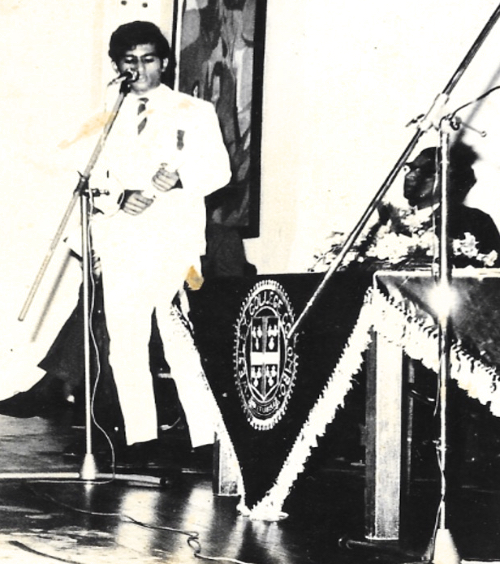
Unfortunately for me My father or Mum could never attend any of my Hockey or cricket matches and Prize days due to distance or official duties.
Ora et labora
From Hari Parameswaran (Ottawa, Canada)
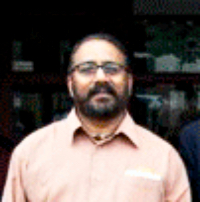 Reminiscence of the past with nostalgia gives pleasure and happiness. Exactly this is what I experience when think of my Alma Mater, Wesley college, Colombo. Wesley was my nurturer, my haven, my life and my home for 14 years. I am a firm believer that one's alma mater has the most important role in moulding one’s personality. I can very humbly say that I am what I am because of Wesley. I am very much grateful and thankful to my wonderful parents for having chosen Wesley, which even after 150+ years of its existence still stands tall and rock-solid to its motto, ‘Ora et Labora’. My heart is filled with pride, fondness, gratitude-coupled with nostalgia and longing when I think of Wesley.
Reminiscence of the past with nostalgia gives pleasure and happiness. Exactly this is what I experience when think of my Alma Mater, Wesley college, Colombo. Wesley was my nurturer, my haven, my life and my home for 14 years. I am a firm believer that one's alma mater has the most important role in moulding one’s personality. I can very humbly say that I am what I am because of Wesley. I am very much grateful and thankful to my wonderful parents for having chosen Wesley, which even after 150+ years of its existence still stands tall and rock-solid to its motto, ‘Ora et Labora’. My heart is filled with pride, fondness, gratitude-coupled with nostalgia and longing when I think of Wesley.
An incredible journey it was that transformed me from a tiny tot to an inquisitive child to a gregarious teen and finally graduating to a matured adolescent. Vividly sketched in my memory still are the beautiful experiences. Studying in an all-boys’ school like Wesley had its advantages. Qualities such as taking responsibility, upholding discipline and truthfulness, punctuality, and healthy collegial competition were taught, stressed and instilled in us. When it comes to my friendships and relationships, I must admit that those connections have most certainly stood the test of time. These friends came into my life without prejudice and expecting nothing in return.
I think of Bhagwat Gita verse 2.47...
Do your duty without any expectation
I was extremely fortunate and lucky to be taught by some amazing teachers during my school days, and I am indebted to them throughout my life. These teachers very effortlessly and meticulously taught lives lessons through languages and simple mathematics, complex trigonometry, biology, economics, politics, social sciences, value education, art and craft. These teachers allowed us to excel in whatever skill set we had, helped us to overcome fears and shortcomings, and trained us to face challenges.
As with the case with all good or bad (things), they all must come to an end and so did my most treasured school years. Thoughts and beautiful memories of Wesley will always be with me and will always be an integral part of my life. Long live Wesley and congratulations on an innings played so well, unbeaten and 150 not out!!
Ora et labora
Links to further reading
From Nizar Sappideen , Sydney, Australia
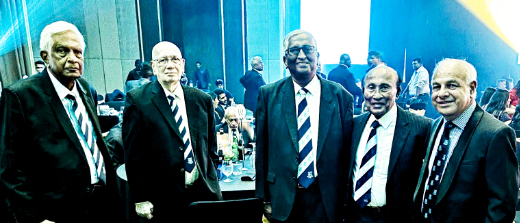
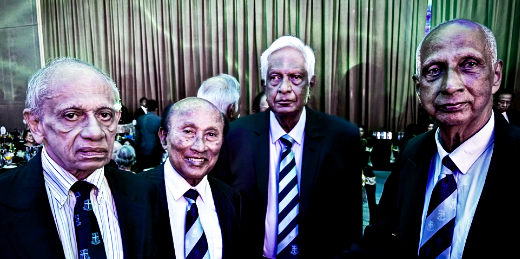
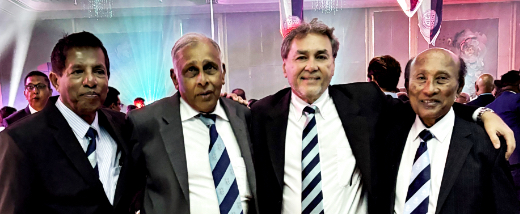
Dear Nihal,
Missed you at the celebrations. I hope you are keeping well. I attach a few photos of past Wesleyites you will remember. You may publish them on the OBA website if you wish.
The Sesquicentennial DOUBLE BLUE BALL was a gala event. One of the best organised functions I have attended anywhere in the world. Hat's off to the organisers for putting up this wonderful show. The event was held at Shangri La Hotel, Colombo on 9th March 2024 attended by over 700 guests. This was indeed a great get together of past and present Wesleyites.
Cheers my friend,
Nizar Sappideen
From Dr Nihal D Amerasekera
Thank you Nizar for your kind thoughts and those wonderful photos of friends from the great event. Nizar, you have been a supporter of this website for many many years for which we are all grateful. You have indeed enlightened us with those photos, news and views from across the ocean. We all wish you well.
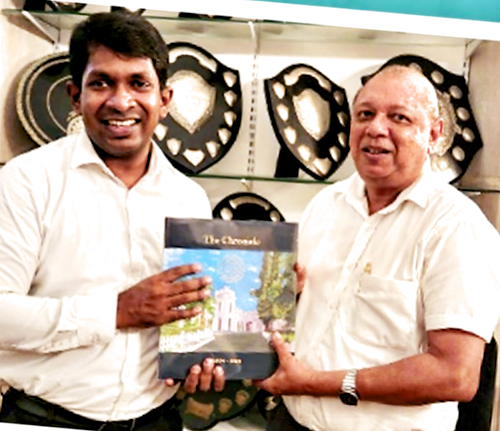
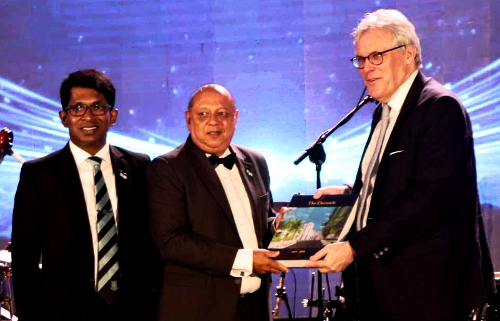
Lakshman Uduwara, Ivor Maharoof, Kumar de Silva, Avanka Fernando - Principal, Jeremy Brohier - Editor,
Ubewansa Warnakulasooriya, Peter Peiris
Standing L - R :
Muaad Razick, Chryshan Rodrigo, Joshua Siriwardena, , Dilshan Boange, Miles Brohier
Absent - Susan Brohier (Secretary)

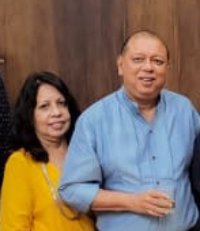
From Dr Nihal D Amerasekera
This Chronicle is an attempt at an accurate and up-to-date history of Wesley College of old in Pettah to the new in Karlsruhe Hill. It draws on material from old archives, past efforts and from school publications. Various errors from past accounts have been corrected, omissions righted and new material added to make this history current as of 2024.
The chronicle is a gargantuan effort by a dedicated team lead by Jeremy Brohier. It must be the fervent hope of the team that every Wesleyite past and present will read and get to know the interesting history and the rich heritage of our great school.
The school on Karlsruhe Hill was established with missionary zeal and some colonial vigour but it catered for all Ceylonese. The school became the cradle of multiculturalism. Protected from the polarised world outside it remained secular and was driven by merit. Since the very beginning Wesley has strived hard to become a modern, forward-thinking school. The school has a strong record of academic achievements and a full programme of wider life activities, including the arts and sports.
The school’s sesquicentennial anniversary has come and gone. One hundred and fifty years of life of a school is a huge achievement in this era of survival of the fittest. Longevity arises partly from good fortune but mostly from sustained effort.
The school’s philosophy of a balanced education of mind and body as envisioned by its founders was embraced by generations of students. That it worked can be seen from the products that walked through the portals of the school who have served the country as prominent educationists, lawyers, doctors, engineers, civil servants, managers of business, scientists of all disciplines, judges, Governor General, cabinet ministers, politicians, writers, poets, dramatists and artists. Many studied in the best universities in the world and have reached the commanding heights of Sri Lankan society and in the world at large. They all owe their very success to the unique all-round education they had received at Wesley College.
The chronicle will adorn prestigious libraries and will forever be an important treatise for those researching the history of education in Sri Lanka. The book will always be close to our hearts and remain a valued publication for all Wesleyites.
Our grateful thanks go to Jeremy Brohier and his team.
From Prof. Ratnasamy Somanathan at the Anniversary Banquet
Held at the Shangri-La Hotel Colombo
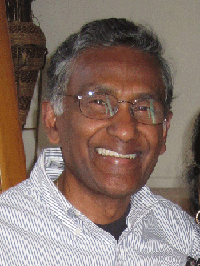 Thank you, Captain Navin de Silva for the kind and generous introduction.
Welcome Your excellency Mr. Ranil Wickramasinghe, your excellency the Ambassador for United Kingdom, Rev. Ebenazer Joseph the Head of the Methodist Church, Cpt. Navin de Silva, President of the OBU, Mr. Avanka Fernando Principal of the college, Ladies and gentlemen. Good evening to all.
Thank you, Captain Navin de Silva for the kind and generous introduction.
Welcome Your excellency Mr. Ranil Wickramasinghe, your excellency the Ambassador for United Kingdom, Rev. Ebenazer Joseph the Head of the Methodist Church, Cpt. Navin de Silva, President of the OBU, Mr. Avanka Fernando Principal of the college, Ladies and gentlemen. Good evening to all.
It truly an honor and a pleasure to be here this evening to celebrate a very special occasion, WESLEY’S 150 anniversary. An evening I shall never forget. My thanks to Cpt. Navin de Silva, president of Old Boys Union and the Organizing committee for the kind invitation. Also, my thanks to my good friends, Lucky Gunatilleke, Lalith Wijesinghe and Sarath Wickramaratne for playing a role in getting me over tonight, Thank you very much indeed. It is a joy and pleasure to participate in this grand event.
The evolution of Wesley over the past 150 years has been marked by success and challenges. Two world wars, and our own ethnic war which for two decades and several downturns in the economy, like the one we are facing now. Despite all this Wesley College has remained an iconic learning institution in the country. The credit goes to the past and present teaching staff, principals and OBU. It is very gratifying to so many old boys have devoted their time and effort to the well-being of the college, at times steering college in the right direction in times of difficulty.
Rather than reminiscing my hostel and college days, I would like to share with you all tonight my 56 years of experience in teaching which has taken me through 4 countries SL, United Kingdom, USA and Mexico. Some of them may be applicable to Wesley’s future educational plans
Quoting Winston S. Churchill: “A good speech should be like a woman's skirt; long enough to cover the subject and short enough to create interest.” My topic for tonight is Artificial Intelligence (AI), Machine Learning (ML) and the Future of Teaching and Learning, which is a buzz word these days, has been in the limelight in the Western world.
AI may be traced to the landmark 1968 film “2001: A Space Odyssey”—in which the “Heuristically-programmed AL algorithmic” computer, or “HAL,” converses with astronaut Frank. HAL helps Frank pilot the journey through space, a job that Frank could not do on his own. This movie was produced by Arther C, Clark, who was a resident of Colombo and passed away a few years ago.
AI is receiving a bad rap these days; some leaders predict AI would destroy societies and humanity. Bill Gates in the DAVO conference in Switzerland predicted in two decades globally 40% of the jobs will be lost to AI. It is really scarry. The pace of progress of AI is measured in days and weeks, rather than months and years, and it’s only getting faster. The quickening of AI’s capabilities and applications means that its potential impact, both good and bad, is growing rapidly. AI’s impact in industry is tremendous: Reducing cost, Increasing Efficiency, Increasing productivity.
AI’s growth: 2 million Images a day, 145 million users, US $140 Billion market.
As for Education, AI and ML have brought about a major revolution in Teaching and learning. AI and ML are evolving to be powerful allies offering a plethora of benefits that enhance both teaching and learning experience. It all started in response to COVID-19. Rather than teaching in front of a classroom full of students, lockdowns forced many educators across the globe to teach remotely, from their homes. Already, we can see generative AI systems have changed how schools’ function, teachers work, and how students develop personally and professionally for tomorrow’s world of work.
Overall, it is hoped that AI will ultimately help educators make continued progress in addressing the broad range of physical, cognitive, academic, social and emotional factors that can affect student learning and ensure that all students have equal opportunity in education, regardless of their social class, race, gender, sexuality, ethnic background or physical and mental disabilities.
Potential benefits of AI in education
1. Personalization With the help of AI and ML any educational process can be personalized to all students need, It can be overwhelmingly difficult for one teacher to figure out how to meet the needs of every student in his/her classroom. My own experience SMART ROOMS
2. Acts as a personal tutor
AI gauges the student’s strengths and weaknesses. An excellent AI software out there helping children at elementary level is a Khan Academy, Khanmigo AI software. Helping single parent families, low-income families, parents doing two or three jobs to support the families.AI acts as personal tutor.
3. Grading and feed back Immediate feedback to the student and teacher.
4. AI helps to catch up on missed classes, illness etc.
5. With the help of AI and ML paperback textbooks can be transformed into digital books.
6. AI has wide application in speech recognition to disabled students, and multilingual students.
7. AI always enhances the quality and standard of teaching; Like evaluating the students AI now allows to evaluate the Teachers and audit the work.
8. AI and student Counselling – In the 60’s we had no student counselling, we put our blinkers on and concentrated on Medicine or Engineering. We were not informed of what the UNIVERSITY can offer us.
10. AI and Distance learning AI and Distance learning go hand in hand, now one can establish classrooms wherever there is internet connection, Galle, Kandy, Jaffna, Batticaloa etc. Wesley can control these classrooms from its headquarters. Industrial training centers, like adult education, training for machinist, plumber, carpenter, dental assistant, health care assistant and agriculturist etc. Creating job opportunities in the region.
11. STEM stands for Science, Technology, Engineering and Math, schools are propping up in the west coast of USA teaching only science subjects and dropping liberal subjects. Main goal not to dependent on foreign Tecnocrats.
12. Foreign collaboration. In the USA there are 107 institutions affiliated to the National Associations of Schools, colleges and Universities of the United Methodist Church
The value is appreciated only after it is installed.
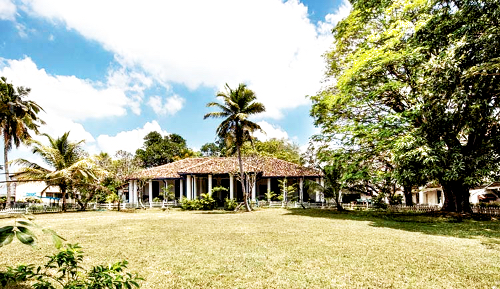
It has been a cold and wet winter in London. As I snuggle-up in my rocking chair to write my thoughts I can hear the wind howling outside. The raindrops are carried horizontally by the strong south-westerly wind battering the window panes and dripping down in torrents.
I still have grateful memories of a happy 12 years at Wesley College. The school on Karlsruhe Hill was established with missionary zeal and some colonial vigour but it catered for all Ceylonese. The school became the cradle of multiculturalism. Protected from the polarised world outside it remained secular and was driven by merit. Since the very beginning Wesley has strived hard to become a modern, forward-thinking school. The school has a strong record of academic achievements and a full programme of wider life activities, including the arts and sports. The school’s sesquicentennial anniversary has come and gone. One hundred and fifty years of life of a school is a huge achievement in this era of survival of the fittest. Longevity arises partly from good fortune but mostly from sustained effort. I left school in April 1962 to seek that elusive fame and fortune. They both have eluded me since!!
I was unable to attend any of the functions and events of this great occasion. Living in London the journey including a long flight was too arduous to attempt. Age related infirmities have caught up with me. I have done the next best thing, to watch on social media the unfolding of a prodigious chain of events. There weren’t many from my generation present as some have departed this world. The dinners and dances were vibrant, colourful and full of fun. The young enjoyed it to their hearts content. Many of my contemporaries boogied the night away taking longer breaks to catch their breath. There is a message in all this. Do what you can when you are fit and able.
The camaraderie was there for all to see with smaller reunions and gatherings prior to the main dinner and dance at the Shangri-La Hotel. When old boys come together they move into recollection mode recalling those beautiful, quirky moments of their youth. There is never a dull moment. Voices are imitated, mannerism mimicked, idiosyncrasies enhanced. Long forgotten episodes of school life suddenly spring to mind bringing laughter, affection and also some sadness. As the wine and conversation flowed, they are transported back many decades bringing forth those warm feelings of the lost years. The last to leave often provided a lusty rendition of the old school song.
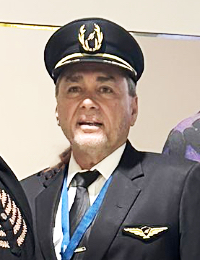 It was not just official planning that left its mark on the celebrations. The resourcefulness and energy of the present Wesleyites and the Old Boys, could not be suppressed. The Centenary was launched sending everyone into activity hyperdrive. A huge array of events, souvenirs and memorabilia were produced by various groups. Call it Centenary commercialisation or call it mercenary but nothing beats the thrill of owning a shirt, tie, coins, postage stamps, pens, calendar, wrist watch or organiser with the school colours or name embossed. For the Colombo OBU Annual General Meeting the Great Hall was filled to capacity. Capt Navin De Silva was unanimously reappointed as its President for the immense work he has put in to make the 150th Anniversary such a great success. The walk of Grit and the many sports events brought the present and the past students together. There was a reunion with the past teachers to recall and reminisce.
It was not just official planning that left its mark on the celebrations. The resourcefulness and energy of the present Wesleyites and the Old Boys, could not be suppressed. The Centenary was launched sending everyone into activity hyperdrive. A huge array of events, souvenirs and memorabilia were produced by various groups. Call it Centenary commercialisation or call it mercenary but nothing beats the thrill of owning a shirt, tie, coins, postage stamps, pens, calendar, wrist watch or organiser with the school colours or name embossed. For the Colombo OBU Annual General Meeting the Great Hall was filled to capacity. Capt Navin De Silva was unanimously reappointed as its President for the immense work he has put in to make the 150th Anniversary such a great success. The walk of Grit and the many sports events brought the present and the past students together. There was a reunion with the past teachers to recall and reminisce.
The Gala Dinner at the Shangri-La Hotel and the Double Blue Ball were over subscribed and have been described as lavish, well organised and splendid occasions. One of the most enduring memories must be the active participation of the President of Sri Lanka, Ranil Wickramasinghe. For Wesleyites young and old nothing ever will come close to renewing old friendships. It was also a night of meeting legends who have risen to great heights in their field in Sri Lanka and abroad. Those memories will be cherished forever.
Above - Capt.Navin De Silva and Prof. Ratnasamy Somanathan
Below - The President of Sri Lanka and Rev Ebenezer Joseph
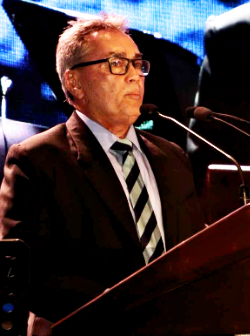 |
 |
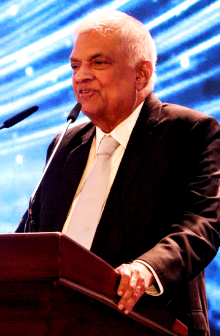 |
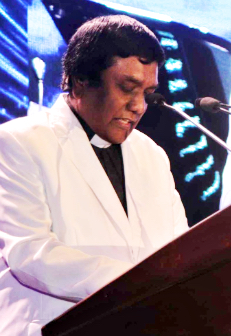 |
We spend our formative and impressionable years at school. It has created an Aladdin's cave of wondrous memories. The sands of time have moved on as I have progressed from youth to middle age and beyond. Those memories of friends and fun seemed to be stored and archived to last a lifetime. The stored memories resurface each time I visit the old school and walk the long corridors again. The Great Hall is a remarkable place for nostalgia. When I am alone and in contemplation, seated in silence beneath the high teak ceiling surrounded by gorgeous Victorian stained-glass windows, the school song seems to resonate in the distance. It is not easy to hold back the tears. I accept the serenity of the moment, in the knowledge that the school is doing fine. The intensity of the occasion is often overwhelming. As I live so far away beyond the horizon, this for me is a special treat.
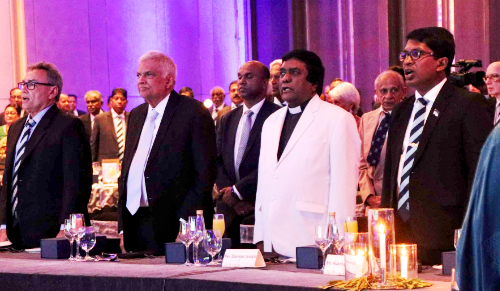
It was cricket that unified us all. Playing and watching the game was one of the most enjoyable things of my time at Wesley. A tangle of emotions tumble through my mind as I reflect on watching cricket under the mara trees at Campbell Park. For the students at Wesley College, Campbell Park has been the cradle of all sports. But the school has never owned the park. It is on a short lease reluctantly extended, each time, by the Colombo Municipal Council. During the Anniversary Dinner at the Shangri-la, successive speakers pleaded with the President of Sri Lanka, who was an honoured guest, to handover the park to the school. It is true these are not issues that could be resolved over dinner. The promise was to say “I will see what I can do”. However, we can but dream of a good outcome.
We all hate change and often hear the laments "the school is not what it used to be" or “It is not as good as it was”. This is more a nostalgic vision of a mystical, non-existent past. Schools are places of endemic change. Every year new students join and those who have left go farther on life's journey outside the school gates. We must change with time. The school has changed and have done so maintaining our links with our glorious past. We have kept the old traditions whilst embracing the innovative and modern. Rejuvenation and modernisation are a continuous process. It would be dismissive to say that the changes thus far have procured no benefit.
Since my time the landscape surrounding the school too has changed beyond recognition. The narrow Baseline road of my day of bullock carts, Morris Minor cabs and red Leyland buses has given way to a busy dual carriageway of faster traffic. The view of the Welikada Prison and its perimeter fence seem to be unchanged. Being so close to the prison for over a decade I had often peered into the distance allowing my mind to wander inside. For many of us the prison is a dark and mysterious place. Very few knew what happened behind those grim iron gates. To us the inmates were criminals, desperate and dangerous. Being a place of punishment, the isolation and the years of incarceration was a burden to endure. The humiliation, suffering and the lack of privacy must have been soul destroying. The solitary confinement could have broken their spirit. At the end of their ordeal how on earth did they face the world again?
While living abroad it is much harder to keep abreast of all the changes taking place in an ever-evolving school. Much of the lawns, shrubs and trees have disappeared to give way to the new buildings and a swimming pool. Although these changes were needed, to old fogeys like me it seems like a desecration of what we knew and remembered of the old school. I wish I could turn back the clock, just for a brief moment, to enjoy what it was like in the 1950’s to see the well-manicured lawns and the colourful flowers in pergolas. The flamboyant trees in full bloom in the month of May was a sight never to be missed.
In this fractured and troubled world, what we seek more than anything is a sense of belonging, a feeling that we are part of a community of like-minded souls. Despite this it is ironic how many of the rising generation of students after having received a fine education, leave the school never to set foot on those hallowed grounds ever again. It amazes me that even those old boys who live in Sri Lanka and some living in Colombo have never been to the school premises as past students. In the endless whirr of 24/7 life of the 21st Century it is perhaps easy to forget our formative years. Some must have jolly good reasons to do so.
The school has thus far survived the rapids of two destructive World Wars and many political and economic upheavals. I shudder to think what the next 100 years will bring to the school and to us humans. With artificial intelligence there may not be a need for a school!! People will most certainly live longer and may even emigrate to distant planets. With the current trends and the serious consequences of global warming there are doubts about the existence of life on our planet that far ahead. That distant future is beyond anyone’s comprehension. Meanwhile let us take care of our planet and be happy and content with what we have now.
We all say with pride and joy - Happy Birthday Wesley College (1874-2024).
Long may you thrive and prosper for the many who pass through those hallowed portals.
Ora et labora
Founder's Day Assembly at the Great Hall
Longevity arises partly from good fortune but mostly from genuine effort and hard work. The school that has long outlived its founders began the Launch of 150th Anniversary Celebrations with the Founders Day Assembly on Friday the 1st of March.
For the many old boys the occasion must have brought happy and poignant memories of their time at school and the many friends and teachers who were in their lives then.
This had all the pomp and pageantry and the roll of the drums to remember with affection the Founders and mark the 150th 'Birthday' of the school. The Principal set the tone by acknowledging the contribution and cooperation of the Past students in launching the festivities. He also paid tribute to those who nurtured the school as Principals and Teachers. The Principal’s speech was followed by a reply from the Rev Ebenezer Joseph, an old boy of the school himself, thanked the school for their efforts and enthusiasm in preparing for the 150th anniversary. He then spoke of the part played by the Methodist Church and those early pioneers.
The assembly concluded with the singing of the school song. This was followed by taking of photos, handshakes, and chitchat, before adjourning. The end of the launch was but the start of the anniversary. The festivities and celebrations began after this event, and carried on beyond.
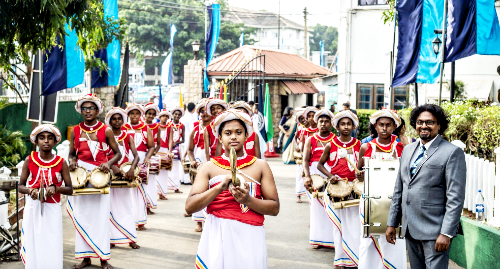
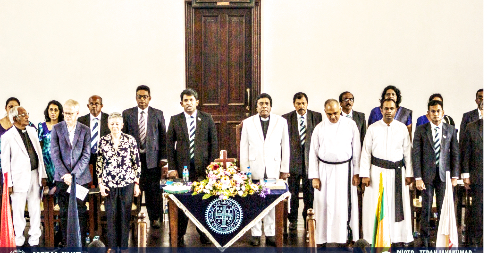
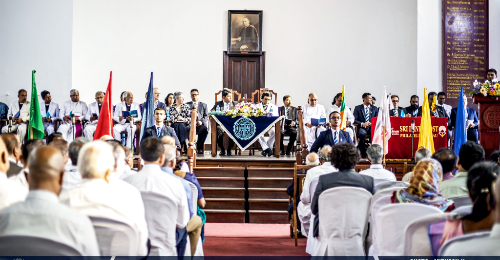
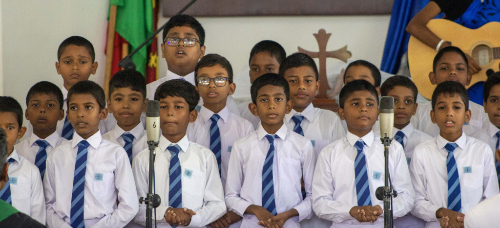
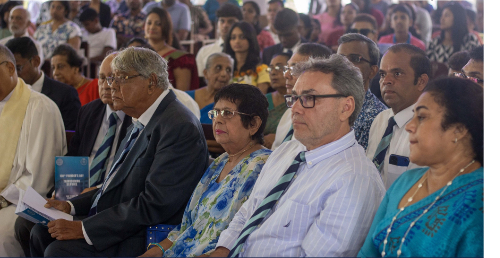
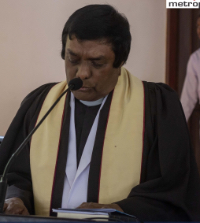 Wesley College's Sesquicentennial Founders' Thanksgiving Service, hosted on March 3rd at the College Chapel, exuded distinction.
The event was graced by the notable presence of esteemed alumni, committed staff, and well-wishers, forming a reverent tribute during this sesquicentennial celebration.
Wesley College's Sesquicentennial Founders' Thanksgiving Service, hosted on March 3rd at the College Chapel, exuded distinction.
The event was graced by the notable presence of esteemed alumni, committed staff, and well-wishers, forming a reverent tribute during this sesquicentennial celebration.
This gathering artfully blended gratitude and celebration, weaving a narrative that honored 150 years of educational excellence and profound community impact.
The school’s philosophy of a balanced education of mind and body as envisioned by its Founders was embraced by generations of their successors. That it worked can be seen from the products that walked through the portals of the school. The many educationists, lawyers, doctors, engineers, civil servants, businessmen, scientists of all disciplines, judges, cabinet ministers, politicians, members of the armed forces, writers, poets, dramatists, artists. Many studied in the best universities in the world and have reached the commanding heights of society worldwide . They owe their very success to the unique all-round education they had received. The education at Wesley College gave them countless opportunities to organize and lead and to develop mind and body.
From the Financial Times Daily of Sri Lanka
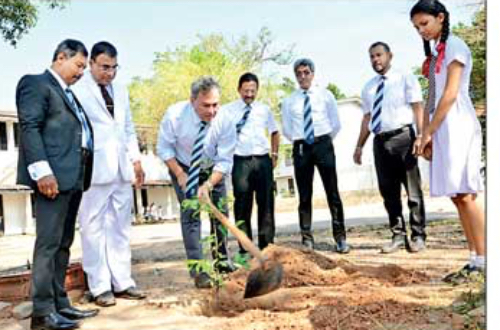
Wesley College celebrated its sesquicentennial by planting 150 trees in their school and many other venues in par with other projects like helping out schools in distant areas which have less facilities. The inception of planting trees involving school children was initiated at National Institute of Plantation Management (NIPM) during a committee meeting of the newly formed Foundation of Environmental Sustainability.
This voluntary group was formed under the leadership of NIPM Director and CEO Dr. Prasad Dharmasena. The committee comprises planters, environmentalists, professionals, nature lovers and naturalists.
The proposal to plant trees as a proactive step in combating global warming with numerous benefits that extends beyond just environmental impact. This initiative not only contributes to carbon sequestration but also fosters environmental stewardship, educates students about sustainability and enhances the overall learning environment.
Incorporating tree planting in schools and community centres and parks offers an opportunity to educate students and members of communities about the importance of environmental conservation and sustainable practices.
Tree planting initiatives in schools provide opportunities for community engagements and collaborations. They bring together students, teachers, parents and local organisations in a collective effort to promote environmental sustainability.
Equipped with this valuable information Tyrone Amath, a product of NIPM and a committee member of the FES took this opportunity to Wesley College as an old boy as the school was celebrating the milestone. With the blessings of the Principal Avanka Fernando who proposed to extend the project to other venues as well directed it to the OBU.
OBU President Capt. Naveen de Silva welcomed the project as an old boy has already proposed a similar idea from overseas.
Tyrone Amath spearheaded the project with the assistant of Rohan Amarasinghe who is another distinguished old boy and a nature lover. Priya Gunawardhana, a Director of Wanaropa and a committee member of Foundation for Environmental Sustainability (FES) guided them to obtain free plants from the Forest department where the officials visited to inspect the initial locations which came with an awareness programme for school children. The 1st phase of the tree planting got underway in November at the Campbell park with Wesley students, teachers, old boys and gradually extended to Vihara Mahadevi Park, out station schools in Monaragala Buththala Wallawaya, newly formed Crow Island Wana Uyana with the community taking an active role to form a mini forest, SOS villages in Jaffna and Kesbewa, Wesley Primary in Thampola. Sri Jayewardenepura National School Kotte formerly known as CMS Christian
Mission school who celebrated 202 years also joined hands with Wesley by planting many trees in their school premises and school grounds. The final phase was completed on 1 March planting 6 cinnamon trees at the lawn of the Principals bungalow by the distinguished guests who graced the occasion.
The beauty of this project is each tree planted was entrusted to a student and given the responsibility to monitor and care for 3 years before passing it on to another student. A system will be in place with a QR code to each tree giving details and info which will also be uploaded to a YouTube channel. This system enables the students to check the trees in years to come and share them with others with pride. After completing the project Capt. Naveen de Silva thanked and appreciated the efforts of everyone involved voluntarily including Tyrone Amath, Rohan Amarasinghe, Razeen Samoon, Dushan Thalagala, Leel Dassanayaka , Mansa Jaan, Priya Gunawardana and Forest Department officials for extending their fullest support to complete this timely project.
From the Secretary of the Wesley College OBU- Colombo
"A Dream Come True" On April 4th , 2024, at precisely 7:25 PM, during the first OBU Sesquicentennial monthly meeting for the ensuing year , Mr.B.M.N Jurangpathy, affectionately known as Uncle Jurang, realized a dream he had nurtured for over 30 years, with a personal donation of Rs 750,000/- towards the pavilion restoration project, in true Wesley spirit . He proudly stated when handing over the donation that he had known Navin as a child of 4years and today refers to as his President of the Old Boys Union, and thanking him for his dedication. We extend our heartfelt gratitude to Uncle Jurang for his generosity, which will benefit future generations of Wesleyites. May God continue to bless him with good health and the happiness he so richly deserves.
.........................................................................
1st XI Cricket Team - 1953
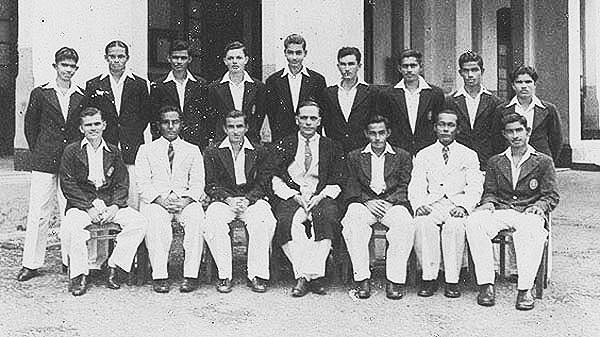
.........................................................................
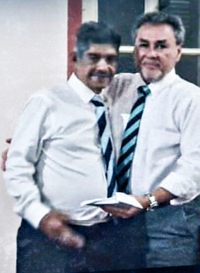 The Wesley College Old Boys Union, under the leadership of its President Capt. Navin De Silva, has embarked upon an ambitious project to restore the Wesley College Pavilion to its former glory. This initiative is part of the school’s sesquicentennial commemoration, scheduled for the 2nd of March 2024. The restoration aims to transform the existing pavilion into a monumental sports facility while preserving its splendid architectural heritage at Campbell Park.
The Wesley College Old Boys Union, under the leadership of its President Capt. Navin De Silva, has embarked upon an ambitious project to restore the Wesley College Pavilion to its former glory. This initiative is part of the school’s sesquicentennial commemoration, scheduled for the 2nd of March 2024. The restoration aims to transform the existing pavilion into a monumental sports facility while preserving its splendid architectural heritage at Campbell Park.
On Saturday (29 July 2023) at Campbell Park Wesley will launch its Fund Raising Project reaching out to the Wesley fraternity and Well Wishers. This event will be graced by past Cricket Captains of the National Team with Michael Tissera leading the pack as Guest of Honor. Wesley’s icons in all sports will participate bringing back memories of their love for the Pavilion the home away home.
The Pavilion’s significance traces back to its acquisition by Wesley College from the Tamil Union Cricket & Athletic Club at Campbell Park in 1940. Believed to have been built in 1900, one year after the club’s formation, Wesley’s pavilion will soon celebrate its 124th anniversary in 2024. With archeological value and a history resembling an English country clubhouse, the pavilion was inaugurated on the 19th of January 1940 by old boy G.C.S.Corea, Minister of Labor, Industries and Commerce at the time.
The current Pavilion holds nostalgic and personal memories for countless scholars of Wesley College. However, it now stands in an advanced state of decay, necessitating immediate restoration. All previous restoration attempts have proven either exorbitantly expensive or only temporary solutions.
Taking charge of this noble endeavor is the Vice Patron, Ivor Maharoof, along with a vetted “select committee” constituent of dedicated & distinguished Wesleyites that includes in their ranks an exemplary banker S. Renganathan as the project Treasurer. The committee is dedicated to renovating the Pavilion, ensuring that it retains its classic colonial architecture on the same hallowed grounds. The comprehensive refurbishment will offer enhanced facilities to both players and visitors, enabling them to create lasting memories within the monumental building. The Pavilion is cherished by every Wesleyite who passed through the school’s gates, further emphasises the urgency to preserve it.
Over the years, Wesley’s Pavilion has hosted some of Sri Lanka’s finest cricketers, including legendary MahadevanSathasivam, C.E. Perera, Abu Fuard, L.R. Goonetilleke, M.N.Samsudeen, Brian Classen, S.Jeganathan, Russell Hamer, in the recent years Farveez Maharoof and Jeffery Vandersay, and numerous Wesley cricketers. Additionally, iconic cricketers from other schools, some of whom went on to represent the country, have also graced this historic Pavilion.
Beyond cricket, generations of Wesley sportsmen in Rugby, Athletics, Soccer and Hockey, including the legendary A. Mylvaganam, have embraced this significant site for their sporting endeavors.
The Architect for this restoration is Murad Ismail, a highly respected Architect and a disciple of world famous Architect Geoffrey Bawa. He is the son of old boy Dr. Ifthi Ismail and nephew of another distinguished old boy Prof. Mahroof Ismail. Murad has volunteered his expertise for this project without charge, a fine gesture admired by all. His commitment exemplifies the collective rallying call for the Wesley fraternity to restore the school’s sporting pride, transforming it into an iconic masterpiece treasured by Wesleyites for generations to come.
On July 29, at Campbell Park Wesley launched its Fund Raising Project reaching out to the Wesley fraternity and well-wishers. This event was graced by past cricket captains of the National team with Michael Tissera leading the pack as Guest of Honor.
Former All Ceylon Cricket Captain’s Michael Tissera, Anura Tennekoon and Former Sri Lankan Cricket Captain’s Sanath Jayasuriya, and Mahela Jayawardene too graced the occasion.



